BASE24 R6.0 Post V10 2016 05 12 Base Files Maintenance Manual
User Manual:
Open the PDF directly: View PDF ![]() .
.
Page Count: 1012 [warning: Documents this large are best viewed by clicking the View PDF Link!]
- Title Page
- Copyright Information
- Contents
- What’s New
- Preface
- Conventions Used in this Manual
- 1: Introduction
- BASE24 Base Files and Functions
- Standard Interchange Files
- Information on Unused Authorization File Screens
- File Access
- Enscribe File Record Access
- SQL Table Row Access
- Function Keys
- Help Screens
- Application Transaction Counter Checking
- BASE24 Authorization Terminology
- 2: Account Routing File (ARF)
- Duplicate Bank Routing Codes
- Screen 1 Function Keys
- Screen 1
- Screen 2 Function Keys
- Screen 2 Bank Routing Code Detail
- Screen 2 Account Number Routing Detail
- Screen 2 Institution ID Routing Detail
- Screen 3 Function Keys
- Screen 3 Bank Routing Code Summary
- Screen 3 Account Number Routing Summary
- Screen 3 Institution ID Routing Summary
- 3: Account Type Table File (ATT)
- 4: Acquirer Processing Code File (APCF)
- 5: Card Prefix File (CPF)
- 6: Cardholder Authorization File (CAF)
- 7: Dynamic Currency Conversion Data (DCCD)
- 8: Derivation Key File (KEYD)
- 9: Exchange Rate File (ERF)
- 10: External Message File (EMF)
- 11: Extract Configuration File (ECF)
- 12: Host Configuration File (HCF)
- 13: Institution Definition File (IDF)
- FIID Restrictions
- Screen 1
- Screen 2
- Screen 3
- Screen 4
- Screens 5 and 6
- Screen 7
- Screen 9
- Screen 10
- Screen 13
- Screen 16
- Screen 17
- Screen 19
- Screen 21
- Screen 24
- Screen 25
- Screen 26
- Screen 27
- Screen 28
- Screen 31
- Screen 40 Function Keys
- Screen 40
- Screen 41 Function Keys
- Screen 41
- Screen 42 Function Keys
- Screen 42
- Screen 43
- Bank Table Screen 1 Function Keys
- Bank Table Screen 1
- 14: Issuer Processing Code File (IPCF)
- 15: Key Authorization File (KEYA)
- 16: Key File (KEYF)
- 17: Key 6 File (KEY6)
- 18: Mobile Operator File (MOF)
- 19: Negative Card File (NEG)
- 20: Positive Balance File (PBF)
- Deposit Processing
- Screen 1 Function Keys
- Screen 1
- Screen 3 Function Keys
- Screen 3
- Screen 5 Function Keys
- Screen 5
- Screen 6 Function Keys
- Screen 6
- Screen 8 Function Keys
- Screen 8
- Screen 10 Function Keys
- Screen 10
- Screen 11 Function Keys
- Screen 11
- Screen 13 Function Keys
- Screen 13
- Screen 14 Function Keys
- Screen 14 Credit Version
- Screen 14 Noncredit Version
- 21: Prefix File Build Utility (PRE)
- 22: Processing Code Description File (PDF)
- 23: Split Transaction Routing File (STRF)
- 24: Stop Payment File (SPF)
- 25: Surcharge File (SURF)
- 26: Transaction Code File (TCF)
- 27: Token File (TKN)
- 28: Transaction Code/Subtype Relationship File (TSRF)
- 29: Usage Accumulation File (UAF)
- A: BASE24 Interchange Interface Files
- Index
- Index by Field Name
- Index by Data and Column Name

Base Files Maintenance Manual
BASE24®
Release 6.0 Post v10
May 2016

ACI Worldwide
Offices in principal cities throughout the world
www.aciworldwide.com
Americas +1 402 390 7600
Asia Pacific +65 6334 4843
Europe, Middle East, Africa +44 (0) 1923 816393
© Copyright ACI Worldwide, Inc. 2014
Publish Date: May 2016
All information contained in this documentation, as well as the software described in it, is confidential and
proprietary to ACI Worldwide, Inc. or one of its subsidiaries, is subject to a license agreement, and may be used or
copied only in accordance with the terms of such license. Except as permitted by such license, no part of this
documentation may be reproduced, stored in a retrieval system, or transmitted in any form or by electronic,
mechanical, recording, or any other means, without the prior written permission of ACI Worldwide, Inc. or one of its
subsidiaries.
ACI, ACI Payment Systems, the ACI logo, ACI Universal Payments, UP, the UP logo, and all ACI product names are
trademarks or registered trademarks of ACI Worldwide, Inc. or one of its subsidiaries in the United States, other
countries, or both. Other parties’ trademarks referenced are the property of their respective owners.
About ACI Worldwide
ACI Worldwide, the Universal Payments Company, powers electronic payments and banking for more than 5,000
financial institutions, retailers, billers, and processors around the world. ACI software processes $13 trillion in
payments and securities transactions for more than 250 of the leading global retailers and 21 of the world’s 25
largest banks. Through our comprehensive suite of software products and hosted services, we deliver a broad range
of solutions for payments processing; card and merchant management; online banking; mobile, branch and voice
banking; fraud detection; trade finance; and electronic bill presentment and payment. To learn more about ACI,
please visit www.aciworldwide.com. You can also find us on Twitter @ACI_Worldwide.

iii
May-2016 R6.0 Post v10 BA-AE000-03
ACI Worldwide, Inc.
Contents
What’s New . . . . . . . . . . . . . . . . . . . . . . . . . . . . . . . . . . . . . . . . . . . . . . . . . . . . . . . xiii
Preface. . . . . . . . . . . . . . . . . . . . . . . . . . . . . . . . . . . . . . . . . . . . . . . . . . . . . . . . . . . xix
Conventions Used in this Manual. . . . . . . . . . . . . . . . . . . . . . . . . . . . . . . . . . . . . xxix
1: Introduction . . . . . . . . . . . . . . . . . . . . . . . . . . . . . . . . . . . . . . . . . . . . . . . . . . . 1-1
BASE24 Base Files and Functions . . . . . . . . . . . . . . . . . . . . . . . . . . . . . . . . . . . . . . . . . 1-2
Standard Interchange Files . . . . . . . . . . . . . . . . . . . . . . . . . . . . . . . . . . . . . . . . . . . . . . . 1-4
Information on Unused Authorization File Screens . . . . . . . . . . . . . . . . . . . . . . . . . . . . 1-5
File Access . . . . . . . . . . . . . . . . . . . . . . . . . . . . . . . . . . . . . . . . . . . . . . . . . . . . . . . . . . . 1-7
Enscribe File Record Access . . . . . . . . . . . . . . . . . . . . . . . . . . . . . . . . . . . . . . . . . . . . . 1-8
SQL Table Row Access . . . . . . . . . . . . . . . . . . . . . . . . . . . . . . . . . . . . . . . . . . . . . . . . . 1-9
Function Keys. . . . . . . . . . . . . . . . . . . . . . . . . . . . . . . . . . . . . . . . . . . . . . . . . . . . . . . . . 1-11
Help Screens . . . . . . . . . . . . . . . . . . . . . . . . . . . . . . . . . . . . . . . . . . . . . . . . . . . . . . . . . . 1-14
Application Transaction Counter Checking . . . . . . . . . . . . . . . . . . . . . . . . . . . . . . . . . . 1-15
BASE24 Authorization Terminology . . . . . . . . . . . . . . . . . . . . . . . . . . . . . . . . . . . . . . . 1-17
Accounts . . . . . . . . . . . . . . . . . . . . . . . . . . . . . . . . . . . . . . . . . . . . . . . . . . . . . . . . . 1-17
Cards . . . . . . . . . . . . . . . . . . . . . . . . . . . . . . . . . . . . . . . . . . . . . . . . . . . . . . . . . . . . 1-18
Card Types . . . . . . . . . . . . . . . . . . . . . . . . . . . . . . . . . . . . . . . . . . . . . . . . . . . . . . . 1-18
Transaction Profiles . . . . . . . . . . . . . . . . . . . . . . . . . . . . . . . . . . . . . . . . . . . . . . . . 1-21
Customer IDs . . . . . . . . . . . . . . . . . . . . . . . . . . . . . . . . . . . . . . . . . . . . . . . . . . . . . 1-25
Transactions . . . . . . . . . . . . . . . . . . . . . . . . . . . . . . . . . . . . . . . . . . . . . . . . . . . . . . 1-25
Limits . . . . . . . . . . . . . . . . . . . . . . . . . . . . . . . . . . . . . . . . . . . . . . . . . . . . . . . . . . . 1-27
Accumulators . . . . . . . . . . . . . . . . . . . . . . . . . . . . . . . . . . . . . . . . . . . . . . . . . . . . . 1-30
Fields Appearing on the Base Screens and Product-Specific Screens . . . . . . . . . . 1-33
Usage Accumulation Clearance for BASE24-atm, BASE24-pos, and
BASE24-teller Products . . . . . . . . . . . . . . . . . . . . . . . . . . . . . . . . . . . . . . . . . . . 1-36
Usage Accumulation Clearance for BASE24 Remote Banking Products . . . . . . . 1-40

iv
Contents
May-2016 R6.0 Post v10 BA-AE000-03
ACI Worldwide, Inc.
2: Account Routing File (ARF) . . . . . . . . . . . . . . . . . . . . . . . . . . . . . . . . . . . . . . 2-1
Duplicate Bank Routing Codes. . . . . . . . . . . . . . . . . . . . . . . . . . . . . . . . . . . . . . . . . . . . 2-4
Screen 1 Function Keys . . . . . . . . . . . . . . . . . . . . . . . . . . . . . . . . . . . . . . . . . . . . . . . . . 2-6
Screen 1. . . . . . . . . . . . . . . . . . . . . . . . . . . . . . . . . . . . . . . . . . . . . . . . . . . . . . . . . . . . . . 2-7
Screen 2 Function Keys . . . . . . . . . . . . . . . . . . . . . . . . . . . . . . . . . . . . . . . . . . . . . . . . . 2-8
Screen 2 Bank Routing Code Detail. . . . . . . . . . . . . . . . . . . . . . . . . . . . . . . . . . . . . . . . 2-9
Screen 2 Account Number Routing Detail . . . . . . . . . . . . . . . . . . . . . . . . . . . . . . . . . . . 2-13
Screen 2 Institution ID Routing Detail . . . . . . . . . . . . . . . . . . . . . . . . . . . . . . . . . . . . . . 2-16
Screen 3 Function Keys . . . . . . . . . . . . . . . . . . . . . . . . . . . . . . . . . . . . . . . . . . . . . . . . . 2-20
Screen 3 Bank Routing Code Summary . . . . . . . . . . . . . . . . . . . . . . . . . . . . . . . . . . . . . 2-21
Screen 3 Account Number Routing Summary . . . . . . . . . . . . . . . . . . . . . . . . . . . . . . . . 2-25
Screen 3 Institution ID Routing Summary . . . . . . . . . . . . . . . . . . . . . . . . . . . . . . . . . . . 2-28
3: Account Type Table File (ATT) . . . . . . . . . . . . . . . . . . . . . . . . . . . . . . . . . . . . 3-1
Naming Account Types. . . . . . . . . . . . . . . . . . . . . . . . . . . . . . . . . . . . . . . . . . . . . . . . . . 3-2
Screen 1. . . . . . . . . . . . . . . . . . . . . . . . . . . . . . . . . . . . . . . . . . . . . . . . . . . . . . . . . . . . . . 3-3
4: Acquirer Processing Code File (APCF) . . . . . . . . . . . . . . . . . . . . . . . . . . . . . 4-1
Screen 1 Function Keys . . . . . . . . . . . . . . . . . . . . . . . . . . . . . . . . . . . . . . . . . . . . . . . . . 4-5
Screen 1. . . . . . . . . . . . . . . . . . . . . . . . . . . . . . . . . . . . . . . . . . . . . . . . . . . . . . . . . . . . . . 4-6
Screen 2. . . . . . . . . . . . . . . . . . . . . . . . . . . . . . . . . . . . . . . . . . . . . . . . . . . . . . . . . . . . . . 4-9
Screen 3 Function Keys . . . . . . . . . . . . . . . . . . . . . . . . . . . . . . . . . . . . . . . . . . . . . . . . . 4-16
Screen 3. . . . . . . . . . . . . . . . . . . . . . . . . . . . . . . . . . . . . . . . . . . . . . . . . . . . . . . . . . . . . . 4-17
Default APCF Records . . . . . . . . . . . . . . . . . . . . . . . . . . . . . . . . . . . . . . . . . . . . . . . . . . 4-21
Common Field Values . . . . . . . . . . . . . . . . . . . . . . . . . . . . . . . . . . . . . . . . . . . . . . 4-21
Default APCF Tables . . . . . . . . . . . . . . . . . . . . . . . . . . . . . . . . . . . . . . . . . . . . . . . 4-21
5: Card Prefix File (CPF) . . . . . . . . . . . . . . . . . . . . . . . . . . . . . . . . . . . . . . . . . . . 5-1
Screen 1. . . . . . . . . . . . . . . . . . . . . . . . . . . . . . . . . . . . . . . . . . . . . . . . . . . . . . . . . . . . . . 5-3
Screen 2. . . . . . . . . . . . . . . . . . . . . . . . . . . . . . . . . . . . . . . . . . . . . . . . . . . . . . . . . . . . . . 5-19
Screen 3. . . . . . . . . . . . . . . . . . . . . . . . . . . . . . . . . . . . . . . . . . . . . . . . . . . . . . . . . . . . . . 5-33
Screen 4. . . . . . . . . . . . . . . . . . . . . . . . . . . . . . . . . . . . . . . . . . . . . . . . . . . . . . . . . . . . . . 5-43
Screen 5. . . . . . . . . . . . . . . . . . . . . . . . . . . . . . . . . . . . . . . . . . . . . . . . . . . . . . . . . . . . . . 5-50

Contents
v
May-2016 R6.0 Post v10 BA-AE000-03
ACI Worldwide, Inc.
Screen 6. . . . . . . . . . . . . . . . . . . . . . . . . . . . . . . . . . . . . . . . . . . . . . . . . . . . . . . . . . . . . . 5-57
Screen 7. . . . . . . . . . . . . . . . . . . . . . . . . . . . . . . . . . . . . . . . . . . . . . . . . . . . . . . . . . . . . . 5-67
Screen 8. . . . . . . . . . . . . . . . . . . . . . . . . . . . . . . . . . . . . . . . . . . . . . . . . . . . . . . . . . . . . . 5-74
6: Cardholder Authorization File (CAF). . . . . . . . . . . . . . . . . . . . . . . . . . . . . . . 6-1
CAF Usage Accumulation Clearance. . . . . . . . . . . . . . . . . . . . . . . . . . . . . . . . . . . . . . . 6-3
Dynamic Cardholder Authorization File (CAFD) . . . . . . . . . . . . . . . . . . . . . . . . . . . . . 6-4
CAFD Maintenance . . . . . . . . . . . . . . . . . . . . . . . . . . . . . . . . . . . . . . . . . . . . . . . . 6-4
CAFD Runfile. . . . . . . . . . . . . . . . . . . . . . . . . . . . . . . . . . . . . . . . . . . . . . . . . . . . . 6-4
Updating the CAFD . . . . . . . . . . . . . . . . . . . . . . . . . . . . . . . . . . . . . . . . . . . . . . . . 6-6
Error Messages . . . . . . . . . . . . . . . . . . . . . . . . . . . . . . . . . . . . . . . . . . . . . . . . . . . . 6-6
Report Sample and Field Descriptions . . . . . . . . . . . . . . . . . . . . . . . . . . . . . . . . . . 6-6
Screen 1. . . . . . . . . . . . . . . . . . . . . . . . . . . . . . . . . . . . . . . . . . . . . . . . . . . . . . . . . . . . . . 6-9
Screen 2. . . . . . . . . . . . . . . . . . . . . . . . . . . . . . . . . . . . . . . . . . . . . . . . . . . . . . . . . . . . . . 6-18
Screens 3 and 4 . . . . . . . . . . . . . . . . . . . . . . . . . . . . . . . . . . . . . . . . . . . . . . . . . . . . . . . . 6-21
Screen 5 Function Keys . . . . . . . . . . . . . . . . . . . . . . . . . . . . . . . . . . . . . . . . . . . . . . . . . 6-28
Screen 5. . . . . . . . . . . . . . . . . . . . . . . . . . . . . . . . . . . . . . . . . . . . . . . . . . . . . . . . . . . . . . 6-29
Screen 6 Function Keys . . . . . . . . . . . . . . . . . . . . . . . . . . . . . . . . . . . . . . . . . . . . . . . . . 6-32
Screen 6. . . . . . . . . . . . . . . . . . . . . . . . . . . . . . . . . . . . . . . . . . . . . . . . . . . . . . . . . . . . . . 6-33
Screen 7. . . . . . . . . . . . . . . . . . . . . . . . . . . . . . . . . . . . . . . . . . . . . . . . . . . . . . . . . . . . . . 6-36
Screen 8. . . . . . . . . . . . . . . . . . . . . . . . . . . . . . . . . . . . . . . . . . . . . . . . . . . . . . . . . . . . . . 6-39
Screen 9. . . . . . . . . . . . . . . . . . . . . . . . . . . . . . . . . . . . . . . . . . . . . . . . . . . . . . . . . . . . . . 6-46
Screen 10. . . . . . . . . . . . . . . . . . . . . . . . . . . . . . . . . . . . . . . . . . . . . . . . . . . . . . . . . . . . . 6-57
Screen 21. . . . . . . . . . . . . . . . . . . . . . . . . . . . . . . . . . . . . . . . . . . . . . . . . . . . . . . . . . . . . 6-65
7: Dynamic Currency Conversion Data (DCCD) . . . . . . . . . . . . . . . . . . . . . . . . 7-1
Screen 1. . . . . . . . . . . . . . . . . . . . . . . . . . . . . . . . . . . . . . . . . . . . . . . . . . . . . . . . . . . . . . 7-2
Screen 2. . . . . . . . . . . . . . . . . . . . . . . . . . . . . . . . . . . . . . . . . . . . . . . . . . . . . . . . . . . . . . 7-5
8: Derivation Key File (KEYD). . . . . . . . . . . . . . . . . . . . . . . . . . . . . . . . . . . . . . . 8-1
Screen 1. . . . . . . . . . . . . . . . . . . . . . . . . . . . . . . . . . . . . . . . . . . . . . . . . . . . . . . . . . . . . . 8-2
9: Exchange Rate File (ERF). . . . . . . . . . . . . . . . . . . . . . . . . . . . . . . . . . . . . . . . 9-1
Screen 1. . . . . . . . . . . . . . . . . . . . . . . . . . . . . . . . . . . . . . . . . . . . . . . . . . . . . . . . . . . . . . 9-2

vi
Contents
May-2016 R6.0 Post v10 BA-AE000-03
ACI Worldwide, Inc.
Other Files Maintenance Information. . . . . . . . . . . . . . . . . . . . . . . . . . . . . . . . . . . . . . . 9-5
10: External Message File (EMF) . . . . . . . . . . . . . . . . . . . . . . . . . . . . . . . . . . . . . 10-1
Default Settings. . . . . . . . . . . . . . . . . . . . . . . . . . . . . . . . . . . . . . . . . . . . . . . . . . . . . . . . 10-3
Screen 1 Function Keys . . . . . . . . . . . . . . . . . . . . . . . . . . . . . . . . . . . . . . . . . . . . . . . . . 10-5
Screen 1. . . . . . . . . . . . . . . . . . . . . . . . . . . . . . . . . . . . . . . . . . . . . . . . . . . . . . . . . . . . . . 10-6
Screen 2 Function Keys . . . . . . . . . . . . . . . . . . . . . . . . . . . . . . . . . . . . . . . . . . . . . . . . . 10-13
Screen 2. . . . . . . . . . . . . . . . . . . . . . . . . . . . . . . . . . . . . . . . . . . . . . . . . . . . . . . . . . . . . . 10-14
Screen 3 Function Keys . . . . . . . . . . . . . . . . . . . . . . . . . . . . . . . . . . . . . . . . . . . . . . . . . 10-15
Screen 3. . . . . . . . . . . . . . . . . . . . . . . . . . . . . . . . . . . . . . . . . . . . . . . . . . . . . . . . . . . . . . 10-16
11: Extract Configuration File (ECF) . . . . . . . . . . . . . . . . . . . . . . . . . . . . . . . . . . 11-1
Screen 1. . . . . . . . . . . . . . . . . . . . . . . . . . . . . . . . . . . . . . . . . . . . . . . . . . . . . . . . . . . . . . 11-3
Screen 2. . . . . . . . . . . . . . . . . . . . . . . . . . . . . . . . . . . . . . . . . . . . . . . . . . . . . . . . . . . . . . 11-16
Screen 3. . . . . . . . . . . . . . . . . . . . . . . . . . . . . . . . . . . . . . . . . . . . . . . . . . . . . . . . . . . . . . 11-22
Screen 5. . . . . . . . . . . . . . . . . . . . . . . . . . . . . . . . . . . . . . . . . . . . . . . . . . . . . . . . . . . . . . 11-28
Screen 7. . . . . . . . . . . . . . . . . . . . . . . . . . . . . . . . . . . . . . . . . . . . . . . . . . . . . . . . . . . . . . 11-33
Screen 9. . . . . . . . . . . . . . . . . . . . . . . . . . . . . . . . . . . . . . . . . . . . . . . . . . . . . . . . . . . . . . 11-39
Screen 17. . . . . . . . . . . . . . . . . . . . . . . . . . . . . . . . . . . . . . . . . . . . . . . . . . . . . . . . . . . . . 11-43
Screen 19. . . . . . . . . . . . . . . . . . . . . . . . . . . . . . . . . . . . . . . . . . . . . . . . . . . . . . . . . . . . . 11-48
Screen 23. . . . . . . . . . . . . . . . . . . . . . . . . . . . . . . . . . . . . . . . . . . . . . . . . . . . . . . . . . . . . 11-51
12: Host Configuration File (HCF) . . . . . . . . . . . . . . . . . . . . . . . . . . . . . . . . . . . . 12-1
Screen 1. . . . . . . . . . . . . . . . . . . . . . . . . . . . . . . . . . . . . . . . . . . . . . . . . . . . . . . . . . . . . . 12-3
Screen 2. . . . . . . . . . . . . . . . . . . . . . . . . . . . . . . . . . . . . . . . . . . . . . . . . . . . . . . . . . . . . . 12-16
Screen 5. . . . . . . . . . . . . . . . . . . . . . . . . . . . . . . . . . . . . . . . . . . . . . . . . . . . . . . . . . . . . . 12-18
Screen 7. . . . . . . . . . . . . . . . . . . . . . . . . . . . . . . . . . . . . . . . . . . . . . . . . . . . . . . . . . . . . . 12-22
Screen 8. . . . . . . . . . . . . . . . . . . . . . . . . . . . . . . . . . . . . . . . . . . . . . . . . . . . . . . . . . . . . . 12-28
Screen 10. . . . . . . . . . . . . . . . . . . . . . . . . . . . . . . . . . . . . . . . . . . . . . . . . . . . . . . . . . . . . 12-31
Screen 13. . . . . . . . . . . . . . . . . . . . . . . . . . . . . . . . . . . . . . . . . . . . . . . . . . . . . . . . . . . . . 12-35
Screen 15. . . . . . . . . . . . . . . . . . . . . . . . . . . . . . . . . . . . . . . . . . . . . . . . . . . . . . . . . . . . . 12-37
Screen 22. . . . . . . . . . . . . . . . . . . . . . . . . . . . . . . . . . . . . . . . . . . . . . . . . . . . . . . . . . . . . 12-41
Screen 23. . . . . . . . . . . . . . . . . . . . . . . . . . . . . . . . . . . . . . . . . . . . . . . . . . . . . . . . . . . . . 12-46

Contents
vii
May-2016 R6.0 Post v10 BA-AE000-03
ACI Worldwide, Inc.
13: Institution Definition File (IDF). . . . . . . . . . . . . . . . . . . . . . . . . . . . . . . . . . . . 13-1
FIID Restrictions. . . . . . . . . . . . . . . . . . . . . . . . . . . . . . . . . . . . . . . . . . . . . . . . . . . . . . . 13-3
Screen 1. . . . . . . . . . . . . . . . . . . . . . . . . . . . . . . . . . . . . . . . . . . . . . . . . . . . . . . . . . . . . . 13-4
Screen 2. . . . . . . . . . . . . . . . . . . . . . . . . . . . . . . . . . . . . . . . . . . . . . . . . . . . . . . . . . . . . . 13-14
Screen 3. . . . . . . . . . . . . . . . . . . . . . . . . . . . . . . . . . . . . . . . . . . . . . . . . . . . . . . . . . . . . . 13-29
Screen 4. . . . . . . . . . . . . . . . . . . . . . . . . . . . . . . . . . . . . . . . . . . . . . . . . . . . . . . . . . . . . . 13-34
Screens 5 and 6 . . . . . . . . . . . . . . . . . . . . . . . . . . . . . . . . . . . . . . . . . . . . . . . . . . . . . . . . 13-41
Screen 7. . . . . . . . . . . . . . . . . . . . . . . . . . . . . . . . . . . . . . . . . . . . . . . . . . . . . . . . . . . . . . 13-45
Screen 9. . . . . . . . . . . . . . . . . . . . . . . . . . . . . . . . . . . . . . . . . . . . . . . . . . . . . . . . . . . . . . 13-49
Screen 10. . . . . . . . . . . . . . . . . . . . . . . . . . . . . . . . . . . . . . . . . . . . . . . . . . . . . . . . . . . . . 13-55
Screen 13. . . . . . . . . . . . . . . . . . . . . . . . . . . . . . . . . . . . . . . . . . . . . . . . . . . . . . . . . . . . . 13-59
Screen 16. . . . . . . . . . . . . . . . . . . . . . . . . . . . . . . . . . . . . . . . . . . . . . . . . . . . . . . . . . . . . 13-66
Screen 17. . . . . . . . . . . . . . . . . . . . . . . . . . . . . . . . . . . . . . . . . . . . . . . . . . . . . . . . . . . . . 13-74
Screen 19. . . . . . . . . . . . . . . . . . . . . . . . . . . . . . . . . . . . . . . . . . . . . . . . . . . . . . . . . . . . . 13-78
Screen 21. . . . . . . . . . . . . . . . . . . . . . . . . . . . . . . . . . . . . . . . . . . . . . . . . . . . . . . . . . . . . 13-82
Screen 24. . . . . . . . . . . . . . . . . . . . . . . . . . . . . . . . . . . . . . . . . . . . . . . . . . . . . . . . . . . . . 13-85
Screen 25. . . . . . . . . . . . . . . . . . . . . . . . . . . . . . . . . . . . . . . . . . . . . . . . . . . . . . . . . . . . . 13-88
Screen 26. . . . . . . . . . . . . . . . . . . . . . . . . . . . . . . . . . . . . . . . . . . . . . . . . . . . . . . . . . . . . 13-96
Screen 27. . . . . . . . . . . . . . . . . . . . . . . . . . . . . . . . . . . . . . . . . . . . . . . . . . . . . . . . . . . . . 13-100
Screen 28. . . . . . . . . . . . . . . . . . . . . . . . . . . . . . . . . . . . . . . . . . . . . . . . . . . . . . . . . . . . . 13-102
Screen 31. . . . . . . . . . . . . . . . . . . . . . . . . . . . . . . . . . . . . . . . . . . . . . . . . . . . . . . . . . . . . 13-105
Screen 40 Function Keys . . . . . . . . . . . . . . . . . . . . . . . . . . . . . . . . . . . . . . . . . . . . . . . . 13-107
Screen 40. . . . . . . . . . . . . . . . . . . . . . . . . . . . . . . . . . . . . . . . . . . . . . . . . . . . . . . . . . . . . 13-108
Screen 41 Function Keys . . . . . . . . . . . . . . . . . . . . . . . . . . . . . . . . . . . . . . . . . . . . . . . . 13-113
Screen 41. . . . . . . . . . . . . . . . . . . . . . . . . . . . . . . . . . . . . . . . . . . . . . . . . . . . . . . . . . . . . 13-114
Screen 42 Function Keys . . . . . . . . . . . . . . . . . . . . . . . . . . . . . . . . . . . . . . . . . . . . . . . . 13-120
Screen 42. . . . . . . . . . . . . . . . . . . . . . . . . . . . . . . . . . . . . . . . . . . . . . . . . . . . . . . . . . . . . 13-121
Screen 43. . . . . . . . . . . . . . . . . . . . . . . . . . . . . . . . . . . . . . . . . . . . . . . . . . . . . . . . . . . . . 13-124
Bank Table Screen 1 Function Keys. . . . . . . . . . . . . . . . . . . . . . . . . . . . . . . . . . . . . . . . 13-126
Bank Table Screen 1 . . . . . . . . . . . . . . . . . . . . . . . . . . . . . . . . . . . . . . . . . . . . . . . . . . . . 13-127

viii
Contents
May-2016 R6.0 Post v10 BA-AE000-03
ACI Worldwide, Inc.
14: Issuer Processing Code File (IPCF). . . . . . . . . . . . . . . . . . . . . . . . . . . . . . . . 14-1
Screen 1 Function Keys . . . . . . . . . . . . . . . . . . . . . . . . . . . . . . . . . . . . . . . . . . . . . . . . . 14-4
Screen 1. . . . . . . . . . . . . . . . . . . . . . . . . . . . . . . . . . . . . . . . . . . . . . . . . . . . . . . . . . . . . . 14-5
Screen 2. . . . . . . . . . . . . . . . . . . . . . . . . . . . . . . . . . . . . . . . . . . . . . . . . . . . . . . . . . . . . . 14-8
Screen 3 Function Keys . . . . . . . . . . . . . . . . . . . . . . . . . . . . . . . . . . . . . . . . . . . . . . . . . 14-16
Screen 3. . . . . . . . . . . . . . . . . . . . . . . . . . . . . . . . . . . . . . . . . . . . . . . . . . . . . . . . . . . . . . 14-17
Default IPCF Records. . . . . . . . . . . . . . . . . . . . . . . . . . . . . . . . . . . . . . . . . . . . . . . . . . . 14-21
Common Field Values . . . . . . . . . . . . . . . . . . . . . . . . . . . . . . . . . . . . . . . . . . . . . . 14-21
Default IPCF Tables . . . . . . . . . . . . . . . . . . . . . . . . . . . . . . . . . . . . . . . . . . . . . . . . 14-21
15: Key Authorization File (KEYA) . . . . . . . . . . . . . . . . . . . . . . . . . . . . . . . . . . . . 15-1
Screen 1. . . . . . . . . . . . . . . . . . . . . . . . . . . . . . . . . . . . . . . . . . . . . . . . . . . . . . . . . . . . . . 15-3
Screen 2. . . . . . . . . . . . . . . . . . . . . . . . . . . . . . . . . . . . . . . . . . . . . . . . . . . . . . . . . . . . . . 15-7
Screen 3. . . . . . . . . . . . . . . . . . . . . . . . . . . . . . . . . . . . . . . . . . . . . . . . . . . . . . . . . . . . . . 15-10
Screen 4. . . . . . . . . . . . . . . . . . . . . . . . . . . . . . . . . . . . . . . . . . . . . . . . . . . . . . . . . . . . . . 15-13
Screen 5. . . . . . . . . . . . . . . . . . . . . . . . . . . . . . . . . . . . . . . . . . . . . . . . . . . . . . . . . . . . . . 15-15
Screen 6. . . . . . . . . . . . . . . . . . . . . . . . . . . . . . . . . . . . . . . . . . . . . . . . . . . . . . . . . . . . . . 15-17
16: Key File (KEYF) . . . . . . . . . . . . . . . . . . . . . . . . . . . . . . . . . . . . . . . . . . . . . . . . 16-1
Screen 1. . . . . . . . . . . . . . . . . . . . . . . . . . . . . . . . . . . . . . . . . . . . . . . . . . . . . . . . . . . . . . 16-2
Screen 2. . . . . . . . . . . . . . . . . . . . . . . . . . . . . . . . . . . . . . . . . . . . . . . . . . . . . . . . . . . . . . 16-11
Screen 3. . . . . . . . . . . . . . . . . . . . . . . . . . . . . . . . . . . . . . . . . . . . . . . . . . . . . . . . . . . . . . 16-21
Screen 4. . . . . . . . . . . . . . . . . . . . . . . . . . . . . . . . . . . . . . . . . . . . . . . . . . . . . . . . . . . . . . 16-32
17: Key 6 File (KEY6) . . . . . . . . . . . . . . . . . . . . . . . . . . . . . . . . . . . . . . . . . . . . . . . 17-1
Screen 1. . . . . . . . . . . . . . . . . . . . . . . . . . . . . . . . . . . . . . . . . . . . . . . . . . . . . . . . . . . . . . 17-3
Screen 2. . . . . . . . . . . . . . . . . . . . . . . . . . . . . . . . . . . . . . . . . . . . . . . . . . . . . . . . . . . . . . 17-12
Screen 3. . . . . . . . . . . . . . . . . . . . . . . . . . . . . . . . . . . . . . . . . . . . . . . . . . . . . . . . . . . . . . 17-18
Screen 4. . . . . . . . . . . . . . . . . . . . . . . . . . . . . . . . . . . . . . . . . . . . . . . . . . . . . . . . . . . . . . 17-24
18: Mobile Operator File (MOF). . . . . . . . . . . . . . . . . . . . . . . . . . . . . . . . . . . . . . . 18-1
Screen 1. . . . . . . . . . . . . . . . . . . . . . . . . . . . . . . . . . . . . . . . . . . . . . . . . . . . . . . . . . . . . . 18-2
Screen 2. . . . . . . . . . . . . . . . . . . . . . . . . . . . . . . . . . . . . . . . . . . . . . . . . . . . . . . . . . . . . . 18-7
Screen 3. . . . . . . . . . . . . . . . . . . . . . . . . . . . . . . . . . . . . . . . . . . . . . . . . . . . . . . . . . . . . . 18-12

Contents
ix
May-2016 R6.0 Post v10 BA-AE000-03
ACI Worldwide, Inc.
Screen 4. . . . . . . . . . . . . . . . . . . . . . . . . . . . . . . . . . . . . . . . . . . . . . . . . . . . . . . . . . . . . . 18-15
19: Negative Card File (NEG) . . . . . . . . . . . . . . . . . . . . . . . . . . . . . . . . . . . . . . . . 19-1
Screen 1. . . . . . . . . . . . . . . . . . . . . . . . . . . . . . . . . . . . . . . . . . . . . . . . . . . . . . . . . . . . . . 19-2
20: Positive Balance File (PBF) . . . . . . . . . . . . . . . . . . . . . . . . . . . . . . . . . . . . . . 20-1
Deposit Processing . . . . . . . . . . . . . . . . . . . . . . . . . . . . . . . . . . . . . . . . . . . . . . . . . . . . . 20-3
BASE24-atm Product . . . . . . . . . . . . . . . . . . . . . . . . . . . . . . . . . . . . . . . . . . . . . . . 20-3
BASE24-teller Product . . . . . . . . . . . . . . . . . . . . . . . . . . . . . . . . . . . . . . . . . . . . . . 20-4
Screen 1 Function Keys . . . . . . . . . . . . . . . . . . . . . . . . . . . . . . . . . . . . . . . . . . . . . . . . . 20-5
Screen 1. . . . . . . . . . . . . . . . . . . . . . . . . . . . . . . . . . . . . . . . . . . . . . . . . . . . . . . . . . . . . . 20-6
Screen 3 Function Keys . . . . . . . . . . . . . . . . . . . . . . . . . . . . . . . . . . . . . . . . . . . . . . . . . 20-19
Screen 3. . . . . . . . . . . . . . . . . . . . . . . . . . . . . . . . . . . . . . . . . . . . . . . . . . . . . . . . . . . . . . 20-20
Screen 5 Function Keys . . . . . . . . . . . . . . . . . . . . . . . . . . . . . . . . . . . . . . . . . . . . . . . . . 20-23
Screen 5. . . . . . . . . . . . . . . . . . . . . . . . . . . . . . . . . . . . . . . . . . . . . . . . . . . . . . . . . . . . . . 20-24
Screen 6 Function Keys . . . . . . . . . . . . . . . . . . . . . . . . . . . . . . . . . . . . . . . . . . . . . . . . . 20-26
Screen 6. . . . . . . . . . . . . . . . . . . . . . . . . . . . . . . . . . . . . . . . . . . . . . . . . . . . . . . . . . . . . . 20-27
Screen 8 Function Keys . . . . . . . . . . . . . . . . . . . . . . . . . . . . . . . . . . . . . . . . . . . . . . . . . 20-29
Screen 8. . . . . . . . . . . . . . . . . . . . . . . . . . . . . . . . . . . . . . . . . . . . . . . . . . . . . . . . . . . . . . 20-30
Screen 10 Function Keys . . . . . . . . . . . . . . . . . . . . . . . . . . . . . . . . . . . . . . . . . . . . . . . . 20-33
Screen 10. . . . . . . . . . . . . . . . . . . . . . . . . . . . . . . . . . . . . . . . . . . . . . . . . . . . . . . . . . . . . 20-34
Screen 11 Function Keys . . . . . . . . . . . . . . . . . . . . . . . . . . . . . . . . . . . . . . . . . . . . . . . . 20-39
Screen 11. . . . . . . . . . . . . . . . . . . . . . . . . . . . . . . . . . . . . . . . . . . . . . . . . . . . . . . . . . . . . 20-40
Screen 13 Function Keys . . . . . . . . . . . . . . . . . . . . . . . . . . . . . . . . . . . . . . . . . . . . . . . . 20-45
Screen 13. . . . . . . . . . . . . . . . . . . . . . . . . . . . . . . . . . . . . . . . . . . . . . . . . . . . . . . . . . . . . 20-46
Screen 14 Function Keys . . . . . . . . . . . . . . . . . . . . . . . . . . . . . . . . . . . . . . . . . . . . . . . . 20-49
Screen 14 Credit Version . . . . . . . . . . . . . . . . . . . . . . . . . . . . . . . . . . . . . . . . . . . . . . . . 20-50
Screen 14 Noncredit Version . . . . . . . . . . . . . . . . . . . . . . . . . . . . . . . . . . . . . . . . . . . . . 20-52
21: Prefix File Build Utility (PRE) . . . . . . . . . . . . . . . . . . . . . . . . . . . . . . . . . . . . . 21-1
Screen 1. . . . . . . . . . . . . . . . . . . . . . . . . . . . . . . . . . . . . . . . . . . . . . . . . . . . . . . . . . . . . . 21-2

x
Contents
May-2016 R6.0 Post v10 BA-AE000-03
ACI Worldwide, Inc.
22: Processing Code Description File (PDF). . . . . . . . . . . . . . . . . . . . . . . . . . . . 22-1
Screen 1. . . . . . . . . . . . . . . . . . . . . . . . . . . . . . . . . . . . . . . . . . . . . . . . . . . . . . . . . . . . . . 22-2
Default PDF Records . . . . . . . . . . . . . . . . . . . . . . . . . . . . . . . . . . . . . . . . . . . . . . . . . . . 22-4
23: Split Transaction Routing File (STRF) . . . . . . . . . . . . . . . . . . . . . . . . . . . . . . 23-1
Screen 1. . . . . . . . . . . . . . . . . . . . . . . . . . . . . . . . . . . . . . . . . . . . . . . . . . . . . . . . . . . . . . 23-2
24: Stop Payment File (SPF) . . . . . . . . . . . . . . . . . . . . . . . . . . . . . . . . . . . . . . . . . 24-1
Duplicate Stop Payment Orders . . . . . . . . . . . . . . . . . . . . . . . . . . . . . . . . . . . . . . . . . . . 24-2
Screen 1 Function Keys . . . . . . . . . . . . . . . . . . . . . . . . . . . . . . . . . . . . . . . . . . . . . . . . . 24-4
Screen 1. . . . . . . . . . . . . . . . . . . . . . . . . . . . . . . . . . . . . . . . . . . . . . . . . . . . . . . . . . . . . . 24-5
Screen 2 Function Keys . . . . . . . . . . . . . . . . . . . . . . . . . . . . . . . . . . . . . . . . . . . . . . . . . 24-11
Screen 2. . . . . . . . . . . . . . . . . . . . . . . . . . . . . . . . . . . . . . . . . . . . . . . . . . . . . . . . . . . . . . 24-12
25: Surcharge File (SURF). . . . . . . . . . . . . . . . . . . . . . . . . . . . . . . . . . . . . . . . . . . 25-1
SURF Components . . . . . . . . . . . . . . . . . . . . . . . . . . . . . . . . . . . . . . . . . . . . . . . . . . . . . 25-3
Primary Key Data . . . . . . . . . . . . . . . . . . . . . . . . . . . . . . . . . . . . . . . . . . . . . . . . . . 25-3
Reversal Code. . . . . . . . . . . . . . . . . . . . . . . . . . . . . . . . . . . . . . . . . . . . . . . . . . . . . 25-4
Transaction Table . . . . . . . . . . . . . . . . . . . . . . . . . . . . . . . . . . . . . . . . . . . . . . . . . . 25-5
SURF Surcharge Configuration Example. . . . . . . . . . . . . . . . . . . . . . . . . . . . . . . . . . . . 25-7
Surcharging Categories. . . . . . . . . . . . . . . . . . . . . . . . . . . . . . . . . . . . . . . . . . . . . . 25-7
Defining SURF Records . . . . . . . . . . . . . . . . . . . . . . . . . . . . . . . . . . . . . . . . . . . . . 25-10
Screen 1. . . . . . . . . . . . . . . . . . . . . . . . . . . . . . . . . . . . . . . . . . . . . . . . . . . . . . . . . . . . . . 25-14
Screen 2 Function Keys . . . . . . . . . . . . . . . . . . . . . . . . . . . . . . . . . . . . . . . . . . . . . . . . . 25-16
Screen 2. . . . . . . . . . . . . . . . . . . . . . . . . . . . . . . . . . . . . . . . . . . . . . . . . . . . . . . . . . . . . . 25-17
Screen 3 Function Keys . . . . . . . . . . . . . . . . . . . . . . . . . . . . . . . . . . . . . . . . . . . . . . . . . 25-23
Screen 3. . . . . . . . . . . . . . . . . . . . . . . . . . . . . . . . . . . . . . . . . . . . . . . . . . . . . . . . . . . . . . 25-24
26: Transaction Code File (TCF). . . . . . . . . . . . . . . . . . . . . . . . . . . . . . . . . . . . . . 26-1
Screen 1. . . . . . . . . . . . . . . . . . . . . . . . . . . . . . . . . . . . . . . . . . . . . . . . . . . . . . . . . . . . . . 26-2
Default TCF Records . . . . . . . . . . . . . . . . . . . . . . . . . . . . . . . . . . . . . . . . . . . . . . . . . . . 26-7
27: Token File (TKN) . . . . . . . . . . . . . . . . . . . . . . . . . . . . . . . . . . . . . . . . . . . . . . . 27-1
Screen 1. . . . . . . . . . . . . . . . . . . . . . . . . . . . . . . . . . . . . . . . . . . . . . . . . . . . . . . . . . . . . . 27-3

Contents
xi
May-2016 R6.0 Post v10 BA-AE000-03
ACI Worldwide, Inc.
Screen 2 Function Keys . . . . . . . . . . . . . . . . . . . . . . . . . . . . . . . . . . . . . . . . . . . . . . . . . 27-6
Screen 2. . . . . . . . . . . . . . . . . . . . . . . . . . . . . . . . . . . . . . . . . . . . . . . . . . . . . . . . . . . . . . 27-7
Screen 3 Function Keys . . . . . . . . . . . . . . . . . . . . . . . . . . . . . . . . . . . . . . . . . . . . . . . . . 27-9
Screen 3. . . . . . . . . . . . . . . . . . . . . . . . . . . . . . . . . . . . . . . . . . . . . . . . . . . . . . . . . . . . . . 27-11
Screen 4 Function Keys . . . . . . . . . . . . . . . . . . . . . . . . . . . . . . . . . . . . . . . . . . . . . . . . . 27-14
Screen 4. . . . . . . . . . . . . . . . . . . . . . . . . . . . . . . . . . . . . . . . . . . . . . . . . . . . . . . . . . . . . . 27-16
28: Transaction Code/Subtype Relationship File (TSRF) . . . . . . . . . . . . . . . . . 28-1
Transaction Subtypes . . . . . . . . . . . . . . . . . . . . . . . . . . . . . . . . . . . . . . . . . . . . . . . . . . . 28-3
Screen 1 Function Keys . . . . . . . . . . . . . . . . . . . . . . . . . . . . . . . . . . . . . . . . . . . . . . . . . 28-5
Screen 1. . . . . . . . . . . . . . . . . . . . . . . . . . . . . . . . . . . . . . . . . . . . . . . . . . . . . . . . . . . . . . 28-6
Available Transaction Codes Function Keys . . . . . . . . . . . . . . . . . . . . . . . . . . . . . . . . . 28-8
Available Transaction Codes Screen. . . . . . . . . . . . . . . . . . . . . . . . . . . . . . . . . . . . . . . . 28-9
29: Usage Accumulation File (UAF). . . . . . . . . . . . . . . . . . . . . . . . . . . . . . . . . . . 29-1
Screen 1. . . . . . . . . . . . . . . . . . . . . . . . . . . . . . . . . . . . . . . . . . . . . . . . . . . . . . . . . . . . . . 29-3
Screen 2 Function Keys . . . . . . . . . . . . . . . . . . . . . . . . . . . . . . . . . . . . . . . . . . . . . . . . . 29-7
Screen 2. . . . . . . . . . . . . . . . . . . . . . . . . . . . . . . . . . . . . . . . . . . . . . . . . . . . . . . . . . . . . . 29-8
Screen 3 Function Keys . . . . . . . . . . . . . . . . . . . . . . . . . . . . . . . . . . . . . . . . . . . . . . . . . 29-11
Screen 3. . . . . . . . . . . . . . . . . . . . . . . . . . . . . . . . . . . . . . . . . . . . . . . . . . . . . . . . . . . . . . 29-12
Screen 4. . . . . . . . . . . . . . . . . . . . . . . . . . . . . . . . . . . . . . . . . . . . . . . . . . . . . . . . . . . . . . 29-15
Screen 5. . . . . . . . . . . . . . . . . . . . . . . . . . . . . . . . . . . . . . . . . . . . . . . . . . . . . . . . . . . . . . 29-18
Screen 6. . . . . . . . . . . . . . . . . . . . . . . . . . . . . . . . . . . . . . . . . . . . . . . . . . . . . . . . . . . . . . 29-24
Screen 10. . . . . . . . . . . . . . . . . . . . . . . . . . . . . . . . . . . . . . . . . . . . . . . . . . . . . . . . . . . . . 29-28
A: BASE24 Interchange Interface Files . . . . . . . . . . . . . . . . . . . . . . . . . . . . . . . A-1
Interchange Configuration File (ICF). . . . . . . . . . . . . . . . . . . . . . . . . . . . . . . . . . . . . . . A-3
ICF Screen 1 . . . . . . . . . . . . . . . . . . . . . . . . . . . . . . . . . . . . . . . . . . . . . . . . . . . . . . A-4
ICF Screen 2 . . . . . . . . . . . . . . . . . . . . . . . . . . . . . . . . . . . . . . . . . . . . . . . . . . . . . . A-9
ICF Screen 3 . . . . . . . . . . . . . . . . . . . . . . . . . . . . . . . . . . . . . . . . . . . . . . . . . . . . . . A-13
ICF Screen 6 . . . . . . . . . . . . . . . . . . . . . . . . . . . . . . . . . . . . . . . . . . . . . . . . . . . . . . A-20
ICF Screen 7 . . . . . . . . . . . . . . . . . . . . . . . . . . . . . . . . . . . . . . . . . . . . . . . . . . . . . . A-23
ICF Screen 8 . . . . . . . . . . . . . . . . . . . . . . . . . . . . . . . . . . . . . . . . . . . . . . . . . . . . . . A-25
ICF Screen 9 . . . . . . . . . . . . . . . . . . . . . . . . . . . . . . . . . . . . . . . . . . . . . . . . . . . . . . A-29

xii
Contents
May-2016 R6.0 Post v10 BA-AE000-03
ACI Worldwide, Inc.
ICF Screen 10 . . . . . . . . . . . . . . . . . . . . . . . . . . . . . . . . . . . . . . . . . . . . . . . . . . . . . A-31
ICF Screen 11 . . . . . . . . . . . . . . . . . . . . . . . . . . . . . . . . . . . . . . . . . . . . . . . . . . . . . A-35
Enhanced Interchange Configuration File (ICFE) . . . . . . . . . . . . . . . . . . . . . . . . . . . . . A-38
ICFE Screen 1. . . . . . . . . . . . . . . . . . . . . . . . . . . . . . . . . . . . . . . . . . . . . . . . . . . . . A-39
ICFE Screen 2. . . . . . . . . . . . . . . . . . . . . . . . . . . . . . . . . . . . . . . . . . . . . . . . . . . . . A-44
ICFE Screen 3. . . . . . . . . . . . . . . . . . . . . . . . . . . . . . . . . . . . . . . . . . . . . . . . . . . . . A-48
ICFE Screen 8. . . . . . . . . . . . . . . . . . . . . . . . . . . . . . . . . . . . . . . . . . . . . . . . . . . . . A-55
ICFE Screen 10. . . . . . . . . . . . . . . . . . . . . . . . . . . . . . . . . . . . . . . . . . . . . . . . . . . . A-59
ICFE Screen 11. . . . . . . . . . . . . . . . . . . . . . . . . . . . . . . . . . . . . . . . . . . . . . . . . . . . A-65
Switch Terminal File (STF) . . . . . . . . . . . . . . . . . . . . . . . . . . . . . . . . . . . . . . . . . . . . . . A-68
STF Screen 1. . . . . . . . . . . . . . . . . . . . . . . . . . . . . . . . . . . . . . . . . . . . . . . . . . . . . . A-69
Index. . . . . . . . . . . . . . . . . . . . . . . . . . . . . . . . . . . . . . . . . . . . . . . . . . . . . . . . . . . . . Index-1
Index by Field Name . . . . . . . . . . . . . . . . . . . . . . . . . . . . . . . . . . . . . . . . . . . . . . . . Index-7
Index by Data and Column Name . . . . . . . . . . . . . . . . . . . . . . . . . . . . . . . . . . . . Index-25

xiii
May-2016 R6.0 Post v10 BA-AE000-03
ACI Worldwide, Inc.
What’s New
This section highlights the major changes that have been made in updates to the
BASE24 Base Files Maintenance Manual for BASE24 release 6.0 version 10.
May 2016
October 2015
Section/
Appendix Major Changes
5 Adds the values “C” and “U” to the ADDRESS VERIFICATION ALGO field on
CPF screen 7.
28 Adds the new Non Quasi-Cash Gambling Transaction (C013) transaction
subtype to the “Transaction Code/Subtype Relationship File (TSRF)” section.
Section/
Appendix Major Changes
A Updates the STF screen to add the ALT-ID field for switch terminal information.
Combines the CUSTOMER SERVICE PHONE NUMBER field with the
MERCHANT PHONE NUMBER field to form the MERCHANT PHONE/
CUSTOMER SERVICE PHONE NUM field.
Breaks out the merchant email address from the MERCHANT PHONE NUM/
EMAIL ADDR field and increases it in size.

xiv
What’s New
May-2016 R6.0 Post v10 BA-AE000-03
ACI Worldwide, Inc.
September 2014
September 2013
May 2013
September 2012
Section/
Appendix Major Changes
A Updates the STF screen to add two new fields: TLE CERTIFIED FLAG and
UKPT CERTIFIED FLAG..
Section/
Appendix Major Changes
A Updates the STF screen to add four new fields: ALT ID, MERCHANT
CUSTOMER SERVICE PHONE NUM, MERCHANT PHONE NUM/EMAIL
ADDR, and SEND PRE AUTH.
Also corrects the data name for the following fields on the STF screen: EMV
CERTIFIED FLAG, CARDHOLDER ACTIVATED TERMINAL, and
TERMINAL INPUT CAPABILITIES.
Section/
Appendix Major Changes
5 Updates the DATE CHECK TYPE description on CPF screen 2 to match the
description in the BASE24 Transaction Security Manual.
6 Updates the PAN field description on CAF screen 1 to indicate that it can contain
alphabetic as well as numeric characters.
Section/
Appendix Major Changes
12 Adds new values 8 and 9 for the PSEM TYPE field on HCF screen 7. These values
allow sending incremental authorizations as authorization-only (01xx) messages
instead of financial transaction (02xx) messages.

What’s New
xv
May-2016 R6.0 Post v10 BA-AE000-03
ACI Worldwide, Inc.
June 2012
September 2011
June 2011
13 Adds the new MONEY TRANSFER CREDIT field to IDF screen 19. This field
indicates whether money transfer credit transactions are allowed.
A Corrects the field length for the REFERRAL PHONE NUMBER field on ICFE
screen 10. The field accepts up to 20 characters.
Section/
Appendix Major Changes
9 Updates the description of data entry in the CONVERSION RATE field on
Exchange Rate File (ERF) screen 1.
Section/
Appendix Major Changes
5 Removes documentation indicating BASE24-pos system uses amounts on Card
Prefix File (CPF) screen 1 for validation if the corresponding fields on screen 6
contain zeroes for fields TOTAL CASH WDL, OFFLINE CASH WDL, TOTAL
CASH ADV, and OFFLINE CASH ADV.
Section/
Appendix Major Changes
1 Corrects and clarifies supported card type values and descriptions.
Section/
Appendix Major Changes

xvi
What’s New
May-2016 R6.0 Post v10 BA-AE000-03
ACI Worldwide, Inc.
5 Clarifies the description of the EXPIRATION DATE PROCESSING FLAG field
on Card Prefix File (CPF) screen 3. The following sentence is incorrect and has
been removed from the description:
“The value entered in this field must be a nonzero value if the value in the EXP
DATE field on screen 1 of the CPF contains a nonzero value.”
Clarifies the descriptions of the TOTAL CASH WDL, OFFLINE CASH WDL,
TOTAL CASH ADV and OFFLINE CASH ADV fields on CPF screens.
Corrects the description of the RETURN BALANCES field on CPF screen 8.
6 Clarifies the descriptions of the TOTAL CASH WDL, OFFLINE CASH WDL,
TOTAL CASH ADV and OFFLINE CASH ADV fields on Cardholder
Authorization File (CAF) screens.
Section/
Appendix Major Changes

What’s New
xvii
May-2016 R6.0 Post v10 BA-AE000-03
ACI Worldwide, Inc.
December 2009
Section/
Appendix Major Changes
5 Updates the data entry names for the following CPF fields:
• ALGO #/PVKI
• EXP DATE
•MBR#
• POFST/PVV
• TRACK2 CVD OFST
• TRACK2 SRVC CODE OFST
Updates the description of the STANDARD CASH ADV INCR field on CPF
Screen 4.
The TIMES USED PER PERIOD LIMIT field on CPF Screen 4 is
nonfunctioning in the BASE24-atm standard product. Its purpose is to support
the use of custom-developed Bulk Check device handler functionality.
Adds new values to the PIN Processing Flag on CPF Screen 7.
Adds the following new fields to CPF Screen 8:
• PARTIAL AMOUNT SUPPORT
• PARTIAL AUTH ROUTING
• PARTIAL AUTH LIMIT
6 The following fields on CAF Screen 8 are nonfunctioning in the BASE24-atm
standard product. Their purpose is to support the use of custom-developed Bulk
Check device handler functionality.
• NUMBER OF DEPOSIT CREDITS
• TIMES USED PER PERIOD LIMIT
• TIMES USED THIS PERIOD
13 Updates the description of the FAST CASH ACCOUNT TYPE field on IDF
Screen 13.
29 The TIMES USED PER PERIOD LIMIT field on UAF Screen 4 is
nonfunctioning in the BASE24-atm standard product. Its purpose is to support
the use of custom-developed Bulk Check device handler functionality.

xviii
What’s New
May-2016 R6.0 Post v10 BA-AE000-03
ACI Worldwide, Inc.

xix
May-2016 R6.0 Post v10 BA-AE000-03
ACI Worldwide, Inc.
Preface
This manual provides a comprehensive explanation of the BASE24 CRT screens
that access the base and interchange files. These files are accessed from the BASE
entry on the Virtual Menu and include BASE24 and interchange files shared
among BASE24 products. The information in this manual allows users to enter
and update records in these base and interchange files correctly.
Audience
This manual is intended for the BASE24 operational staff involved in daily files
maintenance activities.
Prerequisites
Readers should be familiar with the BASE24 CRT Access Manual before reading
this manual. The BASE24 CRT Access Manual provides information about
logging on to BASE24, accessing screens, and using function keys. Some
knowledge of BASE24 would also be beneficial, allowing readers to better
understand functions of the various screen fields described in this manual.
Additional Documentation
The BASE24 documentation set is arranged so that each BASE24 manual presents
a topic or group of related topics in detail. When one BASE24 manual presents a
topic that has already been covered in detail in another BASE24 manual, the topic
is summarized and the reader is directed to the other manual for additional
information. Information has been arranged in this manner to be more efficient for
readers who do not need the additional detail and, at the same time, provide the
source for readers who require the additional information.

xx
Preface
May-2016 R6.0 Post v10 BA-AE000-03
ACI Worldwide, Inc.
This manual contains references to the following BASE24 publications:
• The BASE24 BIC ISO Standards Manual lists the default EMF settings for
the BIC ISO Interface process.
• The BASE24 Core Files and Tables Maintenance Manual contains files and
tables maintenance information for all core product files and tables.
• The BASE24 CRT Access Manual provides information about logging on to
BASE24, accessing screens, and using function keys. This manual also
describes the Network Control Supervisor Profile File (NCSP) and Security
File (SEC) screens, which are accessed from the Base Product Menu.
• The BASE24 Device Control Manual describes the EMT Control
Commands screen, which is used to warmboot the Acquirer Processing Code
File (APCF) extended memory table and the Issuer Processing Code File
(IPCF) extended memory table.
• The BASE24 External Message Manual describes the BASE24 External
Message, which is configured using the External Message File (EMF).
• The BASE24 Integrated Server Transaction Security Manual describes how
to set up the Key Authorization File (KEYA) and Key File (KEYF) for
BASE24 Remote Banking products.
• The BASE24 ISO Host Interface Manual provides a complete list of
external messages and their text-level acknowledgments.
• The BASE24 Logical Network Configuration File Manual describes the
Logical Network Configuration File (LNCF) screens accessed from the Base
Product Menu.
• The BASE24 Refresh and Extract Operators Manual contains information
for performing manual extracts as an alternative to the automatic extracts
configured using the Extract Configuration File (ECF).
• The BASE24 Text Command Reference Manual documents the commands
used for performing manual extracts as an alternative to the automatic
extracts configured using the ECF.
• The BASE24 Tokens Manual describes how BASE24 products use the
Token File (TKN).
• The BASE24 Transaction Security Manual describes BASE24 support in
the areas of PIN verification and encryption, card verification, message
authentication, and dynamic key management, along with the database
settings required to implement this support.

Preface
xxi
May-2016 R6.0 Post v10 BA-AE000-03
ACI Worldwide, Inc.
• The BASE24-atm EMV Support Manual and the BASE24-pos EMV
Support Manual describe the base files maintenance screens that are added
when the EMV add-on products are purchased and installed.
• The BASE24-atm Files Maintenance Manual, BASE24-billpay Tables
Maintenance Manual, BASE24-pos Files Maintenance Manual, and
BASE24-teller Files Maintenance Manual provide information for
maintaining the files and tables related to each of those products.
• The BASE24-atm Transaction Processing Manual, BASE24-pos
Transaction Processing Manual, and BASE24-teller Transaction
Processing Manual describe how each of those products use the files
included in this manual. The BASE24-atm Transaction Processing Manual
and the BASE24-pos Transaction Processing Manual describe the Extended
Memory Table Build utility. This utility builds the APCF extended memory
table and the IPCF extended memory table.
• The BASE24-billpay Billing Application Manual provides additional
information on the Billing Group Table (BLG) and the Billing Type Table
(BLTY).
• The BASE24-card Reference Manual describes the base files maintenance
screens that are added when the BASE24-card product is purchased and
installed.
• The BASE24-pos Address Verification Manual describes the BASE24-pos
add-on Address Verification module, including the base files maintenance
screen that is added when the add-on module is purchased and installed.
• The BASE24-pos NCR NDP Device Support Manual lists the default EMF
settings for the NCR NDP Device Handler process.
• The BASE24-pos Stored Value Support Manual describes the BASE24-pos
Stored Value add-on product, including the Stored Value History File (SVHF)
screens.
• The BASE24 Remote Banking Customer Service Support Manual describes
the screens used by inbound customer service representatives (CSRs) for
BASE24 Remote Banking products.
• The BASE24 Remote Banking Standard Interface Support Manual
describes the External Message File (EMF) default settings for BASE24
Remote Banking products.
• The BASE24 Remote Banking Transaction Processing Manual describes
how the remote banking products—BASE24-telebanking and
BASE24-billpay—use the files and tables included in this manual.

xxii
Preface
May-2016 R6.0 Post v10 BA-AE000-03
ACI Worldwide, Inc.
• Product-specific BASE24-atm SSB manuals describe the BASE24-atm add-
on self-service banking (SSB) applications, including each of the base files
maintenance screens that are added when these applications are purchased
and installed.
• Product-specific BASE24 interchange interface manuals describe how the
various interfaces use the Interchange Configuration File (ICF) or Enhanced
Interchange Configuration File (ICFE) and include the interface-specific ICF
or ICFE screens.
This manual contains references to the following American National Standards
Institute (ANSI) publications:
• The ANSI X3.38:1988 standard, Identification of the States, the District of
Columbia, and the Outlying and Associated Areas of the United States for
Information Interchange.
• The ANSI X3.31:1988 standard, Structure for the Identification of the
Counties and County Equivalents of the United States and its Outlying and
Associated Areas for Information Interchange.
This manual contains references to the following International Organization for
Standardization (ISO) publications:
• The ISO 3166 standard, Codes for the Representation of Names of
Countries.
• The ISO 4217 standard, Codes for the Representation of Currencies and
Funds.
• The ISO 8583:1993 standard, Bank Card Originated
Messages—Interchange Message Specifications—Content for Financial
Transactions, describes the ISO processing codes used in the APCF, IPCF,
and Transaction Code File (TCF).
Software
This manual documents standard processing as of its publication date. Software
that is not current and custom software modifications (CSMs) may result in
processing that differs from the material presented in this manual. The customer is
responsible for identifying and noting these changes.

Preface
xxiii
May-2016 R6.0 Post v10 BA-AE000-03
ACI Worldwide, Inc.
Manual Summary
The following is a summary of the contents of this manual.
“Conventions Used in this Manual” follows this preface and describes notation
and documentation conventions necessary to understand the information in the
manual.
Section 1, “Introduction,” provides an introduction to the base files and
functions, with the files maintenance screens and function keys used to access
them. It also presents a discussion of BASE24 authorization terminology that
includes cards, accounts, limits, and accumulators.
Section 2, “Account Routing File (ARF),” describes the screens used to access
the Account Routing File (ARF), which provides routing information to
supplement the account information entered at a teller terminal or ATM so that the
account can be located on the BASE24 database.
Section 3, “Account Type Table File (ATT),” describes the screen used to access
the Account Type Table File (ATT), which provides account type names to be
displayed on various BASE24 screens instead of ISO account type codes.
Section 4, “Acquirer Processing Code File (APCF),” describes the screens used
to access the Acquirer Processing Code File (APCF), which defines the transaction
processing codes allowed for acquiring endpoints in a BASE24 system.
Section 5, “Card Prefix File (CPF),” describes the screens used to access the
Card Prefix File (CPF), which defines each card prefix that can be processed
within a BASE24 logical network.
Section 6, “Cardholder Authorization File (CAF),” describes the screens used
to access the Cardholder Authorization File (CAF), which contains one record for
each cardholder whose card-issuing institution uses the Positive, Positive Balance,
or Parametric Authorization method. CAF records contain authorization
parameters and usage accumulation information for the card issuer’s cardholders
and are used in authorizing transaction requests.
Section 7, “Dynamic Currency Conversion Data (DCCD),” describes the
screen used to access the Dynamic Currecny Conversion Data File (DCCD), which
contains information that enables the DCC add-on product to offer cardholders the
option to convert a withdrawal to the cardholder’s home currency on the acquirer
side before sending the transaction to an issuing network.

xxiv
Preface
May-2016 R6.0 Post v10 BA-AE000-03
ACI Worldwide, Inc.
Section 8, “Derivation Key File (KEYD),” describes the screen used to access
the Derivation Key File (KEYD), which contains 32-byte derivation keys used by
BASE24 processes to translate PIN blocks received in derived unique key per
transaction (DUKPT) format.
Section 9, “Exchange Rate File (ERF),” describes the screen used to access the
Exchange Rate file (ERF), which identifies each currency used by BASE24, with
the exception of the Base currency.
Section 10, “External Message File (EMF),” describes the screens used to access
the External Message File (EMF), which contains records that specify which data
elements are to be included in the BASE24 external message for incoming and
outgoing messages. This file is used with the ISO-based external message format.
Section 11, “Extract Configuration File (ECF),” describes the screens used to
access the Extract Configuration File (ECF), which contains records used to define
processing parameters for each type of extract an institution might perform in a
particular logical network.
Section 12, “Host Configuration File (HCF),” describes the screens used to
access the Host Configuration File (HCF), which contains one record for each
unique Data Processing Center (DPC) and Host Interface process pair in the
logical network.
Section 13, “Institution Definition File (IDF),” describes the screens used to
access the Institution Definition File (IDF), which contains one record for each
institution participating in the logical network and defines processing for each
institution. The IDF contains routing tables for transaction routing within a
BASE24 product and each institution’s parameters for cards, dates, processing
control, and sharing.
Section 14, “Issuer Processing Code File (IPCF),” describes the screens used to
access the Issuer Processing Code File (IPCF), which defines the transaction
processing codes allowed for card issuers in a BASE24 system.
Section 15, “Key Authorization File (KEYA),” describes the screens used to
access the Key Authorization File (KEYA), which contains the information and
parameters required by BASE24 authorization processes for verifying PINs and
cards.
Section 16, “Key File (KEYF),” describes the screens used to access the Key File
(KEYF), which contains the information and parameters required by BASE24
Host Interface and Interchange Interface processes for PIN encryption, PIN
translation, message authentication, and dynamic key management.

Preface
xxv
May-2016 R6.0 Post v10 BA-AE000-03
ACI Worldwide, Inc.
Section 17, “Key 6 File (KEY6),” describes the screens used to access the Key 6
File (KEY6), which allows for double-length encryption keys, which are required
by Host Interface and Interchange Interface processes when translating PINs from
encryption under a double length key using the Triple Data Encryption algorithm
(3DEA) to encryption under a single length key using the Data Encryption
algorithm (DEA) and vice versa.
Section 18, “Mobile Operator File (MOF)” describes the screens used to access
the MOF, which contains one record for each telecommunications provider
supplying mobile top-up services for its customers.
Section 19, “Negative Card File (NEG),” describes the screens used to access the
Negative Card File (NEG), which contains one record for every special-status card
whose card issuer uses the Negative with Usage Accumulation or Negative
without Usage Accumulation Authorization method.
Section 20, “Positive Balance File (PBF),” describes the screens used to access
the Positive Balance File (PBF), which contains one record for each account
belonging to the following:
• A BASE24-atm cardholder whose card issuer uses the Positive Balance
Authorization method.
• A BASE24-pos cardholder whose card issuer uses the Positive Balance or
Parametric Authorization method.
• A BASE24-teller accountholder. The BASE24-teller product uses only the
Positive Balance Authorization method and accounts can be accessed with or
without a card.
• A BASE24-telebanking or BASE24-billpay accountholder whose account
issuer uses the Positive Customer with Balances/History Authorization
method. These products do not use plastic cards to access accounts.
Section 21, “Prefix File Build Utility (PRE),” describes the screen used to create
and maintain Interchange Prefix Files (IPFs) in the event that prefix tapes are not
provided by an interchange.
Section 22, “Processing Code Description File (PDF),” describes the screen
used to access the Processing Code Description File (PDF), which provides
descriptions of processing code description tags used in the Acquirer Processing
Code File (APCF) and in the Issuer Processing Code File (IPCF).
Section 23, “Split Transaction Routing File (STRF),” describes the screen used
to access the Split Transaction Routing File (STRF), which contains one record for
each transaction subtype that requires unique routing.

xxvi
Preface
May-2016 R6.0 Post v10 BA-AE000-03
ACI Worldwide, Inc.
Section 24, “Stop Payment File (SPF),” describes the screens used to access the
Stop Payment File (SPF), which contains one record for each institution- or
customer-initiated stop pay item that should not be honored at teller terminals or
self-service banking ATMs connected to the network.
Section 25, “Surcharge File (SURF),” describes the screens used to access the
Surcharge File (SURF), which contains one record for each combination of card
group and terminal group for transaction acquirer fees (surcharges).
Section 26, “Transaction Code File (TCF),” describes the screen used to access
the Transaction Code File (TCF), which provides a text description of each ISO
transaction code used in the Acquirer Processing Code File (APCF), Issuer
Processing Code File (IPCF), or Terminal Receipt File (TRF).
Section 27, “Token File (TKN),” describes the screens used to access the Token
File (TKN), which determines which of the data tokens carried in internal
messages are logged to the various log files, extracted by the Super Extract
process, or sent in ISO external messages by ISO Host Interface and ISO BASE24
Interchange (BIC) Interface processes. BASE24 products also use the TKN to
determine5the arrangement of data tokens extracted or sent.
Section 28, “Transaction Code/Subtype Relationship File (TSRF),” describes
the screen used to access the Transaction Code/Subtype Relationship File (TSRF),
which provides a text description of each transaction subtype and the ISO
transaction codes to which the subtype is associated.
Section 29, “Usage Accumulation File (UAF),” describes the screens used to
access the Usage Accumulation File (UAF), which is used by the BASE24-atm
and BASE24-pos products with the Negative Authorization with Usage
Accumulation method. It contains one record for each cardholder who has had a
transaction authorized by the BASE24 transaction processing system during the
current usage accumulation period.
Appendix A, “BASE24 Interchange Interface Files,” presents screen
descriptions that include illustrations and information about the purpose of each
field on the Interchange Configuration File (ICF), Enhanced Interchange
Configuration File (ICFE), and Switch Terminal File (STF) files maintenance
screens.
Readers can use the index by field name to locate information about a particular
screen field and the index by data and column name to locate information about a
particular field from a file, column from a table, or record structure.

Preface
xxvii
May-2016 R6.0 Post v10 BA-AE000-03
ACI Worldwide, Inc.
Publication Identification
Three entries appearing at the bottom of each page uniquely identify this BASE24
publication. The publication number (for example, BA-AE000-03 for the
BASE24 BASE Files Maintenance Manual) appears on every page to assist
readers in identifying the manual from which a page of information was printed.
The publication date (for example, May-2016 for May, 2016) indicates the issue
of the manual. The software release information (for example, R6.0 Post v10 for
Release 6.0, Post Version 10) specifies the software that the manual describes.
This information matches the document information on the copyright page of the
manual.

ACI Worldwide, Inc.

xxix
May-2016 R6.0 Post v10 BA-AE000-03
ACI Worldwide, Inc.
Conventions Used in this Manual
This section explains the different terminology used to describe the screens used to
maintain Enscribe files and Structured Query Language (SQL) tables, and how
field descriptions, unlabeled fields, and required blank spaces in field values, are
documented in this manual.
Enscribe Files and SQL Tables
Throughout this manual, specific terminology is used when discussing screens that
access Enscribe files or SQL tables. For Enscribe files, the terms field, record, and
file are used. For SQL tables, the analogous terms of column, row, and table are
used, respectively.
Field Descriptions
Each field appearing on an Enscribe files maintenance screen or SQL table
maintenance screen is listed by name and then described. Field descriptions in this
manual briefly summarize the contents, purpose, and permissible values, as shown
in the following examples taken from the Institution Definition File (IDF). The
IDF is an Enscribe file. However, one screen associated with the IDF displays
information from the Bank Table, which is an SQL table.
Enscribe File Example
SHARING GROUP — A maximum of 24 fields containing one unique character
each. These characters, used by BASE24-atm only, indicate the groups to which
the institution belongs and with which the institution shares. The SHARING
GROUP fields are searched by the Authorization process whenever the terminal
owner and card issuer are not the same to determine whether they belong to any of
the same sharing groups. If a match is found, the terminal owner and the card
issuer have a sharing arrangement.

xxx
Conventions Used in this Manual
May-2016 R6.0 Post v10 BA-AE000-03
ACI Worldwide, Inc.
Valid values are 1 through 9 and A through Z. Zero is not a valid code. Spaces
must not precede the codes or be placed between the codes, but can appear in any
unused positions following the sharing groups.
SQL Table Example
VENDOR NUMBER — The vendor number associated with this financial
institution for online consumer billing purposes if the financial institution supports
online extraction of consumer fees for the BASE24-billpay service. Fees are
extracted using a payment transaction from the account specified in the SERVICE
FEE ACCOUNT NUMBER field of the customer’s Customer Table (CSTT) row.
The financial institution is considered the vendor in this transaction. For
additional information on the CSTT, refer to the BASE24 Core Files and Tables
Maintenance Manual.
To use online billing, the financial institution must first be defined as a vendor in
the Vendor Table (VNDR). The value assigned to the financial institution in the
Vendor Table row must be entered here. The default value of all zeros indicates
that online billing is not used. For additional information on the VNDR, refer to
the BASE24-billpay Tables Maintenance Manual.
Explanation
Each field description is completed by one or more of the following items of
information:
Example: ABCDEFG123456789HIJKLMNO
Field Length: 24 fields of 1 alphanumeric character each
Required Field: No
Default Value: No default value
Data Name: IDF.IDFBASE.SHRG-GRP
Field Length: 1–9 numeric characters
Required Field: Yes
Default Value: 000000000
Column Name: BANK.VEND_NUM
Item Description
Example Illustrates a possible entry for the field to further clarify the
value or values that can be entered.

Conventions Used in this Manual
xxxi
May-2016 R6.0 Post v10 BA-AE000-03
ACI Worldwide, Inc.
Field Length Specifies the size of the field and the type of characters that can
be entered. This length refers to the field and valid values for
the file maintenance screen, not the field in the DDLs.
Possible values are alphabetic, alphanumeric, hexadecimal,
and numeric. The term alphanumeric includes all alphabetic,
numeric, and special characters that can be entered from a
keyboard without using a control sequence. The term
hexadecimal includes all numbers and the letters A through F.
When a field value cannot be modified by the operator, the
field length is System protected.
Occurs Indicates the number of times the field can be displayed on the
screen. This information is provided only when the field can
be displayed multiple times.
Required Field Specifies whether a value has to be entered in the field.
Possible values are Yes and No. Some fields are required only
under certain conditions. In this case, the entry is Yes,
followed by the conditions that determine when the field is
required.
Default Value Specifies the value that is automatically placed in the field
when the screen is first displayed or when the F8 key is
pressed to clear the screen.
Data Name Provides the DDL name associated with the field appearing on
the screen. Data names are included in the documentation to
assist in communicating screen and field issues to your
technical staff. Note that screen data is not always stored in the
BASE24 database as it appears on the screen or as it is
described in the field description. If you need information on
how screen data is actually stored, consult the DDLs.
Column Name Provides the SQL column name associated with the field
appearing on the screen. Column names are included in the
documentation to assist in communicating screen and field
issues to your technical staff. Note that screen data is not
always stored in the BASE24 database as it appears on the
screen or as it is described in the field description. If you need
information on how screen data is actually stored, consult the
DDLs or SQL table creation source file.
Item Description

xxxii
Conventions Used in this Manual
May-2016 R6.0 Post v10 BA-AE000-03
ACI Worldwide, Inc.
Unlabeled Fields on Screens
Angle brackets (< >) indicate an unlabeled field on a screen. An unlabeled field is
a field that is present on a screen but is not preceded by an identifying literal label.
For the purposes of documenting the field, a label has been assigned and appears
inside the angle brackets. A multiple line unlabeled field is displayed as a shaded
area and also has a label in angle brackets.
In the field descriptions for the screen, the unlabeled field appears according to its
place on the screen and is identified by the same label.
Unlabeled fields are not included in the index by field name; they appear by
subject in the main index.
Required Blank Spaces
Throughout this manual when discussing the impact of required blanks or spaces
in entered field data, the b symbol is used to denote a required blank character or
space.

1-1
May-2016 R6.0 Post v10 BA-AE000-03
ACI Worldwide, Inc.
1: Introduction
This section introduces the base files and functions of BASE24 products and the
files maintenance screens and function keys used to access them. This section also
defines some of the authorization terminology used throughout this manual.

1-2
Introduction
May-2016 R6.0 Post v10 BA-AE000-03
ACI Worldwide, Inc.
BASE24 Base Files and Functions
Base files are those files that are shared by more than one BASE24 product. These
files, occasionally referred to as shared files, include basic information about
institutions, hosts, customers, and security. They are present in each logical
network running any BASE24 product.
The base files that can be accessed using files maintenance screens and the
acronym assigned to each are listed below.
• Account Routing File (ARF)
• Account Type Table File (ATT)
• Acquirer Processing Code File (APCF)
• Card Prefix File (CPF)
• Cardholder Authorization File (CAF)
• Dynamic Currency Conversion Data File (DCCD)
• Derivation Key File (KEYD)
• Exchange Rate File (ERF)
• External Message File (EMF)
• Extract Configuration File (ECF)
• Host Configuration File (HCF)
• ICC Key File (KEYI)
• Institution Definition File (IDF)
• Issuer Processing Code File (IPCF)
• Key Authorization File (KEYA)
• Key File (KEYF)
• Key 6 File (KEY6)
• Logical Network Configuration File (LNCF)
• Mobile Operator File (MOF)
• Negative Card File (NEG)
• Network Control Supervisor Profile File (NCSP)
• Positive Balance File (PBF)
• Processing Code Description File (PDF)

BASE24 Base Files and Functions
1-3
May-2016 R6.0 Post v10 BA-AE000-03
ACI Worldwide, Inc.
• Security File (SEC)
• Split Transaction Routing File (STRF)
• Stop Payment File (SPF)
• Surcharge File (SURF)
• Token File (TKN)
• Transaction Code File (TCF)
• Transaction Code/Subtype Relationship File (TSRF)
• Usage Accumulation File (UAF)
In addition to these files, there is a file utility that can be accessed through the files
maintenance system. The Prefix File Build Utility (PRE) is used to create and
maintain interchange prefix files in the event that tapes of prefixes are not
provided by interchanges.
Note: This manual contains a section for each of the files or utilities that can be
accessed from the Base Product Menu, except for the following:
• The KEYI screen is documented in the BASE24-atm EMV Support Manual
and the BASE24-pos EMV Support Manual.
• The screens for the NCSP and SEC are documented in the BASE24 CRT
Access Manual.
• The LNCF screens are documented in the BASE24 Logical Network
Configuration File Manual.

1-4
Introduction
May-2016 R6.0 Post v10 BA-AE000-03
ACI Worldwide, Inc.
Standard Interchange Files
The BASE24 interchange files are used to control the interface between BASE24
and the interchanges to which it is connected. An appendix is provided containing
basic information for the following standard interchange files that can be accessed
using files maintenance screens:
• Enhanced Interchange Configuration File (ICFE)
• Interchange Configuration File (ICF)
• Switch Terminal File (STF)

Information on Unused Authorization File Screens
1-5
May-2016 R6.0 Post v10 BA-AE000-03
ACI Worldwide, Inc.
Information on Unused Authorization File Screens
The CAF, NEG, PBF, and UAF are segmented authorization files. Segmented
authorization files permit each institution to carry only the authorization
information needed for the BASE24 products it supports. Each segment requires
additional disk space for each record in the file. Therefore, disk space can be used
more efficiently if each institution’s authorization files contain only the segments
used by that institution.
The FIID AUTH FILE SEGMENT INDICATORS fields on Institution Definition
File (IDF) screens 5 and 6 identify which segments each institution is using in its
authorization files. However, the value of a file segment indicator does not control
whether the files maintenance screens related to that segment are displayed. If a
file segment is supported by a logical network, its file segment indicator appears
on IDF screens 5 and 6 and the files maintenance screens related to it are displayed
for all institutions in the logical network. Segments supported by a logical
network are identified in the Product Indicator Table (PITABLE).
Data entered on files maintenance screens for unused segments is not written to
disk or used by BASE24 products in any way. However, the data displayed on
these screens can cause confusion for files maintenance operators. Two options
are available for minimizing this confusion, as described below:
• When a files maintenance operator has access to the records of FIIDs that use
different file segments, information from a segment used by only one
institution remains on files maintenance screens until another record
containing that segment is read. For example, assume that Bank A uses the
BASE24-atm and BASE24-pos products and Bank B uses only the
BASE24-atm product. When the files maintenance operator displays a CAF
record for a Bank A customer, CAF screen 10 contains the BASE24-pos
information for the customer. If the files maintenance operator next displays
a CAF record for a Bank B customer, CAF screen 10 still contains the
information for Bank A’s customer. The information from Bank A’s customer
remains on CAF screen 10 until the files maintenance operator reads a record
for another Bank A customer. In this situation, the files maintenance operator
can press the F8 key to clear the screen and press the F2 key to perform an
exact read on the Bank B customer’s CAF record. This clears all of the files
maintenance screens and returns default values to all fields, including those
for the products that Bank B does not use, before displaying the Bank B
customer’s CAF record.

1-6
Introduction
May-2016 R6.0 Post v10 BA-AE000-03
ACI Worldwide, Inc.
• When a files maintenance operator has access to only the records of FIIDs
that use the same file segments, the operator’s security records can be set up
to not allow access to the screens for unused file segments. This way, the
unused screens never appear. Refer to the BASE24 CRT Access Manual for
information on updating institution security records.

File Access
1-7
May-2016 R6.0 Post v10 BA-AE000-03
ACI Worldwide, Inc.
File Access
All base files and standard interchange files accessible to the user are listed on the
Base Product Menu, which can be accessed from the BASE24 Virtual Menu. Each
operator sees only the files and screen groupings available to him or her. A sample
Base Product Menu is shown below. Not all of the Base files are listed. The order
in which the files are displayed for individual users is dependent on the order in
which the user received access to the files.
The number of files available to your institution depends upon which BASE24
products have been purchased. If more files exist than can be displayed on one
menu screen, an additional page is available to display the rest of the files. Users
can access the additional menu page by pressing the F9 key.
Users can access a file listed on the menu by placing the cursor beside an
individual item and pressing the F1 key. Users also can access a file listed on the
menu by typing the file acronym in the FILE DESTINATION field at the bottom
of the screen and pressing the F1 key. More detailed instructions for accessing
files are given in the BASE24 CRT Access Manual.
BASE24-ADMN MENU LLLL MM/DD/YY HH:MM 01 OF 01
B A S E P R O D U C T M E N U
APCF ATT CAF CPF
ECF EMF HCF ICF
ICFE IDF IPCF KEYA
KEYD KEY6 KEYF LNCF
NCSP NEG PBF PDF
PRE SEC STF SURF
TCF TKN UAF
*********************************** BASE24 ***********************************
FILE DESTINATION:
F1-ENTER DATA F9-NEXT PAGE F11-PREVIOUS PAGE F10-PRINT F12-HELP

1-8
Introduction
May-2016 R6.0 Post v10 BA-AE000-03
ACI Worldwide, Inc.
Enscribe File Record Access
Access to Enscribe file records is provided through the use of primary and
alternate keys. For all types of Enscribe files, primary keys define the primary
fields for which data must be supplied to read a particular record in a file. For key-
sequenced Enscribe files, primary key fields are defined by the user or system
designer using the Data Definition Language (DDL). For relative Enscribe files,
the primary key is the relative record number. For entry-sequenced Enscribe files,
the primary key is the record address maintained by Enscribe. In addition to the
primary keys, alternate keys can also be used to access Enscribe file records.
Alternate keys define an alternative set of fields that can also be used to read a
particular record in a file. There is always only one primary key to a file, while
there can be a limited number of alternate keys to provide alternative means of
access.
Primary and alternate keys are used both when accessing file records from a files
maintenance screen as well as when accessing file records from the BASE24
transaction processing software.
On files maintenance screens, the primary and alternate key fields for a file are
always identified in the introductory text for the screen exactly as they appear on
the screen. Valid values must be entered in each of the primary or alternate key
fields when attempting to read a particular record from a files maintenance screen.
When attempting to read the next record in a file, no data or only partial data can
be entered in the key fields. If no data is entered in the key fields, the first record
in the file is read. If partial data is entered, the next record in the file is read.
For BASE24 transaction processing software, including files maintenance
requester and server processes, the Data Definition Language (DDL) field names
associated with the primary and alternate key fields are used to access file records.
The DDL field name(s) for each field appearing on a files maintenance screen is
provided with the “Data Name:” caption in each field description. If a screen field
does not have a corresponding Enscribe DDL field name, “Not applicable” appears
after this caption.

SQL Table Row Access
1-9
May-2016 R6.0 Post v10 BA-AE000-03
ACI Worldwide, Inc.
SQL Table Row Access
Access to Structured Query Language (SQL) table rows is provided through the
use of primary keys and indexes. For key-sequenced SQL tables, primary keys
define the primary columns for which data must be supplied to read a particular
row in a table. For relative SQL tables, the primary key is the relative row number.
For entry-sequenced tables, the primary key is the row address maintained by
SQL. In addition to primary keys, SQL tables can also use indexes to access table
rows. Indexes define an alternative set of columns that can also be used to read a
particular row or set of rows in a table.
Although SQL table rows can theoretically be accessed using any table row
columns, primary keys and indexes provide the high performance data access
capabilities required in an online transaction processing system. There is always
only one primary key to a table, while there can be a limited number of indexes to
provide alternative means of access. All defined indexes are included in the
default configuration of SQL tables. Any unwanted indexes can be disabled when
the SQL table database is installed, although this should only be done with extreme
caution.
Primary keys and indexes are used both when accessing table rows from a table
maintenance screen as well as when accessing table rows from the BASE24
transaction processing software.
On table maintenance screens, the primary key and indexed columns are always
identified in the introductory text for the screen exactly as they appear on the
screen. On table maintenance screens, fields on the screen map directly to table
columns where the data entered in the screen field is stored. Valid values must be
entered in each of the primary or indexed fields when attempting to read a
particular row from a table maintenance screen. When attempting to read the next
row in a table, no data or only partial data can be entered in the key or indexed
fields. If no data is entered in the key or indexed fields, the first row in the table is
read. If partial data is entered, the next row in the table is read.
For BASE24 transaction processing software, including table maintenance
requester and server processes, the column names associated with the primary key
and indexes are used to access table rows. The column name for each field

1-10
Introduction
May-2016 R6.0 Post v10 BA-AE000-03
ACI Worldwide, Inc.
appearing on a table maintenance screen is provided with the “Column Name:”
caption in each field description. If a screen field does not have a corresponding
SQL column name, “Not applicable” appears after this caption.
Warning: Although the HP NonStop SQL conversational interface (SQLCI)
provided with the NonStop SQL product allows HP NonStop users to perform
ad hoc queries or generate ad hoc reports from SQL tables, such use in a
production system may have a detrimental impact on transaction processing
performance. Therefore, the improvised use of SQLCI on production SQL
tables should be severely restricted or prohibited, and should only be used
when required for problem analysis.

Function Keys
1-11
May-2016 R6.0 Post v10 BA-AE000-03
ACI Worldwide, Inc.
Function Keys
The function keys used on the screens associated with the base files and tables are
described below. While there are exceptions to the use of these function keys, the
functions are considered the standard. Any exceptions are described in the
documentation for the applicable files or tables. If function keys are not explained
for a particular file or table screen, these standard definitions apply.
Throughout BASE24 product manuals, references to these function keys include
only BASE24 function keys. Specific keyboards can require the use of a
combination of keys to achieve the functionality.
The first column of information below shows the BASE24 keys. The second
column describes the functions that can be accomplished with these function keys.
Key Description
F1 Validate Data — Checks the data that has been entered on
the screen for errors.
F2 Read Record — Reads a record from the file or a row from
the table in which the user is working.
F3 Add Record — Adds a record to the file or a row to the table
in which the user is working. The record or row added must
be unique within the file or table, respectively.
F4 Delete Record — Deletes a record from the file or a row
from the table in which the user is working.
F5 Update Record — Changes a record already in the file or a
row already in the table in which the user is working.
F6 Read Next Record — Reads the next record in the file or
the next row in the table in which the user is working. When
using this function with customer files (for example, CAF,
NEG, PBF), the user must indicate which institution’s file to
access.
F7 Go to New Page — Displays a different screen in the record
or row in which the user is working. The screen to be
displayed must be identified in the NEW PAGE field at the
bottom of the screen.

1-12
Introduction
May-2016 R6.0 Post v10 BA-AE000-03
ACI Worldwide, Inc.
F8 Clear Screen — Clears any values on the screen in which
the user is working and replaces them with spaces or default
values. This key impacts all screens associated with the file
or table currently being accessed, including the current
screen, any previous screens, and any remaining screens.
Once this function has been used, the update function cannot
be completed until the read function has been completed.
The key fields or columns are also cleared to spaces or
replaced with default values, so this information must be
reentered before the record or row can be read.
F9 Display Next Screen — Displays the next screen of the
record or row in which the user is working. If the user is on
the last screen of the record or row, this key takes the user to
the first screen of the record or row.
F10 Print Screen — Sends the screen currently being displayed
to the spooler location indicated on the Logon screen. The
Logon screen is explained in the BASE24 CRT Access
Manual.
F11 Display Previous Screen — Displays the previous screen of
the record or row in which the user is working. If the user is
on the first screen of the record or row, this key takes the user
to the last screen of the record or row.
F12 Display Help Screen — Displays the Help screen. The
Help screen displayed depends on the screen currently being
viewed. The Help screen contains information about
BASE24 function keys or menu options.
F13 Change Current Logical Network — Changes the current
logical network while in a file.
F16 Exit or Go to File — This key has several purposes. It is
used to exit the BASE24 screens or the file or table currently
being accessed. It also allows the user to move between
logical networks and files or tables. This functionality is
explained in the BASE24 CRT Access Manual.
Key Description

Function Keys
1-13
May-2016 R6.0 Post v10 BA-AE000-03
ACI Worldwide, Inc.
Shift-F16 Log Off BASE24 — Logs the user off the BASE24 screens.
When this function is used while a user is accessing a
BASE24 screen, a blank Logon screen is displayed. If the
Logon screen is displayed when this function is used, the
Logon screen continues to be displayed or a TACL prompt is
displayed, depending upon how the terminal is set up.
Note: A hyphen connecting two keys indicates the keys are
pressed simultaneously (for example, Shift-F16 indicates
the Shift and F16 keys are pressed simultaneously).
Key Description

1-14
Introduction
May-2016 R6.0 Post v10 BA-AE000-03
ACI Worldwide, Inc.
Help Screens
BASE24 products supply online Help screens that list the function keys that apply
on each screen. The Help screens are displayed by pressing the F12 function key.
Help screens are not available for the Logon screen or the Virtual Menu.
However, the function keys that are available on these screens are listed at the
bottom of the screens.
An example of a Help screen is shown below.
BASE24-BASE ISSUER PROCESS CODE LLLL MM/DD/YY HH:MM 02 OF 03
FUNCTION KEYS FOR 6520/6530 (3270)
F1 (ENTER) - VALIDATE RECORD
F2 (PF2) - READ RECORD
F3 (PF3) - ADD RECORD
F4 (PF4) - DELETE RECORD
F5 (PF5) - UPDATE RECORD
F6 (PF6) - READ NEXT RECORD
F8 (PF8) - CLEAR SCREEN
F9 (PF9) - NEXT SCREEN
F10 (PF10) - PRINT SCREEN
F11 (PF11) - PREVIOUS SCREEN
F12 (PF12) - DISPLAY HELP SCREEN
F13 (PF13) - CHANGE CURRENT LOGICAL NETWORK
F16 (PF16) - EXIT OR GOTO FILE
SF16 (PA2) - LOGOFF
********************************** BASE24 *********************************
FILE DESTINATION:
ANY FUNCTION KEY EXCEPT SF9-SF16 OR F16 RETURNS. F10 PRINTS AND RETURNS

Application Transaction Counter Checking
1-15
May-2016 R6.0 Post v10 BA-AE000-03
ACI Worldwide, Inc.
Application Transaction Counter Checking
An integrated circuit card (ICC) is a plastic card, usually the size of a credit card,
that contains an embedded microprocessor chip. This chip is capable of storing
large amounts of cardholder information and can contain multiple applications.
The terms chip card and smart card are sometimes used interchangeably with
integrated circuit card.
The application transaction counter (ATC) is a value maintained by the microchip
and updated for each transaction performed by the card application. A single card
can hold multiple ATCs, depending on the number of applications on the card.
The ATC is also maintained in the BASE24 Cardholder Authorization File (CAF),
as the value may be checked during transaction processing.
To reflect the possibility of multiple ATCs being maintained on the card, there are
multiple CAF fields that can be used to hold the ATC. The CAF field used in a
particular transaction is determined by the setting of various fields on the CPF:
• ATC CHECK field on CPF screen 3
• ATC CHECK TYPE field on CPF screen 11
• CAP ATC UPDATE field on CPF screen 13
You should set these fields based on which of the following you want to maintain:
• Separate ATCs for contactless magnetic stripe transactions, EMV
transactions, and CAP token validation transactions.
• A single ATC for all three types of transactions.
• A single ATC for both contactless magnetic stripe and EMV transactions, and
a separate ATC for CAP token validation transactions (or where CAP token
validation transactions are not supported).
• A single ATC for both EMV and CAP token validation transactions, and a
separate ATC for contactless magnetic stripe transactions (or where
contactless magnetic stripe transactions are not supported).
• Separate ATCs for contactless magnetic stripe transactions and EMV
transactions (where CAP token validation transactions are not supported).
• Separate ATCs for contactless magnetic stripe transactions and EMV
transactions (where contactless magnetic stripe transactions are not
supported).
• A single ATC for just contactless magnetic stripe transactions (where EMV
transactions and CAP token validation transactions are not supported).

1-16
Introduction
May-2016 R6.0 Post v10 BA-AE000-03
ACI Worldwide, Inc.
• A single ATC for just EMV transactions (where contactless magnetic stripe
transactions and CAP token validation transactions are not supported).
• A single ATC for just CAP token validation transactions (where contactless
magnetic stripe transactions and EMV transactions are not supported).
• No ATCs at all.
The relationship between these fields is described in more detail in the
BASE24-pos EMV Support Manual.

1-17
Introduction
May-2016 R6.0 Post v10 BA-AE000-03
ACI Worldwide, Inc.
BASE24 Authorization Terminology
A number of terms are used throughout documentation to describe the various
fields and how they function. It is important to understand the meaning of each of
these terms as they are used in the BASE24 authorization processing environment.
Some BASE24 products make a distinction between accounts and cards. Activity
limits and accumulators are maintained at the card level and balances are
maintained at the account level. The BASE24-atm and BASE24-pos products can
use limits, accumulators, and balances while the BASE24-teller product uses only
balances. When cards are used to initiate transactions, the BASE24-teller product
can use the card limit and accumulator for PIN tries.
The BASE24-atm and BASE24-pos products also use various transaction profiles
to define the transactions allowed at different points in authorization processing.
The BASE24-telebanking and BASE24-billpay products, which are based on
customer IDs, make a distinction between accounts, customers, and institutions.
For these products, an accumulator for PIN tries is maintained at the customer
level. Per-transaction limits are maintained at both the customer and institution
level. Transaction activity limits, accumulators, and balances are maintained at the
account level. In these products, a customer ID is a unique number used to
identify each customer. The customer ID is then used to provide access to the
customer’s accounts. For more information on customer IDs, refer to the BASE24
Core Files and Tables Maintenance Manual.
BASE24-telebanking and BASE24-billpay transactions can be initiated at remote
banking endpoint devices (e.g., web, personal computer, interactive voice response
system, screen phone, kiosk, or personal digital assistant). To distinguish the
BASE24-telebanking and BASE24-billpay products from other BASE24 products,
they are referred to as remote banking products throughout this discussion.
Accounts
BASE24 products classify all accounts as one of two types, and this classification
specifies which limits and accumulators apply to a particular transaction. Credit
accounts involve funds advanced to an accountholder, by a financial institution or
retailer, based on a credit agreement with the accountholder. Noncredit accounts
involve accountholder funds on deposit with a financial institution (for example,
savings or checking).

1-18
Introduction
May-2016 R6.0 Post v10 BA-AE000-03
ACI Worldwide, Inc.
The codes used to identify account types vary by BASE24 product and by whether
ISO (external) or BASE24 (internal) codes are used to identify an account. Refer
to the following field descriptions for lists of valid values:
• ACCOUNT TYPE field on Account Type Table File (ATT) screen 1
• ACCOUNT TYPE field on Positive Balance File (PBF) screen 1
• TYPE field on Cardholder Authorization File (CAF) screen 3
Cards
Plastic cards serve as evidence of an account and as a mechanism for accessing the
account using many electronic funds transfer (EFT) devices. Cards are given card
numbers, which may or may not match the account numbers that they are used to
access. There can be a one-to-one relationship between cards and accounts. There
also can be a one-to-many relationship between cards and accounts, with one card
accessing multiple accounts or one account being accessed by multiple cards,
depending on card issuance procedures and BASE24 processing parameters.
Card Types
One- or two-character codes are used to identify card types in files throughout
BASE24 products. The same codes must be used for a particular card type in all of
the files. These codes are also used to identify service types in the BASE24-pos
product. Card type codes either are reserved by BASE24 products or are user-
defined. The BASE24-pos and BASE24-teller products apply certain processing
restrictions based on card type. Other BASE24 products do not apply processing
restrictions based on card type.
Reserved Card Types
Reserved codes are to be used only as defined, and include the following:
AD = Administrative (BASE24-atm product only)
AX = American Express credit
BD = Business deposit (BASE24-atm and BASE24-teller products only)
C* = Private label credit (includes C, C0–C9, CA, and CC–CZ)
CB = Carte Blanche credit
Db= Demonstration (BASE24-atm product only)
DC = Diners Club credit
DS = Discover (Sears) credit

BASE24 Authorization Terminology
1-19
May-2016 R6.0 Post v10 BA-AE000-03
ACI Worldwide, Inc.
Codes with a first character of C, except code CB, are recommended to identify
private label credit cards.
Codes with a first character of P are required to identify proprietary debit cards.
BASE24 products treat cards with proprietary debit codes and codes MD and VD
as debit cards and treat cards with all other codes as credit cards.
Administrative (AD), Business deposit (BD), Demonstration (Db), Special
purpose (SP), and Super teller (ST) are special-use card types used by the
BASE24-atm product.
Business deposit (BD) is also a special-use card type used by the BASE24-teller
product to identify cards that can be used to initiate deposit transactions only. The
BASE24-teller product does not perform any other processing based on card type;
however, BASE24 guidelines should still be used when establishing card types for
the BASE24-teller product.
MasterCard dual (MM) and Visa dual (VV) can be processed as debit or credit
card types, based on the default combo card type specified in the CPF.
Special, Check (SC) is a special-use card type used to initiate BASE24-pos check
guarantee and check verification transactions only. Secure Internet Validation
Virtual PAN (S1) is a special-use card type used to identify a virtual PAN in a SIV
JB = Japan Credit Bureau (JCB) credit
Mb= MasterCard credit
MD = MasterCard debit (See BASE24-pos product note below)
MM = MasterCard dual (See BASE24-pos product note below)
P* = Proprietary debit (includes P, P0–P9, and PA–PZ)
S1 = Secure Internet Validation Virtual PAN (BASE24-pos Secure Internet
Validation add-on product only)
SC = Special, Check (BASE24-pos product only)
SD = Bulk data maintenance (BDM) seed (BASE24-pos Stored Value add-on
product and BASE24-card product only)
SN = Stored value no reload (BASE24-pos Stored Value add-on product only)
SP = Special purpose (BASE24-atm self-service banking (SSB) Enhanced
Check Application only)
SR = Stored value reload (BASE24-pos Stored Value add-on product only)
ST = Super teller (BASE24-atm self-service banking (SSB) Base Application
only)
UP = China UnionPay (CUP) credit
Vb= Visa credit
VD = Visa debit (See BASE24-pos product note below)
VV = Visa dual (See BASE24-pos product note below)

1-20
Introduction
May-2016 R6.0 Post v10 BA-AE000-03
ACI Worldwide, Inc.
transaction. Stored Value No Reload (SN) and Stored Value Reload (SR) are
special-use card types used by the BASE24-pos Stored Value add-on product only.
BDM Seed (SD) is a special-use card type used in Bulk Data Maintenance (BDM)
in the BASE24-pos Stored Value add-on product and BASE24-card product only.
BASE24-pos Note: The BASE24-pos product does not allow MasterCard debit
(MD), MasterCard dual (MM), Visa debit (VD), or Visa dual (VV) card types in
the PRDF and POS Terminal Data files (PTD). The BASE24-pos product
automatically includes the MD and MM card types with the MasterCard credit
(Mb) card type, and automatically includes the VD and VV card types with the
Visa credit (Vb) card type.
User-Defined Card Types
The user can add any one- or two-character code not included in the reserved code
list, according to the following guidelines:
• The first character must be alphabetic (A, B, D through O, and Q through Z).
• The second character can be A through Z, 0 through 9, or a blank.
• A valid COBNAMES table entry is recommended for each user-defined code.
BASE24-pos Processing Restrictions
When authorizing transactions, the BASE24-pos product places supported card
types in one of two general groups based on the accounts they can access: credit
and debit. Credit cards can access credit accounts, but cannot access noncredit
accounts. Debit cards can access noncredit accounts and, when desired by the card
issuer, debit cards can access credit accounts also. A card that accesses credit and
noncredit accounts also can be known as a dual or combination card.
BASE24-teller Processing Restrictions
When authorizing transactions, the BASE24-teller product performs the same
processing for all card types except the business deposit (BD) card type. This card
type identifies a card that can be used to initiate deposit transactions only.
Otherwise, the BASE24-teller product does not place any restrictions based on
card type.

BASE24 Authorization Terminology
1-21
May-2016 R6.0 Post v10 BA-AE000-03
ACI Worldwide, Inc.
Transaction Profiles
Both the BASE24-atm and BASE24-pos products use acquirer and issuer
transaction profiles. A transaction profile is a code identifying a set of allowed
processing codes (i.e., the transactions allowed and the account types on which
they can be performed). Acquirer transaction profiles define the cardholder
transactions allowed from acquirer endpoints (i.e., ATMs, POS terminals, and
interchanges) in the BASE24 system. Issuer transaction profiles for institutions
define the cardholder transactions allowed for card issuer institutions defined in
the BASE24 system. Issuer transaction profiles for interchanges define the
transactions allowed to be sent from the BASE24 system to the interchange. In
addition to acquirer and issuer transaction profiles, the BASE24-pos product also
uses retailer transaction profiles and administrative card transaction profiles.
Retailer transaction profiles define the transactions for which an administrative
card is required by the retailer. Administrative card transaction profiles define the
administrative transactions allowed by terminal owners for administrative cards at
POS terminals.
The following paragraphs briefly describe the use of transaction profiles in
BASE24 files. For a more detailed discussion of transaction profiles in
authorization processing, refer to the BASE24-atm Transaction Processing
Manual and the BASE24-pos Transaction Processing Manual.
Acquirer Transaction Profiles
For BASE24-atm, default acquirer transaction profiles can be defined for terminal
owners in the Institution Definition File (IDF) and can be overridden for an
individual terminal or a group of terminals in the BASE24-atm Terminal Data files
(ATD). These acquirer transaction profiles define all cardholder transactions
supported at ATM terminals. For not-on-us transactions, these profiles specify
whether the transaction is allowed.
For BASE24-pos, default acquirer transaction profiles can be defined for terminal
owners in the IDF and can be overridden for an individual retailer or group of
retailers in the POS Retailer Definition File (PRDF), which in turn can be
overridden for an individual POS terminal or group of terminals in the POS
Terminal Data files (PTD).
For BASE24-pos, default retailer and administrative card transaction profiles can
also be defined for terminal owners in the IDF. The retailer transaction profile can
be overridden for an individual retailer or group of retailers in the POS Retailer

1-22
Introduction
May-2016 R6.0 Post v10 BA-AE000-03
ACI Worldwide, Inc.
Definition File (PRDF). The administrative card transaction profile can be
overridden for an individual card or group of cards in the Administrative Card File
(ADMN).
These acquirer transaction profiles are used for the following BASE24-atm and
BASE24-pos terminal or device types only:

BASE24 Authorization Terminology
1-23
May-2016 R6.0 Post v10 BA-AE000-03
ACI Worldwide, Inc.
• BASE24-atm Diebold 10XX/478X
• BASE24-atm NCR 5XXX
• BASE24-pos Standard POS Device Handler
• BASE24-pos Hypercom
Note: For BASE24-atm and BASE24-pos device types other than the above,
acquirer transaction profiles are not used. For these devices types, each
transaction allowed at a terminal is specified in each Terminal Data File (TDF) or
POS Terminal Data File (PTDF) record.
For both BASE24-atm and BASE24-pos, acquirer transaction profiles for the
following interchanges can be defined in the Enhanced Interchange Configuration
File (ICFE):
• Banknet
• BIC ISO
•MDS/MDSM
•PLUS ISO
• VisaNet
Note: For interchanges other than the above, acquirer transaction profiles are not
used. For these interchanges, each BASE24-atm transaction allowed from the
interchange is specified in the Interchange Configuration File (ICF). Currently, no
inbound transaction allowed checking is available for BASE24-pos transactions in
the ICF. If any of the Interchange Interface processes for the interchanges listed
above are running on a software release prior to 6.0, they must be configured in the
ICF.
The transactions allowed for each unique acquirer, retailer, and administrative card
transaction profile value defined in the above files are configured in the Acquirer
Processing Code File (APCF). BASE24 processes search the extended memory
table for this file using the appropriate acquirer, retailer, or administrative card
transaction profile value, and the message category and processing code from the
transaction message, when determining whether an acquired cardholder
transaction is allowed, whether an administrative card is required, and whether the
transaction is allowed for the administrative card provided in the transaction
message. ACI provides a set of default APCF records known as the default APCF,
which you can use as a basis for building your own acquirer, retailer, and
administrative transaction profiles and APCF records.

1-24
Introduction
May-2016 R6.0 Post v10 BA-AE000-03
ACI Worldwide, Inc.
For BASE24-atm acquirer transaction profiles, if the Device Handler process does
not find the transaction processing code for an acquired transaction in the APCF,
the transaction is denied. If the Device Handler process does find the transaction
processing code for an acquired transaction in the APCF, it places the information
from the APCF record in the BASE24-atm Standard Internal Message (STM). For
not-on-us cardholder transactions, the Authorization process checks the TERM-
TRAN-ALLOWED field in the STM to determine whether the transaction is
allowed. For on-us cardholder transactions, the Authorization process does not
check this field.
Issuer Transaction Profiles
Default BASE24-atm and BASE24-pos issuer transaction profiles can be defined
for card issuers in the Institution Definition File (IDF) and can be overridden at the
card prefix level in the Card Prefix File (CPF) or at the cardholder account level in
the Cardholder Account File (CAF). The transactions allowed for each unique
issuer transaction profile value defined in the above files are configured in the
Issuer Processing Code File (IPCF). For BASE24-atm issuer transaction profiles,
you can also define whether the transaction is allowed when the cardholder
initiates the transaction from an ATM owned by the same institution (an on-us
transaction) or when the cardholder initiates the transaction from an ATM owned
by another institution (a not-on-us transaction).
BASE24-atm and BASE24-pos issuer transaction profiles can also be defined for
the following interchanges in the Enhanced Interchange Configuration File
(ICFE). These profiles define the transactions allowed to be sent from BASE24 to
the interchange.
• Banknet
• BIC ISO
•MDS/MDSM
•PLUS ISO
• VisaNet
Note: For interchanges other than the above, issuer transaction profiles are not
used. For these interchanges, each BASE24-atm and BASE24-pos transaction
allowed to be sent to the interchange is specified in the Interchange Configuration
File (ICF). The interchanges listed above can be configured in the ICFE or ICF as
desired. If any of the Interchange Interface processes for the interchanges listed
above are running on a software release prior to 6.0, they must be configured in the
ICF.

BASE24 Authorization Terminology
1-25
May-2016 R6.0 Post v10 BA-AE000-03
ACI Worldwide, Inc.
The transactions allowed for each unique issuer transaction profile value defined
in the above files are configured in the Issuer Processing Code File (IPCF).
BASE24 processes search this file using the appropriate issuer transaction profile
value when determining whether a cardholder transaction is allowed. ACI
provides a set of default IPCF records known as the default IPCF, which you can
use as a basis for building your own issuer transaction profiles and IPCF records.
Customer IDs
Customer IDs serve as evidence of an account and as a mechanism for accessing
the accounts using remote banking endpoint devices and customer service
representative (CSR) terminals. Remote banking customers are assigned a unique
customer ID number, which may or may not match an existing plastic card number
or the account numbers that the customer ID is used to access. There can be a one-
to-one relationship between customer IDs and accounts. There also can be a one-
to-many relationship between customer IDs and accounts, with one customer ID
accessing multiple accounts or one account being accessed by multiple customer
IDs.
Transactions
There are six transaction categories used by various BASE24 products. Each of
these transaction categories is described below.
Cash Withdrawals (CASH WDL)
All transactions obtaining funds from a noncredit account, whether in the form of
cash, travelers cheques, or the purchase of services and merchandise, are
considered by BASE24 products to be cash withdrawals.
The BASE24-atm and BASE24-pos products apply cash withdrawal limits
established in the CAF or CPF and update accumulators maintained in the CAF or
UAF for each withdrawal transaction based on a combination of the general
transaction category and the type of account being accessed.

1-26
Introduction
May-2016 R6.0 Post v10 BA-AE000-03
ACI Worldwide, Inc.
Cash Advances (CASH ADV)
All transactions charging cash or travelers cheques to a credit account are
considered by BASE24 products to be cash advances. Transactions charging
services or merchandise to a credit account are not included (these are considered
purchases).
The BASE24-atm and BASE24-pos products apply cash advance limits
established in the CAF or CPF and update accumulators maintained in the CAF or
UAF for each cash advance transaction based on a combination of the general
transaction category and the type of account being accessed.
The BASE24-telebanking and BASE24-billpay products apply cash advance
limits established in the PBF and update accumulators maintained in the PBF for
each cash advance transaction based on a combination of the general transaction
category and the type of account being accessed.
Purchases (PURCHASES)
All transactions charging the purchase of services and merchandise to a credit
account are considered by BASE24 products to be purchases. Transactions
charging services or merchandise to a noncredit account are not included (these are
considered cash withdrawals).
The BASE24-atm and BASE24-pos products apply purchase limits established in
the CAF or CPF and update accumulators maintained in the CAF or UAF for each
purchase transaction based on a combination of the general transaction category
and the type of account being accessed.
Cash Disbursements
The combination of cash withdrawals and cash advances are called cash
disbursements. Purchases are not included in this category.
Transfers
All transactions transferring funds from one customer account to another customer
account are considered by BASE24 products to be transfers.

BASE24 Authorization Terminology
1-27
May-2016 R6.0 Post v10 BA-AE000-03
ACI Worldwide, Inc.
The BASE24-telebanking and BASE24-billpay products apply transfer limits
established in the PBF and update accumulators maintained in the PBF for each
transfer transaction based on a combination of the general transaction category and
the type of account being accessed. In addition, a per-transaction transfer limit is
maintained at the customer level in the Customer Table (CSTT). For more
information on the CSTT, refer to the BASE24 Core Files and Tables
Maintenance Manual.
Payments
All transactions withdrawing funds from a customer account to be paid to a vendor
are considered by BASE24 products to be payments. Payments can be made in the
form of single-item checks, group-item checks, or automated clearinghouse (ACH)
payments. A vendor is defined as any business or person to which a customer
makes payments.
The BASE24-telebanking and BASE24-billpay products apply payment limits
established in the PBF and update accumulators maintained in the PBF for each
payment transaction based on a combination of the general transaction category
and the type of account being accessed. In addition, a per-transaction payment
limit is maintained at the customer level in the Customer Table (CSTT) and at the
institution level in the Bank Table. For more information on the Bank Table, refer
to the Institution Definition File (IDF) section in this manual.
Limits
Various limits are used to limit transaction activity performed using BASE24
products. Limits include counts (for example, number of occurrences) or amounts
(for example, U.S. dollars withdrawn). Amounts are expressed in whole currency
units (for example, U.S. dollars). Limits vary according to the BASE24 products
that use them as described in the following paragraphs.
BASE24-atm, BASE24-pos, and BASE24-teller Limits
Limits found in the CPF and CAF are used to limit transaction activity performed
by the BASE24-atm and BASE24-pos products during a single usage
accumulation period. The BASE24-teller product can use the limit in the CAF or
CPF for bad PIN tries, but does not use any other CAF or CPF limits.

1-28
Introduction
May-2016 R6.0 Post v10 BA-AE000-03
ACI Worldwide, Inc.
The number of digits that can be entered in CAF limit fields depends on the
currency code entered in the IDF. The number of digits that can be entered in CPF
limit fields depends on the currency code entered in the CURRENCY-CODE
param in the Logical Network Configuration File (LCONF). The number of digits
that can be entered in these fields is determined by subtracting the number of
decimal places used in the currency from 15. For example, a currency with two
decimal places, like U.S. dollars, would allow 13 digits to be entered in these
fields. Limits can also be based on the authorization level and host availability.
Authorization Method. The authorization method must be considered when
establishing transaction limits. CPF limits are checked if an institution is using the
Negative Authorization with Usage Accumulation method. CPF limits or the
limits set in the CAF can be checked when an institution is using the Positive,
Positive with Balances, or Parametric Authorization methods. If the CAF is being
used, CPF limits can be overridden for individual cardholders by setting up
corresponding limits in the CAF. When a transaction is being authorized, the
Authorization process checks the cardholder’s CAF record for individual limits
first.
The value in the TOTAL AGGR field on CAF screen 1 specifies whether the
BASE24 product uses the CAF or CPF limits. If the value in the TOTAL AGGR
field on CAF screen 1 is nonzero, meaning there are limits established in the CAF,
the entire group of CAF limits is used, overriding all corresponding CPF limits. If
the value in the TOTAL AGGR field on CAF screen 1 is zero or the CAF is not
being used, the entire group of CPF limits is used.
Note: The TOTAL PER REFUND/REPLENISH, OFFLINE PER REFUND/
REPLENISH, and MAXIMUM NUMBER OF REFUND/REPLENISH fields in
the CPF do not have corresponding fields in the CAF. Therefore, if the TOTAL
AGGR field on CAF screen 1 has a non-zero value, the limits identified in the CPF
for these fields are still in effect.
The Positive Balance File (PBF) contains one record for each account belonging to
the following:
• A BASE24-atm cardholder whose card issuer uses the Positive Balance
Authorization method. The Authorization process checks CPF or CAF limits
and PBF balances before authorizing a transaction.
• A BASE24-pos cardholder whose card issuer uses the Positive Balance or
Parametric Authorization method. The Authorization module checks CPF or
CAF limits and PBF balances before authorizing a transaction.

BASE24 Authorization Terminology
1-29
May-2016 R6.0 Post v10 BA-AE000-03
ACI Worldwide, Inc.
• A BASE24-teller accountholder. The BASE24-teller product uses only the
Positive Balance Authorization method and accounts can be accessed with or
without a card. The Authorization process checks PBF balances (and PIN
tries in the CAF, if applicable) before authorizing a transaction.
Usage Accumulation Period. A usage accumulation period defines how long
customer usage data in the CAF or UAF is allowed to accumulate before it is
cleared. The IDF defines the length, starting date, and starting time of each
institution’s usage accumulation period. Limits, whether established in the CPF or
CAF, are for a usage accumulation period (usually a day) for all authorization
methods except the Negative Authorization without Usage Accumulation method
or host-only authorization.
If an institution is using the Negative Authorization without Usage Accumulation
method or host-only authorization, the limits in the CPF are checked on a per-
transaction basis instead of a usage accumulation period basis. As a result, limits
that are acceptable for a full day’s activity may be too high for individual
transactions, and should be set accordingly. The CAF is not used with the
Negative Authorization without Usage Accumulation method or host-only
authorization.
Member Numbers. Member numbers also affect the way CPF and CAF limits
are established. When member numbers are not used, the limits apply to the
activity initiated by all cards carrying the same primary account number (PAN).
This could be a single card or multiple cards. Even if several cards have been
issued with the same PAN, BASE24 products treat all of them as a single card as
far as limits are concerned. When member numbers are used, each card has a
unique PAN and member number combination, so the limits apply to each card
individually. Each PAN and member number combination has its own record in
the CAF or UAF for tracking card activity.
Total (TOTAL). A total limit applies with authorization levels 1 (online), 2
(offline), and 3 (online/offline).
For authorization level 1, these total limits are checked if the LIMITS field on IDF
screen 2 is set to the value Y, meaning limits are checked before sending the
transaction to the host.
For authorization level 2, these total limits are always checked.
For authorization level 3, these total limits are checked if the LIMITS field on IDF
screen 2 is set to the value Y, meaning limits are checked before sending the
transaction to the host.

1-30
Introduction
May-2016 R6.0 Post v10 BA-AE000-03
ACI Worldwide, Inc.
Offline (OFFLINE). Each total limit has a corresponding offline limit, identified
with the same field name. An offline limit is checked only with authorization level
3 (online/offline) at times when the authorizing host is unavailable and a BASE24
product performs stand-in authorization. An offline limit cannot be greater than its
corresponding total limit.
Remote Banking Product Limits
The BASE24-telebanking and BASE24-billpay products use activity limits
defined in the Positive Balance File (PBF), as well as a limit for bad PIN tries
maintained in the Institution Definition File (IDF), and per-transaction limits
maintained in both the Bank Table and the Customer Table (CSTT). Two sets of
activity limits are defined in the PBF—one for periodic usage and another for
cyclic usage. These two sets of limits allow institutions to track activity over two
independent periods of time.
The number of digits that can be entered in PBF limit fields for the
BASE24-telebanking and BASE24-billpay products depends on the currency code
entered in the CURRENCY CODE field on screen 3 of the Institution Definition
File (IDF).
Authorization Method. Remote banking products use PBF limits with the
Positive Customer with Balances/History Authorization method (PCBA). The
cyclic and periodic transfer and payment limits in the PBF are always used with
this authorization method.
Usage Accumulation Period. A usage accumulation period defines how long
customer usage data in the PBF is allowed to accumulate before it is cleared. The
IDF defines the length, starting date, and starting time of each institution’s
periodic and cyclic usage accumulation period. Limits in the PBF are for a
particular periodic or cyclic usage accumulation period (usually a day).
Accumulators
Accumulators are used to track transaction activity performed by BASE24
products during a single usage accumulation period. BASE24-atm, BASE24-pos,
and BASE24-teller use accumulator fields found in the CAF and UAF, while
BASE24 Remote Banking products use accumulator fields found in the PBF.

BASE24 Authorization Terminology
1-31
May-2016 R6.0 Post v10 BA-AE000-03
ACI Worldwide, Inc.
BASE24-atm, BASE24-pos, and BASE24-teller
Accumulators
Accumulator fields found in the CAF and UAF are used to track transaction
activity performed using the BASE24-atm and BASE24-pos products during a
single usage accumulation period. These values, expressed in whole and fractional
currency units (for example, U.S. dollars and cents), are then compared to
corresponding limits established in the CAF or CPF to determine if a transaction
should be approved or denied. The BASE24-teller product uses only the PIN tries
accumulator in the CAF. The BASE24-teller product does not use the UAF or any
other accumulators in the CAF.
Accumulators in the CAF and UAF are identified by the heading ACTIVITY
THIS PERIOD above the field on the screen. An accumulator starts with the
TOTAL or OFFLINE identifiers discussed here only if its use is based on host
availability.
The Negative Authorization without Usage Accumulation method and host-only
authorization do not use accumulators. CPF limits are checked on a per-
transaction basis, so they should be set accordingly.
Total (TOTAL). A total accumulator applies with authorization levels 2 (offline)
and 3 (online/offline). Total accumulators are not used with authorization level 1
(online), since BASE24 products do not perform any authorizations or even have
the authorization files on the online system.
For authorization level 2, each total accumulator includes the count or amount of
all approved transactions of the type it is tracking.
For authorization level 3, each total accumulator includes the count or amount of
all approved transactions of the type it is tracking. Total accumulators do not
distinguish between transactions authorized by a host or authorized by a BASE24
product when the host is unavailable.
Offline (OFFLINE). Each total accumulator has a corresponding offline
accumulator, identified with the same field name. The count or amount contained
in an offline accumulator is included in its corresponding total accumulator.
Offline accumulators are used with authorization levels 2 (offline) and 3 (online/
offline).
For authorization level 2, each offline accumulator includes the count or amount of
all approved transactions of the type it is tracking. The corresponding total and
offline accumulators include the same information.

1-32
Introduction
May-2016 R6.0 Post v10 BA-AE000-03
ACI Worldwide, Inc.
For authorization level 3, each offline accumulator includes only the count or
amount of transactions approved at times when the authorizing host is unavailable
and a BASE24 product performs stand-in authorization. Each offline accumulator
includes a subset of the information included in its corresponding total
accumulator.
Bad PIN Tries. BASE24 products track the number of times a cardholder enters
his or her personal identification number (PIN) incorrectly and compare this
number to a limit set in the IDF or the CPF. The BASE24-atm and BASE24-pos
products perform this check in addition to checking the transaction limits
discussed previously. The PIN tries limit fields appear on IDF or CAF base
screens used by the BASE24-atm, BASE24-pos, and BASE24-teller products.
The PIN tries accumulator fields for the BASE24-atm and BASE24-pos products
appear on CAF or UAF base screens. The PIN tries accumulator fields for the
BASE24-teller product appears on CAF base screens only.
Note: The BASE24-teller product performs the bad PIN tries check only when a
transaction is initiated with a plastic card and is authorized by BASE24-teller. The
BASE24-teller product must authorize the transaction because the PIN tries
accumulator is in the CAF and the Authorization process does not read the CAF
when the transaction is passed to a host for authorization. The BASE24-teller
product does not perform any of the other transaction limit checks discussed
previously.
Remote Banking Product Accumulators
Accumulator fields found in the PBF are used to track transaction activity
performed using the BASE24-telebanking and BASE24-billpay products during a
single usage accumulation period. These values, expressed in whole and fractional
currency units (for example, U.S. dollars and cents), are then compared to
corresponding limits established in the PBF to determine if a transfer or payment
transaction should be approved or denied.
Bad PIN Tries. Remote banking products track the number of times a customer
enters his or her personal identification number (PIN) incorrectly and compare this
number to a limit set in the IDF. The PIN tries accumulator fields for the
BASE24-telebanking and BASE24-billpay products appear on the Customer Table
(CSTT) screen. For more information on the CSTT, refer to the BASE24 Core
Files and Tables Maintenance Manual.

BASE24 Authorization Terminology
1-33
May-2016 R6.0 Post v10 BA-AE000-03
ACI Worldwide, Inc.
Fields Appearing on the Base Screens and Product-Specific
Screens
Note: The following discussion does not apply to the BASE24-teller,
BASE24-telebanking, or BASE24-billpay products.
Some of the limit and accumulator fields exist on both the base screens and the
product-specific screens of the CAF, CPF, and UAF.
The fields on the BASE24-atm and BASE24-pos screens control transaction
activity completed by an accountholder using that BASE24 product alone.
Limit and accumulator fields on base screens control transaction activity
completed by an accountholder using the BASE24-atm and BASE24-pos products
combined.
Aggregate activity limit fields appear on base and product-specific screens.
However, these limits are set on the base screens and are displayed on product-
specific screens for operator convenience.
Cash Disbursements
Fields are maintained on the base screens for cash disbursements, which include
cash withdrawals (abbreviated CASH WDL) and cash advances (abbreviated
CASH ADV), allowing a financial institution or retailer to limit its overall
exposure from an accountholder’s excessive use or abuse. This exposure results
from the possible loss of cash or the possible overdraft of a noncredit account.
Purchases
Purchases (indicated by PURCHASES) are transactions charging the purchase of
services or merchandise to a credit account, and are not included in base screens
limit or accumulator fields. These transactions are controlled only on the product-
specific screens since they do not create the exposure from disbursing cash or
overdrawing a noncredit account.
Operation
When a cash disbursement transaction (that is, cash withdrawal or cash advance) is
received by a BASE24 product, several checks are made before approval is given.

1-34
Introduction
May-2016 R6.0 Post v10 BA-AE000-03
ACI Worldwide, Inc.
1. The transaction is rejected if it causes the accumulator field (under
ACTIVITY THIS PERIOD) amount on the product-specific screen for that
transaction type to exceed its corresponding limit field (ACTIVITY LIMITS)
amount on the product-specific screen. This check is made for cash
withdrawal (CASH WDL) and cash advance (CASH ADV) transactions. It is
also made for purchase (PURCHASES) transactions.
2. The transaction is rejected if it causes the accumulator field amount on the
base screens for that transaction type to exceed its corresponding limit field
amount on the base screens. This check is made for cash withdrawal (CASH
WDL) and cash advance (CASH ADV) transactions. Purchase
(PURCHASES) transactions are checked against the product-specific limits
only.
3. The transaction is rejected if it causes the sum of the values in the cash
withdrawal (CASH WDL) and cash advance (CASH ADV) accumulator
fields on the base screens to exceed the value in the aggregate (AGGR) limit
field on the base screens. Purchase (PURCHASES) transactions are checked
against the product-specific limits only.
Examples
The following examples demonstrate the checks applied by BASE24 products
during authorization processing. All examples assume the following:
• Transactions occur within a single usage accumulation period
• The customer has one dual card
• The customer has one credit account accessed by the dual card
• The customer has one noncredit account accessed by the dual card
• The customer can use the BASE24-atm or BASE24-pos product
• The following limits have been established:
Base ATM POS
CASH WDL $200 $200 $200
CASH ADV $200 $200 $200
PURCHASES N/A N/A $200
AGGREGATE $300 N/A N/A

BASE24 Authorization Terminology
1-35
May-2016 R6.0 Post v10 BA-AE000-03
ACI Worldwide, Inc.
Example 1: The customer can make purchases with a noncredit account totaling
no more than $200 using the BASE24-pos product because of the POS CASH
WDL limit.
Example 2: The customer can obtain cash advances totaling no more than $200
using the BASE24-atm product because of the ATM CASH ADV limit.
Example 3: The customer can withdraw $150 using the BASE24-atm product
from the noncredit account, then purchase no more than $50 in merchandise using
the BASE24-pos product using a noncredit account. This is because the sum of the
transactions cannot exceed the base CASH WDL limit.
Example 4: The customer can obtain $200 using BASE24-atm from the credit
account and make a $200 purchase of merchandise using the BASE24-pos product
from the credit account. The base AGGREGATE limit can be exceeded because
merchandise purchases from a credit account are not checked against base screen
limits.
Example 5: The customer can make a $200 withdrawal from the noncredit
account using BASE24-atm, then obtain a cash advance from the credit account of
no more than $100 using BASE24-atm because of the base AGGREGATE limit.
BASE24-atm self-service banking (SSB)
The BASE24-atm self-service banking (SSB) Enhanced Check Application also
maintains limits and accumulators for cash withdrawals and cash advances. When
the add-on product is in use, its limits and accumulators are treated the same as the
existing BASE24-atm and BASE24-pos product limits and accumulators. For
example, when a check is cashed, the BASE24 product uses the SSB and
aggregate limits and accumulators instead of the BASE24-atm product and
aggregate limits and accumulators. For additional information on the use of limits
and accumulators for the BASE24-atm self-service banking (SSB) product, refer
to the device-specific BASE24-atm self-service banking (SSB) manual.

1-36
Introduction
May-2016 R6.0 Post v10 BA-AE000-03
ACI Worldwide, Inc.
Usage Accumulation Clearance for BASE24-atm, BASE24-pos,
and BASE24-teller Products
Usage accumulation totals are cleared by BASE24 processes in the course of
transaction processing. The manner in which usage accumulation totals are
cleared for BASE24 products are described in the following paragraphs.
The usage accumulation totals in the CAF and UAF are cleared by the BASE24
Authorization, Settlement Initiator, or Super Extract processes. The following
paragraphs describe when and how the usage accumulation totals in the CAF and
UAF are cleared.
Clearing the CAF Base Screens Totals
Each time a BASE24-atm, BASE24-pos, or BASE24-teller Authorization process
handles a transaction involving a CAF record, it checks to determine whether it
should clear the usage accumulation totals. If the date in the LAST RESET DATE
field on CAF screen 2 is less than the date in the BEGINNING DATE field on IDF
screen 4, the Authorization process clears the following fields on the base screens
of the CAF:
•BAD PIN TRIES
• ACTIVITY THIS PERIOD: TOTAL CASH WDL
• ACTIVITY THIS PERIOD: OFFLINE CASH WDL
• ACTIVITY THIS PERIOD: TOTAL CASH ADV
• ACTIVITY THIS PERIOD: OFFLINE CASH ADV
The BAD PIN TRIES field, which accumulates the number of incorrect PIN tries
by the cardholder during the current usage period, can be optionally reset if the
cardholder enters a correct PIN. This option is based on the setting of the PIN
TRIES RESET OPTION field on IDF screen 2 or CPF screen 2.
Clearing the CAF Product-Specific Segment Totals
The usage accumulation in each product-specific segment is cleared only by its
product-specific Authorization processes. For example, the usage accumulator
fields in the BASE24-atm segment are cleared by BASE24-atm Authorization

BASE24 Authorization Terminology
1-37
May-2016 R6.0 Post v10 BA-AE000-03
ACI Worldwide, Inc.
processes and the accumulator fields in the BASE24-pos segment are cleared by
BASE24-pos Authorization processes. The CAF does not contain a
BASE24-teller segment.
When the BASE24-atm Authorization process handles a transaction involving a
CAF record and the date in the LAST USED DATE field in the BASE24-atm
segment of the CAF record is less than the date in the BEGINNING DATE field on
IDF screen 4, the BASE24-atm Authorization process clears the following
accumulator fields on the BASE24-atm screens of the CAF:
• TIMES USED THIS PERIOD
• ACTIVITY THIS PERIOD: TOTAL CASH WDL
• ACTIVITY THIS PERIOD: OFFLINE CASH WDL
• ACTIVITY THIS PERIOD: TOTAL CASH ADV
• ACTIVITY THIS PERIOD: OFFLINE CASH ADV
• AMOUNT OF DEPOSIT CREDIT
• NUMBER OF DEPOSIT CREDITS
When the BASE24-pos Authorization process handles a transaction involving a
CAF record and the date in the LAST USED DATE field in the BASE24-pos
segment of the CAF record is less than the date in the BEGINNING DATE field on
IDF screen 4, the BASE24-pos Authorization process clears the following
accumulator fields on the BASE24-pos screens of the CAF:
• TIMES USED THIS PERIOD
• ACTIVITY THIS PERIOD: TOTAL CASH WDL
• ACTIVITY THIS PERIOD: OFFLINE CASH WDL
• ACTIVITY THIS PERIOD: TOTAL PURCHASES
• ACTIVITY THIS PERIOD: OFFLINE PURCHASES
• ACTIVITY THIS PERIOD: TOTAL CASH ADV
• ACTIVITY THIS PERIOD: OFFLINE CASH ADV
• ACTIVITY THIS PERIOD: TOTAL REFUNDS
• ACTIVITY THIS PERIOD: OFFLINE REFUNDS
• NUMBER OF REFUNDS THIS PERIOD

1-38
Introduction
May-2016 R6.0 Post v10 BA-AE000-03
ACI Worldwide, Inc.
Clearing the UAF Screens Totals
The totals in the UAF are cleared or cleaned up by one of three methods:
• Automatically by the Settlement Initiator process which is initiated after the
end of the usage period
• Automatically by the Super Extract process when an Extract Configuration
File (ECF) timer expires
• Manually by an operator issuing the start process command
Automatically by the Settlement Initiator process. At institution cutover, the
Settlement Initiator process computes a new product-specific CURRENT
BUSINESS DATE value for the institution based on the selection in the WORK
DAY CODE field on IDF screen 4. If the computed date in the CURRENT
BUSINESS DATE field is equal to or greater than the date in the NEXT
BEGINNING DATE field, usage accumulation totals must be cleared.
The Settlement Initiator process then checks the FIELD CUTOVER field and the
PERSISTENT UAF field on IDF screen 3. The FIELD CUTOVER field
determines the time of day the UAF is to be cleaned up or purged, and the
PERSISTENT UAF field identifies whether the UAF is to be maintained or
purged. The table below identifies the steps the Settlement Initiator process
performs, based on the values in these fields:
FIELD
CUTOVER PERSISTENT
UAF ACTION TAKEN
1 0 The Settlement Initiator process purges the
data in the institution’s UAF at institution
cutover.
1 1 The Settlement Initiator process initiates the
cleanup process which cleans the data in the
institution’s UAF at institution cutover. The
UAF is not purged.
2 0 The Settlement Initiator process purges the
data in the institution’s UAF when the
midnight timer expires.

BASE24 Authorization Terminology
1-39
May-2016 R6.0 Post v10 BA-AE000-03
ACI Worldwide, Inc.
Automatically by the Super Extract process. The UAF cleanup function can be
implemented by the Super Extract process when the PERSISTENT UAF flag is set
to a value of 1 or 2.
When an ECF record timer expires the Super Extract process reads the IDF and
locates all institutions using the same UAF. The expiration date and time are
calculated using the BEGINNING DATE field on IDF Screen 4, the LAST RESET
DATE field on UAF Screen 1, the LAST USED DATE on UAF screen 4, and the
LAST USED DATE on UAF screen 6. A current timestamp is taken from the
system and all preauthorization hold data is examined to see if it has expired. If all
the records have been reset and there are no valid hold flags, the record is deleted
from the UAF. If any record or hold flag is updated, the Super Extract process
does not delete the record from the UAF.
Manually by an operator. UAF cleanup also can be initiated by an operator
command. The Super Extract process performs the same processing for an
operator-initiated cleanup as when the cleanup is performed automatically. The
difference is that an operator-initiated cleanup can be performed at any time, while
an automatic cleanup is performed when the ECF record timer expires.
Clearing Bad PIN Tries
The number of incorrect PIN tries that occur during each usage accumulation
period is accumulated in the BAD PIN TRIES field on UAF screen 1 for each
cardholder. This field is always cleared at institution cutover or midnight, and can
be optionally reset according to the setting in the PIN TRIES RESET OPTION
field on IDF screen 2 when a cardholder enters a correct PIN.
Note: The BASE24-teller product does not clear any UAF totals.
2 1 The Settlement Initiator process initiates the
cleanup process which cleans the data in the
institution’s UAF when the midnight timer
expires. The UAF is not purged.

1-40
Introduction
May-2016 R6.0 Post v10 BA-AE000-03
ACI Worldwide, Inc.
Usage Accumulation Clearance for BASE24 Remote Banking
Products
The appropriate usage accumulation totals in the PBF are cleared by the BASE24
End-of-Period process once a day during end-of-period processing. The bad PIN
tries count in the CSTT is cleared either by the BASE24 Integrated Authorization
Server process or the End-of-Period process.
Clearing PBF Screen Totals
The following paragraphs describe when and how the cyclic and periodic usage
accumulation totals in the PBF are cleared. The End-of-Period process maintains
both the cyclic and periodic usage accumulation periods. At the end of a usage
accumulation period, the amounts and counts on PBF screen 11 are cleared as
follows.
For periodic usage accumulation, if the date in the LAST PERIODIC USAGE
RESET DATE field on PBF screen 11 is less than the date in the CURRENT
PERIODIC USAGE BEGIN DATE field on IDF screen 41, the End-of-Period
process clears the following fields on screen 11 of the PBF:
• TRANSFER/PAYMENT USAGES: PERIODIC USAGE AMOUNT
• TRANSFER/PAYMENT USAGES: PERIODIC USAGE COUNT
For cyclic usage accumulation, if the date in the LAST CYCLIC USAGE RESET
DATE field on PBF screen 11 is less than the date in the CURRENT CYCLIC
USAGE BEGIN DATE field on IDF screen 41, the End-of-Period process clears
the following fields on screen 11 of the PBF:
• TRANSFER/PAYMENT USAGES: CYCLIC USAGE AMOUNT
• TRANSFER/PAYMENT USAGES: CYCLIC USAGE COUNT
Clearing Bad PIN Tries
The number of incorrect PIN tries that occur during each usage accumulation
period is accumulated in the BAD PIN COUNT field on CSTT screen 1 for each
customer ID. This field is always cleared at institution cutover or midnight by the
End-of-Period process, and can be optionally reset by the Integrated Authorization

BASE24 Authorization Terminology
1-41
May-2016 R6.0 Post v10 BA-AE000-03
ACI Worldwide, Inc.
Server process according to the setting in the PIN TRIES RESET OPTION field
on IDF screen 2 when a customer performs the first transaction of a business day
or enters a correct PIN.

ACI Worldwide, Inc.

2-1
May-2016 R6.0 Post v10 BA-AE000-03
ACI Worldwide, Inc.
2: Account Routing File (ARF)
The Account Routing File (ARF) provides routing information to supplement the
account information entered at a teller terminal or ATM so that the account can be
located on the BASE24 database. The BASE24-atm self-service banking (SSB)
Enhanced Check Application can use the ARF to locate accounts in the Positive
Balance File (PBF) and Stop Payment File (SPF). The BASE24-teller Interbank
Routing feature can use the ARF to locate accounts in the PBF, SPF, Warning/
Hold/Float File (WHFF), and No Book File (NBF).
One use of information contained in the ARF is the conversion necessary when
two financial institutions merge and both institutions have customers with the
same account number. Eventually, duplicate account numbers are eliminated by
issuing new account numbers to the affected customers. In the meantime, the
BASE24-teller and BASE24-atm products use information in the ARF to modify
the account number entered at the teller terminal or ATM so that it matches the
account number carried on the BASE24 database.
Another use of information in the ARF is the identification of a customer’s FIID in
an interbank routing environment. The BASE24-teller product can specify the
correct FIID based on a code entered by the teller or a specific value within the
account number appearing on the document presented by a customer. The
BASE24-teller Authorization process uses the FIID and account number to locate
the customer’s record on the BASE24 database.
When the ARF is used to modify a customer’s account number so his or her
account records can be located on the BASE24 database, records in the PBF, SPF,
NBF, and WHFF must contain the account number after it is modified instead of
the account number that appears on the customer’s check or other source
document. In addition, the modified account number must be used in the
ACCOUNT NUMBER fields on screens 3 and 4 of the Cardholder Authorization
File (CAF) and appears as the account number in the Transaction Log File (TLF)
or Teller Transaction Log File (TTLF).

2-2
Account Routing File (ARF)
May-2016 R6.0 Post v10 BA-AE000-03
ACI Worldwide, Inc.
For example, if the customer’s document shows account number 12345 and a
BASE24 product uses the ARF to modify the account number to 9912345, only
9912345 appears on any BASE24 records. In the case of multiple account
selection, account number 9912345 would be one of the account numbers returned
to the cardholder so he or she can select the appropriate account.
The ARF is required if one or more financial institutions support the
BASE24-teller Interbank Routing feature. The value in the INTERBANK
ROUTING field on IDF screen 25 identifies whether an institution is using this
feature.
The ARF is also required if any financial institutions use the account number
modification feature of the BASE24-atm self-service banking (SSB) Enhanced
Check Application. However, unlike the way the value in the INTERBANK
ROUTING field in the IDF identifies whether the BASE24-teller feature is in use,
no BASE24 database setting identifies whether an institution is using the account
number modification feature of the BASE24-atm self-service banking (SSB)
Enhanced Check Application.
The ARF has three screens. Screen 1 allows users to identify the type of ARF
record to be accessed. Screen 2 provides detail information for individual ARF
records. Screen 3 provides summary information for all applicable ARF records
when partial key information is entered on screen 2. The RECORD TYPE,
ACCOUNT TYPE, and ACCOUNT LENGTH fields are mandatory and the
remaining key fields, which vary by screen format, are optional.
Screens 2 and 3 have three formats based on the ARF record type:
?Bank routing code screens contain information used by the BASE24-teller
product to establish the accountholder’s FIID and BASE24 account number.
Information includes the bank routing code entered with a transaction plus the
account type, account number, and account number length. Bank routing
codes can be specified individually or in ranges. Refer to the “Duplicate
Bank Routing Codes” discussion in this section for additional information.
The key to records displayed on these screens is a combination of the values
in the RECORD TYPE, ACCOUNT TYPE, ACCOUNT LENGTH, BANK
ROUTING CODE (HI), and BANK ROUTING CODE (LO) fields.
?Account number routing screens contain information used by the
BASE24-teller product to establish the accountholder’s FIID. Information
includes a value located at a certain position within the account number on
the check or passbook presented by the accountholder plus the account type,
account number, and account number length. The key to records displayed on

Account Routing File (ARF)
2-3
May-2016 R6.0 Post v10 BA-AE000-03
ACI Worldwide, Inc.
these screens is a combination of the values in the RECORD TYPE,
ACCOUNT TYPE, ACCOUNT LENGTH, ACCOUNT NUMBER MATCH
POSN, and ACCOUNT NUMBER MATCH VALUE fields.
?Institution ID routing screens contain information used by the BASE24-atm
self-service banking (SSB) Enhanced Check Application to identify all bank
routing codes appearing on checks that can be cashed at ATMs. For each
bank routing code that can appear on checks being cashed at ATMs, the
institution ID routing screens contain the transit and routing number, FIID,
and the account number modifications necessary to locate the correct account
on the BASE24 database. The key to records displayed on these screens is a
combination of the values in the RECORD TYPE, ACCOUNT TYPE,
ACCOUNT LENGTH, and INST ID NUM (CHECK) fields.
This section contains the following information:
?Duplicate bank routing codes
?Screen 1 function keys
?Screen 1 with the record type selection field
?Screen 2 function keys
?Screen 2 with bank routing code information
?Screen 2 with account number routing information
?Screen 2 with institution ID routing information
?Screen 3 function keys
?Screen 3 with bank routing code information
?Screen 3 with account number routing information
?Screen 3 with institution ID routing information

2-4
Account Routing File (ARF)
May-2016 R6.0 Post v10 BA-AE000-03
ACI Worldwide, Inc.
Duplicate Bank Routing Codes
The key to ARF records containing bank routing code information is a
combination of the values in the RECORD TYPE, ACCOUNT TYPE,
ACCOUNT LENGTH, BANK ROUTING CODE (HI), and BANK ROUTING
CODE (LO) fields. The bank routing codes in these records can be entered
individually or in ranges. By permitting ranges, a single ARF record can contain
the information for multiple bank routing codes.
This flexibility can result in a bank routing code being entered in the ARF more
than once. This could occur if one ARF record contains information for a single
bank routing code and another ARF record contains information for a range of
bank routing codes that includes the single bank routing code. It could also occur
if ARF records contain information for ranges of bank routing codes that overlap.
To demonstrate the way BASE24 products handle duplicate bank routing codes,
consider the following processing situations using an ARF with the following
records:
Example
RECORD TYPE
ACCOUNT TYPE
ACCOUNT LENGTH
BANK ROUTING
CODE
HI LO
1 010116111
2 010116222
3 010116350300
4 010116399351
5 010116500
6 010116699400
7 010116799650

Duplicate Bank Routing Codes
2-5
May-2016 R6.0 Post v10 BA-AE000-03
ACI Worldwide, Inc.
?If record type 01, account type 01, and account length 16 are entered on ARF
screen 2 and the F2 key is pressed, all seven records are displayed on ARF
screen 3 so the appropriate record can be selected.
?If record type 01, account type 01, account length 16, and high bank routing
code 111 are entered and the F2 key is pressed, the first record in the list
would be displayed because it would be an exact match.
?If the high bank routing code is changed from 111 to 600, the sixth record in
the list would be displayed because 600 falls between 400 and 699.
?If the high bank routing code is changed from 600 to 500 and the low bank
routing code is changed to all blanks, the fifth record in the list would be
displayed because 500 is an exact match, even though 500 also falls between
the 400 and 699 values contained in the sixth record. The records are
arranged in ascending order and all five fields in this example are part of the
key, so a record with an exact match always appears before a record with the
same value within a range.
?If the high bank routing code is changed from 500 to 675, the sixth record in
the list would be displayed because 675 falls between 400 and 699, even
though 675 also falls between the 650 and 799 values in the seventh record.
Again, the records are arranged in ascending order and all five fields are part
of the key, so the record with a lower high bank routing code value always
appears first.
The person adding records to the ARF is responsible for ensuring that the same
bank routing code does not appear on more than one ARF record. When an ARF
record containing one bank routing code is added, the BASE24 product checks for
exact matches with existing ARF records that contain individual bank routing
codes. However, the BASE24 product does not check for duplicates when existing
records or the record being added contain ranges of bank routing codes. In the
example, the fifth, sixth, and seventh records need to be reviewed and modified to
eliminate the duplicate bank routing codes.
To avoid adding records with duplicate bank routing codes, the operator should
display ARF screen 3 with the record type, account type, and account length of the
record being added to check for possible duplicates before adding the new record.

2-6
Account Routing File (ARF)
May-2016 R6.0 Post v10 BA-AE000-03
ACI Worldwide, Inc.
Screen 1 Function Keys
The use of one function key on ARF screen 1 varies from the standard function
keys explained in section 1. The use of this function key is explained below.
The first column of information below shows the BASE24 key. The second
column describes the functions that can be accomplished with this key.
Key Description
F1 Select Record Type — Displays the detail screen (screen 2)
for the ARF record format identified.

Screen 1
2-7
May-2016 R6.0 Post v10 BA-AE000-03
ACI Worldwide, Inc.
Screen 1
ARF screen 1 allows users to identify which of the three available ARF record
formats to access. ARF screen 2 is automatically displayed when the record
format is selected and the F1 key is pressed. ARF screen 1 is shown below,
followed by the description of its field.
RECORD TYPE — A code that indicates the type of routing information defined
in the record. Valid values are as follows:
01 = Bank routing code (BASE24-teller product)
02 = Account number routing (BASE24-teller product)
03 = Institution ID routing (BASE24-atm self-service banking (SSB) Enhanced
Check Application)
Field Length: 2 numeric characters
Required Field: Yes
Default Value: This field has a default value of 00. However, this value
must be changed to one of the valid values listed above.
Data Name: ARF.PRIKEY.REC-TYP
BASE24-BASE ACCOUNT ROUTING FILE LLLL YY/MM/DD HH:MM 01 OF 03
RECORD TYPE: 00 (01)-BANK ROUTING CODE
(02)-ACCOUNT NUMBER ROUTING
(03)-INSTITUTION ID ROUTING
*********************************** BASE24 ***********************************
FILE DESTINATION: NEW LOGICAL NETWORK ID:
F1-ENTER F12-HELP F16-EXIT SF16-LOGOFF

2-8
Account Routing File (ARF)
May-2016 R6.0 Post v10 BA-AE000-03
ACI Worldwide, Inc.
Screen 2 Function Keys
The use of one function key on ARF screen 2 varies from the standard function
keys explained in section1. The use of this function key is explained below.
The first column of information below shows the BASE24 key. The second
column describes the functions that can be accomplished with this key.
Key Description
F6 Read Next Record — Retrieves the next ARF record that
was displayed on the summary screen (screen 3). Pressing
this key retrieves only the remaining ARF records, if any,
that were displayed on the summary screen (screen 3).

Screen 2 Bank Routing Code Detail
2-9
May-2016 R6.0 Post v10 BA-AE000-03
ACI Worldwide, Inc.
Screen 2 Bank Routing Code Detail
ARF screen 2 contains detail information for one ARF record. When a partial key
(that is, one or more of the optional key fields is omitted) is entered from ARF
screen 2 and the F2 key is pressed, all ARF records matching the partial key are
displayed on ARF screen 3. From ARF screen 3, the user can move the cursor to
the desired record and press the F7 key. This procedure retrieves ARF screen 2
and displays the desired record in detail.
Screen 2 has three possible formats, depending on the type of record selected on
ARF screen 1. When the value entered in the RECORD TYPE field on ARF
screen 1 is 01, ARF screen 2 contains routing information for a bank routing code.
This format of ARF screen 2 is shown below, followed by descriptions of its fields.
RECORD TYPE — A code that indicates the type of routing information defined
in the record. Code 01 identifies the bank routing code information used by the
BASE24-teller product.
A description of the code is displayed to the right of the RECORD TYPE field.
Field Length: System protected
Data Name: ARF.PRIKEY.REC-TYP
BASE24-BASE ACCOUNT ROUTING FILE LLLL YY/MM/DD HH:MM 02 OF 03
RECORD TYPE: 01 (BANK ROUTING CODE)
ACCOUNT TYPE: 00 (***********) ACCOUNT LENGTH: 00
BANK ROUTING CODE (HI):
BANK ROUTING CODE (LO):
ACCOUNT FIID:
ACCOUNT NUMBER INSERT POSN: 00
ACCOUNT NUMBER INSERT VALUE:
*********************************** BASE24 ***********************************
FILE DESTINATION: NEW LOGICAL NETWORK ID:
F12-HELP

2-10
Account Routing File (ARF)
May-2016 R6.0 Post v10 BA-AE000-03
ACI Worldwide, Inc.
ACCOUNT TYPE — The type of account for which the routing information
applies. Any numeric value can be entered; however, values for the
BASE24-teller product must agree with the account types defined in the Teller
Transaction File (TTF), including the following:
A description of the account type entered is displayed to the right of the
ACCOUNT TYPE field.
ACCOUNT LENGTH — The length of the account number for which the routing
information applies. This is the length of the account number before it is modified
by a BASE24 product. Valid values are 01 through 19. For inquiries, 00 is also a
valid value, indicating all account number lengths should be displayed.
01 = Checking (DDA)
11 = Savings
12 = Retirement account
13 = Certificate of deposit
21 = Interest-bearing checking
31 = Credit account
32 = Credit line
41 = Installment loan
42 = Mortgage loan
43 = Commercial loan
50 = Utility
51 = Utility 1
52 = Utility 2
53 = Utility 3
54 = Utility 4
55 = Utility 5
** = All account types
Field Length: 2 numeric characters
Required Field: Yes
Default Value: This field has a default value of 00. However, this value
must be changed to one of the valid values listed above.
Data Name: ARF.PRIKEY.ACCT-TYP
Field Length: 2 numeric characters
Required Field: Yes
Default Value: This field has a default value of 00. However, this value is
valid only for inquiries.
Data Name: ARF.PRIKEY.ACCT-LGTH

Screen 2 Bank Routing Code Detail
2-11
May-2016 R6.0 Post v10 BA-AE000-03
ACI Worldwide, Inc.
BANK ROUTING CODE (HI) — The routing code used to identify the
institution that owns the account. It can appear on instruments such as checks and
passbooks. This field contains the routing code if this ARF record defines a single
routing code. This field contains the highest routing code in the range if this ARF
record defines a range of routing codes. The entry in this field must be right-
justified, contain at least one nonzero digit, and have no embedded blanks.
BASE24 products zero-fill any remaining blanks.
BANK ROUTING CODE (LO) — The routing code used to identify the
institution that owns the account. It can appear on instruments such as checks and
passbooks. This field contains the lowest routing code in the range if this ARF
record defines a range of routing codes. Otherwise, this field contains all blanks.
Any entry in this field must be right-justified, contain at least one nonzero digit,
have no embedded blanks, and be less than the value in the BANK ROUTING
CODE (HI) field. BASE24 products zero-fill any remaining blanks when this field
contains an entry.
ACCOUNT FIID — The FIID of the institution that owns the account. The value
in this field should match the FIID established for the institution in the FIID field
on IDF screen 1. Refer to the “FIID Restrictions” discussion in the Institution
Definition File (IDF) section in this manual before establishing FIID values.
Field Length: 1–11 numeric characters
Required Field: Yes
Default Value: No default value
Data Name: ARF.PRIKEY.BNK-RTG-CDE.HI-VAL
Field Length: 1–11 numeric characters
Required Field: No
Default Value: No default value
Data Name: ARF.PRIKEY.BNK-RTG-CDE.LO-VAL
Field Length: 1–4 alphanumeric characters
Required Field: Yes
Default Value: No default value
Data Name: ARF.ACCT-FIID

2-12
Account Routing File (ARF)
May-2016 R6.0 Post v10 BA-AE000-03
ACI Worldwide, Inc.
ACCOUNT NUMBER INSERT POSN — The position within the original
account number shown on instruments such as checks or passbooks where
characters can be inserted to create the account number carried on the BASE24
database. Values 00 through 19 are valid; however, this value cannot exceed the
value in the ACCOUNT LENGTH field by more than 1. An entry of 00 indicates
that the original account number is not modified.
The values in the ACCOUNT NUMBER INSERT VALUE field and in this field
are used together to create the account number used to search the BASE24
database. For example, if the value in the ACCOUNT NUMBER INSERT
VALUE field is 54 and the value in this field is 03, an instrument with the account
number 666666 would be matched to PBF account number 66546666 of the
institution identified by the FIID in this record.
No digits are lost from the existing account number when creating the account
number used to search the BASE24 database. In the example, values in positions 3
through 6 of the existing account number are moved two places to the right (to
positions 5 through 8) to make room for the insert value to be placed in positions 3
and 4.
ACCOUNT NUMBER INSERT VALUE — The numeric characters to be
inserted in the original account number to create the account number carried on the
BASE24 database. The number of characters in this field plus the value in the
ACCOUNT LENGTH field cannot exceed 19. If the value in the ACCOUNT
NUMBER INSERT POSN field is 00, this field must be blank. Any entry in this
field must be left-justified with no embedded blanks.
Field Length: 2 numeric characters
Required Field: No
Default Value: 00
Data Name: ARF.INSERT-POSN
Field Length: 1–18 numeric characters
Required Field: No
Default Value: No default value
Data Name: ARF.INSERT-VAL

Screen 2 Account Number Routing Detail
2-13
May-2016 R6.0 Post v10 BA-AE000-03
ACI Worldwide, Inc.
Screen 2 Account Number Routing Detail
ARF screen 2 contains detail information for one ARF record. When a partial key
(that is, one or more of the optional key fields is omitted) is entered from ARF
screen 2 and the F2 key is pressed, all ARF records matching the partial key are
displayed on ARF screen 3. From ARF screen 3, the user can move the cursor to
the desired record and press the F7 key. This procedure retrieves ARF screen 2
and displays the desired record in detail.
Screen 2 has three possible formats, depending on the type of record selected on
ARF screen 1. When the value in the RECORD TYPE field is 02, ARF screen 2
contains routing information for specific values contained in a customer’s account
number. This format of ARF screen 2 is shown below, followed by descriptions of
its fields.
RECORD TYPE — A code that indicates the type of routing information defined
in the record. Code 02 identifies the account number routing information used by
the BASE24-teller product.
A description of the code is displayed to the right of the RECORD TYPE field.
Field Length: System protected
Data Name: ARF.PRIKEY.REC-TYP
BASE24-BASE ACCOUNT ROUTING FILE LLLL YY/MM/DD HH:MM 02 OF 03
RECORD TYPE: 02 (ACCOUNT NUMBER ROUTING)
ACCOUNT TYPE: 00 (***********) ACCOUNT LENGTH: 00
ACCOUNT NUMBER MATCH POSN: 00
ACCOUNT NUMBER MATCH VALUE:
ACCOUNT FIID:
*********************************** BASE24 ***********************************
FILE DESTINATION: NEW LOGICAL NETWORK ID:
F12-HELP

2-14
Account Routing File (ARF)
May-2016 R6.0 Post v10 BA-AE000-03
ACI Worldwide, Inc.
ACCOUNT TYPE — The type of account for which the routing information
applies. Any numeric value can be entered; however, values for the
BASE24-teller product must agree with the account types defined in the Teller
Transaction File (TTF), including the following:
A description of the account type entered is displayed to the right of the
ACCOUNT TYPE field.
ACCOUNT LENGTH — The length of the account number for which the routing
information applies. This is the length of the account number before it is modified
by a BASE24 product. Valid values are 01 through 19. For inquiries, 00 is also a
valid value, indicating all account number lengths should be displayed.
01 = Checking (DDA)
11 = Savings
12 = Retirement account
13 = Certificate of deposit
21 = Interest-bearing checking
31 = Credit account
32 = Credit line
41 = Installment loan
42 = Mortgage loan
43 = Commercial loan
50 = Utility
51 = Utility 1
52 = Utility 2
53 = Utility 3
54 = Utility 4
55 = Utility 5
** = All account types
Field Length: 2 numeric characters
Required Field: Yes
Default Value: This field has a default value of 00. However, this value
must be changed to one of the valid values listed above.
Data Name: ARF.PRIKEY.ACCT-TYP
Field Length: 2 numeric characters
Required Field: Yes
Default Value: This field has a default value of 00. However, this value is
valid only for inquiries.
Data Name: ARF.PRIKEY.ACCT-LGTH

Screen 2 Account Number Routing Detail
2-15
May-2016 R6.0 Post v10 BA-AE000-03
ACI Worldwide, Inc.
ACCOUNT NUMBER MATCH POSN — The position within the original
account number shown on instruments such as checks or passbooks where the first
of the characters defined in the ACCOUNT NUMBER MATCH VALUE field
appears. Valid values are 01 through 19; however, this value cannot exceed the
value in the ACCOUNT LENGTH field.
The values in the ACCOUNT LENGTH field, ACCOUNT NUMBER MATCH
VALUE field, and this field are used together to determine whether the original
account number belongs to the institution identified in the ACCOUNT FIID field.
For example, if the value in the ACCOUNT LENGTH field is 06, the value in the
ACCOUNT NUMBER MATCH VALUE field is 54, and the value in this field is
03, an instrument with the account number 675423 would belong to the institution
identified by the FIID in this record. The account number is six digits in length
and contains the value 54 starting in the third position.
ACCOUNT NUMBER MATCH VALUE — The unique identifier that appears
within the original account number if this instrument belongs to the institution
identified in the ACCOUNT FIID field. The number of characters in this field
cannot exceed the value in the ACCOUNT LENGTH field. The entry must be
left-justified with no embedded blanks.
ACCOUNT FIID — The FIID of the institution that owns the account. The value
in this field should match the FIID established for the institution in the FIID field
on IDF screen 1. Refer to the “FIID Restictions” discussion in the IDF section in
this manual before establishing FIID values.
Field Length: 2 numeric characters
Required Field: Yes
Default Value: This field has a default value of 00. However, this value
must be changed to one of the valid values listed above.
Data Name: ARF.PRIKEY.ACCT.MATCH-POSN
Field Length: 1–18 numeric characters
Required Field: Yes
Default Value: No default value
Data Name: ARF.PRIKEY.ACCT.MATCH-VAL
Field Length: 1–4 alphanumeric characters
Required Field: Yes
Default Value: No default value
Data Name: ARF.ACCT-FIID

2-16
Account Routing File (ARF)
May-2016 R6.0 Post v10 BA-AE000-03
ACI Worldwide, Inc.
Screen 2 Institution ID Routing Detail
ARF screen 2 contains detail information for one ARF record. When a partial key
(that is, one or more of the optional key fields is omitted) is entered from ARF
screen 2 and the F2 key is pressed, all ARF records matching the partial key are
displayed on ARF screen 3. From ARF screen 3, the user can move the cursor to
the desired record and press the F7 key. This procedure retrieves ARF screen 2
and displays the desired record in detail.
Screen 2 has three possible formats, depending on the type of record selected on
ARF screen 1. When the value in the RECORD TYPE field is 03, ARF screen 2
contains routing information for an institution ID number. This format of ARF
screen 2 is shown below, followed by descriptions of its fields.
RECORD TYPE — A code that indicates the type of routing information defined
in the record. Code 03 identifies the institution ID routing information used by the
BASE24-atm self-service banking (SSB) Enhanced Check Application.
A description of the code is displayed to the right of the RECORD TYPE field.
Field Length: System protected
Data Name: ARF.PRIKEY.REC-TYP
BASE24-BASE ACCOUNT ROUTING FILE LLLL YY/MM/DD HH:MM 02 OF 03
RECORD TYPE: 03 (INSTITUTION ID ROUTING)
ACCOUNT TYPE: 00 (***********) ACCOUNT LENGTH: 00
INST ID NUM (CHECK):
INST ID NUM (BASE24):
ACCOUNT NUMBER INSERT POSN: 00
ACCOUNT NUMBER INSERT VALUE:
*********************************** BASE24 ***********************************
FILE DESTINATION: NEW LOGICAL NETWORK ID:
F12-HELP

Screen 2 Institution ID Routing Detail
2-17
May-2016 R6.0 Post v10 BA-AE000-03
ACI Worldwide, Inc.
ACCOUNT TYPE — The type of account for which the routing information
applies. Any numeric value can be entered; however, the only valid value for the
BASE24-atm product is 01 (Checking or DDA).
The account type is not carried in the magnetic ink character recognition (MICR)
data that is captured when a check is cashed at an ATM with the BASE24-atm self-
service banking (SSB) Enhanced Check Application. Therefore, the account type
for all of these transactions is assumed to be 01.
A description of the account type entered is displayed to the right of the
ACCOUNT TYPE field.
ACCOUNT LENGTH — The length of the account number for which the routing
information applies. This is the length of the account number before it is modified
by a BASE24 product. Valid values are 01 through 19. For inquiries, 00 is also a
valid value, indicating all account number lengths should be displayed.
INST ID NUM (CHECK) — The transit and routing number or issuer
identification number contained in the MICR information encoded on the check to
be cashed at an ATM.
This field contains the institution identification information on the check and the
INST ID NUM (BASE24) field contains the institution identification used in the
BASE24 database. The BASE24-atm self-service banking (SSB) Enhanced Check
Application uses the values in these fields to match a check with the proper
institution record in the BASE24 database when the two values do not agree.
Field Length: 2 numeric characters
Required Field: Yes
Default Value: This field has a default value of 00. However, this value
must be changed to 01.
Data Name: ARF.PRIKEY.ACCT-TYP
Field Length: 2 numeric characters
Required Field: Yes
Default Value: This field has a default value of 00. However, 00 is valid
only for inquiries.
Data Name: ARF.PRIKEY.ACCT-LGTH

2-18
Account Routing File (ARF)
May-2016 R6.0 Post v10 BA-AE000-03
ACI Worldwide, Inc.
The entry in this field must be right-justified, contain at least one nonzero digit,
and have no embedded blanks. BASE24 products zero-fill any remaining blanks.
In the United States, this field can contain the routing and transit number of nine
characters.
INST ID NUM (BASE24) — The routing and transit number or issuer
identification number of the institution that currently owns the account.
This field contains the institution identification information used in the BASE24
database and the INST ID NUM (CHECK) field contains the institution
identification appearing on the check. The BASE24-atm self-service banking
(SSB) Enhanced Check Application uses the values in these fields to match a
check with the proper institution record in the BASE24 database when the two
identification values do not agree.
The entry in this field must be right-justified, contain at least one nonzero digit,
and have no embedded blanks. BASE24 products zero-fill any remaining blanks.
In the United States, this field can contain the routing and transit number of nine
characters.
ACCOUNT NUMBER INSERT POSN — The position within the original
account number shown on checks where characters can be inserted to create the
account number carried on the BASE24 database.
Valid values are 00 through 19; however, this value cannot exceed the value in the
ACCOUNT LENGTH field by more than 1. A value of 00 indicates that the
original account number is not modified.
The values in the ACCOUNT NUMBER INSERT VALUE field and this field are
used together to create the account number used to search the BASE24 database.
For example, if the value in the ACCOUNT NUMBER INSERT VALUE field is
Field Length: 1–11 numeric characters
Required Field: Yes
Default Value No default value
Data Name: ARF.PRIKEY.INST-ID-NUM.CHK
Field Length: 1–11 numeric characters
Required Field: Yes
Default Value No default value
Data Name: ARF.B24-INST-ID-NUM

Screen 2 Institution ID Routing Detail
2-19
May-2016 R6.0 Post v10 BA-AE000-03
ACI Worldwide, Inc.
54 and the value in this field is 03, an instrument with the account number 666666
would be matched to PBF account number 66546666 of the institution identified
by the FIID in this record.
No digits are lost from the existing account number when creating the account
number used to search the BASE24 database. In the example, values in positions 3
through 6 of the existing account number are moved two places to the right (to
positions 5 through 8) to make room for the insert value to be placed in positions 3
and 4.
ACCOUNT NUMBER INSERT VALUE — The numeric characters to be
inserted in the original account number to create the account number carried on the
BASE24 database. The number of characters in this field plus the value in the
ACCOUNT LENGTH field cannot exceed 19. If the value in the ACCOUNT
NUMBER INSERT POSN field is 00, this field must be blank. Any entry in this
field must be left-justified with no embedded blanks.
Field Length: 2 numeric characters
Required Field: No
Default Value: 00
Data Name: ARF.INSERT-POSN
Field Length: 1–18 numeric characters
Required Field: No
Default Value: No default value
Data Name: ARF.INSERT-VAL

2-20
Account Routing File (ARF)
May-2016 R6.0 Post v10 BA-AE000-03
ACI Worldwide, Inc.
Screen 3 Function Keys
The use of three function keys on ARF screen 3 vary from the standard function
keys explained in section 1. The use of these function keys is explained below.
The first column of information below shows the BASE24 keys. The second
column describes the functions that can be accomplished with these keys.
Key Description
F7 Select Record — Displays a detail screen (screen 2)
containing information from the ARF record identified by
the cursor.
F9 Next Page — Retrieves the next page of ARF records when
more than one summary page is needed to display all
records.
F11 Previous Page — Retrieves the previous page of ARF
records when more than one summary page is needed to
display all records.

Screen 3 Bank Routing Code Summary
2-21
May-2016 R6.0 Post v10 BA-AE000-03
ACI Worldwide, Inc.
Screen 3 Bank Routing Code Summary
ARF screen 3 contains summary information for up to ten ARF records. When a
partial key (that is, one or more of the optional key fields is omitted) is entered
from ARF screen 2 or 3 and the F2 key is pressed, all ARF records matching the
partial key are displayed on ARF screen 3. From ARF screen 3, the user can move
the cursor to the desired record and press the F7 key. This procedure retrieves
ARF screen 2 and displays the desired record in detail.
Screen 3 has three possible formats, depending on the type of record selected on
ARF screen 1. When the value in the RECORD TYPE field is 01, ARF screen 3
contains routing information for a bank routing code. This format of ARF screen 3
is shown below, followed by descriptions of its fields.
RECORD TYPE — A code that indicates the type of routing information defined
in the record. Code 01 identifies the bank routing code information used by the
BASE24-teller product.
A description of the code is displayed to the right of the RECORD TYPE field.
Field Length: System protected
Data Name: ARF.PRIKEY.REC-TYP
BASE24-BASE ACCOUNT ROUTING FILE LLLL YY/MM/DD HH:MM 03 OF 03
RECORD TYPE: 01 (BANK ROUTING CODE)
ACCOUNT TYPE: 00 (***********) ACCOUNT LENGTH: 00
ACCOUNT ROUTING FILE SUMMARY
ACCT ACCT (HI) (LO) ACCT NUM ACCT NUM ACCT
TYPE LGTH BNK RTG CDE BNK RTG CDE INSERT POSN INSERT VALUE FIID
*********************************** BASE24 ***********************************
FILE DESTINATION: NEW LOGICAL NETWORK ID:
F7-SELECT RECORD F9-NEXT PAGE F11-PREVIOUS PAGE F12-HELP

2-22
Account Routing File (ARF)
May-2016 R6.0 Post v10 BA-AE000-03
ACI Worldwide, Inc.
ACCOUNT TYPE — The type of account for which the routing information
applies. Any numeric value can be entered; however, values for the
BASE24-teller product must agree with the account types defined in the Teller
Transaction File (TTF), including the following:
A description of the account type entered is displayed to the right of the
ACCOUNT TYPE field.
ACCOUNT LENGTH — The length of the account number for which the routing
information applies. This is the length of the account number before it is modified
by a BASE24 product. Valid values are 01 through 19. For inquiries, 00 is also a
valid value, indicating all account number lengths should be displayed.
01 = Checking (DDA)
11 = Savings
12 = Retirement account
13 = Certificate of deposit
21 = Interest-bearing checking
31 = Credit account
32 = Credit line
41 = Installment loan
42 = Mortgage loan
43 = Commercial loan
50 = Utility
51 = Utility 1
52 = Utility 2
53 = Utility 3
54 = Utility 4
55 = Utility 5
** = All account types
Field Length: 2 numeric characters
Required Field: Yes
Default Value: This field has a default value of 00. However, this value
must be changed to one of the valid values listed above.
Data Name: ARF.PRIKEY.ACCT-TYP
Field Length: 2 numeric characters
Required Field: Yes
Default Value: This field has a default value of 00. However, 00 is valid
only for inquiries.
Data Name: ARF.PRIKEY.ACCT-LGTH

Screen 3 Bank Routing Code Summary
2-23
May-2016 R6.0 Post v10 BA-AE000-03
ACI Worldwide, Inc.
ACCOUNT ROUTING FILE SUMMARY
The following fields contain bank routing code summary information for up to ten
ARF records.
ACCT TYPE — The type of account for which the routing information applies.
ACCT LGTH — The length of the account number for which the routing
information applies. This is the length of the account number before it is modified
by a BASE24 product.
BNK RTG CDE (HI) — The routing code used to identify the institution that
owns the account. This field contains the routing code if this ARF record defines a
single routing code. This field contains the highest routing code in the range if this
ARF record defines a range of routing codes.
BNK RTG CDE (LO) — The routing code used to identify the institution that
owns the account. This field contains the lowest routing code in the range if this
ARF record defines a range of routing codes. Otherwise, this field contains all
blanks.
ACCT NUM INSERT POSN — The position within the original account
number shown on instruments such as checks or passbooks where the characters
defined in the ACCT NUM INSERT VALUE field can be inserted to create the
account number carried on the BASE24 database.
Field Length: System protected
Data Name: ARF.PRIKEY.ACCT-TYP
Field Length: System protected
Data Name: ARF.PRIKEY.ACCT-LGTH
Field Length: System protected
Data Name: ARF.PRIKEY.BNK-RTG-CDE.HI-VAL
Field Length: System protected
Data Name: ARF.PRIKEY.BNK-RTG-CDE.LO-VAL
Field Length: System protected
Data Name: ARF.INSERT-POSN

2-24
Account Routing File (ARF)
May-2016 R6.0 Post v10 BA-AE000-03
ACI Worldwide, Inc.
ACCT NUM INSERT VALUE — The numeric characters to be inserted in the
original account number beginning at the position defined in the ACCT NUM
INSERT POSN field to create the account number carried on the BASE24
database.
ACCT FIID — The FIID of the institution that owns the account. The value in
this field should match the FIID established for the institution in the FIID field on
IDF screen 1.
Field Length: System protected
Data Name: ARF.INSERT-VAL
Field Length: System protected
Data Name: ARF.ACCT-FIID

Screen 3 Account Number Routing Summary
2-25
May-2016 R6.0 Post v10 BA-AE000-03
ACI Worldwide, Inc.
Screen 3 Account Number Routing Summary
ARF screen 3 contains summary information for up to ten ARF records. When a
partial key (that is, one or more of the optional key fields is omitted) is entered
from ARF screen 2 or 3 and the F2 key is pressed, all ARF records matching the
partial key are displayed on ARF screen 3. From ARF screen 3, the user can move
the cursor to the desired record and press the F7 key. This procedure retrieves
ARF screen 2 and displays the desired record in detail.
Screen 3 has three possible formats, depending on the type of record selected on
ARF screen 1. When the value in the RECORD TYPE field is 02, ARF screen 3
contains routing information for specific values contained in a customer’s account
number. This format of ARF screen 3 is shown below, followed by descriptions of
its fields.
RECORD TYPE — A code that indicates the type of routing information defined
in the record. Code 02 identifies the account number routing information used by
the BASE24-teller product.
Field Length: System protected
Data Name: ARF.PRIKEY.REC-TYP
BASE24-BASE ACCOUNT ROUTING FILE LLLL YY/MM/DD HH:MM 03 OF 03
RECORD TYPE: 02 (ACCOUNT NUMBER ROUTING)
ACCOUNT TYPE: 00 (***********) ACCOUNT LENGTH: 00
ACCOUNT ROUTING FILE SUMMARY
ACCT ACCT ACCT NUM ACCT NUM ACCT
TYPE LGTH MATCH POSN MATCH VALUE FIID
*********************************** BASE24 ***********************************
FILE DESTINATION: NEW LOGICAL NETWORK ID:
F7-SELECT RECORD F9-NEXT PAGE F11-PREVIOUS PAGE F12-HELP

2-26
Account Routing File (ARF)
May-2016 R6.0 Post v10 BA-AE000-03
ACI Worldwide, Inc.
ACCOUNT TYPE — The type of account for which the routing information
applies. Any numeric value can be entered; however, values for the
BASE24-teller product must agree with the account types defined in the Teller
Transaction File (TTF), including the following:
ACCOUNT LENGTH — The length of the account number for which the routing
information applies. This is the length of the account number before it is modified
by a BASE24 product. Valid values are 01 through 19. For inquiries, 00 is also a
valid value, indicating all account number lengths should be displayed.
01 = Checking (DDA)
11 = Savings
12 = Retirement account
13 = Certificate of deposit
21 = Interest-bearing checking
31 = Credit account
32 = Credit line
41 = Installment loan
42 = Mortgage loan
43 = Commercial loan
50 = Utility
51 = Utility 1
52 = Utility 2
53 = Utility 3
54 = Utility 4
55 = Utility 5
** = All account types
Field Length: 2 numeric characters
Required Field: Yes
Default Value: This field has a default value of 00. However, this value
must be changed to one of the valid values listed above.
Data Name: ARF.PRIKEY.ACCT-TYP
Field Length: 2 numeric characters
Required Field: Yes
Default Value: This field has a default value of 00. However, 00 is valid
only for inquiries.
Data Name: ARF.PRIKEY.ACCT-LGTH

Screen 3 Account Number Routing Summary
2-27
May-2016 R6.0 Post v10 BA-AE000-03
ACI Worldwide, Inc.
ACCOUNT ROUTING FILE SUMMARY
The following fields contain account number routing summary information for up
to ten ARF records.
ACCT TYPE — The type of account for which the routing information applies.
ACCT LGTH — The length of the account number for which the routing
information applies. This is the length of the account number before it is modified
by a BASE24 product.
ACCT NUM MATCH POSN — The position within the original account number
shown on instruments such as checks or passbooks where the first of the characters
defined in the ACCT NUM MATCH VALUE field appears if this instrument
belongs to the institution identified in the ACCT FIID field.
ACCT NUM MATCH VALUE — The unique identifier that appears within the
original account number if this instrument belongs to the institution identified in
the ACCT FIID field.
ACCT FIID — The FIID of the institution that owns the account. The value in
this field should match the FIID established for the institution in the FIID field on
IDF screen 1.
Field Length: System protected
Data Name: ARF.PRIKEY.ACCT-TYP
Field Length: System protected
Data Name: ARF.PRIKEY.ACCT-LGTH
Field Length: System protected
Data Name: ARF.PRIKEY.ACCT.MATCH-POSN
Field Length: System protected
Data Name: ARF.PRIKEY.ACCT.MATCH-VAL
Field Length: System protected
Data Name: ARF.ACCT-FIID

2-28
Account Routing File (ARF)
May-2016 R6.0 Post v10 BA-AE000-03
ACI Worldwide, Inc.
Screen 3 Institution ID Routing Summary
ARF screen 3 contains summary information for up to ten ARF records. When a
partial key (that is, one or more of the optional key fields is omitted) is entered
from ARF screen 2 or 3 and the F2 key is pressed, all ARF records matching the
partial key are displayed on ARF screen 3. From ARF screen 3, the user can move
the cursor to the desired record and press the F7 key. This procedure retrieves
ARF screen 2 and displays the desired record in detail.
Screen 3 has three possible formats, depending on the type of record selected on
ARF screen 1. When the value in the RECORD TYPE field is 03, ARF screen 3
contains routing information for an institution ID number. This format of ARF
screen 3 is shown below, followed by descriptions of its fields.
RECORD TYPE — A code that indicates the type of routing information defined
in the record. Code 03 identifies the institution ID routing information used by the
BASE24-atm self-service banking (SSB) Enhanced Check Application.
Field Length: System protected
Data Name: ARF.PRIKEY.REC-TYP
BASE24-BASE ACCOUNT ROUTING FILE LLLL YY/MM/DD HH:MM 03 OF 03
RECORD TYPE: 03 (INSTITUTION ID ROUTING)
ACCOUNT TYPE: 00 (***********) ACCOUNT LENGTH: 00
ACCOUNT ROUTING FILE SUMMARY
ACCT ACCT CHECK BASE24 ACCT NUM ACCT NUM
TYPE LGTH INST ID NUM INST ID NUM INSERT POSN INSERT VALUE
*********************************** BASE24 ***********************************
FILE DESTINATION: NEW LOGICAL NETWORK ID:
F7-SELECT RECORD F9-NEXT PAGE F11-PREVIOUS PAGE F12-HELP

Screen 3 Institution ID Routing Summary
2-29
May-2016 R6.0 Post v10 BA-AE000-03
ACI Worldwide, Inc.
ACCOUNT TYPE — The type of account for which the routing information
applies. Any numeric value can be entered; however, the only valid value for the
BASE24-atm product is 01 (Checking or DDA).
The account type is not carried in the MICR data that is captured when a check is
cashed at an ATM with the BASE24-atm self-service banking (SSB) Enhanced
Check Application. Therefore, the account type for all of these transactions is
assumed to be 01.
ACCOUNT LENGTH — The length of the account number for which the routing
information applies. This is the length of the account number before it is modified
by a BASE24 product. Valid values are 01 through 19. For inquiries, 00 is also a
valid value, indicating all account number lengths should be displayed.
ACCOUNT ROUTING FILE SUMMARY
The following fields contain institution ID routing summary information for up to
ten ARF records.
ACCT TYPE — The type of account for which the routing information applies.
Field Length: 2 numeric characters
Required Field: Yes
Default Value: This field has a default value of 00. However, this value
must be changed to 01.
Data Name: ARF.PRIKEY.ACCT-TYP
Field Length: 2 numeric characters
Required Field: Yes
Default Value: This field has a default value of 00. However, 00 is valid
only for inquiries.
Data Name: ARF.PRIKEY.ACCT-LGTH
Field Length: System protected
Data Name: ARF.PRIKEY.ACCT-TYP

2-30
Account Routing File (ARF)
May-2016 R6.0 Post v10 BA-AE000-03
ACI Worldwide, Inc.
ACCT LGTH — The length of the account number for which the routing
information applies. This is the length of the account number before it is modified
by a BASE24 product.
CHECK INST ID NUM — The transit and routing number or issuer identification
number contained in the MICR information encoded on the check to be cashed at
an ATM.
This field contains the institution identification information on the check and the
BASE24 INST ID NUM field contains the institution identification used in the
BASE24 database. The BASE24-atm self-service banking (SSB) Enhanced Check
Application uses the values in these fields to match a check with the proper
institution record in the BASE24 database when the two values do not agree.
BASE24 INST ID NUM — The transit and routing number or issuer
identification number of the institution that currently owns the account.
This field contains the institution identification information used in the BASE24
database and the CHECK INST ID NUM field contains the institution
identification appearing on the check. The BASE24-atm self-service banking
(SSB) Enhanced Check Application uses the values in these fields to match a
check with the proper institution record in the BASE24 database when the two
identification values do not agree.
ACCT NUM INSERT POSN — The position within the original account
number shown on checks where the characters defined in the ACCT NUM
INSERT VALUE field can be inserted to create the account number carried on the
BASE24 database.
Field Length: System protected
Data Name: ARF.PRIKEY.ACCT-LGTH
Field Length: System protected
Data Name: ARF.PRIKEY.INST-ID-NUM.CHK
Field Length: System protected
Data Name: ARF.B24-INST-ID-NUM
Field Length: System protected
Data Name: ARF.INSERT-POSN

Screen 3 Institution ID Routing Summary
2-31
May-2016 R6.0 Post v10 BA-AE000-03
ACI Worldwide, Inc.
ACCT NUM INSERT VALUE — The numeric characters to be inserted in the
original account number beginning at the position defined in the ACCT NUM
INSERT POSN field to create the account number carried on the BASE24
database.
Field Length: System protected
Data Name: ARF.INSERT-VAL

ACI Worldwide, Inc.

3-1
May-2016 R6.0 Post v10 BA-AE000-03
ACI Worldwide, Inc.
3: Account Type Table File (ATT)
The Account Type Table File (ATT) contains one record for each valid account
type in the BASE24 network. Each ATT record contains an International
Organization for Standardization (ISO) code in the ACCOUNT TYPE field and a
corresponding description in the ACCOUNT TYPE NAME field.
Screens for certain BASE24 files and tables display the account type names
defined in the ATT instead of account type codes. The DEFAULT ACCT TYPE
field on Customer Table (CSTT) screen 1 is an example. The default value in this
field is the name NONE instead of the code 00. Screens for the following files and
tables display account type names from the ATT:
?Acquirer Processing Code File (APCF)
?Customer/Account Relation Table (CACT)
?Customer Allowed Transaction Table (CATT)
?Customer Table (CSTT)
?Institution Routing Configuration File (IRCF)
?Issuer Processing Code File (IPCF)
?ITS Transaction Log File (ITLF)
?Processing Code Definition File (PCDF)
?Terminal Receipt File (TRF)
The value in the ACCOUNT TYPE field is the primary key to the ATT.

3-2
Account Type Table File (ATT)
May-2016 R6.0 Post v10 BA-AE000-03
ACI Worldwide, Inc.
Naming Account Types
ACI provides a default set of ATT records referred to as the default ATT. The
ACCOUNT TYPE field description in this section identifies these default records.
Screens for shared BASE24 files such as the Positive Balance File (PBF) do not
use the ATT. Instead, these screens use the codes in the PBF column of the table
presented with the ACCOUNT TYPE field description in this section. If operators
prefer to use the same account type codes on all screens, the values in the PBF
column can be used instead of the names provided in the default ATT records.
For example, the savings account entry from the table presented with the
ACCOUNT TYPE field description has the following information:
If the value in the ACCOUNT TYPE NAME field on the ATT screen is changed
from SAV to 11, operators always use the value 11 to describe a savings account.
If the value in the ACCOUNT TYPE NAME field on the ATT screen is SAV,
operators use the value 11 in the ACCOUNT TYPE field on a PBF screen and the
value SAV on APCF, CACT, CATT, CSTT, IPCF, IRCF, ITLF, PCDF, and TRF
screens.
With shared BASE24 file values in the ACCOUNT TYPE NAME field, operators
use the same code on all screens to identify an account type. The disadvantage is
having to use a numeric code for account types on the APCF, CACT, CATT, CSTT,
IPCF, IRCF, ITLF, PCDF, and TRF screens.
With default ATT values or other alphanumeric values in the ACCOUNT TYPE
NAME field, operators can identify the account type without having to learn a
numeric code. The disadvantage is having to use one code for account types on the
shared BASE24 file screens and another code for account types on the APCF,
CACT, CATT, CSTT, IPCF, IRCF, ITLF, PCDF, and TRF screens.
ACCOUNT TYPE
ACCOUNT TYPE NAME Description
Default
ATT PBF
10 11 SAV Savings account

Screen 1
3-3
May-2016 R6.0 Post v10 BA-AE000-03
ACI Worldwide, Inc.
Screen 1
ATT screen 1 enables you to associate account type codes with brief text
descriptions for display on screens. ATT screen 1 is shown below, followed by
descriptions of its fields.
ACCOUNT TYPE — An International Organization for Standardization (ISO)
code identifying the type of account. The ATT Account Type column in the table
on the following page shows the valid values for this field.
BASE24 products match each value in the ACCOUNT TYPE field of the ATT
with an account type in the Positive Balance File (PBF). The PBF Account Type
column in the table on the following page shows the PBF value that corresponds to
each ATT value.
BASE24-BASE ACCOUNT TYPE TABLE LLLL YY/MM/DD HH:MM 01 OF 01
ACCOUNT TYPE: ACCOUNT TYPE NAME:
RECORD LAST CHANGED: BY USER: ,
*********************************** BASE24 ***********************************
NEW PAGE: FILE DESTINATION: NEW LOGICAL NETWORK ID:
F12-HELP

3-4
Account Type Table File (ATT)
May-2016 R6.0 Post v10 BA-AE000-03
ACI Worldwide, Inc.
ACI provides a default ATT that contains a subset of these records. A check (?
) in
the Default ATT column of the following table identifies a record that is included
in the default ATT.
ACCOUNT TYPE Default
ATT ACCOUNT
TYPE NAME DescriptionATT PBF
00 Not
applicable ?NONE
10 11 ?SAV Savings accounts
1A 14 SAV1
1B 15 SAV2
1C 16 SAV3
1D 17 SAV4
1E 18 SAV5
1F 19 SAV6
20 01 ?DDA Demand deposit
accounts
2A 02 DDA1
2B 03 DDA2
2C 04 DDA3
2D 05 DDA4
2E 06 DDA5
2F 07 DDA6
2G 08 DDA7
2H 09 DDA8

Screen 1
3-5
May-2016 R6.0 Post v10 BA-AE000-03
ACI Worldwide, Inc.
Field Length: 2 alphanumeric characters
Required Field: Yes
Default Value: No default value
Data Name: ATT.PRIKEY.ACCT-TYP
30 31 ?CR Credit accounts
3A 33 CR1
3B 34 CR2
3C 35 CR3
3D 36 CR4
3E 37 CR5
3F 38 CR6
3G 39 CR7
38 32 ?LOCR Line of credit
58 13 ?CD Certificate
59 12 ?IRA Retirement account
90 21 ?NOW Interest-bearing
checking account
9A 43 ?CMRCL Commercial loan
9B 41 ?INSTL Installment loan
9C 42 ?MRTGL Mortgage loan
9M 60 ?OTHER Other
96 Not
applicable
?CSHBNF Cash Benefit
98 Not
applicable
?FDSTMP Food Stamp
Benefit
ACCOUNT TYPE Default
ATT ACCOUNT
TYPE NAME DescriptionATT PBF

3-6
Account Type Table File (ATT)
May-2016 R6.0 Post v10 BA-AE000-03
ACI Worldwide, Inc.
ACCOUNT TYPE NAME — An abbreviated description of the account type.
Refer to the table in the ACCOUNT TYPE field description for the ACCOUNT
TYPE NAME entries in the default ATT and suggestions for additional
ACCOUNT TYPE NAME entries.
Note: All entries in the ACCOUNT TYPE NAME field must be unique. If
records are added to the ATT, each new record must have a description in the
ACCOUNT TYPE NAME field that is not used in any existing ATT record.
Field Length: 1–6 alphanumeric characters
Required Field: Yes
Default Value: No default value
Data Name: ATT.ALTKEY.ACCT-TYP-NAM

4-1
May-2016 R6.0 Post v10 BA-AE000-03
ACI Worldwide, Inc.
4: Acquirer Processing Code File (APCF)
The Acquirer Processing Code File (APCF) contains one record for each
combination of acquirer transaction profile, message category, and ISO processing
code that is supported by a BASE24-atm or BASE24-pos acquirer endpoint in the
system. Each acquirer transaction profile defines a set of transactions supported
for an individual acquiring terminal or group of terminals, or for an individual
interchange or group of interchanges. For BASE24-pos, retailer and
administrative card transaction profiles are also used to determine whether an
administrative card is required to perform a transaction and whether a transaction
is allowed for a specific administrative card.
Transaction profiles defined in the APCF are used in the following BASE24 files
for an acquirer:
?Institution Definition File (IDF). The BASE24-atm and BASE24-pos
acquirer transaction profiles define the default set of cardholder transactions
supported for the acquiring institution (i.e., the acquiring terminal owner).
For BASE24-pos, the IDF also contains a default retailer transaction profile
and administrative card transaction profile. The retailer transaction profile
defines the default set of transactions for which the retailer is required to use
an administrative card. The administrative card transaction profile defines
the default set of administrative transactions supported for administrative
cards associated with the institution.
?Enhanced Interchange Configuration File (ICFE). The BASE24-atm and
BASE24-pos acquirer transaction profiles define the set of cardholder
transactions supported for inbound transactions from an acquiring
interchange.
?BASE24-atm Terminal Data files (ATD). The acquirer transaction profile
defines the BASE24-atm cardholder transactions supported for an acquiring
ATM. The acquirer transaction profile at this level overrides the default
BASE24-atm acquirer transaction profile defined at the terminal owner level
in the IDF.
?POS Retailer Definition File (PRDF). The acquirer transaction profile
defines the BASE24-pos cardholder transaction supported for an acquiring
retailer. The acquirer transaction profile at this level overrides the default
BASE24-pos acquirer transaction profile defined at the terminal owner level

4-2
Acquirer Processing Code File (APCF)
May-2016 R6.0 Post v10 BA-AE000-03
ACI Worldwide, Inc.
in the IDF. The retailer transaction profile defines the transactions for which
the retailer is required to use an administrative card. The retailer transaction
profile at this level overrides the default retailer transaction profile defined at
the terminal owner level in the IDF.
?POS Terminal Data files (PTD). The acquirer transaction profile defines the
BASE24-pos cardholder transactions supported for an acquiring POS device.
The acquirer transaction profile at this level overrides the BASE24-pos
acquirer transaction profile defined at the retailer level in the PRDF.
?Administrative Card File (ADMN). The administrative card transaction
profile defines the administrative transactions supported at POS devices for
an administrative card. The administrative card transaction profile at this
level overrides the default administrative card transaction profile defined at
the terminal owner level in the IDF.
By manipulating the acquirer, retailer, and administrative card transaction profile
values in multiple records, you can group the transactions allowed at different
processing levels (e.g., interchange, terminal owner, terminal) according to your
business needs. For example, you could use the same acquirer transaction profile
in the ICFE for all interchanges or set up a different profile for each interchange
record in the ICFE to meet the specific processing requirements of each
interchange. If you want all your ATM terminals to allow the same transactions,
you could leave the acquirer transaction profile blank in the ATD, allowing it to
default to the acquirer transaction profile defined in the IDF. For a detailed
explanation of allowed transaction authorization processing and configuration
examples, refer to the BASE24-atm Transaction Processing Manual and the
BASE24-pos Transaction Processing Manual.
APCF records define the following for each acquirer, retailer, and administrative
card transaction profile, message category (e.g., authorization, financial,
administrative, etc.), and ISO processing code (i.e., the transaction code, from
account, and to account) combination:
?An optional transaction description
?A code indicating whether the transaction is allowed.

Acquirer Processing Code File (APCF)
4-3
May-2016 R6.0 Post v10 BA-AE000-03
ACI Worldwide, Inc.
?An optional authorization destination that overrides the authorization process
destination defined in the ATD, ICFE, or PTD. This allows for the direct
routing of transactions from an endpoint to a destination other than a
BASE24-atm Authorization process or a BASE24-pos Device Handler/
Router/Authorization process. For example, this optional destination could
be used to route bill payments entered at an ATM directly to a
BASE24-telebanking Integrated Authorization Server process rather than to a
BASE24-atm Authorization process).
Note: The processing codes used in this file are based on the ISO 8583:1993
standard, Bank Card Originated Messages—Interchange Message
Specifications—Content for Financial Transactions. The internal BASE24
processing codes used on other BASE24 screens should not be used here.
ACI provides an APCF containing records for the full set of processing codes that
the BASE24-atm and BASE24-pos products support. This set of records is known
as the default APCF, and is located on the BAxxMISC subvolume, where xx is the
number of the current release. The processing codes in this default APCF are
presented at the end of this section.
Information from the APCF is used by BASE24 processes in the Acquirer
Processing Code File extended memory table (APCFEMT). Any time a change is
made to the APCF, the APCFEMT should be rebuilt using the Extended Memory
Table Build utility and reallocated (warmbooted) to processes that access the table
using the EMT Control Commands screen or text commands entered from a
network control facility. The Extended Memory Table Build utility is described in
detail in both the BASE24-atm Transaction Processing Manual and the
BASE24-pos Transaction Processing Manual. The EMT Control Commands
screen is accessed from the Device Control Terminal (DCT) Product Menu and is
described in the BASE24 Device Control Manual. Text commands are described
in the BASE24 Text Command Reference Manual.
The optional Processing Code Description File (PDF) defines processing code
descriptions for description tags used in the DESCR TAG field.
The Transaction Code File (TCF) defines descriptions for ISO transactions codes
displayed in the TRANSACTION CODE field.
The key to APCF records is a combination of the data entered in the ACQUIRER
TRANSACTION PROFILE, MESSAGE CATEGORY, TRANSACTION CODE,
ACCOUNT 1 TYPE, and ACCOUNT 2 TYPE fields.

4-4
Acquirer Processing Code File (APCF)
May-2016 R6.0 Post v10 BA-AE000-03
ACI Worldwide, Inc.
The following screens are used to access records in the APCF:
?Screen 1 is a summary screen that enables you to scroll through the APCF
records defined for a particular transaction profile and message category and
select a record to be displayed on screen 2.
?Screen 2 is a detail screen that enables you to read, add, delete, and update
individual APCF records.
?Screen 3 enables you to add and delete multiple APCF records.

Screen 1 Function Keys
4-5
May-2016 R6.0 Post v10 BA-AE000-03
ACI Worldwide, Inc.
Screen 1 Function Keys
The use of four function keys on APCF screen 1 varies from the standard function
keys explained in section 1. The use of these function keys is explained below.
The first column shows the BASE24 keys. The second column describes the
functions that can be accomplished with these keys on APCF screen 1.
Key Description
F1 Select the Detail Record — Switches to APCF screen 2 and
displays the details for the selected record.
A transaction record is selected by positioning the cursor on
the same line as the summarized record when the F1 key is
pressed.
F2 Read Summary Records — Displays a summary of the first
12 APCF records for the acquirer, retailer, or administrative
card transaction profile and message category entered.
Shift-F2 Scroll Down — Displays a summary of the next 12 APCF
records for the acquirer, retailer, or administrative card
transaction profile and message category displayed.
Shift-F3 Scroll Up —Displays a summary of the previous 12 APCF
records for the acquirer, retailer, or administrative card
transaction profile and message category displayed.

4-6
Acquirer Processing Code File (APCF)
May-2016 R6.0 Post v10 BA-AE000-03
ACI Worldwide, Inc.
Screen 1
APCF screen 1 displays multiple records for a particular acquirer, retailer, or
administrative card transaction profile and message category. From this screen,
you can scroll through records and select individual records for display on APCF
screen 2. APCF screen 1 is shown below, followed by descriptions of its fields.
ACQUIRER TRANSACTION PROFILE — A code identifying a group of
acquirer, retailer, or administrative card transaction processing codes to be
displayed.
Field Length 16 alphanumeric characters
Required: Yes, except when initially performing a read next operation.
Data Name: APCF.PRIKEY.ACQ-TXN-PRFL
BASE24-BASE ACQUIRER PROCESS CODE LLLL YY/MM/DD HH:MM 01 OF 03
ACQUIRER TRANSACTION PROFILE:
MESSAGE CATEGORY: (****************)
SELECT MSG TRAN ACCOUNT 1 ACCOUNT 2 DESCRIPTION
CATEGORY CODE TYPE TYPE
*********************************** BASE24 ***********************************
FILE DESTINATION: NEW LOGICAL NETWORK ID:
F1-SELECT SF2-SCROLL-DOWN SF3-SCROLL-UP F12-HELP

Screen 1
4-7
May-2016 R6.0 Post v10 BA-AE000-03
ACI Worldwide, Inc.
MESSAGE CATEGORY — A code identifying the message category of the
acquirer, retailer, or administrative card transaction profile for which processing
codes are to be displayed. If you want to view all message categories for this
acquirer, retailer, or administrative card transaction profile, enter an asterisk (*).
Valid values are as follows:
SELECT — Selects an APCF record to be displayed. When you place the cursor
in this field and press the F1 key, the selected APCF record is displayed on APCF
screen 2.
MSG CATEGORY — A code identifying the message category for this acquirer,
retailer, or administrative card transaction processing code. Valid values are as
follows:
1 = Authorization
2 = Financial
3 = Files maintenance
5 = Reconciliation
6 = Administrative
8 = Network management
* = Wildcard character
Field Length 1 alphanumeric character
Required: Yes, except when reading the next record.
Data Name: APCF.PRIKEY.MSG-CAT
Field Length: Cursor placement only
Occurs: Up to 12 times
Data Name: Not applicable
1 = Authorization
2 = Financial
3 = Files maintenance
5 = Reconciliation
6 = Administrative
8 = Network management
* = Wildcard character
Field Length: System protected
Occurs: Up to 12 times
Data Name: APCF.PRIKEY.MSG-CAT

4-8
Acquirer Processing Code File (APCF)
May-2016 R6.0 Post v10 BA-AE000-03
ACI Worldwide, Inc.
TRAN CODE — A code identifying a transaction defined for this acquirer,
retailer, or administrative card transaction profile and message category.
ACCOUNT 1 TYPE — A code identifying the from account for this transaction.
ACCOUNT 2 TYPE — A code identifying the to account for this transaction, if
applicable.
DESCRIPTION — A text description for this transaction.
Field Length: System protected
Occurs: Up to 12 times
Data Name: APCF.PRIKEY.PROC-CDE.TXN-CDE
Field Length: System protected
Occurs: Up to 12 times
Data Name: APCF.PRIKEY.PROC-CDE.ACCT1-TYP
Field Length: System protected
Occurs: Up to 12 times
Data Name: APCF.PRIKEY.PROC-CDE.ACCT2-TYP
Field Length: System protected
Occurs: Up to 12 times
Data Name: APCF.DESCR-TAG

Screen 2
4-9
May-2016 R6.0 Post v10 BA-AE000-03
ACI Worldwide, Inc.
Screen 2
APCF screen 2 displays individual transaction processing code records for an
acquirer, retailer, or administrative card transaction profile. From this screen, you
can read, add, update, and delete individual APCF records. APCF screen 2 is
shown below, followed by descriptions of its fields.
ACQUIRER TRANSACTION PROFILE — A code identifying a group of
acquirer, retailer, or administrative card transaction processing codes. This field
can include any combination of wildcard characters (i.e., asterisks) and
alphanumeric characters, although embedded spaces are not allowed. This
wildcarding capability enables one APCF record to cover several combinations.
Field Length 16 alphanumeric characters
Required: Yes
Data Name: APCF.PRIKEY.ACQ-TXN-PRFL
BASE24-BASE ACQUIRER PROCESS CODE LLLL YY/MM/DD HH:MM 02 OF 03
ACQUIRER TRANSACTION PROFILE:
MESSAGE CATEGORY: (****************)
TRANSACTION CODE: (****************************)
ACCOUNT 1 TYPE: ACCOUNT 2 TYPE:
DESCR TAG: (****************************)
AUTHORIZATION DESTINATION:
LOG AUTH DEST RESPONSE: N (Y/N)
TRANSACTION ALLOWED: 0 (DISALLOWED ENTIRELY)
*********************************** BASE24 ***********************************
FILE DESTINATION: NEW LOGICAL NETWORK ID:
F12-HELP

4-10
Acquirer Processing Code File (APCF)
May-2016 R6.0 Post v10 BA-AE000-03
ACI Worldwide, Inc.
MESSAGE CATEGORY — A code identifying the message category for this
transaction processing code. If a specific message category is not needed, you can
enter a wildcard character (i.e., an asterisk) in this field. Valid values are as
follows:
A text description of the code is displayed to the right of the code in parentheses.
TRANSACTION CODE — An ISO code identifying a transaction for this
acquirer, retailer, or administrative card transaction profile and message category.
User-defined transaction codes are not allowed.
The transaction code description defined for this code in the Transaction Code File
(TCF) is displayed to the right of the code in parentheses after the record is added.
The following tables list the valid ISO transaction codes for BASE24-atm and
BASE24-pos. The first column of each table lists the ISO transaction codes. The
second column lists the corresponding BASE24 transaction codes used internally
by BASE24 products. The third column describes the transaction.
1 = Authorization
2 = Financial
3 = Files maintenance
4 = Reversal or chargeback
5 = Reconciliation
6 = Administrative
8 = Network management
* = Wildcard character
Field Length 1 alphanumeric character
Required: Yes
Data Name: APCF.PRIKEY.MSG-CAT
BASE24-atm Transaction Codes
ISO Int Description
01 10 Cash (withdrawal)
03 03 Check guarantee
04 04 Check verification
1A 11 Cash check

Screen 2
4-11
May-2016 R6.0 Post v10 BA-AE000-03
ACI Worldwide, Inc.
1B 10 Non–currency dispense withdrawal
21 20 Deposit (includes split deposits)
28 24 Deposit with cash back
30 30 Balance inquiry
34 70 Statement print
38 62 Card review request
40 40 Transfer
50 50 Payment
58 51 Payment enclosed
90 81 PIN change
9W 60 Message to financial institution
A1 61 Log only – 1
A2 61 Log only – 2
A3 61 Log only – 3
A4 61 Log only – 4
AK -- Administrative
S5 S5 Mondex load value
S6 S6 Mondex unload value
S7 S7 Mondex payment log upload
S8 S8 Mondex exception log upload
SF SF Mondex remote authentication
BASE24-atm Transaction Codes
ISO Int Description

4-12
Acquirer Processing Code File (APCF)
May-2016 R6.0 Post v10 BA-AE000-03
ACI Worldwide, Inc.
BASE24-pos Transaction Codes
ISO Int Description
00 10 Goods and services (normal purchase)
1C 11 Preauthorization purchase
18 12 Preauthorization purchase completion
01 15 Cash (advance)
A5 21 Purchase adjustment
A6 22 Merchandise return adjustment
A7 23 Cash advance adjustment
A8 24 Purchase with cash back adjustment
03 20 Check guarantee
04 19 Check verification
09 18 Purchase with cash back
19 13 Mail or telephone order
20 14 Merchandise return
30 17 Inquiry
38 16 Card verify
60 27 Replenishment
61 28 Full redemption
72 25 Card activation
26 Additional card activation
A9 50 Batch terminal totals
AA 51 Shift terminal totals

Screen 2
4-13
May-2016 R6.0 Post v10 BA-AE000-03
ACI Worldwide, Inc.
AB 52 Daily terminal totals
AC 53 Current terminal network totals
AD 54 Previous terminal network totals
AE 55 Card type terminal totals
AF 56 Request mail
AG 57 Send mail – pass through
AH 58 Send mail – stored
AJ AJ Clerk totals inquiry
S5 S5 Mondex load value
S6 S6 Mondex unload value
S7 S7 Mondex payment log upload
S8 S8 Mondex exception log upload
S9 S9 Mondex batch close
SA SA Mondex shift close
SB SB Mondex day close
SC SC Mondex batch inquiry
SD SD Mondex shift inquiry
SE SE Mondex day inquiry
SF SF Mondex remote authentication
Field Length: 2 alphanumeric characters
Required: Yes
Default Value: 00
Data Name: APCF.PRIKEY.PROC-CDE.TXN-CDE
BASE24-pos Transaction Codes
ISO Int Description

4-14
Acquirer Processing Code File (APCF)
May-2016 R6.0 Post v10 BA-AE000-03
ACI Worldwide, Inc.
ACCOUNT 1 TYPE — A code identifying the from account for this transaction.
The code must be defined in the Account Type Table File (ATT) before it can be
used when adding or updating a record.
ACCOUNT 2 TYPE — A code identifying the to account for this transaction, if
applicable. The code must be defined in the Account Type Table File (ATT)
before it can be used when adding or updating a record.
DESCR TAG — A text description tag or text description for this transaction. If
the optional Processing Code Description File (PDF) is used, you can enter the tag
name of a text description defined in the PDF. The corresponding description for
the tag is displayed in parentheses to the right of the field values. If you are not
using the PDF, you can enter the transaction description itself in this field.
AUTHORIZATION DESTINATION — The symbolic name of an authorization
destination that overrides the authorization process destination defined in the ATD,
ICFE, or PTD. This allows for the direct routing of transactions from an endpoint
to an application process, other than a BASE24-atm Authorization process or a
BASE24-pos Device Handler/Router/Authorization process, running in the
XPNET system. For example, this optional destination could be used to route bill
payments entered at an ATM to a customer-specific bill payment application,
rather than to a BASE24-atm Authorization process.
Note: For BASE24-pos, this field should not be used for administrative
transactions. Administrative transactions must be authorized on BASE24. For
customer transactions that require administrative card validation before they can
Field Length: 1–6 alphanumeric characters
Required: Yes, when adding or updating a record.
Data Name: APCF.PRIKEY.PROC-CDE.ACCT1-TYP
Field Length: 1–6 alphanumeric characters
Required: Yes, when adding or updating a record.
Data Name: APCF.PRIKEY.PROC-CDE.ACCT2-TYP
Field Length: 30 alphanumeric characters
Required: Yes
Data Name: APCF.DESCR-TAG

Screen 2
4-15
May-2016 R6.0 Post v10 BA-AE000-03
ACI Worldwide, Inc.
be authorized (e.g., merchandise return or adjustment), however, this field can be
used to route the subsequent customer transaction after the initial administrative
card is validated on BASE24.
LOG AUTH DEST RESPONSE — A code indicating whether the transaction
response returned from the destination specified in the AUTHORIZATION
DESTINATION field is to be logged to the Transaction Log File (TLF) or POS
Transaction Log File (PTLF). Valid values are as follows:
TRANSACTION ALLOWED — A code indicating whether this transaction is
allowed only within the county, state, or nation, allowed anywhere, or disallowed
entirely. Valid values are as follows:
Note: For BASE24-atm, all values are valid, although the Authorization process
checks this field for not-on-us transactions only. For BASE24-atm on-us
transactions, this field is not checked. For BASE24-pos, any nonzero value in this
field indicates that the transaction is allowed. A value of zero indicates that the
transaction is not allowed.
Field Length: 16 alphanumeric characters
Required: No
Data Name: APCF.AUTH-DEST
Y = Yes, log the response for this transaction.
N = No, do not log the response for this transaction.
Field Length: 1 alphanumeric character
Required: No
Default Value: N
Data Name: APCF.LOG-AUTH-DEST-RESP
0 = Disallowed entirely
1 = Allowed within the county
2 = Allowed within the state
3 = Allowed nationally
4 = Allowed entirely
Field Length: 1 numeric character
Required: Yes
Default Value: 0
Data Name: APCF.TXN-ALWD

4-16
Acquirer Processing Code File (APCF)
May-2016 R6.0 Post v10 BA-AE000-03
ACI Worldwide, Inc.
Screen 3 Function Keys
The use of two function keys on APCF screen 3 varies from the standard function
keys explained in section 1. The use of these function keys is explained below.
The first column shows the BASE24 keys. The second column describes the
functions that can be accomplished with these keys on APCF screen 3.
Key Description
Shift-F7 Load Processing Code Records — Copies all of the APCF
records for the combination of values specified in the
FROM: ACQUIRER TXN PROFILE and FROM:
MESSAGE CATEGORY fields to the combination of values
specified in the TO: ACQUIRER TXN PROFILE and TO:
MESSAGE CATEGORY fields. This key allows you to add
multiple records simultaneously instead of adding the
records individually. If you set the LOAD/UNLOAD ALL
MESSAGE CATEGORIES field to a value of Y, all APCF
records for the specified transaction profile are loaded,
regardless of the value in the FROM: MESSAGE
CATEGORY field. After you press the SF7 keys, the
system generates a message when the load is successfully
completed or an error is encountered.
Shift-F8 Unload Processing Code Records — Deletes all of the
APCF records for the combination of values specified in the
FROM: ACQUIRER TXN PROFILE and FROM:
MESSAGE CATEGORY fields. This key allows you to
delete multiple records simultaneously instead of deleting
the records individually. If you set the LOAD/UNLOAD
ALL MESSAGE CATEGORIES field to a value of Y, all
APCF records for the specified transaction profile are
deleted, regardless of the value in the FROM: MESSAGE
CATEGORY field. After you press the SF8 keys, the
system generates a message when the records are
successfully deleted or an error is encountered.

Screen 3
4-17
May-2016 R6.0 Post v10 BA-AE000-03
ACI Worldwide, Inc.
Screen 3
APCF screen 3 enables you to load and unload multiple records simultaneously
instead of adding and deleting records individually. APCF screen 3 is shown
below, followed by descriptions of its fields.
ACQUIRER TRANSACTION PROFILE — A code identifying a group of
acquirer, retailer, or administrative card transaction processing codes.
MESSAGE CATEGORY — A code identifying the message category for this
transaction processing code. If a specific message category is not needed, you can
enter a wildcard character (i.e., an asterisk) in this field. Valid values are as
follows:
Field Length 16 alphanumeric characters
Required: Yes
Data Name: APCF.PRIKEY.ACQ-TXN-PRFL
1 = Authorization
2 = Financial
3 = Files maintenance
4 = Reversal or chargeback
5 = Reconciliation
BASE24-BASE ACQUIRER PROCESS CODE LLLL YY/MM/DD HH:MM 03 OF 03
ACQUIRER TRANSACTION PROFILE:
MESSAGE CATEGORY: (****************)
L O A D / U N L O A D S C R E E N
F R O M:
ACQUIRER TXN PROFILE: MESSAGE CATEGORY: (****************)
T O:
ACQUIRER TXN PROFILE: MESSAGE CATEGORY: (****************)
LOAD/UNLOAD ALL MESSAGE CATEGORIES: Y (Y/N)
NOTE: IF SET TO 'Y', ALL MESSAGE CATEGORIES ARE MAINTAINED/UNLOADED
=====
*********************************** BASE24 ***********************************
FILE DESTINATION: NEW LOGICAL NETWORK ID:
SF7-LOAD SF8-UNLOAD F12-HELP

4-18
Acquirer Processing Code File (APCF)
May-2016 R6.0 Post v10 BA-AE000-03
ACI Worldwide, Inc.
A text description of the code is displayed to the right of the code in parentheses.
FROM
The following two fields identify the acquirer, retailer, or administrative card
transaction profile and message category from which APCF records are to be
loaded (copied) or unloaded (deleted).
ACQUIRER TXN PROFILE — A code identifying a group of acquirer, retailer,
or administrative card transaction processing codes from which APCF records are
to be loaded or unloaded.
MESSAGE CATEGORY — A code identifying the message category for this
transaction profile from which APCF records are to be loaded or unloaded. If a
specific message category is not needed, you can enter a wildcard character (i.e.,
an asterisk) in this field. Valid values are as follows:
6 = Administrative
8 = Network management
* = Wildcard character
Field Length 1 alphanumeric character
Required: Yes
Data Name: APCF.PRIKEY.MSG-CAT
Field Length 16 alphanumeric characters
Required: Yes
Data Name: APCF.PRIKEY.ACQ-TXN-PRFL
1 = Authorization
2 = Financial
3 = Files maintenance
4 = Reversal or chargeback
5 = Reconciliation
6 = Administrative
8 = Network management
* = Wildcard character

Screen 3
4-19
May-2016 R6.0 Post v10 BA-AE000-03
ACI Worldwide, Inc.
A text description of the code is displayed to the right of the code in parentheses.
TO
The following two fields identify the acquirer, retailer, or administrative card
transaction profile and message category to which APCF records are to be loaded
(copied).
ACQUIRER TXN PROFILE — A code identifying a group of acquirer, retailer,
or administrative card transaction processing codes to which APCF records are to
be loaded.
MESSAGE CATEGORY — A code identifying the message category for this
transaction profile to which APCF records are to be loaded. If a specific message
category is not needed, you can enter a wildcard character (i.e., an asterisk) in this
field. Valid values are as follows:
A text description of the code is displayed to the right of the code in parentheses.
Field Length 1 alphanumeric character
Required: Yes
Data Name: APCF.PRIKEY.MSG-CAT
Field Length 16 alphanumeric characters
Required: Yes, for loading records
Data Name: APCF.PRIKEY.ACQ-TXN-PRFL
1 = Authorization
2 = Financial
3 = Files maintenance
4 = Reversal or chargeback
5 = Reconciliation
6 = Administrative
8 = Network management
* = Wildcard character
Field Length 1 alphanumeric character
Required: No
Data Name: APCF.PRIKEY.MSG-CAT

4-20
Acquirer Processing Code File (APCF)
May-2016 R6.0 Post v10 BA-AE000-03
ACI Worldwide, Inc.
LOAD/UNLOAD ALL MESSAGE CATEGORIES — A code indicating
whether all message categories for the specified acquirer, retailer, or administrative
card transaction profile are created for a load operation or deleted for an unload
operation. Valid values for a load operation are as follows:
Valid values for an unload operation are as follows:
Y = Yes, if both the FROM: MESSAGE CATEGORY and TO: MESSAGE
CATEGORY fields are blank, all existing message categories for the
transaction profile specified in the FROM: ACQUIRER TXN PROFILE
field are created for the new transaction profile specified in the TO:
ACQUIRER TXN PROFILE field.
N = No, if both the FROM: MESSAGE CATEGORY and TO: MESSAGE
CATEGORY fields contain values, only the specified message
categories for the new transaction profile in the TO: ACQUIRER TXN
PROFILE field are created.
Y = Yes, if the FROM: MESSAGE CATEGORY field is blank, all existing
message categories for the transaction profile specified in the FROM:
ACQUIRER TXN PROFILE field are deleted.
N = No, if the FROM: MESSAGE CATEGORY field is not blank, only the
specified message categories for the transaction profile in the FROM:
ACQUIRER TXN PROFILE field are deleted.
Field Length 1 alphanumeric character
Required: Yes
Default Value: Y
Data Name: Not applicable

Default APCF Records
4-21
May-2016 R6.0 Post v10 BA-AE000-03
ACI Worldwide, Inc.
Default APCF Records
The APCF defines the processing codes supported for each acquirer transaction
profile. When ACI installs the BASE24-atm or BASE24-pos product, a full set of
default records is placed in the APCF with a value of ATM or POS in the
ACQUIRER TRANSACTION PROFILE field. A super user (that is, a user with a
group number of 255 in his or her CRT access security record) can modify this full
set, called the default APCF, by adding, updating, and deleting records with
specific processing code information. A super user can also load a new set of
records from the default APCF or unload a set of records from the default APCF.
In each default APCF record provided by ACI, the value in the TRANSACTION
ALLOWED field is set to a value of 4 (allowed entirely) and the value in the
MESSAGE CATEGORY field is set to an asterisk (*), which is a wildcard value.
Institutions can use the default APCF records as is by using the default acquirer
transaction profile values of ATM or POS, or they can modify them by loading
them to different ACQUIRER TRANSACTION PROFILE and MESSAGE
CATEGORY field values on APCF screen 3.
Note: Mondex transactions are not included in the default APCF for BASE24-atm
or BASE24-pos.
Common Field Values
The default records table on the following page lists the processing codes in the
default APCF records at the time of installation. All APCF records have the
following entries:
Default APCF Tables
Each APCF record has unique information in the TRANSACTION CODE,
ACCOUNT 1 TYPE, ACCOUNT 2 TYPE, and DESCR TAG fields, as shown in
the following table. Values in the TRANSACTION CODE field are defined in the
Transaction Code File (TCF). Refer to the TCF section in this manual for
ACQUIRER TRANSACTION PROFILE ATM or POS
MESSAGE CATEGORY *
TRANSACTION ALLOWED 4 (allowed entirely)
AUTHORIZATION DESTINATION Blank
LOG AUTH DEST RESPONSE N

4-22
Acquirer Processing Code File (APCF)
May-2016 R6.0 Post v10 BA-AE000-03
ACI Worldwide, Inc.
additional information on the TCF. Values in the ACCOUNT 1 TYPE and
ACCOUNT 2 TYPE columns of the table are defined in the Account Type Table
File (ATT). Refer to ATT section in this manual for additional information about
the ATT. Values in the DESCR TAG column of the table are defined in the
Processing Code Description File (PDF). Refer to the PDF section in this manual
for additional information about the PDF
BASE24-atm Default APCF Records
TRANSACTION
CODE ACCOUNT 1
TYPE ACCOUNT 2
TYPE DESCR TAG
01 00 00 ISO010000
01 10 00 ISO011000
01 20 00 ISO012000
01 30 00 ISO013000
01 9M 00 ISO019M00
03 20 00 ISO032000
04 20 00 ISO042000
1A 00 00 ISO1A0000
1B 10 00 ISO1B1000
1B 20 00 ISO1B2000
1B 30 00 ISO1B3000
21 00 10 ISO210010
21 00 20 ISO210020
21 00 9M ISO21009M
21 10 10 ISO211010
21 10 20 ISO211020
21 10 9M ISO21109M
21 20 10 ISO212010

Default APCF Records
4-23
May-2016 R6.0 Post v10 BA-AE000-03
ACI Worldwide, Inc.
21 20 20 ISO212020
21 20 9M ISO21209M
21 9M 10 ISO219M10
21 9M 20 ISO219M20
21 9M 9M ISO219M9M
28 00 10 ISO280010
28 00 20 ISO280020
28 00 9M ISO28009M
30 10 00 ISO301000
30 10 20 ISO301020
30 20 00 ISO302000
30 20 10 ISO302010
30 30 00 ISO303000
30 9M 00 ISO309M00
34 10 00 ISO341000
34 20 00 ISO342000
34 30 00 ISO343000
34 9M 00 ISO349M00
38 00 00 ISO380000
40 10 10 ISO401010
40 10 20 ISO401020
40 10 9M ISO40109M
BASE24-atm Default APCF Records
TRANSACTION
CODE ACCOUNT 1
TYPE ACCOUNT 2
TYPE DESCR TAG

4-24
Acquirer Processing Code File (APCF)
May-2016 R6.0 Post v10 BA-AE000-03
ACI Worldwide, Inc.
40 20 10 ISO402010
40 20 20 ISO402020
40 20 9M ISO40209M
40 30 10 ISO403010
40 30 20 ISO403020
40 30 9M ISO40309M
40 9M 10 ISO409M10
40 9M 20 ISO409M20
40 9M 9M ISO409M9M
50 10 30 ISO501030
50 20 30 ISO502030
50 30 30 ISO503030
50 9M 30 ISO509M30
58 00 00 ISO580000
90 00 00 ISO900000
9W 00 00 ISO9W0000
A1 00 00 ISOA10000
A2 00 00 ISOA20000
A3 00 00 ISOA30000
A4 00 00 ISOA40000
AK 00 00 ISOAK0000
BASE24-atm Default APCF Records
TRANSACTION
CODE ACCOUNT 1
TYPE ACCOUNT 2
TYPE DESCR TAG

Default APCF Records
4-25
May-2016 R6.0 Post v10 BA-AE000-03
ACI Worldwide, Inc.
BASE24-pos Default APCF Records
TRANSACTION
CODE ACCOUNT 1
TYPE ACCOUNT 2
TYPE DESCR TAG
00 00 00 ISO000000
00 10 00 ISO001000
00 20 00 ISO002000
00 30 00 ISO003000
00 96 00 ISO009600
00 98 00 ISO009800
01 00 00 ISO010000
01 10 00 ISO011000
01 20 00 ISO012000
01 30 00 ISO013000
01 96 00 ISO019600
03 00 00 ISO030000
04 00 00 ISO040000
09 00 00 ISO090000
09 10 00 ISO091000
09 20 00 ISO092000
09 96 00 ISO099600
18 00 00 ISO180000
18 10 00 ISO181000
18 20 00 ISO182000
18 30 00 ISO183000
18 96 00 ISO189600

4-26
Acquirer Processing Code File (APCF)
May-2016 R6.0 Post v10 BA-AE000-03
ACI Worldwide, Inc.
19 00 00 ISO190000
19 10 00 ISO191000
19 20 00 ISO192000
19 30 00 ISO193000
1C 00 00 ISO1C0000
1C 10 00 ISO1C1000
1C 20 00 ISO1C2000
1C 30 00 ISO1C3000
1C 96 00 ISO1C9600
20 00 00 ISO200000
20 10 00 ISO201000
20 20 00 ISO202000
20 30 00 ISO203000
20 96 00 ISO209600
20 98 00 ISO209800
30 00 00 ISO300000
30 10 00 ISO301000
30 20 00 ISO302000
30 30 00 ISO303000
30 96 00 ISO309600
30 98 00 ISO309800
38 00 00 ISO380000
BASE24-pos Default APCF Records
TRANSACTION
CODE ACCOUNT 1
TYPE ACCOUNT 2
TYPE DESCR TAG

Default APCF Records
4-27
May-2016 R6.0 Post v10 BA-AE000-03
ACI Worldwide, Inc.
60 00 00 ISO600000
60 10 00 ISO600100
61 00 00 ISO610000
61 10 00 ISO610100
72 00 00 ISO720000
72 10 00 ISO720100
A5 00 00 ISOA40000
A5 10 00 ISOA41000
A5 20 00 ISOA52000
A5 30 00 ISOA53000
A6 00 00 ISOA60000
A6 10 00 ISOA61000
A6 20 00 ISOA62000
A6 30 00 ISOA63000
A7 00 00 ISOA70000
A7 10 00 ISOA71000
A7 20 00 ISOA72000
A7 30 00 ISOA73000
A8 00 00 ISOA80000
A8 10 00 ISOA81000
A8 20 00 ISOA82000
A9 00 00 ISOA90000
BASE24-pos Default APCF Records
TRANSACTION
CODE ACCOUNT 1
TYPE ACCOUNT 2
TYPE DESCR TAG

4-28
Acquirer Processing Code File (APCF)
May-2016 R6.0 Post v10 BA-AE000-03
ACI Worldwide, Inc.
AA 00 00 ISOAA0000
AB 00 00 ISOAB0000
AC 00 00 ISOAC0000
AD 00 00 ISOAD0000
AE 00 00 ISOAE0000
AF 00 00 ISOAF0000
AG 00 00 ISOAG0000
AH 00 00 ISOAH0000
AJ 00 00 ISOAJ0000
BASE24-pos Default APCF Records
TRANSACTION
CODE ACCOUNT 1
TYPE ACCOUNT 2
TYPE DESCR TAG

5-1
May-2016 R6.0 Post v10 BA-AE000-03
ACI Worldwide, Inc.
5: Card Prefix File (CPF)
The Card Prefix File (CPF) defines each card prefix that can be processed within a
BASE24 logical network. One record must exist in the CPF for each card prefix to
be processed. If one prefix is used with multiple primary account number (PAN)
lengths, multiple records must exist in the CPF—one for each PAN length.
CPF records define the characteristics of each prefix and also contain prefix-
specific parameters that allow institutions to define portions of their authorization
processing that can be controlled at the prefix level. These parameters include
expiration date checks, card and PIN verification controls, withdrawal limits, and
credit account minimum standard increments. Of these parameters, the
BASE24-teller product uses only the expiration date checks and the card and PIN
verification controls.
In addition, the BASE24-atm and BASE24-pos products use the CPF to allow
institutions to group different prefixes for specific authorization processing
defined in the CPF. Using this option, institutions can individually establish the
host DPC, authorization level, and authorization method to be used for selected
prefix groups. The BASE24-teller product does not use prefix groups to define
this portion of its authorization processing.
The CPF contains one record for each prefix used in the logical network. Card
prefixes are 1 through 11 digits in length. Each prefix uniquely identifies a card
type issued by the institution. Prefixes are defined to the level required to
differentiate between organizations, Track 1 and Track 2 offsets, and criteria for
authorization of transactions performed by cardholders with the prefix.
The key to records in the CPF is a combination of the PREFIX field, the PAN
LENGTH field, and the length of the prefix (which is calculated by BASE24
products based on the value in the PREFIX field).

5-2
Card Prefix File (CPF)
May-2016 R6.0 Post v10 BA-AE000-03
ACI Worldwide, Inc.
The following screens are used to access records in the CPF:
•Screen 1 contains BASE24 card track information, card processing
parameters, and card usage limits.
•Screen 2 contains BASE24 transaction security information.
•Screen 3 contains BASE24 expiration date checking, service code checking
information, and dynamic card verification information.
•Screen 4 contains BASE24-atm card usage limits.
•Screen 5 contains BASE24-atm card Non-Currency Dispense authorization
information.
•Screen 6 contains BASE24-pos card usage limits.
•Screen 7 contains BASE24-pos processing parameters.
•Screen 8 contains BASE24-pos additional processing control parameters.
The screen layout and field descriptions for screen 10 are documented in the
BASE24-pos Stored Value Support Manual.
The screen layout and field descriptions for screens 11 through 13 are documented
in both the BASE24-atm EMV Support Manual and the BASE24-pos EMV
Support Manual.
The screen layout and field descriptions for screen 14 are documented in the
device-specific BASE24-atm self-service banking (SSB) manual.
CPF screens 20 through 22 are used by the BASE24-card product and are
documented in the BASE24-card Reference Manual.
The remaining CPF screens (9, 15 through 19) are reserved for future use.

Screen 1
5-3
May-2016 R6.0 Post v10 BA-AE000-03
ACI Worldwide, Inc.
Screen 1
CPF screen 1 contains general information about card prefixes. Screen 1 is shown
below, followed by descriptions of its fields.
PREFIX — A number that is unique within the logical network to identify this
card prefix.
This prefix is used to identify the FIID, Track 1 and Track 2 offsets, and
authorization criteria for cards issued with this prefix. No leading or embedded
blanks are allowed.
PAN LENGTH — The length of the primary account number (PAN), including
the prefix and the customer account number.
Field Length: 1–11 numeric characters
Required Field: Yes
Default Value: No default value
Data Name: CPF.CPFBASE.PRIKEY.PREFIX
BASE24-BASE CARD PREFIX LLLL YY/MM/DD HH:MM 01 OF 22
PREFIX: PAN LENGTH: 00 FIID:
CARD TRACK INFORMATION
CARD TYPE: P (PROP DEBIT ) CARD PROFILE: MBR LENGTH: 1
TRACK 1 SETTINGS: TRACK 2 SETTINGS: TRACK PREFERENCE: 0
MBR #: 0 POFST/PVV: 0 MBR #: 0 POFST/PVV: 0
ALGO #/PVKI: 0 EXP DATE: 0 ALGO #/PVKI: 0 EXP DATE: 0
LENGTH MIN/MAX: 0 / 0 LENGTH MIN/MAX: 0 / 0 BAD TRK LEN: 0
PROCESSING INFORMATION
PAN ACCESS TYPE: 0 (MBR 0) PREFIX ROUTING: A
EXP CHECK TYPE: 0 (NO CHECK) MOD10 CHECK: 0 (NO CHECK )
CARD PROCESSING INFORMATION
ACTIVITY LIMITS: TOTAL OFFLINE
CASH WDL: 0 0
CASH ADV: 0 0
AGGR: 0 0
*********************************** BASE24 ***********************************
NEW PAGE: FILE DESTINATION: NEW LOGICAL NETWORK ID:
F12-HELP

5-4
Card Prefix File (CPF)
May-2016 R6.0 Post v10 BA-AE000-03
ACI Worldwide, Inc.
When an Authorization process (BASE24-atm or BASE24-teller) or Router
module (BASE24-pos) is attempting to identify a card number, it looks for CPF
records with values in this field that match the length of the card number. Then,
the Authorization process or Router module looks for a matching prefix among
those records.
The number entered in this field must be greater than the length of the value
entered in the PREFIX field, but not greater than 19.
FIID — The FIID of the financial institution that uses this prefix. The FIID is an
identifier that must be unique within the logical network. While the FIID must be
unique, several CPF records can contain the same FIID value because one
institution can have multiple card prefixes.
FIIDs are defined in the Institution Definition File (IDF). Refer to the “FIID
Restictions” discussion in the IDF section in this manual before establishing FIID
values.
CARD TRACK INFORMATION
The following fields define the card type, surcharging card profile, and card track
characteristics for cards with this prefix.
CARD TYPE — A code identifying the type of card associated with the prefix.
Codes used in this field are either reserved by a BASE24 product or are user-
defined. Refer to section 1 for reserved codes and guidelines for establishing user-
defined codes.
Field Length: 2 numeric characters
Required Field: Yes
Default Value: This field has a default value of 00. However, this value
must be changed to one of the valid values described above.
Data Name: CPF.CPFBASE.PRIKEY.ALTKEY.PAN-LGTH
Field Length: 1–4 alphanumeric characters
Required Field: Yes
Default Value: The FIID previously entered.
Data Name: CPF.CPFBASE.FIID

Screen 1
5-5
May-2016 R6.0 Post v10 BA-AE000-03
ACI Worldwide, Inc.
A description of the card type entered is displayed to the right of the CARD TYPE
field.
CARD PROFILE — The card profile to be used for surcharging or rebating.
This field links the CPF record to a Surcharge File (SURF) record.
MBR LENGTH — The length of the member number on Track 1 or Track 2 of
the card. The member number can be one, two, or three positions. When there is
no member number associated with the card, the value in this field must be set to 0.
The value in this field, along with the value in the appropriate MBR # field, is used
to retrieve the member number from Track 1 or Track 2 if the member number is
on Track 1 or Track 2 (the value in the PAN ACCESS TYPE field on this screen is
set to 1). Valid values are 0 through 3.
TRACK PREFERENCE — Indicates which track (Track 1 or Track 2) is to be
used to obtain track data. Valid values are as follows:
Field Length: 1–2 alphanumeric characters
Required Field: Yes
Default Value: P
Data Name: CPF.CPFBASE.CRD-TYP
Field Length: 1–2 alphanumeric characters
Required Field: No
Default Value: No default value
Data Name: CPF.CPFBASE.CARD-PROFILE
Field Length: 1 numeric character
Required Field: Yes
Default Value: 1
Data Name: CPF.CPFBASE.MBR-LGTH
0 = Track 2
1 = Track 1
Field Length: 1 numeric character
Required Field: Yes
Default Value: 0
Data Name: CPF.CPFBASE.TRK-PREF

5-6
Card Prefix File (CPF)
May-2016 R6.0 Post v10 BA-AE000-03
ACI Worldwide, Inc.
TRACK 1 SETTINGS
BASE24 products use the following five fields to locate certain pieces of
information on Track 1 of cards with this prefix.
A single card prefix can have cards that use Track 1 only, Track 2 only, both Track
1 and Track 2, or neither Track 1 or Track 2 (if card information is manually
entered).
MBR # — A value defining the position of the member number on Track 1 of the
card. The value in this field, along with the value in the MBR LENGTH field, is
used to retrieve the member number from Track 1 if the member number is on
Track 1 (the value in the PAN ACCESS TYPE field on this screen is set to 1).
A value of 0 in this field indicates that the member number is not checked during
processing.
POFST/PVV — A value defining the position after the name delimiter of the
DES (IBM 3624) personal identification number (PIN) offset, Diebold PIN offset,
Visa PIN Verification Value (PVV), or Identikey PIN Verification Number (PVN)
on Track 1 of the card. The name delimiter follows the variable length name field.
The PIN offset, PVV, or PVN can be retrieved from Track 1 of the card or from the
POFST/PVV field on screen 1 of the Cardholder Authorization File (CAF),
depending on the value in the POFST/PVV LOC field on CPF screen 2 or
Institution Definition File (IDF) screen 2. The POFST/PVV LOC field contains
one of the PIN processing parameters that can be specified at the institution level
(on IDF screen 2) or at the card prefix level (on CPF screen 2). The value in the
PIN CHECK TYPE field on CPF screen 2 specifies whether PIN processing for a
card prefix is controlled at the institution level or the card prefix level.
Example: 020 (The member number can be found starting in position
20 of Track 1. This is the 21st character of Track 1 because
position 0 identifies the first Track 1 character.)
Field Length: 1–3 numeric characters
Required Field: No
Default Value: 0
Data Name: CPF.CPFBASE.TRK1-MBR-OFST

Screen 1
5-7
May-2016 R6.0 Post v10 BA-AE000-03
ACI Worldwide, Inc.
If the PIN offset, PVV, or PVN is retrieved from the POFST/PVV field on screen 1
of the Cardholder Authorization File (CAF), the value in this field should be
allowed to default to zero. Otherwise, the value is taken from Track 1 of the card
at the location specified in this field.
A value of 0 in this field indicates that the PIN offset, PVV, or PVN is not checked
during processing. A value of 0 cannot be used, however, if the value in the
POFST/PVV LOC field on IDF screen 2 or CPF screen 2 is set to 1 (PIN offset is
on the card) and the PIN offset, PVV, or PVN is obtained from Track 1.
ALGO #/PVKI — A value defining the position of the Diebold PIN verification
method 2-digit algorithm number or the Visa PVV PIN verification method
1-digit PIN Verification Key Indicator (PVKI) on Track 1 of the card. The values
in the PIN CHECK TYPE fields on CPF screen 2 and Institution Definition File
(IDF) screen 2 identify whether either of these PIN verification methods is being
used for this card prefix.
The algorithm number can be retrieved from Track 1 of the card or from the
ALGO NUMBER field on screen 3 of the Key Authorization File (KEYA),
depending on the value in the ALGO NUMBER LOC field on CPF screen 2 or
IDF screen 2.
The PVKI can be retrieved from Track 1 of the card or from the left-most position
of the POFST/PVV field on screen 1 of the Cardholder Authorization File (CAF),
depending on the value in the POFST/PVV LOC field on CPF screen 2 or IDF
screen 2.
The PIN CHECK TYPE, ALGO NUMBER LOC, and POFST/PVV LOC fields
contain PIN processing parameters that can be specified at the institution level (on
IDF screen 2) or at the card prefix level (on CPF screen 2). The value in the PIN
CHECK TYPE field on CPF screen 2 specifies whether PIN processing for a card
prefix is controlled at the institution level or the card prefix level.
Example: 022 (The PIN offset can be found starting in position 22
following the name delimiter of Track 1.)
Field Length: 1–3 numeric characters
Required Field: No
Default Value: 0
Data Name: CPF.CPFBASE.TRK1-POFST-OFST

5-8
Card Prefix File (CPF)
May-2016 R6.0 Post v10 BA-AE000-03
ACI Worldwide, Inc.
If the algorithm number is retrieved from the Key Authorization File (KEYA) or
the PVKI is retrieved from the CAF, the value in this field should be allowed to
default to zero. Otherwise, the value is taken from Track 1 of the card at the
location specified in this field.
A value of 0 in this field indicates that the algorithm number or PVKI is not
checked during processing. A value of 0 cannot be used, however, if the value in
the PIN CHECK TYPE fields on IDF screen 2 or CPF screen 2 indicate this prefix
is using the algorithm or PVKI and the value in the ALGO NUMBER LOC or
POFST/PVV LOC field on IDF screen 2 or CPF screen 2 indicates the algorithm
or PVKI is on the card and it is obtained from Track 1.
EXP DATE — A value defining the position of the 4-digit expiration date on
Track 1 of the card. This value controls the retrieval of the expiration date on the
card.
If the value in the EXP CHECK TYPE field on this screen is set to 2, indicating
that the expiration date in the CAF is to be used, the value in this field must be
allowed to default to zero. If the value in the EXP CHECK TYPE field is set to 1,
indicating that the expiration date is on Track 1 or Track 2, then the value in this
field must specify the position of the expiration date on Track 1 or the value in the
other EXP DATE field on this screen must specify the position of the expiration
date on Track 2.
A value of 0 in this field indicates that the expiration date on the card is not
checked during processing. A value of 0 cannot be used, however, if the value in
the EXP CHECK TYPE field is set to 1 (expiration date is on Track 1 or Track 2).
Example: 025 (The algorithm number can be found starting in position
25 of Track 1. This is the 26th character of Track 1 because
position 0 identifies the first Track 1 character.)
Field Length: 1–3 numeric characters
Required Field: No
Default Value: 0
Data Name: CPF.CPFBASE.TRK1-ALGO-OFST
Example: 005 (The expiration date can be found starting 5 positions
after the second Track 1 field separator. The Track 1 field
separator is identified by a caret (^). If the second field
separator is the 23rd character of Track 1 then the expiration
date starts in position 28.)
Field Length: 1–3 numeric characters

Screen 1
5-9
May-2016 R6.0 Post v10 BA-AE000-03
ACI Worldwide, Inc.
LENGTH MIN/MAX — The minimum and maximum lengths of Track 1 data.
Valid values are 0–79. A value of zero in the first part of this field (the minimum
length) indicates that no minimum check is performed on the length.
A value of zero in the second part of this field (the maximum length) indicates that
no maximum check is performed on the length. If the maximum length is not zero,
it must be greater than or equal to the minimum length. This field is required only
when Track 1 is the preferred track.
TRACK 2 SETTINGS
BASE24 products use the following five fields to locate certain pieces of
information on Track 2 of cards with this prefix.
A single card prefix can have cards that use Track 1 only, Track 2 only, both Track
1 and Track 2, or neither Track 1 or Track 2 (if card information is manually
entered).
MBR # — A value defining the position of the member number on Track 2 of the
card. The value in this field, along with the value in the MBR LENGTH field, is
used to retrieve the member number from Track 2 if the member number is on
Track 2 (the value in the PAN ACCESS TYPE field on this screen is set to 1).
Required Field: No
Default Value: 0
Data Name: CPF.CPFBASE.TRK1-DAT-OFST
Field Length: Two fields of 1–2 characters each
Required Field: Yes, if the value in the TRACK PREFERENCE field is set to
1 (Track 1).
Default Value: 0
Data Names: CPF.CPFBASE.TRK1-MIN-LGTH for the minimum
CPF.CPFBASE.TRK1-MAX-LGTH for the maximum

5-10
Card Prefix File (CPF)
May-2016 R6.0 Post v10 BA-AE000-03
ACI Worldwide, Inc.
A value of 0 in this field indicates that the member number is not checked during
processing.
POFST/PVV — A value defining the position of the DES (IBM 3624) personal
identification number (PIN) offset, Diebold PIN offset, Visa PIN Verification
Value (PVV), or Identikey PIN Verification Number (PVN) on Track 2 of the
card.
The PIN offset, PVV, or PVN can be retrieved from Track 2 of the card or from the
POFST/PVV field on screen 1 of the Cardholder Authorization File (CAF),
depending on the value in the POFST/PVV LOC field on CPF screen 2 or
Institution Definition File (IDF) screen 2. The POFST/PVV LOC field contains
one of the PIN processing parameters that can be specified at the institution level
(on IDF screen 2) or at the card prefix level (on CPF screen 2). The value in the
PIN CHECK TYPE field on CPF screen 2 specifies whether PIN processing for a
card prefix is controlled at the institution level or the card prefix level.
If the PIN offset, PVV, or PVN is retrieved from the POFST/PVV field on screen 1
of the Cardholder Authorization File (CAF), the value in this field should be
allowed to default to zero. Otherwise, the value is taken from Track 2 of the card
at the location specified in this field.
A value of 0 in this field indicates that the PIN offset, PVV, or PVN is not checked
during processing. A value of 0 cannot be used, however, if the value in the
POFST/PVV LOC field on IDF screen 2 or CPF screen 2 is set to 1 (PIN offset is
on the card) and the PIN offset, PVV, or PVN is obtained from Track 2.
Example: 020 (The member number can be found starting in position
20 of Track 2. This is the 21st character of Track 2 because
position 0 identifies the first Track 2 character.)
Field Length: 1–3 numeric characters
Required Field: No
Default Value: 0
Data Name: CPF.CPFBASE.MBR-OFST
Example: 022 (The PIN offset can be found starting in position 22 of
Track 2. This is the 23rd character of Track 2 because
position 0 identifies the first Track 2 character.)
Field Length: 1–3 numeric characters
Required Field: No
Default Value: 0
Data Name: CPF.CPFBASE.POFST-OFST

Screen 1
5-11
May-2016 R6.0 Post v10 BA-AE000-03
ACI Worldwide, Inc.
ALGO #/PVKI — A value defining the position of the Diebold PIN verification
method 2-digit algorithm number or the Visa PVV PIN verification method
1-digit PIN Verification Key Indicator (PVKI) on Track 2 of the card. The values
in the PIN CHECK TYPE fields on CPF screen 2 and Institution Definition File
(IDF) screen 2 identify whether either of these PIN verification methods is used
for this card prefix.
The algorithm number can be retrieved from Track 2 of the card or from the
ALGO NUMBER field on screen 3 of the Key Authorization File (KEYA),
depending on the value in the ALGO NUMBER LOC field on CPF screen 2 or
IDF screen 2.
The PVKI can be retrieved from Track 2 of the card or from the left-most position
of the POFST/PVV field on screen 1 of the Cardholder Authorization File (CAF),
depending on the value in the POFST/PVV LOC field on CPF screen 2 or IDF
screen 2.
The PIN CHECK TYPE, ALGO NUMBER LOC, and POFST/PVV LOC fields
contain PIN processing parameters that can be specified at the institution level (on
IDF screen 2) or at the card prefix level (on CPF screen 2). The value in the PIN
CHECK TYPE field on CPF screen 2 specifies whether PIN processing for a card
prefix is controlled at the institution level or the card prefix level.
If the algorithm number is retrieved from the Key Authorization File (KEYA) or
the PVKI is retrieved from the CAF, the value in this field should be allowed to
default to zero. Otherwise, the value is taken from Track 2 of the card at the
location specified in this field.
A value of 0 in this field indicates that the algorithm number or PVKI is not
checked during processing. A value of 0 cannot be used, however, if the value in
the PIN CHECK TYPE fields on IDF screen 2 or CPF screen 2 indicate this prefix
is using the algorithm or PVKI and the value in the ALGO NUMBER LOC or
POFST/PVV LOC field on IDF screen 2 or CPF screen 2 indicates the algorithm
or PVKI is on the card and it is obtained from Track 2.
Example: 025 (The algorithm number can be found starting in position
25 of Track 2. This is the 26th character of Track 2 because
position 0 identifies the first Track 2 character.)
Field Length: 1–3 numeric characters
Required Field: No
Default Value: 0
Data Name: CPF.CPFBASE.ALGO-OFST

5-12
Card Prefix File (CPF)
May-2016 R6.0 Post v10 BA-AE000-03
ACI Worldwide, Inc.
EXP DATE — A value defining the position of the 4-digit expiration date on
Track 2 of the card. This value controls the retrieval of the expiration date on the
card.
If the value in the EXP CHECK TYPE field on this screen is set to 2, indicating
that the expiration date in the CAF is to be used, the value in this field should be
allowed to default to zero. If the value in the EXP CHECK TYPE field is set to 1,
indicating that the expiration date is on Track 2 or Track 1, then the value in this
field must specify the position of the expiration date on Track 2 or the value in the
other EXP DATE field on this screen must specify the position of the expiration
date on Track 1.
A value of 0 in this field indicates that the expiration date on the card is not
checked during processing. A value of 0 cannot be used, however, if the value in
the EXP CHECK TYPE field is set to 1 (expiration date is on Track 1 or Track 2).
LENGTH MIN/MAX — The minimum and maximum lengths of Track 2 data.
Valid values are 0–40. A value of zero in the first part of this field (the minimum
length) indicates that no minimum check is performed on the length. A value of
zero in the second part of this field (the maximum length) indicates that no
maximum check is performed on the length. If the maximum length is not zero, it
must be greater than or equal to the minimum length. This field is required only
when Track 2 is the preferred track.
Example: 028 (The expiration date can be found starting in position 28
of Track 2. This is the 29th character of Track 2 because
position 0 identifies the first Track 2 character.)
Field Length: 1–3 numeric characters
Required Field: No
Default Value: 0
Data Name: CPF.CPFBASE.DAT-OFST
Field Length: Two fields of 1–2 characters each
Required Field: Yes, if the value in the TRACK PREFERENCE field is set to
0 (Track 2).
Default Value: 0
Data Names: CPF.CPFBASE.TRK2-MIN-LGTH for the minimum
CPF.CPFBASE.TRK2-MAX-LGTH for the maximum

Screen 1
5-13
May-2016 R6.0 Post v10 BA-AE000-03
ACI Worldwide, Inc.
BAD TRK LEN — The action the BASE24 Authorization process is to take when
the length of Track 1 or Track 2 does not match the expected length. Valid values
are as follows:
PROCESSING INFORMATION
The following fields define transaction processing information for cards with this
prefix.
PAN ACCESS TYPE — Indicates whether a member number on the card is to
be used to access the cardholder record. Valid values are as follows:
A description of the value entered is displayed to the right of the PAN ACCESS
TYPE field.
PREFIX ROUTING — A code used to group prefixes for routing purposes.
0 = Continue transaction authorization without any further card verification
processing.
1 = Deny the transaction and return the card.
2 = Deny the transaction and retain the card.
3 = Refer the transaction (POS only).
Deny the transaction and return the card (ATM only).
Field Length: 1 numeric character
Required Field: Yes
Default Value: 0
Data Name: CPF.CPFBASE.BAD-TRK-DISP
0 = Access using a member number of zero.
1 = Access using the member number from either Track 1 or Track 2 of the
card. The position of the member number on either Track 1 or Track 2 is
found in the track-specific MBR # field.
Field Length: 1 numeric character
Required Field: Yes
Default Value: 0
Data Name: CPF.CPFBASE.PAN-ACCESS-TYP

5-14
Card Prefix File (CPF)
May-2016 R6.0 Post v10 BA-AE000-03
ACI Worldwide, Inc.
This field is used in conjunction with the PRFX RTG field on IDF screen 9 (for the
BASE24-atm product) or IDF screen 16 (for the BASE24-pos product) to route a
specific group of prefixes in the same manner. Valid values are as follows:
EXP CHECK TYPE — Indicates the type of card expiration date check to use for
this prefix. Valid values are as follows:
When the authorization level is online, the expiration date check can be performed
when a BASE24 product screens a transaction before sending it to a host, based on
the value in the EXP DATE field on screen 2 of the Institution Definition File
(IDF). The value in the EXP CHECK TYPE field in the CPF must be set to 1
because the CAF is not available.
When the authorization level is online/offline and the value in the EXP CHECK
TYPE field in the CPF is set to 1 or 2, a BASE24 product stands in for the host
because the host is unavailable and the BASE24 product performs the expiration
date check, regardless of the value in the EXP DATE field on IDF screen 2.
A description of the value entered is displayed to the right of the EXP CHECK
TYPE field.
0–9 = Number assigned to a routing group
A = Any prefixes not to be included in a special routing group
Field Length: 1 alphanumeric character
Required Field: Yes
Default Value: A
Data Name: CPF.CPFBASE.PREFIX-RTE
0 = Do not check the expiration date.
1 = Check the expiration date on Track 1 or Track 2. The position of the
expiration date on either Track 1 or Track 2 is noted in the track-specific
EXP DATE field.
2 = Check the expiration date in the CAF record. The expiration date is found in
the EXPIRATION DATE field in the CAF.
Field Length: 1 numeric character
Required Field: Yes
Default Value: 0
Data Name: CPF.CPFBASE.EXP-CHK-IND

Screen 1
5-15
May-2016 R6.0 Post v10 BA-AE000-03
ACI Worldwide, Inc.
MOD10 CHECK — Indicates the type of MOD10 check to perform on primary
account numbers (PANs) associated with this prefix. This check is performed by
the BASE24-pos Router module to assure that the PAN is accurate. Valid values
are as follows:
A description of the value entered is displayed to the right of the MOD10 CHECK
field.
0 = Do not perform a MOD10 check.
1 = Perform a MOD10 check using the double-add-double formula.

5-16
Card Prefix File (CPF)
May-2016 R6.0 Post v10 BA-AE000-03
ACI Worldwide, Inc.
CARD PROCESSING INFORMATION
The following fields are used to set prefix limits for the BASE24-atm and
BASE24-pos products combined. Similar fields on CPF screen 4 contain limits for
the BASE24-atm product. Similar fields on CPF screen 6 contain limits for the
BASE24-pos product.
ACTIVITY LIMITS
The values in the following fields limit the transaction activity allowed by a
BASE24 product for this card prefix during a single usage accumulation period.
The limits in these fields are checked if an institution is using the Negative
Authorization with Usage Accumulation method. The value in the TOTAL
AGGR field on CAF screen 1 specifies whether a BASE24 product uses these
limits or the limits set in the CAF when an institution is using the Positive, Positive
with Balances, or Parametric Authorization method. The limits in these fields are
checked on a per-transaction basis if an institution is using the Negative
Authorization without Usage Accumulation method or host-only authorization.
Refer to the topic “BASE24 Authorization Terminology” in section 1 for more
information on activity limits.
The transactions controlled by these limits are cash disbursements against credit
and noncredit accounts and purchases made against noncredit accounts. Credit
card purchases are not governed by these limits.
Whole amounts must be entered in these fields. The number of digits that can be
entered depends on the currency code entered in the CURRENCY CODE field on
screen 3 of the Institution Definition File (IDF). The number of digits that can be
entered in these fields is determined by subtracting the number of decimal places
used in the currency from 15. For example, a currency with two decimal places,
like U.S. dollars, allows 13 digits to be entered in these fields.
Field Length: 1 numeric character
Required Field: Yes
Default Value: 0
Data Name: CPF.CPFBASE.MOD10-CHK

Screen 1
5-17
May-2016 R6.0 Post v10 BA-AE000-03
ACI Worldwide, Inc.
TOTAL CASH WDL — The maximum amount of purchases and cash
withdrawals allowed against noncredit accounts. The amount entered in this field
cannot be greater than the amount entered in the TOTAL AGGR field.
OFFLINE CASH WDL — The maximum amount of purchases and cash
withdrawals allowed offline against noncredit accounts. The amount in this field
is used only with authorization level 3 (online/offline) when the authorizing host is
unavailable and the BASE24 product performs stand-in authorization. The
amount entered in this field cannot be greater than the amounts entered in the
TOTAL CASH WDL, TOTAL AGGR, and OFFLINE AGGR fields.
TOTAL CASH ADV — The maximum amount of cash advances allowed against
credit accounts. The amount entered in this field cannot be greater than the
amount entered in the TOTAL AGGR field.
OFFLINE CASH ADV — The maximum amount of cash advances allowed
offline against credit accounts. The amount in this field is used only with
authorization level 3 (online/offline) when the authorizing host is unavailable and
the BASE24 product performs stand-in authorization. The amount entered in this
field cannot be greater than the amounts entered in the TOTAL CASH ADV,
TOTAL AGGR, and OFFLINE AGGR fields.
Field Length: 1–15 numeric characters depending upon currency
Required Field: Yes
Default Value: 0
Data Name: CPF.CPFBASE.GRP-LMT.TTL-WDL-LMT
Field Length: 1–15 numeric characters depending upon currency
Required Field: Yes
Default Value: 0
Data Name: CPF.CPFBASE.GRP-LMT.OFFL-WDL-LMT
Field Length: 1–15 numeric characters depending upon currency
Required Field: Yes
Default Value: 0
Data Name: CPF.CPFBASE.GRP-LMT.TTL-CCA-LMT

5-18
Card Prefix File (CPF)
May-2016 R6.0 Post v10 BA-AE000-03
ACI Worldwide, Inc.
TOTAL AGGR — The maximum aggregate amount of cash disbursements
allowed against credit and noncredit accounts and purchases allowed against
noncredit accounts.
OFFLINE AGGR — The maximum aggregate amount of cash disbursements
allowed offline against credit and noncredit accounts and purchases allowed
offline against noncredit accounts. The amount in this field is used only with
authorization level 3 (online/offline) when the authorizing host is unavailable and
the BASE24 product performs stand-in authorization. The amount entered in this
field cannot be greater than the amount entered in the TOTAL AGGR field.
Field Length: 1–15 numeric characters depending upon currency
Required Field: Yes
Default Value: 0
Data Name: CPF.CPFBASE.GRP-LMT.OFFL-CCA-LMT
Field Length: 1–15 numeric characters depending upon currency
Required Field: Yes
Default Value: 0
Data Name: CPF.CPFBASE.GRP-LMT.AGGR-LMT
Field Length: 1–15 numeric characters depending upon currency
Required Field: Yes
Default Value: 0
Data Name: CPF.CPFBASE.GRP-LMT.OFFL-AGGR-LMT

Screen 2
5-19
May-2016 R6.0 Post v10 BA-AE000-03
ACI Worldwide, Inc.
Screen 2
CPF screen 2 contains transaction security information for the card prefix. Screen
2 is shown below, followed by descriptions of its fields.
PIN INFORMATION
PIN verification parameters can be defined at the institution level or, for additional
flexibility, at the card prefix level. BASE24 products use the value in the PIN
CHECK TYPE field on this screen when determining whether the PIN verification
parameters on IDF screen 2 or this screen are used for this prefix. If CPF PIN
verification parameters are used, values in all PIN INFORMATION fields on this
screen replace their corresponding values on the IDF screen. Refer to the BASE24
Transaction Security Manual for additional information about PIN verification.
PIN VERIFICATION KEYA GROUP — The value used by an Authorization
process to select the proper Key Authorization File (KEYA) record when verifying
PINs for cards with this prefix. The value in this field is matched with the value in
the GRP field on KEYA screen 1.
BASE24-BASE CARD PREFIX LLLL YY/MM/DD HH:MM 02 OF 22
PREFIX: PAN LENGTH: 00 FIID:
PIN INFORMATION
PIN VERIFICATION KEYA GROUP: PIN CHECK TYPE: 99 (IDF PIN VERIFY)
MAX PIN TRIES: 1 BAD PIN ACTION: 0 (RETURN CARD)
CARDHOLDER PIN SELECT: N (Y/N) ALGO NUMBER LOC: 0 (NOT REQUIRED)
CHECK IF HOST ONLINE PIN: N (Y/N) POFST/PVV LOC: 0 (NONE)
PIN TRIES RESET OPTION: 0 (RESET EACH CAF/UAF EACH USAGE PERIOD)
CARD VERIFICATION INFORMATION
CV KEYA GROUP: CV CHECK TYPE: 0 (CV DISABLED)
MANUAL CV KEYA GROUP: MANUAL CV CHECK TYPE: 0
CHECK IF HOST ONLINE CV: N (Y/N) DATE CHECK TYPE: 1 (MMYY)
TRACK1 SRVC CODE OFST: 0 TRACK1 CVD OFST: 0 CV DATE: 9501
TRACK2 SRVC CODE OFST: 0 TRACK2 CVD OFST: 0 MANUAL CV DATE: 9901
BAD CV ACTION - MANUAL ENTRY: 1 (DENY & RETURN)
BAD CV ACTION - TRACK DATA COMPLETE: 1 (DENY & RETURN)
BAD CV ACTION - TRACK DATA UNCERTAIN: 1 (DENY & RETURN)
*********************************** BASE24 ***********************************
NEW PAGE: FILE DESTINATION: NEW LOGICAL NETWORK ID:
F12-HELP

5-20
Card Prefix File (CPF)
May-2016 R6.0 Post v10 BA-AE000-03
ACI Worldwide, Inc.
If PIN verification parameters are defined at the institution level, the FIID serves
as the group number when selecting the KEYA record.
PIN CHECK TYPE — A code indicating the cardholder PIN verification method
used. Valid values are as follows:
A description of the value entered is displayed to the right of the PIN CHECK
TYPE field.
MAX PIN TRIES — The number of times that a cardholder can enter an incorrect
PIN.
The UAF accumulates a cardholder’s PIN tries for institutions using the Negative
Authorization with Usage Accumulation method. The CAF accumulates this
information for institutions using the Positive, Positive with Balances, or
Parametric Authorization method.
Once a PIN has been entered incorrectly the maximum number of times, a
BASE24 product processes additional requests according to values in the PIN
TRIES RESET OPTION and BAD PIN ACTION fields.
Field Length: 1–4 alphanumeric characters
Required Field: No
Default Value: No default value
Data Name: CPF.CPFBASE.PV-KEYA-GRP
00 = No verification. This value is valid only when the PIN VERIFICATION
KEYA GROUP field does not contain an entry.
01 = DES (IBM 3624).
02 = Diebold.
03 = Identikey.
04 = Visa PVV.
99 = Use the PIN verification information on IDF screen 2. This value is valid
only when the PIN VERIFICATION KEYA GROUP field does not
contain an entry.
Field Length: 2 numeric characters
Required Field: Yes
Default Value: 99
Data Name: CPF.CPFBASE.PIN-VRFY-TYP

Screen 2
5-21
May-2016 R6.0 Post v10 BA-AE000-03
ACI Worldwide, Inc.
Note: If this field is set to “0”, no PIN tries will be accepted.
BAD PIN ACTION — A code indicating the action to be invoked by a BASE24
product when the maximum number of incorrect PIN tries has been exceeded. The
maximum number of PIN tries allowed is set in the MAX PIN TRIES field.
The value in this field is checked when a cardholder enters an incorrect PIN and
the accumulated value in the BAD PIN TRIES field in the CAF or UAF (that is,
the number of incorrect PINs that have been entered prior to the current
transaction) equals or exceeds the number of bad PINs allowed in the MAX PIN
TRIES field.
The value in this field is not applicable if the PIN TRIES RESET OPTION field
contains a 2 or a 4. Valid values are as follows:
A description of the value entered is displayed to the right of the BAD PIN
ACTION field.
CARDHOLDER PIN SELECT — A code, used by the BASE24-atm product
only, identifying whether cardholders are allowed to select their PIN the first time
they use their card. The value in this field is used for the institution’s proprietary
debit cards only. Cardholder PIN select is not the same thing as Cardholder PIN
change, which is a transaction controlled in the Terminal Data File (TDF) or
Acquirer Processing Code File (APCF).
Example: 3 (In this example, the action indicated by values in the PIN
TRIES RESET OPTION and BAD PIN ACTION fields is
invoked after the third attempt.)
Field Length: 1–3 numeric characters
Required Field: Yes
Default Value: 1
Data Name: CPF.CPFBASE.MAX-PIN-TRY
0 = Return the card.
1 = Capture the card.
Field Length: 1 numeric character
Required Field: Yes
Default Value: 0
Data Name: CPF.CPFBASE.BAD-PIN-DISP

5-22
Card Prefix File (CPF)
May-2016 R6.0 Post v10 BA-AE000-03
ACI Worldwide, Inc.
The value in this field can be set to Y only if a PIN check type of DES (IBM 3624)
or Diebold is selected, PIN information is stored in the CAF, and PIN verification
is performed in software with clear text PINs or in hardware.
When cardholders are allowed to select PINs, the PIN offset must be stored in the
CAF (indicated by a 2 in the POFST/PVV LOC field on IDF screen 2 if PIN
verification parameters are set at the institution level or a 2 in the POFST/PVV
LOC field on CPF screen 2 if PIN verification parameters are set at the card prefix
level). In addition, the POFST/PVV field on CAF screen 1 must contain spaces, so
that the PIN offset value can be placed in that field. Valid values are as follows:
ALGO NUMBER LOC — A code specifying the location of the algorithm
number. Currently, the algorithm number is required only for the Diebold PIN
verification method. When other PIN verification methods are used, this field
should contain a 0. Valid values are as follows:
A description of the value entered is displayed to the right of the ALGO NUMBER
LOC field.
CHECK IF HOST ONLINE PIN — A code indicating whether the PIN entered
by the cardholder is to be checked during transaction screening by a BASE24
product. The value in this field is used only with authorization level 1 (online) and
authorization level 3 (online/offline) since transaction screening is done only with
these authorization levels. The only exception is for BASE24-atm statement print
Y = Yes, cardholders can select their PINs.
N = No, cardholders cannot select their PINs.
Field Length: 1 alphanumeric character
Required Field: Yes
Default Value: N
Data Name: CPF.CPFBASE.CRD-HLD-SELCT
0 = Algorithm number is not required for the PIN verification method.
1 = Algorithm number is located in the Key Authorization File (KEYA).
2 = Algorithm number is located on Track 1 or Track 2 of the card. The ALGO
#/PVKI field on CPF screen 1 specifies the exact location.
Field Length: 1 numeric character
Required Field: Yes
Default Value: 0
Data Name: CPF.CPFBASE.ALGO-NUM-LOC

Screen 2
5-23
May-2016 R6.0 Post v10 BA-AE000-03
ACI Worldwide, Inc.
transactions when using authorization level 2 (offline) and completions sent to the
host. In this case, the BASE24 system handles the statement print transactions
internally using authorization level 3 (online/offline) for the lifetime of the
transaction and this field is checked. Valid values are as follows:
POFST/PVV LOC — A code specifying the location of the DES (IBM 3624) or
Diebold PIN verification method PIN offset, the Visa PVV PIN verification
method PIN Verification Value (PVV), or the Identikey PIN verification method
PIN Verification Number (PVN). Valid values are as follows:
A description of the value entered is displayed to the right of the POFST/PVV
LOC field.
PIN TRIES RESET OPTION — A code indicating how the accumulated bad
PIN tries in the Cardholder Authorization File (CAF), Usage Accumulation File
(UAF), and Administrative Card File (ADMN) are to be reset for an institution’s
cardholders. (The ADMN is used by the BASE24-pos product to keep track of bad
PIN tries for administrative cards.)
Y = Yes, check the cardholder’s PIN; if invalid, deny the request and do not send
the request to the host.
N = No, if the host is online, send the request to the host without checking the
cardholder’s PIN.
Field Length: 1 alphabetic character
Required Field: Yes
Default Value: N
Data Name: CPF.CPFBASE.PIN-CHK
0 = No PIN offset or PVN. 0000 is used if an offset is required for the
verification method. Not valid for Visa PVV.
1 = PIN offset, PVV, or PVN on the card. The value in the POFST/PVV field on
screen 1 specifies the exact location of the value on Track 1 or Track 2 of the
card.
2 = PIN offset, PVV, or PVN in the CAF. The value in the POFST/PVV field in
the CAF contains the offset.
Field Length: 1 numeric character
Required Field: Yes
Default Value: 0
Data Name: CPF.CPFBASE.PIN-OFST-LOC

5-24
Card Prefix File (CPF)
May-2016 R6.0 Post v10 BA-AE000-03
ACI Worldwide, Inc.
BASE24 products keep track of the number of bad PIN tries for a cardholder in the
CAF, UAF, or ADMN depending on the authorization parameters established by
an institution. This allows bad PIN tries to be accumulated over a period of time,
and institutions can then choose to decline authorization of a transaction for a
cardholder if that cardholder has had an excessive number of incorrect PIN tries.
The number of bad PIN tries allowed for a cardholder is defined in the MAX PIN
TRIES field. (EXCEPTION: For the BASE24-pos product, the number of bad
PIN tries allowed for an administrative card is set in the MAX PIN TRIES field on
ADMN screen 1.)
Because of the way UAF totals are cleared, the accumulated bad PIN tries in the
UAF are always cleared at the end of each usage accumulation period. In addition,
this field allows institutions using the UAF to have the UAF bad PIN tries cleared
by the entry of a correct PIN.
Unlike the UAF, the bad PIN tries in the CAF and ADMN are not automatically
cleared at the end of each usage accumulation period. Institutions using the CAF
or ADMN can choose—using this field—to have their CAF and ADMN bad PIN
tries automatically cleared with the rest of their totals at the end of each usage
accumulation period, when a correct PIN is entered, or both. The bad PIN tries in
the CAF can also be reset by refreshing the cardholder’s record.
BASE24 products use customer processing dates in the product-specific segments
of the Institution Definition File (IDF) to track usage accumulation periods. Only
the BASE24-atm and BASE24-pos segments of the IDF have these dates.
Therefore, valid values for this field depend on whether an institution is using the
BASE24-atm or the BASE24-pos product. When an institution uses the
BASE24-atm or BASE24-pos product, with or without the BASE24-teller product,
valid values are as follows:
0 = Reset the bad PIN tries at the end of the usage accumulation period, but not
when a correct PIN is entered.
1 = Reset the bad PIN tries at the end of the usage accumulation period. Also
reset the bad PIN tries when a correct PIN is entered and the number of bad
PIN tries does not exceed the maximum PIN tries.
2 = Reset the bad PIN tries at the end of the usage accumulation period. Also
reset the bad PIN tries when a correct PIN is entered, regardless of the
number of bad PIN tries.
3 = Reset the bad PIN tries when a correct PIN is entered and the number of bad
PIN tries does not exceed the maximum PIN tries.
4 = Reset the bad PIN tries when a correct PIN is entered, regardless of the
number of bad PIN tries.

Screen 2
5-25
May-2016 R6.0 Post v10 BA-AE000-03
ACI Worldwide, Inc.
When an institution uses the BASE24-teller product without the BASE24-atm or
BASE24-pos products, valid values are as follows:
Note: A zero can be entered in this field even though an institution is not using the
BASE24-atm or BASE24-pos products. The operator is responsible for entering
the valid values when an institution is using the BASE24-teller product without the
BASE24-atm or BASE24-pos products.
A description of the value entered is displayed to the right of the PIN TRIES
RESET OPTION field.
CARD VERIFICATION INFORMATION
The following fields contain the parameters used by a BASE24 product to perform
card verification. While BASE24 products can perform PIN verification based on
parameters established at the institution or card prefix level, card verification
parameters can be established only at the card prefix level. Refer to the BASE24
Transaction Security Manual for additional information about card verification.
CV KEYA GROUP — The value used by an Authorization process to select the
proper KEYA record when performing electronic card verification for cards with
this prefix. The value in this field is matched with the value in the GRP field on
KEYA screen 1. Card verification is not performed for this card prefix if this field
contains all blanks.
1 or 3 = Reset the bad PIN tries when a correct PIN is entered and the number of
bad PIN tries does not exceed the maximum PIN tries.
2 or 4 = Reset the bad PIN tries when a correct PIN is entered, regardless of the
number of bad PIN tries.
Field Length: 1 numeric character
Required Field: Yes
Default Value: 0
Data Name: CPF.CPFBASE.PIN-TRIES-RESET-OPTION
Field Length: 1–4 alphanumeric characters
Required Field: No, unless card verification is to be performed.
Default Value: No default value
Data Name: CPF.CPFBASE.CV-KEYA-GRP

5-26
Card Prefix File (CPF)
May-2016 R6.0 Post v10 BA-AE000-03
ACI Worldwide, Inc.
CV CHECK TYPE — A code indicating the type of card verification to be
performed for cards with this prefix. A field in the internal message identifies
whether complete track data is available. Valid values are as follows:
When this field contains a value of 1 (perform card verification only when
complete track data is available), and complete track data is not available or the
available data is uncertain, authorization continues without verifying the card.
If complete track data is available and the card verification digits (CVD) on the
track match the CVD calculated by the BASE24 product or a security module,
authorization continues after verifying the card.
If complete track data is available and the CVD on the track does not match the
CVD calculated by the BASE24 product or a security module, the value in the
BAD CV ACTION - TRACK DATA COMPLETE field specifies the action taken.
When this field contains a value of 2 (perform card verification on all transactions
regardless of whether complete track data is available), and the track data
necessary to perform card verification is not available or the data is uncertain, the
value in the BAD TRACK LEN field specifies the action taken.
If the track data necessary to perform card verification is available and the CVD on
the track matches the CVD calculated by the BASE24 product or a security
module, authorization continues after verifying the card.
If complete track data is available and the CVD on the track does not match the
CVD calculated by the BASE24 product or a security module, the value in the
BAD CV ACTION - TRACK DATA COMPLETE field specifies the action taken.
If the track data is incomplete or uncertain but the data necessary to perform card
verification is available, and the CVD on the track of the card does not match the
CVD calculated by the BASE24 product or a security module, the value in the
BAD CV ACTION - TRACK DATA UNCERTAIN field specifies the action
taken.
0 = Do not perform card verification.
1 = Perform card verification only when complete track data is available.
2 = Perform card verification for all transactions that contain the track
information necessary for card verification, regardless of whether complete
track data is available.

Screen 2
5-27
May-2016 R6.0 Post v10 BA-AE000-03
ACI Worldwide, Inc.
A description of the value entered is displayed to the right of the CV CHECK
TYPE field.
MANUAL CV KEYA GROUP — The value used to select the proper Key
Authorization File (KEYA) record when verifying the manually entered card
verification digits for cards with this prefix. The value in this field is matched with
the value in the GRP field on screen 1 of the KEYA record being used with this
card prefix. The value in this field can be the same or different from the value
specified in the CV KEYA GROUP field.
MANUAL CV CHECK TYPE — A code indicating whether verification of the
Card Verification Data (CVD2) from the signature panel is to be attempted on
POS transactions. This field must contain a non-zero value when the MANUAL-
CV-KEYA-GRP field is not equal to blanks. Valid values are as follows:
CHECK IF HOST ONLINE CV — A code indicating whether a BASE24
product should perform card verification during transaction screening before
sending a transaction to the host. The value in this field is used only with
authorization level 1 (online) and authorization level 3 (online/offline) since
transaction screening is done only with these authorization levels. The only
exception is for BASE24-atm statement print transactions when using
authorization level 2 (offline) and completions sent to the host. In this case, the
Field Length: 1 numeric character
Required Field: Yes
Default Value: 0
Data Name: CPF.CPFBASE.CV-CHK-TYP
Field Length: 1–4 alphanumeric characters
Required Field: Yes, if manual card verification is to be performed.
Default Value: No default value
Data Name: CPF.CPFBASE.MANUAL-CV-KEYA-GRP
0 = Do not check CVD2.
1 = Check CVD2 when present in manually entered transactions only.
2 = Check CVD2 when present in all transactions.
Field Length: 1 numeric character
Required Field: Yes
Default Value: 0
Data Name: CPF.CPFBASE.MANUAL-CV-CHK-TYP

5-28
Card Prefix File (CPF)
May-2016 R6.0 Post v10 BA-AE000-03
ACI Worldwide, Inc.
BASE24 system handles the statement print transactions internally using
authorization level 3 (online/offline) for the lifetime of the transaction and this
field is checked. Valid values are as follows:
DATE CHECK TYPE — A flag that indicates the date format to be used for the
expiration date when verifying the card verification digits during manual card
verification processing. For values 2 and 3, manual card verification processing
can be performed twice using different date formats. For American Express cards,
this field must be set to a value of 0 because the message sent to the Transaction
Security Services process requires an expiration date format of YYMM. To
validate the CVD1 and CVD2 in the same transaction for MasterCard or Visa
cards, this field must be set to a value of 0 or 2. This field defaults to a value of 1.
Valid values are as follows:
Y = Yes, perform card verification before sending a transaction to the host. If
invalid, perform the action specified by the value in the applicable BAD CV
ACTION field and do not send the request to the host. The value in the CV
CHECK TYPE field specifies which BAD CV ACTION field is used.
N = No, do not perform card verification before sending a transaction to the host.
Field Length: 1 alphabetic character
Required Field: Yes
Default Value: N
Data Name: CPF.CPFBASE.CV-CHK
0=YYMM
1 = MMYY
2 = YYMM first, then MMYY
3 = MMYY first, then YYMM
Field Length: 1 numeric character
Required Field: Yes, if manual card verification is to be performed.
Default Value: 1
Data Name: CPF.CPFBASE.DAT-CHK-TYP

Screen 2
5-29
May-2016 R6.0 Post v10 BA-AE000-03
ACI Worldwide, Inc.
TRACK1 SRVC CODE OFST — A value defining the position following the
name delimiter of the service code data on Track 1 of the card. The name delimiter
follows the variable-length name field. Valid values are 0 through 99; however, 0
is valid only when the value in the CV CHECK TYPE field is 0 (do not perform
card verification) or Track 1 is not used.
TRACK1 CVD OFST — A value defining the position following the name
delimiter of the card verification digits (CVD) on Track 1 of the card. The name
delimiter follows the variable-length name field. Valid values are 0 through 99;
however, 0 is valid only when the value in the CV CHECK TYPE field is 0 (do not
perform card verification) or Track 1 is not used.
CV DATE — The expiration date (YYMM) that acts as the effective date for card
verification processing. If a card has an expiration date greater than or equal to
this effective date, a card verification value is expected on the card and card
verification processing occurs. If a card has an expiration date less than this
effective date, the card may not have card verification data and card verification
processing does not occur.
Example: 20 (The service code can be found starting in position 20
following the name delimiter of Track 1.)
Field Length: 1–2 numeric characters
Required Field: Yes
Default Value: 0
Data Name: CPF.CPFBASE.TRK1-SC-OFST
Example: 20 (The CVD can be found starting in position 20 after the
name delimiter of Track 1.)
Field Length: 1–2 numeric characters
Required Field: Yes
Default Value: 0
Data Name: CPF.CPFBASE.TRK1-CV-OFST
Field Length: 4 numeric characters
Required Field: Yes
Default Value: 9501
Data Name: CPF.CPFBASE.CV-EFF-DAT

5-30
Card Prefix File (CPF)
May-2016 R6.0 Post v10 BA-AE000-03
ACI Worldwide, Inc.
TRACK2 SRVC CODE OFST — A value defining the position of the service
code data on Track 2 of the card. Valid values are 0 through 99; however, 0 is
valid only when the value in the CV CHECK TYPE field is 0 (do not perform card
verification) or Track 2 is not used.
TRACK2 CVD OFST — A value defining the position of the card verification
digits (CVD) on Track 2 of the card. Valid values are 0 through 99; however, 0 is
valid only when the value in the CV CHECK TYPE field is 0 (do not perform card
verification) or Track 2 is not used.
MANUAL CV DATE — The expiration date (YYMM) that acts as the effective
date for manual card verification processing. If a card has an expiration date
greater than or equal to this effective date, a manual card verification value is
expected on the card and manual card verification processing occurs. If a card has
an expiration date less than this effective date, the card does not have manual card
verification data and manual card verification processing does not occur.
Example: 20 (The service code can be found starting in position 20 of
Track 2. This is the 21st character of Track 2 because
position 0 identifies the first Track 2 character.)
Field Length: 1–2 numeric characters
Required Field: Yes
Default Value: 0
Data Name: CPF.CPFBASE.SC-OFST
Example: 20 (The CVD can be found starting in position 20 of Track 2.
This is the 21st character of Track 2 because position 0
identifies the first Track 2 character.)
Field Length: 1–2 numeric characters
Required Field: Yes
Default Value: 0
Data Name: CPF.CPFBASE.CV-OFST
Field Length: 4 numeric characters
Required Field: Yes, if manual card verification is performed.
Default Value: 9901
Data Name: CPF.CPFBASE.MANUAL-CV-EFF-DAT

Screen 2
5-31
May-2016 R6.0 Post v10 BA-AE000-03
ACI Worldwide, Inc.
BAD CV ACTION - MANUAL ENTRY — A code indicating the action to be
taken by BASE24 when the manually entered CVD does not match the CVD
calculated by BASE24 or a security module. Valid values are as follows:
BAD CV ACTION - TRACK DATA COMPLETE — A code indicating the
action to be performed by a BASE24 product when complete track data is present
and the card verification digits (CVD) on the track do not match the CVD
calculated by the BASE24 product or a security module. Valid values are as
follows:
A description of the value entered is displayed to the right of the BAD CV
ACTION - TRACK DATA COMPLETE field.
0 = Set the Card Verify Flag in the internal message to C and continue
authorizing the transaction without any further card verification. A Card
Verify Flag value of C means card verification was performed and the CVD
was invalid; therefore, card verification should not be attempted again.
1 = Decline the transaction and return the card.
2 = Decline the transaction and retain the card.
3 = Refer the transaction (BASE24-pos only).
Field Length: 1 alphanumeric character
Required Field: Yes, if manual card verification is to be performed.
Default Value: 1
Data Name: CPF.CPFBASE.MANUAL-CV-BAD-DISP
0 = Set the card verify flag in the internal message to C and continue transaction
authorization without any further card verification processing. A card verify
flag value of C means card verification was performed and the CVD was
invalid; therefore, card verification should not be attempted again.
1 = Deny the transaction and return the card.
2 = Deny the transaction and retain the card.
3 = Refer the transaction (BASE24-pos product only).
Deny the transaction and return the card (BASE24-atm product only).
Field Length: 1 numeric character
Required Field: Yes
Default Value: 1
Data Name: CPF.CPFBASE.CV-BAD-DISP[0]

5-32
Card Prefix File (CPF)
May-2016 R6.0 Post v10 BA-AE000-03
ACI Worldwide, Inc.
BAD CV ACTION - TRACK DATA UNCERTAIN — A code indicating the
action to be performed by a BASE24 product when the condition of track data is
uncertain and the card verification digits (CVD) on the track do not match the
CVD calculated by the BASE24 product or a security module. Valid values are as
follows:
A description of the value entered is displayed to the right of the BAD CV
ACTION - TRACK DATA UNCERTAIN field.
0 = Set the card verify flag in the internal message to C and continue transaction
authorization without any further card verification processing. A card verify
flag value of C means card verification was performed and the CVD was
invalid; therefore, card verification should not be attempted again.
1 = Deny the transaction and return the card.
2 = Deny the transaction and retain the card.
3 = Refer the transaction (BASE24-pos product only).
Deny the transaction and return the card (BASE24-atm product only).
Field Length: 1 numeric character
Required Field: Yes
Default Value: 1
Data Name: CPF.CPFBASE.CV-BAD-DISP[1]

Screen 3
5-33
May-2016 R6.0 Post v10 BA-AE000-03
ACI Worldwide, Inc.
Screen 3
CPF screen 3 contains BASE24 expiration date checking and service code
checking information. CPF screen 3 is shown below, followed by descriptions of
its fields.
AUTHORIZATION INFORMATION
The following fields define expiration date processing and card validity
information for cards with this prefix.
EXPIRATION DATE PROCESSING FLAG — A flag indicating whether an
expiration date is required in transaction messages. Valid values are as follows:
0 = No expiration date required
1 = Expiration date required for all transactions
2 = Expiration date required for card-read transactions only
BASE24-BASE CARD PREFIX LLLL YY/MM/DD HH:MM 03 OF 22
PREFIX: PAN LENGTH: 00 FIID:
AUTHORIZATION INFORMATION
EXPIRATION DATE PROCESSING FLAG: 0 (EXP DATE NOT REQUIRED)
EXPIRATION DATE COMPARISON: 0 (COMPARISON NOT REQUIRED)
CARD VALIDITY PERIOD (MONTHS): 000
CHECK IF HOST ONLINE - SERVICE CODE: N
SERVICE CODE CHECKING ACTION INDEX: 1 (1-4)
DYNAMIC CARD VERIFICATION INFORMATION
DYN CARD VERIF KEY LOCATOR: DCV CHECK: 0 (DCV DISABLED)
TRK1 DCVD OFST: 0 DCVD LEN: 0 ATC OFST: 0 ATC LEN: 0 UNPRED NUM OFST: 0
TRK2 DCVD OFST: 0 DCVD LEN: 0 ATC OFST: 0 ATC LEN: 0 UNPRED NUM OFST: 0
ATC CHECK: 0 (DISABLED) CHECK IF HOST ONLINE DCV: 0 (DISABLED)
ATC LIMIT: 0 ATC: 0 (DISABLED)
BAD ATC ACTION: 1 (DENY AND RETURN) BAD DCV ACTION: 1 (DENY AND RETURN)
*********************************** BASE24 ***********************************
NEW PAGE: FILE DESTINATION: NEW LOGICAL NETWORK ID:
F12-HELP

5-34
Card Prefix File (CPF)
May-2016 R6.0 Post v10 BA-AE000-03
ACI Worldwide, Inc.
EXPIRATION DATE COMPARISON — A flag indicating whether the
expiration date on the card is compared to the expiration date on the CAF. If this
field is set to the value 1 and the expiration date on the card is not present in the
transaction message, the expiration date on the CAF is used in the expiration date
check.
For recurring payment transactions, this field is checked only if the RECURRING
PAYMENT EXP CHECK TYPE field on screen 8 of the CPF is set to the value 9.
Valid values are as follows:
CARD VALIDITY PERIOD (MONTHS) — Indicates the maximum number of
months that a card with this prefix is valid. Valid values are 000 through 600.
CHECK IF HOST ONLINE - SERVICE CODE — A flag indicating whether
service code validation is performed as a prescreening check for this prefix. This
field is currently not used. Valid values are as follows:
Field Length: 1 numeric character
Required Field: No
Default Value: 0
Data Name: CPF.EXP-DAT-REQ
0 = No expiration date comparison required
1 = Expiration date comparison required. This value is valid
only when the EXP CHECK TYPE field on screen 1 of the
CPF has a value of 1.
Field Length: 1 numeric character
Required Field: No
Default Value: 0
Data Name: CPF.EXP-DAT-CMP
Field Length: 3 numeric characters
Required Field: No
Default Value: 00
Data Name: CPF.EXP-DAT-PRD
Y = Yes, perform service code validation.
N = No, do not perform service code validation.

Screen 3
5-35
May-2016 R6.0 Post v10 BA-AE000-03
ACI Worldwide, Inc.
SERVICE CODE CHECKING ACTION INDEX — A flag indicating what
action to take for a specified service code. The SERVICE CODE CHECKING
ACTION INDEX field is used to identify which of the user-defined rules for
service code checking are used for this prefix. This field is currently not used.
Valid values are 1 through 4.
DYNAMIC CARD VERIFICATION INFORMATION
The following fields contain the parameters used by a BASE24 product to perform
dynamic card verification. Refer to section 1 for more information on the
application transaction counter (ATC).
DYN CARD VERIF KEY LOCATOR — A value used to identify the Dynamic
Card Verification group to which this record belongs. If this field is not blank, the
Device Handler/Router/Authorization module uses the value of this field, among
others, to read the Dynamic Card Verification record in TSS. If this field contains
blanks, then Dynamic Card Verification is not performed. Valid values are any
combination of alphanumeric characters and leading and trailing spaces.
Field Length: 1 alphabetic character
Required Field: No
Default Value: N
Data Name: CPF.SRVC-CDE-CHK-FLG
Field Length: 1 numeric character
Required Field: No
Default Value: 1
Data Name: CPF.SVC-CDE-ACT-TBL-IDX
Field Length: 1-16 alphanumeric characters
Required Field: No
Default Value: Spaces
Data Name: CPF.DCV-KEY-LOC

5-36
Card Prefix File (CPF)
May-2016 R6.0 Post v10 BA-AE000-03
ACI Worldwide, Inc.
DCV CHECK — A flag indicating when Dynamic Card Verification is to be
attempted. This field is used only if the DYN CARD VERIF KEY LOCATOR
field is not equal to blanks. Valid values are as follows:
TRACK 1 SETTINGS
BASE24 products use the following five fields to locate certain pieces of
information on Track 1 of cards with this prefix.
TRK1 DCVD OFST — The offset of the Dynamic Card Verification digits on
Track 1. If this field is equal to zero, Dynamic Card Verification is not performed
by the Device Handler/Router/Authorization module for transactions with Track 1.
This field is used only if the DYN CARD VERIF KEY LOCATOR field is not
equal to blanks. Valid values are 0–99.
DCVD LEN — The length of the Dynamic Card Verification digits on Track 1.
Valid values are 0–9.
0 = Dynamic Card Verification disabled. Do not check Dynamic Card
Verification Digits (DCVD).
1 = CVC3 checking enabled.
2 = CVC3 checking enabled. If the value of the ATC in the Base segment of
the CAF is zero, the transaction continues.
5 = DCVV checking enabled.
6 = DCVV checking with split ATC in Track 1 enabled.
Field Length: 1 numeric character
Required Field: Yes
Default Value: 0
Data Name: CPF.DCV-CHK-TYP
Field Length: 2 numeric characters
Required Field: Yes
Default Value: 0
Data Name: TRK1-DCVD-OFST
Field Length: 1 numeric character
Required Field: Yes
Default Value: 0
Data Name: TRK1-DCVD-LEN

Screen 3
5-37
May-2016 R6.0 Post v10 BA-AE000-03
ACI Worldwide, Inc.
ATC OFST — The offset of the Application Transaction Counter on Track 1. If
this field is equal to zero, ATC checking is not performed by the Device Handler/
Router/Authorization module for transactions with Track 1. Additionally, the ATC
cannot be part of the DCVD calculation. This field is used only if the DYN CARD
VERIF KEY LOCATOR field is not equal to blanks. Valid values are 0–99.
ATC LEN — The length of the Application Transaction Counter on Track 1.
Valid values are 0–9.
UNPRED NUM OFST — The offset of the Unpredictable Number on Track 1.
This field is used by cards following the MasterCard PayPass implementation;
otherwise this field should be set to zero.
If this field is equal to zero, the Unpredictable Number cannot be part of the
DCVD calculation. This field is used only if the DYN CARD VERIF KEY
LOCATOR field is not equal to blanks. Valid values are 0–99.
TRACK 2 SETTINGS
BASE24 products use the following five fields to locate certain pieces of
information on Track 2 of cards with this prefix.
Field Length: 2 numeric characters
Required Field: Yes
Default Value: 0
Data Name: TRK1-ATC-OFST
Field Length: 1 numeric character
Required Field: Yes
Default Value: 0
Data Name: TRK1-ATC-LEN
Field Length: 2 numeric characters
Required Field: Yes
Default Value: 0
Data Name: TRK1-UNPREDIC-NUM-OFST

5-38
Card Prefix File (CPF)
May-2016 R6.0 Post v10 BA-AE000-03
ACI Worldwide, Inc.
TRK2 DCVD OFST — The offset of the Dynamic Card Verification digits on
Track 2. If this field is equal to zero, Dynamic Card Verification is not performed
by the Device Handler/Router/Authorization module for transactions with Track 2.
This field is used only if the DYN CARD VERIF KEY LOCATOR field is not
equal to blanks. Valid values are 0–99.
DCVD LEN — The length of the Dynamic Card Verification digits on Track 2.
Valid values are 0–9.
ATC OFST — The offset of the Application Transaction Counter on Track 2. If
this field is equal to zero, ATC checking is not performed by the Device Handler/
Router/Authorization module for transactions with Track 2. Additionally, the ATC
cannot be part of the DCVD calculation. This field is used only if the DYN CARD
VERIF KEY LOCATOR field is not equal to blanks. Valid values are 0–99.
ATC LEN — The length of the Application Transaction Counter on Track 2.
Valid values are 0–9.
Field Length: 2 numeric characters
Required Field: Yes
Default Value: 0
Data Name: TRK2-DCVD-OFST
Field Length: 1 numeric character
Required Field: Yes
Default Value: 0
Data Name: TRK2-DCVD-LEN
Field Length: 2 numeric characters
Required Field: Yes
Default Value: 0
Data Name: TRK2-ATC-OFST
Field Length: 1 numeric character
Required Field: Yes
Default Value: 0
Data Name: TRK2-ATC-LEN

Screen 3
5-39
May-2016 R6.0 Post v10 BA-AE000-03
ACI Worldwide, Inc.
UNPRED NUM OFST — T he offset of the Unpredictable Number on Track 2.
This field is used by cards following the MasterCard PayPass implementation;
otherwise this field should be set to zero.
If this field is equal to zero, the Unpredictable Number cannot be part of the
DCVD calculation. This field is used only if the DYN CARD VERIF KEY
LOCATOR field is not equal to blanks. Valid values are 0–99.
ATC CHECK — A flag indicating whether the Application Transaction Counter
(ATC) check is to be performed. Setting this field causes the ATC fields in the
Base segment of the CAF to be updated. Valid values are as follows:
This field must be set to a non-zero value if the ATC value sent in the transaction
data contains fewer digits than the value sent to the HSM for verification. Set the
BAD ATC ACTION field on this screen to a value of 0 (denote and continue) if
transactions should not be declined for ATC checking failure.
Field Length: 2 numeric characters
Required Field: Yes
Default Value: 0
Data Name: TRK2-UNPREDIC-NUM-OFST
0 = Do not perform ATC check.
1 = Perform ATC check on EMV transactions.
2 = Perform ATC check on contactless magnetic stripe transactions.
3 = Perform ATC check on EMV and contactless magnetic stripe
transactions.
Field Length: 1 numeric character
Required Field: Yes
Default Value: 0
Data Name: ATC-CHK

5-40
Card Prefix File (CPF)
May-2016 R6.0 Post v10 BA-AE000-03
ACI Worldwide, Inc.
CHECK IF HOST ONLINE DCV — A flag indicating whether a pre-screen
Dynamic Card Verification check is performed by the Device Handler/Router/
Authorization module before sending a transaction to the host. This field is used
only if the DYN CARD VERIF KEY LOCATOR field is not equal to blanks.
Valid values are as follows:
ATC LIMIT — A flag indicating the range of allowed Application Transaction
Counter (ATC) values when comparing the incoming ATC value with the ATC
value kept on the CPF Base segment. Valid values are 0–9999.
Note: If a customer expects to have an interchange stand-in to approve Dynamic
Card Verification Digits (DCVD), this field should be set to a value large enough
to cover the number of transactions that might be approved by the interchange.
This will allow the ATC in an incoming transaction to be accepted as valid, even
though BASE24 has not seen several transactions that were approved by the
interchange. However, the ATC LIMIT field should not be set to a value larger
than the maximum possible number of ATC digits sent in Track 2 from the
terminal. For example, if two ATC digits are sent in Track 2, the ATC LIMIT
should not be greater than 99.
0 = No, do not verify the Dynamic Card Verification Digits (DCVD) before
sending the transaction request to the host if the host is online.
1 = Yes, verify the Dynamic Card Verification Digits (DCVD) before
sending the transaction request to the host. If the DCVD is invalid, the
Authorization processes perform the action defined in the BAD DCV
ACTION field.
Field Length: 1 numeric character
Required Field: Yes
Default Value: 0
Data Name: PRE-SCRN-DCVD
Field Length: 4 numeric characters
Required Field: Yes
Default Value: 0
Data Name: ATC-LMT

Screen 3
5-41
May-2016 R6.0 Post v10 BA-AE000-03
ACI Worldwide, Inc.
ATC — A flag indicating whether a pre-screen Application Transaction Counter
(ATC) check is performed by the Device Handler/Router/Authorization module
before sending a transaction to the host. Valid values are as follows:
BAD ATC ACTION — A flag indicating the action taken by the Device Handler/
Router/Authorization module when an ATC check fails. Valid values are as
follows:
BAD DCV ACTION — A flag indicating the action taken by the Device Handler/
Router/Authorization module when a cardholder uses a card that contains invalid
Dynamic Card Verification data. This field is used only if the DYN CARD
VERIF KEY LOCATOR field is not equal to blanks. Valid values are as follows:
0 = No, do not verify the Application Transaction Counter (ATC) before
sending the transaction request to the host if the host is online.
1 = Yes, verify the Application Transaction Counter (ATC) before sending
the transaction request to the host. If the ATC is invalid, the
Authorization processes perform the action defined in the BAD ATC
ACTION field.
Field Length: 1 numeric character
Required Field: Yes
Default Value: 0
Data Name: PRE-SCRN-ATC
0 = Denote and continue.
1 = Deny and return the card.
2 = Deny and retain the card.
3 = Refer the transaction (BASE24-pos only).
Field Length: 1 numeric character
Required Field: Yes
Default Value: 1
Data Name: ATC-BAD-DISP
0 = Note the situation and continue.
1 = Deny and return the card.
2 = Deny and retain the card.
3 = Refer the transaction (BASE24-pos only).

5-42
Card Prefix File (CPF)
May-2016 R6.0 Post v10 BA-AE000-03
ACI Worldwide, Inc.
Field Length: 1 numeric character
Required Field: Yes
Default Value: 1
Data Name: DCV-BAD-DISP

Screen 4
5-43
May-2016 R6.0 Post v10 BA-AE000-03
ACI Worldwide, Inc.
Screen 4
CPF screen 4 contains BASE24-atm authorization information, including activity
limits for the BASE24-atm product during one usage accumulation period and
deposit credit information. CPF screen 4 is shown below, followed by descriptions
of its fields.
ATM AUTHORIZATION INFORMATION
ACTIVITY LIMITS
The values in the following fields limit the transaction activity allowed by the
BASE24-atm product for this card prefix during a single usage accumulation
period. The limits in these fields are checked if an institution is using the Negative
Authorization with Usage Accumulation method. The value in the TOTAL
AGGR field on CAF screen 1 specifies whether the BASE24-atm product uses
these limits or the limits set in the CAF when an institution is using the Positive or
Positive with Balances Authorization method. The limits in these fields are
checked on a per-transaction basis if an institution is using the Negative
Authorization without Usage Accumulation method or host-only authorization.
Refer to the topic “BASE24 Authorization Terminology” in section 1 for more
information on activity limits.
BASE24-ATM CARD PREFIX LLLL YY/MM/DD HH:MM 04 OF 22
PREFIX: PAN LENGTH: 00 FIID:
ATM AUTHORIZATION INFORMATION
ACTIVITY LIMITS: TOTAL OFFLINE
CASH WDL: 0 0
CASH ADV: 0 0
AGGR: 0 0
MIN CASH ADV AMT: 0 STANDARD CASH ADV INCR: 0
TIMES USED PER PERIOD LIMIT: 1 ISSUER TXN PRFL:
MTU PREFIX ROUTING:
DEPOSIT CREDIT INFORMATION
CASH DEPOSITS
DEPOSIT CREDIT PERCENT: 0 0
MAXIMUM NUMBER OF DEPOSIT CREDITS: 0
MAXIMUM CREDIT PER DEPOSIT: 0 0
MAXIMUM DEPOSIT CREDIT AMOUNT: 0
*********************************** BASE24 ***********************************
NEW PAGE: FILE DESTINATION: NEW LOGICAL NETWORK ID:
F12-HELP

5-44
Card Prefix File (CPF)
May-2016 R6.0 Post v10 BA-AE000-03
ACI Worldwide, Inc.
The transactions controlled by these limits are cash disbursements against credit
and noncredit accounts.
Whole amounts must be entered in these fields. The number of digits that can be
entered depends on the currency code entered in the CURRENCY CODE field on
screen 3 of the Institution Definition File (IDF). The number of digits that can be
entered in these fields is determined by subtracting the number of decimal places
used in the currency from 15. For example, a currency with two decimal places,
like U.S. dollars, allows 13 digits to be entered in these fields.
TOTAL CASH WDL — The maximum amount of cash withdrawals allowed
against noncredit accounts using the BASE24-atm product. The amount entered in
this field cannot be greater than the amount in the TOTAL AGGR field on this
screen or the amount in the TOTAL CASH WDL field on screen 1.
If this field contains zeros, no limits are applied.
OFFLINE CASH WDL — The maximum amount of cash withdrawals allowed
offline against noncredit accounts using the BASE24-atm product. The value in
this field is used only with authorization level 3 (online/offline) when the
authorizing host is unavailable and the BASE24-atm product performs stand-in
authorization. The amount entered in this field cannot be greater than the amounts
in the TOTAL CASH WDL and OFFLINE AGGR fields on this screen or the
amounts in the TOTAL CASH WDL and OFFLINE CASH WDL fields on
screen 1.
If this field contains zeros, no limits are applied.
Field Length: 1–15 numeric characters depending upon currency
Required Field: Yes
Default Value: 0
Data Name: CPF.ATMCPF.GRP-LMT.TTL-WDL-LMT
Field Length: 1–15 numeric characters depending upon currency
Required Field: Yes
Default Value: 0
Data Name: CPF.ATMCPF.GRP-LMT.OFFL-WDL-LMT

Screen 4
5-45
May-2016 R6.0 Post v10 BA-AE000-03
ACI Worldwide, Inc.
TOTAL CASH ADV — The maximum amount of cash advances allowed against
credit accounts using the BASE24-atm product. The amount entered in this field
cannot be greater than the amount in the TOTAL AGGR field on this screen or the
amount in the TOTAL CASH ADV field on screen 1.
If this field contains zeros, no limits are applied.
OFFLINE CASH ADV — The maximum amount of cash advances allowed
offline against credit accounts using the BASE24-atm product. The value in this
field is used only with authorization level 3 (online/offline) when the authorizing
host is unavailable and the BASE24-atm product performs stand-in authorization.
The amount entered in this field cannot be greater than the amounts in the TOTAL
CASH ADV and OFFLINE AGGR fields on this screen or the amounts in the
TOTAL CASH ADV and OFFLINE CASH ADV fields on screen 1.
If this field contains zeros, no limits are applied.
TOTAL AGGR — The amount entered in the TOTAL AGGR field on CPF
screen 1. The value in this field is intended for informational purposes only.
OFFLINE AGGR — The amount entered in the OFFLINE AGGR field on CPF
screen 1. The value in this field is intended for informational purposes only.
Field Length: 1–15 numeric characters depending upon currency
Required Field: Yes
Default Value: 0
Data Name: CPF.ATMCPF.GRP-LMT.TTL-CCA-LMT
Field Length: 1–15 numeric characters depending upon currency
Required Field: Yes
Default Value: 0
Data Name: CPF.ATMCPF.GRP-LMT.OFFL-CCA-LMT
Field Length: System protected
Data Name: CPF.CPFBASE.GRP-LMT.AGGR-LMT
Field Length: System protected
Data Name: CPF.CPFBASE.GRP-LMT.OFFL-AGGR-LMT

5-46
Card Prefix File (CPF)
May-2016 R6.0 Post v10 BA-AE000-03
ACI Worldwide, Inc.
MIN CASH ADV AMT — The minimum credit account advance amount (in
whole currency units) that can be approved for this card prefix using the
BASE24-atm product. The amount entered in this field cannot be greater than the
amount in the TOTAL CASH ADV field on this screen or the amount in the
OFFLINE CASH ADV field on this screen if it contains a nonzero amount.
STANDARD CASH ADV INCR — The standard increment (in whole currency
units) over the minimum credit account advance amount that can be approved for
this card prefix using the BASE24-atm product.
For example, if the minimum credit account advance amount is $100 and the
standard increment is $50, then allowable credit account advance amounts include
$100, $150, $200, etc.
Note: If the original currency of the transaction is different from the currency of
the limits in the CPF record, this field will not be used in transaction processing.
If the value in this field is set to zero, the BASE24-atm product does not check the
increment.
TIMES USED PER PERIOD LIMIT — The maximum number of times a card
with this card prefix can be used for cash disbursements using the BASE24-atm
product during a single usage accumulation period.
Note: This field is nonfunctioning in the BASE24-atm standard product. Its
purpose is to support the use of custom-developed Bulk Check device handler
functionality.
Field Length: 1–9 numeric characters
Required Field: Yes
Default Value: 0
Data Name: CPF.ATMCPF.MIN-CCA-AMT
Field Length: 1–9 numeric characters
Required Field: Yes
Default Value: 0
Data Name: CPF.ATMCPF.STD-CCA-INCR
Field Length: 1–4 numeric characters
Required Field: Yes
Default Value: 1
Data Name: CPF.ATMCPF.USE-LMT

Screen 4
5-47
May-2016 R6.0 Post v10 BA-AE000-03
ACI Worldwide, Inc.
ISSUER TXN PRFL — A code identifying a group of BASE24-atm issuer
transaction processing codes allowed for this card prefix in the Issuer Processing
Code File (IPCF). The value in this field overrides the issuer transaction profile
defined at the institution level in the IDF.
MTU PREFIX ROUTING — A code indicating the routing group for this card
prefix. Prefix routing groups are used to group prefixes for different types of
authorization processing. The Mobile Top-Up (MTU) prefix routing group
number can be used to define a routing group to be used for routing MTU
transactions to an interchange network for splitting the transaction. It is only used
for BASE24-atm acquired transactions. If non-blank, it must be different from the
EMV routing group, as specified in the EMV segment of the CPF and the default
routing group for this prefix, as specified in the base segment of the CPF if the
acquiring authorization process is also the issuing authorization process. Valid
values are as follows:
DEPOSIT CREDIT INFORMATION
The values in the following fields set the BASE24-atm deposit credit limits for this
card prefix for a single usage accumulation period. These values are used only
with the Positive Balance Authorization method.
Field Length: 16 alphanumeric characters
Required: No
Data Name: CPF.ATMCPF.ISS-TXN-PRFL
0 - 9 = A prefix routing group number. Any number specified
should have a corresponding group number entry in the IDF.
A = Any prefix not to be included in a special routing group.
Blank = Use either the EMV routing group from the EMV segment of
the CPF or the default value for this prefix, as set in the base
segment of the CPF (i.e., EMV cards use the same routing
group as non-EMV cards). A blank in this field indicates the
BASE24-atm authorization process is not responsible for
routing mobile top-up transactions to an interchange network
for splitting the transaction.
Field Length: 1 alphanumeric character
Required Field: No
Default Value: No default value
Data Name: CPF.ATMCPF.MTU-PREFIX-RTE

5-48
Card Prefix File (CPF)
May-2016 R6.0 Post v10 BA-AE000-03
ACI Worldwide, Inc.
DEPOSIT CREDIT PERCENT — The percentage of each envelope or check
deposit that is added to a cardholder’s available funds (the value in the
AVAILABLE BALANCE/AVAILABLE CREDIT field on PBF screen 1) subject
to the settings in the MAXIMUM NUMBER OF DEPOSIT CREDITS field, the
MAXIMUM CREDIT PER DEPOSIT field, and the MAXIMUM DEPOSIT
CREDIT AMOUNT field on this screen. If the value in this field is set to zero, no
deposit credits are given on envelope deposit transactions. Valid values are 0–100.
CASH DEPOSITS DEPOSIT CREDIT PERCENT — The percentage of each
cash deposit that is added to a cardholder’s available funds (the value in the
AVAILABLE BALANCE/AVAILABLE CREDIT field on PBF screen 1) subject
to the settings in the CASH DEPOSITS MAXIMUM CREDIT PER DEPOSIT
field on this screen. If the value in this field is set to zero, no cash deposit credits
are given on cash deposit transactions. Valid values are 0–100.
MAXIMUM NUMBER OF DEPOSIT CREDITS — The maximum number of
envelope or check deposit credits allowed during a single usage accumulation
period. Once this maximum is reached, no additional deposit credits can be added
to available funds regardless of the amounts involved.
Field Length: 1–3 numeric characters
Required Field: Yes
Default Value: 0
Data Name: CPF.ATMCPF.DEP-CR-PERCENT
Field Length: 1–3 numeric characters
Required Field: Yes
Default Value: 0
Data Name: CPF.ATMCPF.CASH-DEP-CR-PERCENT
Field Length: 1–4 numeric characters
Required Field: Yes. The value in this field must be greater than 0 if the
DEPOSIT CREDIT PERCENT field contains a nonzero
value.
Default Value: 0
Data Name: CPF.ATMCPF.NUM-DEP-CR-LMT

Screen 4
5-49
May-2016 R6.0 Post v10 BA-AE000-03
ACI Worldwide, Inc.
MAXIMUM CREDIT PER DEPOSIT — The maximum amount (in whole
currency units) that each envelope or check deposit transaction can increase the
cardholder’s available funds balance.
CASH DEPOSITS MAXIMUM CREDIT PER DEPOSIT — The maximum
amount (in whole currency units) that each cash deposit transaction can increase
the cardholder’s available funds balance.
MAXIMUM DEPOSIT CREDIT AMOUNT — The maximum amount (in whole
currency units) of envelope or check deposit credits allowed during a single usage
accumulation period. Once this maximum is reached, no additional deposit credits
can be added to the cardholder’s available funds.
The value in this field can be overridden if the value in the MAXIMUM DEPOSIT
CREDIT AMT field on CAF screen 8 is not zero and is less than the value in this
field.
Field Length: 1–9 numeric characters
Required Field: Yes. The value in this field must be greater than 0 if the
DEPOSIT CREDIT PERCENT field contains a nonzero
value.
Default Value: 0
Data Name: CPF.ATMCPF.CR-PER-DEP-LMT
Field Length: 1–9 numeric characters
Required Field: Yes. The value in this field must be greater than 0 if the
CASH DEPOSITS DEPOSIT CREDIT PERCENT field
contains a nonzero value.
Default Value: 0
Data Name: CPF.ATMCPF.CR-PER-CASH-DEP-LMT
Field Length: 1–9 numeric characters
Required Field: Yes. The value in this field must be greater than 0 if the
DEPOSIT CREDIT PERCENT field contains a nonzero
value.
Default Value: 0
Data Name: CPF.ATMCPF.DEP-CR-LMT

5-50
Card Prefix File (CPF)
May-2016 R6.0 Post v10 BA-AE000-03
ACI Worldwide, Inc.
Screen 5
CPF screen 5 contains BASE24-atm Non–Currency Dispense authorization
information, including activity limits for dispensing noncurrency items with the
BASE24-atm product during one usage accumulation period, and cash and credit
withdrawal information. CPF screen 5 is shown below, followed by descriptions
of its fields.
NCD AUTHORIZATION INFORMATION
The following fields are used to set cardholder limits and to display a cardholder’s
activity during the usage accumulation period for the Non–Currency Dispense
add-on product.
ACTIVITY LIMITS
TOTAL CASH WDL — The maximum amount of cash value withdrawals
allowed against noncredit accounts. The value entered in this field cannot be
greater than the value in the TOTAL AGGR field on this screen or the value in the
TOTAL CASH WDL field on screen 1.
BASE24-NCD CARD PREFIX LLLL YY/MM/DD HH:MM 05 OF 22
PREFIX: PAN LENGTH: 00 FIID:
NCD AUTHORIZATION INFORMATION
ACTIVITY LIMITS: TOTAL OFFLINE
CASH WDL: 0 0
CREDIT WDL: 0 0
CONTENT CODE 1: (****)
CASH WDL: 0 0
CREDIT WDL: 0 0
CONTENT CODE 2: (****)
CASH WDL: 0 0
CREDIT WDL: 0 0
AGGR: 0 0
TIMES USED PER PERIOD LIMIT: 1
*********************************** BASE24 ***********************************
NEW PAGE: FILE DESTINATION: NEW LOGICAL NETWORK ID:
F12-HELP

Screen 5
5-51
May-2016 R6.0 Post v10 BA-AE000-03
ACI Worldwide, Inc.
If this field contains zeros, the BASE24-atm product uses the amount in the
TOTAL CASH WDL field on screen 1 for authorization purposes.
OFFLINE CASH WDL — The maximum amount of cash value withdrawals
allowed offline against noncredit accounts. The value in this field is used only
with authorization level 3 (online/offline) when the authorizing host is unavailable
and the BASE24-atm product performs stand-in authorization. The value entered
in this field cannot be greater than the value in the TOTAL CASH WDL and
OFFLINE AGGR fields on this screen or the amounts in the TOTAL CASH WDL
and OFFLINE CASH WDL fields on screen 1.
If this field contains zeros, the BASE24-atm product uses the amount in the
OFFLINE CASH WDL field on screen 1 for authorization purposes.
TOTAL CREDIT WDL — The maximum amount of cash value advances
allowed against credit accounts. The value entered in this field cannot be greater
than the value in the TOTAL AGGR field on this screen or the amount in the
TOTAL CASH ADV field on screen 1.
If this field contains zeros, the BASE24-atm product uses the amount in the
TOTAL CASH ADV field on screen 1 for authorization purposes.
OFFLINE CREDIT WDL — The maximum amount of cash value advances
allowed offline against credit accounts. The value in this field is used only with
authorization level 3 (online/offline) when the authorizing host is unavailable and
the BASE24-atm product performs stand-in authorization. The value entered in
Field Length: 1–15 numeric characters
Required Field: Yes
Default Value: 0
Data Name: CPF.NCD.NCD.CASH-VAL-LMT.TTL-WDL-LMT
Field Length: 1–15 numeric characters depending upon currency
Required Field: Yes
Default Value: 0
Data Name: CPF.NCD.NCD.CASH-VAL-LMT.OFFL-WDL-LMT
Field Length: 1–15 numeric characters depending upon currency
Required Field: Yes
Default Value: 0
Data Name: CPF.NCD.NCD.CASH-VAL-LMT.TTL-CCA-LMT

5-52
Card Prefix File (CPF)
May-2016 R6.0 Post v10 BA-AE000-03
ACI Worldwide, Inc.
this field cannot be greater than the values in the TOTAL CASH ADV and
OFFLINE AGGR fields on this screen or the amounts in the TOTAL CASH ADV
and OFFLINE CASH ADV fields on screen 1.
If this field contains zeros, the BASE24-atm product uses the amount in the
OFFLINE CASH ADV field on screen 1 for authorization purposes.
CONTENT CODE 1 — Identifies the hopper contents to which the
Non–Currency Dispense limit and activity fields pertain. Valid values are as
follows:
TOTAL CASH WDL — The maximum amount of cash value withdrawals
allowed against noncredit accounts for the item type identified by the content code.
The value entered in this field cannot be greater than the value in the TOTAL
AGGR field on this screen or the value in the TOTAL CASH WDL field on
screen 1.
If this field contains zeros, the BASE24-atm product uses the amount in the
TOTAL CASH WDL field on screen 1 for authorization purposes.
Field Length: 1–15 numeric characters depending upon currency
Required Field: Yes
Default Value: 0
Data Name: CPF.NCD.NCD.CASH-VAL-LMT.OFFL-CCA-LMT
00 = Cash
01 = Coin
02 = Travelers checks
03-10 = User-defined cash value or nonvalue items
11 = Mobile top-up
Field Length: 2 alphanumeric characters followed by a system-protected
text description
Required Field: No
Default Value: No default value
Data Name: CPF.NCD.NCD-CDE
Field Length: 1–15 numeric characters
Required Field: Yes
Default Value: 0
Data Name: CPF.NCD.NCD-LMT.TTL-WDL-LMT

Screen 5
5-53
May-2016 R6.0 Post v10 BA-AE000-03
ACI Worldwide, Inc.
OFFLINE CASH WDL — The maximum amount of cash value advances
allowed offline against credit accounts for the item type identified by the content
code. The value in this field is used only with authorization level 3 (online/offline)
when the authorizing host is unavailable and the BASE24-atm product performs
stand-in authorization. The value entered in this field cannot be greater than the
values in the TOTAL CASH ADV and OFFLINE AGGR fields on this screen or
the amounts in the TOTAL CASH ADV and OFFLINE CASH ADV fields on
screen 1.
If this field contains zeros, the BASE24-atm product uses the amount in the
OFFLINE CASH ADV field on screen 1 for authorization purposes.
TOTAL CREDIT WDL — The maximum amount of cash value advances
allowed against credit accounts for the item type identified by the content code.
The value entered in this field cannot be greater than the value in the TOTAL
AGGR field on this screen or the amount in the TOTAL CASH ADV field on
screen 1.
If this field contains zeros, the BASE24-atm product uses the amount in the
TOTAL CASH ADV field on screen 1 for authorization purposes.
OFFLINE CREDIT WDL — The maximum amount of cash value advances
allowed offline against credit accounts for the item type identified by the content
code. The value in this field is used only with authorization level 3 (online/offline)
when the authorizing host is unavailable and the BASE24-atm product performs
stand-in authorization. The value entered in this field cannot be greater than the
values in the TOTAL CASH ADV and OFFLINE AGGR fields on this screen or
the amounts in the TOTAL CASH ADV and OFFLINE CASH ADV fields on
screen 1.
Field Length: 1–15 numeric characters depending upon currency
Required Field: Yes
Default Value: 0
Data Name: CPF.NCD.NCD-LMT.OFFL-WDL-LMT
Field Length: 1–15 numeric characters depending upon currency
Required Field: Yes
Default Value: 0
Data Name: CPF.NCD.NCD-LMT.TTL-CCA-LMT

5-54
Card Prefix File (CPF)
May-2016 R6.0 Post v10 BA-AE000-03
ACI Worldwide, Inc.
If this field contains zeros, the BASE24-atm product uses the amount in the
OFFLINE CASH ADV field on screen 1 for authorization purposes.
CONTENT CODE 2 — Identifies the hopper contents to which the
Non–Currency Dispense limit and activity fields pertain. Valid values are as
follows:
TOTAL CASH WDL — The maximum amount of cash value withdrawals
allowed against noncredit accounts for the item type identified by the content code.
The value entered in this field cannot be greater than the value in the TOTAL
AGGR field on this screen or the value in the TOTAL CASH WDL field on
screen 1.
If this field contains zeros, the BASE24-atm product uses the amount in the
TOTAL CASH WDL field on screen 1 for authorization purposes.
OFFLINE CASH WDL — The maximum amount of cash value advances
allowed offline against credit accounts for the item type identified by the content
code. The value in this field is used only with authorization level 3 (online/offline)
Field Length: 1–15 numeric characters depending upon currency
Required Field: Yes
Default Value: 0
Data Name: CPF.NCD.NCD-LMT.OFFL-CCA-LMT
00 = Cash
01 = Coin
02 = Travelers checks
03-10 = User-defined cash value or nonvalue items
11 = Mobile top-up
Field Length: 2 alphanumeric characters followed by a system-protected
text description
Required Field: No
Default Value: No default value
Data Name: CPF.NCD.NCD-CDE
Field Length: 1–15 numeric characters
Required Field: Yes
Default Value: 0
Data Name: CPF.NCD.NCD-LMT.TTL-WDL-LMT

Screen 5
5-55
May-2016 R6.0 Post v10 BA-AE000-03
ACI Worldwide, Inc.
when the authorizing host is unavailable and the BASE24-atm product performs
stand-in authorization. The value entered in this field cannot be greater than the
values in the TOTAL CASH ADV and OFFLINE AGGR fields on this screen or
the amounts in the TOTAL CASH ADV and OFFLINE CASH ADV fields on
screen 1.
If this field contains zeros, the BASE24-atm product uses the amount in the
OFFLINE CASH ADV field on screen 1 for authorization purposes.
TOTAL CREDIT WDL — The maximum amount of cash value advances
allowed against credit accounts for the item type identified by the content code.
The value entered in this field cannot be greater than the value in the TOTAL
AGGR field on this screen or the amount in the TOTAL CASH ADV field on
screen 1.
If this field contains zeros, the BASE24-atm product uses the amount in the
TOTAL CASH ADV field on screen 1 for authorization purposes.
OFFLINE CREDIT WDL — The maximum amount of cash value advances
allowed offline against credit accounts for the item type identified by the content
code. The value in this field is used only with authorization level 3 (online/offline)
when the authorizing host is unavailable and the BASE24-atm product performs
stand-in authorization. The value entered in this field cannot be greater than the
values in the TOTAL CASH ADV and OFFLINE AGGR fields on this screen or
the amounts in the TOTAL CASH ADV and OFFLINE CASH ADV fields on
screen 1.
If this field contains zeros, the BASE24-atm product uses the amount in the
OFFLINE CASH ADV field on screen 1 for authorization purposes.
Field Length: 1–15 numeric characters depending upon currency
Required Field: Yes
Default Value: 0
Data Name: CPF.NCD.NCD-LMT.OFFL-WDL-LMT
Field Length: 1–15 numeric characters depending upon currency
Required Field: Yes
Default Value: 0
Data Name: CPF.NCD.NCD-LMT.TTL-CCA-LMT

5-56
Card Prefix File (CPF)
May-2016 R6.0 Post v10 BA-AE000-03
ACI Worldwide, Inc.
TOTAL AGGR — The amount entered in the TOTAL AGGR field on CPF
screen 1. The value in this field is intended for informational purposes only.
OFFLINE AGGR — The amount entered in the OFFLINE AGGR field on CPF
screen 1. The value in this field is intended for informational purposes only.
TIMES USED PER PERIOD LIMIT — The maximum number of times a card
with this card prefix can be used for cash value disbursements during a single
usage accumulation period.
Field Length: 1–15 numeric characters depending upon currency
Required Field: Yes
Default Value: 0
Data Name: CPF.NCD.NCD-LMT.OFFL-CCA-LMT
Field Length: System protected
Data Name: CPF.CPFBASE.GRP-LMT.AGGR-LMT
Field Length: System protected
Data Name: CPF.CPFBASE.GRP-LMT.OFFL-AGGR-LMT
Field Length: 1–4 numeric characters
Required Field: Yes
Default Value: 1
Data Name: CPF.NCD.USE-LMT

Screen 6
5-57
May-2016 R6.0 Post v10 BA-AE000-03
ACI Worldwide, Inc.
Screen 6
CPF screen 6 contains BASE24-pos authorization information, including activity
limits for the BASE24-pos product during a single usage accumulation period.
CPF screen 6 is shown below, followed by descriptions of its fields.
POS AUTHORIZATION INFORMATION
ACTIVITY LIMITS
The values in the following fields limit the transactions activity allowed by the
BASE24-pos product for this card prefix during a single usage accumulation
period. The limits in these fields are checked if an institution is using the Negative
Authorization with Usage Accumulation method. The value in the TOTAL
AGGR field on CAF screen 1 specifies whether the BASE24-pos product uses
these limits or the limits set in the CAF when an institution is using the Positive,
Positive with Balances, or Parametric Authorization method. The limits in these
fields are checked on a per-transaction basis if an institution is using the Negative
Authorization without Usage Accumulation method or host-only authorization.
Refer to the topic “BASE24 Authorization Terminology” in section 1 for more
information on activity limits.
BASE24-POS CARD PREFIX LLLL YY/MM/DD HH:MM 06 OF 22
PREFIX: PAN LENGTH: 00 FIID:
POS AUTHORIZATION INFORMATION
ACTIVITY LIMITS: TOTAL OFFLINE
CASH WDL: 0 0
CASH ADV: 0 0
AGGR: 0 0
PURCHASE: 0 0
PER REFUND/REPLENISH: 0 0
REFUND/REPLENISH: 0 0
MINIMUM CASH ADV AMOUNT: 0 TIMES USED PER PERIOD LIMIT: 1
STANDARD CASH ADV INCREMENT: 0 ISSUER TXN PROFILE:
SIV CHECK TYPE: 0 (SIV DISABLED) SIV KEYA GROUP:
CHECK IF HOST ONLINE SIV: N (Y/N) BAD SIV ACTION: 1 DENY & RETURN
SIV NOT PRESENT ACTION: 1 DENY & RETURN
SIV ATTEMPT ACTION: 7 DENY & RETURN
*********************************** BASE24 ***********************************
NEW PAGE: FILE DESTINATION: NEW LOGICAL NETWORK ID:
F12-HELP

5-58
Card Prefix File (CPF)
May-2016 R6.0 Post v10 BA-AE000-03
ACI Worldwide, Inc.
Note: The TOTAL PER REFUND/REPLENISH and OFFLINE PER REFUND/
REPLENISH (as well as the MAXIMUM NUMBER OF REFUND/REPLENISH
field on screen 7) in the CPF do not have corresponding fields in the CAF.
Therefore, if the TOTAL AGGR field on CAF screen 1 has a non-zero value, the
limits identified in the CPF for these fields are still in effect.
The transactions controlled by these limits are cash disbursements, purchases, and
refunds against credit and noncredit accounts.
Whole amounts must be entered in these fields. The number of digits that can be
entered depends on the currency code entered in the CURRENCY CODE field on
screen 3 of the Institution Definition File (IDF). The number of digits that can be
entered in these fields is determined by subtracting the number of decimal places
used in the currency from 15. For example, a currency with two decimal places,
like U.S. dollars, allows 13 digits to be entered in these fields.
TOTAL CASH WDL — The maximum amount of purchases and cash
withdrawals allowed against noncredit accounts using the BASE24-pos product.
The amount entered in this field cannot be greater than the amount in the TOTAL
AGGR field on this screen or the amount in the TOTAL CASH WDL field on
screen 1.
OFFLINE CASH WDL — The maximum amount of purchases and cash
withdrawals allowed offline against noncredit accounts using the BASE24-pos
product. The value in this field is used only with authorization level 3 (online/
offline) when the authorizing host is unavailable and the BASE24-pos product
performs stand-in authorization. The amount entered in this field cannot be greater
than the amounts in the TOTAL CASH WDL and OFFLINE AGGR fields on this
screen or the amounts in the TOTAL CASH WDL and OFFLINE CASH WDL
fields on screen 1.
Field Length: 1–15 numeric characters depending upon currency
Required Field: Yes
Default Value: 0
Data Name: CPF.POSCPF.GRP-LMT.TTL-WDL-LMT
Field Length: 1–15 numeric characters depending upon currency
Required Field: Yes
Default Value: 0
Data Name: CPF.POSCPF.GRP-LMT.OFFL-WDL-LMT

Screen 6
5-59
May-2016 R6.0 Post v10 BA-AE000-03
ACI Worldwide, Inc.
TOTAL CASH ADV — The maximum amount of cash advances allowed against
credit accounts using the BASE24-pos product. The amount entered in this field
cannot be greater than the amount in the TOTAL AGGR field on this screen or the
amount in the TOTAL CASH ADV field on screen 1.
OFFLINE CASH ADV — The maximum amount of cash advances allowed
offline against credit accounts using the BASE24-pos product. The value in this
field is used only with authorization level 3 (online/offline) when the authorizing
host is unavailable and the BASE24-pos product performs stand-in authorization.
The amount entered in this field cannot be greater than the amounts in the TOTAL
CASH ADV and OFFLINE AGGR fields on this screen or the amounts in the
TOTAL CASH ADV and OFFLINE CASH ADV fields on screen 1.
TOTAL AGGR — The amount entered in the TOTAL AGGR field on CPF
screen 1. The value in this field is intended for informational purposes only.
OFFLINE AGGR — The amount entered in the OFFLINE AGGR field on CPF
screen 1. The value in this field is intended for informational purposes only.
Field Length: 1–15 numeric characters depending upon currency
Required Field: Yes
Default Value: 0
Data Name: CPF.POSCPF.GRP-LMT.TTL-CCA-LMT
Field Length: 1–15 numeric characters depending upon currency
Required Field: Yes
Default Value: 0
Data Name: CPF.POSCPF.GRP-LMT.OFFL-CCA-LMT
Field Length: System protected
Data Name: CPF.CPFBASE.GRP-LMT.AGGR-LMT
Field Length: System protected
Data Name: CPF.CPFBASE.GRP-LMT.OFFL-AGGR-LMT

5-60
Card Prefix File (CPF)
May-2016 R6.0 Post v10 BA-AE000-03
ACI Worldwide, Inc.
TOTAL PURCHASE — The maximum amount of purchases allowed against
credit accounts using the BASE24-pos product. The amount entered in this field is
not checked against the amount displayed in the TOTAL AGGR field.
OFFLINE PURCHASE — The maximum amount of purchases allowed offline
against credit accounts using the BASE24-pos product. The value in this field is
used only with authorization level 3 (online/offline) when the authorizing host is
unavailable and the BASE24-pos product performs stand-in authorization. The
amount entered in this field cannot be greater than the amount entered in the
TOTAL PURCHASE field. It is not checked against the amount displayed in the
OFFLINE AGGR field.
TOTAL PER REFUND/REPLENISH — The maximum amount allowed for a
single refund or replenishment against credit and noncredit accounts using the
BASE24-pos product. Replenishment transactions are processed only when the
BASE24-pos Stored Value add-on product is installed. The amount entered in this
field is not checked against the amount displayed in the TOTAL AGGR field.
OFFLINE PER REFUND/REPLENISH — The maximum amount allowed
offline for a single refund or replenishment against credit and noncredit accounts
using the BASE24-pos product. Replenishment transactions are processed only
when the BASE24-pos Stored Value add-on product is installed. The value in this
field is used only with authorization level 3 (online/offline) when the authorizing
host is unavailable and the BASE24-pos product performs stand-in authorization.
Field Length: 1–15 numeric characters depending upon currency
Required Field: Yes
Default Value: 0
Data Name: CPF.POSCPF.GRP-LMT.TTL-PUR-LMT
Field Length: 1–15 numeric characters depending upon currency
Required Field: Yes
Default Value: 0
Data Name: CPF.POSCPF.GRP-LMT.OFFL-PUR-LMT
Field Length: 1–15 numeric characters depending upon currency
Required Field: Yes
Default Value: 0
Data Name: CPF.POSCPF.TTL-CR-PER-RFND-LMT

Screen 6
5-61
May-2016 R6.0 Post v10 BA-AE000-03
ACI Worldwide, Inc.
The amount entered in this field cannot be greater than the amount entered in the
TOTAL PER REFUND field. It is not checked against the amount displayed in
the OFFLINE AGGR field.
TOTAL REFUND/REPLENISH — The maximum amount of refunds and
replenishments allowed against credit and noncredit accounts using the
BASE24-pos product. Replenishment transactions are processed only when the
BASE24-pos Stored Value add-on product is installed.
OFFLINE REFUND/REPLENISH — The maximum amount of refunds and
replenishments allowed offline against credit and noncredit accounts using the
BASE24-pos product. Replenishment transactions are processed only when the
BASE24-pos Stored Value add-on product is installed. The value in this field is
used only with authorization level 3 (online/offline) when the authorizing host is
unavailable and the BASE24-pos product performs stand-in authorization. The
amount entered in this field cannot be greater than the amount entered in the
TOTAL REFUND field.
Field Length: 1–15 numeric characters depending upon currency
Required Field: Yes
Default Value: 0
Data Name: CPF.POSCPF.OFFL-CR-PER-RFND-LMT
Field Length: 1–15 numeric characters depending upon currency
Required Field: Yes
Default Value: 0
Data Name: CPF.POSCPF.TTL-RFND-CR-LMT
Field Length: 1–15 numeric characters depending upon currency
Required Field: Yes
Default Value: 0
Data Name: CPF.POSCPF.OFFL-RFND-CR-LMT

5-62
Card Prefix File (CPF)
May-2016 R6.0 Post v10 BA-AE000-03
ACI Worldwide, Inc.
MINIMUM CASH ADV AMOUNT — The minimum cash advance amount (in
whole currency units) that can be approved for this card prefix using the
BASE24-pos product. The amount entered in this field cannot be greater than the
amount in the TOTAL CASH ADV field on this screen or the amount in the
OFFLINE CASH ADV field on this screen if it contains a nonzero amount.
STANDARD CASH ADV INCREMENT — The standard increment over the
minimum cash advance amount (in whole currency units) that can be approved for
this card prefix using the BASE24-pos product.
Note: If you are using multiple currencies, you should set this field to zero.
Otherwise, if the transaction currency is not the same as the issuer currency, the
cash advance transaction will be denied.
For example, if the minimum cash advance amount is $100 and the standard
increment is $50, then the allowable cash advance amounts include $100, $150,
$200, etc. This is a whole currency unit amount.
If the value in this field is set to zero, the BASE24-pos product does not check the
increment.
TIMES USED PER PERIOD LIMIT — The maximum number of times a card
with this card prefix can be used using the BASE24-pos product during a single
usage accumulation period.
The value in this field is used only if the value in the TOTAL AGGR field on CAF
screen 1 is set to zero.
Field Length: 1–9 numeric characters
Required Field: Yes
Default Value: 0
Data Name: CPF.POSCPF.MIN-CCA-AMT
Field Length: 1–9 numeric characters
Required Field: Yes
Default Value: 0
Data Name: CPF.POSCPF.STD-CCA-INCR
Field Length: 1–4 numeric characters
Required Field: Yes
Default Value: 1
Data Name: CPF.POSCPF.USE-LMT

Screen 6
5-63
May-2016 R6.0 Post v10 BA-AE000-03
ACI Worldwide, Inc.
ISSUER TXN PROFILE — A code identifying a group of BASE24-pos issuer
transaction processing codes allowed for this card prefix in the Issuer Processing
Code File (IPCF). The value in this field overrides the issuer transaction profile
defined at the institution level in the IDF.
SIV CHECK TYPE — A code identifying the type of check that is attempted
when performing cardholder authentication during an internet or electronic
commerce (e-commerce) transaction. Valid values are as follows:
SIV KEYA GROUP — The value used by an Authorization process to select the
proper Key Authorization File (KEYA) record when performing cardholder
authentication for cards with this prefix during an internet or electronic commerce
(e-commerce) transaction. The value in this field is matched with the value in the
Field Length: 16 alphanumeric characters
Required: No
Data Name: CPF.POSCPF.ISS-TXN-PRFL
0 = SIV is disabled
1 = SIV is enabled; check either the Cardholder Authentication Verification
Value (CAVV) or Accountholder Authentication Value (AAV) using the
E-Commerce Authentication File (EAF).
2 = SIV is enabled; check the Cardholder Authentication Verification Value
(CAVV) using the Card Verification Value (CVV) method or check the
Accountholder Authentication Value (AAV) using the E-Commerce
Authentication File (EAF).
3 = SIV is enabled; check the Cardholder Authentication Verification Value
(CAVV) using the Card Verification Value (CVV) method.
4 = SIV is enabled; check the Cardholder Authentication Verification Value
(CAVV) or the Accountholder Authentication Value (AAV) using the
Card Verification Value (CVV) method.
5 = SIV is enabled; check the Accountholder Authentication Value (AAV)
using the Card Verification Value (CVV) method.
Field Length: 1 numeric character
Required: No
Default Value: 0
Data Name: CPF.POSCPF.SIV-CHK-TYP

5-64
Card Prefix File (CPF)
May-2016 R6.0 Post v10 BA-AE000-03
ACI Worldwide, Inc.
GRP field on KEYA screen 1. If this field contains all spaces, CAVV verification
is not performed. Valid values are any combination of alphanumeric characters
and leading and trailing spaces.
CHECK IF HOST ONLINE SIV — A code indicating whether a pre-screening
cardholder authentication check is performed by the Router/Authorization module
when processing an internet or electronic commerce (e-commerce) transaction
before sending the transaction to the host. This field is used only when the SIV
CHECK TYPE field is not equal to zero. Valid values are as follows:
Field Length: 4 alphanumeric characters
Required: No
Default Value: No default value
Data Name: CPF.POSCPF.SIV-KEYA-GRP
Y = Yes, perform cardholder authentication before sending a transaction to
the host. The authentication transaction entry in the E-Commerce
Authentication File (EAF), Cardholder Authentication Verification Value
(CAVV), or Accountholder Authentication Value (AAV) is validated
before attempting to send the transaction request to the host. If the
authentication transaction entry in the EAF is not found, the CAVV is
invalid, or the AAV is invalid, the Router/Authorization module performs
the action defined within the BAD SIV ACTION field.
N = No, do not perform cardholder authentication before sending a
transaction to the host. If the host is online, the transaction request is sent
to the host without verifying the authentication transaction entry in the E-
Commerce Authentication File (EAF), Cardholder Authentication
Verification Value (CAVV), or Accountholder Authentication Value
(AAV).

Screen 6
5-65
May-2016 R6.0 Post v10 BA-AE000-03
ACI Worldwide, Inc.
BAD SIV ACTION — A code indicating the action to be performed by the
Router/Authorization module when the cardholder cannot be authenticated during
an internet or electronic commerce (e-commerce) transaction, due to an invalid
Cardholder Authentication Verification Value (CAVV) or an invalid
Accountholder Authentication Value (AAV). This field is used only when the SIV
CHECK TYPE field is not equal to zero. Valid values are as follows:
SIV NOT PRESENT ACTION — A code indicating the action performed by the
Router/Authorization module when the Cardholder Authentication Verification
Value (CAVV) or Accountholder Authentication Value (AAV) was not present in
an internet or electronic commerce (e-commerce) transaction. This field is used
only when the SIV CHECK TYPE field is not equal to zero. Valid values are as
follows:
Field Length: 1 alphanumeric character
Required: No
Default Value: N
Data Name: CPF.POSCPF.SIV-CHK
0 = Denote and continue the transaction
1 = Deny the transaction
Field Length: 1 numeric character
Required: No
Default Value: 1
Data Name: CPF.POSCPF.SIV-BAD-DISP
0 = Denote and continue the transaction
1 = Deny the transaction
Field Length: 1 numeric character
Required: No
Default Value: 1
Data Name: CPF.POSCPF.SIV-NOT-PRSN-DISP

5-66
Card Prefix File (CPF)
May-2016 R6.0 Post v10 BA-AE000-03
ACI Worldwide, Inc.
SIV ATTEMPT ACTION — A code indicating the action performed by the
Router/Authorization module when a pass-validation-attempt situation occurred
on the Cardholder Authentication Verification Value (CAVV) or Accountholder
Authentication Value (AAV). This field is used only when the SIV CHECK TYPE
field is not equal to zero. Valid values are as follows:
0 = Note the situation and continue.
1 = If the interchange indicates a pass validation attempt with a value of 3,
deny the transaction.
2 = If the interchange indicates a pass validation attempt with a value of 8,
deny the transaction.
3 = If the interchange indicates a pass validation attempt with a value of 3 or
8, deny the transaction.
4 = If the interchange indicates a pass validation attempt with a value of A,
deny the transaction.
5 = If the interchange indicates a pass validation attempt with a value of 3 or
A, deny the transaction.
6 = If the interchange indicates a pass validation attempt with a value of 8 or
A, deny the transaction.
7 = If the interchange indicates a pass validation attempt with a value of 3, 8
or A, deny the transaction.
Field Length: 1 numeric character
Required: No
Default Value: 7
Data Name: CPF.POSCPF.SIV-ATTEMPT-DISP

Screen 7
5-67
May-2016 R6.0 Post v10 BA-AE000-03
ACI Worldwide, Inc.
Screen 7
CPF screen 7 displays flags indicating how the BASE24-pos product handles
preauthorization holds, chargebacks, representments, PIN processing, and address
verification, as well as default values for combination card and account types and
the maximum number of refunds allowed by the BASE24-pos product. CPF
screen 7 is shown below, followed by descriptions of its fields.
POS INFORMATION
MAXIMUM NUMBER OF REFUND/REPLENISH — The maximum number
of refunds and replenishments allowed during a single usage accumulation period
for a card with this prefix. Replenishment transactions are processed only when
the BASE24-pos Stored Value add-on product is installed. Once this maximum is
reached, no additional refunds or replenishments can be made. The amount
entered in this field is not checked against the amount displayed in the TOTAL
AGGR field.
BASE24-POS CARD PREFIX LLLL YY/MM/DD HH:MM 07 OF 22
PREFIX: PAN LENGTH: 00 FIID:
POS INFORMATION
MAXIMUM NUMBER OF REFUND/REPLENISH: 0
MAXIMUM NUMBER OF PRE-AUTH HOLDS: 2
CHARGEBACK UPDATE: N (DO NOT UPDATE DATABASE)
REPRESENTMENT UPDATE: N (DO NOT UPDATE DATABASE)
DEFAULT COMBO CARD TYPE: 1 (CREDIT CARD)
DEFAULT ACCOUNT TYPE: 00 (NO ACCOUNT)
00 (NO ACCOUNT)
00 (NO ACCOUNT)
POS PROCESSING INFORMATION
ISSUER:
PIN PROCESSING FLAG: 0 (PIN NOT REQUIRED)
ADDRESS VERIFICATION ALGO: V (VISANET)
CHECK IF HOST IS ONLINE ADDR VERIFY: N (Y/N)
*********************************** BASE24 ***********************************
NEW PAGE: FILE DESTINATION: NEW LOGICAL NETWORK ID:
F12-HELP

5-68
Card Prefix File (CPF)
May-2016 R6.0 Post v10 BA-AE000-03
ACI Worldwide, Inc.
Note: The MAXIMUM NUMBER OF REFUND/REPLENISH field (as well as
the TOTAL PER REFUND/REPLENISH and OFFLINE PER REFUND/
REPLENISH fields on screen 6) in the CPF do not have corresponding fields in
the CAF. Therefore, if the TOTAL AGGR field on CAF screen 1 has a non-zero
value, the limits identified in the CPF for these fields are still in effect.
MAXIMUM NUMBER OF PRE-AUTH HOLDS — The maximum number of
preauthorization hold records that are allowed to be stored in the Preauthorized
Holds segment of each CAF, PBF, or UAF record. The BASE24-pos
Authorization module uses the value in this field when processing preauthorization
purchase transactions or reversing preauthorization completion transactions to
determine whether another hold can be added to the file. Valid values are 0
through 10.
The value in this field does not limit the number of preauthorization hold records
that can be placed in these files by the Refresh process or the BASE24-from host
maintenance product.
The value in the HOLDS LVL field on IDF screen 16 specifies which, if any, file
or files contain the preauthorization hold records.
CHARGEBACK UPDATE — A flag indicating how the BASE24-pos
Authorization module handles chargeback transactions.
If this flag is set to the value N, the BASE24-pos Authorization module logs
chargeback transactions to the POS Transaction Log File (PTLF) without updating
the rest of the BASE24 database.
Field Length: 1–4 numeric characters
Required Field: Yes
Default Value: 0
Data Name: CPF.POSCPF.NUM-RFND-CR-LMT
Field Length: 1–2 numeric characters
Required Field: Yes
Default Values: 0 if the Pre-Auth entry in the PITABLE is N (no
Preauthorized Holds segment); 2 if the Pre-Auth entry in the
PITABLE is Y (allow a Preauthorized Holds segment).
Data Name: CPF.POSCPF.MAX-PRE-AUTH-HLDS

Screen 7
5-69
May-2016 R6.0 Post v10 BA-AE000-03
ACI Worldwide, Inc.
If this flag is set to the value Y, the BASE24-pos Authorization module logs the
transaction to the PTLF and updates the CAF or the UAF, depending on the type of
authorization being used. The BASE24-pos Authorization module also checks the
cardholder account in the PBF if the Positive Balance Authorization method is
used. If it is a noncredit account, the chargeback transaction amount is added to
the available balance and ledger balance in the PBF. If it is a credit account, the
chargeback transaction amount is subtracted from the credit balance in the PBF.
Valid values are as follows:
A description of the value entered is displayed to the right of the MOD10 CHECK
field.
A description of the value entered is displayed to the right of the CHARGEBACK
UPDATE field.
REPRESENTMENT UPDATE — A flag indicating how the BASE24-pos
Authorization module handles representment transactions.
If this flag is set to the value N, the BASE24-pos Authorization module only logs
representment transactions to the PTLF without updating the rest of the BASE24
database.
If this flag is set to the value Y, the BASE24-pos Authorization module handles
representment transactions as normal transactions. Valid values are as follows:
A description of the value entered is displayed to the right of the
REPRESENTMENT UPDATE field.
Y = Yes, update the BASE24 database.
N = No, do not update the BASE24 database.
Field Length: 1 alphabetic character
Required Field: Yes
Default Value: N
Data Name: CPF.POSCPF.CHRGBACK-UPDATE
Y = Yes, update the BASE24 database.
N = No, do not update the BASE24 database.
Field Length: 1 alphabetic character
Required Field: Yes
Default Value: N
Data Name: CPF.POSCPF.RPRSNT-UPDATE

5-70
Card Prefix File (CPF)
May-2016 R6.0 Post v10 BA-AE000-03
ACI Worldwide, Inc.
DEFAULT COMBO CARD TYPE — A code indicating the card type to which
dual (combination) card transactions default when the POS device does not specify
the card type and the CPF indicates that the card is a combination card. Valid
values are as follows:
A description of the value entered is displayed to the right of the DEFAULT
COMBO CARD TYPE field.
DEFAULT ACCOUNT TYPE — Codes indicating the account type to which
transactions default if an account type is not specified by the POS device initiating
the transaction. The BASE24-pos Authorization module searches the CAF for
these account types.
Three defaults can be set up in these fields and the BASE24-pos product tests each
type, starting with the first DEFAULT ACCOUNT TYPE field code listed, until a
valid account type is found. Valid values are as follows:
A description of the values entered are displayed to the right of the DEFAULT
ACCOUNT TYPE fields.
1 = Credit card
2 = Debit card
Field Length: 1 numeric character
Required Field: Yes
Default Value: 1
Data Name: CPF.POSCPF.COMBO-DFLT
00 = None.
01 = Checking. Used for account types of 01 through 09.
11 = Savings. Used for account types of 11 through 19.
31 = Credit. Used for account types of 31 through 39.
Field Length: 3 fields of 2 alphanumeric characters each
Required Field: Yes
Default Value: 00
Data Name: CPF.POSCPF.DFLT-ACCT

Screen 7
5-71
May-2016 R6.0 Post v10 BA-AE000-03
ACI Worldwide, Inc.
POS PROCESSING INFORMATION
ISSUER — A user-defined code indicating whether a card issued with this prefix
is on-us or not-on-us. A description of up to 10 characters must be entered
following the code. Valid values are as follows:
PIN PROCESSING FLAG — A code indicating whether a PIN entry is required
to perform POS transactions with this card prefix. Valid values are as follows:
Regardless of the setting in this field, a PIN that is entered incorrectly must be
reentered, and the transaction is denied if the maximum number of PIN retries has
been met, subject to the setting in the PIN TRIES RESET OPTION field.
A description of the value entered is displayed to the right of the PIN
PROCESSING FLAG field.
00–29 = On-us
30–99 = Not-on-us
Field Length: 2 numeric characters plus 1–10 alphanumeric characters
Required Field: Yes
Default Value: No default value
Data Names: CPF.POSCPF.ISS
CPF.POSCPF.ISS-DESCR
0 = PIN entry is not required to complete any transaction.
1 = PIN entry is required for every transaction; transactions from terminals
without PIN capabilities are declined.
2 = PIN entry is required with transactions from terminals with PIN
capabilities; however, transactions from attended terminals without PIN
capabilities are processed without the PIN. Transactions from unattended
terminals without PIN capabilities are declined.
3 = PIN entry is required with transactions from terminals with PIN
capabilities; however, transactions from terminals without PIN capabilities
are processed without the PIN.
4 = PIN entry is required with transactions from terminals with PIN
capabilities, except for contactless transactions; however, transactions from
terminals without PIN capabilities are processed without the PIN.
Field Length: 1 numeric character

5-72
Card Prefix File (CPF)
May-2016 R6.0 Post v10 BA-AE000-03
ACI Worldwide, Inc.
ADDRESS VERIFICATION ALGO — A code identifying the algorithm used
for address verification. Valid values are as follows:
Note: The “V” and “M” algorithms are currently identical in terms of the
verification processing performed.
A description of the value entered is displayed to the right of the ADDRESS
VERIFICATION ALGO field.
CHECK IF HOST IS ONLINE—ADDR VERIFY — A code indicating whether
address verification should be performed by the BASE24-pos add-on Address
Verification module during transaction screening for transactions containing
address information. The request is sent to the host regardless of the address
verification result. Valid values are as follows:
Required Field: Yes
Default Value: 0
Data Name: CPF.POSCPF.PIN-REQ
C = Compress Postal Code. This algorithm is identical to the VisaNet (“V”)
and Banknet (MasterCard) (“M”) algorithms, except that only the numeric
digits in the postal code configured on the CAF record and the numeric
digits from the postal code included in the PSTM are used in the
comparison.
M = Banknet (MasterCard) algorithm
U = U.S. AFD Postal Code. This algorithm is identical to the Compress Postal
Code algorithm (“C”), except that additional logic is performed on
transactions received from U.S. automated fuel dispensers (AFDs). The
numeric digits in the postal code configured on the CAF record may be
padded with trailing zeros before the comparison is performed.
V = VisaNet algorithm
Field Length: 1 alphanumeric character
Required Field: Yes
Default Value: V
Data Name: CPF.POSCPF.ADDR-VRFY-ALGO
Y = Yes, perform address verification before sending the request to the host.
N = No, send the request to the host without verifying the cardholder’s address if
the host is online.

Screen 7
5-73
May-2016 R6.0 Post v10 BA-AE000-03
ACI Worldwide, Inc.
Field Length: 1 alphanumeric character
Required Field: Yes
Default Value: N
Data Name: CPF.POSCPF.ADDR-VRFY

5-74
Card Prefix File (CPF)
May-2016 R6.0 Post v10 BA-AE000-03
ACI Worldwide, Inc.
Screen 8
CPF screen 8 displays flags indicating the approval code length expected by
BASE24-pos, how recurring payment checks are handled, when transactions are
forced to go to the host, and the issuer code used for draft capture. CPF screen 8 is
shown below, followed by descriptions of its fields.
POS AUTHORIZATION INFORMATION
APPROVAL CODE LENGTH — A value indicating the length of the approval
code expected. Valid values are 2 through 6.
Field Length: 1 numeric character
Required Field: No
Default Value: 6
Data Name: CPF.APPRV-CDE-LGTH
BASE24-POS CARD PREFIX LLLL YY/MM/DD HH:MM 08 OF 22
PREFIX: PAN LENGTH: 00 FIID:
POS AUTHORIZATION INFORMATION
APPROVAL CODE LENGTH: 6
RECURRING PAYMENT EXP CHECK TYPE: 9 (CPF BASE CHECK TYPE)
FORCE ONLINE COUNT: 00
DRAFT CAPTURE ISSUER: 00
CVD PROCESSING FLAG: 0
DENY MANUAL CARD ENTRY: 0
PARTIAL AMOUNT SUPPORT: 0
PARTIAL AUTH ROUTING: 0
PARTIAL AUTH LIMIT: 0
RETURN BALANCES: 0 (BALANCES ARE NOT RETURNED FOR PURCHASES)

Screen 8
5-75
May-2016 R6.0 Post v10 BA-AE000-03
ACI Worldwide, Inc.
RECURRING PAYMENT EXP CHECK TYPE — A code indicating the type
of card expiration date check to use for recurring payment transactions for this
prefix. Valid values are as follows:
FORCE ONLINE COUNT — A value indicating the maximum number of
transactions that can be authorized below the AST limit before a transaction is
forced online to the issuer for authorization. This field is not currently used. Valid
values are 00 through 99.
DRAFT CAPTURE ISSUER — A value indicating the issuer code used for
draft capture transactions. This field is not currently used. Valid values are 00
through 99.
CVD PROCESSING FLAG — A flag that specifies whether manually-entered
card verification digits are required for manually-entered POS transactions. This
flag is not checked for recurring payment transactions (acquirers are typically not
permitted to retain card verification data). Valid values are as follows:
0 = Do not check the expiration date
1 = Check the expiration date on Track 1 or Track 2
2 = Check the expiration date in the CAF record
9 = Use the EXP CHECK TYPE field on the Base segment of the CPF
Field Length: 1 numeric character
Required Field: No
Default Value: 9
Data Name: CPF.RECUR-PMNT-EXP-CHK-IND
Field Length: 2 numeric characters
Required Field: No
Default Value: 00
Data Name: CPF.FORCE-ONL-CNT
Field Length: 2 numeric characters
Required Field: No
Default Value: 00
Data Name: CPF.DFT-CAPTR-ISS
0 = No CVD2 required
1 = CVD2 required for all manually-entered transactions
2 = CVD2 required for Cardholder Not Present (CNP) transactions only

5-76
Card Prefix File (CPF)
May-2016 R6.0 Post v10 BA-AE000-03
ACI Worldwide, Inc.
DENY MANUAL CARD ENTRY — A code indicating whether a card number
can be manually entered at the terminal. This flag is not checked for recurring
payment transactions (acquirers are typically not permitted to retain card
verification data). Valid values are as follows:
PARTIAL AMOUNT SUPPORT — A code indicating whether authorization for
a lesser and/or greater amount is supported for the prefix. Valid values are as
follows:
Field Length: 1 numeric character
Required Field: No
Default Value: 0
Data Name: MANUAL-CV-REQ
0 = Do not deny manually-entered transactions.
1 = Deny manually-entered transactions without CVD2 where the cardholder
does not provide the CVD2 value (PS51-TKN.CVD-FLD-PRESENT = 9).
2 = Deny manually-entered transactions without CVD2 where the cardholder
does not provide the CVD2 value (PS51-TKN.CVD-FLD-PRESENT = 9),
where the CVD2 value is illegible (PS51-TKN.CVD-FLD-PRESENT = 2),
or where the merchant does not provide the CVD2 value
(PS51-TKN.CVD-FLD-PRESENT = 0).
3 = Deny manually-entered transactions.
Field Length: 1 numeric character
Required Field: No
Default Value: 0
Data Name: MANUAL-CRD-ENTRY-FLG
0 = Not allowed.
1 = Lesser and greater allowed.
2 = Lesser allowed.
Field Length: 1 numeric character
Required Field: No
Default Value: 2
Data Name: PARTIAL-AUTH-SPPT

Screen 8
5-77
May-2016 R6.0 Post v10 BA-AE000-03
ACI Worldwide, Inc.
PARTIAL AUTH ROUTING — A code that specifies the routing and
authorization logic to be performed when the transaction can be authorized for a
greater amount. Valid values are as follows:
PARTIAL AUTH LIMIT — A code that specifies the maximum amount that may
be authorized when a transaction is authorized for an amount greater than
requested. Valid values are 0-999999999:
RETURN BALANCES — A code indicating whether account balances should
be returned on designated transactions. If this field is set to the value 2, balances
are returned to the cardholder only when the PTD BALANCE RETURNED field
is set to the value Y, which indicates that balances are returned using the POS
BALANCES TOKEN. Valid values are as follows:
0 = Standard. Perform standard routing/authorization.
1 = Auth Limit. Set the transaction amount to PARTIAL-AUTH-LMT because
the authorizing Host system does not support authorizations for a greater
amount.
2 = Under Floor. Perform “under floor” authorization because the authorizing
Host system does not support partial authorizations.
Field Length: 1 numeric character
Required Field: No
Default Value: 0
Data Name: PARTIAL-AUTH-RTE
Field Length: 9 numeric characters
Required Field: No
Default Value: 0
Data Name: PARTIAL-AUTH-LMT
0 = Balances are not returned for purchase transactions.
1 = Balances are returned for purchase transactions.
2 = Balances are returned for purchase transactions, based on terminal
configuration.
Field Length: 1 numeric character
Required Field: No
Default Value: 0
Data Name: CPF.POSCPF.RTRN-BAL

ACI Worldwide, Inc.

Screen 8
5-79
May-2016 R6.0 Post v10 BA-AE000-03
ACI Worldwide, Inc.

5-80
Card Prefix File (CPF)
May-2016 R6.0 Post v10 BA-AE000-03
ACI Worldwide, Inc.

6-1
May-2016 R6.0 Post v10 BA-AE000-03
ACI Worldwide, Inc.
6: Cardholder Authorization File (CAF)
The Cardholder Authorization File (CAF) contains one record for each cardholder
whose card-issuing institution uses the Positive, Positive Balance, or Parametric
Authorization method. CAF records contain authorization parameters and usage
accumulation information for the card issuer’s cardholders and are used in
authorizing transaction requests.
The key to records in the CAF is the primary account number (PAN) and member
number.
The following screens are used to access records in the CAF:
?Screen 1 contains BASE24 card type, card status, and activity limits.
?Screen 2 contains BASE24 PIN tries, card expiration date, first usage date,
and the last time usage accumulation fields were cleared.
?Screen 3 contains BASE24 account level information.
?Screen 4 contains BASE24 account level information.
?Screen 5 contains BASE24 preauthorized hold information.
?Screen 6 contains BASE24 enhanced preauthorized hold information.
?Screen 7 contains BASE24 second card usage information.
?Screen 8 contains BASE24-atm card usage limits and activity.
?Screen 9 contains BASE24 Non–Currency Dispense usage control
information
?Screen 10 contains BASE24-pos card usage limits and activity.
?Screen 21 contains BASE24-atm preferred transaction parameters.
The screen layout and field descriptions for screen 12 are documented in the
BASE24-pos Address Verification Manual.
The screen layout and field descriptions for screen 13 are documented in both the
BASE24-atm EMV Support Manual and the BASE24-pos EMV Support
Manual.

6-2
Cardholder Authorization File (CAF)
May-2016 R6.0 Post v10 BA-AE000-03
ACI Worldwide, Inc.
The screen layouts and field descriptions for screens 14, 15, and 16 are
documented in the device-specific BASE24-atm self-service banking (SSB)
manuals.
The screen layout and field descriptions for screen 20 are documented in the
BASE24-card Reference Manual.
The remaining CAF screens (7, 11, and 17 through 19) are reserved for future use.

CAF Usage Accumulation Clearance
6-3
May-2016 R6.0 Post v10 BA-AE000-03
ACI Worldwide, Inc.
CAF Usage Accumulation Clearance
CAF usage accumulation information is cleared by the first transaction after the
end of each usage accumulation period. Therefore, the usage accumulation
information represents the activity for the usage accumulation period associated
with the dates in the LAST RESET DATE field on screen 2 and the LAST USED
DATE field on screens 8 and 10. The usage accumulation fields in the CAF that
are cleared are shown below.
Screen 1 ACTIVITY THIS PERIOD: TOTAL CASH WDL
ACTIVITY THIS PERIOD: OFFLINE CASH WDL
ACTIVITY THIS PERIOD: TOTAL CASH ADV
ACTIVITY THIS PERIOD: OFFLINE CASH ADV
Screen 2 BAD PIN TRIES
Screen 8 ACTIVITY THIS PERIOD: TOTAL CASH WDL
ACTIVITY THIS PERIOD: OFFLINE CASH WDL
ACTIVITY THIS PERIOD: TOTAL CASH ADV
ACTIVITY THIS PERIOD: OFFLINE CASH ADV
NUMBER OF DEPOSIT CREDITS
AMOUNT OF DEPOSIT CREDIT
TIMES USED THIS PERIOD
Screen 9 ACTIVITY THIS PERIOD: TOTAL CASH WDL
ACTIVITY THIS PERIOD: OFFLINE CASH WDL
ACTIVITY THIS PERIOD: TOTAL CREDIT WDL
ACTIVITY THIS PERIOD: OFFLINE CREDIT WDL
Note: The above includes the Content Code 1 and Content
Code 2 fields.
TIMES USED THIS PERIOD
Screen 10 ACTIVITY THIS PERIOD: TOTAL CASH WDL
ACTIVITY THIS PERIOD: OFFLINE CASH WDL
ACTIVITY THIS PERIOD: TOTAL CASH ADV
ACTIVITY THIS PERIOD: OFFLINE CASH ADV
ACTIVITY THIS PERIOD: TOTAL PURCHASE
ACTIVITY THIS PERIOD: OFFLINE PURCHASE
ACTIVITY THIS PERIOD: TOTAL REFUND
ACTIVITY THIS PERIOD: OFFLINE REFUND
NUMBER OF REFUNDS THIS PERIOD
TIMES USED THIS PERIOD

6-4
Cardholder Authorization File (CAF)
May-2016 R6.0 Post v10 BA-AE000-03
ACI Worldwide, Inc.
Dynamic Cardholder Authorization File (CAFD)
The Dynamic Cardholder Authorization File (CAFD) stores dynamic card data
that must be retained following a full Cardholder Authorization File (CAF)
refresh. This includes application transaction counters (ATCs) for contactless
magnetic stripe (dynamic card verification), regular EMV, and Chip
Authentication Program (CAP) transactions on the first and second cards. The
CAFD is read and updated during transaction processing, but is not affected by
Refresh or BASE24-from host maintenance. Data from the CAFD is displayable
on CAF screens, but the file (CAF or CAFD) from which the data is obtained is
transparent to the user.
CAFD Maintenance
If a CAFD record no longer has a corresponding CAF record, the CAFD record
can be deleted. Because the CAFD does not have file maintenance screens of its
own, a CAFD maintenance program must be used to remove CAFD records that
are no longer needed. The CAFD maintenance program will update the CAFD
with data from the CAF if the CAF record contains more recent information than
the CAFD record.
A runfile is used to initiate the CAFD maintenance program and resulting report.
A generic runfile is provided for running the program. You can modify this
generic runfile to define the report output location. After the generic runfile has
been modified to contain the desired settings, you can initiate the report using the
OBEY command.
CAFD Runfile
Before initiating the CAFD maintenance program, edit the CAFD runfile
(CAFDR) to ensure that the desired options have been selected. The runfile for the
CAFD maintenance program is located on the BA60CAFD subvolume.
The runfile includes the PRINT-DISK and IDFFIL assigns and the RUN command
for the maintenance program and resulting report.
The PRINT-DISK assign allows you to define the report output location. You can
direct report output to a disk file or spooler location.
The IDFFIL assign identifies the Institution Definition File (IDF) used as input to
the program.

Dynamic Cardholder Authorization File (CAFD)
6-5
May-2016 R6.0 Post v10 BA-AE000-03
ACI Worldwide, Inc.
When you are finished with the modifications, close the runfile.
The rest of this section provides additional information on the assigns and RUN
command in the runfile for the CAFD maintenance program.
PRINT-DISK Assign
The format of the PRINT-DISK assign is shown below followed by descriptions of
the parameters.
PRINT-DISK <print-disk-filename>, EXT (4, 32), CODE 101
print-disk-filename — The fully-qualified location for the report output. This
location can be a disk file or spooler location.
EXT — The size of the output file created. The extent numbers can be larger or
smaller depending on the size of the anticipated output.
CODE 101 — The output file is an EDIT file.
If the file specified in the PRINT-DISK assign already exists, new report output
will be added to the end of the file. If the specified file does not exist, it is created
with the attributes specified in the assign.
IDFFIL Assign
The format of the IDFFIL assign is shown below followed by a description of the
parameter.
The IDFFIL assign identifies the Institution Definition File (IDF) used as input to
the program.
assign IDFFIL, <IDF-filename>
IDF-filename — The fully-qualified location for the Institution Definition File.

6-6
Cardholder Authorization File (CAF)
May-2016 R6.0 Post v10 BA-AE000-03
ACI Worldwide, Inc.
RUN Commands
The RUN command format for the CAFD maintenance program is shown below
followed by descriptions of the parameters.
RUN <CAFD-maintenance-program-filename> &
/ OUT <CAFD-report-name> /
CAFD-maintenance-program-filename — The fully-qualified name of the
compiled report program, for example: \system.$volume.ba60obj.cafdm.
CAFD-report-name — The fully-qualified name of the report, for example:
\system.$volume.ba60obj.cafdm.
Updating the CAFD
You can run the CAFD maintenance program after you have modified its runfile.
To run the CAFD maintenance program, volume to the BA60CAFD subvolume
and use the OBEY command to obey the CAFDMR runfile. The format for the
OBEY command is shown below followed by a description of the parameter.
$<volume> BA60CAFD 1> OBEY <runfile>
runfile — The name of the runfile. The name of the runfile for the CAFD
maintenance program is CAFDMR.
Error Messages
Standard COBOL error messages are displayed on the screen for file handling
errors, such as when the program is unable to open the IDF specified in the runfile.
Report Sample and Field Descriptions
This section contains a sample of the BASE24 Dynamic Cardholder Authorization
File Maintenance Report. The report is shown below followed by descriptions of
the fields.

Dynamic Cardholder Authorization File (CAFD)
6-7
May-2016 R6.0 Post v10 BA-AE000-03
ACI Worldwide, Inc.
CAFD MAINTENANCE FOR FIID — The identifier (FIID) of the financial
institution that owns the CAFD records.
STARTED AT — The date and time when the CAFD maintenance program
started.
BASE24 DYNAMIC CARDHOLDER AUTHORIZATION FILE MAINTENANCE REPORT
Copyright 2007 by ACI Worldwide, Inc.
CAFD MAINTENANCE FOR FIID: BNK1
STARTED AT: YY/MM/DD HH:MM:SS PAGE 01
CARD NUMBER MBR ACTION
----------------------------------------------
111111**********999 000 DELETED FROM CAFD
222222**********888 001 UPDATED IN CAFD
333333**********999 000 DELETED FROM CAFD
444444**********888 001 UPDATED IN CAFD
RECORDS READ FROM CAFD: 500
RECORDS DELETED FROM CAFD: 2
RECORDS UPDATED IN CAFD: 2
*** END OF REPORT FOR FIID: BNK1
BASE24 DYNAMIC CARDHOLDER AUTHORIZATION FILE MAINTENANCE REPORT
Copyright 2007 by ACI Worldwide, Inc.
CAFD MAINTENANCE FOR FIID: BNK2
STARTED AT: YY/MM/DD HH:MM:SS PAGE 02
CARD NUMBER MBR ACTION
----------------------------------------------
111111**********999 000 DELETED FROM CAFD
222222**********888 001 UPDATED IN CAFD
RECORDS READ FROM CAFD: 250
RECORDS DELETED FROM CAFD: 1
RECORDS UPDATED IN CAFD: 1
*** END OF REPORT FOR FIID: BNK2
TOTAL RECORDS READ FROM CAFD: 750
TOTAL RECORDS DELETED FROM CAFD: 3
TOTAL RECORDS UPDATED IN CAFD: 3
*** CAFD MAINTENANCE IS COMPLETE

6-8
Cardholder Authorization File (CAF)
May-2016 R6.0 Post v10 BA-AE000-03
ACI Worldwide, Inc.
CARD NUMBER — The card number of a CAFD record that was updated or
deleted.
MBR — The member number of a CAFD record that was updated or deleted.
ACTION — A description of the action (updated or deleted) performed on the
CAFD record.
RECORDS READ FROM CAFD — The total number of CAFD records read
for this FIID.
RECORDS DELETED FROM CAFD — The total number of records deleted
from the CAFD for this FIID.
RECORDS UPDATED IN CAFD — The total number of records updated in the
CAFD for this FIID.
TOTAL RECORDS READ FROM CAFD — The total number of CAFD
records read for all FIIDs.
TOTAL RECORDS DELETED FROM CAFD — The total number of records
deleted from the CAFD for all FIIDs.
TOTAL RECORDS UPDATED IN CAFD — The total number of records
updated in the CAFD for all FIIDs.

Screen 1
6-9
May-2016 R6.0 Post v10 BA-AE000-03
ACI Worldwide, Inc.
Screen 1
CAF screen 1 enables institutions to specify the withdrawal limits for individual
cardholders. The cardholders are defined by their primary account number (PAN),
member number, and financial institution identifier (FIID). The card type and
status, as well as the PIN offset, are also set on CAF screen 1. CAF screen 1 is
shown below, followed by descriptions of its fields.
PAN — The card number or primary account number (PAN) identifying the card.
The value in this field is derived from the PAN on Track 1 or Track 2 of the access
card. The PAN should be left-justified.
Note: This field can be masked based on a setting in the Security File (SEC). The
degree of masking is based on the setting of the AFT-PAN-DIGITS parameter in
the Logical Network Configuration File.
Field Length: 1–28 alphanumeric characters; however, only positions 1–19
are used.
Required Field: Yes
Default Value: No default value
Data Name: CAF.CAFBASE.PRIKEY.PAN
BASE24-BASE CARDHOLDER FILE LLLL YY/MM/DD HH:MM 01 of 21
PAN: MEMBER: 000 FIID:
CARD TYPE: P (PROP DEBIT )
CARD STATUS: 1 (OPEN) POFST/PVV:
CARD USAGE CONTROL
ACTIVITY LIMITS ACTIVITY THIS PERIOD
TOTAL OFFLINE TOTAL OFFLINE
CASH WDL: 0 0
CASH ADV: 0 0
AGGR: 0 0
SEQUENCE NUMBER:
CARD USAGE CONTROL FIELDS ARE CONTINUED ON SCREEN 2
*********************************** BASE24 ***********************************
NEW PAGE: FILE DESTINATION: NEW LOGICAL NETWORK ID:
F12 - HELP

6-10
Cardholder Authorization File (CAF)
May-2016 R6.0 Post v10 BA-AE000-03
ACI Worldwide, Inc.
MEMBER — The member number for the card. When multiple cards are issued
with the same card number, the value in this field distinguishes among the cards.
Institutions not supporting member numbers must allow the value in this field to
default to 000.
FIID — The FIID of the financial institution that issued the card. The FIID is an
identifier that must be unique within the logical network. The value in this field
should match the FIID established for the institution in the FIID field on IDF
screen 1. Refer to the “FIID Restrictions” discussion in the IDF section in this
manual before establishing FIID values.
Note: The financial institution that issued this card must have at least one of the
following in its IDF record:
?An entry in the ATM ROUTING TABLE on IDF screen 9 with an AUTH
TYPE value of 2 (Positive Authorization method) or 3 (Positive Balance
Authorization method).
?An entry in the POS ROUTING TABLE on IDF screen 16 with an AUTH
TYPE value of 2 (Positive Authorization method), 3 (Positive Balance
Authorization method), or 6 (Parametric Authorization method).
CARD TYPE — A code identifying the type of card associated with this PAN.
Codes used in this field are either reserved by a BASE24 product or user-defined.
Refer to section 1 for reserved codes and guidelines for establishing user-defined
codes.
A description of the card type entered is displayed to the right of the CARD TYPE
field.
Field Length: 3 numeric characters
Required Field: Yes
Default Value: 000
Data Name: CAF.CAFBASE.PRIKEY.MBR-NUM
Field Length: 1–4 alphanumeric characters
Required Field: Yes
Default Value: The FIID previously entered.
Data Name: CAF.CAFBASE.FIID

Screen 1
6-11
May-2016 R6.0 Post v10 BA-AE000-03
ACI Worldwide, Inc.
CARD STATUS — A code identifying the status of the card. BASE24-atm,
BASE24-pos, and BASE24-teller products sometimes perform different actions
for the same card status value. Valid card status values and the corresponding
actions for each BASE24 product are as follows:
Field Length: 1–2 alphanumeric characters
Required Field: Yes
Default Value: P
Data Name: CAF.CAFBASE.CRD-TYP
Status Description Action
ATM POS TLR
0 Issued but not active DR DR DR
1Open A A A
2 Lost card DK DR DK
3 Stolen card DK DK DK
4 Restricted (No withdrawals allowed) ***
5VIP A A A
6 Check REASON CODE field DR †DR
9Closed DRDRDR
A Referral DR DR DR
B Maybe DR A DR
CDenial DRDRDK
D Signature required DR A DR
E Country club DR A A
F Expired card DR DR DK
G Commercial DR A A

6-12
Cardholder Authorization File (CAF)
May-2016 R6.0 Post v10 BA-AE000-03
ACI Worldwide, Inc.
*The transaction code specifies whether the transaction is allowed. The
BASE24-atm product allows inquiry, deposit, deposit with cash back, message
to the financial institution, payment, and log only transactions with this card
status. The BASE24-pos product allows inquiry transactions only. The
BASE24-teller product allows deposit, split deposit, miscellaneous credit, credit
memo post, or payment to transactions.
†The value in the REASON CODE field on CAF screen 10 must be checked to
determine the status of the card. Codes A through G in this field have the same
meanings as they do in the REASON CODE field on CAF screen 10. If this
field contains a value of A through G, the BASE24-pos product uses this value
instead of the value in the REASON CODE field.
A description of the card status code is displayed to the right of the CARD
STATUS field.
POFST/PVV — The PIN offset value, PIN Verification Number (PVN), or the
PIN Verification Key Indicator (PVKI) and PIN Verification Value (PVV). When
this field contains the PVKI and PVV, the PVKI is in the first position and the
PVV is in the remaining positions.
Each institution specifies the settings for PIN verification in the IDF or the CPF.
For more information about PINs, refer to the BASE24 Transaction Security
Manual.
If one zero is entered, at least four zeros must be entered. Although spaces are
allowed in this field and spaces can trail an entry, spaces cannot be entered before
a numeric entry or be embedded in an entry.
Key:
A = Allow the transaction and return the card.
DK = Deny the transaction and, if possible, keep the card.
DR = Deny the transaction and return the card.
Field Length: 1 alphanumeric character
Required Field: Yes
Default Value: 1
Data Name: CAF.CAFBASE.CRD-STAT

Screen 1
6-13
May-2016 R6.0 Post v10 BA-AE000-03
ACI Worldwide, Inc.
CARD USAGE CONTROL
The following fields are used to set cardholder limits and to display a cardholder’s
activity during the usage accumulation period. These fields set cardholder limits
and display cardholder activity for the BASE24-atm and BASE24-pos products
combined. Similar fields on CAF screen 8 contain limits and activity for the
BASE24-atm product only. Similar fields on CAF screen 10 contain limits and
activity for the BASE24-pos product only.
With the exception of BASE24-pos limits for credit purchases and refunds, note
that BASE24-atm and BASE24-pos limits cannot exceed the limits on this screen.
Credit purchases and refunds are allowed to have a higher limit without forcing all
other limits to be higher. Credit purchases and refunds are not included in the
calculation of aggregate amounts.
The BASE24-teller product does not use the information in these fields to
authorize transactions; however, the BASE24-teller Authorization process clears
these usage accumulation fields if necessary as part of the processing it performs
when authorizing a card-initiated transaction.
ACTIVITY LIMITS
The values in the following fields limit the transaction activity allowed by a
BASE24 product for this cardholder during a single usage accumulation period.
When the value in the TOTAL AGGR field is set to a value other than zero, these
limits override the corresponding group of limits in the CPF. Refer to the topic
“BASE24 Authorization Terminology” in section 1 for a discussion of activity
limits.
The transactions controlled by these limits are cash disbursements made against
credit and noncredit accounts and purchases made against noncredit accounts.
Credit purchases are not governed by these limits.
Whole amounts must be entered in these fields. The number of digits that can be
entered depends on the currency code entered in the CURRENCY CODE field on
screen 3 of the Institution Definition File (IDF). The number of digits that can be
Field Length: 1–16 numeric characters
Required Field: No
Default Value: No default value
Data Name: CAF.CAFBASE.PIN-OFST

6-14
Cardholder Authorization File (CAF)
May-2016 R6.0 Post v10 BA-AE000-03
ACI Worldwide, Inc.
entered in these fields is determined by subtracting the number of decimal places
used in the currency from 15. For example, a currency with two decimal places,
like U.S. dollars, allows 13 digits to be entered in these fields.
TOTAL CASH WDL — The maximum amount of purchases and cash
withdrawals allowed against noncredit accounts. The amount entered in this field
cannot be greater than the amount entered in the TOTAL AGGR field.
OFFLINE CASH WDL — The maximum amount of purchases and cash
withdrawals allowed offline against noncredit accounts. The amount in this field
is used only with authorization level 3 (online/offline) when the authorizing host is
unavailable and the BASE24 product performs stand-in authorization. The
amount entered in this field cannot be greater than the amount entered in the
TOTAL CASH WDL field.
TOTAL CASH ADV — The maximum amount of cash advances allowed against
credit accounts. The amount entered in this field cannot be greater than the
amount entered in the TOTAL AGGR field.
Field Length: 1–15 numeric characters depending upon currency
Required Field: No
Default Value: 0
Data Name: CAF.CAFBASE.GRP-LMT.TTL-WDL-LMT
Field Length: 1–15 numeric characters depending upon currency
Required Field: No
Default Value: 0
Data Name: CAF.CAFBASE.GRP-LMT.OFFL-WDL-LMT
Field Length: 1–15 numeric characters depending upon currency
Required Field: No
Default Value: 0
Data Name: CAF.CAFBASE.GRP-LMT.TTL-CCA-LMT

Screen 1
6-15
May-2016 R6.0 Post v10 BA-AE000-03
ACI Worldwide, Inc.
OFFLINE CASH ADV — The maximum amount of cash advances allowed
offline against credit accounts. The amount in this field is used only with
authorization level 3 (online/offline) when the authorizing host is unavailable and
the BASE24 product performs stand-in authorization. The amount entered in this
field cannot be greater than the amount entered in the TOTAL CASH ADV field.
TOTAL AGGR — The maximum aggregate amount of cash disbursements
allowed against credit and noncredit accounts, plus purchases allowed against
noncredit accounts. The amount in this field does not limit purchases against
credit accounts.
If the amount in this field is set to a nonzero amount, all CAF limits are used. If
this field contains a value of zero, none of the usage limits in the CAF can be set.
The usage limits in the CPF are used instead.
The amount entered in this field is displayed on subsequent product screens and
represents the maximum limit for all products.
OFFLINE AGGR — The maximum aggregate amount of cash disbursements
allowed offline against credit and noncredit accounts and purchases allowed
offline against noncredit accounts. The amount in this field is used only with
authorization level 3 (online/offline) when the authorizing host is unavailable and
the BASE24 product performs stand-in authorization. The amount entered in this
field cannot be greater than the amount entered in the TOTAL AGGR field.
The amount in this field is displayed on subsequent product screens and represents
the maximum offline limit for all products.
Field Length: 1–15 numeric characters depending upon currency
Required Field: No
Default Value: 0
Data Name: CAF.CAFBASE.GRP-LMT.OFFL-CCA-LMT
Field Length: 1–15 numeric characters depending upon currency
Required Field: No
Default Value: 0
Data Name: CAF.CAFBASE.GRP-LMT.AGGR-LMT
Field Length: 1–15 numeric characters depending upon currency
Required Field: No
Default Value: 0
Data Name: CAF.CAFBASE.GRP-LMT.OFFL-AGGR-LMT

6-16
Cardholder Authorization File (CAF)
May-2016 R6.0 Post v10 BA-AE000-03
ACI Worldwide, Inc.
ACTIVITY THIS PERIOD
The following fields are accumulators for transactions during a single usage
accumulation period for an individual cardholder. Refer to the topic “BASE24
Authorization Terminology” in section 1 for a discussion of activity accumulators.
These amounts are expressed in whole and, if applicable for the type of currency
being used, fractional currency units.
The transactions added into these accumulator fields are cash disbursements
against credit and noncredit accounts and purchases against noncredit accounts.
Credit purchases are not added into these fields.
TOTAL CASH WDL — The total amount of purchases and cash withdrawals
made against noncredit accounts.
OFFLINE CASH WDL — The total amount of purchases and cash withdrawals
made offline against noncredit accounts. The amount in this field is always used
with authorization level 2 (offline), and is used with authorization level 3 (online/
offline) when the authorizing host is unavailable and the BASE24 product
performs stand-in authorization. This amount is included in the balance of the
TOTAL CASH WDL field.
TOTAL CASH ADV — The total amount of cash advanced against credit
accounts.
OFFLINE CASH ADV — The total amount of cash advanced offline against
credit accounts. The amount in this field is always used with authorization level 2
(offline), and is used with authorization level 3 (online/offline) when the
Field Length: System protected
Data Name: CAF.CAFBASE.GRP-PRD.TTL-WDL-PRD
Field Length: System protected
Data Name: CAF.CAFBASE.GRP-PRD.OFFL-WDL-PRD
Field Length: System protected
Data Name: CAF.CAFBASE.GRP-PRD.TTL-CCA-PRD

Screen 1
6-17
May-2016 R6.0 Post v10 BA-AE000-03
ACI Worldwide, Inc.
authorizing host is unavailable and the BASE24 product performs stand-in
authorization. This amount is included in the balance of the TOTAL CASH ADV
field.
SEQUENCE NUMBER — The transaction sequence number of the last
transaction message used to update the CAF record.
Field Length: System protected
Data Name: CAF.CAFBASE.GRP-PRD.OFFL-CCA-PRD
Field Length: System protected
Data Name: CAF.CAFBASE.TRAN-SEQ-NUM

6-18
Cardholder Authorization File (CAF)
May-2016 R6.0 Post v10 BA-AE000-03
ACI Worldwide, Inc.
Screen 2
CAF screen 2 enables institutions to set the expiration date for individual cards. In
addition, CAF screen 2 displays the number of times a bad PIN has been entered
by the cardholder during the current accumulation period, the date the card was
first used, and the date the accumulator fields for this card were last cleared. This
screen also displays the application transaction counter (ATC) for EMV
transactions tracked in the Base segment of the CAF. CAF screen 2 is shown
below, followed by descriptions of its fields.
CARD USAGE CONTROL
The following fields are a continuation of the card usage control fields on CAF
screen 1. The BASE24-atm and BASE24-pos products use the card usage control
fields on screens 1 and 2; however, the BASE24-teller product uses only the card
usage control fields that appear on this screen.
BASE24-BASE CARDHOLDER FILE LLLL YY/MM/DD HH:MM 02 of 21
PAN: MEMBER: 000 FIID:
CARD USAGE CONTROL
BAD PIN TRIES: 0
EXPIRATION DATE (YYMM) : 0000
DATE FIRST USED:
LAST RESET DATE:
ATC NUMBER:
*********************************** BASE24 ***********************************
NEW PAGE: FILE DESTINATION: NEW LOGICAL NETWORK ID:
F12 - HELP

Screen 2
6-19
May-2016 R6.0 Post v10 BA-AE000-03
ACI Worldwide, Inc.
BAD PIN TRIES — The number of times the cardholder has entered an incorrect
PIN at terminals during the current usage accumulation period.
Each institution defines the maximum number of incorrect PIN tries allowed by
the cardholder in the IDF. When this number of incorrect PIN tries is exceeded,
the transactions for the cardholder are rejected according to the settings in the
BAD PIN ACTION field on IDF screen 2 or CPF screen 2.
The number in this field is cleared when the Authorization process clears the usage
accumulation totals in the CAF, or when the cardholder enters a correct PIN,
according to the settings in the PIN TRIES RESET OPTION field on IDF screen 2
or CPF screen 2.
EXPIRATION DATE (YYMM) — The expiration date (YYMM) of the card. A
transaction attempted after the month indicated is denied. A date must be entered
in this field if the entry in the EXP CHECK TYPE field on CPF screen 1 is set to a
value of 2 (check expiration date in CAF record).
Note: This field can be completely masked based on a setting in the Security File
(SEC).
DATE FIRST USED — The date (YYMMDD) that the card was first used by a
BASE24 product. The date in this field is used for informational purposes only.
Authorization processes can update this field if it contains blanks or zeros when
the card is used the first time. The Refresh process also can set the date in this
field.
Field Length: System protected
Data Name: CAF.CAFBASE.BAD-PIN-TRIES
Example: 0206 indicates that the card is valid through June, 2002.
Field Length: 4 numeric characters
Required Field: Yes
Default Value: 0000
Data Name: CAF.CAFBASE.EXP-DAT
Field Length: System protected
Data Name: CAF.CAFBASE.FIRST-USED-DAT

6-20
Cardholder Authorization File (CAF)
May-2016 R6.0 Post v10 BA-AE000-03
ACI Worldwide, Inc.
LAST RESET DATE — The date (YYMMDD) that the usage accumulation
fields on CAF screens 1 and 2 were last cleared. Usage accumulation fields are
cleared when the first transaction of a business day is processed on the account
(that is, a transaction occurs and the date in this field is less than the date in the
BEGINNING DATE field on IDF screen 4). After the CAF usage accumulation
fields are reset, the date in this field is set by the Authorization process with the
value from the BEGINNING DATE field in the IDF.
ATC NUMBER — Stores the last application transaction counter (ATC) sequence
number received by BASE24 from the card. This field is used to record the
number of transactions performed on the card when the ATC is contained in the
Base segment instead of the EMV segment. Refer to section 1 for more
information on the application transaction counter (ATC).
Field Length: System protected
Data Name: CAF.CAFBASE.LAST-RESET-DAT
Field Length: System protected
Data Name: CAF.CAFBASE.ATC

Screens 3 and 4
6-21
May-2016 R6.0 Post v10 BA-AE000-03
ACI Worldwide, Inc.
Screens 3 and 4
CAF screens 3 and 4 are described together because their fields are identical.
Together these screens allow institutions to define up to 16 accounts for each
cardholder. Up to ten accounts can be listed on CAF screen 3, with an additional
six allowed on CAF screen 4. CAF screen 3 must be filled before adding accounts
on CAF screen 4. BASE24 products determine the total number of accounts
associated with the cardholder and display it in the NUMBER OF ACCOUNTS
field, which appears on both screens.
For card types other than super teller (ST) and special purpose (SP), at least one
account must be listed on screen 3 for each cardholder. For each account listed,
entries are required in the TYPE, ACCOUNT NUMBER, and STATUS fields. For
super teller and special purpose card types, entries are permitted in fields on
screens 3 and 4; however, this information is not placed in the CAF record.
To delete an account from the CAF, an operator can press the space bar to erase the
characters in the TYPE field for the account and then update the record.
CAF screen 3 is shown below, followed by descriptions of its fields.
BASE24-BASE CARDHOLDER FILE LLLL YY/MM/DD HH:MM 03 of 21
PAN: MEMBER: 000 FIID:
NUMBER OF ACCOUNTS: 00
ACH RTTN/ ACH
TYPE ACCOUNT NUMBER QUAL DESCRIPTION STATUS IND
*********************************** BASE24 ***********************************
NEW PAGE: FILE DESTINATION: NEW LOGICAL NETWORK ID:
F12 - HELP

6-22
Cardholder Authorization File (CAF)
May-2016 R6.0 Post v10 BA-AE000-03
ACI Worldwide, Inc.
NUMBER OF ACCOUNTS — The number of application accounts that the
cardholder can access. This number reflects the number of accounts listed on both
CAF screens 3 and 4. While 16 accounts can be listed on these screens, some
BASE24 products have a maximum number of accounts that they can use.
The BASE24-pos product imposes a limit of one account for each of three valid
account types (checking, savings, and credit) for a total of three accounts. If more
than one account of a given account type is listed, the BASE24-pos product uses
the first account of the given account type in the list with a status of primary or
open.
The BASE24-teller product supports additional account types and does not impose
any limit on the number of accounts it can return for multiple account selection, so
it can use all 16 accounts. Refer to the TYPE field description for valid account
types for the BASE24-teller product.
TYPE — A code identifying the type of account. The CAF TYPE column in the
table on the following page indicates the values that can be used in this field for
each product. (Account types 12, 13, 32, and 50 are defined twice due to
differences in the BASE24 product you are using.)
When a transaction enters a BASE24 product, the originating process (Device
Handler, Interchange Interface, or Host Interface) sets the ACCT-TYP fields in the
internal message to a standard value. These values are shown in the Int Msg TYPE
column in the table on the following page. ACCT-TYP fields include the TO-
ACCT-TYP, FROM-ACCT-TYP, ACCT.MULT.ACCT-TYP, and CRD-REVIEW.
ACCTS.TYP fields in the Standard Internal Message (STM), the TRAN.TRAN-
CDE.AA field in the POS Standard Internal Message (PSTM), and the RQST.
TRAN.FROM-ACCT-TYP field in the Teller Standard Internal Message (TSTM).
When a BASE24 Authorization process obtains the account information from the
CAF, it stores the CAF account type value in a SAVE-ACCT field in the internal
message. These fields include the RQST.SAVE-ACCT and STMT-INFO.SAVE-
ACCT fields in the STM, the TRAN.SAVE-ACCT-TYP field in the PSTM, and
the RQST.SAVE-ACCT field in the TSTM.
BASE24 products permit multiple CAF account type values to match the same
internal message value (for example, CAF account types 01 through 09 match
internal message account type 01). The institution can use the CAF account type
to identify different pricing or other distinguishing factors. However, BASE24
Field Length: System protected
Data Name: CAF.ACCTCAF.ACCT-CNT

Screens 3 and 4
6-23
May-2016 R6.0 Post v10 BA-AE000-03
ACI Worldwide, Inc.
products use the internal message account type when determining how a
transaction is to be processed. For example, an ATM customer wants to make a
withdrawal from savings and has three accounts: one with CAF account type 11,
one with CAF account type 13, and one with CAF account type 17. All three
accounts are considered savings accounts just as if all of them had CAF account
type 11.
TYPE
Description ATM POS TLRCAF Int Msg
01–09 01 Checking ???
11 11 Savings ???
12 11 Savings ??
12 12 Retirement account ?
13 11 Savings ??
13 13 Certificate of deposit (CD) ?
14–19 11 Savings ???
21 21 Interest-bearing checking ?
31 31 Credit ???
32 31 Credit ??
32 32 Credit line ?
33–39 31 Credit ???
41 41 Installment loan ?
42 42 Mortgage loan ?
43 43 Commercial loan ?
50 50 Utility ?
50 50 iDebit ??
51 51 Utility 1 ?
52 52 Utility 2 ?

6-24
Cardholder Authorization File (CAF)
May-2016 R6.0 Post v10 BA-AE000-03
ACI Worldwide, Inc.
ACCOUNT NUMBER — The application account number. The value entered in
his field must be left-justified and cannot contain embedded spaces.
For checking, savings, and credit accounts, care must be taken when authorizing
transactions on a BASE24 product because BASE24 Authorization processes treat
all account types in a range to be the same when determining whether a CAF
account number is unique. When making this determination, the BASE24-atm and
BASE24-pos products consider account types 01 through 09 to be in the same
range, account types 11 through 19 to be in the same range, and account types 31
through 39 to be in the same range. The BASE24-teller product also uses these
ranges, but excludes account types 11, 12, and 32. As a result, the accounts shown
below are considered unique when they are entered in the CAF. However, the
BASE24 Authorization processes consider the accounts to be duplicates because
types 31 and 33 are in the same range.
53 53 Utility 3 ?
54 54 Utility 4 ?
55 55 Utility 5 ?
60 60 Other ??
Field Length: 2 numeric characters
Occurs: 1–16 times
Required Field: Yes, at least one entry is required when the CARD TYPE
field on CAF screen 1 contains a value other than SP or ST.
Default Value: No default value
Data Name: CAF.ACCTCAF.ACCT.TYP
Description Account A Account B
FIID BNK0 BNK0
Account Number 123456 123456
Account Type 31 33
TYPE
Description ATM POS TLRCAF Int Msg

Screens 3 and 4
6-25
May-2016 R6.0 Post v10 BA-AE000-03
ACI Worldwide, Inc.
QUAL — A value used to differentiate among multiple cardholder accounts with
the same account type value specified in the TYPE field. The BASE24-atm
product uses this field for multiple account selection by qualifier. Valid values are
0–3.
ACH RTTN/DESCRIPTION — The account issuer’s routing and transit number
or a free-text area for a description of the account, depending on the value in the
ACH-IND field.
When the ACH-IND field contains a blank, the description entered in this field is
determined by the institution and the cardholder opening the account. In the
BASE24-atm product, this description can be displayed for account selection at an
ATM. In this case, if a description is not entered, the first ten digits of the account
number are used for description purposes.
When the ACH-IND field contains an A, the routing and transit number entered in
this field identifies the financial institution that owns the account so transactions
can be captured and processed electronically using the Automated Clearing House
(ACH).
Field Length: 1–28 numeric characters; however, only positions 1–19 are
used.
Occurs: 1–16 times
Required Field: Yes, when the CARD TYPE field on CAF screen 1 contains
a value other than SP or ST.
Default Value: No default value
Data Name: CAF.ACCTCAF.ACCT.NUM
Field Length: 1 numeric character
Occurs: 1–16 times
Required Field: No
Default Value: No default value
Data Names: CAF.ACCTCAF.ACCT.QUAL
Field Length: 1–10 alphanumeric characters
Occurs: 1–16 times
Required Field: No
Default Value: No default value
Data Names: CAF.ACCTCAF.ACCT.DESCR
CAF.ACCTCAF.ACCT.ACH-RTTN

6-26
Cardholder Authorization File (CAF)
May-2016 R6.0 Post v10 BA-AE000-03
ACI Worldwide, Inc.
STATUS — A code indicating the current status of the account and the action to
be taken by the Authorization process if this account status is encountered. Valid
values are as follows:
BASE24 products do not distinguish between the alphabetic and numeric values
grouped together above. The alphabetic values are intended to give institutions a
wider range of values for assigning account statuses.
ACH IND — A flag indicating whether the account is an Automated Clearing
House (ACH) debit account. Valid values are as follows:
Value Status Action
0, A, B, C No relationship
(inactive account) Deny transactions.
1, D, E, F, G, H, I Open Accept transactions.
2, J, K, L Restricted to
deposits The BASE24-atm and
BASE24-teller products accept
deposit and inquiry transactions,
and the BASE24-pos product denies
all transactions except inquiries.
3, M, N, O, P, Q, R Open primary
account Accept transactions.
4, S, T, U Primary account
restricted to
deposits
The BASE24-atm and
BASE24-teller products accept
deposit and inquiry transactions,
and the BASE24-pos product denies
all transactions except inquiries.
9, V, W, X, Y, Z Closed Deny transactions.
Field Length: 1 alphanumeric character
Occurs: 1–16 times
Required Field: Yes, when the CARD TYPE field on CAF screen 1 contains
a value other than SP or ST.
Default Value: No default value
Data Name: CAF.ACCTCAF.ACCT.STAT
A = The account is an ACH debit account.
Blank = The account is not an ACH debit account.

Screens 3 and 4
6-27
May-2016 R6.0 Post v10 BA-AE000-03
ACI Worldwide, Inc.
The ACH debit flag is valid only on checking accounts (account types 01 through
09) and savings accounts (account types 11 through 19). When this flag identifies
an ACH debit account, the BASE24-pos Authorization module adds the entry in
the ACH RTTN/DESCRIPTION field to transaction information it logs to the POS
Transaction Log File (PTLF). A non-BASE24 application then can use this PTLF
record to create an ACH entry.
Field Length: 1 alphabetic character
Occurs: 1–16 times
Required Field: No
Default Value: No default value
Data Name: CAF.ACCTCAF.ACCT.ACH-IND

6-28
Cardholder Authorization File (CAF)
May-2016 R6.0 Post v10 BA-AE000-03
ACI Worldwide, Inc.
Screen 5 Function Keys
The use of one function key on CAF screen 5 varies from the standard function
keys explained in section 1. The use of this function key is explained below.
The first column of information below shows the BASE24 key. The second
column describes the function that can be accomplished with this key.
Key Description
F8 Remove Hold — Removes a hold by changing its status
from ON HOLD to EXPIRED. The hold being removed is
identified by placing the cursor in the column to the left of its
entry on the screen and pressing this key.

Screen 5
6-29
May-2016 R6.0 Post v10 BA-AE000-03
ACI Worldwide, Inc.
Screen 5
CAF screen 5 displays the preauthorization holds currently in effect on the CAF
record. It also enables an operator to remove holds. CAF screen 5 is shown below,
followed by descriptions of its fields.
PRE-AUTH HOLDS
These fields, which can occur up to ten times, contain preauthorized hold amounts
that have been placed on the cardholder accounts identified on screens 3 and 4 of
this CAF record. BASE24-pos preauthorization purchase transactions can add
preauthorized holds to this record, depending on the setting in the HOLDS LVL
field on IDF screen 16.
BASE24-atm and BASE24-pos Authorization processes take these preauthorized
hold amounts into consideration when determining whether a cardholder can
withdraw money from an account. These amounts remain on hold for a given
period of time and the funds cannot be moved by the cardholder. Each hold entry
contains an account type and account number that allow the BASE24-atm and
BASE24-pos Authorization processes to match the hold amount to the appropriate
cardholder account. The BASE24-teller product does not use these fields.
BASE24-BASE CARDHOLDER FILE LLLL YY/MM/DD HH:MM 05 of 21
PAN: MEMBER: 000 FIID:
PRE-AUTH HOLDS
HOLD ACCT
STATUS TRAN NUM TYP AMOUNT ACCOUNT NUMBER
_
_
_
_
_
_
_
_
_
_
TO CANCEL A HOLD, PLACE THE CURSOR NEXT TO HOLD STATUS AND KEY F8
*********************************** BASE24 ***********************************
NEW PAGE: FILE DESTINATION: NEW LOGICAL NETWORK ID:
F8 - REMOVE HOLD F12 - HELP

6-30
Cardholder Authorization File (CAF)
May-2016 R6.0 Post v10 BA-AE000-03
ACI Worldwide, Inc.
HOLD STATUS — The status of each preauthorization hold in this CAF record.
The transaction hold status is cleared when the hold expires, when a completion
comes in on the hold account, or when the hold is canceled by a CRT operator. A
file refresh can clear a hold or change the time it is to expire. Valid values are as
follows:
The length of a hold depends on the transaction originator. If the transaction
originates at a BASE24-pos terminal, the hold time length can be specified by the
terminal or by the PRE-AUTH HOLD TIME field on POS Terminal Data files
(PTD) screen 3. If the transaction originates from an ISO host, the hold time
length is included in the message. If the transaction originates at an interchange,
the hold time length can be specified in the PRE-AUTH HOLD TIME field on
screen 11 of the Interchange Configuration File (ICF) or Enhanced Interchange
Configuration File (ICFE).
Refer to the HCF section for more information about the HCF, appendix A for
more information about the ICF or ICFE, and the BASE24-pos Files Maintenance
Manual for more information about the PTD.
TRAN NUM — The sequence number of the transaction. This value is used to
associate a preauthorized purchase completion transaction with the proper
preauthorized purchase transaction.
ACCT TYP — The type of account that has funds on hold. It is used to uniquely
associate the preauthorized purchase completion transaction with the proper
preauthorized purchase transaction. The account type listed in this field should
match the value in the TYPE field on CAF screen 4 for the same account. Not all
values are valid for all products. However, the values recognized by all BASE24
products are as follows:
EXPIRED = Preauthorization hold is no longer considered.
ON HOLD = Preauthorization hold is still in effect.
Field Length: System protected
Data Name: CAF.PREAUTH.PRE-AUTH.PR-TIMESTAMP
Field Length: System protected
Data Name: CAF.PREAUTH.PRE-AUTH.SEQ-NUM
01–09 = Checking accounts
11–19 = Savings accounts
31–39 = Credit accounts

Screen 5
6-31
May-2016 R6.0 Post v10 BA-AE000-03
ACI Worldwide, Inc.
AMOUNT — The transaction amount that is associated with this hold.
Transaction amounts can be entered at the POS terminal. However, if the
transaction amount is not provided, BASE24-pos Device Handler processes obtain
the transaction amount from in the DEFAULT PRE-AUTH AMOUNT field on
POS Terminal Data files (PTD) screen 3. If the transaction originates at an
interchange and the transaction amount is not provided, some Interchange
Interface processes obtain the transaction amount from the DEFAULT PRE-
AUTH AMOUNT field on screen 11 of the Interchange Configuration File (ICF)
or Enhanced Interchange Configuration File (ICFE).
Refer to the HCF section for more information about the HCF, appendix A for
more information about the ICF or ICFE, and the BASE24-pos Files Maintenance
Manual for more information about PTD screen 3.
ACCOUNT NUMBER — The account number associated with the hold.
Field Length: System protected
Data Name: CAF.PREAUTH.PRE-AUTH.ACCT-TYP
Field Length: System protected
Data Name: CAF.PREAUTH.PRE-AUTH.HOLD-AMT
Field Length: System protected
Data Name: CAF.PREAUTH.PRE-AUTH.ACCT

6-32
Cardholder Authorization File (CAF)
May-2016 R6.0 Post v10 BA-AE000-03
ACI Worldwide, Inc.
Screen 6 Function Keys
The use of one function key on CAF screen 6 varies from the standard function
keys explained in section 1. The use of this function key is explained below.
The first column of information below shows the BASE24 key. The second
column describes the function that can be accomplished with this key.
Key Description
F8 Remove Hold — Removes a hold by changing its status
from ON HOLD to EXPIRED. The hold being removed is
identified by placing the cursor in the column to the left of its
entry on the screen and pressing this key.

Screen 6
6-33
May-2016 R6.0 Post v10 BA-AE000-03
ACI Worldwide, Inc.
Screen 6
CAF screen 6 displays the enhanced preauthorization holds currently in effect on
the CAF record. It also enables an operator to remove holds. CAF screen 6 is
shown below, followed by descriptions of its fields.
ENHANCED PRE-AUTH HOLDS
These fields, which can occur up to ten times, contain preauthorized hold amounts
that have been placed on the cardholder accounts identified on screens 3 and 4 of
this CAF record. BASE24-pos preauthorization purchase transactions can add
preauthorized holds to this record, depending on the setting in the HOLDS LVL
field on IDF screen 16.
BASE24-atm and BASE24-pos Authorization processes take these preauthorized
hold amounts into consideration when determining whether a cardholder can
withdraw money from an account. These amounts remain on hold for a given
period of time and the funds cannot be moved by the cardholder. Each hold entry
contains an account type and account number that allow the BASE24-atm and
BASE24-pos Authorization processes to match the hold amount to the appropriate
cardholder account. The BASE24-teller product does not use these fields.
BASE24-BASE CARDHOLDER FILE LLLL YY/MM/DD HH:MM 06 of 21
PAN: MEMBER: 000 FIID:
ENHANCED PRE-AUTH HOLDS
HOLD APPRV ACCT ACCT SEQUENCE HOLD
STATUS CODE TYPE NUMBER NUMBER AMOUNT
_
_
_
_
_
_
_
_
_
_
TO CANCEL A HOLD, PLACE THE CURSOR NEXT TO HOLD STATUS AND KEY F8
*********************************** BASE24 ***********************************
NEW PAGE: FILE DESTINATION: NEW LOGICAL NETWORK ID:
F8 - REMOVE HOLD F12 - HELP

6-34
Cardholder Authorization File (CAF)
May-2016 R6.0 Post v10 BA-AE000-03
ACI Worldwide, Inc.
HOLD STATUS — The status of each preauthorization hold in this CAF record.
The transaction hold status is cleared when the hold expires, when a completion
comes in on the hold account, or when the hold is canceled by a CRT operator. A
file refresh can clear a hold or change the time it is to expire. Valid values are as
follows:
The length of a hold depends on the transaction originator. If the transaction
originates at a BASE24-pos terminal, the hold time length can be specified by the
terminal or by the PRE-AUTH HOLD TIME field on POS Terminal Data files
(PTD) screen 3. If the transaction originates from an ISO host, the hold time
length is included in the message. If the transaction originates at an interchange,
the hold time length can be specified in the PRE-AUTH HOLD TIME field on
screen 11 of the Interchange Configuration File (ICF) or Enhanced Interchange
Configuration File (ICFE).
Refer to the HCF section for more information about the HCF, appendix A for
more information about the ICF or ICFE, and the BASE24-pos Files Maintenance
Manual for more information about the PTD.
APPRV CODE — The value used to associate a preauthorized purchase
completion transaction with the proper preauthorized purchase transaction.
ACCT TYPE — The type of account that has funds on hold. It is used to
uniquely associate the preauthorized purchase completion transaction with the
proper preauthorized purchase transaction. The account type listed in this field
should match the value in the TYPE field on CAF screen 4 for the same account.
Not all values are valid for all products. However, the values recognized by all
BASE24 products are as follows:
EXPIRED = Preauthorization hold is no longer considered.
ON HOLD = Preauthorization hold is still in effect.
Field Length: System protected
Data Name: CAF.ENHNC-PREAUTH.ENHNC-PRE-AUTH.PR-
TIMESTAMP
Field Length: System protected
Data Name: CAF.ENHNC-PREAUTH.ENHNC-PRE-AUTH.APPRV-
CDE
01–09 = Checking accounts
11–19 = Savings accounts
31–39 = Credit accounts

Screen 6
6-35
May-2016 R6.0 Post v10 BA-AE000-03
ACI Worldwide, Inc.
ACCT NUMBER — The application account number identifying the account
with the funds on hold. The value in this field must be left-justified and cannot
contain embedded spaces. BASE24 currently supports a 19-digit maximum
account number length. The account number listed in this field should match an
account number on CAF screen 3 or 4.
SEQUENCE NUMBER — The sequence number of the transaction. The
SEQUENCE NUMBER and TERMINAL ID can be used to associate a
preauthorized purchase completion with the proper preauthorized purchase
transaction. However, a match is attempted using the APPRV CODE before using
the SEQUENCE NUMBER and TERMINAL ID.
HOLD AMOUNT — The transaction amount, in whole and fractional currency
units, associated with this preauthorized hold.
Field Length: System protected
Data Name: CAF.ENHNC-PREAUTH.ENHNC-PRE-AUTH.ACCT-
TYP
Field Length: System protected
Data Name: CAF.ENHNC-PREAUTH.ACCT.ENHNC-PRE-AUTH.
ACCT-NUM
Field Length: System protected
Data Name: CAF.ENHNC-PREAUTH.ENHNC-PRE-AUTH.SEQ-NUM
Field Length: System protected
Data Name: CAF.ENHNC-PREAUTH.ENHNC-PRE-AUTH.HOLD-
AMT

6-36
Cardholder Authorization File (CAF)
May-2016 R6.0 Post v10 BA-AE000-03
ACI Worldwide, Inc.
Screen 7
CAF Screen 7 enables institutions to set the expiration date and card status for the
second card. Many institutions reissue cards, and a period exists when two
physical cards with the same card number are in circulation. The fields on this
screen relate to the second card. CAF screen 7 is shown below, followed by
descriptions of its fields.
SECOND CARD USAGE CONTROL
The following fields are the card usage control fields used with the second card.
The BASE24-atm and BASE24-pos products use the card usage control fields on
this screen along with the card usage control fields on screens 1 and 2 when
processing a transaction.
BASE24-BASE CARDHOLDER FILE LLLL YY/MM/DD HH:MM 07 of 21
PAN: MEMBER: 000 FIID:
SECOND CARD USAGE CONTROL
EXPIRATION DATE (YYMM) : 0000
CARD STATUS: 6 (CARD NOT USED)
SECOND CARD ATC NUMBER:
*********************************** BASE24 ***********************************
NEW PAGE: FILE DESTINATION: NEW LOGICAL NETWORK ID:
F12 - HELP

Screen 7
6-37
May-2016 R6.0 Post v10 BA-AE000-03
ACI Worldwide, Inc.
EXPIRATION DATE (YYMM) — The expiration date (YYMM) of the second
card. A transaction attempted after the month indicated is denied. A date must be
entered in this field if the entry in the EXP CHECK TYPE field on CPF screen 1 is
set to a value of 2 (check expiration date in CAF record).
Note: This field can be completely masked based on a setting in the Security File
(SEC).
CARD STATUS — A code identifying the status of the second card. Valid
values are as follows:
SECOND CARD ATC NUMBER — Stores the last application transaction
counter (ATC) sequence number received by BASE24 from the second card. This
field is used to record the number of transactions performed on the second card
Example: 0406 indicates that the card is valid through June, 2004.
Field Length: 4 numeric characters
Required Field: Yes
Default Value: 0000
Data Name: SCND-CRD-DATA.EXP-DAT-2
0 = Issued but not active
1=Open
2 = Lost card
3 = Stolen card
4 = Restricted
5=VIP
6 = Card not used
9=Closed
A = Referral
B = Maybe
C=Denial
D = Signature restricted
E = Country club
F = Expired
G = Commercial
Field Length: 1 alphanumeric character
Required Field: Yes
Default Value: 6
Data Name: SCND-CRD-DATA.CRD-STAT-2

6-38
Cardholder Authorization File (CAF)
May-2016 R6.0 Post v10 BA-AE000-03
ACI Worldwide, Inc.
when the ATC is contained in the Base segment instead of the EMV segment.
Refer to section 1 for more information on the application transaction counter
(ATC).
Field Length: System protected
Data Name: CAF.CAFBASE.ATC-SCND-CRD

Screen 8
6-39
May-2016 R6.0 Post v10 BA-AE000-03
ACI Worldwide, Inc.
Screen 8
CAF screen 8 enables an institution to establish BASE24-atm cardholder limits for
a single usage accumulation period. It also displays the cardholder’s BASE24-atm
activity during the current usage accumulation period. CAF screen 8 is shown
below, followed by descriptions of its fields.
ATM CARD USAGE CONTROL
The following fields are used to set cardholder limits and to display a cardholder’s
activity during the usage accumulation period for the BASE24-atm product.
ACTIVITY LIMITS
The values in the following fields limit the transaction activity allowed by the
BASE24-atm product for this cardholder during a single usage accumulation
period. When the value in the TOTAL AGGR field on CAF screen 1 is set to a
value other than zero, these limits override the corresponding group of limits in the
CPF. Refer to the topic “BASE24 Authorization Terminology” in section 1 for a
discussion of activity limits.
BASE24-ATM CARDHOLDER FILE LLLL YY/MM/DD HH:MM 08 of 21
PAN: MEMBER: 000 FIID:
ATM CARD USAGE CONTROL
ACTIVITY LIMITS ACTIVITY THIS PERIOD
TOTAL OFFLINE TOTAL OFFLINE
CASH WDL: 0 0
CASH ADV: 0 0
AGGR: 0 0
MAXIMUM DEPOSIT CREDIT AMT: 0
NUMBER OF DEPOSIT CREDITS: 0
AMOUNT OF DEPOSIT CREDIT: 0
TIMES USED PER PERIOD LIMIT: 1 ISSUER TXN PROFILE:
TIMES USED THIS PERIOD: 0
LAST USED DATE:
*********************************** BASE24 ***********************************
NEW PAGE: FILE DESTINATION: NEW LOGICAL NETWORK ID:
F12 - HELP

6-40
Cardholder Authorization File (CAF)
May-2016 R6.0 Post v10 BA-AE000-03
ACI Worldwide, Inc.
The transactions controlled by these limits are cash disbursements against credit
and noncredit accounts.
Whole amounts must be entered in these fields. The number of digits that can be
entered depends on the currency code entered in the CURRENCY CODE field on
IDF screen 3. The number of digits that can be entered in these fields is
determined by subtracting the number of decimal places used in the currency from
15. For example, a currency with two decimal places, like U.S. dollars, allows 13
digits to be entered in these fields.
TOTAL CASH WDL — The maximum amount of cash withdrawals allowed
against noncredit accounts using the BASE24-atm product. The amount entered in
this field cannot be greater than the amount in the TOTAL AGGR field on this
screen or the amount in the TOTAL CASH WDL field on screen 1
If this field contains zeros, no limits are applied.
OFFLINE CASH WDL — The maximum amount of cash withdrawals allowed
offline against noncredit accounts using the BASE24-atm product. The amount in
this field is used only with authorization level 3 (online/offline) when the
authorizing host is unavailable and the BASE24-atm product performs stand-in
authorization. The amount entered in this field cannot be greater than the amounts
in the TOTAL CASH WDL and OFFLINE AGGR fields on this screen or the
amounts in the TOTAL CASH WDL and OFFLINE CASH WDL fields on
screen 1.
If this field contains zeros, no limits are applied.
Field Length: 1–15 numeric characters depending upon currency
Required Field: No
Default Value: 0
Data Name: CAF.ATMCAF.GRP-LMT.TTL-WDL-LMT
Field Length: 1–15 numeric characters depending upon currency
Required Field: No
Default Value: 0
Data Name: CAF.ATMCAF.GRP-LMT.OFFL-WDL-LMT

Screen 8
6-41
May-2016 R6.0 Post v10 BA-AE000-03
ACI Worldwide, Inc.
TOTAL CASH ADV — The maximum amount of cash advances allowed against
credit accounts using the BASE24-atm product. The amount entered in this field
cannot be greater than the amount in the TOTAL AGGR field on this screen or the
amount in the TOTAL CASH ADV field on screen 1.
If this field contains zeros, no limits are applied.
OFFLINE CASH ADV — The maximum amount of cash advances allowed
offline against credit accounts using the BASE24-atm product. The amount in this
field is used only with authorization level 3 (online/offline) when the authorizing
host is unavailable and the BASE24-atm product performs stand-in authorization.
The amount entered in this field cannot be greater than the amounts in the TOTAL
CASH ADV and OFFLINE AGGR fields on this screen or the amounts in the
TOTAL CASH ADV and OFFLINE CASH ADV fields on screen 1.
If this field contains zeros, no limits are applied.
TOTAL AGGR — The amount entered in the TOTAL AGGR field on CAF
screen 1. This field is intended for informational purposes only.
OFFLINE AGGR — The amount entered in the OFFLINE AGGR field on CAF
screen 1. This field is intended for informational purposes only.
Field Length: 1–15 numeric characters depending upon currency
Required Field: No
Default Value: 0
Data Name: CAF.ATMCAF.GRP-LMT.TTL-CCA-LMT
Field Length: 1–15 numeric characters depending upon currency
Required Field: No
Default Value: 0
Data Name: CAF.ATMCAF.GRP-LMT.OFFL-CCA-LMT
Field Length: System protected
Data Name: CAF.CAFBASE.GRP-LMT.AGGR-LMT
Field Length: System protected
Data Name: CAF.CAFBASE.GRP-LMT.OFFL-AGGR-LMT

6-42
Cardholder Authorization File (CAF)
May-2016 R6.0 Post v10 BA-AE000-03
ACI Worldwide, Inc.
ACTIVITY THIS PERIOD
The following fields are accumulators for transactions during a single usage
accumulation period for an individual cardholder using the BASE24-atm product.
Refer to the topic “BASE24 Authorization Terminology” in section 1 for a
discussion of activity accumulators.
These amounts are expressed in whole and, if applicable for the type of currency
being used, fractional currency units.
The transactions added into these accumulator fields are cash disbursements
against credit and noncredit accounts.
TOTAL CASH WDL — The total amount of cash withdrawals made against
noncredit accounts using the BASE24-atm product. This amount is included in the
balance of the TOTAL CASH WDL field on screen 1.
OFFLINE CASH WDL — The total amount of cash withdrawals made offline
against noncredit accounts using the BASE24-atm product. The amount in this
field is always used with authorization level 2 (offline), and is used with
authorization level 3 (online/offline) when the authorizing host is unavailable and
the BASE24-atm product performs stand-in authorization. This amount is
included in the balances of the TOTAL CASH WDL field on this screen and the
TOTAL CASH WDL and OFFLINE CASH WDL fields on screen 1.
TOTAL CASH ADV — The total amount of cash advanced against credit
accounts using the BASE24-atm product. This amount is included in the balance
of the TOTAL CASH ADV field on screen 1.
OFFLINE CASH ADV — The total amount of cash advanced offline against
credit accounts using the BASE24-atm product. The amount in this field is always
used with authorization level 2 (offline), and is used with authorization level 3
Field Length: System protected
Data Name: CAF.ATMCAF.GRP-PRD.TTL-WDL-PRD
Field Length: System protected
Data Name: CAF.ATMCAF.GRP-PRD.OFFL-WDL-PRD
Field Length: System protected
Data Name: CAF.ATMCAF.GRP-PRD.TTL-CCA-PRD

Screen 8
6-43
May-2016 R6.0 Post v10 BA-AE000-03
ACI Worldwide, Inc.
(online/offline) when the authorizing host is unavailable and the BASE24-atm
product performs stand-in authorization. This amount is included in the balances
of the TOTAL CASH ADV field on this screen and the TOTAL CASH ADV and
OFFLINE CASH ADV fields on screen 1.
MAXIMUM DEPOSIT CREDIT AMT — The maximum amount of deposit
credit a cardholder is allowed for a single usage accumulation period. This amount
is the maximum amount of money a cardholder is credited in the AVAILABLE
BALANCE/AVAILABLE CREDIT field on PBF screen 1 before the deposit
amount is verified.
The amount in this field is used only in conjunction with the Positive Balance
Authorization method. Institutions employing the Positive Authorization method
must allow the amount in this field to default to zero.
If the amount in this field is set to zero, the amount specified in the MAXIMUM
DEPOSIT CREDIT field on CPF screen 4 is used. If the amount in this field is not
set to zero, the Authorization process uses the lesser of the two values.
NUMBER OF DEPOSIT CREDITS — The number of deposits this cardholder
has performed during the current usage accumulation period for which deposit
credits have been granted. The number in this field is used only in conjunction
with the Positive Balance Authorization method.
Note: This field is nonfunctioning in the BASE24-atm standard product. Its
purpose is to support the use of custom-developed Bulk Check device handler
functionality.
AMOUNT OF DEPOSIT CREDIT — The total amount of deposit credits a
cardholder has accumulated during the current usage accumulation period. This
amount is in whole currency units even though fractional currency units are
Field Length: System protected
Data Name: CAF.ATMCAF.GRP-PRD.OFFL-CCA-PRD
Field Length: 1–9 numeric characters
Required Field: Yes
Default Value: 0
Data Name: CAF.ATMCAF.DEP-CR-LMT
Field Length: System protected
Data Name: CAF.ATMCAF.NUM-DEP-CR-PRD

6-44
Cardholder Authorization File (CAF)
May-2016 R6.0 Post v10 BA-AE000-03
ACI Worldwide, Inc.
actually calculated and added into the cardholder’s available balance. The amount
in this field is used only in conjunction with the Positive Balance Authorization
method.
TIMES USED PER PERIOD LIMIT — The maximum number of times this
card can be used to withdraw cash using the BASE24-atm product in a single
usage accumulation period. Valid values are 1 through 9999.
If the number in the TOTAL AGGR field on CAF screen 1 equals zero, the
number in this field is not used. Instead, the number in the TIMES USED PER
PERIOD LIMIT field on CPF screen 4 is used. This field on CAF screen 8 must
contain a value of 1 through 9999, even if it is not used.
Note: This field is nonfunctioning in the BASE24-atm standard product. Its
purpose is to support the use of custom-developed Bulk Check device handler
functionality.
ISSUER TXN PROFILE — A code identifying a group of BASE24-atm issuer
transaction processing codes allowed for this cardholder in the Issuer Processing
Code File (IPCF). The value in this field overrides the issuer transaction profile
defined at the card prefix level in the CPF or at the institution level in the IDF.
TIMES USED THIS PERIOD — The number of times the card has been used to
withdraw cash using the BASE24-atm product during the current usage
accumulation period.
Field Length: System protected
Data Name: CAF.ATMCAF.DEP-CR-PRD
Field Length: 1–4 numeric characters
Required Field: Yes
Default Value: 1
Data Name: CAF.ATMCAF.USE-LMT
Field Length: 16 alphanumeric characters
Required: No
Data Name: CAF.ATMCAF.ISS-TXN-PRFL

Screen 8
6-45
May-2016 R6.0 Post v10 BA-AE000-03
ACI Worldwide, Inc.
Note: This field is nonfunctioning in the BASE24-atm standard product. Its
purpose is to support the use of custom-developed Bulk Check device handler
functionality.
LAST USED DATE — The date (YYMMDD) that the BASE24-atm usage
accumulation fields on this screen were last cleared.
Field Length: System protected
Data Name: CAF.ATMCAF.USED-PRD
Field Length: System protected
Data Name: CAF.ATMCAF.LAST-USED

6-46
Cardholder Authorization File (CAF)
May-2016 R6.0 Post v10 BA-AE000-03
ACI Worldwide, Inc.
Screen 9
CAF screen 9 enables an institution to establish BASE24-atm cardholder limits for
Non–Currency Dispense transactions for a single usage period. It also displays the
cardholder’s BASE24-atm activity during the current usage accumulation period.
CAF screen 9 is shown below, followed by descriptions of its fields.
NON–CURRENCY DISPENSE USAGE CONTROL
The following fields are used to set cardholder limits and to display a cardholder’s
activity during the usage accumulation period for the BASE24-atm Non–Currency
Dispense add-on product.
ACTIVITY LIMITS
The values in the following fields limit the cash value transaction activity allowed
by the BASE24-atm product for this cardholder during a single usage
accumulation period. When the value in the TOTAL AGGR field on CAF screen
1 is set to a value other than zero, these limits override the corresponding group of
limits in the CPF. Refer to section 1 for a discussion of activity limits.
BASE24-NCD CARDHOLDER FILE LLLL YY/MM/DD HH:MM 09 of 21
PAN: MEMBER: 000 FIID:
NON-CURRENCY DISPENSE USAGE CONTROL
ACTIVITY LIMITS ACTIVITY THIS PERIOD
TOTAL OFFLINE TOTAL OFFLINE
CASH WDL: 0 0
CREDIT WDL: 0 0
CTNT CDE 1: (****)
CASH WDL: 0 0
CREDIT WDL: 0 0
CTNT CDE 2: (****)
CASH WDL: 0 0
CREDIT WDL: 0 0
AGGR: 0 0
TIMES USED PER PERIOD LIMIT: 1
TIMES USED THIS PERIOD: 0
LAST USED DATE:
*********************************** BASE24 ***********************************
NEW PAGE: FILE DESTINATION: NEW LOGICAL NETWORK ID:
F12 - HELP

Screen 9
6-47
May-2016 R6.0 Post v10 BA-AE000-03
ACI Worldwide, Inc.
The transactions controlled by these limits are cash value transactions against
credit and noncredit accounts.
Whole amounts must be entered in these fields. The number of digits that can be
entered depends on the currency code entered in the CURRENCY CODE field on
IDF screen 3. The number of digits that can be entered in these fields is
determined by subtracting the number of decimal places used in the currency from
15. For example, a currency with two decimal places, like U.S. dollars, allows 13
digits to be entered in these fields.
TOTAL CASH WDL — The maximum amount of cash value transactions
allowed against noncredit accounts using the BASE24-atm product. The amount
entered in this field cannot be greater than the amount in the TOTAL AGGR field
or the amount in the TOTAL CASH WDL field on screen 1.
OFFLINE CASH WDL — The maximum amount of cash value transactions
allowed offline against noncredit accounts. The amount in this field is used only
with authorization level 3 (online/offline) when the authorizing host is unavailable
and the BASE24 product performs stand-in authorization. The amount entered in
this field cannot be greater than the amount entered in any of the following fields:
TOTAL CASH WDL field on this screen
OFFLINE CASH WDL field on screen 1
TOTAL CASH WDL field on screen 1
OFFLINE AGGR field on screen 1
TOTAL AGGR field on screen 1
Field Length: 1–15 numeric characters depending upon currency
Required Field: Yes
Default Value: 0
Data Name: CAF.NCD.NCD.CASH-VAL-LMT.TTL-WDL-LMT
Field Length: 1–15 numeric characters depending upon currency
Required Field: Yes
Default Value: 0
Data Name: CAF.NCD.NCD.CASH-VAL-LMT.OFFL-WDL-LMT

6-48
Cardholder Authorization File (CAF)
May-2016 R6.0 Post v10 BA-AE000-03
ACI Worldwide, Inc.
TOTAL CREDIT WDL — The maximum amount of cash value transactions
allowed against credit accounts using the BASE24-atm product. The amount
entered in this field cannot be greater than the amount in the TOTAL AGGR field
or the amount in the TOTAL CASH ADV field on screen 1.
OFFLINE CREDIT WDL — The maximum amount of cash value transactions
allowed offline against credit accounts using the BASE24-atm product. The
amount in this field is used only with authorization level 3 (online/offline) when
the authorizing host is unavailable and the BASE24 product performs stand-in
authorization. The amount entered in this field cannot be greater than the amount
entered in any of the following fields:
TOTAL CREDIT WDL field on this screen
OFFLINE CASH ADV field on screen 1
TOTAL CASH ADV field on screen 1
OFFLINE AGGR field on screen 1
TOTAL AGGR field on screen 1
CONTENT CODE 1 — Identifies the hopper contents to which the
Non–Currency Dispense limit and activity fields pertain. Valid values are as
follows:
Field Length: 1–15 numeric characters depending upon currency
Required Field: Yes
Default Value: 0
Data Name: CAF.NCD.NCD.CASH-VAL-LMT.TTL-CCA-LMT
Field Length: 1–15 numeric characters depending upon currency
Required Field: Yes
Default Value: 0
Data Name: CAF.NCD.NCD.CASH-VAL-LMT.OFFL-CCA-LMT
00 = Cash
01 = Coin
02 = Travelers checks
03-10 = User-defined cash value or nonvalue items
11 = Mobile top-up

Screen 9
6-49
May-2016 R6.0 Post v10 BA-AE000-03
ACI Worldwide, Inc.
TOTAL CASH WDL — The maximum amount of transactions allowed against
noncredit accounts for the item type identified by the content code. The amount
entered in this field cannot be greater than the amount in the TOTAL AGGR field
or the amount in the TOTAL CASH WDL field on screen 1.
OFFLINE CASH WDL — The maximum amount of transactions allowed offline
against noncredit accounts for the item type identified by the content code. The
amount in this field is used only with authorization level 3 (online/offline) when
the authorizing host is unavailable and the BASE24 product performs stand-in
authorization. The amount entered in this field cannot be greater than the amount
entered in any of the following fields:
TOTAL CREDIT WDL field on this screen
OFFLINE CASH WDL field on screen 1
TOTAL CASH WDL field on screen 1
OFFLINE AGGR field on screen 1
TOTAL AGGR field on screen 1
Field Length: 2 alphanumeric characters followed by a system-protected
text description
Required Field: No
Default Value: No default value
Data Name: CAF.NCD.NCD-CDE(1)
Field Length: 1–15 numeric characters depending upon currency
Required Field: Yes
Default Value: 0
Data Name: CAF.NCD.NCD-TTL-WDL-LMT(1)
Field Length: 1–15 numeric characters depending upon currency
Required Field: Yes
Default Value: 0
Data Name: CAF.NCD.NCD-LMT.OFFL-WDL-LMT(1)

6-50
Cardholder Authorization File (CAF)
May-2016 R6.0 Post v10 BA-AE000-03
ACI Worldwide, Inc.
TOTAL CREDIT WDL — The maximum amount of transactions allowed against
credit accounts for the item type identified by the content code. The amount
entered in this field cannot be greater than the amount in the TOTAL AGGR field
or the amount in the TOTAL CASH ADV field on screen 1.
OFFLINE CREDIT WDL — The maximum amount of transactions allowed
offline against credit accounts for the item type identified by the content code
using the BASE24-atm product. The amount in this field is used only with
authorization level 3 (online/offline) when the authorizing host is unavailable and
the BASE24 product performs stand-in authorization. The amount entered in this
field cannot be greater than the amount entered in any of the following fields:
TOTAL CREDIT WDL field on this screen
OFFLINE CASH ADV field on screen 1
TOTAL CASH ADV field on screen 1
OFFLINE AGGR field on screen 1
TOTAL AGGR field on screen 1
CONTENT CODE 2 — Identifies the hopper contents to which the Non–
Currency Dispense limit and activity fields pertain. Valid values are as follows:
Field Length: 1–15 numeric characters depending upon currency
Required Field: Yes
Default Value: 0
Data Name: CAF.NCD.NCD-LMT.TTL-CCA-LMT(1)
Field Length: 1–15 numeric characters depending upon currency
Required Field: Yes
Default Value: 0
Data Name: CAF.NCD.NCD-LMT.OFFL-CCA-LMT(1)
00 = Cash
01 = Coin
02 = Travelers checks
03-10 = User-defined cash value or nonvalue items
11 = Mobile top-up

Screen 9
6-51
May-2016 R6.0 Post v10 BA-AE000-03
ACI Worldwide, Inc.
TOTAL CASH WDL — The maximum amount of transactions allowed against
noncredit accounts for the item type identified by the content code. The amount
entered in this field cannot be greater than the amount in the TOTAL AGGR field
or the amount in the TOTAL CASH WDL field on screen 1.
OFFLINE CASH WDL — The maximum amount of transactions allowed offline
against noncredit accounts for the item type identified by the content code. The
amount in this field is used only with authorization level 3 (online/offline) when
the authorizing host is unavailable and the BASE24 product performs stand-in
authorization. The amount entered in this field cannot be greater than the amount
entered in any of the following fields:
TOTAL CASH WDL field on this screen
OFFLINE CASH WDL field on screen 1
TOTAL CASH WDL field on screen 1
OFFLINE AGGR field on screen 1
TOTAL AGGR field on screen 1
Field Length: 2 alphanumeric characters followed by a 4 alphanumeric
character system protected field
Required Field: No
Default Value: No default value
Data Name: CAF.NCD.NCD-CDE(2)
Field Length: 1–15 numeric characters depending upon currency
Required Field: Yes
Default Value: 0
Data Name: CAF.NCD.NCD-LMT.TTL-WDL-LMT(2)
Field Length: 1–15 numeric characters depending upon currency
Required Field: Yes
Default Value: 0
Data Name: CAF.NCD.NCD-LMT.OFFL-WDL-LMT(2)

6-52
Cardholder Authorization File (CAF)
May-2016 R6.0 Post v10 BA-AE000-03
ACI Worldwide, Inc.
TOTAL CREDIT WDL — The maximum amount of transactions allowed against
credit accounts for the item type identified by the content code. The amount
entered in this field cannot be greater than the amount in the TOTAL AGGR field
or the amount in the TOTAL CASH ADV field on screen 1.
OFFLINE CREDIT WDL — The maximum amount of transactions allowed
offline against credit accounts for the item type identified by the content code
using the BASE24-atm product. The amount in this field is used only with
authorization level 3 (online/offline) when the authorizing host is unavailable and
the BASE24 product performs stand-in authorization. The amount entered in this
field cannot be greater than the amount entered in any of the following fields:
TOTAL CREDIT WDL field on this screen
OFFLINE CASH ADV field on screen 1
TOTAL CASH ADV field on screen 1
OFFLINE AGGR field on screen 1
TOTAL AGGR field on screen 1
TOTAL AGGR — The amount entered in the TOTAL AGGR field on CAF
screen 1. This field is intended for informational purposes only.
OFFLINE AGGR — The amount entered in the OFFLINE AGGR field on CAF
screen 1. This field is intended for informational purposes only.
Field Length: 1–15 numeric characters depending upon currency
Required Field: Yes
Default Value: 0
Data Name: CAF.NCD.NCD-LMT.TTL-CCA-LMT(2)
Field Length: 1–15 numeric characters depending upon currency
Required Field: Yes
Default Value: 0
Data Name: CAF.NCD.NCD-LMT.OFFL-CCA-LMT(2)
Field Length: System protected
Data Name: CAF.CAFBASE.GRP-LMT.AGGR-LMT
Field Length: System protected
Data Name: CAF.CAFBASE.GRP-LMT.OFFL-AGGR-LMT

Screen 9
6-53
May-2016 R6.0 Post v10 BA-AE000-03
ACI Worldwide, Inc.
ACTIVITY THIS PERIOD
The following fields are accumulators for cash value transactions during a single
usage accumulation period for an individual cardholder using the BASE24-atm
product. Refer to the topic “BASE24 Authorization Terminology” in section 1 for
a discussion of activity accumulators.
These amounts are expressed in whole and, if applicable for the type of currency
being used, fractional currency units.
The transactions added into these accumulator fields are cash disbursements
against credit and noncredit accounts.
TOTAL CASH WDL — The total amount of cash value transactions made
against noncredit accounts using the BASE24-atm product. This amount is
included in the balance of the TOTAL CASH WDL field on screen 1.
OFFLINE CASH WDL — The total amount of cash value transactions made
offline against noncredit accounts using the BASE24-atm product. The amount in
this field is always used with authorization level 2 (offline), and is used with
authorization level 3 (online/offline) when the authorizing host is unavailable and
the BASE24-atm product performs stand-in authorization. This amount is
included in the balances of the TOTAL CASH WDL field on this screen and the
TOTAL CASH WDL and OFFLINE CASH WDL fields on screen 1.
TOTAL CREDIT WDL — The total amount of cash value transactions made
against credit accounts using the BASE24-atm product. This amount is included
in the balance of the TOTAL CASH ADV field on screen 1.
OFFLINE CREDIT WDL — The total amount of cash value transactions made
offline against credit accounts using the BASE24-atm product. The amount in this
field is always used with authorization level 2 (offline), and is used with
Field Length: System protected
Data Name: CAF.NCD.NCD.CASH-VAL-PRD.TTL-WDL-PRD
Field Length: System protected
Data Name: CAF.NCD.NCD.CASH-VAL-PRD.OFFL-WDL-PRD
Field Length: System protected
Data Name: CAF.NCD.NCD.CASH-VAL-PRD.TTL-CCA-PRD

6-54
Cardholder Authorization File (CAF)
May-2016 R6.0 Post v10 BA-AE000-03
ACI Worldwide, Inc.
authorization level 3 (online/offline) when the authorizing host is unavailable and
the BASE24-atm product performs stand-in authorization. This amount is
included in the balances of the TOTAL CASH ADV field on this screen and the
TOTAL CASH ADV and OFFLINE CASH ADV fields on screen 1.
TOTAL CASH WDL — The total amount of cash value transactions made
against noncredit accounts for the item type identified by the content code, using
the BASE24-atm product. This amount is included in the balance of the TOTAL
CASH WDL field on screen 1.
OFFLINE CASH WDL — The total amount of cash value transactions made
offline against noncredit accounts for the item type identified by the content code,
using the BASE24-atm product. The amount in this field is always used with
authorization level 2 (offline), and is used with authorization level 3 (online/
offline) when the authorizing host is unavailable and the BASE24-atm product
performs stand-in authorization. This amount is included in the balances of the
TOTAL CASH WDL field on this screen and the TOTAL CASH WDL and
OFFLINE CASH WDL fields on screen 1.
TOTAL CREDIT WDL — The total amount of cash value transactions made
against credit accounts for the item type identified by the content code, using the
BASE24-atm product. This amount is included in the balance of the TOTAL
CASH ADV field on screen 1.
OFFLINE CREDIT WDL — The total amount of cash value transactions made
offline against credit accounts for the item type identified by the content code,
using the BASE24-atm product. The amount in this field is always used with
authorization level 2 (offline), and is used with authorization level 3 (online/
offline) when the authorizing host is unavailable and the BASE24-atm product
Field Length: System protected
Data Name: CAF.NCD.NCD.CASH-VAL-PRD.OFFL-CCA-PRD
Field Length: System protected
Data Name: CAF.NCD.NCD-PRD.TTL-WDL-PRD(1)
Field Length: System protected
Data Name: CAF.NCD.NCD-PRD.OFFL-WDL-PRD(1)
Field Length: System protected
Data Name: CAF.NCD.NCD-PRD.TTL-CCA-PRD(1)

Screen 9
6-55
May-2016 R6.0 Post v10 BA-AE000-03
ACI Worldwide, Inc.
performs stand-in authorization. This amount is included in the balances of the
TOTAL CASH ADV field on this screen and the TOTAL CASH ADV and
OFFLINE CASH ADV fields on screen 1.
TOTAL CASH WDL — The total amount of cash value transactions made
against noncredit accounts for the item type identified by the content code, using
the BASE24-atm product. This amount is included in the balance of the TOTAL
CASH WDL field on screen 1.
OFFLINE CASH WDL — The total amount of cash value transactions made
offline against noncredit accounts for the item type identified by the content code,
using the BASE24-atm product. The amount in this field is always used with
authorization level 2 (offline), and is used with authorization level 3 (online/
offline) when the authorizing host is unavailable and the BASE24-atm product
performs stand-in authorization. This amount is included in the balances of the
TOTAL CASH WDL field on this screen and the TOTAL CASH WDL and
OFFLINE CASH WDL fields on screen 1.
TOTAL CREDIT WDL — The maximum amount of cash value transactions
made against credit accounts for the item type identified by the content code, using
the BASE24-atm product. The amount entered in this field cannot be greater than
the amount in the TOTAL AGGR field or the amount in the TOTAL CASH ADV
field on screen 1.
OFFLINE CREDIT WDL — The total amount of cash value transactions made
offline against credit accounts for the item type identified by the content code,
using the BASE24-atm product. The amount in this field is always used with
authorization level 2 (offline), and is used with authorization level 3 (online/
offline) when the authorizing host is unavailable and the BASE24-atm product
Field Length: System protected
Data Name: CAF.NCD.NCD-PRD.OFFL-CCA-PRD(1)
Field Length: System protected
Data Name: CAF.NCD.NCD-PRD.TTL-WDL-PRD(2)
Field Length: System protected
Data Name: CAF.NCD.NCD-PRD.OFFL-WDL-PRD(2)
Field Length: System protected
Data Name: CAF.NCD.NCD-PRD.TTL-CCA-PRD(2)

6-56
Cardholder Authorization File (CAF)
May-2016 R6.0 Post v10 BA-AE000-03
ACI Worldwide, Inc.
performs stand-in authorization. This amount is included in the balances of the
TOTAL CASH ADV field on this screen and the TOTAL CASH ADV and
OFFLINE CASH ADV fields on screen 1.
TIMES USED PER PERIOD LIMIT — The maximum number of times this
card can be used for cash value transactions using the BASE24-atm product in a
single usage accumulation period. Valid values are 1 through 9999.
If the number in the TOTAL AGGR field on CAF screen 1 equals zero, the
number in this field is not used. Instead, the number in the TIMES USED PER
PERIOD LIMIT field on CPF screen 4 is used. This field on CAF screen 9 must
contain a value of 1 through 9999, even if it is not used.
TIMES USED THIS PERIOD — The number of times the card has been used
for noncurrency transactions using the BASE24-atm product during the current
usage accumulation period.
LAST USED DATE — The date (YYMMDD) that the BASE24-atm usage
accumulation fields on this screen were last cleared.
Field Length: System protected
Data Name: CAF.NCD.NCD-PRD.OFFL-CCA-PRD(2)
Field Length: 1–4 numeric characters
Required Field: Yes
Default Value: 1
Data Name: CAF.NCD.NCD.USE-LMT
Field Length: System protected
Data Name: CAF.NCD.NCD.USED-PRD
Field Length: System protected
Data Name: CAF.NCD.NCD.LAST-USED

Screen 10
6-57
May-2016 R6.0 Post v10 BA-AE000-03
ACI Worldwide, Inc.
Screen 10
CAF screen 10 enables an institution to establish BASE24-pos cardholder limits
for a single usage accumulation period. It also displays the cardholder’s
BASE24-pos activity during the current usage accumulation period. CAF screen
10 is shown below, followed by descriptions of its fields.
POS CARD USAGE CONTROL
The following fields are used to set cardholder limits and to display a cardholder’s
activity during the usage accumulation period for the BASE24-pos product.
ACTIVITY LIMITS
The values in the following fields limit the transaction activity allowed by the
BASE24-pos product for this cardholder during a single usage accumulation
period. When the value in the TOTAL AGGR field is set to a value other than
zero, these limits override the corresponding group of limits in the CPF. Refer to
the topic “BASE24 Authorization Terminology” in section 1 for a discussion of
activity limits.
BASE24-POS CARDHOLDER FILE LLLL YY/MM/DD HH:MM 10 of 21
PAN: MEMBER: 000 FIID:
POS CARD USAGE CONTROL
ACTIVITY LIMITS ACTIVITY THIS PERIOD
TOTAL OFFLINE TOTAL OFFLINE
CASH WDL: 0 0
CASH ADV: 0 0
AGGR: 0 0
PURCHASE: 0 0
RFND/REPL: 0 0
NUM OF RFND/REPL THIS PERIOD: 0 TRAN TC:
TIMES USED THIS PERIOD: 0 REASON CODE: (*******************)
TIMES USED PER PERIOD LIMIT: 1 LAST USED DATE:
ISSUER TXN PROFILE:
*********************************** BASE24 ***********************************
NEW PAGE: FILE DESTINATION: NEW LOGICAL NETWORK ID:
F12 - HELP

6-58
Cardholder Authorization File (CAF)
May-2016 R6.0 Post v10 BA-AE000-03
ACI Worldwide, Inc.
Note: The TOTAL PER REFUND/REPLENISH, OFFLINE PER REFUND/
REPLENISH, and MAXIMUM NUMBER OF REFUND/REPLENISH fields in
the CPF do not have corresponding fields in the CAF. Therefore, if the TOTAL
AGGR field on CAF screen 1 has a non-zero value, the limits identified in the CPF
for these fields are still in effect.
The transactions controlled by these limits are cash disbursements, purchases, and
refunds against credit and noncredit accounts.
Whole amounts must be entered in these fields. The number of digits that can be
entered depends on the currency code entered in the CURRENCY CODE field on
IDF screen 3. The number of digits that can be entered in these fields is
determined by subtracting the number of decimal places used in the currency from
15. For example, a currency with two decimal places, like U.S. dollars, allows 13
digits to be entered in these fields.
TOTAL CASH WDL — The maximum amount of purchases and cash
withdrawals allowed against noncredit accounts using the BASE24-pos product.
The amount entered in this field cannot be greater than the amount in the TOTAL
AGGR field on this screen or the amount in the TOTAL CASH WDL field on
screen 1.
OFFLINE CASH WDL — The maximum amount of purchases and cash
withdrawals allowed offline against noncredit accounts using the BASE24-pos
product. The amount in this field is used only with authorization level 3 (online/
offline) when the authorizing host is unavailable and the BASE24-pos product
performs stand-in authorization. The amount entered in this field cannot be greater
than the amounts in the TOTAL CASH WDL and OFFLINE AGGR fields on this
screen or the amounts in the TOTAL CASH WDL and OFFLINE CASH WDL
fields on screen 1.
Field Length: 1–15 numeric characters depending upon currency
Required Field: No
Default Value: 0
Data Name: CAF.POSCAF.GRP-LMT.TTL-WDL-LMT
Field Length: 1–15 numeric characters depending upon currency
Required Field: No
Default Value: 0
Data Name: CAF.POSCAF.GRP-LMT.OFFL-WDL-LMT

Screen 10
6-59
May-2016 R6.0 Post v10 BA-AE000-03
ACI Worldwide, Inc.
TOTAL CASH ADV — The maximum amount of cash disbursements allowed
against credit accounts using the BASE24-pos product. The amount entered in this
field cannot be greater than the amount in the TOTAL AGGR field on this screen
or the amount in the TOTAL CASH ADV field on screen 1.
OFFLINE CASH ADV — The maximum amount of cash disbursements allowed
offline against credit accounts using the BASE24-pos product. The amount in this
field is used only with authorization level 3 (online/offline) when the authorizing
host is unavailable and the BASE24-pos product performs stand-in authorization.
The amount entered in this field cannot be greater than the amounts in the TOTAL
CASH ADV and OFFLINE AGGR fields on this screen or the amounts in the
TOTAL CASH ADV and OFFLINE CASH ADV fields on screen 1.
TOTAL AGGR — The amount entered in the TOTAL AGGR field on CAF
screen 1. This field is intended for informational purposes only.
OFFLINE AGGR — The amount entered in the OFFLINE AGGR field on CAF
screen 1. This field is intended for informational purposes only.
Field Length: 1–15 numeric characters depending upon currency
Required Field: No
Default Value: 0
Data Name: CAF.POSCAF.GRP-LMT.TTL-CCA-LMT
Field Length: 1–15 numeric characters depending upon currency
Required Field: No
Default Value: 0
Data Name: CAF.POSCAF.GRP-LMT.OFFL-CCA-LMT
Field Length: System protected
Data Name: CAF.CAFBASE.GRP-LMT.AGGR-LMT
Field Length: System protected
Data Name: CAF.CAFBASE.GRP-LMT.OFFL-AGGR-LMT

6-60
Cardholder Authorization File (CAF)
May-2016 R6.0 Post v10 BA-AE000-03
ACI Worldwide, Inc.
TOTAL PURCHASE — The maximum amount of purchases allowed against
credit accounts using the BASE24-pos product. The amount entered in this field is
not checked against the amount displayed in the TOTAL AGGR field.
OFFLINE PURCHASE — The maximum amount of purchases allowed offline
against credit accounts using the BASE24-pos product. The amount in this field is
used only with authorization level 3 (online/offline) when the authorizing host is
unavailable and the BASE24-pos product performs stand-in authorization. The
amount entered in this field cannot be greater than the amount entered in the
TOTAL PURCHASE field. It is not checked against the amount displayed in the
OFFLINE AGGR field.
TOTAL RFND/REPL — The maximum amount of refunds and replenishments
allowed against credit and noncredit accounts using the BASE24-pos product and
the BASE24-pos Stored Value add-on product. The amount entered in this field is
not checked against the amount displayed in the TOTAL AGGR field.
OFFLINE RFND/REPL — The maximum amount of refunds and
replenishments allowed offline against credit and noncredit accounts using the
BASE24-pos product and the BASE24-pos Stored Value add-on product. The
amount in this field is used only with authorization level 3 (online/offline) when
the authorizing host is unavailable and the BASE24-pos product performs stand-in
Field Length: 1–15 numeric characters depending upon currency
Required Field: No
Default Value: 0
Data Name: CAF.POSCAF.GRP-LMT.TTL-PUR-LMT
Field Length: 1–15 numeric characters depending upon currency
Required Field: No
Default Value: 0
Data Name: CAF.POSCAF.GRP-LMT.OFFL-PUR-LMT
Field Length: 1–15 numeric characters depending upon currency
Required Field: No
Default Value: 0
Data Name: CAF.POSCAF.TTL-RFND-CR-LMT

Screen 10
6-61
May-2016 R6.0 Post v10 BA-AE000-03
ACI Worldwide, Inc.
authorization. The amount entered in this field cannot be greater than the amount
entered in the TOTAL RFND/REPL field. It is not checked against the amount
displayed in the OFFLINE AGGR field.
ACTIVITY THIS PERIOD
The following fields are accumulators for transactions during a single usage
accumulation period for an individual cardholder using the BASE24-pos product.
Refer to the topic “BASE24 Authorization Terminology” in section 1 for a
discussion of activity accumulators.
These amounts are expressed in whole and, if applicable for the type of currency
being used, fractional units.
The transactions added into these accumulator fields are cash disbursements,
purchases, and refunds against credit and noncredit accounts.
TOTAL CASH WDL — The total amount of purchases and cash withdrawals
made against noncredit accounts using the BASE24-pos product. This amount is
included in the balance of the TOTAL CASH WDL field on screen 1.
OFFLINE CASH WDL — The total amount of purchases and cash withdrawals
made offline against noncredit accounts using the BASE24-pos product. The
amount in this field is always used with authorization level 2 (offline), and is used
with authorization level 3 (online/offline) when the authorizing host is unavailable
and the BASE24-pos product performs stand-in authorization. This amount is
included in the balances of the TOTAL CASH WDL field on this screen and the
TOTAL CASH WDL and OFFLINE CASH WDL fields on screen 1.
Field Length: 1–15 numeric characters depending upon currency
Required Field: No
Default Value: 0
Data Name: CAF.POSCAF.OFFL-RFND-CR-LMT
Field Length: System protected
Data Name: CAF.POSCAF.GRP-PRD.TTL-WDL-PRD
Field Length: System protected
Data Name: CAF.POSCAF.GRP-PRD.OFFL-WDL-PRD

6-62
Cardholder Authorization File (CAF)
May-2016 R6.0 Post v10 BA-AE000-03
ACI Worldwide, Inc.
TOTAL CASH ADV — The total amount of cash advanced against credit
accounts using the BASE24-pos product. This amount is included in the balance
of the TOTAL CASH ADV field on screen 1.
OFFLINE CASH ADV — The total amount of cash advanced offline against
credit accounts using the BASE24-pos product. The amount in this field is always
used with authorization level 2 (offline), and is used with authorization level 3
(online/offline) when the authorizing host is unavailable and the BASE24-pos
product performs stand-in authorization. This amount is included in the balances
of the TOTAL CASH ADV field on this screen and the TOTAL CASH ADV and
OFFLINE CASH ADV fields on screen 1.
TOTAL PURCHASE — The total amount of purchases made against credit
accounts using the BASE24-pos product.
OFFLINE PURCHASE — The total amount of purchases made against credit
accounts using the BASE24-pos product. The amount in this field is always used
with authorization level 2 (offline), and is used with authorization level 3 (online/
offline) when the authorizing host is unavailable and the BASE24-pos product
performs stand-in authorization. This amount is included in the balance of the
TOTAL PURCHASE field.
TOTAL RFND/REPL — The total amount of refunds and replenishments made
against credit and noncredit accounts using the BASE24-pos product and the
BASE24-pos Stored Value add-on product.
Field Length: System protected
Data Name: CAF.POSCAF.GRP-PRD.TTL-CCA-PRD
Field Length: System protected
Data Name: CAF.POSCAF.GRP-PRD.OFFL-CCA-PRD
Field Length: System protected
Data Name: CAF.POSCAF.GRP-PRD.TTL-PUR-PRD
Field Length: System protected
Data Name: CAF.POSCAF.GRP-PRD.OFFL-PUR-PRD
Field Length: System protected
Data Name: CAF.POSCAF.TTL-RFND-CR-PRD

Screen 10
6-63
May-2016 R6.0 Post v10 BA-AE000-03
ACI Worldwide, Inc.
OFFLINE RFND/REPL — The total amount of refunds and replenishments
made offline against credit and noncredit accounts using the BASE24-pos product
and BASE24-pos Stored Value add-on product. The amount in this field is always
used with authorization level 2 (offline), and is used with authorization level 3
(online/offline) when the authorizing host is unavailable and the BASE24-pos
product performs stand-in authorization. This amount is included in the balance of
the TOTAL RFND/REPL field.
NUMBER OF RFND/REPL THIS PERIOD — The number of refunds and
replenishments this cardholder has performed during the current usage
accumulation period.
TRAN TC — The transaction code of the last transaction that updated this record.
The value in this field is used by the Authorization process to detect duplicate
transactions.
TIMES USED THIS PERIOD — The number of times the card has been used
using the BASE24-pos product during the current usage accumulation period.
REASON CODE — A code indicating the reason a card is restricted. The
REASON CODE field is accessed only if the value in the STATUS field on CAF
screen 1 is set to 6. If the STATUS field does not contain a 6, then this field can be
blank. Valid values and the responses returned by the BASE24-pos product are as
follows:
Field Length: System protected
Data Name: CAF.POSCAF.OFFL-RFND-CR-PRD
Field Length: System protected
Data Name: CAF.POSCAF.NUM-RFND-CR-PRD
Field Length: System protected
Data Name: CAF.POSCAF.TRAN-TC
Field Length: System protected
Data Name: CAF.POSCAF.USED-PRD
A = Referral. Deny the transaction and return the card.
B = Maybe. Allow the transaction and return the card.
C = Denial. Deny the transaction and return the card.
D = Signature required. Allow the transaction and return the card.

6-64
Cardholder Authorization File (CAF)
May-2016 R6.0 Post v10 BA-AE000-03
ACI Worldwide, Inc.
TIMES USED PER PERIOD LIMIT — The maximum number of times the card
can be used using the BASE24-pos product during a usage accumulation period.
To allow unlimited usage, the number in this field must be set to 9999. Valid
values are 1 through 9999.
If the value in the TOTAL AGGR field on CAF screen 1 is zero, the amount in this
field is not used. Instead the value in the TIMES USED PER PERIOD LIMIT
field on CPF screen 6 is used. This field on CAF screen 10 must contain a value of
1 through 9999, even if it is not used.
LAST USED DATE — The date (YYMMDD) the BASE24-pos usage
accumulation fields on this screen were last cleared.
ISSUER TXN PROFILE — A code identifying a group of BASE24-pos issuer
transaction processing codes allowed for this cardholder in the Issuer Processing
Code File (IPCF). The value in this field overrides the issuer transaction profile
defined at the card prefix level in the CPF or at the institution level in the IDF.
E = Country club. Allow the transaction and return the card.
F = Expired card. Deny the transaction and return the card.
G = Commercial. Allow the transaction and return the card.
Field Length: 1 alphabetic character
Required Field: No
Default Value: No default value
Data Name: CAF.POSCAF.RSN-CDE
Field Length: 1–4 numeric characters
Required Field: Yes
Default Value: 1
Data Name: CAF.POSCAF.USE-LMT
Field Length: System protected
Data Name: CAF.POSCAF.LAST-USED
Field Length: 16 alphanumeric characters
Required: No
Data Name: CAF.POSCAF.ISS-TXN-PRFL

Screen 21
6-65
May-2016 R6.0 Post v10 BA-AE000-03
ACI Worldwide, Inc.
Screen 21
CAF screen 21 enables an institution to set parameters for a cardholder’s preferred
transaction. A preferred transaction is one that each cardholder can define for their
use.
PREFERRED TRANSACTION INFORMATION
The following fields are used to set cardholder limits and to display a cardholder’s
activity during the usage accumulation period for the BASE24-atm product.
ACCT NUM — The account number associated with the cardholder’s preferred
transaction.
Field Length: 1–19 numeric characters
Required Field: Yes
Default Value: No default value
Data Name: CAF.PRFD-TXN-CAF.ACCT
BASE24-ATM CARDHOLDER FILE LLLL YY/MM/DD HH:MM 21 OF 21
PAN: MEMBER: 000 FIID:
PREFERRED TRANSACTION INFORMATION
ACCT NUM:
TRAN CODE:
FROM ACCT TYPE:
TO ACCT TYPE:
RCPT OPTION: N (RECEIPT NOT REQUIRED)
AMOUNT: 0
PROFILE UPDATE IND: Y (PROFILE UPDATE ALLOWED AT TERMINAL)
ADA IND: N (ADA NOT SUPPORTED AT TERMINAL)
MARKET SEG IND:
*********************************** BASE24 ***********************************
NEW PAGE: FILE DESTINATION: NEW LOGICAL NETWORK ID:
F12 - HELP

6-66
Cardholder Authorization File (CAF)
May-2016 R6.0 Post v10 BA-AE000-03
ACI Worldwide, Inc.
TRAN CODE — The transaction code for the cardholder’s preferred transaction.
Tran Code Description
00 None
10 Withdrawal
03 Check guar
04 Check verify
10 NCD withdrawal
11 Cash check
20 Deposit
24 Deposit cash back
30 Balance inquiry
40 Transfer
50 Payment
51 Payment enclosed
60 Message to FI
61 Log only
62 Card review
70 Statement
81 PIN change
99 Admin
S5 MDX Val Load
S6 MDX Val Unload
S7 MDX Pay Log LD
S8 MDX EXP LOG LD

Screen 21
6-67
May-2016 R6.0 Post v10 BA-AE000-03
ACI Worldwide, Inc.
FROM ACCT TYPE — A code identifying the type of account from which the
preferred transaction is originating. The Account Type column in the following
table indicates the values that can be used in this field.
SF MDX Remo Auth
Field Length: 2 alphanumeric characters
Default Value No default value
Data Name: CAF.PRFD-TXN-CAF.TRAN-CDE
Account Type Description
01 Checking
11 Savings
12 IRA
13 Certificate of deposit
(CD)
21 NOW
31 Credit Account
32 Credit Line
41 Installment loan
42 Mortgage loan
43 Commercial loan
50 Utility
51 Utility 1
52 Utility 2
53 Utility 3
54 Utility 4
Tran Code Description

6-68
Cardholder Authorization File (CAF)
May-2016 R6.0 Post v10 BA-AE000-03
ACI Worldwide, Inc.
TO ACCT TYPE — A code identifying the type of destination account for the
preferred transaction. Refer to the FROM ACCT TYPE field descriptions for the
recognized ACCOUNT TYPE field values.
RCPT OPTION — The receipt option for the cardholder’s preferred transaction.
Valid values are as follows:
AMOUNT — The amount of the preferred transaction in whole currency units.
55 Utility 5
60 Other
Field Length: 2 alphanumeric characters
Required Field: No
Default Value: Blanks
Data Name: CAF.PRFD-TXN-CAF.FROM-ACCT-TYP
Field Length: 2 alphanumeric characters
Required Field: Yes
Default Value: 00
Data Name: CAF.PRFD-TXN-CAF.TO-ACCT-TYP
Y = Yes, a receipt is required.
N = No, a receipt is not required.
Field Length: 1 alphanumeric character
Required Field: No
Default Value: N
Data Name: CAF.PRFD-TXN-CAF.RCPT-OPT
Field Length: 19 alphanumeric characters
Required Field: No
Default Value: 0
Data Name: CAF.PRFD-TXN-CAF.AMT
Account Type Description

Screen 21
6-69
May-2016 R6.0 Post v10 BA-AE000-03
ACI Worldwide, Inc.
PROFILE UPDATE IND — A code indicating if the preferred transaction profile
can be updated by the cardholder at the terminal. Valid values are as follows:
ADA IND — A code indicating if the cardholder wishes to have American
Disabilities Act (ADA) support at the terminal, if available. Valid values are as
follows:
MARKET SEG IND — The market segment indicator for this cardholder.
Y = Yes, the profile can be updated at the terminal.
N = No, the profile cannot be update at the terminal.
Field Length: 1 alphanumeric character
Required Field: No
Default Value: Y
Data Name: CAF.PRFD-TXN-CAF.PRFL-UPDT-IND
Y = Yes, ADA support is requested at the terminal.
N = No, ADA support is not requested at the terminal.
Field Length: 1 alphanumeric character
Required Field: No
Default Value: N
Data Name: CAF.PRFD-TXN-CAF.ADA-IND
Field Length: 2 alphanumeric character
Required Field: No
Default Value: No default value
Data Name: CAF.PRFD-TXN-CAF.MRKT-SEG-IND

ACI Worldwide, Inc.

7-1
May-2016 R6.0 Post v10 BA-AE000-03
ACI Worldwide, Inc.
7: Dynamic Currency Conversion Data
(DCCD)
The Dynamic Currency Conversion Data File (DCCD) contains information that
enables the DCC add-on product to offer cardholders the option to convert a
withdrawal to the cardholder’s home currency on the acquirer side before sending
the transaction to an issuing network. The cardholder can have the option of
having the conversion performed on the acquirer side at a rate displayed at the
ATM before being sent to a network for authorization. The home currency is
determined from the card’s Bank Identification Number (BIN), which is the first
six digits of the PAN. BASE24 allows you to specify up to 12 digits to enable
more precise groupings within the same BIN..
The DCCD contains two types of records. Screen 1 displays a BIN Currency
record, which maps a cardholder's BIN to an issuer designator and currency code.
Screen 2 displays a Currency Data record, which maps a terminal DCC profile,
issuer designator, and currency code to other data that is used in DCC processing.

7-2
Dynamic Currency Conversion Data (DCCD)
May-2016 R6.0 Post v10 BA-AE000-03
ACI Worldwide, Inc.
Screen 1
Screen 1 of the Dynamic Currency Conversion Data File (DCCD) is shown below,
followed by descriptions of its fields. This screen displays the BIN currency
records.
RECORD TYPE — The type of record displayed. This is not a user-editable
field. Valid values are as follows:
STARTING BIN — Beginning BIN or card prefix for the range defined by this
record. Up to 12 digits may be entered, followed by spaces.
BC = BIN Currency Type
CD = Currency Data Record
Field Length: 2 alphabetic characters
Data Name: DCCD.PRIKEY.REC-TYP
BASE24-BASE DCC DATA LLLL YY/MM/DD HH:MM 01 OF 02
RECORD TYPE: BC (BIN CURRENCY)
STARTING BIN:
ENDING BIN:
ISSUER DESIGNATOR:
CURRENCY:
TO ACCESS CURRENCY DATA RECORDS GO TO SCREEN 2
*********************************** BASE24 ***********************************
NEW PAGE: FILE DESTINATION: NEW LOGICAL NETWORK ID:
F12 - HELP

Screen 1
7-3
May-2016 R6.0 Post v10 BA-AE000-03
ACI Worldwide, Inc.
Note: If the user enteres fewer than 12 digits, the system fills the rest of the field
with zeros. For example, if a user enters a STARTING BIN of “400000”, the
system translates the STARTING BIN range as “400000000000”..
ENDING BIN — Ending BIN or card prefix for the range defined by this record.
Up to 12 digits may be entered, followed by spaces. This number may be the same
as the STARTING BIN number, but not less. The range defined by the starting
BIN and the ending BIN must not overlap with any other record.
Note: If the user enters fewer than 12 digits, the system fills the rest of the field
with 9s. For example, if a user enters an ENDING BIN of “400000”, the system
translates the ENDING BIN range as “400000999999”.
ISSUER DESIGNATOR — User defined code designating the issuer to whom
the transaction is expected to be routed. BASE24 assumes that issuers beginning
with “M” indicate MasterCard brands (MasterCard, Cirrus, etc.) and issuers
beginning with “V” are Visa brands.
CURRENCY — The ISO numeric code for the destination currency code, as
defined by the ISO 4217 standard, Codes for the Representation of Currencies
and Funds.
Field Length: 12 alphanumeric characters
Required Field: Yes
Default Value: Zeroes
Data Name: DCCD.PRIKEY.BIN-CRNCY-KEY.STRT-BIN
Field Length: 12 alphanumeric characters
Required Field: Yes
Default: Zeroes
Data Name: DCCD.BIN-CRNCY-DATA.END-BIN
Field Length: 2 alphanumeric characters
Required Field: No
Default Value: Spaces
Data Names: DCCD.BIN-CRNCY-DATA.ISS-DESIGNATOR
Field Length: 3 numeric characters

7-4
Dynamic Currency Conversion Data (DCCD)
May-2016 R6.0 Post v10 BA-AE000-03
ACI Worldwide, Inc.
Required Field: Yes
Default Value: 000
Data Name: DCCD.PRIKEY.BIN-CRNCY-DATA.CRNCY-
CDE

Screen 2
7-5
May-2016 R6.0 Post v10 BA-AE000-03
ACI Worldwide, Inc.
Screen 2
Screen 2 of the Dynamic Currency Conversion Data File (DCCD) is shown below,
followed by descriptions of its fields. This screen displays the currency data
records.
RECORD TYPE — The type of record displayed. This is not a user-editable
field. Valid values are as follows:
BC = BIN Currency Type
CD = Currency Data Record
Field Length: 2 alphabetic characters
Data Name: DCCD.PRIKEY.REC-TYP
BASE24-BASE DCC DATA LLLL YY/MM/DD HH:MM 01 OF 02
RECORD TYPE: CD (CURRENCY DATA)
TERM DCC PROFILE:
ISSUER DESIGNATOR:
CURRENCY:
CURRENCY DESCR:
PERCENT MARK-UP:
TO ACCESS BIN CURRENCY RECORDS GO TO SCREEN 1
*********************************** BASE24 ***********************************
NEW PAGE: FILE DESTINATION: NEW LOGICAL NETWORK ID:

7-6
Dynamic Currency Conversion Data (DCCD)
May-2016 R6.0 Post v10 BA-AE000-03
ACI Worldwide, Inc.
TERM DCC PROFILE — The DCC profile for the terminal.
Wild cards can be used in this field. Wildcards will be 16 asterisks and will match
any terminal for which DCC is allowed.
ISSUER DESIGNATOR — User defined value of the issuer to whom this
transaction is expected to be routed. BASE24 assumes that issuers beginning with
“M” indicate MasterCard brands (MasterCard, Cirrus, etc.) and issuers beginning
with “V” are Visa brands.
Wild cards can be used in this field. Wild cards will be 2 asterisks and will match
any issuer as long as a BIN currency record is defined for the BIN.
CURRENCY — The ISO numeric code for the destination currency code, as
defined by the ISO 4217 standard, Codes for the Representation of Currencies
and Funds.
Wild cards can be used in this field. Wild cards will be 3 asterisks and will match
any currency as long as a BIN currency record is defined for the BIN.
Field Length: 16 alphanumeric characters
Required Field: Yes
Default Value: Spaces
Data Name: DCCD.PRIKEY.CRNCY-DATA-KEY.DCC-
PRFL
Field Length: 2 alphanumeric characters
Required Field: No
Default Value: Spaces
Data Name: DCCD.PRIKEY.CRNCY-DATA-KEY.ISS-
DESIGNATOR
Field Length: 3 numeric characters
Required Field: Yes
Default Value: 000
Data Name: DCCD.PRIKEY.CRNCY-DATA-KEY.CRNCY-CDE

Screen 2
7-7
May-2016 R6.0 Post v10 BA-AE000-03
ACI Worldwide, Inc.
CURRENCY DESCR — A description of the currency, or spaces to indicate the
ISO alphabetic currency code. If the Currency Code is wildcards, spaces must be
used and will cause the appropriate ISO code to be used for the BIN currency.
PERCENT MARK-UP — Mark-up percentage when converting into the selected
currency. During transaction processing, the DCC module uses the mark-up in
conjunction with the rates defined in the Exchange Rate File (ERF) for the
dispensed currency and BIN currency to calculate the conversion rate that will be
applied to the transaction.
This field is displayed as a four-digit decimal number with a range of 0.00 to
99.99. If there is a leading zero in the number, it will be suppressed and will
display as a space.
In the disk file, the value will be represented as a binary number expressed in
hundredths of a percent. (For example, 100 = 1%).
Field Length: 20 alphanumeric characters
Required Field: No
Default Value: Zeroes
Data Name: DCCD.CRNCY-DATA.CRNCY-DESCR
Field Length: 4 numeric characters
Required Field: No
Default Value: 0.00
Data Names: DCCD.CRNCY-DATA.PCNT-MARK-UP

ACI Worldwide, Inc.

8-1
May-2016 R6.0 Post v10 BA-AE000-03
ACI Worldwide, Inc.
8: Derivation Key File (KEYD)
The Derivation Key File (KEYD) contains 32-byte derivation keys used by ACI
Standard POS terminals to derive a unique PIN encryption key for each transaction
sent to the BASE24 system. The BASE24-pos Standard POS Device Handler
(SPDH) module uses these keys to translate the derived unique key per transaction
(DUKPT)-encrypted PIN block received from the terminal into a single-length
Master/Session key PIN block, which the Router/Authorization module can verify
normally.
The 32-byte derivation keys stored in the KEYD must be encrypted under a
double-length Master File Key (MFK) for Atalla security devices or a double-
length Local Master Key (LMK) pair variant of 28–29 for Thales e-Security
(Racal) security devices before they are manually entered into the file.
The primary key to the KEYD is a combination of the RETAILER ID, KEYD
GRP, and TERMINAL ID fields.

8-2
Derivation Key File (KEYD)
May-2016 R6.0 Post v10 BA-AE000-03
ACI Worldwide, Inc.
Screen 1
Screen 1 of the Derivation Key File (KEYD) is shown below, followed by
descriptions of its fields.
RETAILER ID — A code used to uniquely identify the retailer associated with
this derivation key. The retailer ID entered in this field must match a retailer ID
defined in the RETAILER ID field on POS Terminal Data files (PTD) screen 1 or
contain all wildcard values. Asterisks (*) represent wildcard values in this field.
You can add a single default record with wildcard values in this field only if both
the KEYD GRP field and TERMINAL ID field also contain wildcard values.
KEYD GRP — An identifier used to associate this Derivation Key File (KEYD)
record with multiple terminal records in the POS Terminal Data files. The value in
this field must match a value in the DERIVATION KEY GROUP field on PTD
Field Length: 1–19 alphanumeric characters
Required Field: Yes
Default Value: No default value
Data Name: KEYD.PRIKEY.RETL-ID
BASE24-BASE DERIVATION KEY FILE LLLL YY/MM/DD HH:MM 01 OF 01
RETAILER ID: KEYD GRP: **** TERMINAL ID: ****************
DERIVATION KEY: 0000000000000000 0000000000000000 CHECK DIGITS:
*********************************** BASE24 ***********************************
NEW PAGE: FILE DESTINATION: NEW LOGICAL NETWORK ID:
F12 - HELP

Screen 1
8-3
May-2016 R6.0 Post v10 BA-AE000-03
ACI Worldwide, Inc.
screen 7 or contain all wildcard values. Asterisks (*) represent wildcard values in
this field. Wildcard values allow you to establish multiple default records for
derivation key records.
TERMINAL ID — An identifier (terminal ID) used to associate this Derivation
Key File (KEYD) record with multiple terminal records in the POS Terminal Data
(PTD) files. The value in this field must match a value in the TERMINAL ID field
on PTD screen 1 or contain all wildcard values. Asterisks (*) represent wildcard
values in this field. Wildcard values allow you to establish multiple default
records for derivation key records.
DERIVATION KEY — The security module encrypted form of the double-length
derivation key used to derive a unique PIN encryption key for each transaction.
This is the same initial key loaded into the terminal security module (TSM) of an
ACI standard POS device that is used to derive a unique PIN encryption key for
each transaction sent to the BASE24 system. The derivation key must be must be
encrypted under a double-length Master File Key (MFK) for Atalla security
devices or a double-length Local Master Key (LMK) pair variant of 28–29 for
Thales e-Security (Racal) security devices before it can be entered in this field.
The BASE24-pos system uses the derivation key to translate the DUKPT-
encrypted PIN block received from the terminal into a single-length Master/
Session key PIN block, which the Router/Authorization module can verify during
normal processing.
Field Length: 4 alphanumeric characters
Required Field: No
Default Value: ****
Data Name: KEYD.PRIKEY.KEYD-GRP
Field Length: 1–16 alphanumeric characters
Required Field: No
Default: ****************
Data Name: KEYD.PRIKEY.TERM-ID
Field Length: 2 fields of 16 hexadecimal characters each
Required Field: No
Default Value: 0000000000000000
Data Names: KEYD.DERIVATION-KEY

8-4
Derivation Key File (KEYD)
May-2016 R6.0 Post v10 BA-AE000-03
ACI Worldwide, Inc.
CHECK DIGITS — The check digits corresponding to the values in the
DERIVATION KEY fields. Valid values for each position in this field are 0
through 9 and A through F. This field must contain four valid characters.
The check digits can be obtained from the utility used to encrypt the key before it
is entered in the KEYD.
Field Length: 4 hexadecimal characters
Required Field: No
Default Value: 0000
Data Name: KEYD.CHK-VALUES

9-1
May-2016 R6.0 Post v10 BA-AE000-03
ACI Worldwide, Inc.
9: Exchange Rate File (ERF)
The Exchange Rate File (ERF) contains one record for each currency (except the
Base currency) that is used by BASE24. The Base currency in multiple currency
processing is the single currency against which exchange rates for all other
currencies are expressed. All exchange rates held on the ERF are in respect of
Base currency to a specific currency rate. That is, the value by which the amount
must be multiplied or divided to obtain the equivalent amount in the specific
currency.
Records are added to the ERF using the BASE24 files maintenance facility. No
historical rates are stored in the ERF. However, a history of previous exchange
rates can be derived by analyzing data in the OMF.
For definitions of the various types of currencies, refer to the BASE24-atm
Multiple Currency Support Manual or the BASE24-pos Multiple Currency
Support Manual. There is one ERF per logical network and the file must contain
at least one record if BASE24 is processing multiple currencies.
The key to the ERF records is a combination of the data entered in the BASE
CURRENCY and CURRENCY CODE fields.

9-2
Exchange Rate File (ERF)
May-2016 R6.0 Post v10 BA-AE000-03
ACI Worldwide, Inc.
Screen 1
Each ERF record contains the ISO numeric currency code, the exchange rate as
expressed against the Base currency and a comments field. The information
within the file is used by the Currency Conversion utilities to convert the amount
fields within BASE24 from one currency to another. ERF screen 1 is shown
below, followed by descriptions of its fields.
BASE CURRENCY — The Base currency as set in the COBNAMES file and
held in this file. The Base currency must always be the same currency for every
record in the ERF. All conversion rates held in this file are relative to the Base
currency. This field is followed by a text abbreviation of the Base currency code.
Together with the CURRENCY CODE field, the BASE CURRENCY field forms
the primary key to the ERF.
Field Length: System protected
Data Name: ERF.PRIKEY.BASE-CRNCY-CDE
BASE24-BASE EXCHANGE RATE LLLL YY/MM/DD HH:MM 01 OF 01
BASE CURRENCY: 840 (USD)
CURRENCY CODE: 000 (***)
CONVERSION RATE:
COMMENTS:
RECORD CREATED ON: (DD/MM/YYYY)
********************************** BASE24 **********************************
NEW PAGE: FILE DESTINATION: NEW LOGICAL NETWORK ID:
F12 - HELP

Screen 1
9-3
May-2016 R6.0 Post v10 BA-AE000-03
ACI Worldwide, Inc.
CURRENCY CODE — The ISO numeric code for the destination currency code,
as defined by the ISO 4217 standard, Codes for the Representation of Currencies
and Funds. Together with the BASE CURRENCY field, the CURRENCY
CODE field forms the primary key to the ERF. This field is followed by a text
abbreviation of the destination currency code.
CONVERSION RATE — The exchange rate from the Base currency to the
destination currency. That is, the value by which an amount in the Base currency
must be multiplied to obtain the equivalent amount in the destination currency.
The exchange rate is stored in ISO format, but displayed and entered using
numeric characters and a decimal point. When stored, the leftmost digit indicates
the number of positions the decimal point should be moved from the right.
Positions 2–8 indicate the conversion rate itself. For example, 69972522 equals
9.972522.
When entering data on the screen, care should be taken to insure that the value can
be converted to the ISO format, (i.e., a maximum of 7 characters before the
decimal point (with no decimal places) and a maximum of 9 characters after the
decimal point).
COMMENTS — A free-format text field. This field can be left blank, if desired.
Field Length: 3 numeric characters, followed by 3 alphabetic characters
Required Field: Yes
Default Value: 000
Data Name: ERF.PRIKEY.TO-CRNCY-CDE
Field Length: 11 numeric characters
Required Field: Yes
Default Value: None
Data Name: ERF.TO-CONV-RATE
Field Length: 20 alphanumeric characters
Required Field: No
Default Value: None
Data Name: ERF.COMMENTS

9-4
Exchange Rate File (ERF)
May-2016 R6.0 Post v10 BA-AE000-03
ACI Worldwide, Inc.
RECORD CREATED ON — The date the conversion rate was added or
updated, displayed in DD/MM/YYYY format).
Field Length: System protected
Data Name: ERF.EFF-DATE

Other Files Maintenance Information
9-5
May-2016 R6.0 Post v10 BA-AE000-03
ACI Worldwide, Inc.
Other Files Maintenance Information
The following table provides information on five files in which some fields may
have additional meaning when used with the Multiple Currency product:
Institution
Definition File
(IDF)
The CURRENCY CODE field on screen 3 (i.e., the
Institution currency) can be modified, as the restriction that
this field must contain the same value as the LCONF
CURRENCY-CODE parameter no longer applies.
The value of the Currency Code does not have to be the
same for all IDF records in the same Refresh group.
For acquiring interchange interfaces (i.e., those that deliver
transactions to BASE24-atm), an IDF record must exist for
each FIID specified in the Interchange Configuration File
(ICF) or the Enhanced Interchange Configuration File
(ICFE). This is required for BASE24 to derive the
Acquiring Institution currency for a transaction.
Card Prefix File
(CPF) You can configure standard increment amounts for credit
account withdrawals (cash advance) on screen 6 of the CPF.
However, these will be successful only if the Transaction
currency is the same as the Issuer Institution currency.
Cash advance transactions performed in any other currency
will be denied with a response code indicating an invalid
cash amount. To avoid this, a standard increment value
should not be configured in the CPF.
Positive Balance
File (PBF) The CURRENCY CODE field indicates the Account
currency of the specified PBF record. If the currency code
is updated, BASE24 performs no recalculation of balances
or amounts.
Surcharge File
(SURF) The CURRENCY CODE fields on screens 2 and 3 show
the ISO numeric currency code for the surcharge fee
amounts contained in the record. The currency code of the
surcharge amounts must be the same as the Transaction
currency code.
If the currency code is changed on the screen, a conversion
is not automatically performed on the fee fields on the
screen. You must reenter the correct fee information for the
changed currency code.

9-6
Exchange Rate File (ERF)
May-2016 R6.0 Post v10 BA-AE000-03
ACI Worldwide, Inc.
Transaction Log
File (TLF) The CURR CODE field on the TLF Summary screen shows
the alphabetic currency code, in the Transaction currency,
for the corresponding AMOUNT field. In a Multiple
Currency environment, several currency codes could be
displayed on this screen.

10-1
May-2016 R6.0 Post v10 BA-AE000-03
ACI Worldwide, Inc.
10: External Message File (EMF)
External Message File (EMF) records specify which data elements are to be
included in the BASE24 external message for incoming and outgoing messages.
This file is used with the ISO-based external message format. Users should not
attempt to modify the EMF without a thorough understanding of the BASE24
external message, which is explained in the BASE24 External Message Manual.
The EMF can contain up to one record for each message type available to each
DPC, BASE24 Interface process, and BASE24 product combination. The
BASE24 Interface process can be a Host Interface, a BASE24 Interchange (BIC)
Interface, or BASE24-from host maintenance process. The EMF is also used by
the BASE24-pos NCR NDP Device Handler process and the BASE24-telebanking
Integrated Authorization Server process. Each of these processes uses the file to
determine how to create the external messages it sends and interpret the external
messages it receives.
The ISO Host Interface and BIC ISO Interface processes also use the EMF in
support of message authentication. The EMF identifies which data elements are
included when authenticating the message. The BASE24-from host maintenance
product does not support message authentication. The BASE24-pos NCR NDP
Device Handler process and the BASE24-telebanking Integrated Authorization
Server process do not use the EMF for message authentication.
The EMF also includes optional IMS or CICS transaction code equivalents, which
IMS- or CICS-based hosts can establish for their messages.
The key to EMF records is a combination of the data entered in the INTERF TYP,
MOD/DPC #, PROCESS NAM, PRODUCT #, MSG TYP, and IN-OUT-IND
fields.

10-2
External Message File (EMF)
May-2016 R6.0 Post v10 BA-AE000-03
ACI Worldwide, Inc.
The following screens are used to access records in the EMF:
?Screen 1 contains specifications for creating the external messages being sent
and interpreting the external messages being received.
?Screen 2 contains specifications for determining which data elements are to
be included when authenticating external messages.
?Screen 3 contains optional IMS or CICS transaction code equivalents.

Default Settings
10-3
May-2016 R6.0 Post v10 BA-AE000-03
ACI Worldwide, Inc.
Default Settings
The ISO Host Interface, BIC ISO Interface, From Host Maintenance, Remote
Banking Standard Interface, and NCR NDP Device Handler processes can use the
EMF for external message information. Each of these processes also has internal
default settings that it can use when an EMF record has not been defined or the
EMF is unavailable. Default settings have been established that specify the data
elements contained in a message (EMF screen 1). The ISO Host Interface and BIC
ISO Interface also have default settings that specify the data elements used to
authenticate a message (EMF screen 2). An EMF record is not needed if these
default settings are appropriate for external message processing and
authentication.
The value in the FULL MSG MAC field on EMF screen 1 controls whether
selected data elements or the entire message are considered when computing the
message authentication code (MAC). Default settings specify which data elements
are to be included in a partial message MAC computation. When an EMF record
has not been defined or the EMF is unavailable, the interface processes use the
value in the FULL MESSAGE MAC field on Key File (KEYF) or Key 6 File
(KEY6) screen 1 in determining whether to use selected data elements or the entire
message to compute the MAC. If an EMF record is available, the value in the
FULL MSG MAC field in the EMF record overrides the value in the FULL
MESSAGE MAC field in the KEYF or KEY6 record.
EMF data element default settings vary according to interface or device handler
type, BASE24 product, message type, and message direction. Default settings for
each of the processes are documented in the following manuals:
Process Location of Documentation
ISO Host Interface BASE24 External Message Manual
From Host Maintenance BASE24 External Message Manual
BIC ISO Interface BASE24 BIC ISO Standards Manual
Integrated Authorization Server
process BASE24 Remote Banking Standard
Interface Support Manual
NCR NDP Device Handler BASE24-pos NCR NDP Device Support
Manual

10-4
External Message File (EMF)
May-2016 R6.0 Post v10 BA-AE000-03
ACI Worldwide, Inc.
Defaults settings are also available online on EMF screens 1 and 2. When the key
fields are completed appropriately and the F7 key is pressed, default values are
displayed in the message element fields.
On screen 1, each message element field (P-1 through P-64 and S-65 through
S-128) contains the value M, the value C, or a blank. The value M indicates that
the data element is mandatory and must always be included in the message. The
value C indicates that the data element is conditional, meaning it is not mandatory
but can be included in the message. A blank indicates that the data element is not
included in outgoing messages and is not expected in incoming messages.
On screen 2, each message element field contains the value Y, the value N, or a
blank. The value Y indicates that the data element is included when calculating
the MAC based on selected data elements. The value N or a blank indicate that the
data element is not included when calculating the MAC based on selected data
elements. The values in the individual message element fields are not checked
when the MAC is computed on the full message.

Screen 1 Function Keys
10-5
May-2016 R6.0 Post v10 BA-AE000-03
ACI Worldwide, Inc.
Screen 1 Function Keys
The use of two function keys on EMF screen 1 varies from the standard function
keys explained in section 1. The use of these function keys is explained below.
The first column of information below shows the BASE24 keys. The second
column describes the functions that can be accomplished with these function keys.
Key Description
F5 Update Record — Changes a record already in the EMF. If
this key is pressed when screen 1 is displayed, any
information that may be on screen 3 is deleted, regardless of
whether the user has access to screen 3. Therefore, if EMF
screen 3 is ever used, it is recommended that users with
access to EMF screen 1 also have access to EMF screen 3.
Data on EMF screen 2 is not deleted if the F5 key is pressed
while EMF screen 1 is displayed.
F7 Display Defaults — Sets the defaults on screens 1 and 2 and
displays them on the present screen.

10-6
External Message File (EMF)
May-2016 R6.0 Post v10 BA-AE000-03
ACI Worldwide, Inc.
Screen 1
EMF screen 1 allows the institution to change BASE24 external message
information. EMF screen 1 is shown below, followed by descriptions of its fields.
INTERF TYP — The type of interface to which this record applies. This field
allows the EMF to be used by different BASE24 processes. Valid values are as
follows:
BIC = BASE24 Interchange Interface
FHM = From Host Maintenance
HOST = Host Interface
NCR = BASE24-pos NCR NDP Device Handler
VRU = BASE24 Remote Banking Standard Interface
Field Length: 3–4 alphabetic characters
Required Field: Yes
Default Value: No default value
Data Name: EMF.PRIKEY.INTERFACE-TYP
BASE24-BASE EXT MESSAGE FILE LLLL YY/MM/DD HH:MM 01 OF 03
INTERF TYP: DPC/MOD #: 0 PROCESS NAM: PROD #: 00
MSG TYP: 0000 IN-OUT-IND: TOKEN GROUP: FULL MSG MAC: N
P-1 P-17 P-33 P-49 S-65 S-81 S-97 S-113
P-2 P-18 P-34 P-50 S-66 S-82 S-98 S-114
P-3 P-19 P-35 P-51 S-67 S-83 S-99 S-115
P-4 P-20 P-36 P-52 S-68 S-84 S-100 S-116
P-5 P-21 P-37 P-53 S-69 S-85 S-101 S-117
P-6 P-22 P-38 P-54 S-70 S-86 S-102 S-118
P-7 P-23 P-39 P-55 S-71 S-87 S-103 S-119
P-8 P-24 P-40 P-56 S-72 S-88 S-104 S-120
P-9 P-25 P-41 P-57 S-73 S-89 S-105 S-121
P-10 P-26 P-42 P-58 S-74 S-90 S-106 S-122
P-11 P-27 P-43 P-59 S-75 S-91 S-107 S-123
P-12 P-28 P-44 P-60 S-76 S-92 S-108 S-124
P-13 P-29 P-45 P-61 S-77 S-93 S-109 S-125
P-14 P-30 P-46 P-62 S-78 S-94 S-110 S-126
P-15 P-31 P-47 P-63 S-79 S-95 S-111 S-127
P-16 P-32 P-48 P-64 S-80 S-96 S-112 S-128
*********************************** BASE24 ***********************************
NEW PAGE: FILE DESTINATION: NEW LOGICAL NETWORK ID:
F7-DEFAULTS F12-HELP IF THERE ARE T-CODES DON’T ADD/UPDATE FROM THIS SCREEN

Screen 1
10-7
May-2016 R6.0 Post v10 BA-AE000-03
ACI Worldwide, Inc.
DPC/MOD # — The number of the data processing center (DPC) or model of the
NCR NDP device whose messages are controlled by this record. This field is used
by a Host Interface process and an NCR NDP Device Handler process. The value
in the INTERF TYP field controls the information placed in this field, as shown in
the following table.
PROCESS NAM — The symbolic name of the BASE24 process that uses this
record. The value in the INTERF TYP field controls the information placed in this
field, as shown in the following table.
INTERF TYP DPC/MOD #
HOST The DPC number. The value entered in this field must
match an entry in the DPC NUMBER field on Host
Configuration File (HCF) screens.
NCR The model number of the NCR NDP device being used.
Valid values are 2126, 2127, and 7000.
Field Length: 1–4 numeric characters
Required Field: Yes
Default Value: 0
Data Name: EMF.PRIKEY.DPC-NUM
INTERF TYP PROCESS NAM
BIC The symbolic name of the BIC ISO Interface process. This
symbolic name must match an entry in the PROCESS field
on Interchange Configuration File (ICF) or Enhanced
Interchange Configuration File (ICFE) screens.
FHM The symbolic name of the From Host Maintenance process.
The From Host Maintenance process uses this value in the
INTERF TYP field when the BASE24-from host
maintenance product is used without a Host Interface
process.
HOST The symbolic name of the ISO Host Interface process. This
symbolic name must match an entry in the HISF NAME
field on HCF screens.

10-8
External Message File (EMF)
May-2016 R6.0 Post v10 BA-AE000-03
ACI Worldwide, Inc.
PROD # — Specifies the BASE24 product to which the record applies. The
value entered in this field can be used only with certain values entered in the MSG
TYP field and the IN-OUT-IND field. A table showing the valid relationships is
provided in the MSG TYP field description. Valid values are as follows:
MSG TYP — Defines the external message type that is being defined by the
record. Any external message type allowed by the BASE24 product is valid in this
field. The value entered in this field can be used only with certain values entered
in the INTERF TYP field, PROD # field, and the IN-OUT-IND field. A table
showing the valid relationships for BASE24 Interchange (BIC) Interface process,
NCR The symbolic name of the NCR NDP Device Handler
process. This symbolic name must match an entry in the
DH PROCESS NAME field on POS Terminal Data files
(PTD) screen 1.
VRU The name of the Remote Banking Standard Interface
instance. This name must match an entry in the
INTERFACE NAME field on VRU Configuration Data
(VCD) screens. Refer to the BASE24 Core Files and
Tables Maintenance Manual for VCD screen and field
descriptions.
Field Length: 1–16 alphanumeric characters
Required Field: Yes
Default Value: No default value
Data Name: EMF.PRIKEY.PRO-NAME
00 = Base
01 = BASE24-atm
02 = BASE24-pos
03 = BASE24-teller
08 = BASE24-from host maintenance
11 = BASE24-mail
14 = BASE24-telebanking with or without BASE24-billpay
Field Length: 2 numeric characters
Required Field: Yes
Default Value: 00
Data Name: EMF.PRIKEY.PROD-NUM
INTERF TYP PROCESS NAM

Screen 1
10-9
May-2016 R6.0 Post v10 BA-AE000-03
ACI Worldwide, Inc.
From Host Maintenance process, NCR NDP Device Handler process, and Remote
Banking Standard Interface process message types is provided below. The first
column of this table contains the value from the INTERF TYP field associated
with the message type provided in this field. The products listed are those that
currently support communications with the ISO-based external message. Refer to
the informal BASE24-pos NCR NDP Device Support Manual for message types
used with that Device Handler process.
INTERF TYP PROD # MSG TYP IN-OUT-IND
BIC 00 0500, 0502, 0510, 0512,
0520, 0522, 0530, 0532,
0800, 0810, 0820, 0830 I, O, B
BIC 01 0200, 0210, 0220, 0230,
0420, 0430 I, O, B
BIC 02 0100, 0110, 0120, 0130,
0200, 0210, 0220, 0230,
0402, 0412, 0420, 0430 I, O, B
FHM 08 0300 I
0310 O
HOST 00 0800, 0810 I, O, B
9000*O
HOST 01 0200, 0205, 0210, 0215,
0220, 0230, 0420, 0430 I, O, B
HOST 02
0100, 0110, 0120, 0130,
0200, 0210, 0220, 0230,
0402, 0412, 0420, 0430 I, O, B
0510, 0530 I
0500, 0520 O
HOST 03
0200, 0210, 0220, 0230,
0300, 0310, 0320, 0330,
0420, 0430, 0600, 0610,
0620, 0630
I, O, B

10-10
External Message File (EMF)
May-2016 R6.0 Post v10 BA-AE000-03
ACI Worldwide, Inc.
*Host Interface process message types in the 9000 range are used to denote
rejects. For example, a message type of 0200 would be changed to 9200 if it
were rejected and a 0420 would be changed to a 9420 if it were rejected. Setting
up a record in the EMF for a message type of 9000 is not to control message
structure, but rather to allow for assigning a single IMS/CICS transaction code
equivalent to all reject messages returned to the host. For further information on
assigning an IMS/CICS transaction code equivalent to a 9000 message, refer to
the TRAN field on EMF screen 3.
IN-OUT-IND — Specifies whether the record defines an inbound message, an
outbound message, or both. Inbound messages are those coming to the BASE24
product. Outbound messages are those being sent by the BASE24 product. The
HOST 08 0300 I
0310 O
HOST 11 0620, 0630 B
HOST 14 0100, 0110, 0120, 0130,
0200, 0210, 0220, 0230,
0420, 0430
I, O, B
VRU 00 1804, 1805 I
1814 O
VRU 14 1100, 1200, 1420 I
1110, 1210, 1430 O
Field Length: 4 numeric characters
Required Field: Yes
Default Value: 0000
Data Name: EMF.PRIKEY.MSG-TYP
INTERF TYP PROD # MSG TYP IN-OUT-IND

Screen 1
10-11
May-2016 R6.0 Post v10 BA-AE000-03
ACI Worldwide, Inc.
value entered in this field can be used only with certain values entered in the
PROD # field and the MSG TYP field. A table showing the valid relationships is
provided in the MSG TYP field description. Valid values are shown below:
TOKEN GROUP — An identifier used to link an ISO Host Interface process or
BIC ISO Interface process to the Token File (TKN) for configuring the token data
to be sent in an ISO external message. Other ISO interfaces do not use this value.
Refer to the BASE24 Tokens Manual and the TKN section of this manual for
information about the TKN.
FULL MSG MAC — A code that specifies whether all data elements in the
message are included in the message authentication code (MAC) computation.
The value in this field overrides the value in the FULL MESSAGE MAC field on
screen 1 of the KEYF or KEY6 record used by a Host Interface or BIC Interface
process. The Host Interface or BIC Interface process uses the value contained in
B = Both incoming and outgoing. The record controls both the incoming and
outgoing versions of the message type specified in the MSG TYP field on
this screen.
I = Incoming only. The record controls only the incoming version of the
message type specified in the MSG TYP field on this screen.
O = Outgoing only. The record controls only the outgoing version of the
message type specified in the MSG TYP field on this screen.
Field Length: 1 alphabetic character
Required Field: Yes
Default Value: No default value
Data Name: EMF.PRIKEY.IN-OUT-IND
Field Length: 1–4 alphanumeric characters
Required Field: No
Default Value: No default value
Data Name: EMF.TKN-GRP

10-12
External Message File (EMF)
May-2016 R6.0 Post v10 BA-AE000-03
ACI Worldwide, Inc.
the KEYF or KEY6 when default settings are used instead of an EMF record. The
From Host Maintenance process, NCR NDP Device Handler process, and Remote
Banking Interface process do not use this value. Valid values are shown below:
P-1 through S-128 — Flags specifying whether each data element must appear,
can appear, or does not appear in the message. A flag exists for each of the 128
data elements that a message can contain. Valid values are as follows:
Y = Yes, include all data elements when computing the MAC. This overrides
the flag settings for the individual data elements.
N = No, use the flag settings for the individual data elements to determine
which data elements are included when computing the MAC.
Field Length: 1 alphabetic character
Required Field: Yes
Default Value: N
Data Name: EMF.FULL-MSG-MAC
C = Conditional. The message can include this data element if the element
contains data.
M = Mandatory. The message must include this data element.
b = Omit. The message does not include this data element.
Field Length: 1 alphanumeric character, occurring 128 times
Required Field: No
Default Value: Refer to the “Default Settings” discussion earlier in this
section for additional information on default values.
Data Name: EMF.FLD-MAP

Screen 2 Function Keys
10-13
May-2016 R6.0 Post v10 BA-AE000-03
ACI Worldwide, Inc.
Screen 2 Function Keys
The use of two function keys on EMF screen 2 varies from the standard function
keys explained in section1. The use of these function keys is explained below.
The first column of information below shows the BASE24 keys. The second
column describes the functions that can be accomplished with these function keys.
Key Description
F5 Update Record — Changes a record already in the EMF. If
this key is pressed when screen 2 is displayed, any
information that may be on screen 3 is deleted, regardless of
whether the user has access to screen 3. Therefore, if EMF
screen 3 is ever used, it is recommended that users with
access to EMF screen 2 also have access to EMF screen 3.
Data on EMF screen 1 is not deleted if the F5 key is pressed
while EMF screen 2 is displayed.
F7 Display Defaults — Sets the defaults on screens 1 and 2 and
displays them on the present screen.

10-14
External Message File (EMF)
May-2016 R6.0 Post v10 BA-AE000-03
ACI Worldwide, Inc.
Screen 2
EMF screen 2 allows institutions to specify which external message fields are used
when computing message authentication code (MAC) values. EMF screen 2 is
shown below, followed by descriptions of its fields.
P-1 through S-128 — These flags specify whether each data element is
included in the message authentication code (MAC) computation. Valid values
are as follows:
A flag exists for each of the 128 data elements that a message could contain. Data
elements P-64 and S-128 are not used when computing the MAC, regardless of the
settings in this field. Data element P-64 or S-128 hold the MAC computation
result, so they cannot be included in the MAC computation.
Y = Yes, include this element when computing the MAC.
N or b = No, do not include this element when computing the MAC.
Field Length: 1 alphanumeric character, occurring 128 times
Required Field: No
Default Value: Refer to the “Defualt Settings” discussion earlier in this
section for additional information on default values.
Data Name: EMF.MAC-FLD-MAP
BASE24-BASE EXT MESSAGE FILE LLLL YY/MM/DD HH:MM 02 OF 03
INTERF TYP: DPC/MOD #: 0 PROCESS NAM: PROD #: 00
MSG TYP: 0000 IN-OUT-IND: TOKEN GROUP: FULL MSG MAC: N
P-1 P-17 P-33 P-49 S-65 S-81 S-97 S-113
P-2 P-18 P-34 P-50 S-66 S-82 S-98 S-114
P-3 P-19 P-35 P-51 S-67 S-83 S-99 S-115
P-4 P-20 P-36 P-52 S-68 S-84 S-100 S-116
P-5 P-21 P-37 P-53 S-69 S-85 S-101 S-117
P-6 P-22 P-38 P-54 S-70 S-86 S-102 S-118
P-7 P-23 P-39 P-55 S-71 S-87 S-103 S-119
P-8 P-24 P-40 P-56 S-72 S-88 S-104 S-120
P-9 P-25 P-41 P-57 S-73 S-89 S-105 S-121
P-10 P-26 P-42 P-58 S-74 S-90 S-106 S-122
P-11 P-27 P-43 P-59 S-75 S-91 S-107 S-123
P-12 P-28 P-44 P-60 S-76 S-92 S-108 S-124
P-13 P-29 P-45 P-61 S-77 S-93 S-109 S-125
P-14 P-30 P-46 P-62 S-78 S-94 S-110 S-126
P-15 P-31 P-47 P-63 S-79 S-95 S-111 S-127
P-16 P-32 P-48 P-64 S-80 S-96 S-112 S-128
*********************************** BASE24 ***********************************
NEW PAGE: FILE DESTINATION: NEW LOGICAL NETWORK ID:
F7-DEFAULTS F12-HELP IF THERE ARE T-CODES DON’T ADD/UPDATE FROM THIS SCREEN

Screen 3 Function Keys
10-15
May-2016 R6.0 Post v10 BA-AE000-03
ACI Worldwide, Inc.
Screen 3 Function Keys
The use of two function keys on EMF screen 3 varies from the standard function
keys explained in section 1. The use of these function keys is explained below.
The first column of information below shows the BASE24 keys. The second
column describes the functions that can be accomplished with these function keys.
Key Description
F5 Update Record — Changes a record already in the EMF.
EMF screen 3 can contain as many as five pages. When
EMF screen 3 contains data, the F5 key should not be
pressed unless the last page of EMF screen 3 that contains
data is displayed on the terminal. For example, if pages 1
and 2 of EMF screen 3 contain data and page 1 of EMF
screen 3 is displayed when the F5 key is pressed, the
information on page 2 of EMF screen will be lost. This
restriction applies only when EMF screen 3 contains data.
F8 Display Next Screen — Displays up to four additional pages
of the screen. However, additional pages of screen 3 cannot
be displayed until the current screen 3 page contains 30
entries.

10-16
External Message File (EMF)
May-2016 R6.0 Post v10 BA-AE000-03
ACI Worldwide, Inc.
Screen 3
EMF screen 3 allows institutions to assign IMS or CICS transaction code
equivalents to BASE24 transaction codes. EMF screen 3 is shown below,
followed by descriptions of its fields.
NUMBER OF TRAN CODES — The number of BASE24 transaction codes that
occur in the following table. The maximum number of transaction codes that can
occur in the table is 150. This field is updated whenever the F3, F5, F8, or F9 key
is pressed.
ROW — A number associated with the fields on the same line. Users should note
that the 31st transaction code entered must be entered on the second page of screen
3 after the F8 key is pressed. It is associated with the number 1 in this field.
However, a message is displayed following the NUMBER OF TRAN CODES
Field Length: System protected
Data Name: EMF.NUM-TRAN-CDE
BASE24-BASE EXT MESSAGE FILE LLLL YY/MM/DD HH:MM 03 OF 03
INTERF TYP: DPC/MOD #: 0 PROCESS NAM: PROD #: 00 BASE
MSG TYP: 0000 IN-OUT-IND: (****) TOKEN GROUP: FULL MSG MAC: N (NO)
NUMBER OF TRAN CODES: 000 THIS SCREEN IS FOR TRAN CODES 1 - 30
NOTE: ADD/UPDATE FROM THE LAST SCREEN FULL OF T CODES TO BE INCLUDED
ROW TRAN IMS TRAN L TRAN IMS TRAN L TRAN IMS TRAN L
1
2
3
4
5
6
7
8
9
10
*********************************** BASE24 ***********************************
NEW PAGE: FILE DESTINATION: NEW LOGICAL NETWORK ID:
F8 - GET-THE-SCREEN-AGAIN-UP-TO-5-TIMES F12 -HELP

Screen 3
10-17
May-2016 R6.0 Post v10 BA-AE000-03
ACI Worldwide, Inc.
field that states, “THIS SCREEN IS FOR TRAN CODES 31-60.” Since 30 entries
can be made on each page and there are five pages available, a maximum of 150
entries can be made.
TRAN — A BASE24 transaction code that is being assigned an IMS or CICS
equivalent in the IMS TRAN field on the same line. If an IMS or CICS equivalent
is available, the BASE24 product includes it in its outgoing external messages
along with the BASE24 transaction code. If no IMS or CICS equivalent has been
assigned, the BASE24 product does not include an IMS or CICS transaction code
equivalent in its outgoing external messages.
Asterisks can be used in any position of this field as wild card characters.
Asterisks match on any value. For example, a value of 10**** would match on
any withdrawal, where a value of 1001** would match only a withdrawal from a
checking account. Using the first example, the same IMS or CICS transaction
code can be sent for any withdrawal.
Note: If an IMS or CICS transaction code is to be included for message types of
0800, 0810, or 9000, one entry is required in the table with this field set to all
asterisks. This allows the corresponding code in the IMS TRAN field to be sent in
all cases for the 0800, 0810, or 9000 message type.
Field Length: System protected
Data Name: Not applicable
Field Length: 1–30 fields of 6 alphanumeric or asterisk characters each per
screen page
Required Field: Yes, if an entry has been made in the IMS TRAN or L fields
on this line.
Default Value: No default value
Data Name: EMF.TRAN-CDE-TBL.B24-TRAN-CDE

10-18
External Message File (EMF)
May-2016 R6.0 Post v10 BA-AE000-03
ACI Worldwide, Inc.
IMS TRAN — The IMS or CICS transaction code that equates to the BASE24
transaction code in the TRAN field on this screen. Spaces are allowed as part of
valid IMS or CICS transaction codes. If an IMS or CICS transaction code includes
embedded spaces, the corresponding value in the L field must indicate the length
by including all embedded spaces.
L — The length of the IMS or CICS transaction code entered in the IMS TRAN
field on this screen, including any significant spaces.
Field Length: 1–30 fields of 1–9 alphanumeric characters each per screen
page
Required Field: Yes, if an entry has been made in the TRAN or L fields on
this line.
Default Value: No default value
Data Name: EMF.TRAN-CDE-TBL.IMS-TRAN-CDE
Field Length: 1–30 fields of 1 numeric character each per screen page
Required Field: Yes, if an entry has been made in the TRAN or IMS TRAN
fields on this line.
Default Value: No default value
Data Name: EMF.TRAN-CDE-TBL.IMS-TRAN-CDE-LGTH

11-1
May-2016 R6.0 Post v10 BA-AE000-03
ACI Worldwide, Inc.
11: Extract Configuration File (ECF)
Extract Configuration File (ECF) records are used to define processing parameters
for each type of extract an institution might perform in a particular logical
network. The ECF provides users with the capability to extract a single file or
multiple files to a tape or disk file. In addition, users have the option to set
parameters that make it possible to perform extracts automatically on a timed basis
each day.
One ECF record must exist for each type of extract to be performed. For example,
an institution can choose to extract the Transaction Log File (TLF) to one tape; the
Interchange Log File (ILF) to another tape; and the POS Transaction Log File
(PTLF) and POS Retailer Definition File (PRDF) to yet another tape. Each one of
these extracts must have a separate record defined in the ECF.
Manual extracts can be performed from the BASE24 Extract (EXTR) screen or the
BASE24 Network Control Supervisor screen, if desired. This requires the entry of
a tag on the screen, which identifies the ECF record to use to control processing for
the extract. The BASE24 Refresh and Extract Operators Manual contains more
information about the EXTR screens and the BASE24 Text Command Reference
Manual contains more information about the network control commands.
The key to records in the ECF is the TAG field and the alternate key is the
SYMBOLIC NAME field.
The following screens are used to access records in the ECF:
?Screen 1 contains parameters for general extract processing and ILF extracts.
?Screen 2 contains parameters for Online Maintenance File (OMF), Store-and-
Forward File (SAF), Interchange Configuration File (ICF), Enhanced
Interchange Configuration File (ICFE), and Institution Definition File (IDF)
extracts.
?Screen 3 contains parameters for file configuration and partitioning.
?Screen 5 contains parameters for BASE24-atm extract processing and
Hardware Status File (HSF) and TLF extracts.

11-2
Extract Configuration File (ECF)
May-2016 R6.0 Post v10 BA-AE000-03
ACI Worldwide, Inc.
?Screen 7 contains parameters for BASE24-pos extract processing and PTLF
and PRDF extracts.
?Screen 9 contains parameters for BASE24-teller extract processing and Teller
Transaction File (TTF) and Teller Transaction Log File (TTLF) extracts.
?Screen 17 contains parameters for BASE24-mail extract processing and Host
Mail Box File (HMBF) and Mailbox File (MBF) extracts.
?Screen 19 contains parameters for BASE24-from host maintenance extract
processing and Update Log File (ULF) extracts.
?Screen 23 contains parameters for BASE24-telebanking extract processing
and ITS Transaction Log File (ITLF) extracts.
The remaining ECF screens (4, 6, 8, 10 through 16, 18, and 20 through 22) are
reserved for future use.

Screen 1
11-3
May-2016 R6.0 Post v10 BA-AE000-03
ACI Worldwide, Inc.
Screen 1
ECF screen 1 enables institutions to set extract processing parameters for the files
shared among all BASE24 products. Extract date, extract time, and tape
information are set on screen 1. ECF screen 1 is shown below, followed by
descriptions of its fields.
TAG — The user-assigned name identifying the ECF record. The value in this
field is the primary key to the ECF record and must be a unique name. This name
can be any value of the user’s choosing. The tag is used on the EXTR screen when
sending a command to the Super Extract process and is placed in the header and
trailer records in the extract output.
The value in this field enables the Super Extract process to locate a specific ECF
record that describes a specific extract run. For example, TLFEXTR might be the
tag of a specific ECF record describing an extract of the TLF only.
If a manual extract is to be performed from the EXTR or NCS screen, the Super
Extract process checks the ECF for a tag that matches the tag entered on the
screen. If a valid tag is found, the process then checks the ECF record for its
BASE24-BASE ECF MESSAGE FILE TES2 BK33 MM/DD/YY HH:MM 01 OF 23
TAG: SYMBOLIC NAME:
EXTRACT DATE: (YYMMDD) EXTRACT TIME: 0000 (HHMM)
LAST EXTRACT DATE: (DISPLAY ONLY) RESTART: N (Y OR N)
TAPE LABEL TYPE: IBM (IBM/ANS/BUR/NON - DEFAULT IS IBM)
TAPE BLOCK SIZE: 4096 BYTES RELEASE NUM: 60 CHARACTER SET: E
TAPE NAME: $TAPE (DEFAULT IS $TAPE)
REPORT LOCATION:
NUMERIC FLD FORMAT: B READ PAST INITIAL EOF: N
VOLUME IDENTIFIER: 000000 DATA SET IDENTIFIER: BASE24.SXT02122
RETENTION: 00 MOUNT MESSAGE: SUPER EXTRACT PROCESSING
DENSITY: 6250 (800/1600/6250 - DEFAULT IS 6250)
BASE FILES
ILF: N (Y OR N) DATE OFFSET: +0 (+/- DAYS)
SWITCH FIID: ALL
REPORT LOCATION:
RPT-EXTRACT: N
FORMAT: 00 (FIXED FORMAT)
*********************************** BASE24 ***********************************
NEW PAGE: FILE DESTINATION: NEW LOGICAL NETWORK ID:
F12-HELP

11-4
Extract Configuration File (ECF)
May-2016 R6.0 Post v10 BA-AE000-03
ACI Worldwide, Inc.
symbolic name. If the process does not find the tag in any of the ECF records, or
does not find its symbolic name, the Super Extract process logs an error message
and does not perform an extract.
SYMBOLIC NAME — The symbolic name of the Super Extract process that uses
this record to create the extract output. The value in this field is the alternate key
for the ECF record.
At startup, the Super Extract process reads all the records in the ECF with its own
symbolic name in this field, retains these records in memory for processing, and
sets any timers identified in these records.
EXTRACT DATE — The date (YYMMDD) the next file extract controlled by
this record is to begin.
If the RESTART field on this screen contains a value Y, the Super Extract process
automatically increments the value in this field to the next calendar day once the
extract for this date has been performed. The date in this field always follows a
seven-day-per-week schedule; however, this date can be changed manually, if
necessary.
If the RESTART field on this screen contains a value N, the Super Extract process
does not change the date in this field after the extract is completed. That is, this
field should contain the same date as the LAST EXTRACT DATE field.
Field Length: 1–10 alphanumeric characters (embedded spaces are not
allowed)
Required Field: Yes
Default Value: No default value
Data Name: ECF.ECFBASE.PRIKEY.TAG
Example: P1A^EXTR1
Field Length: 1–16 alphanumeric characters (embedded spaces are not
allowed)
Required Field: Yes
Default Value: No default value
Data Name: ECF.ECFBASE.ALTKEY.SYM-NAME

Screen 1
11-5
May-2016 R6.0 Post v10 BA-AE000-03
ACI Worldwide, Inc.
EXTRACT TIME — The time (HHMM based on a 24-hour clock) the automatic
file extract controlled by this record is to begin.
The following example illustrates a 2:00 p.m. extract time.
LAST EXTRACT DATE — The date (YYMMDD) the last automatic or manual
file extract for this record occurred. The value in this field is used in conjunction
with the values in the DATE OFFSET fields to determine the appropriate file to
reextract.
RESTART — A flag indicating whether the extract timer should be restarted after
an automatic file extract for this record occurs.
The value in this field is used in conjunction with the values in the EXTRACT
DATE and EXTRACT TIME fields. If the extract date and time identify a future
point in time and this field contains a value Y, automatic extracts are run daily. If
the extract date and time identify a future point in time and this field contains a
value N, only one automatic extract is run and the Super Extract process sets the
timer for this single extract at startup. Valid values are as follows:
Field Length: 6 numeric characters
Required Field: Yes
Default Value: No default value
Data Name: ECF.ECFBASE.EXTRACT-DAT
Example: 1400
Field Length: 4 numeric characters
Required Field: Yes
Default Value: 0000 (midnight)
Data Name: ECF.ECFBASE.EXTRACT-TIM
Field Length: System protected
Data Name: ECF.ECFBASE.LAST-RUN-DAT
Y = Yes, restart the extract timer.
N = No, do not restart the extract timer.
Field Length: 1 alphabetic character
Required Field: Yes
Default Value: N
Data Name: ECF.ECFBASE.RESTRT-FLG

11-6
Extract Configuration File (ECF)
May-2016 R6.0 Post v10 BA-AE000-03
ACI Worldwide, Inc.
TAPE LABEL TYPE — A code indicating the type of labels to use on the extract
tape associated with this record. Valid values are as follows:
TAPE BLOCK SIZE — A value specifying the maximum block size the Super
Extract process is to use when extracting records to disk or tape. The Super
Extract process writes extract records in blocks. The value in this field specifies
the maximum size of a single block the Super Extract process writes. The Super
Extract process interprets the value in this field one way when the extract is to tape
and another way when the extract is to disk.
When records are extracted to tape, a block can contain multiple records. The
larger the block size, the more records each block can contain and the fewer blocks
that need to be written. Generally, setting this field to a larger value results in a
more efficient extract. The block size can also be set to more closely match the
processing requirements of the host receiving the extract. Valid values for extracts
to tape are as follows:
When records are extracted to disk, each block will contain as many records as its
size will allow. The Super Extract process uses the value in this field to determine
both the record size and the block size. The Super Extract process sets the
Enscribe record size written to disk equal to the value entered in this field. The
extract files are entry-sequenced files containing 24-byte block headers; therefore,
ANS = ANSI (only valid for extracts to tape using the HP NonStop
TAPECOM utility)
BUR = Burroughs
IBM = IBM/MVS
NON = None
Field Length: 3 alphabetic characters
Required Field: Yes
Default Value: IBM
Data Name: ECF.ECFBASE.TAPE-LABEL
1–32 = Block size in kilobytes. The Super Extract process multiplies the
value entered by 1024 to determine the block size in bytes (for
example, 2 kilobytes equals 2048 bytes, 10 kilobytes equals 10240
bytes, 32 kilobytes equals 32768 bytes). BASE24 products
automatically display a K following an entry in kilobytes (for
example, 2K, 10K, 32K).
33–32767 = Block size in bytes. The Super Extract process uses the value
entered (for example, 2048 equals 2048 bytes or 2 kilobytes, 9216
equals 9216 bytes or 9 kilobytes).

Screen 1
11-7
May-2016 R6.0 Post v10 BA-AE000-03
ACI Worldwide, Inc.
the Super Extract process sets the Enscribe block size to the value entered in this
field plus 24 if the block size is less than or equal to 4072. Valid values for
extracts to disk are as follows:
Values between 4 and 32 or between 4073 and 32767 can be entered in this field
for extracts to tape and disk; however, they are not valid for extracts to disk
because the maximum Enscribe record size is 4072 bytes. If one of these values is
entered for an extract to disk, the Super Extract process uses an Enscribe record
size of 4072 bytes and an Enscribe block size of 4096 bytes.
Depending on the file being extracted, the size of a single record from the file may
exceed the block size configured for the Super Extract process. In this case, a
single block is not large enough to hold even one complete record. The Super
Extract process supports several ways to process these oversized extract records.
The EXTR-DISPOSITION param in the LCONF specifies how oversized extract
records are processed by the Super Extract process.
RELEASE NUM — The release number indicating the format of the data placed
on the extract tape for base files. This field specifies the format of the data on the
extract tape only. It does not indicate the release of the BASE24 database from
which data is being extracted. Valid values are as follows:
The Super Extract process supports extracts of all extractable base files in release
5.x and release 6.0 format.
1–3 = Record size in kilobytes. The Super Extract process multiplies the
value entered by 1024 to determine the record size in bytes (for
example, 2 kilobytes equals 2048 bytes and 3 kilobytes equals 3072
bytes). BASE24 products automatically display a K following an
entry in kilobytes (for example, 2K, 3K).
33–4072 = Record size in bytes. The Super Extract process uses the value
entered (for example, 2048 equals 2048 bytes or 2 kilobytes).
Field Length: 1–5 numeric characters
Required Field: Yes
Default Value: 4096
Data Name: ECF.ECFBASE.TAPE-BLK-SIZE
50 = Release 5.x extract format
60 = Release 6.0 extract format

11-8
Extract Configuration File (ECF)
May-2016 R6.0 Post v10 BA-AE000-03
ACI Worldwide, Inc.
Since release number flags are at the product level (for example, base,
BASE24-atm, BASE24-pos), all files being extracted in a single extract session for
a given product are in the same format. However, files for different products can
be extracted in different formats during a single extract session. For example, base
files can be extracted in release 6.0 format in the same session that BASE24-atm
files are being extracted in release 5.x format.
CHARACTER SET — A code that identifies the type of character set to use for
the extract data records. The character set in the labels is always EBCDIC. Valid
values are as follows:
If the value in this field is set to E, the Super Extract process causes to convert any
ASCII fields in the header, trailer, and data records to EBCDIC. Binary fields are
left unchanged, subject to the setting in the NUMERIC FLD FORMAT field.
TAPE NAME — The symbolic name identifying the tape drive when extracting
to tape or the name of the file when extracting to disk. The entry in this field must
be left-justified and cannot contain embedded spaces.
If the user is extracting to disk, at least one letter must be entered in this field.
BASE24 products take the first letter of the file name (not including the volume or
subvolume names) entered in the TAPE NAME field, add a month and day (in
MMDD format), and add a 3-digit sequence number to the end of the name. For
example, if EXTRA is the disk file name and the date is September 5, BASE24
products attempt to create a file for E0905000.
The sequence number is automatically increased by one each time a new extract
occurs for a given key (for example, E0905). BASE24 products always begin by
looking for sequence number 000. If no file for 000 exists, BASE24 products
Field Length: 2 numeric characters
Required Field: Yes
Default Value: 50
Data Name: ECF.ECFBASE.REL-NUM
A=ASCII
E=EBCDIC
Field Length: 1 alphabetic character
Required Field: Yes
Default Value: E
Data Name: ECF.ECFBASE.CHAR-SET

Screen 1
11-9
May-2016 R6.0 Post v10 BA-AE000-03
ACI Worldwide, Inc.
assign 000 as the sequence number even though other existing sequence numbers
may be higher. For example, a file may exist for sequence number 005, but if no
file exists for 000, 001, 002, 003, or 004, BASE24 products assign these sequence
numbers first before assigning sequence number 006. So, in effect, 000 could be a
newer file than 005.
If a complete disk name is not entered, BASE24 products expand this name to a
disk file name based on a default volume and subvolume taken from where the
network originated.
REPORT LOCATION — The spooler location where the BASE24 extract report
is printed by the Super Extract process. The entry in this field must be left-
justified and cannot contain embedded spaces.
NUMERIC FLD FORMAT — A code identifying the type of numeric field
format to use for the extract data records. Valid values are as follows:
The value A is used with certain Burroughs host mainframes that cannot read
binary data on the tapes. A value A causes the Super Extract process to convert all
binary fields on the tape to ASCII display format. Binary fields in the Header
token, token header, and individual tokens also are converted to ASCII display
format when this field is set to the value A.
Examples: $TAPE for tape extract
EXTRA1 for disk extract
Field Length: 1–35 alphanumeric characters.
Required Field: Yes
Default Value: $TAPE
Data Name: ECF.ECFBASE.TAPE-NAME
Example: $S.#REXT
Field Length: 1–35 alphanumeric characters.
Required Field: Yes
Default Value: No default value
Data Name: ECF.ECFBASE.BASE-RPT-NAM
A = ASCII. The Super Extract process causes to convert any binary fields in
the extract output to ASCII character display format.
B = Binary. The Super Extract process leaves binary fields within data records
unchanged.

11-10
Extract Configuration File (ECF)
May-2016 R6.0 Post v10 BA-AE000-03
ACI Worldwide, Inc.
Currently, this option is available only for extracts of the following files:
Transaction Log File (TLF)
POS Transaction Log File (PTLF)
Teller Transaction Log File (TTLF)
Interchange Log File (ILF)
ITS Transaction Log File (ITLF)
Store-and-Forward File (SAF)
VOLUME IDENTIFIER — The tape volume identifier of the initial tape to be
created when the HP NonStop TAPECOM utility is used with IBM- and ANSI-
labeled tapes. The value in this field is not used with nonlabeled tapes or when the
BASE24 Super Extract process performs tape label processing. The
BASE24-TAPE-LBL-PROC-USED param in the LCONF controls whether the
HP NonStop TAPECOM utility is used for tape label processing.
READ PAST INITIAL EOF — A flag indicating whether the Super Extract
process reads past the initial end-of-file that is determined when the process first
begins extracting records from a file. If additional records are added to the file
after the initial end-of-file is determined, those records are not included in the
extract unless the Super Extract process reads past the initially determined end-of-
file until it reaches the actual physical end-of-file. Valid values are as follows:
Field Length: 1 alphabetic character
Required Field: Yes
Default Value: B
Data Name: ECF.ECFBASE.NUMERIC-FLD-FRMT
Field Length: 1–6 alphanumeric characters
Required Field: No
Default Value: 000000
Data Name: ECF.ECFBASE.VOL-ID
Y = Yes, the Super Extract process reads past the initially determined end-of-
file.
N = No, the Super Extract process does not read past the initially determined
end-of-file. The last block of the file is not read because it may be
incomplete (i.e., not yet full).

Screen 1
11-11
May-2016 R6.0 Post v10 BA-AE000-03
ACI Worldwide, Inc.
This field must be set to a value of Y in the following conditions to avoid records
being missed:
?If the extract is the final one performed on a transaction log file.
Note: If multiple extracts are performed each day, this field must be set to a
value of N for each extract prior to the final one. However, it must be set to a
value of Y for the final extract.
?If only one extract is performed each day.
?If the file is small enough to fit in one block (e.g., in testing situations).
DATA SET IDENTIFIER — The name of the tape file that the Super Extract
process creates when the HP NonStop TAPECOM utility is used with IBM- and
ANSI-labeled tapes. The value in this field is not used with nonlabeled tapes or
when the BASE24 Super Extract process performs tape label processing. The
BASE24-TAPE-LBL-PROC-USED param in the LCONF controls whether the
HP NonStop TAPECOM utility is used for tape label processing.
RETENTION — The retention period, in days, for the extracted file. The Super
Extract process uses this value when the HP NonStop TAPECOM utility is used
with IBM- and ANSI-labeled tapes. The value in this field is not used with
nonlabeled tapes or when the BASE24 Super Extract process performs tape label
processing. The BASE24-TAPE-LBL-PROC-USED param in the LCONF
controls whether the HP NonStop TAPECOM utility is used for tape label
processing.
Field Length: 1 alphabetic character
Required Field: No
Default Value: N
Data Name: ECF.ECFBASE.READ-PAST-INITIAL-EOF
Field Length: 1–17 alphanumeric characters
Required Field: No
Default Value: BASE24.SXTYYDDD, where YYDDD is the current date
expressed in Julian format
Data Name: ECF.ECFBASE.DATA-SET-ID
Field Length: 2 numeric characters
Required Field: Yes
Default Value: 00
Data Name: ECF.ECFBASE.RETENTION

11-12
Extract Configuration File (ECF)
May-2016 R6.0 Post v10 BA-AE000-03
ACI Worldwide, Inc.
MOUNT MESSAGE — The message to be displayed by the HP NonStop
TAPECOM utility with the system mount message when the Super Extract process
requests the use of the tape drive. The Super Extract process uses this value when
the HP NonStop TAPECOM utility is used with extracts to tape. The value in this
field is not used when the BASE24 Super Extract process performs tape label
processing. The BASE24-TAPE-LBL-PROC-USED param in the LCONF
controls whether the HP NonStop TAPECOM utility is used for tape label
processing.
DENSITY — The data density, expressed in bits per inch, of the output tape for
this file. The Super Extract process uses this value when the HP NonStop
TAPECOM utility is used with extracts to tape. The value in this field is not used
with extracts to disk or when the BASE24 Super Extract process performs tape
label processing. The BASE24-TAPE-LBL-PROC-USED param in the LCONF
controls whether the HP NonStop TAPECOM utility is used for tape label
processing. Valid values are 800, 1600, and 6250.
BASE FILES
The following section contains extract information for the files shared among
BASE24 products (for example, BASE24-pos, BASE24-atm, BASE24-teller,
BASE24-telebanking).
ILF — A code indicating whether to include the Interchange Log File (ILF) in the
extract. Valid values are as follows:
Field Length: 1–25 alphanumeric characters
Required Field: No
Default Value: SUPER EXTRACT PROCESSING
Data Name: ECF.ECFBASE.MOUNT-MSG
Field Length: 3–4 numeric characters
Required Field: Yes
Default Value: 6250
Data Name: ECF.ECFBASE.DENSITY
Y = Yes, extract the ILF.
N = No, do not extract the ILF.

Screen 1
11-13
May-2016 R6.0 Post v10 BA-AE000-03
ACI Worldwide, Inc.
DATE OFFSET — The time difference, in number of days, to add to or subtract
from the current HP NonStop system date to obtain the date of the first ILF to
extract or reextract.
The value entered in this field is added to or subtracted from the current HP
NonStop system date to obtain the date of the first ILF to extract. A minus sign (–)
indicates the value is subtracted and a plus sign (+) or no sign indicates the value is
added. Valid values are –99 to +99 or –99 to 999, depending on whether the plus
sign is used.
To perform a partial extract of the current ILF after logical network cutover and
before midnight, the value entered in this field is +1. This happens because the
ILF date is increased at logical network cutover while the HP NonStop system date
is not increased until midnight. For example, if the value entered in this field is +1
and the current HP NonStop system date is August 25, the date of the ILF to
extract is August 26.
SWITCH FIID — The FIID of the interchange for which the extract is to be
performed.
The FIID is taken from the Interchange Configuration File (ICF) or Enhanced
Interchange Configuration File (ICFE). Once retrieved, BASE24 products look
for all the ILF records for the FIID, and extract the ILF records. If the value
ALLb (where b indicates a blank space) is entered in this field, BASE24 products
retrieve all ICF or ICFE FIIDs and extract all ILF records for these FIIDs.
Field Length: 1 alphabetic character
Required Field: Yes
Default Value: N
Data Name: ECF.ECFBASE.FILE-MAP.ILF
Field Length: 1–3 numeric characters or +/– sign followed by 1–2 numeric
characters
Required Field: Yes
Default Value: +0
Data Name: ECF.ECFBASE.ILFX.FILE-DAY-OFST
Field Length: 1–4 alphanumeric characters
Required Field: Yes, if the ILF field contains the value Y.
Default Value: ALLb
Data Name: ECF.ECFBASE.ILFX.FIID

11-14
Extract Configuration File (ECF)
May-2016 R6.0 Post v10 BA-AE000-03
ACI Worldwide, Inc.
REPORT LOCATION — The spooler location to use for printing the ILF extract
report. The value in this field is not currently used, although BASE24 products
require a value to be entered.
RPT-EXTRACT — A flag indicating whether the ILF is being extracted for host
reporting.
The ILF can be extracted in two ways: for a specific date or for host reporting.
When a host reporting extract occurs, multiple days’ ILF records (default of three)
are extracted. The current extract date is determined by adding or subtracting the
value in the DATE OFFSET field from the date in the EXTRACT DATE field.
The number of days for which ILF records are extracted is set in the ILF
EXTRACT NUMBER field on screen 3 of the ICF or ICFE. If the value in that
field is not modified, the Super Extract process uses a default of 3.
The Super Extract process determines the current date by adding or subtracting the
value in the DATE OFFSET field from the date in the EXTRACT DATE field.
Then, beginning with the previous date, the Super Extract process extracts the
number of days’ ILFs specified by the value in the ILF EXTRACT NUMBER
field in the ICF or ICFE. For example, if the ILF EXTRACT NUMBER field in
the ICF or ICFE contains a 4, the date in the EXTRACT DATE field is 030909
(YYMMDD), and the value in the DATE OFFSET field is –3, the current date
would be 030906 (EXTRACT DATE minus 3) and the previous date would be
030905 (current date minus 1). The Super Extract process would extract ILFs for
030905, 030906, 030907, and 030908 for a total of four days’ extracts (the number
in the ILF EXTRACT NUMBER field in the ICF or ICFE).
If the previous day’s ILF is not on the HP NonStop system, the Super Extract
process searches for up to five dates prior to the previous date to locate an ILF. It
searches forward in the same manner if the next day’s ILF is not on the HP
NonStop system. Valid values are as follows:
Field Length: 1–35 alphanumeric characters
Required Field: Yes, if the ILF field contains the value Y.
Default Value: No default value
Data Name: ECF.ECFBASE.ILFX.RPT-NAME
Y = Yes, extract multiple days’ ILF records.
N = No, do not extract multiple days’ ILF records; extract ILF records only for
the date specified.

Screen 1
11-15
May-2016 R6.0 Post v10 BA-AE000-03
ACI Worldwide, Inc.
FORMAT — A code specifying the format of records in the ILF extract. Valid
values are as follows:
Fixed format means that each record extracted of a given type and subtype
contains the same tokens. If a token configured to be extracted from the ILF is not
present in the ILF record, the Super Extract process creates an empty token for the
maximum length of the token and includes the empty token in the extract. The
Super Extract process also pads variable-length tokens included in the extract to
their maximum length. Tokens to be extracted are configured using the Token File
(TKN). Refer to the TKN section in this manual and the BASE24 Tokens Manual
for additional information on configuring the tokens to be extracted.
A description of the code entered is displayed to the right of the FORMAT field.
Field Length: 1 alphabetic character
Required Field: Yes, if the ILF field contains the value Y.
Default Value: N
Data Name: ECF.ECFBASE.ILFX.RPT-EXTRACT
00 = Fixed format
01 = Variable
format
Field Length: 2 numeric characters
Required Field: No
Default Value: 00
Data Name: ECF.ECFBASE.ILF.EXTR-FRMT

11-16
Extract Configuration File (ECF)
May-2016 R6.0 Post v10 BA-AE000-03
ACI Worldwide, Inc.
Screen 2
ECF screen 2 enables institutions to set extract parameters for the Online
Maintenance File (OMF), the Store-and-Forward File (SAF), the Interchange
Configuration File (ICF), the Enhanced Interchange Configuration File (ICFE),
the Institution Definition File (IDF), and the Usage Accumulation File (UAF).
ECF screen 2 is shown below, followed by descriptions of its fields.
BASE FILES
This screen contains extract information for the files shared among BASE24
products (for example, BASE24-pos, BASE24-atm, BASE24-teller,
BASE24-telebanking).
OMF — A code indicating whether to extract the Online Maintenance File
(OMF). Valid values are as follows:
Y = Yes, extract the OMF.
N = No, do not extract the OMF.
BASE24-BASE ECF MESSAGE FILE LLLL YY/MM/DD HH:MM 02 OF 23
TAG: SYMBOLIC NAME:
BASE FILES
OMF: N (Y OR N) BEGIN DATE OFFSET: +0 (+/- DAYS)
END DATE OFFSET: +0 (+/- DAYS)
REPORT LOCATION:
SAF: N (Y OR N) DPC NUM: 0000
CUTOVER FLAG: N (Y OR N)
HI PROCESS NAME:
PRODUCT NAME: ALL
ICF: N (Y OR N)
ICFE: N (Y OR N)
IDF: N (Y OR N)
UAF CLEANUP: N (Y OR N) UAF CLEANUP GRP: ALL
*********************************** BASE24 ***********************************
NEW PAGE: FILE DESTINATION: NEW LOGICAL NETWORK ID:
F12-HELP

Screen 2
11-17
May-2016 R6.0 Post v10 BA-AE000-03
ACI Worldwide, Inc.
BEGIN DATE OFFSET — The time difference, in number of days, to add to or
subtract from the current HP NonStop system date to obtain the date of the first
OMF to extract. For reextracts, this field contains the time difference, in number
of days, to add to or subtract from the value in the LAST EXTRACT DATE field
on ECF screen 1 when determining the date of the first OMF to reextract.
Valid values are –99 to +99 or –99 to 999, depending on whether the plus sign is
used. A minus sign (–) indicates the value is subtracted and a plus sign (+) or no
sign indicates the value is added. For example, if the value entered in this field is
–3 and the current HP NonStop system date is August 25, the date of the first OMF
to extract is August 22 (three days prior to the current HP NonStop system date).
END DATE OFFSET — The time difference, in number of days, to add to or
subtract from the current HP NonStop system date to obtain the date of the last
OMF to extract. For reextracts, this field contains the time difference, in number
of days, to add to or subtract from the value in the LAST EXTRACT DATE field
on ECF screen 1 when determining the date of the last OMF to reextract.
Valid values are –99 to +99 or –99 to 999, depending on whether the plus sign is
used. A minus sign (–) indicates the value is subtracted and a plus sign (+) or no
sign indicates the value is added. For example, if the value entered in this field is
–2 and the last extract date is August 25, the date of the last OMF to extract is
August 23 (two days prior to the last extract date).
Field Length: 1 alphanumeric character
Required Field: Yes
Default Value: N
Data Name: ECF.ECFBASE.FILE-MAP.OM
Field Length: 1–3 numeric characters or +/– sign followed by 1–2 numeric
characters
Required Field: Yes
Default Value: +0
Data Name: ECF.ECFBASE.OMFX.FILE-DAY-OFST-BEG
Field Length: 1–3 numeric characters or +/– followed by 1–2 numeric
characters
Required Field: Yes
Default Value: +0
Data Name: ECF.ECFBASE.OMFX.FILE-DAY-OFST-END

11-18
Extract Configuration File (ECF)
May-2016 R6.0 Post v10 BA-AE000-03
ACI Worldwide, Inc.
REPORT LOCATION — The spooler location to use when printing the OMF
extract report. The value in this field currently is not used, although BASE24
products require a value to be entered.
SAF — A code indicating whether to extract the Host Interface Store-and-
Forward File (SAF). Valid values are as follows:
DPC NUM — A number identifying the Data Processing Center (DPC) whose
transactions are to be extracted from the SAF. All nonzero entries in this field
must have a matching entry in the DPC NUMBER field on screen 1 of a record in
the HCF. Valid values are 0000 through 9999; however, 0000 is valid only when
the value in the SAF field is N (do not extract the Host Interface SAF).
CUTOVER FLAG — A flag indicating whether only transactions occurring
before network cutover are included in the SAF extract. Valid values are as
follows:
Field Length: 1–35 alphanumeric characters
Required Field: Yes, if the OMF field contains the value Y.
Default Value: No default value
Data Name: ECF.ECFBASE.OMFX.RPT-NAME
Y = Yes, extract the SAF.
N = No, do not extract the SAF.
Field Length: 1 alphabetic character
Required Field: Yes
Default Value: N
Data Name: ECF.ECFBASE.FILE-MAP.SAF
Field Length: 4 numeric characters
Required Field: Yes
Default Value: 0000
Data Name: ECF.ECFBASE.SAFX.DPC-NUM
Y = Yes, extract only transactions occurring before network cutover.
N = No, extract all transactions, regardless of whether the network
has cut over to a new processing day.

Screen 2
11-19
May-2016 R6.0 Post v10 BA-AE000-03
ACI Worldwide, Inc.
HI PROCESS NAME — The symbolic name of the Host Interface process to be
notified of the SAF extract request.
The entry in this field must have a matching entry in the HISF NAME field on
screen 1 of a record in the HCF.
PRODUCT NAME — A code allowing the Super Extract process to extract
transactions for a specific BASE24 product or all BASE24 products.
For example, if POS is entered in this field, only those transactions that are in the
SAF for the BASE24-pos product are extracted. If ALL is entered in this field,
transactions for all BASE24 products contained in the SAF are extracted.
The value in this field is used in conjunction with the value in the CUTOVER
FLAG field in determining which records to extract. Valid values are as follows:
Field Length: 1 alphabetic character
Required Field: Yes, if the SAF field contains the value Y.
Default Value: N
Data Name: ECF.ECFBASE.SAFX.CUTOVER-FLG
Example: P1A^HISO1
Field Length: 1–16 alphanumeric characters
Required Field: Yes, if the SAF field contains the value Y.
Default Value: No default value
Data Name: ECF.ECFBASE.SAFX.HI-NAME
ALL = Extract all BASE24 transactions from the SAF.
ATM = Extract BASE24-atm transactions from the SAF.
FHM = Extract BASE24-from host maintenance transactions from the SAF.
MAIL = Extract BASE24-mail transactions from the SAF.
POS = Extract BASE24-pos transactions from the SAF.
TB = Extract BASE24-telebanking transactions from the SAF.
TLR = Extract BASE24-teller transactions from the SAF.
Field Length: 2–4 alphanumeric characters
Required Field: Yes, if the SAF field contains the value Y.
Default Value: ALL
Data Name: ECF.ECFBASE.SAFX.PROD-NAME

11-20
Extract Configuration File (ECF)
May-2016 R6.0 Post v10 BA-AE000-03
ACI Worldwide, Inc.
ICF — A code indicating whether to include the Interchange Configuration File
(ICF) in the extract. Valid values are as follows:
ICFE — A code indicating whether to include the Enhanced Interchange
Configuration File (ICFE) in the extract. Valid values are as follows:
IDF — A code indicating whether to include the Institution Definition File (IDF)
in the extract. Valid values are as follows:
UAF CLEANUP — A code indicating whether the UAF cleanup should be
performed. Valid values are as follows:
Y = Yes, extract the ICF.
N = No, do not extract the ICF.
Field Length: 1 alphabetic character
Required Field: Yes
Default Value: N
Data Name: ECF.ECFBASE.FILE-MAP.ICF
Y = Yes, extract the ICFE.
N = No, do not extract the ICFE.
Field Length: 1 alphabetic character
Required Field: Yes
Default Value: N
Data Name: ECF.ECFBASE.FILE-MAP.ICFE
Y = Yes, extract the IDF.
N = No, do not extract the IDF.
Field Length: 1 alphabetic character
Required Field: Yes
Default Value: N
Data Name: ECF.ECFBASE.FILE-MAP.IDF
Y = Yes, perform the UAF cleanup.
N = No, do not perform UAF cleanup.

Screen 2
11-21
May-2016 R6.0 Post v10 BA-AE000-03
ACI Worldwide, Inc.
UAF CLEANUP GROUP — A name identifying the refresh group against
which UAF cleanup is performed. The Super Extract process matches this name
against the name in the REFRESH GROUP field on screen 1 of the IDF. The
value specified in this field affects what records are cleaned up in the UAF.
A value ALLb (where b indicates a blank space) in this field indicates the Super
Extract process performs cleanup on all UAFs.
Any other value (that is, any other refresh group) in this field indicates the Super
Extract process performs cleanup against the UAF associated with this specified
group. The user-identified group name value must correspond to a value in the
REFRESH GROUP field on IDF screen 1. Refer to the REFRESH GROUP field
in the IDF for restrictions.
Field Length: 1 alphabetic character
Required Field: No
Default Value: N
Data Name: ECF.ECFBASE.UAF-CLEANUP.FLG
Field Length: 4 alphanumeric character
Required Field: No
Default Value: ALLb
Data Name: ECF.ECFBASE.UAF-CLEANUP.GRP

11-22
Extract Configuration File (ECF)
May-2016 R6.0 Post v10 BA-AE000-03
ACI Worldwide, Inc.
Screen 3
ECF screen 3 provides file configuration information used to create a disk file
when extracting files to disk. Users extracting to disk must specify at least part of
the disk name in the TAPE NAME field on screen 1 of the ECF. ECF screen 3 is
shown below, followed by descriptions of its fields.
FILE CONFIGURATION
The following fields contain the file configuration parameters used to create a disk
file when extracting files to disk.
PRIMARY EXTENT — The size, in pages, of the primary extent of the disk file.
One page is equal to 2048 bytes. Valid values are 00001 through 99999.
Note: If the EXTR-DISK-EXTENT-SIZE-MULT param is used, the value of this
field is multiplied by the value of the param to obtain the number of primary
extents created for the extract.
BASE24-BASE ECF MESSAGE FILE LLLL YY/MM/DD HH:MM 03 OF 23
TAG: SYMBOLIC NAME:
FILE CONFIGURATION
PRIMARY EXTENT: 00001 FILE CODE: 0000
SECONDARY EXTENT: 00001 MAXIMUM EXTENTS: 0016
FILE FORMAT: 1 BUFFERED: N
PARTITION FILE INFORMATION
PARTITION 1 NAME: PARTITION 2 NAME:
PARTITION 1 PRI EXT: 00000 PARTITION 2 PRI EXT: 00000
PARTITION 1 SEC EXT: 00000 PARTITION 2 SEC EXT: 00000
PARTITION 3 NAME: PARTITION 4 NAME:
PARTITION 3 PRI EXT: 00000 PARTITION 4 PRI EXT: 00000
PARTITION 3 SEC EXT: 00000 PARTITION 4 SEC EXT: 00000
*********************************** BASE24 ***********************************
NEW PAGE: FILE DESTINATION: NEW LOGICAL NETWORK ID:
F12-HELP

Screen 3
11-23
May-2016 R6.0 Post v10 BA-AE000-03
ACI Worldwide, Inc.
FILE CODE — A code identifying the disk file. An operator can use any values
to identify and organize disk files except codes 100 to 999, which are reserved for
HP NonStop.
SECONDARY EXTENT — The size, in pages, of the secondary extents of the
disk file. One page is equal to 2048 bytes. Valid values are 00001 through 99999.
Note: If the EXTR-DISK-EXTENT-SIZE-MULT param is used, the value of this
field is multiplied by the value of the param to obtain the number of secondary
extents created for the extract.
MAXIMUM EXTENTS — The maximum number of extents that can be allocated
for the disk file. This field is applicable only for an unpartitioned file. Valid
values are 0001 through 9999.
Note: The value in the MAXIMUM EXTENTS field can be exceeded when the
EXTR-DISK-EXTENT-SIZE-MULT param is used.
Field Length: 5 numeric characters
Required Field: Yes
Default Value: 00001
Data Name: ECF.ECFBASE.FILE-CONF.PRI-EXT
Field Length: 4 numeric characters
Required Field: Yes
Default Value: 0000
Data Name: ECF.ECFBASE.FILE-CONF.FILE-CDE
Field Length: 5 numeric characters
Required Field: Yes
Default Value: 00001
Data Name: ECF.ECFBASE.FILE-CONF.SECONDARY-EXT
Field Length: 4 numeric characters
Required Field: Yes
Default Value: 0016
Data Name: ECF.ECFBASE.FILE-CONF.MAX-EXT

11-24
Extract Configuration File (ECF)
May-2016 R6.0 Post v10 BA-AE000-03
ACI Worldwide, Inc.
FILE FORMAT — A code indicating whether the disk file is created as a Format
1 or Format 2 file. Valid values are as follows:
BUFFERED — A code indicating whether the disk file is created as a buffered
file. Valid values are as follows:
Note: When extracting to a buffered disk file, a CPU failure or disk process
takeover can cause the loss of data to the extract file. If this occurs, you must re-
extract the file.
PARTITION FILE INFORMATION
The following fields contain partition volume names, primary extent sizes, and
secondary extent sizes. BASE24 products check the PARTITION 1 NAME field
for a partition volume name. If no name is entered in this field, BASE24 products
assume that this is not a partitioned file. If a name is entered in the PARTITION 1
NAME field, BASE24 products check the PARTITION 2 NAME field. If a name
appears in the PARTITION 2 NAME field, BASE24 products check the
PARTITION 3 NAME field, and so forth.
1 = Create the disk file as a Format 1 file.
2 = Create the disk file as a Format 2 file.
Field Length: 1 numeric character
Required Field: No
Default Value: 1
Data Name: ECF.ECFBASE.FILE-FRMT
Y = Yes, create the disk file as a buffered file.
N = No, do not create the disk file as a buffered file.
Field Length: 1 alphabetic character
Required Field: No
Default Value: N
Data Name: ECF.ECFBASE.FILE-BUFFERED

Screen 3
11-25
May-2016 R6.0 Post v10 BA-AE000-03
ACI Worldwide, Inc.
PARTITION 1 NAME — The volume name for the first partition of the file. The
name can be in $volume format. If this field is left blank, the file is not partitioned.
PARTITION 2 NAME — The volume name for the second partition of the file.
The name can be in $volume format.
PARTITION 1 PRI EXT — The size, in pages, of the primary extent of partition
1 of the disk file. One page is equal to 2048 bytes. Valid values are 00000–65535.
PARTITION 2 PRI EXT — The size, in pages, of the primary extent of partition
2 of the disk file. One page is equal to 2048 bytes. Valid values are 00000–65535.
PARTITION 1 SEC EXT — The size, in pages, of the secondary extents of
partition 1 of the disk file. One page is equal to 2048 bytes. Valid values are
00000–65535.
Field Length: 1–8 alphanumeric characters
Required Field: No
Default Value: No default value
Data Name: ECF.ECFBASE.FILE-CONF.PART1-NAME
Field Length: 1–8 alphanumeric characters
Required Field: No
Default Value: No default value
Data Name: ECF.ECFBASE.FILE-CONF.PART2-NAME
Field Length: 5 numeric characters
Required Field: Yes
Default Value: 00000
Data Name: ECF.ECFBASE.FILE-CONF.PART1-PRI-EXT
Field Length: 5 numeric characters
Required Field: Yes
Default Value: 00000
Data Name: ECF.ECFBASE.FILE-CONF.PART2-PRI-EXT

11-26
Extract Configuration File (ECF)
May-2016 R6.0 Post v10 BA-AE000-03
ACI Worldwide, Inc.
PARTITION 2 SEC EXT — The size, in pages, of the secondary extents of
partition 2 of the disk file. One page is equal to 2048 bytes. Valid values are
00000–65535.
PARTITION 3 NAME — The volume name for the third partition of the file. The
name can be in $volume format.
PARTITION 4 NAME — The volume name for the fourth partition of the file.
The name can be in $volume format.
PARTITION 3 PRI EXT — The size, in pages, of the primary extent of partition
3 of the disk file. One page is equal to 2048 bytes. Valid values are 00000–65535.
Field Length: 5 numeric characters
Required Field: Yes
Default Value: 00000
Data Name: ECF.ECFBASE.FILE-CONF.PART1-SECONDARY-EXT
Field Length: 5 numeric characters
Required Field: Yes
Default Value: 00000
Data Name: ECF.ECFBASE.FILE-CONF.PART2-SECONDARY-EXT
Field Length: 1–8 alphanumeric characters
Required Field: No
Default Value: No default value
Data Name: ECF.ECFBASE.FILE-CONF.PART3-NAME
Field Length: 1–8 alphanumeric characters
Required Field: No
Default Value: No default value
Data Name: ECF.ECFBASE.FILE-CONF.PART4-NAME
Field Length: 5 numeric characters
Required Field: Yes
Default Value: 00000
Data Name: ECF.ECFBASE.FILE-CONF.PART3-PRI-EXT

Screen 3
11-27
May-2016 R6.0 Post v10 BA-AE000-03
ACI Worldwide, Inc.
PARTITION 4 PRI EXT — The size, in pages, of the primary extent of partition
4 of the disk file. One page is equal to 2048 bytes. Valid values are 00000–65535.
PARTITION 3 SEC EXT — The size, in pages, of the secondary extents of
partition 3 of the disk file. One page is equal to 2048 bytes. Valid values are
00000–65535.
PARTITION 4 SEC EXT — The size, in pages, of the secondary extents of
partition 4 of the disk file. One page is equal to 2048 bytes. Valid values are
00000–65535.
Field Length: 5 numeric characters
Required Field: Yes
Default Value: 00000
Data Name: ECF.ECFBASE.FILE-CONF.PART4-PRI-EXT
Field Length: 5 numeric characters
Required Field: Yes
Default Value: 00000
Data Name: ECF.ECFBASE.FILE-CONF.PART3-SECONDARY-EXT
Field Length: 5 numeric characters
Required Field: Yes
Default Value: 00000
Data Name: ECF.ECFBASE.FILE-CONF.PART4-SECONDARY-EXT

11-28
Extract Configuration File (ECF)
May-2016 R6.0 Post v10 BA-AE000-03
ACI Worldwide, Inc.
Screen 5
ECF screen 5 enables institutions to set extract parameters for the BASE24-atm
product. ECF screen 5 is shown below, followed by descriptions of its fields.
ATM FILES
The following fields are used to set extract parameters for the BASE24-atm
product.
RELEASE NUM — The release number indicating the format of the data placed
on the extract tape for BASE24-atm files. This field specifies the format of the
data on the extract tape only. It does not indicate the release of the BASE24
database from which data is being extracted. Valid values are as follows:
The Super Extract process supports extracts of all extractable BASE24-atm files in
release 5.x and release 6.0 format. BASE24-atm release 6.0 and above use the
release 6.0 extract format.
50 = Release 5.x extract format
60 = Release 6.0 extract format
BASE24-ATM ECF MESSAGE FILE LLLL YY/MM/DD HH:MM 05 OF 23
TAG: SYMBOLIC NAME:
ATM FILES
RELEASE NUM: 60
TLF: N (Y OR N) DATE OFFSET: +0 (+/- DAYS)
GROUP NAME: ALL
FORMAT: 00 (FIXED FORMAT)
HSF: N (Y OR N) DATE OFFSET: +0 (+/- DAYS)
*********************************** BASE24 ***********************************
NEW PAGE: FILE DESTINATION: NEW LOGICAL NETWORK ID:
F12-HELP

Screen 5
11-29
May-2016 R6.0 Post v10 BA-AE000-03
ACI Worldwide, Inc.
Since release number flags are at the product level (for example, base,
BASE24-atm, BASE24-pos), all files being extracted in a single extract session for
a given product are in the same format. However, files for different products can
be extracted in different formats during a single extract session. For example, base
files can be extracted in release 6.0 format in the same session that BASE24-atm
files are being extracted in release 5.x format.
TLF — A code indicating whether to include the Transaction Log File (TLF) in
the extract. Valid values are as follows:
DATE OFFSET — The time difference, in number of days, to add to or subtract
from the current HP NonStop system date to obtain the date of the TLF to extract.
For reextracts, this field contains the time difference, in number of days, to add to
or subtract from the value in the LAST EXTRACT DATE field on ECF screen 1
when determining the date of the TLF to reextract.
Valid values are –99 to +99 or –99 to 999, depending on whether the plus sign is
used. A minus sign (–) indicates the value is subtracted and a plus sign (+) or no
sign indicates the value is added.
To perform a partial extract of the current TLF after logical network cutover and
before midnight, the value entered in this field is +1. This happens because the
TLF date is increased at logical network cutover while the HP NonStop system
Field Length: 2 numeric characters
Required Field: Yes
Default Value: 60
Data Name: ECF.ATMECF.REL-NUM
Y = Yes, extract the TLF.
N = No, do not extract the TLF.
Field Length: 1 alphabetic character
Required Field: Yes
Default Value: N
Data Name: ECF.ECFBASE.FILE-MAP.TLF

11-30
Extract Configuration File (ECF)
May-2016 R6.0 Post v10 BA-AE000-03
ACI Worldwide, Inc.
date is not increased until midnight. For example, if the value entered in this field
is +1 and the current HP NonStop system date is August 25, the date of the TLF to
extract is August 26.
GROUP NAME — A name identifying the refresh group for which TLF
transactions are to be extracted. The Super Extract process matches this name
against the name in the REFRESH GROUP field on screen 1 of the IDF.
The value specified in this field affects not only what records are extracted from
the TLF, but also how extracts and reextracts are performed.
When the value ALLb (where b indicates a blank space) is specified in this field,
the Super Extract process can perform multiple file extracts during a single day
without extracting all of the records in the file every time. Reextracts extract a
specified subset of the records in the file.
When any other value (that is, any other refresh group) is specified in this field, the
Super Extract process extracts only those records associated with the card-issuing
financial institutions belonging to the refresh group. A subsequent extract or
reextract extracts the same records, plus any new records for institutions in the
refresh group logged to the file since the first extract was performed.
For a more complete description of how extracts and reextracts are affected by this
field, see the BASE24 Refresh and Extract Operators Manual.
FORMAT — A code specifying the format of records in the TLF extract. Valid
values are as follows:
Field Length: 1–3 numeric characters or +/– sign followed by 1–2 numeric
characters
Required Field: Yes
Default Value: +0
Data Name: ECF.ATMECF.TLF.FILE-DAY-OFST
Field Length: 1–4 alphanumeric characters
Required Field: Yes, if the TLF field contains the value Y.
Default Value: ALLb
Data Name: ECF.ATMECF.TLF.GRP
00 = Fixed format
01 = Variable
format

Screen 5
11-31
May-2016 R6.0 Post v10 BA-AE000-03
ACI Worldwide, Inc.
Fixed format means that each record extracted of a given type and subtype
contains the same tokens. If a token configured to be extracted from the TLF is not
present in the TLF record, the Super Extract process creates an empty token for the
maximum length of the token and includes the empty token in the extract. The
Super Extract process also pads variable-length tokens included in the extract to
their maximum length. Tokens to be extracted are configured using the Token File
(TKN). Refer to the BASE24 Tokens Manual for additional information on
configuring the tokens to be extracted.
HSF — A code indicating whether to include the Hardware Status File (HSF) in
the extract. The add-on Hardware Status Error Logging (ELARG) module for the
IBM 3624 Version 8 Device Handler logs out the status of the device to the HSF.
This file can be extracted only when the ELARG module has been installed. Valid
values are as follows:
DATE OFFSET — The time difference, in number of days, to add to or subtract
from the current HP NonStop system date to obtain the date of the HSF to extract.
For reextracts, this field contains the time difference, in number of days, to add to
or subtract from the value in the LAST EXTRACT DATE field on ECF screen 1
when determining the date of the HSF to reextract.
Valid values are –99 to +99 or –99 to 999, depending on whether the plus sign is
used. A minus sign (–) indicates the value is subtracted and a plus sign (+) or no
sign indicates the value is added.
Field Length: 2 numeric characters
Required Field: Yes, if the TLF field contains the value Y.
Default Value: 00
Data Name: ECF.ATMECF.TLF.EXTR-FRMT
Y = Yes, extract the HSF.
N = No, do not extract the HSF.
Field Length: 1 alphabetic character
Required Field: Yes
Default Value: N
Data Name: ECF.ECFBASE.FILE-MAP.HSF

11-32
Extract Configuration File (ECF)
May-2016 R6.0 Post v10 BA-AE000-03
ACI Worldwide, Inc.
For example, if the value entered in this field is –2 and the current HP NonStop
system date is August 25, the date of the HSF to extract is August 23 (two days
prior to the current HP NonStop system date).
Field Length: 1–3 numeric characters or +/– sign followed by 1–2 numeric
characters
Required Field: Yes
Default Value: +0
Data Name: ECF.ECFBASE.HSF.FILE-DAY-OFST

Screen 7
11-33
May-2016 R6.0 Post v10 BA-AE000-03
ACI Worldwide, Inc.
Screen 7
ECF screen 7 enables institutions to set extract parameters for the BASE24-pos
product. ECF screen 7 is shown below, followed by descriptions of its fields.
POS FILES
The following fields are used to set extract parameters for the BASE24-pos
product.
RELEASE NUM — The release number indicating the format of the data placed
on the extract tape for BASE24-pos files. This field specifies the format of the
data on the extract tape only. It does not indicate the release of the BASE24
database from which data is being extracted. Valid values are as follows:
The Super Extract process supports extracts of all extractable BASE24-pos files in
release 5.x and release 6.0 format. BASE24-pos release 6.0 and above use the
release 6.0 extract format.
50 = Release 5.x extract format
60 = Release 6.0 extract format
BASE24-POS ECF MESSAGE FILE LLLL YY/MM/DD HH:MM 07 OF 23
TAG: SYMBOLIC NAME:
POS FILES
RELEASE NUM: 60
PTLF: N (Y OR N) DATE OFFSET: +0 (+/- DAYS)
GROUP NAME: ALL
REPORT LOCATION:
FORMAT: 00 (FIXED FORMAT)
PRDF: N (Y OR N)
SVHF: N (Y OR N) START DATE: (YYMMDD) TIME: (HHMM)
END DATE: (YYMMDD) TIME: (HHMM)
*********************************** BASE24 ***********************************
NEW PAGE: FILE DESTINATION: NEW LOGICAL NETWORK ID:
F12-HELP

11-34
Extract Configuration File (ECF)
May-2016 R6.0 Post v10 BA-AE000-03
ACI Worldwide, Inc.
Since release number flags are at the product level (for example, base,
BASE24-atm, BASE24-pos), all files being extracted in a single extract session for
a given product are in the same format. However, files for different products can
be extracted in different formats during a single extract session. For example, base
files can be extracted in release 6.0 format in the same session that BASE24-pos
files are being extracted in release 5.x format.
PTLF — A code indicating whether to include the POS Transaction Log File
(PTLF) in the extract. Valid values are as follows:
DATE OFFSET — The time difference, in number of days, to add to or subtract
from the current HP NonStop system date to obtain the date of the PTLF to extract.
For reextracts, this field contains the time difference, in number of days, to add to
or subtract from the value in the LAST EXTRACT DATE field on ECF screen 1
when determining the date of the PTLF to reextract.
Valid values are –99 to +99 or –99 to 999, depending on whether the plus sign is
used. A minus sign (–) indicates the value is subtracted and a plus sign (+) or no
sign indicates the value is added.
To perform a partial extract of the current PTLF after logical network cutover and
before midnight, the value entered in this field is +1. This happens because the
PTLF date is increased at logical network cutover while the HP NonStop system
date is not increased until midnight. For example, if the value entered in this field
is +1 and the current HP NonStop system date is August 25, the date of the PTLF
to extract is August 26.
Field Length: 2 numeric characters
Required Field: Yes
Default Value: 60
Data Name: ECF.POSECF.REL-NUM
Y = Yes, extract the PTLF.
N = No, do not extract the PTLF.
Field Length: 1 alphabetic character
Required Field: Yes
Default Value: N
Data Name: ECF.ECFBASE.FILE-MAP.PTLF

Screen 7
11-35
May-2016 R6.0 Post v10 BA-AE000-03
ACI Worldwide, Inc.
GROUP NAME — A name identifying the refresh group for which PTLF
transactions are to be extracted. The Super Extract process matches this against
the name in the REFRESH GROUP field on screen 1 of the IDF.
The Super Extract process compares the card-issuing financial institution FIID and
terminal-owning financial institution FIID from each PTLF record with the FIID
in the IDF record that is associated with the refresh group. A PTLF record is
extracted if either FIID it contains matches the FIID in the IDF record that is
associated with the refresh group. If a POS Terminal Data Files (PTD) record is
available for the terminal, the terminal-owning financial institution FIID in the
PTLF record is taken from the FIID field on PTD screen 1. If a PTD record is
unavailable (i.e., CRT Authorization is used), the terminal-owning financial
institution FIID in the PTLF record is taken from the FIID field on POS Retailer
Definition File (PRDF) screen 1.
The value specified in this field affects not only what records are extracted from
the PTLF, but also how extracts and reextracts are performed.
When the value ALLb (where b indicates a blank space) is specified in this field,
the Super Extract process can perform multiple file extracts during a single day
without extracting all of the records in the file every time. Reextracts extract a
specified subset of the records in the file.
When any other value (that is, any other refresh group) is specified in this field, the
Super Extract process extracts only those records associated with the refresh
group. Refresh groups are defined by card-issuing financial institution FIID and
terminal-owning FIID (PTLF field on this screen set to the value Y). A subsequent
extract or reextract extracts the same records, plus any new records for institutions
in the refresh group logged to the file since the first extract was performed.
For a more complete description of how extracts and reextracts are affected by this
field, see the BASE24 Refresh and Extract Operators Manual.
Field Length: 1–3 numeric characters or +/– sign followed by 1–2 numeric
characters
Required Field: Yes
Default Value: +0
Data Name: ECF.POSECF.PTLF.FILE-DAY-OFST
Field Length: 1–4 alphanumeric characters
Required Field: Yes, if the PTLF field contains the value Y.
Default Value: ALLb
Data Name: ECF.POSECF.PTLF.GRP

11-36
Extract Configuration File (ECF)
May-2016 R6.0 Post v10 BA-AE000-03
ACI Worldwide, Inc.
REPORT LOCATION — The spooler location to use for printing the PTLF
extract report. The value in this field currently is not used, although BASE24
products require a value to be entered.
FORMAT — A code specifying the format of records in the PTLF extract. Valid
values are as follows:
Fixed format means that each record extracted of a given type and subtype
contains the same tokens. If a token configured to be extracted from the PTLF is
not present in the PTLF record, the Super Extract process creates an empty token
for the maximum length of the token and includes the empty token in the extract.
The Super Extract process also pads variable-length tokens included in the extract
to their maximum length. Tokens to be extracted are configured using the Token
File (TKN). Refer to the TKN section in this manual and to the BASE24 Tokens
Manual for additional information on configuring the tokens to be extracted.
A description of the code entered is displayed to the right of the FORMAT field.
PRDF — A code indicating whether to include the POS Retailer Definition File
(PRDF) in the extract. Valid values are as follows:
Field Length: 1–35 alphanumeric characters
Required Field: Yes, if the PTLF field contains the value Y.
Default Value: No default value
Data Name: ECF.POSECF.PTLF.RPT-NAME
00 = Fixed format
01 = Variable
format
Field Length: 2 numeric characters
Required Field: Yes, if the PTLF field contains the value Y.
Default Value: 00
Data Name: ECF.POSECF.PTLF.EXTR-FRMT
Y = Yes, extract the PRDF.
N = No, do not extract the PRDF.
Field Length: 1 alphabetic character
Required Field: Yes
Default Value: N
Data Name: ECF.ECFBASE.FILE-MAP.PRDF

Screen 7
11-37
May-2016 R6.0 Post v10 BA-AE000-03
ACI Worldwide, Inc.
SVHF — A code indicating whether to include the Stored Value History File
(SVHF) in the extract. The SVHF is available only when the BASE24-pos Stored
Value add-on product is installed. Valid values are as follows:
START DATE — The beginning date (YYMMDD) of the time range during
which records logged in the SVHF are to be included in the extract.
If this value is set to zeros and the value in the TIME field associated with the
START DATE field is a nonzero value, the first record with a time stamp greater
than the value specified in the TIME field is the first record extracted.
If the value in the START DATE field, the END DATE field, and their respective
TIME fields are all set to zeros, the Super Extract process extracts records using
the previous day’s date from 00:00 through 23:59.
TIME — The beginning time (HHMM) of the time range for which records logged
in the SVHF are to be included in the extract.
Y = Yes, extract the SVHF.
N = No, do not extract the SVHF.
Field Length: 1 alphabetic character
Required Field: Yes
Default Value: N
Data Name: ECF.ECFBASE.FILE-MAP.SVHF
Field Length: 6 numeric characters
Required Field: No
Default Value: 000000
Data Name: ECF.ECFBASE.FILE-MAP.SVHF-STRT-DAT
Field Length: 4 numeric characters
Required Field: No
Default Value: 0000
Data Name: ECF.ECFBASE.FILE-MAP.SVHF-STRT-TIM

11-38
Extract Configuration File (ECF)
May-2016 R6.0 Post v10 BA-AE000-03
ACI Worldwide, Inc.
END DATE — The ending date (YYMMDD) of the time range for which records
logged in the SVHF are to be included in the extract.
If this value is set to zeros and the value in the TIME field associated with the
END DATE field is a nonzero value, the Super Extract process continues until
locating a record with a time stamp greater than the value in the TIME field.
If the value in the START DATE field, the END DATE field, and their respective
TIME fields are all set to zeros, the Super Extract process extracts records using
the previous day’s date from 00:00 through 23:59.
TIME — The ending time (HHMM) of the time range for which records logged in
the SVHF are to be included in the extract.
Field Length: 6 numeric characters
Required Field: No
Default Value: 000000
Data Name: ECF.ECFBASE.FILE-MAP.SVHF-END-DAT
Field Length: 4 numeric characters
Required Field: No
Default Value: 0000
Data Name: ECF.ECFBASE.FILE-MAP.SVHF-END-TIM

Screen 9
11-39
May-2016 R6.0 Post v10 BA-AE000-03
ACI Worldwide, Inc.
Screen 9
ECF screen 9 enables institutions to set extract parameters for BASE24-teller files.
Screen 9 is shown below, followed by descriptions of its fields.
TELLER FILES
The following fields are used to set extract parameters for the BASE24-teller
product.
RELEASE NUM — The release number indicating the format of the data placed
on the extract tape for BASE24-teller files. This field specifies the format of the
data on the extract tape only. It does not indicate the release of the BASE24
database from which data is being extracted. Valid values are as follows:
Since release number flags are at the product level (for example, base,
BASE24-atm, BASE24-teller), all files being extracted in a single extract session
for a given product are in the same format. However, files for different products
50 = Release 5.x extract format
60 = Release 6.0 extract format
BASE24-TLR ECF MESSAGE FILE LLLL YY/MM/DD HH:MM 09 OF 23
TAG: SYMBOLIC NAME:
TELLER FILES
RELEASE NUM: 60
TTLF: N (Y OR N) DATE OFFSET: +0 (+/- DAYS)
GROUP NAME: ALL
FORMAT: 00 (FIXED FORMAT)
TTF: N (Y OR N) FIID: ALL
*********************************** BASE24 ***********************************
NEW PAGE: FILE DESTINATION: NEW LOGICAL NETWORK ID:
F12-HELP

11-40
Extract Configuration File (ECF)
May-2016 R6.0 Post v10 BA-AE000-03
ACI Worldwide, Inc.
can be extracted in different formats during a single extract session. For example,
base files can be extracted in release 6.0 format in the same session that
BASE24-teller files are being extracted in release 5.x format.
TTLF — A code indicating whether to include the Teller Transaction Log File
(TTLF) in the extract. Valid values are as follows:
DATE OFFSET — The time difference, in number of days, to add to or subtract
from the current HP NonStop system date to obtain the date of the TTLF to extract.
For reextracts, this field contains the time difference, in number of days, to add to
or subtract from the value in the LAST EXTRACT DATE field on ECF screen 1
when determining the date of the TTLF to reextract.
Valid values are –99 to +99 or –99 to 999, depending on whether the plus sign is
used. A minus sign (–) indicates the value is subtracted and a plus sign (+) or no
sign indicates the value is added.
To perform a partial extract of the current TTLF after logical network cutover and
before midnight, the value entered in this field is +1. This happens because the
TTLF date is increased at logical network cutover while the HP NonStop system
date is not increased until midnight. For example, if the value entered in this field
is +1 and the current HP NonStop system date is August 25, the date of the TTLF
to extract is August 26.
Field Length: 2 numeric characters
Required Field: Yes
Default Value: 60
Data Name: ECF.TLRECF.REL-NUM
Y = Yes, extract the TTLF.
N = No, do not extract the TTLF.
Field Length: 1 alphanumeric character
Required Field: Yes
Default Value: N
Data Name: ECF.ECFBASE.FILE-MAP.TTLF
Field Length: 1–3 numeric characters or +/– sign followed by 1–2 numeric
characters
Required Field: Yes
Default Value: +0
Data Name: ECF.TLRECF.TTLF.FILE-DAY-OFST

Screen 9
11-41
May-2016 R6.0 Post v10 BA-AE000-03
ACI Worldwide, Inc.
GROUP NAME — A name identifying the refresh group for which TTLF
transactions are to be extracted. The Super Extract process matches this against
the name in the REFRESH GROUP field on screen 1 of the IDF.
The value specified in this field affects not only what records are extracted from
the TTLF, but also how extracts and reextracts are performed.
When the value ALLb (where b indicates a blank space) is specified in this field,
the Super Extract process can perform multiple file extracts during a single day
without extracting all of the records in the file every time. Reextracts extract a
specified subset of the records in the file.
When any other value (that is, any other refresh group) is specified in this field, the
Super Extract process extracts only those records associated with the account-
owning financial institutions belonging to the refresh group. A subsequent extract
or reextract extracts the same records, plus any new records for institutions in the
refresh group logged to the file since the first extract was performed.
For a more complete description of how extracts and reextracts are affected by this
field, see the BASE24 Refresh and Extract Operators Manual.
FORMAT — A code specifying the format of records in the TTLF extract. Valid
values are as follows:
Fixed format means that each record extracted of a given type and subtype
contains the same tokens. If a token configured to be extracted from the TTLF is
not present in the TTLF record, the Super Extract process creates an empty token
for the maximum length of the token and includes the empty token in the extract.
The Super Extract process also pads variable-length tokens included in the extract
to their maximum length. Tokens to be extracted are configured using the Token
File (TKN). Refer to the TKN section in this manual and to the BASE24 Tokens
Manual for additional information on configuring the tokens to be extracted.
Field Length: 1–4 alphanumeric characters
Required Field: Yes, if the TTLF field contains the value Y.
Default Value: ALLb
Data Name: ECF.TLRECF.TTLF.GRP
00 = Fixed format
01 = Variable
format

11-42
Extract Configuration File (ECF)
May-2016 R6.0 Post v10 BA-AE000-03
ACI Worldwide, Inc.
A description of the code entered is displayed to the right of the FORMAT field.
TTF — A code indicating whether to include the Teller Transaction File (TTF) in
the extract. Valid values are as follows:
FIID — The FIID identifying the financial institution whose TTF records are to be
extracted. The Super Extract process matches this against the name in the FIID
field on screen 1 of the TTF.
When the value ALLb (where b indicates a blank space) is specified in this field,
the Super Extract process extracts all of the records in the TTF.
When an FIID is specified in this field, the Super Extract process extracts only
those records associated with the specified FIID.
Field Length: 2 numeric characters
Required Field: Yes, if the TTLF field contains the value Y.
Default Value: 00
Data Name: ECF.TLRECF.TTLF.EXTR-FRMT
Y = Yes, extract the TTF.
N = No, do not extract the TTF.
Field Length: 1 alphanumeric character
Required Field: Yes
Default Value: N
Data Name: ECF.ECFBASE.FILE-MAP.TTF
Field Length: 1–4 alphanumeric characters
Required Field: Yes, if the TTF field contains the value Y.
Default Value: ALLb
Data Name: ECF.TLRECF.TTF.FIID

Screen 17
11-43
May-2016 R6.0 Post v10 BA-AE000-03
ACI Worldwide, Inc.
Screen 17
ECF screen 17 enables institutions to set extract parameters for BASE24-mail
files. Screen 17 is shown below, followed by descriptions of its fields.
MAIL FILES
The following fields are used to set extract parameters for the BASE24-mail
product.
RELEASE NUM — The release number indicating the format of the data placed
on the extract tape for BASE24-mail files. This field specifies the format of the
data on the extract tape only. It does not indicate the release of the BASE24
database from which data is being extracted. Valid values are as follows:
Since release number flags are at the product level (for example, base,
BASE24-atm, BASE24-mail), all files being extracted in a single extract session
for a given product are in the same format. However, files for different products
50 = Release 5.x extract format
60 = Release 6.0 extract format
BASE24-MAIL ECF MESSAGE FILE LLLL YY/MM/DD HH:MM 17 OF 23
TAG: SYMBOLIC NAME:
MAIL FILES
RELEASE NUM: 60 REEXTRACT VOLUME.SUBVOL $
HMBF: N (Y OR N) DATE OFFSET: +0 (+/- DAYS)
EXPR TIME: (HHMM)
GROUP: ALL
MBF: N (Y OR N) DATE OFFSET: +0 (+/- DAYS)
EXPR TIME: (HHMM)
GROUP: ALL
*********************************** BASE24 ***********************************
NEW PAGE: FILE DESTINATION: NEW LOGICAL NETWORK ID:
F12-HELP

11-44
Extract Configuration File (ECF)
May-2016 R6.0 Post v10 BA-AE000-03
ACI Worldwide, Inc.
can be extracted in different formats during a single extract session. For example,
BASE24-mail files can be extracted in release 6.0 format in the same session that
BASE24-atm files are being extracted in release 5.x format.
REEXTRACT VOLUME.SUBVOL — The reextract volume and subvolume
name for reextracting information.
HMBF — A code indicating whether to include the BASE24-mail Host Mail Box
File (HMBF) in the extract. Valid values are as follows:
DATE OFFSET — The time difference, in number of days, to add to or subtract
from the current HP NonStop system date to obtain the date of the HMBF to
extract or reextract.
The value entered in this field is added to or subtracted from the current HP
NonStop system date to obtain the date of the HMBF to extract. A minus sign (–)
indicates the value is subtracted and a plus sign (+) or no sign indicates the value is
added. Valid values are –99 to +99 or –99 to 999, depending on whether the plus
sign is used.
Field Length: 2 numeric characters
Required Field: Yes
Default Value: 60
Data Name: ECF.MAECF.REL-NUM
Example: $DATA.PRO1EXEC
Field Length: 16 alphanumeric characters
Required Field: Yes
Default Value: No default value
Data Names: ECF.MAECF.VOL-NAM
ECF.MAECF.SUBVOL-NAM
Y = Yes, extract the HMBF.
N = No, do not extract the HMBF.
Field Length: 1 alphanumeric character
Required Field: Yes
Default Value: N
Data Name: ECF.ECFBASE.FILE-MAP.HMBF

Screen 17
11-45
May-2016 R6.0 Post v10 BA-AE000-03
ACI Worldwide, Inc.
For example, if the value entered in this field is –2 and the current HP NonStop
system date is August 25, the date of the HMBF to extract is August 23 (two days
prior to the current HP NonStop system date).
EXPR TIME — The expiration time (HHMM) of the mail message records to be
extracted from the HMBF. The value in this field defaults to the HP NonStop
system time if it contains all blanks and the HMBF field is set to the value Y.
GROUP — A name identifying the refresh group for which HMBF transactions
are to be extracted. The Super Extract process matches this against the name in the
REFRESH GROUP field on screen 1 of the IDF.
When the value ALLb (where b indicates a blank space) is specified in this field,
the Super Extract process extracts all records in the file. When any other value
(that is, any other refresh group) is specified in this field, the Super Extract process
extracts only those records belonging to financial institutions in the specified
refresh group.
MBF — A code indicating whether to include the BASE24-mail Mailbox File
(MBF) in the extract. Valid values are as follows:
Field Length: 1–3 numeric characters or +/– sign followed by 1–2 numeric
characters
Required Field: Yes
Default Value: +0
Data Name: ECF.MAILECF.HMBF.FILE-DAY-OFST
Field Length: 4 numeric characters
Required Field: Yes
Default Value: No default value
Data Name: ECF.MAECF.HMBF.EXPR-TIM
Field Length: 1–4 alphanumeric characters
Required Field: Yes, if the HMBF field contains the value Y.
Default Value: ALLb
Data Name: ECF.MAECF.HMBF.GRP
Y = Yes, extract the MBF.
N = No, do not extract the MBF.

11-46
Extract Configuration File (ECF)
May-2016 R6.0 Post v10 BA-AE000-03
ACI Worldwide, Inc.
DATE OFFSET — The time difference, in number of days, to add to or subtract
from the current HP NonStop system date to obtain the date of the MBF to extract
or reextract.
The value entered in this field is added to or subtracted from the current HP
NonStop system date to obtain the date of the MBF to extract. A minus sign (–)
indicates the value is subtracted and a plus sign (+) or no sign indicates the value is
added. Valid values are –99 to +99 or –99 to 999, depending on whether the plus
sign is used.
For example, if the value entered in this field is –2 and the current HP NonStop
system date is August 25, the date of the MBF to extract is August 23 (two days
prior to the current HP NonStop system date).
EXPR TIME — The expiration time (HHMM) of the mail message records to be
extracted from the MBF. The value in this field defaults to the HP NonStop
system time if it contains all blanks and the MBF field is set to the value Y.
GROUP — A name identifying the refresh group for which MBF transactions are
to be extracted. The Super Extract process matches this against the name in the
REFRESH GROUP field on screen 1 of the IDF.
Field Length: 1 alphanumeric character
Required Field: Yes
Default Value: N
Data Name: ECF.ECFBASE.FILE-MAP.MBF
Field Length: 1–3 numeric characters or +/– sign followed by 1–2 numeric
characters
Required Field: Yes
Default Value: +0
Data Name: ECF.MAECF.MBF.FILE-DAY-OFST
Field Length: 4 numeric characters
Required Field: Yes
Default Value: No default value
Data Name: ECF.MAECF.MBF.EXPR-TIM

Screen 17
11-47
May-2016 R6.0 Post v10 BA-AE000-03
ACI Worldwide, Inc.
When the value ALLb (where b indicates a blank space) is specified in this field,
the Super Extract process extracts all records in the file. When any other value
(that is, any other refresh group) is specified in this field, the Super Extract process
extracts only those records belonging to financial institutions in the specified
refresh group.
Field Length: 1–4 alphanumeric characters
Required Field: Yes, if the MBF field contains the value Y.
Default Value: ALLb
Data Name: ECF.MAECF.MBF.GRP

11-48
Extract Configuration File (ECF)
May-2016 R6.0 Post v10 BA-AE000-03
ACI Worldwide, Inc.
Screen 19
ECF screen 19 enables institutions to set extract parameters for BASE24-from host
maintenance files. Screen 19 is shown below, followed by descriptions of its
fields.
FHM FILES
The following fields are used to set extract parameters for the BASE24-from host
maintenance product.
RELEASE NUM — The release number indicating the format of the data placed
on the extract tape for BASE24-from host maintenance files. This field specifies
the format of the data on the extract tape only. It does not indicate the release of
the BASE24 database from which data is being extracted. The Update Log File
(ULF) is the only extractable file for the BASE24-from host maintenance product.
Valid values are as follows:
50 = Release 5.x extract format
60 = Release 6.0 extract format
BASE24-FHM ECF MESSAGE FILE LLLL YY/MM/DD HH:MM 19 OF 23
TAG: SYMBOLIC NAME:
FHM FILES
RELEASE NUM: 60
ULF: N (Y OR N)
DATE OFFSET: +0 (+/- DAYS)
GROUP: ALL
*********************************** BASE24 ***********************************
NEW PAGE: FILE DESTINATION: NEW LOGICAL NETWORK ID:
F12-HELP

Screen 19
11-49
May-2016 R6.0 Post v10 BA-AE000-03
ACI Worldwide, Inc.
Since release number flags are at the product level (for example, base,
BASE24-atm, BASE24-from host maintenance), all files being extracted in a
single extract session for a given product are in the same format. However, files
for different products can be extracted in different formats during a single extract
session. For example, the ULF can be extracted in release 6.0 format in the same
session that BASE24-atm files are being extracted in release 5.x format.
ULF — A code indicating whether to include the BASE24-from host maintenance
Update Log File (ULF) in the extract. Valid values are as follows:
DATE OFFSET — The time difference, in number of days, to add to or subtract
from the current HP NonStop system date to obtain the date of the ULF to extract.
For reextracts, this field contains the time difference, in number of days, to add to
or subtract from the value in the LAST EXTRACT DATE field on ECF screen 1
when determining the date of the ULF to reextract.
Valid values are –99 to +99 or –99 to 999, depending on whether the plus sign is
used. A minus sign (–) indicates the value is subtracted and a plus sign (+) or no
sign indicates the value is added.
For example, if the value entered in this field is –2 and the current HP NonStop
system date is August 25, the date of the ULF to extract is August 23 (two days
prior to the current HP NonStop system date).
Field Length: 2 numeric characters
Required Field: Yes
Default Value: 60
Data Name: ECF.FHMECF.REL-NUM
Y = Yes, extract the ULF.
N = No, do not extract the ULF.
Field Length: 1 alphabetic character
Required Field: Yes
Default Value: N
Data Name: ECF.ECFBASE.FILE-MAP.ULF
Field Length: 1–3 numeric characters or +/– sign followed by 1–2 numeric
characters
Required Field: Yes
Default Value: +0
Data Name: ECF.FHMECF.ULF.FILE-DAY-OFST

11-50
Extract Configuration File (ECF)
May-2016 R6.0 Post v10 BA-AE000-03
ACI Worldwide, Inc.
GROUP — A name identifying the extract group for which ULF records are to be
extracted. The Super Extract process matches this against the name in the
REFRESH GROUP field on IDF screen 1.
When the value ALLb (where b indicates a blank space) is specified in this field,
the Super Extract process extracts all records in the file. When any other value
(that is, any other refresh group) is specified in this field, the Super Extract process
extracts only those records belonging to financial institutions in the specified
refresh group.
Field Length: 1–4 alphanumeric characters
Required Field: Yes, if the ULF field contains the value Y.
Default Value: ALLb
Data Name: ECF.FHMECF.ULF.GRP

Screen 23
11-51
May-2016 R6.0 Post v10 BA-AE000-03
ACI Worldwide, Inc.
Screen 23
ECF screen 23 enables institutions to set extract parameters for
BASE24-telebanking files. ECF screen 23 is shown below, followed by
descriptions of its fields.
TELEBANKING FILES
The following fields are used to set extract parameters for BASE24-telebanking
files.
RELEASE NUM — The release number indicating the format of the data placed
on the extract tape for BASE24-telebanking files. This field specifies the format
of the data on the extract tape only. It does not indicate the release of the BASE24
database from which data is being extracted. Valid values are as follows:
Since release number flags are at the product level (for example, base,
BASE24-atm, BASE24-pos, BASE24-telebanking), all files being extracted in a
single extract session for a given product are in the same format. However, files
11 = Release 1.1 extract format
60 = Release 6.0 extract format
BASE24-TB ECF MESSAGE FILE LLLL YY/MM/DD HH:MM 23 OF 23
TAG: SYMBOLIC NAME:
TELEBANKING FILES
RELEASE NUM: 11
ITLF: N (Y OR N) DATE OFFSET: +0 (+/- DAYS)
GROUP NAME: ALL
*********************************** BASE24 ***********************************
NEW PAGE: FILE DESTINATION: NEW LOGICAL NETWORK ID:
F12-HELP

11-52
Extract Configuration File (ECF)
May-2016 R6.0 Post v10 BA-AE000-03
ACI Worldwide, Inc.
for different products can be extracted in different formats during a single extract
session. For example, base files can be extracted in release 6.0 format in the same
session that BASE24-telebanking files are being extracted in release 1.1 format.
ITLF — A code indicating whether to include the ITS Transaction Log File
(ITLF) in the extract. Valid values are as follows:
DATE OFFSET — The time difference, in number of days, to add to or subtract
from the current HP NonStop system date to obtain the date of the ITLF to extract.
For reextracts, this field contains the time difference, in number of days, to add to
or subtract from the value in the LAST EXTRACT DATE field on ECF screen 1
when determining the date of the ITLF to reextract.
Valid values are –99 to +99 or –99 to 999, depending on whether the plus sign is
used. A minus sign (–) indicates the value is subtracted and a plus sign (+) or no
sign indicates the value is added.
To perform a partial extract of the current ITLF after logical network cutover and
before midnight, the value entered in this field is +1. This happens because the
ITLF date is increased at logical network cutover while the HP NonStop system
date is not increased until midnight. For example, if the value entered in this field
is +1 and the current HP NonStop system date is August 25, the date of the ITLF to
extract is August 26.
Field Length: 2 numeric characters
Required Field: Yes
Default Value: 11
Data Name: ECF.TBECF.REL-NUM
Y = Yes, extract the ITLF.
N = No, do not extract the ITLF.
Field Length: 1 alphabetic character
Required Field: Yes
Default Value: N
Data Name: ECF.ECFBASE.FILEMAP.TBLF
Field Length: 1–3 numeric characters or +/– sign followed by 1–2 numeric
characters
Required Field: Yes
Default Value: +0
Data Name: ECF.TBECF.TLF.FILE-DAY-OFST

Screen 23
11-53
May-2016 R6.0 Post v10 BA-AE000-03
ACI Worldwide, Inc.
GROUP NAME — A name identifying the refresh group for which ITLF
transactions are to be extracted. The Super Extract process matches the value in
this field against the name in the REFRESH GROUP field on screen 1 of the
Institution Definition File (IDF).
The value specified in this field affects not only what records are extracted from
the ITLF, but also how extracts and reextracts are performed.
When the value ALLb (where b indicates a blank space) is specified in this field,
the Super Extract process can perform multiple file extracts during a single day
without extracting all of the records in the file every time. Reextracts extract a
specified subset of the records in the file.
When any other value (that is, any other refresh group) is specified in this field, the
Super Extract process extracts only those records associated with the refresh
group. A subsequent extract or reextract extracts the same records, plus any new
records logged to the file since the first extract was performed for institutions in
the refresh group.
For a more complete description of how extracts and reextracts are affected by this
field, see the BASE24 Refresh and Extract Operators Manual.
Field Length: 1–4 alphanumeric characters
Required Field: Yes, if the ITLF field contains the value Y.
Default Value: ALLb
Data Name: ECF.TBECF.TLF.GRP

11-54
Extract Configuration File (ECF)
May-2016 R6.0 Post v10 BA-AE000-03
ACI Worldwide, Inc.

ACI Worldwide, Inc.

11-56
Extract Configuration File (ECF)
May-2016 R6.0 Post v10 BA-AE000-03
ACI Worldwide, Inc.

12-1
May-2016 R6.0 Post v10 BA-AE000-03
ACI Worldwide, Inc.
12: Host Configuration File (HCF)
The Host Configuration File (HCF) contains one record for each unique data
processing center (DPC) and Host Interface process pair in the logical network.
For example, each DPC has one HCF record for each Host Interface process used.
Each record contains pertinent information regarding host message formats, timer
limits, and request and response sequences.
The HCF is secured under HP NonStop group level security so that only
authorized network operators can access or start programs that access the file.
The HCF defines BASE24-to-host communications links for transaction message
traffic routed to a host authorization system. Its coordination of BASE24-to-host
data communications activity ensures that the host receives requests and BASE24
processes respond properly to the requests. The key to the records in the HCF is
the DPC number and the Host Interface process name.
The following screens are used to access records in the HCF:
?Screen 1 contains BASE24 timer limits, processing flags, store-and-forward
parameters, and data prefix characters.
?Screen 2 contains BASE24 stations associated with the DPC.
?Screen 5 contains BASE24-atm product data and timer limits.
?Screen 7 contains BASE24-pos product data and timer limits.
?Screen 8 contains BASE24-pos preauthorization parameters, AMT2>AMT1
adjustment flag, and allowed services list.
?Screen 10 contains BASE24-teller product data and timer limits.
?Screen 13 contains BASE24-from host maintenance product data.
?Screen 15 contains BASE24-mail product data and timer limits.
?Screen 20 contains BASE24-atm self-service banking (SSB) statement print
transaction routing parameters.
?Screen 22 contains BASE24-telebanking and BASE24-billpay product data
and timer limits.

12-2
Host Configuration File (HCF)
May-2016 R6.0 Post v10 BA-AE000-03
ACI Worldwide, Inc.
?Screen 23 contains processing parameters and maximum transaction count
limits for BASE24-telebanking and BASE24-billpay inquiry transactions.
The screen layout and field descriptions for screen 20 are documented in the
device-specific BASE24-atm self-service banking (SSB) manual.
The remaining HCF screens (3, 4, 6, 9, 11, 12, 14, 16 through 19, 21, and 24
through 25) are reserved for future use.

Screen 1
12-3
May-2016 R6.0 Post v10 BA-AE000-03
ACI Worldwide, Inc.
Screen 1
HCF screen 1 displays timer limits, processing flags, and data prefix characters.
HCF screen 1 is shown below, followed by descriptions of its fields.
DPC NUMBER — The number of the institution’s data processing center (DPC).
This is the host computer that processes messages received from a BASE24
product. The default must be changed. The values in this field and the HISF
NAME field combine to make the primary key. Valid values are 0001 to 9999.
HISF NAME — The symbolic name of the BASE24 Host Interface process that
communicates with the specified DPC.
Field Length: 4 numeric characters
Required Field: Yes
Default Value: This field has a default value of 0000. However, this value
must be changed to a valid value.
Data Name: HCF.HCFBASE.PRIKEY.DPC-NUM
BASE24-BASE HOST CONFIGURATION LLLL YY/MM/DD HH:MM 01 OF 25
DPC NUMBER: 0000 HISF NAME: P1A^HISF1
TOKEN GROUP: ****
TIMER LIMITS PROCESSING FLAGS
NETWORK MANAGEMENT: 30 (SEC) STORE AND FORWARD: 0 (INTERSPERSE)
EXTENDED NETWORK: 60 (SEC) DPC TYPE: 0 (MULTITHREADED)
STORE AND FORWARD: 30 (SEC) ACK TO DPC: N (Y/N)
WAIT FOR TRAFFIC: 60 (SEC) ACK FROM DPC: N (Y/N)
PERFORMANCE PERIOD: 20 (MIN) MAX TIMEOUTS: 2
NMM ENABLED: Y (Y/N)
MAXIMUM OUTSTANDING SAFS: 1 MAX SAF RETRY: 0
MAXIMUM OUTSTANDING REQUESTS PROTOCOL TYPE: 00 (NUCLEUS MGMT)
OUTBOUND: 30 INBOUND: 30 MESSAGE SEQUENCE FLAG: 0 (BY PROCESS)
TIME DISCREPANCY CHECK: N (Y/N)
RELEASE INDICATOR: 01 (CURRENT REL) MESSAGE FORMAT: 01 (VARIABLE FORMAT)
CHARACTER FORMAT: E (EBCDIC) ENHANCED STATUS: Y (Y/N)
DATA PREFIX CHARACTERS
1. 2. 3. 4. 5. 6. 7. 8. 9.
VALID ENTRIES FOR DATA PREFIX CHARACTERS ARE 0 THRU 9 AND A THRU F.
*********************************** BASE24 ***********************************
NEW PAGE: FILE DESTINATION: NEW LOGICAL NETWORK ID:
F12-HELP

12-4
Host Configuration File (HCF)
May-2016 R6.0 Post v10 BA-AE000-03
ACI Worldwide, Inc.
TOKEN GROUP — An identifier used to link an ISO Host Interface process to
the Token File (TKN) for configuring the token data to be sent in ISO external
messages. An ISO Host Interface process matches the value in this field with the
value in the TOKEN GROUP field on screen 1 of the appropriate TKN record.
TIMER LIMITS
The following fields are used to configure timer limits that are not product-
specific:
NETWORK MANAGEMENT
EXTENDED NETWORK
STORE AND FORWARD
WAIT FOR TRAFFIC
PERFORMANCE PERIOD
These fields appear in a column on the screen. However, field descriptions are
arranged according to cursor movement (that is, row first instead of column first).
Therefore, descriptions for fields in the first column (timer limits) and descriptions
for fields in the second column (processing flags) are combined.
PROCESSING FLAGS
All fields on HCF screen 1 except the DPC NUMBER, HISF NAME, TOKEN
GROUP, and timer limits are used to configure the processing options that are not
product-specific.
Field Length: 1–16 alphanumeric characters
Required Field: Yes
Default Value: P1A^HISF1
Data Name: HCF.HCFBASE.PRIKEY.HISF-PRO
Field Length: 4 alphanumeric characters, excluding any blanks
Required Field: No
Default Value: ****
Data Name: HCF.HCFBASE.TKN-GRP

Screen 1
12-5
May-2016 R6.0 Post v10 BA-AE000-03
ACI Worldwide, Inc.
NETWORK MANAGEMENT — The number of seconds that a BASE24 product
waits for a response after transmitting a network management message to a DPC
station. Network management messages include echo-test, logon, logoff, and
dynamic key management messages.
If a response message is not received within the time interval specified in this field,
the Host Interface process marks the station as down. Valid values are 0 through
9999.
STORE AND FORWARD — A code specifying the method the Host Interface
process uses for sending store-and-forward messages to the DPC. Store-and-
forward processing is invoked whenever a DPC is available and there are store-
and-forward messages to be sent. Valid values are as follows:
A description of the code entered is displayed to the right of the STORE AND
FORWARD field.
EXTENDED NETWORK — The number of seconds to set the extended network
management message timer when it is used. Valid values are 0 through 9999.
Field Length: 1–4 numeric characters
Required Field: Yes
Default Value: 30
Data Name: HCF.HCFBASE.TIMER-LMTS.NMM
0 = Intersperse store-and-forward messages with real-time messages going to a
host for approval. Under this method, real-time transactions are processed
normally, with the exception of reversals, which are placed in the Store-
and-Forward File (SAF) in case the message being reversed has not yet
been processed.
1 = Transmit all store-and-forward messages prior to any real-time transactions.
Under this method, if there are any messages for a DPC in the Store-and-
Forward File (SAF), these messages are sent prior to any real-time
transactions.
Field Length: 1 numeric character
Required Field: Yes
Default Value: 0
Data Name: HCF.HCFBASE.PROCESSING-FLG.SAF-METHOD

12-6
Host Configuration File (HCF)
May-2016 R6.0 Post v10 BA-AE000-03
ACI Worldwide, Inc.
When the Host Interface process marks a station down, it sets a timer using the
number of seconds specified here. If no subsequent messages are received from
the station prior to the expiration of the timer, the Host Interface process sends an
echo-test message.
The value entered in this field is also the number of seconds the Host Interface
process is to wait, once the initial message has timed out, before resending
dynamic key management messages (that is, new key and change key messages).
DPC TYPE — A code specifying whether the DPC stations for an issuer host are
single-threaded or multithreaded. Acquirer hosts can be either regardless of the
value in this field. Valid values are as follows:
A description of the code entered is displayed to the right of the DPC TYPE field.
STORE AND FORWARD — The number of seconds the Host Interface process
waits for an acknowledgment after transmitting a store-and-forward message to
the DPC. Valid values are 0 through 9999.
Field Length: 1–4 numeric characters
Required Field: Yes
Default Value: 60
Data Name: HCF.HCFBASE.TIMER-LMTS.XNMM
0 = Multithreaded. Multiple messages can be outstanding to a single station at
one time. A response is not required to each message before another message
is sent to the station.
1 = Single-threaded. Only one message can be outstanding to a station at one
time. A response is required to each message before another message can be
sent to the station.
Field Length: 1 numeric character
Required Field: Yes
Default Value: 0
Data Name: HCF.HCFBASE.PROCESSING-FLG.DPC-TYP
Field Length: 1–4 numeric characters
Required Field: Yes
Default Value: 30
Data Name: HCF.HCFBASE.TIMER-LMTS.SAF

Screen 1
12-7
May-2016 R6.0 Post v10 BA-AE000-03
ACI Worldwide, Inc.
ACK TO DPC — A code indicating whether the Host Interface process sends
text-level acknowledgments to the DPC. Valid values are as follows:
Text-level acknowledgments are external messages returned by a message
recipient to a message sender to acknowledge the receipt of a message. As an
example, the Host Interface process can send a Financial Transaction Advice
Response (0230) message to a DPC after receiving a Financial Transaction Advice
(0220) message or Financial Transaction Advice Repeat (0221) message from the
DPC. Refer to the BASE24 ISO Host Interface Manual for a complete list of
external messages and their acknowledgments.
Text-level acknowledgments should be used between the Host Interface process
and the DPC (that is, indicators in the ACK TO DPC and ACK FROM DPC fields
should be set to the value Y) when hardware message authentication is being
performed. Certain types of message authentication errors can be recovered by
attempting message authentication again. However, without text-level
acknowledgments, the Host Interface process sends a store-and-forward message
to the host and removes the message from the Store-and-Forward File (SAF) when
it receives a logical acknowledgment from the XPNET process instead of waiting
for a response from the DPC. As a result, the Host Interface process has already
discarded the store-and-forward message by the time it receives a message
authentication error response from the DPC, so another attempt to send the
message is not possible. With text-level acknowledgments, the store-and-forward
message is still in the SAF when the Host Interface process receives a message
authentication error response from the DPC, so another attempt to send the
message can be made at a later time. Refer to the Key File (KEYF) or Key 6 File
(KEY6) for message authentication parameters and to the BASE24 Transaction
Security Manual for additional information about message authentication.
Note. This flag must be set to a value of Y for an e-commerce host. When
BASE24 receives a reversal for a BASE24-pos card verification transaction, a
0430 acknowledgment must be returned to the e-commerce host.
Y = Yes, send text-level acknowledgments.
N = No, do not send text-level acknowledgments.
Field Length: 1 alphabetic character
Required Field: Yes
Default Value: N
Data Name: HCF.HCFBASE.PROCESSING-FLG.ACK-TO-DPC

12-8
Host Configuration File (HCF)
May-2016 R6.0 Post v10 BA-AE000-03
ACI Worldwide, Inc.
WAIT FOR TRAFFIC — The number of seconds the Host Interface process
waits for traffic on the line to a station before sending an echo-test message. Valid
values are 0 through 9999.
ACK FROM DPC — A code indicating whether the Host Interface process
expects text-level acknowledgments from the DPC. Valid values are as follows:
Text-level acknowledgments are external messages returned by a message
recipient to a message sender to acknowledge the receipt of a message. As an
example, a DPC can send a Financial Transaction Advice Response (0230)
message to the Host Interface process after receiving a Financial Transaction
Advice (0220) message or Financial Transaction Advice Repeat (0221) message
from the Host Interface process. Refer to the BASE24 ISO Host Interface
Manual for a complete list of external messages and their acknowledgments.
Text-level acknowledgments should be used between the Host Interface process
and the DPC (that is, indicators in the ACK TO DPC and ACK FROM DPC fields
should be set to the value Y) when hardware message authentication is being
performed. Certain types of message authentication errors can be recovered just
by attempting message authentication again. However, without text-level
acknowledgments, the Host Interface process sends a store-and-forward message
to the host and removes the message from the Store-and-Forward File (SAF) when
it receives a logical acknowledgment from the XPNET process instead of waiting
for a response from the DPC. As a result, the Host Interface process has already
discarded the store-and-forward message by the time it receives a message
authentication error response from the DPC, so another attempt to send the
message is not possible. With text-level acknowledgments, the store-and-forward
message is still in the SAF when the Host Interface process receives a message
authentication error response from the DPC, so another attempt to send the
Field Length: 1–4 numeric characters
Required Field: Yes
Default Value: 60
Data Name: HCF.HCFBASE.TIMER-LMTS.WFT
Y = Yes, expect text-level acknowledgments.
N = No, do not expect text-level acknowledgments.

Screen 1
12-9
May-2016 R6.0 Post v10 BA-AE000-03
ACI Worldwide, Inc.
message can be made at a later time. Refer to the Key File (KEYF) or Key 6 File
(KEY6) for message authentication parameters and to the BASE24 Transaction
Security Manual for additional information about message authentication.
PERFORMANCE PERIOD — The number of minutes the Host Interface
process uses as an interval for tracking performance of the DPC.
BASE24 products enable network operators to request performance statistics using
a text command. The value in this field specifies the number of minutes the Host
Interface process uses as an interval for tracking DPC performance.
MAX TIMEOUTS — The maximum consecutive number of non-network
management messages that can time out before the Host Interface process marks
the station down. A timeout on an 0800 message causes the station to be marked
down immediately, without regard for this maximum. Valid values are 1
through 99.
NMM ENABLED — A code specifying whether the Host Interface process can
initiate network management messages to the DPC. Valid values are as follows:
Field Length: 1 alphabetic character
Required Field: Yes
Default Value: N
Data Name: HCF.HCFBASE.PROCESSING-FLG.ACK-FROM-DPC
Field Length: 1–4 numeric characters
Required Field: Yes
Default Value: 20
Data Name: HCF.HCFBASE.TIMER-LMTS.PERFORMANCE
Field Length: 1–2 numeric characters
Required Field: Yes
Default Value: 2
Data Name: HCF.HCFBASE.PROCESSING-FLG.MAX-TIMEOUTS
Y = Yes, the Host Interface process can initiate network management messages
to the DPC.
N = No, the Host Interface process cannot initiate network management
messages to the DPC.

12-10
Host Configuration File (HCF)
May-2016 R6.0 Post v10 BA-AE000-03
ACI Worldwide, Inc.
This value does not apply to key management messages. Key management
messages are controlled in the Key File (KEYF) or Key 6 File (KEY6).
MAXIMUM OUTSTANDING SAFS — The maximum number of store-and-
forward messages that can be outstanding to a multithreaded host at one time. The
ISO Host Interface process uses the value in this field when the DPC TYPE field
contains a 0, identifying a multithreaded host. Valid values are 1 through 9999.
The only types of messages that get placed in the Store-and-Forward File (SAF)
are advices and reversals. Network management messages, including key
management messages, are never placed in the SAF.
MAX SAF RETRY — The number of times the Host Interface process should
attempt to send the same store-and-forward message before deleting it from the
file. This option can be used to circumvent processing when it becomes apparent
that the message itself is probably at fault for the inability of the DPC to process it.
Once a store-and-forward message has been sent this number of times, the Host
Interface process writes the message to its log, deletes the message from the Store-
and-Forward File (SAF), and continues its store-and-forward processing with the
next message in the SAF. Valid values are as follows:
Field Length: 1 alphabetic character
Required Field: Yes
Default Value: Y
Data Name: HCF.HCFBASE.PROCESSING-FLG.NMM-ENABLED
Field Length: 1–4 numeric characters
Required Field: Yes
Default Value: 1
Data Name: HCF.HCFBASE.MAX-OUT-SAF
0 = Do not limit the number of times a store-and-forward message can be
sent.
1–99 = Limit sending store-and-forward messages to the number of times
indicated.
Field Length: 1–2 numeric characters
Required Field: Yes
Default Value: 0
Data Name: HCF.HCFBASE.PROCESSING-FLG.MAX-SAF-RETRY

Screen 1
12-11
May-2016 R6.0 Post v10 BA-AE000-03
ACI Worldwide, Inc.
MAXIMUM OUTSTANDING REQUESTS
The values in the OUTBOUND and INBOUND fields specify how many
outstanding requests can be queued outbound to a host and inbound from a host. If
the maximum outbound to a host is reached and the BASE24 product is configured
to do so, authorization is done by the BASE24 product in lieu of the host.
These field descriptions follow the PROTOCOL TYPE field description.
PROTOCOL TYPE — A value indicating the type of protocol message header
processing to be performed by the ISO Host Interface process. Valid values are as
follows:
A description of the value entered is displayed to the right of the PROTOCOL
TYPE field.
OUTBOUND — The maximum number of outstanding requests that can be
queued to a host. When the maximum is reached, the excess requests are returned
to the originating process with a response indicating that the host is unavailable.
00 = No special protocol processing required. Message header processing is
performed by the XPNET process.
01 = SNA/CICS protocol.
02 = Bisync protocol.
03 = UK1 X.25 protocol (this value is not used).
04 = TCP/IP
Field Length: 2 numeric characters
Required Field: Yes
Default Value: 00
Data Name: HCF.HCFBASE.PROTO-TYP
Field Length: 1–4 numeric characters
Required Field: Yes
Default Value: 30
Data Name: HCF.HCFBASE.MAX-OUT-RQST.OUTBOUND

12-12
Host Configuration File (HCF)
May-2016 R6.0 Post v10 BA-AE000-03
ACI Worldwide, Inc.
INBOUND — The maximum number of request messages from an acquirer host
that can be queued to a BASE24 Authorization process. When the maximum is
reached, requests are returned to the acquirer host with responses indicating that
the BASE24 product is unavailable.
MESSAGE SEQUENCE FLAG — A code indicating whether message
sequencing should be done at the process level (standard) or at the station level.
Valid values are as follows:
A description of the code entered is displayed to the right of the MESSAGE
SEQUENCE FLAG field.
TIME DISCREPANCY CHECK — A code indicating whether a time
discrepancy check is made for incoming 0800 messages. If a difference of five
minutes or more exists between the time the 0800 message is sent and the time the
message is received by the ISO Host Interface, the ISO Host Interface generates a
warning message. Valid values are as follows:
Field Length: 1–4 numeric characters
Required Field: Yes
Default Value: 30
Data Name: HCF.HCFBASE.MAX-OUT-RQST.INBOUND
0 = Host Interface process level
1 = Host station level (reserved for future use)
Field Length: 1 numeric character
Required Field: Yes
Default Value: 0
Data Name: HCF.HCFBASE.MSG-SEQ-FLG
Y = Yes, a time discrepancy check is made.
N = No, a time discrepancy check is not made.
Field Length: 1 alphanumeric character
Required Field: Yes
Default Value: N
Data Name: HCF.HCFBASE.TIM-DISC-CHK

Screen 1
12-13
May-2016 R6.0 Post v10 BA-AE000-03
ACI Worldwide, Inc.
RELEASE INDICATOR — A code specifying the release of BASE24 ISO-based
network management messages being exchanged with this DPC. Valid values are
as follows:
MESSAGE FORMAT — A code specifying whether certain data elements in the
BASE24 ISO-based network management messages are in fixed or variable
format. Valid values are as follows:
Fixed format means that the BASE24 product uses the maximum lengths defined
for the affected data elements. For more information on how the fixed-format
option works, and for a list of the data elements affected by this option, refer to the
BASE24 External Message Manual.
A description of the code entered is displayed to the right of the MESSAGE
FORMAT field.
CHARACTER FORMAT — A code specifying whether the BASE24 ISO Host
Interface process converts the message format. Valid values are as follows:
01 = Current release (Release 6.0 and above)
02 = Previous release (Release 5.x)
Field Length: 2 numeric characters
Required Field: Yes
Default Value: 01
Data Name: HCF.HCFBASE.REL-IND
00 = Fixed format
01 = Variable
format
Field Length: 2 numeric characters
Required Field: Yes
Default Value: 01
Data Name: HCF.HCFBASE.MSG-FORMAT
A = ASCII character format. No message conversion is required.
E = EBCDIC character format. The BASE24 ISO Host Interface process
performs an ASCII to EBCDIC conversion for outbound messages and an
EBCDIC to ASCII conversion for inbound messages.

12-14
Host Configuration File (HCF)
May-2016 R6.0 Post v10 BA-AE000-03
ACI Worldwide, Inc.
ENHANCED STATUS — A code indicating whether the ISO Host Interface
process automatically generates the combined status and performance
(PERFSTAT) command event messages each time the performance timer expires.
Valid values are as follows:
DATA PREFIX CHARACTERS — The nine fields that follow on the screen
allow entry of ASCII data prefix characters. The data prefix characters are placed
at the front of all BASE24 messages to the DPC.
Each time a message is sent to the DPC, the Host Interface process prefixes the
message with the data prefix characters specified here. Up to nine characters,
stored in hexadecimal character display format, can be placed in front of the
messages sent to the DPC. For example, 41 is the hexadecimal representation of
the ASCII letter A.
Since these are representations of ASCII, not EBCDIC, codes, DPCs connected to
EBCDIC lines translate these codes to EBCDIC along with the rest of the message
when transmitting the message.
The characters entered in these fields must be left-justified. If nothing is entered in
the field, no data prefix characters are included in the message header.
Field Length: 1 alphanumeric character
Required Field: Yes
Default Value: A
Data Name: HCF.HCFBASE.CHAR-FRMT
N = No, do not display the enhanced status message
Y = Yes, display the enhanced status message
Field Length: 1 alphanumeric character
Required Field: Yes
Default Value: N
Data Name: HCF.HCFBASE.ENHNC-STAT

Screen 1
12-15
May-2016 R6.0 Post v10 BA-AE000-03
ACI Worldwide, Inc.
Valid values are hexadecimal characters 00 through FF. However, the following
hexadecimal characters should not be included since they can represent protocol
characters depending on the protocol: 01 to 06, 10, 15, 16, 17, and 1F. BASE24
products do not edit for these values.
Field Length: 9 fields of 2 hexadecimal characters each
Required Field: No
Default Value: No default value
Data Name: HCF.HCFBASE.DATA-PREFIX-CHARS

12-16
Host Configuration File (HCF)
May-2016 R6.0 Post v10 BA-AE000-03
ACI Worldwide, Inc.
Screen 2
HCF screen 2 enables the institution to define the stations associated with each
Data Processing Center (DPC). Up to 32 entries can be made on screen 2. HCF
screen 2 is shown below, followed by descriptions of its fields.
STATION — A symbolic name identifying the station associated with this DPC.
The entry in this field must be unique within the logical network.
TYPE — A code defining the type of station named in the STATION field on the
same line of the table. The type specifies whether the Host Interface process can
send all messages to this station, send only statement print transactions involving
the BASE24-atm self-service banking (SSB) Base Application to this station, or
only receive messages from this station. Receive-only station types are not
Example: S1AHOST1
Field Length: 32 fields of 1–16 alphanumeric characters each
Required Field: No
Default Value: No default value
Data Name: HCF.HCFBASE.STA.STA-SYM-NAME
BASE24-BASE HOST CONFIGURATION LLLL YY/MM/DD HH:MM 02 OF 25
DPC NUMBER: 0000 HISF NAME: P1A^HISO1
STATION TYPE DESCRIPTION STATION TYPE DESCRIPTION
*********************************** BASE24 ***********************************
NEW PAGE: FILE DESTINATION: NEW LOGICAL NETWORK ID:
F12-HELP

Screen 2
12-17
May-2016 R6.0 Post v10 BA-AE000-03
ACI Worldwide, Inc.
allowed for single-threaded DPCs. Refer to the device-specific BASE24-atm self-
service banking (SSB) manual for additional information about a unique host link
for statement print transactions. Valid values are as follows:
DESCRIPTION — The description of the type of station identified in the TYPE
field.
0 = Unrestricted send/receive station.
1 = Receive-only station, no output.
2 = Send/receive station restricted to only statement print transactions,
according to the BASE24-atm self-service banking (SSB) Base Application.
Field Length: 32 fields of 1 numeric character each
Required Field: Yes, if an entry has been made in the STATION field on the
same line of the table.
Default Value: No default value
Data Name: HCF.HCFBASE.STA.STA-TYP
Field Length: System protected
Data Name: Not applicable

12-18
Host Configuration File (HCF)
May-2016 R6.0 Post v10 BA-AE000-03
ACI Worldwide, Inc.
Screen 5
HCF screen 5 contains processing parameters and timer limits for BASE24-atm
messages. HCF screen 5 is shown below, followed by descriptions of its fields.
ATM PRODUCT DATA
The following fields contain processing parameters and timer limits for
BASE24-atm messages.
AUTH PROCESS — The BASE24-atm process to which BASE24-atm
transaction requests acquired from this DPC are routed.
Field Length: 1–16 alphanumeric characters
Required Field: Yes
Default Value: No default value
Data Name: HCF.ATMHCF.AUTH-PRO
BASE24-ATM HOST CONFIGURATION LLLL YY/MM/DD HH:MM 05 OF 25
DPC NUMBER: 0000 HISF NAME: P1A^HISO1
ATM PRODUCT DATA
AUTH PROCESS:
MESSAGE FORMAT: 01 (VARIABLE FORMAT)
RELEASE INDICATOR: 01 (CURRENT RELEASE)
TIMER LIMITS
OUTBOUND LIMIT: 15 (SEC)
INBOUND LIMIT: 15 (SEC)
COMPLETION: 30 (SEC)
COMPLETION ACK: 30 (SEC)
QUEUE SUBTRACT: 5 (SEC)
*********************************** BASE24 ***********************************
NEW PAGE: FILE DESTINATION: NEW LOGICAL NETWORK ID:
F12-HELP

Screen 5
12-19
May-2016 R6.0 Post v10 BA-AE000-03
ACI Worldwide, Inc.
MESSAGE FORMAT — A code specifying whether certain data elements in the
BASE24-atm ISO-based messages are in fixed or variable format. Valid values
are as follows:
Fixed format means that the BASE24 product uses the maximum lengths defined
for the affected data elements. For more information on how the fixed-format
option works, and for a list of the data elements affected by this option, refer to the
BASE24 External Message Manual.
A description of the code entered is displayed to the right of the MESSAGE
FORMAT field.
RELEASE INDICATOR — A code specifying the release of BASE24-atm ISO-
based messages being exchanged with this DPC. Valid values are as follows:
A description of the code entered is displayed to the right of the RELEASE
INDICATOR field.
TIMER LIMITS
The following fields contain timer limits for processing BASE24-atm messages.
Embedded blanks are not allowed in these fields.
00 = Fixed format
01 = Variable
format
Field Length: 2 numeric characters
Required Field: Yes
Default Value: 01
Data Name: HCF.ATMHCF.MSG-FORMAT
01 = Current release (Release 6.0 and above)
02 = Previous release (Release 5.x)
Field Length: 2 numeric characters
Required Field: Yes
Default Value: 01
Data Name: HCF.ATMHCF.REL-IND

12-20
Host Configuration File (HCF)
May-2016 R6.0 Post v10 BA-AE000-03
ACI Worldwide, Inc.
Note: These timer limits apply to BASE24-atm messages other than network
management messages. Network management message timers are set on HCF
screen 1.
OUTBOUND LIMIT — The number of seconds that the Host Interface process
waits for a response message after transmitting a request message to the host.
Valid values are 0 through 9999.
INBOUND LIMIT — The number of seconds that the Host Interface process
waits for a response message after transmitting request message to a BASE24-atm
Authorization process. Valid values are 0 through 9999.
COMPLETION — The time limit in seconds associated with completion
messages in either direction. The value in this field is not used in processing.
COMPLETION ACK — The number of seconds that the Host Interface process
waits for an acknowledgment message after transmitting an advice, reversal, or
adjustment message to the DPC.
The value in this field is used only when the value in the ACK FROM DPC field
on HCF screen 1 is set to the value Y. Valid values are 0 through 9999.
Field Length: 1–4 numeric characters
Required Field: Yes
Default Value: 15
Data Name: HCF.ATMHCF.TIMER-LMTS.OUTBOUND
Field Length: 1–4 numeric characters
Required Field: Yes
Default Value: 15
Data Name: HCF.ATMHCF.TIMER-LMTS.INBOUND
Field Length: 1–4 numeric characters
Required Field: Yes
Default Value: 30
Data Name: HCF.ATMHCF.TIMER-LMTS.COMPL
Field Length: 1–4 numeric characters

Screen 5
12-21
May-2016 R6.0 Post v10 BA-AE000-03
ACI Worldwide, Inc.
QUEUE SUBTRACT — The number of seconds to subtract from a message
timer limit to arrive at the maximum number of seconds that the XPNET process
allows the message to queue before it is sent to a host.
For example, on a 0200 message, the Host Interface process subtracts this value
from the value entered in the OUTBOUND LIMIT field on this screen and sends
the result to the XPNET process along with the 0200 message. If the XPNET
process cannot send the message to the host within this number of seconds, it
returns the message to the Host Interface process as stale.
This option circumvents processing when it becomes apparent that sending a
message does not give a host time to respond before the message times out.
Valid values are 0 through 9998. However, the value entered in this field cannot
equal or exceed the value entered in the OUTBOUND LIMIT field or the value
entered in the COMPLETION ACK field. A value of zero indicates that no time
limit is imposed.
Required Field: Yes
Default Value: 30
Data Name: HCF.ATMHCF.TIMER-LMTS.COMPL-ACK
Field Length: 1–4 numeric characters
Required Field: Yes
Default Value: 5
Data Name: HCF.ATMHCF.TIMER-LMTS.QUEUE-SUB

12-22
Host Configuration File (HCF)
May-2016 R6.0 Post v10 BA-AE000-03
ACI Worldwide, Inc.
Screen 7
HCF screen 7 contains processing parameters and timer limits for BASE24-pos
messages. HCF screen 7 is shown below, followed by descriptions of its fields.
POS PRODUCT DATA
The following fields contain processing parameters and timer limits for
BASE24-pos messages.
PSEM TYPE — A code describing the type of POS External Message (PSEM)
format being used. Extended formats, values 3 through 5, allow additional space
for address verification information. If address verification information is not
being exchanged with a particular host, the standard formats, values 0 through 2,
should be used. Values 8 and 9 support sending certain authorization requests as
authorization-only (01xx) messages instead of financial transaction (02xx)
messages. Valid values are as follows:
0 = Both Authorization and Financial forms (PSEMA and PSEMF)
1 = Authorization form only (PSEMA)
2 = Financial form only (PSEMF)
3 = Both Authorization and Financial forms (PSEMAE and PSEMFE)
BASE24-POS HOST CONFIGURATION LLLL YY/MM/DD HH:MM 07 OF 25
DPC NUMBER: 0000 HISF NAME: P1A^HISO1
POS PRODUCT DATA
PSEM TYPE: 0 (BOTH AUTH AND FINANCIAL FORMS)
AUTH PROCESS:
MESSAGE FORMAT: 01 (VARIABLE FORMAT)
RELEASE INDICATOR: 01 (CURRENT RELEASE)
REFERRAL PHONE NUMBER:
TIMER LIMITS
OUTBOUND LIMIT: 15 (SEC)
INBOUND LIMIT: 15 (SEC)
COMPLETION: 30 (SEC)
COMPLETION ACK: 30 (SEC)
QUEUE SUBTRACT: 5 (SEC)
*********************************** BASE24 ***********************************
NEW PAGE: FILE DESTINATION: NEW LOGICAL NETWORK ID:
F12-HELP

Screen 7
12-23
May-2016 R6.0 Post v10 BA-AE000-03
ACI Worldwide, Inc.
If you set this field to value 8 or 9, a POS condition code of 06 is set in data
element P-25 (Point of Service Condition Code) in the message to the host to
identify the transaction as a preauthorization request.
Note: For a HISO process used as an interface to a BASE24-eps system, the
PSEM TYPE field in the HCF must not be set to '8' or '9', as BASE24-eps supports
01xx messages for pre-auth request transactions only
A description of the code entered is displayed to the right of the PSEM TYPE
field.
AUTH PROCESS — The BASE24-pos process to which BASE24-pos
transaction requests acquired from this DPC are routed. The destination identified
must be the symbolic name of the process.
4 = Authorization form only (PSEMAE)
5 = Financial form only (PSEMFE)
8 = Send preauthorization requests and transactions with a draft
capture flag of 2 (Authorize only and expect electronic follow-up
to settle the transaction later) to the host as authorization-only
(01xx) messages.
9 = Send preauthorization requests and transactions with a draft
capture flag of 0 (Authorize only and use a paper receipt to settle
the transaction later) or 2 (Authorize only and expect electronic
follow-up to settle the transaction later) to the host as
authorization-only (01xx) messages.
Field Length: 1 numeric character
Required Field: Yes
Default Value: 0
Data Name: HCF.POSHCF.PSEM-TYP
Field Length: 1–16 alphanumeric characters
Required Field: No
Default Value: No default value
Data Name: HCF.POSHCF.AUTH-PRO

12-24
Host Configuration File (HCF)
May-2016 R6.0 Post v10 BA-AE000-03
ACI Worldwide, Inc.
MESSAGE FORMAT — A code specifying whether certain data elements in the
BASE24-pos ISO-based messages are in fixed or variable format. Valid values are
as follows:
Fixed format means that the BASE24 product uses the maximum lengths defined
for the affected data elements. For more information on how the fixed-format
option works, and for a list of the data elements affected by this option, refer to the
BASE24 External Message Manual.
A description of the code entered is displayed to the right of the MESSAGE
FORMAT field.
RELEASE INDICATOR — A code specifying the release of BASE24-pos ISO-
based messages being exchanged with this DPC. Valid values are as follows:
A description of the code entered is displayed to the right of the RELEASE
INDICATOR field.
REFERRAL PHONE NUMBER — The telephone number to call to refer
transaction authorization when the BASE24 product is unable to authorize the
transaction.
00 = Fixed format
01 = Variable
format
Field Length: 2 numeric characters
Required Field: Yes
Default Value: 01
Data Name: HCF.POSHCF.MSG-FORMAT
01 = Current release (Release 6.0 and above)
02 = Previous release (Release 5.x)
Field Length: 2 numeric characters
Required Field: Yes
Default Value: 01
Data Name: HCF.POSHCF.REL-IND

Screen 7
12-25
May-2016 R6.0 Post v10 BA-AE000-03
ACI Worldwide, Inc.
Referral processing is necessary when human intervention is required to complete
a transaction.
TIMER LIMITS
The following fields contain timer limits for processing BASE24-pos messages.
Embedded blanks are not allowed in these fields.
Note: These timer limits apply to BASE24-pos messages other than network
management messages. Network management message timers are set on HCF
screen 1.
OUTBOUND LIMIT — The number of seconds that the Host Interface process
waits for a response message after transmitting a request message to the host.
Valid values are 0 through 9999.
INBOUND LIMIT — The number of seconds that the Host Interface process
waits for a response message after transmitting a request message to a
BASE24-pos Authorization process. Valid values are 0 through 9999.
Example: 4023907600
Field Length: 1–20 alphanumeric characters
Required Field: No
Default Value: No default value
Data Name: HCF.POSHCF.RFRL-PHONE
Field Length: 1–4 numeric characters
Required Field: Yes
Default Value: 15
Data Name: HCF.POSHCF.TIMER-LMTS.OUTBOUND
Field Length: 1–4 numeric characters
Required Field: Yes
Default Value: 15
Data Name: HCF.POSHCF.TIMER-LMTS.INBOUND

12-26
Host Configuration File (HCF)
May-2016 R6.0 Post v10 BA-AE000-03
ACI Worldwide, Inc.
COMPLETION — The time limit in seconds associated with a completion
message in either direction for a POS transaction. The value in this field is not
used in processing.
COMPLETION ACK — The number of seconds that the Host Interface process
waits for an acknowledgment message after transmitting an advice or reversal
message to the DPC.
The value in this field is used only when the value in the ACK FROM DPC field
on HCF screen 1 is set to the value Y. Valid values are 0 through 9999.
QUEUE SUBTRACT — The number of seconds to subtract from a message
timer limit to arrive at the maximum number of seconds that the XPNET process is
to allow the message to queue before it is sent to the host.
For example, on a 0200 message, the Host Interface process subtracts this value
from the value entered in the OUTBOUND LIMIT field on this screen and sends it
to the XPNET process along with the 0200 message. If the XPNET process cannot
send the message to the host within this number of seconds, it returns the message
to the Host Interface process as stale.
This option circumvents processing when it becomes apparent that sending a
message does not give the host time to respond before the message times out.
Valid values are 0 through 9998. However, the value entered in this field cannot
equal or exceed the value entered in the OUTBOUND LIMIT field or the value
entered in the COMPLETION ACK field. A value of zero indicates that no time
limit is imposed.
Field Length: 1–4 numeric characters
Required Field: Yes
Default Value: 30
Data Name: HCF.POSHCF.TIMER-LMTS.COMPL
Field Length: 1–4 numeric characters
Required Field: Yes
Default Value: 30
Data Name: HCF.POSHCF.TIMER-LMTS.COMPL-ACK
Field Length: 1–4 numeric characters

Screen 7
12-27
May-2016 R6.0 Post v10 BA-AE000-03
ACI Worldwide, Inc.
Required Field: Yes
Default Value: 5
Data Name: HCF.POSHCF.TIMER-LMTS.QUEUE-SUB

12-28
Host Configuration File (HCF)
May-2016 R6.0 Post v10 BA-AE000-03
ACI Worldwide, Inc.
Screen 8
HCF screen 8 contains BASE24-pos preauthorization parameters and the allowed
card types. HCF screen 8 is shown below, followed by descriptions of its fields.
POS PRODUCT DATA
The following fields contain BASE24-pos preauthorization parameters and the
allowed card types
DEFAULT PRE-AUTH AMOUNT — The amount to be used for a
preauthorization request if no amount has been supplied with the transaction. The
value in this field currently is not used.
Field Length: 1–9 numeric characters
Required Field: Yes
Default Value: 0
Data Name: HCF.POSHCF.PRE-AUTH-AMT-DFT
BASE24-POS HOST CONFIGURATION LLLL YY/MM/DD HH:MM 08 OF 25
DPC NUMBER: 0000 HISF NAME: P1A^HISO1
POS PRODUCT DATA
DEFAULT PRE-AUTH AMOUNT: 0 APPROVAL CODE LENGTH: 6
PRE-AUTH HOLD INCREMENT: 0 PRE-AUTH HOLD TIME: 00
AMT2 > AMT1 ADJUST. FLAG: N
ALLOWED SERVICES
*********************************** BASE24 ***********************************
NEW PAGE: FILE DESTINATION: NEW LOGICAL NETWORK ID:
F12-HELP

Screen 8
12-29
May-2016 R6.0 Post v10 BA-AE000-03
ACI Worldwide, Inc.
APPROVAL CODE LENGTH — The length of approval code required by the
originator of the transaction.
This value is placed in the internal message (PSTM) for messages coming into the
BASE24-pos product if an approval code length is not contained in the external
message from the host. The BASE24-pos Authorization module generates the
length of the approval code based on this parameter. Valid values are 2 through 6.
PRE-AUTH HOLD INCREMENT — A code indicating the time increment
(minutes, hours, days) associated with the number in the PRE-AUTH HOLD
TIME field. The value in this field is not used by the ISO-based Host Interface
process.
As an example, a hold time of 6 hours is indicated by a value of 06 in the PRE-
AUTH HOLD TIME field and a value of 1 in this field. Valid values are as
follows:
PRE-AUTH HOLD TIME — The hold time to use for a preauthorization request
if no hold time has been supplied with the transaction. The value in this field is not
used by the ISO-based Host Interface process.
Field Length: 1 numeric character
Required Field: Yes
Default Value: 6
Data Name: HCF.POSHCF.APPRV-CDE-LGTH
0 = Minutes
1 = Hours
2=Days
Field Length: 1 numeric character
Required Field: Yes
Default Value: 0
Data Name: HCF.POSHCF.PRE-AUTH-HLD

12-30
Host Configuration File (HCF)
May-2016 R6.0 Post v10 BA-AE000-03
ACI Worldwide, Inc.
The number in this field corresponds to the units of time specified in the PRE-
AUTH HOLD INCREMENT field. As an example, a hold time of 6 hours is
indicated by a value of 06 in this field and a value of 1 in the PRE-AUTH HOLD
INCREMENT field. Valid values are 00 through 99.
AMT2 > AMT1 ADJUST. FLAG — A flag indicating whether an adjustment
transaction acquired from this host is allowed when the new transaction amount
(amount 2) is greater than the original transaction amount (amount 1). The Host
Interface process sets the value of the ADJ-FLG field in the POS Standard Internal
Message (PSTM) based on the value in this field. The BASE24-pos Router
module then uses the value in the PSTM field when determining whether to
continue processing an adjustment transaction. Valid values are as follows:
ALLOWED SERVICES — Codes identifying the types of cards this DPC
allows. A maximum of 30 entries can be placed in this field. The codes in this
field are used for BASE24-pos messages received from the DPC. These values are
placed in the internal message (PSTM) for use in authorizing the transaction.
Codes used in these fields are either reserved by the BASE24 product or are user-
defined. Refer to section 1 for reserved codes and guidelines for establishing user-
defined codes.
Field Length: 2 numeric characters
Required Field: Yes
Default Value: 00
Data Name: HCF.POSHCF.PRE-AUTH-HLD
Y = Yes, allow the adjustment.
N = No, do not allow the adjustment.
Field Length: 1 alphabetic character
Required Field: Yes
Default Value: N
Data Name: HCF.POSHCF.ADJ-FLG
Field Length: 30 fields of 1–2 alphanumeric characters each
Required Field: Yes
Default Value: No default value
Data Name: HCF.POSHCF.ALLOWED-SRVCS

Screen 10
12-31
May-2016 R6.0 Post v10 BA-AE000-03
ACI Worldwide, Inc.
Screen 10
HCF screen 10 contains processing parameters and timer limits for BASE24-teller
messages. HCF screen 10 is shown below, followed by descriptions of its fields.
TELLER PRODUCT DATA
The following fields contain processing parameters and timer limits for
BASE24-teller messages.
AUTH PROCESS — The BASE24-teller process to which BASE24-teller
transaction requests acquired from a DPC are routed. The destination identified
must be the symbolic name of the process. This field currently is not used.
Field Length: 1–16 alphanumeric characters
Required Field: No
Default Value: No default value
Data Name: HCF.TLRHCF.AUTH-PRO
BASE24-TLR HOST CONFIGURATION LLLL YY/MM/DD HH:MM 10 OF 25
DPC NUMBER: 0000 HISF NAME: P1A^HISO1
TELLER PRODUCT DATA
AUTH PROCESS:
MESSAGE FORMAT: 01 (VARIABLE FORMAT)
RELEASE INDICATOR: 01 (CURRENT RELEASE)
TIMER LIMITS
OUTBOUND LIMIT: 15 (SEC)
INBOUND LIMIT: 15 (SEC)
COMPLETION: 30 (SEC)
COMPLETION ACK: 30 (SEC)
QUEUE SUBTRACT: 5 (SEC)
*********************************** BASE24 ***********************************
NEW PAGE: FILE DESTINATION: NEW LOGICAL NETWORK ID:
F12-HELP

12-32
Host Configuration File (HCF)
May-2016 R6.0 Post v10 BA-AE000-03
ACI Worldwide, Inc.
MESSAGE FORMAT — A code specifying whether certain data elements in the
BASE24-teller ISO-based messages are in fixed or variable format. Valid values
are as follows:
Fixed format means that the BASE24 product uses the maximum lengths defined
for the affected data elements. For more information on how the fixed-format
option works, and for a list of the data elements affected by this option, refer to the
BASE24 External Message Manual.
A description of the code entered is displayed to the right of the MESSAGE
FORMAT field.
RELEASE INDICATOR — A code specifying the release of BASE24-teller
ISO-based messages being exchanged with this DPC. Valid values are as follows:
A description of the code entered is displayed to the right of the RELEASE
INDICATOR field.
TIMER LIMITS
The following fields contain timer limits for processing BASE24-teller messages.
Embedded blanks are not allowed in these fields.
00 = Fixed format
01 = Variable
format
Field Length: 2 numeric characters
Required Field: Yes
Default Value: 01
Data Name: HCF.TLRHCF.MSG-FORMAT
01 = Current release (Release 6.0 and above)
02 = Previous release (Release 5.x)
Field Length: 2 numeric characters
Required Field: Yes
Default Value: 01
Data Name: HCF.TLRHCF.REL-IND

Screen 10
12-33
May-2016 R6.0 Post v10 BA-AE000-03
ACI Worldwide, Inc.
Note: These timer limits apply to BASE24-teller messages other than network
management messages. Network management message timers are set on HCF
screen 1.
OUTBOUND LIMIT — The number of seconds that the Host Interface process
waits for a response message after transmitting a request message to the host.
Valid values are 0 through 9999.
INBOUND LIMIT — The number of seconds that the Host Interface process
waits for a response message after transmitting a request message to a
BASE24-teller Authorization process. The value in this field currently is not used
in processing.
COMPLETION — The time limit, in seconds, associated with completion
messages in either direction. The value in this field currently is not used in
processing.
COMPLETION ACK — The number of seconds that the Host Interface process
waits for an acknowledgment message after transmitting an advice or reversal
message to the DPC.
Field Length: 1–4 numeric characters
Required Field: Yes
Default Value: 15
Data Name: HCF.TLRHCF.TIMER-LMTS.OUTBOUND
Field Length: 1–4 numeric characters
Required Field: Yes
Default Value: 15
Data Name: HCF.TLRHCF.TIMER-LMTS.INBOUND
Field Length: 1–4 numeric characters
Required Field: Yes
Default Value: 30
Data Name: HCF.TLRHCF.TIMER-LMTS.COMPL

12-34
Host Configuration File (HCF)
May-2016 R6.0 Post v10 BA-AE000-03
ACI Worldwide, Inc.
The value in this field is used only when the value in the ACK FROM DPC field
on HCF screen 1 is set to the value Y. Valid values are 0 through 9999.
QUEUE SUBTRACT — The number of seconds to subtract from a message
timer limit to arrive at the maximum number of seconds that the XPNET process is
to allow the message to queue before it is sent to a host.
For example, on a 0200 message, the Host Interface process subtracts this value
from the value entered in the OUTBOUND LIMIT field on this screen and sends
the result to the XPNET process along with the 0200 message. If the XPNET
process cannot send the message to the host within this number of seconds, it
returns the message to the Host Interface process as stale.
This option circumvents processing when it becomes apparent that sending a
message does not give a host time to respond before the message times out.
Valid values are 0 through 9998. However, the value entered in this field cannot
equal or exceed the value entered in the OUTBOUND LIMIT field or the value
entered in the COMPLETION ACK field. A value of zero indicates that no time
limit is imposed.
Field Length: 1–4 numeric characters
Required Field: Yes
Default Value: 30
Data Name: HCF.TLRHCF.TIMER-LMTS.COMPL-ACK
Field Length: 1–4 numeric characters
Required Field: Yes
Default Value: 5
Data Name: HCF.TLRHCF.TIMER-LMTS.QUEUE-SUB

Screen 13
12-35
May-2016 R6.0 Post v10 BA-AE000-03
ACI Worldwide, Inc.
Screen 13
HCF screen 13 contains processing parameters for BASE24-from host
maintenance messages. HCF screen 13 is shown below, followed by descriptions
of its fields.
FROM HOST MAINTENANCE PRODUCT DATA
The following fields contain parameters for BASE24-from host maintenance
messages.
FHM UPDATE PROCESS — The BASE24-from host maintenance process to
which the BASE24-from host maintenance product requests acquired from this
DPC are routed. The destination identified must be the symbolic name of the
process.
Field Length: 1–16 alphanumeric characters
Required Field: Yes
Default Value: No default value
Data Name: HCF.FHMHCF.PRO-NAME
BASE24-FHM HOST CONFIGURATION LLLL YY/MM/DD HH:MM 13 OF 25
DPC NUMBER: 0000 HISF NAME: P1A^HISO1
FROM HOST MAINTENANCE PRODUCT DATA
FHM UPDATE PROCESS:
MESSAGE FORMAT: 01 (VARIABLE FORMAT)
*********************************** BASE24 ***********************************
NEW PAGE: FILE DESTINATION: NEW LOGICAL NETWORK ID:
F12-HELP

12-36
Host Configuration File (HCF)
May-2016 R6.0 Post v10 BA-AE000-03
ACI Worldwide, Inc.
MESSAGE FORMAT — A code specifying the message format of
BASE24-from host maintenance ISO-based external requests. Valid values are as
follows:
Fixed format means that the BASE24 product uses the maximum lengths defined
for the affected data elements. For more information on how the fixed-format
option works, and for a list of the data elements affected by this option, refer to the
BASE24 External Message Manual.
00 = Fixed format
01 = Variable
format
Field Length: 2 numeric characters
Required Field: Yes
Default Value: 01
Data Name: HCF.FHMHCF.MSG-FORMAT

Screen 15
12-37
May-2016 R6.0 Post v10 BA-AE000-03
ACI Worldwide, Inc.
Screen 15
HCF screen 15 contains processing parameters and timers for BASE24-mail
messages. HCF screen 15 is shown below, followed by descriptions of its fields.
MAIL PRODUCT DATA
The following fields contain processing parameters and timers for BASE24-mail
messages.
MESSAGE FORMAT — A code specifying the message format of
BASE24-mail ISO-based external requests. Valid values are as follows:
Fixed format means that the BASE24 product uses the maximum lengths defined
for the affected data elements. For more information on how the fixed-format
option works, and for a list of the data elements affected by this option, refer to the
BASE24 External Message Manual.
00 = Fixed format
01 = Variable
format
BASE24-MAIL HOST CONFIGURATION LLLL YY/MM/DD HH:MM 15 OF 25
DPC NUMBER: 0000 HISF NAME: P1A^HISO1
MAIL PRODUCT DATA
MESSAGE FORMAT: 01 (VARIABLE FORMAT)
RELEASE INDICATOR: 01 (CURRENT RELEASE)
TIMER LIMITS
OUTBOUND LIMIT: 15 (SEC)
INBOUND LIMIT: 15 (SEC)
COMPLETION: 30 (SEC)
COMPLETION ACK: 30 (SEC)
QUEUE SUBTRACT: 5 (SEC)
*********************************** BASE24 ***********************************
NEW PAGE: FILE DESTINATION: NEW LOGICAL NETWORK ID:
F12-HELP

12-38
Host Configuration File (HCF)
May-2016 R6.0 Post v10 BA-AE000-03
ACI Worldwide, Inc.
A description of the code entered is displayed to the right of the MESSAGE
FORMAT field.
RELEASE INDICATOR — A code specifying the release of BASE24-mail ISO-
based messages being exchanged with this DPC. Valid values are as follows:
A description of the code entered is displayed to the right of the RELEASE
INDICATOR field.
TIMER LIMITS
The following fields contain timer limits for processing BASE24-mail messages.
Embedded blanks are not allowed in these fields.
Note: These timer limits apply to BASE24-mail messages other than network
management messages. Network management message timers are set on HCF
screen 1.
OUTBOUND LIMIT — The number of seconds that the Host Interface process
waits for a response message after transmitting a request message to the host.
Valid values are 0 through 9999.
Field Length: 2 numeric characters
Required Field: Yes
Default Value: 01
Data Name: HCF.MALHCF.MSG-FORMAT
01 = Current release (Release 6.0 and above)
02 = Previous release (Release 5.x)
Field Length: 2 numeric characters
Required Field: Yes
Default Value: 01
Data Name: HCF.MALHCF.REL-IND
Field Length: 1–4 numeric characters
Required Field: Yes
Default Value: 15
Data Name: HCF.MALHCF.TIMER-LMTS.OUTBOUND

Screen 15
12-39
May-2016 R6.0 Post v10 BA-AE000-03
ACI Worldwide, Inc.
INBOUND LIMIT — The number of seconds that the Host Interface process
waits for a response message after transmitting a request message to a
BASE24-mail Authorization process. Valid values are 0 through 9999.
COMPLETION — The time limit, in seconds, associated with completion
messages in either direction. The value in this field currently is not used in
processing.
COMPLETION ACK — The number of seconds that the Host Interface process
waits for an acknowledgment message after transmitting an advice message to the
DPC. The value in this field currently is not used in processing.
QUEUE SUBTRACT — The number of seconds to subtract from a message
timer limit to arrive at the maximum number of seconds that the XPNET process is
to allow the message to queue before it is sent to a host.
For example, on a 0200 message, the Host Interface process subtracts this value
from the value entered in the OUTBOUND LIMIT field on this screen and sends
the result to the XPNET process along with the 0200 message. If the XPNET
process cannot send the message to the host within this number of seconds, it
returns the message to the Host Interface process as stale.
This option circumvents processing when it becomes apparent that sending a
message does not give a host time to respond before the message times out.
Field Length: 1–4 numeric characters
Required Field: Yes
Default Value: 15
Data Name: HCF.MALHCF.TIMER-LMTS.INBOUND
Field Length: 1–4 numeric characters
Required Field: Yes
Default Value: 30
Data Name: HCF.MALHCF.TIMER-LMTS.COMPL
Field Length: 1–4 numeric characters
Required Field: Yes
Default Value: 30
Data Name: HCF.MALHCF.TIMER-LMTS.COMPL-ACK

12-40
Host Configuration File (HCF)
May-2016 R6.0 Post v10 BA-AE000-03
ACI Worldwide, Inc.
Valid values are 0 through 9998. However, the value entered in this field cannot
equal or exceed the value entered in the OUTBOUND LIMIT field or the value
entered in the COMPLETION ACK field. A value of zero indicates that no time
limit is imposed.
Field Length: 1–4 numeric characters
Required Field: Yes
Default Value: 5
Data Name: HCF.MALHCF.TIMER-LMTS.QUEUE-SUB

Screen 22
12-41
May-2016 R6.0 Post v10 BA-AE000-03
ACI Worldwide, Inc.
Screen 22
HCF screen 22 contains processing parameters and timer limits for
BASE24-telebanking messages. HCF screen 22 is shown below, followed by
descriptions of its fields.
TELEBANKING PRODUCT DATA
The following fields contain processing parameters and timer limits for
BASE24-telebanking messages. The BASE24-telebanking and BASE24-billpay
products use these messages.
AUTH PROCESS — The BASE24-telebanking Integrated Authorization Server
process to which BASE24-telebanking transaction requests acquired from this
DPC are routed.
If the authorization destination is a service of Integrated Authorization Server
processes, this field must contain the name of a service as specified by the
SERVICE attribute of the Integrated Authorization Server processes. The XPNET
BASE24-TB HOST CONFIGURATION LLLL YY/MM/DD HH:MM 22 OF 25
DPC NUMBER: 0000 HISF NAME: P1A^HISO1
TELEBANKING PRODUCT DATA
AUTH PROCESS:
MESSAGE FORMAT: 01 (VARIABLE FORMAT)
RELEASE INDICATOR: 01 (CURRENT RELEASE)
DISCARD NON-FINANCIAL REVERSALS: Y (Y/N)
TIMER LIMITS
OUTBOUND LIMIT: 15 (SEC)
INBOUND LIMIT: 15 (SEC)
COMPLETION: 30 (SEC)
COMPLETION ACK: 30 (SEC)
QUEUE SUBTRACT: 5 (SEC)
*********************************** BASE24 ***********************************
NEW PAGE: FILE DESTINATION: NEW LOGICAL NETWORK ID:
F12-HELP

12-42
Host Configuration File (HCF)
May-2016 R6.0 Post v10 BA-AE000-03
ACI Worldwide, Inc.
process routes transactions to the first available server process in the service. The
XPNET process automatically determines which servers are available to process
transactions received from this host.
MESSAGE FORMAT — A code specifying whether certain data elements in the
BASE24-telebanking ISO-based messages are in fixed or variable format. Valid
values are as follows:
Fixed format means that the BASE24 product uses the maximum lengths defined
for the affected data elements. For more information on how the fixed-format
option works, and for a list of the data elements affected by this option, refer to the
BASE24 External Message Manual.
A description of the code entered is displayed to the right of the MESSAGE
FORMAT field. If an invalid value is entered, all asterisks (*) are displayed.
RELEASE INDICATOR — A code specifying the release of
BASE24-telebanking ISO-based messages being exchanged with this DPC. Valid
values are as follows:
A description of the code entered is displayed to the right of the RELEASE
INDICATOR field. If an invalid value is entered, all asterisks (*) are displayed.
Field Length: 16 alphanumeric characters
Required Field: No
Default Value: No default value
Data Name: HCF.TBHCF.AUTH-PRO
00 = Fixed format
01 = Variable
format
Field Length: 2 numeric characters
Required Field: Yes
Default Value: 01
Data Name: HCF.TBHCF.MSG-FORMAT
01 = Current release (release 6.0 and above)
02 = Previous release (release 1.1)

Screen 22
12-43
May-2016 R6.0 Post v10 BA-AE000-03
ACI Worldwide, Inc.
DISCARD NON-FINANCIAL REVERSALS — A code specifying whether the
BASE24-telebanking Host Interface process discards reversals for approved
nonfinancial transactions that fail. Valid values are as follows:
Reversals for approved nonfinancial transactions with transaction code 90 (PIN
change) are never discarded, regardless of the value in this field. For the
BASE24-billpay product, this code also applies to all inquiry transactions as well
as some reversals for approved nonfinancial BASE24-billpay transactions. For
example, Scheduled Payment and Change Scheduled Payment transactions may
also never be discarded—regardless of the value in this field—depending upon
whether they were authorized by the BASE24-billpay product, a host, or a third-
party processor. For detailed information on the processing performed for
reversals of approved nonfinancial BASE24-billpay transactions, refer to the
BASE24 Remote Banking Transaction Processing Manual.
TIMER LIMITS
The following fields contain timer limits for processing BASE24-telebanking
messages. Embedded blanks are not allowed in these fields.
These timer limits apply to BASE24-telebanking messages other than network
management messages. Network management message timer limits are set on
HCF screen 1.
OUTBOUND LIMIT — The number of seconds that the Host Interface process
waits for a response message after transmitting a request message to an issuer host.
Field Length: 2 numeric characters
Required Field: Yes
Default Value: 01
Data Name: HCF.TBHCF.REL-IND
Y = Yes, discard reversals for nonfinancial transactions.
N = No, do not discard reversals for nonfinancial transactions.
Field Length: 1 alphabetic character
Required Field: Yes
Default Value: Y
Data Name: HCF.TBHCF.DISCRD-NON-FNCL-RVSL

12-44
Host Configuration File (HCF)
May-2016 R6.0 Post v10 BA-AE000-03
ACI Worldwide, Inc.
This transaction timer is used on transactions sent to issuer hosts. If a response is
not returned from the host DPC within this time interval, the Host Interface
process returns a failed request message to the originating process. Valid values
are 0 through 9999.
INBOUND LIMIT — The number of seconds that the Host Interface process
waits for a response message after transmitting an acquired request message to a
BASE24-telebanking Integrated Authorization Server process.
This transaction timer is used on transactions received from acquirer hosts. If a
response is not returned from the BASE24-telebanking Integrated Authorization
Server process within this time interval, the Host Interface process returns a
response message to the host that denies the transaction and indicates that the
BASE24 product is not available. Valid values are 0 through 9999.
COMPLETION — The time limit in seconds associated with completion
messages in either direction. The value in this field is not used in processing.
COMPLETION ACK — The number of seconds that the Host Interface process
waits for an acknowledgment message after transmitting an advice, reversal, or
adjustment message to the DPC.
The value in this field is used only when the value in the ACK FROM DPC field
on HCF screen 1 is set to the value Y. Valid values are 0 through 9999.
Field Length: 1–4 numeric characters
Required Field: Yes
Default Value: 15
Data Name: HCF.TBHCF.TIMER-LMTS.OUTBOUND
Field Length: 1–4 numeric characters
Required Field: Yes
Default Value: 15
Data Name: HCF.TBHCF.TIMER-LMTS.INBOUND
Field Length: 1–4 numeric characters
Required Field: Yes
Default Value: 30
Data Name: HCF.TBHCF.TIMER-LMTS.COMPL

Screen 22
12-45
May-2016 R6.0 Post v10 BA-AE000-03
ACI Worldwide, Inc.
Note: The BASE24-telebanking and BASE24-billpay products do not currently
support adjustment messages.
QUEUE SUBTRACT — The number of seconds to subtract from the message
timer limit to arrive at the maximum number of seconds that the XPNET process
allows the message to queue before it is sent to a host.
For example, on a 0200 message, the Host Interface process subtracts this value
from the value entered in the OUTBOUND LIMIT field on this screen and sends
the result to the XPNET process along with the 0200 message. If the XPNET
process cannot send the message to the host within this number of seconds, it
returns the message to the Host Interface process as stale.
This option circumvents processing when it becomes apparent that sending a
message does not give a host time to respond before the message times out.
Valid values are 0 through 9998. However, the value entered in this field cannot
equal or exceed the value entered in the OUTBOUND LIMIT field or the value
entered in the COMPLETION ACK field. A value of zero indicates that no time
limit is imposed.
Field Length: 1–4 numeric characters
Required Field: Yes
Default Value: 30
Data Name: HCF.TBHCF.TIMER-LMTS.COMPL-ACK
Field Length: 1–4 numeric characters
Required Field: Yes
Default Value: 5
Data Name: HCF.TBHCF.TIMER-LMTS.QUEUE-SUB

12-46
Host Configuration File (HCF)
May-2016 R6.0 Post v10 BA-AE000-03
ACI Worldwide, Inc.
Screen 23
HCF screen 23 contains processing parameters and maximum transaction count
limits for BASE24-telebanking and BASE24-billpay inquiry transactions acquired
from a host. HCF screen 23 is shown below, followed by descriptions of its fields.
TELEBANKING PRODUCT DATA
The following fields contain processing parameters and maximum transaction
count limits for BASE24-telebanking messages acquired from a host. The
BASE24-telebanking and BASE24-billpay products use these messages.
APPROVAL CODE LENGTH — The length of approval code required by the
originator of the transaction.
The value from this field is placed in the Internal Transaction Data (ITD) for
messages coming in to the BASE24-telebanking or BASE24-billpay products, if
the approval code length is not specified in the external message received from the
BASE24-TB HOST CONFIGURATION LLLL YY/MM/DD HH:MM 23 OF 25
DPC NUMBER: 0000 HISF NAME: P1A^HISO1
TELEBANKING PRODUCT DATA
APPROVAL CODE LENGTH: 6 DEFAULT TERMINAL ID:
LAST TRANSACTION MAX COUNT: 0 SCHEDULED TRANSFER MAX COUNT: 0
CUSTOMER VENDOR MAX COUNT: 0 SCHEDULED PAYMENT MAX COUNT: 0
LAST PAYMENTS MAX COUNT: 0 ACCOUNT LIST MAX COUNT: 0
*********************************** BASE24 ***********************************
NEW PAGE: FILE DESTINATION: NEW LOGICAL NETWORK ID:
F12-HELP

Screen 23
12-47
May-2016 R6.0 Post v10 BA-AE000-03
ACI Worldwide, Inc.
host. The BASE24-telebanking Integrated Authorization Server process generates
an approval code of the length specified by the ITD parameter. Valid values are 2
through 6.
DEFAULT TERMINAL ID — The default terminal ID associated with the
BASE24-telebanking or BASE24-billpay customer.
The value from this field is placed in the Internal Transaction Data (ITD) for
messages incoming to the BASE24-telebanking or BASE24-billpay products, if
the terminal ID is not specified in the external message received from the host.
LAST TRANSACTION MAX COUNT — The maximum number of
transactions that can be returned in each response message for a last count of
transaction history inquiry transaction acquired from a host. Valid values are 0
through 15. A value of 0 in this field indicates that last count transaction history
inquiries are not supported from a host.
Transaction information returned in a last count of transaction history inquiry
transaction response message is retrieved from the Transaction History File (THF).
The value in the LAST TRANSACTION MAX COUNT field on VRU
Configuration Data (VCD) screen 18 controls the maximum number of
transactions that can be returned in each response message for a last count of
transaction history inquiry transaction acquired from a remote banking endpoint
device or the customer service representative interface.
While this field controls the maximum number of transactions returned in each last
count transaction history inquiry transaction response message, the MAX
HISTORY RECORDS field in the Customer Table (CSTT) indicates the total
number of transactions that can be inquired upon in a last count of transaction
history inquiry transaction. For additional information on the VCD and the CSTT,
refer to the BASE24 Core Files and Tables Maintenance Manual.
Field Length: 1 numeric character
Required Field: Yes
Default Value: 6
Data Name: HCF.TBHCF.APPRV-CDE-LGTH
Field Length: 16 alphanumeric characters
Required Field: No
Default Value: No default value
Data Name: HCF.TBHCF.DFLT-TERM-ID

12-48
Host Configuration File (HCF)
May-2016 R6.0 Post v10 BA-AE000-03
ACI Worldwide, Inc.
The value from this field is placed in the Last Transaction Allowed Count field in
the Internal Transaction Data (ITD).
SCHEDULED TRANSFER MAX COUNT — The maximum number of
scheduled transfer transactions that can be returned in each response message for a
scheduled transfers list inquiry transaction acquired from a host. Valid values are
0 through 2. A value of 0 in this field indicates that scheduled transfers list inquiry
transactions are not supported from a host.
Scheduled transfer information returned in a scheduled transfers list inquiry
transaction response message is retrieved from the Future Table (FUTR), while
recurring scheduled transfer information returned in the response message is
retrieved from the Recurring Table (RCUR).
The SCHEDULED TRANSFER MAX COUNT field on VRU Configuration Data
(VCD) screen 18 controls the maximum number of transactions that can be
returned in each response message for a scheduled transfers list inquiry transaction
acquired from a remote banking endpoint device or the customer service
representative interface. For additional information on the VCD, refer to the
BASE24 Core Files and Tables Maintenance Manual.
There is no limit to the total number of scheduled transaction items that can be
inquired upon in a scheduled transfers list inquiry transaction. The customer can
continue to request more items until there are no more applicable rows in the
FUTR or RCUR.
The value from this field is placed in the Last Transaction Allowed Count field in
the Internal Transaction Data (ITD).
Field Length: 2 numeric characters
Required Field: Yes
Default Value: 0
Data Name: HCF.TBHCF.TXN-CNT.LAST-TXN
Field Length: 2 numeric characters
Required Field: Yes
Default Value: 0
Data Name: HCF.TBHCF.TXN-CNT.SCHED-XFER-INQ

Screen 23
12-49
May-2016 R6.0 Post v10 BA-AE000-03
ACI Worldwide, Inc.
CUSTOMER VENDOR MAX COUNT — The maximum number of customer
vendors that can be returned in each response message for a customer vendor list
inquiry transaction acquired from a host. Valid values are 0 through 1. A value of
0 in this field indicates that customer vendor list inquiry transactions are not
supported from a host.
Customer vendor information returned in a customer vendor list inquiry
transaction response message is retrieved from the Customer Vendor Table
(CVND) and the Vendor Table (VNDR).
The CUSTOMER VENDOR MAX COUNT field on VRU Configuration Data
(VCD) screen 18 controls the maximum number of customer vendors that can be
returned in each response message for a customer vendor list inquiry transaction
acquired from a remote banking endpoint device or the customer service
representative interface. For additional information on the VCD, refer to the
BASE24 Core Files and Tables Maintenance Manual.
There is no limit to the total number of customer vendors that can be inquired upon
in a customer vendor list inquiry transaction. The customer can continue to
request more customer vendors until there are no more applicable customer vendor
rows in the CVND.
The value from this field is placed in the Last Transaction Allowed Count field in
the Internal Transaction Data (ITD).
SCHEDULED PAYMENT MAX COUNT — The maximum number of
scheduled payment transactions that can be returned in each response message for
a scheduled payments list inquiry transaction acquired from a host. Valid values
are 0 through 2. A value of 0 in this field indicates that scheduled payments list
inquiry transactions are not supported from a host.
Scheduled payment transaction information returned in a scheduled payments list
inquiry transaction response message is retrieved from the Future Table (FUTR),
Recurring Table (RCUR), and Vendor Table (VNDR).
The SCHEDULED PAYMENT MAX COUNT field on VRU Configuration Data
(VCD) screen 18 controls the maximum number of transactions that can be
returned in each response message for a scheduled payments list inquiry
Field Length: 2 numeric characters
Required Field: Yes
Default Value: 0
Data Name: HCF.TBHCF.TXN-CNT.CUST-VNDR-INQ

12-50
Host Configuration File (HCF)
May-2016 R6.0 Post v10 BA-AE000-03
ACI Worldwide, Inc.
transaction acquired from a remote banking endpoint device or the customer
service representative interface. For additional information on the VCD and the
CSTT, refer to the BASE24 Core Files and Tables Maintenance Manual.
There is no limit to the total number of scheduled payment transactions that can be
inquired upon in a scheduled payments list inquiry transaction. The customer can
continue to request more transactions until there are no more applicable rows in
the FUTR or RCUR.
The value from this field is placed in the Last Transaction Allowed Count field in
the Internal Transaction Data (ITD).
LAST PAYMENTS MAX COUNT — The maximum number of payment
transactions that can be returned in each response message for a history
inquiry—payments and transfers transaction acquired from a host. Valid values
are 0 through 1. A value of 0 in this field indicates that history inquiry—payments
and transfers transactions are not supported from a host.
Last payment transaction information returned in a history inquiry—payments and
transfers transactions response message is retrieved from the History Table
(HIST).
The LAST PAYMENTS MAX COUNT field on VRU Configuration Data (VCD)
screen 18 controls the maximum number of payment transactions that can be
returned in each response message for history inquiry—payments and transfers
transactions acquired from a remote banking endpoint device or the customer
service representative interface.
While this field controls the maximum number of transactions returned in each last
payment inquiry transaction response message, the MAX HISTORY RECORDS
field in the Customer Table (CSTT) indicates the total number of payment
transactions that can be inquired upon in history inquiry—payments and transfers
transactions. For additional information on the VCD and the CSTT, refer to the
BASE24 Core Files and Tables Maintenance Manual.
Field Length: 2 numeric characters
Required Field: Yes
Default Value: 0
Data Name: HCF.TBHCF.TXN-CNT.SCHED-PMNT-INQ

Screen 23
12-51
May-2016 R6.0 Post v10 BA-AE000-03
ACI Worldwide, Inc.
The value from this field is placed in the Last Transaction Allowed Count field in
the Internal Transaction Data (ITD).
ACCOUNT LIST MAX COUNT — The maximum number of accounts that can
be returned in each response message for a customer account list inquiry
transaction acquired from a host. Valid values are 0 through 15. A value of 0 in
this field indicates that customer account list inquiry transactions are not supported
from a host.
Account list information returned in a customer account list inquiry transaction
response message is retrieved from the Customer/Account Relation Table (CACT)
and the Customer Table (CSTT).
The ACCOUNT LIST MAX COUNT field on VRU Configuration Data (VCD)
screen 18 controls the maximum number of accounts that can be returned in each
response message for a customer account list inquiry transactions acquired from a
remote banking endpoint device or the customer service representative interface.
For additional information on the VCD, refer to the BASE24 Core Files and
Tables Maintenance Manual.
There is no limit to the total number of accounts that can be listed in a customer
account list inquiry transaction. The customer can continue to request to list
accounts until there are no more applicable rows in the CACT or CSTT.
The value from this field is placed in the Last Transaction Allowed Count field in
the Internal Transaction Data (ITD).
Field Length: 2 numeric characters
Required Field: Yes
Default Value: 0
Data Name: HCF.TBHCF.TXN-CNT.LAST-PMNT-INQ
Field Length: 2 numeric characters
Required Field: Yes
Default Value: 0
Data Name: HCF.TBHCF.TXN-CNT.ACCT-LIST-INQ

12-52
Host Configuration File (HCF)
May-2016 R6.0 Post v10 BA-AE000-03
ACI Worldwide, Inc.

13-1
May-2016 R6.0 Post v10 BA-AE000-03
ACI Worldwide, Inc.
13: Institution Definition File (IDF)
The Institution Definition File (IDF) contains one record for each institution
participating in the logical network and defines processing for each institution.
The IDF contains routing tables for transaction routing within a BASE24 product
and each institution’s parameters for cards, dates, processing control, and sharing.
The key to records in the IDF is the FIID for the financial institution.
The following screens are used to access records in the IDF:
?Screen 1 contains institution identifiers and names of files used for
authorization.
?Screen 2 contains institution card parameters.
?Screen 3 contains institution processing control parameters.
?Screen 4 contains institution withdrawal period parameters.
?Screens 5 and 6 contain institution authorization file segment indicators.
?Screen 7 contains institution credit line or backup account transfer
parameters.
?Screen 9 contains the BASE24-atm routing table as well as the default
acquirer and issuer transaction profiles.
?Screen 10 contains BASE24-atm date parameters.
?Screen 13 contains BASE24-atm processing control parameters.
?Screen 16 contains the BASE24-pos routing table.
?Screen 17 contains BASE24-pos date parameters.
?Screen 19 contains the BASE24-pos default transaction profiles and other
processing control parameters.
?Screen 21 contains BASE24-pos report processing parameters.
?Screen 24 contains the BASE24-teller customer class table.
?Screen 25 contains BASE24-teller processing control parameters.

13-2
Institution Definition File (IDF)
May-2016 R6.0 Post v10 BA-AE000-03
ACI Worldwide, Inc.
?Screen 26 contains BASE24-teller processing indicators and report
parameters.
?Screen 27 contains the BASE24-teller log file work days and holiday
schedule.
?Screen 28 contains BASE24-teller routing information.
?Screen 31 contains BASE24-mail processing information.
?Screen 37 contains BASE24-atm self-service banking (SSB) processing
control parameters.
?Screen 40 contains BASE24-telebanking processing information.
?Screen 41 contains BASE24-telebanking transfer and BASE24-billpay
transfer and payment usage accumulation parameters.
?Screen 42 contains BASE24-telebanking reporting information.
?Screen 43 contains BASE24 preferred transaction information.
?Bank Table screen 1 contains BASE24-billpay processing information.
The screen layout and field descriptions for screen 37 are documented in the
device-specific BASE24-atm self-service banking (SSB) manual.
The remaining IDF screens (8, 11, 12, 14, 15, 18, 20, 22, 23, 29, 30, 32 through 36,
38, and 39) are reserved for future use.

FIID Restrictions
13-3
May-2016 R6.0 Post v10 BA-AE000-03
ACI Worldwide, Inc.
FIID Restrictions
Throughout the BASE24 database, the financial institution identifier, or FIID, is a
value that must uniquely identify each institution in a logical network. The FIID
for each financial institution is established in the Institution Definition File (IDF)
and then is used in other BASE24 files to associate records in those files with the
proper financial institution. For example, the Card Prefix File (CPF) uses the FIID
to identify which financial institution uses each card prefix.
The INTERCHANGE FIID field on Interchange Configuration File (ICF) and
Enhanced Interchange Configuration File (ICFE) screens contains a value that
uniquely identifies each interchange in a logical network. In this discussion,
references to FIID also include the value in the ICF or ICFE INTERCHANGE
FIID field. Refer to appendix A for additional information about the ICF and
ICFE.
The FIID can be 1 through 4 alphanumeric characters. However, the following
restrictions must be observed when establishing new FIID values because of the
way BASE24 products use the FIID in processing:
?The value ALLb (where b indicates a blank space) cannot be used as an
FIID because it is a key word used by the Super Extract process. The Super
Extract process uses a refresh group of ALLb to indicate that all records in a
file should be extracted. Any other refresh group value indicates that a subset
of the records should be extracted.
?An FIID cannot begin with an H or a T because these values can cause errors
in the processing of three file refreshes. FH and FT are record types used by
the Refresh process to identify file header and trailer records in refresh input
files. In full-file or single-partition refreshes of the No Book File (NBF),
Stop Payment File (SPF), and Warning/Hold/Float File (WHFF), an F
immediately precedes the FIID field in the input record. As a result, an FIID
that begins with an H or a T can cause the Refresh process to misread a data
record for one of these files as a header or trailer record.
?An FIID cannot begin with BH, BT, FH, or FT because these values can cause
errors in the processing of two file refreshes. These values are record types
used by the Refresh process to identify header and trailer records in refresh
input files. In any refresh of the Credit History File (CHF) or Switch Dispute
File (SDF), the input record layout is such that an FIID beginning with BH,
BT, FH, or FT can cause the Refresh process to misread a data record for one
of these files as a header or trailer record.

13-4
Institution Definition File (IDF)
May-2016 R6.0 Post v10 BA-AE000-03
ACI Worldwide, Inc.
Screen 1
IDF screen 1 contains fields identifying the financial institution and file names.
IDF screen 1 is shown below, followed by descriptions of its fields.
FIID — The FIID of the financial institution. The FIID is an identifier that must
be unique within the logical network. It is used throughout BASE24 products to
identify each BASE24 institution.
FI-NAME — The name of the financial institution associated with this record.
Spaces that precede the name or are embedded in the name are considered part of
the name. Spaces following the name are not considered part of the name.
Field Length: 1–4 alphanumeric characters
Required Field: Yes
Default Value: The FIID previously entered.
Data Name: IDF.IDFBASE.FIID
Field Length: 1–22 alphanumeric characters
Required Field: No
Default Value: No default value
Data Name: IDF.IDFBASE.FI-NAME
BASE24-BASE INSTITUTION FILE LLLL YY/MM/DD HH:MM 01 OF 43
FIID: FI-NAME:
STATE: 0 COUNTY: 0 COUNTRY: 840 PHONE:
INSTITUTION ID NUMBER: 00000000000 REFRESH GROUP:
FILE NAMES:
NEG:
UAF:
CAF:
SPF:
PBF1:
PBF2:
PBF3:
PBF4:
CAFD:
*********************************** BASE24 ***********************************
NEW PAGE: FILE DESTINATION: NEW LOGICAL NETWORK ID:
F12-HELP

Screen 1
13-5
May-2016 R6.0 Post v10 BA-AE000-03
ACI Worldwide, Inc.
STATE — An ANSI Standard code indicating the state in which the institution is
located. The BASE24-atm product uses this code for validating sharing
transactions.
The U.S. state codes are based on standards described in the ANSI X3.38:1988
standard, Identification of the States, the District of Columbia, and the Outlying
and Associated Areas of the United States for Information Interchange.
COUNTY — An ANSI Standard code indicating the county in which the
institution is located. The BASE24-atm product uses this code for validating
sharing transactions.
The U.S. county and county equivalent codes are based on the ANSI X3.31:1988
standard, Structure for the Identification of the Counties and County
Equivalents of the United States and its Outlying and Associated Areas for
Information Interchange.
COUNTRY — The country code associated with the country in which the
institution is located. The BASE24-atm product uses this code for validating
sharing transactions.
The country codes are available in the ISO 3166 standard, Codes for the
Representation of Names of Countries.
Field Length: 1–2 numeric characters
Required Field: No
Default Value: 0
Data Name: IDF.IDFBASE.FI-ST
Field Length: 1–3 numeric characters
Required Field: No
Default Value: 0
Data Name: IDF.IDFBASE.FI-CNTY
Field Length: 1–3 numeric characters
Required Field: Yes
Default Value: Defined in the COBNAMES file.
Data Name: IDF.IDFBASE.FI-CNTRY

13-6
Institution Definition File (IDF)
May-2016 R6.0 Post v10 BA-AE000-03
ACI Worldwide, Inc.
PHONE — The telephone number for the institution.
INSTITUTION ID NUMBER — The institution’s routing and transit number or
issuer identification number. This value must not be used in any other IDF record
in the logical network.
In the United States, this field can contain the routing and transit number of nine
characters that should be right-justified and zero-filled to the left.
REFRESH GROUP — An identifier grouping institutions together for file
refreshes and extracts. In addition, the BASE24-telebanking product uses the
value in this field as part of the key when reading the Transaction History
Configuration File (THCF).
A refresh group can include one or many financial institutions; however, an
institution can belong to only one refresh group.
For file refreshes, a refresh group defines a set of files that all institutions within
the group share. The refresh group for a given refresh is specified in the GRP field
of the refresh file header. The Refresh process uses the value in this field to
determine which institutions are part of the refresh group. An input file for the
BASE24 Refresh process contains records only for the institutions in the specified
refresh group. This input file can contain records for one BASE24 file or table (for
example, the Positive Balance File) or it can contain records for multiple BASE24
files or tables (for example, the Positive Balance File, Cardholder Authorization
File, Customer Table, and Stop Payment File). The input file can contain records
for any number of refreshable BASE24 files or tables, but all records must be for
institutions in the specified refresh group.
For file extracts, a refresh group identifies the records that impact institutions in
the group. The refresh group is specified in the GROUP NAME fields of the
Extract Configuration File (ECF) for the Transaction Log File (TLF), POS
Field Length: 1–20 alphanumeric characters
Required Field: No
Default Value: No default value
Data Name: IDF.IDFBASE.FI-PHONE
Field Length: 11 numeric characters
Required Field: Yes
Default Value: 00000000000
Data Name: IDF.IDFBASE.INST-ID-NUM

Screen 1
13-7
May-2016 R6.0 Post v10 BA-AE000-03
ACI Worldwide, Inc.
Transaction Log File (PTLF), Teller Transaction Log File (TTLF), ITS
Transaction Log File (ITLF), Host Mail Box File (HMBF), Mailbox File (MBF),
and the Update Log File (ULF).
The Super Extract process uses the value in this field to determine which
institutions are part of the refresh group. After determining the FIID of each
institution that is part of the group, the Super Extract process checks the file being
extracted for records that contain one of the FIIDs.
To illustrate, financial institutions with FIIDs of FNB1, FNB2, and HSB share the
same BASE24 files and are processed by the same host. This field should contain
the same value (for example, FNB0) for each financial institution’s IDF record.
The host that is processing for refresh group FNB0 expects to receive extracts
containing all transactions for FNB1, FNB2, and HSB. In turn, the host provides
the BASE24 product with a refresh tape for all three financial institutions.
Note: If all BASE24 institutions share the same BASE24 files, the GROUP
NAME fields of the Extract Configuration File (ECF) are set to ALLb and the
REFRESH GROUP field on IDF screen 1 is not used.
The name of a refresh group can be 1 through 4 alphanumeric characters.
However, the following restrictions must be observed when establishing new
refresh group names because of the way BASE24 products use the refresh group in
processing:
?The value ALLb (where b indicates a blank space) cannot be used as a
refresh group name because it is a key word used by the Super Extract
process. The Super Extract process uses a refresh group of ALLb to indicate
that all records in a file should be extracted. Any other refresh group value
indicates that a subset of the records should be extracted.
?A refresh group name cannot contain a comma (,) in any position because the
Refresh process expects commas to separate the fields in some of the
messages it receives from the Refresh Requester process (or from a network
control facility).
?A refresh group name cannot have leading spaces because the Refresh
process removes any leading spaces from the fields in some of the messages it
receives from the Refresh Requester process (or from a network control

13-8
Institution Definition File (IDF)
May-2016 R6.0 Post v10 BA-AE000-03
ACI Worldwide, Inc.
facility). As an example, the Refresh process treats a refresh group of bbA1
as a refresh group of A1 (the same refresh group after leading spaces are
removed), and the two values do not match.
FILE NAMES
The values in the FILE NAMES fields—NEG, UAF, CAF, SPF, PBF1, PBF2,
PBF3, and PBF4—are used primarily by the BASE24-atm, BASE24-pos, and
BASE24-teller Authorization processes and by the BASE24 Integrated
Authorization Server (IAS) process. Whether a file name must be entered in any
of the fields depends on the product and add-on products used and the
authorization method chosen by the institution.
Although certain file names are required, depending on the authorization method,
users do not have to enter the file names on screen 1 before moving to other
screens. However, an error message is displayed on a specific screen if the
appropriate file names are not entered. If full authorization is performed by the
host, no entries need to be made in the FILE NAMES fields.
If the FILE NAMES fields are used, they must be fully qualified. Since file names
can vary by institution, users may need to contact the appropriate systems manager
for the correct file names.
BASE24-atm and BASE24-pos Products
The BASE24-atm and BASE24-pos products use the values entered in the AUTH
TYPE and AUTH LVL fields on IDF screens 9 and 16 to determine which names
must be entered in the FILE NAMES fields. A table that shows the compatible
field values is shown on the following page. A check mark (?
) indicates that a file
name is required. The AUTH TYPE and AUTH LVL fields for the BASE24-atm
product appear on IDF screen 9. The AUTH TYPE and AUTH LVL fields for the
BASE24-pos product appear on IDF screen 16.
Field Length: 1–4 alphanumeric characters
Required Field: No
Default Value: No default value
Data Name: IDF.IDFBASE.REFR-GRP

Screen 1
13-9
May-2016 R6.0 Post v10 BA-AE000-03
ACI Worldwide, Inc.
Note: The use of the Stop Payment File (SPF) does not depend on the values in
the AUTH TYPE and AUTH LVL fields in the IDF. The SPF name is required if
the file is used to track stop payment information for the BASE24-atm self-service
banking (SSB) Enhanced Check Application.
BASE24-teller Product
The BASE24-teller product uses the following guidelines to determine the need
for file names:
?The NEG and UAF names are not needed because only the Positive Balance
Authorization method is used.
?The CAF name is necessary only if plastic cards are used to initiate
transactions. The Cardholder Authorization File (CAF) is used to specify the
Positive Balance File (PBF) accounts that can be accessed with each plastic
card and track the PIN tries for the card.
AUTH
TYPE AUTH
LVL NEG
UA
F CAF CAFD SPF PBF1 PBF2 PBF3 PBF4
01
12
??
13
??
22 ??
23 ??
32 ?? ????
33 ?? ????
42
?
43
?
62 ?? ????
63 ?? ????

13-10
Institution Definition File (IDF)
May-2016 R6.0 Post v10 BA-AE000-03
ACI Worldwide, Inc.
?The SPF name is necessary if the Stop Payment File (SPF) is used to track
stop payment information.
?The PBF1, PBF2, and PBF3 names are necessary if transactions are
authorized by the BASE24-teller product. The authorizer is specified in the
AUTH LEVEL field on Teller Transaction File (TTF) screen 1.
BASE24-telebanking Product
The BASE24-telebanking product uses the following guidelines to determine the
need for file names:
?The NEG, UAF, CAF, and SPF names are not needed because the files are not
used.
?The PBF1, PBF2, and PBF3 names are necessary if transactions are
authorized on the BASE24-telebanking product using the Positive Customer
with Balances/History Authorization method (PCBA). The authorization
method is specified in the AUTH METHOD field on Institution Routing
Configuration File (IRCF) screen 1.
NEG — The name of the Negative Card File (NEG) used by the institution.
UAF — The name of the Usage Accumulation File (UAF) used by the institution.
Example: \B24.$SYSTEM.PRO1DATA.NEG
Field Length: 1–35 alphanumeric characters
Required Field: No
Default Value: No default value
Data Name: IDF.IDFBASE.NEG-NAME
Example: \B24.$SYSTEM.PRO1DATA.UAF
Field Length: 1–35 alphanumeric characters
Required Field: No
Default Value: No default value
Data Name: IDF.IDFBASE.UAF-NAME

Screen 1
13-11
May-2016 R6.0 Post v10 BA-AE000-03
ACI Worldwide, Inc.
CAF — The name of the Cardholder Authorization File (CAF) used by the
institution.
SPF — The name of the Stop Payment File (SPF) used by the institution.
The Stop Payment File (SPF) name appears on this screen because the file can be
used by the BASE24-atm and BASE24-teller products. However, its use does not
depend on the values in the AUTH TYPE and AUTH LVL fields in the IDF or the
AUTH LEVEL field in the Teller Transaction File (TTF). The SPF name is
required if the file is used to track stop payment information for the BASE24-teller
product or the BASE24-atm self-service banking (SSB) Enhanced Check
Application.
PBF1 — The name of the Demand Deposit Account (DDA) Positive Balance File
(PBF) used by the institution. The PBF named in this field contains all checking
(DDA) accounts. Negotiable order of withdrawal (interest-bearing checking)
accounts are grouped with savings accounts in the savings PBF (PBF2).
If the institution uses only one PBF for all accounts (that is, checking, savings,
credit, and stored value), then the PBF1, PBF2, PBF3, and PBF4 fields must
contain the same file name.
Example: \B24.$SYSTEM.PRO1DATA.CAF
Field Length: 1–35 alphanumeric characters
Required Field: No
Default Value: No default value
Data Name: IDF.IDFBASE.CAF-NAME
Example: \B24.$SYSTEM.PRO1DATA.SPF
Field Length: 1–35 alphanumeric characters
Required Field: No
Default Value: No default value
Data Name: IDF.IDFBASE.SPF-NAME
Example: \B24.$SYSTEM.PRO1DATA.DDA
Field Length: 1–35 alphanumeric characters
Required Field: No
Default Value: No default value
Data Name: IDF.IDFBASE.PBF1-NAME

13-12
Institution Definition File (IDF)
May-2016 R6.0 Post v10 BA-AE000-03
ACI Worldwide, Inc.
PBF2 — The name of the Savings (SAV) Positive Balance File (PBF) used by the
institution. The PBF named in this field contains all regular savings accounts, as
well as individual retirement accounts (IRAs), certificates of deposit (CDs), and
negotiable order of withdrawal (interest-bearing checking) accounts.
If the institution uses only one PBF for all accounts (that is, checking, savings,
credit, and stored value), then the PBF1, PBF2, PBF3, and PBF4 fields must
contain the same file name.
PBF3 — The name of the Credit Account (CCD) Positive Balance File (PBF)
used by the institution. The PBF named in this field contains all credit card and
credit line accounts.
The PBF named in this field can also be used by the institution for accounts that do
not belong in the checking or savings PBFs, such as installment loans, commercial
loan, mortgage loans, miscellaneous, and utilities.
If the institution uses only one PBF for all accounts (that is, checking, savings,
credit, and stored value), then the PBF1, PBF2, PBF3, and PBF4 fields must
contain the same file name.
PBF4 — The name of the Stored Value Positive Balance File (PBF) used by the
institution. The PBF named in this field contains all stored value card accounts.
The account type for accounts stored in the file listed in the PBF4 field must be set
to a value of 09, which indicates a Stored Value account.
Example: \B24.$SYSTEM.PRO1DATA.SAV
Field Length: 1–35 alphanumeric characters
Required Field: No
Default Value: No default value
Data Name: IDF.IDFBASE.PBF2-NAME
Example: \B24.$SYSTEM.PRO1DATA.CCD
Field Length: 1–35 alphanumeric characters
Required Field: No
Default Value: No default value
Data Name: IDF.IDFBASE.PBF3-NAME

Screen 1
13-13
May-2016 R6.0 Post v10 BA-AE000-03
ACI Worldwide, Inc.
If the institution uses only one PBF for all accounts (that is, checking, savings,
credit, and stored value), then the PBF1, PBF2, and PBF3 fields must contain the
same file name, and the PBF4 field must be left blank.
CAFD — The name of the Dynamic Cardholder Authorization File (CAFD) used
by the institution. The CAFD stores dynamic card data that must be retained
following a full Card Authorization File (CAF) refresh. This includes application
transaction counters (ATCs) for contactless magnetic stripe (dynamic card),
regular EMV, and Chip Authentication Program (CAP) transactions on the first
and second cards. The CAFD is read and updated during transaction processing,
but is not affected by Refresh or BASE24-from host maintenance. Data from the
CAFD is displayable on CAF screens, but the file (CAF or CAFD) from which the
data is obtained is transparent to the user.
Example: \B24.$SYSTEM.PRO1DATA.STV
Field Length: 1–35 alphanumeric characters
Required Field: No
Default Value: No default value
Data Name: IDF.IDFBASE.PBF4-NAME
Example: \B24.$SYSTEM.PRO1DATA.CAFD
Field Length: 1–35 alphanumeric characters
Required Field: No
Default Value: No default value
Data Name: IDF.IDFBASE.CAFD-NAME

13-14
Institution Definition File (IDF)
May-2016 R6.0 Post v10 BA-AE000-03
ACI Worldwide, Inc.
Screen 2
IDF screen 2 enables an institution to set up parameters for its customers. IDF
screen 2 is shown below, followed by descriptions of its fields.
CARD PARAMETERS
The following fields contain processing parameters for customers.
CHECK IF HOST ONLINE
The values in the following fields control how certain prescreening checks are
made before sending a transaction to a host.
The BASE24-atm, BASE24-pos, and BASE24-teller products use these
parameters for card-initiated transactions. The BASE24-telebanking product also
uses some of these parameters even though it does not require cards to initiate
transactions. The BASE24-atm, BASE24-pos, and BASE24-teller products also
perform prescreening checks for card verification. However, card verification
processing parameters are defined only on Card Prefix File (CPF) screen 2.
BASE24-BASE INSTITUTION FILE LLLL YY/MM/DD HH:MM 02 OF 43
FIID: FI-NAME:
CARD PARAMETERS
CHECK IF HOST ONLINE LIMITS: N PIN: N
CARD STATUS: N EXP DATE: N
MAX PIN TRIES: 1 BAD PIN ACTION: 0 (RETURN CARD)
POFST/PVV LOC: 0 (NO OFFSET) PIN CHECK TYPE: 00 (NO VERIFICATION)
ALGO NUMBER LOC: 0 (NOT REQUIRED) CARDHOLDER PIN SELECT: N (Y/N)
EXP CHECK DISP: 0 (RETURN CARD)
SHARING GROUP:
OTHER ACCT PROCESSING: D (DEBIT)
PIN TRIES RESET OPTION: 0 (RESET EACH CAF/UAF EACH USAGE PERIOD)
*********************************** BASE24 ***********************************
NEW PAGE: FILE DESTINATION: NEW LOGICAL NETWORK ID:
F12-HELP

Screen 2
13-15
May-2016 R6.0 Post v10 BA-AE000-03
ACI Worldwide, Inc.
The use of these fields varies by BASE24 product and is affected by the
authorization level and type selected by the institutions.
BASE24-atm and BASE24-pos Products
The following table shows when the BASE24-atm and BASE24-pos products use
the values in these fields based on the authorization level and authorization type.
For the BASE24-atm product, the authorization type and level are set in the AUTH
TYPE and AUTH LVL fields on IDF screen 9. For the BASE24-pos product, the
authorization type and level are set in the AUTH TYPE and AUTH LVL fields on
IDF screen 16. In the following table, a check mark (?
) indicates that the field on
this screen specifies whether the check is made.
The following table describes how the BASE24-atm and BASE24-pos products
use the values in these fields based on the valid combinations of authorization
level and type settings. For the BASE24-atm product, the authorization type and
level are set in the AUTH TYPE and AUTH LVL fields on IDF screen 9. For the
BASE24-pos product, the authorization type and level are set in the AUTH TYPE
and AUTH LVL fields on IDF screen 16.
AUTH
LEVEL AUTH
TYPE
CHECK IF HOST ONLINE
PIN LIMITS EXP
DATE CARD STATUS
10
21
22
23
24
26
†
31
?
*?
*?
*?
‡
32
?
*?
*?
*?
*
33
?
*?
*?
*?
*

13-16
Institution Definition File (IDF)
May-2016 R6.0 Post v10 BA-AE000-03
ACI Worldwide, Inc.
*If the transaction is sent to a host and the host does not respond, the check
controlled by this field is performed regardless of how this field is set.
†An AUTH TYPE value of 6 (Parametric) is supported by the BASE24-pos
product only.
‡The CARD STATUS check is performed for BASE24-pos transactions only.
The BASE24-atm product does not use this flag for this combination of
authorization level and type.
BASE24-teller Product
The BASE24-teller authorization level is set in the AUTH LEVEL field on Teller
Transaction File (TTF) screen 1. The BASE24-teller product can perform PIN
prescreening checks before sending a card-initiated transaction to a host
(authorization level 1) if Track 2 on the card contains the PIN offset. The
BASE24-teller product can also perform card expiration prescreening checks if
Track 2 on the card contains the expiration date. Prescreening checks are omitted
for a transaction that is not card-initiated.
BASE24-telebanking Product
The BASE24-telebanking authorization level is set in the AUTH LEVEL field on
Institution Routing Configuration File (IRCF) screen 1. The BASE24-telebanking
product can perform PIN and customer status prescreening checks before sending
a transaction to the host (authorization level 1 or 3). Transactions for the
BASE24-telebanking product are not card-initiated. However, the CARD
STATUS field on this screen controls whether the customer status prescreening
check is performed.
34
?
*?
*?
*?
‡
36
†?? ?
*?
AUTH
LEVEL AUTH
TYPE
CHECK IF HOST ONLINE
PIN LIMITS EXP
DATE CARD STATUS

Screen 2
13-17
May-2016 R6.0 Post v10 BA-AE000-03
ACI Worldwide, Inc.
LIMITS — Specifies whether the cardholder WITHDRAWAL LIMITS fields in
the Cardholder Authorization File (CAF) or Card Prefix File (CPF) are to be
checked during transaction screening. The BASE24-atm and BASE24-pos
products use this field with authorization level 1 (online) or authorization level 3
(online/offline) only, since prescreening checks are made only for these
authorization levels. Valid values are as follows:
PIN — Specifies whether the customer’s entered PIN is checked during
transaction screening. The BASE24-atm, BASE24-pos, and BASE24-telebanking
products use this field with authorization level 1 (online) and authorization level 3
(online/offline) only, since prescreening checks are made only for these
authorization levels. The only exception is for BASE24-atm statement print
transactions when using authorization level 2 (offline) and completions sent to the
host. In this case, the BASE24 system handles the statement print transactions
internally using authorization level 3 (online/offline) for the lifetime of the
transaction and this field is checked. The BASE24-teller product uses this code
only with authorization level 1 (host). Valid values are as follows:
BASE24-atm, BASE24-pos, and BASE24-teller PIN verification parameters can
be established at the institution or card prefix level, depending on the value in the
PIN CHECK TYPE field on Card Prefix File (CPF) screen 2. The value in this
field is overridden by the value in the CHECK IF HOST ONLINE PIN field on
CPF screen 2 when PIN verification parameters are established at the card prefix
level.
BASE24-telebanking PIN verification parameters are established at the institution
level only using fields on IDF screens 2 and 40. The BASE24-telebanking product
does not use the CPF.
Y = Yes, check limits; if exceeded, decline the request and do not send the
request to the host.
N = No, do not check limits before sending request to the host if the host is
online.
Field Length: 1 alphabetic character
Required Field: Yes
Default Value: N
Data Name: IDF.IDFBASE.LMT-CHK
Y = Yes, check the customer’s PIN; if invalid, decline the request and do not
send the request to the host.
N = No, do not check the customer’s PIN before sending the request to the host
if the host is online.

13-18
Institution Definition File (IDF)
May-2016 R6.0 Post v10 BA-AE000-03
ACI Worldwide, Inc.
Note: If the value in the HOST PIN CHANGE OPTION field on IDF screen 13 is
0 (do not send to host; approve and log to TLF), the BASE24-atm product checks
the cardholder’s PIN for PIN change transactions performed with authorization
level 3 regardless of the setting in this field.
CARD STATUS — Specifies whether the value in the CARD STATUS field on
Cardholder Authorization File (CAF) screen 1 should be checked during
transaction screening. The BASE24-pos product checks the Negative Card File
(NEG) based on this code if the NEG is being used in processing rather than the
CAF. The BASE24-teller product does not use this code. The
BASE24-telebanking product uses this code to determine whether the value in the
STATUS field on screen 1 of the Customer Table (CSTT) should be checked
during transaction screening. The value in this field is used with authorization
level 1 (online) and authorization level 3 (online/offline). Valid values are as
follows:
EXP DATE — Specifies whether the expiration date should be checked during
transaction screening. If the value in this field indicates to check the expiration
date, the BASE24-atm, BASE24-pos, and BASE24-teller products check the value
in the EXP CHECK TYPE field of the Card Prefix File (CPF). The
BASE24-telebanking product does not use this code. The value in the EXP
CHECK TYPE field in the CPF specifies whether the expiration date should be
checked and, if so, whether the date on the card or the date in the Cardholder
Authorization File (CAF) should be checked.
Field Length: 1 alphabetic character
Required Field: Yes
Default Value: N
Data Name: IDF.IDFBASE.PIN-CHK
Y = Yes, check the value in the appropriate status field; if it is invalid, decline
the request and do not send the request to the host.
N = No, do not check the value in the appropriate status field before sending
request to the host if the host is online.
Field Length: 1 alphabetic character
Required Field: Yes
Default Value: N
Data Name: IDF.IDFBASE.CRD-STAT-CHK

Screen 2
13-19
May-2016 R6.0 Post v10 BA-AE000-03
ACI Worldwide, Inc.
The BASE24-atm and BASE24-pos products use this code with authorization
level 1 (online) and authorization level 3 (online/offline) only. The only exception
is for BASE24-atm statement print transactions when using authorization level 2
(offline) and completions sent to the host. In this case, the BASE24 system
handles the statement print transactions internally using authorization level 3
(online/offline) for the lifetime of the transaction and this field is checked. The
BASE24-teller product uses this code with authorization level 1 (host) only. Valid
values are as follows:
MAX PIN TRIES — The number of times that a customer can enter an incorrect
PIN.
The BASE24-atm and BASE24-pos products use the Usage Accumulation File
(UAF) to accumulate a cardholder’s PIN tries for institutions using the Negative
Authorization with Usage Accumulation method and use the Cardholder
Authorization File (CAF) to accumulate this information for institutions using the
Positive or Positive with Balances Authorization methods. The BASE24-pos
product also uses the CAF to accumulate this information for institutions using the
Parametric Authorization method. The BASE24-teller product uses the CAF to
accumulate this information for institutions using the Positive with Balances
Authorization method. The BASE24-telebanking product uses the Customer
Table (CSTT) to accumulate this information for a customer regardless of
authorization method.
Once a PIN has been entered incorrectly the maximum number of times, the
BASE24 product handles additional requests according to values in the PIN
TRIES RESET OPTION and BAD PIN ACTION fields.
Y = Yes, check the expiration date. Check the value in the EXP CHECK TYPE
field in the CPF and perform the action indicated there before sending the
request to the host. If the value in the EXP CHECK TYPE field in the CPF
indicates that an expiration date check is required and the date is found to be
expired, do not send the request to the host.
N = No, do not check the expiration date. Send the request to the host, if the host
is online, without checking the value in the EXP CHECK TYPE field in the
CPF.
Field Length: 1 alphabetic character
Required Field: Yes
Default Value: N
Data Name: IDF.IDFBASE.EXP-DAT-CHK

13-20
Institution Definition File (IDF)
May-2016 R6.0 Post v10 BA-AE000-03
ACI Worldwide, Inc.
BASE24-atm, BASE24-pos, and BASE24-teller PIN verification parameters can
be established at the institution or card prefix level, depending on the value in the
PIN CHECK TYPE field on Card Prefix File (CPF) screen 2. The value in the
MAX PIN TRIES field on CPF screen 2 is used instead of the value in this field
when PIN verification parameters are established at the card prefix level.
BASE24-telebanking PIN verification parameters are established only at the
institution level using fields on IDF screens 2 (this screen) and 40. The
BASE24-telebanking product does not use the CPF.
BAD PIN ACTION — A code indicating the action to be invoked by a BASE24
product when the maximum number of incorrect PIN tries has been exceeded. The
maximum number of PIN tries allowed is set in the MAX PIN TRIES field in the
IDF.
The BASE24-atm, BASE24-pos, and BASE24-teller products check the value in
this field when a cardholder enters an incorrect PIN and the accumulated value in
the BAD PIN TRIES field in the Cardholder Authorization File (CAF) or Usage
Accumulation File (UAF) (that is, the number of incorrect PINs that have been
entered prior to the current transaction) equals or exceeds the number of bad PINs
allowed in the MAX PIN TRIES field in the IDF. The BASE24-telebanking
product does not use the value in this field because no card is involved. Valid
values are as follows:
The value in this field is not applicable if the PIN TRIES RESET OPTION field
contains a 2 or a 4.
BASE24-atm, BASE24-pos, and BASE24-teller PIN verification parameters can
be established at the institution or card prefix level, depending on the value in the
PIN CHECK TYPE field on Card Prefix File (CPF) screen 2. The value in the
BAD PIN ACTION field on CPF screen 2 is used instead of the value in this field
when PIN verification parameters are established at the card prefix level.
Example: 3 (In this example, the action indicated by values in the PIN
TRIES RESET OPTION and BAD PIN ACTION fields on
IDF screen 2 is invoked after the third attempt.)
Field Length: 1–3 numeric characters
Required Field: Yes
Default Value: 1
Data Name: IDF.IDFBASE.MAX-PIN-TRY
0 = Return the card.
1 = Capture the card.

Screen 2
13-21
May-2016 R6.0 Post v10 BA-AE000-03
ACI Worldwide, Inc.
A description of the code entered is displayed to the right of the BAD PIN
ACTION field.
POFST/PVV LOC — A code specifying the location of the DES (IBM 3624) or
Diebold PIN verification method PIN offset, the Visa PVV PIN verification
method PIN Verification Value (PVV), or the Identikey PIN verification method
PIN Verification Number (PVN). Valid values vary by BASE24 product, as
follows:
BASE24-atm, BASE24-pos, and BASE24-teller PIN verification parameters can
be established at the institution or card prefix level, depending on the value in the
PIN CHECK TYPE field on CPF screen 2. The value in the POFST/PVV LOC
field on CPF screen 2 is used instead of the value in this field when PIN
verification parameters are established at the card prefix level.
Field Length: 1 numeric character
Required Field: Yes
Default Value: 0
Data Name: IDF.IDFBASE.BAD-PIN-DISP
LOC BASE24-atm, BASE24-pos,
BASE24-teller BASE24-telebanking
0
No PIN offset or PVN. A value
of 0000 is used if an offset is
required for the verification
method. This value is not valid
for Visa PVV.
No PIN offset or PVN. A value
of 0000 is used if an offset is
required for the verification
method. This value is not valid
for Visa PVV.
1
PIN offset, PVV, or PVN is on the
card. The POFST/PVV field in
the Card Prefix File (CPF)
specifies the exact location of the
value on Track 1 or Track 2 of the
card.
PIN offset, PVV, or PVN is in the
Customer Table (CSTT). The
PIN VERIFICATION DIGITS
field on CSTT screen 1 contains
the offset.
2
PIN offset, PVV, or PVN is in the
Cardholder Authorization File
(CAF). The POFST/PVV field on
CAF screen 1 contains the offset.
PIN offset, PVV, or PVN is in the
Customer Table (CSTT). The
PIN VERIFICATION DIGITS
field on CSTT screen 1 contains
the offset.

13-22
Institution Definition File (IDF)
May-2016 R6.0 Post v10 BA-AE000-03
ACI Worldwide, Inc.
BASE24-telebanking PIN verification parameters are established only at the
institution level using fields on IDF screens 2 (this screen) and 40. The
BASE24-telebanking product does not use the CPF.
A description of the code entered is displayed to the right of the POFST/PVV LOC
field.
PIN CHECK TYPE — A code indicating the PIN verification method used by
the institution. Valid values are as follows:
BASE24-atm, BASE24-pos, and BASE24-teller PIN verification parameters can
be established at the institution or card prefix level, depending on the value in the
PIN CHECK TYPE field on Card Prefix File (CPF) screen 2. The value in the PIN
CHECK TYPE field on CPF screen 2 is used instead of the value in this field when
PIN verification parameters are established at the card prefix level.
BASE24-telebanking PIN verification parameters are established only at the
institution level using fields on IDF screens 2 (this screen) and 40. The
BASE24-telebanking product does not use the CPF.
A description of the code entered is displayed to the right of the PIN CHECK
TYPE field.
Field Length: 1 numeric character
Required Field: Yes
Default Value: 0
Data Name: IDF.IDFBASE.PIN-OFST-LOC
00 = No verification
01 = DES (IBM 3624)
02 = Diebold
03 = Identikey
04 = Visa PVV
Field Length: 2 numeric characters
Required Field: Yes
Default Value: 00
Data Name: IDF.IDFBASE.PIN-VRFY-TYP

Screen 2
13-23
May-2016 R6.0 Post v10 BA-AE000-03
ACI Worldwide, Inc.
ALGO NUMBER LOC — A code specifying the location of the algorithm
number. Currently, the algorithm number is required only for the Diebold PIN
verification method. When other PIN verification methods are used, this field
should contain a 0. Valid values vary by BASE24 product, as follows:
BASE24-atm, BASE24-pos, and BASE24-teller PIN verification parameters can
be established at the institution or card prefix level, depending on the value in the
PIN CHECK TYPE field on CPF screen 2. The value in the ALGO NUMBER
LOC field on CPF screen 2 is used instead of the value in this field when PIN
verification parameters are established at the card prefix level.
BASE24-telebanking PIN verification parameters are established only at the
institution level using fields on IDF screens 2 (this screen) and 40. The
BASE24-telebanking product does not use the CPF.
A description of the code entered is displayed to the right of the ALGO NUMBER
LOC field.
CARDHOLDER PIN SELECT — A code, used by the BASE24-atm product
only, identifying whether cardholders are allowed to select their PIN the first time
they use their card. The value in this field is used for the institution’s proprietary
LOC BASE24-atm, BASE24-pos,
BASE24-teller BASE24-telebanking
0Algorithm number is not required
for the PIN verification method. Algorithm number is not required
for the PIN verification method.
1Algorithm number is located in
the Key Authorization File
(KEYA).
Algorithm number is located in
the Key Authorization File
(KEYA).
2
Algorithm number is located on
Track 1 or Track 2 of the card.
The ALGO #/PVKI field on Card
Prefix File (CPF) screen 1
specifies the exact location.
Algorithm number is located in
the Key Authorization File
(KEYA).
Field Length: 1 numeric character
Required Field: Yes
Default Value: 0
Data Name: IDF.IDFBASE.ALGO-NUM-LOC

13-24
Institution Definition File (IDF)
May-2016 R6.0 Post v10 BA-AE000-03
ACI Worldwide, Inc.
debit cards only. Cardholder PIN select is not the same thing as Cardholder PIN
change, which is a transaction controlled in the Terminal Data File (TDF) or
Acquirer Processing Code File (APCF).
The value in this field can be set to Y only if a PIN check type of DES (IBM 3624)
or Diebold is selected, PIN information is stored in the Cardholder Authorization
File (CAF), and PIN verification is performed in software with clear text PINs.
PIN verification parameters can be established at the institution or card prefix
level, depending on the value in the PIN CHECK TYPE field on Card Prefix File
(CPF) screen 2. The value in the CARDHOLDER PIN SELECT field on CPF
screen 2 is used instead of the value in this field when PIN verification parameters
are established at the card prefix level.
When cardholders are allowed to select PINs, the PIN offset must be stored in the
CAF (indicated by a 2 in the POFST/PVV LOC field on IDF screen 2 if PIN
verification parameters are set at the institution level or a 2 in the POFST/PVV
LOC field on CPF screen 2 if PIN verification parameters are set at the card prefix
level). In addition, the POFST/PVV field on CAF screen 1 must contain spaces, so
that the PIN offset value can be placed in that field. Valid values are as follows:
EXP CHECK DISP — Specifies the action taken when the Authorization process
detects that a card has expired. The BASE24-atm, BASE24-pos, and
BASE24-teller products use this code; the BASE24-telebanking product does not
use this code. Valid values are as follows:
A description of the code entered is displayed to the right of the EXP CHECK
DISP field.
Y = Yes, cardholders can select their PINs.
N = No, cardholders cannot select their PINs.
Field Length: 1 alphanumeric character
Required Field: No
Default Value: N
Data Name: IDF.IDFBASE.CRD-HLD-SELCT
0 = Return the card.
1 = Capture the card.

Screen 2
13-25
May-2016 R6.0 Post v10 BA-AE000-03
ACI Worldwide, Inc.
SHARING GROUP — A maximum of 24 fields containing one unique character
each. These characters, used by the BASE24-atm product only, indicate the
groups to which the institution belongs and with which the institution shares.
These fields are searched by the Authorization process whenever the terminal
owner and card issuer are not the same to determine whether they belong to any of
the same sharing groups. If a match is found, the terminal owner and the card
issuer have a sharing arrangement.
Valid values are 1 through 9 and A through Z. Zero is not a valid value. Spaces
must not precede the characters or be placed between the characters, but can
appear in any unused positions following the sharing groups.
OTHER ACCT PROCESSING — A code indicating whether other accounts
(i.e., accounts with a BASE24 account type value of 60) are processed by BASE24
as credit accounts or debit accounts. This field is used by BASE24-atm for
multiple account selection by qualifier processing. Valid values are as follows:
PIN TRIES RESET OPTION — A code indicating how the accumulated bad
PIN tries fields in the BASE24 database are to be reset for an institution.
Field Length: 1 numeric character
Required Field: Yes
Default Value: 0
Data Name: IDF.IDFBASE.EXP-CHK-DISP
Example: ABCDEFG123456789HIJKLMNO
Field Length: 1 alphanumeric character
Occurs: 24 times
Required Field: No
Default Value: No default value
Data Name: IDF.IDFBASE.SHRG-GRP
C = Process other accounts as credit accounts.
D = Process other accounts as debit accounts.
Field Length: 1 alphabetic character
Required Field: No
Default Value: D
Data Name: IDF.IDFBASE.OTHER-ACCT-TYP

13-26
Institution Definition File (IDF)
May-2016 R6.0 Post v10 BA-AE000-03
ACI Worldwide, Inc.
BASE24-atm, BASE24-pos, and BASE24-teller PIN verification parameters can
be established at the institution or card prefix level, depending on the value in the
PIN CHECK TYPE field on Card Prefix File (CPF) screen 2. The value in the PIN
TRIES RESET OPTION field on CPF screen 2 is used instead of the value in this
field when PIN verification parameters are established at the card prefix level.
BASE24-telebanking PIN verification parameters are established only at the
institution level using fields on IDF screens 2 (this screen) and 40. The
BASE24-telebanking product does not use the CPF.
BASE24 products keep track of the number of bad PIN tries for a customer
according to the authorization parameters established by an institution. This
allows bad PIN tries to be accumulated over a period of time, and institutions can
then choose to decline authorization of a transaction for a cardholder if that
cardholder has had an excessive number of incorrect PIN tries. The location of
PIN tries counters varies according to BASE24 product, as follows:
BASE24 Product PIN Tries Counter Location
BASE24-atm BAD PIN TRIES field on Cardholder
Authorization File (CAF) screen 2 or Usage
Accumulation File (UAF) screen 1
BASE24-pos
BAD PIN TRIES field on CAF screen 2 or
UAF screen 1 and the BAD PIN TRIES field
on Administrative Card File (ADMN)
screen 1
BASE24-teller BAD PIN TRIES field on CAF screen 2
BASE24-telebanking BAD PIN COUNT field on Customer Table
(CSTT) screen 1

Screen 2
13-27
May-2016 R6.0 Post v10 BA-AE000-03
ACI Worldwide, Inc.
The location of PIN tries limits also varies according to BASE24 product, as
follows:
BASE24 products offer two methods for clearing accumulated PIN tries. The first
allows for clearing the accumulated bad PIN tries when the customer enters a
correct PIN. The second method allows for clearing the accumulated bad PIN tries
at the end of each usage accumulation period. This field controls how these
clearance methods are to be applied for an institution’s customers.
Because of the way UAF totals are cleared, the accumulated bad PIN tries in the
UAF are always cleared at the end of each usage accumulation period. In addition,
this field allows institutions using the UAF to have the UAF bad PIN tries cleared
by the entry of a correct PIN.
Unlike the UAF, the bad PIN tries in the CAF, ADMN, and CSTT are not
automatically cleared at the end of each usage accumulation period. Institutions
using the CAF, ADMN, or CSTT can choose—using this field—to have their CAF,
ADMN, and CSTT bad PIN tries automatically cleared with the rest of their totals
at the end of each usage accumulation period, when a correct PIN is entered, or
both. The bad PIN tries in the CAF and CSTT can also be reset by refreshing the
file.
BASE24 products use customer processing dates in the product-specific segments
of the IDF to track usage accumulation periods. The BASE24-atm, BASE24-pos,
and BASE24-telebanking segments of the IDF have these dates. Therefore, valid
values for this field depend on whether an institution is using one or more of these
BASE24 Product PIN Tries Limit Location
BASE24-atm MAX PIN TRIES field on IDF screen 2 or
Card Prefix File (CPF) screen 2
BASE24-pos
MAX PIN TRIES field on IDF screen 2 or
CPF screen 2 and the MAXIMUM PIN
TRIES field on Administrative Card File
(ADMN) screen 1
BASE24-teller MAX PIN TRIES field on IDF screen 2 or
CPF screen 2
BASE24-telebanking MAX PIN TRIES field on IDF screen 2

13-28
Institution Definition File (IDF)
May-2016 R6.0 Post v10 BA-AE000-03
ACI Worldwide, Inc.
products. When an institution uses the BASE24-atm, BASE24-pos, or
BASE24-telebanking products, with or without the BASE24-teller product, valid
values are as follows:
When an institution uses the BASE24-teller product alone, valid values are as
follows:
Note: A zero can be entered in this field even though an institution is not using the
BASE24-atm, BASE24-pos, or BASE24-telebanking products. The operator is
responsible for entering the valid values when an institution is using the
BASE24-teller product without the BASE24-atm, BASE24-pos, or
BASE24-telebanking products.
0 = Reset the bad PIN tries at the end of the usage accumulation period, but not
when a correct PIN is entered.
1 = Reset the bad PIN tries at the end of the usage accumulation period. Also
reset the bad PIN tries when a correct PIN is entered and the number of bad
PIN tries does not exceed the maximum PIN tries.
2 = Reset the bad PIN tries at the end of the usage accumulation period. Also
reset the bad PIN tries when a correct PIN is entered, regardless of the
number of bad PIN tries.
3 = Reset the bad PIN tries when a correct PIN is entered and the number of bad
PIN tries does not exceed the maximum PIN tries.
4 = Reset the bad PIN tries when a correct PIN is entered, regardless of the
number of bad PIN tries.
1 or 3 = Reset the bad PIN tries when a correct PIN is entered and the number of
bad PIN tries does not exceed the maximum PIN tries.
2 or 4 = Reset the bad PIN tries when a correct PIN is entered, regardless of the
number of bad PIN tries.
Field Length: 1 numeric character
Required Field: Yes
Default Value: 0
Data Name: IDF.IDFBASE.PIN-TRIES-RESET-OPTION

Screen 3
13-29
May-2016 R6.0 Post v10 BA-AE000-03
ACI Worldwide, Inc.
Screen 3
IDF screen 3 enables an institution to specify its processing control parameters.
IDF screen 3 is shown below, followed by descriptions of its fields.
PROCESSING CONTROL PARAMETERS
The following fields contain miscellaneous parameters used for processing.
FIELD CUTOVER — The BASE24-atm, BASE24-pos, and BASE24-teller
products use this code to determine the time of day the Usage Accumulation File
(UAF) is to be purged and the usage accumulation fields in the Cardholder
Authorization File (CAF) are to begin being reset. The BASE24-telebanking
product uses this code to determine the time of day the BAD PIN COUNT field in
the Customer Table (CSTT) is to begin being reset. The value in this field also
affects the use of the BEGINNING DATE and NEXT BEGINNING DATE fields
on IDF screen 4.
The value in this field is used by the Authorization and Settlement Initiator
processes to coordinate and clear cardholder usage accumulation.
BASE24-BASE INSTITUTION FILE LLLL YY/MM/DD HH:MM 03 OF 43
FIID: FI-NAME:
PROCESSING CONTROL PARAMETERS
FIELD CUTOVER: 1 (PURGE UAF, CLEAR CAF AT LN CUTOVER)
PERSISTENT UAF: 0 (N/A OR NON-PERSISTENT UAF)
HOST ADJ. PROCESSING: 00 (MANUAL ADJUSTMENTS)
CURRENCY CODE: 840 (USD)
*********************************** BASE24 ***********************************
NEW PAGE: FILE DESTINATION: NEW LOGICAL NETWORK ID:
F12-HELP

13-30
Institution Definition File (IDF)
May-2016 R6.0 Post v10 BA-AE000-03
ACI Worldwide, Inc.
For the BASE24-telebanking product, this field is used by the Integrated
Authorization Server and End-of-Period processes to coordinate and clear
customer usage accumulation.
At institution cutover, dates are changed in the IDF. These dates become effective
at logical network cutover or when the Authorization and Settlement Initiator
processes are reinitialized. For the BASE24-telebanking product, these dates also
become effective at logical network cutover or when the Integrated Authorization
Server and End-of-Period processes are reinitialized. Once these dates are
effective, CAF and CSTT usage accumulation is cleared as needed on a
transaction-by-transaction basis. Valid values are as follows:
The UAF is not purged when the PERSISTENT UAF field is set to a value other
than 0. Setting the PERSISTENT UAF field to a value of 0 indicates that
Persistent UAF functionality is not required or the UAF is not utilized. Placing a
value of 1 or 2 in the FIELD CUTOVER field and a non zero value in the
PERSISTENT UAF field indicates that the UAF will be cleaned up and not
purged.
In an environment where several institutions share the same UAF and the
Persistent UAF is not utilized, it is critical that only one of these institutions be set
up to purge the UAF. All others should be set to a value of 0, 4, or 5. This ensures
that when institutions have different cutover times, the UAF is purged only once
per usage accumulation period.
Values 0, 4, and 5 all affect the UAF identically; the UAF is not purged. Since
institutions can set up their RT-TABLE to have all authorization methods in use at
the same time, values 4 and 5 have been supplied to control CAF and CSTT
clearance when the UAF is not purged. Value 0 can be used only when an
institution uses the Negative with Usage Accumulation Authorization method
exclusively.
0 = Do not purge the UAF.
1 = Purge the UAF at institution cutover; begin clearing the CAF and CSTT
usage accumulation fields at logical network cutover.
2 = Purge the UAF at midnight; begin clearing the CAF and CSTT usage
accumulation fields at midnight.
4 = Do not purge the UAF; begin clearing the CAF and CSTT usage
accumulation fields at logical network cutover.
5 = Do not purge the UAF; begin clearing the CAF and CSTT usage
accumulation fields at midnight.

Screen 3
13-31
May-2016 R6.0 Post v10 BA-AE000-03
ACI Worldwide, Inc.
If the value of this field is 0, 1 or 4, the values in the BEGINNING DATE and
NEXT BEGINNING DATE fields on IDF screen 4 are changed according to the
first product to go through institution cutover. If the value of this field is 2 or 5, the
values in the BEGINNING DATE and NEXT BEGINNING DATE fields on IDF
screen 4 are changed at midnight.
A description of the code entered is displayed to the right of the FIELD
CUTOVER field.
PERSISTENT UAF — A value indicating whether this institution utilizes a UAF
and if so, whether the UAF is to be maintained and not be deleted. If
preauthorization holds are stored in the UAF, then the UAF should be maintained
on the system.
The UAF cleanup function is implemented using Super Extract, Extract
Configuration File (ECF) records, and the Extract screens. The UAF cleanup
function can be initiated by any of the following start methods:
?Automatically by the Settlement process which is initiated after the end of the
usage period
?Automatically by the Super Extract process when an ECF record timer
expires
?Manually by an operator issuing the start process command
Valid values are as follows:
Field Length: 1 numeric character
Required Field: Yes
Default Value: 1
Data Name: IDF.IDFBASE.FLD-CUTOVER
0 = No. The UAF is not utilized or the Persistent UAF functionality is not
required.
1 = Yes. Persistent UAF is utilized with Settlement support. The UAF cleanup
function is initiated using one of the following methods: automatically by
the Settlement process at Logical Network cutover or at Midnight Cutover,
based on the FIELD CUTOVER flag; automatically based on a timer set in
the Extract Configuration File (ECF); manually by an operator.
2 = Yes. Persistent UAF is utilized without Settlement support. The UAF
cleanup is initiated either manually by an operator, or automatically based on
a timer set in the ECF.

13-32
Institution Definition File (IDF)
May-2016 R6.0 Post v10 BA-AE000-03
ACI Worldwide, Inc.
HOST ADJ. PROCESSING — A two-digit code indicating how the card issuer
wants transactions processed. The BASE24-atm and BASE24-pos products use
this code; however, the code serves a different purpose for each product.
The first position of the field indicates how adjustment transactions are processed
by the BASE24-atm Authorization process. It is not used by BASE24-pos
product. Valid first position character values are as follows:
For the BASE24-atm product, when the first position of this field contains a
nonzero value, the second position of the field is used to indicate whether or not
the adjustments should be reflected in the settlement report. For the BASE24-pos
product, the Authorization process logs the second position of this field to the POS
Transaction Log File (PTLF) for use by the host. The value does not affect
BASE24-pos processing. Valid second position character values are as follows:
Valid combinations and the corresponding descriptions displayed on the screen are
as follows:
Field Length: 1 numeric character
Required Field: Yes
Default Value: 0
Data Name: IDF.IDFBASE.PERSISTENT-UAF
0 = Process adjustments manually.
1 = Process adjustments on the BASE24 transaction processing system only
(adjust cardholder files if necessary, log, and report as required). If the
BASE24-atm product receives a 5400 message, it processes the 5400
message against its own files only. No message is sent to the host regardless
of authorization level.
2 = Process adjustments on the BASE24 transaction processing system and also
at the host. If the BASE24-atm product receives a 5400 message, it
processes the 5400 message as it can on the HP NonStop processor and sends
a 5400 or 0220 message to the host.
0 = Do not include transactions in the settlement clearings report.
1 = Include transactions in the settlement clearings report.
00 = Process adjustments manually; adjustments are not included in the
settlement clearing report.
10 = Process adjustments on the BASE24 transaction processing system only; do
not include adjustments in the settlement clearings report.

Screen 3
13-33
May-2016 R6.0 Post v10 BA-AE000-03
ACI Worldwide, Inc.
A description of the code entered is displayed to the right of the HOST ADJ.
PROCESSING field.
CURRENCY CODE — A code indicating the currency used by the institution to
compute its customer account balances. Valid values are listed in the ISO 4217
standard, Codes for the Representation of Currencies and Funds. The value in
this field should be set at installation.
A description of the code entered is displayed to the right of the CURRENCY
CODE field.
11 = Process adjustments on the BASE24 transaction processing system only;
include adjustments in the settlement clearings report.
20 = Process adjustments on both the BASE24 transaction processing system and
the host; do not include adjustments in the settlement clearings report.
21 = Process adjustments on both the BASE24 transaction processing system and
the host; include adjustments in the settlement clearings report.
Field Length: 2 numeric characters
Required Field: Yes
Default Value: 00
Data Name: IDF.IDFBASE.HOST-ADJ-PROCESSING
Field Length: 3 numeric characters
Required Field: Yes
Default Value: Defined in the COBNAMES file
Data Name: IDF.IDFBASE.CRNCY-CDE

13-34
Institution Definition File (IDF)
May-2016 R6.0 Post v10 BA-AE000-03
ACI Worldwide, Inc.
Screen 4
IDF screen 4 enables an institution to specify its withdrawal period parameters and
its report data masking parameters. IDF screen 4 is shown below, followed by
descriptions of its fields.
WITHDRAWAL PERIOD PARAMETERS
The values in the following fields specify the withdrawal period. The
BASE24-atm and BASE24-pos products use these parameters for financial
transactions and PIN tries. The BASE24-teller and BASE24-telebanking products
use these parameters for PIN tries only.
The BASE24-atm and BASE24-pos products maintain cardholder usage
information, including PIN tries, in the Cardholder Authorization File (CAF) or
Usage Accumulation File (UAF). The BASE24-teller product maintains PIN tries
in the CAF. The BASE24-telebanking product maintains customer PIN tries in the
Customer Table (CSTT).
BEGINNING DATE — The starting date (YYMMDD) of the current usage
accumulation period for all customers belonging to this institution.
BASE24-BASE INSTITUTION FILE LLLL YY/MM/DD HH:MM 04 OF 43
FIID: FI-NAME:
WITHDRAWAL PERIOD PARAMETERS
BEGINNING DATE: (YYMMDD) NEXT BEGINNING DATE:
PERIOD LENGTH: 1 DAYS IN PERIOD
WORK DAY CODE: 0 (NO HOLIDAYS)
HOLIDAYS
REPORT DATA MASKING PARAMETERS
DATA MASK FLAG: Y (MASK SENSITIVE DATA) RIGHT UNMASKED DIGITS: 4
MIN MASKED DIGITS: 9 MAX LEFT UNMASKED DIGITS: 0
*********************************** BASE24 ***********************************
NEW PAGE: FILE DESTINATION: NEW LOGICAL NETWORK ID:
F12-HELP

Screen 4
13-35
May-2016 R6.0 Post v10 BA-AE000-03
ACI Worldwide, Inc.
The date in this field is placed in several files maintenance fields in the CAF or
CSTT when usage accumulation fields in that file have been cleared. The fields in
which this date is placed depend on the BASE24 product, as shown in the
following table:
BASE24 products update this field automatically at the beginning of a new
withdrawal period. See the description of the NEXT BEGINNING DATE field on
this screen for more information about automatic updates of this field.
If the value in the PERIOD LENGTH field on this screen is 83, 84, 85, or 86, the
day in this field must be between 01 and 28.
Note: The BASE24-telebanking and BASE24-billpay products use the
CURRENT PERIODIC USAGE BEGIN DATE and CURRENT CYCLIC
USAGE BEGIN DATE fields on IDF screen 41 in place of this field for transfer
and payment usage periods.
NEXT BEGINNING DATE — The starting date (YYMMDD) of the next usage
accumulation period.
When the date in any of the fields shown in the following table is greater than or
equal to the value in this field, the value in this field is moved to the BEGINNING
DATE field on this screen. A new value for this field is then computed by
BASE24 products and placed in the field. Note that the products compute the new
BASE24 Product Field
BASE24-atm LAST RESET DATE field on CAF screen 2
LAST RESET DATE field on CAF screen 8
BASE24-pos LAST RESET DATE field on CAF screen 2
LAST RESET DATE field on CAF screen 10
BASE24-teller LAST RESET DATE field on CAF screen 2
BASE24-telebanking LAST RESET DATE field on CSTT screen 1
Field Length: 6 numeric characters
Required Field: Yes
Default Value: No default value
Data Name: IDF.IDFBASE.BEG-DAT

13-36
Institution Definition File (IDF)
May-2016 R6.0 Post v10 BA-AE000-03
ACI Worldwide, Inc.
value only when the FIELD CUTOVER field on IDF screen 3 indicates a logical
network cutover. If the FIELD CUTOVER field on IDF screen 3 indicates a
midnight cutover, the value is changed at midnight.
Note: The BASE24-telebanking and BASE24-billpay products use the NEXT
PERIODIC USAGE BEGIN DATE and NEXT CYCLIC USAGE BEGIN DATE
fields on IDF screen 41 in place of this field for transfer and payment usage
periods.
PERIOD LENGTH — A code defining the institution’s usage accumulation
period length. The length of a usage accumulation period defines how long
customer usage data in the Cardholder Authorization File (CAF), Usage
Accumulation File (UAF), and Customer Table (CSTT) is allowed to accumulate
before it is cleared.
The value in this field is referenced only if the value in the WORK DAY CODE
field on this screen is set to 0, indicating that the usage accumulation period length
should be specified by this field. If the value in the WORK DAY CODE field is
set to 1, 2, or 3, the value in this field must be set to 0.
BASE24 Product Field
BASE24-atm CUSTOMER PROCESSING DATE field on IDF
screen 10
BASE24-pos CUSTOMER PROCESSING DATE field on IDF
screen 17
BASE24-teller CURRENT BUSINESS DATE field on IDF
screen 25
BASE24-telebanking CURRENT BUSINESS DATE field on IDF
screen 40
Field Length: System protected
Data Name: IDF.IDFBASE.NXT-BEG-DAT

Screen 4
13-37
May-2016 R6.0 Post v10 BA-AE000-03
ACI Worldwide, Inc.
If the value in this field is 83, 84, 85, or 86, the day in the BEGINNING DATE
field must be between 01 and 28. Valid values are as follows:
Note: The BASE24-telebanking and BASE24-billpay products use the
PERIODIC USAGE LENGTH and CYCLIC USAGE LENGTH fields on IDF
screen 41 in place of this field for transfer and payment usage periods.
A description of the code entered is displayed to the right of the PERIOD
LENGTH field.
WORK DAY CODE — A code defining the institution’s usage accumulation
period length. The length of a usage accumulation period defines how long
customer usage data in the Cardholder Authorization File (CAF), Usage
Accumulation File (UAF), and Customer Table (CSTT) is allowed to accumulate
before it is cleared.
If codes 1, 2, or 3 are used in this field, the value in the PERIOD LENGTH field on
this screen must be set to the value 0. If the value in the PERIOD LENGTH field
on this screen is to be used to specify the usage accumulation period length, then
the value in this field must be set to 0.
0 = Usage accumulation period is specified by the value in the WORK DAY
CODE field.
1–79 = Number of days in the usage accumulation period.
80 = Usage accumulation period is one week (7 days).
81 = Usage accumulation period is two weeks (14 days).
82 = Usage accumulation period begins on the first and 15th of each month.
83 = Usage accumulation period is one month.
84 = Usage accumulation period is three months.
85 = Usage accumulation period is six months.
86 = Usage accumulation period is one year.
Field Length: 1–2 numeric characters
Required Field: Yes
Default Value: 1
Data Name: IDF.IDFBASE.PRD-LGTH

13-38
Institution Definition File (IDF)
May-2016 R6.0 Post v10 BA-AE000-03
ACI Worldwide, Inc.
Valid values are as follows:
Holidays are specified in the HOLIDAYS fields on this screen.
Note: The BASE24-telebanking and BASE24-billpay products use the
PERIODIC WORK DAY and CYCLIC WORK DAY fields on IDF screen 41 in
place of this field for transfer and payment usage periods.
A description of the code entered is displayed to the right of the WORK DAY
CODE field.
HOLIDAYS — A maximum of twenty dates (YYMMDD) defining the legitimate
holidays for the institution.
The values in these fields are used if the value in any of the fields listed below is
set to 1, 2, or 3. Any of these values indicates that usage accumulation fields are
not cleared on the dates specified by the HOLIDAYS fields.
?WORK DAY CODE field on IDF screen 4 (this screen)
?PERIODIC WORK DAY field on IDF screen 41
?CYCLIC WORK DAY field on IDF screen 41
0 = Use the value in the PERIOD LENGTH field; weekends and holidays are
not taken into account with this code.
1 = Clear usage accumulation fields daily, except for weekends and specified
holidays.
2 = Clear usage accumulation fields daily, except for Sundays and specified
holidays.
3 = Clear usage accumulation fields daily, except for Saturdays and specified
holidays.
Field Length: 1 numeric character
Required Field: Yes, if the value in the PERIOD LENGTH field is set to 0.
Default Value: 0
Data Name: IDF.IDFBASE.WRK-DAY

Screen 4
13-39
May-2016 R6.0 Post v10 BA-AE000-03
ACI Worldwide, Inc.
Blank fields can not be left between dates; however, unused fields should be left
blank.
REPORT DATA MASKING PARAMETERS
The values in the following fields specify the report data masking parameters.
These parameters support the masking of sensitive information in accordance to
PCI data security standards.
DATA MASK FLAG — A code identifying whether sensitive data should be
masked or unmasked. Valid values are as follows:
RIGHT UNMASKED DIGITS — A code defining the number of rightmost
digits to be displayed unmasked. Valid values are as follows:
Example: 021128 021225 030101 030120 030217
030526 030704 030901 031013 031111
031127 031225 040101 ______ ______
______ ______ ______ ______ ______
Field Length: 6 numeric characters
Occurs: 20 times
Required Field: No
Default Value: No default value
Data Name: IDF.IDFBASE.HOL.DAT
Y = Mask sensitive data
N = Do not mask sensitive data
Field Length: 1 alphanumeric character
Required Field: Yes
Default Value: Y
Data Name: IDF.BASE.RPT-PAN-DIGITS.MASKING-FLG
0–9 = Number of rightmost digits to be displayed unmasked.
Field Length: 1 numeric character
Required Field: Yes
Default Value: 4
Data Name: IDF.BASE.RPT-PAN-DIGITS.RIGHT-UNMASKED

13-40
Institution Definition File (IDF)
May-2016 R6.0 Post v10 BA-AE000-03
ACI Worldwide, Inc.
MIN MASKED DIGITS — A code defining the minimum number of digits to be
masked. Valid values are as follows:
MAX LEFT UNMASKED DIGITS — A code defining the maximum number of
leftmost digits to be displayed unmasked. Valid values are as follows:
0–9 = Number of digits to be masked.
Field Length: 1 numeric character
Required Field: Yes
Default Value: 9
Data Name: IDF.BASE.RPT-PAN-DIGITS.MIN-MASKED
0–9 = Number of leftmost digits to be displayed unmasked.
Field Length: 1 numeric character
Required Field: Yes
Default Value: 0
Data Name: IDF.BASE.RPT-PAN-DIGITS.MAX-LEFT-UNMASKED

Screens 5 and 6
13-41
May-2016 R6.0 Post v10 BA-AE000-03
ACI Worldwide, Inc.
Screens 5 and 6
IDF screens 5 and 6 contain flags identifying the segments can be included in the
files belonging to this institution. Each screen contains up to 48 file segment
indicators, with screen 5 containing the first page and screen 6 containing the
second page. Screen 5 is shown below, with descriptions of its fields on the
following pages.
All possible segment indicators are shown on the screen below. However, only
indicators for the segments supported by the current logical network appear on this
screen. Segments supported by a logical network must be identified in the Product
Indicator Table (PITABLE).
Use caution when setting any of the file segment indicators to the value N. The
value of the file segment indicators control whether an institution’s base records
include certain segments. However, the value of a file segment indicator does not
control whether the files maintenance screens related to that segment are
displayed. If the file segment indicator appears on this screen, the files
maintenance screens related to the segment are displayed for all institutions in the
logical network unless an institution’s security records are set up to not allow
access to the screens. When files maintenance screens are displayed for unused
segments, data entered on those screens is not written to disk or used by BASE24
products in any way. Refer to the BASE24 CRT Access Manual for information
on updating institution security records.
BASE24-BASE INSTITUTION FILE LLLL YY/MM/DD HH:MM 05 OF 43
FIID: FI-NAME:
FIID AUTH FILE SEGMENT INDICATORS (01 OF 02)
Y BASE N ATM N POS N TELLER
N EMV N CMS N TELEBANKING N PBF CR LINE
N PBF SHORT NM N SSB BASE N SSB CHECK N ADDR VERIF
N CUST SRVC N PREAUTH HOLD N NON-CURR DSP N ENHANCED PREAUTH
N STORED VALUE N ONLINE REC MAINT
*********************************** BASE24 ***********************************
NEW PAGE: FILE DESTINATION: NEW LOGICAL NETWORK ID:
F12-HELP

13-42
Institution Definition File (IDF)
May-2016 R6.0 Post v10 BA-AE000-03
ACI Worldwide, Inc.
FIID AUTH FILE SEGMENT INDICATORS — A series of flags indicating
which segments this institution’s authorization files contain. Segmented
authorization files include the Cardholder Authorization File (CAF), Negative
Card File (NEG), Positive Balance File (PBF), and Usage Accumulation File
(UAF).
These flags permit each institution to carry only the information needed for the
BASE24 products it supports. Each segment requires additional disk space for
each customer record in the authorization files. Disk space can be used more
efficiently if each institution’s authorization files contain only the segments used
by that institution.
There are 18 FIID authorization file segments, as follows:
?BASE. This segment is required for all institutions.
?ATM. For institutions using the BASE24-atm product. The Base segment is
required before the ATM segment can be added.
?POS. For institutions using the BASE24-pos product. The Base segment is
required before the POS segment can be added.
?TELLER. For institutions using the BASE24-teller product. The Base
segment is required before the Teller segment can be added.
?BILLPAY. For institutions using the BASE24-billpay product. The
BASE24-telebanking segment is required before the BILLPAY segment can
be added.
?EMV. For institutions using the BASE24-atm or BASE24-pos EMV add-on
product. The ATM or POS segment is required before the EMV segment can
be added.
?MAIL. For institutions using the BASE24-mail add-on product. The POS
segment is required before the MAIL segment can be added.
?CMS. For institutions using the BASE24-card product. The Base segment is
required before the CMS segment can be added.
?TELEBANKING. For institutions using the BASE24-telebanking product.
The Base segment is required before the Telebanking segment can be added.
?PBF CR LINE. For institutions including BASE24-teller backup or credit
line information in PBF records. The Teller segment is required before the
Credit Line segment can be added.
?PBF SHORT NM. For institutions including BASE24-teller short name
information in PBF records. The Teller segment is required before the Name
segment can be added.

Screens 5 and 6
13-43
May-2016 R6.0 Post v10 BA-AE000-03
ACI Worldwide, Inc.
?SSB BASE. For institutions using the BASE24-atm self-service banking
(SSB) Base Application. The ATM segment is required before the SSB Base
segment can be added.
?SSB CHECK. For institutions using the BASE24-atm self-service banking
(SSB) Enhanced Check Application. The ATM and SSB Base segments are
required before the SSB Check segment can be added.
?ADDR VERIF. For institutions including BASE24-pos address verification
information in CAF records. The POS segment is required before the
Address Verification segment can be added.
?CUST SRVC. For institutions using the Customer Service product. Either
the ATM or the POS segment is required before the Customer Service
segment can be added.
?PRE-AUTH HOLD. For institutions including BASE24-pos standard
preauthorization hold information in CAF, PBF, or UAF records. The POS
segment is required before the Preauthorized Holds segment can be added.
Both the standard and enhanced preauthorization hold segments can be used,
if desired.
?NON-CURR DSP. For institutions including BASE24-Non-Currency
Dispense information in the authorization files: CAF and UAF. The ATM
segment is required before the Non-Currency Dispense segment can be
added.
?ENHANCED PREAUTH. For institutions including BASE24-pos enhanced
preauthorization hold information in CAF or UAF records. The POS segment
is required before the Enhanced Preauthorization Holds segment can be
added. Both the standard and enhanced preauthorization hold segments can
be used, if desired.
?STORED VALUE. For institutions using the BASE24-pos Stored Value
add-on product. The POS segment is required before the STORED VALUE
segment can be added.
?ONLINE REC MAINT. For institutions including preauthorization hold
information in the UAF. This segment stores the values from fields in the
UAF, including the LAST RESET DATE, the ATM LAST USED DATE, and
the POS LAST USED DATE.
Valid values for each indicator are as follows:
Y = Yes, include this segment.
N = No, do not include this segment.

13-44
Institution Definition File (IDF)
May-2016 R6.0 Post v10 BA-AE000-03
ACI Worldwide, Inc.
At least one product segment (that is, ATM, POS, TELLER, or TELEBANKING)
must be set to Y for each institution. The indicator for the base segment (BASE) is
always set to Y because that segment is included for all products.
Field Length: 1 alphabetic character
Occurs: 2–48 times, depending on the number of segments supported
by the logical network.
Required Field: Yes
Default Value: N (except for Base segment indicator, which is always the
value Y)
Data Name: IDF.IDFBASE.FIID-SEG-MAP

Screen 7
13-45
May-2016 R6.0 Post v10 BA-AE000-03
ACI Worldwide, Inc.
Screen 7
IDF screen 7 contains values that control how the BASE24-teller and
BASE24-telebanking products transfer funds between a credit line or backup
account and the primary account.
Note: The BASE24-atm and BASE24-pos products do not use IDF screen 7.
However, IDF screen 7 is a base screen and is displayed for all institutions in the
logical network unless an institution’s security records are set up to not allow
access to it. Refer to the BASE24 CRT Access Manual for information on
updating institution security records.
IDF screen 7 is shown below, followed by descriptions of its fields.
BASE24-BASE INSTITUTION FILE LLLL YY/MM/DD HH:MM 07 OF 43
FIID: FI-NAME:
CREDIT LINE/BACK-UP ACCOUNT PROCESSING PARAMETERS
CREDIT DEBIT
TRANSFER METHOD: (NOT SUPPORTED) TRANSFER METHOD: (NOT SUPPORTED)
INCREMENT AMOUNT: 0 INCREMENT AMOUNT: 0
*********************************** BASE24 ***********************************
NEW PAGE: FILE DESTINATION: NEW LOGICAL NETWORK ID:
F12-HELP

13-46
Institution Definition File (IDF)
May-2016 R6.0 Post v10 BA-AE000-03
ACI Worldwide, Inc.
CREDIT LINE/BACK-UP ACCOUNT
PROCESSING PARAMETERS
The values in the following fields control how BASE24 products transfer funds
between a credit line or backup account and the primary account.
CREDIT
The values in the following fields control the automatic transfer of funds by
BASE24 products from a credit line account to a checking, savings, or interest-
bearing checking account. A credit line account includes credit accounts (account
types 31 and 33 through 39) and line of credit accounts (account type 32).
TRANSFER METHOD — A code indicating how to determine the amount of an
automatic transfer from a credit line account to a checking, savings, or interest-
bearing checking account. Valid values are as follows:
A description of the code entered is displayed to the right of the TRANSFER
METHOD field.
E = Transfer the exact amount needed to leave a zero available balance in the
checking, savings, or interest-bearing checking account following the
transfer.
I = Transfer an amount that is a multiple of the amount in the CREDIT
INCREMENT AMOUNT field and so that at least a zero available balance
remains in the checking, savings, or interest-bearing checking account
following the transfer.
b = Transfers are not supported.
Field Length: 1 alphabetic character
Required Field: No
Default Value: No default value
Data Name: IDF.CRLINEIDF.CR-XFER-METHOD

Screen 7
13-47
May-2016 R6.0 Post v10 BA-AE000-03
ACI Worldwide, Inc.
INCREMENT AMOUNT — The amount, in whole currency units, used to
calculate the amount being transferred when the value in the CREDIT
TRANSFER METHOD field is I (transfer in increments). The amount transferred
is a multiple of the amount in this field.
DEBIT
The values in the following fields control the automatic transfer of funds by
BASE24 products from a backup checking, savings, or interest-bearing checking
account to another checking, savings, or interest-bearing checking account.
TRANSFER METHOD — A code indicating how to determine the amount of an
automatic transfer from a backup checking, savings, or interest-bearing checking
account to a primary checking, savings, or interest-bearing checking account.
Valid values are as follows:
A description of the code entered is displayed to the right of the TRANSFER
METHOD field.
Field Length: 1–15 numeric characters
Required Field: Yes, if the CREDIT TRANSFER METHOD field contains
an I.
Default Value: 0
Data Name: IDF.CRLINEIDF.CR-INCR-AMT
E = Transfer the exact amount needed to leave a zero available balance in the
primary checking, savings, or interest-bearing checking account following
the transfer.
I = Transfer an amount that is a multiple of the amount in the DEBIT
INCREMENT AMOUNT field and so that at least a zero available balance
remains in the primary checking, savings, or interest-bearing checking
account following the transfer.
b= Transfers are not supported.
Field Length: 1 alphabetic character
Required Field: No
Default Value: No default value
Data Name: IDF.CRLINEIDF.DB-XFER-METHOD

13-48
Institution Definition File (IDF)
May-2016 R6.0 Post v10 BA-AE000-03
ACI Worldwide, Inc.
INCREMENT AMOUNT — The amount, in whole currency units, used to
calculate the amount being transferred when the value in the DEBIT TRANSFER
METHOD field is I (transfer in increments). The amount transferred is a multiple
of the amount in this field.
Field Length: 1–15 numeric characters
Required Field: Yes, if the DEBIT TRANSFER METHOD field contains a
value of I.
Default Value: 0
Data Name: IDF.CRLINEIDF.DB-INCR-AMT

Screen 9
13-49
May-2016 R6.0 Post v10 BA-AE000-03
ACI Worldwide, Inc.
Screen 9
IDF screen 9 contains the BASE24-atm routing table. At least one entry must be
made in the table. For each entry, every column must be completed. IDF screen 9
is shown below, followed by descriptions of its fields.
ATM ROUTING TABLE
The ATM ROUTING TABLE fields—PRIMARY DPC, SYMBOLIC NAME,
ACCT TYPE, PRFX RTG, AUTH TYPE, and AUTH LVL—occur a minimum of
once and a maximum of five times. The table establishes authorization and routing
parameters.
When a transaction is being processed, the Authorization process retrieves the CPF
record for the card to obtain the code in the PRFX RTG field. The value in this
field and the account type associated with the transaction are used to determine the
appropriate authorization processing and destination by looking for matches in this
table.
The ACCT TYPE field in this table is checked for a match with the account type
associated with the transaction. If a match is found, then the PRFX RTG fields in
this table, which are associated with the matched account types, are checked for a
match with the PRFX RTG value associated with the transaction.
BASE24-ATM INSTITUTION FILE LLLL YY/MM/DD HH:MM 09 OF 43
FIID: FI-NAME:
ATM ROUTING TABLE
PRIMARY SYMBOLIC ACCT PRFX AUTH AUTH
DPC NAME TYPE RTG TYPE (DESCR) LVL (DESCR)
ACQUIRER TXN PROFILE: ATM
ISSUER TXN PROFILE: ATM
*********************************** BASE24 ***********************************
NEW PAGE: FILE DESTINATION: NEW LOGICAL NETWORK ID:
F12-HELP

13-50
Institution Definition File (IDF)
May-2016 R6.0 Post v10 BA-AE000-03
ACI Worldwide, Inc.
The Authorization process uses a hierarchy of ACCT TYP and PRFX RTG field
values when searching for a match. This hierarchy is described in the
BASE24-atm Transaction Processing Manual. If matches are found on a line of
this table, the Authorization process uses the authorization parameters identified
on the same line of this table when authorizing the transaction. These
authorization parameters include the data processing center (DPC), the Host
Interface process, the authorization type, and the authorization level.
If matches are not found, the transaction is denied.
PRIMARY DPC — A number identifying the DPC for authorization routing.
Entries in this field must have a matching entry in the DPC NUMBER field on
HCF screen 1.
Valid values are 0 through 9999; however, 0 is valid only for stand-alone BASE24
transaction processing systems when no data communications is required between
the HP NonStop processor and the host. All blanks are also valid for stand-alone
BASE24 transaction processing systems.
SYMBOLIC NAME — The symbolic name of the Host Interface process used by
the DPC identified in the PRIMARY DPC field on the same line of the table.
The entry in this field must match the name given to the Host Interface process,
except for stand-alone BASE24 transaction processing systems, in which case a
dummy name should be entered in this field. No leading or embedded spaces are
allowed.
If the PRIMARY DPC field is set to zeros or allowed to default to all blanks, then
“NO HOST ROUTING” appears in this field.
Wild cards can also be used in this field. A wild card is the substitution of
asterisks in certain positions of the symbolic name. This enables the Authorization
process to replace the asterisks with corresponding positions of its own name when
selecting the Host Interface process to which a message is to be forwarded. This
Field Length: 1–4 numeric characters
Occurs: 5 times
Required Field: No
Default Value: No default value
Data Name: IDF.ATMIDF.RT-TBL.PRI-DPC

Screen 9
13-51
May-2016 R6.0 Post v10 BA-AE000-03
ACI Worldwide, Inc.
feature allows for matching multiple Authorization processes to multiple Host
Interface processes using a single table entry. The symbolic name can have any
number of leading asterisks, but can have no more than one trailing asterisk.
ACCT TYPE — The type of account processed with the routing information on
the same line of the table.
A match between information received with the transaction and information in this
field and the PRFX RTG field on the same line of this table determines the
authorization and routing parameters for a transaction. Valid values are as
follows:
Note: If the PIN change transaction is allowed, any DPC that is to receive PIN
change transactions must have at least one entry that has a value of AL in the
ACCT TYPE field.
Whenever the routing table contains multiple entries and includes an entry with a
value of AL in this field and a value of A in the PRFX RTG field, the entry with a
value of AL in this field and a value of A in the PRFX RTG field must follow all of
the other entries.
Examples: P1A^HISO1
***^HISO*
Field Length: 1–16 alphanumeric characters
Occurs: 5 times
Required Field: No
Default Value: No default value
Data Name: IDF.ATMIDF.RT-TBL.SYM-NAME
01 = Checking
11 = Savings
31 = Credit
60 = Other
AL = All accounts—Matches on any account type
Field Length: 2 alphanumeric characters
Occurs: 5 times
Required Field: Yes
Default Value: No default value
Data Name: IDF.ATMIDF.RT-TBL.ACCT-TYP

13-52
Institution Definition File (IDF)
May-2016 R6.0 Post v10 BA-AE000-03
ACI Worldwide, Inc.
PRFX RTG — The card prefixes processed with the routing information on the
same line of the table.
A match between information received with the transaction and information in this
field and the ACCT TYPE field on the same line of this table determines the
authorization and routing parameters for a transaction. Valid values for this field
are 0 through 9 and A.
A value of A matches on any prefix routing value from the CPF. It is used only if
a more specific match cannot be found. For example, if a card has a prefix routing
value of 9, it can match on a value of A in this field if there are no PRFX RTG
fields in the table that contain a value of 9.
Whenever the routing table contains multiple entries and includes an entry with a
value of AL in the ACCT TYPE field and a value of A in this field, the entry with
a value of AL in the ACCT TYPE field and a value of A in this field must follow
all of the other entries.
AUTH TYPE (DESCR) — A code indicating the type of authorization method
used to process transactions when values in the ACCT TYPE and PRFX RTG
fields on the same line in the table match corresponding values for the transaction
being processed. Valid values are as follows:
Field Length: 1 alphanumeric character
Occurs: 5 times
Required Field: Yes
Default Value: No default value
Data Name: IDF.ATMIDF.RT-TBL.PREFIX-RTE
0 = Host authorization (no database maintained on the BASE24 transaction
processing system). Used when the AUTH LVL field is set to 1.
1 = Negative Authorization with Negative Card File (NEG) and Usage
Accumulation File (UAF). Requires NEG and UAF names on IDF screen 1.
2 = Positive Authorization with Cardholder Authorization File (CAF). Requires
a CAF name on IDF screen 1.
3 = Positive Balance Authorization with Cardholder Authorization File (CAF)
and one, two, or three Positive Balance Files (PBFs). Requires CAF and
PBF names on IDF screen 1.
4 = Negative Authorization with Negative Card File (NEG) only. Requires NEG
name on IDF screen 1.

Screen 9
13-53
May-2016 R6.0 Post v10 BA-AE000-03
ACI Worldwide, Inc.
A description of the code entered is displayed immediately to the right of the
AUTH TYPE field.
AUTH LVL (DESCR) — The authorization level that applies for a transaction
when the values in the ACCT TYPE and PRFX RTG fields on the same line of this
table match corresponding values for the transaction being processed. The
authorization level determines the amount of participation a host has in the
processing of a transaction. Valid values are as follows:
A description of the code entered is displayed immediately to the right of the
AUTH LVL field.
ACQUIRER TXN PROFILE — A code identifying a group of default
BASE24-atm transaction processing codes supported at ATMs owned by this
institution. The value of this field is part of the key used to read the Acquirer
Processing Code File (APCF). This profile applies only if your BASE24-atm
system uses Diebold 10XX/478X or NCR 5XXX Device Handler processes. The
value in this field can be overridden at the terminal level in the BASE24-atm
Terminal Data files (ATD).
Field Length: 1 numeric character
Occurs: 5 times
Required Field: Yes
Default Value: No default value
Data Name: IDF.ATMIDF.RT-TBL.AUTH-TYP
1 = Online, authorize transactions on the host only. If the host is offline, deny the
transaction. This code is used when the value in the AUTH TYPE field is set
to 0.
2 = Offline, authorize transactions on the HP NonStop processor only.
3 = Online/Offline, authorize transactions on the host if the host is online; if the
host is offline, authorize transactions on the HP NonStop processor and
forward completions to the host when the host is online.
Field Length: 1 numeric character
Occurs: 5 times
Required Field: Yes
Default Value: No default value
Data Name: IDF.ATMIDF.RT-TBL.AUTH-LVL

13-54
Institution Definition File (IDF)
May-2016 R6.0 Post v10 BA-AE000-03
ACI Worldwide, Inc.
If the Device Handler process does not find the transaction processing code for an
acquired transaction in the APCF, the transaction is denied. If the Device Handler
process does find the transaction processing code for an acquired transaction in the
APCF, it places the transaction allowed information from the APCF record in the
TERM-TRAN-ALLOWED field of the BASE24-atm Standard Internal Message
(STM). For not-on-us cardholder transactions, the Authorization process checks
the TERM-TRAN-ALLOWED field in the STM to determine whether the
transaction is allowed. For on-us cardholder transactions, the Authorization
process does not check this field.
ISSUER TXN PROFILE — A code identifying a group of default BASE24-atm
issuer transaction processing codes allowed for this institution’s cardholders. The
value of this field is part of the key used to read the Issuer Processing Code File
(IPCF). The value in this field can be overridden at the card prefix level in the
CPF or at the cardholder level in the CAF.
Field Length: 16 alphanumeric characters
Required: Yes
Default Value: ATM
Data Name: IDF.ATMIDF.ACQ-TXN-PRFL
Field Length: 16 alphanumeric characters
Required: Yes
Default Value: ATM
Data Name: IDF.ATMIDF.ISS-TXN-PRFL

Screen 10
13-55
May-2016 R6.0 Post v10 BA-AE000-03
ACI Worldwide, Inc.
Screen 10
IDF screen 10 enables institutions to set their date parameters for the BASE24-atm
product. IDF screen 10 is shown below, followed by descriptions of its fields.
ATM DATE PARAMETERS
The following four date fields must be entered by the operator when adding an IDF
record. Thereafter, BASE24 products maintain the dates automatically.
CURRENT BUSINESS DATE — BASE24 products automatically display the
date (YYMMDD) reflecting the current processing date.
At institution cutover (the end time indicated in the ATM BALANCE AND
CUTOVER TIME WINDOW fields on this screen) the date is incremented by one
to the next calendar day. The value in this field always follows a seven-day-per-
week schedule.
BASE24-ATM INSTITUTION FILE LLLL YY/MM/DD HH:MM 10 OF 43
FIID: FI-NAME:
ATM DATE PARAMETERS
CURRENT BUSINESS DATE: 000000 CUSTOMER PROCESSING DATE: 000000
NEXT BUSINESS DATE: 000000 REPORT DATE: 000000
ATM BALANCE AND CUTOVER TIME WINDOW: 00:00 00:00
*********************************** BASE24 ***********************************
NEW PAGE: FILE DESTINATION: NEW LOGICAL NETWORK ID:
F12-HELP

13-56
Institution Definition File (IDF)
May-2016 R6.0 Post v10 BA-AE000-03
ACI Worldwide, Inc.
The date can be changed in this field for record maintenance purposes (that is, in
the event that the Settlement Initiator process fails).
CUSTOMER PROCESSING DATE — BASE24 products automatically
display the date (YYMMDD) reflecting the current customer processing date.
For institutions that consider holidays, Saturdays, or Sundays when determining
their usage accumulation periods (the value in the WORK DAY CODE field on
IDF screen 4 is set to 1, 2, or 3), the current customer processing date is the end
date of the current usage accumulation period.
As a result, this field could display a date that is greater than the date displayed in
the CURRENT BUSINESS DATE field on this screen depending on the usage
parameters entered.
However, the current customer processing date is the current BASE24 processing
date for institutions that determine their usage accumulation periods by the value
in the PERIOD LENGTH field on IDF screen 4.
The value in this field is used for processing purposes to determine when to purge
the UAF and when to change the values in the BEGINNING DATE and NEXT
BEGINNING DATE fields on IDF screen 4.
Therefore, in the event that the Settlement Initiator process fails, users may need to
change the value in this field.
NEXT BUSINESS DATE — BASE24 products automatically display the date
(YYMMDD) reflecting the next scheduled BASE24 processing date.
The date displayed should always be one calendar date greater than the date
displayed in the CURRENT BUSINESS DATE field on this screen.
Field Length: 6 numeric characters
Required Field: Yes
Default Value: No default value
Data Name: IDF.ATMIDF.CUR-BUS-DAT
Field Length: 6 numeric characters
Required Field: Yes
Default Value: No default value
Data Name: IDF.ATMIDF.CUS-BUS-DAT

Screen 10
13-57
May-2016 R6.0 Post v10 BA-AE000-03
ACI Worldwide, Inc.
The date in this field can be changed for record maintenance purposes (that is, in
the event that the Settlement Initiator process fails).
REPORT DATE — BASE24 products automatically display the date
(YYMMDD) reflecting the previous BASE24 processing date.
The date displayed should always be one calendar day prior to the date in the
CURRENT BUSINESS DATE field on this screen.
The date in this field can be changed for record maintenance purposes (that is, in
the event that the Settlement Initiator process fails).
ATM BALANCE AND CUTOVER TIME WINDOW — The entries in two hour
and minute fields in the format HH:MM (based on a 24-hour clock, from 0000 to
2359) establish the institution’s ATM balance and cutover time window. The first
entry indicates the beginning time and the second entry indicates the ending time.
Pathway edits the four numbers entered for each field into HH:MM format. The
beginning time must contain a value which is less than or equal to the ending time.
The default, 00:00, represents midnight.
For institutions that allow their terminals to be balanced only once during a
BASE24 processing day (TERMINAL BALANCE FLAG field on IDF screen 13
contains the value 0), the entries in these fields designate the time period during
which the ATMs are normally balanced with an administrative card or using the
Device Control Terminal (DCT). ATMs not balanced by the end of the window
are automatically cut over to a new posting date.
For institutions that allow their terminals to be balanced more than once during a
BASE24 processing day (TERMINAL BALANCE FLAG field on IDF screen 13
contains the value 1), the ending time is the time at which the Settlement Initiator
process cuts the terminal over to a new posting date.
Field Length: 6 numeric characters
Required Field: Yes
Default Value: No default value
Data Name: IDF.ATMIDF.NXT-BUS-DAT
Field Length: 6 numeric characters
Required Field: Yes
Default Value: No default value
Data Name: IDF.ATMIDF.RPT-BUS-DAT

13-58
Institution Definition File (IDF)
May-2016 R6.0 Post v10 BA-AE000-03
ACI Worldwide, Inc.
The time entered in the first field must be prior to or equal to the time entered in
the second field. In addition, the ending time for ATM balancing must be at least
30 minutes prior to the scheduled logical network settlement time. When entering
a time, a colon can be entered or blanked out. Either way, the colon is displayed.
The following example illustrates a 2:00 p.m. beginning time and a 4:00 p.m.
ending time, based on a 24-hour clock.
Example: 14:00 16:00
Field Length: 4 numeric characters
Occurs: 2 times
Required Field: Yes
Default Value: 00:00 00:00
Data Names: IDF.ATMIDF.ATM-BAL-AND-CUTOVER-STRT
IDF.ATMIDF.ATM-BAL-AND-CUTOVER-END

Screen 13
13-59
May-2016 R6.0 Post v10 BA-AE000-03
ACI Worldwide, Inc.
Screen 13
IDF screen 13 enables institutions to set their BASE24-atm processing control
parameters. IDF screen 13 is shown below, followed by descriptions of its fields.
ATM PROCESSING CONTROL PARAMETERS
CUSTOMER BALANCE INFO — A code indicating how customer balance
information is to be handled at the terminal.
Amount fields in the Standard Internal Message (STM) contain balance
information, and the value in this field controls which amount information is
presented to the customer. The Amount 2 field contains the credit balance for a
credit account and the ledger balance for a noncredit account. The Amount 3 field
contains the available credit balance for a credit account and the available balance
for a noncredit account.
BASE24-ATM INSTITUTION FILE LLLL YY/MM/DD HH:MM 13 OF 43
FIID: FI-NAME:
ATM PROCESSING CONTROL PARAMETERS
CUSTOMER BALANCE INFO: 0 (NO AMOUNT INFO)
CUSTOMER BALANCE DISPLAY: 0 (NONE)
ATM BALANCE SOURCE: 0 (0 = BASE24 BALANCE, 1 = ON-LINE HOST BALANCE)
FAST CASH ACCOUNT TYPE: 00 (USE CAF)
HOST LOG-ONLY OPTION: 0 (APPROVE, DON'T SEND TO HOST)
HOST PIN CHANGE OPTION: 0 (APPROVE, DON'T SEND TO HOST)
TERMINAL BALANCE FLAG: 0 (WINDOW)
DEPOSIT SETTLEMENT IMPACT: 0 (NONE)
LOG ROUTING CODE: 0001
TOKEN RETRIEVAL OPTION: 2 (TLF)
HOST INTERFACE CONTROL
STATEMENT PRINT ONLINE: N (Y/N)
*********************************** BASE24 ***********************************
NEW PAGE: FILE DESTINATION: NEW LOGICAL NETWORK ID:
F12-HELP

13-60
Institution Definition File (IDF)
May-2016 R6.0 Post v10 BA-AE000-03
ACI Worldwide, Inc.
Valid values are as follows:
The preference noted in codes 3 and 4 is used when the terminal is unable to print
two amounts.
A description of the code entered is displayed immediately to the right of the
CUSTOMER BALANCE INFO field.
CUSTOMER BALANCE DISPLAY — A code indicating the method in which
the card issuer wishes balances to be presented to customers on balance inquiries.
Valid values are as follows:
A description of the code entered is displayed immediately to the right of the
CUSTOMER BALANCE DISPLAY field.
Note: This field has no effect on other transactions such as withdrawals.
0 = No amount information. For balance inquiries, this value can be overridden
by the device based on BASE24-atm Terminal Data files (ATD) settings.
1 = Use Amount 2 field only.
2 = Use Amount 3 field only.
3 = Use both Amount 2 and 3 fields, with Amount 2 having preference.
4 = Use both Amount 2 and 3 fields, with Amount 3 having preference.
Field Length: 1 numeric character
Required Field: Yes
Default Value: 0
Data Name: IDF.ATMIDF.CUST-BAL-INFO
0 = Neither print nor display balances. This value can be overridden by the
device based on BASE24-atm Terminal Data files (ATD) settings.
1 = Display balance on the screen.
2 = Print balance on the receipt.
3 = Display balance on the screen and print balance on the receipt.
Field Length: 1 numeric character
Required Field: Yes
Default Value: 0
Data Name: IDF.ATMIDF.CUST-BAL-DSPY

Screen 13
13-61
May-2016 R6.0 Post v10 BA-AE000-03
ACI Worldwide, Inc.
ATM BALANCE SOURCE — A code identifying which ATM balance
information is printed or displayed. The value in this field is applicable only when
the Positive Balance Authorization method and online/offline authorization level
are being used. Valid values are as follows:
FAST CASH ACCOUNT TYPE — A code identifying the account type to be
used for fast cash and fast inquiry transactions. This code should not be set to 00
or 99 if the IDF routing parameters differ by account type. Valid values are as
follows:
A description of the code entered is displayed immediately to the right of the FAST
CASH ACCOUNT TYPE field.
If PIN Change and PIN Unblock transactions, where the transaction amount is
non-zero, are authorized, this field may be configured with the default account
type to be used for PIN Change and PIN Unblock transactions.
0 = BASE24 products provide balance information on transactions approved by
the host.
1 = BASE24 products do not provide balance information on transactions
approved by the host.
Field Length: 1 numeric character
Required Field: Yes
Default Value: 0
Data Name: IDF.ATMIDF.HOST-B24-BAL
00 = Use CAF first primary account. If a CAF is not configured for
authorization processing, use checking account type.
01 = Use checking account type.
11 = Use savings account type.
31 = Use credit account type.
60 = Use other account type.
99 = Use default account type (00) for Level 1 Authorization. Perform the
same processing as a value of 00 for other authorization levels.
Field Length: 2 numeric characters
Required Field: No
Default Value: No default value
Data Name: IDF.ATMIDF.FAST-CASH-ACCT

13-62
Institution Definition File (IDF)
May-2016 R6.0 Post v10 BA-AE000-03
ACI Worldwide, Inc.
HOST LOG-ONLY OPTION — A code identifying whether or not log-only
transactions are sent to the host. Valid values are as follows:
A description of the code entered is displayed immediately to the right of the
HOST LOG-ONLY OPTION field.
HOST PIN CHANGE OPTION — A code identifying whether or not PIN
change transactions are sent to the host. Valid values are as follows:
A description of the code entered is displayed immediately to the right of the
HOST PIN CHANGE OPTION field.
TERMINAL BALANCE FLAG — A code identifying the terminal balancing
procedures for this institution. Valid values are as follows:
If this field contains the value 0 and a terminal is balanced during the time
specified in the ATM BALANCE AND CUTOVER TIME WINDOW field, the
following processing occurs:
?BASE24-atm Terminal Data files (ATD) totals are written to the TLF
0 = Do not send to host. Approve and log to TLF.
1 = Send to host. Approve if host is down.
2 = Send to host. Deny if host is down.
Field Length: 1 numeric character
Required Field: Yes
Default Value: 0
Data Name: IDF.ATMIDF.HOST-LOGONLY-OPT
0 = Do not send to host. Approve and log to TLF.
1 = Send to host. Approve if host is down.
2 = Send to host. Deny if host is down.
Field Length: 1 numeric character
Required Field: Yes
Default Value: 0
Data Name: IDF.ATMIDF.HOST-PIN-CHANGE-OPT
0 = Terminals can be balanced only once during a BASE24 processing day.
1 = Terminals can be balanced at any time and can be balanced more than once
during a BASE24 processing day.

Screen 13
13-63
May-2016 R6.0 Post v10 BA-AE000-03
ACI Worldwide, Inc.
?BASE24-atm Terminal Data files (ATD) totals are set to zero
?The terminal is cut over to a new posting date
If this field contains the value 0 and a terminal is not balanced by the end time
specified in the ATM BALANCE AND CUTOVER TIME WINDOW field, the
following processing occurs:
?BASE24-atm Terminal Data files (ATD) totals are written to the TLF
?BASE24-atm Terminal Data files (ATD) totals are not set to zero (the totals
are set to zero only if the terminal is balanced using an administrative card or
using the DCT)
?The terminal is automatically cut over to a new posting date at the end time
specified in the ATM BALANCE AND CUTOVER TIME WINDOW field
If this field contains the value 1, whenever a terminal is balanced, the following
processing occurs:
?BASE24-atm Terminal Data files (ATD) totals are written to the TLF
?BASE24-atm Terminal Data files (ATD) totals are set to zero
?The terminal is not cut over to a new posting date (all terminals are
automatically (forced) cut over to a new posting date at the end time specified
in the ATM BALANCE AND CUTOVER TIME WINDOW field)
DEPOSIT SETTLEMENT IMPACT — A code indicating whether the
institution desires deposits made at EFT terminals to be included in the settlement
report totals. Valid values are as follows:
Field Length: 1 numeric character
Required Field: Yes
Default Value: 0
Data Name: IDF.ATMIDF.TERM-BAL-FLG
0 = Do not include paper deposit items in the settlement report totals.
1 = Include paper deposit items in the settlement report totals.
2 = Include commercial deposit items in the settlement report totals.
3 = Include both paper deposit and commercial deposit items in the settlement
report totals.

13-64
Institution Definition File (IDF)
May-2016 R6.0 Post v10 BA-AE000-03
ACI Worldwide, Inc.
If value 0 is selected, deposit transactions are not included in the totals on the
Settlement Reports, but they are included in totals on the Statistical Reports.
These reports are described in the BASE24-atm Settlement and Reporting
Manual.
A description of the code entered is displayed immediately to the right of the
DEPOSIT SETTLEMENT IMPACT field.
LOG ROUTING CODE — A code used by the BASE24-atm Authorization
process for routing log messages specifically on behalf of this institution.
TOKEN RETRIEVAL OPTION — A code indicating whether BASE24-atm
Device Handler processes include tokens in reversal messages, and if so, from
where the token data is retrieved. The token data is retrieved from the
BASE24-atm Terminal Data Dynamic File—scratch pad (ATDD2) or the
Transaction Log File (TLF) only if it is no longer in extended memory or the STM
is no longer available. If token data is to be retrieved from the TLF, only tokens
configured to be logged to the TLF using the Token File (TKN) are available for
the reversal message. The Device Handler process drops a reversal transaction if
the TLF is unavailable for any reason, such as the primary TLF being unavailable
during backup processing. The reversal transaction is logged as an exception item
and must be reconciled manually.
This option applies only to Diebold 10XX/478X or NCR 5XXX Device Handler
processes and can be overridden at the terminal level in the BASE24-atm Terminal
Data files (ATD). Valid values are as follows:
Field Length: 1 numeric character
Required Field: Yes
Default Value: 0
Data Name: IDF.ATMIDF.DEP-SETL-IMP-FLG
Field Length: 4 numeric characters
Required Field: Yes
Default Value: 0001
Data Name: IDF.ATMIDF.LOG-RT-CDE
0 = No tokens are included in reversal messages.
1 = Token data is retrieved from the ATDD2 and appended to reversal
messages.
2 = Token data is retrieved from the TLF and appended to reversal messages.

Screen 13
13-65
May-2016 R6.0 Post v10 BA-AE000-03
ACI Worldwide, Inc.
HOST INTERFACE CONTROL
STATEMENT PRINT ONLINE — A code indicating whether statement print
transactions (i.e., 0205—Statement Print Transaction Request messages) should be
sent to the host even if the ATM routing table on screen 9 indicates that the
transaction should be authorized offline. Valid values are as follows:
Field Length: 1 numeric character
Required Field: No
Default Value: 2
Data Name: IDF.ATMIDF.TKN-RETRV-OPT
Y = Yes, send statement print transactions to the host.
N = No, do not send statement print transactions to the host.
Field Length: 1 alphanumeric character
Required Field: No
Default Value: N
Data Name: IDF.ATMIDF.STMT-PRINT-ONLINE

13-66
Institution Definition File (IDF)
May-2016 R6.0 Post v10 BA-AE000-03
ACI Worldwide, Inc.
Screen 16
IDF screen 16 contains the BASE24-pos routing table. At least one entry must be
made in the table. For each entry, every column must be completed. IDF screen
16 is shown below, followed by descriptions of its fields.
POS ROUTING TABLE
The POS ROUTING TABLE fields—PRIMARY DPC, SYMBOLIC NAME,
ACCT TYPE, PRFX RTG, AUTH TYPE, AUTH LVL, and HOLDS LVL—occur
a minimum of once and a maximum of nine times. The table establishes
authorization and routing parameters.
When a transaction is being processed, the Router module retrieves the CPF record
for the card to obtain the code in the PRFX RTG field. The value in this field and
the account type associated with the transaction are used to determine the
appropriate authorization processing and destination by looking for matches in this
table.
The ACCT TYPE field in this table is checked for a match with the account type
associated with the transaction. If a match is found, then the PRFX RTG fields in
this table, which are associated with the matched account types, are checked for a
match with the PRFX RTG value associated with the transaction.
BASE24-POS INSTITUTION FILE LLLL YY/MM/DD HH:MM 16 OF 43
FIID: FI-NAME:
POS ROUTING TABLE
PRIMARY SYMBOLIC ACCT PRFX AUTH AUTH HOLDS
DPC NAME TYPE RTG TYPE (DESCR) LVL (DESCR) LVL (DESCR)
CHF FILE NAME: LOG ROUTING CODE: 0002
*********************************** BASE24 ***********************************
NEW PAGE: FILE DESTINATION: NEW LOGICAL NETWORK ID:
F12-HELP

Screen 16
13-67
May-2016 R6.0 Post v10 BA-AE000-03
ACI Worldwide, Inc.
The Authorization module uses a hierarchy of ACCT TYP and PRFX RTG values
when searching for a match. This hierarchy is described in the BASE24-pos
Transaction Processing Manual. If matches are found on a line of this table, the
Authorization module uses the authorization parameters identified on the same
line of this table when authorizing the transaction. These authorization parameters
include the data processing center (DPC), the Host Interface process, the
authorization type, and the authorization level.
If matches are not found, the transaction is denied.
PRIMARY DPC — A number identifying the destined DPC for authorization
routing.
Entries in this field must have a matching entry in the DPC NUMBER field on
HCF screen 1.
Valid values are 0 through 9999; however, value 0 is valid only for stand-alone
BASE24 transaction processing systems, when no data communications is
required between the HP NonStop processor and the host. All blanks are also valid
for stand-alone BASE24 transaction processing systems.
SYMBOLIC NAME — The symbolic name of the Host Interface process used by
the DPC identified in the PRIMARY DPC field on the same line of the table.
For stand-alone BASE24 transaction processing systems, a dummy name is
entered in this field. No leading or embedded spaces are allowed.
If the value in the PRIMARY DPC field is allowed to default to all blanks, then
“NO HOST ROUTING” appears in this field.
Wild cards can also be used in this field. A wild card is the substitution of
asterisks in certain positions of the symbolic name. This enables the Authorization
module to replace the asterisks with corresponding positions of its own name when
selecting the Host Interface process to which a message is to be forwarded. This
Field Length: 1–4 numeric characters
Occurs: 9 times
Required Field: 1 entry is required.
Default Value: No default value
Data Name: IDF.POSIDF.RT-TBL.PRI-DPC

13-68
Institution Definition File (IDF)
May-2016 R6.0 Post v10 BA-AE000-03
ACI Worldwide, Inc.
feature allows for matching multiple Authorization modules to multiple Host
Interface processes using single table entry. The symbolic name can have any
number of leading asterisks, but can have no more than one trailing asterisk.
ACCT TYPE — The type of account processed with the routing information on
the same line of the table.
A match between the values in this field and the PRFX RTG field on the same line
of this table determines the authorization and routing parameters for a transaction.
Valid values are as follows:
Note: Whenever the routing table contains multiple entries and includes an entry
with a value of AL in this field and a value of A in the PRFX RTG field, the entry
with a value of AL in this field and a value of A in the PRFX RTG field must
follow all of the other entries.
PRFX RTG — The card prefixes processed with the routing information on the
same line of the table.
A match between the values in this field and the ACCT TYPE field on the same
line of this table determines the authorization and routing parameters for a
transaction. Valid values are 0 through 9 and A.
Examples: P1A^HISO1
***^HISO*
Field Length: 1–16 alphanumeric characters
Occurs: 9 times
Required Field: No
Default Value: No default value
Data Name: IDF.POSIDF.RT-TBL.SYM-NAME
00 = None
01 = Checking
11 = Savings
31 = Credit
AL = All accounts—matches on any account type
Field Length: 2 alphanumeric characters
Occurs: 9 times
Required Field: Yes
Default Value: No default value
Data Name: IDF.POSIDF.RT-TBL.ACCT-TYP

Screen 16
13-69
May-2016 R6.0 Post v10 BA-AE000-03
ACI Worldwide, Inc.
A value of A matches on any prefix routing value from the CPF. It is used only if
a more specific match cannot be found. For example, if a card has a prefix routing
value of 9, it can match on a value of A for this field if there are no values of 9 for
this field in the table.
Note: Whenever the routing table contains multiple entries and includes an entry
with a value of AL in the ACCT TYPE field and a value of A in this field, the
entry with a value of AL in the ACCT TYPE field and a value of A in this field
must follow all of the other entries.
AUTH TYPE (DESCR) — A code indicating the type of authorization method
used to process transactions when the values in the ACCT TYPE and PRFX RTG
fields on the same line in the table match those of the transaction being processed.
Valid values are as follows:
Field Length: 1 alphanumeric character
Occurs: 9 times
Required Field: Yes
Default Value: No default value
Data Name: IDF.POSIDF.RT-TBL.PREFIX-ROUTING
0 = Host authorization (no database maintained by BASE24 products). Used
when the value in the AUTH LVL field is set to 1.
1 = Negative Authorization with Negative Card File (NEG) and Usage
Accumulation File (UAF). Requires NEG and UAF names on Institution
Definition File (IDF) screen 1.
2 = Positive Authorization with Cardholder Authorization File (CAF). Requires
CAF name on IDF screen 1.
3 = Positive Balance Authorization with Cardholder Authorization File (CAF)
and one, two, three, or four Positive Balance Files (PBFs). Requires CAF
and PBF names on IDF screen 1.
4 = Negative Authorization with Negative Card File (NEG) only. Requires NEG
name on IDF screen 1.
6 = Parametric Authorization with Cardholder Authorization File (CAF); one,
two, three, or four Positive Balance Files (PBFs); and Card Authorization
Parameters File (CAPF). Requires CAF and PBF names on IDF screen 1 and
valid card type on CAPF screen 1.

13-70
Institution Definition File (IDF)
May-2016 R6.0 Post v10 BA-AE000-03
ACI Worldwide, Inc.
A description of the code entered is displayed immediately to the right of the
AUTH TYPE field.
AUTH LVL (DESCR) — The authorization level that applies for a transaction
when the values in the ACCT TYPE and PRFX RTG fields on the same line of this
table match those of the transaction being processed. The authorization level
specifies the amount of participation a host has in the processing of a transaction.
Valid values are as follows:
A description of the code entered is displayed immediately to the right of the
AUTH LVL field.
HOLDS LVL (DESCR) — A code indicating which authorization file contains
the preauthorized holds information to be updated when the values in the ACCT
TYPE and PRFX RTG fields on the same line in the table match those of the
transaction being processed.
Preauthorized hold information can be stored in the CAF, the PBF, or the UAF.
Preauthorized hold information also can be maintained in both the CAF and PBF.
Enhanced preauthorized hold information can be maintained in the CAF or UAF.
The value in this field controls which file is updated for a BASE24-pos
Field Length: 1 numeric character
Occurs: 9 times
Required Field: Yes
Default Value: No default value
Data Name: IDF.POSIDF.RT-TBL.AUTH-TYP
1 = Online, authorize transactions on the host only. If the host is offline, deny
transaction. This code is used when the AUTH TYPE field contains a value
of 0.
2 = Offline, authorize transactions on the HP NonStop processor only.
3 = Online/offline, authorize transactions on the host if the host is online; if the
host is offline, authorize transactions on the HP NonStop processor and
forward completions to the host when the host is online.
Field Length: 1 numeric character
Occurs: 9 times
Required Field: Yes
Default Value: No default value
Data Name: IDF.POSIDF.RT-TBL.AUTH-LVL

Screen 16
13-71
May-2016 R6.0 Post v10 BA-AE000-03
ACI Worldwide, Inc.
preauthorized purchase transaction or the reversal of a BASE24-pos preauthorized
purchase completion transaction. Refer to the BASE24-pos Transaction
Processing Manual for more information about preauthorized hold processing.
The value in the MAXIMUM NUMBER OF PRE-AUTH HOLDS field on CPF
screen 7 controls the number of preauthorized holds that can be added to these files
while processing either of these transactions.
The authorization method, not the value in this field, specifies which preauthorized
hold information is checked when authorizing any BASE24-atm, BASE24-teller,
or other BASE24-pos transaction.
ACI offers the following guidelines for determining where the preauthorized hold
information is stored:
?When the BASE24-teller product is using the preauthorized hold information,
the information should be stored in the PBF only or in the CAF and PBF
because the BASE24-teller product tracks hold information only at the
account level and cannot access hold information stored in the UAF or CAF.
?When preauthorized hold information is needed for tracking account-level
usage but not card-level usage, preauthorized hold information should be
stored in the PBF only. Usage information takes less space to store at the
account level than at the card level.
?When preauthorized hold information is needed for tracking card-level usage
but not account-level usage and each PBF account number appears on only
one CAF record, preauthorized hold information should be stored in the CAF.
In this situation, preauthorized hold information could be stored in the CAF
and PBF; however, the CAF and PBF contain duplicate hold information and
the PBF information is necessary only for tracking account-level usage.
?When preauthorized hold information is needed for tracking card-level usage
and each PBF account can appear on more than one CAF record,
preauthorized hold information should be stored in the CAF and PBF. CAF-
only storage of hold information is not recommended when a PBF account
can appear on multiple CAF records because all outstanding holds for a
specific PBF account may not be known at the time of a transaction. For
example, if PBF account 1234 can be accessed by cards 22222 and 33333, a
hold placed on PBF account 1234 with card 22222 would not be known to
BASE24 products if PBF account 1234 is then accessed with card 33333
because the hold information is maintained for the individual cards, not the
PBF account.

13-72
Institution Definition File (IDF)
May-2016 R6.0 Post v10 BA-AE000-03
ACI Worldwide, Inc.
?When preauthorized hold information is stored in the CAF or the UAF, each
hold is considered a use of the card when the BASE24-pos Authorization
module checks the card usage limit. For example, when the CAF contains
three holds, the first transaction of the usage accumulation period is
considered the fourth use of the card for the period when the BASE24-pos
Authorization module compares the card usage to the limit in the TIMES
USED PER PERIOD LIMIT field on CPF screen 6 or CAF screen 10. These
limits should be set to allow for preauthorized holds.
?Preauthorized hold information does not need to be stored in a BASE24 file if
the host is responsible for tracking holds or the institution plans to authorize
transactions without reserving funds.
Valid values depend on the value in the AUTH TYPE field; however, a nonzero
value is valid only if the PRE-AUTH or ENHANCED PREAUTH fields on IDF
screen 5 contain the value Y.
If the AUTH TYPE field is set to the value 0 (Host), the valid values in this field
are as follows:
If the AUTH TYPE field is set to the value 1 (UAF), the valid values in this field
are as follows:
If the AUTH TYPE field is set to the value 2 (CAF), the valid values in this field
are as follows:
If the AUTH TYPE field is set to the value 3 (CAF and PBF) or the value 6 (CAF,
PBF, and CAPF), the valid values in this field are as follows:
0 = No preauthorization holds are maintained by BASE24 products.
1 = Preauthorization holds are maintained in the UAF.
0 = No preauthorization holds are maintained by BASE24 products.
1 = Preauthorization holds are maintained in the UAF.
0 = No preauthorization holds are maintained by BASE24 products.
1 = Preauthorization holds are maintained in the CAF.
0 = No preauthorization holds are maintained by BASE24 products.
1 = Preauthorization holds are maintained in the CAF.
2 = Preauthorization holds are maintained in the PBF. This value does not apply
for enhanced preauthorization holds.
3 = Preauthorization holds are maintained in the CAF and PBF. If this value is
selected, preauthorization holds are maintained in the CAF and PBF and
enhanced preauthorization holds are maintained only in the CAF.

Screen 16
13-73
May-2016 R6.0 Post v10 BA-AE000-03
ACI Worldwide, Inc.
If the AUTH TYPE field is set to the value 4 (NEG), the valid value in this field is
as follows:
A description of the code entered is displayed immediately to the right of the
HOLDS LVL field.
CHF FILE NAME — The name of the Card History File (CHF) for institutions
using BASE24-pos CRT Authorization functions.
LOG ROUTING CODE — A code used by the BASE24-pos Authorization
module for routing log messages specifically on behalf of this institution. The log
routing code for a standard BASE24-pos transaction processing system is 0002.
0 = No preauthorization holds are maintained by BASE24 products.
Field Length: 1 alphanumeric character
Occurs: 9 times
Required Field: Yes
Default Value: No default value
Data Name: IDF.POSIDF.RT-TBL.PRE-AUTH-HLDS-LVL
Example: \B24.$SYSTEM.PRO1DATA.CHF
Field Length: 1–35 alphanumeric characters
Required Field: Yes, if BASE24-pos CRT Authorization has been installed.
Default Value: No default value
Data Name: IDF.POSIDF.CHF-NAME
Field Length: 4 numeric characters
Required Field: Yes
Default Value: 0002
Data Name: IDF.POSIDF.LOG-RT-CDE

13-74
Institution Definition File (IDF)
May-2016 R6.0 Post v10 BA-AE000-03
ACI Worldwide, Inc.
Screen 17
IDF screen 17 enables institutions to set their date parameters for the BASE24-pos
product. IDF screen 17 is shown below, followed by descriptions of its fields.
POS DATE PARAMETERS (YY/MM/DD)
The operator must enter the following four date fields when he or she adds an IDF
record. Thereafter, the BASE24-pos product maintains the dates automatically.
CURRENT BUSINESS DATE — The BASE24-pos product automatically
displays the date (YY/MM/DD) reflecting the current processing date.
At institution cutover (the end time indicated in the POS BALANCE AND
CUTOVER TIME WINDOW field on this screen) the date is incremented by one
to the next calendar day. The value in this field always follows a seven-day-per-
week schedule.
BASE24-POS INSTITUTION FILE LLLL YY/MM/DD HH:MM 17 OF 43
FIID: FI-NAME:
POS DATE PARAMETERS (YY/MM/DD)
CURRENT BUSINESS DATE: 000000 CUSTOMER PROCESSING DATE: 000000
NEXT BUSINESS DATE: 000000 REPORT DATE: 000000
BALANCE AND CUTOVER TIME WINDOW: 00:00 00:00
REFERRAL PHONE NUMBER:
*********************************** BASE24 ***********************************
NEW PAGE: FILE DESTINATION: NEW LOGICAL NETWORK ID:
F12-HELP

Screen 17
13-75
May-2016 R6.0 Post v10 BA-AE000-03
ACI Worldwide, Inc.
The date in this field can be changed for record maintenance purposes (that is, in
the event that the Settlement Initiator process fails).
CUSTOMER PROCESSING DATE — The BASE24-pos product
automatically displays the date (YY/MM/DD) reflecting the current customer
processing date.
The current customer processing date is the end date of the current usage
accumulation period for institutions that consider holidays, Saturdays, or Sundays
when determining their usage accumulation periods (the value in the WORK DAY
CODE field on IDF screen 4 is set to 1, 2, or 3).
As a result, this field could display a date that is greater than the date displayed in
the CURRENT BUSINESS DATE field on this screen depending on the usage
parameters entered.
However, the current customer processing date is the current BASE24 processing
date for institutions that determine their usage accumulation periods by the value
in the PERIOD LENGTH field on IDF screen 4.
The value in this field is used for processing purposes to determine when to purge
the Usage Accumulation File (UAF) and when to change the values in the
BEGINNING DATE and NEXT BEGINNING DATE fields on IDF screen 4.
Therefore, users may need to change the value in this field in the event that the
Settlement Initiator process fails.
NEXT BUSINESS DATE — The BASE24-pos product automatically displays
the date (YY/MM/DD) reflecting the next BASE24 processing date.
The date displayed is always the next calendar day beyond the date in the
CURRENT BUSINESS DATE field on this screen.
Field Length: 6 numeric characters
Required Field: Yes
Default Value: No default value
Data Name: IDF.POSIDF.CUR-BUS-DAT
Field Length: 6 numeric characters
Required Field: Yes
Default Value: No default value
Data Name: IDF.POSIDF.CUS-BUS-DAT

13-76
Institution Definition File (IDF)
May-2016 R6.0 Post v10 BA-AE000-03
ACI Worldwide, Inc.
The date in this field can be changed for record maintenance purposes (that is, in
the event that the Settlement Initiator process fails).
REPORT DATE — The BASE24-pos product automatically displays the date
(YY/MM/DD) reflecting the previous BASE24 processing date.
The date displayed should always be one calendar day prior to the date in the
CURRENT BUSINESS DATE field on this screen.
The date can be changed in this field for record maintenance purposes (that is, in
the event that the Settlement Initiator process fails).
BALANCE AND CUTOVER TIME WINDOW — The entries in two hour and
minute fields in the format HH:MM (based on a 24-hour clock, from 0000 to 2359)
establish the institution’s POS balance and cutover time window. The first entry
indicates the beginning time and the second entry indicates the ending time. The
BASE24-pos product edits the four numbers entered for each field into HH:MM
format. The default, 00:00, represents midnight. When entering a time, a colon
can be blanked out or entered. Either way the colon is displayed.
The following example illustrates a 2:00 p.m. beginning time and a 4:00 p.m.
ending time.
Field Length: 6 numeric characters
Required Field: Yes
Default Value: No default value
Data Name: IDF.POSIDF.NXT-BUS-DAT
Field Length: 6 numeric characters
Required Field: Yes
Default Value: No default value
Data Name: IDF.POSIDF.RPT-BUS-DAT
Example: 14:00 16:00
Field Length: 4 numeric characters
Occurs: 2 times
Required Field: Yes
Default Value: 00:00 00:00
Data Names: IDF.POSIDF.BAL-AND-CUTOVER-STRT
IDF.POSIDF.BAL-AND-CUTOVER-END

Screen 17
13-77
May-2016 R6.0 Post v10 BA-AE000-03
ACI Worldwide, Inc.
REFERRAL PHONE NUMBER — The telephone number at the institution that
can be called when a transaction is referred with an issue call response. The
BASE24-pos Authorization module places this referral phone number in its
response when it approves a transaction with an issue call response code.
Field Length: 1–20 alphanumeric characters
Required Field: No
Default Value: No default value
Data Name: IDF.POSIDF.RFRL-PHONE

13-78
Institution Definition File (IDF)
May-2016 R6.0 Post v10 BA-AE000-03
ACI Worldwide, Inc.
Screen 19
IDF screen 19 specifies the default BASE24-pos transaction profiles for
cardholders, terminals, retailers, and administrative cards associated with this
institution. It also contains a flag for handling adjustment transactions, an option
for token retrieval when processing reversals, and flags indicating whether host
completions are required for terminal totals transactions. IDF screen 19 is shown
below, followed by descriptions of its fields.
MONEY TRANSFER CREDIT — A flag indicating whether money transfer
credit transactions (e.g., MasterCard MoneySend payment transactions) are
allowed. A money transfer credit is identified by a transaction code of 14
(merchandise return) and a transaction subtype of C010. Valid values are:
Y = Yes, money transfer credits are allowed. (Default)
N = No, money transfer credits are not allowed.
Field Length: 1 alphabetic character
Required Field: Yes
Default Value: Y
Data Name: IDF.POSIDF.MONEY-XFER-CR-FLG
BASE24-POS INSTITUTION FILE LLLL YY/MM/DD HH:MM 19 OF 43
FIID: FI-NAME:
MONEY TRANSFER CREDIT: Y (Y/N)
ADJUST AMT2 > AMT1: N (Y/N)
ACQUIRER TXN PROFILE: POS
ISSUER TXN PROFILE: POS
RETAILER TXN PROFILE: POS
ADMIN TXN PROFILE: POS
TOKEN RETRIEVAL OPTION: 2 (PTLF)
POS COMPLETIONS REQUIRED
TERM BATCH TOTALS N TERM SHIFT TOTALS N TERM DAILY TOTALS N
CUR NETWORK TOTALS N SERVICE TOTALS N FUTURE USE N
ENTER 'Y' FOR ALL TRANSACTIONS WHICH REQUIRE A COMPLETION MSG TO THE HOST
*********************************** BASE24 ***********************************
NEW PAGE: FILE DESTINATION: NEW LOGICAL NETWORK ID:
F12-HELP

Screen 19
13-79
May-2016 R6.0 Post v10 BA-AE000-03
ACI Worldwide, Inc.
ADJUST AMT2 > AMT1 — A flag indicating whether the institution allows an
adjustment transaction when the new transaction amount (amount 2) is greater
than the original transaction amount (amount 1).
The BASE24-pos Authorization module checks the value in this field to determine
whether processing of an adjustment transaction can continue when the new
transaction amount (amount 2) is greater than the original transaction amount
(amount 1).
The check performed by the BASE24-pos Authorization module using the value in
this field occurs after a similar check is performed by the BASE24-pos Router
module using the value in the ADJ-FLG field in the POS Standard Internal
Message (PSTM). For transactions originating from terminals controlled by the
BASE24-pos product, the value in the ADJ-FLG field in the PSTM is set by the
Device Handler module based on the value in the ADJUST AMT2 > AMT1 field
on POS Terminal Data files (PTD) screen 6. For transactions acquired from hosts,
the value in the ADJ-FLG field in the PSTM is set by the Host Interface process
based on the value in the AMT2 > AMT1 field on HCF screen 8. Valid values are
as follows:
ACQUIRER TXN PROFILE — A code identifying a group of default
BASE24-pos cardholder transaction processing codes allowed at POS terminals
owned by this institution. The value of this field is part of the key used to read the
Acquirer Processing Code File (APCF). This profile applies only to Hypercom
and POS Standard Device Handler modules. The value in this field can be
overridden at the retailer level in the POS Retailer Definition File (PRDF) or at the
terminal level in the POS Terminal Data files (PTD).
Y = Yes, allow adjustment.
N = No, do not allow adjustment.
Field Length: 1 alphabetic character
Required Field: Yes
Default Value: N
Data Name: IDF.POSIDF.ADJ-FLG
Field Length: 16 alphanumeric characters
Required: Yes
Default Value: POS
Data Name: IDF.POSIDF.ACQ-TXN-PRFL

13-80
Institution Definition File (IDF)
May-2016 R6.0 Post v10 BA-AE000-03
ACI Worldwide, Inc.
ISSUER TXN PROFILE — A code identifying a group of default BASE24-pos
issuer transaction processing codes allowed for this institution’s cardholders. The
value of this field is part of the key used to read the Issuer Processing Code File
(IPCF). The value in this field can be overridden at the card prefix level in the
CPF or at the cardholder level in the CAF.
RETAILER TXN PROFILE — A code identifying a group of default
BASE24-pos transaction processing codes allowed for retailers associated with
this institution for transactions that require an administrative card. The value of
this field is part of the key used to read the Acquirer Processing Code File (APCF).
The value in this field can be overridden at the retailer level in the POS Retailer
Definition File (PRDF).
ADMN TXN PROFILE — A code identifying a group of default BASE24-pos
transaction processing codes allowed for administrative cards associated with this
institution. The value of this field is part of the key used to read the Acquirer
Processing Code File (APCF). The value in this field can be overridden at the
administrative card level in the Administrative Card File (ADMN).
TOKEN RETRIEVAL OPTION — A code indicating whether BASE24-pos
Device Handler modules include tokens in reversal messages, and if so, from
where the token data is retrieved. The token data is retrieved from the POS
Terminal Data Dynamic File—scratch pad (PTDD2) or the POS Transaction Log
File (PTLF) only if it is no longer in extended memory or the PSTM is not longer
available. If token data is to be retrieved from the PTLF, only tokens configured to
be logged to the PTLF using the Token File (TKN) are available for the reversal
Field Length: 16 alphanumeric characters
Required: Yes
Default Value: POS
Data Name: IDF.POSIDF.ISS-TXN-PRFL
Field Length: 16 alphanumeric characters
Required: No
Default Value: POS
Data Name: IDF.POSIDF.RTLR-TXN-PRFL
Field Length: 16 alphanumeric characters
Required: No
Default Value: POS
Data Name: IDF.POSIDF.ADMIN-TXN-PRFL

Screen 19
13-81
May-2016 R6.0 Post v10 BA-AE000-03
ACI Worldwide, Inc.
message. The Device Handler process drops a reversal transaction if the TLF is
unavailable for any reason, such as the primary TLF being unavailable during
backup processing. The reversal transaction is logged as an exception item and
must be reconciled manually.
This option applies only to Hypercom and POS Standard Device Handler modules
and can be overridden at the terminal level in the POS Terminal Data files (PTD).
Valid values are as follows:
POS COMPLETIONS REQUIRED — A code indicating whether the
institution requires the BASE24-pos product to transmit completion messages
(0500—Terminal Settlement Totals Messages) to the host for terminal totals
transactions.
Whether a completion is required is specified individually by terminal totals
transaction type. Valid values are as follows:
0 = No tokens are included in reversal messages.
1 = Token data is retrieved from the PTDD2 and appended to reversal
messages.
2 = Token data is retrieved the PTLF and appended to reversal messages.
Field Length: 1 numeric character
Required Field: No
Default Value: 2
Data Name: IDF.POSIDF.TKN-RETRV-OPT
Y = Yes, send completion messages to the host for this terminal totals
transaction type.
N = No, do not send completion messages to the host for this terminal totals
transaction type.
Occurs: 6 times
Field Length: 1 alphabetic character each
Required Field: Yes
Default Value: N
Data Name: IDF.POSIDF.COMPL-REQ

13-82
Institution Definition File (IDF)
May-2016 R6.0 Post v10 BA-AE000-03
ACI Worldwide, Inc.
Screen 21
IDF screen 21 contains reporting parameters for the BASE24-pos product. IDF
screen 21 is shown below, followed by descriptions of its fields.
POS REPORT PROCESSING
The entries in the POS REPORT PROCESSING fields are used to specify the print
locations for cardholder activity and merchant settlement reports, the type of report
which is printed, and the number of days periodic report data is retained in the
Periodic Institution Report File (PIRF) for this institution.
Refer to the BASE24-pos Settlement and Reporting Manual for more information
about the PIRF.
BASE24-POS INSTITUTION FILE LLLL YY/MM/DD HH:MM 21 OF 43
FIID: FI-NAME:
POS REPORT PROCESSING
CARDHOLDER ACTIVITY REPORT PRINT LOCATION: $S.#CARD
REPORT SET: 0 (FULL REPORTS)
REPORT RETENTION PERIOD: 007 (DAYS)
MERCHANT SETTLEMENT REPORT PRINT LOCATION: $S.#RETL
*********************************** BASE24 ***********************************
NEW PAGE: FILE DESTINATION: NEW LOGICAL NETWORK ID:
F12-HELP

Screen 21
13-83
May-2016 R6.0 Post v10 BA-AE000-03
ACI Worldwide, Inc.
CARDHOLDER ACTIVITY REPORT PRINT LOCATION — The location at
which the Cardholder Activity Reports print. This field must contain the
characters $S.# followed by an alphabetic character. A network name can be
entered before $S.# (for example, \ACI.$S.#REPT).
This field can also contain a network name, a location group, and a location
destination as follows: \network.$S.#group.destination.
REPORT SET — A code identifying the types of reports being created. Valid
values are as follows:
A description of the code entered is displayed to the right of the REPORT SET
field.
REPORT RETENTION PERIOD — The number of days that periodic report
data is kept in the Periodic Institution Report File (PIRF) for this institution. The
Report programs automatically purge data that is dated outside the report retention
period specified by the entry in this field. Valid values are 000 through 365.
Example: $S.#CHAR
Field Length: 5–16 alphanumeric characters
Required Field: Yes
Default Value: $S.#CARD
Data Name: IDF.POSIDF.CRD-ACT-RPT.PRNT-LOC
0 = Full reports
1 = Full reports (print separate totals pages)
2 = Totals pages only
3 = No reports
Field Length: 1 numeric character
Required Field: Yes
Default Value: 0
Data Name: IDF.POSIDF.CRD-ACT-RPT.RPT-CREATION-FLG
Field Length: 3 numeric characters
Required Field: Yes
Default Value: 007
Data Name: IDF.POSIDF.CRD-ACT-RPT.PERIODIC-FILE-RET

13-84
Institution Definition File (IDF)
May-2016 R6.0 Post v10 BA-AE000-03
ACI Worldwide, Inc.
MERCHANT SETTLEMENT REPORT PRINT LOCATION — The location
at which the retailer reports print. This field must contain the characters $S.#
followed by an alphabetic character. A network name can be entered before $S.#
(for example, \ACI.$S.#REPT).
This field can also contain a network name, a location group, and a location
destination as follows: \network.$S.#group.destination.
Example: $S.#MSR
Field Length: 5–16 alphanumeric characters
Required Field: Yes
Default Value: $S.#RETL
Data Name: IDF.POSIDF.MERCHANT-SETL-RPT.PRNT-LOC

Screen 24
13-85
May-2016 R6.0 Post v10 BA-AE000-03
ACI Worldwide, Inc.
Screen 24
IDF screen 24 contains customer class parameters used by the BASE24-teller
product to define how much instant credit customers receive on deposits. IDF
screen 24 is shown below, followed by descriptions of its fields.
TELLER CUSTOMER CLASS TABLE
A table containing up to ten entries used to specify the amount of cash available to
a customer from an account maintained on the Positive Balance File (PBF). Each
table entry includes entries in the CUSTOMER CLASS, PERCENT OF
DEPOSIT, MAXIMUM DEPOSIT CREDIT, MAXIMUM NUMBER
DEPOSITS, and MAXIMUM CASH OUT fields. The value in the CUSTOMER
CLASS field is the key to the remaining fields in this table. The value in the
CUSTOMER CLASS field on PBF screen 10 must match the value in one of the
CUSTOMER CLASS fields in the TELLER CUSTOMER CLASS TABLE on this
screen. At least one customer class entry must be defined in this table.
BASE24-TLR INSTITUTION FILE LLLL YY/MM/DD HH:MM 24 OF 43
FIID: FI-NAME:
TELLER CUSTOMER CLASS TABLE
CUSTOMER PERCENT MAXIMUM MAXIMUM MAXIMUM
CLASS OF DEPOSIT DEPOSIT CREDIT NUMBER DEPOSITS CASH OUT
0 % 0 0 0
0 0 0 0
0 0 0 0
0 0 0 0
0 0 0 0
0 0 0 0
0 0 0 0
0 0 0 0
0 0 0 0
0 0 0 0
*********************************** BASE24 ***********************************
NEW PAGE: FILE DESTINATION: NEW LOGICAL NETWORK ID:
F12-HELP

13-86
Institution Definition File (IDF)
May-2016 R6.0 Post v10 BA-AE000-03
ACI Worldwide, Inc.
CUSTOMER CLASS — The code identifying an entry in the TELLER
CUSTOMER CLASS TABLE. The value in the CUSTOMER CLASS field on
PBF screen 10 must match the value in one of these fields in the TELLER
CUSTOMER CLASS TABLE on this screen. Valid values are 0 through 9.
PERCENT OF DEPOSIT — The percentage of the customer’s deposit that is
immediately credited to the account upon deposit through a teller terminal. This
percentage is applied to each deposit. The BASE24-teller Authorization process
uses the value in this field with values in the MAXIMUM DEPOSIT CREDIT and
MAXIMUM NUMBER DEPOSITS fields when determining the amount of
instant credit given on a deposit. Percents are entered as whole percentages. Valid
values are 0 through 100.
MAXIMUM DEPOSIT CREDIT — The maximum amount, in whole currency
units, that can be immediately credited to the account in a BASE24 processing day
upon deposit through a teller terminal. This is the total amount of all deposits
made during a single BASE24 processing day. The BASE24-teller Authorization
process uses the value in this field with values in the PERCENT OF DEPOSIT and
MAXIMUM NUMBER DEPOSITS fields when determining the amount of
instant credit given on a deposit.
Field Length: 1 numeric character
Occurs: 10 times
Required Field: Yes, at least one entry is required.
Default Value: No default value
Data Name: IDF.TLRIDF.TLR.CC-TBL.CUST-CLASS
Field Length: 1–3 numeric characters
Occurs: 10 times
Required Field: Yes
Default Value: 0
Data Name: IDF.TLRIDF.TLR.CC-TBL.PERCENT-DEP
Field Length: 1–15 numeric characters
Occurs: 10 times
Required Field: Yes
Default Value: 0
Data Name: IDF.TLRIDF.TLR.CC-TBL.MAX-CR

Screen 24
13-87
May-2016 R6.0 Post v10 BA-AE000-03
ACI Worldwide, Inc.
MAXIMUM NUMBER DEPOSITS — The maximum number of deposits that is
considered for instant credit on an account. If the number of deposits exceeds the
value in this field, no instant credit is available for the account. The
BASE24-teller Authorization process uses the value in this field with values in the
PERCENT OF DEPOSIT and MAXIMUM DEPOSIT CREDIT fields when
determining the amount of instant credit given on deposits.
MAXIMUM CASH OUT — The maximum amount, in whole currency units, that
can be withdrawn from an account by the customer through a teller terminal in a
single business day.
Field Length: 1–3 numeric characters
Occurs: 10 times
Required Field: Yes
Default Value: 0
Data Name: IDF.TLRIDF.TLR.CC-TBL.MAX-NUM-DEP
Field Length: 1–15 numeric characters
Occurs: 10 times
Required Field: Yes
Default Value: 0
Data Name: IDF.TLRIDF.TLR.CC-TBL.MAX-CASH-OUT

13-88
Institution Definition File (IDF)
May-2016 R6.0 Post v10 BA-AE000-03
ACI Worldwide, Inc.
Screen 25
IDF screen 25 contains parameters used by the BASE24-teller product for
interbank routing, multiple account selection, override profiles, passbook
processing, and determining how the receipt and disbursement of cash affects
Positive Balance File (PBF) balances. IDF screen 25 is shown below, followed by
descriptions of its fields.
TELLER PROCESSING CONTROL PARAMETERS
The following fields contain parameters used by the BASE24-teller product for
interbank routing, multiple account selection, override profiles, passbook
processing, and determining how the receipt and disbursement of cash affects
Positive Balance File (PBF) balances.
INTERBANK ROUTING — A code indicating whether the institution supports
interbank routing.
BASE24-TLR INSTITUTION FILE LLLL YY/MM/DD HH:MM 25 OF 43
FIID: FI-NAME:
TELLER PROCESSING CONTROL PARAMETERS
INTERBANK ROUTING: N (NO, ROUTING NOT SUPPORTED)
BANKING RELNSHP:
ACCOUNT SELECT INDICATOR: 1 (PRIMARY ACCOUNT )
ORF PROFILE: DEFAULT
NO BOOK FILE NAME:
WARNING/HOLD/FLOAT FILE NAME:
CASH IN INDICATOR: N (Y/N)
CASH OUT INDICATOR: N (Y/N/X)
PASSBOOK PRINT FLAG: 1 (0/1) (DENY PRINT)
CURRENT BUSINESS DATE: (YYMMDD)
NEXT BUSINESS DATE: (YYMMDD)
TELLER CUTOVER START TIME: 00:00 (HH:MM)
TELLER CUTOVER END TIME: 00:00 (HH:MM)
*********************************** BASE24 ***********************************
NEW PAGE: FILE DESTINATION: NEW LOGICAL NETWORK ID:
F12-HELP

Screen 25
13-89
May-2016 R6.0 Post v10 BA-AE000-03
ACI Worldwide, Inc.
If interbank routing is supported, the account-owning institution and terminal-
owning institution may or may not be the same; however, both institutions must be
in the same logical network, support interbank routing, and have a banking
relationship in common.
The BASE24-teller Authorization process uses the value in the BANKING
RELNSHP field from the IDF record of the account-owning institution and the
value in the BANKING RELNSHIP field from the Teller Terminal Data File
(TTDF) record for the terminal to determine whether interbank routing is possible.
If interbank routing is not supported, the account-owning institution is assumed to
be the same as the terminal-owning institution. Valid values are as follows:
A description of the code entered is displayed immediately to the right of the
INTERBANK ROUTING field.
BANKING RELNSHP — A maximum of 24 codes identifying the banking
relationships in which this institution participates for interbank routing.
When interbank routing is supported (the INTERBANK ROUTING field contains
the value Y), the BASE24-teller Authorization process uses the value in this field
from the IDF record of the account-owning institution and the value in the
BANKING RELNSHIP field from the Teller Terminal Data File (TTDF) record
for the terminal to determine whether interbank routing is possible.
If interbank routing is not supported (the INTERBANK ROUTING field contains
an N), the account-owning institution is assumed to be the same as the terminal-
owning institution and the value in this field is not used. Valid values are A
through Z and 1 through 9. Embedded spaces are not allowed.
Y = Yes, interbank routing is supported.
N = No, interbank routing is not supported.
Field Length: 1 alphabetic character
Required Field: Yes
Default Value: N
Data Name: IDF.TLRIDF.INTERBNK-RTG

13-90
Institution Definition File (IDF)
May-2016 R6.0 Post v10 BA-AE000-03
ACI Worldwide, Inc.
ACCOUNT SELECT INDICATOR — A code identifying how the
BASE24-teller Authorization process should handle a card-based transaction when
a CAF record contains more than one account of the same account type. Valid
values are as follows:
A description of the code entered is displayed immediately to the right of the
ACCOUNT SELECT INDICATOR field.
ORF PROFILE — The name matching the one entered in the PROFILE field on
screen 1 of each Override Response File (ORF) record used by this institution.
The ORF is used to assign override levels to each response code used.
The ORF contains one record for each profile and response code combination.
When multiple institutions assign the same override levels to the BASE24-teller
response codes they receive, the PROFILE field in each ORF record enables those
institutions to share a common set of ORF records instead of maintaining a
separate set for each institution. If each institution requires its own set of ORF
records, the institution’s FIID could serve as the value placed in this field and in
the PROFILE field on ORF screen 1.
Field Length: 1 alphanumeric character
Occurs: 24 times
Required Field: No
Default Value: No default value
Data Name: IDF.TLRIDF.BNK-RELNSHP
0 = Account selection is not supported. Deny the transaction.
1 = Account selection is performed by the BASE24-teller product. Complete the
transaction using the first primary account in the CAF record.
2 = Account selection is performed by the customer. Return available account
numbers to customer to make selection before completing the transaction.
Field Length: 1 numeric character
Required Field: Yes
Default Value: 1
Data Name: IDF.TLRIDF.CRD-ACCT-SELECT-IND
Field Length: 1–8 alphanumeric characters
Required Field: Yes
Default Value: DEFAULT
Data Name: IDF.TLRIDF.ORF-PROFILE

Screen 25
13-91
May-2016 R6.0 Post v10 BA-AE000-03
ACI Worldwide, Inc.
NO BOOK FILE NAME — The file name for the institution’s No Book File
(NBF).
WARNING/HOLD/FLOAT FILE NAME — The file name for the institution’s
Warning/Hold/Float File (WHFF).
CASH IN INDICATOR — A code established at the institution level and used to
specify how deposit transactions are credited to a customer’s available balance and
amount on hold in the PBF. The amount credited to the customer’s ledger balance
in the PBF is not affected by the value in this field.
The value in this field is checked whenever a deposit is made to the customer’s
account to determine whether the portion of the deposit made in cash is considered
when adding to the available balance of the account and amount on hold in the
PBF. The values in this field and the CASH OUT INDICATOR field are used
together to specify how deposit transactions update a customer’s PBF balances.
Refer to the BASE24-teller Transaction Processing Manual for additional
information on how deposit transactions update a customer’s PBF balances. Valid
values are as follows:
Example: \B24.$SYSTEM.PRO1DATA.NBF
Field Length: 35 alphanumeric characters
Required Field: No
Default Value: No default value
Data Name: IDF.TLRIDF.NBF-NAME
Example: \B24.$SYSTEM.PRO1DATA.WHFF
Field Length: 35 alphanumeric characters
Required Field: No
Default Value: No default value
Data Name: IDF.TLRIDF.WHFF-NAME
Y = Yes, consider the cash in portion when posting the deposit to the PBF.
Deposits involving cash in are posted to accounts in the PBF as follows:
Available Balance. Increase by the cash in amount, plus a percentage of
the noncash in amount of the deposit. The percentage used is set in the
PERCENT OF DEPOSIT field on IDF screen 24.
Amount on Hold. Increase by the total amount of the deposit (including
checks and cash in), minus the amount of the deposit added to the available
balance.

13-92
Institution Definition File (IDF)
May-2016 R6.0 Post v10 BA-AE000-03
ACI Worldwide, Inc.
The LEDGER BALANCE, AVAILABLE BALANCE, and AMOUNT ON HOLD
fields are on PBF screen 1.
CASH OUT INDICATOR — A code established at the institution level and used
to specify how deposit transactions are credited to a customer’s available balance
and amount on hold in the PBF. The amount credited to the customer’s ledger
balance in the PBF is not affected by the value in this field.
The value in this field is checked whenever a deposit is made to the customer’s
account to determine whether the portion of the deposit returned to the customer is
considered when adding to the account’s available balance and amount on hold in
the PBF. The values in the CASH IN INDICATOR field and in this field are used
together to specify how deposit transactions update a customer’s PBF balances.
Refer to the BASE24-teller Transaction Processing Manual for additional
information on how deposit transactions update a customer’s PBF balances. Valid
values are as follows:
N = No, do not consider the cash in portion when posting the deposit to the
PBF. Deposits involving cash in are posted to accounts in the PBF as
follows:
Available Balance. Increase by a percentage of the total deposit amount
(including checks and cash in). The percentage used is set in the
PERCENT OF DEPOSIT field on IDF screen 24.
Amount on Hold. Increase by the total amount of the deposit (including
checks and cash in), minus the amount of the deposit added to the available
balance.
Field Length: 1 alphanumeric character
Required Field: Yes
Default Value: N
Data Name: IDF.TLRIDF.TLR.CASH-IN-IND

Screen 25
13-93
May-2016 R6.0 Post v10 BA-AE000-03
ACI Worldwide, Inc.
A value of X can be used only if the CASH IN INDICATOR field contains the
value N.
The LEDGER BALANCE, AVAILABLE BALANCE, and AMOUNT ON HOLD
fields are on PBF screen 1.
Y = Yes, consider the cash out portion when posting the deposit to the PBF.
Deposits involving cash out are posted to accounts in the PBF as follows:
Available Balance. Increase by the cash in amount of the deposit, plus a
percentage of the noncash amount of the deposit (the total deposit minus
the cash in amount), minus the cash out amount of the deposit. The
percentage used is set in the PERCENT OF DEPOSIT field on IDF screen
24.
Amount on Hold. Increase by the total amount of the deposit (including
checks and cash in), minus the amount of the deposit added to the available
balance.
N = No, do not consider the cash out portion when posting the deposit to the
PBF. Deposits involving cash out are posted to accounts in the PBF as
follows:
Available Balance. Increase by the cash in amount portion of the deposit,
plus a percentage of the noncash in amount of the deposit, without regard
for the amount of cash out. The percentage used is set in the PERCENT
OF DEPOSIT field on IDF screen 24.
Amount on Hold. Increase by the total amount of the deposit (including
checks and cash in), minus the amount of the deposit added to the available
balance, without regard for the amount of cash out.
X = Consider only the difference between the cash in and cash out portions
when posting the deposit to the PBF. Deposits are posted to accounts in the
PBF as follows:
Available Balance. Increase by a percentage of the total deposit amount
minus the difference between the cash out and cash in (cash out minus cash
in). The percentage used is set in the PERCENT OF DEPOSIT field on
IDF screen 24.
Amount on Hold. Increase by the total amount of the deposit (including
checks and cash in), minus the amount of the deposit added to the available
balance.

13-94
Institution Definition File (IDF)
May-2016 R6.0 Post v10 BA-AE000-03
ACI Worldwide, Inc.
PASSBOOK PRINT FLAG — A code indicating whether to accept passbook
print requests when the No Book File (NBF) and Positive Balance File (PBF) are
not current. Passbook print requests include NBF print transactions, NBF reprint
transactions, and passbook prints performed automatically with other customer
transactions.
The NBF CURRENT INDICATOR field on IDF screen 26 shows whether the
BASE24-teller product considers the NBF and PBF current. The indicator is set to
the value N (not current) by the Super Extract process when the NBF is extracted
and to the value Y (current) by the Refresh process when the NBF is refreshed.
Valid values are as follows:
A description of the code entered is displayed immediately to the right of the
PASSBOOK PRINT FLAG field.
CURRENT BUSINESS DATE — The current business date (YYMMDD) of the
institution.
Field Length: 1 alphanumeric character
Required Field: Yes
Default Value: N
Data Name: IDF.TLRIDF.TLR.CASH-OUT-IND
0 = Accept passbook print requests regardless of the value in the NBF
CURRENT INDICATOR field on IDF screen 26.
1 = Deny passbook print requests when the NBF CURRENT INDICATOR field
on IDF screen 26 contains an N (not current).
Field Length: 1 numeric character
Required Field: Yes
Default Value: 1
Data Name: IDF.TLRIDF.NBF-UPDATE-FLG
Field Length: 6 numeric characters
Required Field: Yes
Default Value: No default value
Data Name: IDF.TLRIDF.TLR.CUR-BUS-DAT

Screen 25
13-95
May-2016 R6.0 Post v10 BA-AE000-03
ACI Worldwide, Inc.
NEXT BUSINESS DATE — The next business date (YYMMDD) of the
institution.
TELLER CUTOVER START TIME — The time (HH:MM) the institution
allows individual tellers to begin cutover. The following example illustrates a
cutover start time of 1:00 p.m., based on a 24-hour clock.
TELLER CUTOVER END TIME — The ending time (HH:MM) of the teller
cutover window. At this time, the FIID no longer logs to the old Teller
Transaction Log File (TTLF). The ending time for teller cutover must be at least
30 minutes prior to the scheduled logical network settlement time.
Each FIID specifies the end of its cutover window. Transactions posted after this
time are logged to the new TTLF. Any teller who has not cut over to the next
business day has his or her transactions rejected until they log on to the next date.
Since each FIID can have a different cutover end time, the old TTLF is not closed
and prepared for extracting until logical network cutover. The following example
illustrates a cutover end time of 2:00 p.m., based on a 24-hour clock.
Field Length: 6 numeric characters
Required Field: Yes
Default Value: No default value
Data Name: IDF.TLRIDF.TLR.NXT-BUS-DAT
Example: 13:00
Field Length: 4 numeric characters
Required Field: Yes
Default Value: 00:00
Data Name: IDF.TLRIDF.STRT-CUTOVER
Example: 14:00
Field Length: 4 numeric characters
Required Field: Yes
Default Value: 00:00
Data Name: IDF.TLRIDF.END-CUTOVER

13-96
Institution Definition File (IDF)
May-2016 R6.0 Post v10 BA-AE000-03
ACI Worldwide, Inc.
Screen 26
IDF screen 26 contains file status, FIID cutover status, and reporting parameters
used by the BASE24-teller product. IDF screen 26 is shown below, followed by
descriptions of its fields.
TELLER IDF INFORMATION
The following fields contain file status and FIID cutover status used by the
BASE24-teller product.
DDA CURRENT INDICATOR — A code indicating whether the Positive
Balance File (PBF) named in the PBF1 field on IDF screen 1 is current. The
indicator is set to the value N by the Extract process to indicate that the PBF is not
current and to the value Y by the Refresh process to indicate that the PBF file is
current. This indicator is included in the message to the Authorization processes.
The indicator can then be included in messages sent to the Device Handler
processes from the Authorization processes. Depending on the device, it can be
displayed on the teller terminal to inform the teller whether the file is current.
Field Length: System protected
Data Name: IDF.TLRIDF.TLR.DDA-CUR
BASE24-TLR INSTITUTION FILE LLLL YY/MM/DD HH:MM 26 OF 43
FIID: FI-NAME:
TELLER IDF INFORMATION
DDA CURRENT INDICATOR: (***) SAV CURRENT INDICATOR: (***)
CCD CURRENT INDICATOR: (***) SPF CURRENT INDICATOR: (***)
NBF CURRENT INDICATOR: (***) WHFF CURRENT INDICATOR: (***)
FI CUTOVER INDICATOR: (***)
TELLER REPORT PARAMETER
RTTF REPORT INDICATOR: 2 (0/1/2) (DON’T PRODUCE RPT02 & BUILD RTTF)
RTTBF REPORT INDICATOR: 2 (0/1/2) (DON’T PRODUCE RPT03,RPT04 & BUILD RTTBF)
*********************************** BASE24 ***********************************
NEW PAGE: FILE DESTINATION: NEW LOGICAL NETWORK ID:
F12-HELP

Screen 26
13-97
May-2016 R6.0 Post v10 BA-AE000-03
ACI Worldwide, Inc.
SAV CURRENT INDICATOR — A code indicating whether the PBF named in
the PBF2 field on IDF screen 1 is current. The indicator is set to the value N by
the Extract process to indicate that the PBF is not current and to the value Y by the
Refresh process to indicate that the PBF is current. This indicator is included in
the message to the Authorization processes. The indicator can then be included in
messages sent to the Device Handler processes from the Authorization processes.
Depending on the device, it can be displayed on the teller terminal to inform the
teller whether the file current.
CCD CURRENT INDICATOR — A code indicating whether the PBF named in
the PBF3 field on IDF screen 1 is current. The indicator is set to the value N by
the Extract process to indicate that the PBF is not current and to the value Y by the
Refresh process to indicate that the PBF is current. This indicator is included in
the message to the Authorization processes. The indicator can then be included in
messages sent to the Device Handler processes from the Authorization processes.
Depending on the device, it can be displayed on the teller terminal to inform the
teller whether the file is current.
SPF CURRENT INDICATOR — A code indicating whether the PBF and SPF
are current. The indicator is set to the value N by the Extract process to indicate
that the PBF and SPF are not current and to the value Y by the Refresh process to
indicate that the PBF and SPF are current. This indicator is included in the
message to the Authorization processes. The indicator can then be included in
messages sent to the Device Handler processes from the Authorization processes.
Depending on the device, it can be displayed on the teller terminal to inform the
teller whether the file is current.
NBF CURRENT INDICATOR — A code indicating whether the No Book File
(NBF) and PBF are current. The indicator is set to the value N by the Extract
process to indicate that the PBF and NBF are not current and to the value Y by the
Refresh process to indicate that the NBF and PBF are current. This indicator is
included in the message to the Authorization processes. The indicator can then be
Field Length: System protected
Data Name: IDF.TLRIDF.TLR.SAV-CUR
Field Length: System protected
Data Name: IDF.TLRIDF.TLR.CCD-CUR
Field Length: System protected
Data Name: IDF.TLRIDF.TLR.SPF-CUR

13-98
Institution Definition File (IDF)
May-2016 R6.0 Post v10 BA-AE000-03
ACI Worldwide, Inc.
included in messages sent to the Device Handler processes from the Authorization
processes. Depending on the device, it can be displayed on the teller terminal to
inform the teller whether the file is current.
WHFF CURRENT INDICATOR — A code indicating whether the Warning/
Hold/Float File (WHFF) and PBF are current. The indicator is set to the value N
by the Extract process to indicate that the PBF and WHFF are not current and to
the value Y by the Refresh process to indicate that the WHFF and PBF are current.
This indicator is included in the message to the Authorization processes. The
indicator can then be included in messages sent to the Device Handler processes
from the Authorization processes. Depending on the device, it can be displayed on
the teller terminal to inform the teller whether the file is current.
FI CUTOVER INDICATOR — A code that is set by the Settlement Initiator and
used to indicate whether the institution has cutover. The indicator is set to the
value Y at institution cutover, and to the value N at logical network cutover. This
indicator is for informational purposes only.
TELLER REPORT PARAMETER
The following fields contain reporting parameters used by the BASE24-teller
product.
RTTF REPORT INDICATOR — A code used to specify whether the Report
Transaction by Type File (RTTF) should be created. Valid values are as follows:
Field Length: System protected
Data Name: IDF.TLRIDF.TLR.NBF-CUR
Field Length: System protected
Data Name: IDF.TLRIDF.TLR.WHFF-CUR
Field Length: System protected
Data Name: IDF.TLRIDF.FI-CUT
0 = Produce Report 2 and create the RTTF.
1 = Do not produce Report 2, but create the RTTF.
2 = Do not produce Report 2 and do not create the RTTF. Periodic report 12 is
also not available.

Screen 26
13-99
May-2016 R6.0 Post v10 BA-AE000-03
ACI Worldwide, Inc.
RTTBF REPORT INDICATOR — A code used to specify whether the Report
Transactions by Time Block File (RTTBF) should be created. Valid values are as
follows:
Field Length: 1 numeric character
Required Field: Yes
Default Value: 2
Data Name: IDF.TLRIDF.TLR.RTTF-RPT-IND
0 = Produce reports 3 and 4 and create the RTTBF.
1 = Do not produce reports 3 and 4, but create the RTTBF.
2 = Do not produce reports 3 and 4 and do not create the RTTBF. Periodic
reports 13 and 14 also are not available.
Field Length: 1 numeric character
Required Field: Yes
Default Value: 2
Data Name: IDF.TLRIDF.TLR.RTTB-RPT-IND

13-100
Institution Definition File (IDF)
May-2016 R6.0 Post v10 BA-AE000-03
ACI Worldwide, Inc.
Screen 27
IDF screen 27 enables institutions to set date parameters for the BASE24-teller
product. IDF screen 27 is shown below, followed by descriptions of its fields.
TELLER IDF INFORMATION
The following fields enable institutions to set date parameters for the
BASE24-teller product.
TTLF WORK DAYS — A code defining which Teller Transaction Log Files
(TTLFs) are used for transaction logging. The value in this field controls the
current and next business days in the IDF, which controls the transaction log files
to which transactions are logged. Valid values are as follows:
0 = Processing 7 days per week
1 = No processing on weekends and specified holidays
2 = No processing on Sundays and holidays
3 = No processing on Saturdays and holidays
BASE24-TLR INSTITUTION FILE LLLL YY/MM/DD HH:MM 27 OF 43
FIID: FI-NAME:
TELLER IDF INFORMATION
TTLF WORK DAYS: 0 (NO HOLIDAYS)
HOLIDAY SCHEDULE
*********************************** BASE24 ***********************************
NEW PAGE: FILE DESTINATION: NEW LOGICAL NETWORK ID:
F12-HELP

Screen 27
13-101
May-2016 R6.0 Post v10 BA-AE000-03
ACI Worldwide, Inc.
HOLIDAY SCHEDULE — A maximum of twenty dates (YYMMDD) defining
the legitimate holidays for the institution. These dates indicate the teller line is not
open. These fields are used in conjunction with any value other than 0 in the TTLF
WORK DAYS field. The user must leave all blanks in the unused fields, but must
not leave any blank fields between the entered fields.
Field Length: 1 numeric character
Required Field: No
Default Value: 0
Data Name: IDF.TLRIDF.WRK-DAY
Example: 021128 021225 030101 030120 030217
030526 030704 030901 031013 031111
031127 031225 040101 ______ ______
______ ______ ______ ______ ______
Field Length: 6 numeric characters
Occurs: 20 times
Required Field: No
Default Value: No default value
Data Name: IDF.TLRIDF.HOL.DAT

13-102
Institution Definition File (IDF)
May-2016 R6.0 Post v10 BA-AE000-03
ACI Worldwide, Inc.
Screen 28
IDF screen 28 contains the routing parameters used by the BASE24-teller product.
IDF screen 28 is shown below, followed by descriptions of its fields.
TELLER ROUTING INFORMATION
The following fields contain the routing parameters used by the BASE24-teller
product.
LOG ROUTING CODE — A code used by the BASE24-teller Authorization
process for routing log messages specifically on behalf of this institution.
Field Length: 4 numeric characters
Required Field: Yes
Default Value: 0003
Data Name: IDF.TLRIDF.LOG-RTE-CDE
BASE24-TLR INSTITUTION FILE LLLL YY/MM/DD HH:MM 28 OF 43
FIID: FI-NAME:
TELLER ROUTING INFORMATION
LOG ROUTING CODE: 0003
PRIMARY SYMBOLIC ACCOUNT
DPC NAME TYPE
0
0
0
0
0
*********************************** BASE24 ***********************************
NEW PAGE: FILE DESTINATION: NEW LOGICAL NETWORK ID:
F12-HELP

Screen 28
13-103
May-2016 R6.0 Post v10 BA-AE000-03
ACI Worldwide, Inc.
PRIMARY DPC — A number identifying the destined data processing center
(DPC) for authorization routing. All entries in this field must have a matching
record in the HCF. The entry in this field should be allowed to default to zero for
stand-alone BASE24 transaction processing systems because no data
communications is required between the HP NonStop processor and the host.
This screen must contain at least one valid entry line. Valid values are 0 through
9999.
SYMBOLIC NAME — The symbolic name of the Host Interface process used by
the data processing center (DPC) identified in the PRIMARY DPC field on the
same line of the table.
The entry in this field must match the name given to the Host Interface process,
except for stand-alone BASE24 transaction processing systems, in which case a
dummy name should be entered in this field. No leading or embedded spaces are
allowed.
The BASE24-teller Authorization process does not allow the use of wild cards (the
entry of asterisks in positions of the name) in this field.
ACCT TYPE — The type of account processed with the routing information on
the same line of the table. Valid values are as follows:
Field Length: 1–4 numeric characters
Occurs: 5 times
Required Field: 1 entry required
Default Value: 0
Data Name: IDF.TLRIDF.RTE-TBL.DPC-NUM
Example: P1A^HISO1
Field Length: 1–16 alphanumeric characters
Occurs: 5 times
Required Field: No
Default Value: No default value
Data Name: IDF.TLRIDF.RTE-TBL.HI-NAME
01 = Checking
11 = Savings
31 = Credit
AL = All accounts—matches on any account types

13-104
Institution Definition File (IDF)
May-2016 R6.0 Post v10 BA-AE000-03
ACI Worldwide, Inc.
The BASE24-teller Authorization process uses the first value from this field that
satisfies the account type identified by the BASE24 transaction code, so the AL
entry should follow more specific entries.
Note: BASE24-teller account types 12, 13, 21, 32, 41 through 43, and 50 through
55 require the value AL in this field to be routed to the DPC identified in the
PRIMARY DPC field on the same line of the table.
Field Length: 2 alphanumeric characters
Occurs: 5 times
Required Field: No
Default Value: No default value
Data Name: IDF.TLRIDF.RTE-TBL.ACCT-TYP

Screen 31
13-105
May-2016 R6.0 Post v10 BA-AE000-03
ACI Worldwide, Inc.
Screen 31
IDF screen 31 contains the processing parameters used by the BASE24-mail
product. IDF screen 31 is shown below, followed by descriptions of its fields.
MAIL PROCESSING INFORMATION
The following fields contain the processing parameters used by the BASE24-mail
product.
PROCESS — The symbolic name of the Mail process.
Example: P1A^MAIL
Field Length: 1–16 alphanumeric characters
Required Field: Yes
Default Value: No default value
Data Name: IDF.MAILIDF.SYM-NAME
BASE24-MAIL INSTITUTION FILE LLLL YY/MM/DD HH:MM 31 OF 43
FIID: FI-NAME:
MAIL PROCESSING INFORMATION
PROCESS:
DPC: 0001
HOLD MAIL # OF DAYS: 7
MAIL EXPIRE TIME: 0
TYPE OF RESPONSE: 2 (IMMEDIATE RESPONSE)
*********************************** BASE24 ***********************************
NEW PAGE: FILE DESTINATION: NEW LOGICAL NETWORK ID:
F12-HELP

13-106
Institution Definition File (IDF)
May-2016 R6.0 Post v10 BA-AE000-03
ACI Worldwide, Inc.
DPC — A number identifying the data processing center (DPC) to receive mail
transactions from the Mail process identified in the PROCESS field.
HOLD MAIL # OF DAYS — The number of days to save the piece of mail.
MAIL EXPIRE TIME — The exact time (HHMM) that the mail message expires.
TYPE OF RESPONSE — The type of message response that the DPC requires
for the mail message. Valid values are as follows:
A description of the code entered is displayed immediately to the right of the
TYPE OF RESPONSE field.
Field Length: 1–4 numeric characters
Required Field: Yes
Default Value: 1
Data Name: IDF.MAILIDF.DPC
Field Length: 1–2 numeric characters
Required Field: Yes
Default Value: 7
Data Name: IDF.MAILIDF.NUM-DAYS
Field Length: 4 numeric characters
Required Field: No
Default Value: No default value
Data Name: IDF.MAILIDF.EXPIRE-TIM
1 = No response required.
2 = Immediate response, indicate to the sender that the mail box process has it
and eventually delivers it.
3 = Response is in delivery to the terminal.
Field Length: 1 numeric character
Required Field: No
Default Value: 2
Data Name: IDF.MAILIDF.TYP-RESP

Screen 40 Function Keys
13-107
May-2016 R6.0 Post v10 BA-AE000-03
ACI Worldwide, Inc.
Screen 40 Function Keys
The use of one function key on IDF screen 40 varies from the standard function
keys explained in section 1. The use of this function key is explained below.
Note: The following function key is valid on IDF screen 40 only if the
BASE24-billpay product is installed.
The first column of information below shows the BASE24 key. The second
column describes the function that can be accomplished with this key.
Key Description
Shift-F7 Billpay Bank Table — Displays the BASE24-billpay Bank
Table maintenance screen.
The Bank Table maintenance screen is described at the end
of this section.

13-108
Institution Definition File (IDF)
May-2016 R6.0 Post v10 BA-AE000-03
ACI Worldwide, Inc.
Screen 40
IDF screen 40 contains BASE24-telebanking and BASE24-billpay processing
information. IDF screen 40 is shown below, followed by descriptions of its fields.
TELEBANKING IDF INFORMATION
The following fields contain BASE24-telebanking and BASE24-billpay
processing information.
ROUTE PROFILE — An identifier grouping institutions together for transaction
routing purposes. The routing profile is part of the key used by the
BASE24-telebanking and BASE24-billpay products to select the Institution
Routing Configuration File (IRCF) and Processing Code Definition File (PCDF)
records for customers of this institution.
Field Length: 1–8 alphanumeric characters
Required Field: Yes
Default Value: The value in the FIID field.
Data Name: IDF.TBIDF.RTE-PRFL
BASE24-TB INSTITUTION FILE LLLL YY/MM/DD HH:MM 40 OF 43
FIID: FI-NAME:
TELEBANKING IDF INFORMATION
ROUTE PROFILE:
PIN VERIFICATION GROUP:
CUSTOMER BALANCE INFO: 4 (BOTH, PREFER AVAIL BALANCE)
MULTIPLE ACCOUNT SELECT DISPLAY: 1 (ACCOUNT DESCRIPTIONS)
DISCARD NON-FINANCIAL REVERSALS: N (Y/N)
CURRENT BUSINESS DATE: 000000 (YYMMDD)
REPORT BUSINESS DATE: 000000 (YYMMDD)
CUTOVER END: 00:00
CUSTOMER SERVICE INTERFACE CONTROL PARAMETERS
PIN REQUIRED: Y (Y/N/OVERRIDE)
PIN CHANGE ALLOWED: N (Y/N)
*********************************** BASE24 ***********************************
NEW PAGE: FILE DESTINATION: NEW LOGICAL NETWORK ID:
F12-HELP SF7-BILLPAY BANK TABLE

Screen 40
13-109
May-2016 R6.0 Post v10 BA-AE000-03
ACI Worldwide, Inc.
PIN VERIFICATION GROUP — The value used by the BASE24-telebanking
and BASE24-billpay products to select the Key Authorization File (KEYA) record
when verifying PINs for customers of this financial institution. The value in this
field is matched with the value in the GRP field on KEYA screen 1.
CUSTOMER BALANCE INFO — A code that identifies which balances, if any,
the institution prefers to have reported to the customer upon completion of a
transaction. This includes transactions performed by the customer using a remote
banking endpoint device and transactions performed for a customer by a customer
service representative (CSR) terminal operator. Valid values are as follows:
A description of the code entered is displayed to the right of the CUSTOMER
BALANCE INFO field. If an invalid code is entered, all asterisks (*) are
displayed.
MULTIPLE ACCOUNT SELECT DISPLAY — A code that identifies which
information the institution prefers to have displayed on customer service
representative (CSR) terminal screens when a multiple account selection situation
is encountered. Valid values are as follows:
Field Length: 1–4 alphanumeric characters
Required Field: Yes
Default Value: The value in the FIID field.
Data Name: IDF.TBIDF.PIN-VRFY-GRP
0 = No balance information
1 = Ledger balance only
2 = Available balance only
3 = Ledger and available balances; ledger balance is preferred
4 = Ledger and available balances; available balance is preferred
Field Length: 1 alphanumeric character
Required Field: Yes
Default Value: 4
Data Name: IDF.TBIDF.BAL-OPT.INFO
1 = Display account descriptions only
2 = Display account numbers only
3 = Display account descriptions and numbers; account descriptions are preferred
4 = Display account descriptions and numbers; account numbers are preferred

13-110
Institution Definition File (IDF)
May-2016 R6.0 Post v10 BA-AE000-03
ACI Worldwide, Inc.
A description of the code entered is displayed to the right of the MULTIPLE
ACCOUNT SELECT DISPLAY field. If an invalid code is entered, all asterisks
(*) are displayed.
DISCARD NON-FINANCIAL REVERSALS — A code that identifies whether
reversals of nonfinancial transactions other than PIN change transactions are
discarded or processed. Valid values are as follows:
Reversals for approved nonfinancial transactions with transaction code 90 (PIN
change) are never discarded, regardless of the value in this field. For the
BASE24-billpay product, this code also applies to all inquiry transactions as well
as some reversals for approved nonfinancial BASE24-billpay transactions. For
example, Schedule Payment and Scheduled Payment Update transactions may also
never be discarded—regardless of the value in this field—depending upon whether
they were authorized by the BASE24-billpay product, a host, or a third-party
processor. For detailed information on the processing performed for reversals of
approved nonfinancial BASE24-billpay transactions, refer to the BASE24 Remote
Banking Transaction Processing Manual.
CURRENT BUSINESS DATE — BASE24 products automatically display the
date (YYMMDD) reflecting the current BASE24 processing date.
At institution cutover (the time indicated in the CUTOVER END field on this
screen), the date is changed to the next calendar day. The value in this field always
follows a seven-day-per-week schedule.
Field Length: 1 numeric character
Required Field: Yes
Default Value: 1
Data Name: IDF.TBIDF.MAS-DSPY-OPT
Y = Yes, discard reversals of nonfinancial transactions without logging them or
sending them to the host.
N = No, do not discard reversals of nonfinancial transactions. Log these
transactions and send them to the host, if a host is configured.
Field Length: 1 alphanumeric character
Required Field: Yes
Default Value: N
Data Name: IDF.TBIDF.DISCRD-NON-FNCL-RVSL

Screen 40
13-111
May-2016 R6.0 Post v10 BA-AE000-03
ACI Worldwide, Inc.
The date in this field can be changed for record maintenance purposes (for
example, in the event that the End-of-Period process fails).
REPORT BUSINESS DATE — BASE24 products automatically display the
date (YYMMDD) reflecting the previous BASE24 processing date.
The date displayed should always be one calendar day prior to the date in the
CURRENT BUSINESS DATE field on this screen.
The date in this field can be changed for record maintenance purposes (for
example, in the event that the End-of-Period process fails).
CUTOVER END — The 24-hour time (hh:mm) of the institution’s
BASE24-telebanking and BASE24-billpay processing cutover. At the time
indicated, the dates in the CURRENT BUSINESS DATE and REPORT
BUSINESS DATE fields are advanced to the next date. Valid values are
0000-2359. Times can be entered with or without the colon separating the hours
and minutes.
Field Length: 6 numeric characters
Required Field: Yes
Default Value: 000000
Data Name: IDF.TBIDF.CUR-BUS-DAT
Field Length: 6 numeric characters
Required Field: Yes
Default Value: 000000
Data Name: IDF.TBIDF.RPT-BUS-DAT
Field Length: 4 numeric characters
Required Field: Yes
Default Value: 00:00
Data Name: IDF.TBIDF.CUTOVER-END

13-112
Institution Definition File (IDF)
May-2016 R6.0 Post v10 BA-AE000-03
ACI Worldwide, Inc.
CUSTOMER SERVICE INTERFACE CONTROL
PARAMETERS
The following fields contain parameters used to process transactions initiated by
customer service representatives. These fields are always used for transactions
acquired form a CSR terminal. These fields are only used for transactions
acquired from an RBSI-compliant device if the source code is set to a value of IB
(Inbound customer service representative).
PIN REQUIRED — A code identifying whether a PIN is required with a
transaction that is entered by a customer service representative. Valid values are
as follows:
PIN CHANGE ALLOWED — A code identifying whether a PIN Change
transaction can be performed by a customer service representative. Valid values
are as follows:
Y = Yes, a PIN is required.
N = No, a PIN is not required.
O = The customer service representative can override a transaction that is
entered without a PIN. However, a PIN is preferred. This means that the
institution normally requires a PIN, but the customer service representative
can still authorize a customer transaction without a PIN if he or she is
confident of the customer’s identity through other means.
Field Length: 1 alphabetic character
Required Field: Yes
Default Value: Y
Data Name: IDF.TBIDF.CSI-PIN-REQ
Y = Yes, PIN Change transactions are allowed.
N = No, PIN Change transactions are not allowed.
Field Length: 1 alphabetic character
Required Field: Yes
Default Value: N
Data Name: IDF.TBIDF.CSI-PIN-CHNG-ALWD

Screen 41 Function Keys
13-113
May-2016 R6.0 Post v10 BA-AE000-03
ACI Worldwide, Inc.
Screen 41 Function Keys
The use of one function key on IDF screen 41 varies from the standard function
keys explained in section 1. The use of this function key is explained below.
Note: The following function key is valid on IDF screen 41 only if the
BASE24-billpay product is installed.
The first column of information below shows the BASE24 key. The second
column describes the function that can be accomplished with this key.
Key Description
Shift-F7 Billpay Bank Table — Displays the BASE24-billpay Bank
Table maintenance screen.
The Bank Table maintenance screen is described at the end
of this section.

13-114
Institution Definition File (IDF)
May-2016 R6.0 Post v10 BA-AE000-03
ACI Worldwide, Inc.
Screen 41
IDF screen 41 contains BASE24-telebanking transfer and BASE24-billpay
transfer and payment transaction usage accumulation parameters. IDF screen 41 is
shown below, followed by descriptions of its fields.
TELEBANKING USAGE ACCUMULATION
PARAMETERS
The fields on this screen are used to define BASE24-telebanking transfer and
BASE24-billpay transfer and payment transaction usage accumulation periods for
an institution. The totals and limits for these usage accumulation periods appear
on Positive Balance File (PBF) screen 11. Both the BASE24-telebanking and
BASE24-billpay products maintain two sets of usage accumulators so that an
institution can track activity over two independent periods of time (for example,
daily and monthly or weekly and quarterly). The periodic and cyclic accumulators
operate totally independent of each other.
The BASE24-telebanking and BASE24-billpay usage accumulation periods
defined on this screen are independent of the institution withdrawal period
parameters defined on IDF screen 4. The parameters on this screen use the
holidays defined on IDF screen 4, but do not use or update any other information
BASE24-TB INSTITUTION FILE LLLL YY/MM/DD HH:MM 41 OF 43
FIID: FI-NAME:
TELEBANKING USAGE ACCUMULATION PARAMETERS
USAGE INDICATOR: N (NO USAGE PERIODS)
**** PERIODIC PARAMETERS ****
PERIODIC WORK DAY: 0 (FIELD NOT USED)
PERIODIC USAGE LENGTH: 1 DAYS IN PERIOD
CURRENT PERIODIC USAGE BEGIN DATE: 000000 (YYMMDD)
NEXT PERIODIC USAGE BEGIN DATE: 000000
**** CYCLIC PARAMETERS ****
CYCLIC WORK DAY: 0 (FIELD NOT USED)
CYCLIC USAGE LENGTH: 1 DAYS IN PERIOD
CURRENT CYCLIC USAGE BEGIN DATE: 000000 (YYMMDD)
NEXT CYCLIC USAGE BEGIN DATE: 000000
*********************************** BASE24 ***********************************
NEW PAGE: FILE DESTINATION: NEW LOGICAL NETWORK ID:
F12-HELP SF7-BILLPAY BANK TABLE

Screen 41
13-115
May-2016 R6.0 Post v10 BA-AE000-03
ACI Worldwide, Inc.
on that screen. The withdrawal period parameters on IDF screen 4, not the
parameters on this screen, define the usage accumulation period for
BASE24-telebanking and BASE24-billpay bad PIN tries.
USAGE INDICATOR — A code identifying the usage accumulation periods
used for transfers performed through the BASE24-telebanking product and
transfers and payments performed through the BASE24-billpay product. Valid
values are as follows:
A description of the usage indicator code entered is displayed to the right of the
USAGE INDICATOR field.
PERIODIC PARAMETERS
The following fields are used to define periodic usage accumulation periods for an
institution.
PERIODIC WORK DAY — A code defining the usage accumulation period
length for transfers performed through the BASE24-telebanking product and
transfers and payments performed through the BASE24-billpay product. The
length of a usage accumulation period defines how long customer usage data on
Positive Balance File (PBF) screen 11 is allowed to accumulate before it is cleared.
If codes 1, 2, or 3 are used in this field, the value in the PERIODIC USAGE
LENGTH field on this screen must be set to 0. If the value in the PERIODIC
USAGE LENGTH field on this screen is used to specify the usage accumulation
period length, the value in this field must be set to 0. Valid values are as follows:
B = Periodic and cyclic usage periods
C = Cyclic usage period
N = No usage periods
P = Periodic usage period
Field Length: 1 alphabetic character
Required Field: Yes
Default Value: N
Data Name: IDF.TBIDF.XFER-USG-IND

13-116
Institution Definition File (IDF)
May-2016 R6.0 Post v10 BA-AE000-03
ACI Worldwide, Inc.
Holidays are specified in the HOLIDAYS field on IDF screen 4.
A description of the code entered is displayed to the right of the PERIODIC
WORK DAY field.
PERIODIC USAGE LENGTH — A code defining the usage accumulation
period length for transfers performed through the BASE24-telebanking product
and transfers and payments performed through the BASE24-billpay product. The
length of a usage accumulation period defines how long customer usage data on
Positive Balance File (PBF) screen 11 is allowed to accumulate before it is cleared.
The value in this field is referenced only if the value in the PERIODIC WORK
DAY field on this screen is set to 0, indicating that the usage accumulation period
length should be specified by this field. If the value in the PERIODIC WORK
DAY field on this screen is set to 1, 2, or 3, the value in this field must be set to 0.
If the value in this field is 83, 84, 85, or 86, the day in the CURRENT PERIODIC
USAGE BEGIN DATE field on this screen must be between 01 and 28. Valid
values are as follows:
0 = Use the value in the PERIODIC USAGE LENGTH field; weekends and
holidays are not taken into account.
1 = Clear usage accumulation fields daily, except for weekends and specified
holidays.
2 = Clear usage accumulation fields daily, except for Sundays and specified
holidays.
3 = Clear usage accumulation fields daily, except for Saturdays and specified
holidays.
Field Length: 1 numeric character
Required Field: Yes, if the value in the USAGE INDICATOR field is P or B.
Default Value: 0
Data Name: IDF.TBIDF.PRD-WRK-DAY
0 = Usage accumulation period is specified by the value in the PERIODIC
WORK DAY field.
1–79 = Number of days in the usage accumulation period.
80 = Usage accumulation period is one week (7 days).
81 = Usage accumulation period is two weeks (14 days).
82 = Usage accumulation period begins on the first and 15th of each month.
83 = Usage accumulation period is one month.

Screen 41
13-117
May-2016 R6.0 Post v10 BA-AE000-03
ACI Worldwide, Inc.
CURRENT PERIODIC USAGE BEGIN DATE — The starting date
(YYMMDD) of the current usage accumulation period for all
BASE24-telebanking and BASE24-billpay customers belonging to this institution.
NEXT PERIODIC USAGE BEGIN DATE — The starting date (YYMMDD) of
the next usage accumulation period for all BASE24-telebanking and
BASE24-billpay customers belonging to this institution.
CYCLIC PARAMETERS
The following fields are used to define cyclic usage accumulation periods.
CYCLIC WORK DAY — A code defining the usage accumulation period length
for transfers performed through the BASE24-telebanking product and transfers
and payments performed through the BASE24-billpay product. The length of a
usage accumulation period defines how long customer usage data on Positive
Balance File (PBF) screen 11 is allowed to accumulate before it is cleared.
84 = Usage accumulation period is three months.
85 = Usage accumulation period is six months.
86 = Usage accumulation period is one year.
Field Length: 1–2 numeric characters
Required Field: Yes, if the value in the USAGE INDICATOR field is P or B.
Default Value: 1
Data Name: IDF.TBIDF.USG-PRD-LGTH
Field Length: 6 numeric characters
Required Field: Yes, if the value in the USAGE INDICATOR field is P or B.
Default Value: 000000
Data Name: IDF.TBIDF.CUR-PRD-BEG-DAT
Field Length: 6 numeric characters
Required Field: Yes, if the value in the USAGE INDICATOR field is P or B.
Default Value: 000000
Data Name: IDF.TBIDF.NXT-PRD-BEG-DAT

13-118
Institution Definition File (IDF)
May-2016 R6.0 Post v10 BA-AE000-03
ACI Worldwide, Inc.
If codes 1, 2, or 3 are used in this field, the value in the CYCLIC USAGE
LENGTH field on this screen must be set to 0. If the value in the CYCLIC
USAGE LENGTH field on this screen is used to specify the usage accumulation
period length, the value in this field must be set to 0. Valid values are as follows:
Holidays are specified in the HOLIDAYS field on IDF screen 4.
A description of the code entered is displayed to the right of the CYCLIC WORK
DAY field.
CYCLIC USAGE LENGTH — A code defining the usage accumulation period
length for transfers performed through the BASE24-telebanking product and
transfers and payments performed through the BASE24-billpay product. The
length of a usage accumulation period defines how long customer usage data on
Positive Balance File (PBF) screen 11 is allowed to accumulate before it is cleared.
The value in this field is referenced only if the value in the CYCLIC WORK DAY
field on this screen is set to 0, indicating that the usage accumulation period length
should be specified by this field. If the value in the CYCLIC WORK DAY field
on this screen is set to 1, 2, or 3, the value in this field must be set to 0.
If the value in this field is 83, 84, 85, or 86, the day in the CURRENT CYCLIC
USAGE BEGIN DATE field on this screen must be between 01 and 28. Valid
values are as follows:
0 = Use the value in the CYCLIC USAGE LENGTH field; weekends and
holidays are not taken into account.
1 = Clear usage accumulation fields daily, except for weekends and specified
holidays.
2 = Clear usage accumulation fields daily, except for Sundays and specified
holidays.
3 = Clear usage accumulation fields daily, except for Saturdays and specified
holidays.
Field Length: 1 numeric character
Required Field: Yes, if the value in the USAGE INDICATOR field is C or B.
Default Value: 0
Data Name: IDF.TBIDF.CYC-WRK-DAY

Screen 41
13-119
May-2016 R6.0 Post v10 BA-AE000-03
ACI Worldwide, Inc.
CURRENT CYCLIC USAGE BEGIN DATE — The starting date (YYMMDD)
of the current usage accumulation period for all BASE24-telebanking and
BASE24-billpay customers belonging to this institution.
NEXT CYCLIC USAGE BEGIN DATE — The starting date (YYMMDD) of
the next usage accumulation period for all BASE24-telebanking and
BASE24-billpay customers belonging to this institution.
0 = Usage accumulation period is specified by the value in the CYCLIC
WORK DAY field.
1–79 = Number of days in the usage accumulation period.
80 = Usage accumulation period is one week (7 days).
81 = Usage accumulation period is two weeks (14 days).
82 = Usage accumulation period begins on the first and 15th of each month.
83 = Usage accumulation period is one month.
84 = Usage accumulation period is three months.
85 = Usage accumulation period is six months.
86 = Usage accumulation period is one year.
Field Length: 1–2 numeric characters
Required Field: Yes, if the value in the USAGE INDICATOR field is C or B.
Default Value: 1
Data Name: IDF.TBIDF.CYC-PRD-LGTH
Field Length: 6 numeric characters
Required Field: Yes, if the value in the USAGE INDICATOR field is C or B.
Default Value: 000000
Data Name: IDF.TBIDF.CUR-CYC-BEG-DAT
Field Length: 6 numeric characters
Required Field: Yes, if the value in the USAGE INDICATOR field is C or B.
Default Value: 000000
Data Name: IDF.TBIDF.NXT-CYC-BEG-DAT

13-120
Institution Definition File (IDF)
May-2016 R6.0 Post v10 BA-AE000-03
ACI Worldwide, Inc.
Screen 42 Function Keys
The use of one function key on IDF screen 42 varies from the standard function
keys explained in section 1. The use of this function key is explained below.
Note: The following function key is valid on IDF screen 42 only if the
BASE24-billpay product is installed.
The first column of information below shows the BASE24 key. The second
column describes the function that can be accomplished with this key.
Key Description
Shift-F7 Billpay Bank Table — Displays the BASE24-billpay Bank
Table maintenance screen.
The Bank Table maintenance screen is described at the end
of this section.

Screen 42
13-121
May-2016 R6.0 Post v10 BA-AE000-03
ACI Worldwide, Inc.
Screen 42
IDF screen 42 contains BASE24-telebanking reporting information. These
BASE24-telebanking reports include both BASE24-telebanking and
BASE24-billpay activity recorded in the ITS Transaction Log File (ITLF). IDF
screen 42 is shown below, followed by descriptions of its fields.
TELEBANKING REPORTING INFORMATION
The fields on this screen contain the information the BASE24-telebanking product
needs to generate reports.
PERIODIC FILE RETENTION — The number of days that summary
information is maintained in the Institution Periodic Reporting File (IPRF) for this
institution. The BASE24-telebanking Reporting program automatically purges
data from the IPRF that is dated outside of the retention period specified in this
field. Valid values are 000–999.
BASE24-TB INSTITUTION FILE LLLL YY/MM/DD HH:MM 42 OF 43
FIID: FI-NAME:
TELEBANKING REPORTING INFORMATION
PERIODIC FILE RETENTION: 031
REPORTS GENERATION
PRODUCE IDENTIFIER / DESCRIPTION
(Y/N)
N TB01 (Daily Customer Activity Detail)
N TB02 (Daily Customer Activity Summary)
N TB03 (Daily Financial Activity Detial)
N TB04 (Daily Financial Activity Summary)
N TB05 (Monthly Customer Activity Summary)
N TB06 (Monthly Financial Activity Summary)
*********************************** BASE24 ***********************************
NEW PAGE: FILE DESTINATION: NEW LOGICAL NETWORK ID:
F12-HELP SF7-BILLPAY BANK TABLE

13-122
Institution Definition File (IDF)
May-2016 R6.0 Post v10 BA-AE000-03
ACI Worldwide, Inc.
If monthly reports are supported, the value in this field should be equal to or
greater than 031.
REPORTS GENERATION
The following fields identify which BASE24-telebanking reports are generated.
PRODUCE — A code for each available BASE24-telebanking report to indicate
whether the report should be generated. Available reports are listed in the
IDENTIFIER/DESCRIPTION field. Valid values are as follows:
IDENTIFIER/DESCRIPTION — The identifier and description of each available
report, as follows:
Field Length: 3 numeric characters
Required Field: Yes
Default Value: 031
Data Name: IDF.TBIDF.PRD-FILE-RETN
Y = Yes, generate the specified report.
N = No, do not generate the specified report.
Field Length: 6 fields containing 1 alphabetic character each
Required Field: Yes
Default Value: N
Data Name: IDF.TBIDF.RPT-MAP
IDENTIFIER DESCRIPTION
TB01 Daily Customer Activity Detail report
TB02 Daily Customer Activity Summary report
TB03 Daily Financial Activity Detail report
TB04 Daily Financial Activity Summary report

Screen 42
13-123
May-2016 R6.0 Post v10 BA-AE000-03
ACI Worldwide, Inc.
TB05 Monthly Customer Activity Summary report
TB06 Monthly Financial Activity Summary report
Field Length: System protected
Data Name: Not applicable
IDENTIFIER DESCRIPTION

13-124
Institution Definition File (IDF)
May-2016 R6.0 Post v10 BA-AE000-03
ACI Worldwide, Inc.
Screen 43
IDF screen 43 contains BASE24 preferred transaction information. IDF screen 43
is shown below, followed by descriptions of its fields.
PREFERRED TRANSACTION PARAMETERS
The fields on this screen contain the information for the BASE24 preferred
transaction products.
STORE DATA — A code indicating the location in which the preferred
transaction data will be stored. Valid values are as follows:
1 = Store in the CAF only
2 = Store at the host only
3 = Store in the CAF if host unavailable
4 = Store in both CAF and host
Field Length: 1 alphanumeric character
Required Field: No
Default Value: 1
Data Name: IDF.PFRD-TXN-IDF.PFRD-TXN-STORE-DATA-LOC
BASE24-BASE INSTITUTION FILE LLLL YY/MM/DD HH:MM 43 OF 43
FIID: FI-NAME:
PREFERRED TRANSACTION PARAMETERS
STORE DATA: 3 (STORE IN THE CAF IF HOST UNAVAILABLE)
RETRIEVE DATA: 3 (FROM THE CAF IF HOST UNAVAILABLE)
*********************************** BASE24 ***********************************
NEW PAGE: FILE DESTINATION: NEW LOGICAL NETWORK ID:
F12-HELP SF7-BILLPAY BANK TABLE

Screen 43
13-125
May-2016 R6.0 Post v10 BA-AE000-03
ACI Worldwide, Inc.
RETRIEVE DATA — A code indicating the location from which the preferred
transaction data will be retrieved. Valid values are as follows:
1 = From the CAF
2 = From the host
3 = From the CAF if host unavailable
Field Length: 1 alphanumeric character
Required Field: No
Default Value: 1
Data Name: IDF.PFRD-TXN-IDF.PFRD-TXN-RETRV-DATA-LOC

13-126
Institution Definition File (IDF)
May-2016 R6.0 Post v10 BA-AE000-03
ACI Worldwide, Inc.
Bank Table Screen 1 Function Keys
The use of one function key on Bank Table screen 1 varies from the standard
function keys explained in section 1. The use of this function key is explained
below.
The first column of information below shows the BASE24 key. The second
column describes the function that can be accomplished with this key.
Key Description
Shift-F7 Return to IDF — Displays the IDF screen from which the
Bank Table screen was accessed. The Bank Table screen
can be accessed from IDF screens 40 through 42.

Bank Table Screen 1
13-127
May-2016 R6.0 Post v10 BA-AE000-03
ACI Worldwide, Inc.
Bank Table Screen 1
Bank Table screen 1 contains institution processing parameters and default values
specific to the BASE24-billpay product. Bank Table screen 1 is used to maintain
institution data in the BASE24-billpay Bank Table. Bank Table screen 1 can be
accessed only using a function key from IDF screens 40 through 42. The Bank
Table uses the same key fields used on all IDF screens—FIID and FI-NAME.
Bank Table screen 1 is shown below, followed by descriptions of its fields.
FIID — The FIID of the financial institution record displayed on IDF screens
when Bank Table screen 1 is accessed. The FIID is an identifier that must be
unique within the logical network. It is used throughout BASE24 products to
identify each BASE24 institution.
Field Length: System protected
Data Name: IDF.IDFBASE.FIID
BANK.FIID
BASE24-TB BANK TABLE LLLL YY/MM/DD HH:MM 01 OF 01
FIID: FI-NAME:
INSTITUTION ID NUM: MAIN BRANCH NUM: 0000
BILLPAY BEGIN DATE: (YYYYMMDD) END DATE: (YYYYMMDD)
VENDOR NUMBER: 000000000 PAYMENT HIGH LIMIT: 0
BILLING GROUP: BILLING TYPE:
SUBSEQUENT TRAN SOURCE:
INITIAL CUST/VNDR VERIFY STATUS:
CUSTOMER DATABASE PRELOAD: N (Y/N)
DEFAULT CUST ID: DEFAULT ACCT NUM:
CUSTOMER ID GENERATION: (Y/N)
REACTIVATION ALLOWED: (Y/N)
*********************************** BASE24 ***********************************
NEW PAGE: FILE DESTINATION: NEW LOGICAL NETWORK ID:
F12-HELP SF7-RETURN TO IDF

13-128
Institution Definition File (IDF)
May-2016 R6.0 Post v10 BA-AE000-03
ACI Worldwide, Inc.
FI-NAME — The name of the financial institution displayed on IDF screens when
Bank Table screen 1 is accessed.
INSTITUTION ID NUM — The institution’s routing and transit number or issuer
identification number displayed on IDF screens when Bank Table screen 1 is
accessed. This value is only used in one IDF record in the logical network.
In the United States, this field can contain the routing and transit number of nine
characters that should be right-justified and zero filled to the left.
MAIN BRANCH NUM — The main branch identifier for this financial
institution. This is the branch to which customers for this institution are referred
for additional information by customer service representatives (CSRs). The value
in this field is displayed on the Bank List screen. The branch number defined in
this field must first be defined in a Bank Branch Table row before it can be used
here.
When initially defining a Bank Table row for a financial institution, this field must
be left blank because bank branches cannot be defined in the Bank Branch Table
until after banks are defined. Once the appropriate Bank Branch Table rows are
defined, you can update this field with the appropriate branch number.
For additional information on the Bank Branch Table screen, refer to the
BASE24-billpay Tables Maintenance Manual. For additional information on the
Bank List screen, refer to the BASE24 Remote Banking Customer Service
Support Manual.
Field Length: System protected
Data Name: IDF.IDFBASE.FI-NAME
BANK.BANK_NAME
Field Length: System protected
Data Name: IDF.IDFBASE.INST-ID-NUM
BANK.INST_ID
Field Length: 1–4 alphanumeric characters
Required Field: Yes
Default Value: 0000
Column Name: BANK.MAIN_BR_NUM

Bank Table Screen 1
13-129
May-2016 R6.0 Post v10 BA-AE000-03
ACI Worldwide, Inc.
BILLPAY BEGIN DATE — The date on which the BASE24-billpay product
becomes available for use by this financial institution. No payments or transfers
can be processed, or scheduled to occur, prior to this date for any customers of this
financial institution. Valid values range from the current HP NonStop system date
up to a maximum value of December 31, 2074.
This field and the END DATE field allow users to predefine institutions to the
BASE24-billpay database prior to their actual implementation of service. These
fields could also be used to define a trial or contracted usage period for an
institution.
The format in which the date in this field is entered and displayed (for example,
YYYYMMDD) is displayed immediately to the right of the BILLPAY BEGIN
DATE field value in parentheses. This format is obtained from the value of the
BP-DATE-FORMAT parameter in the Logical Network Configuration File
(LCONF).
END DATE — The date on which the BASE24-billpay product no longer is
available for use by this financial institution. No payments or transfers can be
processed, or scheduled to occur, later than this date for any customers of this
financial institution. Valid values range from the current HP NonStop system date
up to a maximum value of December 31, 2074.
This field and the BILLPAY BEGIN DATE field allow users to predefine
institutions to the BASE24-billpay database prior to their actual implementation of
service. These fields could also be used to define a trial or contracted usage period
for an institution.
The format in which the date in this field is entered and displayed (for example,
YYYYMMDD) is displayed immediately to the right of the END DATE field
value in parentheses. This format is obtained from the value of the BP-DATE-
FORMAT parameter in the Logical Network Configuration File (LCONF).
Field Length: 8 numeric characters
Required Field: Yes
Default Value: The current HP NonStop system date.
Column Name: BANK.BEG_DATE
Field Length: 8 numeric characters
Required Field: Yes
Default Value: December 31, 2074
Column Name: BANK.END_DATE

13-130
Institution Definition File (IDF)
May-2016 R6.0 Post v10 BA-AE000-03
ACI Worldwide, Inc.
VENDOR NUMBER — The vendor number associated with this financial
institution for online customer billing purposes if the financial institution supports
online extraction of customer fees for the BASE24-billpay service. Fees are
extracted using a payment transaction from the account specified in the SERVICE
FEE ACCOUNT NUMBER field of the customer’s Customer Table (CSTT) row.
The financial institution is considered the vendor in this transaction. For
additional information on the CSTT, refer to the BASE24 Core Files and Tables
Maintenance Manual.
To use online billing, the financial institution must first be defined as a vendor in
the Vendor Table (VNDR). The value assigned to the financial institution in the
Vendor Table row must be entered here. The default value of all zeros indicates
that online billing is not used. For additional information on the VNDR, refer to
the BASE24-billpay Tables Maintenance Manual.
PAYMENT HIGH LIMIT — The maximum amount, in whole currency units, a
customer for this institution can make in an individual payment transaction. Valid
values range from 0 to 99999999999999999999.
If the PAYMENT HIGH LIMIT field in a Customer Table (CSTT) row for a
customer of this institution is set to zero and the PAYMENT HIGH LIMIT field in
the institution’s BANK row is set to a nonzero value, then the limit in the BANK
row is checked. In this case the payment transaction amount must be equal to or
less than the amount specified in this field in the BANK row. If the PAYMENT
HIGH LIMIT field in a CSTT row for a customer of this institution is set to a
nonzero value, then the PAYMENT HIGH LIMIT field in the BANK row is not
checked. If the PAYMENT HIGH LIMIT field in the CSTT and BANK are both
set to zero, then no limit is imposed on the payment transaction amount for a
customer of this institution.
Field Length: 1–9 numeric characters
Required Field: Yes
Default Value: 000000000
Column Name: BANK.VEND_NUM
Field Length: 1–20 alphanumeric characters
Required Field: Yes
Default Value: 0
Column Name: BANK.PMT_HIGH_LMT

Bank Table Screen 1
13-131
May-2016 R6.0 Post v10 BA-AE000-03
ACI Worldwide, Inc.
BILLING GROUP — The billing group assigned to this financial institution for
bank billing purposes. The billing group and billing type are used to access the
appropriate rows in the billing tables (that is, Billing Group Table, Billing Type
Table, Billing Rate Table, Rate Table, and Rate Group Table). This information is
used by the system owner to bill this financial institution for BASE24-billpay
service. This field is not used to bill customers of this financial institution. This
field is only used if the billing subsystem is being used.
A row for this billing group must first exist in the Billing Group Table (BLG). For
additional information on the billing tables, refer to the BASE24-billpay Billing
Application Manual.
BILLING TYPE — The billing type assigned to this financial institution for bank
billing purposes. The billing type and billing group are used to access the
appropriate rows in the billing tables (that is, Billing Group Table, Billing Type
Table, Billing Rate Table, Rate Table, and Rate Group Table). This information is
used by the system owner for billing this financial institution for BASE24-billpay
service. This field is not used to bill customers of this financial institution. This
field is only used if the billing subsystem is being used.
A row for this billing type must first exist in the Billing Type Table (BLTY). For
additional information on the billing tables, refer to the BASE24-billpay Billing
Application Manual.
SUBSEQUENT TRAN SOURCE — A code indicating the transaction source
for subsequent scheduled or recurring transactions performed on behalf of this
institution’s customers. A transaction source is only provided with an initial
scheduled or recurring transaction because all subsequent scheduled and recurring
transactions originate from the BASE24-billpay Scheduled Transaction Initiator
process. A transaction source must be associated with every transaction for billing
purposes. All two-character values, including all blanks, are valid. A user-defined
Field Length: 1–4 alphanumeric characters
Required Field: No
Default Value: Blanks
Column Name: BANK.BILL_GRP
Field Length: 1–2 alphanumeric characters
Required Field: No
Default Value: Blanks
Column Name: BANK.BILL_TYPE

13-132
Institution Definition File (IDF)
May-2016 R6.0 Post v10 BA-AE000-03
ACI Worldwide, Inc.
value other than one of the reserved codes indicated below should be used. A
value of ST is suggested to represent the Scheduled Transaction Initiator process.
The following reserved codes should not be used:
A description of the code entered is displayed to the right of the SUBSEQUENT
TRAN SOURCE field.
INITIAL CUST/VNDR VERIFY STATUS — A code indicating the initial
customer vendor verification status used when a customer vendor is added for this
institution’s BASE24-billpay customers. This code indicates the status of the
customer’s account with the vendor. A customer cannot direct payments to a
vendor unless the customer’s account with the vendor has been verified. All
values except V are considered to indicate an unverified status and require that
some type of action be taken to verify the customer’s account with the vendor. All
values other than the reserved values are user-defined. A blank space is
considered valid and represents a user-defined value. The following values are
reserved:
A description of the status entered is displayed to the right of the INITIAL CUST/
VNDR VERIFY STATUS field.
AD = Audio device
BL = Billing
IB = Inbound customer service representative (CSR)
PC = Personal computer
SP = Screen phone
Field Length: 1–2 alphanumeric characters
Required Field: No
Default Value: Blanks
Column Name: BANK.SUBSEQUENT_TXN_SRC
F = Failed. The customer’s account with the vendor failed verification. The
customer vendor is considered to be unverified.
I = Initial. The customer’s account with the vendor is considered to be
unverified.
V = Verified. The customer’s account with the vendor has been verified.
Payments can be sent to the customer vendor.

Bank Table Screen 1
13-133
May-2016 R6.0 Post v10 BA-AE000-03
ACI Worldwide, Inc.
For additional information on the Customer Vendor Table screen, refer to the
BASE24-billpay Tables Maintenance Manual. For additional information on
CSR screens, refer to the BASE24 Remote Banking Customer Service Support
Manual.
CUSTOMER DATABASE PRELOAD— A code indicating whether the
customer rows for this institution have been automatically preloaded from an
existing database or tape.
If customer rows for this institution were preloaded, the appropriate Customer
Table (CSTT), Customer/Account Relation Table (CACT), Customer/Personal ID
Relation Table (CPIT), and Personal Information Table (PIT) rows were
automatically created when the data was preloaded. The verification status
assigned to the CSTT rows is determined by the institution. If the verification
status was set to the value V (verified), then the customer is already considered to
be activated and the Customer Signup screen cannot be accessed. If the
verification status was set to the value I (Initial), then customer service
representatives (CSRs) can activate the customer simply by pressing a function
key on the Customer Signup screen when a customer for this institution calls to
sign up for the BASE24-billpay service.
If customer rows for this institution were not preloaded for this institution, the
appropriate default Customer Table (CSTT), Customer/Account Relation (CACT),
Customer/Personal ID Relation (CPIT), and Personal Information Table (PIT)
rows are used to display default data on the Customer Signup and Customer
Signup Accounts screens when signing up new customers for this financial
institution (see the DEFAULT CUST ID and DEFAULT ACCT NUM field
descriptions below). In this case, CSRs must fill in all required fields on the
Customer Signup and Customer Signup Accounts screens before pressing a
function key to add the appropriate table rows on behalf of the customer. The CSR
must then press another function key to activate the customer rows.
Field Length: 1 alphanumeric character
Required Field: No
Default Value: I
Column Name: BANK.INIT_VRFY_CUST_VEND

13-134
Institution Definition File (IDF)
May-2016 R6.0 Post v10 BA-AE000-03
ACI Worldwide, Inc.
Valid values are as follows:
For additional information on CSR screens, refer to the BASE24 Remote Banking
Customer Service Support Manual.
DEFAULT CUST ID — The customer ID for the default Customer Table (CSTT)
row for this financial institution. A default row in the Customer/Personal ID
Relation Table (CPIT) and Personal Information Table (PIT) are also accessed
using this customer ID. If customers were not preloaded for this financial
institution (see the CUSTOMER DATABASE PRELOAD field above), data from
these default rows is displayed on the customer service representative (CSR)
Customer Signup screen for this institution’s customers when they are initially
signed up for the BASE24-billpay service. A row for the customer ID entered in
this field must already exist in the CSTT.
The value from this field is also used when logging a transaction that does not
contain a customer ID.
For additional information on the CSTT, CPIT, and PIT, refer to the BASE24 Core
Files and Tables Maintenance Manual.
For additional information on the Customer Signup screen, refer to the BASE24
Remote Banking Customer Service Support Manual.
Y = Yes, customer rows for this institution were automatically preloaded from
an existing database or tape. The verification status assigned to CSTT rows
is determined by the institution.
N = No, customer rows for this institution were not automatically preloaded
from an existing database; they must be manually added on an individual
customer basis. Default data displayed on the Customer Signup and
Customer Signup Accounts screens is obtained from the default CSTT,
CACT, CPIT, and PIT rows for the financial institution.
Field Length: 1 alphanumeric character
Required Field: Yes
Default Value: N
Column Name: BANK.CUST_DB_PRE_LOAD
Field Length: 1–19 alphanumeric characters
Required Field: No
Default Value: No default value
Column Name: BANK.DFLT_CUST_ID

Bank Table Screen 1
13-135
May-2016 R6.0 Post v10 BA-AE000-03
ACI Worldwide, Inc.
DEFAULT ACCT NUM — The account number for the default Customer/
Account Relation Table (CACT) row for this financial institution. If customers
were not preloaded for this financial institution (see the CUSTOMER
DATABASE PRELOAD field above), data from this default row is displayed on
the customer service representative (CSR) Customer Signup Accounts screen for
this institution’s customers when they are initially signed up for the
BASE24-billpay service. A row for the account number entered in this field must
already exist in the CACT.
For additional information on the CACT, refer to the BASE24 Core Files and
Tables Maintenance Manual.
For additional information on the Customer Signup Accounts screen, refer to the
BASE24 Remote Banking Customer Service Support Manual.
CUSTOMER ID GENERATION — Specifies whether the system is to generate
customer ID numbers. Valid values are as follows:
REACTIVATION ALLOWED — Specifies whether the system is to allow a
customer to be reactivated. Valid values are as follows:
Field Length: 1–19 numeric characters
Required Field: No
Default Value: No default value
Column Name: BANK.DFLT_ACCT_NUM
Y = Yes, generate customer ID numbers.
N = No, do not generate customer ID numbers.
Field Length: 1 alphanumeric character
Required Field: No
Default Value: Y
Column Name: BANK.CUST_ID_GEN_ALWD
Y = Yes, reactivate a customer.
N = No, do not reactivate a customer.
Field Length: 1 alphanumeric character
Required Field: No
Default Value: Y
Column Name: BANK.REACTIVATE_ALWD

ACI Worldwide, Inc.

14-1
May-2016 R6.0 Post v10 BA-AE000-03
ACI Worldwide, Inc.
14: Issuer Processing Code File (IPCF)
The Issuer Processing Code File (IPCF) contains one record for each combination
of issuer transaction profile, message category, and ISO processing code that is
supported by a BASE24-atm or BASE24-pos card issuer in the BASE24 system.
Each issuer transaction profile defines a set of cardholder transactions supported
for an institution, card prefix, or individual cardholder account. For interchanges,
each BASE24-atm or BASE24-pos issuer transaction profile defines a set of
transactions allowed to be sent (outbound) to the issuer interchange.
Transaction profiles defined in the IPCF are used in the following BASE24 files
for an issuer:
?Institution Definition File (IDF). The BASE24-atm and BASE24-pos issuer
transaction profiles define the default set of cardholder transactions supported
for the card-issuing institution. These profiles define the default set of
transactions supported for cardholders associated with the institution.
?Card Prefix File (CPF). The BASE24-atm and BASE24-pos issuer
transaction profiles define the set of cardholder transactions supported for a
card prefix. The issuer transaction profiles at this level override the default
issuer transaction profiles defined at the institution level in the IDF.
?Cardholder Authorization File (CAF). The BASE24-atm and BASE24-pos
issuer transaction profiles define the transactions supported for an individual
cardholder account. The issuer transaction profile at this level overrides the
issuer transaction profile defined at the card prefix level in the CPF or at the
card issuer level in the IDF.
?Enhanced Interchange Configuration File (ICFE). The BASE24-atm and
BASE24-pos issuer transaction profiles define the set of cardholder
transactions supported for outbound transactions to an issuer interchange.
By manipulating the issuer transaction profile values in multiple records, you can
group the transactions allowed at different processing levels (i.e., card issuer, card
prefix, cardholder account) according to your business needs. For example, you
could use the same issuer transaction profile in the CPF for all card prefixes or set
up a different profile for each card prefix record in the CPF to meet the specific
processing requirements of each. If you want the same transactions allowed for all
of your cardholder accounts, you could leave the issuer transaction profile blank in

14-2
Issuer Processing Code File (IPCF)
May-2016 R6.0 Post v10 BA-AE000-03
ACI Worldwide, Inc.
the CAF and the CPF, allowing it to default to the issuer transaction profile defined
in the IDF. For a detailed explanation of allowed transaction processing and
configuration, refer to the BASE24-atm Transaction Processing Manual and the
BASE24-pos Transaction Processing Manual.
IPCF records define the following for each issuer transaction profile, message
category (e.g., authorization, financial, administrative, etc.), and ISO processing
code (i.e., the transaction code, from account, and to account) combination:
?An optional transaction description.
?Codes indicating whether on-us (i.e., the institution’s cardholders using a
terminal owned by the same institution) or not-on-us (i.e., the institution’s
cardholders using a terminal not owned by the institution) transactions are
allowed.
?A flag indicating whether a completion is required to be sent to the host for
the transaction.
Note: The processing codes used in this file are based on the ISO 8583:1993
standard, Bank Card Originated Messages—Interchange Message
Specifications—Content for Financial Transactions. The internal BASE24
processing codes used on other BASE24 screens should not be used here.
ACI provides an IPCF containing default records for the full set of processing
codes that the BASE24-atm and BASE24-pos products support. This set of
records is known as the default IPCF, and is located on the BAxxMISC subvolume,
where xx is the number of the current release. The processing codes in this default
IPCF are presented at the end of this section.
Information from the IPCF is used by BASE24 processes in the Issuer Processing
Code File extended memory table (IPCFEMT). Any time a change is made to the
IPCF, the IPCFEMT should be rebuilt using the Extended Memory Table Build
utility and reallocated to processes that access the table using the EMT Control
Commands screen. The Extended Memory Table Build utility is described in
detail in both the BASE24-atm Transaction Processing Manual and the
BASE24-pos Transaction Processing Manual. The EMT Control Commands
screen is accessed from the Device Control Terminal (DCT) Product Menu and is
described in the BASE24 Device Control Manual.
The optional Processing Code Description File (PDF) defines processing code
descriptions for description tags used in the DESCR TAG field.
The Transaction Code File (TCF) defines descriptions for ISO transactions codes
displayed in the TRANSACTION CODE field.

Issuer Processing Code File (IPCF)
14-3
May-2016 R6.0 Post v10 BA-AE000-03
ACI Worldwide, Inc.
The key to IPCF records is a combination of the data entered in the ISSUER
TRANSACTION PROFILE, MESSAGE CATEGORY, TRANSACTION CODE,
ACCOUNT 1 TYPE, and ACCOUNT 2 TYPE fields.
The following screens are used to access records in the IPCF:
?Screen 1 is a summary screen that enables you to scroll through the IPCF
records defined for a particular transaction profile and message category and
select a record to be displayed on screen 2.
?Screen 2 is a detail screen that enables you to read, add, delete, and update
individual IPCF records.
?Screen 3 enables you to add and delete multiple IPCF records.

14-4
Issuer Processing Code File (IPCF)
May-2016 R6.0 Post v10 BA-AE000-03
ACI Worldwide, Inc.
Screen 1 Function Keys
The use of four function keys on IPCF screen 1 varies from the standard function
keys explained in section 1. The use of these function keys is explained below.
The first column shows the BASE24 keys. The second column describes the
functions that can be accomplished with these keys on IPCF screen 1.
Key Description
F1 Select The Detail Record — Switches to IPCF screen 2 and
displays the details for the selected record.
A transaction record is selected by positioning the cursor on
the same line as the summarized record when the F1 key is
pressed.
F2 Read Summary Records — Displays a summary of the first
12 IPCF records for the issuer transaction profile and
message category entered.
Shift-F2 Scroll Down — Displays a summary of the next 12 IPCF
records for the issuer transaction profile and message
category displayed.
Shift-F3 Scroll Up —Displays a summary of the previous 12 IPCF
records for the issuer transaction profile and message
category displayed.

Screen 1
14-5
May-2016 R6.0 Post v10 BA-AE000-03
ACI Worldwide, Inc.
Screen 1
IPCF screen 1 displays multiple records for a particular issuer transaction profile
and message category. From this screen, you can scroll through records and select
individual records for display on IPCF screen 2. IPCF screen 1 is shown below,
followed by descriptions of its fields.
ISSUER TRANSACTION PROFILE — A code identifying a group of issuer
transaction processing codes to be displayed.
MESSAGE CATEGORY — A code identifying the message category of the
issuer transaction profile for which processing codes are to be displayed. If you
want to view all message categories for this issuer transaction profile, enter an
asterisk (*). Valid values are as follows:
Field Length 16 alphanumeric characters
Required: Yes, except when reading the next record.
Data Name: IPCF.PRIKEY.ISS-TXN-PRFL
1 = Authorization
2 = Financial
3 = Files maintenance
5 = Reconciliation
BASE24-BASE ISSUER PROCESS CODE LLLL YY/MM/DD HH:MM 01 OF 03
ISSUER TRANSACTION PROFILE:
MESSAGE CATEGORY: (****************)
SELECT MSG TRAN ACCOUNT 1 ACCOUNT 2 DESCRIPTION
CATEGORY CODE TYPE TYPE
*********************************** BASE24 ***********************************
FILE DESTINATION: NEW LOGICAL NETWORK ID:
F1-SELECT SF2-SCROLL-DOWN SF3-SCROLL-UP F12-HELP

14-6
Issuer Processing Code File (IPCF)
May-2016 R6.0 Post v10 BA-AE000-03
ACI Worldwide, Inc.
SELECT — Selects an IPCF record to be displayed. When you place the cursor
in this field and press the F1 key, the selected IPCF record is displayed on IPCF
screen 2.
MSG CATEGORY — A code identifying the message category for this
transaction processing code. Valid values are as follows:
TRAN CODE — A code identifying a transaction defined for this issuer
transaction profile and message category.
6 = Administrative
8 = Network management
* = Wildcard character
Field Length 1 alphanumeric characters
Required: Yes, except when reading the next record.
Data Name: IPCF.PRIKEY.MSG-CAT
Field Length: Cursor placement only
Occurs: Up to 12 times
Data Name: Not applicable
1 = Authorization
2 = Financial
3 = Files maintenance
5 = Reconciliation
6 = Administrative
8 = Network management
* = Wildcard character
Field Length: System protected
Occurs: Up to 12 times
Data Name: IPCF.PRIKEY.MSG-CAT
Field Length: System protected
Occurs: Up to 12 times
Data Name: IPCF.PRIKEY.PROC-CDE.TXN-CDE

Screen 1
14-7
May-2016 R6.0 Post v10 BA-AE000-03
ACI Worldwide, Inc.
ACCOUNT 1 TYPE — A code identifying the from account for this transaction.
ACCOUNT 2 TYPE — A code identifying the to account for this transaction, if
applicable.
DESCRIPTION — A text description for this transaction.
Field Length: System protected
Occurs: Up to 12 times
Data Name: IPCF.PRIKEY.PROC-CDE.ACCT1-TYP
Field Length: System protected
Occurs: Up to 12 times
Data Name: IPCF.PRIKEY.PROC-CDE.ACCT2-TYP
Field Length: System protected
Occurs: Up to 12 times
Data Name: IPCF.DESCR-TAG

14-8
Issuer Processing Code File (IPCF)
May-2016 R6.0 Post v10 BA-AE000-03
ACI Worldwide, Inc.
Screen 2
IPCF screen 2 displays individual transaction processing code records for an issuer
transaction profile. From this screen, you can read, add, update, and delete
individual IPCF records. IPCF screen 2 is shown below, followed by descriptions
of its fields.
ISSUER TRANSACTION PROFILE — A code identifying a group of issuer
transaction processing codes. This field can include any combination of wildcard
characters (i.e., asterisks) and alphanumeric characters, although embedded spaces
are not allowed. This wildcarding capability enables one IPCF record to cover
several combinations.
Field Length 16 alphanumeric characters
Required: Yes
Data Name: IPCF.PRIKEY.ISS-TXN-PRFL
BASE24-BASE ISSUER PROCESS CODE LLLL YY/MM/DD HH:MM 02 OF 03
ISSUER TRANSACTION PROFILE:
MESSAGE CATEGORY: (****************)
TRANSACTION CODE : (****************************)
ACCOUNT 1 TYPE: ACCOUNT 2 TYPE:
DESCR TAG: (****************************)
COMPLETION REQUIRED TO HOST: 0 (NO COMPLETION REQUIRED)
ON-US OR SWITCH OUTBOUND (ATM/POS): 4 (ALLOWED ENTIRELY)
NOT-ON-US (ATM): 4 (ALLOWED ENTIRELY)
0N-US==> OUR CUSTOMER/OUR MACHINE NOT-ON-US==> OUR CUSTOMER/FOREIGN MACHINE
0 = NOT ALLOWED 1-4 = ALLOWED ONLINE/OFFLINE 5-8 = ALLOWED ONLINE ONLY
1/5 = INTRACOUNTY 2/6 = INTRASTATE 3/7 = INTERSTATE 4/8 = INTERNATIONALLY
*********************************** BASE24 ***********************************
FILE DESTINATION: NEW LOGICAL NETWORK ID:
F12-HELP

Screen 2
14-9
May-2016 R6.0 Post v10 BA-AE000-03
ACI Worldwide, Inc.
MESSAGE CATEGORY — A code identifying the message category for this
transaction processing code. If a specific message category is not needed, you can
enter a wildcard character (i.e., an asterisk) in this field. Valid values are as
follows:
A text description of the code is displayed to the right of the code in parentheses.
TRANSACTION CODE — A code identifying an ISO transaction for this issuer
transaction profile and message category. User-defined transaction codes are not
allowed.
The transaction code description defined for this code in the Transaction Code File
(TCF) is displayed to the right of the code in parentheses after the record is added.
The following tables list the valid ISO transaction codes for BASE24-atm and
BASE24-pos. The first column of each table lists the ISO transaction codes. The
second column lists the corresponding BASE24 transaction codes used internally
by BASE24 products. The third column describes the transaction.
1 = Authorization
2 = Financial
3 = Files maintenance
5 = Reconciliation
6 = Administrative
8 = Network management
* = Wildcard character
Field Length 1 alphanumeric character
Required: Yes
Data Name: IPCF.PRIKEY.MSG-CAT
BASE24-atm Transaction Codes
ISO Int Description
01 10 Cash (withdrawal)
03 03 Check guarantee
04 04 Check verification
1A 11 Cash check
1B 10 Non–currency dispense withdrawal

14-10
Issuer Processing Code File (IPCF)
May-2016 R6.0 Post v10 BA-AE000-03
ACI Worldwide, Inc.
21 20 Deposit (includes split deposits)
28 24 Deposit with cash back
30 30 Balance inquiry
34 70 Statement print
38 62 Card review request
40 40 Transfer
50 50 Payment
58 51 Payment enclosed
90 81 PIN change
9W 60 Message to financial institution
A1 61 Log only – 1
A2 61 Log only – 2
A3 61 Log only – 3
A4 61 Log only – 4
AK -- Administrative
S5 S5 Mondex load value
S6 S6 Mondex unload value
S7 S7 Mondex payment log upload
S8 S8 Mondex exception log upload
SF SF Mondex remote authentication
BASE24-atm Transaction Codes
ISO Int Description

Screen 2
14-11
May-2016 R6.0 Post v10 BA-AE000-03
ACI Worldwide, Inc.
BASE24-pos Transaction Codes
ISO Int Description
00 10 Goods and services (normal purchase)
1C 11 Preauthorization purchase
18 12 Preauthorization purchase completion
01 15 Cash (advance)
A5 21 Purchase adjustment
A6 22 Merchandise return adjustment
A7 23 Cash advance adjustment
A8 24 Purchase with cash back adjustment
03 20 Check guarantee
04 19 Check verification
09 18 Purchase with cash back
19 13 Mail or telephone order
20 14 Merchandise return
30 17 Inquiry
38 16 Card verify
60 27 Replenishment
61 28 Full redemption
72 25 Card activation
26 Additional card activation
A9 50 Batch terminal totals
AA 51 Shift terminal totals

14-12
Issuer Processing Code File (IPCF)
May-2016 R6.0 Post v10 BA-AE000-03
ACI Worldwide, Inc.
AB 52 Daily terminal totals
AC 53 Current terminal network totals
AD 54 Previous terminal network totals
AE 55 Card type terminal totals
AF 56 Request mail
AG 57 Send mail – pass through
AH 58 Send mail – stored
AJ AJ Clerk totals inquiry
S5 S5 Mondex load value
S6 S6 Mondex unload value
S7 S7 Mondex payment log upload
S8 S8 Mondex exception log upload
S9 S9 Mondex batch close
SA SA Mondex shift close
SB SB Mondex day close
SC SC Mondex batch inquiry
SD SD Mondex shift inquiry
SE SE Mondex day inquiry
SF SF Mondex remote authentication
Field Length: 2 alphanumeric characters
Required: Yes
Default Value: 00
Data Name: IPCF.PRIKEY.PROC-CDE.TXN-CDE
BASE24-pos Transaction Codes
ISO Int Description

Screen 2
14-13
May-2016 R6.0 Post v10 BA-AE000-03
ACI Worldwide, Inc.
ACCOUNT 1 TYPE — A code identifying the from account for this transaction.
The code must be defined in the Account Type Table File (ATT) before it can be
used when adding or updating a record.
ACCOUNT 2 TYPE — A code identifying the to account for this transaction, if
applicable. The code must be defined in the Account Type Table File (ATT)
before it can be used when adding or updating a record.
DESCR TAG — A text description tag or text description for this transaction. If
the optional Processing Code Description File (PDF) is used, you can enter the tag
name of a text description defined in the PDF. The corresponding description for
the tag is displayed in parentheses to the right of the field values. If you are not
using the PDF, you can enter the transaction description itself in this field.
COMPLETION REQUIRED TO HOST — A flag indicating whether a
completion is required to be sent to the host for this transaction. Valid values are
as follows:
Field Length: 1–6 alphanumeric characters
Required: Yes, when adding or updating a record.
Data Name: IPCF.PRIKEY.PROC-CDE.ACCT1-TYP
Field Length: 1–6 alphanumeric characters
Required: Yes, when adding or updating a record.
Data Name: IPCF.PRIKEY.PROC-CDE.ACCT2-TYP
Field Length: 30 alphanumeric characters
Required: Yes
Data Name: IPCF.DESCR-TAG
0 = No, do not send a completion to the host.
1 = Yes, send a completion to the host for all approved transactions.
4 = Yes, send a completion to the host for all approved, denied, or referred
transactions.
5 = Yes, send a completion to the host for all transactions approved by
BASE24.
6 = Yes, send a completion to the host for all approved or denied transactions
authorized by BASE24.

14-14
Issuer Processing Code File (IPCF)
May-2016 R6.0 Post v10 BA-AE000-03
ACI Worldwide, Inc.
ON-US OR SWITCH OUTBOUND (ATM/POS) — For BASE24-atm card
issuer transaction profiles in the IDF, CPF, or CAF, this field contains a code
indicating whether the institution’s cardholders are allowed to perform this
transaction at terminals owned by the institution. The transaction can be allowed
within the county, state, or nation, allowed anywhere, or disallowed entirely.
For BASE24-pos card issuer transaction profiles in the IDF, CPF, or CAF, any
nonzero value in this field indicates that the transaction is allowed.
For issuer transaction profiles in the ICFE, any nonzero value in this field indicates
that this transaction is allowed to be sent (outbound) to the issuer interchange. A
value of zero indicates that this transaction is not allowed to be sent to the issuer
interchange.
Valid values are as follows:
The following values also are valid if the AUTH LVL field on IDF screen 9 is set
to a value of 3 (online/offline) for the institution:
Field Length: 1 alphanumeric character
Required: Yes
Default Value: 0
Data Name: IPCF.COMPL-REQ
0 = Disallowed entirely
1 = Allowed within the county
2 = Allowed within the state
3 = Allowed nationally
4 = Allowed entirely
5 = Allowed within the county only if the host is available
6 = Allowed within the state only if the host is available
7 = Allowed nationally only if the host is available
8 = Allowed entirely only if the host is available
Field Length: 1 numeric character
Required: Yes
Default Value: 0
Data Name: IPCF.TXN-ALWD-ON-US

Screen 2
14-15
May-2016 R6.0 Post v10 BA-AE000-03
ACI Worldwide, Inc.
NOT-ON-US (ATM) — For BASE24-atm card issuer transaction profiles, this
field contains a code indicating whether the institution’s cardholders are allowed
to perform this transaction at terminals owned by other institutions. The
BASE24-atm transaction can be allowed within the county, state, or nation,
allowed anywhere, or disallowed entirely.
Note: This field is only used for BASE24-atm issuer transaction profiles defined
in the IDF, CPF, or CAF. Valid values are as follows:
The following values also are valid if the AUTH LVL field on IDF screen 9 is set
to a value of 3 (online/offline) for the institution:
0 = Disallowed entirely
1 = Allowed within the county
2 = Allowed within the state
3 = Allowed nationally
4 = Allowed entirely
5 = Allowed within the county only if the host is available
6 = Allowed within the state only if the host is available
7 = Allowed nationally only if the host is available
8 = Allowed entirely only if the host is available
Field Length: 1 numeric character
Required: Yes
Default Value: 0
Data Name: IPCF.TXN-ALWD-NOT-ON-US

14-16
Issuer Processing Code File (IPCF)
May-2016 R6.0 Post v10 BA-AE000-03
ACI Worldwide, Inc.
Screen 3 Function Keys
The use of two function keys on IPCF screen 3 varies from the standard function
keys explained in section 1. The use of these function keys is explained below.
The first column shows the BASE24 keys. The second column describes the
functions that can be accomplished with these keys on IPCF screen 3.
Key Description
Shift-F7 Load Processing Code Records — Copies all of the IPCF
records for the combination of values specified in the
FROM: ISSUER TXN PROFILE and FROM: MESSAGE
CATEGORY fields to the combination of values specified in
the TO: ISSUER TXN PROFILE and TO: MESSAGE
CATEGORY fields. This key allows you to add multiple
records simultaneously instead of adding the records
individually. If you set the LOAD/UNLOAD ALL
MESSAGE CATEGORIES field to a value of Y, all IPCF
records for the specified transaction profile are loaded,
regardless of the value in the FROM: MESSAGE
CATEGORY field. After you press the SF7 keys, the
system generates a message when the load is successfully
completed or an error is encountered.
Shift-F8 Unload Processing Code Records — Deletes all of the
IPCF records for the combination of values specified in the
FROM: ISSUER TXN PROFILE and FROM: MESSAGE
CATEGORY fields. This key allows you to delete multiple
records simultaneously instead of deleting the records
individually. If you set the LOAD/UNLOAD ALL
MESSAGE CATEGORIES field to a value of Y, all IPCF
records for the specified transaction profile are deleted,
regardless of the value in the FROM: MESSAGE
CATEGORY field. After you press the SF8 keys, the
system generates a message when the records are
successfully deleted or an error is encountered.

Screen 3
14-17
May-2016 R6.0 Post v10 BA-AE000-03
ACI Worldwide, Inc.
Screen 3
IPCF screen 3 enables you to load and unload multiple records simultaneously
instead of adding and deleting records individually. IPCF screen 3 is shown below,
followed by descriptions of its fields
ISSUER TRANSACTION PROFILE — A code identifying a group of issuer
transaction processing codes.
MESSAGE CATEGORY — A code identifying the message category for this
transaction processing code. If a specific message category is not needed, you can
enter a wildcard character (i.e., an asterisk) in this field. Valid values are as
follows:
Field Length 16 alphanumeric characters
Required: Yes
Data Name: IPCF.PRIKEY.ISS-TXN-PRFL
1 = Authorization
2 = Financial
3 = Files maintenance
4 = Reversal or chargeback
5 = Reconciliation
BASE24-BASE ISSUER PROCESS CODE LLLL YY/MM/DD HH:MM 03 OF 03
ISSUER TRANSACTION PROFILE:
MESSAGE CATEGORY: (****************)
L O A D / U N L O A D S C R E E N
F R O M
ISSUER TXN PROFILE: MESSAGE CATEGORY: (****************)
T O
ISSUER TXN PROFILE: MESSAGE CATEGORY: (****************)
LOAD/UNLOAD ALL MESSAGE CATEGORIES: Y (Y/N)
NOTE: IF SET TO 'Y', ALL MESSAGE CATEGORIES ARE MAINTAINED/UNLOADED
====
*********************************** BASE24 ***********************************
FILE DESTINATION: NEW LOGICAL NETWORK ID:
SF7-LOAD SF8-UNLOAD F12-HELP

14-18
Issuer Processing Code File (IPCF)
May-2016 R6.0 Post v10 BA-AE000-03
ACI Worldwide, Inc.
A text description of the code is displayed to the right of the code in parentheses.
FROM
The following two fields identify the issuer transaction profile and message
category from which IPCF records are to be loaded (copied) or unloaded (deleted).
ISSUER TXN PROFILE — A code identifying a group of issuer transaction
processing codes from which IPCF records are to be loaded or unloaded.
MESSAGE CATEGORY — A code identifying the message category for this
transaction profile from which IPCF records are to be loaded or unloaded. If a
specific message category is not needed, you can enter a wildcard character (i.e.,
an asterisk) in this field. Valid values are as follows:
A text description of the code is displayed to the right of the code in parentheses.
6 = Administrative
8 = Network management
* = Wildcard character
Field Length 1 alphanumeric character
Required: Yes
Data Name: IPCF.PRIKEY.MSG-CAT
Field Length 16 alphanumeric characters
Required: Yes
Data Name: IPCF.PRIKEY.ISS-TXN-PRFL
1 = Authorization
2 = Financial
3 = Files maintenance
4 = Reversal or chargeback
5 = Reconciliation
6 = Administrative
8 = Network management
* = Wildcard character
Field Length 1 alphanumeric character
Required: Yes
Data Name: IPCF.PRIKEY.MSG-CAT

Screen 3
14-19
May-2016 R6.0 Post v10 BA-AE000-03
ACI Worldwide, Inc.
TO
The following two fields identify the issuer transaction profile and message
category to which IPCF records are to be loaded (copied).
ISSUER TXN PROFILE — A code identifying a group of issuer transaction
processing codes to which IPCF records are to be loaded.
MESSAGE CATEGORY — A code identifying the message category for this
transaction profile to which IPCF records are to be loaded. If a specific message
category is not needed, you can enter a wildcard character (i.e., an asterisk) in this
field. Valid values are as follows:
A text description of the code is displayed to the right of the code in parentheses.
Field Length 16 alphanumeric characters
Required: Yes, for loading records
Data Name: IPCF.PRIKEY.ISS-TXN-PRFL
1 = Authorization
2 = Financial
3 = Files maintenance
4 = Reversal or chargeback
5 = Reconciliation
6 = Administrative
8 = Network management
* = Wildcard character
Field Length 1 alphanumeric character
Required: No
Data Name: IPCF.PRIKEY.MSG-CAT

14-20
Issuer Processing Code File (IPCF)
May-2016 R6.0 Post v10 BA-AE000-03
ACI Worldwide, Inc.
LOAD/UNLOAD ALL MESSAGE CATEGORIES — A code indicating
whether all message categories for the specified issuer transaction profile are
created for a load operation or deleted for an unload operation. Valid values for a
load operation are as follows:
Valid values for an unload operation are as follows:
Y = Yes, if both the FROM: MESSAGE CATEGORY and TO: MESSAGE
CATEGORY fields are blank, all existing message categories for the
transaction profile specified in the FROM: ISSUER TXN PROFILE
field are created for the new transaction profile specified in the TO:
ISSUER TXN PROFILE field.
N = No, if both the FROM: MESSAGE CATEGORY and TO: MESSAGE
CATEGORY fields contain values, only the specified message
categories for the new transaction profile in the TO: ISSUER TXN
PROFILE field are created.
Y = Yes, if the FROM: MESSAGE CATEGORY field is blank, all existing
message categories for the transaction profile specified in the FROM:
ISSUER TXN PROFILE field are deleted.
N = No, if the FROM: MESSAGE CATEGORY field is not blank, only the
specified message categories for the transaction profile in the FROM:
ISSUER TXN PROFILE field are deleted.
Field Length 1 alphanumeric character
Required: Yes
Default Value: Y
Data Name: Not applicable

Default IPCF Records
14-21
May-2016 R6.0 Post v10 BA-AE000-03
ACI Worldwide, Inc.
Default IPCF Records
The IPCF defines the processing codes supported for each issuer transaction
profile. When ACI installs the BASE24-atm or BASE24-pos product, a full set of
default records is placed in the IPCF with a value of ATM or POS in the ISSUER
TRANSACTION PROFILE field. A super user (that is, a user with a group
number of 255 in his or her CRT access security record) can modify this full set,
called the default IPCF, by adding, updating, or deleting records with specific
processing code information. A super user can also load a new set of records from
the default IPCF or unload a set of records from the default IPCF.
In each default IPCF record provided by ACI, the value in the ON-US OR
SWITCH OUTBOUND (ATM/POS) and NOT-ON-US (ATM) fields is set to a
value of 4 (allowed entirely) and the value in the MESSAGE CATEGORY field is
set to an asterisk (*), which is a wildcard value. Institutions can use the default
IPCF records as is by using the default issuer transaction profile values of ATM or
POS, or they can modify them by loading them to different ISSUER
TRANSACTION PROFILE and MESSAGE CATEGORY field values on IPCF
screen 3.
Note: Mondex transactions are not included in the default IPCF for BASE24-atm
or BASE24-pos.
Common Field Values
The default records table on the following page lists the processing codes in the
default IPCF records at the time of installation. All IPCF records have the
following entries:
Default IPCF Tables
Each IPCF record has unique information in the TRANSACTION CODE,
ACCOUNT 1 TYPE, ACCOUNT 2 TYPE, and DESCR TAG fields, as shown in
the following table. Values in the TRANSACTION CODE field are defined in the
ISSUER TRANSACTION PROFILE ATM or POS
MESSAGE CATEGORY *
ON-US OR SWITCH OUTBOUND (ATM/POS) 4 (allowed entirely)
NOT-ON-US (ATM) 4 (allowed entirely)
COMPLETION REQUIRED N

14-22
Issuer Processing Code File (IPCF)
May-2016 R6.0 Post v10 BA-AE000-03
ACI Worldwide, Inc.
Transaction Code File (TCF). Refer to the TCF section in this manual for more
information on the TCF. Values in the ACCOUNT 1 TYPE and ACCOUNT 2
TYPE columns of the table are defined in the Account Type Table File (ATT).
Refer to the ATT section in this manual for additional information about the ATT.
Values in the DESCR TAG column of the table are defined in the Processing Code
Description File (PDF). Refer to the PDF section in this manual for additional
information about the PDF.
BASE24-atm Default IPCF Records
TRANSACTION
CODE ACCOUNT 1
TYPE ACCOUNT 2
TYPE DESCR TAG
01 00 00 ISO010000
01 10 00 ISO011000
01 20 00 ISO012000
01 30 00 ISO013000
01 9M 00 ISO019M00
03 20 00 ISO032000
04 20 00 ISO042000
1A 00 00 ISO1A0000
1B 10 00 ISO1B1000
1B 20 00 ISO1B2000
1B 30 00 ISO1B3000
21 00 10 ISO210010
21 00 20 ISO210020
21 00 9M ISO21009M
21 10 10 ISO211010
21 20 10 ISO212010
21 20 20 ISO212020
21 96 00 ISO219600

Default IPCF Records
14-23
May-2016 R6.0 Post v10 BA-AE000-03
ACI Worldwide, Inc.
21 98 00 ISO219800
28 00 10 ISO280010
28 00 20 ISO280020
28 98 00 ISO289800
30 10 00 ISO301000
30 10 20 ISO301020
30 20 00 ISO302000
30 20 10 ISO302010
30 30 00 ISO303000
30 9M 00 ISO309M00
34 10 00 ISO341000
34 20 00 ISO342000
34 30 00 ISO343000
34 9M 00 ISO349M00
38 00 00 ISO380000
40 10 10 ISO401010
40 10 20 ISO401020
40 10 9M ISO40109M
40 20 10 ISO402010
40 20 20 ISO402020
40 20 9M ISO40209M
40 30 10 ISO403010
BASE24-atm Default IPCF Records
TRANSACTION
CODE ACCOUNT 1
TYPE ACCOUNT 2
TYPE DESCR TAG

14-24
Issuer Processing Code File (IPCF)
May-2016 R6.0 Post v10 BA-AE000-03
ACI Worldwide, Inc.
40 30 20 ISO403020
40 30 9M ISO40309M
40 9M 10 ISO409M10
40 9M 20 ISO409M20
40 9M 9M ISO409M9M
50 10 30 ISO501030
50 20 30 ISO502030
50 30 30 ISO503030
50 9M 30 ISO509M30
58 00 00 ISO580000
90 00 00 ISO900000
9W 00 00 ISO9W0000
A1 00 00 ISOA10000
A2 00 00 ISOA20000
A3 00 00 ISOA30000
A4 00 00 ISOA40000
AK 00 00 ISOAK0000
BASE24-pos Default IPCF Records
TRANSACTION
CODE ACCOUNT 1
TYPE ACCOUNT 2
TYPE DESCR TAG
00 10 00 ISO001000
00 20 00 ISO002000
BASE24-atm Default IPCF Records
TRANSACTION
CODE ACCOUNT 1
TYPE ACCOUNT 2
TYPE DESCR TAG

Default IPCF Records
14-25
May-2016 R6.0 Post v10 BA-AE000-03
ACI Worldwide, Inc.
00 30 00 ISO003000
00 96 00 ISO009600
00 98 00 ISO009800
01 10 00 ISO011000
01 20 00 ISO012000
01 30 00 ISO013000
01 96 00 ISO019600
03 00 00 ISO030000
04 00 00 ISO040000
09 10 00 ISO091000
09 20 00 ISO092000
09 96 00 ISO099600
18 10 00 ISO181000
18 20 00 ISO182000
18 30 00 ISO183000
18 96 00 ISO189600
19 10 00 ISO191000
19 20 00 ISO192000
19 30 00 ISO193000
1C 10 00 ISO1C1000
1C 20 00 ISO1C2000
1C 30 00 ISO1C3000
BASE24-pos Default IPCF Records
TRANSACTION
CODE ACCOUNT 1
TYPE ACCOUNT 2
TYPE DESCR TAG

14-26
Issuer Processing Code File (IPCF)
May-2016 R6.0 Post v10 BA-AE000-03
ACI Worldwide, Inc.
1C 96 00 ISO1C9600
20 10 00 ISO201000
20 20 00 ISO202000
20 30 00 ISO203000
20 96 00 ISO209600
20 98 00 ISO209800
30 10 00 ISO301000
30 20 00 ISO302000
30 30 00 ISO303000
30 96 00 ISO309600
30 98 00 ISO309800
38 00 00 ISO380000
60 00 00 ISO600000
60 10 00 ISO600100
61 00 00 ISO610000
61 10 00 ISO610100
72 00 00 ISO720000
72 10 00 ISO720100
A5 10 00 ISOA41000
A5 20 00 ISOA52000
A5 30 00 ISOA53000
A6 10 00 ISOA51000
BASE24-pos Default IPCF Records
TRANSACTION
CODE ACCOUNT 1
TYPE ACCOUNT 2
TYPE DESCR TAG

Default IPCF Records
14-27
May-2016 R6.0 Post v10 BA-AE000-03
ACI Worldwide, Inc.
A6 20 00 ISOA62000
A6 30 00 ISOA63000
A7 10 00 ISOA71000
A7 20 00 ISOA72000
A7 30 00 ISOA73000
A8 10 00 ISOA81000
A8 20 00 ISOA82000
A9 00 00 ISOA90000
AA 00 00 ISOAA0000
AB 00 00 ISOAB0000
AC 00 00 ISOAC0000
AD 00 00 ISOAD0000
AE 00 00 ISOAE0000
AF 00 00 ISOAF0000
AG 00 00 ISOAG0000
AH 00 00 ISOAH0000
AJ 00 00 ISOAJ0000
BASE24-pos Default IPCF Records
TRANSACTION
CODE ACCOUNT 1
TYPE ACCOUNT 2
TYPE DESCR TAG

ACI Worldwide, Inc.

15-1
May-2016 R6.0 Post v10 BA-AE000-03
ACI Worldwide, Inc.
15: Key Authorization File (KEYA)
The Key Authorization File (KEYA) contains the information and parameters
required by BASE24 authorization processes for verifying PINs and cards.
The BASE24-atm, BASE24-pos, BASE24-teller, and BASE24-telebanking
products use the KEYA. However, the KEYA serves a somewhat different
purpose for the BASE24-telebanking product than it does for BASE24-atm,
BASE24-pos, and BASE24-teller products because the BASE24-telebanking
product is not card-based like the other products. Since the BASE24-telebanking
product is not card-based, it does not use the Card Prefix File (CPF) or Cardholder
Authorization File (CAF) like the other products.
The following table summarizes the differences between the ways that the
BASE24-telebanking product uses the KEYA and the ways that other BASE24
products use the KEYA.
BASE24-atm
BASE24-pos
BASE24-teller BASE24-telebanking
Uses the KEYA for PIN verification
processing. Uses the KEYA for PIN verification
processing.
Uses the KEYA for card verification
processing. Does not perform card verification.
Can establish separate KEYA
records based on card expiration
date.
Cannot establish separate KEYA
records based on card expiration date
because cards are not used.
Establishes PIN verification
parameters in the Institution
Definition File (IDF) and CPF.
Establishes PIN verification
parameters in the IDF but not the CPF.
Maintains cardholder PIN
verification information in the CAF. Maintains customer PIN verification
information in the Customer Table
(CSTT).

15-2
Key Authorization File (KEYA)
May-2016 R6.0 Post v10 BA-AE000-03
ACI Worldwide, Inc.
The KEYA contains one or more records for each unique set of card and PIN
verification parameters. The actual number of KEYA records depends on how
PIN and card verification are controlled and whether verification parameters vary
according to card expiration dates. PIN verification for products other than the
BASE24-telebanking product can be controlled at the institution level using IDF
screen 2 or the card prefix level using CPF screen 2. Card verification must be
controlled at the card prefix level using CPF screen 2. PIN verification controlled
at the institution level requires at least one KEYA record for each FIID performing
PIN verification. However, card verification and PIN verification controlled at the
card prefix level allow each card prefix to reference its own group of KEYA
records or multiple card prefixes to reference the same group of KEYA records.
The KEYA also contains one or more records for each unique set of secure internet
validation (SIV) parameters used for cardholder authentication during internet or
electronic commerce (e-commerce) transaction processing. The SIV KEYA group
may be different than the card verification KEYA group. In addition, BASE24
may be configured to not perform card verification, but configured to perform
secure internet validation. Secure internet validation must be controlled at the card
prefix level using CPF screen 6.
The BASE24 Integrated Server Transaction Security Manual provides
information about setting up the KEYA for the BASE24 Remote Banking
products—BASE24-telebanking and BASE24-billpay. The BASE24 Transaction
Security Manual provides information about setting up the KEYA for all other
BASE24 products.
The key to records in the KEYA is a combination of the values in the following
fields on screen 1: GRP, RECORD TYPE, BEGIN DATE, and END DATE.
The following screens are used to access records in the KEYA:
?Screen 1 contains information needed to select the appropriate KEYA record.
?Screen 2 contains parameters for DES (IBM 3624) PIN verification.
?Screen 3 contains parameters for Diebold PIN verification.
?Screen 4 contains parameters for Identikey PIN verification.
?Screen 5 contains parameters for Visa PVV PIN verification.
?Screen 6 contains parameters for card verification and secure internet
validation.

Screen 1
15-3
May-2016 R6.0 Post v10 BA-AE000-03
ACI Worldwide, Inc.
Screen 1
KEYA screen 1 allows users to identify the KEYA record to be accessed. KEYA
screen 1 is shown below, followed by descriptions of its fields.
GRP — A code that is used in the Institution Definition File (IDF) or Card Prefix
File (CPF) to identify this record.
If the PIN CHECK TYPE field on IDF screen 2 contains a value of 01, 02, 03, or
04 (Verify PINs) and the PIN CHECK TYPE field on CPF screen 2 for one or
more of that institution’s card prefixes contains a value of 99 (Use the IDF for PIN
verification), a KEYA record must exist with the institution’s FIID in this field.
If the PIN CHECK TYPE field on IDF screen 2 contains a value of 01, 02, 03, or
04 (Verify PINs) and the transaction does not involve a CPF, a KEYA record must
exist with the institution’s FIID in this field.
If the PIN CHECK TYPE field on CPF screen 2 contains a value of 01, 02, 03, or
04 (Verify PINs), a KEYA record must exist with an entry in this field that
matches the entry in the PIN VERIFICATION KEYA GROUP field on CPF
screen 2.
BASE24-BASE KEY AUTH FILE LLLL YY/MM/DD HH:MM 01 OF 06
GRP: BEGIN DATE (YYYYMM): ****** END DATE (YYYYMM): ****** FIID:
RECORD TYPE: 00 (01)-IBM DES PIN VERIFICATION
(02)-DIEBOLD PIN VERIFICATION
(03)-IDENTIKEY PIN VERIFICATION
(04)-VISA PVV PIN VERIFICATION
(11)-CARD VERIFICATION
*********************************** BASE24 ***********************************
NEW PAGE: FILE DESTINATION: NEW LOGICAL NETWORK ID:
F12-HELP

15-4
Key Authorization File (KEYA)
May-2016 R6.0 Post v10 BA-AE000-03
ACI Worldwide, Inc.
If the CV KEYA GROUP field on CPF screen 2 contains an entry, a KEYA record
must exist with the same entry in this field.
If the SIV CHECK TYPE field on CPF screen 6 contains a value of 2 or 3, a
KEYA record must exist with an entry in this field that matches the entry in the
SIV KEYA GROUP field on CPF screen 6.
BEGIN DATE — The first date in the range of card expiration dates to which
information in this KEYA record applies. Valid values are as follows:
For the BASE24-atm, BASE24-pos, and BASE24-teller products, the date in this
field is expressed in YYYYMM format and is compared to the expiration date of
the card being used to initiate the transaction. If beginning and ending dates are
unnecessary, this field and the END DATE field should be set to asterisks
(******).
For the BASE24-telebanking product, this field must contain asterisks (******)
because card expiration dates are not used.
This field and the END DATE field, when used, permit a financial institution to
maintain different sets of verification parameters based on the card expiration date.
For example, an institution using the DES (IBM 3624) PIN verification method
plans to change the decimalization table it uses to generate PINs or PIN offsets.
All outstanding cards use the existing decimalization table. The first cards to use
the new decimalization table have an expiration date of June 2002, which appears
in YYYYMM format as 200206. The existing decimalization table would be
effective for cards issued with expiration dates through May 2002, which appears
in YYYYMM format as 200205.
Field Length: 1–4 alphanumeric characters
Required Field: Yes
Default Value: No default value
Data Name: KEYA.PRIKEY.GRP
000000 = Data in this KEYA record is valid for cards with expiration dates
that are less than or equal to the date specified in the END DATE
field.
YYYYMM = Data in this KEYA record is valid for cards with expiration dates
that are equal to or greater than this date but less than or equal to
the date specified in the END DATE field.
****** = Data in this KEYA record is valid regardless of the card
expiration date. The END DATE field must also contain
asterisks.

Screen 1
15-5
May-2016 R6.0 Post v10 BA-AE000-03
ACI Worldwide, Inc.
Two KEYA records are necessary. The first KEYA record contains the old
decimalization table and has an END DATE of 200205. The BEGIN DATE for the
first KEYA record can be 000000 because all outstanding cards use the
verification parameters it contains. The second KEYA record contains the new
decimalization table and has a BEGIN DATE of 200206. The END DATE for the
second KEYA record must be a future date.
If more than one set of verification parameters had already been in use, there
would have been additional KEYA records and the BEGIN DATE for the first
KEYA record would be the time that its verification parameters became effective.
END DATE — The last date in the range of card expiration dates to which
information in this KEYA record applies. Valid values are as follows:
For the BASE24-atm, BASE24-pos, and BASE24-teller products, the date in this
field is expressed in YYYYMM format and is compared to the expiration date of
the card being used to initiate the transaction. Refer to the BEGIN DATE field
description for an example of how this field is used.
For the BASE24-telebanking product, this field must contain asterisks (******)
because card expiration dates are not used.
Field Length: 6 alphanumeric characters
Required Field: Yes
Default Value: ******
Data Name: KEYA.PRIKEY.BEG-DAT
YYYYMM = Data in this KEYA record is valid for cards with expiration dates
that are less than or equal to this date but equal to or greater than
the date in the BEGIN DATE field.
****** = Data in this KEYA record is valid regardless of the card
expiration date. The BEGIN DATE field must also contain
asterisks.
Note: The value 000000 is not valid in this field.
Field Length: 6 alphanumeric characters
Required Field: Yes
Default Value: ******
Data Name: KEYA.PRIKEY.END-DAT

15-6
Key Authorization File (KEYA)
May-2016 R6.0 Post v10 BA-AE000-03
ACI Worldwide, Inc.
FIID — The FIID of the institution that is responsible for maintaining this record.
BASE24 products use the FIID in this field to determine whether a files
maintenance operator can access or change the information for this KEYA record.
RECORD TYPE — The type of verification information contained in this record.
A separate KEYA screen contains the information for each verification type.
Valid values and the corresponding KEYA screens are as follows:
Field Length: 1–4 alphanumeric characters
Required Field: Yes
Default Value: No default value
Data Name: KEYA.FIID
01 = DES (IBM 3624) PIN verification on screen 2
02 = Diebold PIN verification on screen 3
03 = Identikey PIN verification on screen 4
04 = Visa PVV PIN verification on screen 5
11 = Card verification or secure internet validation on screen 6
Field Length: 2 numeric characters
Required Field: Yes
Default Value: The default value is 00. However, this value must be
changed to one of the valid values listed above.
Data Name: KEYA.PRIKEY.REC-TYP

Screen 2
15-7
May-2016 R6.0 Post v10 BA-AE000-03
ACI Worldwide, Inc.
Screen 2
KEYA screen 2 contains DES (IBM 3624) PIN verification information. KEYA
screen 2 is shown below, followed by descriptions of its fields.
DES (IBM 3624) PIN VERIFICATION
The following fields contain data for the DES (IBM 3624) PIN verification
method. They are used only when the value in the RECORD TYPE field on
KEYA screen 1 is set to 01.
DECIMALIZATION TABLE — Contains the decimalization table used in the
generation of the PINs or PIN offsets for the institution’s cards and cardholders or
customers. This table is to be used in the verification of the cardholder- or
customer-entered PINs. Valid values for each position in this field are 0 through 9.
Field Length: 16 numeric characters
Required Field: No
Default Value: 0000000000000000
Data Name: KEYA.IBM-DES.DEC-TBL
BASE24-BASE KEY AUTH FILE LLLL YY/MM/DD HH:MM 02 OF 06
GRP: BEGIN DATE (YYYYMM): ****** END DATE (YYYYMM): ****** FIID:
DES (IBM 3624) PIN VERIFICATION
DECIMALIZATION TABLE: 0000000000000000 PAN VERIFY OFFSET: 00
CLEAR KEY: 0000000000000000 PAN VERIFY LENGTH: 00
ENCRYPTED KEY: 0000000000000000 PAN PAD CHARACTER: F
CHECK DIGITS: 0000
*********************************** BASE24 ***********************************
NEW PAGE: FILE DESTINATION: NEW LOGICAL NETWORK ID:
F12-HELP

15-8
Key Authorization File (KEYA)
May-2016 R6.0 Post v10 BA-AE000-03
ACI Worldwide, Inc.
PAN VERIFY OFFSET — Specifies the position in the PAN that is to be used as
the first digit of the validation data. Position 00 identifies the first digit in the
PAN.
CLEAR KEY — The clear version of the PIN verification key. This key is used
when PIN verification is performed without a security module. Valid values for
each position in this field are 0 through 9 and A through F.
PAN VERIFY LENGTH — Specifies how many digits of the PAN are to be used
in the formation of the validation data. Valid values are 04 through 16.
ENCRYPTED KEY — The security module encrypted version of the PIN
verification key. This value is used when a security module completes PIN
verification requests. Valid values for each position in this field are 0 through 9
and A through F.
Field Length: 2 numeric characters
Required Field: Yes
Default Value: 00
Data Name: KEYA.IBM-DES.PAN-VFY-OFST
Field Length: 16 hexadecimal characters
Required Field: No
Default Value: 0000000000000000
Data Name: KEYA.IBM-DES.KEY-CLEAR
Field Length: 2 numeric characters
Required Field: Yes
Default Value: 00
Data Name: KEYA.IBM-DES.PAN-VFY-LGTH
Field Length: 16 hexadecimal characters
Required Field: No
Default Value: 0000000000000000
Data Name: KEYA.IBM-DES.KEY-ENCRYPT

Screen 2
15-9
May-2016 R6.0 Post v10 BA-AE000-03
ACI Worldwide, Inc.
PAN PAD CHARACTER — Specifies the character used to pad the validation
data. The validation data is formed by left-justifying the PAN digits calculated
from values in the preceding PAN VERIFY OFFSET and PAN VERIFY LENGTH
fields, then padding the data to 16 characters with the value in this field. Valid
values are 0 through 9 and A through F.
CHECK DIGITS — The check digits corresponding to the value in the
ENCRYPTED KEY field. Valid values for each position in this field are 0 through
9 and A through F.
The check digits can be obtained from the utility used to encrypt the key. They are
also available from the BASE24 ASMCOM and RSMCOM utilities.
Field Length: 1 alphanumeric character
Required Field: Yes
Default Value: F
Data Name: KEYA.IBM-DES.PAN-PAD
Field Length: 4 hexadecimal characters
Required Field: No
Default Value: 0000
Data Name: KEYA.VERIFY.IBM-DES.ENCRYPT-CHK-VALUES

15-10
Key Authorization File (KEYA)
May-2016 R6.0 Post v10 BA-AE000-03
ACI Worldwide, Inc.
Screen 3
KEYA screen 3 contains Diebold PIN verification information. KEYA screen 3 is
shown below, followed by descriptions of its fields.
DIEBOLD VERIFICATION DATA
The following fields contain data for the Diebold PIN verification method. They
are used only when the value in the RECORD TYPE field on KEYA screen 1 is set
to 02.
NUMBER TABLE RELATIVE LOCATION — Specifies the relative location of
the Diebold Number Table (DNT) in the security device.
When the security device contains one DNT, the value entered in this field is 1.
When the security device contains multiple DNTs, the relative location of the DNT
used with this KEYA record is entered in this field.
BASE24-BASE KEY AUTH FILE LLLL YY/MM/DD HH:MM 03 OF 06
GRP: BEGIN DATE (YYYYMM): ****** END DATE (YYYYMM): ****** FIID:
DIEBOLD VERIFICATION DATA
NUMBER TABLE RELATIVE LOCATION: 0 ALGO NUMBER: 00
CLEAR KEY: 0000000000000000 ENCRYPTED KEY: 0000000000000000
DIEBOLD TABLE:
00000000 00000000 00000000 00000000 00000000 00000000 00000000 00000000
00000000 00000000 00000000 00000000 00000000 00000000 00000000 00000000
00000000 00000000 00000000 00000000 00000000 00000000 00000000 00000000
00000000 00000000 00000000 00000000 00000000 00000000 00000000 00000000
00000000 00000000 00000000 00000000 00000000 00000000 00000000 00000000
00000000 00000000 00000000 00000000 00000000 00000000 00000000 00000000
00000000 00000000 00000000 00000000 00000000 00000000 00000000 00000000
00000000 00000000 00000000 00000000 00000000 00000000 00000000 00000000
*********************************** BASE24 ***********************************
NEW PAGE: FILE DESTINATION: NEW LOGICAL NETWORK ID:
F12-HELP

Screen 3
15-11
May-2016 R6.0 Post v10 BA-AE000-03
ACI Worldwide, Inc.
The actual table index is calculated by the BASE24 security utilities.
ALGO NUMBER — Specifies the two-digit algorithm number for the Diebold
PIN Verification method. This value is used as the starting index into the Diebold
Number Table. Valid values are hexadecimal characters 00 through 99. The first
position allows values of 0 through 9; the second position allows values of 0
through 9 or A through F, up to the allowed limit of 99.
CLEAR KEY — Specifies the clear version of the key that is used to encrypt the
Diebold Number Table before loading the table in the security modules. Valid
values for each position in this field are 0 through 9 and A through F.
ENCRYPTED KEY — Specifies the security module encrypted version of the
value in the CLEAR KEY field that is used to encrypt the Diebold Number Table
before loading the table in the security module. Valid values for each position in
this field are 0 through 9 and A through F.
Field Length: 1–2 numeric characters
Required Field: Yes
Default Value: 0
Data Name: KEYA.DIEBOLD.DNT-REL-LOC
Field Length: 2 hexadecimal characters
Required Field: No
Default Value: 00
Data Name: KEYA.DIEBOLD.ALGO-NUM
Field Length: 16 hexadecimal characters
Required Field: No
Default Value: 0000000000000000
Data Name: KEYA.DIEBOLD.KEY-CLEAR
Field Length: 16 hexadecimal characters
Required Field: No
Default Value: 0000000000000000
Data Name: KEYA.DIEBOLD.KEY-ENCRYPT

15-12
Key Authorization File (KEYA)
May-2016 R6.0 Post v10 BA-AE000-03
ACI Worldwide, Inc.
DIEBOLD TABLE — Specifies the random mapping of the 256 two-digit
hexadecimal values between 00 and FF that compose the Diebold Number Table
(DNT). The DNT is displayed in eight rows, with each row containing eight
groups of four two-digit hexadecimal values.
Field Length: 8 hexadecimal characters
Occurs: 64 times
Required Field: No
Default Value: 00000000 (each set)
Data Name: KEYA.DIEBOLD.DNT

Screen 4
15-13
May-2016 R6.0 Post v10 BA-AE000-03
ACI Worldwide, Inc.
Screen 4
KEYA screen 4 contains Identikey PIN verification information. KEYA screen 4
is shown below, followed by descriptions of its fields.
IDENTIKEY PIN VERIFICATION
The following fields contain data for the Identikey PIN verification method. They
are used only when the value in the RECORD TYPE field on KEYA screen 1 is set
to 03.
INSTITUTION IDENTIFIER — Specifies the Identikey algorithm bank
identifier. The value in this field must be 2, 6, or 8 digits in length. If the value is
2 or 6 digits in length, it must be left-justified with no embedded blanks allowed.
Field Length: 2, 6, or 8 numeric characters
Required Field: Yes
Default Value: 00000000
Data Name: KEYA.IDKEY.BNK-ID
BASE24-BASE KEY AUTH FILE LLLL YY/MM/DD HH:MM 04 OF 06
GRP: BEGIN DATE (YYYYMM): ****** END DATE (YYYYMM): ****** FIID:
IDENTIKEY PIN VERIFICATION
INSTITUTION IDENTIFIER: 00000000 ID LENGTH: 0
PARTIAL PAN OFFSET: 00 PARTIAL PAN LENGTH: 4
COMPARE INDICATOR:
*********************************** BASE24 ***********************************
NEW PAGE: FILE DESTINATION: NEW LOGICAL NETWORK ID:
F12-HELP

15-14
Key Authorization File (KEYA)
May-2016 R6.0 Post v10 BA-AE000-03
ACI Worldwide, Inc.
ID LENGTH — The length of the value entered in the INSTITUTION
IDENTIFIER field.
PARTIAL PAN OFFSET — Specifies the position in the PAN that is to be used
as the first digit of the partial PAN. Position 00 identifies the first digit in the PAN.
The value in this field is used with the value in the PARTIAL PAN LENGTH field
to specify the portion of the PAN to be used in PIN verification.
PARTIAL PAN LENGTH — Specifies how many digits of the PAN are to be
used to verify the PIN. Valid values are 4 through 19.
COMPARE INDICATOR — Specifies which digits of the Identikey number are
compared with a four-digit Identikey PIN Verification Number (PVN). The value
in this field is used only if PVNs are four digits in length. For six- or eight-digit
PVNs, the value in this field has no effect in the algorithm. Valid values are as
follows:
Field Length: System protected
Data Name: KEYA.IDKEY.ID-LGTH
Field Length: 2 numeric characters
Required Field: Yes
Default Value: 00
Data Name: KEYA.IDKEY.PARTIAL-PAN-OFST
Field Length: 1–2 numeric characters
Required Field: Yes
Default Value: 4
Data Name: KEYA.IDKEY.PARTIAL-PAN-LGTH
L = Leftmost four digits of Identikey number
M = Middle four digits of Identikey number
R = Rightmost four digits of Identikey number
Field Length: 1 alphabetic character
Required Field: No
Default Value: No default value
Data Name: KEYA.IDKEY.COMPARE-IND

Screen 5
15-15
May-2016 R6.0 Post v10 BA-AE000-03
ACI Worldwide, Inc.
Screen 5
KEYA screen 5 contains Visa PVV PIN verification information. KEYA screen 5
is shown below, followed by descriptions of its fields.
VISA PVV KEYS
The following fields contain data for the Visa PVV PIN verification method. They
are used only when the value in the RECORD TYPE field on KEYA screen 1 is set
to 04.
CLEAR — Specifies up to six clear PIN Verification Key pairs (PVK pairs) that
are used when PIN verification is performed without a security module.
BASE24-BASE KEY AUTH FILE LLLL YY/MM/DD HH:MM 05 OF 06
GRP: BEGIN DATE (YYYYMM): ****** END DATE (YYYYMM): ****** FIID:
VISA PVV KEYS
CLEAR ENCRYPT CLEAR ENCRYPT
1 0000000000000000 0000000000000000 0000000000000000 0000000000000000
CHECK DIGITS: 0000 CHECK DIGITS: 0000
2 0000000000000000 0000000000000000 0000000000000000 0000000000000000
CHECK DIGITS: 0000 CHECK DIGITS: 0000
3 0000000000000000 0000000000000000 0000000000000000 0000000000000000
CHECK DIGITS: 0000 CHECK DIGITS: 0000
4 0000000000000000 0000000000000000 0000000000000000 0000000000000000
CHECK DIGITS: 0000 CHECK DIGITS: 0000
5 0000000000000000 0000000000000000 0000000000000000 0000000000000000
CHECK DIGITS: 0000 CHECK DIGITS: 0000
6 0000000000000000 0000000000000000 0000000000000000 0000000000000000
CHECK DIGITS: 0000 CHECK DIGITS: 0000
*********************************** BASE24 ***********************************
NEW PAGE: FILE DESTINATION: NEW LOGICAL NETWORK ID:
F12-HELP

15-16
Key Authorization File (KEYA)
May-2016 R6.0 Post v10 BA-AE000-03
ACI Worldwide, Inc.
At least one clear or encrypted PVK pair must contain a value other than 16 zeros.
When clear and encrypted PINs are verified using the Visa PVV PIN verification
method, at least two PVK pairs (one clear and one encrypted) must contain values
other than 16 zeros. Valid values for each position in the fields making up the
PVK pairs are 0 through 9 and A through F.
ENCRYPT — Specifies up to six security module-encrypted PIN Verification
Key pairs (PVK pairs) that are used when a security module performs PIN
verification.
At least one clear or encrypted PVK pair must contain a value other than 16 zeros.
When clear and encrypted PINs are verified using the Visa PVV PIN verification
method, at least two PVK pairs (one clear and one encrypted) must contain values
other than 16 zeros. Valid values for each position in the fields making up the
PVK pairs are 0 through 9 and A through F.
CHECK DIGITS — The check digits corresponding to the value in the
ENCRYPT field located directly above this field. Valid values for each position in
the check digits fields are 0 through 9 and A through F.
The check digits can be obtained from the utility used to encrypt the key. They are
also available from the BASE24 ASMCOM and RSMCOM utilities.
Field Length: 16 hexadecimal characters
Occurs: 12 times (6 pairs)
Required Field: Yes
Default Value: 0000000000000000
Data Name: KEYA.ABA-VISA.KEY-CLEAR
Field Length: 16 hexadecimal characters
Occurs: 12 times (6 pairs)
Required Field: No
Default Value: 0000000000000000
Data Name: KEYA.ABA-VISA.KEY-ENCRYPT
Field Length: 4 hexadecimal characters
Occurs: 12 times (6 pairs)
Required Field: No
Default Value: 0000
Data Name: KEYA.VERIFY.ABA-VISA.KEY-ENCRYPT-CHK-
VALUES

Screen 6
15-17
May-2016 R6.0 Post v10 BA-AE000-03
ACI Worldwide, Inc.
Screen 6
KEYA screen 6 contains fields required for performing card verification. KEYA
screen 6 is shown below, followed by descriptions of its fields.
CARD VERIFICATION
The following fields contain data for card verification or secure internet validation.
They are used only when the RECORD TYPE field on KEYA screen 1 is set to the
value 11.
ENCRYPT TYPE — The type of keys used when performing card verification.
Valid values are as follows:
00 = Clear keys
01 = Encrypted keys
BASE24-BASE KEY AUTH FILE LLLL YY/MM/DD HH:MM 06 OF 06
GRP: BEGIN DATE (YYYYMM): ****** END DATE (YYYYMM): ****** FIID:
CARD VERIFICATION
ENCRYPT TYPE: 00 (CLEAR KEYS)
CLEAR KEY ENCRYPTED KEY CHECK DIGITS
1 0000000000000000 0000000000000000 0000
2 0000000000000000 0000000000000000 0000
*********************************** BASE24 ***********************************
NEW PAGE: FILE DESTINATION: NEW LOGICAL NETWORK ID:
F12-HELP

15-18
Key Authorization File (KEYA)
May-2016 R6.0 Post v10 BA-AE000-03
ACI Worldwide, Inc.
A description of the type entered is displayed to the right of the ENCRYPT TYPE
field.
CLEAR KEY — Specifies the clear Card Verification Key pair (CVK pair) that is
used when card verification is performed without a security module. Valid values
for each position in these fields are 0 through 9 and A through F.
ENCRYPTED KEY — Specifies the security module-encrypted Card
Verification Key pair (CVK pair) that is used when a security module performs
card verification. When the same key pair is shared with the access control server,
the CVK pair can also be used to generate the Cardholder Authorization
Verification Value (CAVV) for secure internet validation processing. Valid values
for each position in these fields are 0 through 9 and A through F.
CHECK DIGITS — The check digits corresponding to the value in the
ENCRYPTED KEY field located beside this field. Valid values for each position
in these fields are 0 through 9 and A through F.
The check digits can be obtained from the utility used to encrypt the key. They are
also available from the BASE24 ASMCOM and RSMCOM utilities.
Field Length: 2 numeric characters
Required Field: Yes
Default Value: 00
Data Name: KEYA.VERIFY.CV.ENCRYPT-TYP
Field Length: 2 fields of 16 hexadecimal characters each
Required Field: Yes
Default Value: 0000000000000000
Data Name: KEYA.VERIFY.CV.KEY-CLEAR
Field Length: 2 fields of 16 hexadecimal characters each
Required Field: Yes
Default Value: 0000000000000000
Data Name: KEYA.VERIFY.CV.KEY-ENCRYPT
Field Length: 2 fields of 4 hexadecimal characters each
Required Field: No
Default Value: 0000
Data Name: KEYA.VERIFY.CV.KEY-ENCRYPT-CHK-VALUES

16-1
May-2016 R6.0 Post v10 BA-AE000-03
ACI Worldwide, Inc.
16: Key File (KEYF)
The Key File (KEYF) contains the information and parameters required by
BASE24 Host Interface and Interchange Interface processes for PIN encryption,
PIN translation, message authentication, and dynamic key management.
It contains one record for each data processing center (DPC) number and Host
Interface process combination defined in the Host Configuration File (HCF) and
one record for each Interchange FIID and Interchange Interface process
combination defined in the Interchange Configuration File (ICF) or Enhanced
Interchange Configuration File (ICFE), allowing for individual control of the
above-mentioned processing for each of these entities.
The BASE24 Integrated Server Transaction Security Manual provides
information about setting up the KEYF for the BASE24 Remote Banking products
- BASE24-telebanking and BASE24-billpay. The BASE24 Transaction Security
Manual provides information about setting up the KEYF for all other BASE24
products.
The key to records in the KEYF is a combination of the values in the DPC/FIID
and INTERFACE PROCESS fields.
The following screens are used to access records in the KEYF:
?Screen 1 contains PIN encryption, PIN translation, and message
authentication parameters, intermediate keys, PIN key exchange keys, and
message authentication code (MAC) key exchange keys.
?Screen 2 contains inbound and outbound key information for PINs and
MACs.
?Screen 3 contains dynamic key management parameters.
?Screen 4 contains message encryption parameters.

16-2
Key File (KEYF)
May-2016 R6.0 Post v10 BA-AE000-03
ACI Worldwide, Inc.
Screen 1
KEYF screen 1 contains PIN encryption, PIN translation, and message
authentication parameters, intermediate keys, PIN key exchange keys, and
message authentication code (MAC) key exchange keys. KEYF screen 1 is shown
below, followed by descriptions of its fields.
DPC/FIID — The DPC number of the host or FIID of the interchange using this
KEYF record. The value in this field matches the value in the DPC NUMBER
field on Host Configuration File (HCF) screen 1 or the INTERCHANGE FIID
field on Interchange Configuration File (ICF) or Enhanced Interchange
Configuration File (ICFE) screen 1.
Field Length: 1-4 alphanumeric characters
Required Field: Yes
Default Value: No default value
Data Names: KEYF.PRIKEY-HCF.DPC-NUM
KEYF.PRIKEY-ICF.FIID
BASE24-BASE KEY FILE LLLL YY/MM/DD HH:MM 01 OF 04
DPC/FIID: INTERFACE PROCESS:
ENCRYPT TYPE: 0 (NO ENCRYPTION) BASE24 ENCRYPT TYPE: 0 (NO ENCRYPTION)
PIN BLOCK FORMAT: 0 (CLEAR) ANSI PAN FORMAT: 0 (12 RIGHT/NO CHK)
MAC ENCRYPT TYPE: 0 (NO PROCESSING) PIN PAD CHARACTER: F
MAC DATA TYPE: 0 (ASCII) NUMBER OF KEYS: 1 (COMBINED)
KEY LENGTH: 1 (SINGLE) FULL MESSAGE MAC: N (SELECTED FIELDS)
INTERMEDIATE KEYS
CLEAR: 0000000000000000 CHECK DIGITS: 0000
ENCRYPTED: 0000000000000000
EXCHANGE KEYS
PIN KEY: 0000000000000000 0000000000000000 CHECK DIGITS: 0000
MAC KEY: 0000000000000000 0000000000000000 CHECK DIGITS: 0000
*********************************** BASE24 ***********************************
NEW PAGE: FILE DESTINATION: NEW LOGICAL NETWORK ID:
F12-HELP

Screen 1
16-3
May-2016 R6.0 Post v10 BA-AE000-03
ACI Worldwide, Inc.
INTERFACE PROCESS — The name of the interface process associated with
the DPC or interchange identified in the DPC/FIID field. The value in this field
matches the value in the HISF NAME field on Host Configuration File (HCF)
screen 1 or the PROCESS field on Interchange Configuration File (ICF) or
Enhanced Interchange Configuration File (ICFE) screen 1.
ENCRYPT TYPE — Specifies the type of PIN encryption used or expected by
the DPC or interchange. Valid values are as follows:
This field must be set to the value 1 if any of the PIN key timer fields on KEYF
screen 3 are set to a nonzero value. This field or the MAC ENCRYPT TYPE field
must be set to the value 1 if the CLEAR OLD KEY TIMER VALUE field on
KEYF screen 3 contains a nonzero value or the KEY PROCESSING TYPE field
on KEYF screen 3 contains a value other than N (N indicates no dynamic key
management is to be performed).
A description of the code entered is displayed to the right of the ENCRYPT TYPE
field.
BASE24 ENCRYPT TYPE — Specifies the type of PIN management used by
BASE24 products. Valid values are as follows:
Field Length: 1-16 alphanumeric characters
Required Field: Yes
Default Value: No default value
Data Names: KEYF.PRIKEY-HCF.HISF-PRO
KEYF.PRIKEY-ICF.SWI-PRO
0=Clear PINs
1 = Security module PIN encryption
2 = Software DES PIN encryption
Field Length: 1 numeric character
Required Field: Yes
Default Value: 0
Data Name: KEYF.INTERFACE.ENCRYPT-TYP
0=Clear PINs
1 = Security module PIN management

16-4
Key File (KEYF)
May-2016 R6.0 Post v10 BA-AE000-03
ACI Worldwide, Inc.
A description of the code entered is displayed to the right of the BASE24
ENCRYPT TYPE field.
PIN BLOCK FORMAT — Specifies the PIN block format of the PIN in the
inbound and outbound external messages. Valid values are as follows:
Note: Although value 1 is called the ANSI PIN block, it is also known as the
PIN/PAN PIN block because it includes three PAN formats, only one of which is
part of the ANSI standard. The PAN format being used is specified in the ANSI
PAN FORMAT field on this screen.
A description of the code entered is displayed to the right of the PIN BLOCK
FORMAT field.
ANSI PAN FORMAT — If the value in the PIN BLOCK FORMAT field is 1
(ANSI), the value in this field specifies which PAN digits are used in the formation
of the PIN/PAN PIN block of the external message. Valid values are as follows:
Note: The ANSI standard is one of three PAN formats available with PIN/PAN
PIN blocks. While this field is called the ANSI PAN FORMAT, it also includes
two other PAN formats that are not part of the ANSI standard.
Field Length: 1 numeric character
Required Field: Yes
Default Value: 0
Data Name: KEYF.INTERFACE.B24-ENCRYPT-TYP
0=Clear PINs
1 = ANSI (PIN/PAN) PIN block
3 = PIN/PAD PIN block
Field Length: 1 numeric character
Required Field: Yes
Default Value: 0
Data Name: KEYF.INTERFACE.PIN-BLK
0 = 12 right-most digits of the PAN, excluding the check digit (ANSI standard)
1 = 12 right-most digits of the PAN, including the check digit
2 = 12 left-most digits of the PAN

Screen 1
16-5
May-2016 R6.0 Post v10 BA-AE000-03
ACI Worldwide, Inc.
A description of the code entered is displayed to the right of the ANSI PAN
FORMAT field.
MAC ENCRYPT TYPE — Specifies how message authentication is performed
for messages between the DPC or interchange and the interface. Valid values are
as follows:
This field must be set to the value 1 if any of the MAC key timer fields on KEYF
screen 3 are set to a nonzero value. This field or the ENCRYPT TYPE field must
be set to value 1 if the CLEAR OLD KEY TIMER VALUE field on KEYF screen
3 contains a nonzero value or the KEY PROCESSING TYPE field on KEYF
screen 3 contains a value other than N (N indicates no dynamic key management is
to be performed).
A description of the code entered is displayed to the right of the MAC ENCRYPT
TYPE field.
PIN PAD CHARACTER — If the value in the PIN BLOCK FORMAT field is 3
(PIN/PAD), the value in this field specifies the PAD character used in the
formation of the external message PIN block. Valid values are A through F.
Field Length: 1 numeric character
Required Field: Yes, this field is required regardless of the value in the PIN
BLOCK FORMAT field.
Default Value: 0
Data Name: KEYF.INTERFACE.ANSI-PAN
0 = No MAC processing
1 = Security module MAC processing
2 = Software MAC processing (not currently supported)
Field Length: 1 numeric character
Required Field: Yes
Default Value: 0
Data Name: KEYF.INTERFACE.MAC-TYP
Field Length: 1 alphabetic character
Required Field: Yes, this field is required regardless of the value in the PIN
BLOCK FORMAT field.
Default Value: F
Data Name: KEYF.INTERFACE.PINPAD-CHAR

16-6
Key File (KEYF)
May-2016 R6.0 Post v10 BA-AE000-03
ACI Worldwide, Inc.
MAC DATA TYPE — A code specifying the character set in which messages are
being transmitted between the DPC or interchange and the interface. Valid values
are as follows:
A description of the code entered is displayed to the right of the MAC DATA
TYPE field.
NUMBER OF KEYS — A code identifying whether the inbound and outbound
keys are combined or separate. Valid values are as follows:
The value in this field applies to the PIN and MAC keys defined on KEYF screen
2. If the KEY PROCESSING TYPE field on KEYF screen 3 is set to the value C
(co-network), this field must be set to the value 2.
A description of the code entered is displayed to the right of the NUMBER OF
KEYS field.
KEY LENGTH — A code identifying whether this interface uses single-,
double-, or triple-length key exchange keys (KEKs) or the Atalla Key Block
(AKB) device. Valid values are as follows:
0=ASCII
1=EBCDIC
Field Length: 1 numeric character
Required Field: Yes
Default Value: 0
Data Name: KEYF.INTERFACE.MAC-DATA-TYP
1 = Combined. The inbound and outbound PIN keys are the same and the
inbound and outbound MAC keys are the same.
2 = Separate. The inbound and outbound PIN keys are different and the
inbound and outbound MAC keys are different.
Field Length: 1 numeric character
Required Field: Yes
Default Value: 1
Data Name: KEYF.INTERFACE.NUM-KEYS

Screen 1
16-7
May-2016 R6.0 Post v10 BA-AE000-03
ACI Worldwide, Inc.
A description of the code entered is displayed to the right of the KEY LENGTH
field.
FULL MESSAGE MAC — A code specifying whether selected data elements or
the entire message is considered when computing the MAC.
When an External Message File (EMF) record has not been defined or the EMF is
unavailable, the interface processes use the value in this field in determining
whether to use selected data elements or the entire message to compute the MAC.
If an EMF record is available, the value in the FULL MSG MAC field on EMF
screen 1 overrides the value in this field.
The data elements to be included in the MAC computation are defined in default
settings and vary according to interface type. Default settings for the ISO Host
Interface process are documented in the BASE24 External Message Manual.
Default settings for the BIC ISO Interface process are documented in the BASE24
BIC ISO Standards Manual. Valid values for this field are as follows:
A description of the code entered is displayed to the right of the FULL MESSAGE
MAC field.
1 = Single-length KEKs
2 = Double-length KEKs
3 = Triple-length KEKs
9 = AKB (single-, double-, or triple-length KEK)
Field Length: 1 numeric character
Required Field: Yes
Default Value: 1
Data Name: KEYF.INTERFACE.KEY-LGTH
Y = Yes, the full message is authenticated.
N = No, the full message is not authenticated.
Field Length: 1 alphabetic character
Required Field: Yes
Default Value: N
Data Name: KEYF.INTERFACE.FULL-MSG-MAC

16-8
Key File (KEYF)
May-2016 R6.0 Post v10 BA-AE000-03
ACI Worldwide, Inc.
INTERMEDIATE KEYS
Intermediate keys are used whenever a PIN that has been encrypted under a secure
key (security module PIN encryption) must be decrypted into the clear or when a
PIN is in the clear and needs to be encrypted under a secure key.
CLEAR — The clear version of the intermediate key. A PIN that has been
encrypted under the intermediate key at the security module is decrypted in
software using the value in this field. Valid values for each position in this field
are 0 through 9 and A through F. This field must contain 16 valid characters.
CHECK DIGITS — The check digits corresponding to the value in the
ENCRYPTED INTERMEDIATE KEY field. Valid values for each position in this
field are 0 through 9 and A through F. This field must contain four valid
characters.
The check digits can be obtained from the utility used to encrypt the key. They are
also available from the BASE24 ASMCOM and RSMCOM utilities.
ENCRYPTED — Security module encrypted intermediate key. A PIN that has
been encrypted under a secure key is translated to be encrypted under the
intermediate key at the security module. Valid values for each position in this field
are 0 through 9 and A through F. This field must contain 16 valid characters.
Field Length: 16 hexadecimal characters
Required Field: Yes
Default Value: 0000000000000000
Data Name: KEYF.INTERFACE.INTERM.KEY-CLEAR
Field Length: 4 hexadecimal characters
Required Field: Yes
Default Value: 0000
Data Name: KEYF.INTERFACE.INTERM-KEY-CHK-VALUES
Field Length: 16 hexadecimal characters
Required Field: Yes
Default Value: 0000000000000000
Data Name: KEYF.INTERFACE.INTERM.KEY-ENCRYPT

Screen 1
16-9
May-2016 R6.0 Post v10 BA-AE000-03
ACI Worldwide, Inc.
EXCHANGE KEYS
When PIN or MAC keys are automatically exchanged between the Interchange
Interface and the interchange, they are encrypted under this key for the
interchange. PIN or MAC keys that an Interchange Interface receives from an
interchange also are encrypted under this key. The exchange key must be
manually exchanged between the two entities.
PIN KEY — The security module encrypted form of the key used to exchange
PIN keys. There are two fields of 16 hexadecimal characters each. The first field
is used for single-length keys and both fields are used for double-length keys.
Valid values for each position in these fields are 0 through 9 and A through F.
Both fields must contain 16 valid characters. If the value in the KEY LENGTH
field is 1 (single-length keys), the second field of characters must contain all zeros.
CHECK DIGITS — The check digits corresponding to the value in the PIN KEY
field. Valid values for each position in this field are 0 through 9 and A through F.
This field must contain four valid characters.
The check digits can be obtained from the utility used to encrypt the key. They are
also available from the BASE24 ASMCOM and RSMCOM utilities.
MAC KEY — The security module encrypted form of the key used to exchange
MAC keys. There are two fields of 16 hexadecimal characters each. The first
field is used for single-length keys and both fields are used for double-length keys.
Field Length: 2 fields of 16 hexadecimal characters each
Required Field: Yes
Default Value: 0000000000000000
Data Names: KEYF.INTERFACE.EXCHNG-KEY
KEYF.INTERFACE.EXCHNG-KEY-EXTND
Field Length: 4 hexadecimal characters
Required Field: Yes
Default Value: 0000
Data Name: KEYF.INTERFACE.EXCHNG-KEY-CHK-VALUES

16-10
Key File (KEYF)
May-2016 R6.0 Post v10 BA-AE000-03
ACI Worldwide, Inc.
Valid values for each position in these fields are 0 through 9 and A through F.
Both fields must contain 16 valid characters. If the value in the KEY LENGTH
field is 1, the second field of characters must contain all zeros.
CHECK DIGITS — The check digits corresponding to the value in the MAC
KEY field. Valid values for each position in this field are 0 through 9 and A
through F. This field must contain four valid characters.
The check digits can be obtained from the utility used to encrypt the key. They are
also available from the BASE24 ASMCOM and RSMCOM utilities.
Field Length: 2 fields of 16 hexadecimal characters each
Required Field: Yes
Default Value: 0000000000000000
Data Names: KEYF.INTERFACE.MAC-EXCHNG-KEY
KEYF.INTERFACE.MAC-EXCHNG-KEY-EXTND
Field Length: 4 hexadecimal characters
Required Field: Yes
Default Value: 0000
Data Name: KEYF.INTERFACE.MAC-EXCHNG-KEY-CHK-VALUES

Screen 2
16-11
May-2016 R6.0 Post v10 BA-AE000-03
ACI Worldwide, Inc.
Screen 2
KEYF screen 2 consists of inbound and outbound working keys for PINs and
MACs. KEYF screen 2 is shown below, followed by descriptions of its fields.
PIN KEY INFORMATION
The fields on the upper part of this screen contain working keys for PINs.
OUTBOUND KEYS
The following fields contain the PIN keys used for outbound transactions (that is,
transactions sent by the interface from the BASE24 transaction processing system
to the DPC or the interchange).
If the external PIN management is security module PIN management, the keys
should be security module encrypted.
BASE24-BASE KEY FILE LLLL YY/MM/DD HH:MM 02 OF 04
DPC/FIID: INTERFACE PROCESS:
PIN KEY INFORMATION
OUTBOUND KEYS:
PIN KEY1: 0000000000000000 CHECK DIGITS1: 0000 CURRENT INDEX: 1
PIN KEY2: 0000000000000000 CHECK DIGITS2: 0000 KEY COUNTER: 000000
INBOUND KEYS:
PIN KEY1: 0000000000000000 CHECK DIGITS1: 0000 CURRENT INDEX: 1
PIN KEY2: 0000000000000000 CHECK DIGITS2: 0000 KEY COUNTER: 000000
MAC KEY INFORMATION
OUTBOUND KEYS:
MAC KEY1: 0000000000000000 CHECK DIGITS1: 0000 CURRENT INDEX: 1
MAC KEY2: 0000000000000000 CHECK DIGITS2: 0000 KEY COUNTER: 000000
INBOUND KEYS:
MAC KEY1: 0000000000000000 CHECK DIGITS1: 0000 CURRENT INDEX: 1
MAC KEY2: 0000000000000000 CHECK DIGITS2: 0000 KEY COUNTER: 000000
*********************************** BASE24 ***********************************
NEW PAGE: FILE DESTINATION: NEW LOGICAL NETWORK ID:
F12-HELP

16-12
Key File (KEYF)
May-2016 R6.0 Post v10 BA-AE000-03
ACI Worldwide, Inc.
PIN KEY1 — A key used for the encryption or translation of PINs in transactions
sent to the DPC or interchange. The interface process uses the key in this field
when the CURRENT INDEX field contains a value of 1. Valid values for each
position in this field are 0 through 9 and A through F. This field must contain 16
valid characters.
CHECK DIGITS1 — The check digits corresponding to the value in the PIN
KEY1 field. Valid values for each position in this field are 0 through 9 and A
through F. This field must contain four valid characters.
The check digits can be obtained from the utility used to encrypt the key. They are
also available from the BASE24 ASMCOM and RSMCOM utilities.
CURRENT INDEX — Indicates which outbound PIN encryption key is currently
being used by the interface. Valid values are as follows:
Field Length: 16 hexadecimal characters
Required Field: Yes
Default Value: 0000000000000000
Data Name: KEYF.INTERFACE.OUTBOUND.PIN.KEY1
Field Length: 4 hexadecimal characters
Required Field: Yes
Default Value: 0000
Data Name: KEYF.INTERFACE.OUTBOUND.PIN.KEY-CHK-
VALUE1
1 = Value in the PIN KEY1 field
2 = Value in the PIN KEY2 field
Field Length: 1 numeric character
Required Field: Yes
Default Value: 1
Data Name: KEYF.INTERFACE.OUTBOUND.PIN.CURR-INDX

Screen 2
16-13
May-2016 R6.0 Post v10 BA-AE000-03
ACI Worldwide, Inc.
PIN KEY2 — A key used for the encryption or translation of PINs in transactions
sent to the DPC or interchange. The interface process uses the key in this field
when the CURRENT INDEX field contains a value of 2. Valid values for each
character in this field are 0 through 9 and A through F. This field must contain 16
valid characters.
CHECK DIGITS2 — The check digits corresponding to the value in the PIN
KEY2 field. Valid values for each position in this field are 0 through 9 and A
through F. This field must contain four valid characters.
The check digits can be obtained from the utility used to encrypt the key. They are
also available from the BASE24 ASMCOM and RSMCOM utilities.
KEY COUNTER — The number of times the outbound PIN key has been
changed by dynamic key management processing.
This counter is increased whenever the outbound PIN key is changed by the
BASE24 transaction processing system, the DPC, or the co-network. This value
should require adjustment using files maintenance only if the DPC or co-network
expects a value other than zero when dynamic key management is established.
Otherwise, the Host Interface or BASE24 Interchange (BIC) Interface process
increments it automatically and attempts to resynchronize it with the DPC or co-
network. Valid values for each position in this field are 0 through 9 and A through
F. This field must contain 6 valid characters.
Field Length: 16 hexadecimal characters
Required Field: Yes
Default Value: 0000000000000000
Data Name: KEYF.INTERFACE.OUTBOUND.PIN.KEY2
Field Length: 4 hexadecimal characters
Required Field: Yes
Default Value: 0000
Data Name: KEYF.INTERFACE.OUTBOUND.PIN.KEY-CHK-
VALUE2
Field Length: 6 hexadecimal characters
Required Field: Yes
Default Value: 000000
Data Name: KEYF.INTERFACE.OUTBOUND.PIN.KEY-CNTR

16-14
Key File (KEYF)
May-2016 R6.0 Post v10 BA-AE000-03
ACI Worldwide, Inc.
INBOUND KEYS
The following fields contain the PIN keys used for inbound transactions (that is,
transactions sent by the DPC or interchange to the BASE24 transaction processing
system interface).
If the external PIN management is security module PIN management, the keys
should be security module encrypted.
PIN KEY1 — A key used by the DPC or interchange to encrypt PINs in the
transactions sent to the BASE24 transaction processing system. The interface
process uses the key in this field when the CURRENT INDEX field contains a
value of 1. Valid values for each position in this field are 0 through 9 and A
through F. This field must contain 16 valid characters.
CHECK DIGITS1 — The check digits corresponding to the value in the PIN
KEY1 field. Valid values for each position in this field are 0 through 9 and A
through F. This field must contain four valid characters.
The check digits can be obtained from the utility used to encrypt the key. They are
also available from the BASE24 ASMCOM and RSMCOM utilities.
CURRENT INDEX — Indicates which inbound PIN encryption key is currently
being used by the interface. Valid values are as follows:
Field Length: 16 hexadecimal characters
Required Field: Yes
Default Value: 0000000000000000
Data Name: KEYF.INTERFACE.INBOUND.PIN.KEY1
Field Length: 4 hexadecimal characters
Required Field: Yes
Default Value: 0000
Data Name: KEYF.INTERFACE.INBOUND.PIN.KEY-CHK-VALUE1
1 = Value in the PIN KEY1 field
2 = Value in the PIN KEY2 field

Screen 2
16-15
May-2016 R6.0 Post v10 BA-AE000-03
ACI Worldwide, Inc.
PIN KEY2 — A key used by the DPC or interchange to encrypt PINs in the
transactions sent to the BASE24 transaction processing system. The interface
process uses the key in this field when the CURRENT INDEX field contains a
value of 2. Valid values for each position in this field are 0 through 9 and A
through F. This field must contain 16 valid characters.
CHECK DIGITS2 — The check digits corresponding to the value in the PIN
KEY2 field. Valid values for each position in this field are 0 through 9 and A
through F. This field must contain four valid characters.
The check digits can be obtained from the utility used to encrypt the key. They are
also available from the BASE24 ASMCOM and RSMCOM utilities.
KEY COUNTER — The number of times the inbound PIN key has been changed
by dynamic key management processing.
This counter is increased whenever the inbound PIN key is changed by the
BASE24 transaction processing system, the DPC, or the co-network. This value
should require adjustment using files maintenance only if the DPC or co-network
expects a value other than zero when dynamic key management is established.
Otherwise, the Host Interface or BASE24 Interchange (BIC) Interface process
Field Length: 1 numeric character
Required Field: Yes
Default Value: 1
Data Name: KEYF.INTERFACE.INBOUND.PIN.CURR-INDX
Field Length: 16 hexadecimal characters
Required Field: Yes
Default Value: 0000000000000000
Data Name: KEYF.INTERFACE.INBOUND.PIN.KEY2
Field Length: 4 hexadecimal characters
Required Field: Yes
Default Value: 0000
Data Name: KEYF.INTERFACE.INBOUND.PIN.KEY-CHK-VALUE2

16-16
Key File (KEYF)
May-2016 R6.0 Post v10 BA-AE000-03
ACI Worldwide, Inc.
increments it automatically and attempts to resynchronize it with the DPC or co-
network. Valid values for each position in this field are 0 through 9 and A through
F. This field must contain six valid characters.
MAC KEY INFORMATION
The fields on the lower part of this screen contain working keys for message
authentication codes (MACs).
OUTBOUND KEYS
The following fields contain the MAC keys used for outbound transactions (that is,
transactions sent by the interface from the BASE24 transaction processing system
to the DPC or co-network).
The MAC keys should be security module encrypted.
MAC KEY1 — A key used by the BASE24 interface to generate MACs in
messages from the BASE24 transaction processing system to the DPC or co-
network. The interface process uses the key in this field when the CURRENT
INDEX field contains a value of 1. Valid values for each position in this field are
0 through 9 and A through F. This field must contain 16 valid characters.
CHECK DIGITS1 — The check digits corresponding to the value in the MAC
KEY1 field. Valid values for each position in this field are 0 through 9 and A
through F. This field must contain four valid characters.
Field Length: 6 hexadecimal characters
Required Field: Yes
Default Value: 000000
Data Name: KEYF.INTERFACE.INBOUND.PIN.KEY-CNTR
Field Length: 16 hexadecimal characters
Required Field: Yes
Default Value: 0000000000000000
Data Name: KEYF.INTERFACE.OUTBOUND.MAC.KEY1

Screen 2
16-17
May-2016 R6.0 Post v10 BA-AE000-03
ACI Worldwide, Inc.
The check digits can be obtained from the utility used to encrypt the key. They are
also available from the BASE24 ASMCOM and RSMCOM utilities.
CURRENT INDEX — Indicates which outbound MAC key is currently being
used by the interface. Valid values are as follows:
MAC KEY2 — A key used by the BASE24 interface to generate MACs in
messages from the BASE24 transaction processing system to the DPC or co-
network. The interface process uses the key in this field when the CURRENT
INDEX field contains a value of 2. Valid values for each position in this field are
0 through 9 and A through F. This field must contain 16 valid characters.
CHECK DIGITS2 — The check digits corresponding to the value in the MAC
KEY2 field. Valid values for each position in this field are 0 through 9 and A
through F. This field must contain four valid characters.
The check digits can be obtained from the utility used to encrypt the key. They are
also available from the BASE24 ASMCOM and RSMCOM utilities.
Field Length: 4 hexadecimal characters
Required Field: Yes
Default Value: 0000
Data Name: KEYF.INTERFACE.OUTBOUND.MAC.KEY-CHK-
VALUE1
1 = Value in the MAC KEY1 field
2 = Value in the MAC KEY2 field
Field Length: 1 numeric character
Required Field: Yes
Default Value: 1
Data Name: KEYF.INTERFACE.OUTBOUND.MAC.CURR-INDX
Field Length: 16 hexadecimal characters
Required Field: Yes
Default Value: 0000000000000000
Data Name: KEYF.INTERFACE.OUTBOUND.MAC.KEY2

16-18
Key File (KEYF)
May-2016 R6.0 Post v10 BA-AE000-03
ACI Worldwide, Inc.
KEY COUNTER — The number of times the outbound MAC key has been
changed by dynamic key management processing.
This counter is increased whenever the outbound MAC key is changed by the
BASE24 transaction processing system, the DPC, or the co-network. This value
should require adjustment using files maintenance only if the DPC or co-network
expects a value other than zero when dynamic key management is established.
Otherwise, the Host Interface or BASE24 Interchange (BIC) Interface process
increments it automatically and attempts to resynchronize it with the DPC or co-
network. Valid values for each position in this field are 0 through 9 and A through
F. This field must contain six valid characters.
INBOUND KEYS
The following fields contain the MAC keys used in inbound transactions (that is,
transactions sent by the DPC or co-network to the BASE24 interface).
The keys should be security module encrypted.
MAC KEY1 — A key used by the BASE24 interface to verify MACs generated
by the DPC or interchange. The interface process uses the key in this field when
the CURRENT INDEX field contains a value of 1. Valid values for each position
in this field are 0 through 9 and A through F. This field must contain 16 valid
characters.
Field Length: 4 hexadecimal characters
Required Field: Yes
Default Value: 0000
Data Name: KEYF.INTERFACE.OUTBOUND.MAC.KEY-CHK-
VALUE2
Field Length: 6 hexadecimal characters
Required Field: Yes
Default Value: 000000
Data Name: KEYF.INTERFACE.OUTBOUND.MAC.KEY-CNTR
Field Length: 16 hexadecimal characters
Required Field: Yes
Default Value: 0000000000000000
Data Name: KEYF.INTERFACE.INBOUND.MAC.KEY1

Screen 2
16-19
May-2016 R6.0 Post v10 BA-AE000-03
ACI Worldwide, Inc.
CHECK DIGITS1 — The check digits corresponding to the value in the MAC
KEY1 field. Valid values for each position in this field are 0 through 9 and A
through F. This field must contain four valid characters.
The check digits can be obtained from the utility used to encrypt the key. They are
also available from the BASE24 ASMCOM and RSMCOM utilities.
CURRENT INDEX — Indicates which inbound MAC key is currently being used
by the interface. Valid values are as follows:
MAC KEY2 — A key used by the BASE24 interface to verify MACs generated
by the DPC or interchange. The interface process uses the key in this field when
the CURRENT INDEX field contains a value of 2. Valid values for each position
in this field are 0 through 9 and A through F. This field must contain 16 valid
characters.
CHECK DIGITS2 — The check digits corresponding to the value in the MAC
KEY2 field. Valid values for each position in this field are 0 through 9 and A
through F. This field must contain four valid characters.
Field Length: 4 hexadecimal characters
Required Field: Yes
Default Value: 0000
Data Name: KEYF.INTERFACE.INBOUND.MAC.KEY-CHK-
VALUE1
1 = Value in the MAC KEY1 field
2 = Value in the MAC KEY2 field
Field Length: 1 numeric character
Required Field: Yes
Default Value: 1
Data Name: KEYF.INTERFACE.INBOUND.MAC.CURR-INDX
Field Length: 16 hexadecimal characters
Required Field: Yes
Default Value: 0000000000000000
Data Name: KEYF.INTERFACE.INBOUND.MAC.KEY2

16-20
Key File (KEYF)
May-2016 R6.0 Post v10 BA-AE000-03
ACI Worldwide, Inc.
The check digits can be obtained from the utility used to encrypt the key. They are
also available from the BASE24 ASMCOM and RSMCOM utilities.
KEY COUNTER — The number of times the inbound MAC key has been
changed by dynamic key management processing.
This counter is increased whenever the inbound MAC key is changed by the
BASE24 transaction processing system, the DPC, or the co-network. This value
should require adjustment using files maintenance only if the DPC or co-network
expects a value other than zero when dynamic key management is established.
Otherwise, the Host Interface or BASE24 Interchange (BIC) Interface process
increments it automatically and attempts to resynchronize it with the DPC or co-
network. Valid values for each position in this field are 0 through 9 and
A through F.
Field Length: 4 hexadecimal characters
Required Field: Yes
Default Value: 0000
Data Name: KEYF.INTERFACE.INBOUND.MAC.KEY-CHK-
VALUE2
Field Length: 6 hexadecimal characters
Required Field: Yes
Default Value: 000000
Data Name: KEYF.INTERFACE.INBOUND.MAC.KEY-CNTR

Screen 3
16-21
May-2016 R6.0 Post v10 BA-AE000-03
ACI Worldwide, Inc.
Screen 3
KEYF screen 3 contains dynamic key management parameters. KEYF screen 3 is
shown below, followed by descriptions of its fields.
Note: If all limits on this screen are set to zero, the interface process using this
KEYF record does not initiate key changes automatically based on timers or
counters, so the DPC or co-network must be responsible for initiating any key
changes if dynamic key management is to occur. At least one PIN key limit on this
screen must be set to a nonzero value for the BASE24 interface process to initiate
dynamic key management for PINs and at least one MAC key limit on this screen
must be set to a nonzero value for the BASE24 interface to initiate dynamic key
management for MACs.
PIN KEY VARIANT — A code that specifies the key variant to be applied to the
PIN key exchange key (KEK) when translating PIN keys. Valid values are as
follows:
0 = Variant 0. Translate the PIN key directly from the PIN KEK parts.
1 = Variant 1. Include the variant 1 constant with the PIN KEK parts when
translating the PIN key. The Atalla variant 1 constant is hexadecimal 0800
0000 0000 0000.
BASE24-BASE KEY FILE LLLL YY/MM/DD HH:MM 03 OF 04
DPC/FIID: INTERFACE PROCESS:
PIN KEY VARIANT: 0 MAC KEY VARIANT: 0
LIMITS
PIN KEY TIMER VALUE: 0 MAC KEY TIMER VALUE: 0
PIN KEY TIMER INTERVAL: M (MINUTES) MAC KEY TIMER INTERVAL: M (MINUTES)
PIN KEY TRAN: 0 MAC KEY TRAN: 0
PIN KEY ERROR: 0 MAC KEY ERROR: 0
CONSECUTIVE PIN KEY ERROR: 0 CONSECUTIVE MAC KEY ERROR: 0
KMAC SYNCHRONIZATION ERROR: 0
CLEAR OLD KEY TIMER VALUE: 0 (SECONDS)
ORIGINATING ID:
RECEIVING ID:
KEY PROCESSING TYPE: N (NONE)
NOTARIZATION SUPPORTED: 0 (NOT SUPPORTED)
*********************************** BASE24 ***********************************
NEW PAGE: FILE DESTINATION: NEW LOGICAL NETWORK ID:
F12-HELP

16-22
Key File (KEYF)
May-2016 R6.0 Post v10 BA-AE000-03
ACI Worldwide, Inc.
Note: When using the Transaction Security Services process, this field is
hardcoded to a value of 1, regardless of the hardware security module used by
BASE24 processes or the external processor.
MAC KEY VARIANT — A code that specifies the key variant to be applied to
the MAC key exchange key (KEK) when translating MAC keys. Valid values are
as follows:
Note: When using the Transaction Security Services process, this field is
hardcoded to a value of 3.
LIMITS
The following fields are used to set the parameters for dynamic key management
for this interface. One set of parameters specifies when the key used for PIN
encryption and translation should be changed and a second set specifies when the
key used for message authentication should be changed. Both types of keys can be
changed based on time intervals, transaction activity, the number of errors since
the last key change, or the number of consecutive errors. The MAC key can also
be changed based on the number of key synchronization errors since the last key
change. These limits can be used individually or in any combination.
Field Length: 1 numeric character
Required Field: Yes
Default Value: 0
Data Name: KEYF.INTERFACE.PIN-KEY-VARIANT
0 = Variant 0. Translate the MAC key directly from the MAC KEK parts.
3 = Variant 3. Include the variant 3 constant with the MAC KEK parts when
translating the MAC key. The Atalla variant 3 constant is hexadecimal
1800 0000 0000 0000.
Field Length: 1 numeric character
Required Field: Yes
Default Value: 0
Data Name: KEYF.INTERFACE.MAC-KEY-VARIANT

Screen 3
16-23
May-2016 R6.0 Post v10 BA-AE000-03
ACI Worldwide, Inc.
The counters and timers for the key are reset when the key is changed. If multiple
limits are used, the interface initiates a key exchange message and resets all of the
counters and timers whenever any limit is exceeded. The value in the KEY
PROCESSING TYPE field specifies the type of key management message the
interface initiates.
The PIN key parameters on this screen must be set to the value 0 unless the
ENCRYPT TYPE field on KEYF screen 1 is set to the value 1 (hardware PIN
encryption). The MAC key parameters on this screen must be set to the value 0
unless the MAC ENCRYPT TYPE field on KEYF screen 1 is set to the value 1
(hardware message authentication).
PIN KEY TIMER VALUE — The maximum length of time that a PIN key
should be used.
The time period can be expressed in minutes, hours, or days, depending on the
value in the PIN KEY TIMER INTERVAL field. The shortest length of time is
five minutes. Valid time periods are as follows:
?5 through 1500 if the PIN KEY TIMER INTERVAL field is set to the value
M (minutes)
?1 through 1000 if the PIN KEY TIMER INTERVAL field is set to the value H
(hours)
?1 through 180 if the PIN KEY TIMER INTERVAL field is set to the value D
(days)
The interface does not use this parameter if the value in this field is set to 0. This
parameter must be set to the value 0 unless the ENCRYPT TYPE field on KEYF
screen 1 is set to the value 1 (hardware PIN encryption).
BASE24 products check the values in the PIN KEY TIMER VALUE and PIN
KEY TIMER INTERVAL fields when the KEYF record is added or updated. If
the time is evenly divisible by a longer interval, BASE24 products change the
value in the PIN KEY TIMER INTERVAL field to the longer interval and
redisplay the value in the PIN KEY TIMER VALUE field expressed in the longer
interval. For example, an entry of 60 minutes is automatically changed to an entry

16-24
Key File (KEYF)
May-2016 R6.0 Post v10 BA-AE000-03
ACI Worldwide, Inc.
of 1 hour and an entry of 48 hours is automatically changed to an entry of 2 days.
However, an entry of 61 minutes, even though it is greater than one hour, is not
changed because it is not evenly divisible by 60.
MAC KEY TIMER VALUE — The maximum length of time that a MAC key
should be used.
The time period can be expressed in minutes, hours, or days, depending on the
value in the MAC KEY TIMER INTERVAL field. The shortest length of time is
five minutes. Valid time periods are as follows:
?5 through 1500 if the MAC KEY TIMER INTERVAL field is set to the value
M (minutes)
?1 through 1000 if the MAC KEY TIMER INTERVAL field is set to the value
H (hours)
?1 through 180 if the MAC KEY TIMER INTERVAL field is set to the value
D (days)
The interface does not use this parameter if the value in this field is set to 0. This
parameter must be set to the value 0 unless the MAC ENCRYPT TYPE field on
KEYF screen 1 is set to value 1 (hardware message authentication).
BASE24 products check the values in the MAC KEY TIMER VALUE and MAC
KEY TIMER INTERVAL fields when the KEYF record is added or updated. If
the time is evenly divisible by a longer interval, BASE24 products change the
value in the MAC KEY TIMER INTERVAL field to the longer interval and
redisplay the value in the MAC KEY TIMER VALUE field expressed in the
longer interval. For example, an entry of 60 minutes is automatically changed to
an entry of 1 hour and an entry of 48 hours is automatically changed to an entry of
2 days. However, an entry of 61 minutes, even though it is greater than one hour,
is not changed because it is not evenly divisible by 60.
Field Length: 1–4 numeric characters
Required Field: Yes
Default Value: 0
Data Name: KEYF.INTERFACE.PIN-KEY-TIMER-LMT
Field Length: 1–4 numeric characters
Required Field: Yes
Default Value: 0
Data Name: KEYF.INTERFACE.MAC-KEY-TIMER-LMT

Screen 3
16-25
May-2016 R6.0 Post v10 BA-AE000-03
ACI Worldwide, Inc.
PIN KEY TIMER INTERVAL — A code specifying the unit of time used with
the value in the PIN KEY TIMER VALUE field to set the maximum length of
time that a PIN key should be used. BASE24 products change the value in this
field to the largest possible unit of time when the KEYF record is added or
updated. Refer to the PIN KEY TIMER VALUE field for additional information
on how this field is used. Valid values are as follows:
MAC KEY TIMER INTERVAL — A code specifying the unit of time used with
the value in the MAC KEY TIMER VALUE field to set the maximum length of
time that a MAC key should be used. BASE24 products change the value in this
field to the largest possible unit of time when the KEYF record is added or
updated. Refer to the MAC KEY TIMER VALUE field for additional information
on how this field is used. Valid values are as follows:
PIN KEY TRAN — The maximum number of transactions that can be performed
with the current PIN key before changing the key. Valid values are as follows:
D=Days
H = Hours
M = Minutes
Field Length: 1 alphabetic character
Required Field: Yes
Default Value: M
Data Name: Not applicable
D=Days
H = Hours
M = Minutes
Field Length: 1 alphabetic character
Required Field: Yes
Default Value: M
Data Name: Not applicable
0 = This parameter is not used.
50–100000 = The maximum number of transactions.

16-26
Key File (KEYF)
May-2016 R6.0 Post v10 BA-AE000-03
ACI Worldwide, Inc.
This parameter must be set to the value 0 unless the ENCRYPT TYPE field on
KEYF screen 1 is set to the value 1 (hardware PIN encryption).
MAC KEY TRAN — The maximum number of transactions that can be
performed with the current MAC key before changing the key. Valid values are as
follows:
This parameter must be set to the value 0 unless the MAC ENCRYPT TYPE field
on KEYF screen 1 is set to the value 1 (hardware message authentication).
PIN KEY ERROR — The maximum number of PIN translation errors that can
occur with the present PIN key before changing the key. Valid values are as
follows:
This parameter must be set to the value 0 unless the ENCRYPT TYPE field on
KEYF screen 1 is set to the value 1 (hardware PIN encryption).
Field Length: 1–6 numeric characters
Required Field: Yes
Default Value: 0
Data Name: KEYF.INTERFACE.PIN-KEY-TRAN-LMT
0 = This parameter is not used.
50–100000 = The maximum number of transactions.
Field Length: 1–6 numeric characters
Required Field: Yes
Default Value: 0
Data Name: KEYF.INTERFACE.MAC-KEY-TRAN-LMT
0 = This parameter is not used.
5–9999 = The maximum number of errors.
Field Length: 1–4 numeric characters
Required Field: Yes
Default Value: 0
Data Name: KEYF.INTERFACE.PIN-ERR-LMT

Screen 3
16-27
May-2016 R6.0 Post v10 BA-AE000-03
ACI Worldwide, Inc.
MAC KEY ERROR — The maximum number of MAC verification errors that
can occur with the present MAC key before changing the key. Valid values are as
follows:
This parameter must be set to the value 0 unless the MAC ENCRYPT TYPE field
on KEYF screen 1 is set to the value 1 (hardware message authentication).
CONSECUTIVE PIN KEY ERROR — The maximum number of consecutive
PIN translation errors that can occur with the present PIN key before changing the
key. A successful PIN translation, as well as a change in the PIN key, resets the
counter associated with this limit. Valid values are as follows:
This parameter must be set to the value 0 unless the ENCRYPT TYPE field on
KEYF screen 1 is set to the value 1 (hardware PIN encryption).
CONSECUTIVE MAC KEY ERROR — The maximum number of consecutive
MAC verification errors that can occur with the present MAC key before changing
the key. A successful MAC verification, as well as a change in the MAC key,
resets the counter associated with this limit. Valid values are as follows:
0 = This parameter is not used.
5–9999 = The maximum number of errors.
Field Length: 1–4 numeric characters
Required Field: Yes
Default Value: 0
Data Name: KEYF.INTERFACE.MAC-ERR-LMT
0 = This parameter is not used.
5–9999 = The maximum number of errors.
Field Length: 1–4 numeric characters
Required Field: Yes
Default Value: 0
Data Name: KEYF.INTERFACE.CONS-PIN-ERR-LMT
0 = This parameter is not used.
5–9999 = The maximum number of errors.

16-28
Key File (KEYF)
May-2016 R6.0 Post v10 BA-AE000-03
ACI Worldwide, Inc.
This parameter must be set to the value 0 unless the MAC ENCRYPT TYPE field
on KEYF screen 1 is set to the value 1 (hardware message authentication).
KMAC SYNCHRONIZATION ERROR — The maximum number of key
synchronization errors that can occur with the present MAC key before changing
the key.
Key synchronization is comparing the check digits returned from a security
module for the present MAC key with the check digits stored in the KEYF record
for the present MAC key. These KEYF MAC key check digit values appear in the
CHECK DIGITS1 and CHECK DIGITS2 fields on KEYF screen 2. Valid values
are as follows:
This parameter must be set to the value 0 unless the MAC ENCRYPT TYPE field
on KEYF screen 1 is set to the value 1 (hardware message authentication).
CLEAR OLD KEY TIMER VALUE — The maximum length of time, in
seconds, that an old key can be used before it is automatically cleared by the
interface process.
The INBOUND PIN KEY, OUTBOUND PIN KEY, INBOUND MAC KEY, and
OUTBOUND MAC KEY fields on KEYF screen 2 can contain information for
two keys, identified as KEY1 and KEY2. The value in the CURRENT INDEX
field for each type of key identifies which key (1 or 2) is currently in use. At the
time a new key is placed in service, the other key becomes the old key. For
example, if Inbound PIN Key number 1 is currently in use when the BASE24
product receives a new key, the new key is stored as Inbound PIN Key number 2.
Field Length: 1–4 numeric characters
Required Field: Yes
Default Value: 0
Data Name: KEYF.INTERFACE.CONS-MAC-ERR-LMT
0 = This parameter is not used.
3–9999 = The maximum number of errors.
Field Length: 1–4 numeric characters
Required Field: Yes
Default Value: 0
Data Name: KEYF.INTERFACE.KMAC-SYNC-ERR-LMT

Screen 3
16-29
May-2016 R6.0 Post v10 BA-AE000-03
ACI Worldwide, Inc.
Inbound PIN Key number 2 becomes the current key and Inbound PIN Key
number 1 becomes the old key. (If Inbound PIN Key number 2 is the current key,
it becomes the old key and the new key is stored as Inbound PIN Key number 1.)
When processing a transaction, BASE24 products use the new key for PIN
processing or message authentication. If the security device used by BASE24
products for PIN processing or message authentication detects an error because the
DPC or interchange is still using the old key, it can repeat the PIN processing or
message authentication using the old key before the BASE24 product declines the
transaction. The value in this field controls how long the old key is available. If
the old key is not available, a second PIN processing or message authentication
attempt is not made. Valid values are as follows:
This parameter must be set to the value 0 unless the ENCRYPT TYPE field on
KEYF screen 1 is set to the value 1 (hardware PIN encryption) or the MAC
ENCRYPT TYPE field on KEYF screen 1 is set to the value 1 (hardware message
authentication).
ORIGINATING ID — Identifies the sender of dynamic key management
messages.
The values in the RECEIVING ID field and this field need to be agreed upon by
the sender and receiver. The sender’s originating ID is the receiver’s receiving ID
and the sender’s receiving ID is the receiver’s originating ID. For example, if you
have agreed on the IDs AAAA for the host system and BBBB for the BASE24
transaction processing system. This field would contain the value BBBB
(BASE24 transaction processing system originating ID) and the RECEIVING ID
field would contain the value AAAA. These values do not need to match any
specific values in the BASE24 database.
BASE24 products place the originating ID and receiving ID in the dynamic key
management messages that they send to the host. These IDs can provide the host
system another way of checking that a message has been routed properly. For
example, if you use the IDs AAAA and BBBB described above, a message from
0 = The old key is not cleared.
1–9999 = The maximum length of time, in seconds, that an old key can be used
before being cleared.
Field Length: 1–4 numeric characters
Required Field: Yes
Default Value: 0
Data Name: KEYF.INTERFACE.OLD-KEY-TIMER-LMT

16-30
Key File (KEYF)
May-2016 R6.0 Post v10 BA-AE000-03
ACI Worldwide, Inc.
the BASE24 transaction processing system to the host has an originating ID of
BBBB and a receiving ID of AAAA. The host can check the receiving ID,
accepting the message only if it contains a receiving ID of AAAA. The message
returned from the host has an originating ID of AAAA and a receiving ID of
BBBB. However, the BASE24 transaction processing system does not verify
these IDs in the messages that it receives from the host.
RECEIVING ID — Identifies the receiver of dynamic key management messages.
Refer to the ORIGINATING ID field description for an example of using this field.
KEY PROCESSING TYPE — A code identifying the type of dynamic key
management processing this interface can perform. Valid values are as follows:
Dynamic key management requires hardware security devices for PIN
management and message authentication. If the ENCRYPT TYPE and MAC
ENCRYPT TYPE fields on KEYF screen 1 both are set to values other than 1,
meaning security devices are not being used, the value in this field must be set to N
(none).
Dynamic key management in a co-network configuration requires the use of
separate keys for inbound and outbound messages. This is because each co-
network process must generate the key used for its outbound messages and two
Field Length: 4–16 alphanumeric characters
Required Field: Yes, if the KEY PROCESSING TYPE field contains a value
other than N.
Default Value: No default value
Data Name: KEYF.INTERFACE.ORG-ID
Field Length: 4–16 alphanumeric characters
Required Field: Yes, if the KEY PROCESSING TYPE field contains a value
other than N.
Default Value: No default value
Data Name: KEYF.INTERFACE.RCV-ID
C = Co-network. Each interface is responsible for generating its outbound key
and can request its inbound key from the other interface in the co-network.
M = Main. This interface is responsible for all key generation.
N = None. This interface does not generate or receive keys.
S = Secondary. This interface can request the main process to generate keys,
but does not generate keys itself.

Screen 3
16-31
May-2016 R6.0 Post v10 BA-AE000-03
ACI Worldwide, Inc.
processes cannot share the responsibility for generating one key. If the NUMBER
OF KEYS field on KEYF screen 1 is set to the value 1, the value in this field
cannot be set to the value C (co-network).
A description of the code entered is displayed to the right of the KEY
PROCESSING TYPE field.
NOTARIZATION SUPPORTED — A code identifying whether this interface
supports key notarization.
BASE24 products do not currently support key notarization, so the only valid
value is 0.
A description of the code entered is displayed to the right of the NOTARIZATION
SUPPORT field.
Field Length: 1 alphabetic character
Required Field: Yes
Default Value: N
Data Name: KEYF.INTERFACE.KEY-PROC-TYP
Field Length: 1 numeric character
Required Field: Yes
Default Value: 0
Data Name: KEYF.INTERFACE.NOTARIZE-FLG

16-32
Key File (KEYF)
May-2016 R6.0 Post v10 BA-AE000-03
ACI Worldwide, Inc.
Screen 4
KEYF screen 4 contains the message encryption parameters used to support
message encryption between the BASE24 ISO Host Interface process and the data
processing center (DPC). The BASE24 Transaction Security Services process is
required to support message encryption.
MSG KEY INFORMATION
The following fields contain parameters used with message encryption.
FULL MSG ENCRYPTION — A code that specifies what part of the message is
encrypted. Valid values are as follows:
0 = No message encryption
1 = Full message encryption
2 = Encryption on specified fields. This option is not currently supported.
Field Length: 1 alphanumeric character
Required Field: Yes
Default Value: 0
Data Name: KEYF.INTERFACE.MSG.FULL-ENCRYPT
BASE24-BASE KEY FILE LLLL YY/MM/DD HH:MM 04 OF 04
DPC/FIID: INTERFACE PROCESS:
MSG KEY INFORMATION
FULL MSG ENCRYPTION: 0 (NO ENCRYPTION)
MSG ENCRYPT TYPE: 0 (NO ENCRYPTION)
CHECK DIGITS: 0000
OUTBOUND KEY COUNTER: 000000 INBOUND KEY COUNTER: 000000
LIMITS
MSG KEY TIMER VALUE: 0
MSG KEY TIMER INTERVAL: M (MINUTES)
MSG KEY TRAN: 0
MSG KEY ERROR: 0
CONSECUTIVE MSG KEY ERROR: 0
*********************************** BASE24 ***********************************
NEW PAGE: FILE DESTINATION: NEW LOGICAL NETWORK ID:
F12-HELP

Screen 4
16-33
May-2016 R6.0 Post v10 BA-AE000-03
ACI Worldwide, Inc.
MSG ENCRYPT TYPE — A code that specifies the type of message encryption
used or expected by the DPC. Valid values are as follows:
CHECK DIGITS — The check digits corresponding to the value in the message
working key. Valid values for each position in this field are 0 through 9 and A
through F. This field must contain four valid characters.
The check digits can be obtained from the utility used to encrypt the key. They are
also available from the BASE24 ASMCOM and RSMCOM utilities.
OUTBOUND KEY COUNTER — The number of times the outbound message
key has been changed by dynamic key management processing. The number in
this field is increased each time the message key is changed by the BASE24
transaction processing system.
This value requires adjustment using files maintenance only if the DPC expects a
value other than zero when dynamic key management is established; otherwise the
ISO Host Interface process increments it automatically and attempts to
resynchronize it with the DPC. Valid values for each position in this field are 0
through 9 and A through F.
0=Clear data
1 = Security module message encryption
Field Length: 1 alphanumeric character
Required Field: Yes
Default Value: 0
Data Name: KEYF.INTERFACE.MSG.ENCRYPT-TYP-MSG
Field Length: 4 hexadecimal characters
Required Field: Yes
Default Value: 0000
Data Name: KEYF.INTERFACE.MSG.KEY-CHK-VALUE
Field Length: 6 hexadecimal characters
Required Field: Yes
Default Value: 000000
Data Name: KEYF.INTERFACE.MSG.OUTBND-KEY-CNTR

16-34
Key File (KEYF)
May-2016 R6.0 Post v10 BA-AE000-03
ACI Worldwide, Inc.
INBOUND KEY COUNTER — The number of times the inbound message key
has been changed by dynamic key management processing. The number in this
field is increased each time the message key is changed by the BASE24
transaction processing system.
This value requires adjustment using files maintenance only if the DPC expects a
value other than zero when dynamic key management is established; otherwise the
ISO Host Interface process increments it automatically and attempts to
resynchronize it with the DPC. Valid values for each position in this field are 0
through 9 and A through F.
LIMITS
The following fields are used to set the parameters for message encryption for the
BASE24 ISO Host Interface. The message key can be changed based on time
intervals, transaction activity, the number of errors since the last message working
key change, or the number of consecutive errors. These limits can be used
individually or in any combination.
The counters and timers are reset when the message working key is changed. If
multiple limits are used, the BASE24 transaction processing system initiates a key
exchange message and resets all of the counters and timers whenever any limit is
exceeded.
The message key fields on this screen must be set to 0 unless the MSG ENCRYPT
TYPE field on this screen is set to 1 (security module message encryption).
MSG KEY TIMER VALUE — The maximum length of time a message working
key should be used.
The time period can be expressed in minutes, hours, or days, depending on the
value in the MSG KEY TIMER INTERVAL field. The shortest length of time is
five minutes. The timer resets each time a successful key exchange response is
received. Valid time periods are as follows:
Field Length: 6 hexadecimal characters
Required Field: Yes
Default Value: 000000
Data Name: KEYF.INTERFACE.MSG.INBND-KEY-CNTR

Screen 4
16-35
May-2016 R6.0 Post v10 BA-AE000-03
ACI Worldwide, Inc.
?5 through 1500 if the MSG KEY TIMER INTERVAL field is set to the value
M (minutes)
?1 through 1000 if the MSG KEY TIMER INTERVAL field is set to the value
H (hours)
?1 through 180 if the MSG KEY TIMER INTERVAL field is set to the value
D (days)
The interface does not use this field if it is set to 0. This field must be set to 0
unless the MSG ENCRYPT TYPE field on this screen is set to 1 (security module
message encryption).
MSG KEY TIMER INTERVAL — A code specifying the unit of time used with
the value in the MSG KEY TIMER VALUE field to set the maximum length of
time that a message working key should be used. Valid values are as follows:
MSG KEY TRAN — The maximum number of usages allowed with the current
message working key before changing the key. Valid values are as follows:
This field must be set to 0 unless the MSG ENCRYPT TYPE field on this screen is
set to 1 (security module message encryption).
Field Length: 1-4 numeric characters
Required Field: Yes
Default Value: 0
Data Name: KEYF.INTERFACE.MSG.KEY-TIMER-LMT
D=Days
H = Hours
M = Minutes
Field Length: 1 alphabetic character
Required Field: Yes
Default Value: M
Data Name: Not applicable
0 = This parameter is not used.
50–100000 = The maximum number of transactions.

16-36
Key File (KEYF)
May-2016 R6.0 Post v10 BA-AE000-03
ACI Worldwide, Inc.
MSG KEY ERROR — The maximum number of message encryption/decryption
errors that can occur with the present message working key before changing the
key. Valid values are as follows:
This field must be set to 0 unless the MSG ENCRYPT TYPE field on this screen is
set to 1 (security module message encryption).
CONSECUTIVE MSG KEY ERROR — The maximum number of consecutive
encryption/decryption errors that can occur with the present message working key
before changing the key. A successful message encryption/decryption, as well as a
change in the message working key, resets the counter associated with this limit.
Valid values are as follows:
This field must be set to 0 unless the MSG ENCRYPT TYPE field on this screen is
set to 1 (security module message encryption).
Field Length: 1–6 numeric characters
Required Field: Yes
Default Value: 0
Data Name: KEYF.INTERFACE.MSG-KEY-TRAN-LMT
0 = This parameter is not used.
5–9999 = The maximum number of errors.
Field Length: 1–4 numeric characters
Required Field: Yes
Default Value: 0
Data Name: KEYF.INTERFACE.MSG-ERR-LMT
0 = This parameter is not used.
5–9999 = The maximum number of errors.
Field Length: 1–4 numeric characters
Required Field: Yes
Default Value: 0
Data Name: KEYF.INTERFACE.MSG.CONS-ERR-LMT

17-1
May-2016 R6.0 Post v10 BA-AE000-03
ACI Worldwide, Inc.
17: Key 6 File (KEY6)
The Key 6 File (KEY6) contains the information and parameters required by
release 6.0 BASE24 Host Interface and Interchange Interface processes running in
release 5.x or 6.0 networks for PIN encryption, PIN translation, message
authentication, and dynamic key management. The KEY6 allows for double-
length encryption keys, which are required when translating PINs from encryption
under a double length key using the Triple Data Encryption algorithm (3DEA) to
encryption under a single length key using the Data Encryption algorithm (DEA)
and vice versa.
The 32-byte double-length keys stored in the KEY6 must be encrypted under a
double-length Master File Key (MFK) for Atalla security devices or a double-
length Local Master Key (LMK) pair variant of 28–29 for Thales e-Security
(Racal) security devices before they are manually entered into the file.
The ISO Host Interface process and Interchange Interface processes use the KEY6
instead of the KEYF when the LCONF param DES-TRIPLE-SINGLE param is set
to a value of Y. Otherwise, these processes use the KEYF.
The KEY6 contains one record for each data processing center (DPC) number and
Host Interface process combination defined in the Host Configuration File (HCF)
and one record for each Interchange FIID and Interchange Interface process
combination defined in the Interchange Configuration File (ICF) or Enhanced
Interchange Configuration File (ICFE), allowing for individual control of the
above-mentioned processing for each of these entities.
The BASE24 Integrated Server Transaction Security Manual provides
information about setting up the KEY6 for the BASE24 Remote Banking
products—BASE24-telebanking and BASE24-billpay. The BASE24 Transaction
Security Manual provides information about setting up the KEY6 for all other
BASE24 products.
The key to records in the KEY6 is a combination of the values in the DPC/FIID
and INTERFACE PROCESS fields.
The following screens are used to access records in the KEYF:

17-2
Key 6 File (KEY6)
May-2016 R6.0 Post v10 BA-AE000-03
ACI Worldwide, Inc.
?Screen 1 contains PIN encryption, PIN translation, and message
authentication parameters, intermediate keys, PIN key exchange keys, and
message authentication code (MAC) key exchange keys.
?Screen 2 contains inbound and outbound key information for PINs.
?Screen 3 contains inbound and outbound key information for MACs.
?Screen 4 contains dynamic key management parameters.

Screen 1
17-3
May-2016 R6.0 Post v10 BA-AE000-03
ACI Worldwide, Inc.
Screen 1
KEY6 screen 1 contains PIN encryption, PIN translation, and message
authentication parameters, intermediate keys, PIN key exchange keys, and
message authentication code (MAC) key exchange keys. KEY6 screen 1 is shown
below, followed by descriptions of its fields.
DPC/FIID — The DPC number of the host or FIID of the interchange using this
KEYF record. The value in this field matches the value in the DPC NUMBER
field on Host Configuration File (HCF) screen 1 or the INTERCHANGE FIID
field on Interchange Configuration File (ICF) screen 1 or Enhanced Interchange
Configuration File (ICFE) screen 1.
Field Length: 1–4 alphanumeric characters
Required Field: Yes
Default Value: No default value
Data Names: KEY6.PRIKEY-HCF.DPC-NUM
KEY6.PRIKEY-ICF.FIID
BASE24-BASE KEY6 FILE LLLL YY/MM/DD HH:MM 01 OF 04
DPC/FIID: INTERFACE PROCESS:
ENCRYPT TYPE: 0 (NO ENCRYPTION) BASE24 ENCRYPT TYPE: 0 (NO ENCRYPTION)
PIN BLOCK FORMAT: 0 (CLEAR) ANSI PAN FORMAT: 0 (12 RIGHT/NO CHK)
MAC ENCRYPT TYPE: 0 (NO PROCESSING) PIN PAD CHARACTER: F
MAC DATA TYPE: 0 (ASCII) NUMBER OF KEYS: 1 (COMBINED)
KEY LENGTH: 1 (SINGLE) FULL MESSAGE MAC: N (SELECTED FIELDS)
MAC KEY LENGTH: 1 (SINGLE)
INTERMEDIATE KEYS
CLEAR: 0000000000000000 CHECK DIGITS: 0000
ENCRYPTED: 0000000000000000
EXCHANGE KEYS
PIN KEY: 0000000000000000 0000000000000000 CHECK DIGITS: 0000
MAC KEY: 0000000000000000 0000000000000000 CHECK DIGITS: 0000
*********************************** BASE24 ***********************************
NEW PAGE: FILE DESTINATION: NEW LOGICAL NETWORK ID:
F12-HELP

17-4
Key 6 File (KEY6)
May-2016 R6.0 Post v10 BA-AE000-03
ACI Worldwide, Inc.
INTERFACE PROCESS — The name of the interface process associated with
the DPC or interchange identified in the DPC/FIID field. The value in this field
matches the value in the HISF NAME field on Host Configuration File (HCF)
screen 1 or the PROCESS field on Interchange Configuration File (ICF) screen 1
or Enhanced Interchange Configuration File (ICFE) screen 1.
ENCRYPT TYPE — Specifies the type of PIN encryption used or expected by
the DPC or interchange. Valid values are as follows:
This field must be set to the value 1 if any of the PIN key timer fields on KEY6
screen 4 are set to a nonzero value. This field or the MAC ENCRYPT TYPE field
must be set to the value 1 if the CLEAR OLD KEY TIMER VALUE field on
KEY6 screen 4 contains a nonzero value or the KEY PROCESSING TYPE field
on KEY6 screen 4 contains a value other than N (N indicates no dynamic key
management is to be performed).
A description of the code entered is displayed to the right of the ENCRYPT TYPE
field.
BASE24 ENCRYPT TYPE — Specifies the type of PIN management used by
BASE24 products. Valid values are as follows:
Field Length: 1–16 alphanumeric characters
Required Field: Yes
Default Value: No default value
Data Names: KEY6.PRIKEY-HCF.HISF-PRO
KEY6.PRIKEY-ICF.SWI-PRO
0=Clear PINs
1 = Security module PIN encryption
2 = Software DES PIN encryption
Field Length: 1 numeric character
Required Field: Yes
Default Value: 0
Data Name: KEY6.INTERFACE.ENCRYPT-TYP
0=Clear PINs
1 = Security module PIN management

Screen 1
17-5
May-2016 R6.0 Post v10 BA-AE000-03
ACI Worldwide, Inc.
A description of the code entered is displayed to the right of the BASE24
ENCRYPT TYPE field.
PIN BLOCK FORMAT — Specifies the PIN block format of the PIN in the
inbound and outbound external messages. Valid values are as follows:
Note: Although value 1 is called the ANSI PIN block, it is also known as the
PIN/PAN PIN block because it includes three PAN formats, only one of which is
part of the ANSI standard. The PAN format being used is specified in the ANSI
PAN FORMAT field on this screen.
A description of the code entered is displayed to the right of the PIN BLOCK
FORMAT field.
ANSI PAN FORMAT — If the value in the PIN BLOCK FORMAT field is 1
(ANSI), the value in this field specifies which PAN digits are used in the formation
of the PIN/PAN PIN block of the external message. Valid values are as follows:
Note: The ANSI standard is one of three PAN formats available with PIN/PAN
PIN blocks. While this field is called the ANSI PAN FORMAT, it also includes
two other PAN formats that are not part of the ANSI standard.
Field Length: 1 numeric character
Required Field: Yes
Default Value: 0
Data Name: KEY6.INTERFACE.B24-ENCRYPT-TYP
0=Clear PINs
1 = ANSI (PIN/PAN) PIN block
3 = PIN/PAD PIN block
Field Length: 1 numeric character
Required Field: Yes
Default Value: 0
Data Name: KEY6.INTERFACE.PIN-BLK
0 = 12 right-most digits of the PAN, excluding the check digit (ANSI standard)
1 = 12 right-most digits of the PAN, including the check digit
2 = 12 left-most digits of the PAN

17-6
Key 6 File (KEY6)
May-2016 R6.0 Post v10 BA-AE000-03
ACI Worldwide, Inc.
A description of the code entered is displayed to the right of the ANSI PAN
FORMAT field.
MAC ENCRYPT TYPE — Specifies how message authentication is performed
for messages between the DPC or interchange and the interface. Valid values are
as follows:
This field must be set to the value 1 if any of the MAC key timer fields on KEY6
screen 4 are set to a nonzero value. This field or the ENCRYPT TYPE field must
be set to value 1 if the CLEAR OLD KEY TIMER VALUE field on KEY6 screen
4 contains a nonzero value or the KEY PROCESSING TYPE field on KEY6
screen 4 contains a value other than N (N indicates no dynamic key management is
to be performed).
A description of the code entered is displayed to the right of the MAC ENCRYPT
TYPE field.
PIN PAD CHARACTER — If the value in the PIN BLOCK FORMAT field is 3
(PIN/PAD), the value in this field specifies the PAD character used in the
formation of the external message PIN block. Valid values are A through F.
Field Length: 1 numeric character
Required Field: Yes, this field is required regardless of the value in the PIN
BLOCK FORMAT field.
Default Value: 0
Data Name: KEY6.INTERFACE.ANSI-PAN
0 = No MAC processing
1 = Security module MAC processing
2 = Software MAC processing (not currently supported)
Field Length: 1 numeric character
Required Field: Yes
Default Value: 0
Data Name: KEY6.INTERFACE.MAC-TYP
Field Length: 1 alphabetic character
Required Field: Yes, this field is required regardless of the value in the PIN
BLOCK FORMAT field.
Default Value: F
Data Name: KEY6.INTERFACE.PINPAD-CHAR

Screen 1
17-7
May-2016 R6.0 Post v10 BA-AE000-03
ACI Worldwide, Inc.
MAC DATA TYPE — A code specifying the character set in which messages are
being transmitted between the DPC or interchange and the interface. Valid values
are as follows:
A description of the code entered is displayed to the right of the MAC DATA
TYPE field.
NUMBER OF KEYS — A code identifying whether the inbound and outbound
keys are combined or separate. Valid values are as follows:
The value in this field applies to the PIN and MAC keys defined on KEY6 screens
2 and 3. If the KEY PROCESSING TYPE field on KEY6 screen 4 is set to the
value C (co-network), this field must be set to the value 2.
A description of the code entered is displayed to the right of the NUMBER OF
KEYS field.
KEY LENGTH — A code identifying whether single- or double-length key
exchange keys (KEKs) are being used with this interface. Valid values are as
follows:
0=ASCII
1=EBCDIC
Field Length: 1 numeric character
Required Field: Yes
Default Value: 0
Data Name: KEY6.INTERFACE.MAC-DATA-TYP
1 = Combined. The inbound and outbound PIN keys are the same and the
inbound and outbound MAC keys are the same.
2 = Separate. The inbound and outbound PIN keys are different and the
inbound and outbound MAC keys are different.
Field Length: 1 numeric character
Required Field: Yes
Default Value: 1
Data Name: KEY6.INTERFACE.NUM-KEYS
1 = Single-length KEKs
2 = Double-length KEKs

17-8
Key 6 File (KEY6)
May-2016 R6.0 Post v10 BA-AE000-03
ACI Worldwide, Inc.
A description of the code entered is displayed to the right of the KEY LENGTH
field.
FULL MESSAGE MAC — A code specifying whether selected data elements or
the entire message is considered when computing the MAC.
When an External Message File (EMF) record has not been defined or the EMF is
unavailable, the interface processes use the value in this field in determining
whether to use selected data elements or the entire message to compute the MAC.
If an EMF record is available, the value in the FULL MSG MAC field on EMF
screen 1 overrides the value in this field.
The data elements to be included in the MAC computation are defined in default
settings and vary according to interface type. Default settings for the ISO Host
Interface process are documented in the BASE24 External Message Manual.
Default settings for the BIC ISO Interface process are documented in the BASE24
BIC ISO Standards Manual. Valid values for this field are as follows:
A description of the code entered is displayed to the right of the FULL MESSAGE
MAC field.
MAC KEY LENGTH — code identifying whether single- or double-length MAC
keys are being used with this interface. Valid values are as follows:
A description of the code entered is displayed to the right of the MAC KEY
LENGTH field.
Field Length: 1 numeric character
Required Field: Yes
Default Value: 1
Data Name: KEY6.INTERFACE.KEY-LGTH
Y = Yes, the full message is authenticated.
N = No, the full message is not authenticated.
Field Length: 1 alphabetic character
Required Field: Yes
Default Value: N
Data Name: KEY6.INTERFACE.FULL-MSG-MAC
1 = Single-length MAC keys
2 = Double-length MAC keys

Screen 1
17-9
May-2016 R6.0 Post v10 BA-AE000-03
ACI Worldwide, Inc.
Note: Only single-length MAC keys are supported in this release. Therefore the
second field must be set to a value of 1.
INTERMEDIATE KEYS
Intermediate keys are used whenever a PIN that has been encrypted under a secure
key (security module PIN encryption) must be decrypted into the clear or when a
PIN is in the clear and needs to be encrypted under a secure key.
CLEAR — The clear version of the intermediate key. A PIN that has been
encrypted under the intermediate key at the security module is decrypted in
software using the value in this field. Valid values for each position in this field
are 0 through 9 and A through F. This field must contain 16 valid characters.
CHECK DIGITS — The check digits corresponding to the value in the
ENCRYPTED INTERMEDIATE KEY field. Valid values for each position in this
field are 0 through 9 and A through F. This field must contain four valid
characters.
The check digits can be obtained from the utility used to encrypt the key. They are
also available from the BASE24 ASMCOM and RSMCOM utilities.
Field Length: 1 numeric character
Required Field: Yes
Default Value: 1
Data Name: KEY6.INTERFACE.MAC-KEY-LGTH
Field Length: 16 hexadecimal characters
Required Field: Yes
Default Value: 0000000000000000
Data Name: KEY6.INTERFACE.INTERM.KEY-CLEAR
Field Length: 4 hexadecimal characters
Required Field: Yes
Default Value: 0000
Data Name: KEY6.INTERFACE.INTERM-KEY-CHK-VALUES

17-10
Key 6 File (KEY6)
May-2016 R6.0 Post v10 BA-AE000-03
ACI Worldwide, Inc.
ENCRYPTED — Security module encrypted intermediate key. A PIN that has
been encrypted under a secure key is translated to be encrypted under the
intermediate key at the security module. Valid values for each position in this field
are 0 through 9 and A through F. This field must contain 16 valid characters.
EXCHANGE KEYS
When PIN or MAC keys are automatically exchanged between the Interchange
Interface and the interchange, they are encrypted under this key for the
interchange. PIN or MAC keys that an Interchange Interface receives from an
interchange also are encrypted under this key. The exchange key must be
manually exchanged between the two entities.
PIN KEY — The security module encrypted form of the key used to exchange
PIN keys. There are two fields of 16 hexadecimal characters each. The first field
is used for single-length keys and both fields are used for double-length keys.
Valid values for each position in these fields are 0 through 9 and A through F.
Both fields must contain 16 valid characters. If the value in the KEY LENGTH
field is 1 (single-length keys), the second field of characters must contain all zeros.
CHECK DIGITS — The check digits corresponding to the value in the PIN KEY
field. Valid values for each position in this field are 0 through 9 and A through F.
This field must contain four valid characters.
Field Length: 16 hexadecimal characters
Required Field: Yes
Default Value: 0000000000000000
Data Name: KEY6.INTERFACE.INTERM.KEY-ENCRYPT
Field Length: 16 hexadecimal characters
Occurs: 2 times
Required Field: Yes
Default Value: 0000000000000000
Data Names: KEY6.INTERFACE.EXCHNG-KEY
KEY6.INTERFACE.EXCHNG-KEY-EXTND

Screen 1
17-11
May-2016 R6.0 Post v10 BA-AE000-03
ACI Worldwide, Inc.
The check digits can be obtained from the utility used to encrypt the key. They are
also available from the BASE24 ASMCOM and RSMCOM utilities.
MAC KEY — The security module encrypted form of the key used to exchange
MAC keys. There are two fields of 16 hexadecimal characters each. The first
field is used for single-length keys and both fields are used for double-length keys.
Valid values for each position in these fields are 0 through 9 and A through F.
Both fields must contain 16 valid characters. If the value in the KEY LENGTH
field is 1, the second field of characters must contain all zeros.
CHECK DIGITS — The check digits corresponding to the value in the MAC
KEY field. Valid values for each position in this field are 0 through 9 and A
through F. This field must contain four valid characters.
The check digits can be obtained from the utility used to encrypt the key. They are
also available from the BASE24 ASMCOM and RSMCOM utilities.
Field Length: 4 hexadecimal characters
Required Field: Yes
Default Value: 0000
Data Name: KEY6.INTERFACE.EXCHNG-KEY-CHK-VALUES
Field Length: 16 hexadecimal characters
Occurs: 2 times
Required Field: Yes
Default Value: 0000000000000000
Data Names: KEY6.INTERFACE.MAC-EXCHNG-KEY
KEY6.INTERFACE.MAC-EXCHNG-KEY-EXTND
Field Length: 4 hexadecimal characters
Required Field: Yes
Default Value: 0000
Data Name: KEY6.INTERFACE.MAC-EXCHNG-KEY-CHK-VALUES

17-12
Key 6 File (KEY6)
May-2016 R6.0 Post v10 BA-AE000-03
ACI Worldwide, Inc.
Screen 2
KEY6 screen 2 consists of inbound and outbound working keys for PINs. KEY6
screen 2 is shown below, followed by descriptions of its fields.
PIN KEY INFORMATION
The following fields contain working keys for PINs.
OUTBOUND KEYS
The following fields contain the PIN keys used for outbound transactions (that is,
transactions sent by the interface from the BASE24 transaction processing system
to the DPC or the interchange).
If the external PIN management is security module PIN management, the keys
should be security module encrypted.
BASE24-BASE KEY6 FILE LLLL YY/MM/DD HH:MM 02 OF 04
DPC/FIID: INTERFACE PROCESS:
PIN KEY INFORMATION
OUTBOUND KEYS:
PIN KEY1: 0000000000000000
0000000000000000 CHECK DIGITS1: 0000 CURRENT INDEX: 1
PIN KEY2: 0000000000000000
0000000000000000 CHECK DIGITS2: 0000 KEY COUNTER: 000000
INBOUND KEYS:
PIN KEY1: 0000000000000000
0000000000000000 CHECK DIGITS1: 0000 CURRENT INDEX: 1
PIN KEY2: 0000000000000000
0000000000000000 CHECK DIGITS2: 0000 KEY COUNTER: 000000
*********************************** BASE24 ***********************************
NEW PAGE: FILE DESTINATION: NEW LOGICAL NETWORK ID:
F12-HELP

Screen 2
17-13
May-2016 R6.0 Post v10 BA-AE000-03
ACI Worldwide, Inc.
PIN KEY1 — A double-length key used for the translation of PINs in transactions
sent to the DPC or interchange. The interface process uses the key in these fields
when the CURRENT INDEX field contains a value of 1. Valid values for each
position in these fields are 0 through 9 and A through F. These fields must contain
32 valid characters, with 16 characters per field.
CHECK DIGITS1 — The check digits corresponding to the value in the PIN
KEY1 field. Valid values for each position in this field are 0 through 9 and A
through F. This field must contain four valid characters.
The check digits can be obtained from the utility used to encrypt the key.
CURRENT INDEX — Indicates which outbound PIN encryption key is currently
being used by the interface. Valid values are as follows:
Field Length: 16 hexadecimal characters
Occurs: 2 times
Required Field: Yes
Default Value: 0000000000000000
Data Name: KEY6.INTERFACE.OUTBOUND.PIN.KEY1
Field Length: 4 hexadecimal characters
Required Field: Yes
Default Value: 0000
Data Name: KEY6.INTERFACE.OUTBOUND.PIN.KEY-CHK-
VALUE1
1 = Value in the PIN KEY1 field
2 = Value in the PIN KEY2 field
Field Length: 1 numeric character
Required Field: Yes
Default Value: 1
Data Name: KEY6.INTERFACE.OUTBOUND.PIN.CURR-INDX

17-14
Key 6 File (KEY6)
May-2016 R6.0 Post v10 BA-AE000-03
ACI Worldwide, Inc.
PIN KEY2 — A double-length key used for the translation of PINs in transactions
sent to the DPC or interchange. The interface process uses the key in these fields
when the CURRENT INDEX field contains a value of 2. Valid values for each
character in these fields are 0 through 9 and A through F. These fields must
contain 32 valid characters, with 16 characters per field.
CHECK DIGITS2 — The check digits corresponding to the value in the PIN
KEY2 field. Valid values for each position in this field are 0 through 9 and A
through F. This field must contain four valid characters.
The check digits can be obtained from the utility used to encrypt the key.
KEY COUNTER — The number of times the outbound PIN key has been
changed by dynamic key management processing.
This counter is increased whenever the outbound PIN key is changed by the
BASE24 transaction processing system, the DPC, or the co-network. This value
should require adjustment using files maintenance only if the DPC or co-network
expects a value other than zero when dynamic key management is established.
Otherwise, the Host Interface or BASE24 Interchange (BIC) Interface process
increases it automatically and attempts to resynchronize it with the DPC or co-
network. Valid values for each position in this field are 0 through 9 and A through
F. This field must contain 6 valid characters.
Field Length: 16 hexadecimal characters
Occurs: 2 times
Required Field: Yes
Default Value: 0000000000000000
Data Name: KEY6.INTERFACE.OUTBOUND.PIN.KEY2
Field Length: 4 hexadecimal characters
Required Field: Yes
Default Value: 0000
Data Name: KEY6.INTERFACE.OUTBOUND.PIN.KEY-CHK-
VALUE2
Field Length: 6 hexadecimal characters
Required Field: Yes
Default Value: 000000
Data Name: KEY6.INTERFACE.OUTBOUND.PIN.KEY-CNTR

Screen 2
17-15
May-2016 R6.0 Post v10 BA-AE000-03
ACI Worldwide, Inc.
INBOUND KEYS
The following fields contain the PIN keys used for inbound transactions (that is,
transactions sent by the DPC or interchange to the BASE24 transaction processing
system interface).
If the external PIN management is security module PIN management, the keys
should be security module encrypted.
PIN KEY1 — A double-length key used by the DPC or interchange to translate
PINs in the transactions sent to the BASE24 transaction processing system. The
interface process uses the key in these fields when the CURRENT INDEX field
contains a value of 1. Valid values for each position in these fields are 0 through 9
and A through F. These fields must contain 32 valid characters, with 16 characters
per field.
CHECK DIGITS1 — The check digits corresponding to the value in the PIN
KEY1 field. Valid values for each position in this field are 0 through 9 and A
through F. This field must contain four valid characters.
The check digits can be obtained from the utility used to encrypt the key.
CURRENT INDEX — Indicates which inbound PIN encryption key is currently
being used by the interface. Valid values are as follows:
Field Length: 16 hexadecimal characters
Occurs: 2 times
Required Field: Yes
Default Value: 0000000000000000
Data Name: KEY6.INTERFACE.INBOUND.PIN.KEY1
Field Length: 4 hexadecimal characters
Required Field: Yes
Default Value: 0000
Data Name: KEY6.INTERFACE.INBOUND.PIN.KEY-CHK-VALUE1
1 = Value in the PIN KEY1 field
2 = Value in the PIN KEY2 field

17-16
Key 6 File (KEY6)
May-2016 R6.0 Post v10 BA-AE000-03
ACI Worldwide, Inc.
PIN KEY2 — A double-length key used by the DPC or interchange to translate
PINs in the transactions sent to the BASE24 transaction processing system. The
interface process uses the key in these fields when the CURRENT INDEX field
contains a value of 2. Valid values for each position in these fields are 0 through 9
and A through F. These fields must contain 32 valid characters, with 16 characters
per field.
CHECK DIGITS2 — The check digits corresponding to the value in the PIN
KEY2 field. Valid values for each position in this field are 0 through 9 and A
through F. This field must contain four valid characters.
The check digits can be obtained from the utility used to encrypt the key.
KEY COUNTER — The number of times the inbound PIN key has been changed
by dynamic key management processing.
This counter is increased whenever the inbound PIN key is changed by the
BASE24 transaction processing system, the DPC, or the co-network. This value
should require adjustment using files maintenance only if the DPC or co-network
expects a value other than zero when dynamic key management is established.
Otherwise, the Host Interface or BASE24 Interchange (BIC) Interface process
Field Length: 1 numeric character
Required Field: Yes
Default Value: 1
Data Name: KEY6.INTERFACE.INBOUND.PIN.CURR-INDX
Field Length: 16 hexadecimal characters
Occurs: 2 times
Required Field: Yes
Default Value: 0000000000000000
Data Name: KEY6.INTERFACE.INBOUND.PIN.KEY2
Field Length: 4 hexadecimal characters
Required Field: Yes
Default Value: 0000
Data Name: KEY6.INTERFACE.INBOUND.PIN.KEY-CHK-VALUE2

Screen 2
17-17
May-2016 R6.0 Post v10 BA-AE000-03
ACI Worldwide, Inc.
increases it automatically and attempts to resynchronize it with the DPC or co-
network. Valid values for each position in this field are 0 through 9 and A through
F. This field must contain six valid characters.
Field Length: 6 hexadecimal characters
Required Field: Yes
Default Value: 000000
Data Name: KEY6.INTERFACE.INBOUND.PIN.KEY-CNTR

17-18
Key 6 File (KEY6)
May-2016 R6.0 Post v10 BA-AE000-03
ACI Worldwide, Inc.
Screen 3
KEY6 screen 3 consists of inbound and outbound working keys for MACs. KEY6
screen 3 is shown below, followed by descriptions of its fields.
MAC KEY INFORMATION
The following fields contain working keys for message authentication codes
(MACs).
OUTBOUND KEYS
The following fields contain the MAC keys used for outbound transactions (that is,
transactions sent by the interface from the BASE24 transaction processing system
to the DPC or co-network).
The MAC keys should be security module encrypted.
MAC KEY1 — A key used by the BASE24 interface to generate MACs in
messages from the BASE24 transaction processing system to the DPC or co-
network. The interface process uses the key in these fields when the CURRENT
BASE24-BASE KEY6 FILE LLLL YY/MM/DD HH:MM 03 OF 04
DPC/FIID: INTERFACE PROCESS:
MAC KEY INFORMATION
OUTBOUND KEYS:
MAC KEY1: 0000000000000000
0000000000000000 CHECK DIGITS1: 0000 CURRENT INDEX: 1
MAC KEY2: 0000000000000000
0000000000000000 CHECK DIGITS2: 0000 KEY COUNTER: 000000
INBOUND KEYS:
MAC KEY1: 0000000000000000
0000000000000000 CHECK DIGITS1: 0000 CURRENT INDEX: 1
MAC KEY2: 0000000000000000
0000000000000000 CHECK DIGITS2: 0000 KEY COUNTER: 000000
*********************************** BASE24 ***********************************
NEW PAGE: FILE DESTINATION: NEW LOGICAL NETWORK ID:
F12-HELP

Screen 3
17-19
May-2016 R6.0 Post v10 BA-AE000-03
ACI Worldwide, Inc.
INDEX field contains a value of 1. Valid values for each position in these fields
are 0 through 9 and A through F. These fields must contain 32 valid characters,
with 16 characters per field.
Note: Double-length MAC keys are supported for the ISO Host Interface process
and the BIC ISO Interchange Interface process only. Single-length MAC keys are
supported for all interchange interface processes. When adding a record for an
interchange interface process using the single-length MAC key, the second field
must be set to all zeros.
CHECK DIGITS1 — The check digits corresponding to the value in the MAC
KEY1 field. Valid values for each position in this field are 0 through 9 and A
through F. This field must contain four valid characters.
The check digits can be obtained from the utility used to encrypt the key.
CURRENT INDEX — Indicates which outbound MAC key is currently being
used by the interface. Valid values are as follows:
Field Length: 16 hexadecimal characters
Occurs: 2 times
Required Field: Yes
Default Value: 0000000000000000
Data Name: KEY6.INTERFACE.OUTBOUND.MAC.KEY1
Field Length: 4 hexadecimal characters
Required Field: Yes
Default Value: 0000
Data Name: KEY6.INTERFACE.OUTBOUND.MAC.KEY-CHK-
VALUE1
1 = Value in the MAC KEY1 field
2 = Value in the MAC KEY2 field
Field Length: 1 numeric character
Required Field: Yes
Default Value: 1
Data Name: KEY6.INTERFACE.OUTBOUND.MAC.CURR-INDX

17-20
Key 6 File (KEY6)
May-2016 R6.0 Post v10 BA-AE000-03
ACI Worldwide, Inc.
MAC KEY2 — A key used by the BASE24 interface to generate MACs in
messages from the BASE24 transaction processing system to the DPC or co-
network. The interface process uses the key in these fields when the CURRENT
INDEX field contains a value of 2. Valid values for each position in these fields
are 0 through 9 and A through F. These fields must contain 32 valid characters,
with 16 characters per field.
Note: Double-length MAC keys are supported for the ISO Host Interface process
and the BIC ISO Interchange Interface process only. Single-length MAC keys are
supported for all interchange interface processes. When adding a record for an
interchange interface process using the single-length MAC key, the second field
must be set to all zeros.
CHECK DIGITS2 — The check digits corresponding to the value in the MAC
KEY2 field. Valid values for each position in this field are 0 through 9 and A
through F. This field must contain four valid characters.
The check digits can be obtained from the utility used to encrypt the key.
KEY COUNTER — The number of times the outbound MAC key has been
changed by dynamic key management processing.
This counter is increased whenever the outbound MAC key is changed by the
BASE24 transaction processing system, the DPC, or the co-network. This value
should require adjustment using files maintenance only if the DPC or co-network
expects a value other than zero when dynamic key management is established.
Otherwise, the Host Interface or BASE24 Interchange (BIC) Interface process
Field Length: 16 hexadecimal characters
Occurs: 2 times
Required Field: Yes
Default Value: 0000000000000000
Data Name: KEY6.INTERFACE.OUTBOUND.MAC.KEY2
Field Length: 4 hexadecimal characters
Required Field: Yes
Default Value: 0000
Data Name: KEY6.INTERFACE.OUTBOUND.MAC.KEY-CHK-
VALUE2

Screen 3
17-21
May-2016 R6.0 Post v10 BA-AE000-03
ACI Worldwide, Inc.
increments it automatically and attempts to resynchronize it with the DPC or co-
network. Valid values for each position in this field are 0 through 9 and A through
F. This field must contain six valid characters.
INBOUND KEYS
The following fields contain the MAC keys used in inbound transactions (that is,
transactions sent by the DPC or co-network to the BASE24 interface).
The keys should be security module encrypted.
MAC KEY1 — A key used by the BASE24 interface to verify MACs generated
by the DPC or interchange. The interface process uses the key in these fields when
the CURRENT INDEX field contains a value of 1. Valid values for each position
in these fields are 0 through 9 and A through F. These fields must contain 32 valid
characters, with 16 characters per field.
Note: Double-length MAC keys are supported for the ISO Host Interface process
and the BIC ISO Interchange Interface process only. Single-length MAC keys are
supported for all interchange interface processes. When adding a record for an
interchange interface process using the single-length MAC key, the second field
must be set to all zeros.
CHECK DIGITS1 — The check digits corresponding to the value in the MAC
KEY1 field. Valid values for each position in this field are 0 through 9 and A
through F. This field must contain four valid characters.
Field Length: 6 hexadecimal characters
Required Field: Yes
Default Value: 000000
Data Name: KEY6.INTERFACE.OUTBOUND.MAC.KEY-CNTR
Field Length: 16 hexadecimal characters each
Occurs: 2 times
Required Field: Yes
Default Value: 0000000000000000
Data Name: KEY6.INTERFACE.INBOUND.MAC.KEY1

17-22
Key 6 File (KEY6)
May-2016 R6.0 Post v10 BA-AE000-03
ACI Worldwide, Inc.
The check digits can be obtained from the utility used to encrypt the key.
CURRENT INDEX — Indicates which inbound MAC key is currently being used
by the interface. Valid values are as follows:
MAC KEY2 — A key used by the BASE24 interface to verify MACs generated
by the DPC or interchange. The interface process uses the key in these fields when
the CURRENT INDEX field contains a value of 2. Valid values for each position
in these fields are 0 through 9 and A through F. This field must contain 32 valid
characters, with 16 characters per field.
Note: Double-length MAC keys are supported for the ISO Host Interface process
and the BIC ISO Interchange Interface process only. Single-length MAC keys are
supported for all interchange interface processes. When adding a record for an
interchange interface process using the single-length MAC key, the second field
must be set to all zeros.
CHECK DIGITS2 — The check digits corresponding to the value in the MAC
KEY2 field. Valid values for each position in this field are 0 through 9 and A
through F. This field must contain four valid characters.
Field Length: 4 hexadecimal characters
Required Field: Yes
Default Value: 0000
Data Name: KEY6.INTERFACE.INBOUND.MAC.KEY-CHK-
VALUE1
1 = Value in the MAC KEY1 field
2 = Value in the MAC KEY2 field
Field Length: 1 numeric character
Required Field: Yes
Default Value: 1
Data Name: KEY6.INTERFACE.INBOUND.MAC.CURR-INDX
Field Length: 16 hexadecimal characters each
Occurs: 2 times
Required Field: Yes
Default Value: 0000000000000000
Data Name: KEY6.INTERFACE.INBOUND.MAC.KEY2

Screen 3
17-23
May-2016 R6.0 Post v10 BA-AE000-03
ACI Worldwide, Inc.
The check digits can be obtained from the utility used to encrypt the key.
KEY COUNTER — The number of times the inbound MAC key has been
changed by dynamic key management processing.
This counter is increased whenever the inbound MAC key is changed by the
BASE24 transaction processing system, the DPC, or the co-network. This value
should require adjustment using files maintenance only if the DPC or co-network
expects a value other than zero when dynamic key management is established.
Otherwise, the Host Interface or BASE24 Interchange (BIC) Interface process
increments it automatically and attempts to resynchronize it with the DPC or co-
network. Valid values for each position in this field are 0 through 9 and
A through F.
Field Length: 4 hexadecimal characters
Required Field: Yes
Default Value: 0000
Data Name: KEY6.INTERFACE.INBOUND.MAC.KEY-CHK-
VALUE2
Field Length: 6 hexadecimal characters
Required Field: Yes
Default Value: 000000
Data Name: KEY6.INTERFACE.INBOUND.MAC.KEY-CNTR

17-24
Key 6 File (KEY6)
May-2016 R6.0 Post v10 BA-AE000-03
ACI Worldwide, Inc.
Screen 4
KEY6 screen 4 contains dynamic key management parameters. KEYF screen 4 is
shown below, followed by descriptions of its fields.
Note: If all limits on this screen are set to zero, the interface process using this
KEY6 record does not initiate key changes automatically based on timers or
counters, so the DPC or co-network must be responsible for initiating any key
changes if dynamic key management is to occur. At least one PIN key limit on this
screen must be set to a nonzero value for the BASE24 interface process to initiate
dynamic key management for PINs and at least one MAC key limit on this screen
must be set to a nonzero value for the BASE24 interface to initiate dynamic key
management for MACs.
PIN KEY VARIANT — A code that specifies the key variant to be applied to the
PIN key exchange key (KEK) when translating PIN keys. Valid values are as
follows:
0 = Variant 0. Translate the PIN key directly from the PIN KEK parts.
1 = Variant 1. Include the variant 1 constant with the PIN KEK parts when
translating the PIN key. The Atalla variant 1 constant is hexadecimal 0800
0000 0000 0000.
BASE24-BASE KEY6 FILE LLLL YY/MM/DD HH:MM 04 OF 04
DPC/FIID: INTERFACE PROCESS:
PIN KEY VARIANT: 0 MAC KEY VARIANT: 0
LIMITS
PIN KEY TIMER VALUE: 0 MAC KEY TIMER VALUE: 0
PIN KEY TIMER INTERVAL: M (MINUTES) MAC KEY TIMER INTERVAL: M (MINUTES)
PIN KEY TRAN: 0 MAC KEY TRAN: 0
PIN KEY ERROR: 0 MAC KEY ERROR: 0
CONSECUTIVE PIN KEY ERROR: 0 CONSECUTIVE MAC KEY ERROR: 0
KMAC SYNCHRONIZATION ERROR: 0
CLEAR OLD KEY TIMER VALUE: 0 (SECONDS)
ORIGINATING ID:
RECEIVING ID:
KEY PROCESSING TYPE: N (NONE)
NOTARIZATION SUPPORTED: 0 (NOT SUPPORTED)
*********************************** BASE24 ***********************************
NEW PAGE: FILE DESTINATION: NEW LOGICAL NETWORK ID:
F12-HELP

Screen 4
17-25
May-2016 R6.0 Post v10 BA-AE000-03
ACI Worldwide, Inc.
MAC KEY VARIANT — A code that specifies the key variant to be applied to
the MAC key exchange key (KEK) when translating MAC keys. Valid values are
as follows:
LIMITS
The following fields are used to set the parameters for dynamic key management
for this interface. One set of parameters specifies when the key used for PIN
encryption and translation should be changed and a second set specifies when the
key used for message authentication should be changed. Both types of keys can be
changed based on time intervals, transaction activity, the number of errors since
the last key change, or the number of consecutive errors. The MAC key can also
be changed based on the number of key synchronization errors since the last key
change. These limits can be used individually or in any combination.
The counters and timers for the key are reset when the key is changed. If multiple
limits are used, the interface initiates a key exchange message and resets all of the
counters and timers whenever any limit is exceeded. The value in the KEY
PROCESSING TYPE field specifies the type of key management message the
interface initiates.
The PIN key parameters on this screen must be set to the value 0 unless the
ENCRYPT TYPE field on KEY6 screen 1 is set to the value 1 (hardware PIN
encryption). The MAC key parameters on this screen must be set to the value 0
unless the MAC ENCRYPT TYPE field on KEY6 screen 1 is set to the value 1
(hardware message authentication).
Field Length: 1 numeric character
Required Field: Yes
Default Value: 0
Data Name: KEY6.INTERFACE.PIN-KEY-VARIANT
0 = Variant 0. Translate the MAC key directly from the MAC KEK parts.
3 = Variant 3. Include the variant 3 constant with the MAC KEK parts when
translating the MAC key. The Atalla variant 3 constant is hexadecimal
1800 0000 0000 0000.
Field Length: 1 numeric character
Required Field: Yes
Default Value: 0
Data Name: KEY6.INTERFACE.MAC-KEY-VARIANT

17-26
Key 6 File (KEY6)
May-2016 R6.0 Post v10 BA-AE000-03
ACI Worldwide, Inc.
PIN KEY TIMER VALUE — The maximum length of time that a PIN key
should be used.
The time period can be expressed in minutes, hours, or days, depending on the
value in the PIN KEY TIMER INTERVAL field. The shortest length of time is
five minutes. Valid time periods are as follows:
?5 through 1500 if the PIN KEY TIMER INTERVAL field is set to the value
M (minutes)
?1 through 1000 if the PIN KEY TIMER INTERVAL field is set to the value H
(hours)
?1 through 180 if the PIN KEY TIMER INTERVAL field is set to the value D
(days)
The interface does not use this parameter if the value in this field is set to 0. This
parameter must be set to the value 0 unless the ENCRYPT TYPE field on KEY6
screen 1 is set to the value 1 (hardware PIN encryption).
BASE24 products check the values in the PIN KEY TIMER VALUE and PIN
KEY TIMER INTERVAL fields when the KEY6 record is added or updated. If
the time is evenly divisible by a longer interval, BASE24 products change the
value in the PIN KEY TIMER INTERVAL field to the longer interval and
redisplay the value in the PIN KEY TIMER VALUE field expressed in the longer
interval. For example, an entry of 60 minutes is automatically changed to an entry
of 1 hour and an entry of 48 hours is automatically changed to an entry of 2 days.
However, an entry of 61 minutes, even though it is greater than one hour, is not
changed because it is not evenly divisible by 60.
MAC KEY TIMER VALUE — The maximum length of time that a MAC key
should be used.
The time period can be expressed in minutes, hours, or days, depending on the
value in the MAC KEY TIMER INTERVAL field. The shortest length of time is
five minutes. Valid time periods are as follows:
Field Length: 1–4 numeric characters
Required Field: Yes
Default Value: 0
Data Name: KEY6.INTERFACE.PIN-KEY-TIMER-LMT

Screen 4
17-27
May-2016 R6.0 Post v10 BA-AE000-03
ACI Worldwide, Inc.
?5 through 1500 if the MAC KEY TIMER INTERVAL field is set to the value
M (minutes)
?1 through 1000 if the MAC KEY TIMER INTERVAL field is set to the value
H (hours)
?1 through 180 if the MAC KEY TIMER INTERVAL field is set to the value
D (days)
The interface does not use this parameter if the value in this field is set to 0. This
parameter must be set to the value 0 unless the MAC ENCRYPT TYPE field on
KEY6 screen 1 is set to value 1 (hardware message authentication).
BASE24 products check the values in the MAC KEY TIMER VALUE and MAC
KEY TIMER INTERVAL fields when the KEY6 record is added or updated. If
the time is evenly divisible by a longer interval, BASE24 products change the
value in the MAC KEY TIMER INTERVAL field to the longer interval and
redisplay the value in the MAC KEY TIMER VALUE field expressed in the
longer interval. For example, an entry of 60 minutes is automatically changed to
an entry of 1 hour and an entry of 48 hours is automatically changed to an entry of
2 days. However, an entry of 61 minutes, even though it is greater than one hour,
is not changed because it is not evenly divisible by 60.
PIN KEY TIMER INTERVAL — A code specifying the unit of time used with
the value in the PIN KEY TIMER VALUE field to set the maximum length of
time that a PIN key should be used. BASE24 products change the value in this
field to the largest possible unit of time when the KEY6 record is added or
updated. Refer to the PIN KEY TIMER VALUE field for additional information
on how this field is used. Valid values are as follows:
Field Length: 1–4 numeric characters
Required Field: Yes
Default Value: 0
Data Name: KEY6.INTERFACE.MAC-KEY-TIMER-LMT
D=Days
H = Hours
M = Minutes
Field Length: 1 alphabetic character
Required Field: Yes
Default Value: M
Data Name: Not applicable

17-28
Key 6 File (KEY6)
May-2016 R6.0 Post v10 BA-AE000-03
ACI Worldwide, Inc.
MAC KEY TIMER INTERVAL — A code specifying the unit of time used with
the value in the MAC KEY TIMER VALUE field to set the maximum length of
time that a MAC key should be used. BASE24 products change the value in this
field to the largest possible unit of time when the KEY6 record is added or
updated. Refer to the MAC KEY TIMER VALUE field for additional information
on how this field is used. Valid values are as follows:
PIN KEY TRAN — The maximum number of transactions that can be performed
with the current PIN key before changing the key. Valid values are as follows:
This parameter must be set to the value 0 unless the ENCRYPT TYPE field on
KEY6 screen 1 is set to the value 1 (hardware PIN encryption).
MAC KEY TRAN — The maximum number of transactions that can be
performed with the current MAC key before changing the key. Valid values are as
follows:
D=Days
H = Hours
M = Minutes
Field Length: 1 alphabetic character
Required Field: Yes
Default Value: M
Data Name: Not applicable
0 = This parameter is not used.
50–100000 = The maximum number of transactions.
Field Length: 1–6 numeric characters
Required Field: Yes
Default Value: 0
Data Name: KEY6.INTERFACE.PIN-KEY-TRAN-LMT
0 = This parameter is not used.
50–100000 = The maximum number of transactions.

Screen 4
17-29
May-2016 R6.0 Post v10 BA-AE000-03
ACI Worldwide, Inc.
This parameter must be set to the value 0 unless the MAC ENCRYPT TYPE field
on KEY6 screen 1 is set to the value 1 (hardware message authentication).
PIN KEY ERROR — The maximum number of PIN translation errors that can
occur with the present PIN key before changing the key. Valid values are as
follows:
This parameter must be set to the value 0 unless the ENCRYPT TYPE field on
KEY6 screen 1 is set to the value 1 (hardware PIN encryption).
MAC KEY ERROR — The maximum number of MAC verification errors that
can occur with the present MAC key before changing the key. Valid values are as
follows:
This parameter must be set to the value 0 unless the MAC ENCRYPT TYPE field
on KEY6 screen 1 is set to the value 1 (hardware message authentication).
Field Length: 1–6 numeric characters
Required Field: Yes
Default Value: 0
Data Name: KEY6.INTERFACE.MAC-KEY-TRAN-LMT
0 = This parameter is not used.
5–9999 = The maximum number of errors.
Field Length: 1–4 numeric characters
Required Field: Yes
Default Value: 0
Data Name: KEY6.INTERFACE.PIN-ERR-LMT
0 = This parameter is not used.
5–9999 = The maximum number of errors.
Field Length: 1–4 numeric characters
Required Field: Yes
Default Value: 0
Data Name: KEY6.INTERFACE.MAC-ERR-LMT

17-30
Key 6 File (KEY6)
May-2016 R6.0 Post v10 BA-AE000-03
ACI Worldwide, Inc.
CONSECUTIVE PIN KEY ERROR — The maximum number of consecutive
PIN translation errors that can occur with the present PIN key before changing the
key. A successful PIN translation, as well as a change in the PIN key, resets the
counter associated with this limit. Valid values are as follows:
This parameter must be set to the value 0 unless the ENCRYPT TYPE field on
KEY6 screen 1 is set to the value 1 (hardware PIN encryption).
CONSECUTIVE MAC KEY ERROR — The maximum number of consecutive
MAC verification errors that can occur with the present MAC key before changing
the key. A successful MAC verification, as well as a change in the MAC key,
resets the counter associated with this limit. Valid values are as follows:
This parameter must be set to the value 0 unless the MAC ENCRYPT TYPE field
on KEY6 screen 1 is set to the value 1 (hardware message authentication).
KMAC SYNCHRONIZATION ERROR — The maximum number of key
synchronization errors that can occur with the present MAC key before changing
the key.
0 = This parameter is not used.
5–9999 = The maximum number of errors.
Field Length: 1–4 numeric characters
Required Field: Yes
Default Value: 0
Data Name: KEY6.INTERFACE.CONS-PIN-ERR-LMT
0 = This parameter is not used.
5–9999 = The maximum number of errors.
Field Length: 1–4 numeric characters
Required Field: Yes
Default Value: 0
Data Name: KEY6.INTERFACE.CONS-MAC-ERR-LMT

Screen 4
17-31
May-2016 R6.0 Post v10 BA-AE000-03
ACI Worldwide, Inc.
Key synchronization is comparing the check digits returned from a security
module for the present MAC key with the check digits stored in the KEY6 record
for the present MAC key. These KEY6 MAC key check digit values appear in the
CHECK DIGITS1 and CHECK DIGITS2 fields on KEYF screen 3. Valid values
are as follows:
This parameter must be set to the value 0 unless the MAC ENCRYPT TYPE field
on KEY6 screen 1 is set to the value 1 (hardware message authentication).
CLEAR OLD KEY TIMER VALUE — The maximum length of time, in
seconds, that an old key can be used before it is automatically cleared by the
interface process.
The INBOUND PIN KEY and OUTBOUND PIN KEY fields on KEY6 screen 2
and the INBOUND MAC KEY, and OUTBOUND MAC KEY fields on KEY6
screen 3 can contain information for two keys, identified as KEY1 and KEY2.
The value in the CURRENT INDEX field for each type of key identifies which
key (1 or 2) is currently in use. At the time a new key is placed in service, the
other key becomes the old key. For example, if Inbound PIN Key number 1 is
currently in use when the BASE24 product receives a new key, the new key is
stored as Inbound PIN Key number 2. Inbound PIN Key number 2 becomes the
current key and Inbound PIN Key number 1 becomes the old key. (If Inbound PIN
Key number 2 is the current key, it becomes the old key and the new key is stored
as Inbound PIN Key number 1.)
When processing a transaction, BASE24 products use the new key for PIN
processing or message authentication. If the security device used by BASE24
products for PIN processing or message authentication detects an error because the
DPC or interchange is still using the old key, it can repeat the PIN processing or
message authentication using the old key before the BASE24 product declines the
0 = This parameter is not used.
3–9999 = The maximum number of errors.
Field Length: 1–4 numeric characters
Required Field: Yes
Default Value: 0
Data Name: KEY6.INTERFACE.KMAC-SYNC-ERR-LMT

17-32
Key 6 File (KEY6)
May-2016 R6.0 Post v10 BA-AE000-03
ACI Worldwide, Inc.
transaction. The value in this field controls how long the old key is available. If
the old key is not available, a second PIN processing or message authentication
attempt is not made. Valid values are as follows:
This parameter must be set to the value 0 unless the ENCRYPT TYPE field on
KEY6 screen 1 is set to the value 1 (hardware PIN encryption) or the MAC
ENCRYPT TYPE field on KEY6 screen 1 is set to the value 1 (hardware message
authentication).
ORIGINATING ID — Identifies the sender of dynamic key management
messages.
The values in the RECEIVING ID field and this field need to be agreed upon by
the sender and receiver. The sender’s originating ID is the receiver’s receiving ID
and the sender’s receiving ID is the receiver’s originating ID. For example, if you
have agreed on the IDs AAAA for the host system and BBBB for the BASE24
transaction processing system. This field would contain the value BBBB
(BASE24 transaction processing system originating ID) and the RECEIVING ID
field would contain the value AAAA. These values do not need to match any
specific values in the BASE24 database.
BASE24 products place the originating ID and receiving ID in the dynamic key
management messages that they send to the host. These IDs can provide the host
system another way of checking that a message has been routed properly. For
example, if you use the IDs AAAA and BBBB described above, a message from
the BASE24 transaction processing system to the host has an originating ID of
BBBB and a receiving ID of AAAA. The host can check the receiving ID,
accepting the message only if it contains a receiving ID of AAAA. The message
0 = The old key is not cleared.
1–9999 = The maximum length of time, in seconds, that an old key can be used
before being cleared.
Field Length: 1–4 numeric characters
Required Field: Yes
Default Value: 0
Data Name: KEY6.INTERFACE.OLD-KEY-TIMER-LMT

Screen 4
17-33
May-2016 R6.0 Post v10 BA-AE000-03
ACI Worldwide, Inc.
returned from the host has an originating ID of AAAA and a receiving ID of
BBBB. However, the BASE24 transaction processing system does not verify
these IDs in the messages that it receives from the host.
RECEIVING ID — Identifies the receiver of dynamic key management messages.
Refer to the ORIGINATING ID field description for an example of using this field.
KEY PROCESSING TYPE — A code identifying the type of dynamic key
management processing this interface can perform. Valid values are as follows:
Dynamic key management requires hardware security devices for PIN
management and message authentication. If the ENCRYPT TYPE and MAC
ENCRYPT TYPE fields on KEY6 screen 1 both are set to values other than 1,
meaning security devices are not being used, the value in this field must be set to N
(none).
Dynamic key management in a co-network configuration requires the use of
separate keys for inbound and outbound messages. This is because each co-
network process must generate the key used for its outbound messages and two
processes cannot share the responsibility for generating one key. If the NUMBER
OF KEYS field on KEY6 screen 1 is set to the value 1, the value in this field
cannot be set to the value C (co-network).
Field Length: 4–16 alphanumeric characters
Required Field: Yes, if the KEY PROCESSING TYPE field contains a value
other than N.
Default Value: No default value
Data Name: KEY6.INTERFACE.ORG-ID
Field Length: 4–16 alphanumeric characters
Required Field: Yes, if the KEY PROCESSING TYPE field contains a value
other than N.
Default Value: No default value
Data Name: KEY6.INTERFACE.RCV-ID
C = Co-network. Each interface is responsible for generating its outbound key
and can request its inbound key from the other interface in the co-network.
M = Main. This interface is responsible for all key generation.
N = None. This interface does not generate or receive keys.
S = Secondary. This interface can request the main process to generate keys,
but does not generate keys itself.

17-34
Key 6 File (KEY6)
May-2016 R6.0 Post v10 BA-AE000-03
ACI Worldwide, Inc.
A description of the code entered is displayed to the right of the KEY
PROCESSING TYPE field.
NOTARIZATION SUPPORTED — A code identifying whether this interface
supports key notarization.
BASE24 products do not currently support key notarization, so the only valid
value is 0.
A description of the code entered is displayed to the right of the NOTARIZATION
SUPPORT field.
Field Length: 1 alphabetic character
Required Field: Yes
Default Value: N
Data Name: KEY6.INTERFACE.KEY-PROC-TYP
Field Length: 1 numeric character
Required Field: Yes
Default Value: 0
Data Name: KEY6.INTERFACE.NOTARIZE-FLG

18-1
May-2016 R6.0 Post v10 BA-AE000-03
ACI Worldwide, Inc.
18: Mobile Operator File (MOF)
The Mobile Operator File (MOF) contains one record for each
telecommunications provider supplying mobile top-up services for its customers.
Customers are able to replenish, or top up, their mobile telephone accounts at an
ATM or POS device. The telecommunications services provider, rather than the
institution that owns the ATM or POS device, is responsible for authorizing the
minutes purchase and maintaining the consumer mobile telephone account.
The MOF defines details of the telephone network operators and the services
provided in the definitions-based model of mobile top-up.
The key to the records in the MOF is a combination of the OPERATOR ID,
OPERATOR IIN, and CARD TYPE.
The following screens are used to access information in the MOF:
?Screen 1 contains the pre-pay configuration information.
?Screen 2 contains top-up amounts allowed by the telecommunications
provider.
?Screen 3 contains flags that identify the top-up authorizer.
?Screen 4 contains the generic message printed on the receipt.

18-2
Mobile Operator File (MOF)
May-2016 R6.0 Post v10 BA-AE000-03
ACI Worldwide, Inc.
Screen 1
MOF Screen 1 contains pre-pay configuration information. MOF screen 1 is
shown below, followed by descriptions of its fields.
OPERATOR ID — The user assigned identifier for the mobile telephone operator
providing application services in the system. This value is the primary key and is
used to identify the mobile telephone operator to which the customer subscribes.
The entry in this field must be left-justified.
FIID — The FIID of the financial institution associated with the mobile telephone
operator. The FIID is an identifier that must be unique within the logical network.
Field Length: 1–4 alphanumeric characters
Required Field: Yes
Default Value: No default value
Data Name: MOF.PRIKEY.MOP-ID
Field Length: 1–4 alphanumeric characters
Required Field: Yes
Default Value: The FIID previously entered.
Data Name: MOF.FIID
BASE24-BASE MOBILE OPERATOR LLLL YY/MM/DD HH:MM 01 OF 04
OPERATOR ID: FIID:
OPERATOR IIN: OPERATOR NAME:
CARD TYPE:
CUSTOMER PHONE NUMBER LOOKUP: N
PAN LENGTH: 19
PRE-PAY CONFIGURATION
EXPECT RVSL RESPONSE: Y REFUND TIMER: 00600
REVERSE FUNDS ALWAYS: Y RETAILER ID:
REVERSE ON TIMEOUT: N
MOBILE REVERSALS SUPPORTED: Y
*********************************** BASE24 ***********************************
NEW PAGE: FILE DESTINATION: NEW LOGICAL NETWORK ID:
F12 - HELP

Screen 1
18-3
May-2016 R6.0 Post v10 BA-AE000-03
ACI Worldwide, Inc.
OPERATOR IIN — The issuer identification number (IIN) assigned to the
mobile telephone operator. This field is left-justified.
The value in this field is an alternate key for the MOF record and must be unique.
OPERATOR NAME — The name of the mobile telephone operator associated
with this record. The value placed in this field will appear on customer receipts.
CARD TYPE — A code identifying the type of card used to initiate the
transaction. A text description is immediately displayed following the code.
The value in this field is an alternate key for the MOF record and must be unique.
Codes used in this field are either reserved for BASE24 products or are user-
defined. Refer to section 1 for definitions of reserved card types and the
qualifications for user-defined card types.
Field Length: 1–19 numeric characters
Required Field: Yes
Default Value: No default value
Data Name: MOF.ALTKEY.MOP-IIN
Field Length: 1–16 alphanumeric characters
Required Field: Yes
Default Value: No default value
Data Name: MOF.OPER-NAM
Field Length: 1–2 alphanumeric characters
Required Field: Yes
Default Value: No default value
Data Name: MOF.ALTKEY.TOP-UP-CRD-TYP

18-4
Mobile Operator File (MOF)
May-2016 R6.0 Post v10 BA-AE000-03
ACI Worldwide, Inc.
CUSTOMER PHONE NUMBER LOOKUP — A flag indicating whether the
customer’s phone number in the Mobile Customer Registration File (MCRF) is
retrieved.
This field is reserved for future use.
PAN LENGTH — The length of the primary account number (PAN) associated
with the mobile operator’s issuer identification number (IIN).
PRE-PAY CONFIGURATION
The following fields detail the Pre-Pay configuration rules and are used primarily
by the Transaction Context Manager process.
EXPECT RVSL RESPONSE — A flag indicating whether the Transaction
Context Manager process expects a response to reversal messages sent to the
Mobile Operator Interface. If this flag is set to Y, the Transaction Context
Manager process waits for the reversal response before reversing the funds
transaction or logging the 0420 reversal to the P/TLF. Valid values are as follows:
Field Length: 1 alphanumeric character
Required Field: No
Default Value: N
Data Name: MOF.MCRF-LOOKUP
Field Length: 2 numeric characters
Required Field: Yes
Default Value: 19
Data Name: MOF.PAN-LGTH
Y = Yes, expect reversal responses.
N = No, do not expect reversal responses.
Field Length: 1 alphanumeric character
Required Field: Yes
Default Value: Y
Data Name: MOF.REV-RESP-EXPECTED

Screen 1
18-5
May-2016 R6.0 Post v10 BA-AE000-03
ACI Worldwide, Inc.
REFUND TIMER — The maximum number of seconds the Mobile Operator
Interface process allows a refund transaction. Valid values are 0 to 99999.
REVERSE FUNDS ALWAYS — A flag indicating whether the Transaction
Context Manager process sends a reversal message to the Authorization process.
If this flag is set to Y, the EXPECT RVSL RESPONSE flag is set to Y, and the
Transaction Context Manager received a declined reversal response message from
the Mobile Operator Interface process, the Transact Context Manager generates
and sends a reversal message to the Authorization process.
RETAILER ID — The mobile operator retailer identifier used to identify the
mobile operator when settling top-up transactions with the Card Management
System.
REVERSE ON TIMEOUT — A flag indicating whether the Transaction Context
Manager process generates and sends a reversal to the Mobile Operator Interface
process in the event of a timeout. If the Mobile Operator Interface timer expires
while waiting for a response from the mobile operator, it notifies the Transaction
Field Length: 5 numeric characters
Required Field: Yes
Default Value: 600 (10 minutes)
Data Name: MOF.REFUND-TIMER
Y = Yes, send a reversal message.
N = No, do not send a reversal message.
Field Length: 1 alphanumeric character
Required Field: Yes
Default Value: Y
Data Name: MOF.REV-AUTH-TXN
Field Length: 19 alphanumeric characters
Required Field: No
Default Value: Blanks
Data Name: MOF.MOB-OPER-RTLR-ID

18-6
Mobile Operator File (MOF)
May-2016 R6.0 Post v10 BA-AE000-03
ACI Worldwide, Inc.
Context Manager process of the timeout condition. The Transaction Context
Manager process then generates and sends a reversal to the Mobile Operator
Interface process. Valid values are as follows:
MOBILE REVERSALS SUPPORTED — A flag indicating whether the mobile
operator supports receiving reversals. This field is used by the Transaction
Context Manager process. Valid values are as follows:
Y = Yes, generate a reversal.
N = No, do not generate reversal.
Field Length: 1 alphanumeric character
Required Field: Yes
Default Value: N
Data Name: MOF.REV-ON-TIMEOUT
Y = Yes, the mobile operator supports receiving reversals.
N = No, the mobile operator does not support receiving reversals.
Field Length: 1 alphanumeric character
Required Field: Yes
Default Value: Y
Data Name: MOF.MOB-REV-SPPT

Screen 2
18-7
May-2016 R6.0 Post v10 BA-AE000-03
ACI Worldwide, Inc.
Screen 2
MOF Screen 2 enables the institution to define the pre-pay business rules. MOF
screen 2 is shown below, followed by descriptions of its fields.
PRE-PAY BUSINESS RULES
The following fields identify the amounts allowed by the mobile operator
providing top-up transactions.
CHECK CURRENCY CODE — A flag indicating whether the currency code in
the transaction is checked against the value in the CURRENCY CODE field
before the transaction is routed to the Mobile Operator Interface.
If amount verification is to be performed, this flag must be set to Y in order for the
CHECK TOP-UP AMOUNTS, VALID TOP-UP AMOUNTS, TOP-UP
AMOUNT MIN, TOP-UP AMOUNT MAX, and TOP-UP AMOUNT
MULTIPLE fields to be verified.
BASE24-BASE MOBILE OPERATOR LLLL YY/MM/DD HH:MM 02 OF 04
OPERATOR ID: FIID:
OPERATOR IIN: OPERATOR NAME:
PRE-PAY BUSINESS RULES
CHECK CURRENCY CODE: N CURRENCY CODE: 840
CHECK TOP-UP AMOUNTS: 0
VALID TOP-UP AMOUNTS: 00000000 00000000 00000000 00000000 00000000
00000000 00000000 00000000 00000000 00000000
00000000 00000000 00000000 00000000 00000000
00000000 00000000 00000000 00000000 00000000
TOP-UP AMOUNT MIN: 00000000 MAX : 00000000 MULTIPLE: 00000000
TAX CURRENT TAX NEXT
START DATE: 000000 (YYMMDD) START DATE: 000000 (YYMMDD)
TIME: 00:00 TIME: 00:00
RATE: % RATE: %
*********************************** BASE24 ***********************************
NEW PAGE: FILE DESTINATION: NEW LOGICAL NETWORK ID:
F12 - HELP

18-8
Mobile Operator File (MOF)
May-2016 R6.0 Post v10 BA-AE000-03
ACI Worldwide, Inc.
If the mobile operator is capable of supporting multiple currencies, this value is set
to N. Valid values are as follows:
CURRENCY CODE — A code indicating the currency of the valid top-up
amount fields. Valid values are listed in the ISO 4217 standard, Codes for the
Representation of Currencies and Funds. If the CHECK CURRENCY CODE
field is set to Y, the currency of the transaction is checked against the value in this
field.
A description of the code entered is displayed to the right of the CURRENCY
CODE field.
CHECK TOP-UP AMOUNTS — A code indicating whether the Transaction
Context Manager checks the top-up amount and how the amount is validated. If
the CHECK CURRENCY CODE flag is set to a Y, the Transaction Context
Manager process uses the value in this field to validate amounts. A description of
the code entered is displayed to the right of the CHECK TOP-UP AMOUNTS
field. Valid values are as follows:
Y = Yes, the currency code checked.
N = No, the currency code is not checked.
Field Length: 1 alphanumeric character
Required Field: Yes
Default Value: N
Data Name: MOF.CHK-CURR-CDE
Field Length: 3 numeric characters
Required Field: Yes
Default Value: 840
Data Name: MOF.CURR-CDE
0 = Do not validate the amount.
1 = Validate the specific amount. The amount of the transaction must be
equal to the value in one of the VALID TOP-UP AMOUNTS fields.
2 = Validate the range and multiple. The amount of the top-up transaction
must be greater than the value in the TOP-UP AMOUNT MIN field, less
than the value in the TOP-UP AMOUNT MAX field, and must be a
multiple of the value in the TOP-UP MULTIPLE field.

Screen 2
18-9
May-2016 R6.0 Post v10 BA-AE000-03
ACI Worldwide, Inc.
VALID TOP-UP AMOUNTS — A maximum of twenty top-up amounts
supported by the mobile operator. If the CHECK CURRENCY CODE flag is set
to the value Y and the CHECK TOP-UP AMOUNTS flag is set to the value 1, the
Transaction Context Manager process checks the amounts in these fields. An
amount field set to zero is not checked. Whole amounts must be entered in these
fields.
TOP-UP AMOUNT MIN — The minimum amount (in whole currency units)
allowed for a top-up transaction. If the CHECK CURRENCY CODE flag is set to
the value Y and the CHECK TOP-UP AMOUNTS flag is set to the value 2, the
Transaction Context Manager process validates that the top-up transaction amount
is greater than the amount in this field.
TOP-UP AMOUNT MAX — The maximum amount (in whole currency units)
allowed for a top-up transaction. If the CHECK CURRENCY CODE flag is set to
the value Y and the CHECK TOP-UP AMOUNTS flag is set to the value 2, the
Transaction Context Manager process validates that the top-up transaction amount
is less than the amount in this field.
Field Length: 1 numeric
Required Field: Yes
Default Value: 0
Data Name: MOF.CHK-TOP-UP-AMT
Field Length: 8 numeric characters
Occurs: 20 times
Required Field: No
Default Value: 00000000
Data Name: MOF.VALID-TOP-UP-AMT
Field Length: 8 numeric characters
Required Field: No
Default Value: 00000000
Data Name: MOF.MIN-TOP-UP-AMT
Field Length: 8 numeric characters
Required Field: No
Default Value: 00000000
Data Name: MOF.MAX-TOP-UP-AMT

18-10
Mobile Operator File (MOF)
May-2016 R6.0 Post v10 BA-AE000-03
ACI Worldwide, Inc.
TOP-UP AMOUNT MULTIPLE — The standard increment (in whole currency
units) over the minimum amount that can be approved for a top-up transaction. If
the CHECK CURRENCY CODE flag is set to the value Y and the CHECK TOP-
UP AMOUNTS flag is set to the value 2, the Transaction Context Manager
process validates that the top-up transaction amount is a multiple of the value in
this field.
Note: If you are using multiple currency, you should set this field to zero.
Otherwise, if the transaction currency specified in the CURRENCY CODE field,
the transaction will be denied.
For example, if the minimum top-up transaction amount is $20 and the multiple
amount is $10, then allowable top-up transaction amounts include $20, $30, $40,
etc.
TAX CURRENT START DATE — The start date (YYMMDD) of the current
tax rate. This field is not currently used.
TAX NEXT START DATE — The start date (YYMMDD) of the next tax rate.
This field is not currently used.
Field Length: 8 numeric characters
Required Field: No
Default Value: 00
Data Name: MOF.TOP-UP-MULTIPLE
Field Length: 6 numeric characters
Required Field: No
Default Value: 000000
Data Name: MOF.VAT-CURRENT.STRT-DAT
Field Length: 6 numeric characters
Required Field: No
Default Value: 000000
Data Name: MOF.VAT-NEXT.STRT-DAT

Screen 2
18-11
May-2016 R6.0 Post v10 BA-AE000-03
ACI Worldwide, Inc.
TAX CURRENT TIME — The start time (HH:MM based on a 24 hour clock) of
the current tax rate. This field is not currently used.
TAX NEXT TIME — The start time (HH:MM based on a 24 hour clock) of the
next tax rate. This field is not currently used.
TAX CURRENT RATE — The percentage of the current tax rate. Valid Values
are 0 and 100%. This field is not currently used.
TAX NEXT RATE — The percentage of the next tax rate. This field is not
currently used.
Field Length: 4 numeric characters
Required Field: No
Default Value: 0000
Data Name: MOF.VAT-CURRENT.STRT-TIM
Field Length: 4 numeric characters
Required Field: No
Default Value: 0000
Data Name: MOF.VAT-NEXT.STRT-TIM
Field Length: 4 numeric characters
Required Field: No
Default Value: 0
Data Name: MOF.VAT-CURRENT.RATE
Field Length: 4 numeric characters
Required Field: No
Default Value: 0
Data Name: MOF.VAT-NEXT.RATE

18-12
Mobile Operator File (MOF)
May-2016 R6.0 Post v10 BA-AE000-03
ACI Worldwide, Inc.
Screen 3
MOF Screen 3 enables the institution to define the solution provider information,
as well as identify whether transactions are allowed to be manually entered. MOF
screen 3 is shown below, followed by descriptions of its fields.
PRODUCT NAME — The product name of the mobile telephone operator.
SOLUTION PROVIDER ID — The solution provider identifier used by mobile
operator interfaces when building the transaction service ID.
Field Length: 20 alphanumeric characters
Required Field: No
Default Value: No default value
Data Name: MOF.PROD-NAM
Field Length: 2 alphanumeric characters
Required Field: Yes, if the top-up authorizer is an on-line Telco
Default Value: No default value
Data Name: MOF.SOL-PROV-ID
BASE24-BASE MOBILE OPERATOR LLLL YY/MM/DD HH:MM 03 OF 04
OPERATOR ID: FIID:
OPERATOR IIN: OPERATOR NAME:
PRODUCT NAME:
SOLUTION PROVIDER ID:
ALLOW MANUALLY KEYED: Y
TOP-UP AUTHORIZER: 1 (ONLINE TELCO)
SEND CONFIRMATION: N
LOG FUNDS: Y
SEND TO NOTIFY: N NOTIFY SERVICE:
*********************************** BASE24 ***********************************
NEW PAGE: FILE DESTINATION: NEW LOGICAL NETWORK ID:
F12 - HELP

Screen 3
18-13
May-2016 R6.0 Post v10 BA-AE000-03
ACI Worldwide, Inc.
ALLOW MANUALLY KEYED — A flag indicating whether the telco allows
manually entered transactions. Valid values are as follows:
TOP-UP AUTHORIZER — A flag indicating the type of authorizer used for top-
up transactions. A text description is immediately displayed following the code.
Valid values are as follows:
SEND CONFIRMATION — A flag indicating whether the BASE24-pos
Transaction Context Manager process sends a confirmation to the funds authorizer
at the end of the transaction. Valid values are as follows:
This field is not currently used.
Y = Yes, manually keyed transactions are allowed.
N = No, manually keyed transactions are not allowed.
Field Length: 1 alphanumeric character
Required Field: No
Default Value: Y
Data Name: MOF.ALLOW-MANUAL
0 = Inventory stock manager.
1 = Online telco.
Field Length: 1 numeric character
Required Field: Yes
Default Value: 0
Data Name: MOF.TOP-UP-AUTH-TYP
Y = Yes, a confirmation is sent.
N = No, a confirmation is not sent.
Field Length: 1 alphanumeric character
Required Field: Yes
Default Value: N
Data Name: MOF.SND-CONF

18-14
Mobile Operator File (MOF)
May-2016 R6.0 Post v10 BA-AE000-03
ACI Worldwide, Inc.
LOG FUNDS — A flag indicating whether the BASE24-pos Transaction Context
Manager process logs the 0210 response from the funds authorizer and the 0420
reversal sent to the funds authorizer. Valid values are as follows:
This field is not currently used.
SEND TO NOTIFY — A flag indicating whether the Transaction Context
Manager generates and sends a 0220 confirmation message to the Notify Interface
process. If the Notify Interface process receives the 0220 confirmation message, a
SMS message is then generated and sent to the customer. Valid values are as
follows:
This field is not currently used.
NOTIFY SERVICE — The name of the Notify Interface process or the Notify
service. If the SEND TO NOTIFY flag is set to Y, this field is required.
This field is not currently used.
Y = Yes, log funds transactions.
N = No, do not log funds transactions.
Field Length: 1 alphanumeric character
Required Field: Yes
Default Value: N
Data Name: MOF.LOG-FUNDS
Y = Yes, send the confirmation message to the Notify Interface process.
N = No, do not send the confirmation message to the Notify Interface process.
Field Length: 1 alphanumeric character
Required Field: Yes
Default Value: N
Data Name: MOF.SND-TO-NTFY
Field Length: 16 alphanumeric characters
Required Field: No
Default Value: N
Data Name: MOF.NTFY-SERVICE

Screen 4
18-15
May-2016 R6.0 Post v10 BA-AE000-03
ACI Worldwide, Inc.
Screen 4
MOF Screen 4 enables the institution to define the message context and whether a
generic message is used. MOF screen 4 is shown below, followed by descriptions
of its fields.
GENERIC MESSAGE
The following fields configure the generic message that appears on receipts. Up to
five LINE fields on this screen can be used to build the message printed on
receipts. This is currently supported only by BASE24-pos.
LINE 1 — The first line of the default receipt message.
Field Length: 40 alphanumeric characters
Required Field: No
Default Value: spaces
Data Name: MOF.DFLT-RCPT-MSG-LINE[1]
BASE24-BASE MOBILE OPERATOR LLLL YY/MM/DD HH:MM 04 OF 04
OPERATOR ID: FIID:
OPERATOR IIN: OPERATOR NAME:
GENERIC MESSAGE
1234567890123456789012345678901234567890
LINE 1:
LINE 2:
LINE 3:
LINE 4:
LINE 5:
GENERIC MESSAGE USE: 0
GENERIC MESSAGE LAST CHANGED:
*********************************** BASE24 ***********************************
NEW PAGE: FILE DESTINATION: NEW LOGICAL NETWORK ID:
F12 - HELP

18-16
Mobile Operator File (MOF)
May-2016 R6.0 Post v10 BA-AE000-03
ACI Worldwide, Inc.
LINE 2 — The second line of the default receipt message.
LINE 3 — The third line of the default receipt message.
LINE 4 — The fourth line of the default receipt message.
LINE 5 — The last line of the default receipt message.
GENERIC MESSAGE USE — A flag indicating whether the generic message
identified in the fields above is used on the receipt. The generic message can be
used alone, or with the mobile operator message contained in the Pre-Pay Receipt
token. Valid values are as follows:
Field Length: 40 alphanumeric characters
Required Field: No
Default Value: spaces
Data Name: MOF.DFLT-RCPT-MSG-LINE[2]
Field Length: 40 alphanumeric characters
Required Field: No
Default Value: spaces
Data Name: MOF.DFLT-RCPT-MSG-LINE[3]
Field Length: 40 alphanumeric characters
Required Field: No
Default Value: spaces
Data Name: MOF.DFLT-RCPT-MSG-LINE[4]
Field Length: 40 alphanumeric characters
Required Field: No
Default Value: spaces
Data Name: MOF.DFLT-RCPT-MSG-LINE[5]
0 = Do not use this message.
1 = Use this message, regardless of the presence of the mobile operator
message.
2 = Use this message; do not use the mobile operator message.
3 = Use this message only if the mobile operator message is not present.

Screen 4
18-17
May-2016 R6.0 Post v10 BA-AE000-03
ACI Worldwide, Inc.
GENERIC MESSAGE LAST CHANGED — A timestamp identifying the date
and time the generic message was last updated.
Field Length: 1 alphanumeric character
Required Field: Yes
Default Value: 0
Data Name: MOF.DFLT-RCPT-MSG-FLG
Field Length: System protected
Data Name: MOF.LAST-DFLT-RCPT-MSG-TS

ACI Worldwide, Inc.

19-1
May-2016 R6.0 Post v10 BA-AE000-03
ACI Worldwide, Inc.
19: Negative Card File (NEG)
The Negative Card File (NEG) contains one record for every special-status card
whose card issuer uses the Negative with Usage Accumulation or Negative
without Usage Accumulation Authorization method.
The NEG is used to flag cards that require some type of special processing, such as
restricted cards (lost or stolen) and VIP cards. The Authorization process checks
this file to determine if a transaction request should be approved and, if not, what
action should be taken with the card. The NEG is also used with the Super Teller
and check cashing cards used with the BASE24-atm self-service banking (SSB)
product.
The BASE24-atm product, when processing under a negative authorization
method, requires a NEG record for each administrative or deposit-only card.
The key to records in the NEG is the primary account number (PAN) and member
number.
This section contains documentation for NEG screen 1, which contains the card
type, capture code, reason the card is on file, and the expiration date for the record.
The screen layouts and field descriptions for screens 3 and 4 are documented in the
device-specific BASE24-atm self-service banking (SSB) manual.
NEG screen 2 is reserved for future use.

19-2
Negative Card File (NEG)
May-2016 R6.0 Post v10 BA-AE000-03
ACI Worldwide, Inc.
Screen 1
NEG screen 1 gives institutions the ability to identify certain cards for special
processing, retain specific cards when they are used in the BASE24 transaction
processing system, and deny transactions attempted with certain cards for a set
time. NEG screen 1 is shown below, followed by descriptions of its fields.
PAN — The card number or primary account number (PAN) that identifies the
card. The value in this field is derived from the PAN on Track 1 or Track 2 of the
access card. The PAN should be left-justified.
Note: This field can be masked based on a setting in the Security File (SEC). The
degree of masking is based on the setting of the AFT-PAN-DIGITS parameter in
the Logical Network Configuration File.
Field Length: 1–28 numeric characters; however, only positions 1–19 are
used.
Required Field: Yes
Default Value: No default value
Data Name: NEG.NEGBASE.PRIKEY.PAN
BASE24-BASE NEGATIVE FILE LLLL YY/MM/DD HH:MM 01 OF 04
PAN: MEMBER: 000 FIID:
CARD TYPE: P
CAPTURE CODE:
REASON ON FILE: 0
EXPIRATION DATE: 0000 (YYMM)
DATE ADDED TO FILE: (YYMMDD)
*********************************** BASE24 ***********************************
NEW PAGE: FILE DESTINATION: NEW LOGICAL NETWORK ID:
F12-HELP

Screen 1
19-3
May-2016 R6.0 Post v10 BA-AE000-03
ACI Worldwide, Inc.
MEMBER — The member number. When multiple cards are issued with the
same card number, the value in this field distinguishes among the cards.
Institutions not supporting member numbers must allow the value in this field to
default to 000.
FIID — The FIID of the financial institution that issued the card. The FIID is an
identifier which must be unique within the logical network. The value in this field
should match the FIID established for the institution in the FIID field on screen 1
of the Institution Definition File (IDF). Refer to the “FIID Restrictions”
discussion in the IDF section in this manual before establishing FIID values.
Note: The financial institution that issued this card must have at least one of the
following in its IDF record:
?An entry in the ATM ROUTING TABLE on IDF screen 9 with an AUTH
TYPE value of 1 (Negative Authorization with Usage Accumulation method)
or 4 (Negative Authorization without Usage Accumulation method)
?An entry in the POS ROUTING TABLE on IDF screen 16 with an AUTH
TYPE value of 1 (Negative Authorization with Usage Accumulation method)
or 4 (Negative Authorization without Usage Accumulation method)
CARD TYPE — A code identifying the type of card associated with the PAN.
Codes used in this field are either reserved by a BASE24 product or user-defined.
Refer to section 1 for reserved codes and guidelines for establishing user-defined
codes.
Field Length: 3 numeric characters
Required Field: Yes
Default Value: 000
Data Name: NEG.NEGBASE.PRIKEY.MBR-NUM
Field Length: 1–4 alphanumeric characters
Required Field: Yes
Default Value: The FIID previously entered.
Data Name: NEG.NEGBASE.FIID
Field Length: 1–2 alphanumeric characters
Required Field: Yes
Default Value: P
Data Name: NEG.NEGBASE.CRD-TYP
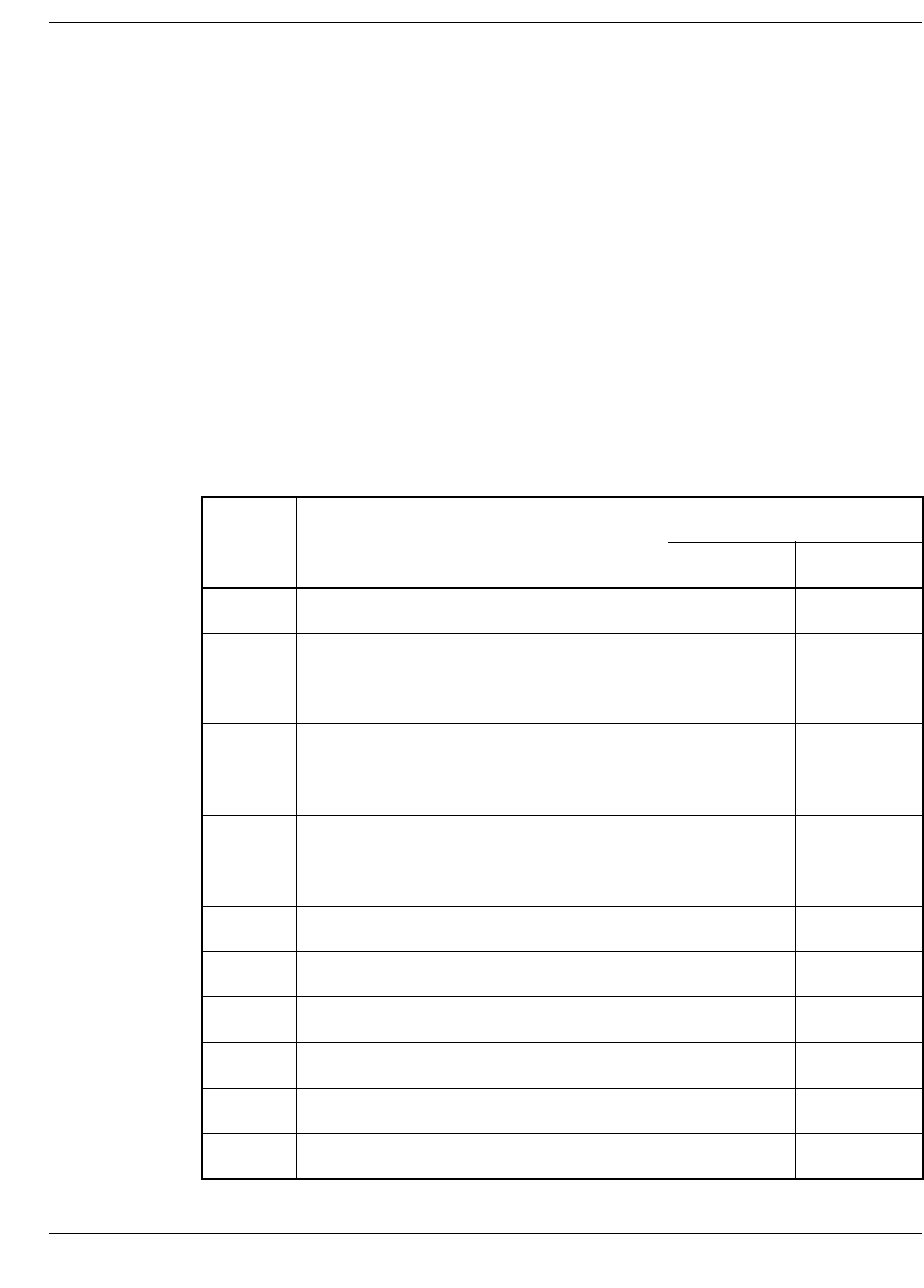
19-4
Negative Card File (NEG)
May-2016 R6.0 Post v10 BA-AE000-03
ACI Worldwide, Inc.
CAPTURE CODE — Defines whether the card should be captured when used.
Valid values are as follows:
REASON ON FILE — The reason the card is in the NEG. The BASE24-atm and
BASE24-pos products take different processing actions in response to the reason
code. Valid reason codes and the actions taken by the BASE24-atm and
BASE24-pos products are as follows:
0 = Return the card
1 = Retain the card
Field Length: 1 numeric character
Required Field: Yes
Default Value: No default value
Data Name: NEG.NEGBASE.CAPTURE-CDE
Reason
Code Description Action
ATM POS
0 Account open CP CP
1 Lost card DT DT
2 Stolen card DT DT
3Referral CP DT
4 Maybe CP CP
5Denial DT DT
6 Signature restriction CP CP
7 Country club CP CP
8 Card expired DT DT
9 Commercial CP CP
10 VIP—transactions allowed CP CP
11 Account closed DT DT
12–99 User defined DT DT

Screen 1
19-5
May-2016 R6.0 Post v10 BA-AE000-03
ACI Worldwide, Inc.
EXPIRATION DATE — The expiration date (YYMM) of the NEG record. After
the indicated month begins, this record no longer affects processing. For example,
if this field is set to 0104, the record does not affect processing after March 31,
2001.
Note: This field can be masked based on a setting in the Security File (SEC). The
degree of masking is based on the setting of the AFT-PAN-DIGITS parameter in
the Logical Network Configuration File.
DATE ADDED TO FILE — The date (YYMMDD) the card was added to the
NEG. The information in this field is for information purposes only.
Key:
CP = Continue processing the transaction
DT = Deny the transaction
Field Length: 1–2 numeric characters
Required Field: Yes
Default Value: 0
Data Name: NEG.NEGBASE.RSN-CDE
Field Length: 4 numeric characters (0000 is not allowed)
Required Field: Yes
Default Value: 0000
Data Name: NEG.NEGBASE.EXP-DAT
Field Length: System protected
Data Name: NEG.NEGBASE.ADD-DAT

ACI Worldwide, Inc.

20-1
May-2016 R6.0 Post v10 BA-AE000-03
ACI Worldwide, Inc.
20: Positive Balance File (PBF)
The Positive Balance File (PBF) contains one record for each account belonging to
the following:
?A BASE24-atm cardholder whose card issuer uses the Positive Balance
Authorization method.
?A BASE24-pos cardholder whose card issuer uses the Positive Balance or
Parametric Authorization method.
?A BASE24-teller accountholder. The BASE24-teller product uses only the
Positive Balance Authorization method and accounts can be accessed with or
without a card.
?A BASE24-telebanking or BASE24-billpay accountholder whose account
issuer uses the Positive Customer with Balances/History Authorization
method. These products do not use plastic cards to access accounts.
Institutions can maintain up to three different PBFs: one for Demand Deposit
Accounts (DDA), one for Savings (SAV) accounts, and one for Credit (CCD)
accounts.
The PBF displays various balances and amounts used by BASE24 products to
authorize transaction requests without having to forward them to a back-end host
authorization system.
The key to records in the PBF is the FIID, account type, and account number.
The following screens are used to access records in the PBF:
?Screen 1 contains account balances, deposit and withdrawal dates and
amounts, and the overdraft limit.
?Screen 3 contains preauthorized holds.
?Screen 5 contains customer short name.
?Screen 6 contains account type and number of the credit line or backup
account.

20-2
Positive Balance File (PBF)
May-2016 R6.0 Post v10 BA-AE000-03
ACI Worldwide, Inc.
?Screen 8 contains BASE24-pos float balances and parametric authorization
totals.
?Screen 10 contains BASE24-teller totals, limits, passbook indicator and
balance, customer class, and status for stop payments and warnings.
?Screen 11 contains BASE24-telebanking cash advance limits as well as
combined BASE24-telebanking transfer and BASE24-billpay payment limits
and totals.
?Screen 13 contains account information used by the Customer Service
product.
?Screen 14 contains cyclical data and account status information for the
Customer Service product. There are two versions of this screen: one for
credit accounts, one for noncredit accounts.
The remaining PBF screens (2, 4, 7, 9, and 12) are reserved for future use.

Deposit Processing
20-3
May-2016 R6.0 Post v10 BA-AE000-03
ACI Worldwide, Inc.
Deposit Processing
BASE24-atm and BASE24-teller transaction sets for noncredit accounts include
deposits. Three PBF balances must be updated for each deposit transaction as
follows:
?Amount on hold (AMOUNT ON HOLD/CREDIT BALANCE field on
screen 1) is the portion of the account balance that is not available for
withdrawal.
?Available balance (AVAILABLE BALANCE/AVAILABLE CREDIT field
on screen 1) is the portion of the account balance that is available for
withdrawal.
?Ledger balance (LEDGER BALANCE/CREDIT LIMIT field on screen 1) is
the total account balance, including the amount that is on hold and the amount
that is available for withdrawal.
BASE24-atm Product
The BASE24-atm product can limit the increase in the available funds balance
resulting from deposits a cardholder makes during a business day. Limits can be
based on dollar amount, number of deposits, or both.
When a deposit is made, the BASE24-atm product adds the entire transaction
amount to the ledger balance. It splits the transaction amount between the
available funds balance and the amount on hold based on information contained in
the following fields:
?DEPOSIT CREDIT PERCENT on Card Prefix File (CPF) screen 4.
?MAXIMUM NUMBER OF DEPOSIT CREDITS on CPF screen 4.
?MAXIMUM CREDIT PER DEPOSIT on CPF screen 4.
?MAXIMUM DEPOSIT CREDIT AMOUNT on CPF screen 4 or
MAXIMUM DEPOSIT CREDIT AMT on Cardholder Authorization File
(CAF) screen 8.
Refer to the field descriptions in the CPF and CAF sections of this manual for
additional information about these fields and how they work together.

20-4
Positive Balance File (PBF)
May-2016 R6.0 Post v10 BA-AE000-03
ACI Worldwide, Inc.
BASE24-teller Product
The BASE24-teller product can limit the increase in the available funds balance
resulting from deposits a customer makes during a business day. Limits can be
based on dollar amount, number of deposits, or both. The BASE24-teller product
also can distinguish between the cash and check portions of a deposit transaction.
When a deposit is made, the BASE24-teller product adds the entire transaction
amount to the ledger balance. It splits the transaction amount between the
available funds balance and the amount on hold based on information contained in
the following fields:
?PERCENT OF DEPOSIT on Institution Definition File (IDF) screen 24.
?MAXIMUM DEPOSIT CREDIT on IDF screen 24.
?MAXIMUM NUMBER DEPOSITS on IDF screen 24.
?CASH IN INDICATOR on IDF screen 25.
?CASH OUT INDICATOR on IDF screen 25.
Refer to the field descriptions in the IDF section of this manual for additional
information about these fields and how they work together.

Screen 1 Function Keys
20-5
May-2016 R6.0 Post v10 BA-AE000-03
ACI Worldwide, Inc.
Screen 1 Function Keys
The use of one function key on PBF screen 1 varies from the standard function
keys explained in section 1. The use of this function key is explained below.
The first column of information below shows the BASE24 key. The second
column describes the function that can be accomplished with this key.
Key Description
F6 Read Next Record — Reads the next record in the file in
which the user is working. The user must indicate which
institution’s file to access.
If the PBF is split into multiple physical files (for example,
checking accounts in one PBF, savings accounts in one PBF,
and credit accounts in one PBF), pressing this key reads only
the records in the current physical file. The user must
indicate the next physical file by changing the value in the
ACCOUNT TYPE field.

20-6
Positive Balance File (PBF)
May-2016 R6.0 Post v10 BA-AE000-03
ACI Worldwide, Inc.
Screen 1
PBF screen 1 allows institutions to keep track of account balances. PBF screen 1
is shown below, followed by descriptions of its fields.
FIID — The FIID of the financial institution maintaining the account. The FIID is
an identifier that must be unique within the logical network. The value in this field
should match the FIID established for the institution in the FIID field on Institution
Definition File (IDF) screen 1. Refer to the “FIID Restrictions” discussion in the
IDF section of this manual before establishing FIID values.
The financial institution that issued this account must have at least one of the
following, depending on the BASE24 product in use:
Product Requirement
BASE24-atm An entry in the ATM ROUTING TABLE on IDF
screen 9 with an AUTH TYPE value of 3 (Positive
Balance Authorization method).
BASE24-BASE POSITIVE BALANCE LLLL YY/MM/DD HH:MM 01 OF 14
FIID: ACCOUNT TYPE: 00 (**********)
ACCOUNT NUMBER:
CHECKING OR SAVINGS / CREDIT CARD
AVAILABLE BALANCE/AVAILABLE CREDIT: 0
LEDGER BALANCE/CREDIT LIMIT: 0
AMOUNT ON HOLD/CREDIT BALANCE: 0
BALANCE PRIOR TO DORMANCY DATE: 0
DORMANCY DATE: YYMMDD CARD ACTIVATION STATE: 000
CURRENCY CODE: (***)
ACCOUNT STATUS: (************)
CASH IN: 0
CASH OUT: 0
OVERDRAFT LIMIT: 0
LAST DEPOSIT DATE: 000000
LAST DEPOSIT AMOUNT: 0
LAST WITHDRAWAL DATE: 000000
LAST WITHDRAWAL AMOUNT: 0
*********************************** BASE24 ***********************************
NEW PAGE: FILE DESTINATION: NEW LOGICAL NETWORK ID:
F12 - HELP

Screen 1
20-7
May-2016 R6.0 Post v10 BA-AE000-03
ACI Worldwide, Inc.
ACCOUNT TYPE — A code identifying the type of account. The ACCOUNT
TYPE column in the table on the following page indicates the values that can be
used in this field for each product. (Account types 12, 13, 32, and 50 are defined
twice due to differences in the BASE24 product that uses them.)
Checking, savings, and credit accounts use multiple account type codes to identify
the same account type. An institution can use the additional account type codes to
identify different pricing or other distinguishing factors. However, BASE24
products consider all codes identifying the same account type to be equal when
determining how to process a transaction. For example, an ATM cardholder wants
to make a withdrawal from savings and has three accounts: one with account type
11, one with account type 15, and one with account type 17. All three accounts are
considered savings accounts just as if all of them had account type 11.
BASE24-pos
An entry in the POS ROUTING TABLE on IDF
screen 16 with an AUTH TYPE field value of 3
(Positive Balance Authorization method) or 6
(Parametric Authorization method).
BASE24-teller
The BASE24-teller product supports only the
Positive Balance Authorization method. Therefore,
the BASE24-teller product does not have the
configuration requirements that exist for other
BASE24 products.
BASE24-telebanking
BASE24-billpay
The institution must use the Positive Customer with
Balance/History Authorization method. The entry
in the ROUTE PROFILE field on IDF screen 40
identifies which Institution Routing Configuration
File (IRCF) record an institution uses. The value in
the AUTH METHOD field on screen 1 of the
specified IRCF record must be PCBA (Positive
Customer with Balances/History Authorization
method).
Field Length: 1–4 alphanumeric characters
Required Field: Yes
Default Value: The FIID previously entered.
Data Name: PBF.PBFBASE.PRIKEY.FIID
Product Requirement
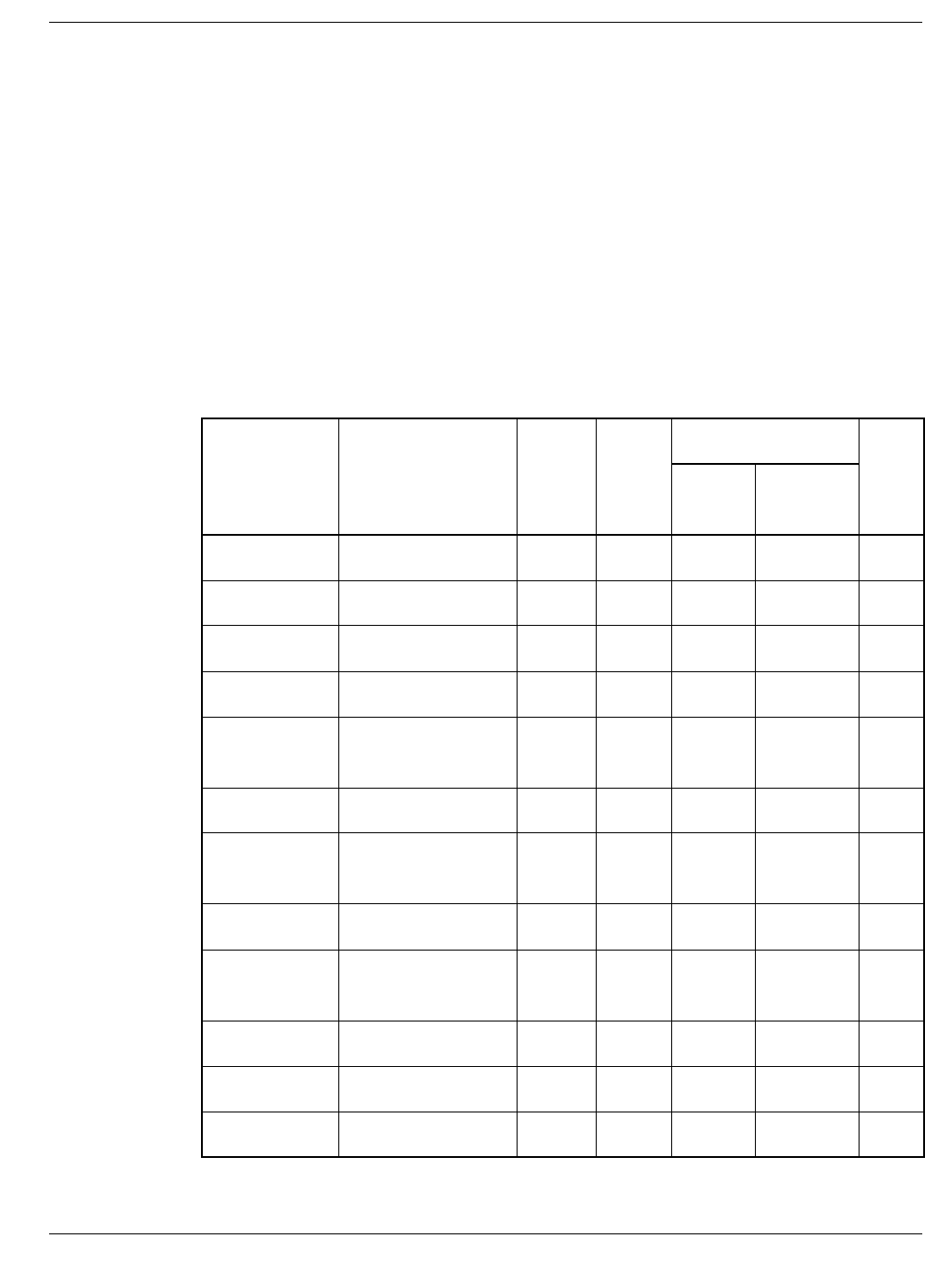
20-8
Positive Balance File (PBF)
May-2016 R6.0 Post v10 BA-AE000-03
ACI Worldwide, Inc.
The BASE24-atm and BASE24-pos products always use a Cardholder
Authorization File (CAF) record to link a cardholder’s plastic card to the correct
PBF record. The BASE24-teller product can access PBF records with or without a
plastic card (in other words, with or without a record in the CAF). The
BASE24-telebanking product, which does not use plastic cards, uses the Customer
Table (CSTT) and Customer Account Relation Table (CACT) to access the PBF.
Because BASE24-teller Device Handler processes do not use multiple account
types to identify checking, savings, and credit accounts, certain PBF account types
are valid only when the CAF is used. The following table identifies the
ACCOUNT TYPE field values that are recognized by the BASE24-atm,
BASE24-pos, and BASE24-teller products when a plastic card is used, the
BASE24-teller product when a plastic card is not used, and the
BASE24-telebanking product (column labeled TB).
ACCOUNT
TYPE Description ATM POS
Teller
TB
With
Cards Without
Cards
01 Checking ?? ? ? ?
02–09 Checking ?? ? ?
11 Savings ?? ? ? ?
12 Savings ??
12 Retirement
account
???
13 Savings ??
13 Certificate of
deposit (CD)
???
14–19 Savings ?? ? ?
21 Interest-bearing
checking
???
31 Credit card ?? ? ? ?
32 Credit card ??
32 Credit line ???
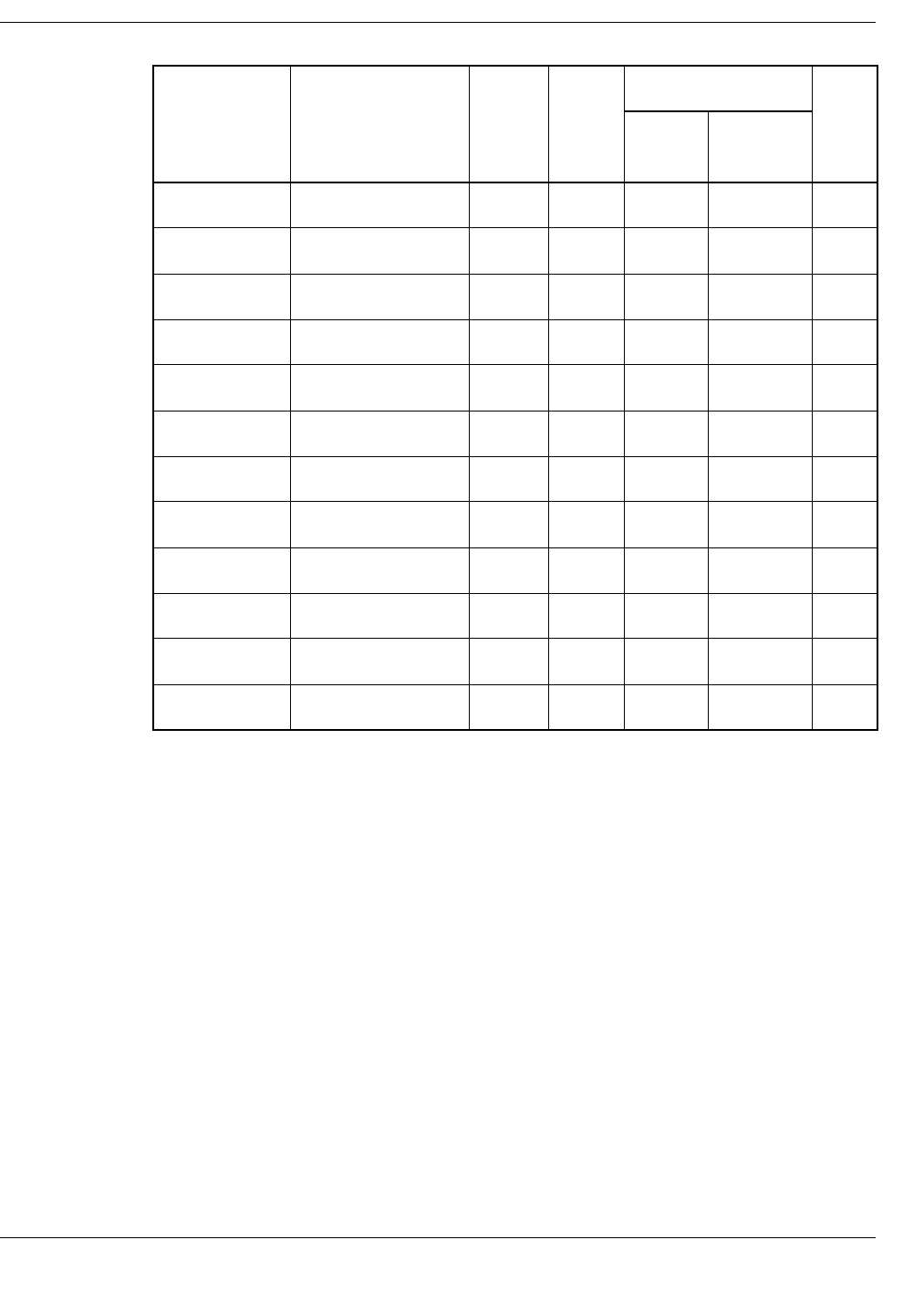
Screen 1
20-9
May-2016 R6.0 Post v10 BA-AE000-03
ACI Worldwide, Inc.
A description of the account type code entered is displayed to the right of the
ACCOUNT TYPE field. The description of Utility is used for Utility and iDebit
account types.
ACCOUNT NUMBER — The account number of the application account whose
information is contained in this PBF record. The value entered in this field must
be left-justified and cannot contain embedded blanks.
For all card-based accounts, the entry in this field must have a matching entry in
the ACCOUNT NUMBER field on Cardholder Authorization File (CAF) screen 3
or 4. BASE24-teller accounts that are not tied to cards do not have CAF records.
33–39 Credit card ?? ? ?
41 Installment loan ???
42 Mortgage loan ???
43 Commercial loan ???
50 Utility ??
50 Utility (iDebit) ?? ?
51 Utility 1 ??
52 Utility 2 ??
53 Utility 3 ??
54 Utility 4 ??
55 Utility 5 ??
60 Other ??
Field Length: 2 numeric characters
Required Field: Yes, 00 must be changed.
Default Value: 00
Data Name: PBF.PBFBASE.PRIKEY.TYP
ACCOUNT
TYPE Description ATM POS
Teller
TB
With
Cards Without
Cards
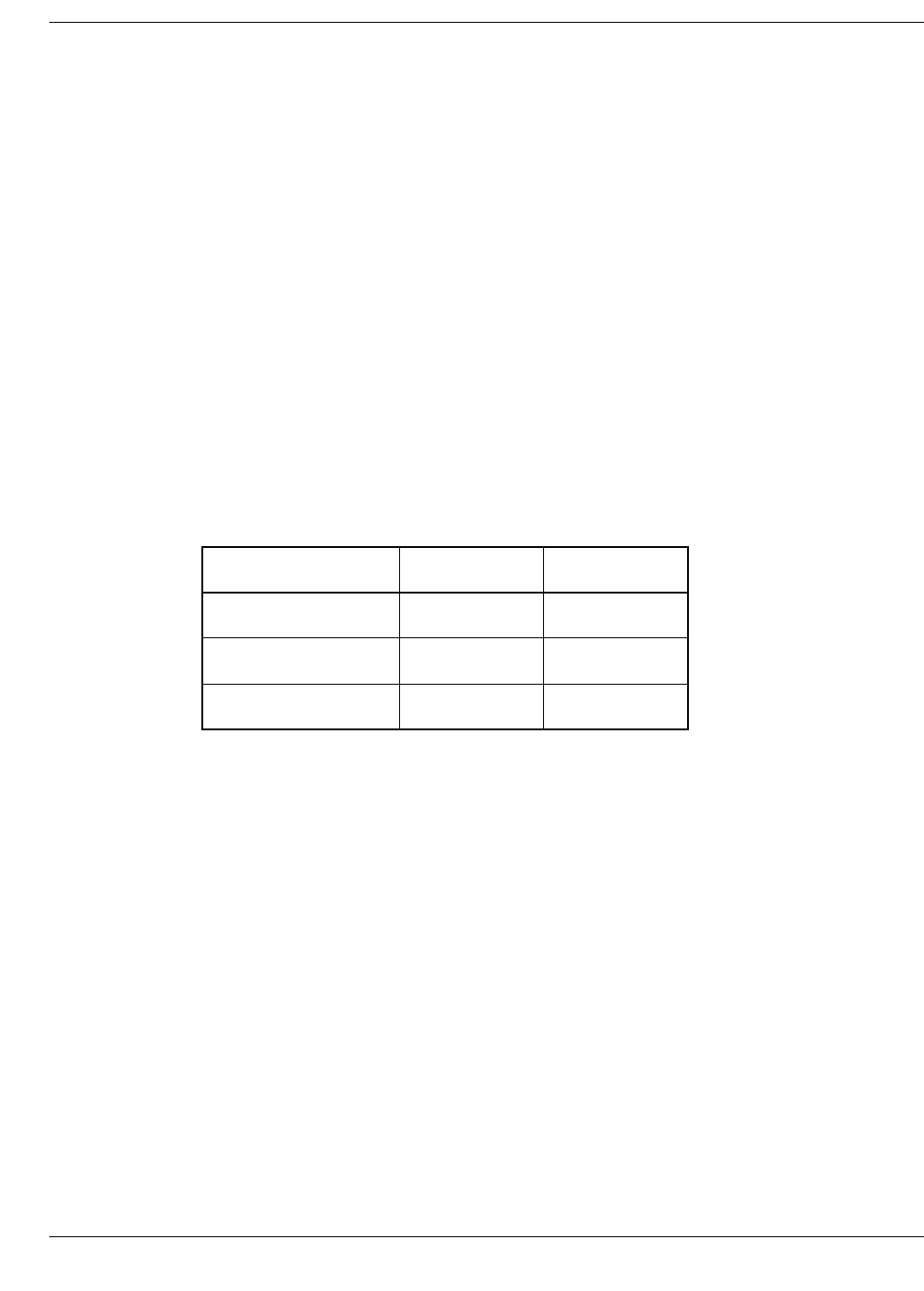
20-10
Positive Balance File (PBF)
May-2016 R6.0 Post v10 BA-AE000-03
ACI Worldwide, Inc.
For BASE24-telebanking accounts, the entry in this field must have a matching
entry in the ACCOUNT NUMBER field on Customer Table (CSTT) screen 2.
CSTT screen 2 displays information contained in the Customer Account Relation
Table (CACT).
For checking, savings, and credit accounts, care must be taken when authorizing
transactions on the BASE24 transaction processing system because BASE24
Authorization processes treat all account types in a range the same when
determining whether a CAF, CACT, or PBF account number is unique. When
making this determination, the BASE24-atm and BASE24-pos products consider
account types 01 through 09 to be in the same range, account types 11 through 19
to be in the same range, and account types 31 through 39 to be in the same range.
The BASE24-teller and BASE24-telebanking products also use these ranges, but
exclude account types 11, 12, and 32. As a result, the accounts shown below are
considered unique when they are entered in the CAF, CACT, and PBF. However,
the BASE24 Authorization processes and Integrated Authorization Server
processes consider the accounts to be duplicates because types 31 and 33 are in the
same range.
When BASE24 Integrated Authorization Server processes encounter duplicate
account numbers in the CACT, they check the account status to determine which
account to select for a transaction. Different search hierarchies are used to select a
from account, a to account, an account for a standard inquiry or history transaction,
and an account for a user-defined transaction. Once an account number is selected
in the CACT, the same account number is used in the PBF. For detailed
information on the specific search strategies used by Integrated Authorization
Server processes to differentiate duplicate accounts, refer to the BASE24 Remote
Banking Transaction Processing Manual.
Description Account A Account B
FIID BNK0 BNK0
Account Number 123456 123456
Account Type 31 33
Field Length: 1–19 numeric characters
Required Field: Yes
Default Value: No default value
Data Name: PBF.PBFBASE.PRIKEY.NUM

Screen 1
20-11
May-2016 R6.0 Post v10 BA-AE000-03
ACI Worldwide, Inc.
CHECKING OR SAVINGS / CREDIT CARD
The following fields contain balances for noncredit accounts or contain balances
and a limit for credit accounts. Embedded blanks are not allowed in these fields.
Noncredit accounts are identified by the following values in the ACCOUNT
TYPE field:
Credit accounts are identified by the following values in the ACCOUNT TYPE
field:
The amounts displayed on this screen depend on whether the account is a credit or
noncredit account. For example, if the type of account entered in the ACCOUNT
TYPE field is value 31, those amounts specific to the credit account are displayed.
As another example, amounts specific to a noncredit account are displayed when a
value of 11 is entered in the ACCOUNT TYPE field.
Note: Other accounts (i.e., accounts with an account type value of 60) are
processed as credit or debit accounts, as specified in the OTHER ACCT
PROCESSING field on IDF screen 2.
AVAILABLE BALANCE/AVAILABLE CREDIT — When the account
associated with this PBF record is a noncredit account, this field contains the
available balance for the account. When the account associated with this PBF
record is a credit account, this field contains the available credit for the account.
The available balance is the amount that can be withdrawn by the accountholder
without overdraft protection. Deposit credit percentage amounts are added to the
value in this field, as well as any refunds to a purchase authorization from a
noncredit account. It equals the amount in the LEDGER BALANCE field on this
screen minus the amount in the AMOUNT ON HOLD field on this screen. Refer
to the topic “Deposit Processing” at the beginning of this section for additional
information on how the available balance is calculated.
01–09 = Checking
11–19 = Savings (including retirement and certificate)
21 = Interest-bearing checking
50–55 = Utility
31–39 = Credit (including credit line)
41 = Installment loan
42 = Mortgage loan
43 = Commercial loan

20-12
Positive Balance File (PBF)
May-2016 R6.0 Post v10 BA-AE000-03
ACI Worldwide, Inc.
The available credit is the amount remaining when the current charges (the amount
in the CREDIT BALANCE field) are subtracted from the credit limit (the amount
in the CREDIT LIMIT field) for this account. Purchases or cash advances made
from a credit account are subtracted from the value in this field.
LEDGER BALANCE/CREDIT LIMIT — When the account associated with this
PBF record is a noncredit account, this field contains the current balance for the
account. When the account associated with this PBF record is a credit account,
this field contains the credit limit for the account.
The current balance is the amount remaining in the account when all withdrawals
and purchases have been subtracted. The amount displayed in this field is
calculated as the sum of the amounts in the AVAILABLE BALANCE and
AMOUNT ON HOLD fields. Refer to the topic “Deposit Processing” at the
beginning of this section for additional information on calculating the current
balance.
The credit limit is the maximum amount of cash advances or purchases that can be
executed from this account.
AMOUNT ON HOLD/CREDIT BALANCE — When the account associated
with this PBF record is a noncredit account, this field contains the amount on hold.
When the account associated with this PBF record is a credit account, this field
contains the credit balance.
The amount on hold is the amount of noncredit account funds that are being held
and are not available to the accountholder. An example of held funds is a deposit
for which no deposit credit is granted. Although the deposit amount is credited to
Field Length: 1–18 numeric characters
Required Field: Yes
Default Value: 0
Data Names: PBF.PBFBASE.AVAIL-BAL
PBF.PBFBASE.AVAIL-CR
Field Length: 1–18 numeric characters
Required Field: Yes
Default Value: 0
Data Names: PBF.PBFBASE.LEDG-BAL
PBF.PBFBASE.CR-LMT

Screen 1
20-13
May-2016 R6.0 Post v10 BA-AE000-03
ACI Worldwide, Inc.
the ledger balance, a cardholder cannot use the funds until they are verified or
cleared. Refer to the topic “Deposit Processing” at the beginning of this section
for additional information on calculating the amount on hold.
The credit balance is the current balance for the credit account or total amount of
charges on the account. It includes all transactions that have been authorized and
paperwork that has been received.
The amount of any refund for purchases from a credit account is subtracted from
the value in this field.
BALANCE PRIOR TO DORMANCY DATE — The PBF balance before the
dormancy fee was assessed. This field is used only when the BASE24-pos Stored
Value add-on product is installed.
DORMANCY DATE — The date a stored value dormancy fee was assessed.
This field is used only when the BASE24-pos Stored Value add-on product is
installed.
CARD ACTIVATION STATE — The stored value card activation state. This
field is used only when the BASE24-pos Stored Value add-on product is installed.
Field Length: 1–18 numeric characters
Required Field: Yes
Default Value: 0
Data Names: PBF.PBFBASE.AMT-ON-HLD
PBF.PBFBASE.CR-BAL
Field Length: System protected
Data Names: PBF.PBFBASE.BAL-PRIOR-TO-DORMANCY-FEE
Field Length: System protected
Data Name: PBF.PBFBASE.DORMANCY-DAT
Field Length: System protected
Required Field: PBF.PBFBASE.CRD-ACTVT-ST

20-14
Positive Balance File (PBF)
May-2016 R6.0 Post v10 BA-AE000-03
ACI Worldwide, Inc.
CURRENCY CODE — A numeric ISO code indicating the currency in which
this account is maintained. Valid values are listed in the ISO 4217 standard, Codes
for the Representation of Currencies and Funds. If no value is entered in this
field, it defaults to the value of the first entry in the CURRENCY-CODE-TABLE
in the COBNAMES file.
Note: If you update this field, BASE24 does not recalculate the balances and
amounts contained in the file.
A three-character alphabetic representation of the code is displayed to the right of
the CURRENCY CODE field.
ACCOUNT STATUS — A code indicating the current status of the account and
the action to be taken by the Authorization or Integrated Authorization Server
process if this account status is encountered. Valid values are as follows:
Field Length: 3 numeric characters
Required Field: No
Default Value: Value of the first entry in the CURRENCY-CODE-TABLE
in the COBNAMES file.
Data Names: PBF.PBFBASE.CRNCY-CDE
Value Status Action
0, A, B, C No relationship
(inactive account) Deny transactions.
1, D, E, F, G, H, I Open Accept transactions.
2, J, K, L Restricted to
deposits The BASE24-atm and BASE24-teller
products accept deposit and inquiry
transactions, the BASE24-pos
product denies all transactions except
inquiries, and the
BASE24-telebanking product accepts
all transactions except transfers from
this account.
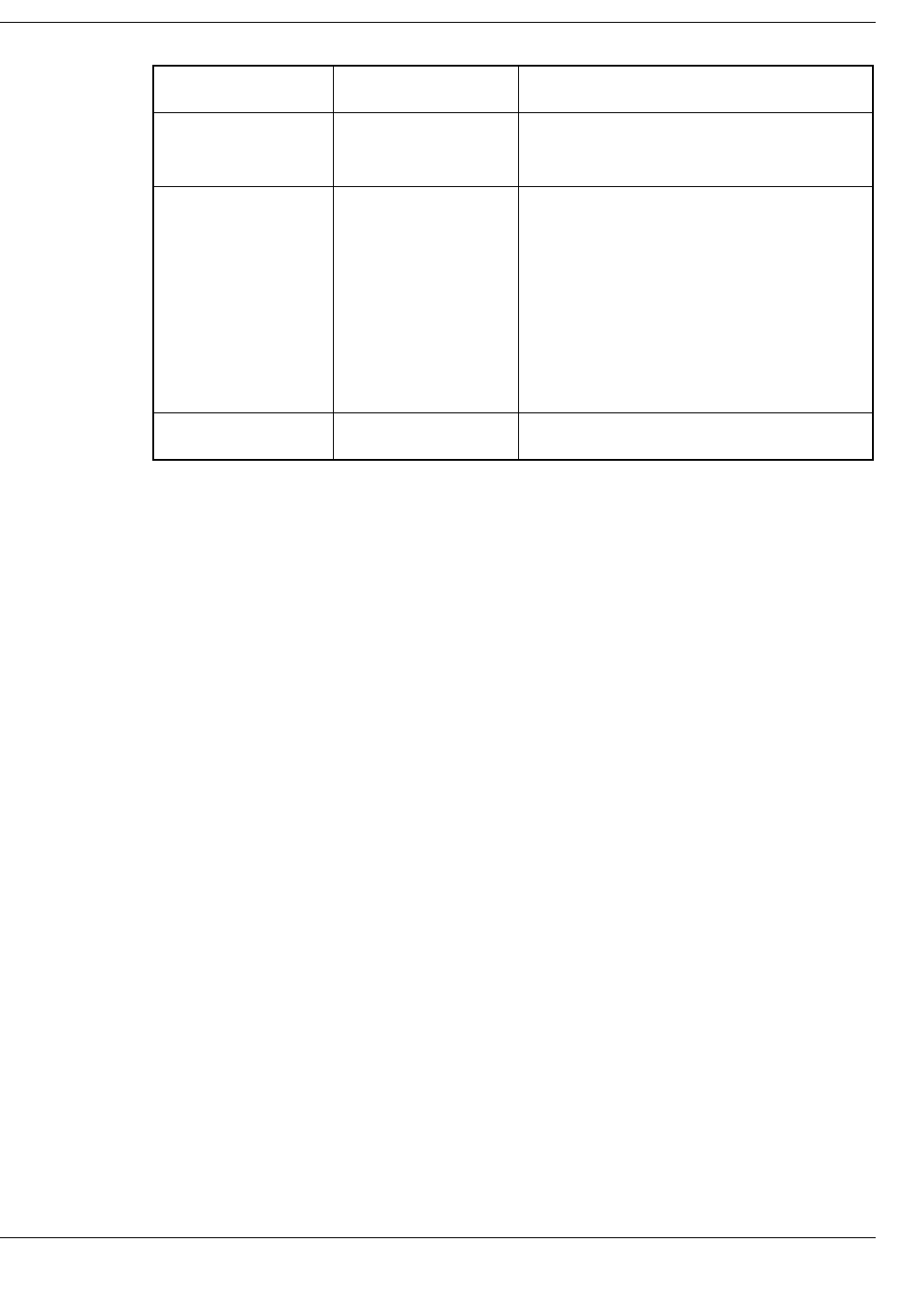
Screen 1
20-15
May-2016 R6.0 Post v10 BA-AE000-03
ACI Worldwide, Inc.
BASE24 products do not distinguish between the alphabetic and numeric values
grouped together above. The alphabetic values are intended to give institutions a
wider range of values for assigning account statuses.
A description of the account status code entered is displayed to the right of the
ACCOUNT STATUS field.
3, M, N, O, P, Q,
ROpen primary
account Accept transactions
4, S, T, U Primary account
restricted to
deposits
The BASE24-atm and BASE24-teller
products accept deposit and inquiry
transactions, the BASE24-pos
product denies all transactions except
inquiries, and the
BASE24-telebanking product accepts
all transactions except transfers from
this account.
9, V, W, X, Y, Z Closed Deny transactions.
Value Status Action

20-16
Positive Balance File (PBF)
May-2016 R6.0 Post v10 BA-AE000-03
ACI Worldwide, Inc.
CASH IN — The total amount of cash deposited during a BASE24 processing
day.
The amount in this field is reset to zero by the Refresh process for the records that
are being refreshed and by the Authorization process on a transaction-by-
transaction basis. The amount in this field is used by the BASE24-teller product.
CASH OUT — The total amount of cash paid out during a BASE24 processing
day.
Each time the Refresh process is run, it resets the amount in this field to zero for
the records that are being refreshed. The Authorization process resets the amount
in this field to zero the first time the process reads this PBF record during a usage
accumulation period. BASE24-atm and BASE24-pos Authorization processes
update the amount in this field when processing transactions that involve cash out
(for example, withdrawals and the cash back portion of deposits or purchases with
cash back). When processing transactions that involve cash out, the
BASE24-teller Authorization process updates the amount in this field, then uses
the balance to test against cash out limits established in the MAXIMUM CASH
OUT field on screen 24 of the Institution Definition File (IDF).
OVERDRAFT LIMIT — The amount available for overdraft on this account.
The amount displayed is added to the amount in the AVAILABLE BALANCE/
AVAILABLE CREDIT field to obtain the maximum transaction amount available
to an accountholder. This field makes it possible for an accountholder to perform
transactions even when the transaction amount exceeds the balance in the
AVAILABLE BALANCE/AVAILABLE CREDIT field.
Use of overdraft limit funds results in a negative balance in the AVAILABLE
BALANCE/AVAILABLE CREDIT field and can result in a negative balance in
the LEDGER BALANCE/CREDIT LIMIT field for noncredit accounts.
Field Length: 1 alphanumeric character
Required Field: Yes
Default Value: No default value
Data Name: PBF.PBFBASE.ACCT-STAT
Field Length: System protected
Data Name: PBF.PBFBASE.CASH-IN-TODAY
Field Length: System protected
Data Name: PBF.PBFBASE.CASH-OUT-TODAY

Screen 1
20-17
May-2016 R6.0 Post v10 BA-AE000-03
ACI Worldwide, Inc.
The BASE24-teller and BASE24-telebanking products support credit line or
backup accounts as an alternative to overdraft limit funds. Overdraft limit funds
are not the same as the overdraft protection provided by a credit line or backup
account. A line of credit is a credit account and a backup account is a checking,
savings, or interest-bearing checking account. A credit line or backup account can
be specified using the ACCOUNT TYPE and ACCOUNT NUMBER fields on
PBF screen 6. When a credit line or backup account has been specified, funds are
transferred from the credit line or backup account to this account instead of
overdrawing this account, regardless of whether an overdraft limit is specified.
LAST DEPOSIT DATE — When the account associated with this PBF record is
a checking or savings account, this field contains the date (YYMMDD) of the last
deposit or transfer to this account. However, only transactions authorized by a
BASE24 product affect the date in this field. Transactions authorized by a host
have no effect.
When the account associated with this PBF record is a credit account, this field
contains the date of the last payment to this account.
LAST DEPOSIT AMOUNT — When the account associated with this PBF
record is a checking or savings account, this field contains the amount of the last
deposit or transfer to this account. However, only transactions authorized by a
BASE24 product affect the amount in this field. Transactions authorized by a host
have no effect.
When the account associated with this PBF record is a credit account, this field
contains the amount of the last payment to this account.
Field Length: 1–10 numeric characters
Required Field: No
Default Value: 0
Data Name: PBF.PBFBASE.OVRDRFT-LMT
Field Length: System protected
Data Name: PBF.PBFBASE.LAST-DEP-DAT
Field Length: System protected
Data Name: PBF.PBFBASE.LAST-DEP-AMT

20-18
Positive Balance File (PBF)
May-2016 R6.0 Post v10 BA-AE000-03
ACI Worldwide, Inc.
LAST WITHDRAWAL DATE — When the account associated with this PBF
record is a checking or savings account, this field contains the date (YYMMDD)
of the last withdrawal, transfer, or payment from this account. However, only
transactions authorized by a BASE24 product affect the date in this field.
Transactions authorized by a host have no effect.
When the account associated with this PBF record is a credit account, this field
contains the date of the last charge to this account.
LAST WITHDRAWAL AMOUNT — When the account associated with this
PBF record is a checking or savings account, this field contains the amount of the
last withdrawal, transfer, or payment from this account. However, only
transactions authorized by a BASE24 product affect the amount in this field.
Transactions authorized by a host have no effect.
When the account associated with this PBF record is a credit account, this field
contains the amount of the last charge to this account.
Field Length: System protected
Data Name: PBF.PBFBASE.LAST-WDL-DAT
Field Length: System protected
Data Name: PBF.PBFBASE.LAST-WDL-AMT
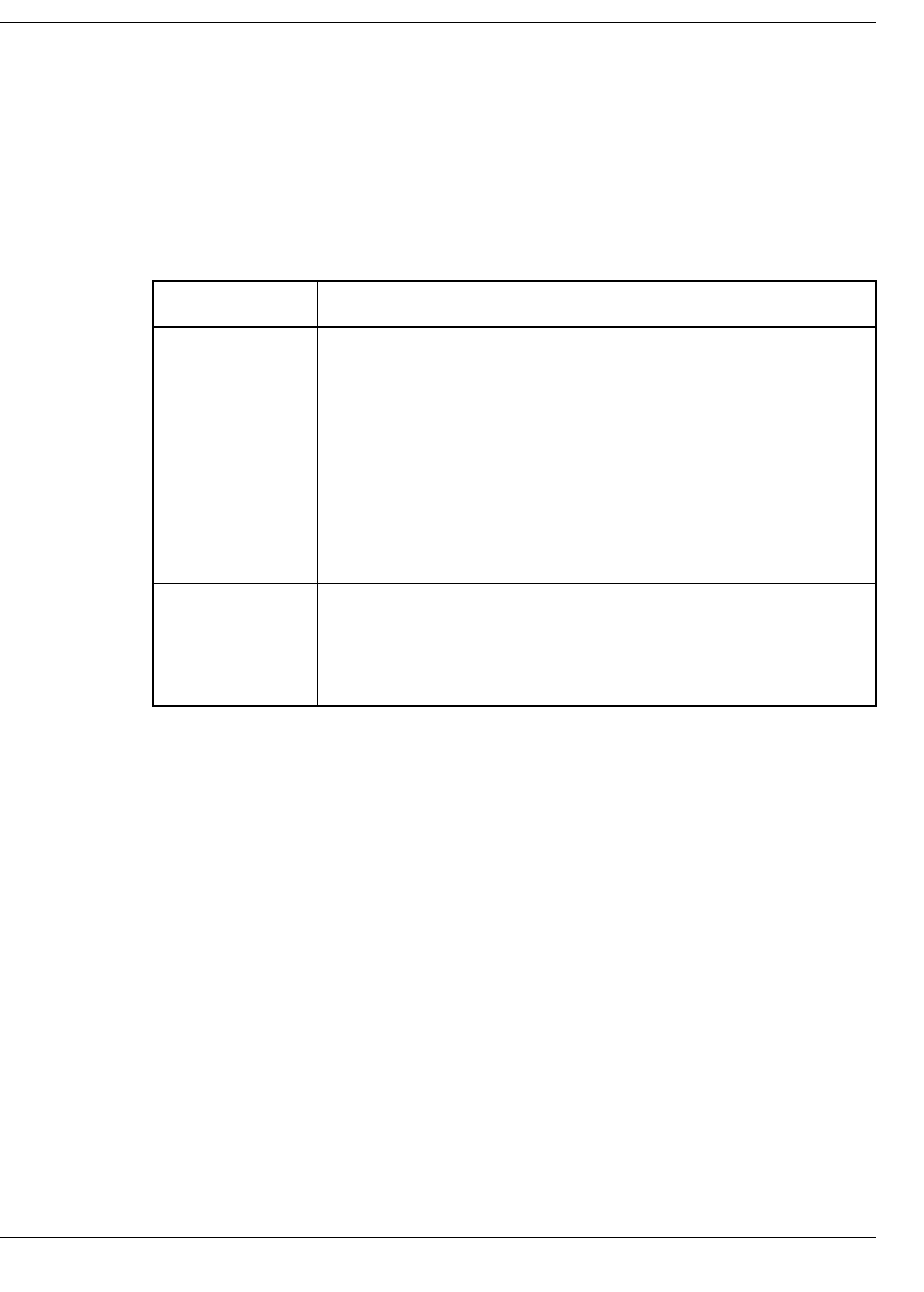
Screen 3 Function Keys
20-19
May-2016 R6.0 Post v10 BA-AE000-03
ACI Worldwide, Inc.
Screen 3 Function Keys
The use of two function keys on PBF screen 3 varies from the standard function
keys explained in section 1. The use of these function keys is explained below.
The first column of information below shows the BASE24 keys. The second
column describes the function that can be accomplished with these keys.
Key Description
F6 Read Next Record — Reads the next record in the file in
which the user is working. The user must indicate which
institution’s file to access.
If the PBF is split into multiple physical files (for example,
checking accounts in one PBF, savings accounts in one PBF,
and credit accounts in one PBF), pressing this key reads only
the records in the current physical file. The user must
indicate the next physical file by changing the value in the
ACCOUNT TYPE field.
F8 Remove Hold — Removes a hold by changing its status
from ON HOLD to EXPIRED. The hold being removed is
identified by placing the cursor in the column to the left of its
entry on the screen and pressing this key.

20-20
Positive Balance File (PBF)
May-2016 R6.0 Post v10 BA-AE000-03
ACI Worldwide, Inc.
Screen 3
PBF screen 3 displays the preauthorization holds currently in effect on the PBF
record. It also allows an operator to cancel holds. PBF screen 3 is shown below,
followed by descriptions of its fields.
PRE-AUTH HOLDS
These fields, which can occur up to ten times, contain preauthorized hold amounts
associated with the PBF record. BASE24-pos preauthorization purchase
transactions can add preauthorized holds to this record, depending on the setting in
the HOLDS LVL field on Institution Definition File (IDF) screen 16.
The BASE24-atm and BASE24-pos Authorization processes take these
preauthorized hold amounts into consideration when determining whether a
cardholder can withdraw money. BASE24-teller Authorization processes can take
these preauthorized hold amounts into consideration when determining whether a
cardholder can withdraw money, depending on the setting in the Teller Transaction
File (TTF) for the transaction being used. BASE24-telebanking Integrated
Authorization Server processes take these preauthorized hold amounts into
consideration when determining whether a customer can transfer funds or make
payments from this account.
BASE24-BASE POSITIVE BALANCE LLLL YY/MM/DD HH:MM 03 OF 14
FIID: ACCOUNT TYPE: 00 (**********)
ACCOUNT NUMBER:
PRE-AUTH HOLDS
HOLD STATUS TRANSACTION NUMBER AMOUNT
_
_
_
_
_
_
_
_
_
_
TO CANCEL A HOLD, PLACE THE CURSOR NEXT TO HOLD STATUS AND KEY F8.
*********************************** BASE24 ***********************************
NEW PAGE: FILE DESTINATION: NEW LOGICAL NETWORK ID:
F8 - REMOVE HOLD F12 - HELP

Screen 3
20-21
May-2016 R6.0 Post v10 BA-AE000-03
ACI Worldwide, Inc.
These amounts remain on hold for a given period of time and the funds cannot be
moved by the customer. Each hold entry also contains a transaction number so the
BASE24-pos Authorization process can match the hold with a preauthorization
purchase completion transaction.
HOLD STATUS — The status of each preauthorization hold in this PBF record.
The transaction hold status is cleared when the hold expires, when a completion
comes in for the hold amount, or when the hold is canceled by a CRT operator. A
file refresh can clear a hold or change the time it is to expire. Valid values are as
follows:
The length of a hold depends on the transaction originator. If the transaction
originates at a BASE24-pos terminal, the hold time length can be specified by the
terminal or by the PRE-AUTH HOLD TIME field on POS Terminal Data files
(PTD) screen 3. If the transaction originates from an ISO host, the hold time
length is included in the message. If the transaction originates at an interchange,
the hold time length can be specified in the PRE-AUTH HOLD TIME field on
Interchange Configuration File (ICF) or Enhanced Interchange Configuration File
(ICFE) screen 11.
Refer to the HCF section of this manual for more information about the HCF,
appendix A for more information about the ICF and ICFE, and the BASE24-pos
Files Maintenance Manual for more information about the PTD.
TRANSACTION NUMBER — The sequence number of the transaction. This
value is used to associate a preauthorized purchase completion transaction with the
correct preauthorized purchase transaction.
AMOUNT — The transaction amount that is associated with this hold.
Transaction amounts can be entered at the POS terminal. However, if an amount is
not entered, the transaction amount for BASE24-pos transactions defaults to the
amount specified in the DEFAULT PRE-AUTH AMOUNT field on PTD screen 3.
EXPIRED = Preauthorization hold is no longer considered.
ON HOLD = Preauthorization hold is still in effect.
Field Length: System protected
Data Name: PBF.PREAUTH.PRE-AUTH.PR-TIMESTAMP
Field Length: System protected
Data Name: PBF.PREAUTH.PRE-AUTH.SEQ-NUM

20-22
Positive Balance File (PBF)
May-2016 R6.0 Post v10 BA-AE000-03
ACI Worldwide, Inc.
If the transaction originates at an interchange and the transaction amount is not
provided, some interchanges obtain the transaction amount from the DEFAULT
PRE-AUTH AMOUNT field on ICF or ICFE screen 11.
Refer to the HCF section of this manual for more information about the HCF,
appendix A for more information about the ICF and ICFE, and the BASE24-pos
Files Maintenance Manual for more information about the PTD.
Field Length: System protected
Data Name: PBF.PREAUTH.PRE-AUTH.HOLD-AMT

Screen 5 Function Keys
20-23
May-2016 R6.0 Post v10 BA-AE000-03
ACI Worldwide, Inc.
Screen 5 Function Keys
The use of one function key on PBF screen 5 varies from the standard function
keys explained in section 1. The use of this function key is explained below.
The first column of information below shows the BASE24 key. The second
column describes the function that can be accomplished with this key.
Key Description
F6 Read Next Record — Reads the next record in the file in
which the user is working. The user must indicate which
institution’s file to access.
If the PBF is split into multiple physical files (for example,
checking accounts in one PBF, savings accounts in one PBF,
and credit accounts in one PBF), pressing this key reads only
the records in the current physical file. The user must
indicate the next physical file by changing the value in the
ACCOUNT TYPE field.

20-24
Positive Balance File (PBF)
May-2016 R6.0 Post v10 BA-AE000-03
ACI Worldwide, Inc.
Screen 5
PBF screen 5 contains the customer short name used by the BASE24-teller
product.
Note: BASE24-teller is the only BASE24 product using the information on PBF
screen 5 at the current time. However, PBF screen 5 is a base screen to permit
future releases of other BASE24 products to use the information it contains.
Because PBF screen 5 is a base screen, it is displayed for all institutions in the
logical network unless an institution’s security records are set up to not allow
access to it. Refer to the BASE24 CRT Access Manual for information on
updating institution security records.
PBF screen 5 is shown below, followed by the description of its field.
BASE24-BASE POSITIVE BALANCE LLLL YY/MM/DD HH:MM 05 OF 14
FIID: ACCOUNT TYPE: 00 (**********)
ACCOUNT NUMBER:
CUSTOMER SHORT NAME:
*********************************** BASE24 ***********************************
NEW PAGE: FILE DESTINATION: NEW LOGICAL NETWORK ID:
F12 - HELP

Screen 5
20-25
May-2016 R6.0 Post v10 BA-AE000-03
ACI Worldwide, Inc.
CUSTOMER SHORT NAME — The name of the cardholder.
This information can be returned in responses to a teller terminal, enabling the
teller to personalize his or her conversation with the cardholder. The name should
be left-justified.
Field Length: 1–40 alphanumeric characters
Required Field: No
Default Value: No default value
Data Name: PBF.NAMPBF.CUST-SHORT-NAM

20-26
Positive Balance File (PBF)
May-2016 R6.0 Post v10 BA-AE000-03
ACI Worldwide, Inc.
Screen 6 Function Keys
The use of one function key on PBF screen 6 varies from the standard function
keys explained in section 1. The use of this function key is explained below.
The first column of information below shows the BASE24 key. The second
column describes the function that can be accomplished with this key.
Key Description
F6 Read Next Record — Reads the next record in the file in
which the user is working. The user must indicate which
institution’s file to access.
If the PBF is split into multiple physical files (for example,
checking accounts in one PBF, savings accounts in one PBF,
and credit accounts in one PBF), pressing this key reads only
the records in the current physical file. The user must
indicate the next physical file by changing the value in the
ACCOUNT TYPE field.

Screen 6
20-27
May-2016 R6.0 Post v10 BA-AE000-03
ACI Worldwide, Inc.
Screen 6
PBF screen 6 identifies another PBF account that the BASE24-teller and
BASE24-telebanking products can access to obtain funds whenever this PBF
account is short of funds.
PBF screen 6 is shown below, followed by descriptions of its fields.
CREDIT LINE/BACK-UP ACCOUNT
The BASE24-teller and BASE24-telebanking products support credit line or
backup accounts as an alternative to overdraft limit funds. A line of credit is a
credit account and a backup account is a checking, savings, or interest-bearing
checking account. Overdraft limit funds specified by a value in the OVERDRAFT
LIMIT field on PBF screen 1 are not the same as the overdraft protection provided
by a credit line or backup account specified through values in the ACCOUNT
TYPE and ACCOUNT NUMBER fields on this screen. When a credit line or
backup account has been specified, the BASE24-teller or BASE24-telebanking
product transfers funds from the credit line or backup account to this account
instead of overdrawing it, regardless of whether an overdraft limit is specified.
The BASE24-atm and BASE24-pos products still overdraw the account when a
credit line or backup account has been specified because they do not use credit line
or backup accounts.
BASE24-BASE POSITIVE BALANCE LLLL YY/MM/DD HH:MM 06 OF 14
FIID: ACCOUNT TYPE: 00 (**********)
ACCOUNT NUMBER:
CREDIT LINE/BACK-UP ACCOUNT
ACCOUNT TYPE: (**********)
ACCOUNT NUMBER:
*********************************** BASE24 ***********************************
NEW PAGE: FILE DESTINATION: NEW LOGICAL NETWORK ID:
F12 - HELP

20-28
Positive Balance File (PBF)
May-2016 R6.0 Post v10 BA-AE000-03
ACI Worldwide, Inc.
ACCOUNT TYPE — A code identifying the type of PBF account being used as a
credit line or backup account instead of overdrawing this PBF account. An
account with the type specified in this field and the account number specified in
the ACCOUNT NUMBER field must exist in the PBF. Valid values are as
follows:
A description of the account type code entered is displayed to the right of the
ACCOUNT TYPE field.
ACCOUNT NUMBER — The account number of the PBF account being used as
a credit line or backup account instead of overdrawing this PBF account. An
account with the type specified in the ACCOUNT TYPE field and the account
number specified in this field must exist in the PBF. The account number should
be left-justified.
01–09 = Checking account
11, 14–19 = Savings account
21 = Interest-bearing checking account
31, 33–39 = Credit account
32 = Credit line account
Field Length: 2 numeric values
Required Field: No
Default Value: No default value
Data Name: PBF.CRLINEPBF.CR-LINE-ACCT-TYP
Field Length: 1–19 numeric characters
Required Field: No
Default Value: No default value
Data Name: PBF.CRLINEPBF.CR-LINE-ACCT

Screen 8 Function Keys
20-29
May-2016 R6.0 Post v10 BA-AE000-03
ACI Worldwide, Inc.
Screen 8 Function Keys
The use of one function key on PBF screen 8 varies from the standard function
keys explained in section 1. The use of this function key is explained below.
The first column of information below shows the BASE24 key. The second
column describes the function that can be accomplished with this key.
Key Description
F6 Read Next Record — Reads the next record in the file in
which the user is working. The user must indicate which
institution’s file to access.
If the PBF is split into multiple physical files (for example,
checking accounts in one PBF, savings accounts in one PBF,
and credit accounts in one PBF), pressing this key reads only
the records in the current physical file. The user must
indicate the next physical file by changing the value in the
ACCOUNT TYPE field.

20-30
Positive Balance File (PBF)
May-2016 R6.0 Post v10 BA-AE000-03
ACI Worldwide, Inc.
Screen 8
PBF screen 8 contains BASE24-pos current float and total float data. Screen 8
also contains delinquency and number of months active data used by institutions
supporting Parametric Authorization. PBF screen 8 is shown below, followed by
descriptions of its fields.
POS DATA
The following fields are used to display a cardholder’s activity in the BASE24-pos
product during the current usage accumulation period.
CURRENT FLOAT — The transaction amount authorized during the current
accumulation period for this account.
Field Length: 1–15 numeric characters
Required Field: Yes
Default Value: 0
Data Name: PBF.POSPBF.CUR-FLOAT
BASE24-POS POSITIVE BALANCE LLLL YY/MM/DD HH:MM 08 OF 14
FIID: ACCOUNT TYPE: 00 (**********)
ACCOUNT NUMBER:
POS DATA
CURRENT FLOAT: 0
TOTAL FLOAT: 0
PARAMETRIC AUTH
DAYS DELINQUENT: 0 # OF TIMES 1 CYCLE DELINQUENT: 0
MONTHS ACTIVE: 0 # OF TIMES 2 CYCLES DELINQUENT: 0
# OF TIMES 3 CYCLES DELINQUENT: 0
*********************************** BASE24 ***********************************
NEW PAGE: FILE DESTINATION: NEW LOGICAL NETWORK ID:
F12 - HELP

Screen 8
20-31
May-2016 R6.0 Post v10 BA-AE000-03
ACI Worldwide, Inc.
TOTAL FLOAT — The balance of credit transactions associated with this
account for which the paperwork has not been received.
This field displays the total amount of float on this account. This amount includes
all transactions that have been authorized but not posted to this account because
the paperwork has not been received.
PARAMETRIC AUTH
Information in the PARAMETRIC AUTH fields is maintained by a host. The
Authorization process reads and compares the data in these fields to the tables in
the Card Authorization Parameters File (CAPF) when the Parametric
Authorization method is employed.
The values in the following fields are updated by the Refresh process to reflect
delinquency information maintained by a host. Entries by an operator are allowed.
This screen should be secured to prevent interference with the host-maintained
data.
DAYS DELINQUENT — The number of days this account has been delinquent.
The value in this field is used with the Parametric Authorization method.
Field Length: 1–15 numeric characters
Required Field: Yes
Default Value: 0
Data Name: PBF.POSPBF.TTL-FLOAT
Field Length: 1–2 numeric characters
Required Field: Yes
Default Value: 0
Data Name: PBF.POSPBF.DAYS-DELINQ

20-32
Positive Balance File (PBF)
May-2016 R6.0 Post v10 BA-AE000-03
ACI Worldwide, Inc.
# OF TIMES 1 CYCLE DELINQUENT — Upon refresh, the host generates the
number of times this account has been delinquent for one cycle. Cycles are user-
defined and can represent days, weeks, months, statements, etc. The value in this
field is used with the Parametric Authorization method. Valid values are 0 through
99.
MONTHS ACTIVE — The number of months this account has been active. The
value in this field is used with the Parametric Authorization method.
# OF TIMES 2 CYCLES DELINQUENT — Upon refresh, the host generates
the number of times this account has been delinquent for two cycles. Cycles are
user-defined and can represent days, weeks, months, statements, etc. The value in
this field is used with the Parametric Authorization method. Valid values are 0
through 99.
# OF TIMES 3 CYCLES DELINQUENT — Upon refresh, the host generates
the number of times this account has been delinquent for three cycles. Cycles are
user-defined and can represent days, weeks, months, statements, etc. The value in
this field is used with the Parametric Authorization method. Valid values are 0
through 99.
Field Length: 1–2 numeric characters
Required Field: Yes
Default Value: 0
Data Name: PBF.POSPBF.CYCLE-1
Field Length: 1–2 numeric characters
Required Field: Yes
Default Value: 0
Data Name: PBF.POSPBF.MONTHS-ACTIVE
Field Length: 1–2 numeric characters
Required Field: Yes
Default Value: 0
Data Name: PBF.POSPBF.CYCLE-2
Field Length: 1–2 numeric characters
Required Field: Yes
Default Value: 0
Data Name: PBF.POSPBF.CYCLE-3

Screen 10 Function Keys
20-33
May-2016 R6.0 Post v10 BA-AE000-03
ACI Worldwide, Inc.
Screen 10 Function Keys
The use of one function key on PBF screen 10 varies from the standard function
keys explained in section 1. The use of this function key is explained below.
The first column of information below shows the BASE24 key. The second
column describes the function that can be accomplished with this key.
Key Description
F6 Read Next Record — Reads the next record in the file in
which the user is working. The user must indicate which
institution’s file to access.
If the PBF is split into multiple physical files (for example,
checking accounts in one PBF, savings accounts in one PBF,
and credit accounts in one PBF), pressing this key reads only
the records in the current physical file. The user must
indicate the next physical file by changing the value in the
ACCOUNT TYPE field.

20-34
Positive Balance File (PBF)
May-2016 R6.0 Post v10 BA-AE000-03
ACI Worldwide, Inc.
Screen 10
PBF screen 10 contains BASE24-teller account data. PBF screen 10 is shown
below, followed by descriptions of its fields.
TELLER DATA
The following fields are used to display a customer’s account activity information
in the BASE24-teller product.
TOTAL DEPOSIT AMOUNT — The total amount deposited to an account using
BASE24-teller terminals during the current BASE24 processing day. The value in
this field is cleared on a daily basis at refresh time or when the first deposit
transaction is received during each new processing day.
Field Length: System protected
Data Name: PBF.TLRPBF.TTL-DEP-AMT
BASE24-TLR POSITIVE BALANCE LLLL YY/MM/DD HH:MM 10 OF 14
FIID: ACCOUNT TYPE: 00 (**********)
ACCOUNT NUMBER:
TELLER DATA
TOTAL DEPOSIT AMOUNT: 0 CASH IN LIMIT: 0
AMOUNT DEPOSIT CREDIT: 0 CASH OUT LIMIT: 0
ACCRUED INTEREST YTD: 0 CTR COUNT: 0
STARTING BALANCE: 0 NBF RECORD COUNT: 0
SIGNATURE CARD LOCATION: CUSTOMER CLASS: 0
PASSBOOK BALANCE: 0 NUMBER OF DEPOSITS: 0
PASSBOOK INDICATOR: N (Y/N)
CONFIDENTIAL FLAG: 0 (NORMAL)
STOP PAY/WARN STATUS: 0 (NO STOPS OR WARNINGS)
*********************************** BASE24 ***********************************
NEW PAGE: FILE DESTINATION: NEW LOGICAL NETWORK ID:
F12 - HELP

Screen 10
20-35
May-2016 R6.0 Post v10 BA-AE000-03
ACI Worldwide, Inc.
CASH IN LIMIT — The maximum amount of cash that can be deposited to the
account using the BASE24-teller product during a BASE24 processing day. The
value in this field is represented in multiples of 1000. If this field contains zeros,
no cash in limit applies to this account.
AMOUNT DEPOSIT CREDIT — The total amount of deposit credit given to the
account for deposits during a BASE24 processing day. The amount in this field is
cleared on a daily basis at refresh time. The concept of this field is to keep the
institution at a reasonable risk on unverified deposits.
CASH OUT LIMIT — The maximum amount of cash that can be disbursed from
the account using the BASE24-teller product during a BASE24 processing day.
The check using the value in this field is performed in addition to a check that uses
the value in the MAXIMUM CASH OUT field in the TELLER CUSTOMER
CLASS TABLE on IDF screen 24.
If this field contains zeros, this account is checked using only the value in the
MAXIMUM CASH OUT field in the TELLER CUSTOMER CLASS TABLE on
IDF screen 24. The value in this field is represented in multiples of 1000.
ACCRUED INTEREST YTD — The total amount of year-to-date interest on the
account. The amount in this field is used for informational purposes only and is
maintained by the institution through the Refresh process.
Field Length: 1–4 numeric characters
Required Field: No
Default Value: No default value
Data Name: PBF.TLRPBF.CASHIN-LMT
Field Length: System protected
Data Name: PBF.TLRPBF.AMT-DEP-CR
Field Length: 1–4 numeric characters
Required Field: No
Default Value: No default value
Data Name: PBF.TLRPBF.CASHOUT-LMT
Field Length: System protected
Data Name: PBF.TLRPBF.ACCRUED-INTEREST-YTD

20-36
Positive Balance File (PBF)
May-2016 R6.0 Post v10 BA-AE000-03
ACI Worldwide, Inc.
CTR COUNT — The value in this field indicates the number of currency
transaction reports (CTRs) filled out for a given account during a BASE24
processing day. The value in this field is set to zero on a daily basis at refresh time
or when the first deposit transaction is received during each new processing day.
The value in this field is logged to the Teller Transaction Log File (TTLF) record
with each financial transaction.
STARTING BALANCE — The ledger balance of the account on the host as of
the last time the account was refreshed through the Refresh process. It is an
informational field and is not used by the BASE24-teller product with the
exception of screen displays. It is maintained using data provided by the host.
NBF RECORD COUNT — The number of entries in the No Book File (NBF)
for the account. This field is updated only through the Refresh process.
SIGNATURE CARD LOCATION — The location of the signature card for the
account.
Field Length: System protected
Data Name: PBF.TLRPBF.CNTR-CNT
Field Length: System protected
Data Name: PBF.TLRPBF.STRT-BAL
Field Length: System protected
Data Name: PBF.TLRPBF.NBF-REC-CNT
Field Length: 1–9 alphanumeric characters
Required Field: No
Default Value: No default value
Data Name: PBF.TLRPBF.SIG-CRD-LOC

Screen 10
20-37
May-2016 R6.0 Post v10 BA-AE000-03
ACI Worldwide, Inc.
CUSTOMER CLASS — The customer class flag specifies how much cash is
available to the customer after a check deposit. There are 10 possible options
available for this field that are determined and defined by each institution and
maintained in the CUSTOMER CLASS field on IDF screen 24. Valid values are 0
through 9.
PASSBOOK BALANCE — The printed passbook balance of the account as of
the last update of the passbook. The amount in this field and the amount in the
LEDGER BALANCE/CREDIT LIMIT field on PBF screen 1 match when a
passbook account is opened and each time records in the No Book File (NBF) are
printed in the passbook. A difference between the balance in this field and the
balance in the LEDGER BALANCE/CREDIT LIMIT field on PBF screen 1
indicates that NBF records need to be printed in the passbook.
NUMBER OF DEPOSITS — The total number of deposits accepted for the
account during a BASE24 processing day. The value in this field is cleared on a
daily basis at refresh time or when the first deposit transaction is received during
each new processing day. The concept of this field is to keep the institution at a
reasonable risk on unverified deposits.
PASSBOOK INDICATOR — The passbook indicator flag specifies whether the
account is a passbook account. Valid values are as follows:
Field Length: 1 numeric character
Required Field: Yes
Default Value: 0
Data Name: PBF.TLRPBF.CUST-CLASS
Field Length: System protected
Data Name: PBF.TLRPBF.PASSBOOK-BAL
Field Length: System protected
Data Name: PBF.TLRPBF.NUM-OF-DEP
Y = Yes, the account is a passbook account.
N = No, the account is not a passbook account.
Field Length: 1 alphabetic character
Required Field: Yes
Default Value: N
Data Name: PBF.TLRPBF.PASSBOOK-IND

20-38
Positive Balance File (PBF)
May-2016 R6.0 Post v10 BA-AE000-03
ACI Worldwide, Inc.
CONFIDENTIAL FLAG — The confidential flag is an informational field.
Valid values are as follows:
A description of the flag value entered is displayed to the right of the
CONFIDENTIAL FLAG field.
STOP PAY/WARNING STATUS — A flag indicating to the Authorization
process whether stop payments or warnings have been placed on the account.
Valid values are as follows:
For more information about stop payments and warnings, refer to the Stop
Payment File (SPF) section of this manual, the Warning/Hold/Float File (WHFF)
in the BASE24-teller Files Maintenance Manual, and the BASE24-teller
Transaction Processing Manual.
A description of the status flag entered is displayed to the right of the STOP PAY/
WARNING STATUS field.
0=Normal
1 = Confidential indicator
Field Length: 1 numeric character
Required Field: Yes
Default Value: 0
Data Name: PBF.TLRPBF.CONFIDENTIAL-FLG
0 = No stops or warnings
1 = Stops
2 = Warnings
3 = Stops and warnings
Field Length: 1 numeric character
Required Field: Yes
Default Value: 0
Data Name: PBF.TLRPBF.SP-STAT

Screen 11 Function Keys
20-39
May-2016 R6.0 Post v10 BA-AE000-03
ACI Worldwide, Inc.
Screen 11 Function Keys
The use of one function key on PBF screen 11 varies from the standard function
keys explained in section 1. The use of this function key is explained below.
The first column of information below shows the BASE24 key. The second
column describes the function that can be accomplished with this key.
Key Description
F6 Read Next Record — Reads the next record in the file in
which the user is working. The user must indicate which
institution’s file to access.
If the PBF is split into multiple physical files (for example,
checking accounts in one PBF, savings accounts in one PBF,
and credit accounts in one PBF), pressing this key reads only
the records in the current physical file. The user must
indicate the next physical file by changing the value in the
ACCOUNT TYPE field.

20-40
Positive Balance File (PBF)
May-2016 R6.0 Post v10 BA-AE000-03
ACI Worldwide, Inc.
Screen 11
PBF screen 11 enables an institution to establish BASE24-telebanking and
BASE24-billpay customer cash advance, customer transfer, and customer payment
limits for a single usage accumulation period. PBF screen 11 is shown below,
followed by descriptions of its fields.
TELEBANKING DATA
The following fields are used to set customer cash advance, transfer, and payment
limits and to track customer cash advance, transfer, and payment activity for a
single usage accumulation period.
Whole amounts must be entered in the amount and increment limit fields on this
screen. The number of digits that can be entered depends on the currency code
entered in the CURRENCY CODE field on screen 3 of the Institution Definition
File (IDF). The number of digits that can be entered in these fields is determined
by subtracting the number of decimal places used in the currency from 15. For
example, a currency with two decimal places, like U.S. dollars, allows 13 digits to
be entered in these fields.
BASE24-TB POSITIVE BALANCE LLLL YY/MM/DD HH:MM 11 OF 14
FIID: ACCOUNT TYPE: 00 (**********)
ACCOUNT NUMBER:
TELEBANKING DATA
MINIMUM CASH ADVANCE AMOUNT: 0
CASH ADVANCE INCREMENT: 0
**** TRANSFER/PAYMENT LIMITS ****
PERIODIC LIMIT AMOUNT: 0 PERIODIC LIMIT COUNT: 0
CYCLIC LIMIT AMOUNT: 0 CYCLIC LIMIT COUNT: 0
**** TRANSFER/PAYMENT USAGES ****
PERIODIC USAGE AMOUNT: 0 PERIODIC USAGE COUNT: 0
CYCLIC USAGE AMOUNT: 0 CYCLIC USAGE COUNT: 0
LAST PERIODIC USAGE RESET DATE: 000000
LAST CYCLIC USAGE RESET DATE: 000000
*********************************** BASE24 ***********************************
NEW PAGE: FILE DESTINATION: NEW LOGICAL NETWORK ID:
F12 - HELP

Screen 11
20-41
May-2016 R6.0 Post v10 BA-AE000-03
ACI Worldwide, Inc.
MINIMUM CASH ADVANCE AMOUNT — The minimum cash advance
amount, in whole currency units (for example, U.S. dollars), allowed for transfer
or payment transactions that withdraw funds from a credit account. If the amount
in this field is 0, the transaction is not checked for a minimum cash amount.
If the PERIODIC LIMIT AMOUNT field on this screen contains a nonzero
amount, the amount in that field must be equal to or greater than the amount in this
field.
If the CYCLIC LIMIT AMOUNT field on this screen contains a nonzero amount,
the amount in that field must be equal to or greater than the amount in this field.
CASH ADVANCE INCREMENT — The standard increment amount, in whole
currency units (for example, U.S. dollars), used to determine the amount of
transfer or payment transactions that withdraw funds from a credit account. If the
amount in this field is 0, the transaction is not checked for a cash advance
increment.
For example, if the value in the MINIMUM CASH ADVANCE AMOUNT field is
$100 and the value in this field is $50, the allowable cash advance amounts include
$100, $150, $200, etc. If the value in the MINIMUM CASH ADVANCE
AMOUNT field is $100 and the value in this field is $0, the allowable cash
advance amounts include any amount equal to or greater than $100.
TRANSFER/PAYMENT LIMITS
The values in the following fields limit the combined transfer and payment
transaction activity allowed by the BASE24-telebanking and BASE24-billpay
products for this customer during a single usage accumulation period.
Field Length: 1–15 numeric characters depending upon currency
Required Field: Yes
Default Value: 0
Data Name: PBF.TBPBF.CASH-ADV-MIN
Field Length: 1–15 numeric characters depending upon currency
Required Field: Yes
Default Value: 0
Data Name: PBF.TBPBF.CASH-ADV-INCR

20-42
Positive Balance File (PBF)
May-2016 R6.0 Post v10 BA-AE000-03
ACI Worldwide, Inc.
PERIODIC LIMIT AMOUNT — The maximum amount, in whole currency units
(for example, U.S. dollars), of funds withdrawn from an account by transfer and
payment transactions during a single usage accumulation period. This usage
accumulation period is defined in the PERIODIC PARAMETERS fields on IDF
screen 41.
PERIODIC LIMIT COUNT — The maximum number of withdrawals from an
account by transfer and payment transactions during a single usage accumulation
period. This usage accumulation period is defined in the PERIODIC
PARAMETERS fields on IDF screen 41.
CYCLIC LIMIT AMOUNT — The maximum amount, in whole currency units
(for example, U. S. dollars), of funds withdrawn from an account by transfer and
payment transactions during a single usage accumulation period. This usage
accumulation period is defined in the CYCLIC PARAMETERS fields on IDF
screen 41.
CYCLIC LIMIT COUNT — The maximum number of withdrawals from an
account by transfer and payment transactions during a single usage accumulation
period. This usage accumulation period is defined in the CYCLIC
PARAMETERS fields on IDF screen 41.
Field Length: 1–15 numeric characters depending upon currency
Required Field: Yes
Default Value: 0
Data Name: PBF.TBPBF.PRD-LMT.XFER.AMT
Field Length: 1–4 numeric characters
Required Field: Yes
Default Value: 0
Data Name: PBF.TBPBF.PRD-LMT.XFER.CNT
Field Length: 1–15 numeric characters depending upon currency
Required Field: Yes
Default Value: 0
Data Name: PBF.TBPBF.CYC-LMT.XFER.AMT

Screen 11
20-43
May-2016 R6.0 Post v10 BA-AE000-03
ACI Worldwide, Inc.
TRANSFER/PAYMENT USAGES
The following fields are accumulators for BASE24-telebanking transfer and
BASE24-billpay transfer and payment transactions during a single usage
accumulation period for an individual customer.
PERIODIC USAGE AMOUNT — The total amount, in whole and fractional
currency units (for example, U.S. dollars and cents), of funds withdrawn from an
account by transfer and payment transactions during a single usage accumulation
period. This usage accumulation period is defined in the PERIODIC
PARAMETERS fields on IDF screen 41.
PERIODIC USAGE COUNT — The total number of withdrawals from an
account by transfer and payment transactions during a single usage accumulation
period. This usage accumulation period is defined in the PERIODIC
PARAMETERS fields on IDF screen 41.
CYCLIC USAGE AMOUNT — The total amount, in whole and fractional
currency units (for example, U.S. dollars and cents), of funds withdrawn from an
account by transfer and payment transactions during a single usage accumulation
period. This usage accumulation period is defined in the CYCLIC
PARAMETERS fields on IDF screen 41.
Field Length: 1–4 numeric characters
Required Field: Yes
Default Value: 0
Data Name: PBF.TBPBF.CYC-LMT.XFER.CNT
Field Length: System protected
Data Name: PBF.TBPBF.PRD-USE.XFER.AMT
Field Length: System protected
Data Name: PBF.TBPBF.PRD-USE.XFER.CNT
Field Length: System protected
Data Name: PBF.TBPBF.CYC-USE.XFER.AMT

20-44
Positive Balance File (PBF)
May-2016 R6.0 Post v10 BA-AE000-03
ACI Worldwide, Inc.
CYCLIC USAGE COUNT — The total number of withdrawals from an account
by transfer and payment transactions during a single usage accumulation period.
This usage accumulation period is defined in the CYCLIC PARAMETERS fields
on IDF screen 41.
LAST PERIODIC USAGE RESET DATE — The date that the periodic usage
accumulators were last reset to zero.
LAST CYCLIC USAGE RESET DATE — The date that the cyclic usage
accumulators were last reset to zero.
Field Length: System protected
Data Name: PBF.TBPBF.CYC-USE.XFER.CNT
Field Length: System protected
Data Name: PBF.TBPBF.LAST-PRD-RESET-DAT
Field Length: System protected
Data Name: PBF.TBPBF.LAST-CYC-RESET-DAT

Screen 13 Function Keys
20-45
May-2016 R6.0 Post v10 BA-AE000-03
ACI Worldwide, Inc.
Screen 13 Function Keys
The use of one function key on PBF screen 13 varies from the standard function
keys explained in section 1. The use of this function key is explained below.
The first column of information below shows the BASE24 key. The second
column describes the function that can be accomplished with this key.
Key Description
F6 Read Next Record — Reads the next record in the file in
which the user is working. The user must indicate which
institution’s file to access.
If the PBF is split into multiple physical files (for example,
checking accounts in one PBF, savings accounts in one PBF,
and credit accounts in one PBF), pressing this key reads only
the records in the current physical file. The user must
indicate the next physical file by changing the value in the
ACCOUNT TYPE field.

20-46
Positive Balance File (PBF)
May-2016 R6.0 Post v10 BA-AE000-03
ACI Worldwide, Inc.
Screen 13
PBF screen 13 contains general customer service information for credit and
noncredit accounts for the Customer Service product. The information on this
screen is maintained by the host. A customer service representative uses this
information to research the history of an account.
The values in the fields are updated by the Refresh process to reflect interest and
payment information maintained by a host. Entries by an operator are allowed.
This screen should be secured to prevent interference with the host-maintained
data.
PBF screen 13 is shown below, followed by descriptions of its fields.
PRIOR YEAR TO DATE INTEREST — The prior year-to-date interest. For
credit accounts, this field contains the amount of interest charged. For noncredit
accounts, this field represents the amount of interest earned. This field is user-
defined and is not used in BASE24 processing.
Field Length: 1–20 numeric characters
Required Field: No
Default Value: 0
Data Name: PBF.CSFCPBF.PRIOR-YTD-INTRST
BASE24-CSFC POSITIVE BALANCE LLLL YY/MM/DD HH:MM 13 OF 14
FIID: ACCOUNT TYPE: 00 (**********)
ACCOUNT NUMBER:
PRIOR YEAR TO DATE INTEREST: 0
CURRENT INTEREST RATE:
CREDIT ACCOUNTS DEBIT ACCOUNTS
************************************ ****************************************
LAST CREDIT LIMIT CHANGE DATE: LAST OVERDRAFT LIMIT CHANGE DATE:
CASH ADVANCE INTEREST RATE:
NEXT PAYMENT DUE DATE:
MINIMUM AMT DUE: 0
*********************************** BASE24 ***********************************
NEW PAGE: FILE DESTINATION: NEW LOGICAL NETWORK ID:
F12 - HELP

Screen 13
20-47
May-2016 R6.0 Post v10 BA-AE000-03
ACI Worldwide, Inc.
CURRENT INTEREST RATE — The current rate at which interest is charged
or earned. For credit accounts, this field contains the rate at which interest is
charged. For noncredit accounts, this field contains the rate at which interest is
earned. This field is user-defined and is not used in BASE24 processing.
CREDIT ACCOUNTS
The following fields relate to credit accounts only.
LAST CREDIT LIMIT CHANGE DATE — The date (YYMMDD) the credit
limit was last changed.
CASH ADVANCE INTEREST RATE — The interest rate charged on cash
advance transactions.
NEXT PAYMENT DUE DATE — The date (YYMMDD) that the next payment
on the account is due.
Field Length: 1–8 alphanumeric characters
Required Field: No
Default Value: No default value
Data Name: PBF.CSFCPBF.CUR-INTRST-RATE
Field Length: 6 numeric characters
Required Field: No
Default Value: No default value
Data Name: PBF.CSFCPBF.CR-OVRDFT-LMT-CHNG-DAT
Field Length: 1–8 alphanumeric characters
Required Field: No
Default Value: No default value
Data Name: PBF.CSFCPBF.CASH-ADV-INTRST-RATE
Field Length: 6 numeric characters
Required Field: No
Default Value: No default value
Data Name: PBF.CSFCPBF.NEXT-PMNT-DUE-DAT

20-48
Positive Balance File (PBF)
May-2016 R6.0 Post v10 BA-AE000-03
ACI Worldwide, Inc.
MINIMUM AMT DUE — The minimum payment amount due for the credit
account.
DEBIT ACCOUNTS
The following field relates to noncredit accounts only.
LAST OVERDRAFT LIMIT CHANGE DATE — The date (YYMMDD) the
overdraft limit was last changed.
Field Length: 1–20 numeric characters
Required Field: No
Default Value: 0
Data Name: PBF.CSFCPBF.MIN-AMT-DUE
Field Length: 6 numeric characters
Required Field: No
Default Value: No default value
Data Name: PBF.CSFCPBF.CR-OVRDFT-LMT-CHNG-DAT

Screen 14 Function Keys
20-49
May-2016 R6.0 Post v10 BA-AE000-03
ACI Worldwide, Inc.
Screen 14 Function Keys
The use of one function key on PBF screen 14 varies from the standard function
keys explained in section 1. The use of this function key is explained below.
The first column of information below shows the BASE24 key. The second
column describes the function that can be accomplished with this key.
Key Description
F6 Read Next Record — Reads the next record in the file in
which the user is working. The user must indicate which
institution’s file to access.
If the PBF is split into multiple physical files (for example,
checking accounts in one PBF, savings accounts in one PBF,
and credit accounts in one PBF), pressing this key reads only
the records in the current physical file. The user must
indicate the next physical file by changing the value in the
ACCOUNT TYPE field.

20-50
Positive Balance File (PBF)
May-2016 R6.0 Post v10 BA-AE000-03
ACI Worldwide, Inc.
Screen 14 Credit Version
The credit version of PBF screen 14 contains general information about a credit
account gathered in the last 12 cycles for the Customer Service product. This
screen is displayed when the value in the ACCOUNT TYPE field identifies a
credit account. The credit version of PBF screen 14 is shown below, followed by
descriptions of its fields.
DELINQ — The number of delinquent payments for the given cycle. You can
enter data for the first occurrence of this field only.
Field Length: 1–5 numeric characters for the first occurrence; remaining
occurrences are system-protected
Required Field: No
Default Value: 0
Data Name: PBF.CSFCPBF.CYC-DATA.CR-HIST.NUM-DELINQ
BASE24-CSFC POSITIVE BALANCE LLLL YY/MM/DD HH:MM 14 OF 14
FIID: ACCOUNT TYPE: 00 (**********)
ACCOUNT NUMBER:
DELINQ OVERLIMIT BALANCE STATUS
1: 0 0 0.00 (**************)
2: 0 0 0.00 (**************)
3: 0 0 0.00 (**************)
4: 0 0 0.00 (**************)
5: 0 0 0.00 (**************)
6: 0 0 0.00 (**************)
7: 0 0 0.00 (**************)
8: 0 0 0.00 (**************)
9: 0 0 0.00 (**************)
10: 0 0 0.00 (**************)
11: 0 0 0.00 (**************)
12: 0 0 0.00 (**************)
*********************************** BASE24 ***********************************
NEW PAGE: FILE DESTINATION: NEW LOGICAL NETWORK ID:
F12 - HELP

Screen 14 Credit Version
20-51
May-2016 R6.0 Post v10 BA-AE000-03
ACI Worldwide, Inc.
OVERLIMIT — The number of times the credit limit was exceeded during the
given cycle. You can enter data for the first occurrence of this field only.
BALANCE — The account balance for the given cycle. You can enter data for
the first occurrence of this field only.
STATUS — The account status for the given cycle. Valid values are as follows:
You can enter data for the first occurrence of this field only.
A description of the account status code entered is displayed to the right of the
STATUS field.
Field Length: 1–5 numeric characters for the first occurrence; remaining
occurrences are system-protected
Required Field: No
Default Value: 0
Data Name: PBF.CSFCPBF.CYC-DATA.CR-HIST.NUM-CR-LMT-
EXCEED
Field Length: 1–20 numeric characters for the first occurrence; remaining
occurrences are system-protected
Required Field: No
Default Value: 0.00
Data Name: PBF.CSFCPBF.CYC-DATA.ACCT-BAL
0, A, B, C = No relationship (inactive account)
1, D, E, F, G, H, I = Open
2, J, K, L = Restricted to deposits
3, M, N, O, P, Q, R = Open primary account
4, S, T, U = Primary account restricted to deposits
9, V, W, X, Y, Z = Closed
Field Length: 1 alphabetic or numeric character for the first occurrence;
remaining occurrences are system-protected
Required Field: No
Default Value: No default value
Data Name: PBF.CSFCPBF.CYC-DATA.ACCT-STAT

20-52
Positive Balance File (PBF)
May-2016 R6.0 Post v10 BA-AE000-03
ACI Worldwide, Inc.
Screen 14 Noncredit Version
The noncredit version of PBF screen 14 contains general information about a
noncredit account gathered over the last 12 cycles, as defined by the institution.
This screen is used by the Customer Service product and is displayed when the
value in the ACCOUNT TYPE field identifies a noncredit account. The noncredit
version of PBF screen 14 is shown below, followed by descriptions of its fields.
NSF — The number of times the account did not have sufficient funds during the
given cycle. You can enter data for the first occurrence of this field only.
Field Length: 5 numeric characters for the first occurrence; remaining
occurrences are system-protected
Required Field: No
Default Value: 0
Data Name: PBF.CSFCPBF.CYC-DATA.DB-HIST.NSF
BASE24-CSFC POSITIVE BALANCE LLLL YY/MM/DD HH:MM 14 OF 14
FIID: ACCOUNT TYPE: 00 (**********)
ACCOUNT NUMBER:
NSF OVERDRAFT BALANCE STATUS
1: 0 0 0 (**************)
2: 0 0 0 (**************)
3: 0 0 0 (**************)
4: 0 0 0 (**************)
5: 0 0 0 (**************)
6: 0 0 0 (**************)
7: 0 0 0 (**************)
8: 0 0 0 (**************)
9: 0 0 0 (**************)
10: 0 0 0 (**************)
11: 0 0 0 (**************)
12: 0 0 0 (**************)
*********************************** BASE24 ***********************************
NEW PAGE: FILE DESTINATION: NEW LOGICAL NETWORK ID:
F12 - HELP

Screen 14 Noncredit Version
20-53
May-2016 R6.0 Post v10 BA-AE000-03
ACI Worldwide, Inc.
OVERDRAFT — The number of times the account was overdrawn during the
given cycle. You can enter data for the first occurrence of this field only.
BALANCE — The account balance for the given cycle. You can enter data for
the first occurrence of this field only.
STATUS — The account status for the given cycle. Valid values are as follows:
You can enter data for the first occurrence of this field only.
A description of the account status code entered is displayed to the right of the
STATUS field.
Field Length: 1–5 numeric characters for the first occurrence; remaining
occurrences are system-protected
Required Field: No
Default Value: 0
Data Name: PBF.CSFCPBF.CYC-DATA.DB-HIST.OVRDFT
Field Length: 1–20 numeric characters for the first occurrence; remaining
occurrences are system-protected
Required Field: No
Default Value: 0.00
Data Name: PBF.CSFCPBF.CYC-DATA.ACCT-BAL
0, A, B, C = No relationship (inactive account)
1, D, E, F, G, H, I = Open
2, J, K, L = Restricted to deposits
3, M, N, O, P, Q, R = Open primary account
4, S, T, U = Primary account restricted to deposits
9, V, W, X, Y, Z = Closed
Field Length: 1 alphabetic or numeric character for the first occurrence;
remaining occurrences are system-protected
Required Field: No
Default Value: No default value
Data Name: PBF.CSFCPBF.CYC-DATA.ACCT-STAT

ACI Worldwide, Inc.

21-1
May-2016 R6.0 Post v10 BA-AE000-03
ACI Worldwide, Inc.
21: Prefix File Build Utility (PRE)
The Prefix File Build Utility (PRE) is used to create and maintain Interchange
Prefix Files (IPFs) in the event that prefix tapes are not provided by an
interchange.
The prefixes maintained in an IPF are used for logical network routing using the
Span Prefix File (SPREFIX). In this case, BASE24 products must have access to
valid prefixes including the length of the primary account number (PAN).
The Pregen utility uses IPFs, along with the Card Prefix File (CPF), to create the
SPREFIX, enabling Authorization and Router modules (components of the
BASE24-atm and BASE24-pos products) to perform prefix routing.
The key to records in the PRE is a combination of values in the PREFIX and PAN
LENGTH fields.
The PRE consists of one screen, the Prefix File Build screen. This screen is
explained on the following pages.

21-2
Prefix File Build Utility (PRE)
May-2016 R6.0 Post v10 BA-AE000-03
ACI Worldwide, Inc.
Screen 1
PRE screen 1 allows institutions to create and modify an Interchange Prefix File
(IPF). PRE screen 1 is shown below, followed by descriptions of its fields.
FILE NAME — The name identifying an Interchange Prefix File (IPF).
FILE TYPE — The type of file being created. BASE24 products automatically
display the code IP (representing Interchange Prefix) in this field.
Example: \B24.$DATA.PRO1DATA.IPFPLUS
Field Length: 1–34 alphanumeric characters
Required Field: Yes
Default Value: No default value
Data Name: Not applicable
Field Length: System protected
Data Name: Not applicable
BASE24-PRE PREFIX FILE BUILD LLLL YY/MM/DD HH:MM 01 OF 01
FILE NAME: FILE TYPE: IP
PREFIX: 0 PAN LENGTH: 00 CARD TYPE:
******************************************************************************
DESTINATION: LOGICAL NETWORK ID:
F12-HELP

Screen 1
21-3
May-2016 R6.0 Post v10 BA-AE000-03
ACI Worldwide, Inc.
PREFIX — The interchange prefix.
PAN LENGTH — The allowed length for card account numbers beginning with
this prefix. The primary account number (PAN) length includes the length of the
prefix. Acceptable values are 00 and 02 through 28. A value of 00 indicates that
the length is not available. If the value in this field is not 00, it must be greater
than the number of digits entered in the PREFIX field.
CARD TYPE — A code identifying the type of card associated with the primary
account number (PAN). Codes used in this field are either reserved by BASE24
products or are user-defined. Refer to section 1 for reserved codes and guidelines
for establishing user-defined codes.
Field Length: 1–18 numeric characters
Required Field: Yes
Default Value: 0
Data Name: IPF.P-KEY.PREFIX
Field Length: 2 numeric characters
Required Field: No
Default Value: 00
Data Name: IPF.P-KEY.A-KEY.PAN-LEN
Field Length: 1–2 alphanumeric characters
Required Field: Yes
Default Value: No default value
Data Name: IPF.CARD-TYPE

ACI Worldwide, Inc.

22-1
May-2016 R6.0 Post v10 BA-AE000-03
ACI Worldwide, Inc.
22: Processing Code Description File
(PDF)
The Processing Code Description File (PDF) is an optional file that contains the
descriptions of each processing code description tag used in the Acquirer
Processing Code File (APCF) or Issuer Processing Code File (IPCF). The PDF is
used only if description tags are entered in the DESCR TAG field on APCF screen
2 or IPCF screen 2.
Each description tag record in the PDF defines a long description and an optional
short description. These descriptions are displayed on various screens whenever a
record with the corresponding description tag is read.
ACI provides a PDF containing records for the full set of processing codes that the
BASE24-atm and BASE24-pos products support. This set of records is known as
the default PDF, and is located on the BAxxMISC subvolume, where xx is the
number of the current release. The records in the default PDF are described at the
end of this section.
The primary key to the PDF is the DESCRIPTION TAG field.

22-2
Processing Code Description File (PDF)
May-2016 R6.0 Post v10 BA-AE000-03
ACI Worldwide, Inc.
Screen 1
PDF screen 1 enables you to read, add, update, and delete individual PDF records.
PDF screen 1 is shown below, followed by descriptions of its fields.
DESCRIPTION TAG — A text description tag for a processing code to be used
in the APCF or IPCF. When the value from this field is configured in an APCF or
IPCF record, the text from the LONG DESCRIPTION field is displayed on the
APCF or IPCF screen when the record is read or verified.
LONG DESCRIPTION — A long text description for the description tag entered
in the DESCRIPTION TAG field. When the value in the DESCRIPTION TAG
field is specified in an APCF or IPCF record, the text from this field is displayed
on the APCF or IPCF screen when the record is read or verified.
Example: BAL CHK INQ
Field Length: 30 alphanumeric characters
Required: Yes
Data Name: PDF.PRIKEY.DESCR-TAG
BASE24-BASE PROCESSING CODE DESCR LLLL YY/MM/DD HH:MM 01 OF 01
DESCRIPTION TAG:
LONG DESCRIPTION:
SHORT DESCRIPTION:
*********************************** BASE24 ***********************************
NEW PAGE: FILE DESTINATION: NEW LOGICAL NETWORK ID:
F12-HELP

Screen 1
22-3
May-2016 R6.0 Post v10 BA-AE000-03
ACI Worldwide, Inc.
SHORT DESCRIPTION — An optional short text description for the
description tag entered in the DESCRIPTION TAG field. When this description
tag value is specified in a BASE24 file record, the text from this field can be
displayed where appropriate on the corresponding screen when the record is read
or verified.
Example: BALANCE CHECKING INQUIRY
Field Length: 30 alphanumeric characters
Required: Yes
Data Name: PDF.PROC-CDE-DESCR-LONG
Example: BCI
Field Length: 6 alphanumeric characters
Required: No
Data Name: PDF.PROC-CDE-DESCR-SHORT
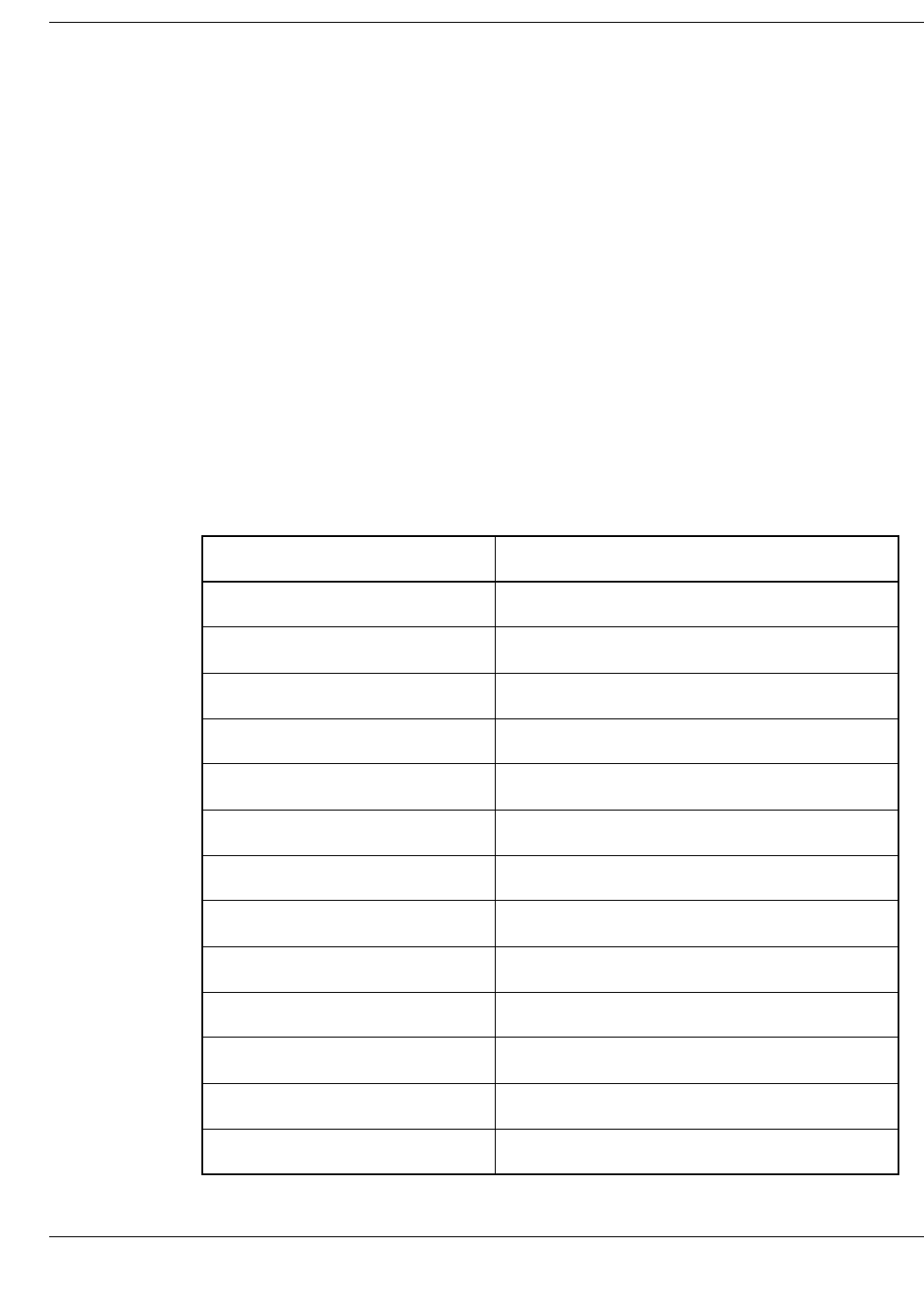
22-4
Processing Code Description File (PDF)
May-2016 R6.0 Post v10 BA-AE000-03
ACI Worldwide, Inc.
Default PDF Records
The PDF defines processing code descriptions for ISO processing codes used on
APCF and IPCF screens. The use of the PDF is optional, however when ACI
installs the BASE24-atm or BASE24-pos product, a full set of default records is
placed in the PDF. A super user (that is, a user with a group number of 255 in his
or her CRT access security record) can modify this full set, called the default PDF,
by adding, updating, or deleting records with specific processing code information.
Each PDF record has unique information in the DESCRIPTION TAG and LONG
DESCRIPTION fields. The SHORT DESCRIPTION field is blank in all default
PDF records. Values in the LONG DESCRIPTION field are displayed on APCF
and IPCF screens if the DESCR TAG field value on these screens matches the
DESCRIPTION TAG field value in the PDF.
Note: Mondex transactions are not included in the default PDF for BASE24-atm
or BASE24-pos.
DESCRIPTION TAG LONG DESCRIPTION
ISO000000 NORMAL PURCHASE NONE
ISO001000 NORMAL PURCHASE SAV
ISO002000 NORMAL PURCHASE DDA
ISO003000 NORMAL PURCHASE CR
ISO010000 FAST CASH
ISO011000 CASH FROM SAV
ISO012000 CASH FROM DDA
ISO013000 CASH FROM CR
ISO019M00 CASH FROM OTHER
ISO030000 CHECK GUARANTEE
ISO032000 CHECK GUARANTEE
ISO040000 CHECK VERIFY
ISO042000 CHECK VERIFY
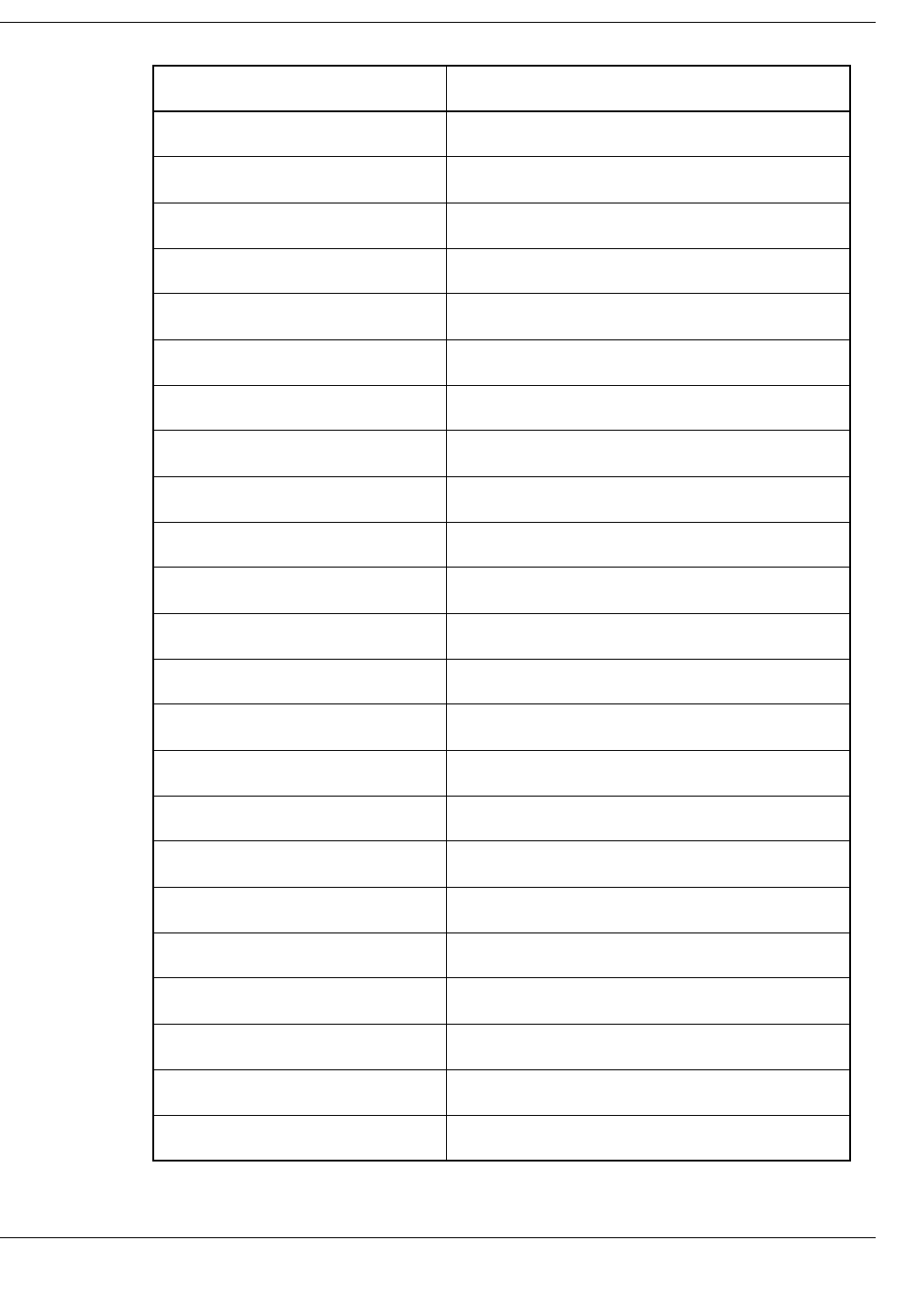
Default PDF Records
22-5
May-2016 R6.0 Post v10 BA-AE000-03
ACI Worldwide, Inc.
ISO090000 PURCHASE CASH BACK NONE
ISO091000 PURCHASE CASH BACK SAV
ISO092000 PURCHASE CASH BACK DDA
ISO180000 PRE-AUTH COMPL NONE
ISO181000 PRE-AUTH COMPL SAV
ISO182000 PRE-AUTH COMPL DDA
ISO183000 PRE-AUTH COMPL CR
ISO190000 MAIL/PHONE ORDER NONE
ISO191000 MAIL/PHONE ORDER SAV
ISO192000 MAIL/PHONE ORDER DDA
ISO193000 MAIL/PHONE ORDER CR
ISO1A0000 CASH CHECK
ISO1B1000 NCD FROM SAV
ISO1B2000 NCD FROM DDA
ISO1B3000 NCD FROM CR
ISO1C0000 PRE-AUTH PURCHASE NONE
ISO1C1000 PRE-AUTH PURCHASE SAV
ISO1C2000 PRE-AUTH PURCHASE DDA
ISO1C3000 PRE-AUTH PURCHASE CR
ISO200000 MERCHANDISE RETURN NONE
ISO201000 MERCHANDISE RETURN SAV
ISO202000 MERCHANDISE RETURN DDA
ISO203000 MERCHANDISE RETURN CR
DESCRIPTION TAG LONG DESCRIPTION
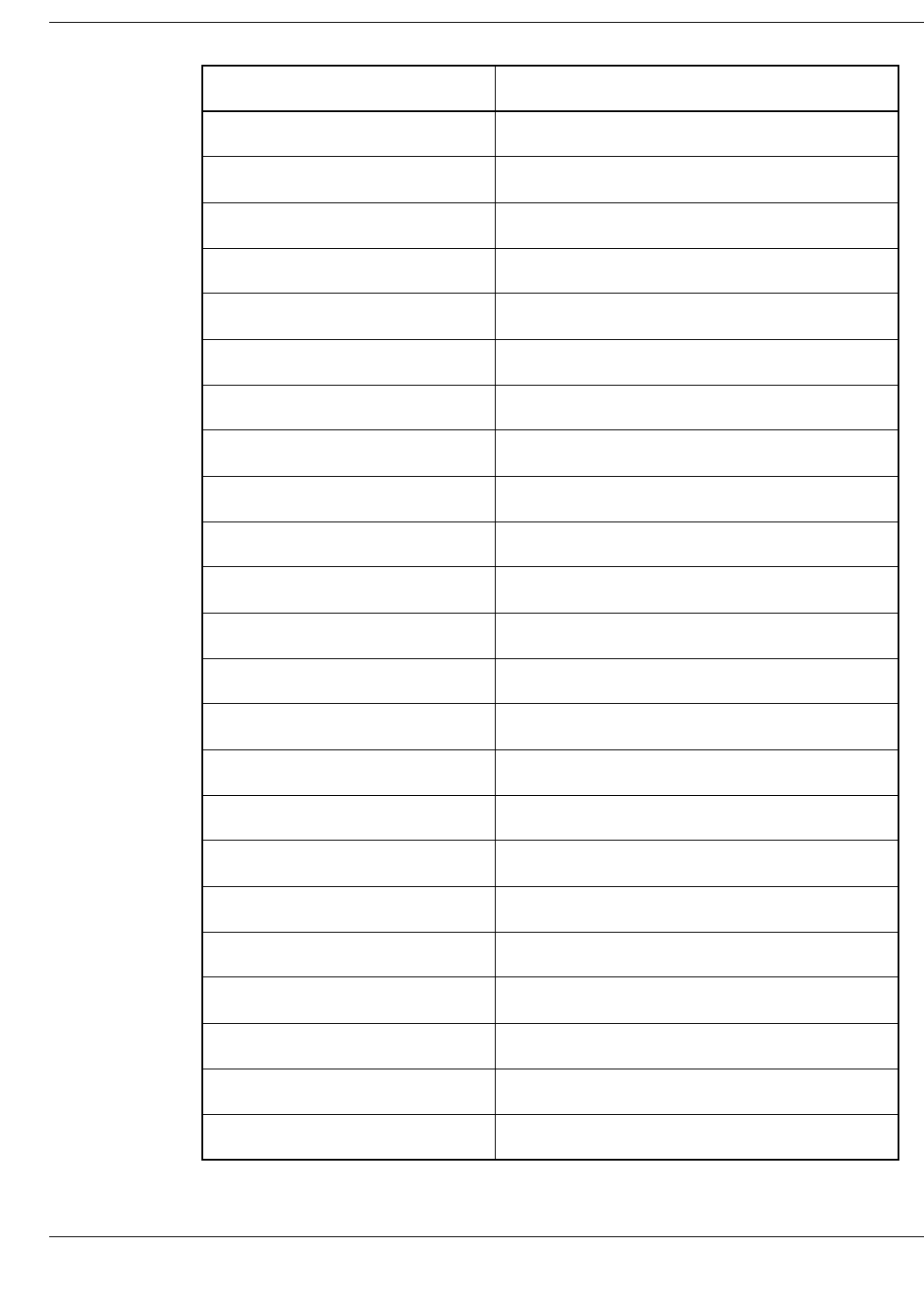
22-6
Processing Code Description File (PDF)
May-2016 R6.0 Post v10 BA-AE000-03
ACI Worldwide, Inc.
ISO210020 DEPOSIT TO DDA
ISO210010 DESPOSIT TO SAV
ISO21009M DEPOSIT TO OTHER
ISO211010 SPLIT DEPOSIT SAV/SAV
ISO211020 SPLIT DEPOSIT SAV/DDA
ISO21109M SPLIT DEPOSIT SAV/OTHER
ISO212010 SPLIT DEPOSIT DDA/SAV
ISO212020 SPLIT DEPOSIT DDA/DDA
ISO21209M SPLIT DEPOSIT DDA/OTHER
ISO219M10 SPLIT DEPOSIT OTHER/SAV
ISO219M20 SPLIT DEPOSIT OTHER/DDA
ISO219M9M SPLIT DEPOSIT OTHER/OTHER
ISO280010 DEPOSIT TO SAV, CASH BACK
ISO280020 DEPOSIT TO DDA, CASH BACK
ISO28009M DEPOSIT TO OTHER, CASH BACK
ISO300000 AVAIL FUNDS INQUIRY NONE
ISO301000 AVAIL FUNDS INQUIRY SAV
ISO301020 AVAIL FUNDS INQUIRY SAV/DDA
ISO302000 AVAIL FUNDS INQUIRY DDA
ISO302010 AVAIL FUNDS INQUIRY DDA/SAV
ISO303000 AVAIL FUNDS INQUIRY CR
ISO309M00 AVAIL FUNDS INQUIRY OTHER
ISO341000 STATEMENT PRINT SAV
DESCRIPTION TAG LONG DESCRIPTION
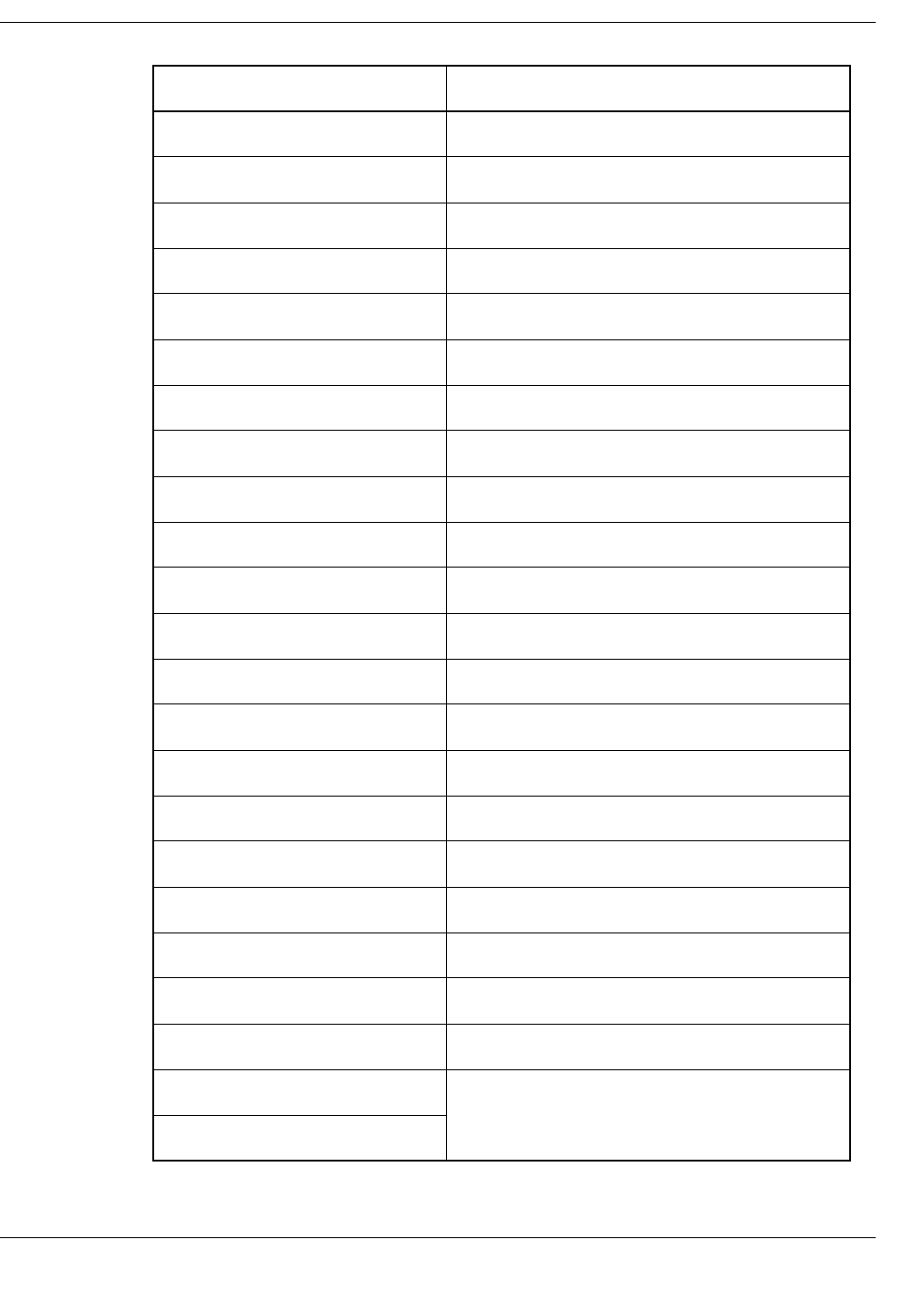
Default PDF Records
22-7
May-2016 R6.0 Post v10 BA-AE000-03
ACI Worldwide, Inc.
ISO342000 STATEMENT PRINT DDA
ISO343000 STATEMENT PRINT CR
ISO349M00 STATEMENT PRINT OTHER
ISO380000 CARD VERIFY
ISO401010 TRANSFER SAV/SAV
ISO401020 TRANSFER SAV/DDA
ISO40109M TRANSFER SAV/OTHER
ISO402010 TRANSFER DDA/SAV
ISO402020 TRANSFER DDA,DDA
ISO40209M TRANSFER DDA/OTHER
ISO403010 TRANSFER CR/SAV
ISO403020 TRANSFER CR/DDA
ISO40309M TRANSFER CR/OTHER
ISO409M10 TRANSFER OTHER/SAV
ISO409M20 TRANSFER OTHER/DDA
ISO409M9M TRANSFER OTHER/OTHER
ISO501030 PAYMENT SAV/CR
ISO502030 PAYMENT DDA/CR
ISO503030 PAYMENT CR/CR
ISO509M30 PAYMENT OTHER/CR
ISO580000 PAYMENT ENCLOSED
ISO600000 REPLENISHMENT
ISO600100
DESCRIPTION TAG LONG DESCRIPTION
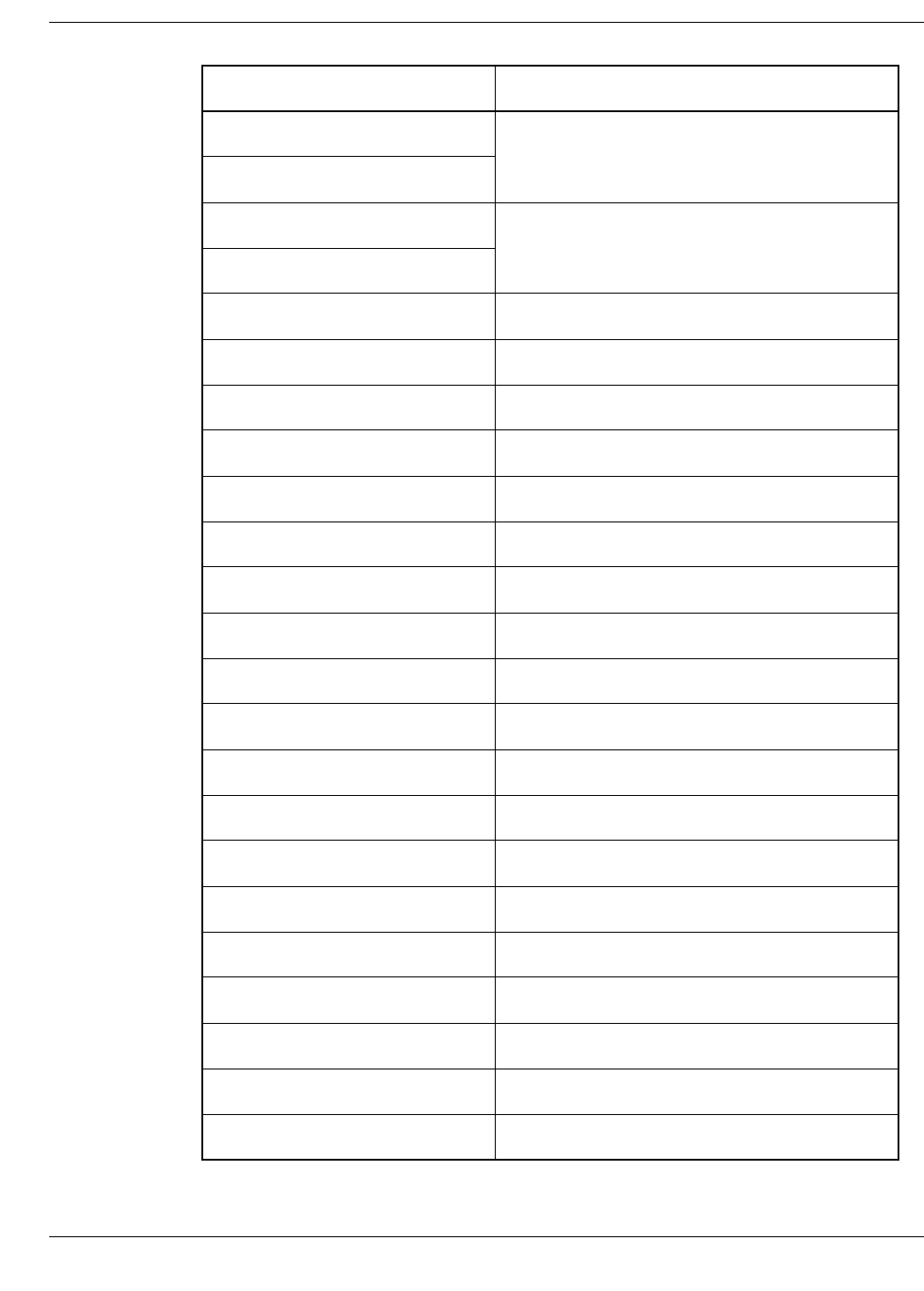
22-8
Processing Code Description File (PDF)
May-2016 R6.0 Post v10 BA-AE000-03
ACI Worldwide, Inc.
ISO610000 FULL REDEMPTION
ISO610100
ISO720000 CARD ACTIVATION
ISO720100
ISO900000 PIN CHANGE
ISO9W0000 MSG TO INSTITUTION
ISOA10000 LOG ONLY 1
ISOA20000 LOG ONLY 2
ISOA30000 LOG ONLY 3
ISOA40000 LOG ONLY 4
ISOA50000 PURCHASE ADJ NONE
ISOA51000 PURCHASE ADJ SAV
ISOA52000 PURCHASE ADJ DDA
ISOA53000 PURCHASE ADJ CR
ISOA60000 MERCHANDISE RETURN ADJ NONE
ISOA61000 MERCHANDISE RETURN ADJ SAV
ISOA62000 MERCHANDISE RETURN ADJ DDA
ISOA63000 MERCHANDISE RETURN ADJ CR
ISOA70000 CASH ADVANCE ADJ NONE
ISOA71000 CASH ADVANCE ADJ SAV
ISOA72000 CASH ADVANCE ADJ DDA
ISOA73000 CASH ADVANCE ADJ CR
ISOA80000 CASH BACK ADJ NONE
DESCRIPTION TAG LONG DESCRIPTION
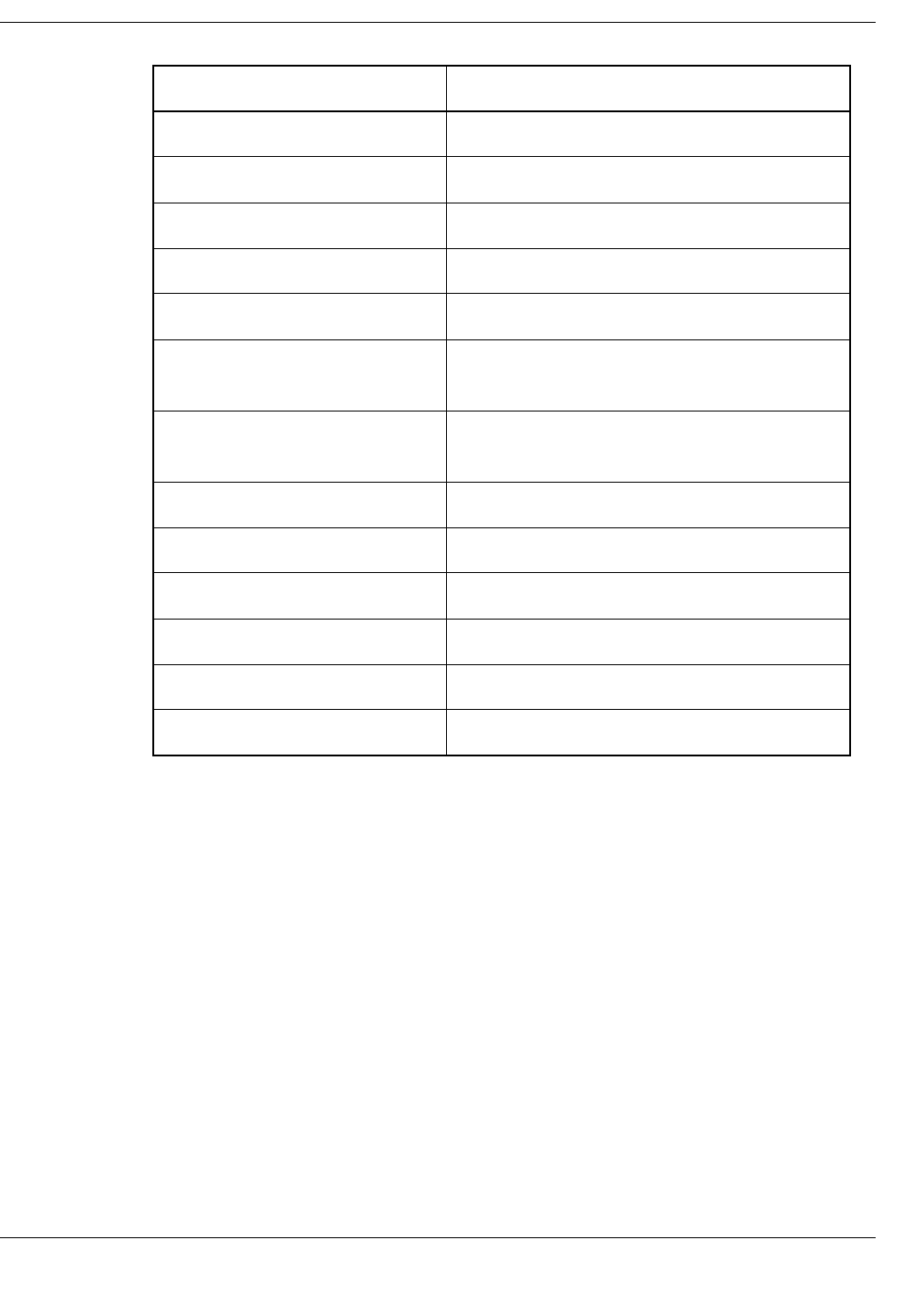
Default PDF Records
22-9
May-2016 R6.0 Post v10 BA-AE000-03
ACI Worldwide, Inc.
ISOA81000 CASH BACK ADJ SAV
ISOA82000 CASH BACK ADJ DDA
ISOA90000 BATCH TERMINAL TOTALS
ISOAA0000 SHIFT TERMINAL TOTALS
ISOAB0000 DAILY TERMINAL TOTALS
ISOAC0000 CURRENT TERMINAL NETWORK
TOTAL
ISOAD0000 PREVIOUS TERMINAL NETWORK
TOT
ISOAE0000 CARD TYPE TERMINAL TOTALS
ISOAF0000 REQUEST MAIL
ISOAG0000 SEND MAIL PASSTHRU
ISOAH0000 SEND MAIL STORED
ISOAJ0000 CLERK TOTALS INQUIRY
ISOAK0000 ADMINISTRATIVE
DESCRIPTION TAG LONG DESCRIPTION

ACI Worldwide, Inc.

23-1
May-2016 R6.0 Post v10 BA-AE000-03
ACI Worldwide, Inc.
23: Split Transaction Routing File (STRF)
The Split Transaction Routing File (STRF) contains one record for each
transaction subtype supported in the network that requires unique routing. The file
enables BASE24 to route requests to two or more destinations based upon
information obtained from a device for a single transaction. The STRF is product
independent, as the destinations specified within are not related to the point of
entry (i.e., type of device).
Records are added to the STRF using the BASE24 files maintenance facility.
The key to the STRF records is a combination of the data entered in the
TRANSACTION SUBTYPE and FIID fields.

23-2
Split Transaction Routing File (STRF)
May-2016 R6.0 Post v10 BA-AE000-03
ACI Worldwide, Inc.
Screen 1
STRF screen 1 displays the transaction subtype and description, the routing
hierarchy, the primary destination for secondary requests, and the first alternate
destination for secondary requests. From screen 1, the user can create STRF
records by specifying secondary routing destinations according to transaction
subtype. Also, the user can access, alter, and delete existing records. STRF screen
1 is shown below, followed by descriptions of its fields.
TRANSACTION SUBTYPE — A code identifying the transaction subtype.
Transaction subtypes must be unique and fall within the ranges defined below:
A000–AZZZ = BASE24-atm product
B000–BZZZ = BASE24 Base product
C000–CZZZ = BASE24-pos product
G000–GZZZ = ACI Card Management product
T000–TZZZ = BASE24-teller product
R000–RZZZ = CSM
P000–PZZZ = CSM
Q000–QZZZ = CSM
N000–NZZZ = New Initiatives
U000–UZZZ = Americas channel
V000–VZZZ = EMEA channel
BASE24-BASE SPLIT TXN ROUTING FILE LLLL YY/MM/DD HH:MM 01 OF 01
TRANSACTION SUBTYPE: (****************************) FIID: ****
ROUTING HIERARCHY: B2 (SEQUENTIAL; SCND SVC, FUNDS, SCND SVC)
SECONDARY SERVICE
AUTH LEVEL: 1 (ONLINE)
PRIMARY DESTINATION:
ALTERNATE 1 DESTINATION:
ALTERNATE 2 DESTINATION: ** FUTURE USE **
DEFAULT ACTION: D (DECLINE)
OFFLINE AUTHORIZATION FILE: ** FUTURE USE **
*********************************** BASE24 ***********************************
NEW PAGE: FILE DESTINATION: NEW LOGICAL NETWORK ID:
F12-HELP

Screen 1
23-3
May-2016 R6.0 Post v10 BA-AE000-03
ACI Worldwide, Inc.
FIID — The identifier for the acquiring institution.
ROUTING HIERARCHY — Determines how BASE24 communicates with
multiple authorization destinations for a single transaction. Valid ranges are as
follows:
W000–WZZZ = Asia/Pacific channel
X000–XZZZ = Distributors
Y000–YZZZ = Distributors
Z000–ZZZZ = Distributors
Field Length: 4 alphanumeric characters
Required Field: Yes
Default Value: None
Data Name: STRF.PRIKEY.TXN-SUBTYP
Field Length: 1–4 alphanumeric characters
Required Field: Yes
Default Value: ****
Data Name: STRF.PRIKEY.FIID
B0–BZ = BASE24 Base
R0–RZ = CSM
P0–PZ = CSM
Q0–QZ = CSM
U0–UZ = Americas channel
V0–VZ = EMEA channel
W0–WZ = Asia/Pacific channel
X0–XZ = Distributors
Y0–YZ = Distributors
Z0–ZZ = Distributors

23-4
Split Transaction Routing File (STRF)
May-2016 R6.0 Post v10 BA-AE000-03
ACI Worldwide, Inc.
Reserved values are as follows:
SECONDARY SERVICE
The following information identifies the secondary authorization service used for
transactions.
B0 = Sequential routing. The transaction is routed to the Funds Authorizer to
obtain the necessary funds. The transaction is then routed to the
Secondary Destination for subsequent processing. Tertiary Destination is
not implemented at this time.
B1 = Sequential routing. The transaction is routed to the Secondary
Destination for initial processing. The transaction is then routed to the
Funds Authorizer to obtain the necessary funds and for subsequent
processing. Tertiary Destination is not implemented at this time.
B2 = Sequential routing. The transaction is routed to the Secondary
Destination for initial processing. The transaction is then routed to the
Funds Authorizer to obtain the necessary funds. The transaction is then
routed to the Secondary Destination for subsequent processing. Tertiary
Destination is not implemented at this time.
B3 = Sequential routing. Reserved for future use.
B4 = Sequential routing. Reserved for future use.
B5 = Sequential routing. Reserved for future use.
B6 = Sequential routing. Reserved for future use.
B7 = Sequential routing. Reserved for future use.
B8 = Sequential routing. Reserved for future use.
B9 = Sequential routing. Reserved for future use.
BF = Funds authorization only.
BS = Secondary service only.
BZ = Simultaneous routing. Multiple destinations are contacted
simultaneously.
Field Length: 2 alphanumeric characters
Required Field: Yes
Default Value: B2
Data Name: STRF.RTE-HRCHY

Screen 1
23-5
May-2016 R6.0 Post v10 BA-AE000-03
ACI Worldwide, Inc.
AUTH LEVEL — The authorization level pertaining to the secondary request. A
description of the code entered is displayed immediately to the right of the AUTH
LEVEL field. Valid values are as follows:
PRIMARY DESTINATION — The first destination that BASE24 should attempt
to route a secondary request.
ALTERNATE 1 DESTINATION — The alternate destination that BASE24
should attempt to route a secondary request. This destination is used if the primary
destination is unavailable.
ALTERNATE 2 DESTINATION — The second alternate destination that
BASE24 should attempt to route a secondary request. The second alternate
destination is used only in the event that both the primary and alternate 1
destinations are unavailable. Currently this field is not used.
1 = Online, authorize transactions on the host only. If the host is offline, deny the
transaction.
2 = Offline, authorize transactions on the HP NonStop processor only.
3 = Online/Offline, authorize transactions on the host if the host is online; if the
host is offline, authorize transactions on the HP NonStop processor and
forward completions to the host when the host is online.
Field Length: System protected
Data Name: STRF.SCND-SVC.AUTH-LVL
Field Length: 16 alphanumeric characters
Required Field: Yes
Default Value: None
Data Name: STRF.SCND-SVC.PRI-DEST
Field Length: 16 alphanumeric characters
Required Field: Yes
Default Value: None
Data Name: STRF.SCND-SVC.ALT1-DEST
Field Length: System protected
Data Name: STRF.SCND-SVC.ALT2-DEST

23-6
Split Transaction Routing File (STRF)
May-2016 R6.0 Post v10 BA-AE000-03
ACI Worldwide, Inc.
DEFAULT ACTION — The default action to take if the primary, alternate 1, and
alternate 2 destinations are all unavailable and an OFFLINE AUTHORIZATION
FILE field is empty. A description of the code entered is displayed immediately to
the right of the DEFAULT ACTION field. Valid values are as follows:
OFFLINE AUTHORIZATION FILE — The authorization file name used when
providing authorization offline for the secondary destination. This filename may
only be used in conjunction with authorization levels of 2 (offline) or 3
(online/offline). Currently this field is not used.
A = Reserved for future use
C = Reserved for future use
D = Decline
Field Length: System protected
Data Name: STRF.SCND-SVC.DFLT-ACT
Field Length: System protected
Data Name: STRF.OFFL-AUTH-FNAME

24-1
May-2016 R6.0 Post v10 BA-AE000-03
ACI Worldwide, Inc.
24: Stop Payment File (SPF)
The Stop Payment File (SPF) contains one record for each institution- or customer-
initiated stop pay item that should not be honored at teller terminals or self-service
banking ATMs connected to the network. The BASE24-teller product uses the
SPF when processing check cashing transactions if the value in the STOP PAY/
WARNING STATUS field in the PBF indicates the SPF contains stop payment
information for the account. The BASE24-atm self-service banking (SSB)
Enhanced Check Application can use the SPF each time a check is cashed at an
ATM to ensure no stop payments exist.
Files maintenance operators and tellers with access to the teller system can add or
delete SPF records. The SPF can be refreshed daily to purge it of records
containing checks that have been intercepted or no longer need to be maintained in
a stop payment status.
For the BASE24-teller product, the addition and deletion of SPF records also
affects corresponding account records in the PBF. When an SPF record is added or
deleted, BASE24 products update the STOP PAY/WARNING STATUS field in
the PBF to reflect the presence or absence of SPF records. The BASE24-atm
product does not use the PBF STOP PAY/WARNING STATUS field.
The key to the SPF records is a combination of the data entered in the FIID,
ACCOUNT NUMBER, ACCOUNT TYPE, CHECK NUMBER/HIGH CHECK
NUMBER, and LOW CHECK NUMBER fields. When selecting an SPF record,
the FIID, ACCOUNT NUMBER, and ACCOUNT TYPE fields are mandatory and
the remaining key fields are optional. A key with one or more of the optional key
values missing is a partial key.
The following screens are used to access records in the SPF:
?Screen 1 contains detail information for each SPF record.
?Screen 2 contains summary information when a partial key is entered or
multiple SPF records pertain to the same account.
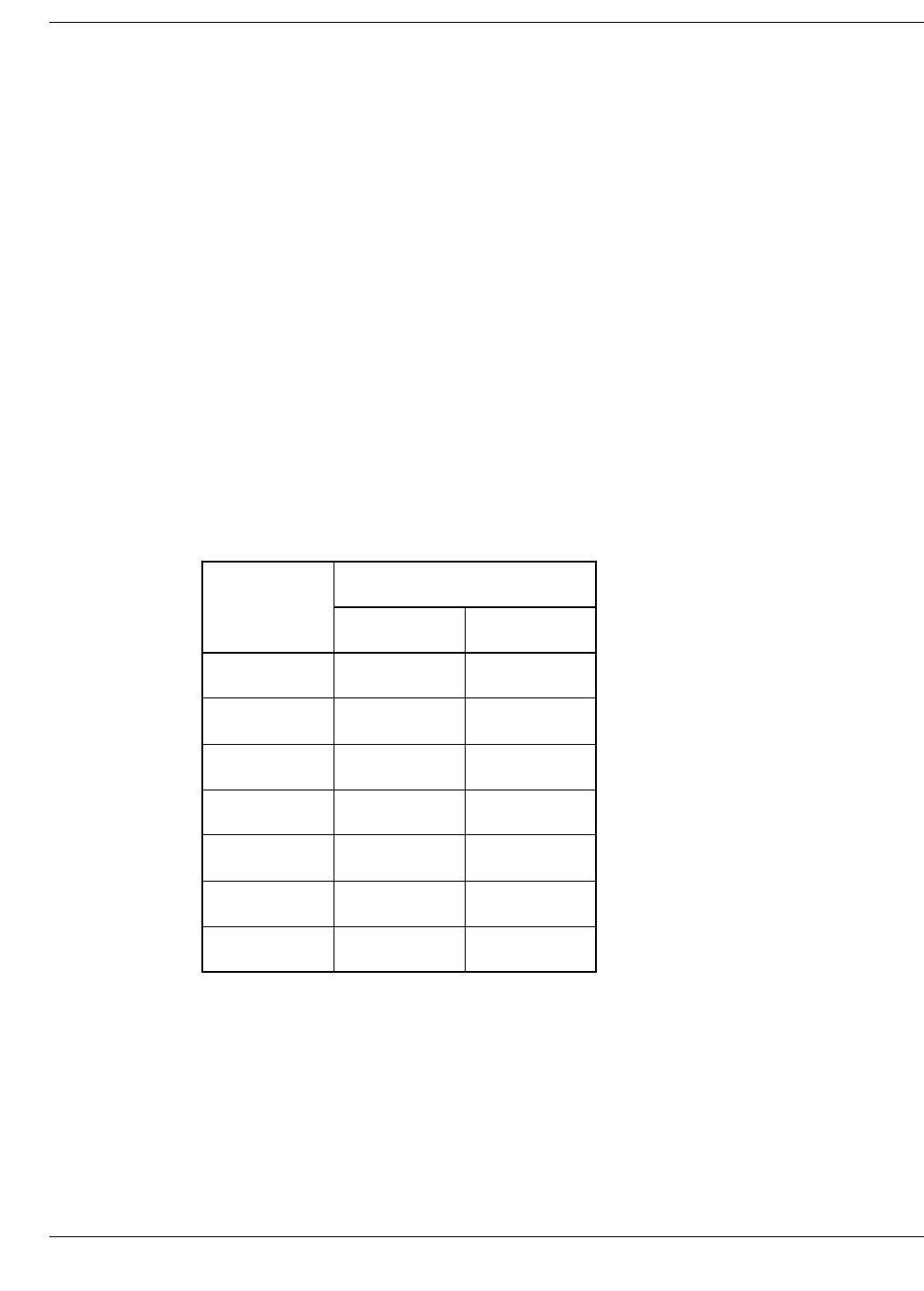
24-2
Stop Payment File (SPF)
May-2016 R6.0 Post v10 BA-AE000-03
ACI Worldwide, Inc.
Duplicate Stop Payment Orders
The check numbers in SPF records can be entered individually or in ranges. By
permitting ranges, a single SPF record can contain the information for multiple
checks. For example, when a customer reports that he or she has lost his or her
checkbook with 25 blank checks, the information for all 25 checks can be entered
on a single SPF record. Without this flexibility, 25 SPF records would be
necessary to record the missing checks (one SPF record for each check).
This flexibility can result in a check number being entered in the SPF more than
once. This could occur if one SPF record contains information for a single check
number and another SPF record contains information for a range of check numbers
that includes the single check number. It could also occur if SPF records contain
information for ranges of check numbers that overlap.
To demonstrate the way BASE24 products handle duplicate check numbers,
consider an SPF with the following records for FIID BNK1 and checking account
number 5555555:
?If FIID BNK1, account number 5555555, and account type 01 (checking) are
entered on SPF screen 1 and the F2 key is pressed, all seven records are
displayed on SPF screen 2 so the appropriate record can be selected.
?If FIID BNK1, account number 5555555, account type 01, and check number
111 are entered and the F2 key is pressed, only the first record in the list
would be displayed because it would be an exact match.
Record
Check Number
High Low
1111
2 222
3 350 300
4 399 351
5 500
6 699 400
7 799 650

Duplicate Stop Payment Orders
24-3
May-2016 R6.0 Post v10 BA-AE000-03
ACI Worldwide, Inc.
?If the check number is changed from 111 to 600, the sixth record in the list
would be displayed because 600 falls between 400 and 699.
?If the high check number is changed from 600 to 500 (and the low check
number is changed to all blanks), the fifth record in the list would be
displayed because 500 is an exact match, even though 500 also falls between
the 400 and 699 values contained in the sixth record. The records are
arranged in ascending order and all five fields in this example (FIID, account
number, account type, high check number, and low check number) are part of
the key, so a record with an exact match always appears before a record with
the same value within a range.
?If the high check number is changed from 500 to 675, the sixth record in the
list would be displayed because 675 falls between 400 and 699, even though
675 also falls between the 650 and 799 values in the seventh record. Again,
the records are arranged in ascending order and all five fields are part of the
key, so the record with a lower high check number value always appears first.
The person adding records to the SPF is responsible for ensuring that the same
check number does not appear on more than one SPF record. When an SPF record
containing one check number is added, BASE24 products check for exact matches
with existing SPF records that contain individual check numbers. However,
BASE24 products do not check for duplicates when existing records or the record
being added contain ranges of check numbers. In the example, the fifth, sixth, and
seventh records need to be reviewed and modified to eliminate the duplicate check
numbers.
To avoid adding records with duplicate check numbers, display SPF screen 2 with
the FIID, account number, and account type of the record being added to check for
possible duplicates before adding the new record.
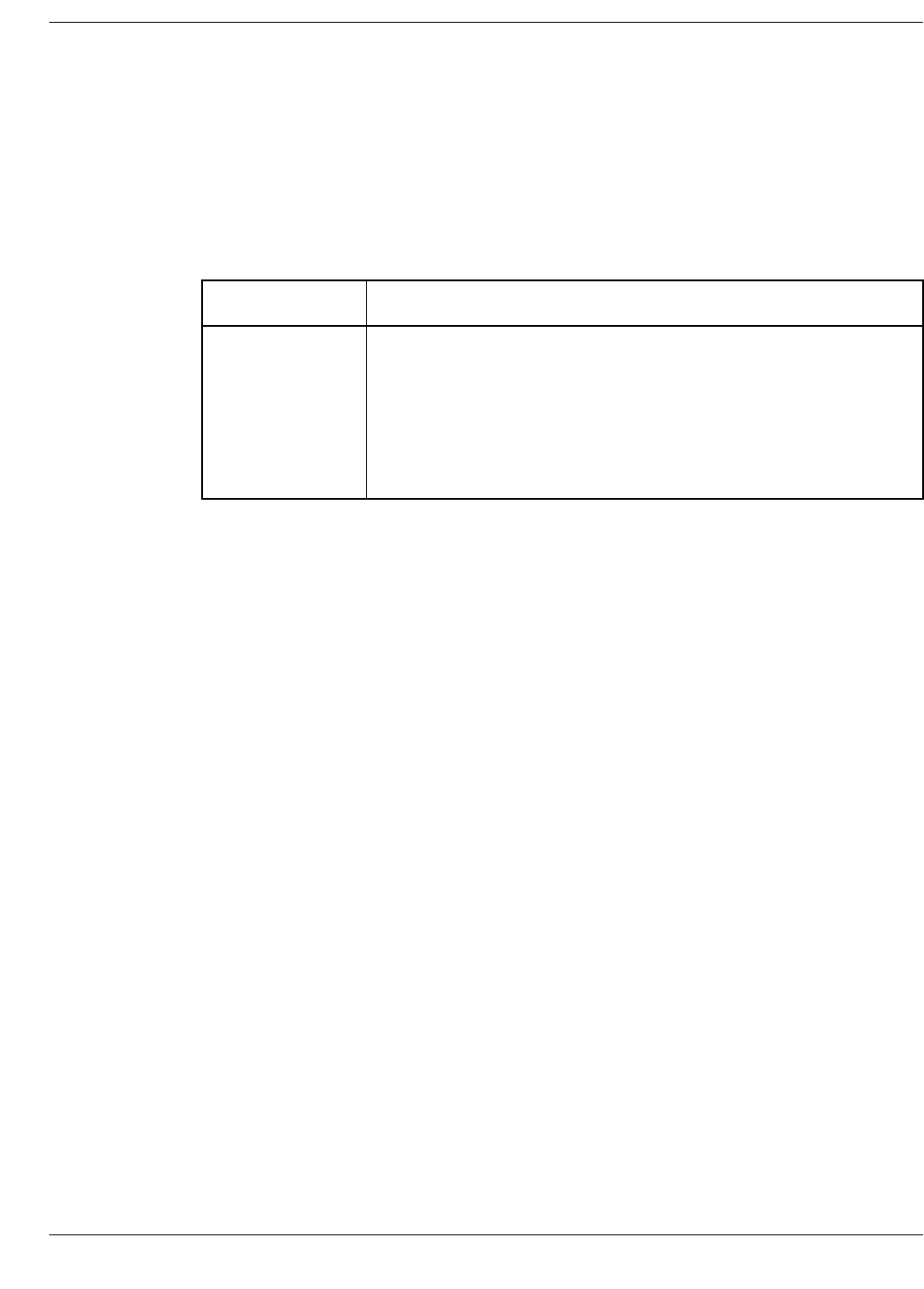
24-4
Stop Payment File (SPF)
May-2016 R6.0 Post v10 BA-AE000-03
ACI Worldwide, Inc.
Screen 1 Function Keys
The use of one function key on SPF screen 1 varies from the standard function
keys explained in section 1. The use of this function key is explained below.
The first column of information below shows the BASE24 key. The second
column describes the function that can be accomplished with this key.
Key Description
F6 Read Next Record — Retrieves the next SPF record
available for the current combination of values in the FIID,
ACCOUNT NUMBER, and ACCOUNT TYPE fields.
Pressing this key retrieves only the remaining SPF records, if
any, for the account that is currently identified by the values
in these fields.

Screen 1
24-5
May-2016 R6.0 Post v10 BA-AE000-03
ACI Worldwide, Inc.
Screen 1
SPF screen 1 provides details for a customer’s record of stop pay items. When a
partial key (that is, one or more of the optional key fields is omitted) is entered
from SPF screen 1 and the F2 key is pressed, all SPF records matching the partial
key are displayed on SPF screen 2. From SPF screen 2, the user can move the
cursor to the desired record and press the F7 key. This procedure retrieves SPF
screen 1 and displays the desired record in detail. SPF screen 1 is shown below,
followed by descriptions of its fields.
FIID — The FIID of the financial institution owning the account specified in the
ACCOUNT NUMBER field.
Field Length: 1–4 alphanumeric characters
Required Field: Yes
Default Value: The FIID previously entered
Data Name: SPF.PRIKEY.FIID
BASE24-BASE STOP PAYMENT FILE LLLL YY/MM/DD HH:MM 01 OF 02
FIID: ACCOUNT NUMBER:
ACCOUNT TYPE: 00 (***********)
CHECK NUMBER/HIGH CHECK NUMBER:
LOW CHECK NUMBER:
AMOUNT: 0
DATE: (YYMMDD)
TIME: (HHMMSSTT)
EXPIRATION DATE: 000000 (YYMMDD)
DESCRIPTION:
SYSTEM CALCULATE: Y (Y/N)
PBF STOP PAY/WARNING STATUS: (********************)
*** NOTE FOR BASE24-TELLER CUSTOMERS ***
IF THE SYSTEM CALCULATE FIELD IS SET TO Y WHEN ADDING/DELETING STOP
PAYMENTS, THE SYSTEM WILL DECIDE THE NEW PBF STOP PAY/WARNING STATUS.
*********************************** BASE24 ***********************************
FILE DESTINATION: NEW LOGICAL NETWORK ID:
F12-HELP

24-6
Stop Payment File (SPF)
May-2016 R6.0 Post v10 BA-AE000-03
ACI Worldwide, Inc.
ACCOUNT NUMBER — The account number of the customer’s negotiable
order of withdrawal (interest-bearing checking) account or checking account at the
institution that has a stop payment on the check. The value in this field should be
left-justified with unused spaces to the right remaining blank.
ACCOUNT TYPE — The type of customer account specified in the ACCOUNT
NUMBER field. Valid values are as follows:
A description of the account type entered is displayed to the right of the
ACCOUNT TYPE field.
CHECK NUMBER/HIGH CHECK NUMBER — The check number of the
check on which the stop payment order is being placed. The check number must
be right-justified with no embedded blanks. BASE24 products zero-fill any
remaining blanks.
Stop payment orders can be placed on a single check or on a series of
consecutively numbered checks.
If the stop payment order is being placed on a single check, this field contains the
check number. A stop payment order on a single check can be added to the SPF
with or without an entry in the AMOUNT field.
If the stop payment order is being placed on a series of check numbers, this field
contains the high (that is, ending) check number. A stop payment order on a series
of check numbers cannot have a nonzero entry in the AMOUNT field.
Field Length: 1–19 numeric characters
Required Field: Yes
Default Value: No default value
Data Name: SPF.PRIKEY.ACCT-NUM
01–09 = Checking account
21 = Interest-bearing checking account
Field Length: 2 numeric characters
Required Field: Yes
Default Value: 00, however, this value must be changed.
Data Name: SPF.PRIKEY.ACCT-TYP

Screen 1
24-7
May-2016 R6.0 Post v10 BA-AE000-03
ACI Worldwide, Inc.
Note: The teller or files maintenance operator is responsible for avoiding
duplicate check numbers in the SPF. BASE24 products do not check for duplicate
check numbers other than an exact match when an SPF record is added or updated.
For example, an SPF record for check number 150 can be added even though the
SPF already contains a record for a series of checks numbered 140 through 160.
LOW CHECK NUMBER — The check number of the low (that is, beginning)
check in a series of consecutively numbered checks.
When this field contains a check number, it must be smaller than the check number
in the CHECK NUMBER/HIGH CHECK NUMBER field, right-justified, and
contain no embedded blanks. BASE24 products zero-fill any remaining blanks.
This field must contain all blanks when the stop payment order is being placed on
a single check. A stop payment order on a series of check numbers cannot have a
nonzero entry in the AMOUNT field.
Note: The teller or files maintenance operator is responsible for avoiding
duplicate check numbers in the SPF. BASE24 products do not check for duplicate
check numbers other than an exact match when an SPF record is added or updated.
For example, an SPF record for the range of checks numbered 150 through 175 can
be added even though the SPF already contains a record for the range of checks
numbered 140 through 160 or a record for check number 170.
AMOUNT — The amount, in whole and fractional currency units, of the stop
payment order placed on a single check.
Field Length: 1–11 numeric characters
Required Field: Yes
Default Value: No default value
Data Name: SPF.PRIKEY.HI-CHK-NUM
Field Length: 1–11 numeric characters
Required Field: No
Default Value: No default value
Data Name: SPF.PRIKEY.LO-CHK-NUM

24-8
Stop Payment File (SPF)
May-2016 R6.0 Post v10 BA-AE000-03
ACI Worldwide, Inc.
The CHECK NUMBER/HIGH CHECK NUMBER field must contain the check
number before a stop payment order can be added to the SPF with an entry in this
field. The LOW CHECK NUMBER field must contain all blanks whenever this
field contains a check amount.
DATE — The date (YYMMDD) that the stop payment order was entered. A valid
date can be entered by the user or the value defaults to the current date.
TIME — The time (hhmmsstt) that the stop payment order was entered. A valid
time can be entered by the user or the value defaults to the current time.
EXPIRATION DATE — The date (YYMMDD) that the stop payment order
expires. The stop payment order is still valid on the date entered in this field, then
is no longer considered by BASE24 Authorization processes once the order
expires. An entry of 000000 means the stop payment order does not have an
expiration date.
Only a full file refresh removes expired SPF records. BASE24 products do not
perform any cleanup processing based on the value in this field.
Field Length: 1–17 numeric characters
Required Field: No
Default Value: 0
Data Name: SPF.AMT
Field Length: 6 numeric characters
Required Field: No
Default Value: No default value
Data Name: SPF.DAT
Field Length: 8 numeric characters
Required Field: No
Default Value: No default value
Data Name: SPF.TIM
Field Length: 6 numeric characters
Required Field: Yes
Default Value: 000000
Data Name: SPF.EXP-DAT

Screen 1
24-9
May-2016 R6.0 Post v10 BA-AE000-03
ACI Worldwide, Inc.
DESCRIPTION — An information-only field for entering a message regarding
the stop payment order. The information in this field has no effect on BASE24
processing.
SYSTEM CALCULATE — A code that specifies whether the value in the PBF
STOP PAY/WARNING STATUS field is entered by the files maintenance
operator or is calculated by BASE24 products based on the records in the SPF.
The PBF STOP PAY/WARNING STATUS field is used by the BASE24-teller
product. Valid values are as follows:
Note: This field must contain its default value if no Positive Balance File (PBF)
record exists for the account identified by the values in the FIID, ACCOUNT
NUMBER, and ACCOUNT TYPE fields (for example, when this record is used
with the BASE24-atm self-service banking (SSB) Enhanced Check Application).
PBF STOP PAY/WARNING STATUS — The value in this field indicates
whether stop payments or warnings exist for this account. The value in this field
can be calculated automatically or entered manually by the files maintenance
operator, depending on the value in the SYSTEM CALCULATE field on this
screen.
While displayed and accessible on an SPF screen, this field is actually in the PBF
record identified by the values in the ACCOUNT NUMBER and ACCOUNT
TYPE fields. The BASE24-teller Authorization process uses the value in this field
to determine whether to check the SPF before authorizing certain check cashing
transactions. If the value in the SEARCH THE WHFF field on screen 1 of the
Teller Transaction File (TTF) indicates that the Warning/Hold/Float File (WHFF)
Field Length: 1–35 alphanumeric characters
Required Field: No
Default Value: No default value
Data Name: SPF.DESCR
Y = Yes, calculate the proper PBF STOP PAY/WARNING STATUS value based
on the records in the SPF.
N = No, accept a valid PBF STOP PAY/WARNING STATUS value entered by
the files maintenance operator.
Field Length: 1 alphabetic character
Required Field: Yes
Default Value: Y
Data Name: Not applicable

24-10
Stop Payment File (SPF)
May-2016 R6.0 Post v10 BA-AE000-03
ACI Worldwide, Inc.
should be checked before authorizing a transaction, the BASE24-teller
Authorization process also uses the value in this field to determine whether the
WHFF contains any warnings for this account.
When a stop payment order is added to or removed from the SPF or a warning is
added to or removed from the WHFF using files maintenance, a teller terminal, or
the BASE24-from host maintenance product, BASE24 products automatically
update the value in this field to reflect the status of the SPF and WHFF.
Changes to the SPF or WHFF using the Refresh process do not automatically
update the value in this field. When the SPF or WHFF have been updated using
the Refresh process, the value in this field can be changed manually or by updating
the PBF using the Refresh process. Valid values are as follows:
When the SYSTEM CALCULATE field is set to the value Y, any entry in this field
made by a files maintenance operator is overridden by the value calculated by
BASE24 products. When the SYSTEM CALCULATE field is set to the value N,
valid values in this field are 1 or 3 when an SPF record is being added and 0
through 3 when an SPF record is being deleted.
For more information about stop payments and warnings, refer to the
BASE24-teller Transaction Processing Manual and the Warning/Hold/Float File
(WHFF) in the BASE24-teller Files Maintenance Manual.
Note: This field must contain its default value if no Positive Balance File (PBF)
record exists for the account identified by the values in the FIID, ACCOUNT
NUMBER, and ACCOUNT TYPE fields (for example, when this record is used
with the BASE24-atm self-service banking (SSB) Enhanced Check Application).
A description of the status code entered or calculated is displayed to the right of
the PBF STOP PAY/WARNING STATUS field.
0 = No stops or warnings
1 = Stops
2 = Warnings
3 = Stops and warnings
Field Length: 1 numeric character
Required Field: Yes, if the SYSTEM CALCULATE field is set to the value
N.
Default Value: No default value
Data Name: PBF.TLRPBF.SP-STAT
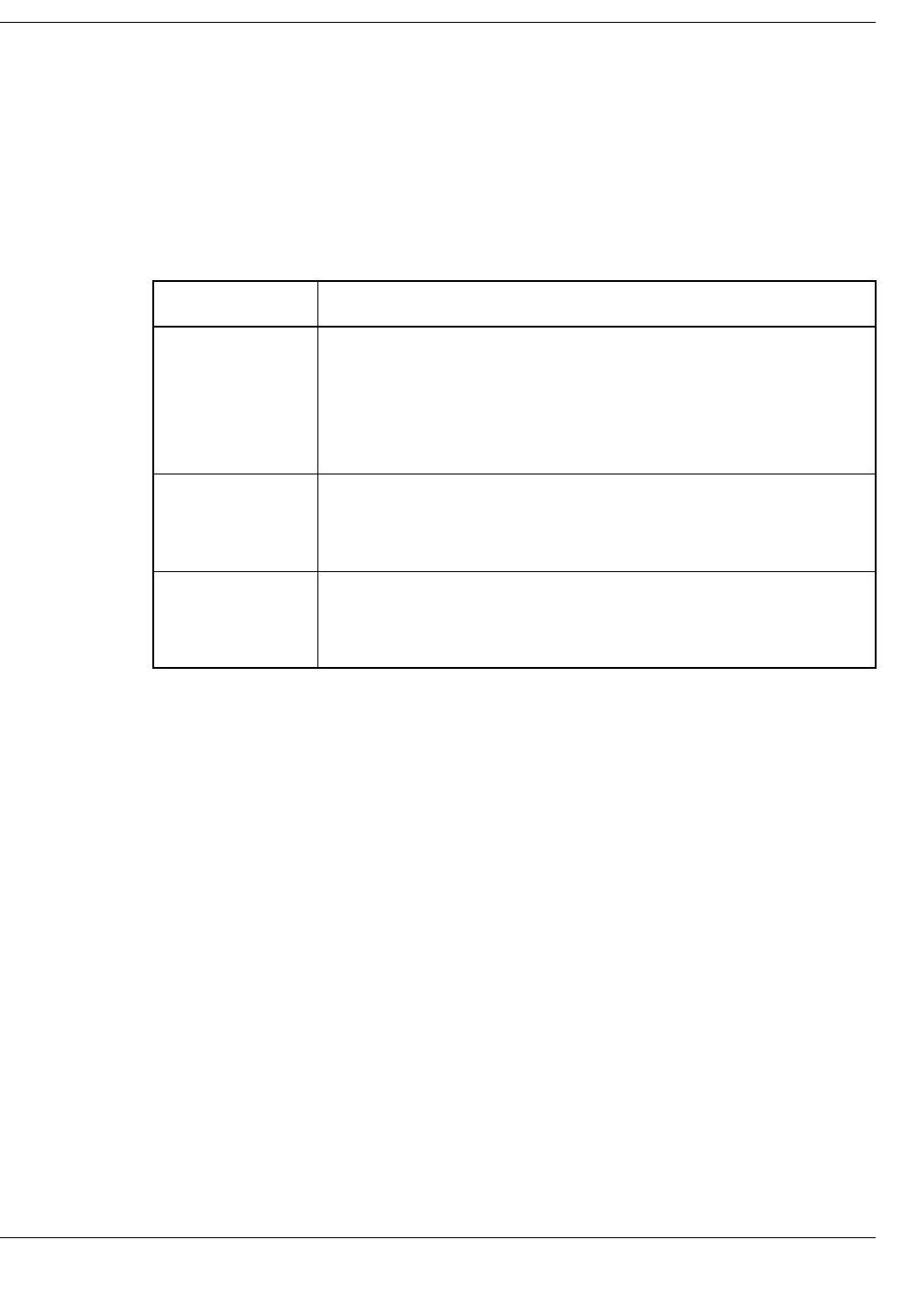
Screen 2 Function Keys
24-11
May-2016 R6.0 Post v10 BA-AE000-03
ACI Worldwide, Inc.
Screen 2 Function Keys
The use of three function keys SPF screen 2 varies from the standard function keys
explained in section 1. The use of these function keys is explained below.
The first column of information below shows the BASE24 keys. The second
column describes the functions that can be accomplished with these keys.
Key Description
F7 Select Record — Selects a specific SPF record. Using the
cursor, the user can move to the desired SPF record listed on
SPF screen 2 and press the F7 key. This procedure displays
SPF screen 1, which provides details of the desired SPF
record.
F9 Next Page — Retrieves the next summary page of SPF
records for an account that requires a series of screens to
display all records.
F11 Previous Page — Retrieves the previous summary page of
SPF records for an account that requires a series of screens to
display all records.

24-12
Stop Payment File (SPF)
May-2016 R6.0 Post v10 BA-AE000-03
ACI Worldwide, Inc.
Screen 2
SPF screen 2 is a summary of stop payment items. When a partial key (that is, one
or more of the optional key fields is omitted) is entered from SPF screen 1, all SPF
records matching the key information entered are displayed on SPF screen 2, with
up to 10 records displayed per screen page. From SPF screen 2, the user can move
the cursor to the desired record and press the F7 key to display SPF screen 1 which
provides details of the selected record. SPF screen 2 is shown below, followed by
descriptions of its fields.
HIGH CHECK NUMBER — The check number of the check on which the stop
payment order has been placed. If the stop payment order has been placed on a
single check, this field contains the check number. If the stop payment order is
being placed on a series of check numbers, this field contains the high (that is,
ending) check number.
Field Length: System protected
Data Name: SPF.PRIKEY.HI-CHK-NUM
BASE24-BASE STOP PAYMENT FILE LLLL YY/MM/DD HH:MM 01 OF 02
FIID: ACCOUNT NUMBER:
ACCOUNT TYPE: 00 (***********)
HIGH LOW EXP
CHECK NUMBER CHECK NUMBER AMOUNT DATE
_
_
_
_
_
_
_
_
_
_
*********************************** BASE24 ***********************************
FILE DESTINATION: NEW LOGICAL NETWORK ID:
F7-SELECT RECORD F9-NEXT PAGE F11-PREVIOUS PAGE F12-HELP F16-EXIT

Screen 2
24-13
May-2016 R6.0 Post v10 BA-AE000-03
ACI Worldwide, Inc.
LOW CHECK NUMBER — The check number of the low (that is, beginning)
check in a series of consecutively numbered checks.
AMOUNT — The amount, in whole and fractional currency units, of the amount
of the stop payment order placed on a single check.
EXP DATE — The date (YYMMDD) that the stop payment order expires. The
stop payment order is still valid on the date in this field. An entry of 000000
means the stop payment order does not have an expiration date.
Only a full file refresh removes expired SPF records. BASE24 products do not
perform any cleanup processing based on the value in this field.
Field Length: System protected
Data Name: SPF.PRIKEY.LO-CHK-NUM
Field Length: System protected
Data Name: SPF.AMT
Field Length: System protected
Data Name: SPF.EXP-DAT

ACI Worldwide, Inc.

25-1
May-2016 R6.0 Post v10 BA-AE000-03
ACI Worldwide, Inc.
25: Surcharge File (SURF)
The Surcharge File (SURF) contains one record for each combination of card
group, terminal group, and currency for transaction acquirer fees (e.g., surcharges
or rebates). Card groups are separated according to transaction routing method:
Card Prefix File (CPF) routing or SPROUTE File routing. Configuration of
surcharge profiles are based on the relationship between terminal groups, card
groups, and currency. Within this relationship, specific card types, card prefixes,
transaction types, account types and surcharge calculation methods are used to
determine the surcharge or rebate amount.
Transaction acquirer fees can debit or credit the cardholder’s account. A
transaction acquirer fee that debits the cardholder’s account is called a surcharge.
A transaction acquirer fee that credits a cardholder account is called a rebate or
incentive. Fees that debit a cardholder account are defined as positive amounts in
the SURF, while fees that credit a cardholder account are defined as negative
amounts in the SURF. A surcharge profile can define either a surcharge or a
rebate.
Note: If you are processing in multiple currencies, the transaction acquirer fee
amount is assumed to be in the same currency as the transaction to which it is
applied—the transaction currency. If you need to configure the same surcharge or
rebate for multiple currencies, multiple SURF records are needed, with each
record using a different currency. The Authorization process searches the SURF
using the transaction currency code value.
The key to SURF records is a combination of the TERM PROFILE and
CURRENCY CODE fields and either the CARD FIID and CARD PROFILE
fields, or the TRANSACTION DEST and CARD TYPE fields, depending on the
value in the RECORD TYPE field on SURF screen 1.

25-2
Surcharge File (SURF)
May-2016 R6.0 Post v10 BA-AE000-03
ACI Worldwide, Inc.
The following screens are used to access records in the SURF:
?Screen 1 allows users to set the record type and product ID for the surcharge
or rebate profile.
?Screen 2 contains the primary key, reversal code, and transaction table for
transactions routed using the CPF.
?Screen 3 contains the primary key, reversal code, and transaction table for
transactions routed using the SPROUTE File.

SURF Components
25-3
May-2016 R6.0 Post v10 BA-AE000-03
ACI Worldwide, Inc.
SURF Components
The SURF allows an institution to set up transaction acquirer fees for ATMs based
on transaction routing, terminal group, currency code, and card characteristics.
These elements make up the primary key of the SURF. The file also contains a
reversal code and a transaction table.
Primary Key Data
The primary key contains the record type, product code, terminal group, currency
code, and card group.
Record Types
The SURF has two record types: one for transactions routed using the Card Prefix
File (CPF) and one for transactions routed using the SPROUTE File. The two
record types allow an institution to set different surcharge or rebate characteristics
for each prefix in the CPF and for each transaction routing destination.
Product Code
The product code indicates for which BASE24 product the surcharge profile is to
be used. Currently surcharge profiles are used only for the BASE24-atm product.
Terminal Groups
Configuring terminal groups allows an institution to set surcharges or rebates
based on a common characteristic of a group of terminals, such as terminal
location. For example, an institution can configure different surcharge profiles for
ATMs located in corporate locations, shopping centers, airports, and other
locations.
The SURF terminal group code, for example, CORP for corporate locations,
corresponds to the SURCHARGE PROFILE field on BASE24-atm Terminal Data
files (ATD) screen 1. This is used to associate a BASE24-atm Terminal Data file
record with the SURF. Refer to the BASE24-atm Files Maintenance Manual for
more information about the ATD and its fields.

25-4
Surcharge File (SURF)
May-2016 R6.0 Post v10 BA-AE000-03
ACI Worldwide, Inc.
Currency Code
Currency codes allow an institution to define surcharges or rebates based on the
currency of the transaction (the transaction currency) to which the surcharge or
rebate is to be applied. If processing in a multiple currency environment, a
different currency code must be configured for each transaction currency to which
surcharges or rebates can be applied.
Card Groups
Card groups allow an institution to define surcharges or rebates based on a card
prefix, routing destination, or other card characteristics. These groups are
configured differently for each record type.
CPF card groups can be based on the FIID of the card issuer. For example, an
institution can define different surcharge profiles for cards with the FIID from
Bank A (BNKA) or Bank B (BNKB). The group can also contain a card profile
that allows the institution to set surcharges or rebates based on common
characteristics of a group of cards. For example, the institution can set up a card
profile for all prefixes associated with a gold card. The card profile code
corresponds to the CARD PROFILE field on CPF screen 1. See the CPF section
of this manual for more information about the CPF CARD PROFILE field.
SPROUTE File routing card groups can be based on the transaction destination.
For example, the institution can define different surcharge profiles for each
Interchange Interface process. The SPROUTE card group also contains a card
type that corresponds to the SPROUTE card type returned in calls to the
SPROUTE^LOOKUP procedure. This allows the bank to set up surcharges or
rebates based on a common card type characteristic or prefix within the card type
among routing destination groups.
Reversal Code
The reversal code specifies how the BASE24-atm Authorization process treats
partial reversals of transactions. The Authorization process can either assess a
partial surcharge or rebate or waive the surcharge or rebate on a partially reversed
transaction.

SURF Components
25-5
May-2016 R6.0 Post v10 BA-AE000-03
ACI Worldwide, Inc.
Transaction Table
The transaction table consists of transaction codes, transaction subtypes, a
minimum transaction amount, a flat fee, a percent fee, and a minimum/maximum
flag that specifies the relationship between the fees.
Transaction Codes
The key of the transaction table is the transaction code. The BASE24-atm product
allows surcharges or rebates to be assessed against withdrawal from checking,
withdrawal from savings, withdrawal from credit account transactions and fast
cash withdrawals. It also allows surcharges to be assessed against deposit, deposit
with cash back, or split deposit transactions. An institution can define charges or
credits for each type of transaction or use a single profile for all withdrawals or
deposits.
Transaction Subtype
The transaction subtype is the value assigned by the institution to identify a
variation of a BASE24 transaction code. Transaction subtypes enable an
institution to distinguish between types of transactions that possess the identical
transaction codes. Transaction subtypes enable the BASE24 user to configure
multiple rate structures for a single transaction code. If a SURF record is
configured at the transaction subtype level and a transaction subtype is present in
the internal message, the BASE24-atm authorization process assesses a surcharge
fee. If a SURF record is configured at the transaction subtype level and a
transaction subtype is not present in the internal message, the BASE24-atm
Authorization process uses a default of all asterisks (****) to assess the surcharge
fee.
Minimum Transaction Amount
The minimum transaction amount identifies a transaction amount below which the
cardholder cannot be assessed a surcharge. If the transaction amount is less than
the minimum transaction amount, the BASE24-atm Authorization process sets the
transaction fee to zero and continue processing.
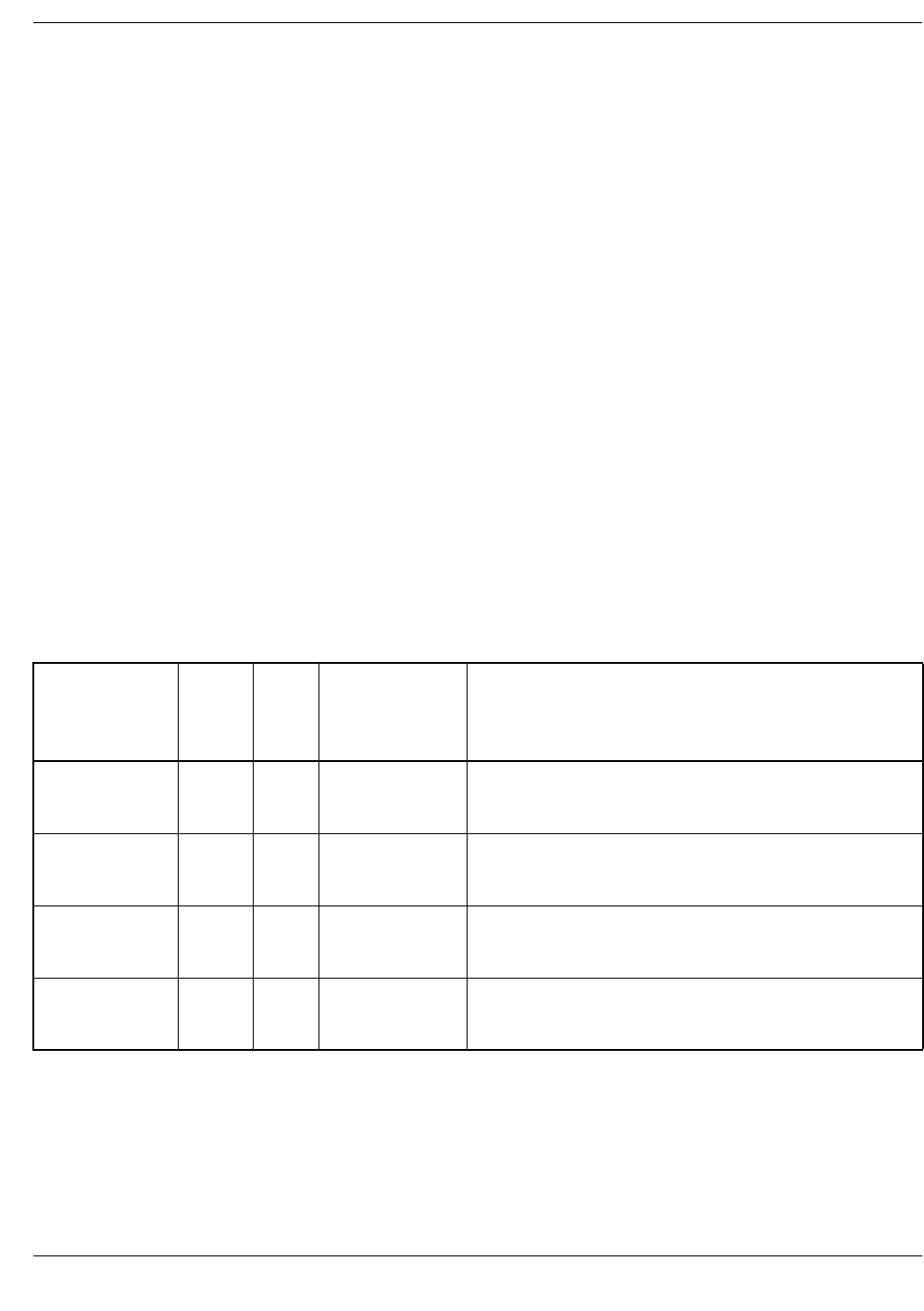
25-6
Surcharge File (SURF)
May-2016 R6.0 Post v10 BA-AE000-03
ACI Worldwide, Inc.
Flat Fees and Percentage Fees
A flat fee is the surcharge or rebate set for a particular type of transaction. A
percent fee is a surcharge based on a percentage of the transaction amount. For
example, an institution can set a flat fee surcharge of $.50 on withdrawals from a
savings account or a 1 percent fee on withdrawals from a checking account.
The transaction table also contains a minimum/maximum flag that enables an
institution to establish both flat and percent fees for a single transaction code. The
flag specifies whether to use the minimum or maximum amount as the surcharge.
When the BASE24-atm Authorization process receives a transaction that requires
a surcharge, it searches the SURF to determine how to calculate the surcharge.
The Authorization process calculates the percent fee and then compares it to the
flat fee. If the flag indicates that the minimum amount is to be used, the
Authorization process uses the lesser of the two amounts. If the flag indicates that
the maximum amount is to be used, the Authorization process uses the greater of
the two amounts.
The following table shows the surcharge result for transactions of $20 and $100
with the flat fee set at $.50 and the percent fee set at 1 percent. The transaction
currency is assumed to be 840 (U.S. dollars and cents).
Transaction
Amount
1%
Fee Flat
Fee Min/Max
Flag Result
$20 $.20 $.50 1 (minimum) The surcharge is $.20 (the lesser of the two
amounts.
$20 $.20 $.50 0 (maximum) The surcharge is $.50 (the greater of the two
amounts).
$100 $1.00 $.50 1 (minimum) The surcharge is $.50 (the lesser of the two
amounts).
$100 $1.00 $.50 0 (maximum) The surcharge is $1.00 (the greater of the two
amounts).
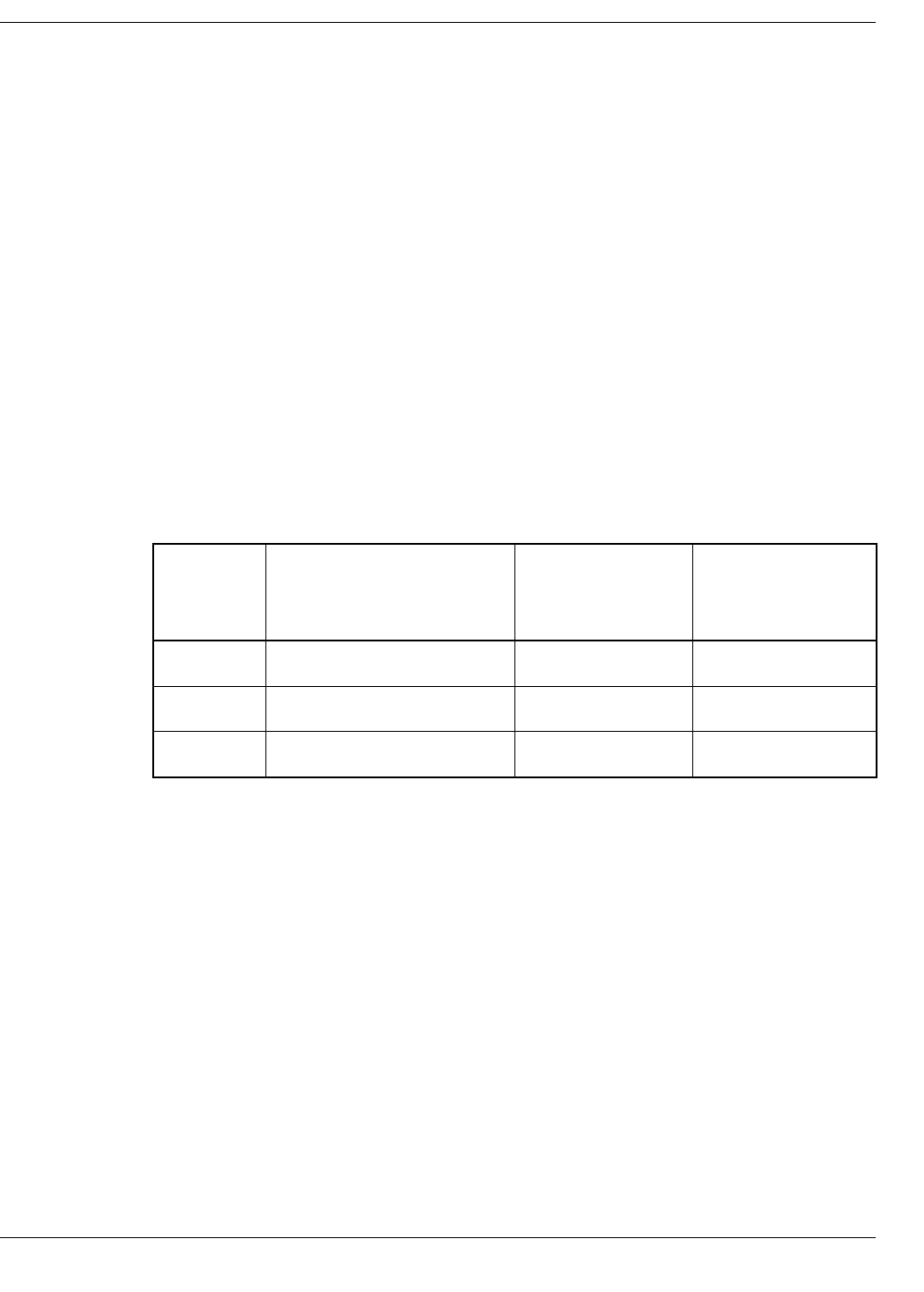
SURF Surcharge Configuration Example
25-7
May-2016 R6.0 Post v10 BA-AE000-03
ACI Worldwide, Inc.
SURF Surcharge Configuration Example
The following configuration example shows the surcharge categories for terminals
and cards and the SURF records needed when the categories are combined. The
transaction currency is assumed to be 840 (U.S. dollars and cents) in these
examples. For ease of documentation, the reversal code is not included in this
example.
Surcharging Categories
The institution in this example drives terminals in three location categories:
corporate locations, gambling establishments, and other locations. ATMs in
corporate locations provide a rebate or do not assess surcharges, depending on the
card issuer and card profile. ATMs in gambling establishments and other locations
assess surcharges or rebates based on terminal and customer information. The
following summarizes the bank’s terminal categories:
The institution has two card issuers, Bank A (FIID BNKA) and Bank B (FIID
BNKB). Cards from Bank A fall into two card profiles, XX and YY. Foreign
cards routed through the P1B^BIC interchange with a card type of P1 have no
surcharges. Foreign cards routed through the P1B^VISA interchange with a card
type of VD are surcharged only when the amount of the transaction exceeds the
minimum transaction amount established. Cards issued by Bank B have no
surcharges or an acquirer rebate, depending on the terminal location and card
profile. Cards from Bank A (profiles XX and YY), transactions routed through
P1B^BIC with a card type other than P1, and transactions routed through other
interchanges have selective surcharges.
Category Location Terminal
Group
Code
Fees
A Corporate locations CORP Rebate or no fees
B Gambling establishments GAMB High fees
C Other locations OTHR Selective fees

25-8
Surcharge File (SURF)
May-2016 R6.0 Post v10 BA-AE000-03
ACI Worldwide, Inc.
The following summarizes the card categories:
To determine fees, the bank combines the data from the two tables and decides on
the surcharges or rebates for each group. The following table show the surcharges
or rebates the bank defined based on terminal group and card category.
Category Description Fees
1 SPROUTE routing through an
interchange other than P1B^BIC Small fees for savings and
checking accounts
2 CPF routing—FIID BNKA, card
profile XX Small fees
3 CPF routing—FIID BNKA, card
profile YY Moderate fees
4 SPROUTE routing through P1B^
BIC with a card type other than P1 Moderate fees
5 SPROUTE routing through P1B^
BIC with card type P1 No fees
6 CPF routing—FIID BNKB, card
profile other than AA No fees
7 CPF routing—FIID BNKB, card
profile AA Rebates or no fees
8 SPROUTE routing through P1B^
VISA with card type VD and card
prefix 4417
Fee based on minimum
transaction amount
Group Description Fee
A1 Corporate location/SPROUTE routing
through an interchange other than P1B^BIC No fee
A2 Corporate location/CPF routing—FIID
BNKA, card profile XX No fee
A3 Corporate location/CPF routing—FIID
BNKA, card profile YY No fee
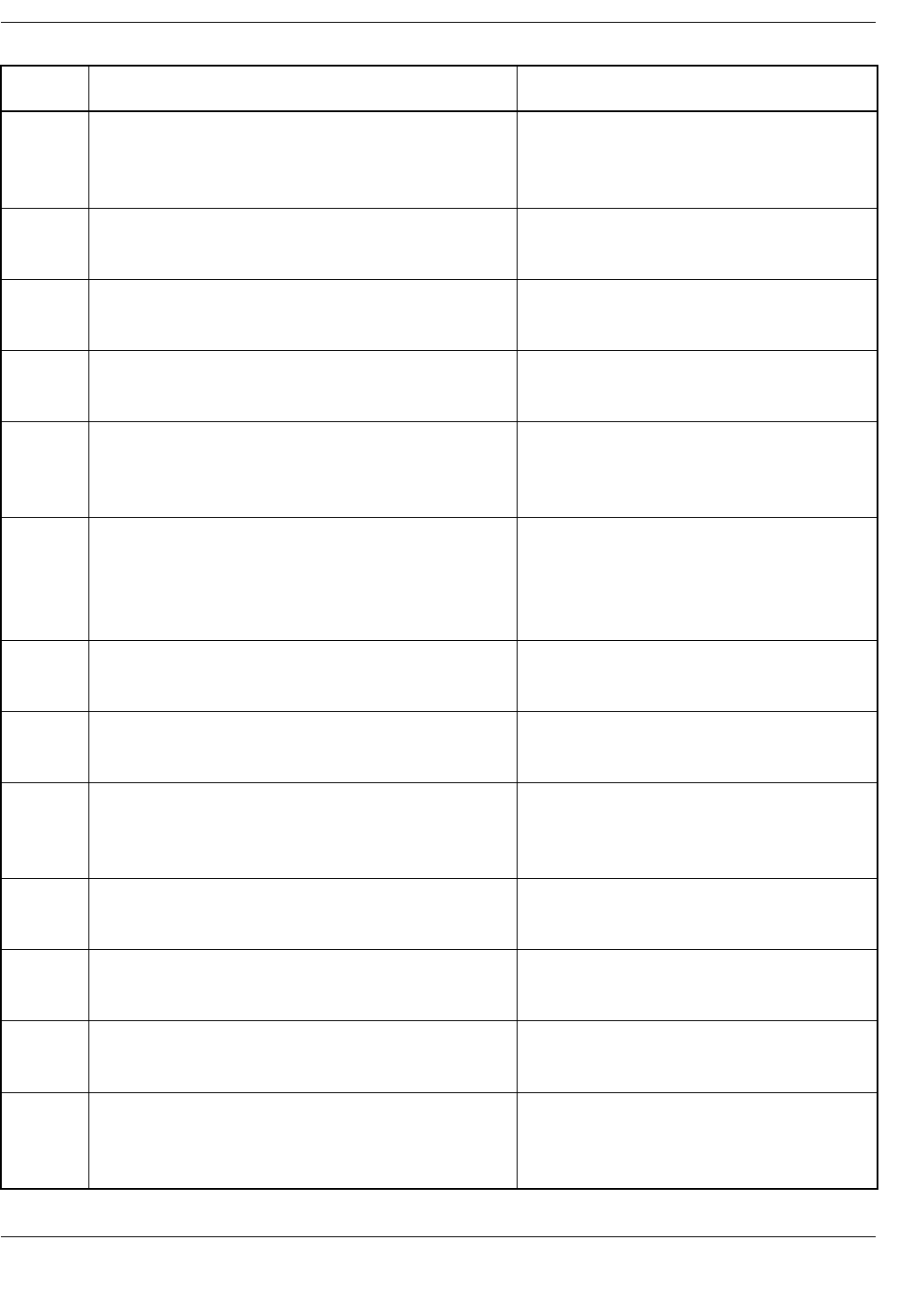
SURF Surcharge Configuration Example
25-9
May-2016 R6.0 Post v10 BA-AE000-03
ACI Worldwide, Inc.
A4 Corporate location/SPROUTE routing
through P1B^BIC with a card type other than
P1
No fee
A5 Corporate location/SPROUTE routing
through P1B^BIC with card type P1 No fee
A6 Corporate location/CPF routing—FIID
BNKB, card profile other than AA No fee
A7 Corporate location/CPF routing—FIID
BNKB, card profile AA –$0.25 flat fee
A8 Corporate location/SPROUTE routing
through P1B^VISA with card type VD and
card prefix 4417
1 percent fee based on minimum
transaction amount
B1 Gambling establishment/SPROUTE routing
through an interchange other than P1B^BIC $2.00 flat fee for withdrawals from
checking or savings. No fee for
withdrawals from credit card
accounts.
B2 Gambling establishment/CPF routing—FIID
BNKA, card profile XX $2.00 flat fee
B3 Gambling establishment/CPF routing—FIID
BNKA, card profile YY $3.00 flat fee
B4 Gambling establishment/SPROUTE routing
through P1B^BIC with a card type other than
P1
2 percent fee or a maximum of $5.00
B5 Gambling establishment/SPROUTE routing
through P1B^BIC with card type P1 No fee
B6 Gambling establishment/CPF routing—FIID
BNKB, card profile other than AA No fee
B7 Gambling establishment/CPF routing—FIID
BNKB, card profile AA No fee
B8 Gambling establishment/SPROUTE routing
through P1B^VISA with card type VD and
card prefix 4417
1 percent fee based on minimum
transaction amount
Group Description Fee
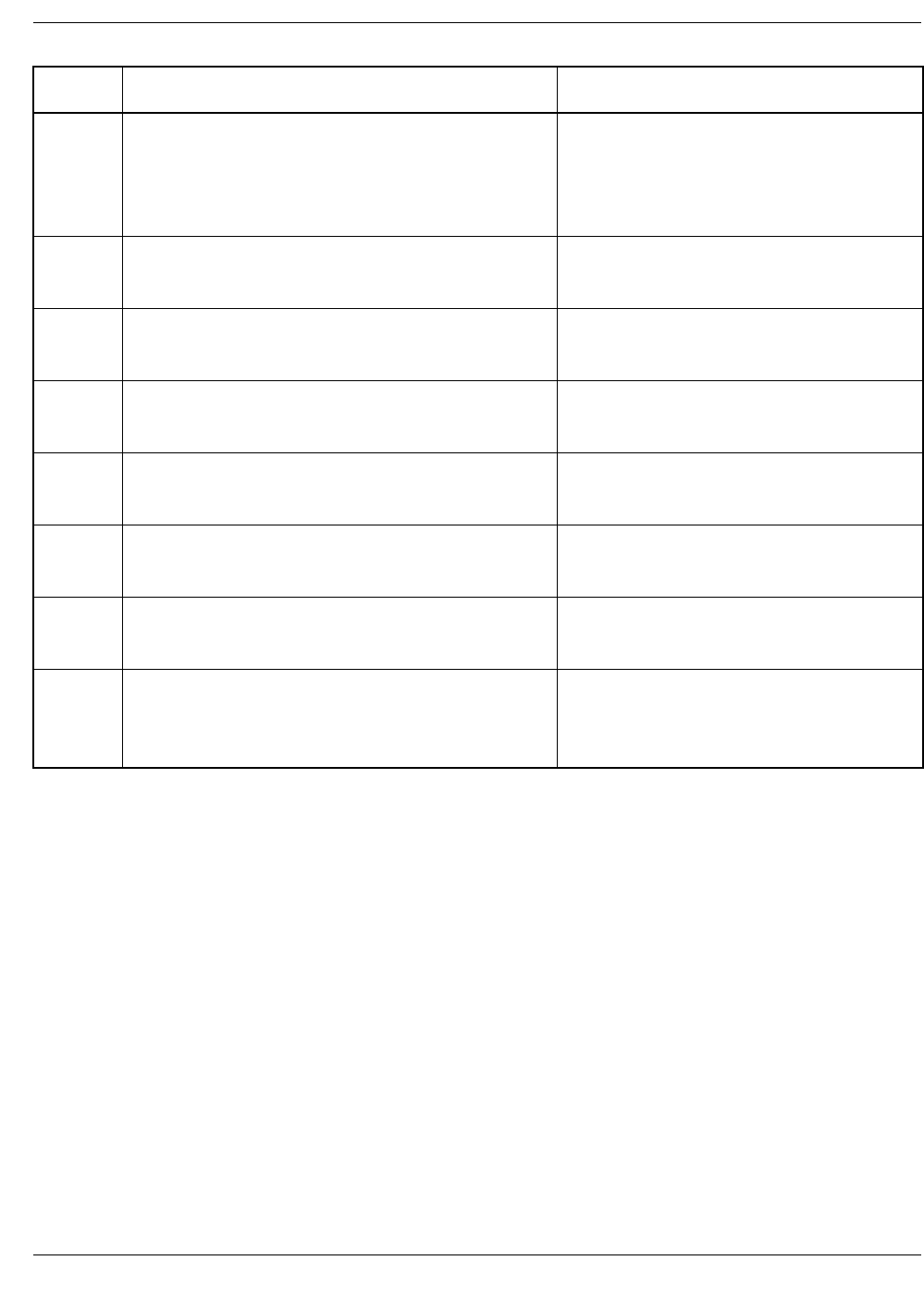
25-10
Surcharge File (SURF)
May-2016 R6.0 Post v10 BA-AE000-03
ACI Worldwide, Inc.
Defining SURF Records
The bank needs to define SURF records for all combinations. Since there is no fee
assessed for the first six corporate terminal groups, no SURF records need to be
defined for combinations A1–A6.
C1 Other location/SPROUTE routing through an
interchange other than P1B^BIC 1 percent or $1.00 maximum fee for
withdrawals from checking or
savings. No fees for credit card
accounts.
C2 Other location/CPF routing—FIID BNKA,
card profile XX 1 percent or $.50 maximum fee
C3 Other location/CPF routing—FIID BNKA,
card profile YY 2 percent or $1.00 maximum fee
C4 Other location/SPROUTE routing through
P1B^BIC with a card type other than P1 2 percent or $1.00 minimum fee
C5 Other location/SPROUTE routing through
P1B^BIC with card type P1 No fee
C6 Other location/CPF routing—FIID BNKB,
card profile other than AA No fee
C7 Other location/CPF routing—FIID BNKB,
card profile AA No fee
C8 Other location/SPROUTE routing through
P1B^VISA with card type VD and card prefix
4417
1 percent fee based on minimum
transaction amount
Group Description Fee
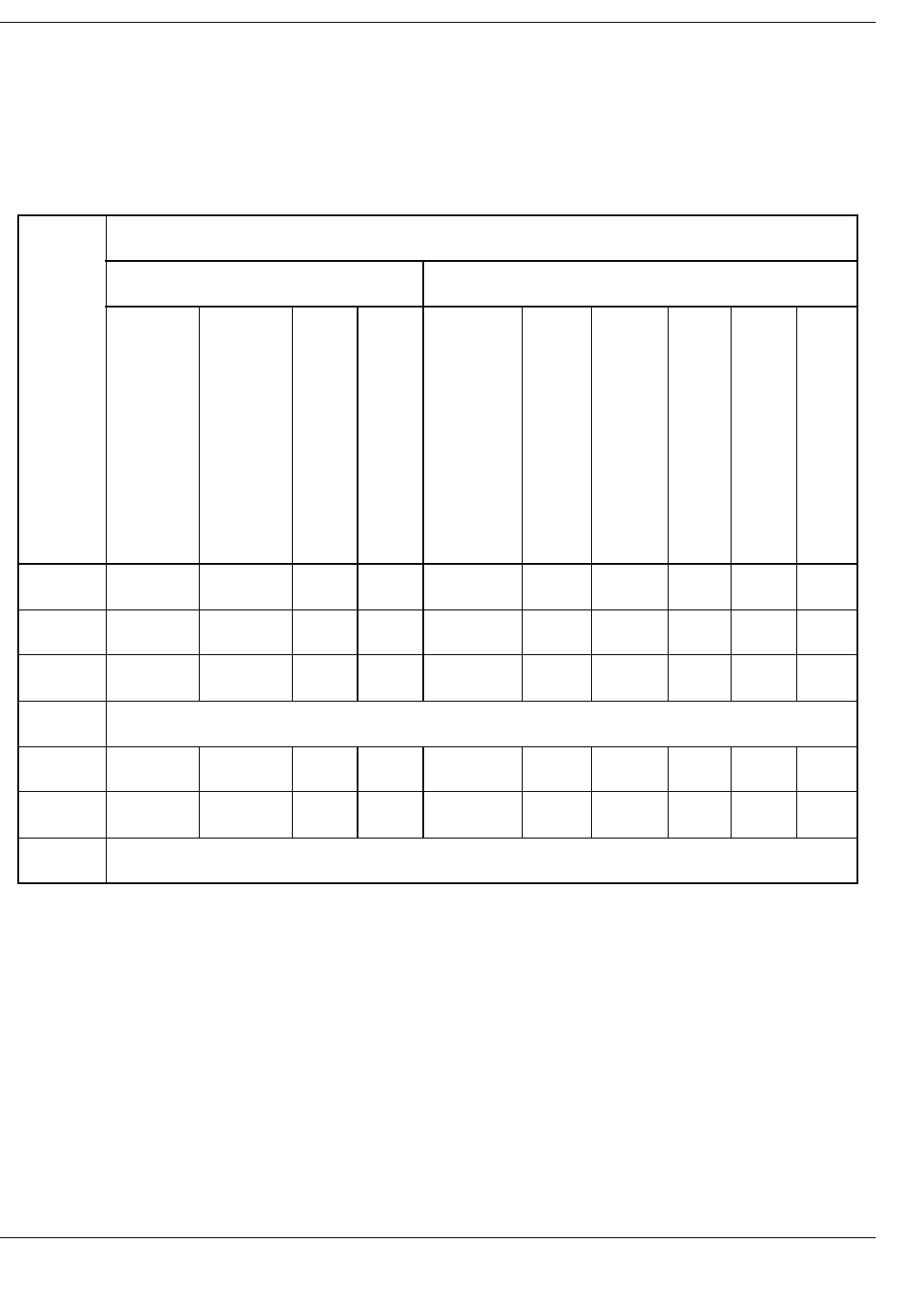
SURF Surcharge Configuration Example
25-11
May-2016 R6.0 Post v10 BA-AE000-03
ACI Worldwide, Inc.
The following table shows the SURF records that need to be created for
combinations based on CPF routing. The fields are on SURF screen 2. The
operator must first enter CP as the record type and 01 as the product ID on SURF
screen 1 to access this screen. SURF screens 1 and 2 are explained later in this
section.
Because no fees are required for terminals at locations other than corporate
locations for cards issued by Bank B (FIID BNKB), no SURF record is required
for combinations B6, B7, C6, and C7.
The following table shows the SURF records that need to be created for
combinations based on SPROUTE routing. The fields are on SURF screen 3. The
operator must first enter SP as the record type and 01 as the product ID on SURF
screen 1 to access this screen. SURF screens 1 and 3 are explained later in this
section.
Group
SURF Screen 2 Field
Primary Key Fields Transaction Table Fields
TERM PROFILE
CARD FIID
CARD PROFILE
CURRENCY CODE
TRANSACTION CODE
SUBTYPE
MIN TXN AMT
FLAT FEE
PERCENT FEE
USE MIN/MAX
A7 CORP BNKB AA 840 10**00 **** –.25 0
B2 GAMB BNKA XX 840 10**00 **** 2.00 0
B3 GAMB BNKA YY 840 10**00 **** 3.00 0
B6, B7 No SURF record required
C2 OTHR BNKA XX 840 10**00 **** .50 1.00 1
C3 OTHR BNKA YY 840 10**00 **** 1.00 2.00 1
C6, C7 No SURF record required
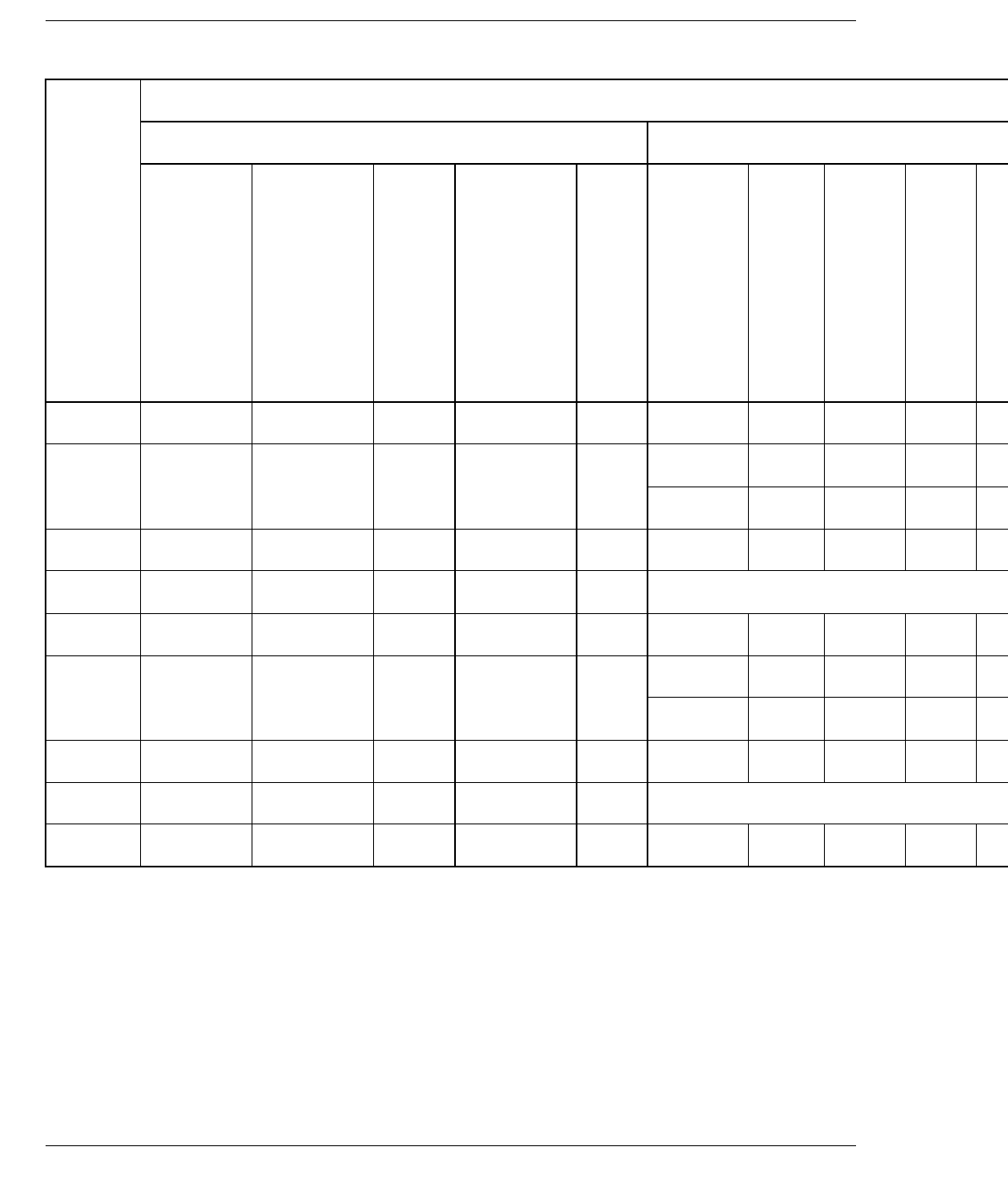
25-12
Surcharge File (SURF)
May-2016 R6.0 Post v10 BA-AE000-03
ACI Worldwide, Inc.
Group
SURF Screen 3 Field
Primary Key Fields Transaction Table Fields
TERM PROFILE
TRANSACTION DEST
CARD TYPE
CARD PREFIX
CURRENCY CODE
TRANSACTION CODE
SUBTYPE
MIN TXN AMT
FLAT FEE
P
E
R
C
E
N
T
F
E
E
A8 CORP P1B^VISA VD 4417 840 10**00 **** 40.00 1
.
B1 GAMB all asterisks ** all asterisks 840 100100 **** 2.00
101100 **** 2.00
B4 GAMB P1B^BIC ** all asterisks 840 10**00 **** 5.00 2
.
B5 GAMB P1B^BIC P1 all asterisks 840 No entries required
B8 GAMB P1B^VISA VD 4417 840 10**00 **** 40.00 1
.
C1 OTHR all asterisks ** all asterisks 840 100100 **** 1.00 1
.
101100 **** 1.00 1
.
C4 OTHR P1B^BIC ** all asterisks 840 10**00 **** 1.00 2
.
C5 OTHR P1B^BIC P1 all asterisks 840 No entries required
C8 OTHR P1B^VISA VD 4417 840 10**00 **** 40.00 1.
0

SURF Surcharge Configuration Example
25-13
May-2016 R6.0 Post v10 BA-AE000-03
ACI Worldwide, Inc.
Because a SURF record was defined for the P1B^BIC and card type **, records
for P1B^BIC were defined with blank transaction tables indicating that no fees are
to be charged. If the SURF records were not created for these no fee categories,
the Authorization process would find a match on card type ** and assess fees.

25-14
Surcharge File (SURF)
May-2016 R6.0 Post v10 BA-AE000-03
ACI Worldwide, Inc.
Screen 1
SURF screen 1 contains the record type and product ID for the surcharge profile.
SURF screen 1 is shown below, followed by descriptions of its fields.
RECORD TYPE — The type of SURF record to be used. Valid values are as
follows:
A description of the record type code entered is displayed to the right of the
RECORD TYPE field.
CP = Surcharge profile for transactions routed using the Card Prefix File (CPF)
SP = Surcharge profile for transactions routed using the SPROUTE File
Field Length: 2 alphabetic characters
Required Field: Yes
Default Value: SP
Data Names: SURF.CPF.REC-TYP if the field value is CP
SURF.SPROUTE.REC-TYP if the field value is SP
BASE24-BASE SURCHARGE LLLL YY/MM/DD HH:MM 01 OF 03
RECORD TYPE: SP PROD ID: 01
(CP) - PROFILE FOR (01) - ATM PRODUCT
CPF ROUTED
TRANSACTIONS
(SP) - PROFILE FOR
SPROUTE ROUTED
TRANSACTIONS
*********************************** BASE24 ***********************************
FILE DESTINATION: NEW LOGICAL NETWORK ID:
F12 - HELP

Screen 1
25-15
May-2016 R6.0 Post v10 BA-AE000-03
ACI Worldwide, Inc.
PROD ID — The ID of the BASE24 product that uses this surcharge profile. The
only valid value is 01 for the BASE24-atm product.
A description of the record type code entered is displayed to the right of the
RECORD TYPE field.
Field Length: 2 numeric characters
Required Field: Yes
Default Value: 01
Data Names: SURF.CPF.PROD-ID if the profile is for transactions routed
using CPF routing
SURF.SPROUTE.PROD-ID if the profile is for transactions
routed using the SPROUTE File
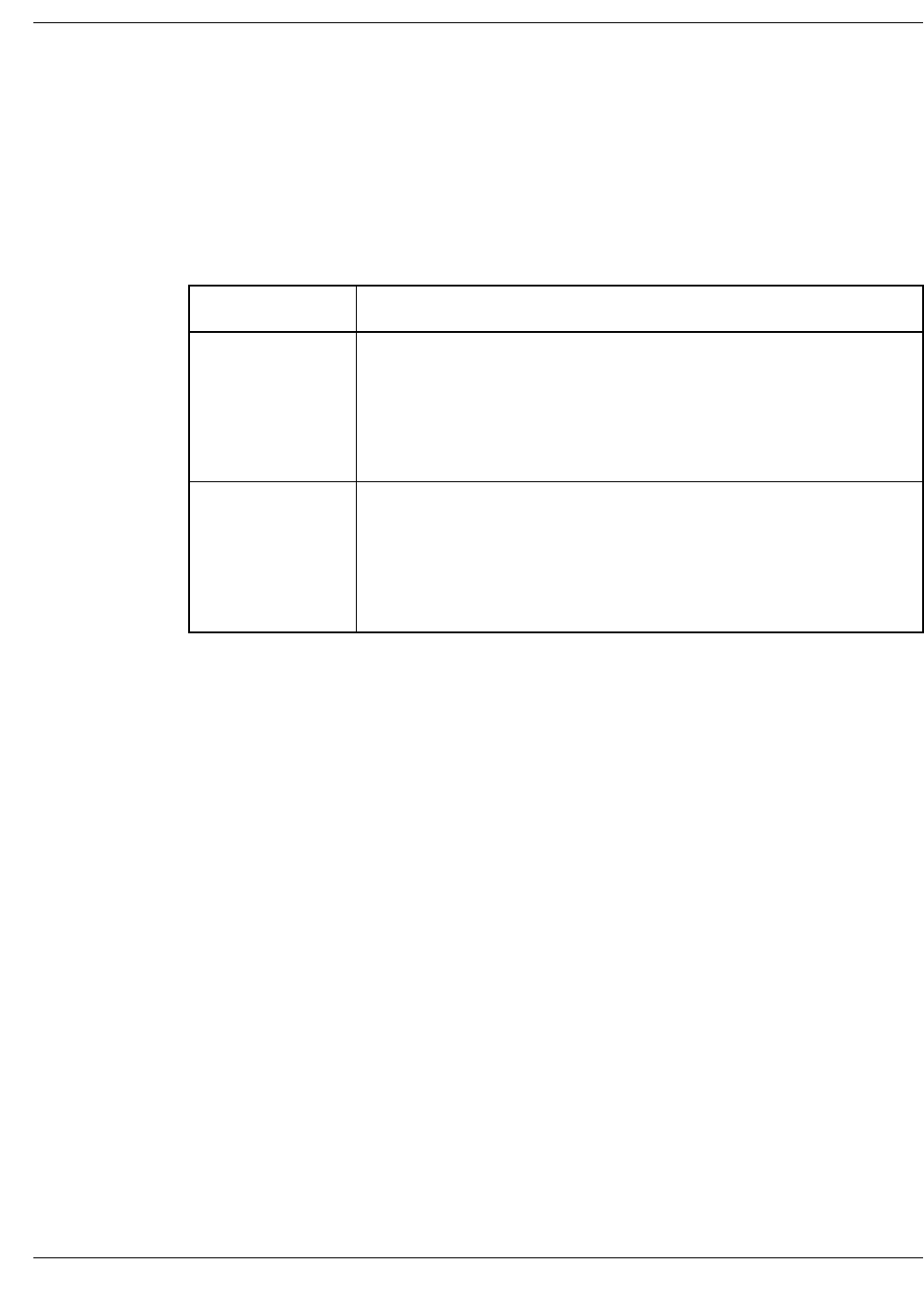
25-16
Surcharge File (SURF)
May-2016 R6.0 Post v10 BA-AE000-03
ACI Worldwide, Inc.
Screen 2 Function Keys
The use of two function keys on SURF screen 2 varies from the standard function
keys explained in section 1. The use of these function keys is explained below.
The first column shows the BASE24 keys. The second column describes the
functions that can be accomplished with these keys on SURF screen 2.
Key Description
Shift-F6 Next Page of Codes — Displays the next group of 10
transaction codes on the current screen. If more than 10
transaction codes are present, multiple pages are used to
display the codes. The SURF transaction table may contain
up to 60 entries.
Shift-F7 Previous Page of Codes —Displays the previous group of
10 transaction codes on the current screen number. If more
than 10 transaction codes are present, multiple pages are
used to display the codes. The SURF transaction table may
contain up to 60 entries.

Screen 2
25-17
May-2016 R6.0 Post v10 BA-AE000-03
ACI Worldwide, Inc.
Screen 2
SURF screen 2 contains the primary key, reversal code, and transaction table for
transactions routed using the Card Prefix File (CPF). SURF screen 2 is accessed
by entering the value CP in the RECORD TYPE field and the value 01 in the
PROD ID field of SURF screen 1 and pressing the F9 key. SURF screen 2 is
shown below, followed by descriptions of its fields.
TERM PROFILE — The terminal group to which this record applies, such as
airport, mall, or casino. The BASE24-atm Authorization process uses this value to
match the surcharge profile to a BASE24-atm Terminal Data file record. A value
of all asterisks (****) can be used if surcharges or rebates are not specific to a
particular terminal profile.
CURRENCY CODE — A numeric ISO code indicating the currency in which all
the surcharge or rebate amounts are maintained in this profile. Valid values are
listed in the ISO 4217 standard, Codes for the Representation of Currencies and
Field Length: 4 alphanumeric characters
Required Field: Yes
Default Value: ****
Data Name: SURF.CPF.TERM-SUR-PROFILE
BASE24-BASE SURCHARGE LLLL YY/MM/DD HH:MM 02 OF 03
RECORD TYPE: CP PROD ID: 01
TERM PROFILE: **** CURRENCY CODE: 840 (USD)
CARD FIID: **** CARD PROFILE: **
REVERSAL CODE: 0 NON-CURRENCY DISPENSE: 0
SUB MIN TXN FLAT PERCENT USE
TRANSACTION CODE TYPE AMT FEE FEE MIN/MAX
*********************************** BASE24 ***********************************
NEW PAGE: FILE DESTINATION: NEW LOGICAL NETWORK ID:
F12-HELP SF6 - NEXT PAGE OF CODES SF7 - PREVIOUS PAGE OF CODES

25-18
Surcharge File (SURF)
May-2016 R6.0 Post v10 BA-AE000-03
ACI Worldwide, Inc.
Funds. The value in this field must be defined in the CURRENCY-CODE-
TABLE in the COBNAMES file. If no value is entered in this field, it defaults to
the first entry from the CURRENCY-CODE-TABLE in the COBNAMES file.
Note: If you change the value of this field, the amount fields for the profile are not
automatically converted. You must re-enter the correct fee information along with
the new currency code.
A three-character alphabetic representation of the code is displayed to the right of
the CURRENCY CODE field.
CARD FIID — The FIID of the card issuer. A value of all asterisks (****) can be
used if surcharges or rebates are not specific to a particular FIID.
CARD PROFILE — The card profile group to which this record applies. The
BASE24-atm Authorization process uses this value to match the surcharge profile
to a CPF record. A value of all asterisks (**) can be used if surcharges or rebates
are not specific to a particular card profile.
Field Length: 3 numeric characters
Required Field: Yes
Default Value: The first entry from the CURRENCY-CODE-TABLE in the
COBNAMES file.
Data Names: SURF.CPF.TXN-CRNCY-CDE
Field Length: 4 alphanumeric characters
Required Field: Yes
Default Value: ****
Data Name: SURF.CPF.CARD-FIID
Field Length: 1–2 alphanumeric characters
Required Field: Yes
Default Value: **
Data Name: SURF.CPF.CARD-PROFILE

Screen 2
25-19
May-2016 R6.0 Post v10 BA-AE000-03
ACI Worldwide, Inc.
REVERSAL CODE — A code indicating the action the BASE24-atm
Authorization process is to take on partial reversals of withdrawal transactions.
Valid values are as follows:
NON-CURRENCY DISPENSE — A code indicating whether surcharging is
allowed on Non–Currency Dispense transactions.
TRANSACTION CODE — A code indicating the type of transaction for which
surcharges or rebates are supported. Valid values are as follows:
Note: Whenever the TRANSACTION CODE field contains multiple entries and
includes the value 10**00, the entry with the value 10**00 must follow all of the
other entries.
Each entry in this field must have values configured in the corresponding SUB
TYPE, MIN TXN AMT, FLAT FEE, PERCENT FEE, and USE MIN/MAX fields.
0 = Do not charge a fee on partial transactions.
1 = Charge a fee on partial transactions. If a percentage calculation is used
for the surcharge, the partial fee is based on the actual amount dispensed.
Field Length: 1 numeric character
Required Field: Yes
Default Value: 0
Data Name: SURF.ATM.RVSL-CODE
0 = Do not charge a fee on Non–Currency Dispense transactions.
1 = Charge a fee on Non–Currency Dispense transactions.
Field Length: 1 numeric character followed by a 14 alphanumeric character
system protected field
Required Field: Yes
Default Value: 0
Data Name: SURF.ATM.NCD-FLG
100100 = Withdrawal from checking
101100 = Withdrawal from savings
103100 = Withdrawal from credit account
10**00 = Withdrawal from any account not listed

25-20
Surcharge File (SURF)
May-2016 R6.0 Post v10 BA-AE000-03
ACI Worldwide, Inc.
A description of the code entered is displayed to the right of the code on the same
line of the screen page.
SUB TYPE — The subtype value defined for the transaction identified in the
TRANSACTION CODE field. A value in this field must be defined in the
Transaction Code/Subtype Relationship File (TSRF) before it can be used when
adding or updating a record. For a list of valid values, refer to the TSRF screen 1
in the TSRF section of this manual. A value of asterisks (****) indicates that there
is no transaction subtype specified.
MIN TXN AMT — The minimum transaction amount for which a surcharge can
be applied. Valid values are 0 to 9999999.
Field Length: 6 numeric or special characters
Occurs: Up to 60 times
Required Field: No
Default Value: No default value
Data Name: SURF.ATM.TRAN.TRAN-CDE
Field Length: 4 alphanumeric characters
Occurs: Up to 60 times
Required Field: Yes, if a transaction code is entered.
Default Value: ****
Data Name: SURF.ATM.TRAN.TRAN-SUBTYP
Field Length: 1–7 alphanumeric characters, including a decimal point
Occurs: Up to 60 times
Required Field: Yes, if a transaction code is entered.
Default Value: 0
Data Name: SURF.ATM.TRAN.MIN-TXN-AMT

Screen 2
25-21
May-2016 R6.0 Post v10 BA-AE000-03
ACI Worldwide, Inc.
FLAT FEE — The flat fee, in whole and fractional currency units (for example,
U.S. dollars and cents), to be used as a surcharge or rebate. The amount in this
field must be preceded with a minus sign (–) if the amount is negative (e.g., for a
rebate or incentive). A flat fee, percent fee, or both must be defined for each
transaction code.
PERCENT FEE — The percentage, in whole and fractional units (for example, a
value of 789 indicates a percentage fee of 7.89%), to be used when calculating the
surcharge. The percentage in this field must be preceded with a minus sign (–) if
the percentage is negative (e.g., for a rebate or incentive). A flat fee, percent fee,
or both must be defined for each transaction code.
USE MIN/MAX — A code indicating whether to use the minimum or maximum
amount when both a flat fee and a percent fee exist. Valid values are as follows:
When the field contains the value 0 (use the maximum fee), the Authorization
process compares the flat fee to the value calculated as the percent fee and uses the
greater value. When the field contains the value 1 (use the minimum fee), the
Authorization process compares the two fees and uses the lesser value.
Field Length: 1–7 numeric characters, preceded by a minus sign (–) if the
amount is negative
Occurs: Up to 60 times
Required Field: Yes, if a transaction code is entered and the PERCENT FEE
field is empty.
Default Value: No default value
Data Name: SURF.ATM.TRAN.FLAT-FEE
Field Length: 1–4 numeric characters, preceded by a minus sign (–) if the
percentage is negative.
Occurs: Up to 60 times
Required Field: Yes, if a transaction code is entered and the FLAT FEE field
is empty.
Default Value: No default value
Data Name: SURF.ATM.TRAN.PCNT-FEE
0 = Use the maximum fee.
1 = Use the minimum fee.

25-22
Surcharge File (SURF)
May-2016 R6.0 Post v10 BA-AE000-03
ACI Worldwide, Inc.
A description of the code entered is displayed to the right of the USE MIN/MAX
field.
Field Length: 1 numeric character
Occurs: Up to 60 times
Required Field: Yes, if a transaction code is entered.
Default Value: No default value
Data Name: SURF.ATM.TRAN.MIN-MAX
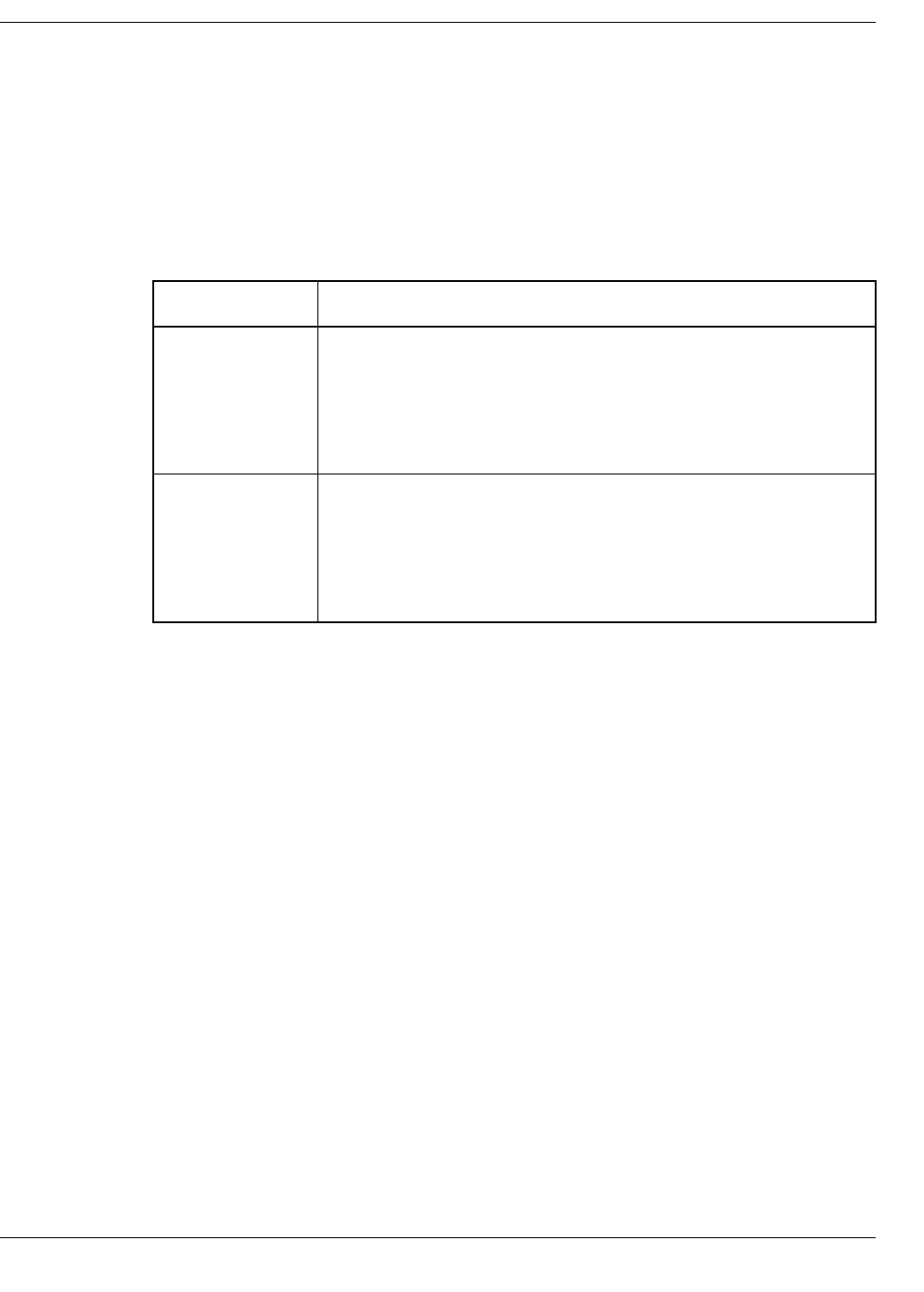
Screen 3 Function Keys
25-23
May-2016 R6.0 Post v10 BA-AE000-03
ACI Worldwide, Inc.
Screen 3 Function Keys
The use of two function keys on SURF screen 3 varies from the standard function
keys explained in section 1. The use of these function keys is explained below.
The first column shows the BASE24 keys. The second column describes the
functions that can be accomplished with these keys on SURF screen 3.
Key Description
Shift-F6 Next Page of Codes — Displays the next group of 10
transaction codes on the current screen number. If more than
10 transaction codes are present, multiple pages are used to
display the codes. The SURF transaction table may contain
up to 60 entries.
Shift-F7 Previous Page of Codes —Displays the previous group of
10 transaction codes on the current screen number. If more
than 10 transaction codes are present, multiple pages are
used to display the codes. The SURF transaction table may
contain up to 60 entries.

25-24
Surcharge File (SURF)
May-2016 R6.0 Post v10 BA-AE000-03
ACI Worldwide, Inc.
Screen 3
SURF screen 3 contains the primary key, reversal code, and transaction table for
transactions routed using the SPROUTE File. SURF screen 3 is accessed by
entering the value SP in the RECORD TYPE field and the value 01 in the PROD
ID field of SURF screen 1 and pressing the F9 key. SURF screen 3 is shown
below, followed by descriptions of its fields.
TERM PROFILE — The terminal group to which this record applies, such as
airport, mall, or casino. The BASE24-atm Authorization process uses this value to
match the surcharge profile to a BASE24-atm Terminal Data file record. A value
of all asterisks (****) can be used if surcharges or rebates are not specific to a
particular terminal profile.
CURRENCY CODE — A numeric ISO code indicating the currency in which all
the surcharge or rebate amounts are maintained in this profile. Valid values are
listed in the ISO 4217 standard, Codes for the Representation of Currencies and
Field Length: 4 alphanumeric characters
Required Field: Yes
Default Value: ****
Data Name: SURF.SPROUTE.TERM-SUR-PROFILE
BASE24-BASE SURCHARGE LLLL YY/MM/DD HH:MM 03 OF 03
RECORD TYPE: SP PROD ID: 01
TERM PROFILE: **** CURRENCY CODE: 840 (USD)
TRANSACTION DEST: **************** CARD TYPE: ** CARD PREFIX: ***********
REVERSAL CODE: 0 NON-CURRENCY DISPENSE: 0
SUB MIN TXN FLAT PERCENT USE
TRANSACTION CODE TYPE AMT FEE FEE MIN/MAX
*********************************** BASE24 ***********************************
FILE DESTINATION: NEW LOGICAL NETWORK ID:
F12-HELP SF6 - NEXT PAGE OF CODES SF7 - PREVIOUS PAGE OF CODES

Screen 3
25-25
May-2016 R6.0 Post v10 BA-AE000-03
ACI Worldwide, Inc.
Funds. The value in this field must be defined in the CURRENCY-CODE-
TABLE in the COBNAMES file. If no value is entered in this field, it defaults to
the first entry from the CURRENCY-CODE-TABLE in the COBNAMES file.
Note: If you change the value of this field, the amount fields for the profile are not
automatically converted. You must re-enter the correct fee information along with
the new currency code.
A three-character alphabetic representation of the code is displayed to the right of
the CURRENCY CODE field.
TRANSACTION DEST — The transaction authorizing process (interface) to
which transactions are to be routed. This field can contain a process name, or all
asterisks if the surcharge or rebate is not specific to a particular primary routing
destination.
CARD TYPE — The SPROUTE card type. A value of asterisks (**) can be used
if the surcharge or rebate is not specific to a particular card type.
Field Length: 3 numeric characters
Required Field: Yes
Default Value: The first entry from the CURRENCY-CODE-TABLE in the
COBNAMES file.
Data Names: SURF.SPROUTE.TXN-CRNCY-CDE
Field Length: 1–16 alphanumeric characters
Required Field: Yes
Default Value: ****************
Data Name: SURF.SPROUTE.SYM.DEST
Field Length: 1–2 alphanumeric characters
Required Field: Yes
Default Value: **
Data Name: SURF.SPROUTE.CARD-TYP

25-26
Surcharge File (SURF)
May-2016 R6.0 Post v10 BA-AE000-03
ACI Worldwide, Inc.
CARD PREFIX — Identifies the card prefix for which surcharge assessments are
made. Valid values are 1 to 11 numeric characters. A value of asterisks
(***********) can be used if the surcharge or rebate is not specific to a particular
card prefix.
REVERSAL CODE — A code indicating the action the BASE24-atm
Authorization process is to take on partial reversals of withdrawal transactions.
Valid values are as follows:
NON-CURRENCY DISPENSE — A code indicating whether surcharging is
allowed on Non–Currency Dispense transactions.
Field Length: 1–11 numeric characters
Required Field: Yes
Default Value: ***********
Data Name: SURF.SPROUTE.CARD-PREFIX
0 = Do not charge a fee on partial transactions.
1 = Charge a fee on partial transactions. If a percentage calculation is used
for the surcharge, the partial fee is based on the actual amount dispensed.
Field Length: 1 numeric character
Required Field: Yes
Default Value: 0
Data Name: SURF.ATM.RVSL-CODE
0 = Do not charge a fee on Non–Currency Dispense transactions.
1 = Charge a fee on Non–Currency Dispense transactions.
Field Length: 1 numeric character followed by a 14 alphanumeric character
system-protected field
Required Field: Yes
Default Value: 0
Data Name: SURF.ATM.NCD-FLG

Screen 3
25-27
May-2016 R6.0 Post v10 BA-AE000-03
ACI Worldwide, Inc.
TRANSACTION CODE — A code indicating the type of transaction for which
surcharges or rebates are supported. Valid values are as follows:
Note: Whenever the TRANSACTION CODE field contains multiple entries and
includes the value 10**00, the entry with the value 10**00 must follow all of the
other entries.
Each entry in this field must have a value configured in the corresponding SUB
TYPE, MIN TXN AMT, FLAT FEE, PERCENT FEE, and USE MIN/MAX field
values.
A description of the code entered is displayed to the right of the code on the same
line of the screen page.
SUB TYPE — The subtype value defined for the transaction identified in the
TRANSACTION CODE field. A value in this field must be defined in the
Transaction Code/Subtype Relationship File (TSRF) before it can be used when
adding or updating a record. For a list of valid values, refer to the TSRF screen 1
in the TSRF section of this manual. A value of asterisks (****) indicates that there
is no transaction subtype specified.
100100 = Withdrawal from checking
101100 = Withdrawal from savings
103100 = Withdrawal from credit account
10**00 = Withdrawal from any account not listed
Field Length: 6 numeric or special characters
Occurs: Up to 60 times
Required Field: No
Default Value: No default value
Data Name: SURF.ATM.TRAN.TRAN-CDE
Field Length: 4 alphanumeric characters
Occurs: Up to 60 times
Required Field: Yes, if a transaction code is entered.
Default Value: ****
Data Name: SURF.ATM.TRAN.TRAN-SUBTYP

25-28
Surcharge File (SURF)
May-2016 R6.0 Post v10 BA-AE000-03
ACI Worldwide, Inc.
MIN TXN AMT — The minimum transaction amount for which a surcharge can
be applied. Valid values are 0 to 9999999.
FLAT FEE — The flat fee, in whole and fractional currency units (for example,
U.S. dollars and cents), to be used as a surcharge or rebate. The amount in this
field must be preceded with a minus sign (–) if the amount is negative (e.g., for a
rebate or incentive). A flat fee, percent fee, or both must be defined for each
transaction code.
PERCENT FEE — The percentage, in whole and fractional units (for example, a
value of 789 indicates a percentage fee of 7.89%), to be used when calculating the
surcharge. The percentage in this field must be preceded with a minus sign (–) if
the percentage is negative (e.g., for a rebate or incentive). A flat fee, percent fee,
or both must be defined for each transaction code.
Field Length: 1–7 alphanumeric characters, including a decimal point
Occurs: Up to 60 times
Required Field: Yes, if a transaction code is entered.
Default Value: 0
Data Name: SURF.ATM.TRAN.MIN-TXN-AMT
Field Length: 1–7 numeric characters, preceded by a minus sign (–) if the
amount is negative
Occurs: Up to 60 times
Required Field: Yes, if a transaction code is entered and the PERCENT FEE
field is empty.
Default Value: No default value
Data Name: SURF.ATM.TRAN.FLAT-FEE
Field Length: 1–4 numeric characters
Occurs: Up to 60 times
Required Field: Yes, if a transaction code is entered and the FLAT FEE field
is empty.
Default Value: No default value
Data Name: SURF.ATM.TRAN.PCNT-FEE

Screen 3
25-29
May-2016 R6.0 Post v10 BA-AE000-03
ACI Worldwide, Inc.
USE MIN/MAX — A code indicating whether to use the minimum or maximum
amount when both a flat fee and a percent fee exist. Valid values are as follows:
When the field contains the value 0 (use the maximum fee), the Authorization
process compares the flat fee to the value calculated as the percent fee and uses the
greater value. When the field contains the value 1 (use the minimum fee), the
Authorization process compares the two fees and uses the lesser value.
A description of the code entered is displayed to the right of the USE MIN/MAX
field.
0 = Use the maximum fee.
1 = Use the minimum fee.
Field Length: 1 numeric character
Occurs: Up to 60 times
Required Field: Yes, if a transaction code is entered.
Default Value: No default value
Data Name: SURF.ATM.TRAN.MIN-MAX

25-30
Surcharge File (SURF)
May-2016 R6.0 Post v10 BA-AE000-03
ACI Worldwide, Inc.

26-1
May-2016 R6.0 Post v10 BA-AE000-03
ACI Worldwide, Inc.
26: Transaction Code File (TCF)
The Transaction Code File (TCF) contains the text description of each ISO
transaction code used in the Acquirer Processing Code File (APCF), Issuer
Processing Code File (IPCF), or Terminal Receipt File (TRF).
Each transaction code record in the TCF defines a text description for the two-
character transaction code. This description is displayed on the APCF, IPCF, and
TRF screens whenever a record with the corresponding transaction code is read or
verified.
ACI provides a TCF containing records for the full set of transaction codes that the
BASE24-atm and BASE24-pos products support. This set of records is known as
the default TCF. The records in the default TCF are described at the end of this
section.
The primary key to the TCF is the TRANSACTION CODE field.
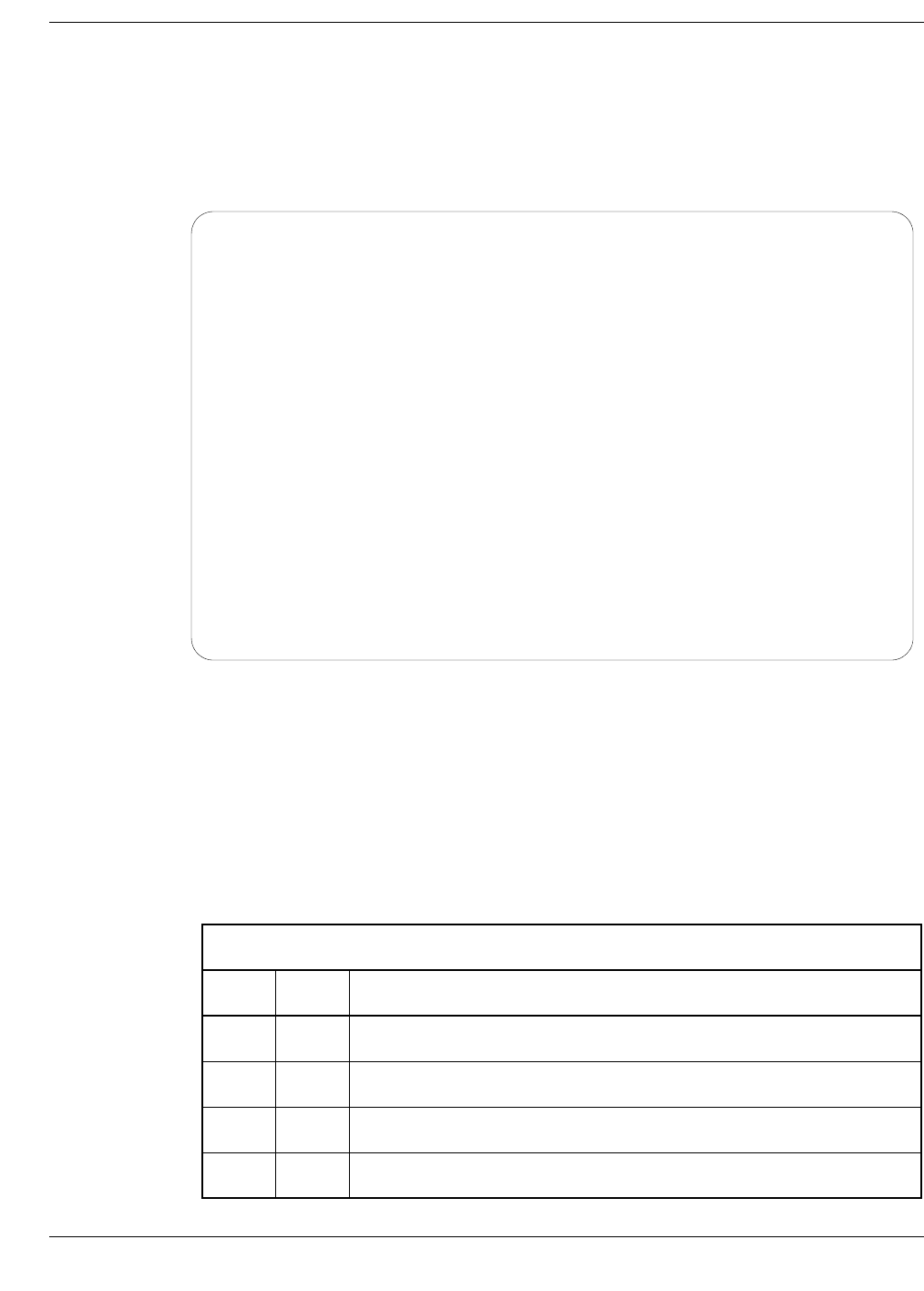
26-2
Transaction Code File (TCF)
May-2016 R6.0 Post v10 BA-AE000-03
ACI Worldwide, Inc.
Screen 1
TCF screen 1 enables you to read, add, update, and delete individual TCF records.
TCF screen 1 is shown below, followed by descriptions of its fields.
TRANSACTION CODE — An ISO code identifying a transaction used in the
APCF, IPCF, or TRF. User-defined transaction codes are not allowed.
The following tables list the valid ISO transaction codes for BASE24-atm and
BASE24-pos. The first column of each table lists the ISO transaction codes. The
second column lists the corresponding BASE24 transaction codes used internally
by BASE24 products. The third column describes the transaction.
BASE24-atm Transaction Codes
ISO Int Description
01 10 Cash (withdrawal)
03 03 Check guarantee
04 04 Check verification
1A 11 Cash check
BASE24-BASE TRANSACTION CODE FILE LLLL YY/MM/DD HH:MM 01 OF 01
TRANSACTION CODE:
TRANSACTION CODE DESCRIPTION:
*********************************** BASE24 ***********************************
NEW PAGE: FILE DESTINATION: NEW LOGICAL NETWORK ID:
F12-HELP
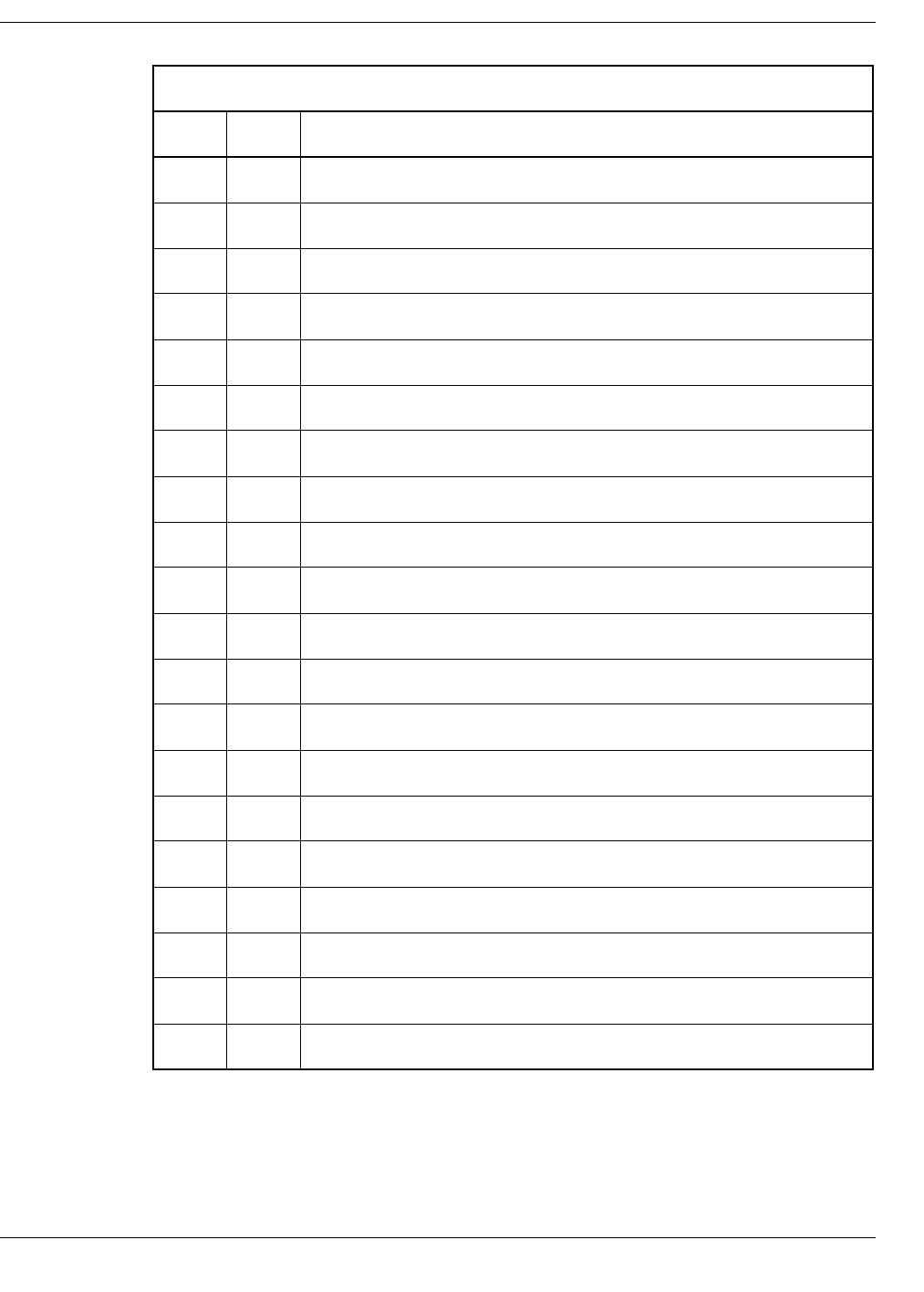
Screen 1
26-3
May-2016 R6.0 Post v10 BA-AE000-03
ACI Worldwide, Inc.
1B 10 Non–currency dispense withdrawal
21 20 Deposit (includes split deposits)
28 24 Deposit with cash back
30 30 Balance inquiry
34 70 Statement print
38 62 Card review request
40 40 Transfer
50 50 Payment
58 51 Payment enclosed
90 81 PIN change
9W 60 Message to financial institution
A1 61 Log only – 1
A2 61 Log only – 2
A3 61 Log only – 3
A4 61 Log only – 4
S5 S5 Mondex load value
S6 S6 Mondex unload value
S7 S7 Mondex payment log upload
S8 S8 Mondex exception log upload
SF SF Mondex remote authentication
BASE24-atm Transaction Codes
ISO Int Description
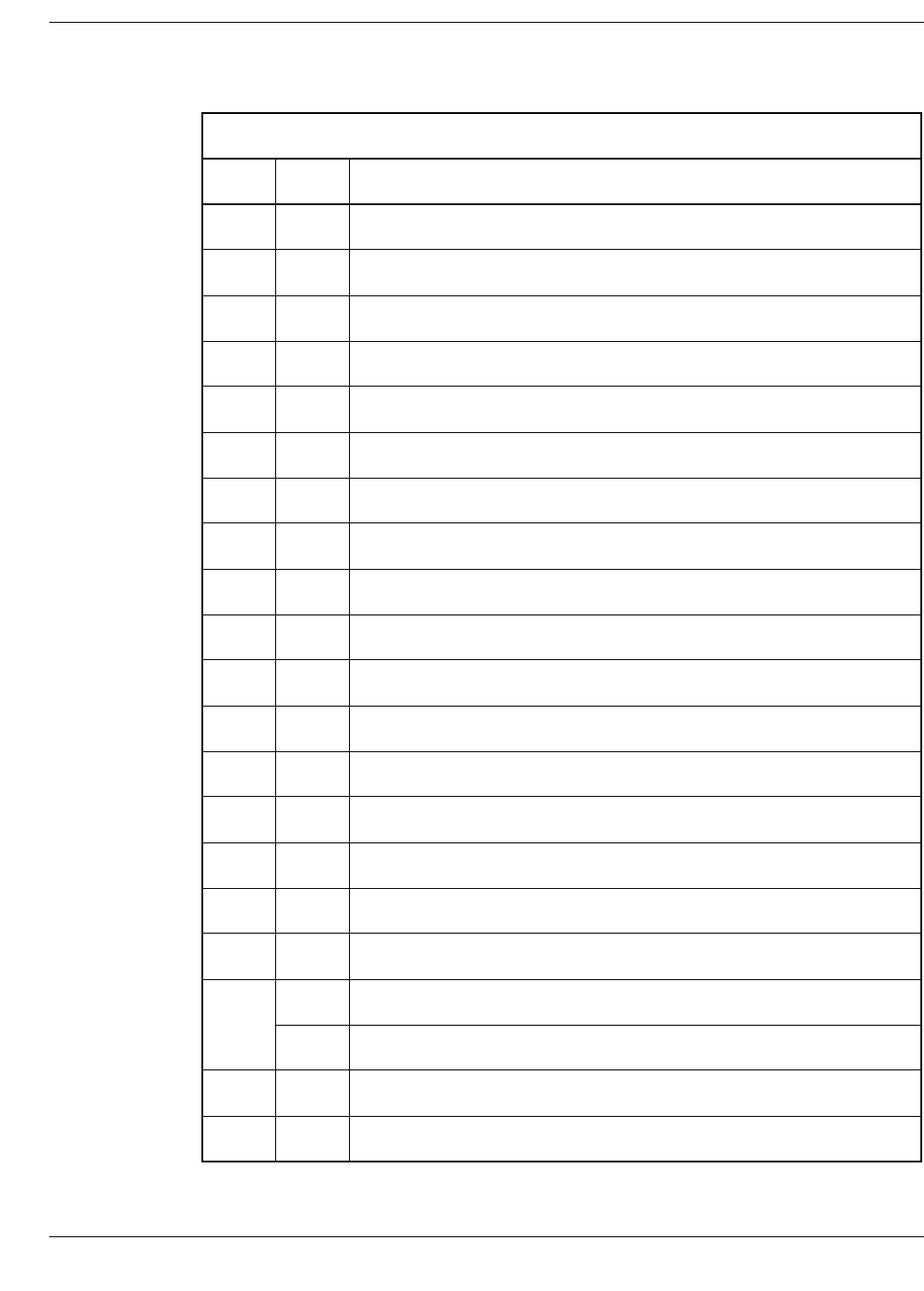
26-4
Transaction Code File (TCF)
May-2016 R6.0 Post v10 BA-AE000-03
ACI Worldwide, Inc.
BASE24-pos Transaction Codes
ISO Int Description
00 10 Goods and services (normal purchase)
1C 11 Preauthorization purchase
18 12 Preauthorization purchase completion
01 15 Cash (advance)
A5 21 Purchase adjustment
A6 22 Merchandise return adjustment
A7 23 Cash advance adjustment
A8 24 Purchase with cash back adjustment
03 20 Check guarantee
04 19 Check verification
09 18 Purchase with cash back
19 13 Mail or telephone order
20 14 Merchandise return
30 17 Inquiry
38 16 Card verify
60 27 Replenishment
61 28 Full redemption
72 25 Card activation
26 Additional card activation
A9 50 Batch terminal totals
AA 51 Shift terminal totals
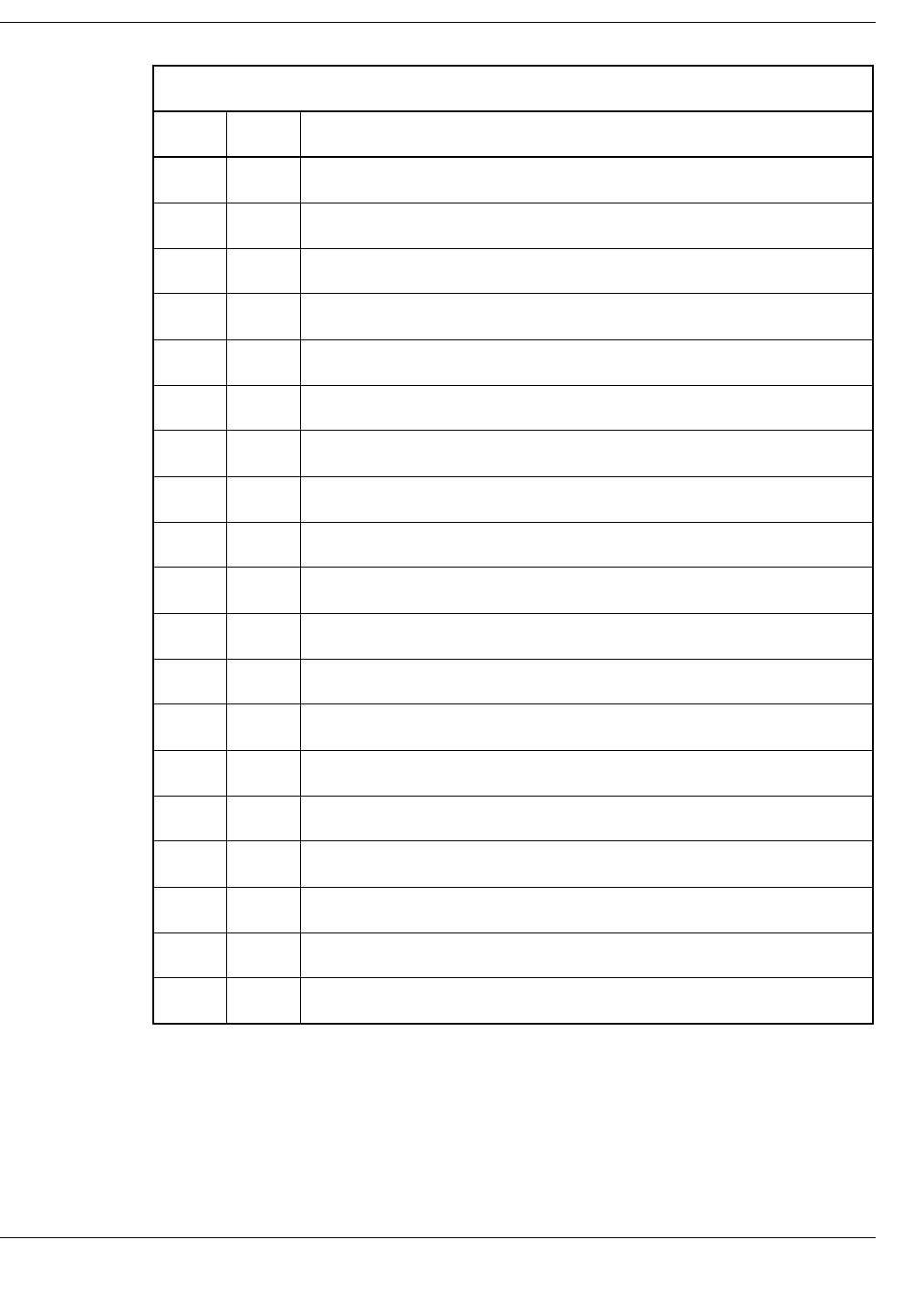
Screen 1
26-5
May-2016 R6.0 Post v10 BA-AE000-03
ACI Worldwide, Inc.
AB 52 Daily terminal totals
AC 53 Current terminal network totals
AD 54 Previous terminal network totals
AE 55 Card type terminal totals
AF 56 Request mail
AG 57 Send mail – pass through
AH 58 Send mail – stored
S5 S5 Mondex load value
S6 S6 Mondex unload value
S7 S7 Mondex payment log upload
S8 S8 Mondex exception log upload
S9 S9 Mondex batch close
SA SA Mondex shift close
SB SB Mondex day close
SC SC Mondex batch inquiry
SD SD Mondex shift inquiry
SE SE Mondex day inquiry
SF SF Mondex remote authentication
AJ AJ Clerk totals inquiry
Example: 30
Field Length: 2 alphanumeric characters
Required: Yes
Default Value: None
Data Name: TCF.PRIKEY.TXN-CDE
BASE24-pos Transaction Codes
ISO Int Description

26-6
Transaction Code File (TCF)
May-2016 R6.0 Post v10 BA-AE000-03
ACI Worldwide, Inc.
TRANSACTION CODE DESCRIPTION — A text description for the
transaction code entered in the TRANSACTION CODE field. When the value in
the TRANSACTION CODE field is specified in an APCF, IPCF, or TRF record,
the text from this field is displayed on the APCF, IPCF, or TRF screen when the
record is read or verified.
Example: BALANCE INQUIRY
Field Length: 30 alphanumeric characters
Required: Yes
Data Name: TCF.TXN-CDE-DESCR
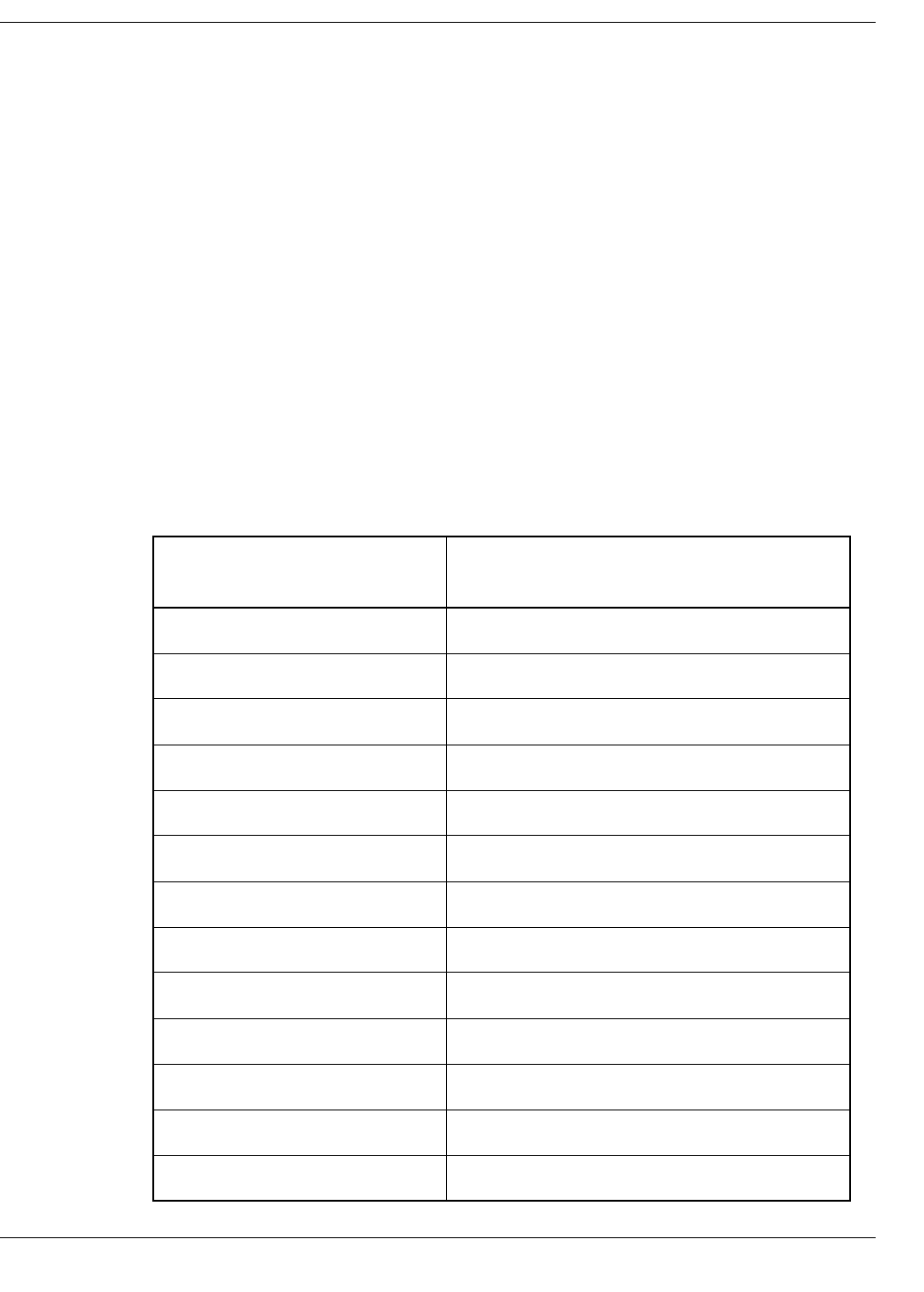
Default TCF Records
26-7
May-2016 R6.0 Post v10 BA-AE000-03
ACI Worldwide, Inc.
Default TCF Records
The TCF defines the transaction code descriptions supported for each ISO
transaction code used in the APCF, IPCF, and TRF. When ACI installs the
BASE24-atm or BASE24-pos product, a full set of default records is placed in the
TCF. A super user (that is, a user with a group number of 255 in his or her CRT
access security record) can modify this full set, called the default TCF, by adding,
updating, or deleting records with specific processing code information.
Each TCF record has unique information in the TRANSACTION CODE and
TRANSACTION CODE DESCRIPTION fields. Values in the TRANSACTION
CODE DESCRIPTION field are displayed on APCF, IPCF, and TRF screens if the
TRANSACTION CODE field value on these screens matches the
TRANSACTION CODE field value in the TCF.
Note: Mondex transaction code descriptions are not included in the default TCF
for BASE24-atm or BASE24-pos.
TRANSACTION CODE TRANSACTION CODE
DESCRIPTION
00 ISO DEBIT GOODS AND SERVICES
01 ISO DEBIT CASH
02 ISO DEBIT ADJUSTMENT
03 ISO DEBIT CHEQUE GUARANTEE
04 ISO DEBIT CHEQUE VERIFY
05 ISO DEBIT EURO CHQ
06 ISO DEBIT TCHQ
07 ISO DEBIT LETTER CREDIT
08 ISO DEBIT GIRO
09 ISO DEBIT GOODS/SERVICES SVC
10 ISO DEBIT NON CASH
11 ISO DEBIT NON SCRIP
12 ISO DEBIT CASH MANUAL
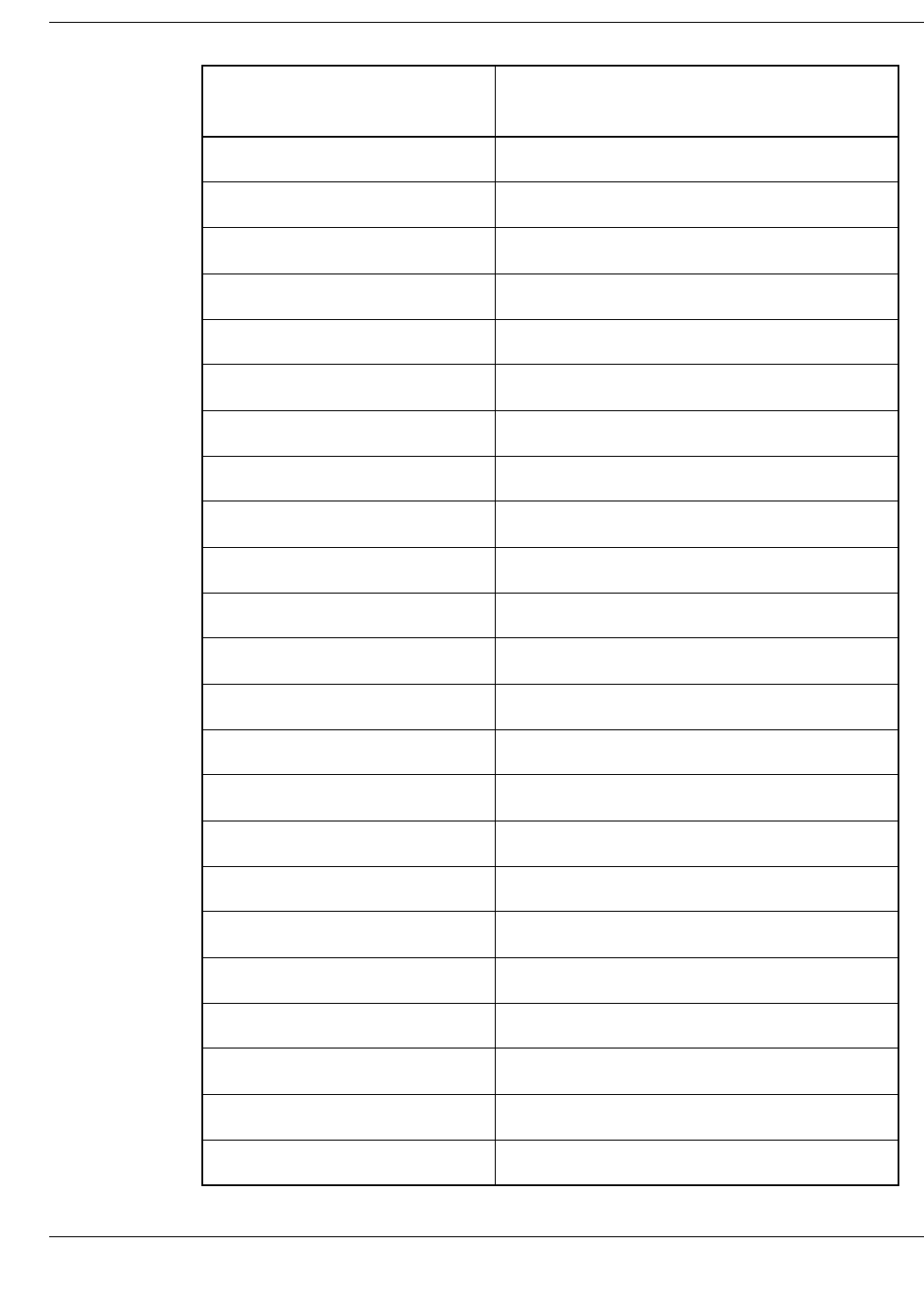
26-8
Transaction Code File (TCF)
May-2016 R6.0 Post v10 BA-AE000-03
ACI Worldwide, Inc.
13 ISO DEBIT SVC FUNDS
17 ISO DEBIT FAST CASH
18 ISO DEBIT PRVT PREAUTH COMPL
19 ISO DEBIT PRVT MAIL PHN ORDER
1A ISO DEBIT PRVT CASH CHK
1B ISO DEBIT PRVT NCD
1C ISO DEBIT PRVT PREAUTH
20 ISO CREDIT RETURN
21 ISO CREDIT DEP
22 ISO CREDIT ADJ
23 ISO CREDIT CHQ DEP GUAR
24 ISO CREDIT CHQ DEP
26 ISO CREDIT SVC FUNDS
28 ISO CREDIT DEP CB
29 ISO CREDIT CHQ DEP CB
30 ISO INQUIRY AVAIL FUNDS
31 ISO INQUIRY BAL
32 ISO INQUIRY LEDG BAL
33 ISO INQUIRY ADDR VRFY
34 ISO INQUIRY STMT PRNT
35 ISO INQUIRY CLEARED ITEM
38 ISO INQUIRY CRD VRFY
3A PRVT INQUIRY CHQ CLR
TRANSACTION CODE TRANSACTION CODE
DESCRIPTION
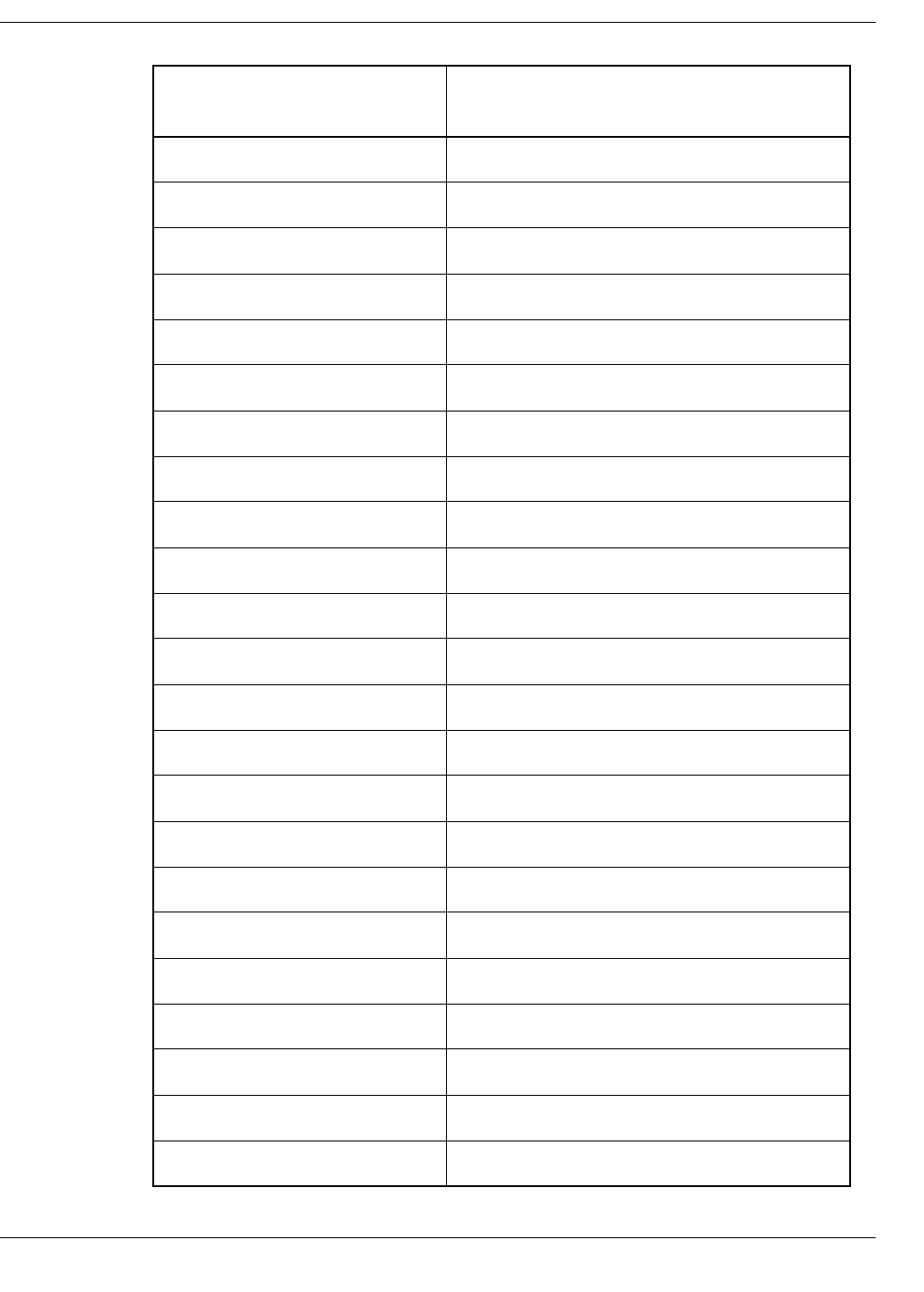
Default TCF Records
26-9
May-2016 R6.0 Post v10 BA-AE000-03
ACI Worldwide, Inc.
3B PRVT INQUIRY LAST DBCR
3C PRVT INQUIRY LAST SRC
3D PRVT INQUIRY LAST CHQ
3F PRVT INQUIRY LAST CR
3G PRVT INQUIRY LAST XFER
3H PRVT INQUIRY CUST VNDR
3J PRVT INQUIRY SCHED PMNT
3K PRVT INQUIRY SCHED XFER
3L PRVT INQUIRY LAST PMNT AND XFR
3M PRVT INQUIRY SCHED TXN
3N PRVT INQUIRY ACCT LIST
3P PRVT INQUIRY MULT ACCTS
40 ISO TRANSFER ACCT
4A PRVT TRANSFER ACCT FUTR
50 ISO PAYMENT
58 PRVT PAYMENT ENCLOSE
5A PRVT PAYMENT FUTR
5B PRVT PAYMENT RECUR
60 PRVT REPLENISHMENT
61 PRVT FULL REDEMPTION
72 PRVT CARD ACTIVATION
90 PRVT PIN CHNG
91 PRVT PIN VRFY
TRANSACTION CODE TRANSACTION CODE
DESCRIPTION
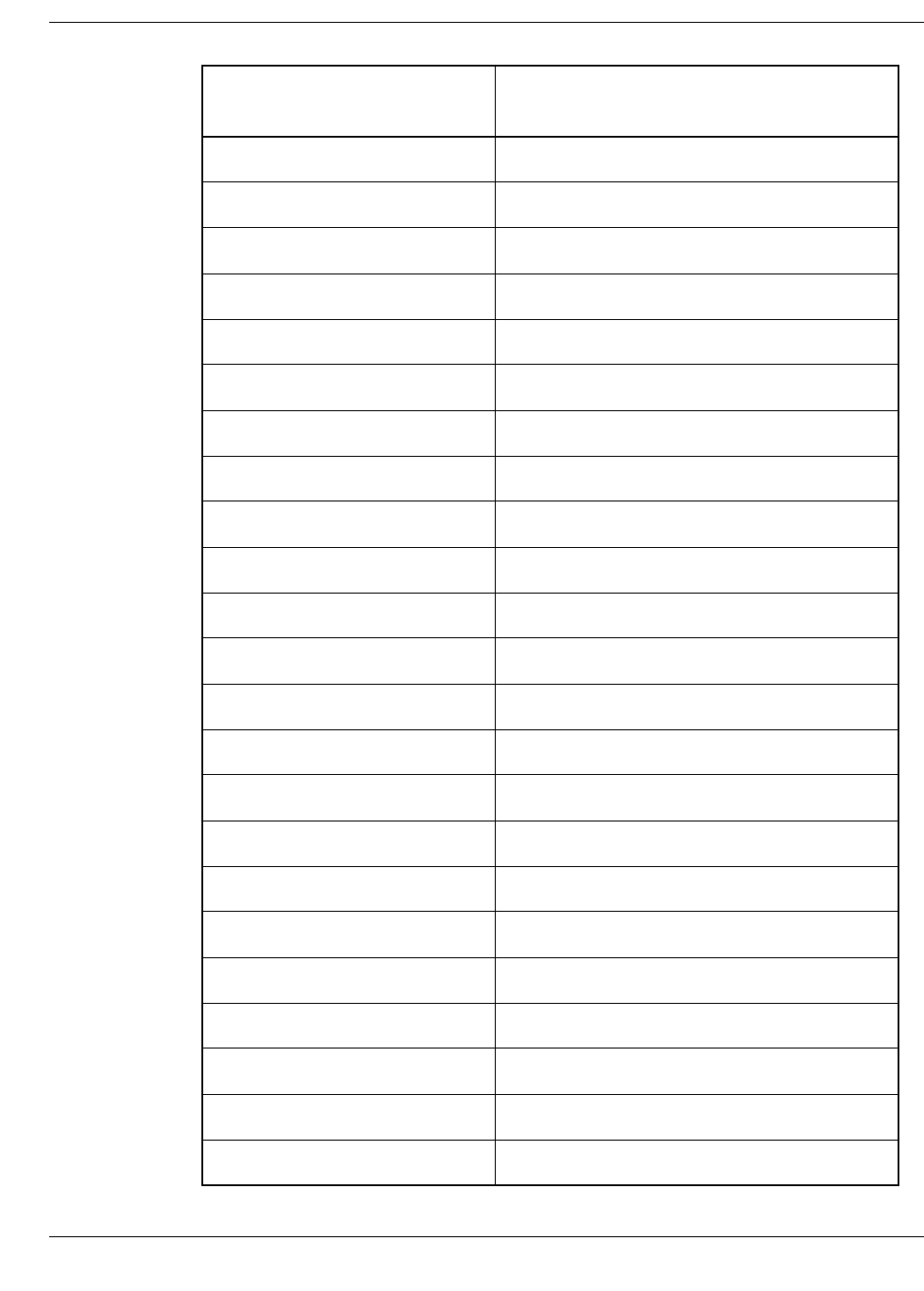
26-10
Transaction Code File (TCF)
May-2016 R6.0 Post v10 BA-AE000-03
ACI Worldwide, Inc.
9A PRVT SCHED PMNT
9B PRVT SCHED PMNT FUTR
9D PRVT SCHED XFER FUTR
9F PRVT SCHED PMNT DEL
9G PRVT SCHED XFER DEL
9H PRVT SCHED PMNT CHNG
9J PRVT SCHED XFER CHNG
9K PRVT CUST ADD
9L PRVT CUST INFO INQ
9M PRVT CUST INFO CHNG
9P PRVT CUST VNDR DEACTVT
9Q PRVT CUST VNDR CHNG
9R PRVT MSTR VNDR INQ
9S PRVT MSTR VNDR ADD
9T PRVT CUST VNDR MSTR LIST
9W PRVT MSG TO BNK
9X PRVT HIST INQ
A1 PRVT LOG ONLY 1
A2 PRVT LOG ONLY 2
A3 PRVT LOG ONLY 3
A4 PRVT LOG ONLY 4
A5 PRVT ADJ GOODS SVC
A6 PRVT ADJ RETURN
TRANSACTION CODE TRANSACTION CODE
DESCRIPTION
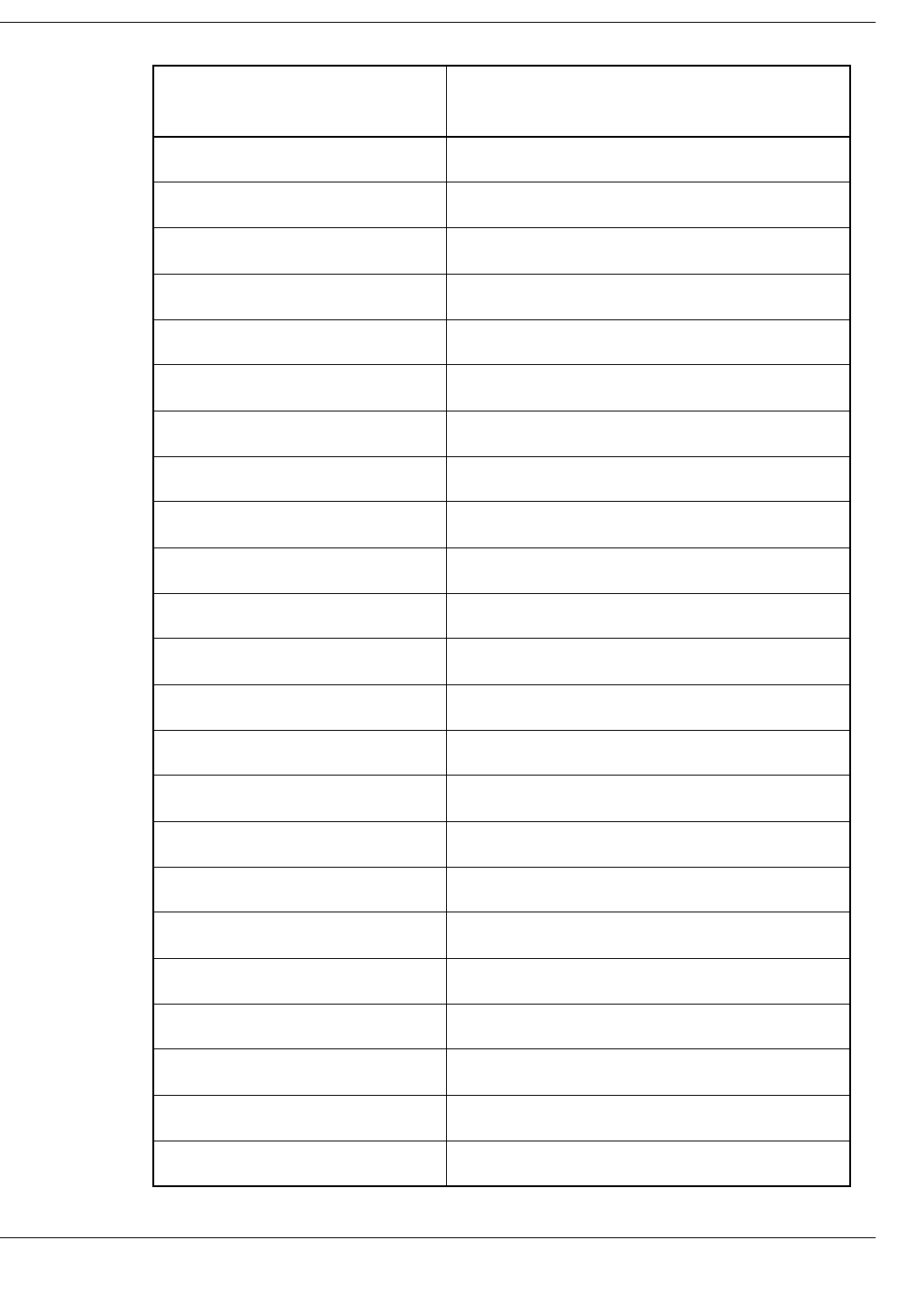
Default TCF Records
26-11
May-2016 R6.0 Post v10 BA-AE000-03
ACI Worldwide, Inc.
A7 PRVT ADJ CASH
A8 PRVT ADJ CB
A9 PRVT TERM TTL BATCH
AA PRVT TERM TTL SHIFT
AB PRVT TERM TTL DAY
AC PRVT TERM NETWK TTL CUR
AD PRVT TERM NETWK TTL PREV
AE PRVT TERM TTL CRD TYP
AF PRVT MAIL RQST
AG PRVT MAIL SEND PASSTHRU
AH PRVT MAIL SEND STORED
AJ PRVT INQ CLERK TTL
AK PRVT ADMIN
B0 PRVT INQ ACCT LIST
B1 PRVT INQ BNK
B2 PRVT INQ BKBR
B3 PRVT SCHED PMNT CANCEL
B4 PRVT INQ MISC RQST
B5 PRVT CUST ACCT ADD
B6 PRVT CUST ACCT ACTVT
B7 PRVT CUST ACCT DEACTVT
B8 PRVT CUST ACCT DEL
BB PRVT CUST ACTVT
TRANSACTION CODE TRANSACTION CODE
DESCRIPTION

26-12
Transaction Code File (TCF)
May-2016 R6.0 Post v10 BA-AE000-03
ACI Worldwide, Inc.
BD PRVT CUST VNDR ACTVT
BE PRVT CUST VNDR MASK INQ
BF PRVT CUST VRFY
BG PRVT CUST SELCT
ZZ NONE
TRANSACTION CODE TRANSACTION CODE
DESCRIPTION

27-1
May-2016 R6.0 Post v10 BA-AE000-03
ACI Worldwide, Inc.
27: Token File (TKN)
BASE24 products use the Token File (TKN) to determine which of the data tokens
carried in internal messages are logged to the various log files, extracted by the
Super Extract process, or sent in ISO external messages via ISO Host Interface and
ISO BASE24 Interchange (BIC) Interface processes. BASE24 products also use
the TKN to determine the arrangement of data tokens being extracted or sent.
The log files that can be configured using the TKN are as follows:
?BASE24-atm Transaction Log File (TLF)
?BASE24-pos Transaction Log File (PTLF)
?BASE24-teller Transaction Log File (TTLF)
?Interchange Log File (ILF)
?ITS Transaction Log File (ITLF)
While the ISO BIC Interface is the only interchange interface that uses the TKN to
configure the tokens to be included in the messages it sends, all interchange
interfaces use the TKN to configure tokens that are logged to the ILF.
The key to records in the TKN is a combination of the values in all the fields on
screen 1: FUNCTION TYPE, PRODUCT ID, TOKEN GROUP, TYPE, and
SUBTYPE.
The following screens are used to access records in the TKN:
?Screen 1 contains information needed to select the appropriate TKN record.
?Screen 2 contains tokens logged to the TLF, PTLF, TTLF, ILF, or ITLF.
?Screen 3 contains tokens extracted by the Super Extract process.
?Screen 4 contains tokens sent in ISO external messages by ISO Host Interface
and ISO BIC Interface processes.
Note: This section provides function key descriptions, screen illustrations, and
basic field definitions for the TKN. However, it does not provide the detailed
information necessary for configuring the TKN properly. Refer to the BASE24

27-2
Token File (TKN)
May-2016 R6.0 Post v10 BA-AE000-03
ACI Worldwide, Inc.
Tokens Manual for the procedures necessary for configuring the TKN. The
BASE24 Tokens Manual also provides the keys to TKN records defined by
BASE24.

Screen 1
27-3
May-2016 R6.0 Post v10 BA-AE000-03
ACI Worldwide, Inc.
Screen 1
TKN screen 1 contains the information necessary to select the appropriate TKN
record and display screen 2, 3, or 4. TKN screen 1 is shown below, followed by
descriptions of its fields.
TOKEN GROUP — The identifier used to link this TKN record to the BASE24
processes that are using it. The value in this field can be matched with values in
the following fields:
?INTERCHANGE FIID on ICF or ICFE screen 1 for logging to the ILF. (A
value of **** in the TOKEN GROUP field is used for logging to the TLF,
PTLF, TTLF, and ITLF because no link is necessary.)
?SWITCH FIID on ECF screen 1 for extracting the ILF.
?GROUP NAME on ECF screen 5 for extracting the TLF.
?GROUP NAME on ECF screen 7 for extracting the PTLF.
?GROUP NAME on ECF screen 9 for extracting the TTLF.
?GROUP NAME on ECF screen 23 for extracting the ITLF.
BASE24-BASE TOKEN FILE LLLL YY/MM/DD HH:MM 01 OF 04
TOKEN GROUP: **** PRODUCT ID:
TYPE: ** SUBTYPE: **
FUNCTION TYPE: (0) - LOG CONFIGURATION RECORD
(1) - EXTRACT CONFIGURATION RECORD
(2) - ISO MESSAGE CONFIGURATION RECORD
*********************************** BASE24 ***********************************
FILE DESTINATION: NEW LOGICAL NETWORK ID:
F12-HELP

27-4
Token File (TKN)
May-2016 R6.0 Post v10 BA-AE000-03
ACI Worldwide, Inc.
?INTERCHANGE FIID on ICF or ICFE screen 1 for ISO BIC Interface
external messages.
?TOKEN GROUP on HCF screen 1 for ISO Host Interface external messages.
This field can also contain **** as a wild card that matches with any value in the
above fields.
Note: The value ALLb is not valid in the TOKEN GROUP field. Use a value of
**** in the TOKEN GROUP field when a value of ALLb is used in one of the
ECF fields mentioned on the prior page.
PRODUCT ID — A code identifying the BASE24 product to which this record
applies. Valid values are as follows:
Values in this field, the TYPE field, and the SUBTYPE field are used together to
uniquely identify the record being extracted or the message being logged or sent.
Refer to the BASE24 Tokens Manual for the value combinations defined by the
BASE24 product.
TYPE — A code identifying the type of record to which this TKN record applies.
Valid values are 00 to ZZ and ** (wild card).
Field Length: 4 alphanumeric characters
Required Field: Yes
Default Value: ****
Data Name: TKN.PRIKEY.TKN-GRP
01 = BASE24-atm product
02 = BASE24-pos product
03 = BASE24-teller product
14 = BASE24-telebanking product
Field Length: 2 numeric characters
Required Field: Yes
Default Value: No default value
Data Name: TKN.PRIKEY.PROD-ID

Screen 1
27-5
May-2016 R6.0 Post v10 BA-AE000-03
ACI Worldwide, Inc.
Values in the PRODUCT ID field, this field, and the SUBTYPE field are used
together to uniquely identify the record being extracted or the message being
logged or sent. Refer to the BASE24 Tokens Manual for the value combinations
defined by the BASE24 product.
SUBTYPE — A code identifying the subtype of the record to which this TKN
record applies. Valid values are 00 to ZZ and ** (wild card).
Values in the PRODUCT ID field, the TYPE field, and this field are used together
to uniquely identify the record being extracted or the message being logged or
sent. Refer to the BASE24 Tokens Manual for the value combinations defined by
the BASE24 product.
FUNCTION TYPE — A code identifying the type of TKN record. Valid values
are as follows:
Field Length: 2 alphanumeric characters
Required Field: Yes
Default Value: **
Data Name: TKN.PRIKEY.TYP
Field Length: 2 alphanumeric characters
Required Field: Yes
Default Value: **
Data Name: TKN.PRIKEY.SUB-TYP
0 = Log configuration record (TKN screen 2)
1 = Extract configuration record (TKN screen 3)
2 = ISO message configuration record (TKN screen 4)
Field Length: 1 numeric character
Required Field: Yes
Default Value: No default value
Data Name: TKN.PRIKEY.FUNC-TYP
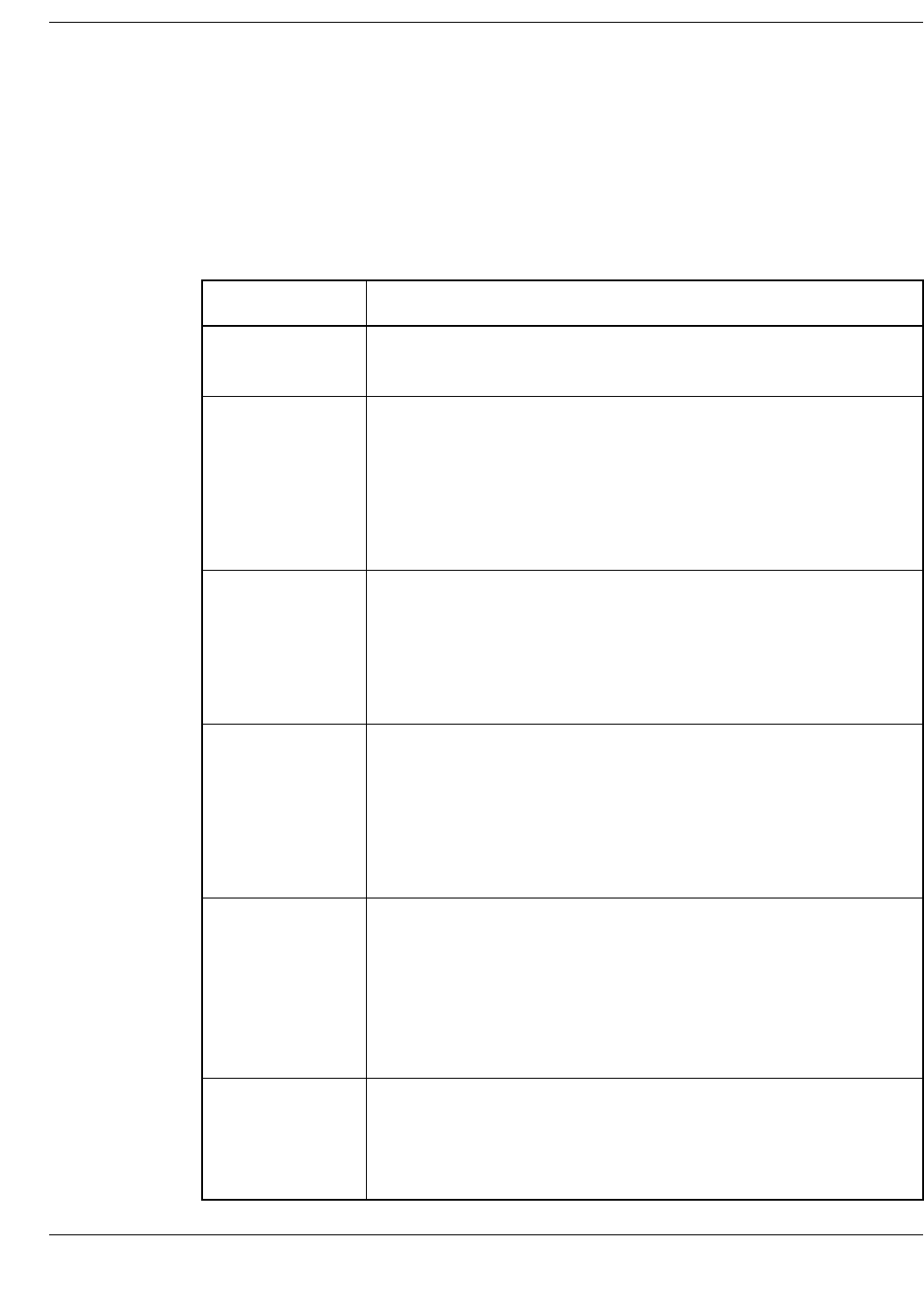
27-6
Token File (TKN)
May-2016 R6.0 Post v10 BA-AE000-03
ACI Worldwide, Inc.
Screen 2 Function Keys
The use of six function keys TKN screen 2 varies from the standard function keys
explained in section 1. The use of these function keys is explained below.
The first column of information below shows the BASE24 keys. The second
column describes the functions that can be accomplished with these keys.
Key Description
F3 Add Record — Adds a record to the file in which the user is
working. The record added must be unique within the file.
Shift-F6 Display Next Page of this Screen — Displays the next
group of 24 token IDs on the current screen number. Each
TKN record can contain up to 360 tokens, so a screen can
have up to 15 pages. The current page number (virtual
screen number) and the total number of pages containing
tokens are displayed at the bottom of the screen.
F7 Display Defaults — Displays all of the tokens that are
currently defined for the combination of values in the
PRODUCT ID, TYPE, and SUBTYPE fields.
This key sets the flag in the TRAN LOG field for each token
to the value Y (yes, include the token in the log file record).
Shift-F7 Display Previous Page of this Screen — Displays previous
group of 24 token IDs on the current screen number. Each
TKN record can contain up to 360 tokens, so a screen can
have up to 15 pages. The current page number (virtual
screen number) and the total number of pages containing
tokens are displayed at the bottom of the screen.
F14 Sort and Display Tokens — Sorts and displays tokens in an
order based on the screen number.
This key sorts tokens to be logged, followed by tokens that
are not to be logged, based on values in the TRAN LOG
field. Tokens within each group are arranged in ascending
order based on the value in the TKN ID field.
F15 Sort and Display Tokens — Sorts and displays tokens in
ascending order based on the value in the TKN ID field.
This key rearranges the tokens on all pages of the screen that
is currently displayed.

Screen 2
27-7
May-2016 R6.0 Post v10 BA-AE000-03
ACI Worldwide, Inc.
Screen 2
TKN screen 2 contains the information that specifies which tokens are written to a
transaction log file. The information on this screen does not specify the order that
the selected tokens are written to the transaction log file. The order that the
selected tokens appear within the internal message specifies the order in which
they are written to the transaction log file. TKN screen 2 is shown below, followed
by descriptions of its fields.
TKN ID — The code that uniquely identifies each token.
The value in this field cannot be modified. All tokens defined for this combination
of values in the PRODUCT ID, TYPE, and SUBTYPE fields are displayed. The
order in which tokens are displayed is controlled by the value in the TRAN LOG
field of each token combined with the function key pressed to display this screen.
Refer to the “Screen 2 Function Keys” discussion on the previous pages for more
information.
Field Length: System protected
Data Name: TKN.TKN-ID
BASE24-BASE TOKEN FILE LLLL YY/MM/DD HH:MM 02 OF 04
TOKEN GROUP: **** PRODUCT ID: (***)
TYPE: ** (DEFAULT) SUBTYPE: ** (DEFAULT)
TKN TRAN TOKEN TKN TRAN TOKEN
ID LOG DESCRIPTION ID LOG DESCRIPTION
__ _ _________________________ __ _ _________________________
__ _ _________________________ __ _ _________________________
__ _ _________________________ __ _ _________________________
__ _ _________________________ __ _ _________________________
__ _ _________________________ __ _ _________________________
__ _ _________________________ __ _ _________________________
__ _ _________________________ __ _ _________________________
__ _ _________________________ __ _ _________________________
__ _ _________________________ __ _ _________________________
__ _ _________________________ __ _ _________________________
__ _ _________________________ __ _ _________________________
__ _ _________________________ __ _ _________________________
*********************************** BASE24 ***********************************
FILE DESTINATION: NEW LOGICAL NETWORK ID:
F7-DEFAULTS F12-HELP F14-SORT IN LOG ORDER F15-SORT IN TOKEN ID ORDER
VIRTUAL SCREEN 01 OF 01 OF TOKEN IDS FOR THIS RECORD

27-8
Token File (TKN)
May-2016 R6.0 Post v10 BA-AE000-03
ACI Worldwide, Inc.
TRAN LOG — A code for each token specifying whether it should be logged to
the appropriate log file (TLF, PTLF, TTLF, ILF, or ITLF). Valid values are as
follows:
TOKEN DESCRIPTION — A description for each token. Each token has a
unique description in the TKN-TABLE from COBNAMES.
Y = Yes, log this token to the log file.
N = No, do not log this token to the log file.
Field Length: 1 alphabetic character
Occurs: 24 times
Required Field: Yes
Default Value: Y
Data Name: Not applicable
Field Length: System protected
Data Name: Not applicable
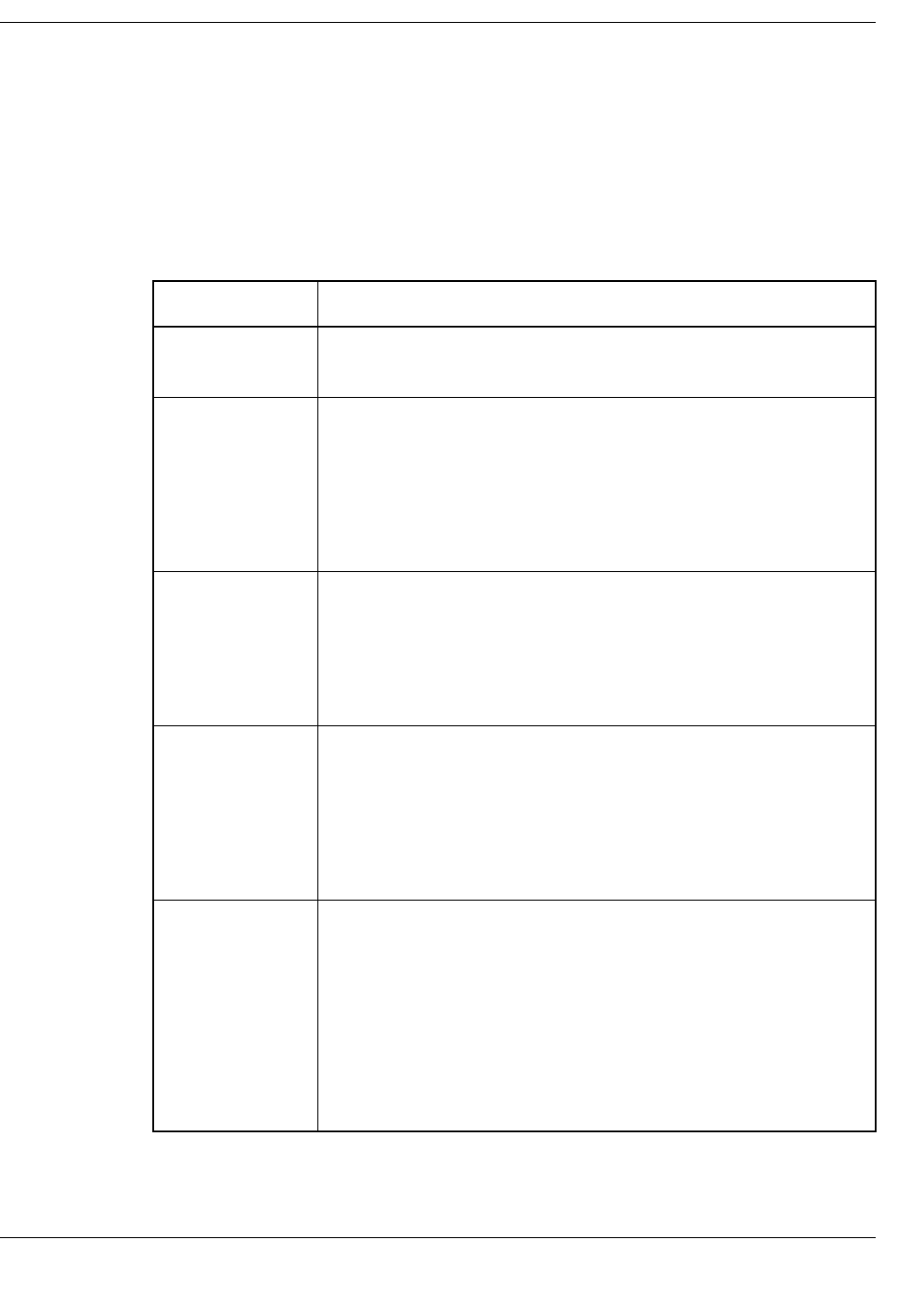
Screen 3 Function Keys
27-9
May-2016 R6.0 Post v10 BA-AE000-03
ACI Worldwide, Inc.
Screen 3 Function Keys
The use of six function keys on TKN screen 3 varies from the standard function
keys explained in section 1. The use of these function keys is explained below.
The first column of information below shows the BASE24 keys. The second
column describes the functions that can be accomplished with these keys.
Key Description
F3 Add Record — Adds a record to the file in which the user is
working. The record added must be unique within the file.
Shift-F6 Display Next Page of this Screen — Displays the next
group of 24 token IDs on the current screen number. Each
TKN record can contain up to 360 tokens, so a screen can
have up to 15 pages. The current page number (virtual
screen number) and the total number of pages containing
tokens are displayed at the bottom of the screen.
F7 Display Defaults — Displays all of the tokens that are
currently defined for the combination of values in the
PRODUCT ID, TYPE, and SUBTYPE fields.
This key sets the EXTR ORDER field for each token to a
blank (do not extract token).
Shift-F7 Display Previous Page of this Screen — Displays previous
group of 24 token IDs on the current screen number. Each
TKN record can contain up to 360 tokens, so a screen can
have up to 15 pages. The current page number (virtual
screen number) and the total number of pages containing
tokens are displayed at the bottom of the screen.
F14 Sort and Display Tokens — Sorts and displays tokens in an
order based on the screen number.
This key sorts tokens with a value in the EXTR ORDER
field, followed by tokens without a value in the EXTR
ORDER field. Tokens in the two groups are arranged in
ascending order, the first group based on the value in the
EXTR ORDER field and the second group based on the
value in the TKN ID field.

27-10
Token File (TKN)
May-2016 R6.0 Post v10 BA-AE000-03
ACI Worldwide, Inc.
F15 Sort and Display Tokens — Sorts and displays tokens in
ascending order based on the value in the TKN ID field.
This key rearranges the tokens on all pages of the screen that
is currently displayed.
Key Description

Screen 3
27-11
May-2016 R6.0 Post v10 BA-AE000-03
ACI Worldwide, Inc.
Screen 3
TKN screen 3 contains the information that specifies which tokens are extracted
by the Super Extract process and how the tokens are arranged within each extract
record. TKN screen 3 is shown below, followed by descriptions of its fields.
ORDER FLAG — A code specifying whether values in the EXTR ORDER fields
on this screen are used when extracting tokens. Valid values are as follows:
Y = Yes, extract the tokens in the order specified by the values in the EXTR
ORDER fields on this screen. When this field is set to the value Y, a token
must have a value greater than 0 in its EXTR ORDER field or it is not
extracted.
N = No, extract all tokens in the order in which they appear in the record being
extracted. When this field is set to the value N, the EXTR ORDER fields
are not used.
BASE24-BASE TOKEN FILE LLLL YY/MM/DD HH:MM 03 OF 04
TOKEN GROUP: **** PRODUCT ID: (***)
TYPE: ** (DEFAULT) SUBTYPE: ** (DEFAULT)
ORDER FLAG: Y (Y/N)
TKN EXTR TOKEN TKN EXTR TOKEN
ID ORDER DESCRIPTION ID ORDER DESCRIPTION
__ ____ _________________________ __ ____ _________________________
__ ____ _________________________ __ ____ _________________________
__ ____ _________________________ __ ____ _________________________
__ ____ _________________________ __ ____ _________________________
__ ____ _________________________ __ ____ _________________________
__ ____ _________________________ __ ____ _________________________
__ ____ _________________________ __ ____ _________________________
__ ____ _________________________ __ ____ _________________________
__ ____ _________________________ __ ____ _________________________
__ ____ _________________________ __ ____ _________________________
__ ____ _________________________ __ ____ _________________________
__ ____ _________________________ __ ____ _________________________
*********************************** BASE24 ***********************************
FILE DESTINATION: NEW LOGICAL NETWORK ID:
F7-DEFAULTS F12-HELP F14-SORT IN EXTR ORDER F15-SORT IN TOKEN ID ORDER
VIRTUAL SCREEN 01 OF 01 OF TOKEN IDS FOR THIS RECORD

27-12
Token File (TKN)
May-2016 R6.0 Post v10 BA-AE000-03
ACI Worldwide, Inc.
Note: If this field is set to the value N and the ECF record that is controlling the
extract has a value of 00 (fixed format) in the FORMAT field for the file being
extracted, the order of the tokens in the TKN ID fields on this screen controls the
order in which the tokens appear in the extract record.
TKN ID — The code that uniquely identifies each token.
The value in this field cannot be modified. All tokens defined for the combination
of values in the PRODUCT ID, TYPE, and SUBTYPE fields are displayed. The
order in which tokens are displayed is controlled by the value in the EXTR
ORDER field of each token and the value in the ORDER FLAG field, combined
with the function key pressed to display this screen. Refer to the “Screen 3
Function Keys” discussion on the previous pages for more information.
EXTR ORDER — A number identifying the position in which each token should
appear in the extract record when the ORDER FLAG is set to the value Y.
Each token being included in the extract record must be assigned a number in this
field. Entries in these fields for the tokens being extracted must be assigned
consecutively, beginning with 1. Tokens without an entry in this field are not
extracted when the ORDER FLAG is set to the value Y. Valid values are 1
through the number of tokens defined for the combination of values in the
PRODUCT ID, TYPE, and SUBTYPE fields.
BASE24 products use entries in these fields to arrange TKN ID values within the
TKN record. The EXTR ORDER field value itself is not stored.
If the ORDER FLAG field contains the value Y, the entries in these fields specify
the tokens being extracted and the order in which the tokens should appear within
the extract record.
Field Length: 1 alphabetic character
Required Field: Yes
Default Value: Y
Data Name: TKN.ORDR-FLG
Field Length: System protected
Data Name: TKN.TKN-ID

Screen 3
27-13
May-2016 R6.0 Post v10 BA-AE000-03
ACI Worldwide, Inc.
If the ORDER FLAG field contains the value N, the entries in these fields have no
effect on the tokens extracted or the order in which they appear within the extract
record.
TOKEN DESCRIPTION — A description for each token. Each token has a
unique description in the TKN-TABLE from COBNAMES.
Field Length: 1–4 numeric characters
Occurs: 24 times
Required Field: No
Default Value: No default value
Data Name: Not applicable
Field Length: System protected
Data Name: Not applicable
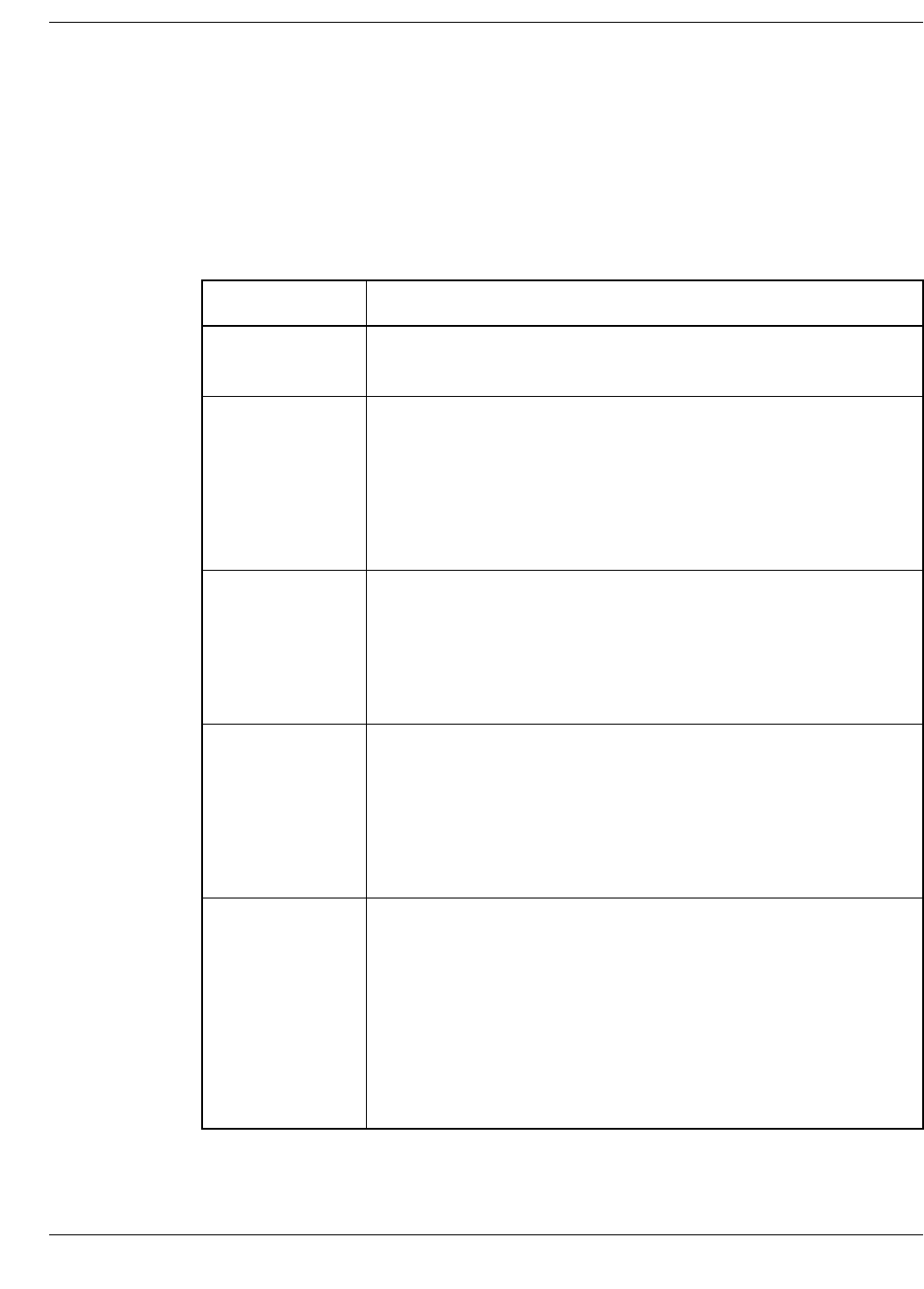
27-14
Token File (TKN)
May-2016 R6.0 Post v10 BA-AE000-03
ACI Worldwide, Inc.
Screen 4 Function Keys
The use of six function keys varies from the standard function keys explained in
section 1. The use of these function keys is explained below.
The first column of information below shows the BASE24 keys. The second
column describes the functions that can be accomplished with these keys.
Key Description
F3 Add Record — Adds a record to the file in which the user is
working. The record added must be unique within the file.
Shift-F6 Display Next Page of this Screen — Displays next group of
24 token IDs on the current screen number. Each TKN
record can contain up to 360 tokens, so a screen can have up
to 15 pages. The current page number (virtual screen
number) and the total number of pages containing tokens are
displayed at the bottom of the screen.
F7 Display Defaults — Displays all of the tokens that are
currently defined for the combination of values in the
PRODUCT ID, TYPE, and SUBTYPE fields.
This key sets the SEND ORDER field for each token to a
blank (do not send token).
Shift-F7 Display Previous Page of this Screen — Displays previous
group of 24 token IDs on the current screen number. Each
TKN record can contain up to 360 tokens, so a screen can
have up to 15 pages. The current page number (virtual
screen number) and the total number of pages containing
tokens are displayed at the bottom of the screen.
F14 Sort and Display Tokens — Sorts and displays tokens in an
order based on the screen number.
This key sorts tokens with a value in the SEND ORDER
field, followed by tokens without a value in the SEND
ORDER field. Tokens in the two groups are arranged in
ascending order, the first group based on the value in the
SEND ORDER field and the second group based on the
value in the TKN ID field.

Screen 4 Function Keys
27-15
May-2016 R6.0 Post v10 BA-AE000-03
ACI Worldwide, Inc.
F15 Sort and Display Tokens — Sorts and displays tokens in
ascending order based on the value in the TKN ID field.
This key rearranges the tokens on all pages of the screen that
is currently displayed.
Key Description

27-16
Token File (TKN)
May-2016 R6.0 Post v10 BA-AE000-03
ACI Worldwide, Inc.
Screen 4
TKN screen 4 contains the information that specifies which tokens are carried in
an ISO message sent by a Host Interface or BIC Interface process and how the
tokens are arranged within each message. TKN screen 4 is shown below, followed
by descriptions of its fields.
ORDER FLAG — A code specifying whether values in the SEND ORDER fields
on this screen are used when sending tokens. Valid values are as follows:
Y = Yes, send the tokens in the order specified by the values in the SEND
ORDER fields on this screen. When this field is set to the value Y, a token
must have a value greater than 0 in its SEND ORDER field or it is not sent.
N = No, send all tokens in the order in which they appear in the record being
sent. When this field is set to the value N, the SEND ORDER fields are not
used.
BASE24-BASE TOKEN FILE LLLL YY/MM/DD HH:MM 04 OF 04
TOKEN GROUP: **** PRODUCT ID: 01 (ATM)
TYPE: ** (DEFAULT) SUBTYPE: ** (DEFAULT)
ORDER FLAG: Y (Y/N)
TKN SEND TOKEN TKN SEND TOKEN
ID ORDER DESCRIPTION ID ORDER DESCRIPTION
__ ____ _________________________ __ ____ _________________________
__ ____ _________________________ __ ____ _________________________
__ ____ _________________________ __ ____ _________________________
__ ____ _________________________ __ ____ _________________________
__ ____ _________________________ __ ____ _________________________
__ ____ _________________________ __ ____ _________________________
__ ____ _________________________ __ ____ _________________________
__ ____ _________________________ __ ____ _________________________
__ ____ _________________________ __ ____ _________________________
__ ____ _________________________ __ ____ _________________________
__ ____ _________________________ __ ____ _________________________
__ ____ _________________________ __ ____ _________________________
*********************************** BASE24 ***********************************
FILE DESTINATION: NEW LOGICAL NETWORK ID:
F7-DEFAULTS F12-HELP F14-SORT IN SEND ORDER F15-SORT IN TOKEN ID ORDER
VIRTUAL SCREEN 01 OF 01 OF TOKEN IDS FOR THIS RECORD

Screen 4
27-17
May-2016 R6.0 Post v10 BA-AE000-03
ACI Worldwide, Inc.
Note: If this field is set to the value N and the HCF record that is controlling the
ISO external message has a value of 00 (fixed format) in the MESSAGE
FORMAT field, the order of the tokens in the TKN ID fields on this screen
controls the order in which the tokens appear in the external message.
TKN ID — The code that uniquely identifies each token.
The value in this field cannot be modified. All tokens defined for the combination
of values in the PRODUCT ID, TYPE, and SUBTYPE fields are displayed. The
order in which tokens are displayed is controlled by the value in the SEND
ORDER field of each token and the value in the ORDER FLAG field, combined
with the function key pressed to display this screen. Refer to the “Screen 4
Function Keys” discussion on the previous pages for more information.
SEND ORDER — A number identifying the position in which each token should
appear in the external message when the ORDER FLAG is set to the value Y.
Each token being included in the external message must be assigned a number in
this field. Entries in these fields for the tokens being sent must be assigned
consecutively, beginning with 1. Tokens without an entry in this field are not sent
when the ORDER FLAG is set to the value Y. Valid values are 1 through the
number of tokens defined for the combination of values in the PRODUCT ID,
TYPE, and SUBTYPE fields.
BASE24 products use entries in these fields to arrange TKN ID values within the
TKN record. The SEND ORDER field value itself is not stored.
If the ORDER FLAG field contains the value Y, the entries in these fields specify
the tokens being sent and the order in which the tokens appear within the external
message.
Field Length: 1 alphabetic character
Required Field: Yes
Default Value: Y
Data Name: TKN.ORDR-FLG
Field Length: System protected
Data Name: TKN.TKN-ID

27-18
Token File (TKN)
May-2016 R6.0 Post v10 BA-AE000-03
ACI Worldwide, Inc.
If the ORDER FLAG field contains the value N, the entries in these fields have no
effect on the tokens sent or the order in which they appear within the external
message.
TOKEN DESCRIPTION — A description for each token. Each token has a
unique description in the TKN-TABLE from COBNAMES.
Field Length: 1–4 numeric characters
Occurs: 24 times
Required Field: No
Default Value: No default value
Data Name: Not applicable
Field Length: System protected
Data Name: Not applicable

28-1
May-2016 R6.0 Post v10 BA-AE000-03
ACI Worldwide, Inc.
28: Transaction Code/Subtype
Relationship File (TSRF)
The Transaction Code/Subtype Relationship File (TSRF) contains one record for
each transaction subtype supported in the network. The file is used to assign
alphanumeric descriptions to transaction subtypes and associate each transaction
subtype to one or more ISO transaction codes.
Transaction subtypes enable an institution to distinguish between types of
transactions that possess identical transaction codes. For example, transaction
subtypes enable an institution to configure multiple rate structures for a single
transaction code.
Surcharges can be assessed according to both transaction type and subtype;
however, BASE24 does not support the origination of transaction subtypes from a
device for surcharging. BASE24 users that choose to implement transaction
subtype surcharge assessments are responsible for modifications to the Device
Handler process necessary for interpreting the native message contents and
creating the Transaction Subtype token.
BASE24 supports the origination of transaction subtypes from a device handler for
mobile top-up transactions. BASE24 users that choose to implement mobile top-
up transactions are responsible for modifications to the XXXXNAMS file which is
used by the device handler when creating the Transaction Subtype token. The
XXXXNAMS file resides on the subvolume specific to the mobile top-up product;
i.e., <$vol>.AT60T100.T100NAMS for the Dibbled 10XX ATM.
Note: The processing codes used in this file are based on the ISO 8583:1993
standard, Bank Card Originated Messages—Interchange Message
Specifications—Content for Financial Transactions. The internal BASE24
processing codes used on other BASE24 screens should not be used here.
The primary key into the TSRF is the BASE24 transaction subtype value.

28-2
Transaction Code/Subtype Relationship File (TSRF)
May-2016 R6.0 Post v10 BA-AE000-03
ACI Worldwide, Inc.
The following screens are used to access records in the TSRF:
•Screen 1 enables you to read, add, delete, and update individual TSRF
records.
•Screen 2 is a display screen that enables you to view transaction codes
defined in the TCF.
The Transaction Code File (TCF) defines descriptions for the ISO transaction
codes displayed in the TRANSACTION CODE field on the TSRF screens.

Transaction Subtypes
28-3
May-2016 R6.0 Post v10 BA-AE000-03
ACI Worldwide, Inc.
Transaction Subtypes
A transaction subtype is a four-character value used to indicate that the processing
associated with a particular transaction code should be altered. Typically a
transaction is processed based on its transaction code, among other factors. For
some transactions, characteristics exist which indicate that the transaction should
be processed differently than another transaction with the same transaction code.
In these cases, the transaction subtype is used to further define how a transaction
should be processed.
Transaction subtypes must be unique and fall within the ranges defined below:
Transaction subtypes are carried in the Transaction Subtype Token (token ID BM).
For more information on the Transaction Subtype Token, refer to the BASE24
Tokens Manual.
Transaction subtypes that are reserved and the products that use them are listed
below. Some transaction subtypes are supported in the BASE24 application code,
and therefore a record is not required in the TSRF to process the corresponding
transactions. The following table also identifies whether a record is required in the
TSRF to support the transaction subtype.
A000–AZZZ = BASE24-atm product
B000–BZZZ = BASE24 Base product
C000–CZZZ = BASE24-pos product
G000–GZZZ = ACI Card Management product
T000–TZZZ = BASE24-teller product
R000–RZZZ = CSM
P000–PZZZ = CSM
Q000–QZZZ = CSM
N000–NZZZ = New Initiatives
U000–UZZZ = Americas channel
V000–VZZZ = EMEA channel
W000–WZZZ = Asia/Pacific channel
X000–XZZZ = Distributors
Y000–YZZZ = Distributors
Z000–ZZZZ = Distributors
Subtype Transaction Subtype Description TSRF
Record Product
B000 Payment From Third Party Base
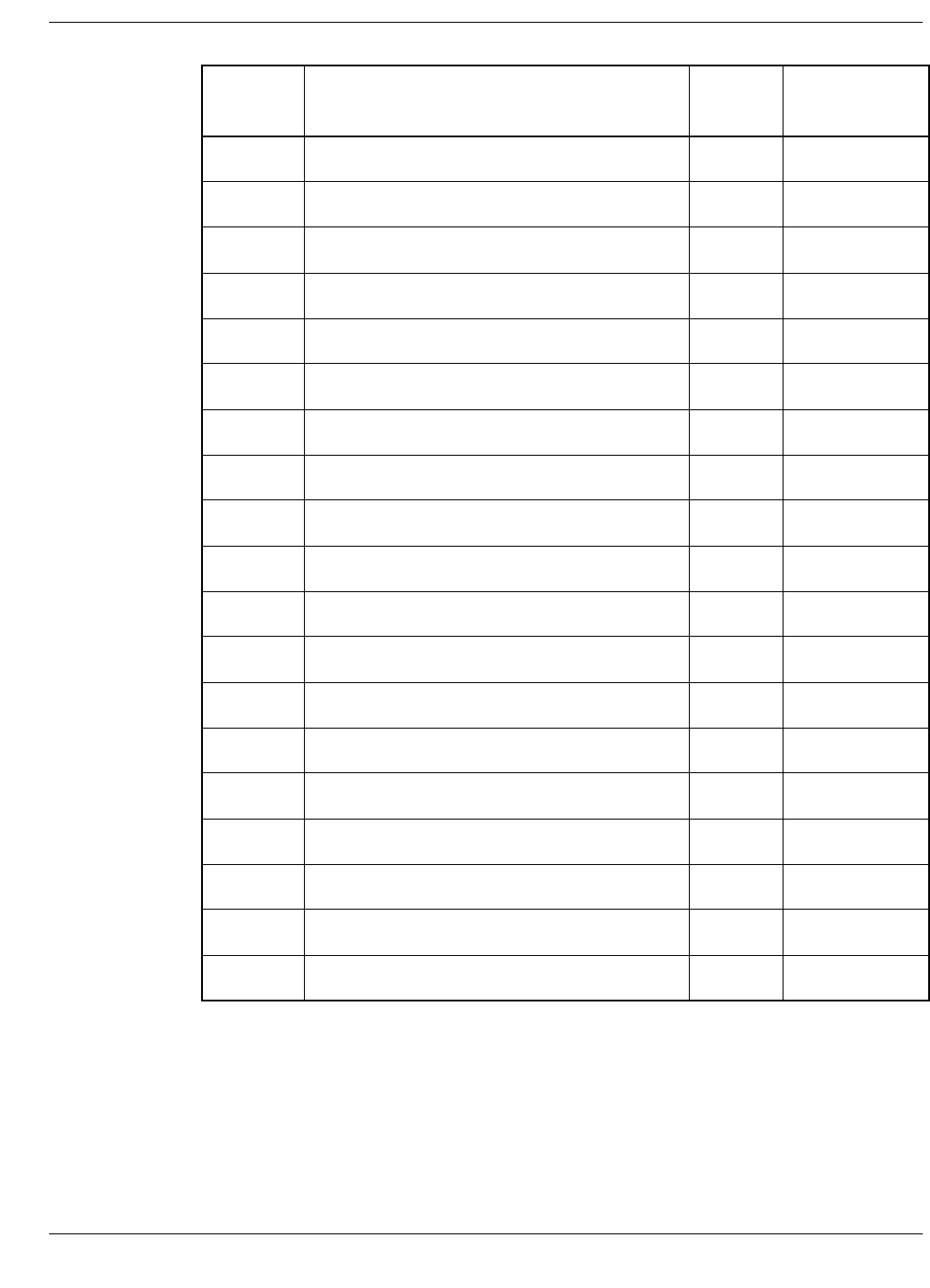
28-4
Transaction Code/Subtype Relationship File (TSRF)
May-2016 R6.0 Post v10 BA-AE000-03
ACI Worldwide, Inc.
B001 Payment To Third Party Base
BBT0 BCGI Top-Up Yes Base
ABL0 Electronic Bill Payment Payee List BASE24-atm
ABP0 Electronic Bill Payment BASE24-atm
ACR0 Enhanced Card Review BASE24-atm
AER0 Exchange Rate Notification BASE24-atm
AIS0 IFX Interim Statement BASE24-atm
AMA0 Multiple Account With Balances Inquiry BASE24-atm
API0 Preferred Transaction Inquiry BASE24-atm
APS0 Preferred Transaction Set-Up BASE24-atm
APT0 Preferred Transaction BASE24-atm
APU0 Passbook Update BASE24-atm
C000 Account Funding Transaction BASE24-pos
C001 Healthcare/Transit Auto-Substantiation BASE24-pos
C002 Healthcare Eligibility Inquiry BASE24-pos
C003 Dormancy Transaction BASE24-pos
C004 Escheatment Transaction BASE24-pos
C013 Non Quasi-Cash Gambling Transaction BASE24-pos
CI00 Canadian Idebit BASE24-pos
Subtype Transaction Subtype Description TSRF
Record Product
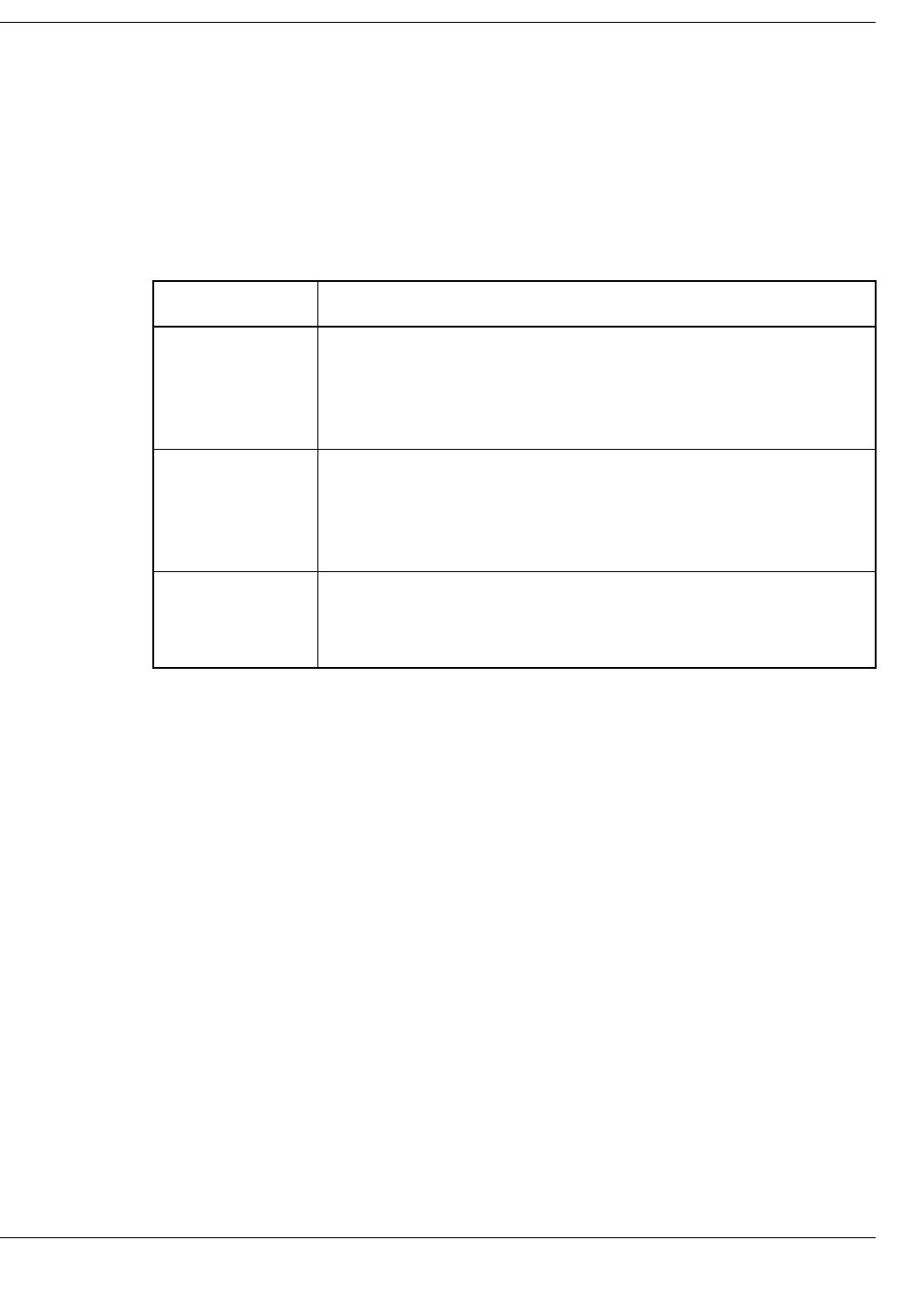
Screen 1 Function Keys
28-5
May-2016 R6.0 Post v10 BA-AE000-03
ACI Worldwide, Inc.
Screen 1 Function Keys
The use of three function keys on TSRF screen 1 varies from the standard function
keys explained in section 1. The use of these function keys is explained below.
The first column shows the BASE24 keys. The second column describes the
functions that can be accomplished with these keys on TSRF screen 1.
Key Description
Shift-F2 Scroll Down — Displays the next group of 24 entries in the
TSRF transaction code table on the current screen. If more
than 24 entries are present, multiple pages are used to display
the additional entries.
Shift-F3 Scroll Up — Displays the previous group of 24 entries in the
TSRF transaction code table on the current screen. If more
than 24 entries are present, multiple virtual screens are used
to display the additional entries.
Shift-F7 Display Transaction Codes — Displays the available
transaction codes that are defined on the Transaction Code
File (TCF).

28-6
Transaction Code/Subtype Relationship File (TSRF)
May-2016 R6.0 Post v10 BA-AE000-03
ACI Worldwide, Inc.
Screen 1
TSRF screen 1 displays the transaction subtype and description and the ISO
transaction codes to which the subtype is associated. From this screen, you can
define transaction subtypes, access and alter existing transaction codes, and delete
transaction subtype definitions. TSRF screen 1 is shown below, followed by
descriptions of its fields.
TRANSACTION SUBTYPE — A code identifying the subtype for a transaction.
Field Length 4 alphanumeric characters
Required Field: Yes, except when initially accessing the screen or
performing a read next operation.
Default Value: No default value
Data Name: TSRF.PRIKEY.TXN-SUBTYP
BASE24-BASE TRANS CDE/SUBTYP RELATION LLLL YY/MM/DD HH:MM 01 OF 01
TRANSACTION SUBTYPE:
TRANSACTION SUBTYPE DESCRIPTION:
TRANSACTION CODE
*********************************** BASE24 ***********************************
FILE DESTINATION: NEW LOGICAL NETWORK ID:
SF2-SCROLL-DOWN SF3-SCROLL-UP SF7-DISPLAY TRANSACTION CODES F12-HELP

Screen 1
28-7
May-2016 R6.0 Post v10 BA-AE000-03
ACI Worldwide, Inc.
TRANSACTION SUBTYPE DESCRIPTION — The text description for the
transaction subtype.
TRANSACTION CODE — The two-character ISO transaction codes associated
with the transaction subtype. Users input the ISO transaction code when entering
records. The record transaction code description from the TCF is then displayed.
Field Length 30 alphanumeric characters
Required Field: Yes
Default Value: No default value
Data Name: TSRF.TXN-SUBTYP-DESCR
Field Length: 2 alphanumeric characters
Occurs: Up to 24 times
Required Field: Yes
Default Value: No default value
Data Name: TSRF.TXN.TXN-CDE
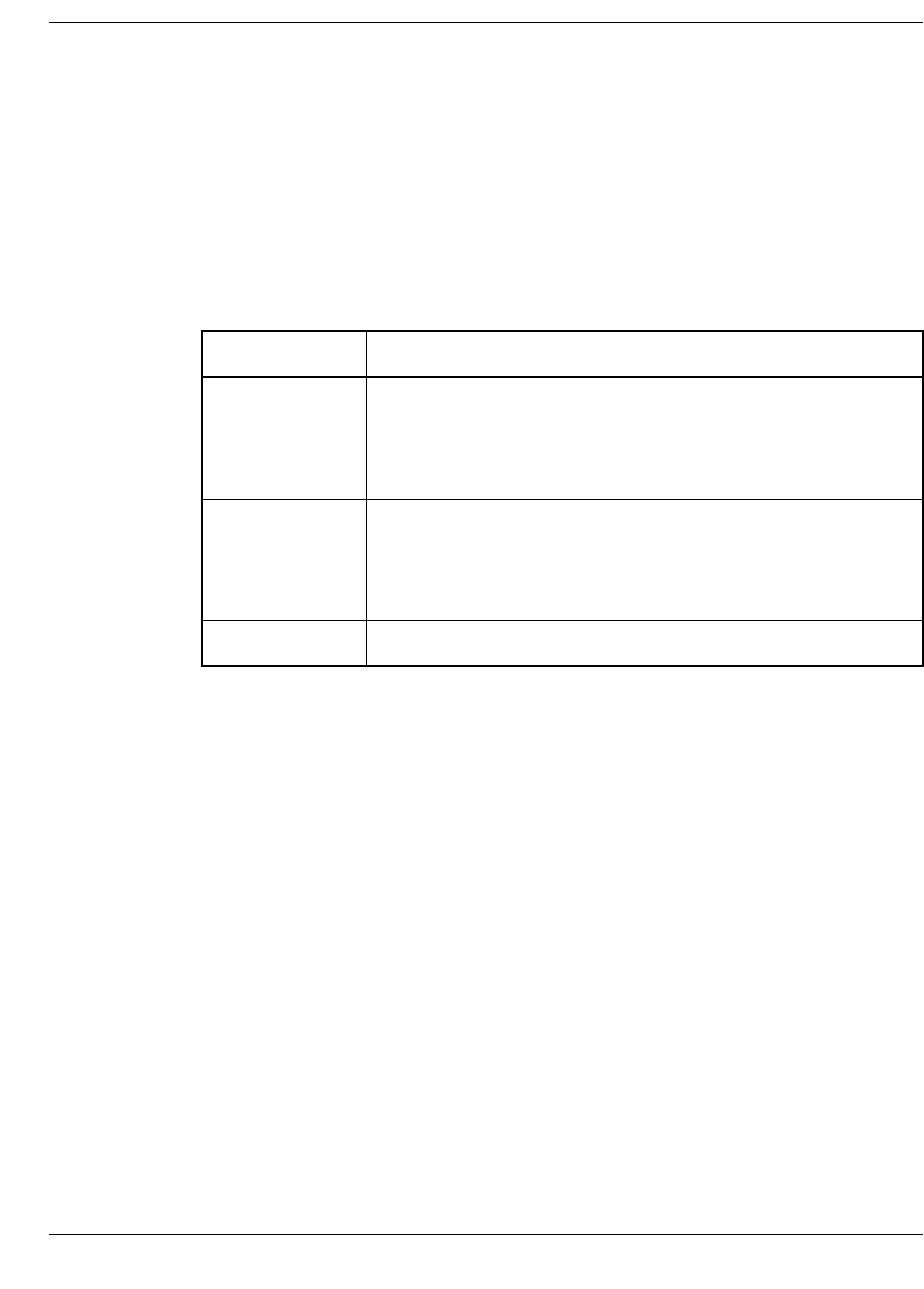
28-8
Transaction Code/Subtype Relationship File (TSRF)
May-2016 R6.0 Post v10 BA-AE000-03
ACI Worldwide, Inc.
Available Transaction Codes Function Keys
The use of three function keys on the TSRF Available Transaction Codes screen
varies from the standard function keys explained in section 1. The use of these
function keys is explained below.
The first column shows the BASE24 keys. The second column describes the
functions that can be accomplished with these keys on TSRF Available
Transaction Codes screen.
Key Description
Shift-F2 Scroll Down - Displays the next group of 30 entries in the
TSRF transaction code table on the current screen. If more
than 30 entries are present, multiple pages are used to display
the additional entries.
Shift-F3 Scroll Up - Displays the previous group of 30 entries in the
TSRF transaction code table on the current screen. If more
than 30 entries are present, multiple pages are used to display
the additional entries.
F11 Returns - Returns you to TSRF screen 1.

Available Transaction Codes Screen
28-9
May-2016 R6.0 Post v10 BA-AE000-03
ACI Worldwide, Inc.
Available Transaction Codes Screen
The Available Transaction Code screen contains transaction codes and their
associated descriptions. The information on this screen is taken from the
Transaction Code file (TCF) and is for perusal only.
TRANSACTION CODE — The ISO transaction codes and transaction code
descriptions in the TCF. This screen is for display only.
Field Length: System protected
Occurs: Up to 30 times
Data Name: TCF.PRIKEY
BASE24-BASE TRANS CDE/SUBTYP RELATION LLLL YY/MM/DD HH:MM 01 OF 01
AVAILABLE TRANSACTION CODE
00 ISO DEBIT GOODS AND SERVICES 01 ISO DEBIT CASH
02 ISO DEBIT ADJUSTMENT 03 ISO DEBIT CHEQUE GUARANTEE
04 ISO DEBIT CHEQUE VERIFY 05 ISO DEBIT EURO CHQ
06 ISO DEBIT TCHQ 07 ISO DEBIT LETTER CREDIT
08 ISO DEBIT GIRO 09 ISO DEBIT GOODS/SERVICES SVC C
10 ISO DEBIT NON CASH 11 ISO DEBIT NON SCRIP
12 ISO DEBIT CASH MANUAL 13 ISO DEBIT SVC FUNDS
17 ISO DEBIT FAST CASH 18 ISO DEBIT PRVT PREAUTH COMPL
19 ISO DEBIT PRVT MAIL PHN ORDER 1A ISO DEBIT PRVT CASH CHK
1B ISO DEBIT PRVT NCD 1C ISO DEBIT PRVT PREAUTH
20 ISO CREDIT RETURN 21 ISO CREDIT DEP
22 ISO CREDIT ADJ 23 ISO CREDIT CHQ DEP GUAR
24 ISO CREDIT CHQ DEP 26 ISO CREDIT SVC FUNDS
28 ISO CREDIT DEP CB 29 ISO CREDIT CHQ DEP CB
30 ISO INQUIRY AVAIL FUNDS 31 ISO INQUIRY BAL
*********************************** BASE24 ***********************************
FILE DESTINATION: NEW LOGICAL NETWORK ID:
SF2-SCROLL-DOWN SF3-SCROLL-UP F11-RETURNS F12-HELP

ACI Worldwide, Inc.

29-1
May-2016 R6.0 Post v10 BA-AE000-03
ACI Worldwide, Inc.
29: Usage Accumulation File (UAF)
The Usage Accumulation File (UAF) is used by the BASE24-atm and
BASE24-pos products with the Negative Authorization with Usage Accumulation
method. It contains one record for each cardholder who has had a transaction
authorized by the BASE24 transaction processing system during the current usage
accumulation period. The BASE24-teller product does not use the UAF because it
does not support the Negative Authorization with Usage Accumulation method.
The UAF contains information, such as withdrawal totals, noncurrency dispense
totals, and bad PIN tries, which enables BASE24 products to determine when a
cardholder has reached the institution’s usage limits for a given period. In a
multiple FIID environment, separate UAFs are needed if each FIID uses a different
withdrawal period.
Cardholder usage is tracked, or accumulated, based on the institution’s usage
accumulation period from one cutover period to the next. Data in the UAF is
purged at the end of each usage accumulation period at the time specified by the
code in the FIELD CUTOVER field on screen 3 of the Institution Definition File
(IDF). If multiple BASE24 products are enabled and using the UAF, they must all
cut over at the same time.
The key to records in the UAF is in the PAN and MEMBER NUMBER fields.
The following screens are used to access records in the UAF:
?Screen 1 contains BASE24 card usage information.
?Screen 2 contains BASE24 preauthorized hold information.
?Screen 3 contains BASE24 enhanced preauthorized hold information.
?Screen 4 contains BASE24-atm card usage information.

29-2
Usage Accumulation File (UAF)
May-2016 R6.0 Post v10 BA-AE000-03
ACI Worldwide, Inc.
?Screen 5 contains BASE24-atm Non–Currency Dispense Usage
Accumulation.
?Screen 6 contains BASE24-pos card usage information.
The screen layout and field descriptions for screen 10 are documented in the
device-specific BASE24-atm self-service banking (SSB) manual.
The remaining UAF screens (3, 7 through 9) are reserved for future use.

Screen 1
29-3
May-2016 R6.0 Post v10 BA-AE000-03
ACI Worldwide, Inc.
Screen 1
UAF screen 1 displays card usage totals for the current usage accumulation period.
The number of times the cardholder has entered a bad PIN during the current usage
accumulation period is also displayed on this screen. UAF screen 1 is shown
below, followed by descriptions of its fields.
PAN — The card number or primary account number (PAN) identifying the card.
The value of this field is derived from the PAN on Track 1 or Track 2 of the access
card. The PAN should be left-justified.
Note: This field can be masked based on a setting in the Security File (SEC). The
degree of masking is based on the setting of the AFT-PAN-DIGITS parameter in
the Logical Network Configuration File.
Field Length: 1–28 numeric characters; however, only positions 1–19 are
used.
Required Field: Yes
Default Value: No default value
Data Name: UAF.UAFBASE.PRIKEY.PAN
BASE24-BASE USAGE ACCUMULATION LLLL YY/MM/DD HH:MM 01 OF 10
PAN: MEMBER NUMBER: 000 FIID:
CARD USAGE CONTROL
ACTIVITY THIS PERIOD
TOTAL OFFLINE
CASH WDL:
CASH ADV:
BAD PIN TRIES: 0
SEQUENCE NUMBER:
LAST RESET DATE:
*********************************** BASE24 ***********************************
NEW PAGE: FILE DESTINATION: NEW LOGICAL NETWORK ID:
F12-HELP

29-4
Usage Accumulation File (UAF)
May-2016 R6.0 Post v10 BA-AE000-03
ACI Worldwide, Inc.
MEMBER NUMBER — The member number. When multiple cards are issued
with the same card number, this field distinguishes among the cards. Institutions
not supporting member numbers must allow this field to default to the value 000.
FIID — The FIID of the financial institution that issued the card. The FIID is an
identifier that must be unique within the logical network. The value in this field
should match the FIID established for the institution in the FIID field on screen 1
of the Institution Definition File (IDF). Refer to the “FIID Restrictions”
discussion in the IDF section of this manual before establishing FIID values.
Note: The financial institution that issued this card must have at least one of the
following in its IDF record:
?An entry in the ATM ROUTING TABLE on IDF screen 9 with an AUTH
TYPE value of 1 (Negative Authorization with Usage Accumulation method)
?An entry in the POS ROUTING TABLE on IDF screen 16 with an AUTH
TYPE value of 1 (Negative Authorization with Usage Accumulation method)
CARD USAGE CONTROL
The following fields are used to display a cardholder’s activity during the current
usage accumulation period.
ACTIVITY THIS PERIOD
The following fields are accumulators for transactions during a single usage
accumulation period for an individual cardholder. Refer to the “BASE24
Authorization Terminology” discussion in section 1 for a discussion of
accumulators.
Field Length: 3 numeric characters
Required Field: Yes
Default Value: 000
Data Name: UAF.UAFBASE.PRIKEY.MBR-NUM
Field Length: 1–4 alphanumeric characters
Required Field: Yes
Default Value: The FIID previously entered.
Data Name: UAF.UAFBASE.FIID

Screen 1
29-5
May-2016 R6.0 Post v10 BA-AE000-03
ACI Worldwide, Inc.
These amounts are expressed in whole and, if applicable for the type of currency
being used, fractional currency units.
The transactions added into these accumulator fields are cash disbursements
against credit and noncredit accounts and purchases against noncredit accounts.
Credit account purchases are not added into these fields.
TOTAL CASH WDL — The total amount of purchases and cash withdrawals
made against noncredit accounts.
OFFLINE CASH WDL — The total amount of cash withdrawals and purchases
made offline against noncredit accounts.
The value in this field is always used with authorization level 2 (offline), and is
used with authorization level 3 (online/offline) when the authorizing host is
unavailable and the BASE24 product performs stand-in authorization.
This amount is included in the balance of the TOTAL CASH WDL field.
TOTAL CASH ADV — The total amount of cash advanced against credit
accounts.
OFFLINE CASH ADV — The total amount of cash advanced offline against
credit accounts.
The value in this field is always used with authorization level 2 (offline), and is
used with authorization level 3 (online/offline) when the authorizing host is
unavailable and the BASE24 product performs stand-in authorization.
Field Length: System protected
Data Name: UAF.UAFBASE.GRP-PRD.TTL-WDL-PRD
Field Length: System protected
Data Name: UAF.UAFBASE.GRP-PRD.OFFL-WDL-PRD
Field Length: System protected
Data Name: UAF.UAFBASE.GRP-PRD.TTL-CCA-PRD

29-6
Usage Accumulation File (UAF)
May-2016 R6.0 Post v10 BA-AE000-03
ACI Worldwide, Inc.
This amount is included in the balance of the TOTAL CASH ADV field.
BAD PIN TRIES — The number of times the cardholder’s PIN has been entered
incorrectly during the current usage accumulation period. Each institution defines
the maximum number of incorrect PIN tries allowed at the institution level in the
IDF or the card prefix level in the CPF. When this number is exceeded, the
transaction is rejected subject to the setting in the BAD PIN ACTION field on IDF
screen 2 or CPF screen 2. The value in this field is also reset to zero subject to the
setting in the PIN TRIES RESET OPTION field on IDF screen 2 or CPF screen 2.
SEQUENCE NUMBER — The transaction sequence number of the last
transaction message used to update the UAF record.
LAST RESET DATE — The date (YYMMDD) that the usage accumulation
totals on screen 1 of the UAF were last cleared.
Field Length: System protected
Data Name: UAF.UAFBASE.GRP-PRD.OFFL-CCA-PRD
Field Length: System protected
Data Name: UAF.UAFBASE.BAD-PIN-TRIES
Field Length: System protected
Data Name: UAF.UAFBASE.TRAN-SEQ-NUM
Field Length: System protected
Data Name: UAF.ONL-REC-MAINT.LAST-RESET-DAT
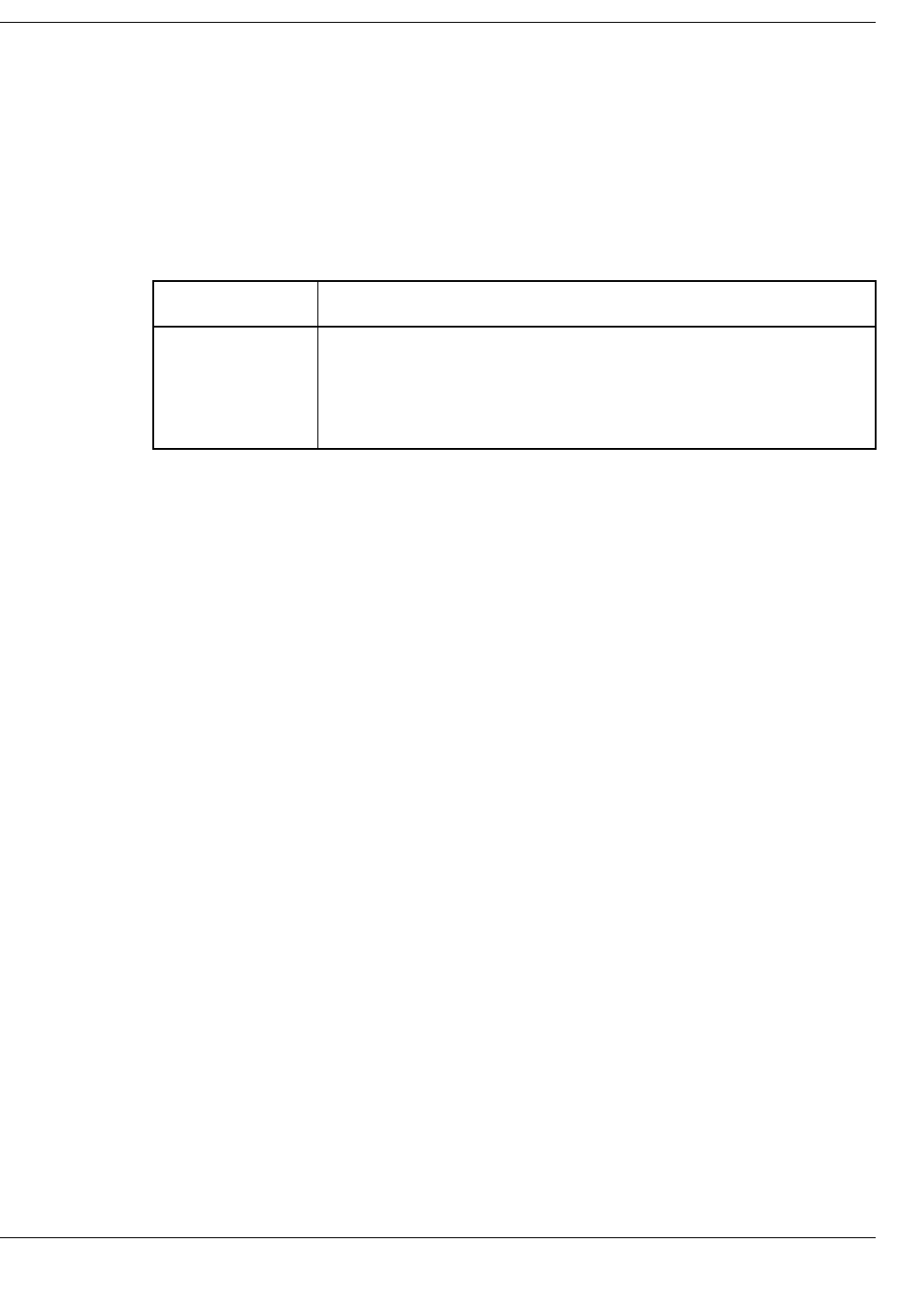
Screen 2 Function Keys
29-7
May-2016 R6.0 Post v10 BA-AE000-03
ACI Worldwide, Inc.
Screen 2 Function Keys
The use of one function key on UAF screen 2 varies from the standard function
keys explained in section 1. The use of this function key is explained below.
The first column of information below shows the BASE24 key. The second
column describes the function that can be accomplished with this key.
Key Description
F8 Remove Hold — Removes a hold by changing its status
from ON HOLD to EXPIRED. The hold being removed is
identified by placing the cursor in the column to the left of its
entry on the screen and pressing this key.

29-8
Usage Accumulation File (UAF)
May-2016 R6.0 Post v10 BA-AE000-03
ACI Worldwide, Inc.
Screen 2
UAF screen 2 displays the preauthorization holds currently in effect on the UAF
record. It also enables an operator to cancel holds. UAF screen 2 is shown below,
followed by descriptions of its fields.
PRE-AUTH HOLDS
These fields, which can occur up to ten times, contain preauthorized hold amounts
associated with the card. BASE24-pos preauthorization purchase transactions can
add preauthorized holds to this record, depending on the setting in the HOLDS
LVL field on IDF screen 16.
The BASE24-atm and BASE24-pos Authorization processes take these
preauthorized hold amounts into consideration when determining whether a
cardholder can withdraw money. These amounts remain on hold for a given period
of time and the funds cannot be moved by the cardholder. Each hold entry also
contains a transaction number so the BASE24-pos Authorization process can
match the hold with a preauthorization purchase completion transaction.
BASE24-BASE USAGE ACCUMULATION LLLL YY/MM/DD HH:MM 02 OF 10
PAN: MEMBER NUMBER: 000 FIID:
PRE-AUTH HOLDS
HOLD STATUS TRANSACTION NUMBER AMOUNT
_
_
_
_
_
_
_
_
_
_
TO CANCEL A HOLD, PLACE THE CURSOR NEXT TO HOLD STATUS AND KEY F8.
*********************************** BASE24 ***********************************
NEW PAGE: FILE DESTINATION: NEW LOGICAL NETWORK ID:
F8-REMOVE HOLD F12-HELP

Screen 2
29-9
May-2016 R6.0 Post v10 BA-AE000-03
ACI Worldwide, Inc.
HOLD STATUS — The status of each preauthorization hold in this UAF record.
The transaction hold status is cleared when the hold expires, when a completion
comes in for the hold amount, when the hold is canceled by a CRT operator, or
when the Settlement Initiator process clears the UAF. Valid values are as follows:
The length of a hold depends on the transaction originator. If the transaction
originates at a BASE24-pos terminal, the hold time length can be specified by the
terminal or by the PRE-AUTH HOLD TIME field on POS Terminal Data files
(PTD) screen 3. If the transaction originates from an ISO host, the hold time
length is included in the message. If the transaction originates at an interchange,
the hold time length can be specified in the PRE-AUTH HOLD TIME field on
Interchange Configuration File (ICF) or Enhanced Interchange Configuration File
(ICFE) screen 11.
Refer to the HCF section of this manual for more information about the HCF,
appendix A for more information about the ICF and ICFE, and the BASE24-pos
Files Maintenance Manual for more information about the PTD.
TRANSACTION NUMBER — The sequence number of the transaction. This
value is used to associate a preauthorized purchase completion transaction with the
proper preauthorized purchase transaction.
AMOUNT — The transaction amount that is associated with this hold.
Transaction amounts can be entered at the POS terminal. However, if an amount is
not entered, the transaction amount for BASE24-pos transactions defaults to the
amount specified in the DEFAULT PRE-AUTH AMOUNT field on PTD screen 3.
If the transaction originates at an interchange and the transaction amount is not
provided, some interchanges obtain the transaction amount from the DEFAULT
PRE-AUTH AMOUNT field on ICF or ICFE screen 11.
EXPIRED = Preauthorization hold is no longer considered.
ON HOLD = Preauthorization hold is still in effect.
Field Length: System protected
Data Name: UAF.PREAUTH.PRE-AUTH.PR-TIMESTAMP
Field Length: System protected
Data Name: UAF.PREAUTH.PRE-AUTH.SEQ-NUM

29-10
Usage Accumulation File (UAF)
May-2016 R6.0 Post v10 BA-AE000-03
ACI Worldwide, Inc.
Refer to the HCF section of this manual for more information about the HCF,
appendix A for more information about the ICF and ICFE, and the BASE24-pos
Files Maintenance Manual for more information about the PTD.
Field Length: System protected
Data Name: UAF.PREAUTH.PRE-AUTH.HOLD-AMT
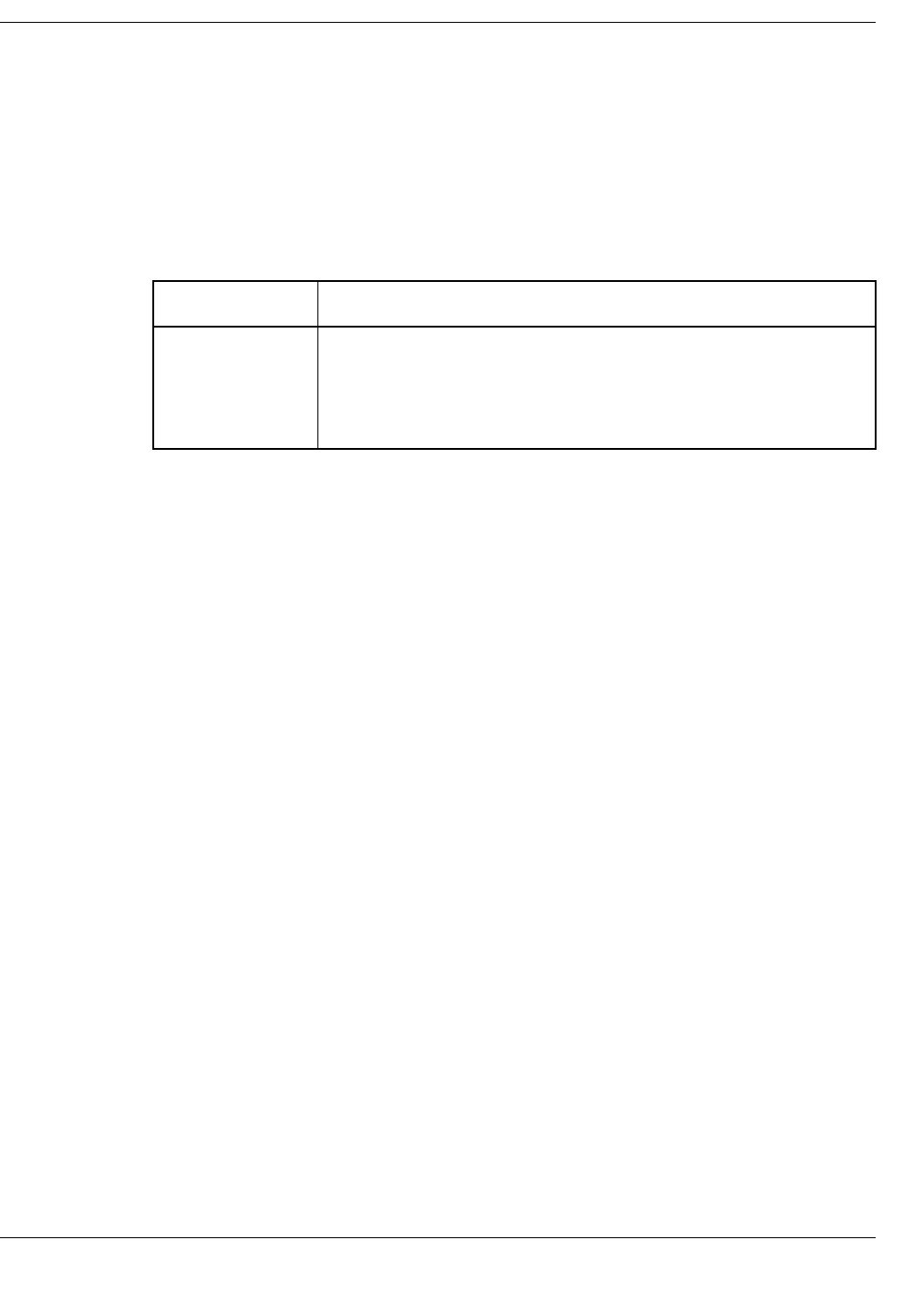
Screen 3 Function Keys
29-11
May-2016 R6.0 Post v10 BA-AE000-03
ACI Worldwide, Inc.
Screen 3 Function Keys
The use of one function key on UAF screen 3 varies from the standard function
keys explained in section 1. The use of this function key is explained below.
The first column of information below shows the BASE24 key. The second
column describes the function that can be accomplished with this key.
Key Description
F8 Remove Hold — Removes a hold by changing its status
from ON HOLD to EXPIRED. The hold being removed is
identified by placing the cursor in the column to the left of its
entry on the screen and pressing this key.

29-12
Usage Accumulation File (UAF)
May-2016 R6.0 Post v10 BA-AE000-03
ACI Worldwide, Inc.
Screen 3
UAF screen 3 displays the enhanced preauthorization holds currently in effect on
the UAF record. UAF screen 3 is shown below, followed by descriptions of its
fields.
ENHANCED PRE-AUTH HOLDS
These fields, which can occur up to ten times, contain preauthorized hold amounts
associated with the card. BASE24-pos preauthorization purchase transactions can
add preauthorized holds to this record, depending on the setting in the HOLDS
LVL field on IDF screen 16.
The BASE24-atm and BASE24-pos Authorization processes take these enhanced
preauthorized hold amounts into consideration when determining whether a
cardholder can withdraw money. These amounts remain on hold for a given period
of time and the funds cannot be moved by the cardholder. Each hold entry also
contains an approval code so the BASE24-pos Authorization process can match
the hold with a preauthorization purchase completion transaction.
BASE24-BASE USAGE ACCUMULATION LLLL YY/MM/DD HH:MM 03 OF 10
PAN: MEMBER NUMBER: 000 FIID:
ENHANCED PRE-AUTH HOLDS
HOLD APPROVAL ACCOUNT SEQUENCE HOLD
STATUS CODE TYPE NUMBER AMOUNT
_
_
_
_
_
_
_
_
_
_
TO CANCEL A HOLD, PLACE THE CURSOR NEXT TO HOLD STATUS AND KEY F8.
*********************************** BASE24 ***********************************
NEW PAGE: FILE DESTINATION: NEW LOGICAL NETWORK ID:
F8-REMOVE HOLD F12-HELP

Screen 3
29-13
May-2016 R6.0 Post v10 BA-AE000-03
ACI Worldwide, Inc.
HOLD STATUS — The status of each preauthorization hold in this UAF record.
The transaction hold status is cleared when the hold expires, when a completion
comes in for the hold amount, when the hold is canceled by a CRT operator, or
when the UAF file is cleared. Valid values are as follows:
The length of a hold depends on the transaction originator. If the transaction
originates at a BASE24-pos terminal, the hold time length can be specified by the
terminal or by the PRE-AUTH HOLD TIME field on POS Terminal Data files
(PTD) screen 3. If the transaction originates from an ISO host, the hold time
length is included in the message. If the transaction originates at an interchange,
the hold time length can be specified in the PRE-AUTH HOLD TIME field on
Interchange Configuration File (ICF) or Enhanced Interchange Configuration File
(ICFE) screen 11.
Refer to the HCF section of this manual for more information about the HCF,
appendix A for more information about the ICF and ICFE, and the BASE24-pos
Files Maintenance Manual for more information about the PTD.
APPROVAL CODE — The value is used to associate a preauthorized purchase
completion transaction with the proper preauthorized purchase transaction.
ACCOUNT TYPE — A code identifying the type of account against which this
preauthorization is applied. Valid values are as follows:
EXPIRED = Preauthorization hold is no longer considered.
ON HOLD = Preauthorization hold is still in effect.
Field Length: System protected
Data Name: UAF.ENHNC-PREAUTH.ENHNC-PRE-AUTH.PR-
TIMESTAMP
Field Length: System protected
Data Name: UAF.ENHNC-PREAUTH.ENHNC-PRE-AUTH.APPRV-
CDE
01-09 = Checking
11-19 = Savings
31-39 = Credit
Field Length: System protected
Data Name: UAF.ENHNC-PREAUTH.ENHNC-PRE-AUTH.ACCT-
TYP

29-14
Usage Accumulation File (UAF)
May-2016 R6.0 Post v10 BA-AE000-03
ACI Worldwide, Inc.
SEQUENCE NUMBER — The sequence number of the transaction. The
SEQUENCE NUMBER and TERMINAL ID can be used to associate a
preauthorized purchase completion with the proper preauthorized purchase
transaction. However, a match is attempted using the APPROVAL CODE before
using the SEQUENCE NUMBER and TERMINAL ID.
HOLD AMOUNT — The transaction amount, in whole and fractional currency
units, associated with this preauthorized hold.
Refer to the HCF section of this manual for more information about the HCF,
appendix A for more information about the ICF and ICFE, and the BASE24-pos
Files Maintenance Manual for more information about the PTD.
Field Length: System protected
Data Name: UAF.ENHNC-PREAUTH.ENHNC-PRE-AUTH.SEQ-NUM
Field Length: System protected
Data Name: UAF.ENHNC-PREAUTH.ENHNC-PRE-AUTH.HOLD-
AMT

Screen 4
29-15
May-2016 R6.0 Post v10 BA-AE000-03
ACI Worldwide, Inc.
Screen 4
UAF screen 4 displays BASE24-atm card usage totals for the current usage
accumulation period. UAF screen 4 is shown below, followed by descriptions of
its fields.
ATM DATA
The following fields are used to display a cardholder’s activity in the BASE24-atm
product during the current usage accumulation period.
ACTIVITY THIS PERIOD
The following fields are accumulators for transactions during a single usage
accumulation period for an individual cardholder using the BASE24-atm product.
Refer to the “BASE24 Authorization Terminology” discussion in section 1 for a
discussion of activity accumulators.
These amounts are expressed in whole and, if applicable for the type of currency
being used, fractional currency units.
BASE24-ATM USAGE ACCUMULATION LLLL YY/MM/DD HH:MM 04 OF 10
PAN: MEMBER NUMBER: 000 FIID:
ATM DATA
ACTIVITY THIS PERIOD
TOTAL OFFLINE
CASH WDL:
CASH ADV:
TIMES USED THIS PERIOD: 0
LAST USED DATE:
*********************************** BASE24 ***********************************
NEW PAGE: FILE DESTINATION: NEW LOGICAL NETWORK ID:
F12-HELP

29-16
Usage Accumulation File (UAF)
May-2016 R6.0 Post v10 BA-AE000-03
ACI Worldwide, Inc.
The transactions added to these accumulator fields are cash disbursements against
credit and noncredit accounts.
TOTAL CASH WDL — The total amount of cash withdrawals made against
noncredit accounts using the BASE24-atm product.
This amount is included in the balance of the TOTAL CASH WDL field on
screen 1.
OFFLINE CASH WDL — The total amount of cash withdrawals made offline
against noncredit accounts using the BASE24-atm product.
The value in this field is always used with authorization level 2 (offline), and is
used with authorization level 3 (online/offline) when the authorizing host is
unavailable and the BASE24 transaction processing system performs stand-in
authorization.
This amount is included in the balance of the TOTAL CASH WDL field on this
screen, as well as the OFFLINE CASH WDL field on screen 1.
TOTAL CASH ADV — The total amount of cash advanced against credit
accounts using the BASE24-atm product.
This amount is included in the balance of the TOTAL CASH ADV field on
screen 1.
OFFLINE CASH ADV — The total amount of cash advanced offline against
credit accounts using the BASE24-atm product.
Field Length: System protected
Data Name: UAF.ATMUAF.GRP-PRD.TTL-WDL-PRD
Field Length: System protected
Data Name: UAF.ATMUAF.GRP-PRD.OFFL-WDL-PRD
Field Length: System protected
Data Name: UAF.ATMUAF.GRP-PRD.TTL-CCA-PRD

Screen 4
29-17
May-2016 R6.0 Post v10 BA-AE000-03
ACI Worldwide, Inc.
The value in this field is always used with authorization level 2 (offline), and is
used with authorization level 3 (online/offline) when the authorizing host is
unavailable and the BASE24 transaction processing system performs stand-in
authorization.
This amount is included in the balance of the TOTAL CASH ADV field on screen
1, as well as the OFFLINE CASH ADV field on screen 1.
TIMES USED THIS PERIOD — The number of times the card has been used to
make cash disbursements using the BASE24-atm product during the current usage
accumulation period.
Note: This field is nonfunctioning in the BASE24-atm standard product. Its
purpose is to support the use of custom-developed Bulk Check device handler
functionality.
LAST USED DATE — The date (YYMMDD) that the BASE24-atm usage
accumulation fields on this screen were last cleared.
Field Length: System protected
Data Name: UAF.ATMUAF.GRP-PRD.OFFL-CCA-PRD
Field Length: System protected
Data Name: UAF.ATMUAF.USED-PRD
Field Length: System protected
Data Name: UAF.ONL-REC-MAINT.ATM-LAST-USED-DAT

29-18
Usage Accumulation File (UAF)
May-2016 R6.0 Post v10 BA-AE000-03
ACI Worldwide, Inc.
Screen 5
UAF screen 5 displays BASE24-atm card noncurrency dispense usage totals for
the current usage accumulation period. UAF screen 5 is shown below, followed by
descriptions of its fields
NCD DATA
The following fields are used to display a cardholder’s Non–Currency Dispense
activity in the BASE24-atm product during the current usage accumulation period.
ACTIVITY THIS PERIOD
The following fields are accumulators for transactions during a single usage
accumulation period for an individual cardholder. Refer to the “BASE24
Authorization Terminology” discussion in section 1 for a discussion of
accumulators.
These amounts are expressed in whole and, if applicable for the type of currency
being used, fractional currency units.
BASE24-NCD USAGE ACCUMULATION LLLL YY/MM/DD HH:MM 05 OF 10
PAN: MEMBER NUMBER: 000 FIID:
NCD DATA
ACTIVITY THIS PERIOD
TOTAL OFFLINE
CASH WDL:
CREDIT WDL:
CONTENT CODE 1: (****)
CASH WDL:
CREDIT WDL:
CONTENT CODE 2: (****)
CASH WDL:
CREDIT WDL:
TIMES USED THIS PERIOD: 0
*********************************** BASE24 ***********************************
NEW PAGE: FILE DESTINATION: NEW LOGICAL NETWORK ID:
F12-HELP

Screen 5
29-19
May-2016 R6.0 Post v10 BA-AE000-03
ACI Worldwide, Inc.
The transactions added into these accumulator fields are cash value transactions
against credit and noncredit accounts.
TOTAL CASH WDL — The total amount of purchases and cash withdrawals
made against noncredit accounts.
This amount is included in the balance of the GRP-PRD.TTL-PRD field on
screen 1.
OFFLINE CASH WDL — The total amount of cash withdrawals and purchases
made offline against noncredit accounts.
The value in this field is always used with authorization level 2 (offline), and is
used with authorization level 3 (online/offline) when the authorizing host is
unavailable and the BASE24 product performs stand-in authorization.
This amount is included in the balance of the TOTAL CASH WDL field on this
screen, and the OFFLINE CASH WDL and TOTAL CASH WDL fields on
screen 1.
TOTAL CREDIT WDL — The total amount of cash advanced against credit
accounts.
This amount is included in the balance of the TOTAL CASH ADV field on
screen 1.
OFFLINE CREDIT WDL — The total amount of cash advanced offline against
credit accounts.
The value in this field is always used with authorization level 2 (offline), and is
used with authorization level 3 (online/offline) when the authorizing host is
unavailable and the BASE24 product performs stand-in authorization.
Field Length: System protected
Data Name: UAF.NCDUAF.CASH-VAL-PRD.TTL-WDL-PRD
Field Length: System protected
Data Name: UAF.NCDUAF.CASH-VAL-PRD.OFFL-WDL-PRD
Field Length: System protected
Data Name: UAF.NCDUAF.CASH-VAL-PRD.TTL-CCA-PRD

29-20
Usage Accumulation File (UAF)
May-2016 R6.0 Post v10 BA-AE000-03
ACI Worldwide, Inc.
This amount is included in the balance of the TOTAL CREDIT WDL field on this
screen, and the OFFLINE CASH ADV and the TOTAL CASH ADV fields on
screen 1.
CONTENT CODE 1 — Identifies the hopper contents to which the Non–
Currency Dispense limit and activity fields pertain. Valid values are as follows:
TOTAL CASH WDL — The total amount of cash value transactions made
against noncredit accounts for the item type identified by the content code.
This amount is included in balance of the TOTAL CASH WDL field on screen 1.
OFFLINE CASH WDL — The total amount of cash value transactions made
offline against noncredit accounts for the item type identified by the content code.
The value in this field is always used with authorization level 2 (offline), and is
used with authorization level 3 (online/offline) when the authorizing host is
unavailable and the BASE24 product performs stand-in authorization.
Field Length: System protected
Data Name: UAF.NCDUAF.CASH-VAL-PRD.OFFL-CCA-PRD
00 = Cash
01 = Coin
02 = Travelers checks
03–10 = Cash value or nonvalue items
Field Length: 2 alphanumeric characters followed by a system-protected
text description
Required Field: No
Default Value: No default value
Data Name: UAF.NCDUAF.NCD.NCD-CDE(1)
Field Length: System protected
Data Name: UAF.NCDUAF.NCD.NCD-PRD.TTL-WDL-PRD(1)

Screen 5
29-21
May-2016 R6.0 Post v10 BA-AE000-03
ACI Worldwide, Inc.
This amount is included in the balance of the TOTAL CASH WDL field on this
screen, and the OFFLINE CASH WDL and TOTAL CASH WDL fields on
screen 1.
TOTAL CREDIT WDL — The total amount of cash value transactions made
against credit accounts for the item type identified by the content code.
This amount is included in the balance of the TOTAL CASH ADV field on
screen 1.
OFFLINE CREDIT WDL — The total amount of cash value transactions made
offline against credit accounts for the item type identified by the content code.
The value in this field is always used with authorization level 2 (offline), and is
used with authorization level 3 (online/offline) when the authorizing host is
unavailable and the BASE24 product performs stand-in authorization.
This amount is included in the balance of the TOTAL CASH WDL field on this
screen, and the OFFLINE CASH WDL and TOTAL CASH WDL fields on
screen 1.
CONTENT CODE 2 — Identifies the hopper contents to which the Non–
Currency Dispense limit and activity fields pertain. Valid values are as follows:
Field Length: System protected
Data Name: UAF.NCDUAF.NCD.NCD-PRD.OFFL-WDL-PRD(1)
Field Length: System protected
Data Name: UAF.NCDUAF.NCD.NCD-PRD.TTL-CCA-PRD(1)
Field Length: System protected
Data Name: UAF.NCDUAF.NCD.NCD-PRD.OFFL-CCA-PRD(1)
02 = Travelers checks
03–10 = Cash value or nonvalue items
Field Length: 2 alphanumeric characters followed by a system-protected
text description
Required Field: No
Default Value: No default value
Data Name: UAF.NCDUAF.NCD.NCD-CDE(2)

29-22
Usage Accumulation File (UAF)
May-2016 R6.0 Post v10 BA-AE000-03
ACI Worldwide, Inc.
TOTAL CASH WDL — The total amount of cash value transactions made
against noncredit accounts for the item type identified by the content code.
This amount is included in balance of the TOTAL CASH WDL field on screen 1.
OFFLINE CASH WDL — The total amount of cash value transactions made
offline against noncredit accounts for the item type identified by the content code.
The value in this field is always used with authorization level 2 (offline), and is
used with authorization level 3 (online/offline) when the authorizing host is
unavailable and the BASE24 product performs stand-in authorization.
This amount is included in the balance of the TOTAL CASH WDL field on this
screen, and the OFFLINE CASH WDL and TOTAL CASH WDL fields on
screen 1.
TOTAL CREDIT WDL — The total amount of cash value transactions made
against credit accounts for the item type identified by the content code.
This amount is included in the balance of the TOTAL CASH ADV field on
screen 1.
OFFLINE CREDIT WDL — The total amount of cash value transactions made
offline against credit accounts for the item type identified by the content code.
The value in this field is always used with authorization level 2 (offline), and is
used with authorization level 3 (online/offline) when the authorizing host is
unavailable and the BASE24 product performs stand-in authorization.
Field Length: System protected
Data Name: UAF.NCDUAF.NCD.NCD-PRD.TTL-WDL-PRD(2)
Field Length: System protected
Data Name: UAF.NCDUAF.NCD.NCD-PRD.OFFL-WDL-PRD(2)
Field Length: System protected
Data Name: UAF.NCDUAF.NCD.NCD-PRD.TTL-CCA-PRD(2)

Screen 5
29-23
May-2016 R6.0 Post v10 BA-AE000-03
ACI Worldwide, Inc.
This amount is included in the balance of the TOTAL CASH WDL field on this
screen, and the OFFLINE CASH WDL and TOTAL CASH WDL fields on
screen 1.
TIMES USED THIS PERIOD — The number of times the card has been used to
make noncurrency disbursements using the BASE24-atm product during the
current usage accumulation period.
Field Length: System protected
Data Name: UAF.NCDUAF.NCD.NCD-PRD.OFFL-CCA-PRD(2)
Field Length: System protected
Data Name: UAF.NCDUAF.USED-PRD

29-24
Usage Accumulation File (UAF)
May-2016 R6.0 Post v10 BA-AE000-03
ACI Worldwide, Inc.
Screen 6
UAF screen 6 displays a cardholder’s activity in the BASE24-pos product during
the current usage accumulation period. UAF screen 6 is shown below, followed by
descriptions of its fields.
POS DATA
The following fields are used to display a cardholder’s activity in the BASE24-pos
product during the current usage accumulation period.
ACTIVITY THIS PERIOD
The following fields are accumulators for transactions during a single usage
accumulation period for an individual cardholder using the BASE24-pos product.
Refer to “BASE24 Authorization Terminology” discussion in section 1 for a
discussion of activity accumulators.
These amounts are expressed in whole and, if applicable for the type of currency
being used, fractional currency units. The transactions added into these
accumulator fields are cash disbursements, purchases, and refunds against credit
and noncredit accounts.
BASE24-POS USAGE ACCUMULATION LLLL YY/MM/DD HH:MM 06 OF 10
PAN: MEMBER NUMBER: 000 FIID:
POS DATA
ACTIVITY THIS PERIOD
TOTAL OFFLINE
CASH WDL:
CASH ADV:
PURCHASE:
REFUND:
TIMES USED THIS PERIOD: 0
NUMBER OF REFUNDS THIS PERIOD: 0 TRAN TC:
LAST USED DATE:
*********************************** BASE24 ***********************************
NEW PAGE: FILE DESTINATION: NEW LOGICAL NETWORK ID:
F12-HELP

Screen 6
29-25
May-2016 R6.0 Post v10 BA-AE000-03
ACI Worldwide, Inc.
TOTAL CASH WDL — The total amount of purchases and cash withdrawals
made against noncredit accounts using the BASE24-pos product.
This amount is included in the balance of the TOTAL CASH WDL field on
screen 1.
OFFLINE CASH WDL — The total amount of purchases and cash withdrawals
made offline against noncredit accounts using the BASE24-pos product.
The value in this field is always used with authorization level 2 (offline), and is
used with authorization level 3 (online/offline) when the authorizing host is
unavailable and the BASE24 transaction processing system performs stand-in
authorization.
This amount is included in the balance of the TOTAL CASH WDL field on this
screen, as well as the OFFLINE CASH WDL field on screen 1.
TOTAL CASH ADV — The total amount of cash advanced against credit
accounts using the BASE24-pos product.
This amount is included in the balance of the TOTAL CASH ADV field on
screen 1.
OFFLINE CASH ADV — The total amount of cash advanced offline against
credit accounts using the BASE24-pos product.
The value in this field is always used with authorization level 2 (offline), and is
used with authorization level 3 (online/offline) when the authorizing host is
unavailable and the BASE24 transaction processing system performs stand-in
authorization.
Field Length: System protected
Data Name: UAF.POSUAF.GRP-PRD.TTL-WDL-PRD
Field Length: System protected
Data Name: UAF.POSUAF.GRP-PRD.OFFL-WDL-PRD
Field Length: System protected
Data Name: UAF.POSUAF.GRP-PRD.TTL-CCA-PRD

29-26
Usage Accumulation File (UAF)
May-2016 R6.0 Post v10 BA-AE000-03
ACI Worldwide, Inc.
This amount is included in the balance of the TOTAL CASH ADV field on this
screen, as well as the OFFLINE CASH ADV field on screen 1.
TOTAL PURCHASE — The total amount of purchases made against credit
accounts using the BASE24-pos product.
OFFLINE PURCHASE — The total amount of purchases made offline against
credit accounts using the BASE24-pos product.
The value in this field is always used with authorization level 2 (offline), and is
used with authorization level 3 (online/offline) when the authorizing host is
unavailable and the BASE24 transaction processing system performs stand-in
authorization.
This amount is included in the balance of the TOTAL PURCHASE field.
TOTAL REFUND — The total amount of refunds made against credit and
noncredit accounts using the BASE24-pos product.
OFFLINE REFUND — The total amount of refunds made offline using the
BASE24-pos product. This amount is included in the balance of the TOTAL
REFUND field.
Field Length: System protected
Data Name: UAF.POSUAF.GRP-PRD.OFFL-CCA-PRD
Field Length: System protected
Data Name: UAF.POSUAF.GRP-PRD.TTL-PUR-PRD
Field Length: System protected
Data Name: UAF.POSUAF.GRP-PRD.OFFL-PUR-PRD
Field Length: System protected
Data Name: UAF.POSUAF.TTL-RFND-CR-PRD
Field Length: System protected
Data Name: UAF.POSUAF.OFFL-RFND-CR-PRD

Screen 6
29-27
May-2016 R6.0 Post v10 BA-AE000-03
ACI Worldwide, Inc.
TIMES USED THIS PERIOD — The number of purchases and cash
disbursements performed using the BASE24-pos product during the current usage
accumulation period.
NUMBER OF REFUNDS THIS PERIOD — The number of refunds performed
using the BASE24-pos product during the current usage accumulation period.
TRAN TC — The transaction code of the last transaction that updated this record.
The value in this field is used by the Authorization process to detect duplicate
transactions.
LAST USED DATE — The date (YYMMDD) that the BASE24-pos usage
accumulation fields on this screen were last cleared.
Field Length: System protected
Data Name: UAF.POSUAF.USED-PRD
Field Length: System protected
Data Name: UAF.POSUAF.NUM-RFND-CR-PRD
Field Length: System protected
Data Name: UAF.POSUAF.TRAN-TC
Field Length: System protected
Data Name: UAF.ONL-REC-MAINT.POS-LAST-USED-DAT

29-28
Usage Accumulation File (UAF)
May-2016 R6.0 Post v10 BA-AE000-03
ACI Worldwide, Inc.
Screen 10
UAF screen 10 enables an institution using the BASE24-atm self-service banking
(SSB) application to establish activity limits for a check cashing card. This screen
is displayed only when the BASE24-atm self-service banking (SSB) Enhanced
Check Application has been installed.
Refer to the device-specific BASE24-atm self-service banking (SSB) manual for
the screen layout and field descriptions.
Note: The value of the SSB Check segment indicator on IDF screen 5 controls
whether an institution’s UAF records include SSB Check segments. However, the
SSB Check segment indicator on IDF screen 5 does not control whether this screen
is displayed. If the BASE24-atm self-service banking (SSB) Enhanced Check
module has been installed, this screen is displayed for all institutions in the logical
network unless an institution’s security records are set up to not allow access to it.
When files maintenance screens are displayed for an unused segment, data entered
on those screens is not written to disk or used by BASE24 products in any way.
Refer to the BASE24 CRT Access Manual for information on updating institution
security records.

A-1
May-2016 R6.0 Post v10 BA-AE000-03
ACI Worldwide, Inc.
A: BASE24 Interchange Interface Files
The BASE24 Interchange Interface files are used to control the interface between
BASE24 products and the interchanges to which they are connected. This
appendix provides basic information for the following standard Interchange
Interface files that can be accessed using files maintenance screens:
• Interchange Configuration File (ICF)
• Enhanced Interchange Configuration File (ICFE)
• Switch Terminal File (STF)
Individual interfaces supported by BASE24 products may use some of the fields in
the ICF, ICFE, and STF differently. Some interfaces also use additional
Interchange Interface files that can be accessed using files maintenance screens.
ACI provides interface-specific documentation for each Interchange Interface
supported by BASE24 products. All the settings required in the ICF, ICFE, STF,
and any interface-specific files for each Interchange Interface are described in
these interface-specific documents.
The following Interchange Interfaces are configured using the ICF or ICFE,
depending on their software release. If the Interchange Interface is on the current
software release (i.e., 6.0), the interchange is configured using the ICFE. If the
Interchange Interface is on a previous software release (e.g., 5.3), the Interchange
Interface process is configured using the ICF.
• Banknet
• BIC ISO
•MDS/MDSM
•PLUS ISO
• VisaNet
All other Interchange Interfaces are configured using the ICF.

A-2
BASE24 Interchange Interface Files
May-2016 R6.0 Post v10 BA-AE000-03
ACI Worldwide, Inc.
The ICFE uses an acquirer transaction profile to define the transactions allowed
from the interchange (i.e., inbound transactions) rather than the hard-coded tables
used in the ICF. The ICFE also uses issuer transaction profiles, which define the
transactions allowed to be sent to the interchange from BASE24 (i.e., outbound
transactions). The above interfaces are configured to use either the ICF or ICFE
when they are installed.

Interchange Configuration File (ICF)
A-3
May-2016 R6.0 Post v10 BA-AE000-03
ACI Worldwide, Inc.
Interchange Configuration File (ICF)
The Interchange Configuration File (ICF) contains parameters relevant to
interchange transaction processing. It is used by the institution to define institution
and terminal interchange sharing, holidays, transaction handling in offline and
online situations, and settlement handling. There is one ICF record for each
Interchange Interface process that uses the ICF.
The following screens are used to access records in the ICF:
• Screen 1 contains BASE24 interchange and Interchange Interface process
names and information.
• Screen 2 contains BASE24 interchange settlement information.
• Screen 3 contains BASE24 timer and processing parameters for the
interchange.
• Screen 6 contains Non–Currency Dispense parameters to be specified for the
interchange.
• Screen 7 defines the allowable transactions for the BASE24-atm product.
• Screen 8 contains BASE24-atm processing information for interchanges.
• Screen 9 defines the BASE24-pos transactions that can be sent to an
interchange.
• Screen 10 contains BASE24-pos processing information for interchanges.
• Screen 11 contains BASE24-pos processing information for interchanges.
ICF screens 12 and 13 contain information that applies to individual Interchange
Interfaces. These screens are not presented in this manual because they are
designed specifically for each interface. Refer to interface-specific documentation
for the layout and field definitions for these screens.
ICF screens 4 and 5 are reserved for future use.

A-4
BASE24 Interchange Interface Files
May-2016 R6.0 Post v10 BA-AE000-03
ACI Worldwide, Inc.
ICF Screen 1
ICF screen 1 identifies the interchange and the Interchange Interface process
names and information. ICF screen 1 is shown below, followed by descriptions of
its fields.
INTERCHANGE FIID — The institution identifier uniquely distinguishing this
interchange. This field must match the logical network ID given to this
interchange in the BASE24 transaction processing system. This field and the
PROCESS field combine to make the primary key to the ICF.
Field Length: 1–4 alphanumeric characters
Required Field: Yes
Default Value: No default value
Data Name: ICF.PRIKEY.FIID
BASE24-BASE INTERCHANGE CONFIG LLLL YY/MM/DD HH:MM 01 OF 13
INTERCHANGE FIID: PROCESS:
SWITCH TYPE:
INTERCHANGE LOGICAL NET:
REPORTING NAME:
INSTITUTION ID:
SWITCH ID:
STATION 1:
STATION 2:
SIC CODE: 0
CURRENCY CODE: 840 (US)
DEFAULT TERM NUM:
DEFAULT ACQUIRER ID NUM: 00000000000
CUSTOMER BALANCE DISPLAY: 0 (DON’T DISPLAY OR PRINT)
*********************************** BASE24 ***********************************
NEW PAGE: FILE DESTINATION: NEW LOGICAL NETWORK ID:
F12-HELP

Interchange Configuration File (ICF)
A-5
May-2016 R6.0 Post v10 BA-AE000-03
ACI Worldwide, Inc.
PROCESS — The name of the Interchange Interface process for this
interchange. This is the process that receives transaction messages from and sends
transaction messages to the interchange. This field and the INTERCHANGE FIID
field combine to make the primary key.
SWITCH TYPE — A code identifying the interchange. The code entered in this
field accesses interchange-specific screens if the code matches an entry in the
POBJ.
For a complete list of BASE24-supported interchanges, contact your ACI account
manager.
INTERCHANGE LOGICAL NET — The logical network identifier given to the
interchange. This is used by the interchange reports to calculate the net settlement
position. This field must match the logical network ID given to this interchange in
the BASE24 transaction processing system and the value in the INTERCHANGE
FIID field.
REPORTING NAME — The name of the interchange as it is to appear on
BASE24 reports.
Field Length: 1–16 alphanumeric characters
Required Field: Yes
Default Value: No default value
Data Name: ICF.PRIKEY.SWI-PRO
Field Length: 1–4 alphanumeric characters
Required Field: Yes
Default Value: No default value
Data Name: ICF.SWI-TYP
Field Length: 1–4 alphanumeric characters
Required Field: No
Default Value: No default value
Data Name: ICF.LN
Field Length: 1–16 alphanumeric characters
Required Field: No
Default Value: No default value
Data Name: ICF.RPTG-NAME

A-6
BASE24 Interchange Interface Files
May-2016 R6.0 Post v10 BA-AE000-03
ACI Worldwide, Inc.
INSTITUTION ID — The interchange-assigned institution ID used in recognizing
the acquirer or issuer. An example of this would be the Proprietary Member
Center (PMC) number for the PLUS interchange.
SWITCH ID — The identifier for the forwarding institution. This is an
interchange-dependent value. Some Interchange Interface processes place the
value in this field in their outgoing messages to provide a unique or default
identifier for the interchange. The interpretation of this value is unique for each
interchange.
STATION 1 — The symbolic name of the first station being used.
STATION 2 — The symbolic name of the second station being used, if one is
present.
Field Length: 1–15 alphanumeric characters
Required Field: No
Default Value: No default value
Data Name: ICF.INST-ID
Field Length: 1–15 alphanumeric characters
Required Field: No
Default Value: No default value
Data Name: ICF.SWI-ID
Field Length: 1–16 alphanumeric characters
Required Field: No
Default Value: No default value
Data Name: ICF.STA-CONF.STA1
Field Length: 1–16 alphanumeric characters
Required Field: No
Default Value: No default value
Data Name: ICF.STA-CONF.STA2

Interchange Configuration File (ICF)
A-7
May-2016 R6.0 Post v10 BA-AE000-03
ACI Worldwide, Inc.
SIC CODE — The Standard Industrial Classification (SIC) Code applicable to
the institution operating the BASE24 transaction processing network. The value in
this field is used for informational purposes only.
CURRENCY CODE — Identifies the currency code for transactions that the
interchange receives. Valid values are listed in the ISO 4217 standard, Codes for
the Representation of Currencies and Funds.
A description of the code entered is displayed to the right of the CURRENCY
CODE field.
DEFAULT TERM NUM — The default terminal number for this interchange. If
an incoming transaction does not contain a terminal number, the terminal number
indicated here is used.
DEFAULT ACQUIRER ID NUM — The default institution identification
number for this interchange. If an incoming transaction does not contain an
acquirer’s institution identification number, the value in this field is used.
Field Length: 1–4 alphanumeric characters
Required Field: No
Default Value: 0
Data Name: ICF.SIC-CDE
Field Length: 1–3 numeric characters
Required Field: Yes
Default Value: The default value depends upon configuration variables.
Data Name: ICF.CRNCY-CDE
Field Length: 16 alphanumeric characters
Required Field: No
Default Value: No default value
Data Name: ICF.DFLT-TERM-NUM
Field Length: 1–11 numeric characters
Required Field: Yes
Default Value: 00000000000
Data Name: ICF.DFLT-ACQ-ID-NUM

A-8
BASE24 Interchange Interface Files
May-2016 R6.0 Post v10 BA-AE000-03
ACI Worldwide, Inc.
CUSTOMER BALANCE DISPLAY — Indicates the interchange preference
concerning balance presentation for transactions with incoming responses. Valid
values are as follows:
A description of the code entered is displayed to the right of the CUSTOMER
BALANCE DISPLAY field.
0 = Do not display or print
1 = Display only
2 = Print only
3 = Display and print
Field Length: 1 numeric character
Required Field: Yes
Default Value: 0
Data Name: ICF.CUST-BAL-DISPLAY

Interchange Configuration File (ICF)
A-9
May-2016 R6.0 Post v10 BA-AE000-03
ACI Worldwide, Inc.
ICF Screen 2
ICF screen 2 contains interchange settlement information. ICF screen 2 is shown
below, followed by descriptions of its fields.
SETTLEMENT INFORMATION
The following fields contain interchange settlement information used for recovery
processing.
SETTLEMENT HOUR — The hour (local time) at which settlement for this
interchange occurs. Valid values are 00 through 23.
Field Length: 2 numeric characters
Required Field: Yes
Default Value: 00
Data Name: ICF.SWI-SETL.SETL-HH
BASE24-BASE INTERCHANGE CONFIG LLLL YY/MM/DD HH:MM 02 OF 13
INTERCHANGE FIID: PROCESS:
SETTLEMENT INFORMATION
SETTLEMENT HOUR: 00 SETTLEMENT MINUTE: 00
SETTLEMENT DAYS: 1 (PROCESS 7 DAYS)
REPORT PRIORITY: 100 REPORT CPU: 0
SWITCH POSTING DATE (YYMMDD)
HOLIDAY DATES (YYMMDD)
REPORT DATA MASKING PARAMETERS
DATA MASK FLAG: Y (MASK SENSITIVE DATA) RIGHT UNMASKED DIGITS: 4
MIN MASKED DIGITS: 9 MAX LEFT UNMASKED DIGITS: 0
*********************************** BASE24 ***********************************
NEW PAGE: FILE DESTINATION: NEW LOGICAL NETWORK ID:
F12-HELP

A-10
BASE24 Interchange Interface Files
May-2016 R6.0 Post v10 BA-AE000-03
ACI Worldwide, Inc.
SETTLEMENT MINUTE — The minute (local time) at which settlement for this
interchange occurs. Valid values are 00 through 59.
SETTLEMENT DAYS — Indicates the processing schedule for the interchange.
Valid values are as follows:
A description of the code entered is displayed to the right of the SETTLEMENT
DAYS field.
REPORT PRIORITY — Specifies the priority for reports started by the
Interchange Interface process. The value entered in this field must be equal to or
less than 255.
REPORT CPU — The central processing unit (CPU) to be used for reports
started by the Interchange Interface process.
Field Length: 2 numeric characters
Required Field: Yes
Default Value: 00
Data Name: ICF.SWI-SETL.SETL-MM
0 = Processes 5 days a week (Monday through Friday).
1 = Processes 7 days a week.
Field Length: 1 numeric character
Required Field: Yes
Default Value: 1
Data Name: ICF.SWI-SETL.SETL-DAYS
Field Length: 1–3 numeric characters
Required Field: Yes
Default Value: 100
Data Name: ICF.RPT-PRI
Field Length: 1–2 numeric characters
Required Field: Yes
Default Value: 0
Data Name: ICF.RPT-CPU

Interchange Configuration File (ICF)
A-11
May-2016 R6.0 Post v10 BA-AE000-03
ACI Worldwide, Inc.
SWITCH POSTING DATE (YYMMDD) — The posting date (YYMMDD) for
the interchange. The Interchange Interface process updates this date upon
initialization and at daily settlement time.
HOLIDAY DATES (YYMMDD) — The defined holiday dates (YYMMDD) of
the interchange. These fields indicate the holidays on which the interchange does
not settle. The Interchange Interface process does not create an Interchange Log
File (ILF) for these dates. Although these fields allow entry of one to six
alphabetic or numeric characters, the holiday dates cannot be processed unless six
numeric characters representing valid dates are entered. This field is valid only
when five-day settlement is used.
REPORT DATA MASKING PARAMETERS
The values in the following fields specify the report data masking parameters.
These parameters support the masking of sensitive information in accordance to
PCI data security standards.
DATA MASK FLAG — A code indicating whether sensitive data should be
masked or unmasked. Valid values are as follows:
Field Length: 1–6 numeric characters
Required Field: No
Default Value: No default value
Data Name: ICF.SWI-SETL.POST-DAT
Field Length: 6 numeric characters
Occurs: 16 times
Required Field: No
Default Value: No default value
Data Name: ICF.SWI-SETL.HOL-DAT
Y = Mask sensitive data
N = Do not mask sensitive data
Field Length: 1 alphanumeric character
Required Field: Yes
Default Value: Y
Data Name: ICF.BASE.RPT-PAN-DIGITS.MASKING-FLG

A-12
BASE24 Interchange Interface Files
May-2016 R6.0 Post v10 BA-AE000-03
ACI Worldwide, Inc.
RIGHT UNMASKED DIGITS — A code defining the number of rightmost
digits to be displayed unmasked. Valid values are as follows:
MIN MASKED DIGITS — A code defining the minimum number of digits to be
masked. Valid values are as follows:
MAX LEFT UNMASKED DIGITS — A code defining the maximum number of
leftmost digits to be displayed unmasked. Valid values are as follows:
0–9 = Number of rightmost digits to be displayed unmasked.
Field Length: 1 numeric character
Required Field: Yes
Default Value: 4
Data Name: ICF.BASE.RPT-PAN-DIGITS.RIGHT-UNMASKED
0–9 = Number of digits to be masked.
Field Length: 1 numeric character
Required Field: Yes
Default Value: 9
Data Name: ICF.BASE.RPT-PAN-DIGITS.MIN-MASKED
0–9 = Number of leftmost digits to be displayed unmasked.
Field Length: 1 numeric character
Required Field: Yes
Default Value: 0
Data Name: ICF.BASE.RPT-PAN-DIGITS.MAX-LEFT-UNMASKED

Interchange Configuration File (ICF)
A-13
May-2016 R6.0 Post v10 BA-AE000-03
ACI Worldwide, Inc.
ICF Screen 3
ICF screen 3 allows timers and processing parameters to be specified for the
interchange. ICF screen 3 is shown below, followed by descriptions of its fields.
TIMER LIMITS
The following timer value fields are used to control specific transaction message
activity between the BASE24 transaction processing network and this interchange.
The values entered in these fields must be checked against interchange timer
values to ensure the integrity of message traffic.
NETWORK MANAGEMENT — The maximum number of seconds that the
Interchange Interface process waits for a response before setting an Extended
Network timer for an outstanding network management message (that is, logon,
logoff, or echo-test message). Valid values are 0 through 9999.
Field Length: 1–4 numeric characters
Required Field: Yes
Default Value: 30
Data Name: ICF.TIMER-LMTS.NMM
BASE24-BASE INTERCHANGE CONFIG LLLL YY/MM/DD HH:MM 03 OF 13
INTERCHANGE FIID: PROCESS:
TIMER LIMITS PROCESSING OPTIONS
NETWORK MANAGEMENT: 30 (SEC) ACQUIRER: N (Y/N)
EXTENDED NETWORK: 60 (SEC) ISSUER: N (Y/N)
WAIT FOR TRAFFIC: 60 (SEC) PROCESSING MODE:
PERFORMANCE PERIOD: 20 (MIN) AUTO SIGNON START: N (Y/N)
MAXIMUM TIMEOUTS: 2
MAXIMUM OUTSTANDING TRANSACTIONS MAX SAF RETRY: 0
OUTBOUND: 15 ACK TO SWITCH: N (Y/N)
INBOUND: 15 ACK FROM SWITCH: N (Y/N)
NETWORK MANAGEMENT MESSAGE ENABLED: N (Y = ENABLED, N = DISABLED)
TYPE OF INTERCHANGE REPORTS: 0 (ATM/DETAIL AND SETTLEMENT)
ILF EXTRACT NUMBER: 3
*********************************** BASE24 ***********************************
NEW PAGE: FILE DESTINATION: NEW LOGICAL NETWORK ID:
F12-HELP

A-14
BASE24 Interchange Interface Files
May-2016 R6.0 Post v10 BA-AE000-03
ACI Worldwide, Inc.
EXTENDED NETWORK — The maximum number of seconds that the
Interchange Interface process waits before attempting to retry a network
management message during periods when the line to the interchange is down.
Valid values are 0 through 9999.
WAIT FOR TRAFFIC — The maximum number of seconds that the Interchange
Interface process waits for traffic on the line from the interchange before initiating
a network management message. Valid values are 0 through 9999.
PERFORMANCE PERIOD — The duration, in minutes, of the interchange
performance monitoring period. Valid values are 0 through 9999.
MAXIMUM OUTSTANDING TRANSACTIONS
The following fields specify the maximum number of outstanding transactions
inbound and outbound. The combined value is utilized to specify the number of
extended memory pages that are required for the transactions in process queue.
OUTBOUND — The maximum number of outstanding outbound transactions
allowed. Valid values are 0 through 9999. The maximum number of transactions
allowed is subject to the limitations of the individual interfaces. Refer to the
interface-specific documentation for information related to the limit on outbound
transactions.
Field Length: 1–4 numeric characters
Required Field: Yes
Default Value: 60
Data Name: ICF.TIMER-LMTS.XNMM
Field Length: 1–4 numeric characters
Required Field: Yes
Default Value: 60
Data Name: ICF.TIMER-LMTS.WFT
Field Length: 1–4 numeric characters
Required Field: Yes
Default Value: 20
Data Name: ICF.TIMER-LMTS.PERFORMANCE

Interchange Configuration File (ICF)
A-15
May-2016 R6.0 Post v10 BA-AE000-03
ACI Worldwide, Inc.
INBOUND — The maximum number of outstanding inbound transactions
allowed. Valid values are 0 through 9999. The maximum number of transactions
allowed is subject to the limitations of the individual interfaces. Refer to the
interface-specific documentation for information related to the limit on inbound
transactions.
PROCESSING OPTIONS
The following fields define the processing options for this interchange.
ACQUIRER — Indicates whether or not the institution sends transaction requests
to the interchange. Valid values are as follows:
ISSUER — Indicates whether or not the institution accepts transaction requests
from the interchange. Valid values are as follows:
Field Length: 1–4 numeric characters
Required Field: Yes
Default Value: 15
Data Name: ICF.PROCESSING-OPTIONS.MAX-OUT-RQST.
OUTBOUND
Field Length: 1–4 numeric characters
Required Field: Yes
Default Value: 15
Data Name: ICF.PROCESSING-OPTIONS.MAX-OUT-RQST.
INBOUND
Y = Yes, send transaction requests to the interchange.
N = No, do not send transaction requests to the interchange.
Field Length: 1 alphabetic character
Required Field: No
Default Value: No default value
Data Name: ICF.PROCESSING-OPTIONS.AS-ACQ
Y = Yes, accept transaction requests from the interchange.
N = No, do not accept transaction requests from the interchange.

A-16
BASE24 Interchange Interface Files
May-2016 R6.0 Post v10 BA-AE000-03
ACI Worldwide, Inc.
PROCESSING MODE — Specifies the processing mode. The value in this field
is used for a variety of purposes, depending on the interchange being defined.
AUTO SIGNON START — Specifies whether the Interchange Interface process
is set to programmatically sign on at startup or log on to the interchange without
operator intervention. Valid values are as follows:
MAXIMUM TIMEOUTS — Specifies the maximum number of consecutive
timeouts that are allowed for the interchange before network management
measures are taken to determine the status of the link. Valid values are 0 through
9999.
Field Length: 1 alphabetic character
Required Field: No
Default Value: No default value
Data Name: ICF.PROCESSING-OPTIONS.AS-ISS
Field Length: 1 alphanumeric character
Required Field: No
Default Value: No default value
Data Name: ICF.PROCESSING-OPTIONS.PROCESSING-MODE
Y = Yes, startup is set to programmatically sign on or log on to the interchange.
N = No, startup is not set to programmatically sign on or log on to the
interchange.
Field Length: 1 alphabetic character
Required Field: Yes
Default Value: No default value
Data Name: ICF.PROCESSING-OPTIONS.AUTO-SIGNON-ON-STRT
Field Length: 1–4 numeric characters
Required Field: Yes
Default Value: 2
Data Name: ICF.PROCESSING-OPTIONS.MAX-TIMEOUTS

Interchange Configuration File (ICF)
A-17
May-2016 R6.0 Post v10 BA-AE000-03
ACI Worldwide, Inc.
MAX SAF RETRY — The maximum number of times a transaction from the
Interchange Store-and-Forward File (SAF) can be transmitted to the interchange
before the record is dumped to the hard-copy log and deleted from the file. Valid
values are as follows:
ACK TO SWITCH — Specifies whether text-level acknowledgments must be
sent to the interchange. Valid values are as follows:
ACK FROM SWITCH — Specifies whether text-level acknowledgments are
required from the interchange. Valid values are as follows:
0 = Continue transmitting a transaction to the interchange until it is sent
successfully.
1–9999 = Transmit a transaction no more than the number of times specified.
Field Length: 1–4 numeric characters
Required Field: Yes
Default Value: 0
Data Name: ICF.PROCESSING-OPTIONS.MAX-SAF-RETRY
Y = Yes, text-level acknowledgments are required to be sent.
N = No, text-level acknowledgments are not required to be sent.
Field Length: 1 alphabetic character
Required Field: No
Default Value: No default value
Data Name: ICF.PROCESSING-OPTIONS.ACK-TO-SWI
Y = Yes, text-level acknowledgments are required from the interchange.
N = No, text-level acknowledgments are not required from the interchange.
Field Length: 1 alphabetic character
Required Field: No
Default Value: No default value
Data Name: ICF.PROCESSING-OPTIONS.ACK-FROM-SWI

A-18
BASE24 Interchange Interface Files
May-2016 R6.0 Post v10 BA-AE000-03
ACI Worldwide, Inc.
NETWORK MANAGEMENT MESSAGE ENABLED — Specifies whether
the network management messages are enabled or disabled. Valid values are as
follows:
TYPE OF INTERCHANGE REPORTS — Specifies the types of reports this
interchange needs. Valid values are as follows:
A description of the code entered is displayed to the right of the TYPE OF
INTERCHANGE REPORTS field.
ILF EXTRACT NUMBER — The number of ILFs to be extracted for host
reporting. When the RPT-EXTRACT field on screen 1 of the Extract
Configuration File (ECF) is set to the value Y, indicating that multiple ILFs are to
be extracted, this field is used to indicate the number of ILFs to extract. If multiple
ILFs are to be extracted, the minimum that can be extracted is three ITLFs for the
previous day, the current day, and the next day, subject to the date offset provided
in the ECF).
The value in this field can be set to more than 3, however, the Super Extract
process continues to extract next days’ ILFs. For example, if this field contains a
value of 5 and multiple ILFs are to be extracted, the ILFs for the previous day, the
current day, and the next three days are extracted (current day is always calculated
using the date offset in the ECF).
Y = Yes, network management messages are enabled.
N = No, network management messages are not enabled.
Field Length: 1 alphabetic character
Required Field: No
Default Value: No default value
Data Name: ICF.NMM-ENABLED
0 = ATM detail and settlement reports
1 = POS detail and settlement reports
2 = POS detail report
3 = POS debit side detail and settlement reports, including credit side detail
report
Field Length: 1 numeric character
Required Field: No
Default Value: 0
Data Name: ICF.SWI-DESCR

Interchange Configuration File (ICF)
A-19
May-2016 R6.0 Post v10 BA-AE000-03
ACI Worldwide, Inc.
If a file is not on the HP NonStop system for a date to be extracted, the Super
Extract process looks for the next date available (up to five days away), searching
backward or forward depending on whether it is looking for a previous date or a
next date.
Valid values are 3 through 9.
Field Length: 1 numeric character
Required Field: No
Default Value: 3
Data Name: ICF.ILF-EXTRACT-NUM

A-20
BASE24 Interchange Interface Files
May-2016 R6.0 Post v10 BA-AE000-03
ACI Worldwide, Inc.
ICF Screen 6
ICF screen 6 allows Non–Currency Dispense parameters to be specified for the
interchange. ICF screen 6 is shown below, followed by descriptions of its fields.
NCD ICF DATA
The following fields contain information relevant to Non–Currency Dispense
transactions.
NOT ON US
The following fields indicate the sharing restrictions imposed by the interchange
on not-on-us transactions. These restrictions are used only by the BIC ISO
Interchange Interface since noncurrency transactions coming in from other
interchanges are not distinguishable from purchases.
When a transaction is received from the interchange, these values are placed in the
STM and used by the authorization process to enforce the interchange sharing
restrictions. These values work in the same manner as those at the terminal level
in the Terminal Data File (TDF).
BASE24-NCD INTERCHANGE CONFIG LLLL YY/MM/DD HH:MM 06 OF 13
INTERCHANGE FIID: PROCESS:
NCD ICF DATA
NOT ON US TRANSACTIONS ALLOWED TO SWITCH
NON-CRNCY DISP 0 NON-CRNCY DISP N
NON-CRNCY DISP CC 0 NON-CRNCY DISP CC N
DEFAULT MERCHANT TYPE:
VALUES FOR NOT ON US ARE '0' THRU '4', TRANS ALLOWED TO SWITCH ARE 'Y' OR 'N'
0 = NOT ALLOWED 1 = INTRACOUNTY 2 = INTRASTATE 3 = INTERSTATE 4 = INTNAT'L
*********************************** BASE24 ***********************************
NEW PAGE: FILE DESTINATION: NEW LOGICAL NETWORK ID:
F12-HELP

Interchange Configuration File (ICF)
A-21
May-2016 R6.0 Post v10 BA-AE000-03
ACI Worldwide, Inc.
Valid values for each of the not-on-us transaction fields are as follows:
NON-CRNCY DISP — Non–Currency Dispense transactions allowed against
noncredit accounts.
NON-CRNCY DISP CC — Non–Currency Dispense transactions allowed
against credit accounts.
TRANSACTIONS ALLOWED TO SWITCH
The following fields indicate the sharing restrictions imposed by BASE24 on
transactions initiated at BASE24 terminals by cardholders belonging to this
interchange. These values can be used to disallow certain transactions by
interchange cardholders. The interchange interface process checks these values on
each transaction to be sent to the interchange and denies transactions that are
restricted.
Valid values for the allowed to switch transaction fields are as follows:
0 = Not allowed
1 = Allowed within the county
2 = Allowed within the state
3 = Allowed within the country
4 = Allowed anywhere
Field Length: 1 numeric character
Required Field: Yes
Default Value: 0
Data Name: ICF.NCDICF.NOT-ON-US.NCD
Field Length: 1 numeric character
Required Field: Yes
Default Value: 0
Data Name: ICF.NCDICF.NOT-ON-US.NCD-CCA
Y = Yes, BASE24 transactions can be sent to the interchange.
N = No, BASE24 transactions cannot be sent to the interchange.

A-22
BASE24 Interchange Interface Files
May-2016 R6.0 Post v10 BA-AE000-03
ACI Worldwide, Inc.
NON-CRNCY DISP — Non–Currency Dispense transactions allowed against
noncredit accounts.
NON-CRNCY DISP CC — Non–Currency Dispense transactions allowed
against credit accounts.
DEFAULT MERCHANT TYPE — The default merchant type that is sent in a
purchase transaction.
Field Length: 1 alphabetic character
Required Field: No
Default Value: N
Data Name: ICF.NCDICF.TRANS-ALLOWED.NCD
Field Length: 1 alphabetic character
Required Field: No
Default Value: N
Data Name: ICF.NCDICF.TRANS-ALLOWED.NCD-CCA
Field Length: 4 alphanumeric characters
Required Field: No
Default Value: No default value
Data Name: ICF.NCDICF.DFLT-MERCH-TYP

Interchange Configuration File (ICF)
A-23
May-2016 R6.0 Post v10 BA-AE000-03
ACI Worldwide, Inc.
ICF Screen 7
ICF screen 7 defines the BASE24-atm allowable transactions. ICF screen 7 is
shown below, followed by descriptions of its fields.
ATM ICF DATA
The following fields define the transactions allowed by the BASE24-atm product.
NOT ON US — Codes defining the circumstances under which the incoming
transactions listed are allowed or disallowed. Valid values are as follows:
The values in these fields are used for incoming transactions from the interchange
to determine whether the incoming transaction is to be allowed through the
interchange and under what circumstances. Based on the transaction, the
0 = Not allowed
1 = Allowed within the county
2 = Allowed within the state
3 = Allowed nationally
4 = Allowed internationally
BASE24-ATM INTERCHANGE CONFIG LLLL YY/MM/DD HH:MM 07 OF 13
INTERCHANGE FIID: PROCESS:
ATM ICF DATA
NOT ON US TRANSACTIONS ALLOWED TO SWITCH
WITHDRAWAL 0 WITHDRAWAL N
WITHDRAWAL CC 0 WITHDRAWAL CC N
DEPOSIT 0 DEPOSIT N
INQUIRY 0 INQUIRY N
TRANSFER 0 TRANSFER N
ELECTRONIC PAYMENT 0 ELECTRONIC PAYMENT N
PAYMENT ENCLOSED 0 PAYMENT ENCLOSED N
CASH CHECK 0 CASH CHECK N
MSG TO INSTITUTION 0 MSG TO INSTITUTION N
PIN CHANGE 0 PIN CHANGE N
SPLIT DEPOSIT 0 SPLIT DEPOSIT N
LOAD VALUE 0 LOAD VALUE N
VALUES FOR NOT ON US ARE '0' THRU '4', TRANS ALLOWED TO SWITCH ARE 'Y' OR 'N'
0 = NOT ALLOWED 1 = INTRACOUNTY 2 = INTRASTATE 3 = INTERSTATE 4 = INTNAT'L
*********************************** BASE24 ***********************************
NEW PAGE: FILE DESTINATION: NEW LOGICAL NETWORK ID:
F12-HELP

A-24
BASE24 Interchange Interface Files
May-2016 R6.0 Post v10 BA-AE000-03
ACI Worldwide, Inc.
Interchange Interface process places the appropriate value from this field in the
Standard Internal Message (STM) for evaluation by the BASE24-atm
Authorization process.
TRANSACTIONS ALLOWED TO SWITCH — Codes defining whether the
listed BASE24-atm transactions can be sent to the interchange. Valid codes are as
follows:
The values in these fields are used for outgoing transactions to determine whether
the BASE24-atm product allows the transactions to be sent to the interchange. If a
transaction cannot be sent to an interchange, most Interchange Interface processes
deny the transaction with a response code of 55 (ineligible transaction).
Field Length: 1 numeric character
Required Field: Yes
Default Value: 0
Data Name: ICF.ATMICF.NOT-ON-US
Y = Yes, BASE24-atm transactions can be sent to the interchange.
N = No, BASE24-atm transactions cannot be sent to the interchange.
Field Length: 1 alphabetic character
Required Field: No
Default Value: N
Data Name: ICF.ATMICF.TRANS-ALLOWED

Interchange Configuration File (ICF)
A-25
May-2016 R6.0 Post v10 BA-AE000-03
ACI Worldwide, Inc.
ICF Screen 8
ICF screen 8 contains BASE24-atm processing information for interchanges. ICF
screen 8 is shown below, followed by descriptions of its fields.
ATM ICF DATA
The following fields contain information relevant to the BASE24-atm product.
AUTH PROCESS — The symbolic name of the Authorization process to which
the Interchange Interface process routes BASE24-atm transaction requests.
When multiple Authorization processes are used, BASE24 products allow
Interchange Interface processes to send transactions to a service instead of a
specific Authorization process. This is done by using the SERVICE attribute in
the definitions of the Authorization processes.
Field Length: 1–17 alphanumeric characters
Required Field: No
Default Value: No default value
Data Name: ICF.ATMICF.AUTH-PRO
BASE24-ATM INTERCHANGE CONFIG LLLL YY/MM/DD HH:MM 08 OF 13
INTERCHANGE FIID: PROCESS:
ATM ICF DATA
AUTH PROCESS:
DEFAULT ROUTING GROUP: 00000000000
TIMER LIMITS
STORE AND FORWARD: 30 (SEC)
OUTBOUND: 15 (SEC)
INBOUND: 15 (SEC)
COMPLETION: 60 (SEC)
COMPLETION ACK: 30 (SEC)
SHARING GROUPS:
*********************************** BASE24 ***********************************
NEW PAGE: FILE DESTINATION: NEW LOGICAL NETWORK ID:
F12-HELP

A-26
BASE24 Interchange Interface Files
May-2016 R6.0 Post v10 BA-AE000-03
ACI Worldwide, Inc.
DEFAULT ROUTING GROUP — The terminal routing group used as a default
for transactions from this interchange.
TIMER LIMITS
The following fields set the time limits for BASE24-atm transactions.
STORE AND FORWARD — The time limit, in seconds, that the Interchange
Interface process waits for a response after submitting a store-and-forward
message to the interchange for a BASE24-atm transaction. Valid values are 0
through 9999.
OUTBOUND — The time limit, in seconds, that the Interchange Interface
process waits for a response from the interchange for a BASE24-atm transaction.
Valid values are 0 through 9999.
Field Length: 1–11 numeric characters
Required Field: Yes
Default Value: 00000000000
Data Name: ICF.ATMICF.DFLT-RTG-GRP
Field Length: 1–4 numeric characters
Required Field: Yes
Default Value: 30
Data Name: ICF.ATMICF.TIMER-LMTS.ISAF
Field Length: 1–4 numeric characters
Required Field: Yes
Default Value: 15
Data Name: ICF.ATMICF.TIMER-LMTS.OUTBOUND

Interchange Configuration File (ICF)
A-27
May-2016 R6.0 Post v10 BA-AE000-03
ACI Worldwide, Inc.
INBOUND — The time limit, in seconds, that the Interchange Interface process
waits for a response from a BASE24-atm Authorization process. Valid values are
0 through 9999.
COMPLETION — The time limit, in seconds, associated with completion
messages in either direction for BASE24-atm transactions. The BASE24-atm
product does not require completions nor does it provide completion
acknowledgments.
COMPLETION ACK — The time limit, in seconds, that the Interchange
Interface process waits for an acknowledgment after transmitting an advice or
reversal message to the interchange for BASE24-atm transactions. The
BASE24-atm product does not require completions nor does it provide completion
acknowledgments.
SHARING GROUPS — The codes assigned to identify interchange sharing
groups for both incoming and outgoing transactions.
Zero is not a valid entry. Codes cannot be separated by blank spaces, but unused
portions to the right can remain blank.
Field Length: 1–4 numeric characters
Required Field: Yes
Default Value: 15
Data Name: ICF.ATMICF.TIMER-LMTS.INBOUND
Field Length: 1–4 numeric characters
Required Field: Yes
Default Value: 60
Data Name: ICF.ATMICF.TIMER-LMTS.COMPL
Field Length: 1–4 numeric characters
Required Field: Yes
Default Value 30
Data Name: ICF.ATMICF.TIMER-LMTS.COMPL-ACK
Field Length: 1 alphanumeric character
Occurs: 24 times

A-28
BASE24 Interchange Interface Files
May-2016 R6.0 Post v10 BA-AE000-03
ACI Worldwide, Inc.
Required Field: No
Default Value: No default value
Data Name: ICF.ATMICF.SHRG-GRP

Interchange Configuration File (ICF)
A-29
May-2016 R6.0 Post v10 BA-AE000-03
ACI Worldwide, Inc.
ICF Screen 9
ICF screen 9 defines the BASE24-pos transactions that can be sent to an
interchange. ICF screen 9 is shown below, followed by descriptions of its fields
POS ICF DATA
The following fields define the transactions allowed for the BASE24-pos product.
TRANSACTIONS ALLOWED TO SWITCH — Codes defining whether the
listed BASE24-pos transactions can be sent to the interchange. Valid codes are as
follows:
Y = Yes, BASE24-pos transactions can be sent to the interchange.
N = No, BASE24-pos transactions cannot be sent to the interchange.
BASE24-POS INTERCHANGE CONFIG LLLL YY/MM/DD HH:MM 09 OF 13
INTERCHANGE FIID: PROCESS:
POS ICF DATA
TRANSACTIONS ALLOWED TO SWITCH
NORMAL PURCHASE N PRE-AUTH PURCHASE N
PRE-AUTH PUR COMPL N MAIL/PHONE ORDER N
MERCHANDISE RETURN N CASH ADVANCE N
CARD VERIFICATION N BALANCE INQUIRY N
PURCHASE CASH BACK N CHECK VERIFICATION N
CHECK GUARANTEE N ADJUST PURCHASE N
ADJUST PUR CASH BK N ADJUST MERCH RTN N
ADJUST CASH ADV N ADJUST AMT2 > AMT1 N
SALES DRAFT N REPRESENTMENT N
CHARGEBACK N FOR FUTURE USE N
VALUES FOR TRANS ARE ’N’ = NOT ALLOWED OR ’Y’ = ALLOWED
*********************************** BASE24 ***********************************
NEW PAGE: FILE DESTINATION: NEW LOGICAL NETWORK ID:
F12-HELP

A-30
BASE24 Interchange Interface Files
May-2016 R6.0 Post v10 BA-AE000-03
ACI Worldwide, Inc.
The values in these fields are used for outgoing transactions to determine whether
the BASE24-pos product allows the transactions to be sent to the interchange. If a
transaction cannot be sent to an interchange, most Interchange Interface processes
deny the transaction with a response code of 55 (ineligible transaction).
Field Length: 1 alphabetic character
Occurs: 20 times
Required Field: No
Default Value: N
Data Name: ICF.POSICF.TRANS-ALLOWED

Interchange Configuration File (ICF)
A-31
May-2016 R6.0 Post v10 BA-AE000-03
ACI Worldwide, Inc.
ICF Screen 10
ICF screen 10 contains BASE24-pos processing information for interchanges. ICF
screen 10 is shown below, followed by descriptions of its fields.
POS ICF DATA
The following fields contain information relevant to the BASE24-pos product.
AUTH PROCESS — The process to which the Interchange Interface process
routes BASE24-pos transaction requests.
When multiple Device Handler/Router/Authorization processes are used, BASE24
products allow Interchange Interface processes to send transactions to a service
instead of a specific Device Handler/Router/Authorization process. This is done
by using the SERVICE attribute in the definitions of the Authorization processes.
Field Length: 1–17 alphanumeric characters
Required Field No
Default Value: No default value
Data Name: ICF.POSICF.AUTH-PRO
BASE24-POS INTERCHANGE CONFIG LLLL YY/MM/DD HH:MM 10 OF 13
INTERCHANGE FIID: PROCESS:
POS ICF DATA
AUTH PROCESS:
REFERRAL PHONE NUMBER:
RETAILER ID DEFAULT:
TIMEOUT ACTION: 0 (DECLINE)
SETTLE ENTITY: 0 (NO DRAFT CAPTURE)
TIMER LIMITS
STORE AND FORWARD: 30 (SEC)
OUTBOUND: 15 (SEC)
INBOUND: 15 (SEC)
COMPLETION: 60 (SEC)
COMPLETION ACK: 30 (SEC)
*********************************** BASE24 ***********************************
NEW PAGE: FILE DESTINATION: NEW LOGICAL NETWORK ID:
F12-HELP

A-32
BASE24 Interchange Interface Files
May-2016 R6.0 Post v10 BA-AE000-03
ACI Worldwide, Inc.
REFERRAL PHONE NUMBER — The telephone number for the interchange
that can be called when a transaction is referred with an issue call response. When
a BASE24-pos transaction is outbound to the interchange but cannot be sent, the
Interchange Interface process places this telephone number in the POS Standard
Internal Message (PSTM) to allow the originator of the message to call in the
referral.
RETAILER ID DEFAULT — The retailer ID to use for an incoming transaction
if the interchange does not supply one.
TIMEOUT ACTION — A code indicating the action to take if an outgoing
request times out at the interchange. Valid codes are as follows:
Field Length: 1–20 alphanumeric characters
Required Field: No
Default Value: No default value
Data Name: ICF.POSICF.RFRL-PHONE
Field Length: 1–19 alphanumeric characters
Required Field: No
Default Value: No default value
Data Name: ICF.POSICF.DFLT-RETAIL-ID
0 = Decline. The Interchange Interface process declines the transaction.
1 = Default Action. The Interchange Interface process returns the request to the
sender. This value overrides any alternate routing that might be performed
by the Interchange Interface process.
2 = Alternate Routing. The Interchange Interface process sends the request to
its alternate destination, which is specified in the internal message (PSTM).
If the Interchange Interface process is already the alternate destination for
the request, it returns the request to the sender.
Field Length: 1 numeric character
Required Field: No
Default Value: No default value
Data Name: ICF.POSICF.TIMEOUT-FLG

Interchange Configuration File (ICF)
A-33
May-2016 R6.0 Post v10 BA-AE000-03
ACI Worldwide, Inc.
SETTLE ENTITY — A code that specifies the value of the draft capture field of
the PSTM. Valid values are as follows:
TIMER LIMITS
The following fields set the time limits for BASE24-pos transactions.
STORE AND FORWARD — The time limit, in seconds, that the Interchange
Interface process waits for a response after submitting a store-and-forward
message to the interchange for a BASE24-pos transaction. Valid values are 0
through 9999.
OUTBOUND — The time limit, in seconds, that the Interchange Interface
process waits for a response from the interchange for a BASE24-pos transaction.
Valid values are 0 through 9999.
0 = Draft capture is not supported.
1 = Draft capture is supported.
Field Length: 1 numeric character
Required Field: Yes
Default Value: 0
Data Name: ICF.POSICF.SETL-ENTITY
Field Length: 1–4 numeric characters
Required Field: Yes
Default Value: 30
Data Name: ICF.POSICF.TIMER-LMTS.ISAF
Field Length: 1–4 numeric characters
Required Field: Yes
Default Value: 15
Data Name: ICF.POSICF.TIMER-LMTS.OUTBOUND

A-34
BASE24 Interchange Interface Files
May-2016 R6.0 Post v10 BA-AE000-03
ACI Worldwide, Inc.
INBOUND — The time limit, in seconds, that the Interchange Interface process
waits for a response from a BASE24-pos Authorization module. Valid values are
0 through 9999.
COMPLETION — The time limit, in seconds, associated with completion
messages in either direction for BASE24-pos transactions. The BASE24-pos
product does not require completions nor does it provide completion
acknowledgments.
COMPLETION ACK — The time limit, in seconds, that the Interchange
Interface process waits for an acknowledgment after transmitting an advice or
reversal message to the interchange for BASE24-pos transactions. The
BASE24-pos product does not require completions nor does it provide completion
acknowledgments.
Field Length: 1–4 numeric characters
Required Field: Yes
Default Value: 15
Data Name: ICF.POSICF.TIMER-LMTS.INBOUND
Field Length: 1–4 numeric characters
Required Field: Yes
Default Value: 60
Data Name: ICF.POSICF.TIMER-LMTS.COMPL
Field Length: 1–4 numeric characters
Required Field: Yes
Default Value 30
Data Name: ICF.POSICF.TIMER-LMTS.COMPL-ACK

Interchange Configuration File (ICF)
A-35
May-2016 R6.0 Post v10 BA-AE000-03
ACI Worldwide, Inc.
ICF Screen 11
ICF screen 11 contains BASE24-pos processing information for interchanges. ICF
screen 11 is shown below, followed by descriptions of its fields
POS PRODUCT DATA
The following fields contain information relevant to the BASE24-pos product.
DEFAULT PRE-AUTH AMOUNT — The amount to use for a preauthorization
request if no amount has been supplied with the transaction.
Field Length: 1–5 numeric characters
Required Field: Yes
Default Value: No default value
Data Name: ICF.POSICF.PRE-AUTH-HLD-AMT-DFT
BASE24-POS INTERCHANGE CONFIG LLLL YY/MM/DD HH:MM 11 OF 13
INTERCHANGE FIID: PROCESS:
POS PRODUCT DATA
DEFAULT PRE-AUTH AMOUNT: 0 APPROVAL CODE LENGTH: 6
PRE-AUTH HOLD INCREMENT: 0 PRE-AUTH HOLD TIME: 00
ALLOWED SERVICES
*********************************** BASE24 ***********************************
NEW PAGE: FILE DESTINATION: NEW LOGICAL NETWORK ID:
F12-HELP

A-36
BASE24 Interchange Interface Files
May-2016 R6.0 Post v10 BA-AE000-03
ACI Worldwide, Inc.
APPROVAL CODE LENGTH — The length of the approval code required by
the interchange. On incoming transactions from the interchange, the Interchange
Interface process places this value in the internal message (PSTM) to notify the
authorizer of the length of the approval code to provide. Valid values are 2
through 6.
PRE-AUTH HOLD INCREMENT — A code indicating the time increment
(minutes, hours, days) associated with the PRE-AUTH HOLD TIME field. Valid
values are as follows:
PRE-AUTH HOLD TIME — The hold time to use for a preauthorization request
if no hold time has been supplied with the transaction by the interchange. The
number in this field represents units of time as specified in the PRE-AUTH HOLD
INCREMENT field. For example, if this field contains a value of 01 and the PRE-
AUTH HOLD INCREMENT field contains a value of 1, the preauthorization hold
time used is 1 hour.
ALLOWED SERVICES — Codes identifying the types of cards this interchange
allows. This field is used for both incoming and outgoing BASE24-pos messages.
For incoming messages from the interchange, these values are placed in the
internal message (PSTM) for use in authorizing the transaction. For outgoing
messages, the Interchange Interface process checks this field for the type of card
Field Length: 1 numeric character
Required Field Yes
Default Value: 6
Data Name: ICF.POSICF.APPRV-CDE-LGTH
0 = Minutes
1 = Hours
2=Days
Field Length: 1 numeric character
Required Field: Yes
Default Value: 0
Data Name: ICF.POSICF.PRE-AUTH-HLD
Field Length: 2 numeric characters
Required Field: Yes
Default Value: 00
Data Name: ICF.POSICF.PRE-AUTH-HLD

Interchange Configuration File (ICF)
A-37
May-2016 R6.0 Post v10 BA-AE000-03
ACI Worldwide, Inc.
used in the transaction. If a match is not found, meaning that the interchange does
not accept the card type, most Interchange Interface processes deny the transaction
with a response code of 105 (card not supported).
Codes used in this field are either reserved by the BASE24-pos product or are user
defined. Refer to section 1 for reserved codes and guidelines for establishing user-
defined codes. A maximum of 30 entries can be placed in this field. Two asterisks
(**) can be placed in this field as a card type to indicate that the interchange allows
any card type. Asterisks do not restrict transactions based on card type.
Field Length: 1–2 alphanumeric characters
Occurs: 30 times
Required Field: No
Default Value: No default value
Data Name: ICF.POSICF.ALLOWED-SRVCS

A-38
BASE24 Interchange Interface Files
May-2016 R6.0 Post v10 BA-AE000-03
ACI Worldwide, Inc.
Enhanced Interchange Configuration File (ICFE)
The Enhanced Interchange Configuration File (ICFE) contains parameters relevant
to interchange transaction processing. Like the ICF, it is used by the institution to
define institution and terminal interchange sharing, holidays, transaction handling
in offline and online situations, and settlement handling. The major difference
between the ICF and ICFE is that the ICFE uses transaction profiles instead of the
hard-coded tables used on ICF screens 6, 7, and 9 to define the transactions
allowed. Thus, these screens do not exist for the ICFE. ICFE screens 1–3 and 11
contain the exact same fields as ICF screens 1–3 and 11. There is one ICFE record
for each Interchange Interface process that uses the ICFE.
The following screens are used to access records in the ICFE:
• Screen 1 contains BASE24 interchange and Interchange Interface process
names and information.
• Screen 2 contains BASE24 interchange settlement information.
• Screen 3 contains BASE24 timer and processing parameters for the
interchange.
• Screen 8 contains BASE24-atm processing information for interchanges,
including acquirer and issuer transaction profiles for the transactions allowed.
• Screen 10 contains BASE24-pos processing information for interchanges,
including acquirer and issuer transaction profiles for the transactions allowed.
• Screen 11 contains BASE24-pos processing information for interchanges.
ICFE screens 12 and 13 contain information that applies to individual Interchange
Interfaces. These screens are not presented in this manual because they are
designed specifically for each interface. Refer to interface-specific documentation
for the layout and field definitions for these screens.
ICFE screens 4 and 5 are reserved for future use.

Enhanced Interchange Configuration File (ICFE)
A-39
May-2016 R6.0 Post v10 BA-AE000-03
ACI Worldwide, Inc.
ICFE Screen 1
ICFE screen 1 identifies the interchange and the Interchange Interface process
names and information. ICFE screen 1 is shown below, followed by descriptions
of its fields.
INTERCHANGE FIID — The institution identifier uniquely distinguishing this
interchange. This field must match the logical network ID given to this
interchange in the BASE24 transaction processing system. This field and the
PROCESS field combine to make the primary key to the ICFE.
Field Length: 1–4 alphanumeric characters
Required Field: Yes
Default Value: No default value
Data Name: ICFE.PRIKEY.FIID
BASE24-BASE ICFE LLLL YY/MM/DD HH:MM 01 OF 13
INTERCHANGE FIID: PROCESS:
SWITCH TYPE:
INTERCHANGE LOGICAL NET:
REPORTING NAME:
INSTITUTION ID:
SWITCH ID:
STATION 1:
STATION 2:
SIC CODE: 0
CURRENCY CODE: 840 (USD)
DEFAULT TERM NUM:
DEFAULT ACQUIRER ID NUM: 00000000000
CUSTOMER BALANCE DISPLAY: 0 (DON'T DISPLAY OR PRINT)
*********************************** BASE24 ***********************************
NEW PAGE: FILE DESTINATION: NEW LOGICAL NETWORK ID:
F12-HELP

A-40
BASE24 Interchange Interface Files
May-2016 R6.0 Post v10 BA-AE000-03
ACI Worldwide, Inc.
PROCESS — The name of the Interchange Interface process for this
interchange. This is the process that receives transaction messages from and sends
transaction messages to the interchange. This field and the INTERCHANGE FIID
field combine to make the primary key.
SWITCH TYPE — A code identifying the interchange. The code entered in this
field accesses interchange-specific screens if the code matches an entry in the
POBJ.
For a complete list of BASE24-supported interchanges, contact your ACI account
manager.
INTERCHANGE LOGICAL NET — The logical network identifier given to the
interchange. This is used by the interchange reports to calculate the net settlement
position. This field must match the logical network ID given to this interchange in
the BASE24 transaction processing system and the value in the INTERCHANGE
FIID field.
REPORTING NAME — The name of the interchange as it is to appear on
BASE24 reports.
Field Length: 1–16 alphanumeric characters
Required Field: Yes
Default Value: No default value
Data Name: ICFE.PRIKEY.SWI-PRO
Field Length: 1–4 alphanumeric characters
Required Field: Yes
Default Value: No default value
Data Name: ICFE.SWI-TYP
Field Length: 1–4 alphanumeric characters
Required Field: No
Default Value: No default value
Data Name: ICFE.LN
Field Length: 1–16 alphanumeric characters
Required Field: No
Default Value: No default value
Data Name: ICFE.RPTG-NAME

Enhanced Interchange Configuration File (ICFE)
A-41
May-2016 R6.0 Post v10 BA-AE000-03
ACI Worldwide, Inc.
INSTITUTION ID — The interchange-assigned institution ID used in recognizing
the acquirer or issuer. An example of this would be the Proprietary Member
Center (PMC) number for the PLUS interchange.
SWITCH ID — The identifier for the forwarding institution. This is an
interchange-dependent value. Some Interchange Interface processes place the
value in this field in their outgoing messages to provide a unique or default
identifier for the interchange. The interpretation of this value is unique for each
interchange.
STATION 1 — The symbolic name of the first station being used.
STATION 2 — The symbolic name of the second station being used, if one is
present.
Field Length: 1–15 alphanumeric characters
Required Field: No
Default Value: No default value
Data Name: ICFE.INST-ID
Field Length: 1–15 alphanumeric characters
Required Field: No
Default Value: No default value
Data Name: ICFE.SWI-ID
Field Length: 1–16 alphanumeric characters
Required Field: No
Default Value: No default value
Data Name: ICFE.STA-CONF.STA1
Field Length: 1–16 alphanumeric characters
Required Field: No
Default Value: No default value
Data Name: ICFE.STA-CONF.STA2

A-42
BASE24 Interchange Interface Files
May-2016 R6.0 Post v10 BA-AE000-03
ACI Worldwide, Inc.
SIC CODE — The Standard Industrial Classification (SIC) Code applicable to
the institution operating the BASE24 transaction processing network. The value in
this field is used for informational purposes only.
CURRENCY CODE — Identifies the currency code for transactions that the
interchange receives. Valid values are listed in the ISO 4217 standard, Codes for
the Representation of Currencies and Funds.
A description of the code entered is displayed to the right of the CURRENCY
CODE field.
DEFAULT TERM NUM — The default terminal number for this interchange. If
an incoming transaction does not contain a terminal number, the terminal number
indicated here is used.
DEFAULT ACQUIRER ID NUM — The default institution identification
number for this interchange. If an incoming transaction does not contain an
acquirer’s institution identification number, the value in this field is used.
Field Length: 1–4 alphanumeric characters
Required Field: No
Default Value: 0
Data Name: ICFE.SIC-CDE
Field Length: 1–3 numeric characters
Required Field: Yes
Default Value: The default value depends upon configuration variables.
Data Name: ICFE.CRNCY-CDE
Field Length: 16 alphanumeric characters
Required Field: No
Default Value: No default value
Data Name: ICFE.DFLT-TERM-NUM
Field Length: 1–11 numeric characters
Required Field: Yes
Default Value: 00000000000
Data Name: ICFE.DFLT-ACQ-ID-NUM

Enhanced Interchange Configuration File (ICFE)
A-43
May-2016 R6.0 Post v10 BA-AE000-03
ACI Worldwide, Inc.
CUSTOMER BALANCE DISPLAY — Indicates the interchange preference
concerning balance presentation for transactions with incoming responses. Valid
values are as follows:
A description of the code entered is displayed to the right of the CUSTOMER
BALANCE DISPLAY field.
0 = Do not display or print
1 = Display only
2 = Print only
3 = Display and print
Field Length: 1 numeric character
Required Field: Yes
Default Value: 0
Data Name: ICFE.CUST-BAL-DISPLAY

A-44
BASE24 Interchange Interface Files
May-2016 R6.0 Post v10 BA-AE000-03
ACI Worldwide, Inc.
ICFE Screen 2
ICFE screen 2 contains interchange settlement information. ICFE screen 2 is
shown below, followed by descriptions of its fields.
SETTLEMENT INFORMATION
The following fields contain interchange settlement information used for recovery
processing.
SETTLEMENT HOUR — The hour (local time) at which settlement for this
interchange occurs. Valid values are 00 through 23.
Field Length: 2 numeric characters
Required Field: Yes
Default Value: 00
Data Name: ICFE.SWI-SETL.SETL-HH
BASE24-BASE ICFE LLLL YY/MM/DD HH:MM 02 OF 13
INTERCHANGE FIID: PROCESS:
SETTLEMENT INFORMATION
SETTLEMENT HOUR: 00 SETTLEMENT MINUTE: 00
SETTLEMENT DAYS: 1 (PROCESS 7 DAYS)
REPORT PRIORITY: 100 REPORT CPU: 0
SWITCH POSTING DATE (YYMMDD)
HOLIDAY DATES (YYMMDD)
REPORT DATA MASKING PARAMETERS
DATA MASK FLAG: Y (MASK SENSITIVE DATA) RIGHT UNMASKED DIGITS: 4
MIN MASKED DIGITS: 9 MAX LEFT UNMASKED DIGITS: 0
*********************************** BASE24 ***********************************
NEW PAGE: FILE DESTINATION: NEW LOGICAL NETWORK ID:
F12-HELP

Enhanced Interchange Configuration File (ICFE)
A-45
May-2016 R6.0 Post v10 BA-AE000-03
ACI Worldwide, Inc.
SETTLEMENT MINUTE — The minute (local time) at which settlement for this
interchange occurs. Valid values are 00 through 59.
SETTLEMENT DAYS — Indicates the processing schedule for the interchange.
Valid values are as follows:
A description of the code entered is displayed to the right of the SETTLEMENT
DAYS field.
REPORT PRIORITY — Specifies the priority for reports started by the
Interchange Interface process. The value entered in this field must be equal to or
less than 255.
REPORT CPU — The central processing unit (CPU) to be used for reports
started by the Interchange Interface process.
Field Length: 2 numeric characters
Required Field: Yes
Default Value: 00
Data Name: ICFE.SWI-SETL.SETL-MM
0 = Processes 5 days a week (Monday through Friday).
1 = Processes 7 days a week.
Field Length: 1 numeric character
Required Field: Yes
Default Value: 1
Data Name: ICFE.SWI-SETL.SETL-DAYS
Field Length: 1–3 numeric characters
Required Field: Yes
Default Value: 100
Data Name: ICFE.RPT-PRI
Field Length: 1–2 numeric characters
Required Field: Yes
Default Value: 0
Data Name: ICFE.RPT-CPU

A-46
BASE24 Interchange Interface Files
May-2016 R6.0 Post v10 BA-AE000-03
ACI Worldwide, Inc.
SWITCH POSTING DATE (YYMMDD) — The posting date (YYMMDD) for
the interchange. The Interchange Interface process updates this date upon
initialization and at daily settlement time.
HOLIDAY DATES (YYMMDD) — The defined holiday dates (YYMMDD) of
the interchange. These fields indicate the holidays on which the interchange does
not settle. The Interchange Interface process does not create an Interchange Log
File (ILF) for these dates. Although these fields allow entry of one to six
alphabetic or numeric characters, the holiday dates cannot be processed unless six
numeric characters representing valid dates are entered. This field is valid only
when five-day settlement is used.
REPORT DATA MASKING PARAMETERS
The values in the following fields specify the report data masking parameters.
These parameters support the masking of sensitive information in accordance to
PCI data security standards.
DATA MASK FLAG — A code identifying whether sensitive data should be
masked or unmasked. Valid values are as follows:
Field Length: 1–6 numeric characters
Required Field: No
Default Value: No default value
Data Name: ICFE.SWI-SETL.POST-DAT
Field Length: 6 numeric characters
Occurs: 16 times
Required Field: No
Default Value: No default value
Data Name: ICFE.SWI-SETL.HOL-DAT
Y = Mask sensitive data
N = Do not mask sensitive data
Field Length: 1 alphanumeric character
Required Field: Yes
Default Value: Y
Data Name: ICFE.BASE.RPT-PAN-DIGITS.MASKING-FLG

Enhanced Interchange Configuration File (ICFE)
A-47
May-2016 R6.0 Post v10 BA-AE000-03
ACI Worldwide, Inc.
RIGHT UNMASKED DIGITS — A code defining the number of rightmost
digits to be displayed unmasked. Valid values are as follows:
MIN MASKED DIGITS — A code defining the minimum number of digits to be
masked. Valid values are as follows:
MAX LEFT UNMASKED DIGITS — A code defining the maximum number of
leftmost digits to be displayed unmasked. Valid values are as follows:
0–9 = Number of rightmost digits to be displayed unmasked.
Field Length: 1 numeric character
Required Field: Yes
Default Value: 4
Data Name: ICFE.BASE.RPT-PAN-DIGITS.RIGHT-UNMASKED
0–9 = Number of digits to be masked.
Field Length: 1 numeric character
Required Field: Yes
Default Value: 9
Data Name: ICFE.BASE.RPT-PAN-DIGITS.MIN-MASKED
0–9 = Number of leftmost digits to be displayed unmasked.
Field Length: 1 numeric character
Required Field: Yes
Default Value: 0
Data Name: ICFE.BASE.RPT-PAN-DIGITS.MAX-LEFT-UNMASKED

A-48
BASE24 Interchange Interface Files
May-2016 R6.0 Post v10 BA-AE000-03
ACI Worldwide, Inc.
ICFE Screen 3
ICFE screen 3 allows timers and processing parameters to be specified for the
interchange. ICFE screen 3 is shown below, followed by descriptions of its fields.
TIMER LIMITS
The following timer value fields are used to control specific transaction message
activity between the BASE24 transaction processing network and this interchange.
The values entered in these fields must be checked against interchange timer
values to ensure the integrity of message traffic.
NETWORK MANAGEMENT — The maximum number of seconds that the
Interchange Interface process waits for a response before setting an Extended
Network timer for an outstanding network management message (that is, logon,
logoff, or echo-test message). Valid values are 0 through 9999.
Field Length: 1–4 numeric characters
Required Field: Yes
Default Value: 30
Data Name: ICFE.TIMER-LMTS.NMM
BASE24-BASE ICFE LLLL YY/MM/DD HH:MM 03 OF 13
INTERCHANGE FIID: PROCESS:
TIMER LIMITS PROCESSING OPTIONS
NETWORK MANAGEMENT: 30 (SEC) ACQUIRER: N (Y/N)
EXTENDED NETWORK: 60 (SEC) ISSUER: N (Y/N)
WAIT FOR TRAFFIC: 60 (SEC) PROCESSING MODE:
PERFORMANCE PERIOD: 20 (MIN) AUTO SIGNON START: N (Y/N)
MAXIMUM TIMEOUTS: 2
MAXIMUM OUTSTANDING TRANSACTIONS MAX SAF RETRY: 0
OUTBOUND: 15 ACK TO SWITCH: N (Y/N)
INBOUND: 15 ACK FROM SWITCH: N (Y/N)
MULTI CURRENCY: N (Y/N)
NETWORK MANAGEMENT MESSAGE ENABLED: N (Y = ENABLED, N = DISABLED)
TYPE OF INTERCHANGE REPORTS: 0 (ATM/DETAIL AND SETTLEMENT)
ILF EXTRACT NUMBER: 3
*********************************** BASE24 ***********************************
NEW PAGE: FILE DESTINATION: NEW LOGICAL NETWORK ID:
F12-HELP

Enhanced Interchange Configuration File (ICFE)
A-49
May-2016 R6.0 Post v10 BA-AE000-03
ACI Worldwide, Inc.
EXTENDED NETWORK — The maximum number of seconds that the
Interchange Interface process waits before attempting to retry a network
management message during periods when the line to the interchange is down.
Valid values are 0 through 9999.
WAIT FOR TRAFFIC — The maximum number of seconds that the Interchange
Interface process waits for traffic on the line from the interchange before initiating
a network management message. Valid values are 0 through 9999.
PERFORMANCE PERIOD — The duration, in minutes, of the interchange
performance monitoring period. Valid values are 0 through 9999.
MAXIMUM OUTSTANDING TRANSACTIONS
The following fields specify the maximum number of outstanding transactions
inbound and outbound. The combined value is utilized to specify the number of
extended memory pages that are required for the transactions in process queue.
OUTBOUND — The maximum number of outstanding outbound transactions
allowed. Valid values are 0 through 9999. The maximum number of transactions
allowed is subject to the limitations of the individual interfaces. Refer to the
interface-specific documentation for information related to the limit on outbound
transactions.
Field Length: 1–4 numeric characters
Required Field: Yes
Default Value: 60
Data Name: ICFE.TIMER-LMTS.XNMM
Field Length: 1–4 numeric characters
Required Field: Yes
Default Value: 60
Data Name: ICFE.TIMER-LMTS.WFT
Field Length: 1–4 numeric characters
Required Field: Yes
Default Value: 20
Data Name: ICFE.TIMER-LMTS.PERFORMANCE

A-50
BASE24 Interchange Interface Files
May-2016 R6.0 Post v10 BA-AE000-03
ACI Worldwide, Inc.
INBOUND — The maximum number of outstanding inbound transactions
allowed. Valid values are 0 through 9999. The maximum number of transactions
allowed is subject to the limitations of the individual interfaces. Refer to the
interface-specific documentation for information related to the limit on inbound
transactions.
PROCESSING OPTIONS
The following fields define the processing options for this interchange.
ACQUIRER — Indicates whether or not the institution sends transaction requests
to the interchange. Valid values are as follows:
ISSUER — Indicates whether or not the institution accepts transaction requests
from the interchange. Valid values are as follows:
Field Length: 1–4 numeric characters
Required Field: Yes
Default Value: 15
Data Name: ICFE.PROCESSING-OPTIONS.MAX-OUT-RQST.
OUTBOUND
Field Length: 1–4 numeric characters
Required Field: Yes
Default Value: 15
Data Name: ICFE.PROCESSING-OPTIONS.MAX-OUT-RQST.
INBOUND
Y = Yes, send transaction requests to the interchange.
N = No, do not send transaction requests to the interchange.
Field Length: 1 alphabetic character
Required Field: No
Default Value: No default value
Data Name: ICFE.PROCESSING-OPTIONS.AS-ACQ
Y = Yes, accept transaction requests from the interchange.
N = No, do not accept transaction requests from the interchange.

Enhanced Interchange Configuration File (ICFE)
A-51
May-2016 R6.0 Post v10 BA-AE000-03
ACI Worldwide, Inc.
PROCESSING MODE — Specifies the processing mode. The value in this field
is used for a variety of purposes, depending on the interchange being defined.
AUTO SIGNON START — Specifies whether the Interchange Interface process
is set to programmatically sign on at startup or log on to the interchange without
operator intervention. Valid values are as follows:
MAXIMUM TIMEOUTS — Specifies the maximum number of consecutive
timeouts that are allowed for the interchange before network management
measures are taken to determine the status of the link. Valid values are 0 through
9999.
Field Length: 1 alphabetic character
Required Field: No
Default Value: No default value
Data Name: ICFE.PROCESSING-OPTIONS.AS-ISS
Field Length: 1 alphanumeric character
Required Field: No
Default Value: No default value
Data Name: ICFE.PROCESSING-OPTIONS.PROCESSING-MODE
Y = Yes, startup is set to programmatically sign on or log on to the interchange.
N = No, startup is not set to programmatically sign on or log on to the
interchange.
Field Length: 1 alphabetic character
Required Field: Yes
Default Value: No default value
Data Name: ICFE.PROCESSING-OPTIONS.AUTO-SIGNON-ON-
STRT
Field Length: 1–4 numeric characters
Required Field: Yes
Default Value: 2
Data Name: ICFE.PROCESSING-OPTIONS.MAX-TIMEOUTS

A-52
BASE24 Interchange Interface Files
May-2016 R6.0 Post v10 BA-AE000-03
ACI Worldwide, Inc.
MAX SAF RETRY — The maximum number of times a transaction from the
Interchange Store-and-Forward File (SAF) can be transmitted to the interchange
before the record is dumped to the hard-copy log and deleted from the file. Valid
values are as follows:
ACK TO SWITCH — Specifies whether text-level acknowledgments must be
sent to the interchange. Valid values are as follows:
ACK FROM SWITCH — Specifies whether text-level acknowledgments are
required from the interchange. Valid values are as follows:
0 = Continue transmitting a transaction to the interchange until it is sent
successfully.
1–9999 = Transmit a transaction no more than the number of times specified.
Field Length: 1–4 numeric characters
Required Field: Yes
Default Value: 0
Data Name: ICFE.PROCESSING-OPTIONS.MAX-SAF-RETRY
Y = Yes, text-level acknowledgments are required to be sent.
N = No, text-level acknowledgments are not required to be sent.
Field Length: 1 alphabetic character
Required Field: No
Default Value: No default value
Data Name: ICFE.PROCESSING-OPTIONS.ACK-TO-SWI
Y = Yes, text-level acknowledgments are required from the interchange.
N = No, text-level acknowledgments are not required from the interchange.
Field Length: 1 alphabetic character
Required Field: No
Default Value: No default value
Data Name: ICFE.PROCESSING-OPTIONS.ACK-FROM-SWI

Enhanced Interchange Configuration File (ICFE)
A-53
May-2016 R6.0 Post v10 BA-AE000-03
ACI Worldwide, Inc.
MULTI CURRENCY — A code indicating whether the BASE24-atm or
BASE24-pos Multiple Currency add-on product is being used in the same system
as the Interchange Interface process. It also indicates whether the Interchange
Totals File (ITF) is supported. If the Multiple Currency add-on product is used,
ITF processing is not supported. Valid values are as follows:
If this field is set to a value of Y, transactions can pass through the BIC ISO
Interface process with different currencies without currency conversion. If this
field is set to a value of N, transactions cannot pass through the BIC ISO Interface
process with different currencies; transactions are converted into the issuer,
acquirer, or settlement currency.
NETWORK MANAGEMENT MESSAGE ENABLED — Specifies whether
the network management messages are enabled or disabled. Valid values are as
follows:
TYPE OF INTERCHANGE REPORTS — Specifies the types of reports this
interchange needs. Valid values are as follows:
Y = Yes, the BASE24-atm or BASE24-pos Multiple Currency add-on product is
used. The Interchange Totals File (ITF) is not supported.
N = No, the BASE24-atm or BASE24-pos Multiple Currency add-on product is
not used. The ITF is supported.
Field Length: 1 alphabetic character
Required Field: Yes
Default Value: N
Data Name: ICFE.PROCESSING-OPTIONS.MULT-CRNCY
Y = Yes, network management messages are enabled.
N = No, network management messages are not enabled.
Field Length: 1 alphabetic character
Required Field: No
Default Value: No default value
Data Name: ICFE.NMM-ENABLED
0 = ATM detail and settlement reports
1 = POS detail and settlement reports
2 = POS detail report
3 = POS debit side detail and settlement reports, including credit side detail
report

A-54
BASE24 Interchange Interface Files
May-2016 R6.0 Post v10 BA-AE000-03
ACI Worldwide, Inc.
A description of the code entered is displayed to the right of the TYPE OF
INTERCHANGE REPORTS field.
ILF EXTRACT NUMBER — The number of ILFs to be extracted for host
reporting. When the RPT-EXTRACT field on screen 1 of the Extract
Configuration File (ECF) is set to the value Y, indicating that multiple ILFs are to
be extracted, this field is used to indicate the number of ILFs to extract. If multiple
ILFs are to be extracted, the minimum that can be extracted is three ITLFs for the
previous day, the current day, and the next day, subject to the date offset provided
in the ECF).
The value in this field can be set to more than 3, however, the Super Extract
process continues to extract next days’ ILFs. For example, if this field contains a
value of 5 and multiple ILFs are to be extracted, the ILFs for the previous day, the
current day, and the next three days are extracted (current day is always calculated
using the date offset in the ECF).
If a file is not on the HP NonStop system for a date to be extracted, the Super
Extract process looks for the next date available (up to five days away), searching
backward or forward depending on whether it is looking for a previous date or a
next date.
Valid values are 3 through 9.
Field Length: 1 numeric character
Required Field: No
Default Value: 0
Data Name: ICFE.SWI-DESCR
Field Length: 1 numeric character
Required Field: No
Default Value: 3
Data Name: ICFE.ILF-EXTRACT-NUM

Enhanced Interchange Configuration File (ICFE)
A-55
May-2016 R6.0 Post v10 BA-AE000-03
ACI Worldwide, Inc.
ICFE Screen 8
ICFE screen 8 contains BASE24-atm processing information for interchanges.
The DEFAULT MERCHANT TYPE field is only displayed if the Non-Currency
Dispense add-on product is used. ICFE screen 8 is shown below, followed by
descriptions of its fields.
ATM ICFE DATA
The following fields contain information relevant to the BASE24-atm product.
AUTH PROCESS — The symbolic name of the Authorization process to which
the Interchange Interface process routes BASE24-atm transaction requests.
When multiple Authorization processes are used, BASE24 products allow
Interchange Interface processes to send transactions to a service instead of a
specific Authorization process. This is done by using the SERVICE attribute in
the definitions of the Authorization processes.
BASE24-ATM ICFE LLLL YY/MM/DD HH:MM 08 OF 13
INTERCHANGE FIID: PROCESS:
ATM ICFE DATA
AUTH PROCESS:
DEFAULT ROUTING GROUP: 00000000000
ACQUIRER TXN PROFILE: ATM
ISSUER TXN PROFILE: ATM
DEFAULT MERCHANT TYPE:
TIMER LIMITS
STORE AND FORWARD: 30 (SEC)
OUTBOUND: 15 (SEC)
INBOUND: 15 (SEC)
COMPLETION: 60 (SEC)
COMPLETION ACK: 30 (SEC)
SHARING GROUPS:
*********************************** BASE24 ***********************************
NEW PAGE: FILE DESTINATION: NEW LOGICAL NETWORK ID:
F12-HELP

A-56
BASE24 Interchange Interface Files
May-2016 R6.0 Post v10 BA-AE000-03
ACI Worldwide, Inc.
DEFAULT ROUTING GROUP — The terminal routing group used as a default
for transactions from this interchange.
ACQUIRER TXN PROFILE — A code identifying a group of BASE24-atm
transaction processing codes allowed from this interchange. The value of this field
is part of the key used to read the Acquirer Processing Code File (APCF).
ISSUER TXN PROFILE — A code identifying a group of BASE24-atm
transaction processing codes allowed to be sent to this interchange. The value of
this field is part of the key used to read the Issuer Processing Code File (IPCF).
DEFAULT MERCHANT TYPE — The default merchant type that is sent in a
purchase transaction
Field Length: 1–17 alphanumeric characters
Required Field: No
Default Value: No default value
Data Name: ICFE.ATMICFE.AUTH-PRO
Field Length: 1–11 numeric characters
Required Field: Yes
Default Value: 00000000000
Data Name: ICFE.ATMICFE.DFLT-RTG-GRP
Field Length: 16 alphanumeric characters
Required: Yes
Default: ATM
Data Name: ICFE.ATMICFE.ACQ-TXN-PRFL
Field Length: 16 alphanumeric characters
Required: Yes
Default: ATM
Data Name: ICFE.ATMICFE.ISS-TXN-PRFL
Field Length: 4 alphanumeric characters
Required Field: No
Default Value: No default value
Data Name: ICFE.NCDICFE.DFLT-MERCH-TYP

Enhanced Interchange Configuration File (ICFE)
A-57
May-2016 R6.0 Post v10 BA-AE000-03
ACI Worldwide, Inc.
TIMER LIMITS
The following fields set the time limits for BASE24-atm transactions.
STORE AND FORWARD — The time limit, in seconds, that the Interchange
Interface process waits for a response after submitting a store-and-forward
message to the interchange for a BASE24-atm transaction. Valid values are 0
through 9999.
OUTBOUND — The time limit, in seconds, that the Interchange Interface
process waits for a response from the interchange for a BASE24-atm transaction.
Valid values are 0 through 9999.
INBOUND — The time limit, in seconds, that the Interchange Interface process
waits for a response from a BASE24-atm Authorization process. Valid values are
0 through 9999.
COMPLETION — The time limit, in seconds, associated with completion
messages in either direction for BASE24-atm transactions. The BASE24-atm
product does not require completions nor does it provide completion
acknowledgments.
Field Length: 1–4 numeric characters
Required Field: Yes
Default Value: 30
Data Name: ICFE.ATMICFE.TIMER-LMTS.ISAF
Field Length: 1–4 numeric characters
Required Field: Yes
Default Value: 15
Data Name: ICFE.ATMICFE.TIMER-LMTS.OUTBOUND
Field Length: 1–4 numeric characters
Required Field: Yes
Default Value: 15
Data Name: ICFE.ATMICFE.TIMER-LMTS.INBOUND

A-58
BASE24 Interchange Interface Files
May-2016 R6.0 Post v10 BA-AE000-03
ACI Worldwide, Inc.
COMPLETION ACK — The time limit, in seconds, that the Interchange
Interface process waits for an acknowledgment after transmitting an advice or
reversal message to the interchange for BASE24-atm transactions. The
BASE24-atm product does not require completions nor does it provide completion
acknowledgments.
SHARING GROUPS — The codes assigned to identify interchange sharing
groups for both incoming and outgoing transactions.
Zero is not a valid entry. Codes cannot be separated by blank spaces, but unused
portions to the right can remain blank.
Field Length: 1–4 numeric characters
Required Field: Yes
Default Value: 60
Data Name: ICFE.ATMICFE.TIMER-LMTS.COMPL
Field Length: 1–4 numeric characters
Required Field: Yes
Default Value 30
Data Name: ICFE.ATMICFE.TIMER-LMTS.COMPL-ACK
Field Length: 1 alphanumeric character
Occurs: Up to 24 times
Required Field: No
Default Value: No default value
Data Name: ICFE.ATMICFE.SHRG-GRP

Enhanced Interchange Configuration File (ICFE)
A-59
May-2016 R6.0 Post v10 BA-AE000-03
ACI Worldwide, Inc.
ICFE Screen 10
ICFE screen 10 contains BASE24-pos processing information for interchanges.
ICFE screen 10 is shown below, followed by descriptions of its fields.
POS ICFE DATA
The following fields contain information relevant to the BASE24-pos product.
AUTH PROCESS — The process to which the Interchange Interface process
routes BASE24-pos transaction requests.
When multiple Device Handler/Router/Authorization processes are used, BASE24
products allow Interchange Interface processes to send transactions to a service
instead of a specific Device Handler/Router/Authorization process. This is done
by using the SERVICE attribute in the definitions of the Device Handler/Router/
Authorization processes.
Field Length: 1–17 alphanumeric characters
Required Field No
Default Value: No default value
Data Name: ICFE.POSICFE.AUTH-PRO
BASE24-POS ICFE LLLL YY/MM/DD HH:MM 10 OF 13
INTERCHANGE FIID: PROCESS:
POS ICFE DATA
AUTH PROCESS:
REFERRAL PHONE NUMBER:
RETAILER ID DEFAULT:
TIMEOUT ACTION: 0 (DECLINE)
SETTLE ENTITY: 0 (NO DRAFT CAPTURE)
ACQUIRER TXN PROFILE: POS
ISSUER TXN PROFILE: POS
ADJUSTMENT FLAG: N (Y/N)
CHARGEBACK FLAG: N (Y/N)
TIMER LIMITS
STORE AND FORWARD: 30 (SEC)
OUTBOUND: 15 (SEC)
INBOUND: 15 (SEC)
COMPLETION: 60 (SEC)
COMPLETION ACK: 30 (SEC)
*********************************** BASE24 ***********************************
NEW PAGE: FILE DESTINATION: NEW LOGICAL NETWORK ID:
F12-HELP

A-60
BASE24 Interchange Interface Files
May-2016 R6.0 Post v10 BA-AE000-03
ACI Worldwide, Inc.
REFERRAL PHONE NUMBER — The telephone number for the interchange
that can be called when a transaction is referred with an issue call response. When
a BASE24-pos transaction is outbound to the interchange but cannot be sent, the
Interchange Interface process places this telephone number in the POS Standard
Internal Message (PSTM) to allow the originator of the message to call in the
referral.
RETAILER ID DEFAULT — The retailer ID to use for an incoming transaction
if the interchange does not supply one.
TIMEOUT ACTION — A code indicating the action to take if an outgoing
request times out at the interchange. Valid codes are as follows:
Field Length: 1–18 alphanumeric characters
Required Field: No
Default Value: No default value
Data Name: ICFE.POSICFE.RFRL-PHONE
Field Length: 1–19 alphanumeric characters
Required Field: No
Default Value: No default value
Data Name: ICFE.POSICFE.DFLT-RETAIL-ID
0 = Decline. The Interchange Interface process declines the transaction.
1 = Default Action. The Interchange Interface process returns the request to the
sender. This value overrides any alternate routing that might be performed
by the Interchange Interface process.
2 = Alternate Routing. The Interchange Interface process sends the request to
its alternate destination, which is specified in the internal message (PSTM).
If the Interchange Interface process is already the alternate destination for
the request, it returns the request to the sender.
Field Length: 1 numeric character
Required Field: No
Default Value: No default value
Data Name: ICFE.POSICFE.TIMEOUT-FLG

Enhanced Interchange Configuration File (ICFE)
A-61
May-2016 R6.0 Post v10 BA-AE000-03
ACI Worldwide, Inc.
SETTLE ENTITY — A code that specifies the value of the draft capture field of
the PSTM. Valid values are as follows:
ACQUIRER TXN PROFILE — A code identifying a group of BASE24-pos
transaction processing codes allowed from this interchange. The value of this field
is part of the key used to read the Acquirer Processing Code File (APCF).
ISSUER TXN PROFILE — A code identifying a group of BASE24-pos
transaction processing codes allowed to be sent to this interchange. The value of
this field is part of the key used to read the Issuer Processing Code File (IPCF).
ADJUSTMENT FLAG — A flag indicating whether the interchange allows an
adjustment transaction when the new transaction amount (amount 2) is greater
than the original transaction amount (amount 1).
0 = Draft capture is not supported.
1 = Draft capture is supported.
Field Length: 1 numeric character
Required Field: Yes
Default Value: 0
Data Name: ICFE.POSICFE.SETL-ENTITY
Field Length: 16 alphanumeric characters
Required: No
Default: POS
Data Name: ICFE.POSICFE.ACQ-TXN-PRFL
Field Length: 16 alphanumeric characters
Required: No
Default: POS
Data Name: ICFE.POSICFE.ISS-TXN-PRFL

A-62
BASE24 Interchange Interface Files
May-2016 R6.0 Post v10 BA-AE000-03
ACI Worldwide, Inc.
The Interchange Interface process checks the value in this field to determine
whether processing of an adjustment transaction can continue when the new
transaction amount (amount 2) is greater than the original transaction amount
(amount 1). Valid values are as follows:
CHARGEBACK FLAG — A flag indicating whether the interchange allows
chargeback transactions. The Interchange Interface process checks the value in
this field to determine whether processing of a chargeback transaction can
continue. Valid values are as follows:
TIMER LIMITS
The following fields set the time limits for BASE24-pos transactions.
STORE AND FORWARD — The time limit, in seconds, that the Interchange
Interface process waits for a response after submitting a store-and-forward
message to the interchange for a BASE24-pos transaction. Valid values are 0
through 9999.
Y = Yes, allow adjustments where the new amount is greater than the original
amount.
N = No, do not allow adjustments where the new amount is greater than the
original amount.
Field Length: 1 alphabetic character
Required Field: Yes
Default Value: N
Data Name: ICFE.POSICFE.ADJ-FLG
Y = Yes, allow chargeback transactions.
N = No, do not allow chargeback transactions.
Field Length: 1 alphabetic character
Required Field: Yes
Default Value: N
Data Name: ICFE.POSICFE.CHRGBCK-FLG

Enhanced Interchange Configuration File (ICFE)
A-63
May-2016 R6.0 Post v10 BA-AE000-03
ACI Worldwide, Inc.
OUTBOUND — The time limit, in seconds, that the Interchange Interface
process waits for a response from the interchange for a BASE24-pos transaction.
Valid values are 0 through 9999.
INBOUND — The time limit, in seconds, that the Interchange Interface process
waits for a response from a BASE24-pos Authorization module. Valid values are
0 through 9999.
COMPLETION — The time limit, in seconds, associated with completion
messages in either direction for BASE24-pos transactions. The BASE24-pos
product does not require completions nor does it provide completion
acknowledgments.
Field Length: 1–4 numeric characters
Required Field: Yes
Default Value: 30
Data Name: ICFE.POSICFE.TIMER-LMTS.ISAF
Field Length: 1–4 numeric characters
Required Field: Yes
Default Value: 15
Data Name: ICFE.POSICFE.TIMER-LMTS.OUTBOUND
Field Length: 1–4 numeric characters
Required Field: Yes
Default Value: 15
Data Name: ICFE.POSICFE.TIMER-LMTS.INBOUND
Field Length: 1–4 numeric characters
Required Field: Yes
Default Value: 60
Data Name: ICFE.POSICFE.TIMER-LMTS.COMPL

A-64
BASE24 Interchange Interface Files
May-2016 R6.0 Post v10 BA-AE000-03
ACI Worldwide, Inc.
COMPLETION ACK — The time limit, in seconds, that the Interchange
Interface process waits for an acknowledgment after transmitting an advice or
reversal message to the interchange for BASE24-pos transactions. The
BASE24-pos product does not require completions nor does it provide completion
acknowledgments.
Field Length: 1–4 numeric characters
Required Field: Yes
Default Value 30
Data Name: ICFE.POSICFE.TIMER-LMTS.COMPL-ACK

Enhanced Interchange Configuration File (ICFE)
A-65
May-2016 R6.0 Post v10 BA-AE000-03
ACI Worldwide, Inc.
ICFE Screen 11
ICFE screen 11 contains BASE24-pos processing information for interchanges.
ICFE screen 11 is shown below, followed by descriptions of its fields
POS PRODUCT DATA
The following fields contain information relevant to the BASE24-pos product.
DEFAULT PRE-AUTH AMOUNT — The amount to use for a preauthorization
request if no amount has been supplied with the transaction.
Field Length: 1–5 numeric characters
Required Field: Yes
Default Value: No default value
Data Name: ICFE.POSICFE.PRE-AUTH-HLD-AMT-DFT
BASE24-POS INTERCHANGE CONFIG LLLL YY/MM/DD HH:MM 11 OF 13
INTERCHANGE FIID: PROCESS:
POS PRODUCT DATA
DEFAULT PRE-AUTH AMOUNT: 0 APPROVAL CODE LENGTH: 6
PRE-AUTH HOLD INCREMENT: 0 PRE-AUTH HOLD TIME: 00
ALLOWED SERVICES
*********************************** BASE24 ***********************************
NEW PAGE: FILE DESTINATION: NEW LOGICAL NETWORK ID:
F12-HELP

A-66
BASE24 Interchange Interface Files
May-2016 R6.0 Post v10 BA-AE000-03
ACI Worldwide, Inc.
APPROVAL CODE LENGTH — The length of the approval code required by
the interchange. On incoming transactions from the interchange, the Interchange
Interface process places this value in the internal message (PSTM) to notify the
authorizer of the length of the approval code to provide. Valid values are 2
through 6.
PRE-AUTH HOLD INCREMENT — A code indicating the time increment
(minutes, hours, days) associated with the PRE-AUTH HOLD TIME field. Valid
values are as follows:
PRE-AUTH HOLD TIME — The hold time to use for a preauthorization request
if no hold time has been supplied with the transaction by the interchange. The
number in this field represents units of time as specified in the PRE-AUTH HOLD
INCREMENT field. For example, if this field contains a value of 01 and the PRE-
AUTH HOLD INCREMENT field contains a value of 1, the preauthorization hold
time used is 1 hour.
ALLOWED SERVICES — Codes identifying the types of cards this interchange
allows. This field is used for both incoming and outgoing BASE24-pos messages.
For incoming messages from the interchange, these values are placed in the
internal message (PSTM) for use in authorizing the transaction. For outgoing
messages, the Interchange Interface process checks this field for the type of card
Field Length: 1 numeric character
Required Field Yes
Default Value: 6
Data Name: ICFE.POSICFE.APPRV-CDE-LGTH
0 = Minutes
1 = Hours
2=Days
Field Length: 1 numeric character
Required Field: Yes
Default Value: 0
Data Name: ICFE.POSICFE.PRE-AUTH-HLD
Field Length: 2 numeric characters
Required Field: Yes
Default Value: 00
Data Name: ICFE.POSICFE.PRE-AUTH-HLD

Enhanced Interchange Configuration File (ICFE)
A-67
May-2016 R6.0 Post v10 BA-AE000-03
ACI Worldwide, Inc.
used in the transaction. If a match is not found, meaning that the interchange does
not accept the card type, most Interchange Interface processes deny the transaction
with a response code of 105 (card not supported).
Codes used in this field are either reserved by the BASE24-pos product or are user
defined. Refer to section 1 for reserved codes and guidelines for establishing user-
defined codes. A maximum of 30 entries can be placed in this field. Two asterisks
(**) can be placed in this field as a card type to indicate that the interchange allows
any card type. Asterisks do not restrict transactions based on card type.
Field Length: 1–2 alphanumeric characters
Occurs: 30 times
Required Field: No
Default Value: No default value
Data Name: ICFE.POSICFE.ALLOWED-SRVCS

A-68
BASE24 Interchange Interface Files
May-2016 R6.0 Post v10 BA-AE000-03
ACI Worldwide, Inc.
Switch Terminal File (STF)
The Switch Terminal File (STF) contains one record for each terminal that is
required by any interchange to transmit an interchange-assigned identification
rather than the BASE24 terminal identification. One screen is used to access
records in the STF.

Switch Terminal File (STF)
A-69
May-2016 R6.0 Post v10 BA-AE000-03
ACI Worldwide, Inc.
STF Screen 1
STF screen 1 identifies the interchange and its merchant. STF screen 1 is shown
below, followed by descriptions of its fields.
SWITCH FIID — An identifier for the financial institution of the interchange.
The value entered in this field must be identical to a value entered in the
INTERCHANGE FIID field on ICF screen 1.
MERCHANT ID — An identifier for the merchant. When the BASE24-pos
product is being used, this field is required. When the BASE24-pos product is not
being used, this field should contain asterisks.
Field Length: 1–4 alphanumeric characters
Required Field: No
Default Value: No default value
Data Name: STF.PRIKEY.SWI-FIID
Field Length: 1–19 alphanumeric characters
Required Field: No
Default Value: No default value
Data Name: STF.PRIKEY.MERCH-ID
BASE24-SWI SWITCH TERMINAL FILE LLLL YY/MM/DD HH:MM 01 OF 01
SWITCH FIID: ____ MERCHANT ID: ___________________
TERMINAL FIID: ____ TERMINAL ID: ________________ PROD ID: __ _____
SWITCH MERCHANT INFORMATION SWITCH TERMINAL INFORMATION
ID: ___________________ ID: ___________________
OFFSET: __ OFFSET: __
LENGTH: __ LENGTH: __
ALT ID: _______________ ALT ID: _____________________
ON PREMISE FLAG: _ (Y/N) EMV CERTIFIED FLAG: _ (Y/N)
TLE CERTIFIED FLAG: _ (Y/N) UKPT CERTIFIED FLAG: _ (Y/N)
CARDHOLDER ACTIVATED TERMINAL: _ (******************************)
TERMINAL INPUT CAPABILITIES: _ (******************************)
MERCHANT PHONE/CUSTOMER SERVICE PHONE NUM: ____________________
MERCHANT EMAIL ADDR: ________________________________________
SEND PRE AUTH: _ (******************************)
************************************ BASE24 ************************************
NEW PAGE: FILE DESTINATION: NEW LOGICAL NETWORK ID:
F12-HELP

A-70
BASE24 Interchange Interface Files
May-2016 R6.0 Post v10 BA-AE000-03
ACI Worldwide, Inc.
TERMINAL FIID — The FIID associated with the terminal.
TERMINAL ID — The BASE24 terminal identifier. The value entered in this
field should be left-justified.
PROD ID — An identifier for the product with which the terminal is associated.
Valid values are as follows:
SWITCH MERCHANT INFORMATION
The following fields contain information on the interchange merchant.
ID — The interchange merchant identifier to which the BASE24-pos merchant
identifier should be translated. The value entered in this field should be left-
justified.
Field Length: 1–4 alphanumeric characters
Required Field: No
Default Value: No default value
Data Name: STF.PRIKEY.TERM-FIID
Field Length: 1–16 alphanumeric characters
Required Field: No
Default Value: No default value
Data Name: STF.PRIKEY.TERM-ID
01 = ATM
02 = POS
Field Length: 2 numeric characters
Required Field: Yes
Default Value: No default value
Data Name: STF.PRIKEY.PROD-ID
Field Length: 1–19 alphanumeric characters
Required Field: No
Default Value: No default value
Data Name: STF.SWI-MERCH.ID

Switch Terminal File (STF)
A-71
May-2016 R6.0 Post v10 BA-AE000-03
ACI Worldwide, Inc.
OFFSET — The position in the BASE24-pos merchant identifier that is to be
used as the first digit of the switch merchant identifier.
The value entered in this field, when added to the value entered in the LENGTH
field, should be less than or equal to 19.
LENGTH — The number of digits of the BASE24-pos merchant identifier that
are to be used as the switch merchant identifier. The value entered in this field
should be 00 if this field and the OFFSET field are not to be used for translation
purposes.
The value entered in this field, when added to the value entered in the OFFSET
field, should be less than or equal to 19.
ALT ID — The alternate merchant ID, which can be assigned by interchanges that
provide gateways for transactions to other networks.
SWITCH TERMINAL INFORMATION
The next four fields contain information about the interchange terminal.
Field Length: 2 numeric characters
Required Field: Yes
Default Value: 00
Data Name: STF.SWI-MERCH.OFST
Field Length: 2 numeric characters
Required Field: Yes
Default Value: 00
Data Name: STF.SWI-MERCH.LGTH
Field Length: 15 alphanumeric characters
Required Field: No
Default Value: No default value
Data Name: STF.ALT-MRCH-ID

A-72
BASE24 Interchange Interface Files
May-2016 R6.0 Post v10 BA-AE000-03
ACI Worldwide, Inc.
ID — The interchange terminal identification or pseudo terminal number to which
the BASE24 terminal identifier should be translated. The value entered in this
field should be left-justified.
OFFSET — The position in the BASE24 terminal identifier that is to be used as
the first digit of the interchange terminal identifier.
The value entered in this field, when added to the value entered in the LENGTH
field, should be less than or equal to 19.
LENGTH — The number of digits of the BASE24 terminal identifier that are to
be used as the interchange terminal identifier. This field should be allowed to
default to 00, if the OFFSET field and this field are not to be used for translation
purposes.
The value entered in this field, when added to the value entered in the OFFSET
field, should be less than or equal to 19.
ALT ID — The alternate terminal ID, which can be assigned by the AMEX
CAPN Payment Service Providers (aggregators) and OptBlue participants to
contain the Seller ID.
Field Length: 1–19 alphanumeric characters
Required Field: No
Default Value: No default value
Data Name: STF.SWI-TERM.ID
Field Length: 2 numeric characters
Required Field: Yes
Default Value: 00
Data Name: STF.SWI-TERM.OFST
Field Length: 2 numeric characters
Required Field: Yes
Default Value: 00
Data Name: STF.SWI-TERM.LGTH
Field Length: 20 alphanumeric characters

Switch Terminal File (STF)
A-73
May-2016 R6.0 Post v10 BA-AE000-03
ACI Worldwide, Inc.
ON PREMISE FLAG — Specifies whether the terminal is considered to be in
the same location as the institution that owns the terminal. Valid values are as
follows:
EMV CERTIFIED FLAG — Specifies whether the terminal has been certified for
EMV processing by the interchange. Valid values are as follows:
TLE CERTIFIED FLAG — Specifies whether the terminal has been certified for
terminal line encryption by the interchange. Valid values are as follows:
Required Field: No
Default Value: No default value
Data Name: STF.ALT-TERM-ID
Y = Yes, the terminal is in the same location as the institution.
N = No, the terminal is not in the same location as the institution.
Field Length: 1 alphanumeric character
Required Field: No
Default Value: No default value
Data Name: STF.ON-PREMISE-FLG
Y = Yes, the terminal has been certified.
N = No, the terminal is not been certified.
Field Length: 1 alphanumeric character
Required Field: No
Default Value: No default value
Data Name: STF.EMV-CERTIFIED-FLG
Y = Yes, the terminal has been certified.
N = No, the terminal is not been certified.
Field Length: 1 alphanumeric character
Required Field: No
Default Value: No default value
Data Name: STF.TLE-CERTIFIED-FLG

A-74
BASE24 Interchange Interface Files
May-2016 R6.0 Post v10 BA-AE000-03
ACI Worldwide, Inc.
UKPT CERTIFIED FLAG — Specifies whether the terminal has been certified
for unique key per transaction (UKPT) processing by the interchange. Valid
values are as follows:
CARDHOLDER ACTIVATED TERMINAL — A code indicating whether the
cardholder activated the terminal with the use of a card, as well as the security
level for the cardholder activated terminal. This field is followed by a text
description of the value entered. If this field is not used, it can be left blank. If this
field is used, it must contain one of the following valid values:
TERMINAL INPUT CAPABILITIES — A code indicating the terminal
capabilities for transferring the data on the card into the terminal. This field is
followed by a text description of the value entered. If this field is not used, it can
be left blank. If this field is used, it must contain one of the following valid values:
Y = Yes, the terminal has been certified.
N = No, the terminal is not been certified.
Field Length: 1 alphanumeric character
Required Field: No
Default Value: No default value
Data Name: STF.UKPT-CERTIFIED-FLG
0 = Not a cardholder activated terminal transaction
1 = Automated dispensing machine with PIN/level 1 security
2 = Self-service terminal—level 2 security
3 = Limited amount terminal—level 3 security
4 = In-flight commerce—level 4 security
5 = Script device
6 = Electronic commerce
7 = Radio frequency device
Field Length: 1 numeric character
Required Field: No
Default Value: No default value
Data Name: STF.CRDHLDR-ACTVT-TERM-IND
0 = Unknown or unspecified
1 = No terminal used (voice or ARU authorization)
2 = Magnetic stripe reader
3 = Contactless chip - EMV
4 = Contactless magnetic stripe

Switch Terminal File (STF)
A-75
May-2016 R6.0 Post v10 BA-AE000-03
ACI Worldwide, Inc.
MERCHANT PHONE/CUSTOMER SERVICE PHONE NUM — The
merchant phone number or the merchant customer service phone number.
MERCHANT EMAIL ADDR — The merchant email address.
SEND PRE AUTH — A code indicating when a request message is sent to the
interchange as a pre-authorization. This field is followed by a text description of
the value entered. If this field is not used, it can be left blank. If this field is used,
it must contain one of the following valid values:
5 = Magnetic stripe reader and EMV compatible ICC reader
6 = Key entry only
7 = Magnetic stripe reader and key entry
8 = Magnetic stripe reader, key entry, and EMV compatible ICC reader
9 = EMV compatible ICC reader
Field Length: 1 numeric character
Required Field: No
Default Value: No default value
Data Name: STF.TERM-INPUT-CAP-IND
Field Length: 20 numeric characters
Required Field: No
Default Value: No default value
Data Name: STF.MRCH-PHN-NUM
Field Length: 40 alphanumeric characters
Required Field: No
Default Value: No default value
Data Name: STF.MRCH-EMAIL-ADDR
0 = already identified as a pre-auth
1 = as value 0, and also incremental auths
2 = as value 1, and also auth-only e-commerce
3 = as value 2, and also auth-only cardholder not present (except standing
orders/recurring payments)
4 = as value 3, and also auth-only card present transactions
Field Length: 1 numeric character

A-76
BASE24 Interchange Interface Files
May-2016 R6.0 Post v10 BA-AE000-03
ACI Worldwide, Inc.
Required Field: No
Default Value: No default value
Data Name: STF.SEND-PRE-AUTH

Index-1
May-2016 R6.0 Post v10 BA-AE000-03
ACI Worldwide, Inc.
Index
A
Account Routing File (ARF)
duplicate bank routing codes,2-4
introduction,2-1
screen 1,2-7
screen 1 function keys,2-6
screen 2 account number routing detail,2-13
screen 2 bank routing code detail,2-9
screen 2 function keys,2-8
screen 2 institution ID routing detail,2-16
screen 3 account number routing summary,2-25
screen 3 bank routing code summary,2-21
screen 3 function keys,2-20
screen 3 institution ID routing summary,2-28
Account Type Table File (ATT)
introduction,3-1
naming account types,3-2
screen 1,3-3
Accounts
credit,1-17
noncredit,1-17
Accumulators
bad PIN tries, BASE24 Remote Banking
products,1-32
bad PIN tries, BASE24-atm,1-32
bad PIN tries, BASE24-pos,1-32
bad PIN tries, BASE24-teller,1-32
BASE24 Remote Banking products,1-32
BASE24-atm,1-31
BASE24-atm self-service banking (SSB),1-35
BASE24-pos,1-31
BASE24-teller,1-31
clearing usage of, BASE24 Remote Banking
products,1-40
clearing usage of, BASE24-atm,1-36
clearing usage of, BASE24-pos,1-36
clearing usage of, BASE24-teller,1-36
definition of,1-30
fields,1-33
offline,1-31
total,1-31
Acquirer Processing Code File (APCF)
default records,4-21
introduction,4-1
screen 1,4-6
screen 1 function keys,4-5
screen 2,4-9
screen 3,4-17
screen 3 function keys,4-16
Acquirer transaction profile, definition of,1-21
Administrative card transaction profile, definition
of,1-21
APCF
see Acquirer Processing Code File (APCF)
APCF extended memory table,4-3
Application transaction counter,1-15
ARF
see Account Routing File (ARF)
ATC , see Application transaction counter
ATT
see Account Type Table File (ATT)
Authorization file screens
Cardholder Authorization File (CAF),6-1
information on unused screens,1-5
Negative Card File (NEG),19-1
Positive Balance File (PBF),20-1
Usage Accumulation File (UAF),29-1
Automated Clearinghouse (ACH) payments,1-27
B
Bad PIN tries
BASE24 Remote Banking,1-32
BASE24-atm, BASE24-pos, BASE24-teller,1-32
Bank Table
screen 1,13-127
screen 1 function keys,13-126
Base files and functions,1-2
Base Product Menu,1-7
BASE24 authorization terminology
accounts,1-17
accumulators,1-30
bad PIN tries,1-32
card types,1-18
cards,1-18
customer IDs,1-25
fields on base screens,1-33
fields on product-specific screens,1-33
limits,1-27
transaction profiles,1-21
transactions,1-25
usage accumulation clearance,1-36

Index-2
Index
May-2016 R6.0 Post v10 BA-AE000-03
ACI Worldwide, Inc.
BASE24 switch files
Enhanced Interchange Configuration File
(ICFE),A-38
Interchange Configuration File (ICF),A-3
introduction,A-1
Switch Terminal File (STF),A-68
BASE24 Virtual Menu,1-7
BASE24-atm self-service banking (SSB),1-35
C
CAF
see Cardholder Authorization File (CAF)
CAFD
see Dynamic Cardholder Authorization File (CAFD)
Card Prefix File (CPF)
introduction,5-1
screen 1,5-3
screen 2,5-18
screen 3,5-32
screen 4,5-42
screen 5,5-49
screen 6,5-56
screen 7,5-66
screen 8,5-72
Card types
BASE24-pos processing restrictions,1-20
BASE24-teller processing restrictions,1-20
reserved,1-18
user-defined,1-20
Cardholder Authorization File (CAF)
introduction,6-1
screen 1,6-9
screen 2,6-18
screen 3 and 4,6-21
screen 5,6-29
screen 5 function keys,6-28
screen 6,6-33
screen 6 function keys,6-32
screen 7,6-36
screen 8,6-39
screen 9,6-46
screen 10,6-57
screen 21,6-65
usage accumulation clearance,6-3
Cards, definition of,1-18
CPF
see Card Prefix File (CPF)
Customer ID, definition of,1-25
D
DCCD
see Dynamic Currency Conversion Data (DCCD)
Default records
APCF,4-3
ATT,3-2, 3-4
IPCF,14-2
PDF,22-1
TCF,26-1
Deposit processing,20-3
Derivation Key File (KEYD)
introduction,8-1
screen 1,8-2
Dynamic Cardholder Authorization File (CAFD)
CAFD maintenance,6-4
CAFD runfile,6-4
error messages,6-6
IDFFIL assign,6-5
introduction,6-4
PRINT-DISK assign,6-5
report sample and field descriptions,6-6
RUN commands,6-6
updating,6-6
Dynamic Currency Conversion Data (DCCD)
introduction,7-1
screen 1,7-2
screen 2,7-5
E
ECF
see Extract Configuration File (ECF)
EMF
see External Message File (EMF)
EMT Control Commands screen
APCF extended memory table,4-3
IPCF extended memory table,14-2
Enhanced Interchange Configuration File (ICFE)
introduction,A-38
screen 1,A-39
screen 2,A-44
screen 3,A-48
screen 8,A-55
screen 10,A-59
screen 11,A-65
Enscribe file record access,1-8
ERF
seeExchange Rate File (ERF)
Exchange Rate File (ERF)
introduction,9-1
other files maintenance information,9-5
screen 1,9-2
Extended Memory Table Build utility
APCF extended memory table,4-3
IPCF extended memory table,14-2

Index
Index-3
May-2016 R6.0 Post v10 BA-AE000-03
ACI Worldwide, Inc.
External Message File (EMF)
default settings,10-3
introduction,10-1
screen 1,10-6
screen 1 function keys,10-5
screen 2,10-14
screen 2 function keys,10-13
screen 3,10-16
screen 3 function keys,10-15
Extract Configuration File (ECF)
introduction,11-1
screen 1,11-3
screen 2,11-16
screen 3,11-22
screen 5,11-28
screen 7,11-33
screen 9,11-39
screen 17,11-43
screen 19,11-48
screen 23,11-51
F
Fields
accumulator,1-33
cash disbursement,1-33
limit,1-33
operation,1-33
purchase,1-33
FIID restrictions,13-3
File access
Base Product Menu,1-7
BASE24 Virtual Menu,1-7
Function keys
APCF screen 1,4-5
APCF screen 3,4-16
ARF screen 1,2-6
ARF screen 2,2-8
Bank Table screen 1,13-126
CAF screen 5,6-28
CAF screen 6,6-32
EMF screen 1,10-5
EMF screen 2,10-13
EMF screen 3,10-15
IDF screen 40,13-107
IDF screen 41,13-113
IDF screen 42,13-120
IPCF screen 1,14-4
IPCF screen 3,14-16
PBF screen 1,20-5
PBF screen 3,20-19
PBF screen 5,20-23
PBF screen 6,20-26
PBF screen 8,20-29
PBF screen 10,20-33
PBF screen 11,20-39
PBF screen 13,20-45
PBF screen 14,20-49
SPF screen 1,24-4
SPF screen 2,24-11
standard,1-11
SURF screen 2,25-16
SURF screen 3,25-22
TKN screen 2,27-6
TKN screen 3,27-9
TKN screen 4,27-14
TSRF screen 1,28-5
UAF screen 2,29-7
UAF screen 3,29-11
H
HCF
see Host Configuration File (HCF)
Help screens,1-14
Host Configuration File (HCF)
introduction,12-1
screen 1,12-3
screen 2,12-16
screen 5,12-18
screen 7,12-22
screen 8,12-28
screen 10,12-31
screen 13,12-35
screen 15,12-37
screen 22,12-41
screen 23,12-46
I
ICF
see Interchange Configuration File (ICF)
ICFE
see Enhanced Interchange Configuration File (ICFE)
ICPF extended memory table,14-2
IDF
see Institution Definition File (IDF)
Initial end-of-file options for the Super Extract
process,11-10
Institution Definition File (IDF)
Bank Table screen 1,13-127
Bank Table screen 1 function keys,13-126
FIID restrictions,13-3
introduction,13-1
screen 1,13-4
screen 2,13-14
screen 3,13-29
screen 4,13-34
screen 5 and 6,13-41
screen 7,13-45
screen 9,13-49
screen 10,13-55
screen 13,13-59

Index-4
Index
May-2016 R6.0 Post v10 BA-AE000-03
ACI Worldwide, Inc.
screen 16,13-66
screen 17,13-74
screen 19,13-78
screen 21,13-82
screen 24,13-85
screen 25,13-88
screen 26,13-96
screen 27,13-100
screen 28,13-102
screen 31,13-105
screen 40,13-108
screen 40 function keys,13-107
screen 41,13-114
screen 41 function keys,13-113
screen 42,13-121
screen 42 function keys,13-120
screen 43,13-124
Interchange Configuration File (ICF)
introduction,A-3
screen 1,A-4
screen 2,A-9
screen 3,A-13
screen 6,A-20
screen 7,A-23
screen 9,A-29
screen 10,A-31
screen 11,A-35
IPCF
see Issuer Processing Code File (IPCF)
ISO codes
account type,3-1
Issuer Processing Code File (IPCF)
default records,14-21
introduction,14-1
screen 1,14-5
screen 1 function keys,14-4
screen 2,14-8
screen 3,14-17
screen 3 function keys,14-16
Issuer transaction profile, definition of,1-21
K
Key 6 File (KEY6)
introduction,17-1
screen 1,17-3
screen 2,17-12
screen 3,17-18
screen 4,17-24
Key Authorization File (KEYA)
introduction,15-1
screen 1,15-3
screen 2,15-7
screen 3,15-10
screen 4,15-13
screen 5,15-15
screen 6,15-17
Key File (KEYF)
introduction,16-1
screen 1,16-2
screen 2,16-11
screen 3,16-21
screen 4,16-32
KEY6
see Key 6 File (KEY6)
KEYA
see Key Authorization File (KEYA)
KEYD
see Derivation Key File (KEYD)
KEYF
see Key File (KEYF)
L
Limits
authorization method, BASE24 Remote Banking
products,1-30
authorization method, BASE24-atm,1-28
authorization method, BASE24-pos,1-28
authorization method, BASE24-teller,1-28
BASE24 Remote Banking products,1-30
BASE24-atm,1-27
BASE24-atm self-service banking (SSB),1-35
BASE24-pos,1-27
BASE24-teller,1-27
definition of,1-27
fields,1-33
member numbers,1-29
Non–Currency Dispense add-on product,5-49
offline,1-30
total,1-29
usage accumulation period, BASE24 products,1-29
usage accumulation period, BASE24 Remote Banking
products,1-30
usage accumulation period, BASE24-pos,1-29
usage accumulation period, BASE24-teller,1-29
M
Mobile Operator File (MOF)
introduction,18-1
screen 1,18-2
screen 2,18-7
screen 3,18-12, 18-15
MOF
see Mobile Operator File (MOF)
N
NCD
see Non–Currency Dispense add-on product
NEG
see Negative Card File (NEG)
Negative Card File (NEG)
introduction,19-1
screen 1,19-2

Index
Index-5
May-2016 R6.0 Post v10 BA-AE000-03
ACI Worldwide, Inc.
Non–Currency Dispense add-on product
authorization,5-49
limits,5-49
P
PBF
see Positive Balance File (PBF)
PDF
see Processing Code Description File (PDF)
Positive Balance File (PBF)
deposit processing,20-3
introduction,20-1
screen 1,20-6
screen 1 function keys,20-5
screen 3,20-20
screen 3 function keys,20-19
screen 5,20-24
screen 5 function keys,20-23
screen 6,20-27
screen 6 function keys,20-26
screen 8,20-30
screen 8 function keys,20-29
screen 10,20-34
screen 10 function keys,20-33
screen 11,20-40
screen 11 function keys,20-39
screen 13,20-46
screen 13 function keys,20-45
screen 14 credit version,20-50
screen 14 function keys,20-49
screen 14 noncredit version,20-52
Positive Customer with Balances/History Authorization
method (PCBA),1-30, 20-7
PRE
see Prefix File Build Utility (PRE)
Prefix File Build Utility (PRE)
introduction,21-1
screen 1,21-2
Processing Code Description File (PDF)
default records,22-4
introduction,22-1
screen 1,22-2
Product Indicator Table (PITABLE),1-5
R
Retailer transaction profile, definition of,1-21
S
SPF
see Stop Payment File (SPF)
Split Transaction Routing File (STRF)
introduction,23-1
screen 1,23-2
SQL table row access,1-9
Standard switch files
Enhanced Interchange Configuration File
(ICFE),1-4, A-38
Interchange Configuration File (ICF),1-4, A-3
Switch Terminal File (STF),1-4, A-68
STF
see Switch Terminal File (STF)
Stop Payment File (SPF)
duplicate stop payment orders,24-2
introduction,24-1
screen 1,24-5
screen 1 function keys,24-4
screen 2,24-12
screen 2 function keys,24-11
STRF
see Split Transaction Routing File (STRF)
Surcharge File (SURF)
components,25-3
configuration example,25-7
introduction,25-1
screen 1,25-14
screen 2,25-17
screen 2 function keys,25-16
screen 3,25-23
screen 3 function keys,25-22
SURF
see Surcharge File (SURF)
Switch Terminal File (STF)
introduction,A-68
screen 1,A-69
T
TCF
see Transaction Code File (TCF)
TKN
see Token File (TKN)
Token File (TKN)
introduction,27-1
screen 1,27-3
screen 2,27-7
screen 2 function keys,27-6
screen 3,27-11
screen 3 function keys,27-9
screen 4,27-16
screen 4 function keys,27-14
Transaction Code File (TCF)
default records,26-7
introduction,26-1
screen 1,26-2
Transaction Code/Subtype Relationship File (TSRF)
introduction,28-1
screen 1,28-6
screen 1 function keys,28-5
Transaction profile, definition of,1-21
Transaction subtypes,28-3

Index-6
Index
May-2016 R6.0 Post v10 BA-AE000-03
ACI Worldwide, Inc.
Transactions
cash advances,1-26
cash disbursements,1-26
cash withdrawals,1-25
examples,1-34
operation,1-33
payments,1-27
purchases,1-26
transfers,1-26
TSRF
see Transaction Code/Subtype Relationship File
(TSRF)
TSRF Available Transaction Codes,28-9
function keys,28-8
U
UAF
see Usage Accumulation File (UAF)
Usage accumulation clearance
bad PIN tries, BASE24 Remote Banking
products,1-40
bad PIN tries, BASE24-atm,1-39
bad PIN tries, BASE24-pos,1-39
bad PIN tries, BASE24-teller,1-39
CAF base screen totals,1-36
CAF product-specific segment totals,1-36
PBF screen totals,1-40
UAF screen totals,1-38
Usage Accumulation File (UAF)
introduction,29-1
screen 1,29-3
screen 2,29-8
screen 2 function keys,29-7
screen 3,29-12
screen 3 function keys,29-11
screen 4,29-15
screen 5,29-18
screen 6,29-24
screen 10,29-28
V
Vendor, definition of,1-27

Index-7
May-2016 R6.0 Post v10 BA-AE000-03
ACI Worldwide, Inc.
Index by Field Name
Special Characters
# OF TIMES 1 CYCLE DELINQUENT,20-32
# OF TIMES 2 CYCLES DELINQUENT,20-32
# OF TIMES 3 CYCLES DELINQUENT,20-32
A
ACCOUNT 1 TYPE
APCF screen 1,4-8
APCF screen 2,4-14
IPCF screen 1,14-7
IPCF screen 2,14-13
ACCOUNT 2 TYPE
APCF screen 1,4-8
APCF screen 2,4-14
IPCF screen 1,14-7
IPCF screen 2,14-13
ACCOUNT FIID
ARF screen 2, account number routing detail,2-15
ARF screen 2, bank routing code detail,2-11
ACCOUNT LENGTH
ARF screen 2, account number routing detail,2-14
ARF screen 2, bank routing code detail,2-10
ARF screen 2, institution ID routing detail,2-17
ARF screen 3, account number routing
summary,2-26
ARF screen 3, bank routing code summary,2-22
ARF screen 3, institution ID routing summary,2-29
ACCOUNT LIST MAX COUNT,12-51
ACCOUNT NUMBER
CAF screen 3 and 4,6-24
CAF screen 5,6-31
PBF screen 1,20-9
PBF screen 6,20-28
SPF screen 1,24-6
ACCOUNT NUMBER INSERT POSN
ARF screen 2, bank routing code detail,2-12
ARF screen 2, institution ID routing detail,2-18
ACCOUNT NUMBER INSERT VALUE
ARF screen 2, bank routing code detail,2-12
ARF screen 2, institution ID routing detail,2-19
ACCOUNT NUMBER MATCH POSN,2-15
ACCOUNT NUMBER MATCH VALUE,2-15
ACCOUNT SELECT INDICATOR,13-90
ACCOUNT STATUS,20-14
ACCOUNT TYPE
ARF screen 2, account number routing detail,2-14
ARF screen 2, bank routing code detail,2-10
ARF screen 2, institution ID routing detail,2-17
ARF screen 3, account number routing
summary,2-26
ARF screen 3, bank routing code summary,2-22
ARF screen 3, institution ID routing summary,2-29
ATT screen 1,3-3
PBF screen 1,20-7
PBF screen 6,20-28
SPF screen 1,24-6
UAF,29-13
ACCOUNT TYPE NAME,3-6
ACCRUED INTEREST YTD,20-35
ACCT FIID
ARF screen 3, account number routing
summary,2-27
ARF screen 3, bank routing code summary,2-24
ACCT LGTH
ARF screen 3, account number routing
summary,2-27
ARF screen 3, bank routing code summary,2-23
ARF screen 3, institution ID routing summary,2-30
ACCT NUM
CAF screen 21, preferred transaction
information,6-65
ACCT NUM INSERT POSN
ARF screen 3, bank routing code summary,2-23
ARF screen 3, institution ID routing summary,2-30
ACCT NUM INSERT VALUE
ARF screen 3, bank routing code summary,2-24
ARF screen 3, institution ID routing summary,2-31
ACCT NUM MATCH POSN,2-27
ACCT NUM MATCH VALUE,2-27
ACCT NUMBER,6-35
ACCT TYP,6-30
ACCT TYPE
ARF screen 3, account number routing
summary,2-27
ARF screen 3, bank routing code summary,2-23
ARF screen 3, institution ID routing summary,2-29
CAF,6-34
IDF screen 9,13-51
IDF screen 16,13-68
IDF screen 28,13-103
ACH RTTN/DESCRIPTION,6-25

Index-8
Index by Field Name
May-2016 R6.0 Post v10 BA-AE000-03
ACI Worldwide, Inc.
ACH-IND,6-26
ACK FROM DPC,12-8
ACK FROM SWITCH
ICF,A-17
ICFE,A-52
ACK TO DPC,12-7
ACK TO SWITCH
ICF,A-17
ICFE,A-52
ACQUIRER
ICF,A-15
ICFE,A-50
ACQUIRER TRANSACTION PROFILE
APCF screen 1,4-6
APCF screen 2,4-9
APCF screen 3,4-17
IPCF screen 3,14-17
ACQUIRER TXN PROFILE
ICFE screen 8,A-56
ICFE screen 10,A-61
IDF screen 19,13-79
IDF screen 9,13-53
ACTIVITY LIMITS
CAF screen 1,6-13
CAF screen 8,6-39
CAF screen 9,6-46
CAF screen 10,6-57
CPF screen 1,5-16
CPF screen 4,5-43
CPF screen 6,5-57
ACTIVITY THIS PERIOD
CAF screen 1,6-16
CAF screen 8,6-42
CAF screen 9,6-53
CAF screen 10,6-61
UAF screen 1,29-4
UAF screen 4,29-15
UAF screen 5,29-18
UAF screen 6,29-24
ADA IND
CAF screen 21, preferred transaction
information,6-69
ADDR VERIF,13-43
ADDRESS VERIFICATION ALGO,5-72
ADJUST AMT2 > AMT1
IDF screen 19,13-79
ADJUSTMENT FLAG,A-61
ADMN TXN PROFILE,13-80
ALGO #/PVKI
CPF screen 1, Track 1 settings,5-7
CPF screen 1, Track 2 settings,5-11
ALGO NUMBER,15-11
ALGO NUMBER LOC
CPF,5-22
IDF,13-23
ALLOW MANUALLY KEYED,18-13
ALLOWED SERVICES
HCF,12-30
ICF,A-36
ICFE,A-66
ALT ID,A-71, A-72
ALTERNATE 1 DESTINATION,23-5
ALTERNATE 2 DESTINATION,23-5
AMOUNT
CAF,6-31
CAF screen 21, preferred transaction
information,6-68
PBF,20-21
SPF screen 1,24-7
SPF screen 2,24-13
UAF,29-9
AMOUNT DEPOSIT CREDIT,20-35
AMOUNT OF DEPOSIT CREDIT,6-43
AMOUNT ON HOLD/CREDIT BALANCE,20-12
AMT2 > AMT1 ADJUST. FLAG,12-30
ANSI PAN FORMAT
KEY6,17-5
KEYF,16-4
APPROVAL CODE,29-13
APPROVAL CODE LENGTH,5-74
HCF screen 8,12-29
HCF screen 23,12-46
ICF,A-36
ICFE,A-66
APPRV CODE,6-34
ATC,5-41
ATC CHECK,5-39
ATC LEN,5-37, 5-38
ATC LIMIT,5-40
ATC NUMBER
CAF screen 2,6-20
ATC OFST,5-37, 5-38
ATM,13-42
ATM AUTHORIZATION INFORMATION,5-43
ATM BALANCE AND CUTOVER TIME
WINDOW,13-57
ATM BALANCE SOURCE,13-61
ATM CARD USAGE CONTROL,6-39
ATM DATA,29-15
ATM DATE PARAMETERS,13-55
ATM FILES,11-28
ATM ICF DATA
ICF screen 7,A-23
ICF screen 8,A-25
ATM ICFE DATA,A-55
ATM PROCESSING CONTROL
PARAMETERS,13-59
ATM PRODUCT DATA,12-18
ATM ROUTING TABLE,13-49

Index by Field Name
Index-9
May-2016 R6.0 Post v10 BA-AE000-03
ACI Worldwide, Inc.
AUTH LEVEL,23-5
AUTH LVL (DESCR)
IDF screen 9,13-53
IDF screen 16,13-70
AUTH PROCESS
HCF screen 5,12-18
HCF screen 7,12-23
HCF screen 10,12-31
HCF screen 22,12-41
ICF screen 8,A-25
ICF screen 10,A-31
ICFE screen 8,A-55
ICFE screen 10,A-59
AUTH TYPE (DESCR)
IDF screen 9,13-52
IDF screen 16,13-69
AUTHORIZATION DESTINATION,4-14
AUTO SIGNON START
ICF,A-16
ICFE,A-51
AVAILABLE BALANCE/AVAILABLE
CREDIT,20-11
B
BAD ATC ACTION,5-41
BAD CV ACTION - MANUAL ENTRY,5-31
BAD CV ACTION - TRACK DATA
COMPLETE,5-31
BAD CV ACTION - TRACK DATA
UNCERTAIN,5-32
BAD DCV ACTION,5-41
BAD PIN ACTION
CPF,5-21
IDF,13-20
BAD PIN TRIES
CAF,6-19
UAF,29-6
BAD SIV ACTION,5-65
BAD TRK LEN,5-13
BALANCE
PBF screen 14, credit version,20-51
PBF screen 14, noncredit version,20-53
BALANCE AND CUTOVER TIME WINDOW,13-76
BALANCE PRIOR TO DORMANCY DATE,20-13
BANK ROUTING CODE (HI),2-11
BANK ROUTING CODE (LO),2-11
BANKING RELNSHP,13-89
BASE,13-42
BASE CURRENCY,9-2
BASE FILES
ECF screen 1,11-12
ECF screen 2,11-16
BASE24 ENCRYPT TYPE
KEY6,17-4
KEYF,16-3
BASE24 INST ID NUM,2-30
BEGIN DATE,15-4
BEGIN DATE OFFSET,11-17
BEGINNING DATE,13-34
BILLING GROUP,13-131
BILLING TYPE,13-131
BILLPAY,13-42
BILLPAY BEGIN DATE,13-129
BNK RTG CDE (HI),2-23
BNK RTG CDE (LO),2-23
BUFFERED,11-24
C
CAF,13-11
CAFD,13-13
CAPTURE CODE,19-4
CARD ACTIVATION STATE,20-13
CARD FIID,25-18
CARD PARAMETERS,13-14
CARD PREFIX
SURF,25-26
CARD PROCESSING INFORMATION,5-16
CARD PROFILE,25-18
CARD STATUS
CAF,6-11, 6-37
IDF,13-18
CARD TRACK INFORMATION,5-4
CARD TYPE,18-3
CAF,6-10
CPF,5-4
NEG,19-3
PRE,21-3
SURF,25-25
CARD USAGE CONTROL
CAF screen 1,6-13
CAF screen 2,6-18
UAF,29-4
CARD VALIDITY PERIOD (YEARS),5-34
CARD VERIFICATION,15-17
CARD VERIFICATION INFORMATION,5-25
CARDHOLDER ACTIVATED TERMINAL,A-74
CARDHOLDER ACTIVITY REPORT PRINT
LOCATION,13-83
CARDHOLDER PIN SELECT
CPF,5-21
IDF,13-23
CASH ADVANCE INCREMENT,20-41
CASH ADVANCE INTEREST RATE,20-47

Index-10
Index by Field Name
May-2016 R6.0 Post v10 BA-AE000-03
ACI Worldwide, Inc.
CASH DEPOSITS DEPOSIT CREDIT
PERCENT,5-48
CASH DEPOSITS MAXIMUM CREDIT PER
DEPOSIT,5-49
CASH IN,20-16
CASH IN INDICATOR,13-91
CASH IN LIMIT,20-35
CASH OUT,20-16
CASH OUT INDICATOR,13-92
CASH OUT LIMIT,20-35
CCD CURRENT INDICATOR,13-97
CHARACTER FORMAT
HCF screen 1,12-13
CHARACTER SET,11-8
CHARGEBACK FLAG,A-62
CHARGEBACK UPDATE,5-68
CHECK CURRENCY CODE,18-7
CHECK DIGITS
KEY6 screen 1, exchange keys, MAC,17-11
KEY6 screen 1, exchange keys, PIN,17-10
KEY6 screen 1, intermediate keys,17-9
KEYA screen 2,15-9
KEYA screen 5,15-16
KEYA screen 6,15-18
KEYD screen 1,8-4
KEYF,16-33
KEYF screen 1, exchange keys, MAC,16-10
KEYF screen 1, exchange keys, PIN,16-9
KEYF screen 1, intermediate keys,16-8
CHECK DIGITS1
KEY6 screen 2, PIN key information, inbound
keys,17-15
KEY6 screen 2, PIN key information, outbound
keys,17-13
KEY6 screen 3, MAC key information, inbound
keys,17-21
KEY6 screen 3, MAC key information, outbound
keys,17-19
KEYF screen 2, MAC key information, inbound
keys,16-19
KEYF screen 2, MAC key information, outbound
keys,16-16
KEYF screen 2, PIN key information, inbound
keys,16-14
KEYF screen 2, PIN key information, outbound
keys,16-12
CHECK DIGITS2
KEY6 screen 2, PIN key information, inbound
keys,17-16
KEY6 screen 2, PIN key information, outbound
keys,17-14
KEY6 screen 3, MAC key information, inbound
keys,17-22
KEY6 screen 3, MAC key information, outbound
keys,17-20
KEYF screen 2, MAC key information, inbound
keys,16-19
KEYF screen 2, MAC key information, outbound
keys,16-17
KEYF screen 2, PIN key information, inbound
keys,16-15
KEYF screen 2, PIN key information, outbound
keys,16-13
CHECK IF HOST IS ONLINE—ADDR VERIFY,5-72
CHECK IF HOST ONLINE,13-14
CHECK IF HOST ONLINE - SERVICE CODE,5-34
CHECK IF HOST ONLINE CV,5-27
CHECK IF HOST ONLINE DCV,5-40
CHECK IF HOST ONLINE PIN,5-22
CHECK IF HOST ONLINE SIV,5-64
CHECK INST ID NUM,2-30
CHECK NUMBER/HIGH CHECK NUMBER,24-6
CHECK TOP-UP AMOUNTS,18-8
CHECKING OR SAVINGS / CREDIT CARD,20-11
CHF FILE NAME,13-73
CLEAR
KEY6,17-9
KEYA,15-15
KEYF,16-8
CLEAR KEY
KEYA screen 2,15-8
KEYA screen 3,15-11
KEYA screen 6,15-18
CLEAR OLD KEY TIMER VALUE
KEY6,17-31
KEYF,16-28
CMS,13-42
COMMENTS,9-3
COMPARE INDICATOR,15-14
COMPLETION
HCF screen 5,12-20
HCF screen 7,12-26
HCF screen 10,12-33
HCF screen 15,12-39
HCF screen 22,12-44
ICF screen 8,A-27
ICF screen 10,A-34
ICFE screen 8,A-57
ICFE screen 10,A-63
COMPLETION ACK
HCF screen 5,12-20
HCF screen 7,12-26
HCF screen 10,12-33
HCF screen 15,12-39
HCF screen 22,12-44
ICF screen 8,A-27
ICF screen 10,A-34
ICFE screen 8,A-58
ICFE screen 10,A-64
COMPLETION REQUIRED TO HOST,14-13

Index by Field Name
Index-11
May-2016 R6.0 Post v10 BA-AE000-03
ACI Worldwide, Inc.
CONFIDENTIAL FLAG,20-38
CONSECUTIVE MAC KEY ERROR
KEY6,17-30
KEYF,16-27
CONSECUTIVE MSG KEY ERROR
KEYF,16-36
CONSECUTIVE PIN KEY ERROR
KEY6,17-30
KEYF,16-27
CONTENT CODE 1
CAF screen 9,6-48
CPF screen 5,5-52
UAF screen 5,29-20
CONTENT CODE 2
CAF screen 9,6-50
CPF screen 5,5-54
UAF screen 5,29-21
CONVERSION RATE,9-3
COUNTRY,13-5
COUNTY,13-5
CREDIT,13-46
CREDIT LINE/BACK-UP ACCOUNT,20-27
CTR COUNT,20-36
CURRENCY,7-3, 7-6
CURRENCY CODE,9-3
ICF,A-7
ICFE,A-42
IDF,13-33
MOF,18-8
PBF screen 1,20-14
SURF screen 2,25-17
SURF screen 3,25-24
CURRENCY DESCR,7-7
CURRENT BUSINESS DATE
IDF screen 10,13-55
IDF screen 17,13-74
IDF screen 25,13-94
IDF screen 40,13-110
CURRENT CYCLIC USAGE BEGIN DATE,13-119
CURRENT FLOAT,20-30
CURRENT INDEX
KEY6 screen 2, PIN key information, inbound
keys,17-15
KEY6 screen 2, PIN key information, outbound
keys,17-13
KEY6 screen 3, MAC key information, inbound
keys,17-22
KEY6 screen 3, MAC key information, outbound
keys,17-19
KEYF screen 2, MAC key information, inbound
keys,16-19
KEYF screen 2, MAC key information, outbound
keys,16-17
KEYF screen 2, PIN key information, inbound
keys,16-14
KEYF screen 2, PIN key information, outbound
keys,16-12
CURRENT INTEREST RATE,20-47
CURRENT PERIODIC USAGE BEGIN DATE,13-117
CUST SRVC,13-43
CUSTOMER BALANCE DISPLAY
ICF,A-8
ICFE,A-43
IDF,13-60
CUSTOMER BALANCE INFO
IDF screen 13,13-59
IDF screen 40,13-109
CUSTOMER CLASS
IDF,13-86
PBF,20-37
CUSTOMER DATABASE PRELOAD,13-133
CUSTOMER ID GENERATION,13-135
CUSTOMER PHONE NUMBER LOOKUP,18-4
CUSTOMER PROCESSING DATE
IDF screen 10,13-56
IDF screen 17,13-75
CUSTOMER SERVICE INTERFACE CONTROL
PARAMETERS,13-112
CUSTOMER SHORT NAME,20-25
CUSTOMER/VENDOR MAX COUNT,12-49
CUTOVER END,13-111
CUTOVER FLAG,11-18
CV CHECK TYPE,5-26
CV DATE,5-29
CV KEYA GROUP,5-25
CVD PROCESSING FLAG,5-75
CYCLIC LIMIT AMOUNT,20-42
CYCLIC LIMIT COUNT,20-42
CYCLIC PARAMETERS,13-117
CYCLIC USAGE AMOUNT,20-43
CYCLIC USAGE COUNT,20-44
CYCLIC USAGE LENGTH,13-118
CYCLIC WORK DAY,13-117
D
DATA MASK FLAG,13-39, A-11, A-46
DATA PREFIX CHARACTERS,12-14
DATA SET IDENTIFIER,11-11
DATE,24-8
DATE ADDED TO FILE,19-5
DATE CHECK TYPE,5-28
DATE FIRST USED,6-19

Index-12
Index by Field Name
May-2016 R6.0 Post v10 BA-AE000-03
ACI Worldwide, Inc.
DATE OFFSET
ECF screen 1,11-13
ECF screen 5, HSF extract,11-31
ECF screen 5, TLF extract,11-29
ECF screen 7, PTLF extract,11-34
ECF screen 9, TTLF extract,11-40
ECF screen 17, HMBF extract,11-44
ECF screen 17, MBF extract,11-46
ECF screen 19,11-49
ECF screen 23,11-52
DAYS DELINQUENT,20-31
DCV CHECK,5-36
DCVD LEN,5-36, 5-38
DDA CURRENT INDICATOR,13-96
DEBIT,13-47
DECIMALIZATION TABLE,15-7
DEFAULT ACCOUNT TYPE,5-70
DEFAULT ACCT NUM,13-135
DEFAULT ACQUIRER ID NUM
ICF,A-7
ICFE,A-42
DEFAULT ACTION,23-6
DEFAULT COMBO CARD TYPE,5-70
DEFAULT CUST ID,13-134
DEFAULT MERCHANT TYPE
ICF screen 6,A-22
ICFE screen 8,A-56
DEFAULT PRE-AUTH AMOUNT
HCF,12-28
ICF,A-35
ICFE,A-65
DEFAULT ROUTING GROUP
ICF,A-26
ICFE,A-56
DEFAULT TERM NUM
ICF,A-7
ICFE,A-42
DEFAULT TERMINAL ID,12-47
DELINQ,20-50
DENSITY,11-12
DENY MANUAL CARD ENTRY,5-76
DEPOSIT CREDIT INFORMATION,5-47
DEPOSIT CREDIT PERCENT,5-48
DEPOSIT SETTLEMENT IMPACT,13-63
DERIVATION KEY,8-3
DES (IBM 3624) PIN VERIFICATION,15-7
DESCR TAG
APCF screen 2,4-14
IPCF screen 2,14-13
DESCRIPTION
APCF screen 1,4-8
HCF,12-17
IPCF screen 1,14-7
SPF,24-9
DESCRIPTION TAG,22-2
DIEBOLD TABLE,15-12
DIEBOLD VERIFICATION DATA,15-10
DISCARD NON-FINANCIAL REVERSALS,13-110
DORMANCY DATE,20-13
DPC,13-106
DPC NUM,11-18
DPC NUMBER,12-3
DPC TYPE,12-6
DPC/FIID
KEY6,17-3
KEYF,16-2
DPC/MOD #,10-7
DRAFT CAPTURE ISSUER,5-75
DYN CARD VERIF KEY LOCATOR,5-35
E
EMV,13-42
EMV CERTIFIED FLAG,A-73
ENCRYPT,15-16
ENCRYPT TYPE
KEYA,15-17
KEYF,16-3
KEYF6,17-4
ENCRYPTED
KEY6,17-10
KEYF,16-8
ENCRYPTED KEY
KEYA screen 2,15-8
KEYA screen 3,15-11
KEYA screen 6,15-18
END DATE
Bank Table,13-129
KEYA,15-5
END DATE OFFSET,11-17
ENDING BIN,7-3
ENHANCED PREAUTH,13-43
ENHANCED PRE-AUTH HOLDS
CAF,6-33
UAF,29-12
ENHANCED STATUS
HCF screen 1,12-14
EXCHANGE KEYS
KEY6,17-10
KEYF,16-9
EXP CHECK DISP,13-24
EXP CHECK TYPE,5-14
EXP DATE
CPF screen 1, Track 1 settings,5-8
CPF screen 1, Track 2 settings,5-12
IDF,13-18
SPF,24-13

Index by Field Name
Index-13
May-2016 R6.0 Post v10 BA-AE000-03
ACI Worldwide, Inc.
EXPECT RVSL RESPONSE,18-4
EXPIRATION DATE
CAF screen 2,6-19
CAF screen 7,6-37
NEG,19-5
SPF,24-8
EXPIRATION DATE COMPARISON,5-34
EXPIRATION DATE PROCESSING FLAG,5-33
EXPR TIME
ECF screen 17, HMBF extract,11-45
ECF screen 17, MBF extract,11-46
EXTENDED NETWORK
HCF,12-5
ICF,A-14
ICFE,A-49
EXTR ORDER,27-12
EXTRACT DATE,11-4
EXTRACT TIME,11-5
F
FAST CASH ACCOUNT TYPE,13-61
FHM FILES,11-48
FHM UPDATE PROCESS,12-35
FI CUTOVER INDICATOR,13-98
FIELD CUTOVER,13-29
FIID,18-2
Bank Table,13-127
CAF,6-10
CPF,5-4
ECF screen 9,11-42
IDF,13-4
KEYA,15-6
NEG,19-3
PBF,20-6
SPF,24-5
STRF,23-3
UAF,29-4
FIID AUTH FILE SEGMENT INDICATORS,13-42
FILE CODE,11-23
FILE CONFIGURATION,11-22
FILE FORMAT,11-24
FILE NAME,21-2
FILE NAMES,13-8
FILE TYPE,21-2
FI-NAME
Bank Table,13-128
IDF,13-4
FLAT FEE
SURF screen 2,25-21
SURF screen 3,25-28
FORCE ONLINE COUNT,5-75
FORMAT
ECF screen 1,11-15
ECF screen 5,11-30
ECF screen 7,11-36
ECF screen 9,11-41
FROM ACCT TYPE
CAF screen 21, preferred transaction
information,6-67
FROM HOST MAINTENANCE PRODUCT
DATA,12-35
FROM, ACQUIRER TXN PROFILE,4-18
FROM, ISSUER TXN PROFILE,14-18
FROM, MESSAGE CATEGORY
APCF screen 3,4-18
IPCF screen 3,14-18
FULL MESSAGE MAC
KEY6,17-8
KEYF,16-7
FULL MSG ENCRYPTION
KEYF,16-32
FULL MSG MAC,10-11
FUNCTION TYPE,27-5
G
GENERIC MESSAGE
MOF screen 4,18-15
GENERIC MESSAGE LAST CHANGED,18-17
GENERIC MESSAGE USE,18-16
GROUP
ECF screen 17,11-45
ECF screen 17, MBF,11-46
ECF screen 19,11-50
GROUP NAME
ECF screen 23,11-53
ECF screen 5,11-30
ECF screen 7,11-35
ECF screen 9,11-41
GRP,15-3
H
HI PROCESS NAME,11-19
HIGH CHECK NUMBER,24-12
HISF NAME,12-3
HMBF,11-44
HOLD AMOUNT
CAF,6-35
UAF,29-14
HOLD MAIL # OF DAYS,13-106
HOLD STATUS
CAF,6-30, 6-34
PBF,20-21
UAF,29-9, 29-13
HOLDS LVL (DESCR),13-70

Index-14
Index by Field Name
May-2016 R6.0 Post v10 BA-AE000-03
ACI Worldwide, Inc.
HOLIDAY DATES (YYMMDD)
ICF,A-11
ICFE,A-46
HOLIDAY SCHEDULE,13-101
HOLIDAYS,13-38
HOST ADJ. PROCESSING,13-32
HOST INTERFACE CONTROL,13-65
HOST LOG-ONLY OPTION,13-62
HOST PIN CHANGE OPTION,13-62
HSF,11-31
I
ICF,11-20
ICFE,11-20
IDSTF, switch merchant information,A-70
STF, switch terminal information,A-72
ID LENGTH,15-14
IDENTIFIER/DESCRIPTION,13-122
IDENTIKEY PIN VERIFICATION,15-13
IDF,11-20
ILF,11-12
ILF EXTRACT NUMBER
ICF,A-18
ICFE,A-54
IMS TRAN,10-18
INBOUND
HCF,12-12
ICF screen 3,A-15
ICF screen 8,A-27
ICF screen 10,A-34
ICFE screen 3,A-50
ICFE screen 8,A-57
ICFE screen 10,A-63
INBOUND KEY COUNTER
KEYF,16-34
INBOUND KEYS
KEY6 screen 2, PIN key information,17-15
KEY6 screen 3, MAC key information,17-21
KEYF screen 2, MAC key information,16-18
KEYF screen 2, PIN key information,16-14
INBOUND LIMIT
HCF screen 5,12-20
HCF screen 7,12-25
HCF screen 10,12-33
HCF screen 15,12-39
HCF screen 22,12-44
INCREMENT AMOUNT
IDF screen 6, credit,13-47
IDF screen 6, debit,13-48
INITIAL CUST/VNDR VERIFY STATUS,13-132
IN-OUT-IND,10-10
INST ID NUM (BASE24),2-18
INST ID NUM (CHECK),2-17
INSTITUTION ID
ICF,A-6
ICFE,A-41
INSTITUTION ID NUM,13-128
INSTITUTION ID NUMBER,13-6
INSTITUTION IDENTIFIER,15-13
INTERBANK ROUTING,13-88
INTERCHANGE FIID
ICF,A-4
ICFE,A-39
INTERCHANGE LOGICAL NET
ICF,A-5
ICFE,A-40
INTERF TYP,10-6
INTERFACE PROCESS
KEY6,17-4
KEYF,16-3
INTERMEDIATE KEYS
KEY6,17-9
KEYF,16-8
ISSUER
CPF,5-71
ICF,A-15
ICFE,A-50
ISSUER DESIGNATOR,7-3, 7-6
ISSUER TRANSACTION PROFILE
IPCF screen 1,14-5
IPCF screen 2,14-8
ISSUER TXN PRFL,5-47
ISSUER TXN PROFILE
CAF,6-44, 6-64
CPF screen 6,5-63
ICFE screen 8,A-56
ICFE screen 10,A-61
IDF screen 19,13-80
IDF, ATM,13-54
ITLF,11-52
K
KEY COUNTER
KEY6 screen 2, PIN key information, inbound
keys,17-16
KEY6 screen 2, PIN key information, outbound
keys,17-14
KEY6 screen 3, MAC key information, inbound
keys,17-23
KEY6 screen 3, MAC key information, outbound
keys,17-20
KEYF screen 2, MAC key information, inbound
keys,16-20

Index by Field Name
Index-15
May-2016 R6.0 Post v10 BA-AE000-03
ACI Worldwide, Inc.
KEYF screen 2, MAC key information, outbound
keys,16-18
KEYF screen 2, PIN key information, inbound
keys,16-15
KEYF screen 2, PIN key information, outbound
keys,16-13
KEY LENGTH
KEY6,17-7
KEYF,16-6
KEY PROCESSING TYPE
KEY6,17-33
KEYF,16-30
KEYD GRP,8-2
KMAC SYNCHRONIZATION ERROR
KEY6,17-30
KEYF,16-28
L
L,10-18
LAST CREDIT LIMIT CHANGE DATE,20-47
LAST CYCLIC USAGE RESET DATE,20-44
LAST DEPOSIT AMOUNT,20-17
LAST DEPOSIT DATE,20-17
LAST EXTRACT DATE,11-5
LAST OVERDRAFT LIMIT CHANGE DATE,20-48
LAST PAYMENTS MAX COUNT,12-50
LAST PERIODIC USAGE RESET DATE,20-44
LAST RESET DATE
CAF screen 2,6-20
UAF screen 1,29-6
LAST TRANSACTION MAX COUNT,12-47
LAST USED DATE
CAF screen 8,6-45
CAF screen 9,6-56
CAF screen 10,6-64
UAF screen 4,29-17
UAF Screen 6,29-27
LAST WITHDRAWAL AMOUNT,20-18
LAST WITHDRAWAL DATE,20-18
LEDGER BALANCE/CREDIT LIMIT,20-12
LENGTH
STF, switch merchant information,A-71
STF, switch terminal information,A-72
LENGTH MIN/MAX
CPF screen 1, Track 1 settings,5-9
CPF screen 1, Track 2 settings,5-12
LIMITS
IDF,13-17
KEY6,17-25
KEYF,16-22, 16-34
LINE 1,18-15
LINE 2,18-16
LINE 3,18-16
LINE 4,18-16
LINE 5,18-16
LOAD/UNLOAD ALL MESSAGE CATEGORIES
APCF screen 3,4-20
IPCF screen 3,14-20
LOG AUTH DEST RESPONSE,4-15
LOG FUNDS,18-14
LOG ROUTING CODE
IDF screen 13,13-64
IDF screen 16,13-73
IDF screen 28,13-102
LONG DESCRIPTION,22-2
LOW CHECK NUMBER
SPF screen 1,24-7
SPF screen 2,24-13
M
MAC DATA TYPE
KEY6,17-7
KEYF,16-6
MAC ENCRYPT TYPE
KEY6,17-6
KEYF,16-5
MAC KEY
KEY6,17-11
KEYF,16-9
MAC KEY ERROR
KEY6,17-29
KEYF,16-27
MAC KEY INFORMATION
KEY6,17-18
KEYF,16-16
MAC KEY LENGTH
KEY6,17-8
MAC KEY TIMER INTERVAL
KEY6,17-28
KEYF,16-25
MAC KEY TIMER VALUE
KEY6,17-26
KEYF,16-24
MAC KEY TRAN
KEY6,17-28
KEYF,16-26
MAC KEY VARIANT
KEY6,17-25
KEYF,16-22
MAC KEY1
KEY6 screen 3, inbound keys,17-21
KEY6 screen 3, outbound keys,17-18
KEYF screen 2, inbound keys,16-18
KEYF screen 2, outbound keys,16-16

Index-16
Index by Field Name
May-2016 R6.0 Post v10 BA-AE000-03
ACI Worldwide, Inc.
MAC KEY2
KEY6 screen 3, inbound keys,17-22
KEY6 screen 3, outbound keys,17-20
KEYF screen 2, inbound keys,16-19
KEYF screen 2, outbound keys,16-17
MAIL,13-42
MAIL EXPIRE TIME,13-106
MAIL FILES,11-43
MAIL PROCESSING INFORMATION,13-105
MAIL PRODUCT DATA,12-37
MAIN BRANCH NUM,13-128
MANUAL CV CHECK TYPE,5-27
MANUAL CV DATE,5-30
MANUAL CV KEYA GROUP,5-27
MARKET SEG IND
CAF screen 21, preferred transaction
information,6-69
MAX LEFT UNMASKED DIGITS,13-40, A-12, A-47
MAX PIN TRIES
CPF,5-20
IDF,13-19
MAX SAF RETRY
ICF,A-17
ICFE,A-52
IDF,12-10
MAX TIMEOUTS,12-9
MAXIMUM CASH OUT,13-87
MAXIMUM CREDIT PER DEPOSIT,5-49
MAXIMUM DEPOSIT CREDIT,13-86
MAXIMUM DEPOSIT CREDIT AMOUNT,5-49
MAXIMUM DEPOSIT CREDIT AMT,6-43
MAXIMUM EXTENTS,11-23
MAXIMUM NUMBER DEPOSITS,13-87
MAXIMUM NUMBER OF DEPOSIT CREDITS,5-48
MAXIMUM NUMBER OF PRE-AUTH HOLDS,5-68
MAXIMUM NUMBER OF REFUND/
REPLENISH,5-67
MAXIMUM OUTSTANDING REQUESTS,12-11
MAXIMUM OUTSTANDING SAFS,12-10
MAXIMUM OUTSTANDING TRANSACTIONS
ICF,A-14
ICFE,A-49
MAXIMUM TIMEOUTS
ICF,A-16
ICFE,A-51
MBF,11-45
MBR #
CPF screen 1, Track 1 settings,5-6
CPF screen 1, Track 2 settings,5-9
MBR LENGTH,5-5
MEMBER
CAF,6-10
NEG,19-3
MEMBER NUMBER,29-4
MERCHANT EMAIL ADDR,A-75
MERCHANT ID,A-69
MERCHANT PHONE/CUSTOMER SERVICE PHONE
NUM,A-75
MERCHANT SETTLEMENT REPORT PRINT
LOCATION,13-84
MESSAGE CATEGORY
APCF screen 1,4-7
APCF screen 2,4-10
APCF screen 3,4-17
IPCF screen 1,14-5
IPCF screen 2,14-9
IPCF screen 3,14-17
MESSAGE FORMAT
HCF screen 1,12-13
HCF screen 5,12-19
HCF screen 7,12-24
HCF screen 10,12-32
HCF screen 13,12-36
HCF screen 15,12-37
HCF screen 22,12-42
MESSAGE SEQUENCE FLAG,12-12
MIN CASH ADV AMT,5-46
MIN MASKED DIGITS,13-40, A-12, A-47
MIN TXN AMT
SURF screen 2,25-20
SURF screen 3,25-28
MINIMUM AMT DUE,20-48
MINIMUM CASH ADV AMOUNT,5-62
MINIMUM CASH ADVANCE AMOUNT,20-41
MOBILE REVERSALS SUPPORTED,18-6
MOD10 CHECK,5-15
MONEY TRANSFER CREDIT
IDF screen 19,13-78
MONTHS ACTIVE,20-32
MOUNT MESSAGE,11-12
MSG CATEGORY
APCF screen 1,4-7
IPCF screen 1,14-6
MSG ENCRYPT TYPE
KEYF,16-33
MSG KEY ERROR
KEYF,16-36
MSG KEY TIMER INTERVAL
KEYF,16-35
MSG KEY TIMER VALUE
KEYF,16-34
MSG KEY TRAN
KEYF,16-35
MSG TYP,10-8

Index by Field Name
Index-17
May-2016 R6.0 Post v10 BA-AE000-03
ACI Worldwide, Inc.
MTU PREFIX ROUTING
CPF screen 4,5-47
MULTI CURRENCY
ICFE,A-53
MULTIPLE ACCOUNT SELECT DISPLAY,13-109
N
NBF CURRENT INDICATOR,13-97
NBF RECORD COUNT,20-36
NCD DATA,29-18
NCD ICF DATA,A-20
NCD.CASH-VAL-LMT.TTL-WDL-LMT,6-47
NEG,13-10
NETWORK MANAGEMENT
HCF,12-5
ICF,A-13
ICFE,A-48
NETWORK MANAGEMENT MESSAGE ENABLED
ICF,A-18
ICFE,A-53
NEXT BEGINNING DATE,13-35
NEXT BUSINESS DATE
IDF screen 10,13-56
IDF screen 17,13-75
IDF screen 25,13-95
NEXT CYCLIC USAGE BEGIN DATE,13-119
NEXT PAYMENT DUE DATE,20-47
NEXT PERIODIC USAGE BEGIN DATE,13-117
NMM ENABLED,12-9
NO BOOK FILE NAME,13-91
NON-CRNCY DISP,A-21, A-22
NON-CRNCY DISP CC,A-21, A-22
NON-CURR DSP,13-43
NON–CURRENCY DISPENSE USAGE
CONTROL,6-46
NON-FINANCIAL REVERSAL INDICATOR,12-43
NOT ON US,A-20, A-23
NOTARIZATION SUPPORTED
KEY6,17-34
KEYF,16-31
NOTIFY SERVICE,18-14
NOT-ON-US (ATM),14-15
NSF,20-52
NUMBER OF ACCOUNTS,6-22
NUMBER OF DEPOSIT CREDITS,6-43
NUMBER OF DEPOSITS,20-37
NUMBER OF KEYS
KEY6,17-7
KEYF,16-6
NUMBER OF REFUNDS THIS PERIOD,29-27
NUMBER OF RFND/REPL THIS PERIOD,6-63
NUMBER OF TRAN CODES,10-16
NUMBER TABLE RELATIVE LOCATION,15-10
NUMERIC FLD FORMAT,11-9
O
OFFLINE AGGR
CAF screen 1,6-15
CAF screen 8,6-41
CAF screen 9, activity limits,6-52
CAF screen 10,6-59
CPF screen 1,5-18
CPF screen 4,5-45
CPF screen 5,5-56
CPF screen 6,5-59
OFFLINE AUTHORIZATION FILE,23-6
OFFLINE CASH ADV
CAF screen 1, activity limits,6-15
CAF screen 1, activity this period,6-16
CAF screen 8, activity limits,6-41
CAF screen 8, activity this period,6-42
CAF screen 10, activity limits,6-59
CAF screen 10, activity this period,6-62
CPF screen 1,5-17
CPF screen 4,5-45
CPF screen 6,5-59
UAF screen 1,29-5
UAF screen 4,29-16
UAF screen 6,29-25
OFFLINE CASH WDL
CAF screen 1, activity limits,6-14
CAF screen 1, activity this period,6-16
CAF screen 8, activity limits,6-40
CAF screen 8, activity this period,6-42
CAF screen 9, activity limits,6-47, 6-49, 6-51
CAF screen 9, activity this period,6-53, 6-54, 6-55
CAF screen 10, activity limits,6-58
CAF screen 10, activity this period,6-61
CPF screen 1,5-17
CPF screen 4,5-44
CPF screen 5,5-51, 5-53, 5-54
CPF screen 6,5-58
UAF screen 1,29-5
UAF screen 4,29-16
UAF screen 5,29-19, 29-20, 29-22
UAF screen 6,29-25
OFFLINE CREDIT WDL
CAF screen 9, activity limits,6-48, 6-50, 6-52
CAF screen 9, activity this period,6-53, 6-54, 6-55
CPF screen 5,5-51, 5-53, 5-55
UAF screen 5,29-19, 29-21, 29-22
OFFLINE PER REFUND/REPLENISH,5-60
OFFLINE PURCHASE
CAF screen 10, activity limits,6-60
CAF screen 10, activity this period,6-62
CPF,5-60
UAF,29-26
OFFLINE REFUND,29-26
OFFLINE REFUND/REPLENISH,5-61

Index-18
Index by Field Name
May-2016 R6.0 Post v10 BA-AE000-03
ACI Worldwide, Inc.
OFFLINE RFND/REPL
CAF screen 10, activity limits,6-60
CAF screen 10, activity this period,6-63
OFFSET,A-71, A-72
OMF,11-16
ON PREMISE FLAG,A-73
ONLINE REC MAINT,13-43
ON-US OR SWITCH OUTBOUND (ATM/POS),14-14
OPERATOR ID,18-2
OPERATOR IIN,18-3
OPERATOR NAME,18-3
ORDER FLAG
TKN screen 3,27-11
TKN screen 4,27-16
ORF PROFILE,13-90
ORIGINATING ID
KEY6,17-32
KEYF,16-29
OTHER ACCT PROCESSING,13-25
OUTBOUND
HCF,12-11
ICF screen 3,A-14
ICF screen 8,A-26
ICF screen 10,A-33
ICFE screen 3,A-49
ICFE screen 8,A-57
ICFE screen 10,A-63
OUTBOUND KEY COUNTER
KEYF,16-33
OUTBOUND KEYS
KEY6 screen 2, PIN key information,17-12
KEY6 screen 3, MAC key information,17-18
KEYF screen 2, MAC key information,16-16
KEYF screen 2, PIN key information,16-11
OUTBOUND LIMIT
HCF screen 5,12-20
HCF screen 7,12-25
HCF screen 10,12-33
HCF screen 15,12-38
HCF screen 22,12-43
OVERDRAFT,20-53
OVERDRAFT LIMIT,20-16
OVERLIMIT,20-51
P
P-1 through P-64
EMF screen 1,10-12
EMF screen 2,10-14
PAN
CAF,6-9
NEG,19-2
UAF,29-3
PAN ACCESS TYPE,5-13
PAN LENGTH,18-4
CPF,5-3
PRE,21-3
PAN PAD CHARACTER,15-9
PAN VERIFY LENGTH,15-8
PAN VERIFY OFFSET,15-8
PARAMETRIC AUTH,20-31
PARTIAL AMOUNT SUPPORT,5-76
PARTIAL AUTH LIMIT,5-77
PARTIAL AUTH ROUTING,5-77
PARTIAL PAN LENGTH,15-14
PARTIAL PAN OFFSET,15-14
PARTITION 1 NAME,11-25
PARTITION 1 PRI EXT,11-25
PARTITION 1 SEC EXT,11-25
PARTITION 2 NAME,11-25
PARTITION 2 PRI EXT,11-25
PARTITION 2 SEC EXT,11-26
PARTITION 3 NAME,11-26
PARTITION 3 PRI EXT,11-26
PARTITION 3 SEC EXT,11-27
PARTITION 4 NAME,11-26
PARTITION 4 PRI EXT,11-27
PARTITION 4 SEC EXT,11-27
PARTITION FILE INFORMATION,11-24
PASSBOOK BALANCE,20-37
PASSBOOK INDICATOR,20-37
PASSBOOK PRINT FLAG,13-94
PAYMENT HIGH LIMIT,13-130
PBF CR LINE,13-42
PBF SHORT NM,13-42
PBF STOP PAY/WARNING STATUS,24-9
PBF1,13-11
PBF2,13-12
PBF3,13-12
PBF4,13-12
PERCENT FEE,25-21, 25-28
PERCENT MARK-UP,7-7
PERCENT OF DEPOSIT,13-86
PERFORMANCE PERIOD
HCF,12-9
ICF,A-14
ICFE,A-49
PERIOD LENGTH,13-36
PERIODIC FILE RETENTION,13-121
PERIODIC LIMIT AMOUNT,20-42
PERIODIC LIMIT COUNT,20-42
PERIODIC PARAMETERS,13-115
PERIODIC USAGE AMOUNT,20-43

Index by Field Name
Index-19
May-2016 R6.0 Post v10 BA-AE000-03
ACI Worldwide, Inc.
PERIODIC USAGE COUNT,20-43
PERIODIC USAGE LENGTH,13-116
PERIODIC WORK DAY,13-115
PERSISTENT UAF,13-31
PHONE,13-6
PIN,13-17
PIN BLOCK FORMAT
KEY6,17-5
KEYF,16-4
PIN CHANGE ALLOWED,13-112
PIN CHECK TYPE
CPF,5-20
IDF,13-22
PIN INFORMATION,5-19
PIN KEY
KEY6,17-10
KEYF,16-9
PIN KEY ERROR
KEY6,17-29
KEYF,16-26
PIN KEY INFORMATION
KEY6,17-12
KEYF,16-11
PIN KEY TIMER INTERVAL
KEY6,17-27
KEYF,16-25
PIN KEY TIMER VALUE
KEY6,17-26
KEYF,16-23
PIN KEY TRAN
KEY6,17-28
KEYF,16-25
PIN KEY VARIANT
KEY6,17-24
KEYF,16-21
PIN KEY1
KEY6 screen 2, inbound keys,17-15
KEY6 screen 2, outbound keys,17-13
KEYF screen 2, inbound keys,16-14
KEYF screen 2, outbound keys,16-12
PIN KEY2
KEY6 screen 2, inbound keys,17-16
KEY6 screen 2, outbound keys,17-14
KEYF screen 2, inbound keys,16-15
KEYF screen 2, outbound keys,16-13
PIN PAD CHARACTER
KEY6,17-6
KEYF,16-5
PIN PROCESSING FLAG,5-71
PIN REQUIRED,13-112
PIN TRIES RESET OPTION
CPF screen 2,5-23
IDF,13-25
PIN VERIFICATION GROUP,13-109
PIN VERIFICATION KEYA GROUP,5-19
POFST/PVV
CAF,6-12
CPF screen 1, Track 1 settings,5-6
CPF screen 1, Track 2 settings,5-10
POFST/PVV LOC
CPF,5-23
IDF screen 2,13-21
POS,13-42
POS AUTHORIZATION INFORMATION,5-57
POS CARD USAGE CONTROL,6-57
POS COMPLETIONS REQUIRED,13-81
POS DATA
PBF screen 8,20-30
UAF screen 6,29-24
POS DATE PARAMETERS (YY/MM/DD),13-74
POS FILES,11-33
POS ICF DATA
ICF screen 9,A-29
ICF screen 10,A-31
POS ICFE DATA,A-59
POS INFORMATION,5-67, 5-74
POS PROCESSING INFORMATION,5-71
POS PRODUCT DATA
HCF screen 7,12-22
HCF screen 8,12-28
ICF,A-35
ICFE,A-65
POS REPORT PROCESSING,13-82
POS ROUTING TABLE,13-66
PRDF,11-36
PRE-AUTH HOLD,13-43
PRE-AUTH HOLD INCREMENT
HCF,12-29
ICF,A-36
ICFE,A-66
PRE-AUTH HOLD TIME
HCF,12-29
ICF,A-36
ICFE,A-66
PRE-AUTH HOLDS
CAF,6-29
PBF,20-20
UAF,29-8
PREFERRED TRANSACTION INFORMATION,6-65
PREFERRED TRANSACTION
PARAMETERS,13-124
PREFIX
CPF,5-3
PRE,21-3
PREFIX ROUTING,5-13
PRE-PAY BUSINESS RULES
MOF screen 2,18-7
PRE-PAY CONFIGURATION
MOF screen 1,18-4

Index-20
Index by Field Name
May-2016 R6.0 Post v10 BA-AE000-03
ACI Worldwide, Inc.
PRFX RTG
IDF screen 9,13-52
IDF screen 16,13-68
PRIMARY DPC
IDF screen 9,13-50
IDF screen 16,13-67
IDF screen 28,13-103
PRIMARY EXTENT,11-22
PRIOR YEAR TO DATE INTEREST,20-46
PROCESS
ICF,A-5
ICFE,A-40
IDF,13-105
PROCESS NAM,10-7
PROCESSING CONTROL PARAMETERS,13-29
PROCESSING FLAGS,12-4
PROCESSING INFORMATION,5-13
PROCESSING MODE
ICF,A-16
ICFE,A-51
PROCESSING OPTIONS
ICF,A-15
ICFE,A-50
PROD #,10-8
PROD ID
STF,A-70
SURF,25-15
PRODUCE,13-122
PRODUCT ID,27-4
PRODUCT NAME,11-19, 18-12
PROFILE UPDATE IND
CAF screen 21, preferred transaction
information,6-69
PROTOCOL TYPE,12-11
PSEM TYPE,12-22
PTLF,11-34
Q
QUAL,6-25
QUEUE SUBTRACT
HCF screen 5,12-21
HCF screen 7,12-26
HCF screen 10,12-34
HCF screen 15,12-39
HCF screen 22,12-45
R
RCPT OPTION
CAF screen 21, preferred transaction
information,6-68
REACTIVATION ALLOWED,13-135
READ PAST INITIAL EOF,11-10
REASON CODE,6-63
REASON ON FILE,19-4
RECEIVING ID
KEY6,17-33
KEYF,16-30
RECORD CREATED ON,9-4
RECORD TYPE,7-2, 7-5
ARF screen 1,2-7
ARF screen 2, account number routing detail,2-13
ARF screen 2, bank routing code detail,2-9
ARF screen 2, institution ID routing detail,2-16
ARF screen 3, account number routing
summary,2-25
ARF screen 3, bank routing code summary,2-21
ARF screen 3, institution ID routing summary,2-28
KEYA,15-6
SURF,25-14
RECURRING PAYMENT EXP CHECK TYPE,5-75
REEXTRACT VOLUME.SUBVOL,11-44
REFERRAL PHONE NUMBER
HCF screen 7,12-24
ICF screen 10,A-32
ICFE screen 10,A-60
IDF screen 17,13-77
REFRESH GROUP,13-6
REFUND TIMER,18-5
RELEASE INDICATOR
HCF screen 1,12-13
HCF screen 5,12-19
HCF screen 7,12-24
HCF screen 10,12-32
HCF screen 15,12-38
HCF screen 22,12-42
RELEASE NUM
ECF screen 1,11-7
ECF screen 5,11-28
ECF screen 7,11-33
ECF screen 9,11-39
ECF screen 17,11-43
ECF screen 19,11-48
ECF screen 23,11-51
REPORT BUSINESS DATE,13-111
REPORT CPU
ICF,A-10
ICFE,A-45
REPORT DATE,13-57, 13-76
REPORT LOCATION
ECF screen 1, BASE24 extract report,11-9
ECF screen 1, ILF extract report,11-14
ECF screen 2,11-18
ECF screen 7, PTLF extract report,11-36
REPORT PRIORITY
ICF,A-10
ICFE,A-45
REPORT RETENTION PERIOD,13-83
REPORT SET,13-83

Index by Field Name
Index-21
May-2016 R6.0 Post v10 BA-AE000-03
ACI Worldwide, Inc.
REPORTING NAME
ICF,A-5
ICFE,A-40
REPORTS GENERATION,13-122
REPRESENTMENT UPDATE,5-69
RESTART,11-5
RETAILER ID,8-2, 18-5
RETAILER ID DEFAULT
ICF,A-32
ICFE,A-60
RETAILER TXN PROFILE,13-80
RETENTION,11-11
RETRIEVE DATA,13-125
RETURN BALANCES,5-77
REVERSAL CODE
SURF screen 2,25-19
SURF screen 3,25-26
REVERSE FUNDS ALWAYS,18-5
REVERSE ON TIMEOUT,18-5
RIGHT UNMASKED DIGITS,13-39, A-12, A-47
ROUTE PROFILE,13-108
ROUTING HIERARCHY,23-3
ROW,10-16
RPT-EXTRACT,11-14
RTTBF REPORT INDICATOR,13-99
RTTF REPORT INDICATOR,13-98
S
S-65 through S-128
EMF screen 1,10-12
EMF screen 2,10-14
SAF,11-18
SAV CURRENT INDICATOR,13-97
SCHEDULED PAYMENT MAX COUNT,12-49
SCHEDULED TRANSFER MAX COUNT,12-48
SECOND CARD ATC NUMBER
CAF screen 2,6-37
SECOND CARD USAGE CONTROL
CAF screen 7,6-36
SECONDARY EXTENT,11-23
SELECT
APCF screen 1,4-7
IPCF screen 1,14-6
SEND CONFIRMATION,18-13
SEND ORDER,27-17
SEND PRE AUTH,A-75
SEND TO NOTIFY,18-14
SEQUENCE NUMBER
CAF,6-17, 6-35
UAF,29-6, 29-14
SERVICE CODE CHECKING ACTION INDEX,5-35
SETTLE ENTITY
ICF,A-33
ICFE,A-61
SETTLEMENT DAYS
ICF,A-10
ICFE,A-45
SETTLEMENT HOUR
ICF,A-9
ICFE,A-44
SETTLEMENT INFORMATION
ICF,A-9
ICFE,A-44
SETTLEMENT MINUTE
ICF,A-10
ICFE,A-45
SHARING GROUP,13-25
SHARING GROUPS
ICF,A-27
ICFE screen 8,A-58
SHORT DESCRIPTION
PDF,22-3
SIC CODE
ICF,A-7
ICFE,A-42
SIGNATURE CARD LOCATION,20-36
SIV ATTEMPT ACTION,5-66
SIV CHECK TYPE,5-63
SIV KEYA GROUP,5-63
SIV NOT PRESENT ACTION,5-65
SOLUTION PROVIDER ID,18-12
SPF,13-11
SPF CURRENT INDICATOR,13-97
SSB BASE,13-43
SSB CHECK,13-43
STANDARD CASH ADV INCR,5-46
STANDARD CASH ADV INCREMENT,5-62
STARTING BALANCE,20-36
STARTING BIN,7-2
STATE,13-5
STATEMENT PRINT ONLINE,13-65
STATION,12-16
STATION 1
ICF,A-6
ICFE,A-41
STATION 2
ICF,A-6
ICFE,A-41
STATUS
CAF screen 3 and 4,6-26
PBF screen 14, credit version,20-51
PBF screen 14, noncredit version,20-53
STOP PAY/WARNING STATUS,20-38

Index-22
Index by Field Name
May-2016 R6.0 Post v10 BA-AE000-03
ACI Worldwide, Inc.
STORE AND FORWARD
HCF,12-5, 12-6
ICF screen 8,A-26, A-57
ICF screen 10,A-33
ICFE screen 10,A-62
STORE DATA,13-124
STORED VALUE,13-43
SUB TYPE
SURF screen 2,25-20
SURF screen 3,25-27
SUBSEQUENT TRAN SOURCE,13-131
SUBTYPE,27-5
SVHF,11-37
SWITCH FIID
ECF,11-13
ICF,A-69
SWITCH ID
ICF,A-6
ICFE,A-41
SWITCH MERCHANT INFORMATION,A-70
SWITCH POSTING DATE (YYMMDD)
ICF,A-11
ICFE,A-46
SWITCH TERMINAL INFORMATION,A-71
SWITCH TYPE
ICF,A-5
ICFE,A-40
SYMBOLIC NAME
ECF,11-4
IDF screen 9,13-50
IDF screen 16,13-67
IDF screen 28,13-103
SYSTEM CALCULATE,24-9
T
TAG,11-3
TAPE BLOCK SIZE,11-6
TAPE LABEL TYPE,11-6
TAPE NAME,11-8
TAX CURRENT RATE,18-11
TAX CURRENT START DATE,18-10
TAX CURRENT TIME,18-11
TAX NEXT RATE,18-11
TAX NEXT START DATE,18-10
TAX NEXT TIME,18-11
TB01,13-122
TB02,13-122
TB03,13-122
TB04,13-122
TB05,13-123
TB06,13-123
TELEBANKING,13-42
TELEBANKING DATA,20-40
TELEBANKING FILES,11-51
TELEBANKING IDF INFORMATION,13-108
TELEBANKING PRODUCT DATA
HCF screen 22,12-41
HCF screen 23,12-46
TELEBANKING REPORTING
INFORMATION,13-121
TELEBANKING TRANSFER USAGE
ACCUMULATION PARAMETERS,13-114
TELLER,13-42
TELLER CUSTOMER CLASS TABLE,13-85
TELLER CUTOVER END TIME,13-95
TELLER CUTOVER START TIME,13-95
TELLER DATA,20-34
TELLER FILES,11-39
TELLER IDF INFORMATION,13-96
TELLER PROCESSING CONTROL
PARAMETERS,13-88
TELLER PRODUCT DATA,12-31
TELLER REPORT PARAMETER,13-98
TELLER ROUTING INFORMATION,13-102
TERM DCC PROFILE,7-6
TERM PROFILE
SURF screen 2,25-17
SURF screen 3,25-24
TERMINAL BALANCE FLAG,13-62
TERMINAL FIID,A-70
TERMINAL ID
KEYD,8-3
STF,A-70
TERMINAL INPUT CAPABILITIES,A-74
TIME,24-8
TIME DISCREPANCY CHECK,12-12
TIMEOUT ACTION
ICF,A-32
ICFE,A-60
TIMER LIMITS
HCF screen 1,12-4
HCF screen 5,12-19
HCF screen 7,12-25
HCF screen 10,12-32
HCF screen 15,12-38
HCF screen 22,12-43
ICF screen 3,A-13
ICF screen 8,A-26
ICF screen 10,A-33
ICFE screen 3,A-48
ICFE screen 8,A-57
ICFE screen 10,A-62

Index by Field Name
Index-23
May-2016 R6.0 Post v10 BA-AE000-03
ACI Worldwide, Inc.
TIMES USED PER PERIOD LIMIT
CAF screen 8,6-44
CAF screen 9,6-56
CAF screen 10,6-64
CPF screen 4,5-46
CPF screen 5,5-56
CPF screen 6,5-62
TIMES USED THIS PERIOD
CAF screen 8,6-44
CAF screen 9,6-56
CAF screen 10,6-63
UAF Screen 4,29-17
UAF screen 5,29-23
UAF screen 6,29-27
TKN ID
TKN screen 2,27-7
TKN screen 3,27-12
TKN screen 4,27-17
TLE CERTIFIED FLAG,A-73
TLF,11-29
TO ACCT TYPE
CAF screen 21, preferred transaction
information,6-68
TO, ACQUIRER TXN PROFILE,4-19
TO, ISSUER TXN PROFILE,14-19
TO, MESSAGE CATEGORY
APCF screen 3,4-19
IPCF screen 3,14-19
TOKEN DESCRIPTION
TKN screen 2,27-8
TKN screen 3,27-13
TKN screen 4,27-18
TOKEN GROUP
EMF,10-11
HCF,12-4
TKN,27-3
TOKEN RETRIEVAL OPTION
IDF screen 13,13-64
IDF screen 19,13-80
TOP-UP AMOUNT MAX,18-9
TOP-UP AMOUNT MIN,18-9
TOP-UP AMOUNT MULTIPLE,18-10
TOP-UP AUTHORIZER,18-13
TOTAL AGGR
CAF screen 1,6-15
CAF screen 8,6-41
CAF screen 9, activity limits,6-52
CAF screen 10,6-59
CPF screen 1,5-18
CPF screen 4,5-45
CPF screen 5,5-56
CPF screen 6,5-59
TOTAL CASH ADV
CAF screen 1, activity limits,6-14
CAF screen 1, activity this period,6-16
CAF screen 8, activity limits,6-41
CAF screen 8, activity this period,6-42
CAF screen 10, activity limits,6-59
CAF screen 10, activity this period,6-62
CPF screen 1,5-17
CPF screen 4,5-45
CPF screen 6,5-59
UAF screen 1,29-5
UAF screen 4,29-16
UAF screen 6,29-25
TOTAL CASH WDL
CAF screen 1, activity limits,6-14
CAF screen 1, activity this period,6-16
CAF screen 8, activity limits,6-40
CAF screen 8, activity this period,6-42
CAF screen 9, activity limits,6-47, 6-49, 6-51
CAF screen 9, activity this period,6-53, 6-54, 6-55
CAF screen 10, activity limits,6-58
CAF screen 10, activity this period,6-61
CPF screen 1,5-17
CPF screen 4,5-44
CPF screen 5,5-50, 5-52, 5-54
CPF screen 6,5-58
UAF screen 1,29-5
UAF screen 4,29-16
UAF screen 5,29-19, 29-20, 29-22
UAF screen 6,29-25
TOTAL CREDIT WDL
CAF screen 9, activity limits,6-48, 6-50, 6-52
CAF screen 9, activity this period,6-53, 6-54, 6-55
CPF screen 5,5-51, 5-53, 5-55
UAF screen 5,29-19, 29-21, 29-22
TOTAL DEPOSIT AMOUNT,20-34
TOTAL FLOAT,20-31
TOTAL PER REFUND/REPLENISH,5-60
TOTAL PURCHASE
CAF screen 10, activity limits,6-60
CAF screen 10, activity this period,6-62
CPF,5-60
UAF,29-26
TOTAL REFUND
CPF,5-61
UAF,29-26
TOTAL RFND/REPL
CAF screen 10, activity limits,6-60
CAF screen 10, activity this period,6-62
TRACK PREFERENCE,5-5
TRACK1 CVD OFST,5-29
TRACK1 SRVC CODE OFST,5-29
TRACK2 CVD OFST,5-30
TRACK2 SRVC CODE OFST,5-30
TRAN,10-17

Index-24
Index by Field Name
May-2016 R6.0 Post v10 BA-AE000-03
ACI Worldwide, Inc.
TRAN CODE
APCF screen 1,4-8
CAF screen 21, preferred transaction
information,6-66
IPCF screen 1,14-6
TRAN LOG,27-8
TRAN NUM,6-30
TRAN TC
CAF,6-63
UAF,29-27
TRANSACTION ALLOWED,4-15
TRANSACTION CODE
APCF screen 2,4-10
IPCF screen 2,14-9
SURF screen 2,25-19
SURF screen 3,25-27
TCF,26-2
TRSF screen 1,28-7
TRSF screen 2,28-9
TRANSACTION CODE DESCRIPTION,26-6
TRANSACTION DEST,25-25
TRANSACTION NUMBER
PBF,20-21
UAF,29-9
TRANSACTION SUBTYPE
STRF screen 1,23-2
TSRF screen 1,28-6
TRANSACTION SUBTYPE DESCRIPTION
TSRF screen 1,28-7
TRANSACTIONS ALLOWED TO SWITCH
ICF screen 6,A-21
ICF screen 7,A-24
ICF screen 9,A-29
TRANSFER METHOD
IDF screen 6, credit,13-46
IDF screen 6, debit,13-47
TRANSFER/PAYMENT LIMITS,20-41
TRANSFER/PAYMENT USAGES,20-43
TRK1 DCVD OFST,5-36
TRK2 DCVD OFST,5-38
TTF,11-42
TTLF,11-40
TTLF WORK DAYS,13-100
TYPE
CAF,6-22
HCF,12-16
TKN,27-4
TYPE OF INTERCHANGE REPORTS
ICF,A-18
ICFE,A-53
TYPE OF RESPONSE,13-106
U
UAF,13-10
UAF CLEANUP,11-20
UAF CLEANUP GROUP,11-21
UKPT CERTIFIED FLAG,A-74
ULF,11-49
UNPRED NUM OFST,5-37, 5-39
USAGE INDICATOR,13-115
USE MIN/MAX
SURF screen 2,25-21
SURF screen 3,25-29
V
VALID TOP-UP AMOUNTS,18-9
VENDOR NUMBER,13-130
VISA PVV KEYS,15-15
VOLUME IDENTIFIER,11-10
W
WAIT FOR TRAFFIC
HCF,12-8
ICF,A-14
ICFE,A-49
WARNING/HOLD/FLOAT FILE NAME,13-91
WHFF CURRENT INDICATOR,13-98
WITHDRAWAL PERIOD PARAMETERS,13-34,
13-39, A-11, A-46
WORK DAY CODE,13-37

Index-25
May-2016 R6.0 Post v10 BA-AE000-03
ACI Worldwide, Inc.
Index by Data and Column Name
A
ABA-VISA.KEY-CLEAR,15-16
ABA-VISA.KEY-ENCRYPT,15-16
ACCRUED-INTEREST-YTD,20-35
ACCT
CAF.PRFD-TXN-CAF,6-65
ACCT.ACH-IND,6-27
ACCT.ACH-RTTN,6-25
ACCT.DESCR,6-25
ACCT.NUM,6-25
ACCT.QUAL,6-25
ACCT.STAT,6-26
ACCT.TYP,6-24
ACCT-CNT,6-22
ACCT-FIID,2-11, 2-15, 2-24, 2-27
ACCT-STAT,20-16
ACCT-TYP, ARF,2-22
ACQ-TXN-PRFL
ICFE.ATMICFE,A-56
ICFE.POSICFE,A-61
IDF.POSIDF,13-79
ADA-IND
CAF.PRFD-TXN-CAF,6-69
ADD-DAT,19-5
ADDR-VRFY,5-73
ADDR-VRFY-ALGO,5-72
ADJ-FLG
HCF.POSHCF,12-30
ICFE.POSICFE,A-62
IDF.POSIDF,13-79
ADMIN-TXN-PRFL,13-80
ALGO-NUM-LOC
CPF.CPFBASE,5-22
IDF.IDFBASE,13-23
ALGO-OFST,5-11
ALLOWED-SRVCS
HCF.POSHCF,12-30
ICF.POSICF,A-37
ICFE.POSICFE,A-67
ALTKEY.ACCT-TYP-NAM,3-6
ALTKEY.SYM-NAME,11-4
ALT-MRCH-ID,A-71
ALT-TERM-ID,A-73
AMT,24-8, 24-13
CAF.PRFD-TXN-CAF,6-68
AMT-DEP-CR,20-35
AMT-ON-HLD,20-13
APCF-PRIKEY.ACQ-TXN-PRFL,4-6, 4-9, 4-17,
4-18, 4-19
APCF-PRIKEY.MSG-CAT,4-7, 4-10, 4-18, 4-19
APCF-PRIKEY.PROC-CDE.ACCT1-TYP,4-8, 4-14
APCF-PRIKEY.PROC-CDE.ACCT2-TYP,4-8, 4-14
APCF-PRIKEY.PROC-CDE.TXN-CDE,4-8, 4-13
APPRV-CDE-LGTH
CPF,5-74
HCF.POSHCF,12-29
HCF.TBHCF,12-47
ICF.POSICF,A-36
ICFE.POSICFE,A-66
ATC-BAD-DISP
CPF,5-41
ATC-CHK
CPF,5-39
ATC-LMT
CPF,5-40
ATM.ISS-TXN-PRFL,5-47, 6-44
ATM.RVSL-CODE,25-19, 25-26
ATM.TRAN.FLAT-FEE,25-21, 25-28
ATM.TRAN.MIN-MAX,25-22, 25-29
ATM.TRAN.MIN-TXN-AMT,25-20, 25-28
ATM.TRAN.PCNT-FEE,25-21, 25-28
ATM.TRAN.TRAN-CDE,25-20, 25-27
ATM.TRAN.TRAN-SUBTYP,25-20, 25-27
ATM-BAL-AND-CUTOVER-END,13-58
ATM-BAL-AND-CUTOVER-STRT,13-58
ATMIDF.ACQ-TXN-PRFL,13-54
ATMIDF.ISS-TXN-PRFL,13-54
ATM-LAST-USED-DAT
UAF.ONL-REC-MAINT,29-17
AUTH-DEST,4-15

Index-26
Index by Data and Column Name
May-2016 R6.0 Post v10 BA-AE000-03
ACI Worldwide, Inc.
AUTH-PRO
HCF.ATMHCF,12-18
HCF.POSHCF,12-23
HCF.TBHCF,12-42
HCF.TLRHCF,12-31
ICF.ATMICF,A-25
ICF.POSICF,A-31
ICFE.ATMICFE,A-56
ICFE.POSICFE,A-59
AVAIL-BAL,20-12
AVAIL-CR,20-12
B
B24-INST-ID-NUM,2-18, 2-30
BAD-PIN-DISP
CPF.CPFBASE,5-21
IDF.IDFBASE,13-21
BAD-PIN-TRIES
CAF.CAFBASE,6-19
UAF.UAFBASE,29-6
BAD-TRK-DISP,5-13
BAL-AND-CUTOVER-END,13-76
BAL-AND-CUTOVER-STRT,13-76
BAL-OPT.INFO,13-109
BAL-PRIOR-TO-DORMANCY-FEE,20-13
BANK_NAME,13-128
BASE.RPT-PAN-DIGITS.MASKING-FLG
ICF,A-11
ICFE,A-46
IDF,13-39
BASE.RPT-PAN-DIGITS.MAX-LEFT-UNMASKED
ICF,A-12
ICFE,A-47
IDF,13-40
BASE.RPT-PAN-DIGITS.MIN-MASKED
ICF,A-12
ICFE,A-47
IDF,13-40
BASE.RPT-PAN-DIGITS.RIGHT-UNMASKED
ICF,A-12
ICFE,A-47
IDF,13-39
BASE-RPT-NAM,11-9
BEG-DAT,13-35
BEG_DATE,13-129
BILL_GRP,13-131
BILL_TYPE,13-131
BIN-CRNCY-DATA.END-BIN,7-3
BIN-CRNCY-DATA.ISS-DESIGNATOR,7-3
BNK-RELNSHP,13-90
C
CAF.CAFBASE.ATC,6-20
CAF.CAFBASE.ATC-SCND-CRD,6-38
CAF.NCD,6-54
CAFD-NAME,13-13
CAF-NAME,13-11
CAPTURE-CDE,19-4
CARD-FIID,25-18
CARD-PROFILE,25-18
CARD-TYPE,21-3
CASH-ADV-INCR,20-41
CASH-ADV-INTRST-RATE,20-47
CASH-ADV-MIN,20-41
CASH-DEP-CR-PERCENT,5-48
CASHIN-LMT,20-35
CASH-IN-TODAY,20-16
CASHOUT-LMT,20-35
CASH-OUT-TODAY,20-16
CASH-VAL-PRD.OFFL-CCA-PRD,29-20
CASH-VAL-PRD.OFFL-WDL-PRD,29-19
CASH-VAL-PRD.TTL-CCA-PRD,29-19
CASH-VAL-PRD.TTL-WDL-PRD,29-19
CHAR-FRMT
HCF.HCFBASE,12-14
CHAR-SET,11-8
CHF-NAME,13-73
CHK-VALUES,8-4
CHRGBACK-UPDATE,5-69
CHRGBCK-FLG,A-62
CNTR-CNT,20-36
COMBO-DFLT,5-70
COMMENTS,9-3
COMPL-REQ
IDF.POSIDF,13-81
IPCF,14-14
CONFIDENTIAL-FLG,20-38
CPF.TXN-CRNCY-CDE,25-18
CPFBASE.TRK-PREF,5-5
CR-BAL,20-13, 20-14, 25-18, 25-25
CRD-ACCT-SELECT-IND,13-90
CRD-ACT-RPT.PERIODIC-FILE-RET,13-83
CRD-ACT-RPT.PRNT-LOC,13-83
CRD-ACT-RPT.RPT-CREATION-FLG,13-83
CRD-ACTVT-ST,20-13
CRDHLDR-ACTVT-TERM-IND,A-74
CRD-HLD-SELCT
CPF.CPFBASE,5-22
IDF.IDFBASE,13-24
CRD-STAT,6-12
CRD-STAT-CHK,13-18

Index by Data and Column Name
Index-27
May-2016 R6.0 Post v10 BA-AE000-03
ACI Worldwide, Inc.
CRD-TYP
CAF.CAFBASE,6-11
CPF.CPFBASE,5-5
NEG.NEGBASE,19-3
CR-INCR-AMT,13-47
CR-LINE-ACCT,20-28
CR-LINE-ACCT-TYP,20-28
CR-LMT,20-12
CRNCY-CDE
ICF,A-7
ICFE,A-42
IDF.IDFBASE,13-33
PBF.PBFBASE,20-14
CRNCY-DATA.CRNCY-DESCR,7-7
CRNCY-DATA.PCNT-MARK-UP,7-7
CR-OVRDFT-LMT-CHNG-DAT
credit limit,20-47
overdraft limit,20-48
CR-PER-CASH-DEP-LMT,5-49
CR-PER-DEP-LMT,5-49
CR-XFER-METHOD,13-46
CSI-PIN-CHNG-ALWD,13-112
CSI-PIN-REQ,13-112
CUR-BUS-DAT
IDF.ATMIDF,13-56
IDF.POSIDF,13-75
IDF.TBIDF,13-111
CUR-CYC-BEG-DAT,13-119
CUR-FLOAT,20-30
CUR-INTRST-RATE,20-47
CUR-PRD-BEG-DAT,13-117
CUS-BUS-DAT
IDF.ATMIDF,13-56
IDF.POSIDF,13-75
CUST-BAL-DISPLAY
ICF,A-8
ICFE,A-43
CUST-BAL-DSPY,13-60
CUST-BAL-INFO,13-60
CUST-CLASS,20-37
CUST_DB_PRE_LOAD,13-134
CUST_ID_GEN_ALWD,13-135
CUST-SHORT-NAM,20-25
CUTOVER-END,13-111
CV-BAD-DISP,5-31, 5-32
CV-CHK,5-28
CV-CHK-TYP,5-27, 5-28
CV-EFF-DAT,5-29
CV-KEYA-GRP,5-25
CV-OFST,5-30
CYC-DATA.ACCT-BAL
credit account,20-51
noncredit account,20-53
CYC-DATA.ACCT-STAT
credit account,20-51
noncredit account,20-53
CYC-DATA.CR-HIST.NUM-CR-LMT-
EXCEED,20-51
CYC-DATA.CR-HIST.NUM-DELINQ,20-50
CYC-DATA.DB-HIST.NSF,20-52
CYC-DATA.DB-HIST.OVRDFT,20-53
CYCLE-1,20-32
CYCLE-2,20-32
CYCLE-3,20-32
CYC-LMT.XFER.AMT,20-42
CYC-LMT.XFER.CNT,20-43
CYC-PRD-LGTH,13-119
CYC-USE.XFER.AMT,20-43
CYC-USE.XFER.CNT,20-44
CYC-WRK-DAY,13-118
D
DAT,24-8
DATA-PREFIX-CHARS,12-15
DATA-SET-ID,11-11
DAT-OFST,5-12
DAYS-DELINQ,20-31
DB-INCR-AMT,13-48
DB-XFER-METHOD,13-47
DCV-BAD-DISP
CPF,5-42
DCV-CHK-TYP
CPF,5-36
DCV-KEY-LOC
CPF,5-35
DENSITY,11-12
DEP-CR-LMT
CAF.ATMCAF,6-43
CPF.ATMCPF,5-49
DEP-CR-PERCENT,5-48
DEP-CR-PRD,6-44
DEP-SETL-IMP-FLG,13-64
DERIVATION-KEY,8-3
DESCR,24-9
DESCR-TAG
APCF,4-8, 4-14
IPCF,14-7, 14-13
DFLT-ACCT,5-70
DFLT_ACCT_NUM,13-135

Index-28
Index by Data and Column Name
May-2016 R6.0 Post v10 BA-AE000-03
ACI Worldwide, Inc.
DFLT-ACQ-ID-NUM
ICF,A-7
ICFE,A-42
DFLT_CUST_ID,13-134
DFLT-MERCH-TYP
ICF.NCDICF,A-22
ICFE.NCDICFE,A-56
DFLT-RETAIL-ID
ICF,A-32
ICFE.POSICFE,A-60
DFLT-RTG-GRP
ICF,A-26
ICFE.ATMICFE,A-56
DFLT-TERM-ID,12-47
DFLT-TERM-NUM
ICF,A-7
ICFE,A-42
DFT-CAPTR-ISS
CPF,5-75
DIEBOLD.ALGO-NUM,15-11
DIEBOLD.DNT,15-12
DIEBOLD.DNT-REL-LOC,15-11
DIEBOLD.KEY-CLEAR,15-11
DIEBOLD.KEY-ENCRYPT,15-11
DISCRD-NON-FNCL-RVSL
HCF.TBHCF,12-43
IDF.TBIDF,13-110
DORMANCY-DAT,20-13
DPC,13-106
E
EFF-DATE,9-4
END-CUTOVER,13-95
END_DATE,13-129
ENHNC-PRE-AUTH.ACCT-NUM
CAF.ENHNC-PREAUTH,6-35
ENHNC-PRE-AUTH.ACCT-TYP
CAF.ENHNC-PREAUTH,6-35
UAF.ENHNC-PREAUTH,29-13
ENHNC-PRE-AUTH.APPRV-CDE
CAF.ENHNC-PREAUTH,6-34
UAF.ENHNC-PREAUTH,29-13
ENHNC-PRE-AUTH.HOLD-AMT
CAF.ENHNC-PREAUTH,6-35
UAF.ENHNC-PREAUTH,29-14
ENHNC-PRE-AUTH.PR-TIMESTAMP
CAF.ENHNC-PREAUTH,6-34
UAF.ENHNC-PREAUTH,29-13
ENHNC-PRE-AUTH.SEQ-NUM
CAF.ENHNC-PREAUTH,6-35
UAF.ENHNC-PREAUTH,29-14
ENHNC-STAT
HCF.HCFBASE,12-14
EXP-CHK-DISP,13-25
EXP-CHK-IND,5-14
EXP-DAT
CAF.CAFBASE,6-19
NEG.NEGBASE,19-5
SPF,24-8, 24-13
EXP-DAT-CHK,13-19
EXP-DAT-CMP
CPF,5-34
EXP-DAT-PRD
CPF,5-34
EXP-DAT-REQ
CPF,5-34
EXPIRE-TIM,13-106
EXTRACT-DAT,11-5
EXTRACT-TIM,11-5
F
FAST-CASH-ACCT,13-61
FI-CNTRY,13-5
FI-CNTY,13-5
FI-CUT,13-98
FIID
Bank Table,13-127
CAF.CAFBASE,6-10
CPF.CPFBASE,5-4
IDF.IDFBASE,13-4, 13-127
KEYA,15-6
NEG.NEGBASE,19-3
UAF.UAFBASE,29-4
FIID-SEG-MAP,13-44
FILE-BUFFERED,11-24
FILE-CONF.FILE-CDE,11-23
FILE-CONF.MAX-EXT,11-23
FILE-CONF.PART1-NAME,11-25
FILE-CONF.PART1-PRI-EXT,11-25
FILE-CONF.PART1-SECONDARY-EXT,11-26
FILE-CONF.PART2-NAME,11-25
FILE-CONF.PART2-PRI-EXT,11-25
FILE-CONF.PART2-SECONDARY-EXT,11-26
FILE-CONF.PART3-NAME,11-26
FILE-CONF.PART3-PRI-EXT,11-26
FILE-CONF.PART3-SECONDARY-EXT,11-27
FILE-CONF.PART4-NAME,11-26
FILE-CONF.PART4-PRI-EXT,11-27
FILE-CONF.PART4-SECONDARY-EXT,11-27
FILE-CONF.PRI-EXT,11-23
FILE-CONF.SECONDARY-EXT,11-23
FILE-FRMT,11-24
FILE-MAP.HMBF,11-44
FILE-MAP.HSF,11-31

Index by Data and Column Name
Index-29
May-2016 R6.0 Post v10 BA-AE000-03
ACI Worldwide, Inc.
FILE-MAP.ICF,11-20
FILE-MAP.ICFE,11-20
FILE-MAP.IDF,11-20
FILE-MAP.ILF,11-13
FILE-MAP.MBF,11-46
FILE-MAP.OM,11-17
FILE-MAP.PRDF,11-36
FILE-MAP.PTLF,11-34
FILE-MAP.SAF,11-18
FILE-MAP.SVHF,11-37
FILE-MAP.SVHF-END-DAT,11-38
FILE-MAP.SVHF-END-TIM,11-38
FILE-MAP.SVHF-STRT-DAT,11-37
FILE-MAP.SVHF-STRT-TIM,11-37
FILEMAP.TBLF,11-52
FILE-MAP.TLF,11-29
FILE-MAP.TTF,11-42
FILE-MAP.TTLF,11-40
FILE-MAP.ULF,11-49
FI-NAME,13-4, 13-128
FI-PHONE,13-6
FIRST-USED-DAT,6-19
FI-ST,13-5
FLD-CUTOVER,13-31
FLD-MAP,10-12
FORCE-ONL-CNT
CPF,5-75
FROM-ACCT-TYP
CAF.PRFD-TXN-CAF,6-68
FULL-MSG-MAC,10-12
G
GRP-LMT.AGGR-LMT
CAF.CAFBASE,6-15, 6-41, 6-52, 6-59
CPF.CPFBASE,5-18, 5-45, 5-56, 5-59
GRP-LMT.OFFL-AGGR-LMT
CAF.CAFBASE,6-15, 6-41, 6-52, 6-59
CPF.CPFBASE,5-18, 5-45, 5-56, 5-59
GRP-LMT.OFFL-CCA-LMT
CAF.ATMCAF,6-41
CAF.CAFBASE,6-15
CAF.POSCAF,6-59
CPF.ATMCPF,5-45
CPF.CPFBASE,5-18
CPF.POSCPF,5-59
GRP-LMT.OFFL-PUR-LMT
CAF.POSCAF,6-60
CPF.POSCPF,5-60
GRP-LMT.OFFL-WDL-LMT
CAF.ATMCAF,6-40, 6-47
CAF.CAFBASE,6-14
CAF.POSCAF,6-58
CPF.ATMCPF,5-44
CPF.CPFBASE,5-17
CPF.POSCPF,5-58
GRP-LMT.TTL-CCA-LMT
CAF.ATMCAF,6-41
CAF.CAFBASE,6-14
CAF.POSCAF,6-59
CPF.ATMCPF,5-45
CPF.CPFBASE,5-17
CPF.POSCPF,5-59
GRP-LMT.TTL-PUR-LMT
CAF.POSCAF,6-60
CPF.POSCPF,5-60
GRP-LMT.TTL-WDL-LMT
CAF.ATMCAF,6-40, 6-47
CAF.CAFBASE,6-14
CAF.POSCAF,6-58
CPF.ATMCPF,5-44
CPF.CPFBASE,5-17
CPF.POSCPF,5-58
GRP-PRD.OFFL-CCA-PRD
CAF.ATMCAF,6-43
CAF.CAFBASE,6-17
CAF.POSCAF,6-62
UAF.ATMUAF,29-17
UAF.POSUAF,29-26
UAF.UAFBASE,29-6
GRP-PRD.OFFL-PUR-PRD
CAF.POSCAF,6-62
UAF.POSUAF,29-26
GRP-PRD.OFFL-WDL-PRD
CAF.ATMCAF,6-42
CAF.CAFBASE,6-16
CAF.POSCAF,6-61
UAF.ATMUAF,29-16
UAF.POSUAF,29-25
UAF.UAFBASE,29-5
GRP-PRD.TTL-CCA-PRD
CAF.ATMCAF,6-42
CAF.CAFBASE,6-16
CAF.POSCAF,6-62
UAF.ATMUAF,29-16
UAF.POSUAF,29-25
UAF.UAFBASE,29-5
GRP-PRD.TTL-PUR-PRD
CAF.POSCAF,6-62
UAF.POSUAF,29-26
GRP-PRD.TTL-WDL-PRD
CAF.ATMCAF,6-42
CAF.CAFBASE,6-16
CAF.POSCAF,6-61
UAF.ATMUAF,29-16
UAF.POSUAF,29-25
UAF.UAFBASE,29-5

Index-30
Index by Data and Column Name
May-2016 R6.0 Post v10 BA-AE000-03
ACI Worldwide, Inc.
H
HMBF.EXPR-TIM,11-45
HMBF.FILE-DAY-OFST,11-45
HMBF.GRP,11-45
HOL.DAT
IDF.IDFBASE,13-39
IDF.TLRIDF,13-101
HOST-ADJ-PROCESSING,13-33
HOST-B24-BAL,13-61
HOST-LOGONLY-OPT,13-62
HOST-PIN-CHANGE-OPT,13-62
HSF.FILE-DAY-OFST,11-32
I
IBM-DES.DEC-TBL,15-7
IBM-DES.KEY-CLEAR,15-8
IBM-DES.KEY-ENCRYPT,15-8
IBM-DES.PAN-PAD,15-9
IBM-DES.PAN-VFY-LGTH,15-8
IBM-DES.PAN-VFY-OFST,15-8
IDKEY.BNK-ID,15-13
IDKEY.COMPARE-IND,15-14
IDKEY.ID-LGTH,15-14
IDKEY.PARTIAL-PAN-LGTH,15-14
IDKEY.PARTIAL-PAN-OFST,15-14
ILF.EXTR-FRMT,11-15
ILF-EXTRACT-NUM
ICF,A-19
ICFE,A-54
ILFX.FIID,11-13
ILFX.FILE-DAY-OFST,11-13
ILFX.RPT-EXTRACT,11-15
ILFX.RPT-NAME,11-14
INIT_VRFY_CUST_VEND,13-133
INSERT-POSN,2-12, 2-19, 2-23, 2-30
INSERT-VAL,2-12, 2-19, 2-24, 2-31
INST_ID,13-128
INST-ID
ICF,A-6
ICFE,A-41
INST-ID-NUM,13-6, 13-128
INTERBNK-RTG,13-89
INTERFACE.ANSI-PAN
KEY6,17-6
KEYF,16-5
INTERFACE.B24-ENCRYPT-TYP
KEY6,17-5
KEYF,16-4
INTERFACE.CONS-MAC-ERR-LMT
KEY6,17-30
KEYF,16-28
INTERFACE.CONS-PIN-ERR-LMT
KEY6,17-30
KEYF,16-27
INTERFACE.ENCRYPT-TYP
KEY6,17-4
KEYF,16-3
INTERFACE.EXCHNG-KEY
KEY6,17-10
KEYF,16-9
INTERFACE.EXCHNG-KEY-CHK-VALUES
KEY6,17-11
KEYF,16-9
INTERFACE.EXCHNG-KEY-EXTND
KEY6,17-10
KEYF,16-9
INTERFACE.FULL-MSG-MAC
KEY6,17-8
KEYF,16-7
INTERFACE.INBOUND.MAC.CURR-INDX
KEY6,17-22
KEYF,16-19
INTERFACE.INBOUND.MAC.KEY1
KEY6,17-21
KEYF,16-18
INTERFACE.INBOUND.MAC.KEY2
KEY6,17-22
KEYF,16-19
INTERFACE.INBOUND.MAC.KEY-CHK-VALUE1
KEY6,17-22
KEYF,16-19
INTERFACE.INBOUND.MAC.KEY-CHK-VALUE2
KEY6,17-23
KEYF,16-20
INTERFACE.INBOUND.MAC.KEY-CNTR
KEY6,17-23
KEYF,16-20
INTERFACE.INBOUND.PIN.CURR-INDX
KEY6,17-16
KEYF,16-15
INTERFACE.INBOUND.PIN.KEY1
KEY6,17-15
KEYF,16-14
INTERFACE.INBOUND.PIN.KEY2,16-15
KEY6,17-16
INTERFACE.INBOUND.PIN.KEY-CHK-VALUE1
KEY6,17-15
KEYF,16-14
INTERFACE.INBOUND.PIN.KEY-CHK-VALUE2
KEY6,17-16
KEYF,16-15
INTERFACE.INBOUND.PIN.KEY-CNTR
KEY6,17-17
KEYF,16-16

Index by Data and Column Name
Index-31
May-2016 R6.0 Post v10 BA-AE000-03
ACI Worldwide, Inc.
INTERFACE.INTERM.KEY-CLEAR
KEY6,17-9
KEYF,16-8
INTERFACE.INTERM.KEY-ENCRYPT
KEY6,17-10
KEYF,16-8
INTERFACE.INTERM-KEY-CHK-VALUES
KEY6,17-9
KEYF,16-8
INTERFACE.KEY-LGTH
KEY6,17-8
KEYF,16-7
INTERFACE.KEY-PROC-TYP
KEY6,17-34
KEYF,16-31
INTERFACE.KMAC-SYNC-ERR-LMT
KEY6,17-31
KEYF,16-28
INTERFACE.MAC-DATA-TYP
KEY6,17-7
KEYF,16-6
INTERFACE.MAC-ERR-LMT
KEY6,17-29
KEYF,16-27
INTERFACE.MAC-EXCHNG-KEY
KEY6,17-11
KEYF,16-10
INTERFACE.MAC-EXCHNG-KEY-CHK-VALUES
KEY6,17-11
KEYF,16-10
INTERFACE.MAC-EXCHNG-KEY-EXTND
KEY6,17-11
KEYF,16-10
INTERFACE.MAC-KEY-LGTH
KEY6,17-9
INTERFACE.MAC-KEY-TIMER-LMT
KEY6,17-27
KEYF,16-24
INTERFACE.MAC-KEY-TRAN-LMT
KEY6,17-29
KEYF,16-26
INTERFACE.MAC-KEY-VARIANT
KEY6,17-25
KEYF,16-22
INTERFACE.MAC-TYP
KEY6,17-6
KEYF,16-5
INTERFACE.MSG.CONS-ERR-LMT
KEYF,16-36
INTERFACE.MSG.ENCRYPT-TYP-MSG
KEYF,16-33
INTERFACE.MSG.FULL-ENCRYPT
KEYF,16-32
INTERFACE.MSG.INBND-KEY-CNTR
KEYF,16-34
INTERFACE.MSG.KEY-CHK-VALUE
KEYF,16-33
INTERFACE.MSG.KEY-TIMER-LMT
KEYF,16-35
INTERFACE.MSG.OUTBND-KEY-CNTR
KEYF,16-33
INTERFACE.MSG-ERR-LMT
KEYF,16-36
INTERFACE.MSG-KEY-TRAN-LMT
KEYF,16-36
INTERFACE.NOTARIZE-FLG
KEY6,17-34
KEYF,16-31
INTERFACE.NUM-KEYS
KEY6,17-7
KEYF,16-6
INTERFACE.OLD-KEY-TIMER-LMT
KEY6,17-32
KEYF,16-29
INTERFACE.ORG-ID
KEY6,17-33
KEYF,16-30
INTERFACE.OUTBOUND.MAC.CURR-INDX
KEY6,17-19
KEYF,16-17
INTERFACE.OUTBOUND.MAC.KEY1
KEY6,17-19
KEYF,16-16
INTERFACE.OUTBOUND.MAC.KEY2
KEY6,17-20
KEYF,16-17
INTERFACE.OUTBOUND.MAC.KEY-CHK-VALUE1
KEY6,17-19
KEYF,16-17
INTERFACE.OUTBOUND.MAC.KEY-CHK-VALUE2
KEY6,17-20
KEYF,16-18
INTERFACE.OUTBOUND.MAC.KEY-CNTR
KEY6,17-21
KEYF,16-18
INTERFACE.OUTBOUND.PIN.CURR-INDX
KEY6,17-13
KEYF,16-12
INTERFACE.OUTBOUND.PIN.KEY1
KEY6,17-13
KEYF,16-12
INTERFACE.OUTBOUND.PIN.KEY2
KEY6,17-14
KEYF,16-13
INTERFACE.OUTBOUND.PIN.KEY-CHK-VALUE1
KEY6,17-13
KEYF,16-12
INTERFACE.OUTBOUND.PIN.KEY-CHK-VALUE2
KEY6,17-14
KEYF,16-13

Index-32
Index by Data and Column Name
May-2016 R6.0 Post v10 BA-AE000-03
ACI Worldwide, Inc.
INTERFACE.OUTBOUND.PIN.KEY-CNTR
KEY6,17-14
KEYF,16-13
INTERFACE.PIN-BLK
KEY6,17-5
KEYF,16-4
INTERFACE.PIN-ERR-LMT
KEY6,17-29
KEYF,16-26
INTERFACE.PIN-KEY-TIMER-LMT
KEY6,17-26
KEYF,16-24
INTERFACE.PIN-KEY-TRAN-LMT
KEY6,17-28
KEYF,16-26
INTERFACE.PIN-KEY-VARIANT
KEY6,17-25
KEYF,16-22
INTERFACE.PINPAD-CHAR
KEY6,17-6
KEYF,16-5
INTERFACE.RCV-ID
KEY6,17-33
KEYF,16-30
IPCF-PRIKEY.ISS-TXN-PRFL,14-5, 14-8, 14-17,
14-18, 14-19
IPCF-PRIKEY.MSG-CAT,14-6, 14-9, 14-18, 14-19
IPCF-PRIKEY.PROC-CDE.ACCT1-TYP,14-7, 14-13
IPCF-PRIKEY.PROC-CDE.ACCT2-TYP,14-7, 14-13
IPCF-PRIKEY.PROC-CDE.TXN-CDE,14-6, 14-12
ISS,5-71
ISS-DESCR,5-71
ISS-TXN-PRFL
ICFE.ATMICFE,A-56
ICFE.POSICFE,A-61
IDF.POSIDF,13-80
L
LAST-CYC-RESET-DAT,20-44
LAST-DEP-AMT,20-17
LAST-DEP-DAT,20-17
LAST-PRD-RESET-DAT,20-44
LAST-RESET-DAT,6-20
UAF.ONL-REC-MAINT,29-6
LAST-RUN-DAT,11-5
LAST-USED
CAF.ATMCAF,6-45
CAF.POSCAF,6-64
LAST-WDL-AMT,20-18
LAST-WDL-DAT,20-18
LEDG-BAL,20-12
LMT-CHK,13-17
LNICF,A-5
ICFE,A-40
LOG-AUTH-DEST-RESP,4-15
LOG-RT-CDE
IDF.ATMIDF,13-64
IDF.POSIDF,13-73
LOG-RTE-CDE,13-102
M
MAC-FLD-MAP,10-14
MAIN_BR_NUM,13-128
MANUAL-CRD-ENTRY-FLG,5-76
MANUAL-CV-BAD-DISP,5-31
MANUAL-CV-CHK-TYP,5-27
MANUAL-CV-EFF-DAT,5-30
MANUAL-CV-KEYA-GRP,5-27
MANUAL-CV-REQ,5-76
MAS-DSPY-OPT,13-110
MAX-OUT-RQST.INBOUND,12-12
MAX-OUT-RQST.OUTBOUND,12-11
MAX-OUT-SAF,12-10
MAX-PIN-TRY
CPF.CPFBASE,5-21
IDF.IDFBASE,13-20
MAX-PRE-AUTH-HLDS,5-68
MBF.EXPR-TIM,11-46
MBF.FILE-DAY-OFST,11-46
MBF.GRP,11-47
MBR-LGTH,5-5
MBR-OFST,5-10
MERCHANT-SETL-RPT.PRNT-LOC,13-84
MIN-AMT-DUE,20-48
MIN-CCA-AMT
CPF.ATMCPF,5-46
CPF.POSCPF,5-62
MOD10-CHK,5-16
MONEY-XFER-CR-FLG
IDF.POSIDF,13-78
MONTHS-ACTIVE,20-32
MOUNT-MSG,11-12
MRCH-EMAIL-ADDR,A-75
MRCH-PHN-NUM,A-75
MRKT-SEG-IND
CAF.PRFD-TXN-CAF,6-69

Index by Data and Column Name
Index-33
May-2016 R6.0 Post v10 BA-AE000-03
ACI Worldwide, Inc.
MSG-FORMAT
HCF.ATMHCF,12-19
HCF.FHMHCF,12-36
HCF.HCFBASE,12-13
HCF.MALHCF,12-38
HCF.POSHCF,12-24
HCF.TBHCF,12-42
HCF.TLRHCF,12-32
MSG-SEQ-FLG,12-12
MTU-PREFIX-RTE
CPF.ATMCPF,5-47
N
NBF-NAME,13-91
NBF-REC-CNT,20-36
NBF-UPDATE-FLG,13-94
NCD.CASH-VAL-LMT.OFFL-CCA-LMT
CAF.NCD,6-48
CPF.NCD,5-52
NCD.CASH-VAL-LMT.OFFL-WDL-LMT
CAF.NCD,6-47
CPF.NCD,5-51
NCD.CASH-VAL-LMT.TTL-CCA-LMT
CAF.NCD,6-48
CPF.NCD,5-51
NCD.CASH-VAL-LMT.TTL-WDL-LMT,5-51
NCD.CASH-VAL-PRD.OFFL-CCA-PRD,6-54
NCD.CASH-VAL-PRD.OFFL-WDL-PRD,6-53
NCD.CASH-VAL-PRD.TTL-CCA-PRD,6-53
NCD.CASH-VAL-PRD.TTL-WDL-PRD,6-53
NCD.LAST-USED,6-56
NCD.NCD-CDE(1),29-20
NCD.NCD-CDE(2),29-21
NCD.NCD-PRD.OFFL-CCA-PRD(1),29-21
NCD.NCD-PRD.OFFL-CCA-PRD(2),29-23
NCD.NCD-PRD.OFFL-WDL-PRD(1),29-21
NCD.NCD-PRD.OFFL-WDL-PRD(2)
UAF.NCDUAF,29-22
NCD.NCD-PRD.TTL-CCA-PRD(1),29-21
NCD.NCD-PRD.TTL-CCA-PRD(2),29-22
NCD.NCD-PRD.TTL-WDL-PRD(1),29-20
NCD.NCD-PRD.TTL-WDL-PRD(2),29-22
NCD.USED-PRD,6-56
NCD.USE-LMT,6-56
NCD-CDE
CAF.NCD,6-49, 6-51
CPF.NCD,5-52, 5-54
NCD-LMT.OFFL-CCA-LMT
CAF.NCD,6-50, 6-52
CPF.NCD,5-54, 5-56
NCD-LMT.OFFL-WDL-LMT
CAF.NCD,6-49, 6-51
CPF.NCD,5-53, 5-55
NCD-LMT.TTL-CCA-LMT
CAF.NCD,6-50, 6-52
CPF.NCD,5-53, 5-55
NCD-LMT.TTL-WDL-LMT
CAF.NCD,6-51
CPF.NCD,5-52, 5-54
NCD-PRD.OFFL-CCA-PRD,6-55, 6-56
NCD-PRD.OFFL-WDL-PRD,6-54, 6-55
NCD-PRD.TTL-CCA-PRD,6-54, 6-55
NCD-PRD.TTL-WDL-PRD,6-54, 6-55
NCD-TTL-WDL-LMT,6-49
NEG-NAME,13-10
NEXT-PMNT-DUE-DAT,20-47
NMM-ENABLED
ICF,A-18
ICFE,A-53
NOT-ON-US,A-24
NOT-ON-US.NCD,A-21
NOT-ON-US.NCD-CCA,A-21
NUM-DAYS,13-106
NUM-DEP-CR-LMT,5-48
NUM-DEP-CR-PRD,6-43
NUMERIC-FLD-FRMT,11-10
NUM-OF-DEP,20-37
NUM-RFND-CR-LMT,5-68
NUM-RFND-CR-PRD
CAF.POSCAF,6-63
UAF.POSUAF,29-27
NUM-TRAN-CDE,10-16
NXT-BEG-DAT,13-36
NXT-BUS-DAT,13-57, 13-76
NXT-CYC-BEG-DAT,13-119
NXT-PRD-BEG-DAT,13-117
O
OFFL-CR-PER-RFND-LMT,5-61
OFFL-RFND-CR-LMT
CAF.POSCAF,6-61
CPF.POSCPF,5-61
OFFL-RFND-CR-PRD
CAF.POSCAF,6-63
UAF.POSUAF,29-26
OMFX.FILE-DAY-OFST-BEG,11-17
OMFX.FILE-DAY-OFST-END,11-17
OMFX.RPT-NAME,11-18
ON-PREMISE-FLG,A-73
ORDR-FLG,27-12, 27-17
ORF-PROFILE,13-90

Index-34
Index by Data and Column Name
May-2016 R6.0 Post v10 BA-AE000-03
ACI Worldwide, Inc.
OTHER-ACCT-TYP,13-25
OVRDRFT-LMT,20-17
P
PAN-ACCESS-TYP,5-13
PARTIAL-AUTH-LMT,5-77
PARTIAL-AUTH-RTE,5-77
PARTIAL-AUTH-SPPT,5-76
PASSBOOK-BAL,20-37
PASSBOOK-IND,20-37
PBF1-NAME,13-11
PBF2-NAME,13-12
PBF3-NAME,13-12
PBF4-NAME,13-13
PERSISTENT-UAF,13-32
PFRD-TXN-RETRV-DATA-LOC,13-125
PFRD-TXN-STORE-DATA-LOC,13-124
PIN-CHK
CPF.CPFBASE,5-23
IDF.IDFBASE,13-18
PIN-OFST,6-13
PIN-OFST-LOC
CPF.CPFBASE,5-23
IDF.IDFBASE,13-22
PIN-REQ,5-72
PIN-TRIES-RESET-OPTION
CPF.CPFBASE,5-25
IDF.IDFBASE,13-28
PIN-VRFY-GRP,13-109
PIN-VRFY-TYP
CPF.CPFBASE,5-20
IDF.IDFBASE,13-22
P-KEY.A-KEY.PAN-LEN,21-3
P-KEY.PREFIX,21-3
PMT_HIGH_LMT,13-130
POFST-OFST,5-10
POS.ISS-TXN-PRFL,5-63, 6-64
POS.SIV-ATTEMPT-DISP,5-66
POS.SIV-BAD-DISP,5-65
POS.SIV-CHK,5-65
POS.SIV-CHK-TYP,5-63
POS.SIV-KEYA-GRP,5-64
POS.SIV-NOT-PRSN-DISP,5-65
POS-LAST-USED-DAT
UAF.ONL-REC-MAINT,29-27
PRD-FILE-RETN,13-122
PRD-LGTH,13-37
PRD-LMT.XFER.AMT,20-42
PRD-LMT.XFER.CNT,20-42
PRD-USE.XFER.AMT,20-43
PRD-USE.XFER.CNT,20-43
PRD-WRK-DAY,13-116
PRE-AUTH.ACCT,6-31
PRE-AUTH.ACCT-TYP,6-31
PRE-AUTH.HOLD-AMT
CAF.PREAUTH,6-31
PBF.PREAUTH,20-22
UAF.PREAUTH,29-10
PRE-AUTH.PR-TIMESTAMP
CAF.PREAUTH,6-30
PBF.PREAUTH,20-21
UAF.PREAUTH,29-9
PRE-AUTH.SEQ-NUM
CAF.PREAUTH,6-30
PBF.PREAUTH,20-21
UAF.PREAUTH,29-9
PRE-AUTH-AMT-DFT,12-28
PRE-AUTH-HLD
HCF.POSHCF,12-29, 12-30
ICF.POSICF,A-36
ICFE.POSICFE,A-66
PRE-AUTH-HLD-AMT-DFT
ICF,A-35
ICFE.POSICFE,A-65
PREFIX-RTE,5-14
PRE-SCRN-ATC
CPF,5-40, 5-41
PRE-SCRN-DCVD
CPF,5-40
PRFL-UPDT-IND
CAF.PRFD-TXN-CAF,6-69
PRIKEY.ACCT.MATCH-POSN,2-15, 2-27
PRIKEY.ACCT.MATCH-VAL,2-15, 2-27
PRIKEY.ACCT-LGTH,2-10, 2-14, 2-17, 2-22, 2-23,
2-26, 2-27, 2-29, 2-30
PRIKEY.ACCT-NUM,24-6
PRIKEY.ACCT-TYP
ARF,2-10, 2-14, 2-17, 2-22, 2-23, 2-26, 2-27, 2-29
ATT,3-5
SPF,24-6
PRIKEY.ALTKEY.PAN-LGTH,5-4
PRIKEY.BASE-CRNCY-CDE,9-2
PRIKEY.BEG-DAT,15-5
PRIKEY.BIN-CRNCY-DATA.CRNCY-CDE,7-4
PRIKEY.BIN-CRNCY-KEY.STRT-BIN,7-3
PRIKEY.BNK-RTG-CDE.HI-VAL,2-11, 2-23
PRIKEY.BNK-RTG-CDE.LO-VAL,2-11, 2-23
PRIKEY.CRNCY-DATA-KEY.CRNCY-CDE,7-6
PRIKEY.CRNCY-DATA-KEY.DCC-PRFL,7-6
PRIKEY.CRNCY-DATA-KEY.ISS-
DESIGNATOR,7-6
PRIKEY.DESCR-TAG,22-2

Index by Data and Column Name
Index-35
May-2016 R6.0 Post v10 BA-AE000-03
ACI Worldwide, Inc.
PRIKEY.DPC-NUM
EMF,10-7
HCF.HCFBASE,12-3
PRIKEY.EMV-CERTIFIED-FLG,A-73
PRIKEY.END-DAT,15-5
PRIKEY.FIID
ICF,A-4
ICFE,A-39
PBF.PBFBASE,20-7
SPF,24-5
STRF,23-3
PRIKEY.FUNC-TYP,27-5
PRIKEY.GRP,15-4
PRIKEY.HI-CHK-NUM,24-7, 24-12
PRIKEY.HISF-PRO,12-4
PRIKEY.IN-OUT-IND,10-11
PRIKEY.INST-ID-NUM.CHK,2-18, 2-30
PRIKEY.INTERFACE-TYP,10-6
PRIKEY.KEYD-GRP,8-3
PRIKEY.LO-CHK-NUM,24-7, 24-13
PRIKEY.MBR-NUM
CAF.CAFBASE,6-10
NEG.NEGBASE,19-3
UAF.UAFBASE,29-4
PRIKEY.MERCH-ID,A-69
PRIKEY.MSG-TYP,10-10
PRIKEY.NUM,20-10
PRIKEY.PAN
CAF.CAFBASE,6-9
NEG.NEGBASE,19-2
UAF.UAFBASE,29-3
PRIKEY.PREFIX,5-3
PRIKEY.PROD-ID
STF,A-70
TKN,27-4
PRIKEY.PROD-NUM,10-8
PRIKEY.PRO-NAME,10-8
PRIKEY.REC-TYP
ARF,2-7, 2-9, 2-13, 2-16, 2-21, 2-25, 2-28
KEYA,15-6
PRIKEY.REC-TYPE,7-2, 7-5
PRIKEY.RETL-ID,8-2
PRIKEY.SUB-TYP,27-5
PRIKEY.SWI-FIID,A-69
PRIKEY.SWI-PRO
ICF,A-5
ICFE,A-40
PRIKEY.TAG,11-4
PRIKEY.TERM-FIID,A-70
PRIKEY.TERM-ID
KEYD,8-3
STF,A-70
PRIKEY.TKN-GRP,27-4
PRIKEY.TO-CRNCY-CDE,9-3
PRIKEY.TXN-CDE,26-5
PRIKEY.TXN-SUBTYP
STRF,23-3
PRIKEY.TYP
PBF.PBFBASE,20-9
TKN,27-5
PRIKEY-HCF.DPC-NUM
KEY6,17-3
KEYF,16-2
PRIKEY-HCF.HISF-PRO
KEY6,17-4
KEYF,16-3
PRIKEY-ICF.FIID
KEY6,17-3
KEYF,16-2
PRIKEY-ICF.SWI-PRO
KEY6,17-4
KEYF,16-3
PRIOR-YTD-INTRST,20-46
PROC-CDE-DESCR-LONG,22-3
PROC-CDE-DESCR-SHORT,22-3
PROCESSING-FLG.ACK-FROM-DPC,12-9
PROCESSING-FLG.ACK-TO-DPC,12-7
PROCESSING-FLG.DPC-TYP,12-6
PROCESSING-FLG.MAX-SAF-RETRY,12-10
PROCESSING-FLG.MAX-TIMEOUTS,12-9
PROCESSING-FLG.NMM-ENABLED,12-10
PROCESSING-FLG.SAF-METHOD,12-5
PROCESSING-OPTIONS.ACK-FROM-SWI
ICF,A-17
ICFE,A-52
PROCESSING-OPTIONS.ACK-TO-SWI
ICF,A-17
ICFE,A-52
PROCESSING-OPTIONS.AS-ACQ
ICF,A-15
ICFE,A-50
PROCESSING-OPTIONS.AS-ISS
ICF,A-16
ICFE,A-51
PROCESSING-OPTIONS.AUTO-SIGNON-ON-STRT
ICF,A-16
ICFE,A-51
PROCESSING-OPTIONS.MAX-OUT-
RQST.INBOUND
ICF,A-15
ICFE,A-50
PROCESSING-OPTIONS.MAX-OUT-
RQST.OUTBOUND
ICF,A-15
ICFE,A-50

Index-36
Index by Data and Column Name
May-2016 R6.0 Post v10 BA-AE000-03
ACI Worldwide, Inc.
PROCESSING-OPTIONS.MAX-SAF-RETRY
ICF,A-17
ICFE,A-52
PROCESSING-OPTIONS.MAX-TIMEOUTS
ICF,A-16
ICFE,A-51
PROCESSING-OPTIONS.MULT-CRNCY
ICFE,A-53
PROCESSING-OPTIONS.PROCESSING-MODE
ICF,A-16
ICFE,A-51
PROD-ID,25-15
PRO-NAME,12-35
PROTO-TYP,12-11
PSEM-TYP,12-23
PTLF.EXTR-FRMT,11-36
PTLF.FILE-DAY-OFST,11-35
PTLF.GRP,11-35
PTLF.RPT-NAME,11-36
PV-KEYA-GRP,5-20
R
RCPT-OPT
CAF.PRFD-TXN-CAF,6-68
REACTIVATE_ALWD,13-135
READ-PAST-INITIAL-EOF,11-11
REC-TYP,25-14
RECUR-PMNT-EXP-CHK-IND
CPF,5-75
REFR-GRP,13-8
REL-IND
HCF.ATMHCF,12-19
HCF.HCFBASE,12-13
HCF.MALHCF,12-38
HCF.POSHCF,12-24
HCF.TBHCF,12-43
HCF.TLRHCF,12-32
REL-NUM
ECF.ATMECF,11-29
ECF.ECFBASE,11-8
ECF.FHMECF,11-49
ECF.MAECF,11-44
ECF.POSECF,11-34
ECF.TBECF,11-52
ECF.TLRECF,11-40
RESTRT-FLG,11-5
RETENTION,11-11
RFRL-PHONE
HCF.POSHCF,12-25
ICF.POSICF,A-32
ICFE.POSICFE,A-60
IDF.POSIDF,13-77
RPRSNT-UPDATE,5-69
RPT-BUS-DAT
IDF.ATMIDF,13-57
IDF.POSIDF,13-76
IDF.TBIDF,13-111
RPT-CPU
ICF,A-10
ICFE,A-45
RPTG-NAME
ICF,A-5
ICFE,A-40
RPT-MAP,13-122
RPT-PRI
ICF,A-10
ICFE,A-45
RSN-CDE
CAF.POSCAF,6-64
NEG.NEGBASE,19-5
RTE-HRCHY,23-4
RTE-PRFL,13-108
RTE-TBL.ACCT-TYP,13-104
RTE-TBL.DPC-NUM,13-103
RTE-TBL.HI-NAME,13-103
RTLR-TXN-PRFL,13-80
RTRN-BAL,5-77
RT-TBL.ACCT-TYP
IDF.ATMIDF,13-51
IDF.POSIDF,13-68
RT-TBL.AUTH-LVL
IDF.ATMIDF,13-53
IDF.POSIDF,13-70
RT-TBL.AUTH-TYP
IDF.ATMIDF,13-53
IDF.POSIDF,13-70
RT-TBL.PRE-AUTH-HLDS-LVL,13-73
RT-TBL.PREFIX-ROUTING,13-69
RT-TBL.PREFIX-RTE,13-52
RT-TBL.PRI-DPC
IDF.ATMIDF,13-50
IDF.POSIDF,13-67
RT-TBL.SYM-NAME
IDF.ATMIDF,13-51
IDF.POSIDF,13-68
S
SAFX.CUTOVER-FLG,11-19
SAFX.DPC-NUM,11-18
SAFX.HI-NAME,11-19
SAFX.PROD-NAME,11-19
SCND-CRD-DATA.CRD-STAT-2,6-37, 6-68, 6-69
SCND-CRD-DATA.EXP-DAT-2,6-37
SCND-SVC.ALT1-DEST,23-5
SCND-SVC.ALT2-DEST,23-5

Index by Data and Column Name
Index-37
May-2016 R6.0 Post v10 BA-AE000-03
ACI Worldwide, Inc.
SCND-SVC.AUTH-LVL,23-5
SCND-SVC.DFLT-ACT,23-6
SCND-SVC.PRI-DEST,23-5
SC-OFST,5-30
SEND-PRE-AUTH,A-76
SETL-ENTITY
ICF,A-33
ICFE.POSICFE,A-61
SHRG-GRP
ICF.ATMICF,A-28
ICFE.ATMICFE,A-58
IDF.IDFBASE,13-25
SIC-CDE
ICF,A-7
ICFE,A-42
SIG-CRD-LOC,20-36
SPF-NAME,13-11
SPROUTE.CARD-PREFIX,25-26
SPROUTE.CARD-TYP,25-25
SPROUTE.PROD-ID,25-15
SPROUTE.REC-TYP,25-14
SPROUTE.SYM.DEST,25-25
SPROUTE.TERM-SUR-PROFILE,25-24
SPROUTE.TXN-CRNCY-CDE,25-25
SP-STAT
PBF,20-38
SPF,24-10
SRVC-CDE-CHK-FLG
CPF,5-35
STA.STA-SYM-NAME,12-16
STA.STA-TYP,12-17
STA-CONF.STA1
ICF,A-6
ICFE,A-41
STA-CONF.STA2
ICF,A-6
ICFE,A-41
STD-CCA-INCR
CPF.ATMCPF,5-46
CPF.POSCPF,5-62
STMT-PRINT-ONLINE.ATMIDF,13-65
STRF.OFFL-AUTH-FNAME,23-6
STRT-BAL,20-36
STRT-CUTOVER,13-95
SUBSEQUENT_TXN_SRC,13-132
SUBVOL-NAM,11-44
SVC-CDE-ACT-TBL-IDX
CPF,5-35
SWI-DESCR
ICF,A-18
ICFE,A-54
SWI-ID
ICF,A-6
ICFE,A-41
SWI-MERCH.ID,A-70
SWI-MERCH.LGTH,A-71
SWI-MERCH.OFST,A-71
SWI-SETL.HOL-DAT
ICF,A-11
ICFE,A-46
SWI-SETL.POST-DAT
ICF,A-11
ICFE,A-46
SWI-SETL.SETL-DAYS
ICF,A-10
ICFE,A-45
SWI-SETL.SETL-HH
ICF,A-9
ICFE,A-44
SWI-SETL.SETL-MM
ICF,A-10
ICFE,A-45
SWI-TERM.ID,A-72
SWI-TERM.LGTH,A-72
SWI-TERM.OFST,A-72
SWI-TYP
ICF,A-5
ICFE,A-40
SYM-NAME,13-105
T
TAPE-BLK-SIZE,11-7
TAPE-LABEL,11-6
TAPE-NAME,11-9
TERM-BAL-FLG,13-63
TERM-INPUT-CAP-IND,A-75
TERM-SUR-PROFILE,25-17
TIM,24-8
TIM-DISC-CHK,12-12
TIMEOUT-FLG
ICF,A-32
ICFE.POSICFE,A-60
TIMER-LMTS.COMPL
HCF.ATMHCF,12-20
HCF.MALHCF,12-39
HCF.POSHCF,12-26
HCF.TBHCF,12-44
HCF.TLRHCF,12-33
ICF.ATMICF,A-27
ICF.POSICF,A-34
ICFE.ATMICFE,A-58
ICFE.POSICFE,A-63

Index-38
Index by Data and Column Name
May-2016 R6.0 Post v10 BA-AE000-03
ACI Worldwide, Inc.
TIMER-LMTS.COMPL-ACK
HCF.ATMHCF,12-21
HCF.MALHCF,12-39
HCF.POSHCF,12-26
HCF.TBHCF,12-45
HCF.TLRHCF,12-34
ICF.ATMICF,A-27
ICF.POSICF,A-34
ICFE.ATMICFE,A-58
ICFE.POSICFE,A-64
TIMER-LMTS.INBOUND
HCF.ATMHCF,12-20
HCF.MALHCF,12-39
HCF.POSHCF,12-25
HCF.TBHCF,12-44
HCF.TLRHCF,12-33
ICF.ATMICF,A-27
ICF.POSICF,A-34
ICFE.ATMICFE,A-57
ICFE.POSICFE,A-63
TIMER-LMTS.ISAF
ICF.ATMICF,A-26
ICF.POSICF,A-33
ICFE.ATMICFE,A-57
ICFE.POSICFE,A-63
TIMER-LMTS.NMM
HCF.HCFBASE,12-5
ICF,A-13
ICFE,A-48
TIMER-LMTS.OUTBOUND
HCF.ATMHCF,12-20
HCF.MALHCF,12-38
HCF.POSHCF,12-25
HCF.TBHCF,12-44
HCF.TLRHCF,12-33
ICF.ATMICF,A-26
ICF.POSICF,A-33
ICFE.ATMICFE,A-57
ICFE.POSICFE,A-63
TIMER-LMTS.PERFORMANCE
HCF.HCFBASE,12-9
ICF,A-14
ICFE,A-49
TIMER-LMTS.QUEUE-SUB
HCF.ATMHCF,12-21
HCF.MALHCF,12-40
HCF.POSHCF,12-27
HCF.TBHCF,12-45
HCF.TLRHCF,12-34
TIMER-LMTS.SAF,12-6
TIMER-LMTS.WFT
HCF.HCFBASE,12-8
ICF,A-14
ICFE,A-49
TIMER-LMTS.XNMM
HCF.HCFBASE,12-6
ICF,A-14
ICFE,A-49
TKN-GRP
EMF,10-11
HCF,12-4
TKN-ID,27-7, 27-12, 27-17
TKN-RETRV-OPT
IDF.ATMIDF,13-65
IDF.POSIDF,13-81
TLE-CERTIFIED-FLG,A-73
TLF.EXTR-FRMT,11-31
TLF.FILE-DAY-OFST.ECF.ATMECF,11-30
TLF.FILE-DAY-OFST.ECF.TBECF,11-52
TLF.GRP
ECF.ATMECF,11-30
ECF.TBECF,11-53
TLR.CASH-IN-IND,13-92
TLR.CASH-OUT-IND,13-94
TLR.CCD-CUR,13-97
TLR.CC-TBL.CUST-CLASS,13-86
TLR.CC-TBL.MAX-CASH-OUT,13-87
TLR.CC-TBL.MAX-CR,13-86
TLR.CC-TBL.MAX-NUM-DEP,13-87
TLR.CC-TBL.PERCENT-DEP,13-86
TLR.CUR-BUS-DAT,13-94
TLR.DDA-CUR,13-96
TLR.NBF-CUR,13-98
TLR.NXT-BUS-DAT,13-95
TLR.RTTB-RPT-IND,13-99
TLR.RTTF-RPT-IND,13-99
TLR.SAV-CUR,13-97
TLR.SPF-CUR,13-97
TLR.WHFF-CUR,13-98
TO-ACCT-TYP
CAF.PRFD-TXN-CAF,6-68
TO-CONV-RATE,9-3
TRAN-CDE
CAF.PRFD-TXN-CAF,6-67
TRAN-CDE-TBL.B24-TRAN-CDE,10-17
TRAN-CDE-TBL.IMS-TRAN-CDE,10-18
TRAN-CDE-TBL.IMS-TRAN-CDE-LGTH,10-18
TRANS-ALLOWED
ICF.ATMICF,A-24
ICF.POSICF,A-30
TRANS-ALLOWED.NCD,A-22
TRANS-ALLOWED.NCD-CCA,A-22
TRAN-SEQ-NUM
CAF.CAFBASE,6-17
UAF.UAFBASE,29-6
TRAN-TC
CAF.POSCAF,6-63
UAF.POSUAF,29-27
TRK1-ALGO-OFST,5-8

Index by Data and Column Name
Index-39
May-2016 R6.0 Post v10 BA-AE000-03
ACI Worldwide, Inc.
TRK1-ATC-LEN
CPF,5-37
TRK1-ATC-OFST
CPF,5-37
TRK1-CV-OFST,5-29
TRK1-DAT-OFST,5-9
TRK1-DCVD-LEN
CPF,5-36
TRK1-DCVD-OFST
CPF,5-36
TRK1-MAX-LGTH,5-9
TRK1-MBR-OFST,5-6
TRK1-MIN-LGTH,5-9
TRK1-POFST-OFST,5-7
TRK1-UNPREDIC-NUM-OFST
CPF,5-37
TRK2-ATC-LEN
CPF,5-38
TRK2-ATC-OFST
CPF,5-38
TRK2-DCVD-LEN
CPF,5-38
TRK2-DCVD-OFST
CPF,5-38
TRK2-MAX-LGTH,5-12
TRK2-MIN-LGTH,5-12
TRK2-UNPREDIC-NUM-OFST
CPF,5-39
TSRF.TXN.TXN-CDE,28-7
TSRF-PRIKEY.TXN-SUBTYP,28-6
TTF.FIID,11-42
TTL-CR-PER-RFND-LMT,5-60
TTL-DEP-AMT,20-34
TTLF.EXTR-FRMT,11-42
TTLF.FILE-DAY-OFST,11-40
TTLF.GRP,11-41
TTL-FLOAT,20-31
TTL-RFND-CR-LMT
CAF.POSCAF,6-60
CPF.POSCPF,5-61
TTL-RFND-CR-PRD
CAF.POSCAF,6-62
UAF.POSUAF,29-26
TXN-ALWD,4-15
TXN-ALWD-NOT-ON-US,14-15
TXN-ALWD-ON-US,14-14
TXN-CDE-DESCR,26-6
TXN-CNT.ACCT-LIST-INQ,12-51
TXN-CNT.CUST-VNDR-INQ,12-49
TXN-CNT.LAST-PMNT-INQ,12-51
TXN-CNT.LAST-TXN,12-48
TXN-CNT.SCHED-PMNT-INQ,12-50
TXN-CNT.SCHED-XFER-INQ,12-48
TXN-SUBTYP-DESCR,28-7
TYP-RESP,13-106
U
UAF-CLEANUP.FLG,11-21
UAF-CLEANUP.GRP,11-21
UAF-NAME,13-10
UKPT-CERTIFIED-FLG,A-74
ULF.FILE-DAY-OFST,11-49
ULF.GRP,11-50
USED-PRD
CAF.ATMCAF,6-45
CAF.POSCAF,6-63
UAF.ATMUAF,29-17
UAF.NCDUAF,29-23
UAF.POSUAF,29-27
USE-LMT
CAF.ATMCAF,6-44
CAF.POSCAF,6-64
CPF.ATMCPF,5-46
CPF.NCD,5-56
CPF.POSCPF,5-62
USG-PRD-LGTH,13-117
V
VEND_NUM,13-130
VERIFY.ABA-VISA.KEY-ENCRYPT-CHK-
VALUES,15-16
VERIFY.CV.ENCRYPT-TYP,15-18
VERIFY.CV.KEY-CLEAR,15-18
VERIFY.CV.KEY-ENCRYPT,15-18
VERIFY.CV.KEY-ENCRYPT-CHK-VALUES,15-18
VERIFY.IBM-DES.ENCRYPT-CHK-VALUES,15-9
VOL-ID,11-10
VOL-NAM,11-44
W
WHFF-NAME,13-91
WRK-DAY
IDF.IDFBASE,13-38
IDF.TLRIDF,13-101
X
XFER-USG-IND,13-115

ACI Worldwide, Inc.